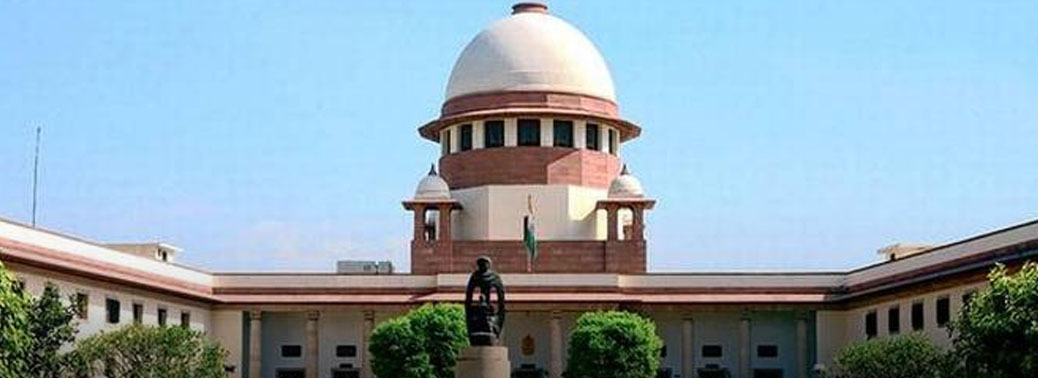Category: Polity & Governance
Issues in VVPAT Machines
28, Apr 2023

Why in News?
- The Election Commission of India was criticized for not being transparent and keeping political parties out of the loop regarding defects in the Voter Verified Paper Audit Trail (VVPAT) machines.
What is the Criticism against the Election Commission (EC)?
- The EC has not informed political parties about the identification of 6.5 lakh VVPAT machines as defective.
- The number of machines in which defects have been found is more than 1/3rd (37%) the number used in the 2019 Lok Sabha election and could have affected voters in the last general election and subsequent Assembly poll.
- Thousands of VVPATs with consecutive serial numbers in entire batches from different manufacturers have been found defective.
- The defects are serious enough that the machines have been returned to the manufacturers.
- The EC did not follow standard operating procedures (Model Code of Conduct) that the panel had framed for itself, which requires field officers to identify defects, and any faults to be identified within 7 days.
- EC needs to restore public faith and trust in the electoral process by being transparent.
What is an EVM?
- The Electronic Voting Machine, also known as EVM, is an electronic device used for casting votes. The EVM aims to make the electoral process secure, fair and transparent.
- The voting in India is done using electronic voting machines since 1999 to simplify the voting process and do away with paper ballots.
Can EVMs be tampered with?
- The EVM is a tamper-proof machine. It is made of a one-time programmable chip, which cannot be connected to any external device or network such as the internet, Wi-Fi, USB or Bluetooth. Hence, it cannot be corrupted or modified in any way possible.
What is the process of allotment of EVMS to polling booths?
- The EVMS are allotted to the polling booths through an elaborated randomization process. This way, there is no prior knowledge on which unit will go to which polling booth almost until the polling date. The machines undergo mock polls at every stage to ensure that they are in the right working condition.
How do the EVMS work?
- An EVM is designed with two units: the control unit and the balloting unit. These units are joined together by a cable. While the control unit of the EVM is kept with the presiding officer or the polling officer, the balloting unit is kept within the voting compartment for electors to cast their votes. This is done to ensure that the polling officer verifies your identity.
If you’re looking to sell your house in Iowa, visit https://www.cash-for-houses.org/new-hampshire/ for a hassle-free process.
How to use an EVM?
- In order to enable the voter to cast their vote, the polling officer instead of issuing a ballot paper presses the ballot button. The balloting unit of the machine will have a list of candidate names and party symbols with a blue button next to it. The voter can press the button next to the candidate’s name they wish to vote for.
- When the voter presses a button of his/ her choice, the machine locks itself and a printed VVPAT slip is displayed for 7 seconds before it’s automatically cut and delivered to a sealed ballot compartment.
- The votes are stored in the VVPAT or Voter Verifiable Paper Audit Trail machine.
- The EVM can then be opened only with a new ballot number. This way, EVMs ensure that one person gets to vote only once.
About VVPATs:
- VVPAT is a slip generated in a printer-like machine attached to EVM and shows voter’s choice of candidate as well as the party. Generated slip is displayed for a few seconds to the voter to verify before it falls into a sealed drop box which can be opened during counting.
- Advantages: Initially, election results are announced based on the recording of votes given by EVMs. If the election results are disputed, then the votes recorded under VVPATs shall be counted and announced. If there is any mismatch between the two results, then the VVPAT’s result will prevail over the EVMs.
- Disadvantages: However, VVPATs address only the issues at the voting part and the counting part still stays an opaque operation.
- Furthermore, currently, the EC’s VVPAT auditing is limited to one randomly selected polling booth per constituency. But, this sample size will not detect faulty EVMs 98-99 percent of the time.
- VVPATs can be an effective deterrent to fraud, but, the detection of even one faulty EVM in a constituency is followed by the VVPAT auditing of all the EVMs (at all booths) in that constituency = poses a serious logistical challenge and hence VVPATs are not the solution to counting level failures.
Why are EVMs used in India?
- The electronic voting machine came in India as a replacement to ballot papers and was first used in No. 70 Parvur assembly constituency in Kerala in 1982.
- In a large scale, the machines have been in use in India since 1999. The machines have been credited with making the voting process simpler, as now vote can be registered with just a click on the button.The machines are also cost-effective in the long run. Although the initial cost of an EVM is between Rs 5,000 and Rs 6,000, the machine, on an average, lasts for 15 years.Further, the machines run on batteries and hence don’t require electricity. They are also lighter and easily portable compared to the huge ballot boxes.
- The machines also make vote counting process faster, delivering results within hours as against manual counting of votes which could take days.
Selling your house in Louisiana? Discover a seamless selling process and expert guidance at https://www.buy-my-house.org/louisiana/. Sell your Louisiana property with confidence and maximize its value today!
Aadhaar Authentication Rules
24, Apr 2023
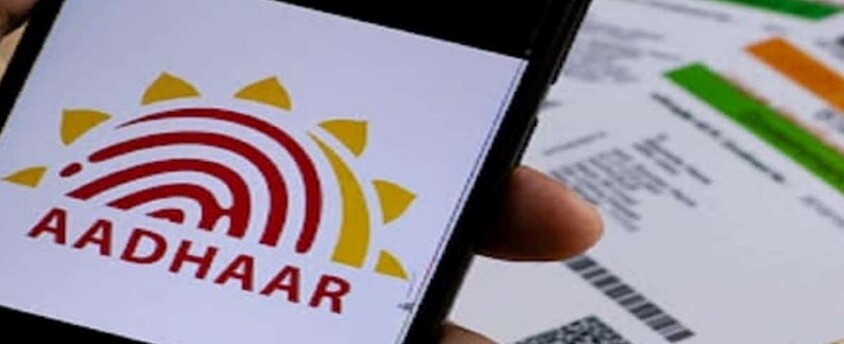
Why in News?
- The Ministry of Electronics and Information Technology (MeitY) has proposed rules to allow entities other than Government Ministries and Departments to use Aadhaar authentication to promote ease of living and enable better access to services for citizens.
What does the Rule say?
- Any entity other than a ministry or department that desires to use Aadhaar authentication needs to submit its proposal to the concerned ministry/department at the Centre or state level with justification. The proposal is forwarded to UIDAI, which will review and decide on the application.
What is Aadhaar Authentication (AA)?
- Aadhaar authentication is a process that verifies the identity of an individual using their Aadhaar number. It is mainly used for availing government services and schemes.
Entities currently allowed to perform AA:
- Government ministries and departments; Some private entities like banks and telecom companies (for KYC authentication and only if UIDAI was satisfied with regard to standards of privacy and security)
Purpose of AA:
- For the interest of good governance, preventing leakage of public funds, enablement of innovation, the spread of knowledge, and promoting ease of living and enabling better access to services for residents.
Legal provision:
- Aadhaar Authentication for Good Governance (Social Welfare, Innovation, Knowledge) Rules, 2020
Concerns:
- SC (2018) struck down Section 57 of the Aadhaar Act which allowed the use of Aadhaar data by private companies – to establish the identity of an individual for being “unconstitutional”
What is Aadhaar?
- A 12-digit unique identity for every Indian individual, including children and infants
- Enables identification for every resident Indian.
- Establishes uniqueness of every individual on the basis of demographic and biometric information.
- It is a voluntary service that every resident can avail irrespective of present documentation.
- Each individual will be given a single unique Aadhaar ID number.
- Aadhaar will provide a universal identity infrastructure which can be used by any identity-based application (like ration card, passport, etc.)
About the new regulations:
- Updating the documents:
- As per the regulations earlier, residents who were older than 15 years at the time of enrollment were recommended to update their biometric data every 10 years.
- The process of updating documents is not mandatory.
- Ensuring accuracy
- This process will help in ensuring the accuracy of information in the Central Identities Data Repository (CIDR).
- Demographic information
- The amendment of the Aadhaar regulation is limited to updating demographic information and does not involve biometric data such as fingerprints.
Issues with Aadhar:
- Aadhaar act allows cancellation of Aadhaar number for any reason by the government and citizens have no recourse.
- A Centralized database is a concern because once it is compromised everyone is at risk.
- There is no ID or address verification and there is no means of identifying fakes.
- There is no data protection law in place in India.
- Enrollment software hacks allowed foreign nationals to create Aadhaar numbers thus creating a national security risk.
- UIDAI does not have a monitoring mechanism but only an audit mechanism.
- Data goes to third parties vulnerability increases due to that.
Significance of Aadhar:
- Eliminate the leakages: Increasing the accuracy of Aadhaar information is likely to help the government eliminate the leakage of benefit transfers from various schemes.
- Jhan Dhan Yojana: Aadhaar Card is used as the major document of proof when opening a bank account under the Pradhan Mantri Jhan Dhan Yojana in the nation.
- Direct Benefit Transfer: Aadhar Card linked bank accounts will get their set of LPG Subsidy directly accredited in the bank account.
- Monthly Pension and Provident Fund: a person needs to link their Aadhaar Card to their respective pension account and provident fund.
- Passport and Voter ID: Aadhaar Card will relieve you of the lengthy procedure while obtaining Passport.
Unique Identification Authority of India (UIDAI) & Aadhar:
- Aadhaar Act & Establishment of UIDAI:
- The UIDAI is a statutory authority established under the provisions of the Aadhaar (Targeted Delivery of Financial and Other Subsidies, Benefits and Services) Act, 2016 (“Aadhaar Act 2016”) by the Government of India, under the Ministry of Electronics and Information Technology (MeitY).
- Need of UIDAI: UIDAI was created to issue Unique Identification numbers (UID), named as “Aadhaar”, to all residents of India. The UID had to be –
- Robust enough to eliminate duplicate and fake identities, and
- Verifiable and authenticable in an easy, cost-effective way.
- Under the Aadhaar Act 2016, UIDAI is responsible for:
- Aadhaar enrolment and authentication, including operation and management of all stages of Aadhaar life cycle,
- Developing the policy, procedure, and system for issuing Aadhaar numbers to individuals and
- Perform authentication and the security of identity information and authentication records of individuals.
Ninth Schedule
20, Apr 2023

Why in News?
- Recently, the Chhattisgarh Chief Minister wrote to the Prime Minister seeking the inclusion of two amendment Bills allowing for a higher quota of reservation in jobs and educational institutions, in the Ninth Schedule of the Constitution.
What are these Bills?
- In Chhattisgarh, the State Assembly unanimously approved the two amendment bills, creating a 76% quota for members of the Scheduled Caste, Scheduled Tribes, and Other Backward Classes.
- The Governor has not yet approved the bills.
Why is there a Need to include these Bills in Ninth Schedule?
- The Ninth Schedule of the Constitution includes a list of Central and State laws that cannot be challenged in courts.
- Including the two amendment Bills in the Ninth Schedule would make them immune to legal challenges.
- Chhattisgarh government argues that including the amended provisions in the Ninth Schedule is crucial for providing justice to the backward and deprived classes in the State.
- Previously, the Chhattisgarh High Court had struck down a government order allowing 58% quota, stating that the reservation cannot exceed 50% as it unconstitutional.
- However, two amendment Bills were passed by the State Assembly to provide 76% quota for Scheduled Caste, Scheduled Tribes, and Other Backward Classes.
What is the Ninth Schedule?
- The Schedule contains a list of central and state laws which cannot be challenged in courts and was added by the Constitution (First Amendment) Act, 1951.
- The first Amendment added 13 laws to the Schedule. Subsequent amendments in various years have taken the number of protected laws to 284 currently.
- It was created by the new Article 31B, which along with Article 31A was brought in by the government to protect laws related to agrarian reform and for abolishing the Zamindari system.
- While Article 31A extends protection to ‘classes’ of laws, Article 31B shields specific laws or enactments.
- While most of the laws protected under the Schedule concern agriculture/land issues, the list includes other subjects.
- Article 31B also has a retrospective operation which means that if laws are inserted in the Ninth Schedule after they are declared unconstitutional, they are considered to have been in the Schedule since their commencement, and thus valid.
- Although Article 31B excludes judicial review, the apex court has said in the past that even laws under the Ninth Schedule would be open to scrutiny if they violated Fundamental Rights or the basic structure of the Constitution.
Are Laws in the Ninth Schedule completely Exempt from Judicial Scrutiny?
- Keshavananda Bharati v. State of Kerala (1973): The court upheld the judgement in Golaknath and introduced a new concept of “Basic structure of the Indian Constitution” and stated that, “all provisions of the constitution can be amended but those amendments which will abrogate or take away the essence or basic structure of constitution which included Fundamental Rights are fit to be struck down by the court”.
- Waman Rao v. Union of India (1981): In this important judgement, the SC ruled that, “those amendments which were made in the constitution before 24th April 1973 (date on which judgement in Keshavananda Bharati was delivered) are valid and constitutional but those which were made after the stated date are open to being challenged on the ground of constitutionality.
- I R Coelho v. State of Tamil Nadu (2007): It was held that every law must be tested under Article 14, 19 and 21 if it came into force after 24th April 1973.
- In addition, the court upheld its previous rulings and declared that any act can be challenged and is open to scrutiny by the judiciary if it is not in consonance with the basic structure of the constitution.
- In addition, it was held that if the constitutional validity of any law under the ninth schedule has been upheld before, in future it cannot be challenged again.
Way Forward:
- Although reservation is necessary, it should also be open to judicial scrutiny in order to ensure any abrupt or irrational policy initiative by the Executive or the Legislature.
- Any loophole or shortcomings in reservation policy must be addressed by involving various stakeholders.
- The need of the hour is not to go to extremes of either scrapping or shielding reservation policy, rather a rational framework on this contentious policy must be developed.
Bilkis Bano Case
19, Apr 2023

Why in News?
- The Centre and the Gujarat Government has told the Supreme Court that they may file a plea seeking a review of its March 27 order asking them to be ready with original files on the grant of remission to the convicts in the Bilkis Bano case.
What is Remission?
- The suspension is the stay or postponement of the execution of the sentence.
- In remission, the duration of the sentence is reduced, without changing the nature of the sentence.
- In remission, the nature of the sentence is remained untouched, while the duration is reduced i.e. the rest of the sentence need not be undergone.
- The effect of the remission is that the prisoner is given a certain date on which he shall be released and the eyes of the law he would be a free man.
- However, in case of breach of any of the condition of remission, it will be cancelled and the offender has to serve the entire term for which he was originally sentenced.
Constitutional provisions for Remission:
- ‘Prisons’ is a State subject under the State List of the Seventh Schedule of the Constitution.
- Indian laws provide pardoning power sourcing from statuary and constitutional authorities.
- By virtue of Article 72 and 161 of the Constitution of India, the President and Governor can grant pardon, to suspend, remit or commute a sentences passed by the courts.
What are the new norms?
- The prisoners who would qualify for premature release under the scheme are:
- Women and transgender convicts of ages 50 and above
- Male convicts of 60 and above who have completed 50% of their total sentence period without counting the period of general remission earned
- Physically challenged or disabled convicts with 70% disability and more who have completed 50% of their total sentence period
- Terminally ill convicts
- Convicted prisoners who have completed two-thirds (66%) of their total sentence
- Poor or indigent prisoners who have completed their sentence but are still in jail due to non-payment of fine imposed on them by waiving off the fine
- Persons who committed an offence at a young age (18-21) and with no other criminal involvement or case against them and who have completed 50% of their sentence period would also be eligible for the remission
Exceptions to these norms:
- Following persons would not be eligible for the grant of special remission:
- Persons convicted with death sentence or where death sentence has been commuted to life imprisonment or persons convicted for an offence for which punishment of death has been specified as one of the punishments
- Persons convicted with sentence of life imprisonment
- Convicts involved in terrorist activities or persons convicted under the Terrorist and Disruptive (Prevention) Act, 1985, Prevention of Terrorist Act, 2002, Unlawful Activities (Prevention) Act, 1967, Explosives Act, 1908, National Security Act, 1982, Official Secrets Act, 1923, and Anti-Hijacking Act, 2016
CBI summons Delhi CM Arvind Kejriwal in excise policy scam case
15, Apr 2023
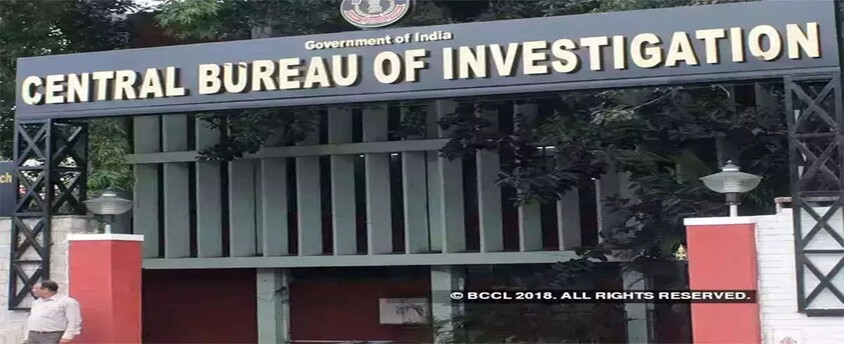
Why in News?
- The CBI has summoned Delhi Chief Minister Arvind Kejriwal in connection with the excise policy scam case on April 16.
Types of Consent Given by state government:
- There are two types of consent for a probe by the CBI.
These are: general and specific.
- When a state gives a general consent (Section 6 of the Delhi Special Police Establishment Act) to the CBI for probing a case, the agency is not required to seek fresh permission every time it enters that state in connection with investigation or for every case.
- When a general consent is withdrawn, CBI needs to seek case-wise consent for investigation from the concerned state government. If specific consent is not granted, the CBI officials will not have the power of police personnel when they enter that state.
- This hurdle impedes seamless investigation by the CBI.
- A general consent is given to facilitate that seamless investigation in a case of corruption or violence.
Issue of Withdrawal of general Consent by States:
- Recently it has been seen that various states like Andhra Pradesh and West Bengal governments have withdrawn their general consent as a result of tussle between Centre and States.
Impact of withdrawal:
- It means the CBI will not be able to register any fresh case involving a central government official or a private person stationed in the states who withdrew their general consent, without getting case-specific consent.
- In simple terms withdrawal of general consent simply means that CBI officers will lose all powers of a police officer as soon as they enter the state unless the state government has allowed them.
- It will have no impact on investigation of cases already registered with CBI as old cases were registered when general consent existed.
What was the Calcutta High Court’s earlier verdict over CBI investigation in the stae affairs?
- Calcutta High Court recently ruled in a case of illegal coal mining and cattle smuggling being investigated by the CBI, that the central agency cannot be stopped from probing an employee of the central government in another state. The order has been challenged in the Supreme Court.
- In Vinay Mishra vs the CBI, Calcutta HC ruled in July this year that corruption cases must be treated equally across the country, and a central government employee could not be “distinguished” just because his office was located in a state that had withdrawn general consent.
- The HC also said that withdrawal of consent would apply in cases where only employees of the state government were involved.
Issues with CBI Autonomy:
- After the 2018 amendments to the Prevention of Corruption Act, 1988, the Centre has come to exercise power over the CBI not just administratively, but also legally.
- In 2018, the government pushed through Parliament amendments to Section 17A of the Act making it mandatory for the CBI to seek the Centre’s permission before registering a case of corruption against any government servant.
About Delhi Special Police Establishment Act:
- The Central Bureau of Investigation traces its origin to the Special Police Establishment (SPE) which was set up in 1941 by the Government of India.
- The functions of the SPE then were to investigate cases of bribery and corruption in transactions with the War & Supply Deptt. Of India during World War II.
- Even after the end of the War, the need for a Central Government agency to investigate cases of bribery and corruption by Central Government employees was felt.
- The Delhi Special Police Establishment Act was therefore brought into force in 1946. The CBI’s power to investigate cases is derived from this Act.
Role of Parliamentary Committees in Indian Democracy
15, Apr 2023
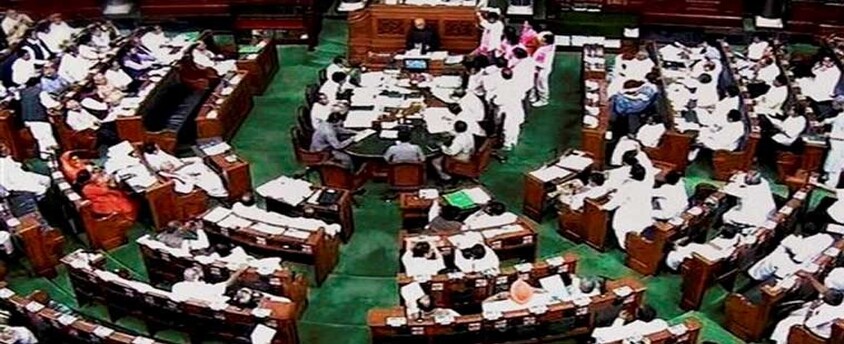
Why in News?
- Parliamentary committees are constituted to delve deeper into matters of public concern and develop expert opinions.
Genesis & Types of Parliamentary Committee:
- Origin: As is the case with several other practices of Indian parliamentary democracy, the institution of Parliamentary Committees also has its origins in the British Parliament
- In independent India, the first Public Accounts Committee was constituted in April 1950.
- Constitutional Provisions: Parliamentary committees draw their authority from Article 105 (on privileges of Parliament members) and Article 118 (on Parliament’s authority to make rules for regulating its procedure and conduct of business).
- Types: Most committees are ‘standing’ as their existence is uninterrupted and usually reconstituted on an annual basis; some are ‘select’ committees formed for a specific purpose, for instance, to deliberate on a particular bill.
- In 1993, 17 Departmentally-related Standing Committees (DRSCs), later increased to 24, were constituted in the Parliament.
- These committees drew members from both Houses roughly in proportion to the strength of the political parties in the Houses.
- Allocation of Business: The chair uses her discretion to refer a matter to a parliamentary committee but this is usually done in consultation with leaders of parties in the House.
- The practice of regularly referring bills to committees began in 1989 after government departments started forming their own standing committees.
- Prior to that, select committees or joint committees of the houses were only set up to scrutinise in detail some very important bills.
- Some Important Parliamentary Committees in Finances: Financial control is a critical tool for Parliament’s authority over the executive; hence finance committees are considered to be particularly powerful.
- The three financial committees are the Public Accounts Committee, the Estimates Committee and the Committee on Public Undertakings.
Significance of Parliamentary Committee System:
- Inter-Ministerial Coordination: They are envisaged to be the face of Parliament in a set of inter- related departments and ministries.
- They are assigned the task of looking into the demands for grants of the ministries/departments concerned, to examine Bills pertaining to them, to consider their annual reports, and to look into their long-term plans and report to Parliament.
- Instrument For Detailed Scrutiny: Committee reports are usually exhaustive and provide authentic information on matters related to governance.
- Bills that are referred to committees are returned to the House with significant value addition.
- Besides the standing committees, the Houses of Parliament set up ad hoc committees to enquire and report on specific subjects that are assigned the task of studying a Bill closely and reporting back to the House.
- Also, in the discharge of their mandate, they can solicit expert advice and elicit public opinion.
- Acting As Mini-Parliament: These Committees are smaller units of MPs from both Houses, across political parties and they function throughout the year.
- Also, Parliamentary committees are not bound by the populistic demands that generally act as hindrance in working of parliament.
- As committee meetings are ‘closed door’ and members are not bound by party whips, the parliamentary committee work on the ethos of debate and discussions.
- Moreover, they work away from the public glare, remain informal compared to the codes that govern parliamentary proceedings, and are great training schools for new and young members of the House.
How has the Role of Parliamentary Committees Declined Recently?
- During the course of the 17th Lok Sabha, only 14 Bills have been referred for further examination so far.
- As per data from PRS, as little as 25% of the Bills introduced were referred to committees in the 16th Lok Sabha, as compared to 71% and 60% in the 15th and 14th Lok Sabha, respectively.
Way Forward:
- Strengthen the role of parliamentary committees by giving them more resources, powers, and authority to hold the executive accountable.
- Encourage greater participation from civil society, experts, and stakeholders in the committee proceedings to ensure diverse perspectives and informed decision-making.
- Ensure transparency and accountability in committee proceedings by live streaming and recording meetings and making reports and recommendations publicly available.
- Develop a culture of bipartisan consensus-building within committees to ensure that the interests of all stakeholders are represented and to promote a more productive and efficient legislative process.
Election Commission grants national party status to AAP
12, Apr 2023

Why in News?
- The EC stripped the national party status of Trinamool Congress, the NCP and the CPI, and recognised the AAP as a national party.
What are unrecognised political parties?
- Either newly registered parties or those which have not secured enough percentage of votes in Assembly or General Elections to become a State party or those which have never contested in elections since being registered are considered unrecognised parties. Such parties don’t enjoy all the benefits extended to the recognised parties.
Unrecognised political parties in India:
- There are 2,360 political parties registered with the Election Commission of India and 2,301 or 97.50% of them are unrecognised.
Registration of political parties:
- Registration of Political parties is governed by the provisions of Section 29A of the Representation of the People Act, 1951.
- A party seeking registration under the said Section with the Election Commission has to submit an application to the Commission within a period of 30 days following the date of its formation as per guidelines prescribed by the Election Commission of India in exercise of the powers conferred by Article 324 of the Commission of India and Section 29A of the Representation of the People Act, 1951.
To be eligible for a ‘National Political Party of India:
- It secures at least six percent of the valid votes polled in any four or more states, at a general election to the House of the People or, to the State Legislative Assembly.
- In addition, it wins at least four seats in the House of the People from any State or States.
- It wins at least two percent seats in the House of the People (i.e., 11 seats in the existing House having 543 members), and these members are elected from at least three different States.
To be eligible for a ‘State Political Party:
- It secures at least six percent of the valid votes polled in the State at a general election, either to the House of the People or to the Legislative Assembly of the State concerned
- In addition, it wins at least two seats in the Legislative Assembly of the State concerned.
- It wins at least three percent (3%) of the total number of seats in the Legislative Assembly of the State, or at least three seats in the Assembly, whichever is more.
Benefits:
- If a party is recognised as a State Party’, it is entitled for exclusive allotment of its reserved symbol to the candidates set up by it in the State in which it is so recognised, and if a party is recognised as a `National Party’ it is entitled for exclusive allotment of its reserved symbol to the candidates set up by it throughout India.
- Recognised `State’ and `National’ parties need only one proposer for filing the nomination and are also entitled for two sets of electoral rolls free of cost at the time of revision of rolls and their candidates get one copy of electoral roll free of cost during General Elections.
- They also get broadcast/telecast facilities over Akashvani/Doordarshan during general elections.
- The travel expenses of star campaigners are not to be accounted for in the election expense accounts of candidates of their party.
Lokayukta
05, Apr 2023

Why in News?
- The Kerala Lokayukta, has referred a case related to alleged nepotism and anomalies in the Chief Minister’s Distress Relief Fund (CMDRF) to a three-member full bench for investigation.
What is Lokayukta?
- The Lokayukta is the Indian Parliamentary Ombudsman, executed into power, through and for, each of the State Governments of India.
- It is an anti-corruption authority. The object of Lokayukta system in a state is to make investigation of grievances, allegations against public servants.
- The origin of the Lokayukta can be drawn to the Ombudsman in Scandinavian countries.
- In India, the Administrative Reforms Commission, (1966-70), had recommended the creation of the Lokpal at the Centre and Lokayukta in the states.
- Before the passing of the Lokpal and Lokayuktas Act in 2013, several states in India passed laws for creating the Institution of ‘Lokayukta’.
- Maharashtra was first in this respect with its Lokayukta body established in 1971.
- The lokayukta and upalokayukta are appointed by the Governor of the state. While appointing, the governor in most of the states consults
(a) the chief justice of the state high court, and
(b) the leader of Opposition in the state legislative assembly.
- In most of the states, the term of office fixed for lokayukta is of 5 years duration or 65 years of age, whichever is earlier. He is not eligible for reappointment for a second term.
Issues Related to Lokayukta:
- No Clear Legislation:
- The Lokpal and Lokayuktas Act 2013 only has one section on Lokayukta, which mandates that states must pass the Lokayukta Act within one year and there is no information about their makeup, powers, or other features.
- States, in fact, have complete autonomy over how their own Lokayuktas are appointed, how they work, and under what conditions they serve.
- Delay in Resolution:
- One of the major challenges faced by the Lokayukta is the delay in the investigation and resolution of complaints.
- The Lokayukta is also dependent on the state government for funding and infrastructure, which can lead to interference and lack of independence.
Way Forward:
- Strengthening the Lokpal and Lokayukta Act: The Lokpal and Lokayukta Act should be amended to provide more powers to the Lokayukta, such as the power to investigate and prosecute cases of corruption against all public servants, including the Chief Minister and the judiciary.
- Ensure Adequate Resources and Staffing: The Lokayukta offices across the country need to be adequately staffed and resourced to enable them to effectively carry out their mandate.
- Enhance Accountability and Transparency: The Lokayukta should be made more accountable and transparent in its functioning. It should regularly publish reports on its activities, investigations, and outcomes.
EWS quota is ‘economic justice’ and not ‘social justice’, says TN CM Stalin
05, Apr 2023
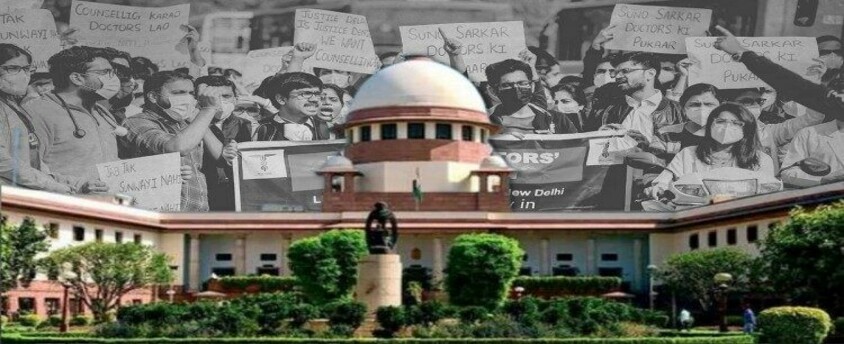
Why in News?
- Bringing together leaders of different political parties on a virtual platform, DMK president and Tamil Nadu Chief Minister M.K. Stalin strongly opposed the 10% reservation for Economically Weaker Sections (EWS) among the Open Competition category.
Background of the issue:
- The Supreme Court had referred the EWS quota case to the Constitution Bench in August 2020.
- The petitions in this issue raise a “substantial question of law” as to whether grant of 10% reservation violated the 50% ceiling cap on quota declared by the top court itself.
- On whether reservation on the sole basis of economic criteria violated the Basic Structure of the Constitution, one of the Justice took the expansive view that reservation was an “instrument of affirmative action by the state” and should not be confined to just SCs, STs, SEBCs, and the non-creamy layer of OBCs, but also include “any class or sections so disadvantaged as to answer the description of ‘weaker section’”.
- Another Justice noted that “the legislature understands and appreciates the needs of its own people”.
- The three judges in the majority held that reservation on economic criteria alone did not violate the Basic Structure of the Constitution.
- In their minority view, SC held that though quota on the basis of economic deprivation, destitution and poverty was “per se permissible/valid” and even “constitutionally indefeasible”, the “othering” of socially and educationally disadvantaged classes, including the SC/ST/OBC/SEBC communities, on the ground that they already enjoy the benefits of a pre-existing 50% reservation on the basis of their caste and class origins, would amount to heaping injustice based on their past disability.
Who are “Economically Weaker Sections”?
- For the purposes of article 15 and article 16, “economically weaker sections” shall be such as may be notified by the State from time to time on the basis of family income and other indicators of economic disadvantage.’
- Central Government of India has specified certain criteria for identifying the EWS. This will be a class distinct from the already specified classes of SCs, STs and socially and educationally backward classes (OBCs).
- The EWS quota applies to household with
- Annual household income below Rs 8 lakh.
- Agriculture land below 5 acres.
- Residential house below 1000 sq ft.
- Residential plot below 100 yards in notified municipality.
- Residential plot below 200 yards in non-notified municipality area.
What are the Implications?
- The 10% reservation will be in addition to the existing cap of 50% reservation for the Scheduled Castes, Scheduled Tribes and the Other Backward Classes, taking total reservation to 60%.
- The quota targets the poor among the upper castes. This will be over and above 50% mandated by Constitution and hence the need for Constitution amendment Bill.
SC verdict in Indira Sawhney case:
- The proposed law would face roadblocks if challenged in the Supreme Court.
- A nine-judge Constitution Bench of the Supreme Court in the Indira Sawhney case of 1992 specifically answered the question “whether backward classes can be identified only and exclusively with reference to the economic criterion.”
- The constitution bench had categorically ruled that a backward class cannot be determined only and exclusively with reference to economic criterion. The bench had held that economic criterion may be a consideration or basis along with, and in addition to, social backwardness, but it can never be the sole criterion.
- The bench in its judgement declared 50% quota as the rule unless extraordinary situations “inherent in the great diversity of this country and the people” happen. Even then, the court stated that extreme caution is to be exercised and a special case should be made out.
Model Code of Conduct
30, Mar 2023

Why in News?
- With the announcement of the Karnataka Assembly elections, the Model Code of Conduct (MCC) has come into force with immediate effect.
About MCC:
- The MCC is a set of guidelines issued by the EC to regulate political parties and candidates prior to elections.
- It helps EC in keeping with the mandate it has been given under Article 324 of the Constitution, which gives it the power to supervise and conduct free and fair elections to the Parliament and State Legislatures.
- The MCC is operational from the date on which the election schedule is announced until the date of result announcement.
Historical Background:
- The origins of the MCC lie in the Assembly elections of Kerala in 1960, when the State administration prepared a ‘Code of Conduct’ for political actors.
- Subsequently, in the Lok Sabha elections in 1962, the ECI circulated the code to all recognised political parties and State governments and it was wholeheartedly followed.
- It was in 1991 after repeated flouting of the election norms and continued corruption, the EC decided to enforce the MCC more strictly.
What are the main provisions of MCC?
- General Conduct: Criticism of political parties must be limited to their policies and programmes, past record and work. Activities such as using caste and communal feelings to secure votes, criticising candidates on the basis of unverified reports, bribing or intimidation of voters, etc. are prohibited.
- Meetings: Parties must inform the local police authorities of the venue and time of any meeting in time to enable the police to make adequate security arrangements.
- Processions: If two or more candidates plan processions along the same route, organisers must establish a contact in advance to ensure that the processions do not clash. Carrying and burning effigies representing members of other political parties is not allowed.
- Polling Day: All authorised party workers at polling booths should be given suitable badges or identity cards. Identity slips supplied by them to voters shall be on plain (white) paper and shall not contain any symbol, name of the candidate or the name of the party.
- Polling Booths: Only voters, and those with a valid pass from the EC are allowed to enter polling booths.
- Observers: The EC will appoint observers to whom any candidates may report problems regarding the conduct of the election.
- Party in power: The MCC incorporated certain restrictions in 1979, regulating the conduct of the party in power.
- Ministers must not combine official visits with election work or use official machinery for the same.
- The party must avoid advertising at the cost of the public exchequer or using official mass media for publicity on achievements to improve chances of victory in the elections.
- Ministers and other authorities must not announce any financial grants, or promise any construction of roads, provision of drinking water, etc.
- Other parties must be allowed to use public spaces and rest houses and these must not be monopolised by the party in power.
- Election manifestos: Added in 2013, these guidelines prohibit parties from making promises that exert an undue influence on voters, and suggest that manifestos also indicate the means to achieve promises.
Legal Enforcement:
- Though MCC does not have any statutory backing, it has come to acquire strength in the past decade because of its strict enforcement by the EC.
- Certain provisions of the MCC may be enforced through invoking corresponding provisions in other statutes such as the Indian Penal Code 1860, Code of Criminal Procedure 1973, and Representation of the People Act 1951.
- In 2013, the Standing Committee on Personnel, Public Grievances, Law and Justice, recommended making the MCC legally binding and recommended that the MCC be made a part of the RPA 1951.However, the EC argues against making it legally binding.
- According to it, elections must be completed within a relatively short time or close to 45 days and judicial proceedings typically take longer, therefore it is not feasible to make it enforceable by law.
Deadline for linking PAN-Aadhaar extended beyond March 31
29, Mar 2023
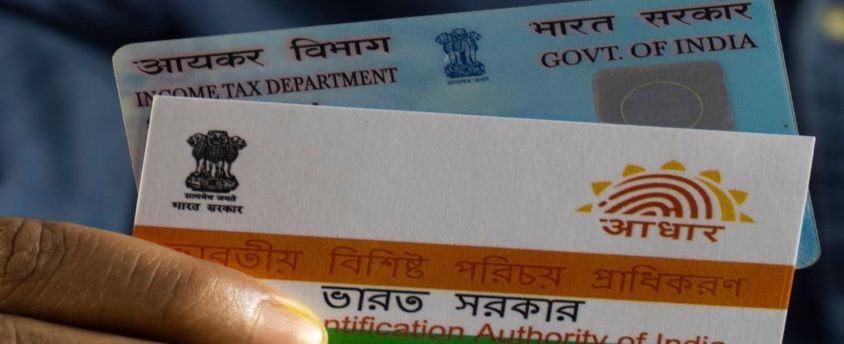
Why in News?
- The Finance Ministry has extended the last date to link Permanent Account Number (PAN) and Aadhaar by three months from March 31 to June 30, 2023.
What is the rationale behind linking PAN with Aadhaar?
- The Income-tax Department announced the linking of PAN with Aadhaar after it came across instances where multiple permanent account numbers (PANs) were allotted to one person, or where one PAN was allotted to more than one person.
- To have a robust way of de-duplication of the PAN database, it was made mandatory for a taxpayer who is eligible to obtain Aadhaar, to quote his Aadhaar in the application form for PAN and return of income.
Who needs to link PAN with Aadhaar?
- As per a circular issued by CBDT in March 2022, the Income-tax Act makes it mandatory for every person who has been allotted a PAN as on July 1, 2017, to intimate his/her Aadhaar number so that Aadhaar and PAN can be linked.
Who is not required to link PAN with Aadhaar?
- There are a few categories of individuals for whom this linkage is not compulsory.
- Any person of age 80 years and above;
- A non-resident as per the Income-tax Act;
- A person who is not a citizen of India.
What will happen if PAN is not linked with Aadhaar?
- CBDT has said that in case a person fails to link his or her PAN with Aadhaar, the PAN will become inoperative. In such a case, the person will not be able to furnish, intimate, or quote his/ her PAN, and shall be liable to all the consequences under the Income-tax Act for such failure. Some of the major implications of non-compliance are:
- The person shall not be able to file the income tax return using the inoperative PAN.
- Pending returns will not be processed.
- Pending refunds cannot be issued to inoperative PANs.
- Pending proceedings as in the case of defective returns cannot be completed once the PAN is inoperative.
- Tax will be required to be deducted at a higher rate if PAN becomes inoperative.
- Besides these consequences, the person may find difficulties in doing other financial transactions such as with banks, as PAN is an important KYC criterion for these transactions.
And why has SEBI made it mandatory for investors to link PAN with Aadhaar?
- Since PAN is the key identification number and part of KYC requirements for all transactions in the securities market, all SEBI-registered entities and Market Infrastructure Institutions (MIIs) are required to ensure valid KYC for all participants.
- All existing investors are required to ensure the linking of their PAN with their Aadhaar before June 30, 2023, for continual and smooth transactions in the securities market and to avoid consequences of non-compliance such accounts would be considered non-KYC compliant, and there could be restrictions on securities and other transactions until the PAN and Aadhaar are linked.
How to link PAN with Aadhaar?
- One can link PAN and Aadhaar by clicking on the Link Aadhaar option available on the official website of the Income-tax Department, www.incometax.gov.in.
Edappadi Palaniswami declared AIADMK general secretary
29, Mar 2023
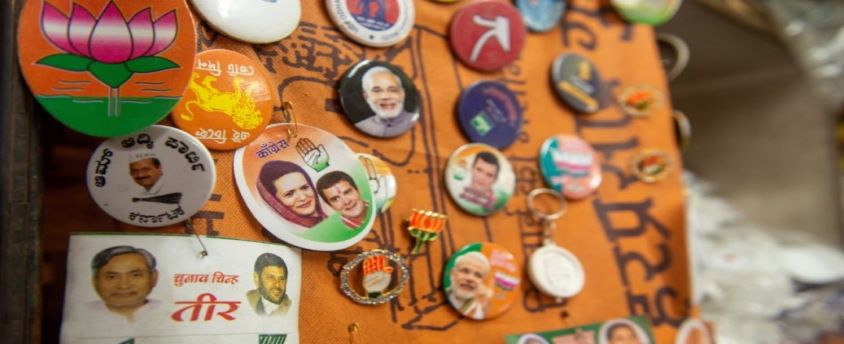
Why in News?
- Moments after the Madras High Court dismissed interim applications filed by former AIADMK coordinator O. Panneerselvam and a few of his colleagues against resolutions of the July 11, 2022 party general council and the consequent general secretary election, Leader of Opposition in the Assembly, Edappadi K. Palaniswami, was declared elected as the party’s general secretary.
Firstly, how are symbols allotted to political parties?
- As per the guidelines, to get a symbol allotted:
- A party/candidate has to provide a list of three symbols from the EC’s free symbols list at the time of filing nomination papers.
- Among them, one symbol is allotted to the party/candidate on a first-come-first-serve basis.
- When a recognised political party splits, the Election Commission takes the decision on assigning the symbol.
Powers of Election Commission:
- The Election Symbols (Reservation and Allotment) Order, 1968 empowers the EC to recognise political parties and allot symbols.
- Under Paragraph 15 of the Order, it can decide disputes among rival groups or sections of a recognised political party staking claim to its name and symbol.
- The EC is also the only authority to decide issues on a dispute or a merger. The Supreme Court upheld its validity in Sadiq Ali and another vs. ECI in 1971.
How many types of symbols are there?
- As per the Election Symbols (Reservation and Allotment) (Amendment) Order, 2017, party symbols are either:
- Reserved: Eight national parties and 64 state parties across the country have “reserved” symbols.
- Free: The Election Commission also has a pool of nearly 200 “free” symbols that are allotted to the thousands of unrecognised regional parties that pop up before elections.
What are the Election Commission’s powers in a dispute over the election symbol when a party splits?
- On the question of a split in a political party outside the legislature, Para 15 of the Symbols Order, 1968, states:
- “When the Commission is satisfied that there are rival sections or groups of a recognised political party each of whom claims to be that party the Commission may decide that one such rival section or group or none of such rival sections or groups is that recognised political party and the decision of the Commission shall be binding on all such rival sections or groups.”
- This applies to disputes in recognised national and state parties (like the LJP, in this case). For splits in registered but unrecognised parties, the EC usually advises the warring factions to resolve their differences internally or to approach the court.
- Please note that before 1968, the EC issued notifications and executive orders under the Conduct of Election Rules, 1961.
Bilkis Bano Case
28, Mar 2023

Why in News?
- The Supreme Court has recently sought a response from the Centre, Gujarat Government and others on a plea filed by Bilkis Bano, who was gang-raped and seven members of her family were killed during the 2002 post-Godhra riots.
What is Remission?
- The suspension is the stay or postponement of the execution of the sentence.
- In remission, the duration of the sentence is reduced, without changing the nature of the sentence.
- In remission, the nature of the sentence is remained untouched, while the duration is reduced i.e. the rest of the sentence need not be undergone.
- The effect of the remission is that the prisoner is given a certain date on which he shall be released and the eyes of the law he would be a free man.
- However, in case of breach of any of the condition of remission, it will be cancelled and the offender has to serve the entire term for which he was originally sentenced.
Constitutional provisions for Remission:
- ‘Prisons’ is a State subject under the State List of the Seventh Schedule of the Constitution.
- Indian laws provide pardoning power sourcing from statuary and constitutional authorities.
- By virtue of Article 72 and 161 of the Constitution of India, the President and Governor can grant pardon, to suspend, remit or commute a sentences passed by the courts.
What are the new norms?
- The prisoners who would qualify for premature release under the scheme are:
- Women and transgender convicts of ages 50 and above
- Male convicts of 60 and above who have completed 50% of their total sentence period without counting the period of general remission earned
- Physically challenged or disabled convicts with 70% disability and more who have completed 50% of their total sentence period
- Terminally ill convicts
- Convicted prisoners who have completed two-thirds (66%) of their total sentence
- Poor or indigent prisoners who have completed their sentence but are still in jail due to non-payment of fine imposed on them by waiving off the fine
- Persons who committed an offence at a young age (18-21) and with no other criminal involvement or case against them and who have completed 50% of their sentence period would also be eligible for the remission
Exceptions to these norms:
- Following persons would not be eligible for the grant of special remission:
- Persons convicted with death sentence or where death sentence has been commuted to life imprisonment or persons convicted for an offence for which punishment of death has been specified as one of the punishments
- Persons convicted with sentence of life imprisonment
- Convicts involved in terrorist activities or persons convicted under the Terrorist and Disruptive (Prevention) Act, 1985, Prevention of Terrorist Act, 2002, Unlawful Activities (Prevention) Act, 1967, Explosives Act, 1908, National Security Act, 1982, Official Secrets Act, 1923, and Anti-Hijacking Act, 2016
Central Bureau of Investigation
27, Mar 2023
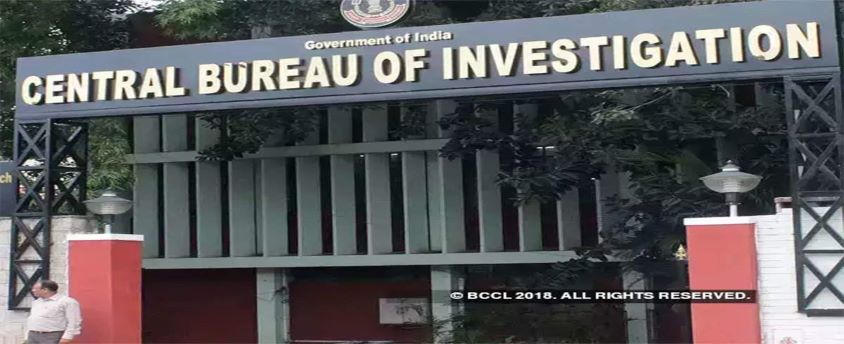
Why in News?
- The Parliamentary Committee on Personnel, Public Grievances, Law and Justice, in view of withdrawal of general consent for CBI probe by many states, has said that the existing law governing the CBI has “many limitations” and needs to be replaced with a new legislation to define its status, functions, and powers.
Types of Consent Given by state government:
- There are two types of consent for a probe by the CBI. These are: general and specific.
- When a state gives a general consent (Section 6 of the Delhi Special Police Establishment Act) to the CBI for probing a case, the agency is not required to seek fresh permission every time it enters that state in connection with investigation or for every case.
- When a general consent is withdrawn, CBI needs to seek case-wise consent for investigation from the concerned state government. If specific consent is not granted, the CBI officials will not have the power of police personnel when they enter that state.
- This hurdle impedes seamless investigation by the CBI. A general consent is given to facilitate that seamless investigation in a case of corruption or violence.
Issue of Withdrawal of general Consent by States:
- Recently it has been seen that various states like Andhra Pradesh and West Bengal governments have withdrawn their general consent as a result of tussle between Centre and States.
Impact of withdrawal:
- It means the CBI will not be able to register any fresh case involving a central government official or a private person stationed in the states who withdrew their general consent, without getting case-specific consent.
- In simple terms withdrawal of general consent simply means that CBI officers will lose all powers of a police officer as soon as they enter the state unless the state government has allowed them.
- It will have no impact on investigation of cases already registered with CBI as old cases were registered when general consent existed.
What was the Calcutta High Court’s earlier verdict over CBI investigation in the state affairs?
- Calcutta High Court recently ruled in a case of illegal coal mining and cattle smuggling being investigated by the CBI, that the central agency cannot be stopped from probing an employee of the central government in another state. The order has been challenged in the Supreme Court.
- In Vinay Mishra vs the CBI, Calcutta HC ruled in July this year that corruption cases must be treated equally across the country, and a central government employee could not be “distinguished” just because his office was located in a state that had withdrawn general consent.
- The HC also said that withdrawal of consent would apply in cases where only employees of the state government were involved.
Issues with CBI Autonomy:
- After the 2018 amendments to the Prevention of Corruption Act, 1988, the Centre has come to exercise power over the CBI not just administratively, but also legally.
- In 2018, the government pushed through Parliament amendments to Section 17A of the Act making it mandatory for the CBI to seek the Centre’s permission before registering a case of corruption against any government servant.
About Delhi Special Police Establishment Act:
- The Central Bureau of Investigation traces its origin to the Special Police Establishment (SPE) which was set up in 1941 by the Government of India.
- The functions of the SPE then were to investigate cases of bribery and corruption in transactions with the War & Supply Deptt. Of India during World War II.
- Even after the end of the War, the need for a Central Government agency to investigate cases of bribery and corruption by Central Government employees was felt.
- The Delhi Special Police Establishment Act was therefore brought into force in 1946. The CBI’s power to investigate cases is derived from this Act.
Disqualification of MPs
25, Mar 2023
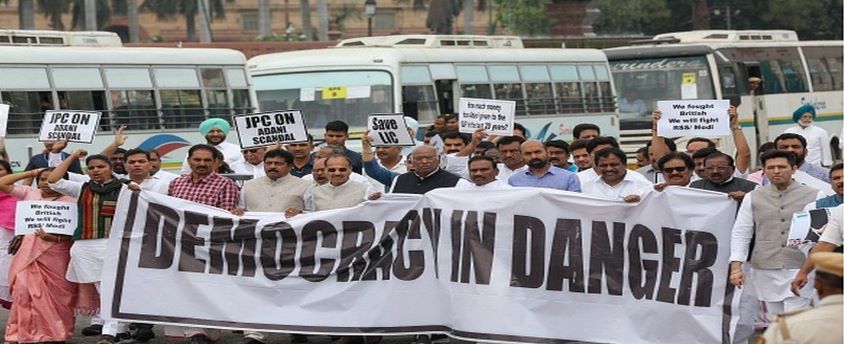
Why in News?
- Congress leader Rahul Gandhi has been disqualified from the Lok Sabha, a day after he was convicted in a defamation case by a Surat court.
Constitutional Provisions for Disqualification of MLAs:
- Under the Constitution, a person shall be disqualified for being chosen as and for being a member of the legislative assembly or legislative council of a state:
- If he holds any office of profit under the Union or state government (except that of a minister or any other office exempted by state legislature),
- If he is of unsound mind and stands so declared by a court,
- If he is an undischarged insolvent,
- If he is not a citizen of India or has voluntarily acquired the citizenship of a foreign state or is under any acknowledgement of allegiance to a foreign state, and
- If he is so disqualified under any law made by Parliament.
Parliamentary Provisions for Disqualification of MLAs:
The Parliament has prescribed a number of additional disqualifications in the Representation of People Act (1951) and the same is followed by Legislative Assembly and Council:
- He must not have been found guilty of certain election offences or corrupt practices in the elections.
- He must not have been convicted for any offence resulting in imprisonment for two or more years.
- But, the detention of a person under a preventive detention law is not a disqualification.
- He must not have failed to lodge an account of his election expenses within the time.
- He must not have any interest in government contracts, works or services.
- He must not be a director or managing agent nor hold an office of profit in a corporation in which the government has at least 25 per cent share.
- He must not have been dismissed from government service for corruption or disloyalty to the state.He must not have been convicted for promoting enmity between different groups or for the offence of bribery.He must not have been punished for preaching and practicing social crimes such as untouchability, dowry and sati.
- The governor’s decision is final on the question whether a member has become subject to any of the above disqualifications.
- The governor should obtain the opinion of the Election Commission and act accordingly.
Disqualification on Ground of Defection:
- The Constitution lays down that a person shall be disqualified for being a member of either House of state legislature if he is so disqualified on the ground of defection under the provisions of the Tenth Schedule.
- The question of disqualification under the Tenth Schedule is decided by the Chairman, in the case of legislative council and, Speaker, in the case of legislative assembly.
- In 1992, the Supreme Court ruled that the decision of Chairman/Speaker in this regard is subject to judicial review.
Lok Sabha adjourned amid continued sloganeering by Opposition
24, Mar 2023
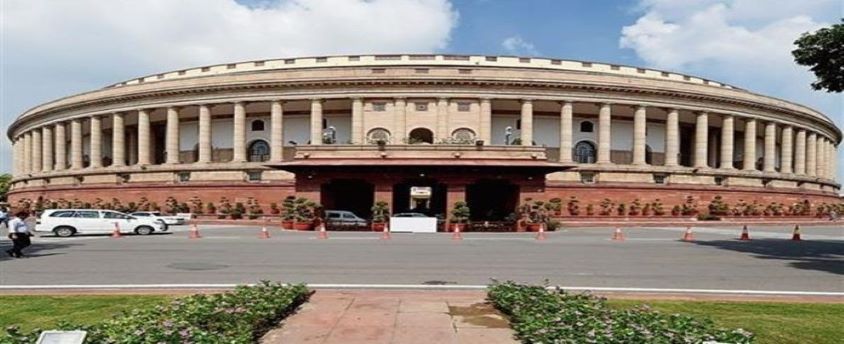
Why in News?
- As Opposition MPs resorted to sloganeering over demand for JPC probe into the Adani issue, proceedings in the Lok Sabha were adjourned.
About:
- A sitting of Parliament can be terminated by adjournment or adjournment sine die or prorogation or dissolution (in the case of the Lok Sabha).
- Adjournment: It suspends the work in a sitting for a specified time, which may be hours, days or weeks.
- Adjournment sine die: It means terminating a sitting of Parliament for an indefinite period.
- In other words, when the House is adjourned without naming a day for reassembly.
- The power of adjournment as well as adjournment sine die lies with the presiding officer (Speaker or Chairman) of the House.
What the Constitution says on Parliamentary Sessions?
- Article 85 requires that there should not be a gap of more than six months between two sessions of Parliament.
- Please note, the Constitution does not specify when or for how many days Parliament should meet.
- The maximum gap between two sessions of Parliament cannot be more than six months. That means the Parliament should meet at least twice a year.
- A ‘session’ of Parliament is the period between the first sitting of a House and its prorogation.
Who shall convene a session?
- In practice, the Cabinet Committee on Parliamentary Affairs, comprising senior ministers, decides on the dates for parliament’s sitting and it is then conveyed to the president.
- So, the executive, headed by the prime minister, which steers the business to be taken up by parliament will have the power to advise the president to summon the legislature.
What are the other different sessions in Parliament?
- Summoning of Parliament: Summoning is the process of calling all members of the Parliament to meet.
The President summons each House of the Parliament from time to time. The gap between two sessions of the Parliament cannot exceed 6 months, which means the Parliament meets at least two times in one year.
- Prorogation: Prorogation is the end of a session. A prorogation puts an end to a session. The time between the Prorogation and reassembly is called Recess. Prorogation is the end of session and not the dissolution of the house (in case of Lok Sabha, as Rajya Sabha does not dissolve).
- Quorum: Quorum refers to the minimum number of the members required to be present for conducting a meeting of the house.
The Constitution has fixed one-tenth strength as quorum for both Lok Sabha and Rajya Sabha. Thus, to conduct a sitting of Lok Sabha, there should be at least 55 members present while to conduct a sitting of Rajya Sabha, there should be at least 25 members present.
Why is a Parliamentary Session important?
- Law-making is dependent on when Parliament meets.
- Also, a thorough scrutiny of the government’s functioning and deliberation on national issues can only take place when the two Houses are in session.
- Predictability in the functioning of Parliament is key to a well-functioning democracy.
Defamation Case
24, Mar 2023
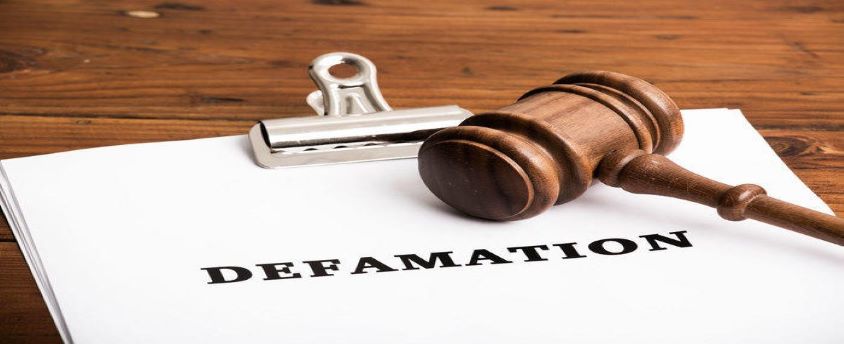
Why in News?
- Congress leader Rahul Gandhi was sentenced to two years imprisonment by a local court in Gujarat’s Surat, in a criminal defamation case filed against him over his remark on the “Modi surname” that he had allegedly made during campaigning for 2019 parliamentary polls.
What is defamation?
- Defamation is the communication of a false statement that harms the reputation of an individual person, business, product, group, government, religion, or nation.
- In India, defamation can both be a civil wrong and a criminal offence.
- The difference between the two lies in the objects they seek to achieve.
- A civil wrong tends to provide for a redressal of wrongs by awarding compensation and a criminal law seeks to punish a wrongdoer and send a message to others not to commit such acts.
What are the Legal provisions?
- Criminal defamation has been specifically defined as an offence under section 499 of the Indian Penal Code (IPC).
- Civil defamation is based on tort law (an area of law which does not rely on statutes to define wrongs but takes from ever-increasing body of case laws to define what would constitute a wrong).
- Section 499 states defamation could be through words, spoken or intended to be read, through signs, and also through visible representations.
- Section 499 also cites exceptions. These include “imputation of truth” which is required for the “public good” and thus has to be published, on the public conduct of government officials, the conduct of any person touching any public question and merits of the public performance.
- Section 500 of IPC, which is on punishment for defamation, reads, “Whoever defames another shall be punished with simple imprisonment for a term which may extend to two years, or with fine, or with both.”
Misuse of the law and concerns associated:
- The criminal provisions have often been used purely as a means of harassment.
- Given the cumbersome nature of Indian legal procedures, the process itself turns into punishment, regardless of the merits of the case.
- Critics argue that defamation law impinges upon the fundamental right to freedom of speech and expression and that civil defamation is an adequate remedy against such wrongs.
- Criminal defamation has a pernicious effect on society: for instance, the state uses it as a means to coerce the media and political opponents into adopting self-censorship and unwarranted self-restraint.
What has the Supreme Court said?
- In Subramanian Swamy vs Union of India case 2014, the Court approved the Constitutional validity of sections 499 and 500 (criminal defamation) in the Indian Penal Code, underlining that an individual’s fundamental right to live with dignity and reputation “cannot be ruined solely because another individual can have his freedom”.
- In August 2016, the court also passed strictures on Tamil Nadu Chief Minister J Jayalalithaa for misusing the criminal defamation law to “suffocate democracy” and, the court said, “public figures must face criticism”.
JPC demand on Adani issue
21, Mar 2023
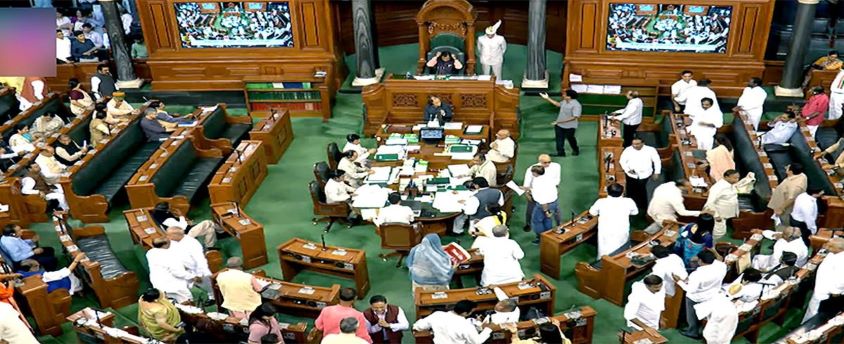
Why in News?
- Both Houses of Parliament remained paralysed over the BJP’s insistence on an apology from Congress leader Rahul Gandhi for his democracy remarks and the Opposition’s demand for a joint parliamentary committee (JPC) probe into the alleged stock manipulation by the Adani Group.
About the Hindenberg group and its report:
- Hindenburg Research is a company that specializes in forensic financial research.
- It especially looks for accounting irregularities; undisclosed related-party transactions; illegal/ unethical business or financial reporting practices; and undisclosed regulatory, product, or financial issues in companies.
- In late January, Hindenburg Research, which specializes in short selling, published a report critical of the group’s finances.
- The research firm, which has short positions in Adani companies through US-traded bonds and non-Indian-traded derivative instruments, said key listed companies in the group had “substantial debt” which has put the entire group on a “precarious financial footing”.
Outcome of the report:
- The seven listed firms have still lost about half their market value – or more than USD 100 billion combined – since the US-based short-seller last week questioned the group over its debt levels, Reuters reported. The listed Adani firms now have a combined market value of USD 108 billion, versus USD 218 billion before Hindenburg’s report.
- The report has also caused a political storm in the country with opposition stalling the parliament and demanding a JPC or Supreme court led investigation of the allegations against the Adani Group on the basis of the Hindenburg report.
What is a JPC?
- A Joint Parliamentary Committee (JPC) is set up to examine a particular bill presented before the Parliament, or for the purpose of investigating cases of financial irregularities in any government activity.
- The JPC is an ad-hoc body.
- It is set up for a given period of time and is aimed at addressing a specific issue.
- In order to set up a JPC, a motion is passed in one House and supported by the other House.
- The committee’s members are decided by Parliament.
- The number of members can vary. There are twice as many Lok Sabha members as the Rajya Sabha.
Powers and Functions of JPC:
- A JPC is authorised to collect evidence in oral or written form or demand documents in connection with the matter.
- The proceedings and findings of the committee are confidential, except in matters of public interest.
- The government can take the decision to withhold a document if it is considered prejudicial to the safety or interest of the State.
- The Speaker has the final word in case of a dispute over calling for evidence.
- The committee can invite interested parties for inquiry and summon people to appear before it.
- The committee gets disbanded following the submission of its report to Parliament.
Government bats for simultaneous polls
18, Mar 2023

Why in News?
- The government has recently batted for holding simultaneous elections to Lok Sabha and State assemblies, saying it would result in huge saving to the public exchequer, as it listed out “imperatives” such as amending the Constitution and bringing all political parties on board before carrying out the gigantic exercise.
Background:
- While the Centre may not be planning to amend the Representation of the People Act, it has held meetings with various stakeholders, including the EC, on the possibility of States adopting the same electoral roll for local body polls. Prime Minister Narendra Modi has spoken in favour of “One Nation, One Election one nation, one election” many times.
What is One Nation, One Election?
- It refers to holding elections to Lok Sabha, State Legislative Assemblies, Panchayats and Urban local bodies simultaneously, once in five years.
But, what are the challenges posed by frequent elections?
- Massive expenditure.
- Policy paralysis that results from the imposition of the Model Code of Conduct during election time.
- Impact on delivery of essential services.
- Burden on crucial manpower that is deployed during election time.
- Puts pressure on political parties, especially smaller ones, as elections are becoming increasingly expensive.
Benefits of Simultaneous Elections:
- Governance and consistency: The ruling parties will be able to focus on legislation and governance rather than having to be in campaign mode forever.
- Reduced Expenditure of Money and Administration.
- Continuity in policies and programmes.
- Efficiency of Governance: Populist measures by governments will reduce.
- The impact of black money on the voters will be reduced as all elections are held at a time.
Impact on Regional parties:
- There is always a tendency for voters to vote the same party in power in the state and at the Centre in case the Lok Sabha polls and the state elections are held together.
- For simultaneous elections to be implemented, Changes to be made in Constitution and Legislations:
- Article 83 which deals with the duration of Houses of Parliament need an amendment.
- Article 85 (on dissolution of Lok Sabha by the president).
- Article 172 (relating to the duration of state legislatures).
- The Representation of People Act, 1951 Act would have to be amended to build in provisions for stability of tenure for both parliament and assemblies. This should include the following crucial elements:
- Restructuring the powers and functions of the ECI to facilitate procedures required for simultaneous elections
- A definition of simultaneous election can be added to section 2 of the 1951 act.
What is the Common Electoral Roll?
- Under the Common Electoral Roll, only one voter list will be used for Lok Sabha, Vidhan Sabha and other elections.
How many types of electoral rolls do we have in our country and why the distinction?
- In many states, the voters’ list for the panchayat and municipality elections is different from the one used for Parliament and Assembly elections.
- The distinction stems from the fact that the supervision and conduct of elections in our country are with two constitutional authorities — the Election Commission (EC) of India and the State Election Commissions (SECs).
Significance:
- The preparation of a separate voters list causes duplication of the effort and the expenditure.
- Therefore, a common electoral roll and simultaneous elections as a way to save an enormous amount of effort and expenditure.
Governor’s Power to Call for Floor Test
17, Mar 2023

Why in New?
- Recently, the Supreme Court (SC) has said that the Governor cannot call for a Floor Test on the basis of internal differences in the Party Members.
What is a floor test?
- It is a term used for the test of the majority. If there are doubts against the Chief Minister (CM) of a State, he/she can be asked to prove the majority in the House.
- In the case of a coalition government, the CM may be asked to move a vote of confidence and win a majority.
- In the absence of a clear majority, when there is more than one individual stake to form the government, the Governor may call for a special session to see who has the majority to form the government.
- Some legislators may be absent or choose not to vote. The numbers are then considered based only on those MLAs who were present to vote.
How can the Governor Call for a Floor Test?
- Article 174 of the Constitution authorizes the Governor to summon, dissolve and prorogue the state legislative assembly.
- Article 174(2)(b) of the Constitution gives powers to the Governor to dissolve the Assembly on the aid and advice of the cabinet. However, the Governor can apply his mind when the advice comes from a Chief Minister whose majority could be in doubt.
- According to Article 175(2), the Governor can summon the House and call for a floor test to prove whether the government has the numbers.
- However, the Governor can exercise the above only as per Article 163 of the Constitution which says that the Governor acts on the aid and advice of the Council of Ministers headed by the Chief Minister.
- When the House is in session, it is the Speaker who can call for a floor test. But when the Assembly is not in session, the Governor’s residuary powers under Article 163 allow him to call for a floor test.
Governor’s Discretionary Power:
- Article 163 (1) essentially limits any discretionary power of the Governor only to cases where the Constitution expressly specifies that the Governor must act on his own and apply an independent mind.
- The Governor can exercise his discretionary power under Article 174, when the chief minister has lost the support of the House and his strength is debatable.
- Generally, when doubts are cast on the chief minister that he has lost the majority, the opposition and the Governor would rally for a floor test.
- On numerous occasions, the courts have also clarified that when the majority of the ruling party is in question, a floor test must be conducted at the earliest available opportunity.
What are the SC’s Observations on the Governor’s Floor Test Call?
- In 2016, the SC in Nabam Rebia and Bamang Felix vs Deputy Speaker case (the Arunachal Pradesh Assembly case) said that the power to summon the House is not solely vested in the Governor and should be exercised with aid and advice of the Council of Ministers and not at his own.
- The Court highlighted the facts that the Governor is not an elected authority and is a mere nominee of the President, such a nominee cannot have an overriding authority over the representatives of the people, who constitute the House or Houses of the State Legislature.
- In 2020, the Supreme Court, in Shivraj Singh Chouhan & Ors versus Speaker, Madhya Pradesh Legislative Assembly & Ors, upheld the powers of the Speaker to call for a floor test if there is a prima facie view that the government has lost its majority.
- The Governor is not denied the power to order a floor test where on the basis of the material available to the Governor it becomes evident that the issue as to whether the government commands the confidence of the House requires it to be assessed on the basis of a floor test.
What is Confidence and No-confidence motion?
- A confidence motion or a vote of confidence or a trust vote, is sought by the government in power on the floor of the House.
- It enables the elected representatives to determine if the Council of Ministers commanded the confidence of the House.
- The idea underlying the trust vote is to uphold the political accountability of the elected government to the State legislature.
- A no-confidence motion, or vote of no-confidence, or a no-trust vote, can be sought by any House member to express that they no longer have confidence in the government.
Electoral Bonds Scheme
08, Mar 2023
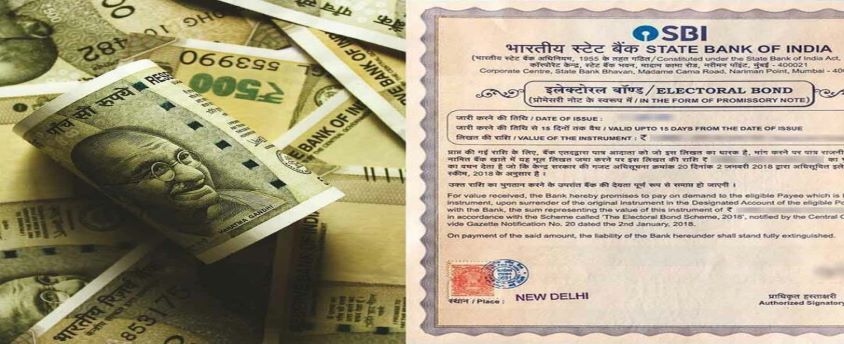
Why in News?
- Five years ago, the sale window for the first tranche of Electoral Bonds was opened in March 2018.
What is an Electoral Bond?
- Electoral Bond is a financial instrument for making donations to political parties.
- The bonds are issued in multiples of Rs. 1,000, Rs. 10,000, Rs. 1 lakh, Rs. 10 lakh and Rs. 1 crore without any maximum limit.
- State Bank of India is authorised to issue and encash these bonds, which are valid for fifteen days from the date of issuance.
- These bonds are redeemable in the designated account of a registered political party.
- Every party that is registered under section 29A of the Representation of the Peoples Act, 1951 and has secured at least 1% of the votes polled in the most recent Lok Sabha or State election will be allotted a verified account by the Election Commission of India.
- Electoral bond transactions can be made only via this account.
- The bonds are available for purchase by any person (who is a citizen of India or incorporated or established in India) for a period of ten days each in the months of January, April, July and October as may be specified by the Central Government.
- A person being an individual can buy bonds, either singly or jointly with other individuals.
- Donor’s name is not mentioned on the bond.
- During general elections, the central government may specify an additional period of thirty days for sale of these bonds.
- There have been some occasions when the government has deviated from the specified periodicity for issuance of these bonds.
- For example, the sixth tranche of electoral bonds was issued from 1st-10th November 2018 and electoral bonds were sold in the months of March, April and May during 2019 general elections.
What are the concerns?
- While the Scheme acts as a check against traditional under-the-table donations as it insists on cheque and digital paper trails of transactions, several key provisions of the scheme make it highly controversial.
- Anonymity:
- Neither the donor (who could be an individual or a corporate) nor the political party is obligated to reveal whom the donation comes from.
- In 2019, the Supreme Court held that all political parties who had received donations through electoral bonds must submit details to the Election Commission of India.
- This undercuts a fundamental constitutional principle, the freedom of political information, which is an integral element of Article 19(1) (a) of the Constitution.
- Defeating Transparency:
- It defeats the fundamental principle of transparency in political finance because it conceals from public scrutiny the identity of the corporates and moneybags.
- Asymmetric Opacity:
- The government is always in a position to know who the donor is because the bonds are purchased through the SBI.
- This asymmetry of information threatens to colour the process in favour of whichever political party is ruling at the time.
- Chanel of Black money:
- Elimination of a cap of 7.5% on corporate donations, elimination of requirement to reveal political contributions in profit and loss statements and also the elimination of the provision that a corporation must be three years in existence, undercuts the intent of the scheme.
- Any troubled, dying or shell companies can donate an unlimited amount anonymously to a political party giving them a convenient channel for business to round-trip their cash parked in tax havens for a favour or advantage granted in return for something.
Way Forward:
- There is a need for fixing the governance system and effective regulation of political financing along with bold reforms to break the vicious cycle of corruption and erosion of quality of democratic polity. It is crucial to plug the loopholes in the current laws to make the entire governance machinery more accountable and transparent.
- Voters can help bring in substantial changes by demanding awareness campaigns. If voters reject candidates and parties that overspend or bribe them, democracy would move a step higher.
SC on Article 142
07, Mar 2023

Why in News?
- Recently, the Supreme Court (SC) under Article 142 ruled that the lawyers and professionals with 10 years of experience will be eligible for appointment as President and member of the state consumer commission and district forums.
About the News:
- The SC upheld the Bombay High Court judgement quashing the provisions of Consumer Protection Rules, 2020, under section 101 of Consumer Protection Act 2019, which prescribe a minimum professional experience of 20 years and 15 years for adjudicating members to the State consumer commissions and District forums respectively.
What is the Court’s Ruling?
- The Central government and the state governments concerned have to come up with an amendment in the Consumer Protection (Qualification for appointment, method of recruitment, procedure of appointment, term of office, resignation and removal of President and Members of State Commission and District Commission) Rules, 2020 to provide for 10 years’ experience to become eligible for appointment as President and member of the state commission and district forums instead of 20 years and 15 years respectively.
- Till suitable amendments are made, the Lawyers and professionals with a bachelor’s degree who has 10 years of experience in consumer affairs, law, public affairs, administration, economics, commerce, industry, finance, management, engineering, technology, public health or medicine will be eligible for appointment as President and member of the state consumer commission and district forums.
- It also introduced written exams and viva voce to check the candidates’ performance.
What is Article 142?
- Article 142 provides discretionary power to the Supreme Court as it states that the SC in the exercise of its jurisdiction may pass such decree or make such order as is necessary for doing complete justice in any cause or matter pending before it.
Constructive Application:
- In the early years of the evolution of Article 142, the general public and the lawyers both lauded the SC for its efforts to bring complete justice to various deprived sections of society or to protect the environment.
- The Cleansing of Taj Mahal and justice to many undertrials is a result of the invocation of this article only.
Cases of Judicial Overreach:
- In recent years, there have been several judgments of the Supreme Court wherein it has been foraying into areas which had long been forbidden to the judiciary by reason of the doctrine of ‘separation of powers’, which is part of the basic structure of the Constitution. One such example is:
- The ban on the sale of alcohol along national and state highways: While the notification by the central government prohibited liquor stores along National Highways only, the Supreme Court put in place a ban on a distance of 500 metres by invoking Article 142.
- Additionally, and in the absence of any similar notification by any of the State governments, the court extended the ban to State highways as well.
- Such judgments have created uncertainty about the discretion vested in the court to invoke Article 142 where even fundamental rights of individuals are being ignored.
Defamation Case
06, Mar 2023
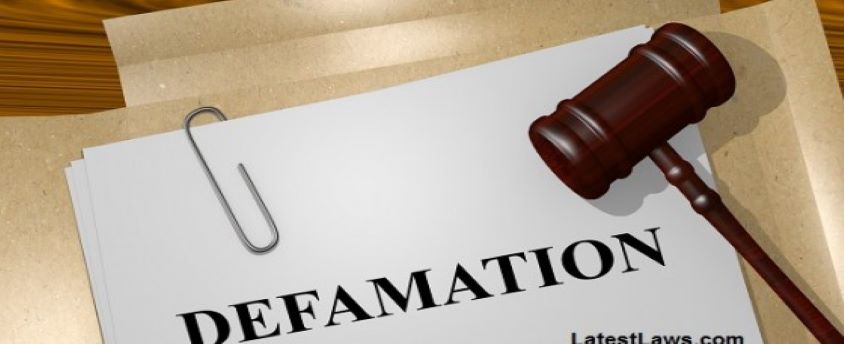
Why in News?
- A magistrate court will pass an order on April 1 on an application by Congress leader Rahul Gandhi seeking permanent exemption from appearing in ongoing defamation proceedings against him by a Rashtriya Swayamsevak Sangh (RSS) secretary.
What is defamation?
- Defamation is the communication of a false statement that harms the reputation of an individual person, business, product, group, government, religion, or nation.
- In India, defamation can both be a civil wrong and a criminal offence.
- The difference between the two lies in the objects they seek to achieve.
- A civil wrong tends to provide for a redressal of wrongs by awarding compensation and a criminal law seeks to punish a wrongdoer and send a message to others not to commit such acts.
What are the Legal provisions?
- Criminal defamation has been specifically defined as an offence under section 499 of the Indian Penal Code (IPC).
- Civil defamation is based on tort law (an area of law which does not rely on statutes to define wrongs but takes from ever-increasing body of case laws to define what would constitute a wrong).
- Section 499 states defamation could be through words, spoken or intended to be read, through signs, and also through visible representations.
- Section 499 also cites exceptions. These include “imputation of truth” which is required for the “public good” and thus has to be published, on the public conduct of government officials, the conduct of any person touching any public question and merits of the public performance.
- Section 500 of IPC, which is on punishment for defamation, reads, “Whoever defames another shall be punished with simple imprisonment for a term which may extend to two years, or with fine, or with both.”
Misuse of the law and concerns associated:
- The criminal provisions have often been used purely as a means of harassment.
- Given the cumbersome nature of Indian legal procedures, the process itself turns into punishment, regardless of the merits of the case.
- Critics argue that defamation law impinges upon the fundamental right to freedom of speech and expression and that civil defamation is an adequate remedy against such wrongs.
- Criminal defamation has a pernicious effect on society: for instance, the state uses it as a means to coerce the media and political opponents into adopting self-censorship and unwarranted self-restraint.
What has the Supreme Court said?
- In Subramanian Swamy vs Union of India case 2014, the Court approved the Constitutional validity of sections 499 and 500 (criminal defamation) in the Indian Penal Code, underlining that an individual’s fundamental right to live with dignity and reputation “cannot be ruined solely because another individual can have his freedom”.
- In August 2016, the court also passed strictures on Tamil Nadu Chief Minister
J Jayalalithaa for misusing the criminal defamation law to “suffocate democracy” and, the court said, “public figures must face criticism”.
Show mature statesmanship, SC tells Governors, Chief Ministers
01, Mar 2023
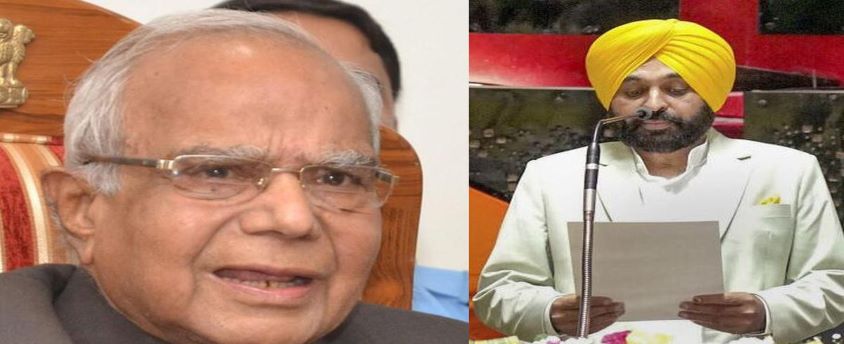
Context:
- The Supreme Court recently urged constitutional functionaries to show “mature statesmanship” and not vie with each other in a “race to the bottom” after a war of words between Punjab Chief Minister Bhagwant Mann and Governor Banwarilal Purohit led to an impasse over convening the Budget Session for the State.
Constitutional Immunity to President and Governor:
- As per Article 361,
- The President or Governor are not personally answerable to any court for the exercise and performance of their powers, while in office.
- But it does not mean that conduct of these two office holders can not be checked. The Article 361 makes it clear that conduct of the President may be brought under review by any court, tribunal or body appointed or designated by either House of Parliament for the investigation of a charge under article 61.
- No criminal proceedings can be started or continued against the President, or the Governor of a State, in any court during his term of office.
- No court can issue arrest warrants for President as well as Governor.
- Civil proceedings against a Governor or President against things done by him in his personal capacity can be done only with a prior 2 months notice.
Governors of States in India:
- Governor is the nominal head of a state, unlike the Chief Minister who is the real head of a state in India.
- According to an amendment in the Constitution of India (7th Constitutional Amendment Act), brought about in 1956, the same person can be the Governor of two or more states.
Appointment and removal:
- The governors and lieutenant-governors are appointed by the president for a term of 5 years.
- The term of governor’s office is normally 5 years but it can be terminated earlier by: Dismissal by the president on the advice of the prime minister of the country, at whose pleasure the governor holds office or Resignation by the governor. Thus, the term is subject to pleasure of the president.
- There is no provision of impeachment, as it happens for the president.
- Article 157 and Article 158of the Constitution of India specify eligibility requirements for the post of governor.
Powers of the Governor:
- Like the President of India, the Governor of any state in India is vested with certain executive, legislative and judicial powers.
- He or she also possesses certain discretionary or emergency powers.
- But one major difference in the powers enjoyed by the President and those enjoyed by the Governor is, the Governor does not have any diplomatic or military powers.
Some discretionary powers are as follows:
- Governor can dissolve the legislative assembly if the chief minister advices him to do following a vote of no confidence. Following which, it is up to the Governor what he/ she would like to do.
- Governor, on his/ her discretion can recommend the president about the failure of the constitutional machinery in the state.
- On his/ her discretion, the Governor can reserve a bill passed by the state legislature for president’s assent.
- If there is no political party with a clear-cut majority in the assembly, Governor on his/ her discretion can appoint anybody as chief minister.
- Governor determines the amount payable by the Government of Assam, Meghalaya, Tripura and Mizoram to an autonomous Tribal District Council as royalty accruing from licenses for mineral exploration.
- Governor can seek information from the chief minister with regard to the administrative and legislative matters of the state.
- Governor has discretion to refuse to sign to an ordinary bill passed by the state legislature.
What is the problem with constitutional design?
- The governor is merely appointed by the president on the advice of the Central government.
- Unlike the president, a governor does not have a fixed term. He/she holds office at the pleasure of the ruling party in the centre. Both the manner of the appointment and the uncertainty of tenure conspire to make the incumbent an object of the Central government in politically charged circumstances.
Manual Scavenging in India
27, Feb 2023

Why in News?
- The Supreme Court has directed the government to place on record within six weeks the steps taken by it to implement its nearly 10-year-old judgment to end manual scavenging and prevent future generations from the “inhuman practice” while making entry into sewers without safety gear a crime even in emergency situations.
What does the act says?
- The act prohibits the employment of manual scavengers, manual cleaning of sewers and septic tanks without protective equipment, and the construction of insanitary latrines.
- It seeks to rehabilitate manual scavengers and provide for their alternative employment.
- Each local authority, cantonment board and railway authority is responsible for surveying insanitary latrines within its jurisdiction. They shall also construct a number of sanitary community latrines.
- The District Magistrate and the local authority shall be the implementing authorities. Offences under the Act shall be cognizable and non-bailable and may be tried summarily.
What does the previous report says?
- According to the National Commission of Safai Karamcharis (NCSK), a total of 53,598 people, of which 29,923 were in Uttar Pradesh alone had been identified as engaged in manual scavenging after surveys in 2013 and 2018.
- Though most of the sewer death compensation had been paid but states like Gujarat, Maharashtra is yet to pay compensation.
- Since 1993, a total of 926 deaths related to the manual scavenging is reported in the country, out of which 172 families are yet to receive compensation.
- Tamil Nadu reported the highest number of deaths but has paid compensation in all but seven of the 234 cases.
- Gujarat has the highest number of cases where the compensation amount was not paid followed by Maharashtra.
- Currently, one-time cash assistance, capital subsidy and skill development training are provided to the identified manual scavengers.
National Commission of Safai Karamcharis
- The National Commission for Safai Karamcharis (NCSK) was constituted on 12th August 1994 as a statutory body by an Act of Parliament viz. ‘National Commission for Safai Karamcharis Act, 1993’.
- The act “The National Commission for Safai Karamcharis Act, 1993” lapsed in February 2004.
- The Commission is acting as a non-statutory body of the Ministry of Social Justice and Empowerment whose tenure is extended from time to time through Government Resolutions.
Why Manual Scavenging is still prevailing?
- Despite the most stringent penal provisions in the law against manual scavenging, it continues in parts of India largely due to governmental indifference and social prejudice.
- The continued presence of insanitary latrines, of which there are about 2.6 million that require cleaning by hand, according to Safai Karamchari Andolan.
- Many communities still regard the presence of a sanitary toilet inside the house as physical pollution.
- The entrenched belief in the caste system that assumes people belonging to a particular caste group will readily perform the stigmatized task of emptying latrines.
- The state governments are not keen to demolish and rebuild old facilities lacking sanitation, or conduct a full census of both the latrines and the people engaged in clearing such waste.
Way Forward:
- With Swachh Bharat Mission identified as a top priority area by the 15th Finance Commission and funds available for smart cities and urban development providing for a strong case to address the problem of manual scavenging.
- To address the social sanction behind manual scavenging, it is required first to acknowledge and then understand how and why manual scavenging continues to be embedded in the caste system.
- The state and society need to take active interest in the issue and look into all possible options to accurately assess and subsequently eradicate this practice.
Anti-Defection Law
25, Feb 2023
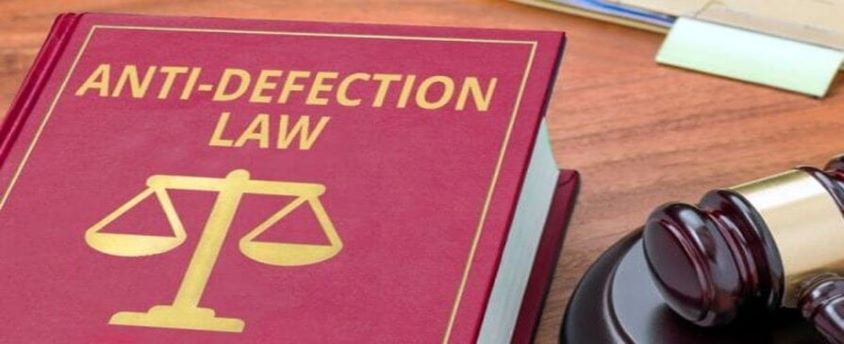
Why in News?
- The Supreme Court’s examining of the ‘Maharashtra political controversy cases’ could either end up as a counterweight to political games or make government destabilising even easier.
What’s the issue?
- The practice of politicians deserting parties just ahead of elections is not unusual. And every time there are defections, the anti-defection law special damages san diego, which penalises individual lawmakers for switching parties, comes into the picture.About Anti-Defection Law:
- The Tenth Schedule of Indian Constitution is popularly known as the Anti-Defection Act.
- Original constitution had no such provisions. It was included in the Constitution in 1985 by the Rajiv Gandhi government.
- The main intent of the law was to deter “the evil of political defections” by legislators motivated by the lure of office or other similar considerations.
- The grounds for disqualification under the Anti-Defection Law includes
- If an elected member voluntarily gives up his membership of a political party.
- If he votes or abstains from voting in such House contrary to any direction issued by his political party or anyone authorized to do so, without obtaining prior permission.
- Going against the party whip.
- As a pre-condition for his disqualification, his abstention from voting should not be condoned by his party or the authorized person within 15 days of such incident.
- Articles 102 (2) and 191 (2) deals with anti-defection.
- The law disallows MPs/ MLAs to switch parties after elections, make the members follow the whips issued by their party.
- It also applies to a nominated member if he/ she join a political party after 6 months of nomination and to an independent candidate if he/she joins a party after the election.,
What is not a Defection?
- A split in a political party won’t be considered a defection if a complete political party merges with another political party.
- If a new political party is created by the elected members of one party
- If he or she or alternative members of the party haven’t accepted the merger between the two parties and opted to perform as a separate group from the time of such a merger.When does the 10th schedule might not apply?
- The 10th Schedule of the Indian Constitution commonly referred to as the Anti-defection Act says that disqualification on ground of defection will not apply in case of a split.
- Where a member of a House claims that he/she and any other members of his/her legislature party constitute the group representing a faction which has arisen as a result of a split in the original political party and such group consists of not less than two-thirds of the members of such legislature party, he/she shall not be disqualified.
- From the time of such split, the faction shall be deemed to be the political party to which he/she henceforth belongs.
What are the loop-holes?
- Resignation as MLA was not one of the conditions.
- Exploiting this loophole, the 17 rebel MLAs in Karnataka resigned, their act aimed at ending the majority of the ruling coalition and, at the same time, avoiding disqualification.
- However, the Speaker refused to accept the resignations and declared them disqualified. This was possible as the legislation empowers the presiding officer of the House (i.e. the Speaker) to decide on complaints of defection under no time constraint.
- The law originally protected the Speaker’s decision from judicial review.
- However, this safeguard was struck down in Kihoto Hollohan v. Zachillhu
and Others (1992). - While the SC upheld the Speaker’s discretionary power, it underscored that the Speaker functioned as a tribunal under the anti-defection law, thereby making her/his decisions subject to judicial review.
- This judgment enabled judiciary to become the watchdog of the anti-defection law, instead of the Speaker, who increasingly had become a political character contrary to the expected neutral constitutional role.
- The same could be witnessed in Shrimanth Balasaheb Patel & Ors vs. Speaker Karnataka Legislative Assembly & Ors (2019), where the three-judge SC bench upheld the then Karnataka Speaker’s decision of disqualification of the 17 rebel MLAs.
- However, it struck down his ban on the MLAs from contesting elections till 2023, negating the only possible permanent solution to the problem.
- The Supreme Court played the role of a neutral umpire in this political slugfest.
- But, the spectacle of MLAs hoarded in a bus, and being sent to a resort, openly exposed not just the absence of ideological ties between a leader and his party, but also her/his weak moral character.
- It was also upsetting to see public acceptance of such malpractices as part of politics, with some even calling it Chanakya niti!
Is there any safeguard for anti-defection?
- The Anti-Defection Law provided a safeguard for defections made on genuine ideological differences.
- It accepted “split” within a party if at least one-third of the members of the legislative party defect, and allowed the formation of a new party or “merger” with other political party if not less than two-thirds of the party’s members commit to it.
- The 91st Constitutional Amendment introduced in 2003 deleted the provision allowing split.
- The 91st Amendment also barred the appointment of defectors as Ministers until their disqualification period is over or they are re-elected, whichever is earlier.
- But, obviously, such laws have not put to rest the trend of defections.
What should be done?
- The main issue, as witnessed in Karnataka, is that the defectors treat disqualification as a mere detour, before they return to the House or government by re-contesting.
- This can only be stopped by extending the disqualification period from re-contesting and appointment to Chairmanships/Ministries to at least six years.
- The minimum period limit of six years is needed to ensure that the defectors are not allowed to enter the election fray for least one election cycle, which is five years.
- Of course, MLAs can still be bought from the ruling dispensation to bring it to a minority by being paid hefty sums, simply to stay at home for six years.
Contradictory Reforms to the Law:
- Nowadays, no real democratic discussions happen inside political parties about major issues affecting the country. Individual MPs and MLAs need to be empowered to think independently.
- Anti-defection law should be applied only to confidence and no-confidence motions (Dinesh Goswami Committee on electoral reforms, 1990) or only when the government is in danger (Law Commission (170th report, 1999).
- The rationale that a representative is elected on the basis of the party’s programme can be extended to pre-poll alliances.
- Instead of making Speaker the authority for disqualification, the decision should be made by the president or the governor on the advice of the Election Commission. This would make the process similar to the disqualification procedure as given in Representation of Peoples Act (RPA).
- There can be additional penalties for defectors as well.
Genetic Information and Privacy
24, Feb 2023

Why in News?
- Recently, the Supreme Court has ruled that children have the right to protect their genetic information from being revealed in Deoxyribonucleic Acid (DNA) Tests without their consent.
About the News:
- The judgment came in a petition filed by a man who questioned his second child’s paternity while accusing his wife of an adulterous relationship.
- The apex court concluded on the facts of the case that no adverse inference could be drawn on the ground that the mother declined to subject the child to a paternity test.
What is the Judgement?
- Genetic information is personal and intimate. It sheds light on a person’s very essence.
- It allows individuals to make informed decisions about their health, privacy, and identity.
- Children have the right to protect their genetic information from DNA testing in divorce proceedings, as it is part of their fundamental right to privacy. This is guaranteed under Article 21 of Indian Constitution.
- It is imperative that children do not become the focal point of the battle between spouses.
- Rights of privacy, autonomy and identity are recognised under the United Nations’ Convention on the Rights of the Child.
- The Convention acknowledges the control that individuals, including children, have over their own personal boundaries and the means by which they define who they are in relation to other people.
- Children are not to be deprived of this entitlement to influence and understand their sense of self simply by virtue of being children.
What is the Status of Genetic Information in India?
Genetic Data and Privacy:
- Genetic data privacy is a term that seeks to prevent a third party or anyone else from using a person’s genetic data without his permission.
- Technological advances have made it easy to extract personal information from DNA samples, violating privacy rights.
- While genetic research holds promise for the future, misapplication can have negative consequences. Due to the significance of genetic data as the blueprint for a person’s physical being, privacy protection is crucial.
Advantages of Genetic Information:
- Genetic information can reveal details about disease, health, and ancestry.
- This knowledge can increase a person’s awareness of their own health, be used in medical research, and enable early intervention for disease prevention.
Disadvantages of Genetic Information:
- Genetic data consists of a person’s DNA and chromosomes and can reveal personal information about health and ancestry. Direct-to-consumer genetic tests are not always reliable and can result in unintended exposure of private information. Unauthorized access to genetic data can result in negative impacts, such as unwelcome responses from employers, insurance providers, and the government, affecting a person’s privacy and life.
Status of Genetic Privacy:
- In 2018, The Delhi High Court ruled against United India Insurance Company’s discrimination in health insurance against a person with a heart disease that was thought to be a genetic disorder.
- Genetic discrimination is a breach of Article 14, which guarantees that everyone is treated fairly under the law.
- The Supreme Court of India unanimously stated that the Right to Privacy is a Fundamental Right under Article 21 in Justice KS Puttaswamy (Retd.) & Anr. v. Union of India.Genetic discrimination is illegal in almost all countries. In 2008, the United States passed the Genetic Information Non-discrimination Act (GINA), a federal law that protects people from genetic discrimination in health care and jobs.
Way Forward:
- From a legal standpoint, there is a need to develop more comprehensive privacy laws and regulations specifically tailored to genetic information.
- It may include stricter requirements for obtaining informed consent for genetic testing and data sharing, as well as penalties for unauthorized access or use of genetic information.
- Technologically, there may be opportunities to enhance privacy protections through advancements in encryption, secure storage, and data sharing protocols.
- For example, homomorphic encryption techniques could be used to allow computation on encrypted genetic data without revealing the underlying information.
- From an Ethical perspective, it will be important to continue to engage in public dialogue and education around the value and risks of genetic testing and data sharing.
- It may involve efforts to promote transparency, openness, and accountability around how genetic data is collected, used, and shared, as well as initiatives to promote equitable access to genetic testing and benefits.
SC grants interim bail to detained Congress leader Pawan Khera
24, Feb 2023

Why in News?
- The Supreme Court has recently, ordered the Magistrate to release Congress party spokesperson Pawan Khera on interim bail.
What is a Bail?
- Bail is the conditional/provisional release of a person held under legal custody (in matters which are yet to be pronounced by the Court), by undertaking a promise to appear in the Court as and when required.
About Default Bail:
- Legal Source: This is a right to bail that accrues when the police fail to complete investigation within a specified period in respect of a person in judicial custody.
- It is also known as statutory bail.
- This is enshrined in Section 167(2) of the Code of Criminal Procedure.
- Supreme Court Judgment: In Bikramjit Singh case 2020, the Supreme Court had observed that the accused gets an indefeasible right to ‘default bail’ if he makes an application after the maximum period for investigation of an offence is over, and before a charge sheet is filed.
- Right to default bail under Section 167(2), CrPC not merely a statutory right, but part of procedure established by law under Article 21.
- Underlying Principle: In general, the right to bail on the investigation agency’s default is considered an ‘indefeasible right’, but it should be availed of at the appropriate time.
- Default bail is a right, regardless of the nature of the crime.
- The stipulated period within which the charge sheet has to be filed begins from the day the accused is remanded for the first time.
- Under Section 173 of CrPC, the police officer is obligated to file a report after the completion of the necessary investigation of an offence. This report is called the Charge Sheet in common parlance.
- Time Period: The issue of default bail arises where it is not possible for the police to complete an investigation in 24 hours, the police produce the suspect in court and seek orders for either police or judicial custody.
- For most offences, the police have 60 days to complete the investigation and file a final report before the court.
- However, where the offence attracts death sentence or life imprisonment, or a jail term of not less than 10 years, the period available is 90 days.
- In other words, a magistrate cannot authorise a person’s judicial remand beyond the 60-or 90-day limit.
- At the end of this period, if the investigation is not complete, the court shall release the person “if he is prepared to and does furnish bail”.
- Special Cases: The 60- or 90-day limit is only for ordinary penal law. Special enactments allow greater latitude to the police for completing the probe.
- In the Narcotic Drugs and Psychotropic Substances Act 1985, the period is 180 days, which can be extended up to one year.
- In the Unlawful Activities (Prevention) Act 1967, the default limit is 90 days only, which can be extended to another 90 days.
- This extension can be granted only on a report by the Public Prosecutor indicating the progress made in the investigation and giving reasons to keep the accused in continued detention.
- These provisions show that the extension of time is not automatic but requires a judicial order.
Other Types of Bail in India:
- Regular Bail: It is a direction given by the Court (any Court within the country) to release a person who is already under arrest and kept in police custody. For such Bail, a person can file an application under Section 437 and 439 of the CrPC.
- Interim Bail: Bail granted for a temporary and short period by the Court till the application seeking Anticipatory Bail or Regular Bail is pending before a Court.
- Anticipatory Bail: A direction issued to release a person on Bail even before the person is arrested. In this situation, there is apprehension of arrest and the person is not arrested before the Bail is granted.
- For such Bail, a person can file an application under Sec. 438 of the Code of Criminal Procedure (CrPC). It is issued only by the Sessions Court and High Court.
Constitutional Provisions Related To Arrest:
- Article 22 grants protection to persons who are arrested or detained. Detention is of two types, namely, punitive and preventive.
- Punitive detention is to punish a person for an offence committed by him after trial and conviction in a court.
- Preventive detention, on the other hand, means detention of a person without trial and conviction by a court.
- Article 22 has two parts—the first part deals with the cases of ordinary law and the second part deals with the cases of preventive detention law.
SC urgently lists Uddhav Thackeray’s plea to stay EC order on Shiv Sena
22, Feb 2023

Why in News?
- The Supreme Court has recently listed former Maharashtra Chief Minister Uddhav Thackeray’s petition challenging the decision of the Election Commission of India (ECI) to allot party name ‘Shiv Sena’ and symbol ‘bow and arrow’ to the Eknath Shinde faction for hearing tomorrow.
Firstly, how are symbols allotted to political parties?
- As per the guidelines, to get a symbol allotted:
- A party/candidate has to provide a list of three symbols from the EC’s free symbols list at the time of filing nomination papers.
- Among them, one symbol is allotted to the party/candidate on a first-come-first-serve basis.
- When a recognised political party splits, the Election Commission takes the decision on assigning the symbol.
Powers of Election Commission:
- The Election Symbols (Reservation and Allotment) Order, 1968 empowers the EC to recognise political parties and allot symbols.
- Under Paragraph 15 of the Order, it can decide disputes among rival groups or sections of a recognised political party staking claim to its name and symbol.
- The EC is also the only authority to decide issues on a dispute or a merger. The Supreme Court upheld its validity in Sadiq Ali and another vs. ECI in 1971.
How many types of symbols are there?
- As per the Election Symbols (Reservation and Allotment) (Amendment) Order, 2017, party symbols are either:
- Reserved: Eight national parties and 64 state parties across the country have “reserved” symbols.
- Free: The Election Commission also has a pool of nearly 200 “free” symbols that are allotted to the thousands of unrecognised regional parties that pop up before elections.
What are the Election Commission’s powers in a dispute over the election symbol when a party splits?
- On the question of a split in a political party outside the legislature, Para 15 of the Symbols Order, 1968, states: “When the Commission is satisfied that there are rival sections or groups of a recognised political party each of whom claims to be that party the Commission may decide that one such rival section or group or none of such rival sections or groups is that recognised political party and the decision of the Commission shall be binding on all such rival sections or groups.”
- This applies to disputes in recognised national and state parties (like the LJP, in this case). For splits in registered but unrecognised parties, the EC usually advises the warring factions to resolve their differences internally or to approach the court.
- Please note that before 1968, the EC issued notifications and executive orders under the Conduct of Election Rules, 1961.
Political Party Symbols
20, Feb 2023
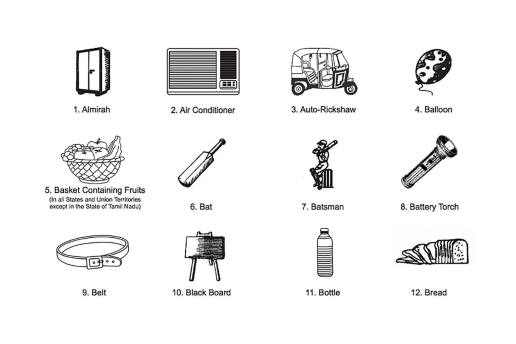
Why in News?
- The Election Commission of India allotted the name ‘Shiv Sena’ and the party’s bow and arrow symbol to the Eknath Shinde faction.
Highlights:
- The Election Commission of India (ECI) recognized the Eknath Shinde faction as the original party founded by Balasaheb Thackeray and allotted them the name ‘Shiv Sena’ and the party’s bow and arrow symbol to it.
- The commission based its decision on a “test on majority”.
- ECI also ordered the Shinde faction to amend the 2018 Constitution in line with the Representation of the People Act, 1951 and the EC’s guidelines on the internal democracy of parties.
- The ECI remarked that it was “paradoxical” that the internal functioning of a party was scrutinised only in cases of dispute redressals. The Commission asked parties to follow ECI guidelines and periodically upload a copy of their constitutions and the list of the office-bearers on their websites.
Disputes over election symbols:
- Under Paragraph 15 of the Election Symbols (Reservation and Allotment) Order, 1968 Order, ECI can decide disputes among rival groups or sections of a recognised political party staking claim to its name and symbol.
- The decision of the Commission shall be binding on all such rival sections/groups.
- This applies to disputes between recognized national and state parties.
- For splits in registered but unrecognised parties, the EC usually advises the warring factions to resolve their differences internally or to approach the court.
How does the EC decide?
- The ECI primarily ascertains the support enjoyed by a claimant within a political party in its organisational wing and in its legislative wing.
- For the Organisational Wing, the Commission examines the party’s constitution and its list of office-bearers submitted when the party was united.
- ECI identifies the apex committee(s) in the organisation and finds out how many office-bearers, members or delegates support the rival claimants.
- For the Legislative Wing, the party goes by the number of MPs and MLAs in the rival camps.
- ECI may consider affidavits filed by these members to ascertain where they stand.
‘Test on Majority’:
- While passing its decision, ECI considered and analysed three tests mentioned in the Sadiq Ali V/s ECI case 1971, which includes the Test of Aims and Objects of the Party Constitution, Test of Party Constitution, and Test of Majority.
- Of these, ECI found the Test of Aims and Objects of the Party Constitution to be inapplicable.
- ECI also concluded that using the Test of Party Constitution for determining the present dispute case will be undemocratic and catalytic in spreading such practices across parties.
- While applying the Test of Party Constitution, the EC said the amended Constitution of 2018 of Shiv Sena is not on record of the commission.
- ECI observed that the party had been made into a fiefdom by the undemocratic norms of its original constitution.
- Its 2018 Constitution has conferred widespread powers of making various organisational appointments on a single person.
- ECI hence, relied upon the Test of Majority in the legislative wing, which shows qualitative superiority in the majority test of the legislative party to the Shinde faction which has the support of 40 out of 55 Sena MLAs and 13 out of 18 Sena MPs.
What happens when there is no certainty?
- Where the party is either vertically divided or it is not possible to say with certainty which group has a majority, the EC may freeze the party’s symbol and allow the groups to register themselves with new names or add prefixes or suffixes to the party’s existing names.
What happens when rival factions reunite in future?
- If reunited, the claimants may approach the EC again and seek to be recognised as a unified party. The EC is also empowered to recognise mergers of groups into one entity. It may restore the symbol and name of the original party.
Centre unlikely to make overtures to protesting Ladakhi leaders
17, Feb 2023
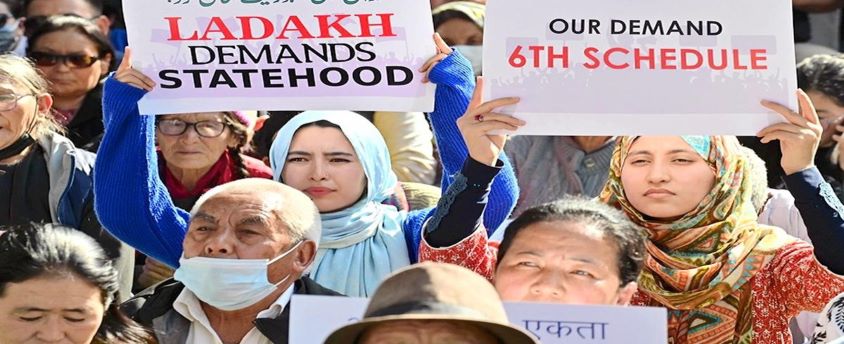
Why in News?
- With the Centre unlikely to make overtures to civil society groups in Ladakh, who have been demanding Statehood and constitutional safeguards, the leaders said recently that the path to agitation will continue.
- Background:
- On August 5, 2019, the erstwhile state of Jammu and Kashmir was stripped of its special status and bifurcated into two Union Territories (Jammu and Kashmir, and Ladakh).
- However, the region’s intellectuals and the politicians have been repeatedly raising concern over the demography, land and unique culture of the Ladakh and are saying the statehood with legislature would be able to give them necessary safeguards.
- In September 2019, the National Commission for Scheduled Tribes recommended the inclusion of Ladakh under the Sixth Schedule.
- The Commission took note of the fact that the newly created Union Territory of Ladakh is predominantly a tribal region in the country.
- The total tribal population in the Ladakh region is more than 97 per cent.
- What is the issue now?
- There is a demand to amend the Ladakh Hill Development Council Act, passed in 1997.
- Ladakh needs safeguards for land, employment and cultural identity on the lines under the Sixth Schedule of the Constitution.
- Roles and responsibilities of the central government, the Union Territory administration and the Lieutenant-Governor need to be defined.
- It aims to safeguard the demography, environment and unique culture of Ladakh.
- About Sixth Schedule of the Constitution:
- It provides for the administration of tribal areas in Assam, Meghalaya, Tripura and Mizoram to safeguard the rights of the tribal population in these states.
- This special provision is provided under Article 244(2) and Article 275(1) of the Constitution.
- It seeks to safeguard the rights of the tribal population through the formation of Autonomous District Councils (ADC).
- ADCs are bodies representing a district to which the Constitution has given varying degrees of autonomy within the state legislature.
What are its Features?
- Provisions have been made for the creation of the District Councils and regional councils for the exercise of certain legislative and judicial powers. However, their jurisdiction is subject to the jurisdiction of the concerned High Court.
- They have powers to form courts to hear cases where both parties are members of Scheduled Tribes and the maximum sentence is less than 5 years in prison.
- They also have powers to levy taxes, fees and tolls on buildings, land, animals, vehicles, boats, entry of goods into the area, roads, ferries, bridges, employment and income and general taxes for the maintenance of schools and roads.
- The Acts of Parliament or the State Legislature do not apply to autonomous districts and autonomous regions or apply with specified modifications and exceptions.
- The Governor is vested with powers regarding the councils. He/she, by public notification, may:
- Include or exclude any new area.
- Create a new autonomous district.
- Define the boundaries of any autonomous district.
- Increase or decrease the area of an existing autonomous district.
- Alter the name of any autonomous district.
Benefits:
- It was incorporated to protect the rights of the minority tribals living within a larger state dominated by the majority.
- It allows for greater political autonomy and decentralised governance in certain tribal areas of the Northeast.
Issues:
- It undermines the social harmony, stability and economic development of the state and the region.
Way Forward:
- There should be certain clear-cut parameters and safeguards to check the unfettered demands.
- It is better to allow democratic concerns like development, decentralisation and governance rather than religion, caste, language or dialect to be the valid bases for conceding the demands.
Vacancy on Deputy Speaker
16, Feb 2023
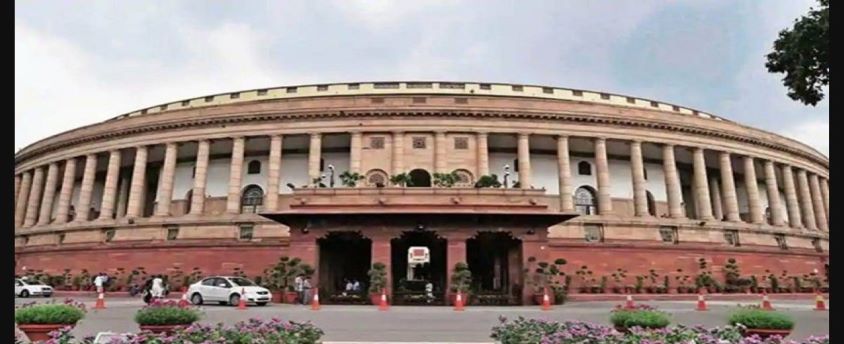
Why in News?
- The Supreme Court has issued notices on a petition highlighting the vacant posts of Deputy Speakers in Lok Sabha and five state assemblies for years.
About the News:
- A Bench sought responses on a PIL that contends that not electing a Deputy Speaker to the 17th (present) Lok Sabha, is “against the letter and spirit of the Constitution”.
Constitutional provisions regarding Deputy Speaker:
- Article 93 of the Constitution of India establishes the post of the Deputy Speaker of Lok Sabha and Articles 94-96 detail their appointment, removal, and powers.
- In the absence of the Speaker, the Deputy Speaker serves as the Speaker and wields the full powers of the Speaker.
- Deputy Speaker is not subordinate to the Speaker and is directly responsible to the House.
- Article 178 of the Constitution establishes the post of Deputy Speaker of assemblies and Articles 179-181 deal with their powers and appointment or resignation.
Is it mandatory to have a Deputy Speaker?
- Constitutional experts point out that both Articles 93 and 178 use the word “shall”, indicating that the election of Speaker and Deputy Speaker is mandatory under the Constitution.
Do the powers of the Speaker extend to the Deputy Speaker as well?
- Article 95(1) says: “While the office of Speaker is vacant, the duties of the office shall be performed by the Deputy Speaker”.
- The Deputy Speaker has the same powers as the Speaker when presiding over a sitting of the House. All references to the Speaker in the Rules are deemed to be references to the Deputy Speaker when he presides.
What is the position of the Union government on the current vacancy in the post of Deputy Speaker?
- The Treasury benches have maintained there is no “immediate requirement” for a Deputy Speaker as “bills are being passed and discussions are being held” as normal in the House. A Minister argued that “there is a panel of nine members — senior, experienced and selected from different parties — who can act as chairpersons to assist the Speaker to run the House”.
Can the courts intervene in cases of a delay in electing the Deputy Speaker?
- Article 122(1) says: “The validity of any proceedings in Parliament shall not be called in question on the ground of any alleged irregularity of procedure.”
- However, experts said that the courts do have jurisdiction to at least inquire into why there has been no election to the post of Deputy Speaker since the Constitution does envisage an election “as soon as may be”.
Mizoram Assembly adopts resolution opposing any move to implement UCC
15, Feb 2023
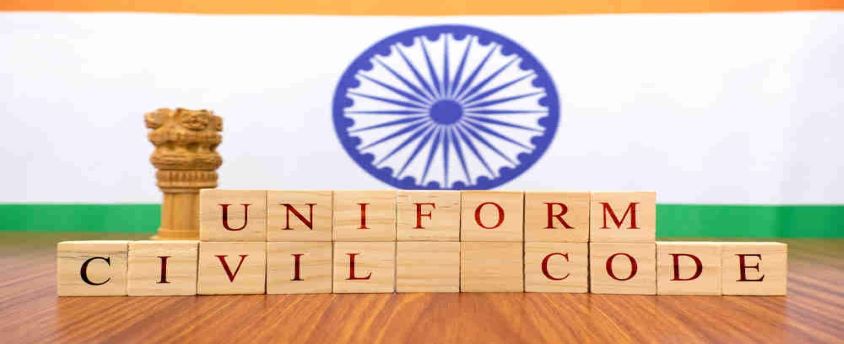
Why in News?
- The Mizoram Assembly has recently unanimously adopted an official resolution opposing any move to implement the Uniform Civil Code (UCC) in the country.
Background:
- The promulgation of the UCC emerges as a positive obligation and not duty of the State under Article 44 of the Constitution in the Directive Principles of State Policy (DPSP).
- Goa’s Portuguese Civil Code of 1867 is an example of a common family law prevalent in a State.
- This to govern matters of divorce, adoption, inheritance, guardianship, succession of all citizens equally regardless of their religion, gender and sexual orientation.
- Several other petitions are also pending before the top court seeking uniform ground and procedures of divorce, adoption and guardianship for all communities across the country.
- The Centre has maintained the issue of UCC falls within the domain of legislature.
What is a Uniform Civil Code?
- A Uniform Civil Code is one that would provide for one law for the entire country, applicable to all religious communities in their personal matters such as marriage, divorce, inheritance, adoption etc.
- Article 44, one of the directive principles of the Constitution lays down that the state shall endeavour to secure a Uniform Civil Code for the citizens throughout the territory of India.
- These, as defined in Article 37, are not justiciable (not enforceable by any court) but the principles laid down therein are fundamental in governance.
What did the SC say?
- The constitution of such committees by the states cannot be challenged for being ultra vires to the Constitution of India, as Article 162 empowers the State to constitute such committees.
- Article 162 of the Constitution states that the executive power of a state shall extend to the matters with respect to which the legislature of the State has power to make laws.
- Also, Entry 5 (Concurrent List) of the 7th schedule of the Constitution gives such power to the states to form a committee.
- It deals with marriage and divorce; infants and minors; adoption; etc.
Role of State in this regard:
- Fundamental rights are enforceable in a court of law.
- While Article 44 uses the words “the state shall endeavour”, other Articles in the ‘Directive Principles’ chapter use words such as “in particular strive”; “shall, in particular, direct its policy”; “shall be the obligation of the state” etc.
- Article 43 mentions “state shall endeavour by suitable legislation” while the phrase “by suitable legislation” is absent in Article 44. All this implies that the duty of the state is greater in other directive principles than in Article 44.
What are more important — fundamental rights or directive principles?
- There is no doubt that fundamental rights are more important.
- The Supreme Court held in Minerva Mills (1980): Indian Constitution is founded on the bedrock of the balance between Parts III (Fundamental Rights) and IV (Directive Principles).
- To give absolute primacy to one over the other is to disturb the harmony of the Constitution.
- Article 31C inserted by the 42nd Amendment in 1976, however, lays down that if a law is made to implement any directive principle, it cannot be challenged on the ground of being violative of the FRs under Articles 14 and 19.
Does India not already have a uniform code in civil matters?
- Indian laws do follow a uniform code in most civil matters – Indian Contract Act, Civil Procedure Code, Sale of Goods Act, Transfer of Property Act, Partnership Act, Evidence Act etc.
- States, however, have made hundreds of amendments and therefore in certain matters, there is diversity even under these secular civil laws.
- Recently, several states refused to be governed by the uniform Motor Vehicles Act, 2019.
What about personal laws?
- If the framers of the Constitution had intended to have a Uniform Civil Code, they would have given exclusive jurisdiction to Parliament in respect of personal laws, by including this subject in the Union List.
- But “personal laws” are mentioned in the Concurrent List.
- Last year, the Law Commission concluded that a Uniform Civil Code is neither feasible nor desirable.
Is there one common personal law for any religious community governing all its members?
- All Hindus of the country are not governed by one law, nor are all Muslims or all Christians. Not only British legal traditions, even those of the Portuguese and the French remain operative in some parts.
- In Jammu and Kashmir until August 5, 2019, local Hindu law statutes differed from central enactments.
- The Shariat Act of 1937 was extended to J&K a few years ago but has now been repealed.
Various customary laws
- Muslims of Kashmir were governed by a customary law, which in many ways was at variance with Muslim Personal Law in the rest of the country and was, in fact, closer to Hindu law.
- Even on the registration of marriage among Muslims, laws differ from place to place. It was compulsory in J&K (1981 Act), and is optional in Bengal, Bihar (both under 1876 Act), Assam (1935 Act) and Odisha (1949 Act).
- In the Northeast, there are more than 200 tribes with their own varied customary laws.
- The Constitution itself protects local customs in Nagaland. Similar protections are enjoyed by Meghalaya and Mizoram.
- Even reformed Hindu law, in spite of codification, protects customary practices.
How does the idea of a Uniform Civil Code relate to the fundamental right to religion?
- Article 25 lays down an individual’s fundamental right to religion;
- Article 26(b) upholds the right of each religious denomination or any section thereof to “manage its own affairs in matters of religion”;
- Article 29 defines the right to conserve distinctive culture.
- An individual’s freedom of religion under Article 25 is subject to “public order, health, morality” and other provisions relating to FRs, but a group’s freedom under Article 26 has not been subjected to other fundamental rights.
- In the Constituent Assembly, there was division on the issue of putting UCC in the fundamental rights chapter. The matter was settled by a vote.
- By a 5:4 majority, the fundamental rights sub-committee headed by Sardar Patel held that the provision was outside the scope of FRs and therefore the UCC was made less important than freedom of religion.
Minority opinion in the Constituent Assembly
- Some members sought to immunize Muslim Personal Law from state regulation.
- Mohammed Ismail, who thrice tried unsuccessfully to get Muslim Personal Law exempted from Article 44, said a secular state should not interfere with the personal law of people.
- B Pocker Saheb said he had received representations against a common civil code from various organisations, including Hindu organisations.
- Hussain Imam questioned whether there could ever be uniformity of personal laws in a diverse country like India.
- B R Ambedkar said, “no government can use its provisions in a way that would force the Muslims to revolt”.
- Alladi Krishnaswami, who was in favour of a UCC, conceded that it would be unwise to enact UCC ignoring strong opposition from any community.
- Gender justice was never discussed in these debates.
How did the debate on a common code for Hindus play out?
- In June 1948, Rajendra Prasad, President of the Constituent Assembly, warned Nehru that to introduce “basic changes” in personal law was to impose “progressive ideas” of a “microscopic minority” on the Hindu community as a whole.
- Others opposed to reforms in Hindu law included Sardar Patel, Pattabhi Sitaramayya, M A Ayyangar, M M Malaviya and Kailash Nath Katju.
- When the debate on the Hindu Code Bill took place in December 1949, 23 of 28 speakers opposed it.
- On September 15, 1951, President Prasad threatened to use his powers of returning the Bill to Parliament or vetoing it. Ambedkar eventually had to resign.
- Nehru agreed to trifurcation of the Code into separate Acts and diluted several provisions.
Former Supreme Court Judge Abdul Nazeer Appointed As Governor of Andhra Pradesh
14, Feb 2023
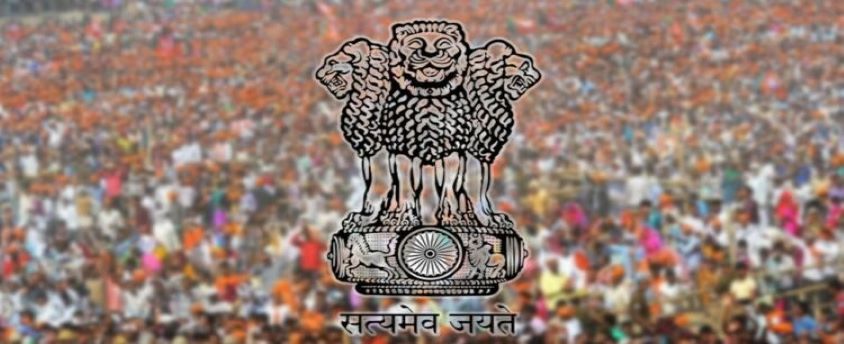
Context:
- The President of India has appointed former Supreme Court judge Justice S Abdul Nazeer as the Governor of Andhra Pradesh recently.
Governors of States in India:
- Governor is the nominal head of a state, unlike the Chief Minister who is the real head of a state in India.
- According to an amendment in the Constitution of India (7th Constitutional Amendment Act), brought about in 1956, the same person can be the Governor of two or more states.
Appointment and removal:
- The governors and lieutenant-governors are appointed by the president for a term of 5 years.
- The term of governor’s office is normally 5 years but it can be terminated earlier by: Dismissal by the president on the advice of the prime minister of the country, at whose pleasure the governor holds office or Resignation by the governor. Thus, the term is subject to pleasure of the president.
- There is no provision of impeachment, as it happens for the president.
- Article 157 and Article 158of the Constitution of India specify eligibility requirements for the post of governor.
Powers of the Governor:
- Like the President of India, the Governor of any state in India is vested with certain executive, legislative and judicial powers.
- He or she also possesses certain discretionary or emergency powers.
- But one major difference in the powers enjoyed by the President and those enjoyed by the Governor is, the Governor does not have any diplomatic or military powers.
Some discretionary powers are as follows:
- Governor can dissolve the legislative assembly if the chief minister advices him to do following a vote of no confidence. Following which, it is up to the Governor what he/ she would like to do.
- Governor, on his/ her discretion can recommend the president about the failure of the constitutional machinery in the state.
- On his/ her discretion, the Governor can reserve a bill passed by the state legislature for president’s assent.
- If there is no political party with a clear-cut majority in the assembly, Governor on his/ her discretion can appoint anybody as chief minister.
- Governor determines the amount payable by the Government of Assam, Meghalaya, Tripura and Mizoram to an autonomous Tribal District Council as royalty accruing from licenses for mineral exploration.
- Governor can seek information from the chief minister with regard to the administrative and legislative matters of the state.
- Governor has discretion to refuse to sign to an ordinary bill passed by the state legislature.
Constitutional Immunity to President and Governor:
- As per Article 361,
- The President or Governor are not personally answerable to any court for the exercise and performance of their powers, while in office.
- But it does not mean that conduct of these two office holders cannot be checked. The Article 361 makes it clear that conduct of the President may be brought under review by any court, tribunal or body appointed or designated by either House of Parliament for the investigation of a charge under article 61.
- No criminal proceedings can be started or continued against the President, or the Governor of a State, in any court during his term of office.
- No court can issue arrest warrants for President as well as Governor.
- Civil proceedings against a Governor or President against things done by him in his personal capacity can be done only with a prior 2 months’ notice.
What is the problem with constitutional design?
- The governor is merely appointed by the president on the advice of the Central government.
Unlike the president, a governor does not have a fixed term. He/she holds office at the pleasure of the ruling party in the centre. Both the manner of the appointment and the uncertainty of tenure conspire to make the incumbent an object of the Central government in politically charged circumstances.
The limits to free speech in Parliament
14, Feb 2023
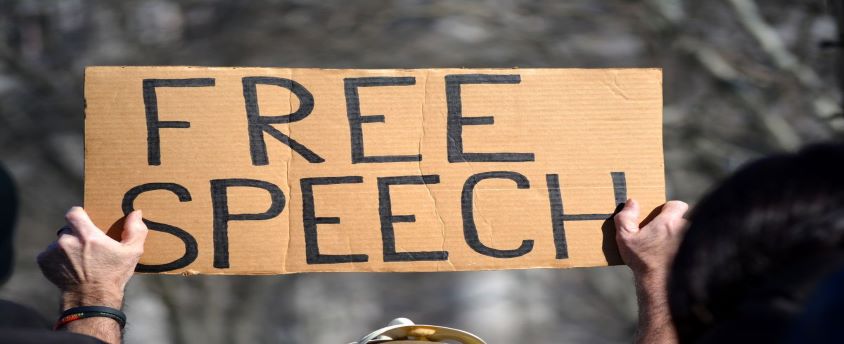
Why in News?
- Some opposition leaders are protesting the removal of parts of their speech on the motion of thanks on the President’s address during the current session of Parliament.
What are the Highlights of Recent Judgement given for Civil Servants?
- A five-judge Constitution bench reserved its verdict on whether restrictions can be imposed on a public functionary’s right to freedom of speech and expression.
- The court observed there is always a civil remedy available to citizens on account of a public functionary making a speech that affects someone.
- The court noted that irrespective of what Article 19(2) may say, there is a constitutional culture in the country where there is an inherent limitation or a restriction on what people holding responsible positions say.
- Article 19 (2) relates to the powers of the State to make laws imposing reasonable restrictions on the exercise of the right to freedom of speech and expression in the interest of sovereignty and integrity of the country, public order, decency, morality etc.
What was the Earlier Judgement?
- In 2017, a three-judge bench had referred to the Constitution bench various issues for adjudication, including whether a public functionary or a minister can claim freedom of speech while expressing views on sensitive matters.
- The need for an authoritative pronouncement on the issue arose as there were arguments that a minister cannot take a personal view and his statements have to be in sync with government policy.
- The court earlier said that it will consider whether the Fundamental Right of Speech and Expression would be governed under reasonable restriction of decency or morality or other preferred fundamental rights would also have an impact on it.
What is the Code of Conduct?
- A code of conduct is a set of rules, standards of behaviour or practices for an individual or organization that guide the decisions, procedures and systems of an organization in a way that contributes to the welfare of its stakeholders.
- For example, the Election Commission of India’s Model Code of Conduct is a set of guidelines issued by the Election Commission of India for conduct of political parties and candidates during elections mainly with respect to speeches, polling day, polling booths, portfolios, election manifestos, processions and general conduct.
- Similarly, a set of codes of rules are prescribed for civil servants with regard to their conduct in performing their duties.
What are the concerns?
- A disconnect between the speeches in the parliamentary record and the publicly available version online.
- It also means that every individual (including MPs) who shared the speech as was delivered by an MP on the floor of the House is in breach of the privilege of Parliament.
What are the Seven Principles of the Code of Conduct for Civil Servants?
- Selflessness: Holders of public office should take decisions solely in terms of the public interest. They should not do so in order to gain financial or other material benefits for themselves, their family, or their friends.
- Integrity: Holders of public office should not place themselves under any financial or other obligation to outside individuals or organisations that might influence them in the performance of their official duties.
- Objectivity: In carrying out public business, including making public appointments, awarding contracts, or recommending individuals for rewards and benefits, holders of public office should make choices on merit.
- Accountability: Holders of public office are accountable for their decisions and actions to the public and must submit themselves to whatever scrutiny is appropriate to their office.
- Openness: Holders of public office should be as open as possible about all the decisions and actions that they take. They should give reasons for their decisions and restrict information only when the wider public interest clearly demands.
- Honesty: Holders of public office have a duty to declare any private interests relating to their public duties and to take steps to resolve any conflicts arising in a way that protects the public interest.
- Leadership: Holders of public office should promote and support these principles by leadership and example.
Way Forward:
- Some of the conclusions have general application across the entire public service which can be added on over and above the seven principles of public service.
- Codes of Conduct: All public bodies should draw up Codes of Conduct incorporating these principles.
- Independent Scrutiny: Internal systems for maintaining standards should be supported by independent scrutiny.
- Education: More needs to be done to promote and reinforce standards of conduct in public bodies, in particular through guidance and training, including induction training.
The Parliamentary committee report on the Earth Sciences Ministry
13, Feb 2023
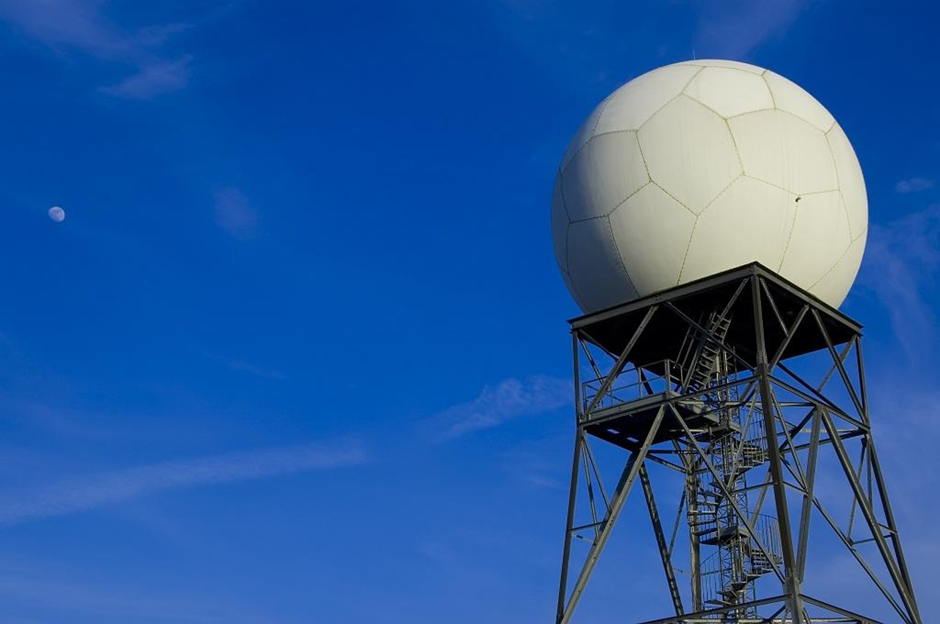
Why in News?
- According to a Parliamentary committee report, the Ministry of Earth Sciences (MoES) made progress but has been ‘sluggish’ on a few counts.
- Genesis & Types of Parliamentary Committee:
- Origin: As is the case with several other practices of Indian parliamentary democracy, the institution of Parliamentary Committees also has its origins in the British Parliament
- In independent India, the first Public Accounts Committee was constituted in April 1950.
- Constitutional Provisions: Parliamentary committees draw their authority from Article 105 (on privileges of Parliament members) and Article 118 (on Parliament’s authority to make rules for regulating its procedure and conduct of business).
- Types: Most committees are ‘standing’ as their existence is uninterrupted and usually reconstituted on an annual basis; some are ‘select’ committees formed for a specific purpose, for instance, to deliberate on a particular bill.
- In 1993, 17 Departmentally-related Standing Committees (DRSCs), later increased to 24, were constituted in the Parliament.
- These committees drew members from both Houses roughly in proportion to the strength of the political parties in the Houses.
- Allocation of Business: The chair uses her discretion to refer a matter to a parliamentary committee but this is usually done in consultation with leaders of parties in the House.
- The practice of regularly referring bills to committees began in 1989 after government departments started forming their own standing committees.
- Prior to that, select committees or joint committees of the houses were only set up to scrutinise in detail some very important bills.
- Some Important Parliamentary Committees in Finances: Financial control is a critical tool for Parliament’s authority over the executive; hence finance committees are considered to be particularly powerful.
- The three financial committees are the Public Accounts Committee, the Estimates Committee and the Committee on Public Undertakings.
Significance of Parliamentary Committee System:
- Inter-Ministerial Coordination: They are envisaged to be the face of Parliament in a set of inter- related departments and ministries.
- They are assigned the task of looking into the demands for grants of the ministries/departments concerned, to examine Bills pertaining to them, to consider their annual reports, and to look into their long-term plans and report to Parliament.
- Instrument For Detailed Scrutiny: Committee reports are usually exhaustive and provide authentic information on matters related to governance.
- Bills that are referred to committees are returned to the House with significant value addition.Besides the standing committees, the Houses of Parliament set up ad hoc committees to enquire and report on specific subjects that are assigned the task of studying a Bill closely and reporting back to the House.
- Also, in the discharge of their mandate, they can solicit expert advice and elicit public opinion.
- Acting As Mini-Parliament: These Committees are smaller units of MPs from both Houses, across political parties and they function throughout the year.
- Also, Parliamentary committees are not bound by the populistic demands that generally act as hindrance in working of parliament.
- As committee meetings are ‘closed door’ and members are not bound by party whips, the parliamentary committee work on the ethos of debate and discussions.
- Moreover, they work away from the public glare, remain informal compared to the codes that govern parliamentary proceedings, and are great training schools for new and young members of the House.
Major schemes of MoES:
- The atmosphere and Climate Research-Modelling Observing Systems and Services (ACROSS)
- Ocean-Services, Modelling, Application, Resources, and Technology (O-SMART)
- POLAR SCIENCE AND CRYOSPHERE RESEARCH (PACER)
- Seismology and Geosciences (SAGE)
- Research, Education, Training, and Outreach (REACHOUT)
- Deep Ocean Mission (DOM)
Way ahead:
- To revisit its performance in terms of the realization of physical targets set under various
- As acquiring the funds has been challenging, getting in-principle approval from the Department of Expenditure for different initiatives.
Lack of Quorum in Lok Sabha
10, Feb 2023

Why in News?
- The Lok Sabha began a discussion on the general Budget but the House had to be adjourned before the scheduled time due to lack of quorum.
What is Quorum?
- Quorum is the minimum number of members of a deliberative assembly necessary to conduct the business of that assembly.
- Article 100 of the Indian Constitution states that the quorum to constitute a meeting of either House of Parliament shall be one-tenth of the total number of members of that House.
- This means that the quorum of Lok Sabha (Lower House) is 55 and that of Rajya Sabha (Upper House) is 25.
Who decides the Quorum?
- The quorum is usually decided at the beginning of the session and if it is not present when a vote is taken, the vote is invalid.
- In the event of inadequate quorum, the Speaker or the Chairman can adjourn the House or suspend the sitting till the quorum is present.
Challenging a Quorum:
- Furthermore, the quorum can be challenged by any member of the House.
- In the event that the quorum is challenged, the Speaker or the Chairman can direct that a count of the members present be taken.
- If the quorum is not present, the House is adjourned. However, if the quorum is present, the business of the House is resumed.
Other important events in Parliament:
- Summoning of Parliament: Summoning is the process of calling all members of the Parliament to meet. The President summons each House of the Parliament from time to time. The gap between two sessions of the Parliament cannot exceed 6 months, which means the Parliament meets at least two times in one year.
- Adjournment: Adjournment terminates the sitting of the House which meets again at the time appointed for the next sitting. The postponement may be for a specified time such as hours, days or weeks. If the meeting is terminated without any definite time/ date fixed for the next meeting, it is called Adjournment sine die.
- Prorogation: Prorogation is the end of a session. A prorogation puts an end to a session. The time between the Prorogation and reassembly is called Recess. Prorogation is the end of session and not the dissolution of the house (in case of Lok Sabha, as Rajya Sabha does not dissolve).
Over 16 lakh people renounced Indian citizenship since 2011
10, Feb 2023

Why in News?
- According to data provided by the government in Rajya Sabha, more than 16 lakh Indians renounced their Indian citizenship since 2011 including 2,25,620 last year.
What is Citizenship?
Constitutional Provisions:
- Citizenship is listed in the Union List under the Constitution and thus is under the exclusive jurisdiction of Parliament.
- The Constitution does not define the term ‘citizen’ but details of various categories of persons who are entitled to citizenship are given in Part 2 (Articles 5 to 11).
Acquisition of Indian Citizenship:
- The Citizenship Act of 1955 prescribes five ways of acquiring citizenship, viz, birth, descent, registration, naturalisation and incorporation of territory.
Citizenship (Amendment) Act, 2019:
- The Act amended the law to fast-track citizenship for religious minorities, specifically Hindus, Sikhs, Buddhists, Jains, Parsis and Christians, from Afghanistan, Bangladesh and Pakistan who entered India prior to 2015.
- The requirement for them to stay in India for at least 11 years before applying for Indian citizenship has been reduced to five years.
Why do People Relinquish Citizenship?
- For India with newer generations holding passports of other countries, some older Indians are choosing to leave to be with family settled overseas.
- In some high-profile cases, people who leave India may be fleeing the law or fear legal action for alleged crimes.
- The post-Independence diasporic community has been going (out of India) for jobs and higher education but the pre-Independence diasporic movement was completely different, witnessing forced and contractual labour.
- Since India does not provide dual citizenship, therefore one has to renounce his/her Indian Citizenship for acquiring citizenship of another country.
- Countries where Indians have been migrating for long or where people have family or friends would be more automatic choices, as would considerations such as easier paperwork and more welcoming social and ethnic environments.
What are the Ways to Renounce Citizenship in India?
Voluntary Renunciation:
- If an Indian citizen wishes, who is of full age and capacity, he can relinquish citizenship of India by his will. When a person relinquishes his citizenship, every minor child of that person also loses Indian citizenship.
- However, when such a child attains the age of 18, he may resume Indian citizenship.
By Termination:
- The Constitution of India provides single citizenship. It means an Indian person can only be a citizen of one country at a time. If a person takes the citizenship of another country, then his Indian citizenship ends automatically.
- However, this provision does not apply when India is busy in war.
Deprivation by Government:
- The Government of India may terminate the citizenship of an Indian citizen if;
- The citizen has disrespected the Constitution.
- Has obtained citizenship by fraud.
- The citizen has unlawfully traded or communicated with the enemy during a war.
- Within 5 years of registration or naturalisation, a citizen has been sentenced to 2 years of imprisonment in any country.
- The citizen has been living outside India for 7 years continuously.
Internet blocking committee met 53 times in 2022
09, Feb 2023

Why in News?
- The Ministry of Electronics and Information Technology (MeitY) said in a parliamentary response that a committee to consider blocking requests under the Information Technology (Procedure and Safeguards for Blocking for Access of Information for Public) Rules, 2009, met 53 times in 2022.
What is an Internet shutdown?
- Internet shutdowns are measures taken by a government or on behalf of a government, to intentionally disrupt access to and the use of information and communications systems online.
About Anuradha Bhasin case verdict:
- The Court said that all restrictive orders under Section 144 of CrPC and suspension of internet services in Jammu and Kashmir have to be reviewed.
- The verdict has laid down a framework of how the Internet can be suspended, and what rights and legal recourses a citizen has when it is suspended.
- Right to internet is a fundamental right (subject to reasonable restrictions) included in the freedom of expression under Article 19 of the Indian Constitution.
- Restrictions on fundamental rights could not be in exercise of arbitrary powers. These freedoms could only be restricted as a last resort if “relevant factors” have been considered and no other options are there.
- Any order passed to restrict or suspend judicial scrutiny will be subject to judicial scrutiny.
- Suspension of internet services indefinitely is also a violation of telecom rules.
SC on section 144:
- Sec 144 cannot be used to suppress the legitimate expression of opinion or grievance, or the exercise of democratic rights.
- When Sec 144 is imposed for reasons of apprehended danger, that danger must be an “emergency”.
- The imposition of Sec 144 must strike a balance between the rights of the individual and the concerns of the state.
- Powers under Sec 144 should be exercised in a reasonable and bona fide manner, and the order must state material facts in order to enable judicial review.
What procedure does the government follow to suspend Internet services?
- The Information Technology Act, 2000, the Criminal Procedure Code (CrPC), 1973 and the Telegraph Act, 1885 are the three laws that deal with suspension of Internet services.
- But before 2017, Internet suspension orders were issued under section 14 of the CrPC.
- In 2017, the central government notified the Temporary Suspension of Telecom Services (Public Emergency or Public Service) Rules under the Telegraph Act to govern suspension of Internet. These Rules derive their powers from Section 5(2) of the Indian Telegraph Act, which talks about interception of messages in the “interests of the sovereignty and integrity of India”.
- Despite the 2017 rules, the government has often used the broad powers under Section 144.
- India also tops the list of Internet shutdowns globally. According to Software Freedom Law Centre’s tracker, there have been 381 shutdowns since 2012, 106 of which were in 2019.
What did the judgment say on the rules to be followed?
- The court recognised that the 2017 Rules are the only procedure to be followed to suspend Internet services in the occurrence of a “public emergency” or for it to be “in the interest of public safety”.
- The verdict reiterated that the competent authority to issue an order under the Suspension Rules, in ordinary circumstances, would be the Secretary to the Ministry of Home Affairs.
- The Rules also say that in case the confirmation does not come from a competent authority, the orders shall cease to exist within a period of 24 hours.
- Clear reasons for such orders need to be given in writing, and need to be forwarded to a Review Committee by the next working day.
- The confirmation must not be a mere formality, but must indicate independent application of mind by the competent authority to the order passed by the authorised officer, who must also take into account changed circumstances if any, etc.
- According to the Temporary Suspension of Telecom Services [Public Emergency or Public Service] Rules, 2017 only the Home Secretary of the country and a secretary of a state’s home department can pass such an order.
- These also state that any such order should be taken up by a review committee within five days.
73rd anniversary of the Supreme Court
07, Feb 2023
Why in News?
- This year, the court is hosting the first-ever celebration of its anniversary with Singapore Chief Justice Sundaresh Menon as chief guest. The Supreme Court was established on January 28, 1950, two days after the Constitution.
A brief overview of India’s Supreme Court:
- The Supreme Court of India is the highest judicial body in the country and was established in 1950 after India gained independence from British rule. It evolved from the Federal Court of India, which was established in 1937.
How has the Supreme Court changed over the years?
- The number of judges: The original Constitution envisaged a Supreme Court with a Chief Justice and 7 puisne judges – leaving it to Parliament to increase this number.
- Currently, there are 32 judges (including the Chief Justice) (maximum possible strength is 34)
- Sittings: In the early years, all the judges of the Supreme Court sat together to hear the cases presented before them.
- As the number of cases has increased, the SC sit in smaller benches of two and three– coming together in larger benches of 5 and more only when required to do so.
- Expansion of its jurisdiction: Over the years, the Supreme Court has expanded its jurisdiction, taking on an increasingly active role in public interest litigation and providing judicial remedies for a wide range of social and economic issues.
Significance of SC:
- Final appellate court
- Defender of the Constitution: The Supreme Court is the ultimate interpreter of the Indian Constitution
- Leader in the development of public interest litigation in India, allowing citizens to bring cases to the court to address issues of public concern.
- Political Stability: It serves as a check on the power of the government and other institutions, helping to ensure political stability and the rule of law in the country
- Defender of rights: It has also established itself as a defender of the rights of marginalized groups, including women, children, and religious and ethnic minorities.
Limitations of SC:
- Case backlog, shortage of judges, staff, and funding, Political pressure, and Difficulty in enforcing judgments.
Judicial Majoritarianism
03, Feb 2023

Why in News?
- The blind acceptance of numerical majorities in judicial decision-making and the constitutional disregard of analysis and appreciation of arguments and evidence in dissenting judgments have been in news recently after the recent Supreme Court Judgement on demonetization.
What is Judicial Majoritarianism?
- The requirement for a majority consensus flows from Article 145(5) of the Constitution, which states that no judgment in such cases can be delivered except with the concurrence of a majority of the judges but that judges are free to deliver dissenting judgments or opinions.
- Numerical majorities are of particular importance to cases, which involve a substantial interpretation of constitutional provisions. In such cases, Constitutional Benches, consisting of five or more judges, are set up in consonance with Article 145(3) of the Constitution.
- Such Benches usually consist of five, seven, nine, 11 or even 13 judges.
An issue with Judicial Majoritarianism:
- Issue of why numerical majorities of judicial bodies are accepted without any debate, while numerical majorities in representative bodies such as the Lok Sabha are often looked at with suspicion.
Reflect upon the concept of judicial majoritarianism:
- Jeremy Waldron in his ‘Five to Four: Why Do Bare Majorities Rule on Courts?’ He holds that the arguments of – efficiency through ease of decision-making; epistemic objectivity through majority adherence; and equality through fairness, which are made in defence of judicial majoritarianism cannot explain or justify our adherence to majority decisions.
- As opposed to representatives of the people in legislatures who may act on hunches or popular perception, judges are experts of law and are aware of the arguments for and against the impugned matter.
- Given the same, Jeremy Waldron questions why is it that the judges too have to resort to head counting in order to resolve disagreements amongst judges.
- All judges on a particular Bench give their rulings on the same set of facts, laws, arguments and written submissions.
- In light of the same, any differences in judicial decisions can be attributed to a difference in either the methodology adopted and the logic applied by the judges in their interpretation, or, upon their own ‘judicial hunches’ which may be an outcome of their subjective experiences, outlook, perceptions, prejudices and biases.
Constitutional history:
- The dissenting opinion of Justice H.R. Khanna in A.D.M. Jabalpur v. Shivkant Shukla (1976) upholding the right to life and personal liberty even during situations of constitutional exceptionalism is a prime example.
- Another example is the dissenting opinion of Justice Subba Rao in the Kharak Singh v. State of U.P. (1962) case upholding the right to privacy which received the judicial stamp of approval in the K.S. Puttaswamy v. UOI (2017) case.
Way Forward:
- Seniority-based assessment: Ronald Dworkin proffers a system which may either give more weightage to the vote of senior judges given that they have more experience or to the junior judges as they may represent popular opinion better.
- Inculcate critical discourse
SC rejects plea seeking to bar candidates from contesting elections from more than one seat
03, Feb 2023

Why in News?
- The Supreme Court recently refused to set aside a provision in the election law which allows candidates to contest polls from two constituencies simultaneously.
What is the Background?
- As per Section 33(7) of the RPA (Representation of the People Act), 1951, one candidate can contest from a maximum of two constituencies.
- More constituencies were allowed until 1996 when the RPA was amended to set the cap at two constituencies.
- Since 1951, many politicians have used this factor to contest from more than one seat – sometimes to divide the opponent’s vote, sometimes to profess their party’s power across the country, sometimes to cause a ripple effect in the region surrounding the constituencies in favour of the candidate’s party and all parties have exploited Section 33(7).
What are the Points in Favour of Contesting two Seats?
- The system of one candidate, two constituencies provides a “wider choice to the polity as well as candidates”.
- Doing away with the provision could cause an infringement of the rights of the candidates contesting elections as well as curtail choice of candidates to the polity.
What are the Recommendations of the Election Commission?
- The Election Commission recommended amending Section 33(7) so as to allow one candidate to contest from only one seat.
- It did so in 2004, 2010, 2016 and in 2018.
- A system should be devised wherein if a candidate contested from two constituencies and won both, then he or she would bear the financial burden of conducting the subsequent by-election in one of the constituencies. The amount would be Rs 5 lakh for a Vidhan Sabha election and Rs 10 lakh for a Lok Sabha election.
What are the procedures and timelines for effecting this?
Lok Sabha and Rajya Sabha:
- If a person is elected simultaneously to both Rajya Sabha and Lok Sabha, and if he has not yet taken his seat in either House, he can choose, within 10 days from the later of the dates on which he is chosen to those Houses, the House of which he would like to be a member. [Article 101(1) of the Constitution read with Section 68(1) of The Representation of the People Act, 1951]
- The member must intimate his choice in writing to the Secretary to the Election Commission of India (ECI) within the 10-day window, failing which his seat in Rajya Sabha will fall vacant at the end of this period. [Sec 68(2), RPA 1951]. The choice, once intimated, is final. [Sec 68(3), RPA, 1951]
- No such option is, however, available to a person who is already a member of one House and has contested the election for membership of the other House.
- So, if a sitting Rajya Sabha member contests and wins a Lok Sabha election, his seat in the Upper House becomes automatically vacant on the date he is declared elected to Lok Sabha. The same applies to a Lok Sabha member who contests an election to Rajya Sabha. [Sec 69 read with Sec 67A, RPA 1951]
Elected on two Lok Sabha seats:
- There is no one in this category in the new Lok Sabha. Under Sec 33(7) of RPA, 1951, an individual can contest from two parliamentary constituencies but, if elected from both, he has to resign one seat within 14 days of the declaration of the result, failing which both his seats shall fall vacant. [Sec 70, RPA, 1951 read with Rule 91 of the Conduct of Elections Rules, 1961]
State Assembly and Lok Sabha:
- Under Article 101(2) of the Constitution (read with Rule 2 of the Prohibition of Simultaneous Membership Rules, 1950, made by the President under this Article) members of state legislatures who have been elected to Lok Sabha must resign their seats within 14 days “from the date of publication in the Gazette of India or in the Official Gazette of the State, whichever is later, of the declaration that he has been so chosen”, failing which their seats in Lok Sabha shall automatically fall vacant.
Validity of Electoral Bonds Scheme
31, Jan 2023
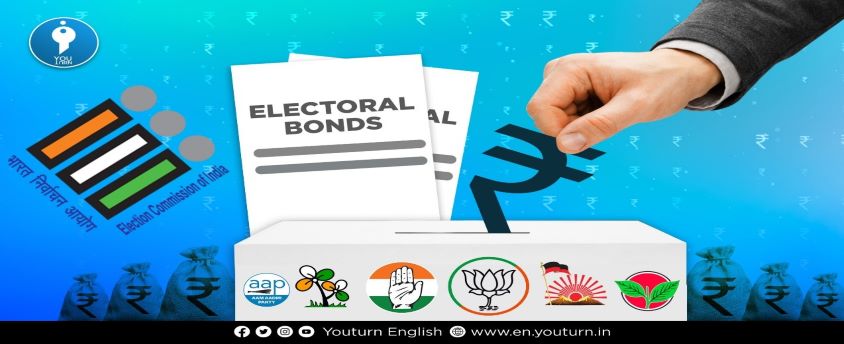
Why in News?
- The Supreme Court is on January 31 scheduled to examine whether petitions challenging the validity of electoral bonds scheme need to be referred to a Constitution Bench.
What is an Electoral Bond?
- Electoral Bond is a financial instrument for making donations to political parties.
- The bonds are issued in multiples of Rs. 1,000, Rs. 10,000, Rs. 1 lakh, Rs. 10 lakh and Rs. 1 crore without any maximum limit.
- State Bank of India is authorised to issue and encash these bonds, which are valid for fifteen days from the date of issuance.
- These bonds are redeemable in the designated account of a registered political party.
- Every party that is registered under section 29A of the Representation of the Peoples Act, 1951 and has secured at least 1% of the votes polled in the most recent Lok Sabha or State election will be allotted a verified account by the Election Commission of India.
- Electoral bond transactions can be made only via this account.
- The bonds are available for purchase by any person (who is a citizen of India or incorporated or established in India) for a period of ten days each in the months of January, April, July and October as may be specified by the Central Government.
- A person being an individual can buy bonds, either singly or jointly with other individuals.
- Donor’s name is not mentioned on the bond.
- During general elections, the central government may specify an additional period of thirty days for sale of these bonds. There have been some occasions when the government has deviated from the specified periodicity for issuance of these bonds.
- For example, the sixth tranche of electoral bonds was issued from 1st-10th November 2018 and electoral bonds were sold in the months of March, April and May during 2019 general elections.
What are the concerns?
- While the Scheme acts as a check against traditional under-the-table donations as it insists on cheque and digital paper trails of transactions, several key provisions of the scheme make it highly controversial.
- Anonymity:
- Neither the donor (who could be an individual or a corporate) nor the political party is obligated to reveal whom the donation comes from.
- In 2019, the Supreme Court held that all political parties who had received donations through electoral bonds must submit details to the Election Commission of India.
- This undercuts a fundamental constitutional principle, the freedom of political information, which is an integral element of Article 19(1) (a) of the Constitution.
- Defeating Transparency:
- It defeats the fundamental principle of transparency in political finance because it conceals from public scrutiny the identity of the corporates and moneybags.
- Asymmetric Opacity:
- The government is always in a position to know who the donor is because the bonds are purchased through the SBI.
- This asymmetry of information threatens to colour the process in favour of whichever political party is ruling at the time.
- Chanel of Black money:
- Elimination of a cap of 7.5% on corporate donations, elimination of requirement to reveal political contributions in profit and loss statements and also the elimination of the provision that a corporation must be three years in existence, undercuts the intent of the scheme.
- Any troubled, dying or shell companies can donate an unlimited amount anonymously to a political party giving them a convenient channel for business to round-trip their cash parked in tax havens for a favour or advantage granted in return for something.
Way Forward:
- There is a need for fixing the governance system and effective regulation of political financing along with bold reforms to break the vicious cycle of corruption and erosion of quality of democratic polity. It is crucial to plug the loopholes in the current laws to make the entire governance machinery more accountable and transparent.
- Voters can help bring in substantial changes by demanding awareness campaigns. If voters reject candidates and parties that overspend or bribe them, democracy would move a step higher.
OBC sub-categorisation panel gets 14th extension
30, Jan 2023
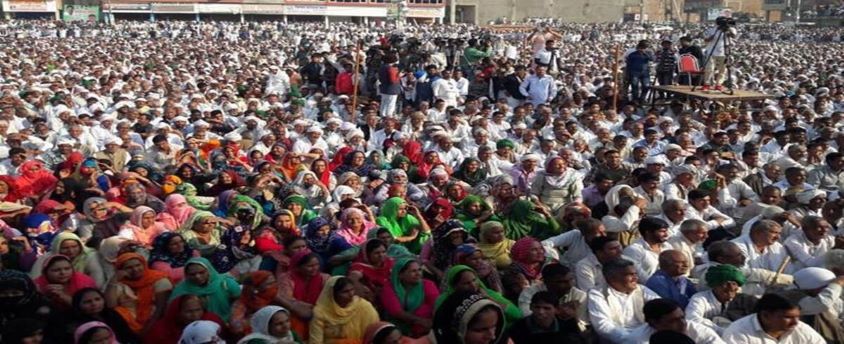
Why in News?
- According to a gazette notification issued by the Union Ministry of Social Justice and Empowerment, the Justice G. Rohini-led commission for the sub-categorisation of other backward classes (OBCs) has now been given yet another extension in its tenure by the President.
About the News:
- This is the 14th extension in tenure that the commission has been given.
- The commission, formed in October 2017, was initially given 12 weeks to finish the task of sub-categorising the nearly 3,000 castes within the OBC umbrella and recommend division of the 27% OBC quota among them equitably.
- Initially, the government cited more time required by the panel to gather information and data and then it cited the pandemic.
About the Commission:
- The commission was set up on 2nd October, 2017 under Article 340 of the Constitution.
- It was tasked with sub-categorisation of the Other Backward Classes (OBCs) and equitable distribution of benefits reserved for them.
- In 2015, the National Commission for Backward Classes (NCBC) had recommended that OBCs should be categorised into extremely backward classes, more backward classes and backward classes.
- NCBC has the authority to examine complaints and welfare measures regarding socially and educationally backward classes.
Commission’s Terms of References:
- To examine the uneven distribution of reservation benefits among different castes in the central OBC list.
- To work out the mechanism, criteria, norms and parameters in a scientific approach for sub-categorisation within such OBCs.
- To take up the exercise of identifying the respective castes/communities/sub-castes/synonyms for comprehensive data coverage.
- To study and recommend correction of any repetitions, ambiguities, inconsistencies and errors of spelling or transcription.
Work Done So Far:
- It has met representatives of state governments, state backward classes commissions, community associations etc. apart from obtaining caste-wise data of OBCs in higher educational institutions and recruits in central departments, public sector banks and financial institutions.
- In 2021, the commission proposed to divide OBCs into four subcategories numbered 1, 2, 3 and 4 and split the 27% into 2, 6, 9 and 10%, respectively.
- It also recommended complete digitisation of all OBC records and a standardised system of issuing OBC certificates.
How has the status of OBC reservation evolved over time?
- The Kalelkar Commission, set up in 1953, was the first to identify backward classes other than the Scheduled Castes (SCs) and Scheduled Tribes (STs) at the national level.
- The Mandal Commission Report, 1980 estimated the OBC population at 52% and classified 1,257 communities as backward.
- It recommended increasing the existing quotas, which were only for SC/ST, from 22.5% to 49.5% to include the OBCs.
- The central government reserved 27% of seats in union civil posts and services for OBCs [Article 16(4)]. The quotas were subsequently enforced in central government educational institutions [Article 15 (4)].
- In 2008, the Supreme Court directed the central government to exclude the creamy layer (advanced sections) among the OBCs.
- The 102nd Constitution Amendment Act, 2018 provided constitutional status to the National Commission for Backward Classes (NCBC), which was previously a statutory body under the Ministry of Social Justice and Empowerment.
Disqualification of MPs
27, Jan 2023

Why in News?
- The Kerala High Court recently suspended the conviction and sentence of 10 years of rigorous imprisonment awarded by the Kavarathi Sessions Court to disqualified Lakshadweep MP Mohammed Faizal in a case of attempt to murder Mohammed Salih, son-in-law of former Union Minister P.M. Sayeed, during the 2009 Lok sabha polls.
Constitutional Provisions for Disqualification of MLAs:
- Under the Constitution, a person shall be disqualified for being chosen as and for being a member of the legislative assembly or legislative council of a state:
- If he holds any office of profit under the Union or state government (except that of a minister or any other office exempted by state legislature),
- If he is of unsound mind and stands so declared by a court,
- If he is an undischarged insolvent,
- If he is not a citizen of India or has voluntarily acquired the citizenship of a foreign state or is under any acknowledgement of allegiance to a foreign state, and
- If he is so disqualified under any law made by Parliament.
Parliamentary Provisions for Disqualification of MLAs:
The Parliament has prescribed a number of additional disqualifications in the Representation of People Act (1951) and the same is followed by Legislative Assembly and Council:
- He must not have been found guilty of certain election offences or corrupt practices in the elections.
- He must not have been convicted for any offence resulting in imprisonment for two or more years.
- But, the detention of a person under a preventive detention law is not a disqualification.
- He must not have failed to lodge an account of his election expenses within the time.
- He must not have any interest in government contracts, works or services.
- He must not be a director or managing agent nor hold an office of profit in a corporation in which the government has at least 25 per cent share.
- He must not have been dismissed from government service for corruption or disloyalty to the state.
- He must not have been convicted for promoting enmity between different groups or for the offence of bribery.
- He must not have been punished for preaching and practicing social crimes such as untouchability, dowry and sati.
- The governor’s decision is final on the question whether a member has become subject to any of the above disqualifications.
- The governor should obtain the opinion of the Election Commission and act accordingly.
Disqualification on Ground of Defection:
- The Constitution lays down that a person shall be disqualified for being a member of either House of state legislature if he is so disqualified on the ground of defection under the provisions of the Tenth Schedule.
- The question of disqualification under the Tenth Schedule is decided by the Chairman, in the case of legislative council and, Speaker, in the case of legislative assembly.
- In 1992, the Supreme Court ruled that the decision of Chairman/Speaker in this regard is subject to judicial review.
Four SC Collegium resolutions give an insight into government’s priorities
21, Jan 2023

Why in News?
- Four Supreme Court Collegium resolutions backing online free speech, dignity based on sexual orientation and integrity in judicial appointments deliver an extraordinary display of transparency, but at the government’s cost.
What is Collegium System?
- It is the system of appointment and transfer of judges that has evolved through judgments of the SC, and not by an Act of Parliament or by a provision of the Constitution.
- The SC collegium is headed by the CJI and comprises four other senior most judges of the court.
- A HC collegium is led by its Chief Justice and four other senior most judges of that court.
- Names recommended for appointment by a HC collegium reaches the government only after approval by the CJI and the SC collegium.
- Judges of the higher judiciary are appointed only through the collegium system and the government has a role only after names have been decided by the collegium.
- The government’s role is limited to getting an inquiry conducted by the Intelligence Bureau (IB) if a lawyer is to be elevated as a judge in a High Court or the Supreme Court.
- Intelligence Bureau (IB): It is a reputed and established intelligence agency. It is authoritatively controlled by the Ministry of Home Affairs.
- It can also raise objections and seek clarifications regarding the collegium’s choices, but if the collegium reiterates the same names, the government is bound, under Constitution Bench judgments, to appoint them as judges.
Evolution of the Collegium System:
- First Judges Case (1981):
- It declared that the “primacy” of the Chief Justice of India (CJI)s recommendation on judicial appointments and transfers can be refused for “cogent reasons.”
- The ruling gave the Executive primacy over the Judiciary in judicial appointments for the next 12 years.
- Second Judges Case (1993):
- SC introduced the Collegium system, holding that “consultation” really meant “concurrence”.
- It added that it was not the CJI’s individual opinion, but an institutional opinion formed in consultation with the two senior-most judges in the SC.
- Third Judges Case (1998):
- SC on President’s reference expanded the Collegium to a five-member body, comprising the CJI and four of his senior-most colleagues.
Procedure for Various Judicial Appointments:
- For CJI:
- The President of India appoints the CJI and the other SC judges.
- As far as the CJI is concerned, the outgoing CJI recommends his successor.
- In practice, it has been strictly by seniority ever since the supersession controversy of the 1970s.
- For SC Judges:
- For other judges of the SC, the proposal is initiated by the CJI.
- The CJI consults the rest of the Collegium members, as well as the senior-most judge of the court hailing from the High Court to which the recommended person belongs.
- The consultees must record their opinions in writing and it should form part of the file.
- The Collegium sends the recommendation to the Law Minister, who forwards it to the Prime Minister to advise the President.
- For Chief Justice of High Courts:
- The Chief Justice of High Court is appointed as per the policy of having Chief Justices from outside the respective States.
- The Collegium takes the call on the elevation.
- High Court judges are recommended by a Collegium comprising the CJI and two senior-most judges.
- The proposal, however, is initiated by the outgoing Chief Justice of the High Court concerned in consultation with two senior-most colleagues.
- The recommendation is sent to the Chief Minister, who advises the Governor to send the proposal to the Union Law Minister.
Criticism of the Collegium System:
- Opaqueness and a lack of transparency.
- Scope for nepotism.
- Embroilment in public controversies.
- Overlooks several talented junior judges and advocates.
Attempts to reform the Appointment System:
- The attempt made to replace it by a ‘National Judicial Appointments Commission’ was struck down by the court in 2015 on the ground that it posed a threat to the independence of the judiciary.
Related Constitutional Provisions:
- Article 124(2) of the Indian Constitution provides that the Judges of the Supreme Court are appointed by the President after consultation with such a number of the Judges of the Supreme Court and of the High Courts in the States as the President may deem necessary for the purpose.
- Article 217 of the Indian Constitution states that the Judge of a High Court shall be appointed by the President consultation with the Chief Justice of India, the Governor of the State, and, in the case of appointment of a Judge other than the Chief Justice, the Chief Justice of the High Court.
Way Forward:
- Filling up of vacancies is a continuous and collaborative process involving the executive and the judiciary, and there cannot be a time frame for it. However, it is time to think of a permanent, independent body to institutionalize the process with adequate safeguards to preserve the judiciary’s independence guaranteeing judicial primacy but not judicial exclusivity.
- It should ensure independence, reflect diversity, demonstrate professional competence and integrity.
- Instead of selecting the number of judges required against a certain number of vacancies, the collegium must provide a panel of possible names to the President to appoint in order of preference and other valid criteria.
Centre Vs Union
12, Jan 2023

Why in News?
- Since the Tamil Nadu government shunned the usage of the term ‘Central government’ in its official communications by replacing it with ‘Union government’, it has erupted the Union Vs Centre Debate.
What is the Constitutionality of the Term Union/Centre?
- There is no mention of the term ‘Central government’ in the Constitution of India because the Constituent Assembly did not use the term ‘Centre’ or ‘Central government’ in all of its 395 Articles in 22 Parts and eight Schedules in the original Constitution.
- There are only references of the ‘Union’ and the ‘States’ with the executive powers of the Union wielded by the President acting on the aid and advice of the Council of Ministers headed by the Prime Minister.
- Even though there is no reference to the ‘Central government’ in the Constitution, the General Clauses Act, 1897 gives a definition for it.
- The ‘Central government’ for all practical purposes is the President after the commencement of the Constitution.
What is the Intent of the Constituent Assembly?
- Article 1(1) of the Constitution of India says “India, that is Bharat, shall be a Union of States.”
- On 13th December, 1946, Jawaharlal Nehru introduced the aims and objectives of the Constituent Assembly by resolving that India shall be a Union of territories willing to join the “Independent Sovereign Republic”. The emphasis was on the consolidation and confluence of various provinces and territories to form a strong united country.
- While submitting the draft Constitution in 1948, Dr B R Ambedkar, chairman of the drafting committee, had said that the committee had used the word ‘Union’ because:
- the Indian federation was not the result of an agreement by the units, and
- the component units had no freedom to secede from the federation.
- The members of the Constituent Assembly were very cautious of not using the word ‘Centre’ or ‘Central government’ in the Constitution as they intended to keep away the tendency of centralizing of powers in one unit.
What is the Difference Between Union & Centre?
- According to constitution expert Subash Kashyap, from the point of the usage of the words, ‘center’ indicates a point in the middle of a circle, whereas ‘Union’ is the whole circle.
- In India, the relationship between the so-called ‘Centre’ and States, as per the Constitution, is actually a relationship between the whole and its parts.
- Both the Union and the States are created by the Constitution, both derive their respective authority from the Constitution. The one is not subordinate to the other in its own field and the authority of one is to coordinate with that of the other.
- The judiciary is designed in the Constitution to ensure that the Supreme Court, the tallest court in the country, has no superintendence over the High Court.
- Though the Supreme Court has appellate jurisdiction, not only over High Courts but also over other courts and tribunals, they are not declared to be subordinate to it.
- In fact, the High Courts have wider powers to issue prerogative writs despite having the power of superintendence over the district and subordinate courts.
- In very common parlance, Union gives a sense of Federal while centre gives more of a sense of unitary government.
- But practically both are the same in the Indian political system.
What are the Associated Issues with the Term Central Government?
- Discarded By Constituent Assembly: The word ‘Centre’ is not used in the Constitution; the makers of the Constitution specifically discarded it and instead used the word ‘Union’.
- Colonial Legacy: ‘Centre’ is a hangover from the colonial period because the bureaucracy in the Secretariat, New Delhi who are used to using the word ‘Central Laws,’ ‘Central legislature,’ etc, and so everyone else, including the media, started using the word.
- Conflict With Idea of Federalism: India is a federal government. The power to govern is divided between a government for the whole country, which is responsible for subjects of common national interest, and the states, which look after the detailed day-to-day governing of the state.
- According to Subash Kashyap, using the term ‘Centre’ or ‘central government’ would mean state governments are subservient to it.
Way Forward:
- The federal nature of the Constitution is its basic feature and cannot be altered, thus, the stakeholders wielding power intend to protect the federal feature of our Constitution.
- A diverse and large country like India requires a proper balance between the pillars of federalism, i.e., autonomy of states, national integration, centralisation, decentralisation, nationalisation, and regionalisation.
- Extreme political centralisation or chaotic political decentralisation can both lead to the weakening of Indian federalism.
- The satisfactory and lasting solution of the vexed problem is to be found not in the statute-book but in the conscience of men in power.
Tussle between Tamil Nadu Governor and CM Escalates in Assembly
11, Jan 2023

Why in News?
- The governor-government tussle in Tamil Nadu erupted in the assembly after the CM objected to the Governor skipping portions of his customary speech to the state legislature and tabled a resolution against him, prompting the latter to leave the House.
Previous Incidents in India:
- West Bengal: The governor of West Bengal, Jagdeep Dhankhar, was unable to deliver his address at the Vidhan Sabha on the first day of the budget session, amid sloganeering, chaos and protests.
- Telangana: In Telangana, the budget session of the state assembly commenced without the customary governor’s address, and the incumbent, Tamilisai Soundararajan, expressed discontent over the state government’s decision to not have the governor’s address at the beginning of the session.
Governor’s Address:
- Article 176(1) of the Constitution of India enjoins that the Governor shall Address both the Houses assembled together at the commencement of the first Session after each general election to the Assembly and at the commencement of the first session of each year and inform the Legislature of the causes of its Summons.
What it contains?
- The Address of the Governor contains a review of the activities and Achievements of the Government during the previous year and their policy with regard to important internal problems as well as a brief account of the programme of Government Business for the session.
Discussions on Governor’s address:
- On the first day on which the discussion on the Address of the Governor begins, a copy of the Address of the Governor is laid on the table of the House.
- The Speaker, in consultation with the Business Advisory Committee, allots time for discussion of the matters referred to in the Governor’s Address.
- A motion is moved by a member and seconded by another member thanking the Governor for the Address. The occasion provided for General Discussion in respect of any aspect of administration and also the matters referred to in the address.
- Members may move Amendments to the Motion of Thanks in such form as may be considered appropriate by the Speaker.
SC dismisses PIL challenging committees set up by Gujarat and Uttarakhand for Uniform Civil Code
11, Jan 2023

Why in News?
- The SC refused to entertain a PIL challenging the decisions of the Uttarakhand and Gujarat governments to constitute committees for implementing Uniform Civil Code (UCC) in their respective states.
Background:
- The promulgation of the UCC emerges as a positive obligation and not duty of the State under Article 44 of the Constitution in the Directive Principles of State Policy (DPSP).
- Goa’s Portuguese Civil Code of 1867 is an example of a common family law prevalent in a State.
- Both the Uttarakhand and Gujarat governments have constituted committees to look into the issue of implementation of UCC.
- This to govern matters of divorce, adoption, inheritance, guardianship, succession of all citizens equally regardless of their religion, gender and sexual orientation.
- Several other petitions are also pending before the top court seeking uniform ground and procedures of divorce, adoption and guardianship for all communities across the country.
- The Centre has maintained the issue of UCC falls within the domain of legislature.
What is a Uniform Civil Code?
- A Uniform Civil Code is one that would provide for one law for the entire country, applicable to all religious communities in their personal matters such as marriage, divorce, inheritance, adoption etc.
- Article 44, one of the directive principles of the Constitution lays down that the state shall endeavour to secure a Uniform Civil Code for the citizens throughout the territory of India.
- These, as defined in Article 37, are not justiciable (not enforceable by any court) but the principles laid down therein are fundamental in governance.
What did the SC say?
- The constitution of such committees by the states cannot be challenged for being ultra vires to the Constitution of India, as Article 162 empowers the State to constitute such committees.
- Article 162 of the Constitution states that the executive power of a state shall extend to the matters with respect to which the legislature of the State has power to make laws.
- Also, Entry 5 (Concurrent List) of the 7th schedule of the Constitution gives such power to the states to form a committee.
- It deals with marriage and divorce; infants and minors; adoption; etc.
Role of State in this regard:
- Fundamental rights are enforceable in a court of law.
- While Article 44 uses the words “the state shall endeavour”, other Articles in the ‘Directive Principles’ chapter use words such as “in particular strive”; “shall, in particular, direct its policy”; “shall be the obligation of the state” etc.
- Article 43 mentions “state shall endeavour by suitable legislation” while the phrase “by suitable legislation” is absent in Article 44.
- All this implies that the duty of the state is greater in other directive principles than in Article 44.
What are more important — fundamental rights or directive principles?
- There is no doubt that fundamental rights are more important.
- The Supreme Court held in Minerva Mills (1980): Indian Constitution is founded on the bedrock of the balance between Parts III (Fundamental Rights) and IV (Directive Principles).
- To give absolute primacy to one over the other is to disturb the harmony of the Constitution.
- Article 31C inserted by the 42nd Amendment in 1976, however, lays down that if a law is made to implement any directive principle, it cannot be challenged on the ground of being violative of the FRs under Articles 14 and 19.
Does India not already have a uniform code in civil matters?
- Indian laws do follow a uniform code in most civil matters – Indian Contract Act, Civil Procedure Code, Sale of Goods Act, Transfer of Property Act, Partnership Act, Evidence Act etc.
- States, however, have made hundreds of amendments and therefore in certain matters, there is diversity even under these secular civil laws.
- Recently, several states refused to be governed by the uniform Motor Vehicles Act, 2019.
What about personal laws?
- If the framers of the Constitution had intended to have a Uniform Civil Code, they would have given exclusive jurisdiction to Parliament in respect of personal laws, by including this subject in the Union List.
- But “personal laws” are mentioned in the Concurrent List.
- Last year, the Law Commission concluded that a Uniform Civil Code is neither feasible nor desirable.
Is there one common personal law for any religious community governing all its members?
- All Hindus of the country are not governed by one law, nor are all Muslims or all Christians.
- Not only British legal traditions, even those of the Portuguese and the French remain operative in some parts.
- In Jammu and Kashmir until August 5, 2019, local Hindu law statutes differed from central enactments.
- The Shariat Act of 1937 was extended to J&K a few years ago but has now been repealed.
Various customary laws
- Muslims of Kashmir were governed by a customary law, which in many ways was at variance with Muslim Personal Law in the rest of the country and was, in fact, closer to Hindu law.
- Even on the registration of marriage among Muslims, laws differ from place to place. It was compulsory in J&K (1981 Act), and is optional in Bengal, Bihar (both under 1876 Act), Assam (1935 Act) and Odisha (1949 Act).
- In the Northeast, there are more than 200 tribes with their own varied customary laws.
- The Constitution itself protects local customs in Nagaland. Similar protections are enjoyed by Meghalaya and Mizoram.
- Even reformed Hindu law, in spite of codification, protects customary practices.
How does the idea of a Uniform Civil Code relate to the fundamental right to religion?
- Article 25 lays down an individual’s fundamental right to religion;
- Article 26(b) upholds the right of each religious denomination or any section thereof to “manage its own affairs in matters of religion”;
- Article 29 defines the right to conserve distinctive culture.
- An individual’s freedom of religion under Article 25 is subject to “public order, health, morality” and other provisions relating to FRs, but a group’s freedom under Article 26 has not been subjected to other fundamental rights.
- In the Constituent Assembly, there was division on the issue of putting UCC in the fundamental rights chapter. The matter was settled by a vote.
- By a 5:4 majority, the fundamental rights sub-committee headed by Sardar Patel held that the provision was outside the scope of FRs and therefore the UCC was made less important than freedom of religion.
Minority opinion in the Constituent Assembly
- Some members sought to immunize Muslim Personal Law from state regulation.
- Mohammed Ismail, who thrice tried unsuccessfully to get Muslim Personal Law exempted from Article 44, said a secular state should not interfere with the personal law of people.
- B Pocker Saheb said he had received representations against a common civil code from various organisations, including Hindu organisations.
- Hussain Imam questioned whether there could ever be uniformity of personal laws in a diverse country like India.
- B R Ambedkar said, “no government can use its provisions in a way that would force the Muslims to revolt”.
- Alladi Krishnaswami, who was in favour of a UCC, conceded that it would be unwise to enact UCC ignoring strong opposition from any community.
- Gender justice was never discussed in these debates.
How did the debate on a common code for Hindus play out?
- In June 1948, Rajendra Prasad, President of the Constituent Assembly, warned Nehru that to introduce “basic changes” in personal law was to impose “progressive ideas” of a “microscopic minority” on the Hindu community as a whole.
- Others opposed to reforms in Hindu law included Sardar Patel, Pattabhi Sitaramayya, M A Ayyangar, M M Malaviya and Kailash Nath Katju.
- When the debate on the Hindu Code Bill took place in December 1949, 23 of 28 speakers opposed it.
- On September 15, 1951, President Prasad threatened to use his powers of returning the Bill to Parliament or vetoing it. Ambedkar eventually had to resign.
- Nehru agreed to trifurcation of the Code into separate Acts and diluted several provisions.
Case against T.N. Governor R.N. Ravi not maintainable, rules Madras HC
06, Jan 2023

Context:
- The Madras High Court has recently held as not maintainable a writ of quo warranto filed against Tamil Nadu Governor R.N. Ravi questioning the authority under which he is holding the office while simultaneously serving as the Chairman of the Board of Governors of Auroville Foundation in Puducherry.
Constitutional Immunity to President and Governor:
- As per Article 361,
- The President or Governor are not personally answerable to any court for the exercise and performance of their powers, while in office.
- But it does not mean that conduct of these two office holders can not be checked. The Article 361 makes it clear that conduct of the President may be brought under review by any court, tribunal or body appointed or designated by either House of Parliament for the investigation of a charge under article 61.
- No criminal proceedings can be started or continued against the President, or the Governor of a State, in any court during his term of office.
- No court can issue arrest warrants for President as well as Governor.
- Civil proceedings against a Governor or President against things done by him in his personal capacity can be done only with a prior 2 months notice.
Governors of States in India:
- Governor is the nominal head of a state, unlike the Chief Minister who is the real head of a state in India.
- According to an amendment in the Constitution of India (7th Constitutional Amendment Act), brought about in 1956, the same person can be the Governor of two or more states.
Appointment and removal:
- The governors and lieutenant-governors are appointed by the president for a term of 5 years.
- The term of governor’s office is normally 5 years but it can be terminated earlier by: Dismissal by the president on the advice of the prime minister of the country, at whose pleasure the governor holds office or Resignation by the governor. Thus, the term is subject to pleasure of the president.
- There is no provision of impeachment, as it happens for the president.
- Article 157 and Article 158of the Constitution of India specify eligibility requirements for the post of governor.
Powers of the Governor:
- Like the President of India, the Governor of any state in India is vested with certain executive, legislative and judicial powers.
- He or she also possesses certain discretionary or emergency powers.
- But one major difference in the powers enjoyed by the President and those enjoyed by the Governor is, the Governor does not have any diplomatic or military powers.
Some discretionary powers are as follows:
- Governor can dissolve the legislative assembly if the chief minister advices him to do following a vote of no confidence. Following which, it is up to the Governor what he/ she would like to do.
- Governor, on his/ her discretion can recommend the president about the failure of the constitutional machinery in the state.
- On his/ her discretion, the Governor can reserve a bill passed by the state legislature for president’s assent.
- If there is no political party with a clear-cut majority in the assembly, Governor on his/ her discretion can appoint anybody as chief minister.
- Governor determines the amount payable by the Government of Assam, Meghalaya, Tripura and Mizoram to an autonomous Tribal District Council as royalty accruing from licenses for mineral exploration.
- Governor can seek information from the chief minister with regard to the administrative and legislative matters of the state.
- Governor has discretion to refuse to sign to an ordinary bill passed by the state legislature.
What is the problem with constitutional design?
- The governor is merely appointed by the president on the advice of the Central government.
- Unlike the president, a governor does not have a fixed term. He/she holds office at the pleasure of the ruling party in the centre. Both the manner of the appointment and the uncertainty of tenure conspire to make the incumbent an object of the Central government in politically charged circumstances.
Whip in Parliament
05, Jan 2023
Why in News?
- In a recent Constitution Bench judgment, the Supreme Court held that a country with a multi-party system cannot afford to crack the whip every time a Minister makes an offensive or disparaging statement.
What is Whip?
- A whip is an official of a political party who acts as the party’s ‘enforcer’ inside the legislative assembly or house of parliament.
- In India, every major political party appoints a whip who is responsible for the party’s discipline and behaviour on the floor of the House.
- A whip is an important office-bearer of the party in the Parliament.
- Parties appoint a senior member from among their House contingents to issue whips — this member is called a Chief Whip, and he/she is assisted by additional Whips.
- India inherited the concept of the whip from the British parliamentary system.
Violation of Whip:
- A legislator may face disqualification proceedings if she/he disobeys the whip of the party unless the number of lawmakers defying the whip is 2/3rds of the party’s strength in the house.
- Disqualification is decided by the Speaker of the house.
Limitations of Whip:
- There are some cases such as Presidential elections where whips cannot direct a Member of Parliament (MP) or Member of Legislative Assembly (MLA) to vote in a particular fashion.
Types of Whips:
- The One-line whip to inform the members about a vote. It allows a member to abstain in case they decide not to follow the party line.
- The Two-line whip is issued to direct the members to be present in the House at the time of voting. No special instructions are given on the pattern of voting.
- The Three-line whip is issued to members directing them to vote as per the party line. It is the strictest of all the whip.
What are the Functions of Whip?
- The whip plays a crucial role in ensuring the smooth and efficient conduct of business on the floor of the House.
- He is charged with the responsibility of ensuring the attendance of his party members in large numbers and securing their support in favour of or against a particular issue.
- He ensures discipline among party members in the House.
- He identifies the signs of discontent among MPs and informs the respective leaders of their party.
- He or she acts as a binding force in the party and responsible for maintaining the internal party organisation in the Parliament.
- Under the Tenth Schedule (anti-defection law) a political party has a constitutional right to issue a whip to its legislators.
HC directs Delhi Government to provide free food, treatment to HIV-positive persons
04, Jan 2023

Why in News?
- Delhi High Court has directed the City government to ensure free food and medical treatment to HIV-positive persons living below the poverty line and strictly comply with the law dealing with the affected patients’ grievances.
Food Security and the Right to Food:
- Food security exists when all people, at all times, have physical, social and economic access to sufficient, safe and nutritious food which meets their dietary needs and food preferences for an active and healthy life. Household food security is the application of this concept to the family level, with individuals within households as the focus of concern.
- The right to adequate food is a universal human right that is realized when all people have physical and economic access at all times to adequate food or the means for its procurement, without discrimination of any kind.
- Ensuring food security requires action in multiple dimensions, including: improving the governance of food systems; inclusive and responsible investments in agriculture and rural areas, in health and education; empowering small producers; and strengthening social protection mechanisms for risk reduction.
- Article 21 of the Indian Constitution embarks that right to life does not mean mere existence, but life with dignity but the Centre and state governments as well as ministries in the present grim scenario have failed to fulfil their obligations for effectively providing food security in the country.
Community Kitchen Initiatives across the world:
- The State-funded community kitchen is not a new concept in the country. Tamil Nadu’s Amma Unavagam had become a roaring success by involving peers in self-help groups, employing the poor to serve hygienic food to eradicate the growing problem of hunger on the streets.
- Other example are Rajasthan’s Annapurna Rasoi, Indira Canteens in Karnataka, Delhi’s Aam Aadmi Canteen, Anna Canteen in Andhra Pradesh, Jharkhand Mukhyamantri Dal Bhat and Odisha’s Ahaar Centre were combating starvation and malnutrition crisis and serve meals at subsidised rates in hygienic conditions.
- In other countries, there are concepts of soup kitchen, meal centre, food kitchen or community kitchen, where food is offered to the hungry usually for free or sometimes at a below-market picre.
- In the interest of justice and for entitlement of nutritious food, which has been held as a basic fundamental and human right, in both national and international law, alike, the establishment of community kitchens may be directed as an added mechanism for provision of nutritious food with the intent of holistically combating eradication of hunger, malnutrition and starvation in the country, and diseases, illnesses and deaths resulting thereof.
Why Community Kitchen is Important?
- Various schemes run by government to address the problem of hunger are futile in as much as there are eligible persons who have not been issued cards requisite to avail subsidies and benefits and then there is a segment of persons who are homeless and outside the grid of these schemes for the mere reasons that they do not possess a roof on their head.
- Public Distribution system (PDS) in India which accounts for distribution of wheat and rice, only, does not account for proteins and other components of a well-balanced diet, in turn leads to malnutrition.
Supreme Court on Food Security and Right to Food:
- Supreme Court has in a plethora of cases held that right to food comes within the purview of right to life and is a basic component to right to life. Issues pertaining to malnutrition and starvation deaths, emerging from inadequate nutrition and hunger crisis breach the fundamental right to food and are violative of Articles 14, 21, 38, 39 and 47, 51(c) of the Constitution of India.
- In the People’s Union for Civil Liberties v. Union of India., (2013), commonly known as the “Right to Food Case”, the Supreme Court directed all the States and UTs to introduce Mid-day meals for all children between the age of 6 to 14. This petition however sought implementation of a scheme providing cooked food to all persons.
- The present government’s schemes to eradicate hunger suffer on account of ineffective implementation and the proposed community kitchens, managed with funding from the state as well as funds from Corporate Social Responsibility of the Companies Act, 2013 by a Public-Private Partnership, may be implemented to complement the existing schemes.
- The Supreme Court in the case of Maneka Gandhi v. Union of India, 1978, stated that “Right to life enshrined under Article 21 means something more than animal instinct and includes the right to live with human dignity, it would include all aspects which would make life meaningful, complete and living.”
- In Shantistar Builders v. Narayan Khimala Totame, (1990), it was held that “the right to life is guaranteed in any civilized society. That would take within its sweep the right to food.”
- The Supreme Court in Ahemdabad Municipal Corporation v. Nawab Khan Gulab Khan, 1997, reminded the government of its duty towards the hungry and starving persons in the country and further held that the nation state should promote socio-economic justice and fulfill the basic human needs.
Government’s Initiatives on Food Security:
- The government is running various schemes for combating hunger and malnutrition such as:
- The Public Distribution System (PDS).
- Antyodaya Anna Yojana (AAY).
- The National Programme of Nutritional Support to Primary Education, also known as “Mid-Day Meal Scheme”.
- The Integrate Child Development Services (ICDS).
- Annapurna Scheme.
- The National Old Age Pension Scheme (NOAPS).
- The National Maternity Benefit Scheme (NMBS).
- The National Family Benefit Scheme (NFBS).
- Furthermore, the Parliament of India enacted the National Food Security Act causing a paradigm shift in the approach food security from welfare to rights-based approach. Hence, both the State and Central Government in the country have launched a range of promotional, preventive and protective social measures to tackle deprivation, food insecurity and poverty alleviation.
Way Forward:
- India houses a staggering proportion of persons suffering from hunger, malnutrition and food insecurity, in today’s day and age.
- Despite there being a wide range of governmental schemes and programmes intended to achieve the decline and eradication of pertinent issues of hunger and malnutrition, the desired result at present poses as a distant reality.
- As each of these schemes appear to be ridden with problems, ensuring right to food requires action on multiple fronts.
- It is noteworthy that in-spite of the existence of a plethora of schemes aimed at eradicating Hunger, Malnutrition, Starvation Deaths, and allied issues, the country is still grappling with the said problems on a large scale, leaving scope for newer radical solutions to combat the same.
Delimitation Commission
04, Jan 2023

Why in News?
- The Assam state Cabinet recently approved the merger of four districts with their constituent districts.
About the News:
- Recently, the EC announced the process of delimitation of Assembly and Parliamentary constituencies in Assam, saying it would be based on Census data from 2001. Assam currently has 14 Lok Sabha constituencies and 126 Assembly constituencies.
What is Delimitation?
- Delimitation literally means the process of fixing limits or boundaries of territorial constituencies in a state that has a legislative body.
- Bifurcation of J&K into two UTs has led to redrawing of Assembly constituency boundaries. While, the UT of Ladakh will not have its own legislature, J&K will. This would be similar to Puducherry or Delhi.
- Such delimitation was also necessitated in 2014 when Andhra Pradesh and Telangana were bifurcated.
- According to the Delimitation Commission Act, 2002, the Delimitation Commission appointed by the Centre has to have three members: a serving or retired judge of the Supreme Court as the chairperson, and the Chief Election Commissioner or Election Commissioner nominated by the CEC and the State Election Commissioner as ex-officio members.
How Delimitation process is done?
- Under Article 82, the Parliament enacts a Delimitation Act after every Census.
- Under Article 170, States also get divided into territorial constituencies as per Delimitation Act after every Census.
- Once the Act is in force, the Union government sets up a Delimitation Commission.
- The new state assembly shall have 114 seats (currently 107), out of which only 90 will be open for elections, and the remaining 24 will be shadow seats reserved for the areas of the erstwhile state that have been occupied by Pakistan (PoJK).
- For the delimitation exercise, the population figures of 2011 census shall be taken as the basis.
- The J&K Representation of the People Act 1957 has now been invalidated and, instead, delimitation will be done as per the Representation of the People Act, 1950 (as amended from time to time) and provisions of Sections 59, 60 of Act 34 of 2019.
Who carry out the exercise?
- Delimitation is undertaken by a highly powerful commission. They are formally known as Delimitation Commission or Boundary Commission.
- These bodies are so powerful that its orders have the force of law and they cannot be challenged before any court.
- Such commissions have been constituted at least four times in India — in 1952 under the Delimitation Commission Act, 1952; in 1963 under Delimitation Commission Act, 1962; in 1973 under Delimitation Act, 1972 and last in 2002 under Delimitation Act, 2002.
- The commissions’ orders are enforced as per the date specified by the President of India. Copies of these orders are laid before the Lok Sabha or the concerned Legislative Assembly. No modifications are permitted.
Why delimitation is needed?
- To provide equal representation to equal segments of a population.
- Fair division of geographical areas so that one political party doesn’t have an advantage over others in an election.
- To follow the principle of “One Vote One Value”
What are the problems with Delimitation?
- States that take little interest in population control could end up with a greater number of seats in Parliament. The southern states that promoted family planning faced the possibility of having their seats reduced.
- In 2008, Delimitation was done based on the 2001 census, but the total number of seats in the Assemblies and Parliament decided as per the 1971 Census that was not changed.
- The constitution has also capped the number of Lok Shaba & Rajya Sabha seats to a maximum of 550 & 250 respectively and increasing populations are being represented by a single representative.
EPFO Staff, Pensioners seek clarity on circular to implement SC verdict
03, Jan 2023

Why in News?
- The headquarters of the Employees Provident Fund Organisation (EPFO) is likely to come up with yet another circular on implementing the recent Supreme Court order on higher pension.
What was the SC’s Judgement?
- Under Article 142, the Supreme Court ruling gives EPFO members, who have availed of the EPS, another opportunity over the next four months to opt and contribute up to 8.33% of their actual salaries as against 8.33% of the pensionable salary capped at Rs 15,000 a month towards pension.
- Under the pre-amendment scheme, the pensionable salary was computed as the average of the salary drawn during the 12 months prior to exit from membership of the Pension Fund. The amendments raised this to an average of 60 months prior to exit from the membership of the Pension Fund.
- The court held the amendment requiring members to contribute an additional 1.16 % of their salary exceeding Rs 15,000 a month as ultra vires the provisions of the Employees’ Provident Funds and Miscellaneous Provisions Act, 1952.
What are the Implications?
- People who have subscribed to EPF will be able to get pension on their full salary instead of Rs. 15000 cap.
- Employees and Employers, who have contributed to the EPF without any approval from Assistant Provident Commissioner, may not get the benefit of judgment.
- Amendment done in 2014 may remain applicable to the companies which manage their EPF corpus through trusts.
What is EPS?
- Employees’ Pension Scheme 1995 or EPS-95 is a social security scheme which was introduced in November 19, 1995 by the EPFO.
- The scheme entitles the employees working in the organised sector for a pension after their retirement at the age of 58 years.
Who is eligible for EPS?
- All employees who are eligible for the EPF scheme are be eligible for EPS however, the benefits of the EPS can be availed only if the employee has been in service for at least 10 years (this does not have to be continuous service). The scheme’s benefits are available to both existing as well as new EPF members.
Who contributes to EPS?
- Both the employee and the employer contribute 12 per cent of the employee’s basic salary and Dearness Allowance (DA) to the EPF. While the entire portion of employee’s contribution goes to EPF, the employer’s contribution goes to EPS at a rate of 8.33 per cent.
What are the benefits under EPS?
- Pension on retirement at the age of 58 years: An EPS member becomes eligible for pension once they retire at the age of 58 years. However, it is mandatory for them to be in service for at least 10 years before turning 58 and availing pension benefits. An EPS Scheme Certificate is generated which can be used to fill Form 10D for withdrawing the monthly pension.
- Complete withdrawal on leaving service before becoming eligible for monthly pension: If a member is not able to remain in service for 10 years before turning 58 years old, he/she can withdraw the complete sum invested so far after turning 58 years by filling Form 10C. However, he/she will not get monthly pension benefits post retirement.
- Pension on total disablement during the service: An EPFO member who becomes disabled permanently is entitled to a monthly pension irrespective of the fact that he/she has not served the pensionable service period. In this case, the employer has to deposit funds in the concerned employee’s EPS account for at least one month to be eligible for the pension.
- The member becomes eligible for monthly pension from the date of permanent disablement and is paid for lifetime. However, the member may have to undergo a medical examination to determine whether he/she is unfit for their job before becoming disabled.
- Family pension on the death of the member: A member’s family becomes eligible for the pension benefits in the following cases: 1) In case of death of the member while in service and the employer has deposited funds in his EPS account for at least one month 2) In case the member has completed 10 years of service and dies before attaining 58 years of age 3) In case of death of the member after the commencement of the monthly pension.
Congress to move Supreme Court against Pragya over ‘hate speech’
29, Dec 2022

Why in News?
- Congress leader Jairam Ramesh recently said that BJP MP Pragya Singh Thakur’s remarks at a function in Shivamogga in Karnataka are a clear example of hate speech and that he would move the Supreme Court against her.
What is Hate Speech?
- According to Law Commission of India (267th report), hate speech is “incitement to hatred primarily against a group of persons defined in terms of race, ethnicity, gender, sexual orientation, religious belief and the like”
- The report of the commission further clarifies that hate speech is “any word written or spoken, signs, visible representations within the hearing or sight of a person with the intention to cause fear or alarm, or incitement to violence.
What are the Constitutional Provisions regarding the freedom of speech?
- Article 19(1)(a) of the Indian Constitution guarantees freedom of speech and expression. Any restriction on this right shall only be permitted if the speech falls within one of the eight grounds set out in Article 19(2) of the Constitution.
- The freedom of speech under Article 19(1)(a) includes the right to express one’s views and opinions at any issue through any medium, e.g. by words of mouth, writing, printing, picture, film, movie, etc. It thus includes the freedom of communication and the right to propagate or publish an opinion.
Can Freedom of speech be curtailed?
- This right is subject to reasonable restrictions being imposed under Article 19(2). Out of the eight different grounds listed on Article 19(2) of the Constitution, the majority of hate speech laws are saved by the ‘public order’ exception. The eight different grounds are;
- Security of the State.
- Friendly relations with foreign States.
- Public order.
- Decency and morality.
- Contempt of court.
- Defamation.
- Incitement to an offence, and
- Sovereignty and integrity of India.
- Reasonable restrictions on these grounds can be imposed only by a duly enacted law and not by executive action.
Issues of Social Media Misuse:
- Rumour Mongering: Fake narratives on online platforms have real life implications. For example, recently in India, online rumours, regarding child traffickers, through popular messaging platform WhatsApp, led to a spate of lynchings in rural areas.
- Facilitating Polarisation: It enables the communalising agents to polarise people for electoral gains.For example, during the election campaign of recently conducted Delhi legislative assembly elections, a leader enticed crowds with the use of communalising and violence on social media platforms.
- Following this, a young man translated these words into reality by opening fire on protesters.
- This incident highlighted how the spread of hate speech through social media has real consequences.
- Social Media AI poorly adapted to local languages: Social media platforms’ artificial intelligence based algorithms that filter out hate speeches are not adapted to local languages. Also, the companies have invested little in staff fluent in them. Due to this, it failed to limit the ultranationalist Buddhist monks using Facebook for disseminating hate speech which eventually led to Rohingya massacres.
Way Forward:
- Harmonising the Laws: Harmonising the regulations to check misuse of social media are scattered across multiple acts and rules. Thus, there is a need to synchronise the relevant provisions under the Indian Penal Code, the Information Technology Act and Criminal Procedure Code.
- Obeying the regulation by Supreme Court: In Shreya Singhal v. Union of India (2015) case, Supreme Court gave a verdict on the issue of online speech and intermediary liability in India.
- It struck down the Section 66A of the Information Technology Act, 2000, relating to restrictions on online speech, on grounds of violating the freedom of speech guaranteed under Article 19(1)(a) of the Constitution of India.
- It also gave the direction on how hate content should be regulated and the government should follow this direction, where the user reports to the intermediary and the platforms then takes it down after following due process.
- Transparency obligation for digital platforms: Digital platforms can be made to publish the name and amount paid by the author in the event that content is sponsored.
- For example, with regard to fake news, France has an 1881 law that defines the criteria to establish that news is fake and being disseminated deliberately on a large scale.
- A legal injunction should be created to swiftly halt such news from being disseminated.
- Establishing regulatory framework: Responsible broadcasting and institutional arrangements should be made with consultations between social media platforms, media industry bodies, civil society and law enforcement as an ideal regulatory framework.
- Even global regulations could be made to establish baseline content, electoral integrity, privacy, and data standards.
- Creating Code of Conduct: It can be framed without creating an ambiguous statutory structure that could leave avenues for potential legislative and state control.
- For example, the European Union has also established a code of conduct to ensure non-proliferation of hate speech under the framework of a ‘digital single market.’
Delhi Versus Centre Row
23, Dec 2022

Why in News?
- Delhi Lieutenant-Governor (L-G) Vinai Kumar Saxena has directed Chief Secretary Naresh Kumar to implement a 2016 order of the Committee on Content Regulation in Government Advertising (CCRGA).
What’s the issue?
- The tussle between the Union and Delhi governments is over the limited question concerning ‘services’ or bureaucracy.
Delhi Government’s arguments:
- The National Capital Territory government had compared its predicament without power over the ‘services’ like that of a king without a kingdom.
- For example, the government had to get the approval of the Lieutenant Governor to appoint a Health Secretary or a Commerce Secretary. This makes administration really difficult and undemocratic.
- The government argues that without the power to control the transfers and postings of the officers, the Principle of “Collective Responsibility” will not be upheld.
What the Centre says?
- The Centre had argued that Delhi, the nation’s capital and a sprawling metropolis, should be under its control.
- It says, Delhi could not be left to the “small mercies and smaller resources” of a State legislature.
Supreme Court judgements so far:
2018 judgment:
- The Constitution Bench had unanimously held that the Lieutenant Governor of Delhi was bound by the “aid and advice” of the government and both had to work harmoniously with each other.
- There was no room for anarchy or absolutism in a democracy.
- The 2018 judgment had not specifically dealt with the issue of ‘services’.
Unresolved Areas in the Judgement:
- Overlapping Areas: Though the court has settled that LG is bound to act on the aid and advice except in respect of ‘Land’, ‘Public Order’ and the ‘Police’. However, Public Order is a very wide connotation, which subsequently leads to overlapping executive powers.
- Still No Clarity on Article 239AA (4): The court did not very clearly delineate the issues in respect of which the LG can refer a decision taken by the Council of Ministers to the President in the event of a difference of opinion between the LG and the State government.
- Open-Ended Terminologies: In the event of referring any matter to the President, the Court enunciated that LG must adhere to the constitutional principles of collaborative federalism, constitutional balance and the concept of constitutional governance. However, these terms are very wide and open- ended. They are subject to different interpretations.
February 2019 Judgment:
- The Supreme Court gave a split opinion on the question of control over ‘services’ in the Capital.
- Justice Bhushan had held that the Delhi government had no power over ‘services’.
- Justice Sikri: Took the middle path; he concluded that files on the transfers and postings of officers in the rank of secretary, head of department and joint secretary could be directly submitted to the Lieutenant Governor.
- As far as DANICS (Delhi Andamans Nicobar Islands Civil Service) cadre was concerned, the files could be processed through the Council of Ministers led by the Chief Minister to the Lieutenant Governor.
- Again, in case of a difference of opinion, the Lieutenant Governor prevailed.
What are the latest demands by the Delhi Government now?
- The Delhi government has also separately sought the quashing of amendments to the ‘Government of National Capital Territory of Delhi (GNCTD) Act’ and 13 Rules of the ‘Transaction of Business of the Government of National Capital Territory of Delhi Rules, 1993’.
- It has contended that the amendments violate the doctrine of basic structure of the Constitution and that the Centre, through these changes, has given more power to the Lieutenant Governor than the elected government of the people of Delhi.
How is Delhi administered?
- Delhi is a Union Territory with a legislature and it came into being in 1991 under Article 239AA of the Constitution inserted by ‘the Constitution (Sixty-ninth Amendment) Act, 1991.
- As per the parent Act, the legislative assembly of Delhi has power to make laws in all matters except public order, police and land.
Supreme Court clears 6,844 pending cases
20, Dec 2022

Why in News?
- The Supreme Court has disposed of 6,844 cases since Chief Justice of India (CJI) D.Y. Chandrachud took over as the country’s top judge on November 9.
About the Supreme Court:
- The Supreme Court of India is the highest judicial court and the final court of appeal under the Constitution of India, the highest constitutional court, with the power of judicial review.
- India is a federal State and has a single and unified judicial system with three tier structure, i.e. Supreme Court, High Courts and Subordinate Courts.
What are the concerns?
- The retirements come at a time when the court is in the process of steadying itself after particularly brutal waves of the pandemic. There is a huge pendency of cases.
- India’s legal system has the largest backlog of pending cases in the world – as many as 30 million pending cases.
- This number is continuously increasing and this itself shows the inadequacy of the legal system.
- And also due to this backlog, most of the prisoners in India’s prisons are detainees awaiting trial.
Pendency in Supreme Court:
- The Supreme Court’s statistics show that 70,362 cases are pending with it as of April 1, 2022.
- Over 19% of them are not ready to be placed before a Bench for judicial hearing as they have not completed the required preliminaries.
- While 52,110 are admission matters, 18,522 are regular hearing cases.
- The number of Constitution Bench cases (both main and connected matters) totals 422.
- The Supreme Court has only recently resumed full physical hearings after two years of virtual systems.
Various steps taken by the Government to reduce Pendency:
- Adoption of “National Litigation Policy 2010” to transform government into an Efficient and Responsible litigant.
- All states formulated state litigation policies after National Litigation Policy 2010.
- Legal Information Management and Briefing System (LIMBS) was created in 2015 with the objective of tracking cases to which the government is a party.
- The Supreme Court had advised the centre that criminals sentenced to imprisonment for 6 months or a year should be allocated social service duties rather than be sent to further choke the already overflowing prisons.
Need of the hour:
- Revise national litigation policy.
- Promotion of alternative dispute resolution mechanisms to encourage mediation.
- Coordinated action between government and judiciary.
- Judicial capacity should be strengthened in the lower courts to reduce the burden on higher courts.
- Increase expenditure on the judiciary.
- Improve courts case management and court automation system.
- Create subject-specific benches.
- Robust internal dispute resolution mechanisms.
- Judges should write Shorter and more Pointed judgments.
Deadline for comments on Digital Data Protection Bill extended
19, Dec 2022

Why in News?
- The Ministry of Electronics and Information Technology has extended the last date for receiving public comments on the Digital Personal Data Protection Bill, 2022, till January 2, 2023.
About the new draft:
- The Bill seeks to establish a comprehensive legal framework governing digital personal data protection in India, recognizing both the –
- Rights of citizens (Digital Nagrik), societal rights to protect their personal data – a strict user-consent regime for data processing.
- Duties/obligations of the Data Fiduciary (consumer internet and social-media companies) to process and use collected data lawfully.
Background:
- The revamped draft was released after the government withdrew an earlier version – the Personal Data Protection Bill, 2019, that sparked outrage from Big Tech and civil society.
- The 2019 Bill was prepared by former Supreme Court judge B N Srikrishna, to guarantee the protection of persons’ personal data and to establish a Data Protection Authority.
- The government has decided to come up with a fresh bill that fits into the comprehensive suggestions made by the Joint Committee of Parliament (JCP) on the 2019 Bill.
- The JPC had submitted many recommendations (such as broad data protection in line with KS Puttaswamy judgement of 2017) to the 2019 Bill in 2021.
Key provisions of the Digital Personal Data Protection Bill, 2022:
- Data Protection Board: It will act as the adjudicating body to enforce the provisions of the Bill.
- Data Protection Officer and independent data auditor: They will be appointed by businesses of “significant” size (based on the volume of data they process), to evaluate compliance with provisions of the law.
- Easing cross-border data flows:
- The new Bill relaxes data localisation rules and permits data to flow to certain global destinations, based on their data security landscape.
- The previous Bill mandated enterprises to keep a copy of sensitive personal data within India and prohibited the transfer of critical personal data from the country, the most important concern expressed by IT firms.
- Right to correction/eraser: Users will have the right to have their personal data in the custody of enterprises corrected and erased.
- Duties of companies:
- Companies will not be obligated to keep user data that no longer serves a business purpose.
- Companies should not process personal data that could harm minors (less than 18 years of age).
- Promoting start-up ecosystem: The government may also exclude certain enterprises from Bill’s restrictions based on the volume of users and personal data handling.
- Exemptions: The Central government has been empowered to exempt its agencies from adhering to provisions of the Bill in the interest of –
- Sovereignty and integrity of India,
- Security of the state,
- Friendly relations with foreign states,
- Maintenance of public order or preventing incitement to any cognisable offence.
- Penalties: Focus is more on financial penalties than a criminal conviction.
- For companies: Between Rs 50 – 500 crore for data breaches and noncompliance.
- For users: A consumer who submits false documents for an online service or makes bogus grievance complaints may face a Rs 10,000 fine.
Significance:
- Based on global best practices: The government says that it has reviewed the Personal Data Protection laws of Singapore, Australia, the European Union and the US.
- Economic benefits: The bill draft also considers the country’s 1 trillion-dollar Digital Economy goals and the rapidly growing innovation and startup ecosystem.
Concerns:
- State agencies are granted broad-vague exemptions. This may not meet the ‘necessity’ and ‘proportionality’ tests outlined in the landmark right to privacy judgement (KS Puttaswamy case) of 2017.
- The independence of a proposed regulator – the Data Protection Board, has been reduced. Unlike the Data Protection Authority, which is envisioned as a statutory body under the 2019 Bill, the appointment of the chairperson and members of the Board is entirely up to the discretion of the central government.
- Relaxing data localisation requirements will make it difficult to detect and investigate non-compliance and breaches.
RS sees Adjournment as Congress Demands Debate on Chinese Incursion
17, Dec 2022

Why in News?
- Rajya Sabha faced an adjournment recenty as the Congress party insisted for a debate on the “Chinese incursion” in Arunachal Pradesh.
About:
- A sitting of Parliament can be terminated by adjournment or adjournment sine die or prorogation or dissolution (in the case of the Lok Sabha).
- Adjournment: It suspends the work in a sitting for a specified time, which may be hours, days or weeks.
- Adjournment sine die: It means terminating a sitting of Parliament for an indefinite period.
- In other words, when the House is adjourned without naming a day for reassembly.
- The power of adjournment as well as adjournment sine die lies with the presiding officer (Speaker or Chairman) of the House.
What the Constitution says on Parliamentary Sessions?
- Article 85 requires that there should not be a gap of more than six months between two sessions of Parliament.
- Please note, the Constitution does not specify when or for how many days Parliament should meet.
- The maximum gap between two sessions of Parliament cannot be more than six months. That means the Parliament should meet at least twice a year.
- A ‘session’ of Parliament is the period between the first sitting of a House and its prorogation.
Who shall convene a session?
- In practice, the Cabinet Committee on Parliamentary Affairs, comprising senior ministers, decides on the dates for parliament’s sitting and it is then conveyed to the president.
- So, the executive, headed by the prime minister, which steers the business to be taken up by parliament will have the power to advise the president to summon the legislature.
What are the other different sessions in Parliament?
- Summoning of Parliament: Summoning is the process of calling all members of the Parliament to meet. The President summons each House of the Parliament from time to time. The gap between two sessions of the Parliament cannot exceed 6 months, which means the Parliament meets at least two times in one year.
- Prorogation: Prorogation is the end of a session. A prorogation puts an end to a session. The time between the Prorogation and reassembly is called Recess. Prorogation is the end of session and not the dissolution of the house (in case of Lok Sabha, as Rajya Sabha does not dissolve).
- Quorum: Quorum refers to the minimum number of the members required to be present for conducting a meeting of the house. The Constitution has fixed one-tenth strength as quorum for both Lok Sabha and Rajya Sabha. Thus, to conduct a sitting of Lok Sabha, there should be at least 55 members present while to conduct a sitting of Rajya Sabha, there should be at least 25 members present.
Why is a Parliamentary Session important?
- Law-making is dependent on when Parliament meets.
- Also, a thorough scrutiny of the government’s functioning and deliberation on national issues can only take place when the two Houses are in session.
- Predictability in the functioning of Parliament is key to a well-functioning democracy.
Manual Scavenging Deaths in India
16, Dec 2022

Why in News?
- Recently, the Ministry of Social Justice and Empowerment (MoSJ&E) told Lok Sabha that no person had died from Manual Scavenging in the last three years (2019 to 2022).
About the News:
- A total of 233 people had died “due to accidents while undertaking hazardous cleaning of sewer and septic tanks’ in this time period.
What does the act says?
- The act prohibits the employment of manual scavengers, manual cleaning of sewers and septic tanks without protective equipment, and the construction of insanitary latrines.
- It seeks to rehabilitate manual scavengers and provide for their alternative employment.
- Each local authority, cantonment board and railway authority is responsible for surveying insanitary latrines within its jurisdiction. They shall also construct a number of sanitary community latrines.
- The District Magistrate and the local authority shall be the implementing authorities. Offences under the Act shall be cognizable and non-bailable and may be tried summarily.
What does the previous report says?
- According to the National Commission of Safai Karamcharis (NCSK), a total of 53,598 people, of which 29,923 were in Uttar Pradesh alone had been identified as engaged in manual scavenging after surveys in 2013 and 2018.
- Though most of the sewer death compensation had been paid but states like Gujarat, Maharashtra is yet to pay compensation.
- Since 1993, a total of 926 deaths related to the manual scavenging is reported in the country, out of which 172 families are yet to receive compensation.
- Tamil Nadu reported the highest number of deaths but has paid compensation in all but seven of the 234 cases.
- Gujarat has the highest number of cases where the compensation amount was not paid followed by Maharashtra.
- Currently, one-time cash assistance, capital subsidy and skill development training are provided to the identified manual scavengers.
National Commission of Safai Karamcharis
- The National Commission for Safai Karamcharis (NCSK) was constituted on 12th August 1994 as a statutory body by an Act of Parliament viz. ‘National Commission for Safai Karamcharis Act, 1993’.
- The act “The National Commission for Safai Karamcharis Act, 1993” lapsed in February 2004.
- The Commission is acting as a non-statutory body of the Ministry of Social Justice and Empowerment whose tenure is extended from time to time through Government Resolutions.
Why Manual Scavenging is still prevailing?
- Despite the most stringent penal provisions in the law against manual scavenging, it continues in parts of India largely due to governmental indifference and social prejudice.
- The continued presence of insanitary latrines, of which there are about 2.6 million that require cleaning by hand, according to Safai Karamchari Andolan.
- Many communities still regard the presence of a sanitary toilet inside the house as physical pollution.
- The entrenched belief in the caste system that assumes people belonging to a particular caste group will readily perform the stigmatized task of emptying latrines.
- The state governments are not keen to demolish and rebuild old facilities lacking sanitation, or conduct a full census of both the latrines and the people engaged in clearing such waste.
Way Forward:
- With Swachh Bharat Mission identified as a top priority area by the 15th Finance Commission and funds available for smart cities and urban development providing for a strong case to address the problem of manual scavenging.
- To address the social sanction behind manual scavenging, it is required first to acknowledge and then understand how and why manual scavenging continues to be embedded in the caste system.
- The state and society need to take active interest in the issue and look into all possible options to accurately assess and subsequently eradicate this practice.
Aadhar Voter-ID linking
16, Dec 2022

Why in News?
- Law Minister Kiren Rijiju has recently informed the Parliament that over 54 crore voters out of a total of nearly 95 crore have opted to link their Aadhaar details with the electoral rolls.
Need for linking of Aadhaar and Voter ID:
- This has been a demand of the Election Commission ever since 2015.
- The EC had launched the National Electoral Law Purification and Authentication Programme to link the Aadhaar number with the voter ID number.
- It said the linking will weed out multiple enrolments in the name of one person.
- At that time, the programme was stalled as the Supreme Court ordered that the use of Aadhaar will remain optional to avail of welfare schemes.
- Following this, the EC modified its proposal and said the linking will be optional.
Other provisions in the Bill:
- It will provide registration of new voters on four qualifying dates in place of the existing January 1 of every year.
- At present, anyone turning 18 on or before January 1 will be eligible to be registered as a voter. Anyone born after January 1 will have to get enlisted only after a year.
- According to the bill, along with January 1, there will be three other qualifying dates – April 1, July 1 and October 1 – in every calendar year.
- The amendments also allow the elections to become gender neutral for service voters.
- The amendment will help replace the word ‘wife’ with the word ‘spouse’ making the statutes “gender neutral”.
- At present, an Armyman’s wife is entitled to be enrolled as a service voter, but a woman officer’s husband is not. With ‘wife’ being replaced by the term ‘spouse’, this will change.
What Are the Issues Raised Over Voter ID-Aadhaar Seeding?
- The proposal fails to specify the extent of data sharing between the ECI and UIDAI databases, the methods through which consent will be obtained, and whether consent to link the databases can be revoked.
- In the absence of a robust personal data protection law — a Bill in that regard is yet to clear Parliament — any move to allow sharing of data can prove to be problematic. There would be an intrusion to the privacy of the individual.
Private Member Bill seeks PM-Led Panel for selecting Chief Election Commissioner
13, Dec 2022

Why in News?
- Recently, a private member’s Bill was introduced in Lok Sabha seeking to make Election Commission (EC) of India responsible for regulating and monitoring the internal operations of political parties in the country.
Background:
- The bill comes at a time when the Supreme Court is hearing petitions on the need for reforms in the appointment of Chief Election Commissioner (CEC) and the Election Commissioners (ECs).
- It was argued that the internal functioning and structures of a large number of political parties have become very “opaque and ossified” and there is a need to make their functioning transparent, accountable and rule based.
What are the Highlights of the Bill?
- On Appointment of CEC:
- It also seeks the members of the EC, including the Chief Election Commissioners, to be appointed by a panel consisting of the Prime Minister, Union Home Minister, Leader of Opposition or floor leader in Lok Sabha, Leader of Opposition or floor leader in Rajya Sabha, the Chief Justice of India and two senior most judges of the Supreme Court.
- Tenure for CEC:
- The Bill envisages a fixed tenure of six years for the CEC and EC and three years from the date of appointment for the Regional Commissioners.
- Removal Procedure for CEC:
- They should not be removed from office except in accordance with the procedure laid down for the removal of a SC Judge.
- Also, after retirement, they should not be eligible for any reappointment to any office under the Government of India, State Governments and the Constitution.
- Procedure in Case of Non-Compliance:
- If any registered political party fails to comply with the advisories, duration and instructions issued by the ECI with regard to their internal functions, the recognition of such political party as a State or National may be withdrawn including any other action as the Election Commission deems fit under section 16A of the Election Symbols (Reservation and Allotment) Order 1968.
About the Election Commission of India (ECI):
- It is a permanent constitutional body established in 1950 to conduct and regulate elections in the country.
- Part XV (Article 324-329) of the Indian Constitution: It deals with elections and establishes a commission for these matters.
- Article 324 of the Constitution provides that the power of superintendence, direction and control of elections to Parliament, state legislatures, the office of the President of India, and the office of Vice-President of India shall be vested in the election commission.
- Thus, the Election Commission is an all-India body in the sense that it is common to both the Central government and the state governments.
- Being a constitutional authority, Election Commission is amongst the few institutions which function with both autonomy and freedom, along with the country’s higher judiciary, UPSC and CAG.
- It is a multi-member body (1 CEC + 2 ECs) and the tenure of election commissioners is not prescribed by the Indian Constitution.
- The CEC of India can be removed from their office in a manner similar to the removal of a judge of the SC of India, while other ECs can be removed by the President of India on the recommendation of the CEC.
- A CEC has never been impeached in India.
What has the SC said about the Election Commissioners?
- The Constitution of India has vested vast powers on the shoulders of the CEC and the 2 Election Commissioners.
- Apart from competence, the character is crucial, so that those appointed as Election Commissioners will not allow themselves to be bulldozed.
- In the absence of a law to oversee such appointments, the silence of the Indian Constitution is being exploited by all.
- The government assures that the person nominated does not serve the full six years by picking someone close to 65, thus undermining independence.
What was the government’s reply?
- There is no vacuum in the Constitution on the issue.
- If the Constitution takes a position despite multiple ideas put forward by the original Constituent Assembly, that position cannot be contested.
- The separation of powers cannot be challenged, as it is the basic feature of the Constitution.
- This matter is for Parliament to debate and not the court.
What was the suggestion given by the SC?
- An appointment committee including the Chief Justice of India to appoint the Election Commissioners to ensure neutrality.
NESO holds ‘Black Day’ to Mark Three Years of CAA
12, Dec 2022

Why in News?
- The North East Students’ Organisation (NESO) observed the third anniversary of the passage of the contentious Citizenship (Amendment) Bill (CAB), which subsequently became the Citizenship (Amendment) Act or CAA” as a black day.
About the CAA and Foreigners Tribunal:
- The Parliament passed the Citizenship Amendment Act (CAA), 2019 that seeks to give citizenship to refugees from the Hindu, Christian, Buddhist, Sikh and Zoroastrian communities fleeing religious persecution from Pakistan, Bangladesh and Afghanistan, who came to India before 31st December, 2014.
- Residential requirement for citizenship through naturalization from the above said countries is at least 5 years. Residential requirement for citizenship through naturalization for others is 11 years.
- The Act applies to all States and Union Territories of the country.
- The beneficiaries of Citizenship Amendment Act can reside in any state of the country.
- In 1964, the govt. brought in the Foreigners (Tribunals) Order.
- Advocates not below the age of 35 years of age with at least 7 years of practice (or) Retired Judicial Officers from the Assam Judicial Service (or) Retired IAS of ACS Officers (not below the rank of Secretary/Addl. Secretary) having experience in quasi-judicial works.
- The Ministry of Home Affairs (MHA) has amended the Foreigners (Tribunals) Order, 1964, and has empowered district magistrates in all States and Union Territories to set up tribunals (quasi-judicial bodies) to decide whether a person staying illegally in India is a foreigner or not.
- Earlier, the powers to constitute tribunals were vested only with the Centre.
- Typically, the tribunals there have seen two kinds of cases: those concerning persons against whom a reference has been made by the border police and those whose names in the electoral roll has a “D”, or “doubtful”, marked against them.
Who are illegal immigrants?
- According to the Citizenship Act, 1955, an illegal immigrant is one who enters India without a valid passport or with forged documents, or a person who stays beyond the visa permit.
What is NRC?
- The National Register of Citizens (NRC) is meant to identify a bona fide citizen.
- In other words, by the order of the Supreme Court of India, NRC is being currently updated in Assam to detect Bangladeshi nationals who might have entered the State illegally after the midnight of March 24, 1971.
- The date was decided in the 1985 Assam Accord, which was signed between the then Prime Minister Rajiv Gandhi and the AASU.
- The NRC was first published after the 1951 Census in the independent India when parts of Assam went to the East Pakistan, now Bangladesh.
- The first draft of the updated list was concluded by December 31, 2017.
Arguments against the Act:
- The fundamental criticism of the Act has been that it specifically targets Muslims. Critics argue that it is violative of Article 14 of the Constitution (which guarantees the right to equality) and the principle of secularism.
- India has several other refugees that include Tamils from Sri Lanka and Hindu Rohingya from Myanmar. They are not covered under the Act.
- Despite exemption granted to some regions in the North-eastern states, the prospect of citizenship for massive numbers of illegal Bangladeshi migrants has triggered deep anxieties in the states.
- It will be difficult for the government to differentiate between illegal migrants and those persecuted.
Arguments in Favour:
- The government has clarified that Pakistan, Afghanistan and Bangladesh are Islamic republics where Muslims are in majority hence they cannot be treated as persecuted minorities. It has assured that the government will examine the application from any other community on a case to case basis.
- This Act is a big boon to all those people who have been the victims of Partition and the subsequent conversion of the three countries into theocratic Islamic republics.
- Citing partition between India and Pakistan on religious lines in 1947, the government has argued that millions of citizens of undivided India belonging to various faiths were staying in Pakistan and Bangladesh from 1947.
- The constitutions of Pakistan, Afghanistan and Bangladesh provide for a specific state religion. As a result, many persons belonging to Hindu, Sikh, Buddhist, Jain, Parsi and Christian communities have faced persecution on grounds of religion in those countries.
- Many such persons have fled to India to seek shelter and continued to stay in India even if their travel documents have expired or they have incomplete or no documents.
- After Independence, not once but twice, India conceded that the minorities in its neighbourhood is its responsibility. First, immediately after Partition and again during the Indira-Mujib Pact in 1972 when India had agreed to absorb over 1.2 million refugees. It is a historical fact that on both occasions, it was only the Hindus, Sikhs, Buddhists and Christians who had come over to Indian side.
Uniform Civil Code
10, Dec 2022

Why in News?
- The introduction of a private member bill by a BJP member on implementation of Uniform Civil Code (UCC) across the country witnessed vociferous protest from the Opposition members in Rajya Sabha recently.
What is a Uniform Civil Code?
- A Uniform Civil Code is one that would provide for one law for the entire country, applicable to all religious communities in their personal matters such as marriage, divorce, inheritance, adoption etc.
- Article 44, one of the directive principles of the Constitution lays down that the state shall endeavour to secure a Uniform Civil Code for the citizens throughout the territory of India.
- These, as defined in Article 37, are not justiciable (not enforceable by any court) but the principles laid down therein are fundamental in governance.
Role of State in this regard:
- Fundamental rights are enforceable in a court of law.
- While Article 44 uses the words “the state shall endeavour”, other Articles in the ‘Directive Principles’ chapter use words such as “in particular strive”; “shall, in particular, direct its policy”; “shall be the obligation of the state” etc.
- Article 43 mentions “state shall endeavour by suitable legislation” while the phrase “by suitable legislation” is absent in Article 44.
- All this implies that the duty of the state is greater in other directive principles than in Article 44.
What are more important — fundamental rights or directive principles?
- There is no doubt that fundamental rights are more important.
- The Supreme Court held in Minerva Mills (1980): Indian Constitution is founded on the bedrock of the balance between Parts III (Fundamental Rights) and IV (Directive Principles).
- To give absolute primacy to one over the other is to disturb the harmony of the Constitution.
- Article 31C inserted by the 42nd Amendment in 1976, however, lays down that if a law is made to implement any directive principle, it cannot be challenged on the ground of being violative of the FRs under Articles 14 and 19.
Does India not already have a uniform code in civil matters?
- Indian laws do follow a uniform code in most civil matters – Indian Contract Act, Civil Procedure Code, Sale of Goods Act, Transfer of Property Act, Partnership Act, Evidence Act etc.
- States, however, have made hundreds of amendments and therefore in certain matters, there is diversity even under these secular civil laws.
- Recently, several states refused to be governed by the uniform Motor Vehicles Act, 2019.
What about personal laws?
- If the framers of the Constitution had intended to have a Uniform Civil Code, they would have given exclusive jurisdiction to Parliament in respect of personal laws, by including this subject in the Union List.
- But “personal laws” are mentioned in the Concurrent List.
- Last year, the Law Commission concluded that a Uniform Civil Code is neither feasible nor desirable.
Is there one common personal law for any religious community governing all its members?
- All Hindus of the country are not governed by one law, nor are all Muslims or all Christians.
- Not only British legal traditions, even those of the Portuguese and the French remain operative in some parts.
- In Jammu and Kashmir until August 5, 2019, local Hindu law statutes differed from central enactments.
- The Shariat Act of 1937 was extended to J&K a few years ago but has now been repealed.
Various customary laws
- Muslims of Kashmir were governed by a customary law, which in many ways was at variance with Muslim Personal Law in the rest of the country and was, in fact, closer to Hindu law.
- Even on the registration of marriage among Muslims, laws differ from place to place. It was compulsory in J&K (1981 Act), and is optional in Bengal, Bihar (both under 1876 Act), Assam (1935 Act) and Odisha (1949 Act).
- In the Northeast, there are more than 200 tribes with their own varied customary laws.
- The Constitution itself protects local customs in Nagaland. Similar protections are enjoyed by Meghalaya and Mizoram.
- Even reformed Hindu law, in spite of codification, protects customary practices.
How does the idea of a Uniform Civil Code relate to the fundamental right to religion?
- Article 25 lays down an individual’s fundamental right to religion;
- Article 26(b) upholds the right of each religious denomination or any section thereof to “manage its own affairs in matters of religion”;
- Article 29 defines the right to conserve distinctive culture.
- An individual’s freedom of religion under Article 25 is subject to “public order, health, morality” and other provisions relating to FRs, but a group’s freedom under Article 26 has not been subjected to other fundamental rights.
- In the Constituent Assembly, there was division on the issue of putting UCC in the fundamental rights chapter. The matter was settled by a vote.
- By a 5:4 majority, the fundamental rights sub-committee headed by Sardar Patel held that the provision was outside the scope of FRs and therefore the UCC was made less important than freedom of religion.
Minority opinion in the Constituent Assembly
- Some members sought to immunize Muslim Personal Law from state regulation.
- Mohammed Ismail, who thrice tried unsuccessfully to get Muslim Personal Law exempted from Article 44, said a secular state should not interfere with the personal law of people.
- B Pocker Saheb said he had received representations against a common civil code from various organisations, including Hindu organisations.
- Hussain Imam questioned whether there could ever be uniformity of personal laws in a diverse country like India.
- B R Ambedkar said, “no government can use its provisions in a way that would force the Muslims to revolt”.
- Alladi Krishnaswami, who was in favour of a UCC, conceded that it would be unwise to enact UCC ignoring strong opposition from any community.
- Gender justice was never discussed in these debates.
How did the debate on a common code for Hindus play out?
- In June 1948, Rajendra Prasad, President of the Constituent Assembly, warned Nehru that to introduce “basic changes” in personal law was to impose “progressive ideas” of a “microscopic minority” on the Hindu community as a whole.
- Others opposed to reforms in Hindu law included Sardar Patel, Pattabhi Sitaramayya, M A Ayyangar, M M Malaviya and Kailash Nath Katju.
- When the debate on the Hindu Code Bill took place in December 1949, 23 of 28 speakers opposed it.
- On September 15, 1951, President Prasad threatened to use his powers of returning the Bill to Parliament or vetoing it. Ambedkar eventually had to resign.
- Nehru agreed to trifurcation of the Code into separate Acts and diluted several provisions.
Private Members Bill
10, Dec 2022

Why in News?
- The introduction of a private member bill by a BJP member on implementation of Uniform Civil Code (UCC) across the country witnessed vociferous protest from the Opposition members in Rajya Sabha recently.
Who is a Private Member?
- Any MP who is not a Minister is referred to as a private member.
- The purpose of private member’s bill is to draw the government’s attention to what individual MPs see as issues and gaps in the existing legal framework, which require legislative intervention.
Admissibility of a private member’s Bill:
- The admissibility is decided by the Chairman for Rajya Sabha and Speaker in the case of Lok Sabha.
- Its rejection by the House has no implication on the parliamentary confidence in the government or its resignation.
- The procedure is roughly the same for both Houses:
- The Member must give at least a month’s notice before the Bill can be listed for introduction.
- The House secretariat examines it for compliance with constitutional provisions and rules on legislation before listing.
Is there any exception?
- While government Bills can be introduced and discussed on any day, private member’s Bills can be introduced and discussed only on Fridays.
Has a private member’s bill ever become a law?
- As per PRS Legislative, no private member’s Bill has been passed by Parliament since 1970. To date, Parliament has passed 14 such Bills, six of them in 1956. In the 14th Lok Sabha, of the over 300 private member’s Bills introduced, roughly four per cent were discussed, the remaining 96 per cent lapsed without a single dialogue.
Winter Session of Parliament
08, Dec 2022

Why in News?
- Both Lok Sabha and Rajya Sabha conducted business as usual on the first day of the 2022 Winter Session, as opposed to a turbulent previous session.
Background:
- Article 85 says the President can summon a session of Parliament “at such time and place as he thinks fit”. Thus, a session can be called on the recommendation of the government, which decides its date and duration.
- As per parliamentary records, there have only been three instances in the past of the winter session not being held — in 1975, 1979 and 1984.
What the Constitution says?
- Article 85 requires that there should not be a gap of more than six months between two sessions of Parliament.
- Therefore, with the monsoon session of Parliament held in September, the government has no constitutional compulsion to hold a winter session.
- Besides, the Constitution does not specify when or for how many days Parliament should meet.
Why is a Parliamentary Session important?
- Law-making is dependent on when Parliament meets.
- Also, a thorough scrutiny of the government’s functioning and deliberation on national issues can only take place when the two Houses are in session.
- Predictability in the functioning of Parliament is a key to a well-functioning democracy.
How does it help to have Parliament in session throughout the year?
- There are three main advantages.
- It enables detailed planning of legislative and policy work all year round.
- It negates the need for enacting Ordinances.
- It enables accountability of government functioning by Parliament throughout the year.
Supreme Court Quashes Kerala HC order Granting Anticipatory Bail
03, Dec 2022

Why in News?
- The Supreme Court has recently quashed the anticipatory bail granted by the Kerala High Court to former police and intelligence officers, including retired Kerala Director General of Police Siby Mathews, accused of being part of a conspiracy to frame ISRO scientist Nambi Narayanan in an espionage case in 1994.
What did the apex court say earlier in this regard?
- A Bench while considering an application for grant of anticipatory bail, had to consider the nature of the offence, the role of the person, the likelihood of his influencing the course of investigation, etc.
- The apex court judgment set aside an anticipatory bail granted by the Madhya Pradesh High Court in a murder case. The High Court had granted the bail, despite refusal by the trial court earlier. A man was shot dead by two men while a third held him down over a rivalry.
- Courts ought to be generally guided by considerations such as the nature and gravity of the offences, the role attributed to the applicant and the facts of the case, while considering whether to grant anticipatory bail.
- The court reiterated the settled law that an appellate or superior court could set aside anticipatory bail granted by a lower court on the ground that the latter “did not consider material facts or crucial circumstances”.
What is Anticipatory Bail?
- Anticipatory bail is a direction to release a person on bail, issued even before the person is arrested.
- Under Indian criminal law, there is a provision for anticipatory bail under Section 438 of the Criminal Procedure Code.
- Law Commission of India in its 41st report recommended incorporating this provision in procedure code.
- This provision allows a person to seek bail in anticipation of an arrest on accusation of having committed a non-bailable offence.
- It is only issued by the Sessions court and High Court.
Why such a law is needed?
- Anticipatory bail helps to prevent influential powers from implicating their rivals in false cases.
- Section 438 (anticipatory bail) of the Code of Criminal Procedure protects people from the ignominy of detention in jail for days on end and disgrace to their reputation.
- Anticipatory bail is more needed now because there is rising trend of political rivalry and is showing signs of steady increase.
SC previous Verdicts regarding Anticipatory Bail:
- The questions referred to the Constitution Bench was, whether the protection granted to a person under Section 438 should be limited to a fixed period till the accused surrenders in court.
- Whether the life of anticipatory bail should end when the accused is summoned by the court.
- SC said that the life or duration of an anticipatory bail order does not normally end at the time and stage when the accused is summoned by the court, or when charges are framed, but can continue till the end of the trial.
What are the contradictions?
- Denial of bail amounts to deprivation of the Article 21 of the Indian Constitution (fundamental right to personal liberty in a free and democratic country).
- The specter of arbitrary and heavy-handed arrests: too often, to harass and humiliate citizens, and oftentimes, at the interest of powerful individuals (and not to further any meaningful investigation into offences) led to the enactment of Section 438.
- The protection against arrest should be in favour of the accused. Restricting the protection would prove unfavorable for the accused.
Is there any a restriction or condition for granting bail?
- It is open for a court to impose appropriate conditions for grant of anticipatory bail if the specific facts or the feature of the offence involved demands it.
- Courts have to consider the nature of the offence, the role of the person, the likelihood of his influencing the course of investigation or tampering of evidence, including intimidating witnesses and fleeing justice.
- But restrictions/conditions can be imposed only on a case-to-case basis.
What is the concern?
- The court held that a plea for anticipatory bail can be filed even before the registration of FIR as long as there is reasonable basis for apprehension of arrest and clarity of facts.
- However, the grant of protection should not be “blanket” but confined to specific offence or incident for which relief from arrest is sought.
Constitutional validity of J&K Reorganisation Act
02, Dec 2022
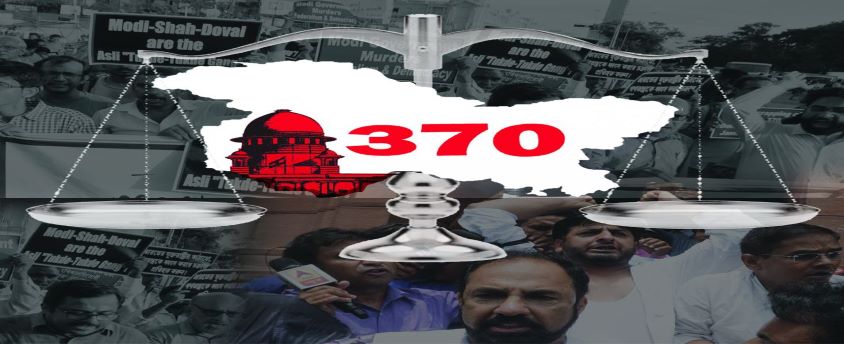
Why in News?
- The Supreme Court questioned petitioners on why they did not challenge the constitutionality of a specific provision in the J&K Reorganisation Act, 2019.
About the J&K Delimitation:
- The commission came into being by virtue of an Act of the Parliament, under the provisions of Part V of the Jammu and Kashmir Reorganisation Act, 2019. It is redrawing boundaries of seven additional seats for the 83-member Assembly.
- “In exercise of powers conferred by Section 3 of the Delimitation Act 2002 (33 of 2002), the Central government hereby makes the further amendment of two months in the notification of Government of India in the Ministry of Law and Justice (Legislative department no So-1015(e) dated 6th March 2020.
- In the notification in paragraph two for the words ‘two years’ the words ‘two years and two months’ shall be substituted,” read the gazette notification.
- Originally set up in March 2020, the commission was given a one-year extension as its work got delayed after the National Conference (NC) had refused to participate in the deliberations.
- The NC decided to take part in the commission proceedings only after Prime Minister Narendra Modi held an all-party meeting in June 2021.
What is Delimitation?
- Delimitation literally means the process of fixing limits or boundaries of territorial constituencies in a state that has a legislative body.
- Bifurcation of J&K into two UTs has led to redrawing of Assembly constituency boundaries. While, the UT of Ladakh will not have its own legislature, J&K will. This would be similar to Puducherry or Delhi.
- Such delimitation was also necessitated in 2014 when Andhra Pradesh and Telangana were bifurcated.
- According to the Delimitation Commission Act, 2002, the Delimitation Commission appointed by the Centre has to have three members: a serving or retired judge of the Supreme Court as the chairperson, and the Chief Election Commissioner or Election Commissioner nominated by the CEC and the State Election Commissioner as ex-officio members.
How Delimitation process is done?
- Under Article 82, the Parliament enacts a Delimitation Act after every Census.
- Under Article 170, States also get divided into territorial constituencies as per Delimitation Act after every Census.
- Once the Act is in force, the Union government sets up a Delimitation Commission.
- The new state assembly shall have 114 seats (currently 107), out of which only 90 will be open for elections, and the remaining 24 will be shadow seats reserved for the areas of the erstwhile state that have been occupied by Pakistan (PoJK).
- For the delimitation exercise, the population figures of 2011 census shall be taken as the basis.
- The J&K Representation of the People Act 1957 has now been invalidated and, instead, delimitation will be done as per the Representation of the People Act, 1950 (as amended from time to time) and provisions of Sections 59, 60 of Act 34 of 2019.
Who carry out the exercise?
- Delimitation is undertaken by a highly powerful commission. They are formally known as Delimitation Commission or Boundary Commission.
- These bodies are so powerful that its orders have the force of law and they cannot be challenged before any court.
- Such commissions have been constituted at least four times in India — in 1952 under the Delimitation Commission Act, 1952; in 1963 under Delimitation Commission Act, 1962; in 1973 under Delimitation Act, 1972 and last in 2002 under Delimitation Act, 2002.
- The commissions’ orders are enforced as per the date specified by the President of India. Copies of these orders are laid before the Lok Sabha or the concerned Legislative Assembly. No modifications are permitted.
Why delimitation is needed?
- To provide equal representation to equal segments of a population.
- Fair division of geographical areas so that one political party doesn’t have an advantage over others in an election.
- To follow the principle of “One Vote One Value.”
What are the problems with Delimitation?
- States that take little interest in population control could end up with a greater number of seats in Parliament. The southern states that promoted family planning faced the possibility of having their seats reduced.
- In 2008, Delimitation was done based on the 2001 census, but the total number of seats in the Assemblies and Parliament decided as per the 1971 Census that was not changed.
- The constitution has also capped the number of Lok Shaba & Rajya Sabha seats to a maximum of 550 & 250 respectively and increasing populations are being represented by a single representative.
Bilkis Bano Case
01, Dec 2022

Why in News?
- Chief Justice of India D. Y. Chandrachud recently agreed to look into the listing of two petitions filed by Bilkis Bano, who was gangraped in the Gujarat riots, against the Gujarat Government’s decision to prematurely release 11 convicts serving life sentence in her case.
What is Remission?
- The suspension is the stay or postponement of the execution of the sentence.
- In remission, the duration of the sentence is reduced, without changing the nature of the sentence.
- In remission, the nature of the sentence is remained untouched, while the duration is reduced i.e. the rest of the sentence need not be undergone.
- The effect of the remission is that the prisoner is given a certain date on which he shall be released and the eyes of the law he would be a free man.
- However, in case of breach of any of the condition of remission, it will be cancelled and the offender has to serve the entire term for which he was originally sentenced.
Constitutional provisions for Remission:
- ‘Prisons’ is a State subject under the State List of the Seventh Schedule of the Constitution.
- Indian laws provide pardoning power sourcing from statuary and constitutional authorities.
- By virtue of Article 72 and 161 of the Constitution of India, the President and Governor can grant pardon, to suspend, remit or commute a sentences passed by the courts.
What are the new norms?
- The prisoners who would qualify for premature release under the scheme are:
- Women and transgender convicts of ages 50 and above
- Male convicts of 60 and above who have completed 50% of their total sentence period without counting the period of general remission earned
- Physically challenged or disabled convicts with 70% disability and more who have completed 50% of their total sentence period
- Terminally ill convicts
- Convicted prisoners who have completed two-thirds (66%) of their total sentence
- Poor or indigent prisoners who have completed their sentence but are still in jail due to non-payment of fine imposed on them by waiving off the fine
- Persons who committed an offence at a young age (18-21) and with no other criminal involvement or case against them and who have completed 50% of their sentence period would also be eligible for the remission
Exceptions to these norms:
- Following persons would not be eligible for the grant of special remission:
- Persons convicted with death sentence or where death sentence has been commuted to life imprisonment or persons convicted for an offence for which punishment of death has been specified as one of the punishments
- Persons convicted with sentence of life imprisonment
- Convicts involved in terrorist activities or persons convicted under the Terrorist and Disruptive (Prevention) Act, 1985, Prevention of Terrorist Act, 2002, Unlawful Activities (Prevention) Act, 1967, Explosives Act, 1908, National Security Act, 1982, Official Secrets Act, 1923, and Anti-Hijacking Act, 2016
Transfers of High Court Judges
29, Nov 2022

Why in News?
- The frequent criticism that the Collegium system of judicial appointments is opaque, appears to be more valid in the case of transfers of judges from one High Court to another.
Background:
- A fresh round of transfers among the many that have occurred in recent years has brought the contentious topic to the forefront once more.
- Lawyers recently raised the matter of the transfer of a Gujarat HC judge (Justice Kariel) to the Chief Justice of India (CJI), citing rumours that the Gujarat HC Chief Justice was uninformed of the impending transfer.
The Indian Constitution on the transfer of judges:
- Article 222: It provides for the transfer of HC judges, including the Chief Justice. The President, after consultation with the CJI, may transfer a judge from one HC to any other HC and a compensatory allowance is provided to the transferred judge.
- Interpretation: The executive could transfer a judge, but only after consulting the CJI.
The Supreme Court’s view on the issue:
- The SC (in 1977) rejected the idea that HC judges can be transferred only with their consent, as the transfer powers can be exercised only in the public interest. Also, the President is under an obligation to consult the CJI.
- In S.P. Gupta vs. President of India (1981), also known as the Judges Transfer Case/the First Judges Case, the SC ruled that the consultation with the CJI did not mean ‘concurrence,’ thus giving primacy to the executive in the matter of appointments and transfers.
- However, this position was overruled in the ‘Second Judges Case’ (1993). The opinion of the CJI, formed after taking into account the views of senior-most judges, was to have primacy.
- Since then, appointments are being made by the Collegium.
The current procedure for transfers:
- The proposal for transferring a HC judge (including a Chief Justice) should be initiated by the CJI and the consent of the judge is not required. All transfers are to be made in the public interest.
- For transferring a judge other than the Chief Justice, the CJI should take the views of –
- The Chief Justice of the court concerned, as well as the Chief Justice of the court to which the transfer is taking place.
- One or more SC judges
- The views, expressed in writing, should be considered by a full Collegium of five – the CJI + 4 senior-most judges of the SC.
- The recommendation is sent to the Union Law Minister → the Prime Minister → the President.
Need for the transfer of judges:
- To exchange talent across the country.
- To prevent the emergence of local grouping in the judiciary. There have been proposals that one-third of the composition of every HC should have judges from other States.
What makes transfers controversial?
- The public feel that there is a punitive element behind the decision.
- As a matter of practice, the SC and the government do not disclose the reason for a transfer.
- The power of transfer has always been seen as a possible threat to judicial independence.
Attempts to reform the Appointment System:
- The attempt made to replace it by a ‘National Judicial Appointments Commission’ was struck down by the court in 2015 on the ground that it posed a threat to the independence of the judiciary.
Related Constitutional Provisions:
- Article 124(2) of the Indian Constitution provides that the Judges of the Supreme Court are appointed by the President after consultation with such a number of the Judges of the Supreme Court and of the High Courts in the States as the President may deem necessary for the purpose.
- Article 217 of the Indian Constitution states that the Judge of a High Court shall be appointed by the President consultation with the Chief Justice of India, the Governor of the State, and, in the case of appointment of a Judge other than the Chief Justice, the Chief Justice of the High Court.
Way Forward:
- Filling up of vacancies is a continuous and collaborative process involving the executive and the judiciary, and there cannot be a time frame for it. However, it is time to think of a permanent, independent body to institutionalize the process with adequate safeguards to preserve the judiciary’s independence guaranteeing judicial primacy but not judicial exclusivity.
- It should ensure independence, reflect diversity, demonstrate professional competence and integrity. Instead of selecting the number of judges required against a certain number of vacancies, the collegium must provide a panel of possible names to the President to appoint in order of preference and other valid criteria.
Uniform Civil Code
25, Nov 2022

Why in News?
- Union Home Minister Amit Shah recently said that the government is committed to bring the Uniform Civil Code (UCC) after all democratic debates and discussions are concluded.
What is a Uniform Civil Code?
- A Uniform Civil Code is one that would provide for one law for the entire country, applicable to all religious communities in their personal matters such as marriage, divorce, inheritance, adoption etc.
- Article 44, one of the directive principles of the Constitution lays down that the state shall endeavour to secure a Uniform Civil Code for the citizens throughout the territory of India.
- These, as defined in Article 37, are not justiciable (not enforceable by any court) but the principles laid down therein are fundamental in governance.
Role of State in this regard:
- Fundamental rights are enforceable in a court of law.
- While Article 44 uses the words “the state shall endeavour”, other Articles in the ‘Directive Principles’ chapter use words such as “in particular strive”; “shall, in particular, direct its policy”; “shall be the obligation of the state” etc.
- Article 43 mentions “state shall endeavour by suitable legislation” while the phrase “by suitable legislation” is absent in Article 44.
- All this implies that the duty of the state is greater in other directive principles than in Article 44.
What are more important — fundamental rights or directive principles?
- There is no doubt that fundamental rights are more important.
- The Supreme Court held in Minerva Mills (1980): Indian Constitution is founded on the bedrock of the balance between Parts III (Fundamental Rights) and IV (Directive Principles).
- To give absolute primacy to one over the other is to disturb the harmony of the Constitution.
- Article 31C inserted by the 42nd Amendment in 1976, however, lays down that if a law is made to implement any directive principle, it cannot be challenged on the ground of being violative of the FRs under Articles 14 and 19.
Does India not already have a uniform code in civil matters?
- Indian laws do follow a uniform code in most civil matters – Indian Contract Act, Civil Procedure Code, Sale of Goods Act, Transfer of Property Act, Partnership Act, Evidence Act etc.
- States, however, have made hundreds of amendments and therefore in certain matters, there is diversity even under these secular civil laws.
- Recently, several states refused to be governed by the uniform Motor Vehicles Act, 2019.
What about personal laws?
- If the framers of the Constitution had intended to have a Uniform Civil Code, they would have given exclusive jurisdiction to Parliament in respect of personal laws, by including this subject in the Union List.
- But “personal laws” are mentioned in the Concurrent List.
- Last year, the Law Commission concluded that a Uniform Civil Code is neither feasible nor desirable.
Is there one common personal law for any religious community governing all its members?
- All Hindus of the country are not governed by one law, nor are all Muslims or all Christians.
- Not only British legal traditions, even those of the Portuguese and the French remain operative in some parts.
- In Jammu and Kashmir until August 5, 2019, local Hindu law statutes differed from central enactments.
- The Shariat Act of 1937 was extended to J&K a few years ago but has now been repealed.
Various customary laws
- Muslims of Kashmir were governed by a customary law, which in many ways was at variance with Muslim Personal Law in the rest of the country and was, in fact, closer to Hindu law.
- Even on the registration of marriage among Muslims, laws differ from place to place. It was compulsory in J&K (1981 Act), and is optional in Bengal, Bihar (both under 1876 Act), Assam (1935 Act) and Odisha (1949 Act).
- In the Northeast, there are more than 200 tribes with their own varied customary laws.
- The Constitution itself protects local customs in Nagaland. Similar protections are enjoyed by Meghalaya and Mizoram.
- Even reformed Hindu law, in spite of codification, protects customary practices.
How does the idea of a Uniform Civil Code relate to the fundamental right to religion?
- Article 25 lays down an individual’s fundamental right to religion;
- Article 26(b) upholds the right of each religious denomination or any section thereof to “manage its own affairs in matters of religion”;
- Article 29 defines the right to conserve distinctive culture.
- An individual’s freedom of religion under Article 25 is subject to “public order, health, morality” and other provisions relating to FRs, but a group’s freedom under Article 26 has not been subjected to other fundamental rights.
- In the Constituent Assembly, there was division on the issue of putting UCC in the fundamental rights chapter. The matter was settled by a vote.
- By a 5:4 majority, the fundamental rights sub-committee headed by Sardar Patel held that the provision was outside the scope of FRs and therefore the UCC was made less important than freedom of religion.
Minority opinion in the Constituent Assembly
- Some members sought to immunize Muslim Personal Law from state regulation.
- Mohammed Ismail, who thrice tried unsuccessfully to get Muslim Personal Law exempted from Article 44, said a secular state should not interfere with the personal law of people.
- B Pocker Saheb said he had received representations against a common civil code from various organisations, including Hindu organisations.
- Hussain Imam questioned whether there could ever be uniformity of personal laws in a diverse country like India.
- B R Ambedkar said, “no government can use its provisions in a way that would force the Muslims to revolt”.
- Alladi Krishnaswami, who was in favour of a UCC, conceded that it would be unwise to enact UCC ignoring strong opposition from any community.
- Gender justice was never discussed in these debates.
How did the debate on a common code for Hindus play out?
- In June 1948, Rajendra Prasad, President of the Constituent Assembly, warned Nehru that to introduce “basic changes” in personal law was to impose “progressive ideas” of a “microscopic minority” on the Hindu community as a whole.
- Others opposed to reforms in Hindu law included Sardar Patel, Pattabhi Sitaramayya, M A Ayyangar, M M Malaviya and Kailash Nath Katju.
- When the debate on the Hindu Code Bill took place in December 1949, 23 of 28 speakers opposed it. On September 15, 1951, President Prasad threatened to use his powers of returning the Bill to Parliament or vetoing it. Ambedkar eventually had to resign.
- Nehru agreed to trifurcation of the Code into separate Acts and diluted several provisions.
Meghalaya Extends Mobile Internet Ban
25, Nov 2022

Why in News?
- The Meghalaya government has extended the suspension of mobile internet services in seven districts by another 48 hours following stray incidents of arson and attack on Assam-registered vehicles stranded in various parts of the State.
What is an Internet shutdown?
- Internet shutdowns are measures taken by a government or on behalf of a government, to intentionally disrupt access to and the use of information and communications systems online.
About Anuradha Bhasin case verdict:
- The Court said that all restrictive orders under Section 144 of CrPC and suspension of internet services in Jammu and Kashmir have to be reviewed.
- The verdict has laid down a framework of how the Internet can be suspended, and what rights and legal recourses a citizen has when it is suspended.
- Right to internet is a fundamental right (subject to reasonable restrictions) included in the freedom of expression under Article 19 of the Indian Constitution.
- Restrictions on fundamental rights could not be in exercise of arbitrary powers. These freedoms could only be restricted as a last resort if “relevant factors” have been considered and no other options are there.
- Any order passed to restrict or suspend judicial scrutiny will be subject to judicial scrutiny.
- Suspension of internet services indefinitely is also a violation of telecom rules.
SC on section 144:
- Sec 144 cannot be used to suppress the legitimate expression of opinion or grievance, or the exercise of democratic rights.
- When Sec 144 is imposed for reasons of apprehended danger, that danger must be an “emergency”. The imposition of Sec 144 must strike a balance between the rights of the individual and the concerns of the state.
- Powers under Sec 144 should be exercised in a reasonable and bona fide manner, and the order must state material facts in order to enable judicial review.
What procedure does the government follow to suspend Internet services?
- The Information Technology Act, 2000, the Criminal Procedure Code (CrPC), 1973 and the Telegraph Act, 1885 are the three laws that deal with suspension of Internet services.
- But before 2017, Internet suspension orders were issued under section 14 of the CrPC.
- In 2017, the central government notified the Temporary Suspension of Telecom Services (Public Emergency or Public Service) Rules under the Telegraph Act to govern suspension of Internet. These Rules derive their powers from Section 5(2) of the Indian Telegraph Act, which talks about interception of messages in the “interests of the sovereignty and integrity of India”.
- Despite the 2017 rules, the government has often used the broad powers under Section 144.
- India also tops the list of Internet shutdowns globally. According to Software Freedom Law Centre’s tracker, there have been 381 shutdowns since 2012, 106 of which were in 2019.
What did the judgment say on the rules to be followed?
- The court recognised that the 2017 Rules are the only procedure to be followed to suspend Internet services in the occurrence of a “public emergency” or for it to be “in the interest of public safety”.
- The verdict reiterated that the competent authority to issue an order under the Suspension Rules, in ordinary circumstances, would be the Secretary to the Ministry of Home Affairs.
- The Rules also say that in case the confirmation does not come from a competent authority, the orders shall cease to exist within a period of 24 hours.
- Clear reasons for such orders need to be given in writing, and need to be forwarded to a Review Committee by the next working day.
- The confirmation must not be a mere formality, but must indicate independent application of mind by the competent authority to the order passed by the authorised officer, who must also take into account changed circumstances if any, etc.
- According to the Temporary Suspension of Telecom Services [Public Emergency or Public Service] Rules, 2017 only the Home Secretary of the country and a secretary of a state’s home department can pass such an order.
- These also state that any such order should be taken up by a review committee within five days.
SC calls out centre over short tenures of CEC
24, Nov 2022

- According to the Supreme Court, the government does not give much importance to Election Commissioners’ independence, as evidenced by the reduction in tenures of Chief Election Commissioners (CECs) from over 8 years (in the 1950s) to just a few 100 days (after 2004).
Background:
- Presently, Election Commissioners are appointed by the President of India, on the aid and advice of the Council of Ministers
- The Election Commission (Conditions of Service of Election Commissioners and Transaction of Business) Act, 1991, prescribes that the term of a CEC and Election Commissioner is 6 years or till the age of 65 years, whichever is earlier.
- Article 324 of the Indian Constitution, dealing with the appointment of Election Commissioners, called for the enactment of legislation to oversee such appointments, but the government had yet to do so.
- The SC was hearing petitions seeking reforms in the system of appointing Election Commissioners.
About the Election Commission of India (ECI):
- It is a permanent constitutional body established in 1950 to conduct and regulate elections in the country.
- Part XV (Article 324-329) of the Indian Constitution: It deals with elections and establishes a commission for these matters.
- Article 324 of the Constitution provides that the power of superintendence, direction and control of elections to Parliament, state legislatures, the office of the President of India, and the office of Vice-President of India shall be vested in the election commission.
- Thus, the Election Commission is an all-India body in the sense that it is common to both the Central government and the state governments.
- Being a constitutional authority, Election Commission is amongst the few institutions which function with both autonomy and freedom, along with the country’s higher judiciary, UPSC and CAG.
- It is a multi-member body (1 CEC + 2 ECs) and the tenure of election commissioners is not prescribed by the Indian Constitution.
- The CEC of India can be removed from their office in a manner similar to the removal of a judge of the SC of India, while other ECs can be removed by the President of India on the recommendation of the CEC.
- A CEC has never been impeached in India.
What has the SC said about the Election Commissioners?
- The Constitution of India has vested vast powers on the shoulders of the CEC and the 2 Election Commissioners.
- Apart from competence, the character is crucial, so that those appointed as Election Commissioners will not allow themselves to be bulldozed.
- In the absence of a law to oversee such appointments, the silence of the Indian Constitution is being exploited by all.
- The government assures that the person nominated does not serve the full six years by picking someone close to 65, thus undermining independence.
What was the government’s reply?
- There is no vacuum in the Constitution on the issue.
- If the Constitution takes a position despite multiple ideas put forward by the original Constituent Assembly, that position cannot be contested.
- The separation of powers cannot be challenged, as it is the basic feature of the Constitution.
- This matter is for Parliament to debate and not the court.
What was the suggestion given by the SC?
- An appointment committee including the Chief Justice of India to appoint the Election Commissioners to ensure neutrality.
Freedom of Speech of People holding Public Offices
21, Nov 2022

Why in News?
- Recently, the Supreme Court stated that people holding public office should exercise self-restriction and not blabber things which are disparaging or insulting to other countrymen.
What are the Highlights of Judgement?
- A five-judge Constitution bench reserved its verdict on whether restrictions can be imposed on a public functionary’s right to freedom of speech and expression.
- The court observed there is always a civil remedy available to citizens on account of a public functionary making a speech that affects someone.
- The court noted that irrespective of what Article 19(2) may say, there is a constitutional culture in the country where there is an inherent limitation or a restriction on what people holding responsible positions say.
- Article 19 (2) relates to the powers of the State to make laws imposing reasonable restrictions on the exercise of the right to freedom of speech and expression in the interest of sovereignty and integrity of the country, public order, decency, morality etc.
What was the Earlier Judgement?
- In 2017, a three-judge bench had referred to the Constitution bench various issues for adjudication, including whether a public functionary or a minister can claim freedom of speech while expressing views on sensitive matters.
- The need for an authoritative pronouncement on the issue arose as there were arguments that a minister cannot take a personal view and his statements have to be in sync with government policy.
- The court earlier said that it will consider whether the Fundamental Right of Speech and Expression would be governed under reasonable restriction of decency or morality or other preferred fundamental rights would also have an impact on it.
What is the Code of Conduct?
- A code of conduct is a set of rules, standards of behaviour or practices for an individual or organization that guide the decisions, procedures and systems of an organization in a way that contributes to the welfare of its stakeholders.
- For example, the Election Commission of India’s Model Code of Conduct is a set of guidelines issued by the Election Commission of India for conduct of political parties and candidates during elections mainly with respect to speeches, polling day, polling booths, portfolios, election manifestos, processions and general conduct.
- Similarly, a set of codes of rules are prescribed for civil servants with regard to their conduct in performing their duties.
What are the Seven Principles of the Code of Conduct for Civil Servants?
- Selflessness: Holders of public office should take decisions solely in terms of the public interest. They should not do so in order to gain financial or other material benefits for themselves, their family, or their friends.
- Integrity: Holders of public office should not place themselves under any financial or other obligation to outside individuals or organisations that might influence them in the performance of their official duties.
- Objectivity: In carrying out public business, including making public appointments, awarding contracts, or recommending individuals for rewards and benefits, holders of public office should make choices on merit.
- Accountability: Holders of public office are accountable for their decisions and actions to the public and must submit themselves to whatever scrutiny is appropriate to their office.
- Openness: Holders of public office should be as open as possible about all the decisions and actions that they take. They should give reasons for their decisions and restrict information only when the wider public interest clearly demands.
- Honesty: Holders of public office have a duty to declare any private interests relating to their public duties and to take steps to resolve any conflicts arising in a way that protects the public interest.
- Leadership: Holders of public office should promote and support these principles by leadership and example.
Way Forward:
- Some of the conclusions have general application across the entire public service which can be added on over and above the seven principles of public service.
- Codes of Conduct: All public bodies should draw up Codes of Conduct incorporating these principles.
- Independent Scrutiny: Internal systems for maintaining standards should be supported by independent scrutiny.
- Education: More needs to be done to promote and reinforce standards of conduct in public bodies, in particular through guidance and training, including induction training.
National Judicial Appointments Commission (NJAC)
18, Nov 2022

Why in News?
- Chief Justice of India D.Y. Chandrachud has recently agreed to list in due course a writ petition to reconsider the collegium system of judicial appointments to the Supreme Court and the High Courts.
Background:
- On 16 October 2015, in a 4-1 majority verdict, the Supreme Court held that both the Constitution (Ninety-ninth Amendment) Act, 2014, and the National Judicial Appointments Commission (NJAC) Act, 2014, were unconstitutional as it would undermine the independence of the judiciary.
- The majority said the two laws affect the independence of the judiciary, and judicial appointments, among other things, should be protected from executive control.
About NJAC and the Act:
- NJAC is a body responsible for the appointment and transfer of judges to the higher judiciary in India. NJAC Bill sought to replace the collegium system of appointing the judges of Supreme Court and High Courts with judicial appointments commission wherein the executive will have a say in appointing the judges.
- A new article, Article 124A, (which provides for the composition of the NJAC) was to be inserted into the Constitution.
- The Bill provided for the procedure to be followed by the NJAC for recommending persons for appointment as Chief Justice of India and other Judges of the Supreme Court (SC), and Chief Justice and other Judges of High Courts (HC).
- According to the bill the commission will consist of the following members:
- Chief Justice of India (Chairperson, ex officio)
- Two other senior judges of the Supreme Court next to the Chief Justice of India – ex officio
- The Union Minister of Law and Justice, ex-officio
- Two eminent persons (to be nominated by a committee consisting of the Chief Justice of India, Prime Minister of India and the Leader of opposition in the Lok Sabha or where there is no such Leader of Opposition, then, the Leader of single largest Opposition Party in Lok Sabha), provided that of the two eminent persons, one person would be from the Scheduled Castes or Scheduled Tribes or OBC or minority communities or a woman.
- The eminent persons shall be nominated for a period of three years and shall not be eligible for re-nomination.
How proponents of NJAC defend it?
- According to them the enactment of the 99th Amendment was intended at redressing the imbalance created by the verdict of court in second judges case.
- For them, NJAC would have been a more broad-minded forum, providing a genuine chance to participate and influence the selection of our higher judiciary — not merely to the Supreme Court and the executive, but also to laypersons (eminent persons) outside the constitutional framework.
Why the court struck down NJAC act?
- The court has held that the appointment of judges, coupled with primacy of judiciary and the CJI, was part of the basic structure of the Constitution and that the parliament, through NJAC act, violated this basic structure.
Ninth Schedule
16, Nov 2022
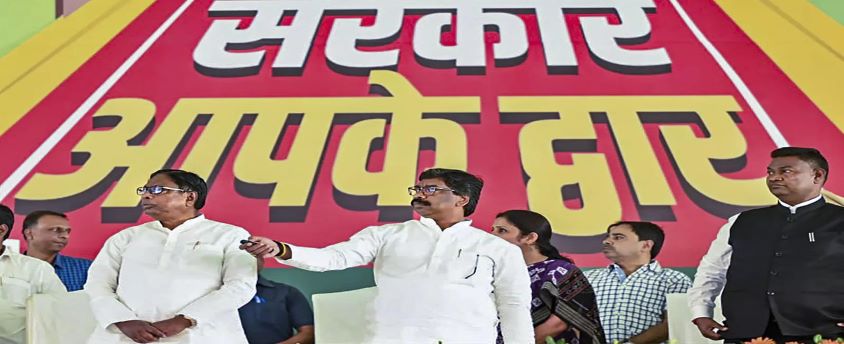
Why in News?
- The Jharkhand Assembly has cleared two Bills, but these changes will come into force only after the Centre carries out amendments to include these in the Ninth Schedule of the Constitution.
What are these Bills?
- Jharkhand Reservation of Vacancies in Posts and Services (Amendment) Bill, 2022:
- It raises reservations to 77%.
- Within the reserved category, the Scheduled Castes will get a quota of 12 %, up from 10%; 27% for OBCs, up from 14%; 28% for Scheduled Tribes, a 2 % increase; and 10% for Economically Weaker Sections (EWS).
Jharkhand Local Persons Bill, 2022:
- It aims at granting local residents “certain rights, benefits, and preferential treatment” over their land; in their stake in local development of rivers, lakes, fisheries; in local traditional and cultural and commercial enterprises; in rights over agricultural indebtedness or availing agricultural loans; in maintenance and protection of land records; for their social security; in employment in private and public sector; and, for trade and commerce in the state.
Why is there need to Include in Ninth Schedule?
- The 77 % reservation breaches the 50 % ceiling set by the Supreme Court in the 1992 Indra Sawhney v Union of India verdict.
- However, placing a legislation in the Ninth Schedule shields it from judicial scrutiny.
- Previously, the Tamil Nadu Backward Classes, Scheduled Castes and Scheduled Tribes (Reservation of Seats in Educational Institutions and of Appointments or Posts in the Services under the State) Act, 1993, reserved 69 % of the seats in colleges and jobs in the state government.
What is the Ninth Schedule?
- The Schedule contains a list of central and state laws which cannot be challenged in courts and was added by the Constitution (First Amendment) Act, 1951.
- The first Amendment added 13 laws to the Schedule. Subsequent amendments in various years have taken the number of protected laws to 284 currently.
- It was created by the new Article 31B, which along with Article 31A was brought in by the government to protect laws related to agrarian reform and for abolishing the Zamindari system.
- While Article 31A extends protection to ‘classes’ of laws, Article 31B shields specific laws or enactments.
- While most of the laws protected under the Schedule concern agriculture/land issues, the list includes other subjects.
- Article 31B also has a retrospective operation which means that if laws are inserted in the Ninth Schedule after they are declared unconstitutional, they are considered to have been in the Schedule since their commencement, and thus valid.
- Although Article 31B excludes judicial review, the apex court has said in the past that even laws under the Ninth Schedule would be open to scrutiny if they violated Fundamental Rights or the basic structure of the Constitution.
Are Laws in the Ninth Schedule completely Exempt from Judicial Scrutiny?
- Keshavananda Bharati v. State of Kerala (1973): The court upheld the judgement in Golaknath and introduced a new concept of “Basic structure of the Indian Constitution” and stated that, “all provisions of the constitution can be amended but those amendments which will abrogate or take away the essence or basic structure of constitution which included Fundamental Rights are fit to be struck down by the court”.
- Waman Rao v. Union of India (1981): In this important judgement, the SC ruled that, “those amendments which were made in the constitution before 24th April 1973 (date on which judgement in Keshavananda Bharati was delivered) are valid and constitutional but those which were made after the stated date are open to being challenged on the ground of constitutionality.
- I R Coelho v. State of Tamil Nadu (2007): It was held that every law must be tested under Article 14, 19 and 21 if it came into force after 24th April 1973.
- In addition, the court upheld its previous rulings and declared that any act can be challenged and is open to scrutiny by the judiciary if it is not in consonance with the basic structure of the constitution.
- In addition, it was held that if the constitutional validity of any law under the ninth schedule has been upheld before, in future it cannot be challenged again.
Way Forward:
- Although reservation is necessary, it should also be open to judicial scrutiny in order to ensure any abrupt or irrational policy initiative by the Executive or the Legislature.
- Any loophole or shortcomings in reservation policy must be addressed by involving various stakeholders. The need of the hour is not to go to extremes of either scrapping or shielding reservation policy, rather a rational framework on this contentious policy must be developed.
Collegium system of appointments of Judges to the Higher Judiciary
11, Nov 2022
Why in News?
- Recently, the Union Minister of Law and Justice citicised the collegium system under which appointments of judges to the High Courts (HC) and the Supreme Court (SC) are made, as opaque.
What is Collegium System?
- It is the system of appointment and transfer of judges that has evolved through judgments of the SC, and not by an Act of Parliament or by a provision of the Constitution.
- The SC collegium is headed by the CJI and comprises four other senior most judges of the court.
- A HC collegium is led by its Chief Justice and four other senior most judges of that court.
- Names recommended for appointment by a HC collegium reaches the government only after approval by the CJI and the SC collegium.
- Judges of the higher judiciary are appointed only through the collegium system and the government has a role only after names have been decided by the collegium.
- The government’s role is limited to getting an inquiry conducted by the Intelligence Bureau (IB) if a lawyer is to be elevated as a judge in a High Court or the Supreme Court.
- Intelligence Bureau (IB): It is a reputed and established intelligence agency. It is authoritatively controlled by the Ministry of Home Affairs.
- It can also raise objections and seek clarifications regarding the collegium’s choices, but if the collegium reiterates the same names, the government is bound, under Constitution Bench judgments, to appoint them as judges.
Evolution of the Collegium System:
- First Judges Case (1981):
- It declared that the “primacy” of the Chief Justice of India (CJI)s recommendation on judicial appointments and transfers can be refused for “cogent reasons.”
- The ruling gave the Executive primacy over the Judiciary in judicial appointments for the next 12 years.
Second Judges Case (1993):
- SC introduced the Collegium system, holding that “consultation” really meant “concurrence”.
- It added that it was not the CJI’s individual opinion, but an institutional opinion formed in consultation with the two senior-most judges in the SC.
- Third Judges Case (1998):
- SC on President’s reference expanded the Collegium to a five-member body, comprising the CJI and four of his senior-most colleagues.
Procedure for Various Judicial Appointments:
- For CJI:
- The President of India appoints the CJI and the other SC judges.
- As far as the CJI is concerned, the outgoing CJI recommends his successor.
- In practice, it has been strictly by seniority ever since the supersession controversy of the 1970s.
- For SC Judges:
- For other judges of the SC, the proposal is initiated by the CJI.
- The CJI consults the rest of the Collegium members, as well as the senior-most judge of the court hailing from the High Court to which the recommended person belongs.
- The consultees must record their opinions in writing and it should form part of the file.
- The Collegium sends the recommendation to the Law Minister, who forwards it to the Prime Minister to advise the President.
- For Chief Justice of High Courts:
- The Chief Justice of High Court is appointed as per the policy of having Chief Justices from outside the respective States.
- The Collegium takes the call on the elevation.
- High Court judges are recommended by a Collegium comprising the CJI and two senior-most judges.
- The proposal, however, is initiated by the outgoing Chief Justice of the High Court concerned in consultation with two senior-most colleagues.
- The recommendation is sent to the Chief Minister, who advises the Governor to send the proposal to the Union Law Minister.
Criticism of the Collegium System:
- Opaqueness and a lack of transparency.
- Scope for nepotism.
- Embroilment in public controversies.
- Overlooks several talented junior judges and advocates.
Attempts to reform the Appointment System:
- The attempt made to replace it by a ‘National Judicial Appointments Commission’ was struck down by the court in 2015 on the ground that it posed a threat to the independence of the judiciary.
Related Constitutional Provisions:
- Article 124(2) of the Indian Constitution provides that the Judges of the Supreme Court are appointed by the President after consultation with such a number of the Judges of the Supreme Court and of the High Courts in the States as the President may deem necessary for the purpose.
- Article 217 of the Indian Constitution states that the Judge of a High Court shall be appointed by the President consultation with the Chief Justice of India, the Governor of the State, and, in the case of appointment of a Judge other than the Chief Justice, the Chief Justice of the High Court.
Way Forward:
- Filling up of vacancies is a continuous and collaborative process involving the executive and the judiciary, and there cannot be a time frame for it. However, it is time to think of a permanent, independent body to institutionalize the process with adequate safeguards to preserve the judiciary’s independence guaranteeing judicial primacy but not judicial exclusivity.
- It should ensure independence, reflect diversity, demonstrate professional competence and integrity.
- Instead of selecting the number of judges required against a certain number of vacancies, the collegium must provide a panel of possible names to the President to appoint in order of preference and other valid criteria.
Meghalaya withdraws General Consent from CBI
09, Mar 2022

Why in News?
- Meghalaya has withdrawn consent to the CBI to investigate cases in the state, becoming the ninth state to have taken this step.
About the News:
- Eight other states which had withdrawn consent to the CBI: Maharashtra, Punjab, Rajasthan, West Bengal, Jharkhand, Chhattisgarh, Kerala, and Mizoram.
- In November last year, the Supreme Court had expressed concern over a submission by the CBI that since 2018, around 150 requests for sanction to investigate had been pending with the eight state governments who had withdrawn general consent until then.
- The CBI is governed by the Delhi Special Police Establishment Act that makes consent of a state government mandatory for conducting investigation in that state.
Types of Consent Given by State Government:
- There are two types of consent for a probe by the CBI. These are: general and specific.
- When a state gives a general consent (Section 6 of the Delhi Special Police Establishment Act) to the CBI for probing a case, the agency is not required to seek fresh permission every time it enters that state in connection with investigation or for every case.
- When a general consent is withdrawn, CBI needs to seek case-wise consent for investigation from the concerned state government. If specific consent is not granted, the CBI officials will not have the power of police personnel when they enter that state.
- This hurdle impedes seamless investigation by the CBI. A general consent is given to facilitate that seamless investigation in a case of corruption or violence.
Issue of Withdrawal of General Consent by States:
- Recently it has been seen that various states like Andhra Pradesh and West Bengal Governments have withdrawn their general consent as a result of Tussle between Centre and States.
Impact of withdrawal:
- It means the CBI will not be able to register any fresh case involving a central government official or a private person stationed in the states who withdrew their general consent, without getting case-specific consent.
- In simple terms withdrawal of general consent simply means that CBI officers will lose all powers of a police officer as soon as they enter the state unless the state government has allowed them.
- It will have no impact on investigation of cases already registered with CBI as old cases were registered when General Consent Existed.
What was the Calcutta High Court verdict?
- Calcutta High Court recently ruled in a case of illegal coal mining and cattle smuggling being investigated by the CBI, that the central agency cannot be stopped from probing an employee of the Central Government in another state. The order has been challenged in the Supreme Court.
- In Vinay Mishra vs the CBI, Calcutta HC ruled in July this year that corruption cases must be treated equally across the country, and a central government employee could not be “distinguished” just because his office was located in a state that had withdrawn general consent.
- The HC also said that withdrawal of consent would apply in cases where only employees of the State Government were Involved.
Issues with CBI Autonomy:
- After the 2018 amendments to the Prevention of Corruption Act, 1988, the Centre has come to exercise power over the CBI not just administratively, but also legally.
- In 2018, the government pushed through Parliament amendments to Section 17A of the Act making it mandatory for the CBI to seek the Centre’s permission before registering a case of corruption against any Government servant.
About Delhi Special Police Establishment Act:
- The Central Bureau of Investigation traces its origin to the Special Police Establishment (SPE) which was set up in 1941 by the Government of India.
- The functions of the SPE then were to investigate cases of bribery and corruption in transactions with the War & Supply Deptt. Of India during World War II.
- Even after the end of the War, the need for a Central Government agency to investigate cases of bribery and corruption by Central Government employees was felt.
- The Delhi Special Police Establishment Act was therefore brought into force in 1946. The CBI’s power to investigate cases is derived from this Act.
Elections to 13 Rajya Sabha seats on March 31
09, Mar 2022

Why in News?
- The Election Commission recently announced polls to fill 13 Rajya Sabha seats across six states falling vacant in April, including those of Congress veterans AK Antony and Anand Sharma, that are scheduled to be held on March 31.
About the Rajya Sabha Polls:
- A third of MPs in the Rajya Sabha (which is a permanent House and is not subject to dissolution), from each State, retire once in two years and polls are held to fill up the vacancies.
- Only elected members of the State Legislative Assemblies can vote in a Rajya Sabha election.
- The legislators send a batch of new members to the Upper House every two years for a six-year term.
- In addition, vacancies that arise due to resignation, death or disqualification are filled up through by-polls after which those elected serve out the remainder of their Predecessors’ term.
Composition of Rajya Sabha
- A bloc of MPs belonging to one or more parties can elect a member of their choice if they have the requisite numbers.
- This is to avoid the principle of majority, which would mean that only candidates put up by ruling parties in the respective States will be elected.
- The Delhi and Puducherry Assemblies elect members to the Rajya Sabha to represent the two UTs.
What is the Election Process?
- Polling for a Rajya Sabha election will be held only if the number of candidates exceeds the Number of Vacancies.
- Since the strength of each party in the Assembly is known, it is not difficult to estimate the number of seats a party would win in the Rajya Sabha poll.
- In many states, parties avoid a contest by fielding candidates only in respect to their strength. Where an extra candidate enters the fray, voting becomes necessary.
- Candidates fielded by political parties have to be proposed by at least 10 members of the Assembly or 10% of the party’s strength in the House, whichever is less.
- For independents, there should be 10 proposers, all of whom should be members of the Assembly.
Voting Procedure:
- Voting is by single transferable vote, as the election is held on the principle of proportional representation.
- A single transferable vote means electors can vote for any number of candidates in order of their preference.
- A candidate requires a specified number of first preference votes to win. Each first choice vote has a value of 100 in the first round.
- To qualify, a candidate needs one point more than the quotient obtained by dividing the total value of the number of seats for which elections are taking place plus one.
- Example: If there are four seats and 180 MLAs voting, the qualifying number will be 180/5= 36 votes or value of 3,600.
Why do not the Rajya Sabha Polls have a Secret Ballot?
- The Rajya Sabha polls have a system of the open ballot, but it is a limited form of openness.
- As a measure to check rampant cross-voting, which was taken to mean that the vote had been purchased by corrupt means.
- There is a system of each party MLA showing his or her marked ballots to the party’s authorised agent (called Whip), before they are put into the ballot box.
- Showing a marked ballot to anyone other than one’s own party’s authorised agent will render the vote invalid.
- Not showing the ballot to the authorised agent will also mean that the vote cannot be counted.
- And independent candidates are barred from showing their ballots to anyone.
Is there any NOTA option in voting?
- The ECI issued two circulars, on January 24, 2014, and November 12, 2015, giving Rajya Sabha members the option to press the NOTA button in the Upper House polls.
- However, in 2018, the Supreme Court struck down the provision, holding that the ‘none of the above’ option is only for General Elections. It cannot be applied to indirect elections based on Proportional Representation.
Does cross-voting Attract Disqualification?
- The Supreme Court, while declining to interfere with the open ballot system, ruled that not voting for the party candidate will not attract disqualification under the anti-defection law.
- As voters, MLAs retain their freedom to vote for a candidate of their choice.
- However, the Court observed that since the party would know who voted against its own candidate, it is free to take disciplinary action against the legislator concerned.
Can a legislator vote without taking oath as a Member of the Assembly?
- While taking oath as a member is for anyone to function as a legislator, the Supreme Court has ruled that a member can vote in a Rajya Sabha election even before taking oath as a legislator.
- It ruled that voting at the Rajya Sabha polls, being a non-legislative activity, can be performed without taking the oath.
- It also said that a person becomes a member as soon as the list of elected members is notified by the ECI.
- Further, a member can also propose a Candidate before taking the oath.
Chandigarh’s Proposal to Amend Article 80 of the Constitution
09, Mar 2022

Why in News?
- The Chandigarh Municipal Corporation has approved a proposal to amend Article 80 of the Constitution.
Background of the Issue:
- This amendment says, its councillors could send a representative to the Rajya Sabha.
- A Private Member’s Bill in this regard has also been introduced.
- Article 80 of the Constitution of India deals with the composition of the council of states also called the Upper House and Rajya Sabha (Upper House).
- Chandigarh is a Union Territory without any legislative assembly. Chandigarh has a seat of Member of Parliament (MP) in the lower house (Lok Sabha) or House of the People.
- Chandigarh residents elect an MP every five years through direct voting.
What is the Demand of the Proposed Bill?
- The bill (Private Member Bill) sought the adding of a provision “provided that the representative of the Union Territory of Chandigarh in the council of states shall be elected by an electoral college.
- The electoral college should consist of elected members of the Municipal Corporation of Chandigarh constituted under the Punjab Municipal Corporation (Extension to Chandigarh) Act, 1994 in Article 80 of the Constitution.
- An amendment has also been sought to the Fourth Schedule of the Constitution with ‘Entry 32, Chandigarh.
- The fourth Schedule contains provisions as to the allocation of seats in the Council of States.
What’s the Legal Issue now? Why can’t municipal councillors elect?
- The elected Municipal Corporation Councillors do not form the electoral college for selecting a member for Upper house (Rajya Sabha) because it is beyond the powers of the Municipal Corporation (As defined by the Constitution).
- If the functions of the civic body are to be extended beyond the listed scope of functions it would not be feasible and would go against the constitutional mandate of any such Municipal Corporation.
How Rajya Sabha Members are elected?
- Rajya Sabha members are elected indirectly by the people, that is, by the MLAs.
- Members of a state’s Legislative Assembly vote in the Rajya Sabha elections in proportional representation with the single transferable vote (STV) system. Each MLA’s vote is counted only once.
- To win a Rajya Sabha seat, a candidate should get a required number of votes. That number is found out using the below formula. Required vote = Total number of votes / (Number of Rajya Sabha seats + 1 ) + 1.
SC lifts stay on Haryana Quota for Private Jobs
18, Feb 2022
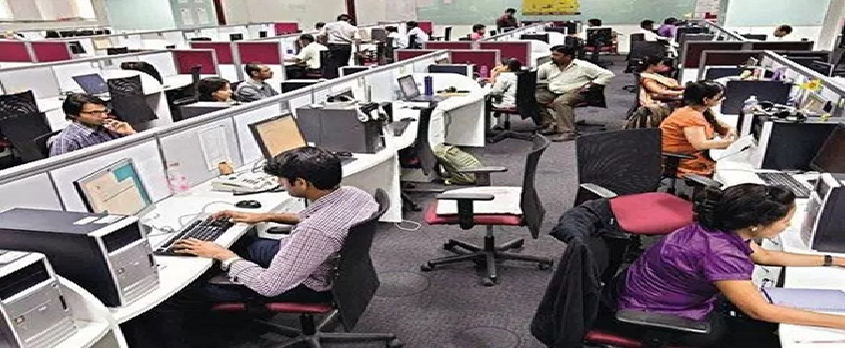
Why in News?
- The Supreme Court recently set aside a Punjab and Haryana High Court order staying a controversial State law which provides 75% reservation for local youths in private sector jobs earning less than ₹30,000 a Month.
About the News:
- The Bench observed that every law passed by legislature was presumed to be legal. An order of stay of their implementation by a court of law should be reasoned. The High Court had not given sufficient reasons for stopping the Haryana law.
- The Supreme Court, without going into the merits of the issue, requested the High Court to decide the writ petition filed by industrialists before it expeditiously and not later than a period of four weeks from today.
- The parties were directed to not seek adjournments in the High Court.
Highlights of the Law:
- The law provides for 75% reservation in private sector jobs to those having a Resident Certificate (Domicile).
- The law will be Applicable for a period of 10 years.
- Jobs with a gross monthly salary of not more than ₹30,000 will be up for hiring from among Local Candidates.
Rationale behind the Law:
- To create a harmonious environment for industry as well as the youth along with creating the right balance between the progress of Industries and the Economy.
Concerns Over the bill:
- It could lead to Multinational Firms moving out of the state.
- Reservation affects productivity and Industry Competitiveness.
What are the Legal Issues in Such laws?
- The question of domicile reservation in jobs: While domicile quotas in education are fairly common, courts have been reluctant in Expanding this to public employment. It raises questions relating to the fundamental right to Equality of Citizens.
- The issue of forcing the private sector to comply with reservations in employment. For mandating reservation in public employment, the state draws its power from Article 16(4) of the Constitution. But, the Constitution has no manifest provision for private employment from which the state draws the power to make laws mandating reservation.
- It may not be able to withstand judicial scrutiny on the touchstone of Article 19(1)(g).
SC Starts Examining Vanniyar Quota Law
16, Feb 2022
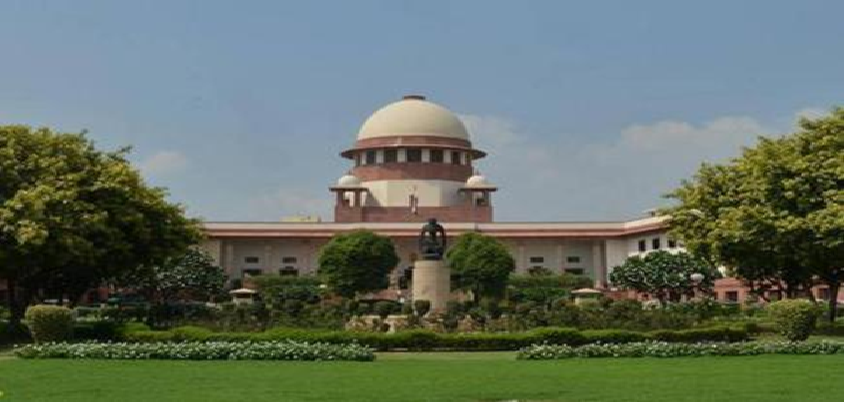
Why in News?
- The Supreme Court recently began examining whether petitions challenging a Madras High Court decision declaring ultra vires a State quota law, which provided 10.5% special reservation to Vanniyars, a most backward community, ought to be referred to a larger Bench.
About the Issue:
- The Tamil Nadu Assembly had in February 2021, passed the then ruling AIADMK-piloted bill providing internal reservation of 10.5 per cent for Vanniyars, with the incumbent DMK government issuing an order in July, 2021 for its implementation.
- It had split the aggregate 20 per cent reservation for MBCs and Denotified Communities into three separate categories by regrouping castes and provided ten per cent plus sub-quota for Vanniyars, formally known as Vanniakula Kshatriyas.
- In fact petitions had been filed seeking internal reservation. The process of consultation for sub classification within 20 per cent earmarked for MBCs began in 2012. Tamil Nadu BC commission had recommended 10.5 per cent reservation for vanniyakula Kshastriya community, after door to door enumeration.
What was Madras HC’s Observation?
- The judges said the state government cannot come out with such a legislation. This had been explained in the Constitution.
- The petitioners contended that if such a reservation was implemented, then the Vanniyar community would enjoy reservation in jobs and admission while 25 other castes under MBC and 68 others would have to share the Remaining Quota.
What was the Apex Court’s Observation?
- A three-judge Bench of SC ordered that no fresh appointments to State Government Services or Admissions to Educational Institutions should be made till February 15, the next date of hearing in the case.
- However, admissions and Appointments already made, pursuant to a Madras High Court order of August 25, would not be disturbed.
- The Bench said the case was important and had implications on the future of a large number of students, State Government employees, etc. The court said it had to be heard expeditiously.
About Vanniyar Movement:
- Vanniyar are one of the largest and most consolidated backward communities in the state.
- They had raised massive protests in the mid-1980s demanding 20% reservation in the state, and 2% in central services.
- Their movement was backed by the Justice Party as well as the Self-Respect Movement.
- The agitation began in 1986 with activists sending hundreds of letters and telegrams to then Chief Minister M G Ramachandran seeking an audience.
- As there was no Response from MGR and the then Rajiv Gandhi government, agitators started Demonstrations in Community strongholds, then went on to blockading rail and Road Traffic.
Order on EWS Criteria will Apply for ‘22-23 NEET Admissions, says SC
15, Feb 2022
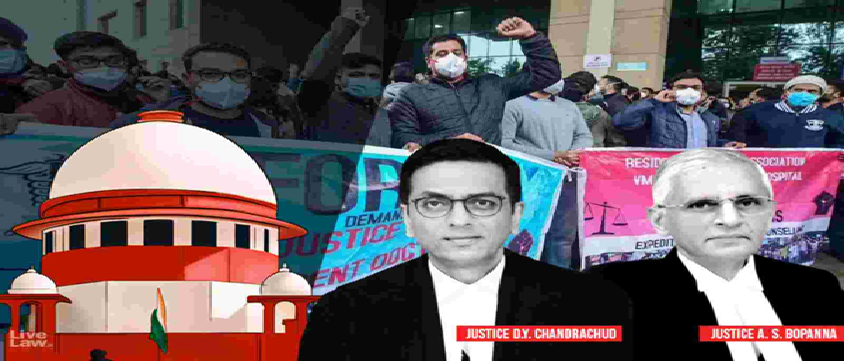
Why in News?
- The Supreme Court recently said whatever it decides on the criteria to identify Economically Weaker Section (EWS) for granting benefits of reservation will apply in NEET-PG 2022-23 admissions as well.
About the News:
- The court was hearing a petition filed by Varun Dileepbhai Bhatt and others on the applicability of the EWS criteria in NEET PG 2022-2023 exam. Advocate Charu Mathur, appearing for the students, said they had sought an extension of the deadline for edit option in the online forms with respect to the EWS norms.
- Some MBBS doctors, who have also filed a plea, sought direction to the Centre to specify in an information bulletin that the EWS criteria for academic session 2022-23 would be decided in terms of the pleas challenging the amended reservation policy (27% OBC and 10% EWS) in the All India Quota for the NEET.
- They too had urged for an extension of the date for the edit window from February 11, 2022 to enable the candidates to choose EWS category after the final decision in the pending matter.
- On January 20, the top court had said merit cannot be reduced to narrow definitions of performance in an open competitive examination which only provides formal equality of opportunity. It had upheld the 27% reservation for OBCs in All India Quota (AIQ) seats in the NEET for UG and PG medical courses.
What is NEET?
- The National Eligibility-cum-Entrance Test (NEET) is the entrance examination for entry to all undergraduate (NEET-UG) and postgraduate (NEET-PG) medical and dental courses in the country.
- Until 2016, the All India Pre-Medical Test (AIPMT) was the national-level entrance examination for medical colleges.
- State governments used to hold separate entrance tests for seats that were not contested at an all-India level.
- NEET was held for the first time in 2003, but discontinued the following year.
- On April 13, 2016, the Supreme Court upheld the newly inserted section 10-D of the Indian Medical Council Act.
- This provided for a uniform entrance examination to all medical educational institutions at the undergraduate level and postgraduate level in Hindi, English and various other languages.
- Since then, NEET has been the uniform entrance test for medical courses across the country.
Who are “Economically Weaker Sections”?
- For the purposes of article 15 and article 16, “economically weaker sections” shall be such as may be notified by the State from time to time on the basis of family income and other indicators of economic disadvantage.’
- Central Government of India has specified certain criteria for identifying the EWS. This will be a class distinct from the already specified classes of SCs, STs and socially and educationally backward classes (OBCs).
- The EWS quota applies to household with
- Annual household income below Rs 8 lakh.
- Agriculture land below 5 acres.
- Residential house below 1000 sq ft.
- Residential plot below 100 yards in notified municipality.
- Residential plot below 200 yards in non-notified municipality area.
What are the Implications?
- The 10% reservation will be in addition to the existing cap of 50% reservation for the Scheduled Castes, Scheduled Tribes and the Other Backward Classes, taking total reservation to 60%.
- The quota targets the poor among the upper castes. This will be over and above 50% mandated by Constitution and hence the need for Constitution Amendment Bill.
SC Verdict in Indira Sawhney case:
- The proposed law would face roadblocks if challenged in the Supreme Court.
- A nine-judge Constitution Bench of the Supreme Court in the Indira Sawhney case of 1992 specifically answered the question “whether Backward classes can be identified only and exclusively with reference to the Economic Criterion.”
- The constitution bench had categorically ruled that a backward class cannot be determined only and exclusively with Reference to Economic Criterion. The bench had held that economic criterion may be a Consideration or basis along with, and in addition to, social backwardness, but it can never be the sole Criterion.
- The bench in its judgement declared 50% quota as the rule unless extraordinary situations “inherent in the great diversity of this Country and the people” happen. Even then, the court stated that extreme Caution is to be Exercised and a special case should be made out.
Bhandari sworn in as Chief Justice of Madras HC
15, Feb 2022
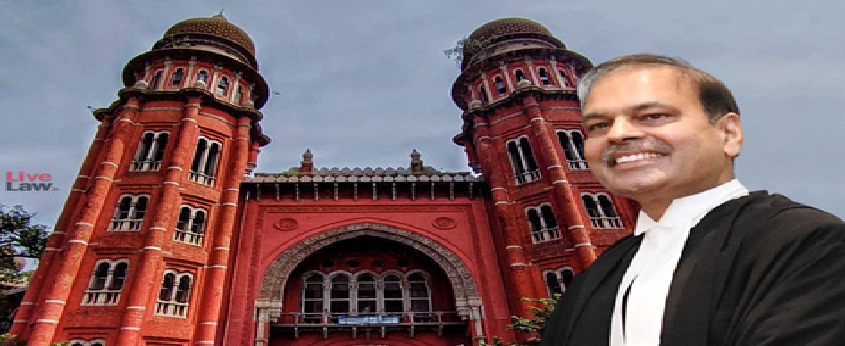
Why in News?
- Tamil Nadu Governor R.N. Ravi administered oath of office to Madras High Court Chief Justice Munishwar Nath Bhandari in the presence of Chief Minister M.K. Stalin at the Raj Bhavan recently.
About the News:
- ACJ Bhandari, hailing from Rajasthan, assumed office in the Madras High Court on November 22, following his transfer from Allahabad High Court, where he had served as its ACJ.
- At the time of his transfer, two senior judges, Justices Raghvendra Singh Chauhan and Mohammad Rafiq, from his parent High Court (Rajasthan), were already serving as Chief Justices.
- Since Justice Chauhan retired on December 23, the Supreme Court collegium passed resolutions recommending the elevation of Justice Bhandari as the Chief Justice of Madras High Court.
- He is the 32nd Indian Chief Justice of the High Court and 43rd Chief Justice if the 11 British Chief Justices since August 15, 1862 are also taken into consideration.
What is Collegium System?
- It is the system of appointment and transfer of judges that has evolved through judgments of the SC, and not by an Act of Parliament or by a provision of the Constitution.
- The SC collegium is headed by the CJI and comprises four other senior most judges of the court.
- A HC collegium is led by its Chief Justice and four other senior most judges of that court.
- Names recommended for appointment by a HC collegium reaches the government only after approval by the CJI and the SC collegium.
- Judges of the higher judiciary are appointed only through the collegium system and the government has a role only after names have been decided by the collegium.
- The Government’s role is limited to getting an inquiry conducted by the Intelligence Bureau (IB) if a lawyer is to be elevated as a judge in a High Court or the Supreme Court.
- Intelligence Bureau (IB): It is a reputed and established intelligence agency. It is authoritatively controlled by the Ministry of Home Affairs.
- It can also raise objections and seek clarifications regarding the collegium’s choices, but if the collegium reiterates the same names, the government is bound, under Constitution Bench judgments, to appoint them as judges.
Evolution of the Collegium System:
- First Judges Case (1981):
- It declared that the “primacy” of the Chief Justice of India (CJI)s recommendation on judicial appointments and transfers can be refused for “cogent reasons.”
- The ruling gave the Executive primacy over the Judiciary in judicial appointments for the next 12 years.
- Second Judges Case (1993):
- SC introduced the Collegium system, holding that “consultation” really meant “concurrence”.
- It added that it was not the CJI’s individual opinion, but an institutional opinion formed in consultation with the two senior-most judges in the SC.
- Third Judges Case (1998):
- SC on President’s reference expanded the Collegium to a five-member body, comprising the CJI and four of his senior-most colleagues.
Procedure for Various Judicial Appointments:
- For CJI:
- The President of India appoints the CJI and the other SC judges.
- As far as the CJI is concerned, the outgoing CJI recommends his successor.
- In practice, it has been strictly by seniority ever since the supersession controversy of the 1970s.
- For SC Judges:
- For other judges of the SC, the proposal is initiated by the CJI.
- The CJI consults the rest of the Collegium members, as well as the senior-most judge of the court hailing from the High Court to which the recommended person belongs.
- The consultees must record their opinions in writing and it should form part of the file.
- The Collegium sends the recommendation to the Law Minister, who forwards it to the Prime Minister to advise the President.
- For Chief Justice of High Courts:
- The Chief Justice of High Court is appointed as per the policy of having Chief Justices from outside the respective States.
- The Collegium takes the call on the elevation.
- High Court judges are recommended by a Collegium comprising the CJI and two senior-most judges.
- The proposal, however, is initiated by the outgoing Chief Justice of the High Court concerned in consultation with two senior-most colleagues.
- The recommendation is sent to the Chief Minister, who advises the Governor to send the proposal to the Union Law Minister.
Criticism of the Collegium System:
- Opaqueness and a lack of Transparency.
- Scope for Nepotism.
- Embroilment in Public Controversies.
- Overlooks several talented Junior Judges and Advocates.
Attempts to reform the Appointment System:
- The attempt made to replace it by a ‘National Judicial Appointments Commission’ was struck down by the court in 2015 on the ground that it posed a threat to the independence of the judiciary.
Related Constitutional Provisions:
- Article 124(2) of the Indian Constitution provides that the Judges of the Supreme Court are appointed by the President after consultation with such a number of the Judges of the Supreme Court and of the High Courts in the States as the President may deem necessary for the purpose.
- Article 217 of the Indian Constitution states that the Judge of a High Court shall be appointed by the President consultation with the Chief Justice of India, the Governor of the State, and, in the case of appointment of a Judge other than the Chief Justice, the Chief Justice of the High Court.
Way Forward:
- Filling up of vacancies is a continuous and collaborative process involving the executive and the judiciary, and there cannot be a time frame for it. However, it is time to think of a permanent, independent body to institutionalize the process with adequate safeguards to preserve the judiciary’s independence guaranteeing judicial primacy but not judicial exclusivity.
- It should ensure independence, reflect diversity, demonstrate professional competence and integrity.
- Instead of selecting the number of judges required against a certain number of vacancies, the collegium must provide a panel of possible names to the President to appoint in order of preference and other Valid Criteria.
Privilege Motion
12, Feb 2022
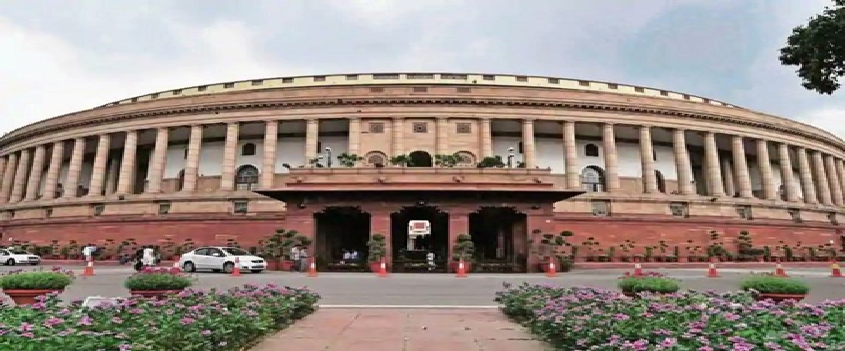
Why in News?
- An MP from Telangana submitted a Privilege Motion against PM regarding his remarks over the bifurcation of the erstwhile state of Andhra Pradesh.
What is Parliamentary Privilege?
- Parliamentary privilege refers to the right and immunity enjoyed by legislatures.
- The legislators are granted protection against civil or criminal liability for actions done or statements made in the course of their legislative duties.
- They are granted so that the MPs/MLAs can effectively discharge their functions.
- The powers, privileges and Immunities of either House of the Indian Parliament and of its Members and Committees are laid down in Article 105 of the Constitution.
- Article 194 deals with the powers, privileges and Immunities of the State Legislatures, their members and their committees.
What is a Privilege Motion?
- When any of the rights and immunities are disregarded, the offence is called a breach of privilege and is punishable under law of Parliament.
- A notice is moved in the form of a motion by any member of either House against those being held guilty of breach of privilege.
- Each House also claims the right to punish as contempt actions which, while not breach of any specific privilege, are offences against its authority and dignity.
What are the Rules Governing Privilege?
- Rule No 222 in Chapter 20 of the Lok Sabha Rule Book and correspondingly Rule 187 in Chapter 16 of the Rajya Sabha rulebook govern privilege.
- It says that a member may, with the consent of the Speaker or the Chairperson, raise a question involving a breach of privilege either of a member or of the House or of a committee thereof.
- The rules however mandate that any notice should be relating to an incident of recent occurrence and should need the intervention of the House.
- Notices have to be given before 10 am to the Speaker or the Chairperson.
What is the role of the Speaker/Rajya Sabha Chair?
- The Speaker/RS chairperson is the first level of scrutiny of a privilege motion.
- The Speaker/Chair can decide on the privilege motion himself or herself or refer it to the Privileges Committee of Parliament.
- If the Speaker/Chair gives consent under Rule 222, the member concerned is given an Opportunity to make a short statement.
What is the Privileges Committee?
- In the Lok Sabha, the Speaker nominates a committee of privileges consisting of 15 members as per respective Party Strengths.
- A report is then presented to the House for its consideration. The Speaker may permit a half-hour debate while Considering the report.
- The Speaker may then pass final orders or direct that the report be tabled before the House.
- A resolution may then be moved relating to the breach of privilege that has to be Unanimously Passed.
- In the Rajya Sabha, the deputy chairperson heads the committee of privileges, which consists of 10 Members.
Common Electoral Roll and Simultaneous Poll
09, Feb 2022
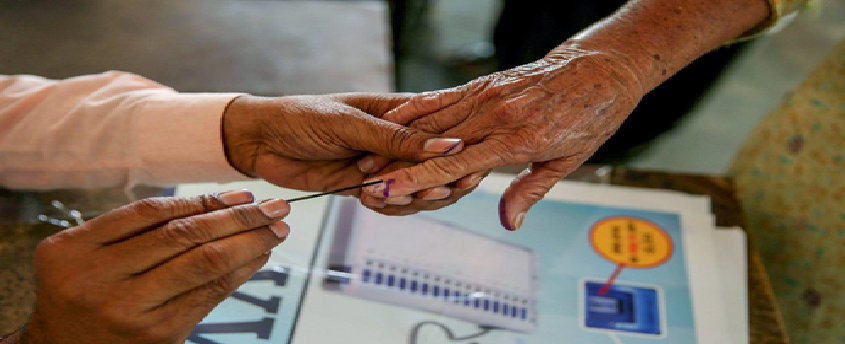
Why in News?
- The Centre has clarified that it is not planning on amending the Representation of the People Act, 1951 to enable a common electoral roll and simultaneous elections to all Electoral Bodies in the Country.
Background:
- While the Centre may not be planning to amend the Representation of the People Act, it has held meetings with various stakeholders, including the EC, on the possibility of States adopting the same electoral roll for local body polls. Prime Minister Narendra Modi has Spoken in favour of “One Nation, One Election one nation, one election” many times.
What is ‘?
- It refers to holding elections to Lok Sabha, State Legislative Assemblies, Panchayats and Urban local bodies simultaneously, once in five years.
But what are the Challenges Posed by Frequent Elections?
- Massive Expenditure.
- Policy paralysis that Results from the imposition of the Model Code of Conduct during election time.
- Impact on delivery of Essential Services.
- Burden on Crucial Manpower that is deployed during election time.
- Puts pressure on political Parties, Especially smaller ones, as elections are becoming Increasingly Expensive.
Benefits of Simultaneous Elections:
- Governance and consistency: The ruling parties will be able to focus on legislation and Governance rather than having to be in campaign mode forever.
- Reduced Expenditure of Money and Administration.
- Continuity in policies and programmes.
- Efficiency of Governance: Populist measures by governments will reduce.
- The Impact of Black Money on the voters will be reduced as all elections are held at a time.
Impact on Regional parties:
- There is always a tendency for voters to vote the same party in power in the state and at the Centre in case the Lok Sabha polls and the state elections are held together.
- For simultaneous elections to be implemented, Changes to be made in Constitution and Legislations:
- Article 83 which deals with the duration of Houses of Parliament need an amendment.
- Article 85 (on dissolution of Lok Sabha by the president).
- Article 172 (relating to the duration of state legislatures).
- The Representation of People Act, 1951 Act would have to be amended to build in provisions for stability of tenure for both parliament and assemblies. This should include the following crucial elements:
- Restructuring the powers and functions of the ECI to facilitate procedures required for simultaneous elections
- A definition of simultaneous election can be added to section 2 of the 1951 act.
What is the Common Electoral Roll?
- Under the Common Electoral Roll, only one voter list will be used for Lok Sabha, Vidhan Sabha and other elections.
How many Types of Electoral Rolls do we have in Our Country and why the Distinction?
- In many states, the voters’ list for the panchayat and municipality elections is different from the one used for Parliament and Assembly elections.
- The distinction stems from the fact that the supervision and conduct of elections in our country are with two constitutional authorities — the Election Commission (EC) of India and the State Election Commissions (SECs).
Significance:
- The preparation of a separate voters list causes duplication of the effort and the Expenditure.
- Therefore, a common electoral roll and Simultaneous elections as a way to save an Enormous Amount of Effort and Expenditure.
Home Ministry seeks More Time to frame CAA Rules
08, Feb 2022
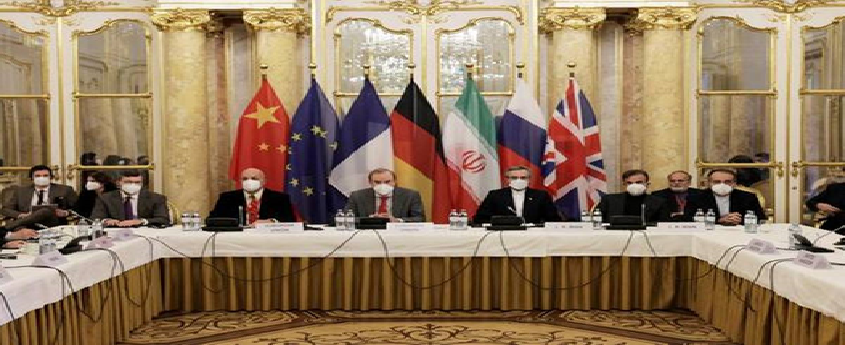
Why in News?
- The Ministry of Home Affairs (MHA) sought has asked the parliamentary committee for more time to frame the rules of the Citizenship (Amendment) Act, 2019 (CAA), on the Grounds that Consultation process is on.
About the News:
- The MHA had sought another extension on January 9 from the parliamentary committees on subordinate legislation in the Rajya Sabha and Lok Sabha to frame the rules of the CAA.
- Besides the consultation process, MHA said that the construction of the rules had been delayed due to the COVID-19 pandemic. Without the rules being framed, the Act cannot be implemented.
- A senior government official said that MHA stated two grounds for seeking a three-months’ extension to notify the rules — consultation process and COVID-19.
About the CAA and Foreigners Tribunal:
- The Parliament passed the Citizenship Amendment Act (CAA), 2019 that seeks to give citizenship to refugees from the Hindu, Christian, Buddhist, Sikh and Zoroastrian communities fleeing religious persecution from Pakistan, Bangladesh and Afghanistan, who came to India before 31st December, 2014.
- Residential requirement for citizenship through naturalization from the above said countries is at least 5 years. Residential requirement for citizenship through naturalization for others is 11 years.
- The Act applies to all States and Union Territories of the country.
- The beneficiaries of Citizenship Amendment Act can reside in any state of the country.
- In 1964, the govt. brought in the Foreigners (Tribunals) Order.
- Advocates not below the age of 35 years of age with at least 7 years of practice (or) Retired Judicial Officers from the Assam Judicial Service (or) Retired IAS of ACS Officers (not below the rank of Secretary/Addl. Secretary) having experience in quasi-judicial works.
- The Ministry of Home Affairs (MHA) has amended the Foreigners (Tribunals) Order, 1964, and has empowered district magistrates in all States and Union Territories to set up tribunals (quasi-judicial bodies) to decide whether a person staying illegally in India is a Foreigner or Not.
- Earlier, the powers to constitute tribunals were vested only with the Centre.
- Typically, the tribunals there have seen two kinds of cases: those concerning persons against whom a reference has been made by the border police and those whose names in the electoral roll has a “D”, or “doubtful”, marked against them.
Who are Illegal Immigrants?
- According to the Citizenship Act, 1955, an illegal immigrant is one who enters India without a valid passport or with forged documents, or a person who stays beyond the visa permit.
What is NRC?
- The National Register of Citizens (NRC) is meant to identify a bona fide citizen.
- In other words, by the order of the Supreme Court of India, NRC is being currently updated in Assam to detect Bangladeshi nationals who might have entered the State illegally after the midnight of March 24, 1971.
- The date was decided in the 1985 Assam Accord, which was signed between the then Prime Minister Rajiv Gandhi and the AASU.
- The NRC was first published after the 1951 Census in the independent India when parts of Assam went to the East Pakistan, now Bangladesh.
- The first draft of the updated list was concluded by December 31, 2017.
Arguments against the Act:
- The fundamental criticism of the Act has been that it specifically targets Muslims. Critics argue that it is violative of Article 14 of the Constitution (which guarantees the right to equality) and the principle of secularism.
- India has several other refugees that include Tamils from Sri Lanka and Hindu Rohingya from Myanmar.
- They are not covered under the Act.
- Despite exemption granted to some regions in the North-eastern states, the prospect of citizenship for massive numbers of illegal Bangladeshi migrants has triggered deep anxieties in the states.
- It will be difficult for the government to differentiate between illegal migrants and those persecuted.
Arguments in Favour:
- The government has clarified that Pakistan, Afghanistan and Bangladesh are Islamic republic’s where Muslims are in majority hence they cannot be treated as persecuted minorities. It has assured that the government will examine the application from any other community on a case to case basis.
- This Act is a big boon to all those people who have been the victims of Partition and the subsequent conversion of the three countries into theocratic Islamic republics.
- Citing partition between India and Pakistan on religious lines in 1947, the government has argued that millions of citizens of undivided India belonging to various faiths were staying in Pakistan and Bangladesh from 1947.
- The constitutions of Pakistan, Afghanistan and Bangladesh provide for a specific state religion. As a result, many persons belonging to Hindu, Sikh, Buddhist, Jain, Parsi and Christian communities have faced persecution on grounds of religion in those countries.
- Many such persons have fled to India to seek shelter and continued to stay in India even if their travel documents have expired or they have incomplete or no documents.
- After Independence, not once but twice, India conceded that the minorities in its neighbourhood is its responsibility. First, immediately after Partition and again during the Indira-Mujib Pact in 1972 when India had agreed to absorb over 1.2 million refugees. It is a historical fact that on both occasions, it was only the Hindus, Sikhs, Buddhists and Christians who had come over to Indian side.
Panel Redraws All Five J&K LS Seats
07, Feb 2022
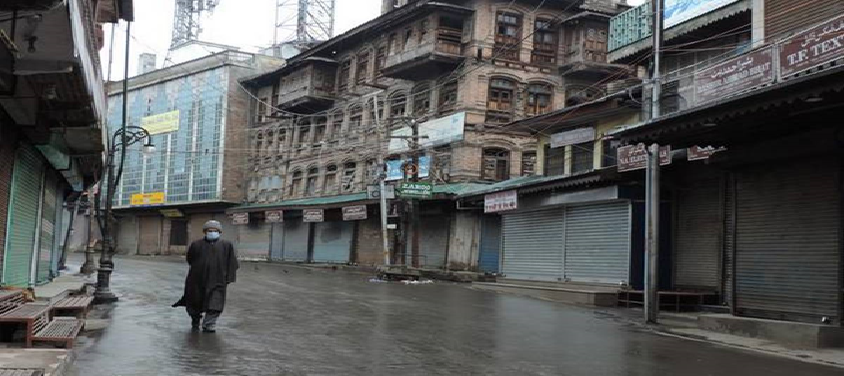
Why in News?
- The J&K Delimitation Commission has changed the complexion of most of the 90 Assembly seats, while reconfiguring and renaming 28 new Assembly constituencies and deleting 19 Assembly Segments in its Interim Report.
About the News:
- The interim report, shared with the associate members two days ago, suggested that the Kashmir division will get an additional seat in Kupwara, while the Jammu division will have one additional seat in Kathua district, one in Samba, one in Doda, one in Rajouri, one in Udhampur and one in Kishtwar.
- Of the six seats, three Assembly segments are from the Muslim-majority Chenab Valley and Pir Panjal valleys, while four are in the Hindu Jammu-Samba-Kathua belt.
- Seventeen constituencies have been redrawn in the Jammu province while 11 have been reconfigured in the Kashmir division. Similarly, nine names of Assembly constituencies in the Jammu division have vanished due to the reconfiguration and 10 names disappear from the Kashmir division.
- The Shri Mata Vaishno Devi constituency has been identified as the smallest of all with just 73,648 votes in the Jammu region.
- The Commission has also proposed reframing of Lok Sabha constituencies, with J&K earlier having five which included three seats from Kashmir and two from Jammu. It has suggested to distribute 18 Assembly segments among the five Lok Sabha constituencies.
- The newly carved Lok Sabha seat will havesix of the nine Assembly segments reserved for the STs.
- The Srinagar Lok Sabha seat will now comprise Assembly segments spread over five districts of Srinagar, Budgam, Pulwama, Ganderbal and Shopian against the earlier three.
- North Kashmir’s Baramulla Lok Sabha seat will be spread over four districts, which includes parts of Budgam, Baramulla, Kupwara and Bandipora.
- The seats reserved for the Schedule Tribes included Darhal, Thannamandi in Rajouri district; Surankote, Mendhar and Poonch Haveli in Poonch district; and Mahore in Reasi district in the Jammu province’s Pir Panjal Valley.
- Larnoo in Anantnag, Kangan in Ganderbal, and Gurez are ST seats in the Kashmir province. The Commission has reserved nine seats for the STs and seven for the SCs.
What is Delimitation?
- Delimitation literally means the process of fixing limits or boundaries of territorial constituencies in a state that has a legislative body.
- Bifurcation of J&K into two UTs has led to redrawing of Assembly constituency boundaries. While, the UT of Ladakh will not have its own legislature, J&K will. This would be similar to Puducherry or Delhi.
- Such delimitation was also necessitated in 2014 when Andhra Pradesh and Telangana were bifurcated.
- According to the Delimitation Commission Act, 2002, the Delimitation Commission appointed by the Centre has to have three members: a serving or retired judge of the Supreme Court as the chairperson, and the Chief Election Commissioner or Election Commissioner nominated by the CEC and the State Election Commissioner as ex-officio members.
How Delimitation Process is done?
- Under Article 82, the Parliament enacts a Delimitation Act after every Census.
- Under Article 170, States also get divided into territorial constituencies as per Delimitation Act after every Census.
- Once the Act is in force, the Union government sets up a Delimitation Commission.
- The new state assembly shall have 114 seats (currently 107), out of which only 90 will be open for elections, and the remaining 24 will be shadow seats reserved for the areas of the erstwhile state that have been occupied by Pakistan (PoJK).
- For the delimitation exercise, the population figures of 2011 census shall be taken as the basis.
- The J&K Representation of the People Act 1957 has now been invalidated and, instead, delimitation will be done as per the Representation of the People Act, 1950 (as amended from time to time) and provisions of Sections 59, 60 of Act 34 of 2019.
Who carry out the Exercise?
- Delimitation is undertaken by a highly powerful commission. They are formally known as Delimitation Commission or Boundary Commission.
- These bodies are so powerful that its orders have the force of law and they cannot be challenged before any court.
- Such commissions have been constituted at least four times in India — in 1952 under the Delimitation Commission Act, 1952; in 1963 under Delimitation Commission Act, 1962; in 1973 under Delimitation Act, 1972 and last in 2002 under Delimitation Act, 2002.
- The commissions’ orders are enforced as per the date specified by the President of India. Copies of these orders are laid before the Lok Sabha or the concerned Legislative Assembly. No Modifications are Permitted.
Why Delimitation is Needed?
- To provide equal representation to equal segments of a population.
- Fair division of geographical areas so that one political party doesn’t have an advantage over others in an election.
- To follow the principle of “One Vote One Value”.
What are the Problems with Delimitation?
- States that take little interest in population control could end up with a greater number of seats in Parliament. The southern states that promoted family planning faced the possibility of having their seats reduced.
- In 2008, Delimitation was done based on the 2001 census, but the total number of seats in the Assemblies and Parliament decided as per the 1971 Census that was not changed.
- The constitution has also capped the number of Lok Shaba & Rajya Sabha seats to a maximum of 550 & 250 respectively and increasing populations are being represented by a single Representative.
RS debates use of private bills to amend Preamble to Constitution
05, Feb 2022
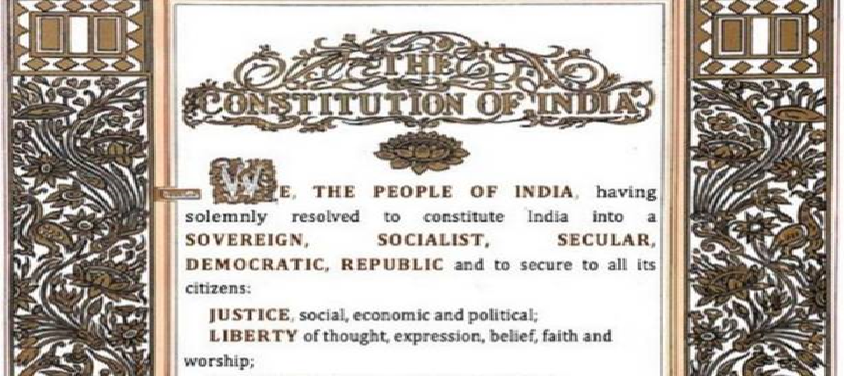
Why in News?
- Rajya Sabha Deputy Chairman Harivansh recently said that there have been number of instances in the past when private member bills to amend the Preamble to the Constitution have been introduced in both the Houses of Parliament and its legislative competence is decided by Council and not the Chair.
About the News:
- Manoj Kumar Jha had previously opposed the motion moved by K.J. Alphons to introduce his private members bill -the Constitution (Amendment) Bill, 2021 (Amendment of Preamble)“.
- Jha had argued that Preamble is part of the basic structure of the Constitution and the Bill may not be allowed for introduction.
- Giving a ruling on this issue, Mr. Harivansh has recently said that, “on a request made by the Minister of State for Parliamentary Affairs and after taking the sense of the House, the introduction of the Bill was deferred.
What is the Issue?
- Preamble is part of the Constitution and as per Article 368 of the Constitution, Parliament may, in exercise of its constituent power, amend by way of addition, variation or repeal any provision of the Constitution and a Bill for the purpose can be introduced in either House of the Parliament.
- If the introduction of a Bill is opposed on the ground of legislative competence of the Council, the Council decides the same and not the Chair.
- There are a number of rulings given by the Chair in this House on this issue taking the same stand in the past.
About the Constitution (Amendment) Bill, 2021:
- It was introduced by BJP Member from Kerala K J Alphons.
- The Bill seeks to change the words in the Preamble “EQUALITY of status and of opportunity” to “EQUALITY of status and of opportunity to be born, to be fed, to be educated, to get a job and to be treated with dignity”.
- It also seeks to replace the word “socialist” with “equitable”.
- The Bill also proposes adding “access to information technology” and “happiness” as objectives.
What are the Four Important Aspects can be Ascertained from the above text of the Preamble?
- Source of authority of the constitution: It derives its authority from the people of India.
- Nature of Indian state: It declares India to be a sovereign, socialistic, secular democratic and republican polity.
- Objectives of the constitution: It specifies justice, liberty, equality and fraternity as the objectives.
- Date of adoption: Nov 26th, 1949.
Is Preamble a Part of the Constitution?
- In the Berubari Union Case (1960), the Supreme Court opined that the Preamble was not part of the constitution.
- The above opinion was reversed in Keshavananda Bharati case in 1973; the SC held that Preamble is part of the constitution. This opinion was further clarified by the SC in LIC of India case (1995).
- Though preamble is part of the constitution;
- It is a neither a source of power to legislature nor a prohibition upon the powers of legislature.
- It is a non-justiciable, that is, its provisions are not enforceable in any courts of law.
Preamble and its Amendability:
- In Keshavananda Bharati case, the court held that the basic elements or the fundamental features of the constitution as contained in the preamble cannot be altered by an amendment under article 368.
- The preamble has been amended only once. That is- 42nd constitutional amendment act, 1976 when three new terms were added- Socialist, secular and integrity.
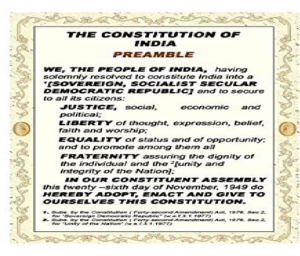
Electoral Bonds Worth ₹1,213 Crore sold in January
03, Feb 2022

Why in News?
- According to a Right to Information reply Electoral bonds worth ₹1,213 crore were sold by the SBI in January, with most of them (₹84 crore) being encashed in the New Delhi branch, pointing towards national parties, while the Mumbai branch sold the most (₹489.6 crore worth).
What is an Electoral Bond?
- Electoral Bond is a financial instrument for making donations to political parties.
- The bonds are issued in multiples of Rs. 1,000, Rs. 10,000, Rs. 1 lakh, Rs. 10 lakh and Rs. 1 crore without any maximum limit.
- State Bank of India is authorised to issue and encash these bonds, which are valid for fifteen days from the date of issuance.
- These bonds are redeemable in the designated account of a registered political party.
- Every party that is registered under section 29A of the Representation of the Peoples Act, 1951 and has secured at least 1% of the votes polled in the most recent Lok Sabha or State election will be allotted a verified account by the Election Commission of India.
- Electoral bond transactions can be made only via this account.
- The bonds are available for purchase by any person (who is a citizen of India or incorporated or established in India) for a period of ten days each in the months of January, April, July and October as may be specified by the Central Government.
- A person being an individual can buy bonds, either singly or jointly with other individuals.
- Donor’s name is not mentioned on the bond.
- During general elections, the central government may specify an additional period of thirty days for sale of these bonds.
- There have been some occasions when the government has deviated from the specified periodicity for issuance of these bonds.
- For example, the sixth tranche of electoral bonds was issued from 1st-10th November 2018 and electoral bonds were sold in the months of March, April and May during 2019 general elections.
What are the Concerns?
- While the Scheme acts as a check against traditional under-the-table donations as it insists on cheque and digital paper trails of transactions, several key provisions of the scheme make it highly controversial.
- Anonymity:
- Neither the donor (who could be an individual or a corporate) nor the political party is obligated to reveal whom the donation comes from.
- In 2019, the Supreme Court held that all political parties who had received donations through electoral bonds must submit details to the Election Commission of India.
- This undercuts a fundamental constitutional principle, the freedom of political information, which is an integral element of Article 19(1) (a) of the Constitution.
- Defeating Transparency:
- It defeats the fundamental principle of transparency in political finance because it conceals from public scrutiny the identity of the corporates and moneybags.
- Asymmetric Opacity:
- The government is always in a position to know who the donor is because the bonds are purchased through the SBI.
- This asymmetry of information threatens to colour the process in favour of whichever political party is ruling at the time.
- Chanel of Black Money:
- Elimination of a cap of 7.5% on corporate donations, elimination of requirement to reveal political contributions in profit and loss statements and also the elimination of the provision that a corporation must be three years in existence, undercuts the intent of the scheme.
- Any troubled, dying or shell companies can donate an unlimited amount anonymously to a political party giving them a convenient channel for business to round-trip their cash parked in tax havens for a favour or advantage granted in return for something.
Way Forward:
- There is a need for fixing the governance system and effective regulation of political financing along with bold reforms to break the vicious cycle of corruption and erosion of quality of democratic polity. It is crucial to plug the loopholes in the current laws to make the entire governance machinery more accountable and transparent.
- Voters can help bring in substantial changes by demanding awareness campaigns. If voters reject candidates and parties that overspend or bribe them, democracy would move a step higher.
Collegium Recommends Bhandari for HC CJ Post
01, Feb 2022
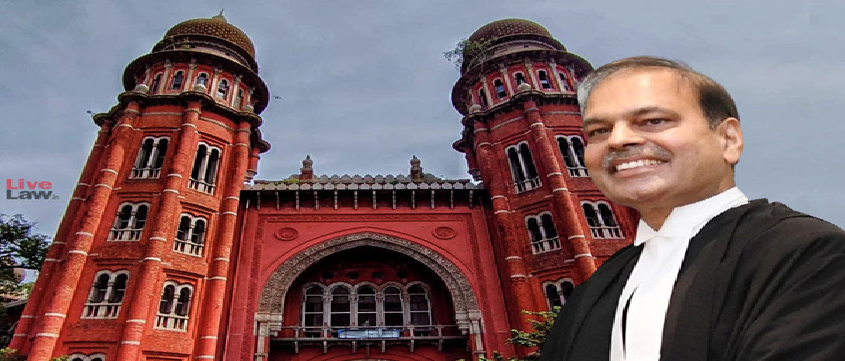
Why in News?
- The Supreme Court collegium has recommended the elevation of Madras High Court Acting Chief Justice (ACJ) Munishwar Nath Bhandari as its Chief Justice.
About the News:
- ACJ Bhandari, hailing from Rajasthan, assumed office in the Madras High Court on November 22, following his transfer from Allahabad High Court, where he had served as its ACJ.
- At the time of his transfer, two senior judges, Justices Raghvendra Singh Chauhan and Mohammad Rafiq, from his parent High Court (Rajasthan), were already serving as Chief Justices.
- Since Justice Chauhan retired on December 23, the Supreme Court collegium passed resolutions recommending the elevation of Justice Bhandari as the Chief Justice of Madras High Court.
- He would take oath after the issuance of a Presidential notification.
What is Collegium System?
- It is the system of appointment and transfer of judges that has evolved through judgments of the SC, and not by an Act of Parliament or by a provision of the Constitution.
- The SC collegium is headed by the CJI and comprises four other senior most judges of the court.
- A HC collegium is led by its Chief Justice and four other senior most judges of that court.
- Names recommended for appointment by a HC collegium reaches the Government only after approval by the CJI and the SC collegium.
- Judges of the higher judiciary are appointed only through the Collegium system and the government has a role only after names have been decided by the Collegium.
- The government’s role is limited to getting an inquiry conducted by the Intelligence Bureau (IB) if a lawyer is to be elevated as a judge in a High Court or the Supreme Court.
- Intelligence Bureau (IB): It is a reputed and established intelligence agency. It is authoritatively controlled by the Ministry of Home Affairs.
- It can also raise objections and seek clarifications regarding the collegium’s choices, but if the collegium reiterates the same names, the government is bound, under Constitution Bench judgments, to appoint them as judges.
Evolution of the Collegium System:
- First Judges Case (1981):
- It declared that the “primacy” of the Chief Justice of India (CJI)s recommendation on judicial appointments and transfers can be refused for “cogent reasons.”
- The ruling gave the Executive primacy over the Judiciary in judicial appointments for the next 12 years.
- Second Judges Case (1993):
- SC introduced the Collegium system, holding that “consultation” really meant “concurrence”.
- It added that it was not the CJI’s individual opinion, but an institutional opinion formed in consultation with the two senior-most judges in the SC.
- Third Judges Case (1998):
- SC on President’s reference expanded the Collegium to a five-member body, comprising the CJI and four of his senior-most colleagues.
Procedure for Various Judicial Appointments:
- For CJI:
- The President of India appoints the CJI and the other SC judges.
- As far as the CJI is concerned, the outgoing CJI recommends his successor.
- In practice, it has been strictly by seniority ever since the supersession controversy of the 1970s.
- For SC Judges:
- For other judges of the SC, the proposal is initiated by the CJI.
- The CJI consults the rest of the Collegium members, as well as the senior-most judge of the court hailing from the High Court to which the recommended person belongs.
- The consultees must record their opinions in writing and it should form part of the file.
- The Collegium sends the recommendation to the Law Minister, who forwards it to the Prime Minister to advise the President.
- For Chief Justice of High Courts:
- The Chief Justice of High Court is appointed as per the policy of having Chief Justices from outside the respective States.
- The Collegium takes the call on the elevation.
- High Court judges are recommended by a Collegium comprising the CJI and two senior-most judges.
- The proposal, however, is initiated by the outgoing Chief Justice of the High Court concerned in consultation with two senior-most colleagues.
- The recommendation is sent to the Chief Minister, who advises the Governor to send the proposal to the Union Law Minister.
Criticism of the Collegium System:
- Opaqueness and a lack of transparency.
- Scope for nepotism.
- Embroilment in public controversies.
- Overlooks several talented junior judges and advocates.
Attempts to reform the Appointment System:
- The attempt made to replace it by a ‘National Judicial Appointments Commission’ was struck down by the court in 2015 on the ground that it posed a threat to the independence of the judiciary.
Related Constitutional Provisions:
- Article 124(2) of the Indian Constitution provides that the Judges of the Supreme Court are appointed by the President after consultation with such a number of the Judges of the Supreme Court and of the High Courts in the States as the President may deem necessary for the purpose.
- Article 217 of the Indian Constitution states that the Judge of a High Court shall be appointed by the President consultation with the Chief Justice of India, the Governor of the State, and, in the case of appointment of a Judge other than the Chief Justice, the Chief Justice of the High Court.
Way Forward:
- Filling up of vacancies is a continuous and collaborative process involving the executive and the judiciary, and there cannot be a time frame for it. However, it is time to think of a permanent, independent body to institutionalize the process with adequate safeguards to preserve the judiciary’s independence guaranteeing judicial primacy but not judicial exclusivity.
- It should ensure independence, reflect diversity, demonstrate professional competence and integrity.
- Instead of selecting the number of judges required against a certain number of vacancies, the collegium must provide a panel of possible names to the President to appoint in order of preference and other valid criteria.
States must Decide on SC/ST Quota in Promotions, says SC
29, Jan 2022
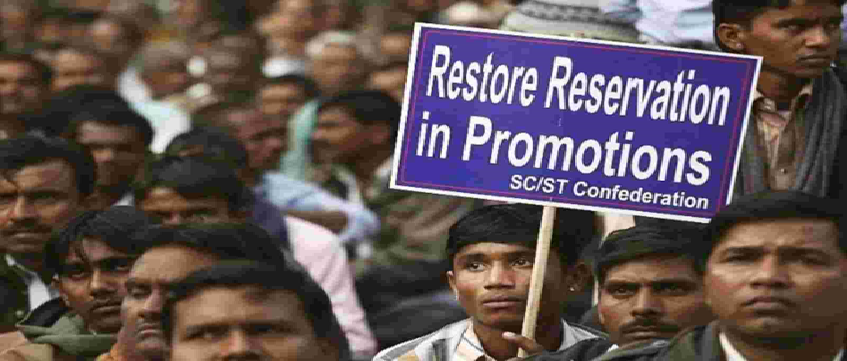
Why in News?
- The Supreme Court recently refused to lay down the “Yardstick” for determining the inadequacy of representation for Granting Reservation in promotions for Scheduled Caste/Scheduled Tribe candidates in Government Jobs.
About the News:
- The court stuck firm by its Constitution Benches decisions in Jarnail Singh and M. Nagaraj cases that the question of Adequate Representation of an SC/ST communities ought to be left to the respective States to determine.
What did the SC Observe?
- It held ‘cadre’ and not class, group or the entire service as the unit for purpose of collection of quantifiable data for giving promotion quotas.
- It said that, in the light of Jarnail Singh and Nagaraj, we cannot lay down any yardstick for determining the inadequacy of representation.
- In respect of the unit of collection of quantifiable data, the court held that the State was “obligated to collect quantifiable data on the inadequacy of representation of Scheduled Castes and Scheduled Tribes.
- The court, however, noted that the “collection of information on inadequacy of representation of SC/ST communities cannot be with reference to the entire service or class/group, but should be relatable to the grade/category of posts to which the promotion is Sought.”
Significance of the Case:
- With the recognition of ‘cadre’ as the unit for collection of quantifiable data, the court set aside its earlier judgment in the B.K. Pavithra case.
- The court Further left it to the State to assess the Inadequacy of the representation of SCs and STs for promotional posts by taking into account the relevant factors.
- A review had to be conducted regarding the data for the purpose of determining the inadequacy of representation in promotions, the court ordered.
- The court left it to the Union government to fix a “reasonable” time for the States to conduct the review.
M. Nagaraj Case (2006):
- Reversed the stance in the Indra Sawhney case: In this case applying the creamy layer concept in SC/ST reservation in promotions, the Supreme court reversed its earlier stance in the Indra Sawhney case (1992), in which it had excluded the creamy layer concept on SCs/STs (that was applicable on OBCs).
- Directives to the states: The five-judges Bench in Nagaraj case upheld the constitutional validity of all 77th, 81st, 82nd, and 85th constitutional amendments enabling reservation of SC/ST communities in promotions, but made certain directives for the states:
- State is not bound to make reservations for SC/ST in the matter of promotions.
- If a State wants to provide reservation to the SC/ST communities in promotions:
- It has to collect quantifiable data showing backwardness of the class.
- Show inadequacy of representation of that class in public employment in addition to compliance of Article 335.
- State needs to ensure that its reservation provision does not lead to excessiveness- breaching the ceiling-limit of 50%, or destroying the creamy layer principle.
Other Related Judgements:
- In Jarnail Singh v L.N. Gupta (2018) case, SC refused to refer the Nagaraj judgment to a higher bench but later altered the decision by saying that states will not be required to present quantifiable data of backwardness of SC/ST communities.
Reservation in Promotions is not a Fundamental Right:
- Reaffirming its stand in Nagraj case, the Supreme Court in 2020 ruled that reservation in the matter of promotions in public posts is not a fundamental right, and a state cannot be compelled to offer the quota if it chooses not to.
- Current Demand by the Centre: The Centre asked the Court to review its stance of introducing the concept of creamy layer in SC/ST promotions on various issues:
- Could deprive Backward Classes from Reservation: The government believes that the ‘creamy layer’ will become a trick to deprive the backward classes of the benefit of reservation.
- Redundancy of proving Backwardness Again: It is presumed that once they are added in the Presidential List under Articles 341 and 342 of the Constitution of India, there is no question of proving backwardness of the SCs and STs all over again.
- The said List cannot be altered by anybody except Parliament under Articles 341 and 342- defining who will be considered as SCs or STs in any state or Union Territory.
Constitutional Provisions for Promotion in Reservation
- Article 16 (4): Provides that the State can make any provision for the reservation of appointments or posts in favour of any backward class of citizens who, in the opinion of the state, are not adequately represented in the services under the State.
- Article 16 (4A): Provides that the State can make any provision for reservation in matters of promotion in favour of the Scheduled Castes and the Scheduled Tribes if they are not adequately represented in the services under the State.
- It was inserted by the 77th Constitutional Amendment Act, 1995.
- Article 16(4B): Added by the 81st Constitutional Amendment Act, 2000 which enabled the unfilled SC/ST quota of a particular year to be carried forward to the next year.
- Article 335: It recognises that special measures need to be adopted for considering the claims of SCs and STs to services and posts, in order to bring them at par.
- 82nd Constitutional Amendment Act, 2000 inserted a condition at the end of Article 335 that enables the state to make any provision in favour of the members of the SC/STs for relaxation in qualifying marks in any Examination.
SC Quashes One-Year Suspension of 12 Maharashtra MLAs
29, Jan 2022
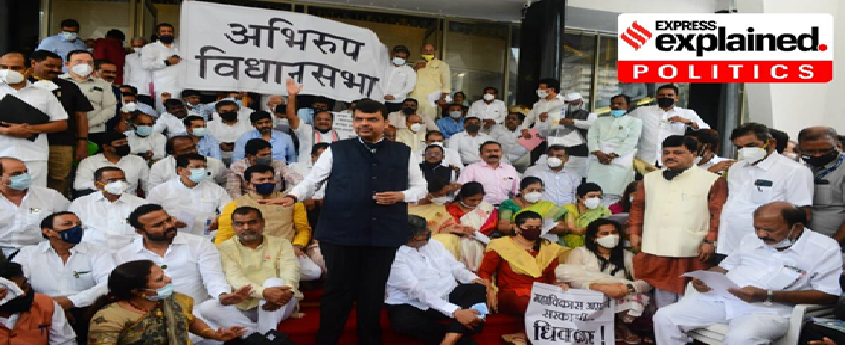
Why in News?
- The Supreme Court recently revoked the one-year suspension of 12 Maharashtra BJP legislators, calling it an “irrational” act that would impact the democratic set-up, leave constituencies unrepresented and help “thin majority” Governments Manipulate Numbers.
About the Issue:
- During the recent hearing, the Supreme Court observed that the suspension of MLAs for a full year is prima facie Unconstitutional, and “Worse than Expulsion”.
- The MLAs were suspended for misbehaviour in the Assembly pertaining to disclosure of data regarding OBCs.
What did the SC Ruled?
- A suspension beyond the remainder period of the ongoing session would not only be grossly irrational measure, but also violative of the basic democratic values owing to Unessential Deprivation of the member concerned, and more importantly, the constituency would Remain Unrepresented in the Assembly.
- It would also impact the democratic set-up as a whole by permitting the thin majority government [coalition government] of the day to manipulate the numbers of the Opposition party in the House in an undemocratic manner.
Procedure to be followed for Suspension of MLAs:
- Under Rule 53 of the Maharashtra Legislative Assembly Rules, the power to suspend can only be exercised by the Speaker, and it cannot be put to vote in a resolution.
- Rule 53 states that the “Speaker may direct any member who refuses to obey his decision, or whose conduct is, in his opinion, grossly disorderly, to withdraw immediately from the Assembly”.
- The member must “absent himself during the remainder of the day’s meeting”.
- Should any member be ordered to withdraw for a second time in the same session, the Speaker may direct the member to absent himself “for any period not longer than the remainder of the Session”.
How does the State Government defended its Move?
- Under Article 212, courts do not have jurisdiction to inquire into the proceedings of the legislature.
- Article 212 (1) states that “The validity of any proceedings in the Legislature of a State shall not be called in question on the ground of any alleged irregularity of procedure”.
- Under Article 194, any member who transgresses the privileges can be suspended through the inherent powers of the House.
- Thus, the state government has denied that the power to suspend a member can be exercised only through Rule 53 of the Assembly.
Concern expressed by the Supreme Court over the Length of the Suspension:
- The basic structure of the Constitution would be hit if the constituencies of the suspended MLAs remained unrepresented in the Assembly for a full year.
- Article 190 (4) of the Constitution says, “If for a period of sixty days a member of a House of the Legislature of a State is without permission of the House absent from all meetings thereof, the House may declare his seat vacant.”
- Under Section 151 (A) of The Representation of the People Act, 1951, “a bye-election for filling any vacancy shall be held within a period of six months from the date of the occurrence of the vacancy”. This means that barring exceptions specified under this section, no constituency can remain without a representative for more than six months.
- Therefore, the one-year suspension was prima facie unconstitutional as it went beyond the six-month limit, and amounted to “not Punishing the member but punishing the Constituency as a Whole”.
What are the rules on the Length of Suspension of a Member of Parliament?
- Rules of Procedure and Conduct of Business in Lok Sabha provide for the withdrawal of a member whose conduct is “grossly disorderly”, and suspension of one who abuses the rules of the House or willfully obstructs its business.The maximum suspension as per these Rules is “for five consecutive sittings or the remainder of the session, whichever is less”.The Maximum Suspension for Rajya Sabha under Rules 255 and 256 also does not exceed the Remainder of the session. Several recent suspensions of members have not continued beyond the Session.
- Similar Rules also are in place for state legislative assemblies and councils which prescribe a Maximum Suspension not exceeding the remainder of the session.
Recognition/Derecognition of political parties
27, Jan 2022
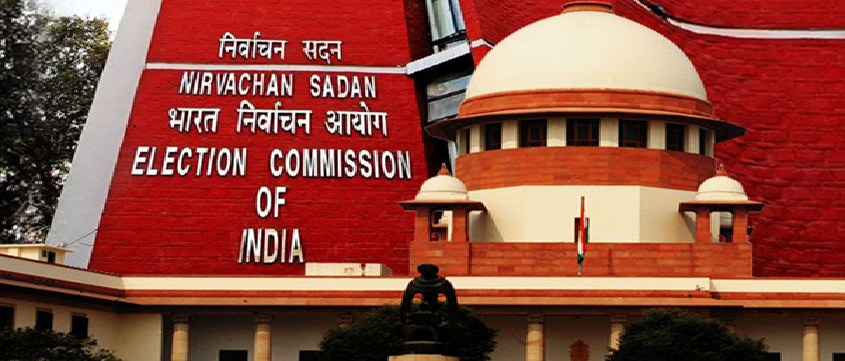
Why in News?
- A petition has been filed in the Supreme Court seeking a direction to the Election Commission of India (ECI) to seize the election symbol or de-register a political party that promises or distributes “irrational freebies” from public funds before elections.
About the News:
- It said there should be a total ban on such populist measures to gain undue political favours from the voters as they violate the Constitution and the ECI should take suitable Deterrent Measures.
Why it is Needed?
- The plea urged the court to declare that the promise of irrational freebies from public funds before elections unduly influences the voters, disturbs the level playing field and vitiates the purity of the poll Process.
- This unethical Practice is just like giving bribes to the electorate at the cost of the exchequer to stay in power and must be avoided to preserve democratic principles and practices.
Registration of Political Parties:
- Registration of Political parties is governed by the provisions of Section 29A of the Representation of the People Act, 1951.
- A party seeking registration under the said Section with the Election Commission has to submit an application to the Commission within a period of 30 days following the date of its formation as per guidelines prescribed by the Election Commission of India in exercise of the powers conferred by Article 324 of the Commission of India and Section 29A of the Representation of the People Act, 1951.
Eligibility for a ‘National Political Party of India:
- It secures at least six percent of the valid votes polled in any four or more states, at a general election to the House of the People or, to the State Legislative Assembly.
- In addition, it wins at least four seats in the House of the People from any State or States.
- It wins at least two percent seats in the House of the People (i.e., 11 seats in the existing House having 543 members), and these members are elected from at least three different States.
Eligibility for a ‘State Political Party:
- It secures at least six percent of the valid votes polled in the State at a general election, either to the House of the People or to the Legislative Assembly of the State concerned.
- In addition, it wins at least two seats in the Legislative Assembly of the State concerned.
- It wins at least three percent (3%) of the total number of seats in the Legislative Assembly of the State, or at least three seats in the Assembly, whichever is more.
What are its Benefits?
- If a party is recognised as a State Party’, it is entitled for exclusive allotment of its reserved symbol to the candidates set up by it in the State in which it is so recognised, and if a party is recognised as a `National Party’ it is entitled for exclusive allotment of its reserved symbol to the candidates set up by it throughout India.
- Recognised `State’ and `National’ parties need only one proposer for filing the nomination and are also entitled for two sets of electoral rolls free of cost at the time of revision of rolls and their candidates get one copy of electoral roll free of cost during General Elections.
- They also get broadcast/telecast facilities over Akashvani/Doordarshan during general Elections.
- The travel expenses of star campaigners are not to be accounted for in the election expense Accounts of Candidates of their Party.
Consent of AG to initiate contempt proceedings
25, Jan 2022
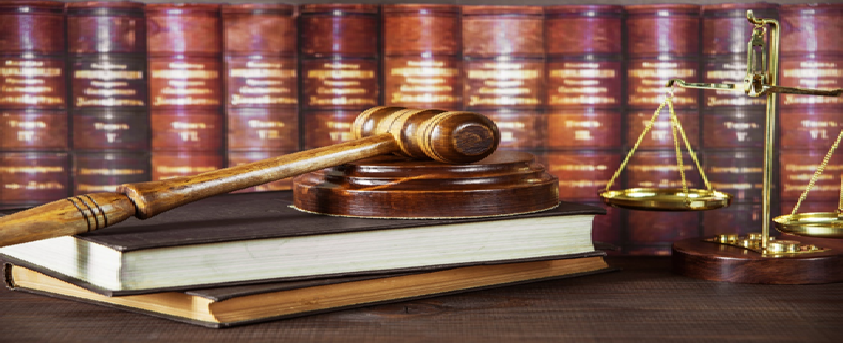
Why in News?
- Attorney General K K Venugopal has recently granted consent to initiate contempt proceedings against ‘Dharam Sansad’ leader Yati Narsinghanand over his alleged remarks against the Constitution and the Supreme Court.
Need for Consent:
- As per Section 15 of the Contempt of Courts Act, the nod of the Attorney General or the Solicitor General is a Condition precedent to set the criminal contempt proceedings in motion before the Apex Court.
What is the law on Contempt of courts?
- The Contempt of Courts Act 1971 defines civil and criminal contempt, and lays down the powers and procedures by which courts can penalise contempt, as well as the penalties that can be given for the offence of contempt.
- Contempt of court is the offense of being disobedient to or disrespectful toward a court of law and its officers in the form of behavior that opposes or defies the authority, justice and dignity of the court.
Why is the consent of the Attorney General required to Initiate Contempt proceedings?
- The objective behind requiring the consent of the Attorney General before taking cognizance of a complaint is to save the time of the court.
- This is necessary because judicial time is squandered if frivolous petitions are made and the court is the first forum for bringing them in.
- The AG’s consent is meant to be a safeguard against frivolous petitions, as it is deemed that the AG, as an officer of the court, will independently ascertain whether the complaint is Indeed Valid.
Under what circumstances is the AG’s consent not needed?
- The AG’s consent is mandatory when a private citizen wants to initiate a case of contempt of court against a person.
- However, when the court itself initiates a contempt of court case the AG’s consent is not required.
- This is because the court is exercising its inherent powers under the Constitution to punish for contempt and such Constitutional powers cannot be restricted because the AG declined to Grant Consent.
What happens if the AG Denies Consent?
- If the AG denies consent, the matter all but ends.
- The complainant can, however, separately bring the issue to the notice of the court and urge the court to take suo motu cognizance.
- Article 129 of the Constitution gives the Supreme Court the power to initiate contempt cases on its own, independent of the motion brought before it by the AG or with the consent of the AG.
Central Deputation of IAS Officials
23, Jan 2022
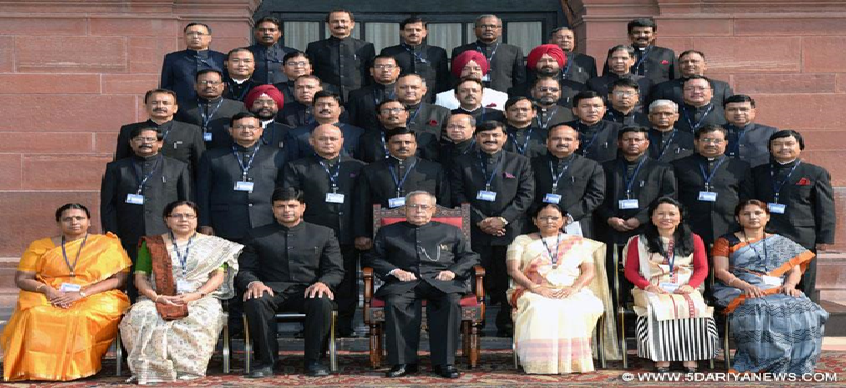
Why in News?
- The Centre has proposed amendments to the IAS (Cadre) Rules in order to exercise Greater Control in Central Deputation of IAS officials.
What is the issue?
- Central deputation has often been at the centre of tussles between the Centre and the states.
What is the Current Rule on Deputation?
- Central deputation in the Indian Administrative Service is covered under Rule-6 (1) of the IAS (Cadre) Rules-1954, inserted in May 1969.
- As per the rule:
- A cadre officer may, with the concurrence of the State Governments concerned and the Central Government, be deputed for service under the Central Government or another State Government or under a company, association or body of individuals, whether incorporated or not, which is wholly or substantially owned or controlled by the Central Government or by another State Government.
What happens in Case of Disagreement?
- In case of any disagreement, the matter shall be decided by the Central Government and the State Government or State Governments concerned shall give effect to the decision of the Central Government.
- However, Existing Rules did not mention any time limit for deciding on such disagreement.
What are the Proposed Amendments?
- The proposal will give greater say to the Centre.
- The amendments enable the Union government to seek the services of an Indian Administrative Service (IAS), Indian Police Service (IPS) and Indian Forest Service (IFoS) officer posted in a State even without the State Government’s Consent.
- The Centre will be able to relieve an officer from their cadre if the State government does not give effect to the Central Government’s Decision within the specified time.
- In case of any Disagreement, the matter shall be decided by the central government and the State Government or State Governments concerned shall give effect to the decision of the Central Government “within a specified time”.
- Services of an AIS officer with a specific domain expertise may be required for any important time-bound flagship programme or project.
What Necessitated these Amendments?
- Various state/joint cadres are not sponsoring adequate numbers of officers for central deputation, as part of the Central Deputation Reserve.
- As a result of this, the number of officers available for central deputation is not sufficient to meet the requirement at Centre.
How many officers are Working Under Deputation?
- Only 10% mid-level IAS officers were posted with the Union government in 2021, a sharp fall from 19% in 2014.
- The decrease in central deputation of IAS officers becomes even more stark as the total pool of such officers at this level expanded from 621 in 2014 to 1130 in 2021, an increase of around 80%.
- According to data available with the Department of Personnel and Training (DoPT), the number of central deputation reserve of IAS officers has gone down from 309 in 2011 to 223.
SC upholds validity of OBC quota in NEET admissions
21, Jan 2022
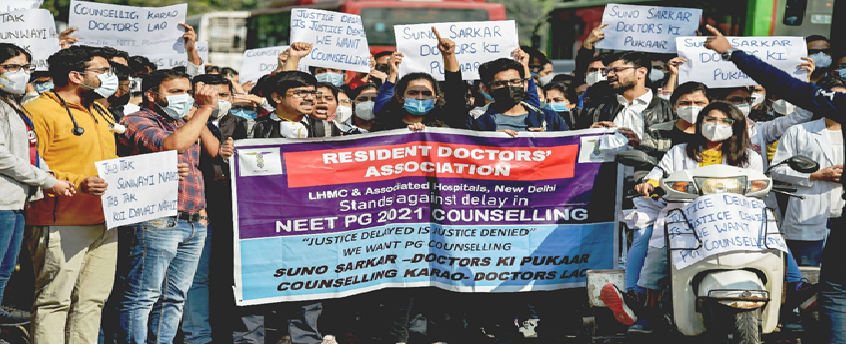
Why in News?
- The Supreme Court recently upheld the constitutional validity of quota for Other Backward Classes candidates in National Eligibility cum Entrance Test’s (NEET) All India Quota seats for undergraduate and postgraduate medical and dental courses, noting that “Reservation is not at odds with merit” in open competitive examinations.
What was the Apex Court’s ruling?
- If open examinations present equality of opportunity to candidates to compete, reservations ensure that the opportunities are distributed in such a way that backward classes are equally able to benefit from such opportunities which typically evade them because of structural barriers.
- This is the only manner in which merit can be a democratising force that equalises inherited disadvantages and privileges.
- Otherwise claims of individual merit are nothing but tools of obscuring inheritances that underlie achievements.
- The court said an open competitive exam only ensures formal equality and does not end widespread ingrained inequalities in the availability of and access to educational facilities to certain classes of people, including the Other Backward Classes (OBC).
What is NEET?
- The National Eligibility-cum-Entrance Test (NEET) is the entrance examination for entry to all undergraduate (NEET-UG) and postgraduate (NEET-PG) medical and dental courses in the country.
- Until 2016, the All India Pre-Medical Test (AIPMT) was the national-level entrance Examination for Medical Colleges.
- State Governments used to hold separate entrance tests for seats that were not contested at an all-India level.
- NEET was held for the first time in 2003, but discontinued the following year.
- On April 13, 2016, the Supreme Court upheld the newly inserted section 10-D of the Indian Medical Council Act.
- This provided for a uniform entrance examination to all medical educational institutions at the undergraduate level and postgraduate level in Hindi, English and various other Languages.
- Since then, NEET has been the uniform entrance test for medical courses across the country.
What is the All-India Quota?
- Although the same examination is held across the country, a chunk of the seats in state medical/dental colleges is reserved for students domiciled in their respective states.
- The remaining seats —15% in UG and 50% in PG — are surrendered by the states to the All India Quota.
- The AIQ scheme was introduced in 1986 under the directions of the Supreme Court to provide for domicile-free, merit-based opportunities to students from any state to study in a good medical college in any other state.
- A student Domiciled in Uttar Pradesh, for example, may be eligible for admission to a seat in a state Government medical college in West Bengal, provided she scores high enough in the National Merit List.
- If her score is not high enough for AIQ, she may still hope for admission under the state quota in her home state.
- In deemed/central universities, ESIC, and Armed Forces Medical College (AFMC), 100% seats are Reserved under the AIQ.
What was the Reservation Policy followed so far?
- Until 2007, no reservation was implemented within the All-India Quota for medical admission.
- On January 31, 2007, in Abhay Nath v University of Delhi and Others, the Supreme Court directed that reservation of 15% for Scheduled Castes and 7.5% for Scheduled Tribes be introduced in the AIQ.
- The same year, the Government passed the Central Educational Institutions (Reservation in Admission) Act, 2007 providing for 27% reservation to OBC students in central Government Institutions.
- While state government medical and dental colleges provide reservations to OBCs in seats outside the All India Quota, this benefit was so far not extended to seats allocated under the AIQ in these State Colleges.
- The 10% EWS quota under the Constitution (One Hundred And Third Amendment) Act, 2019, too, has been implemented in central educational institutions, but not in the NEET AIQ for state Institutions.
What led to the Decision?
- The denial of OBC and EWS reservations has been the subject of protests for years.
- In July last year, the Madras High Court ruled that OBC students too can avail reservation in the AIQ.
- It held that the reservation could not be implemented for the then academic year for want of time, and can be implemented from 2021-22.
Way Forward:
- The privileges that accrue to forward classes are not limited to having access to quality schooling and access to tutorials and coaching centres to prepare for a competitive Examination but also includes their social networks and Cultural Capital (communication Skills, accent, books or Academic Accomplishments) that they inherit from their family.
- The cultural capital ensures that a child from the forward classes is trained unconsciously by the familial environment to take up higher education or high posts commensurate with their family‘s standing.
- This works to the disadvantage of individuals from social backward classes who are first-generation learners and come from communities whose traditional occupations do not result in the transmission of necessary skills required to perform well in open examination.
- Thus, merit is not solely of one’s own making. The rhetoric surrounding merit obscures the way in which family, schooling, fortune and a gift of talents that the society currently values aids in one‘s advancement.
- Thus, the exclusionary standard of merit serves to denigrate the dignity of those who face barriers in their advancement which are not of their own making.
Anti-Defection Law
21, Jan 2022
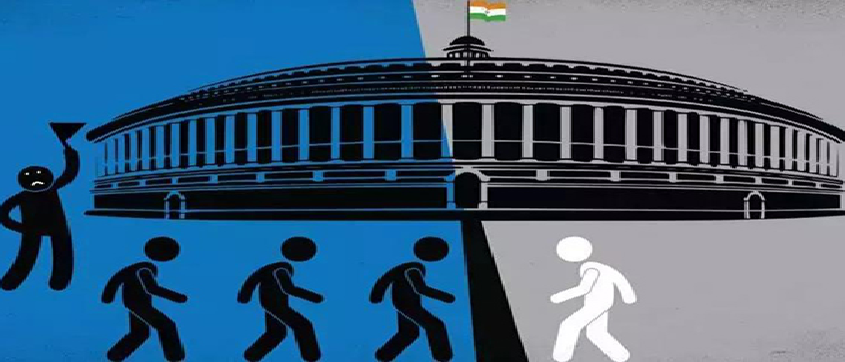
Why in News?
- Bahujan Samaj Party (BSP) chief Mayawati recently called for a more stringent anti-defection law amid a string of politicians switching parties ahead of the Uttar Pradesh Assembly Election Beginning Next Month.
What’s the Issue?
- The practice of politicians deserting Parties just ahead of elections is not unusual. And every time there are defections, the anti-defection law, which penalises individual Lawmakers for Switching Parties, comes into the Picture.
About Anti-Defection Law:
- The Tenth Schedule of Indian Constitution is popularly known as the Anti-Defection Act.
- Original constitution had no such provisions. It was included in the Constitution in 1985 by the Rajiv Gandhi government.
- The main intent of the law was to deter “the evil of political defections” by legislators motivated by the lure of office or other similar considerations.
- The grounds for disqualification under the Anti-Defection Law includes
- If an elected member voluntarily gives up his membership of a political party.
- If he votes or abstains from voting in such House contrary to any direction issued by his political party or anyone authorized to do so, without obtaining prior permission.
- Going against the Party Whip.
- As a pre-condition for his disqualification, his abstention from voting should not be condoned by his party or the authorized person within 15 days of such incident.
- Articles 102 (2) and 191 (2) deals with anti-defection.
- The law disallows MPs/ MLAs to switch parties after elections, make the members follow the whips issued by their party.It also applies to a nominated member if he/ she join a political party after 6 months of nomination and to an independent candidate if he/she joins a party after the election.
What is not a Defection?
- A split in a political party won’t be considered a defection if a complete political party merges with another political party.
- If a new political party is created by the elected members of one part.
- If he or she or alternative members of the party haven’t accepted the merger between the Two Parties and opted to perform as a separate group from the time of such a merger.
When does the 10th schedule might not apply?
- The 10th Schedule of the Indian Constitution commonly referred to as the Anti-defection Act says that disqualification on ground of defection will not apply in case of a split.
- Where a member of a House claims that he/she and any other members of his/her legislature party constitute the group representing a faction which has arisen as a result of a split in the original political party and such group consists of not less than two-thirds of the members of such legislature party, he/she shall not be disqualified.
- From the time of such split, the faction shall be deemed to be the political party to which he/she henceforth belongs.
What are the Loop-Holes?
- Resignation as MLA was not one of the conditions.
- Exploiting this loophole, the 17 rebel MLAs in Karnataka resigned, their act aimed at ending the majority of the ruling coalition and, at the same time, avoiding disqualification.
- However, the Speaker refused to accept the resignations and declared them disqualified. This was possible as the legislation empowers the presiding officer of the House (i.e. the Speaker) to decide on complaints of defection under no time constraint.
- The law originally protected the Speaker’s decision from judicial review.
- However, this safeguard was struck down in Kihoto Hollohan v. Zachillhu and Others (1992).
- While the SC upheld the Speaker’s discretionary power, it underscored that the Speaker functioned as a tribunal under the anti-defection law, thereby making her/his decisions subject to Judicial Review.
- This Judgment Enabled Judiciary to become the watchdog of the anti-defection law, instead of the Speaker, who increasingly had become a political character contrary to the expected neutral constitutional role.
- The same could be witnessed in Shrimanth Balasaheb Patel & Ors vs. Speaker Karnataka Legislative Assembly & Ors (2019), where the three-judge SC bench upheld the then Karnataka Speaker’s decision of disqualification of the 17 rebel MLAs.
- However, it struck down his ban on the MLAs from contesting elections till 2023, negating the only possible permanent solution to the problem.
- The Supreme Court played the role of a neutral umpire in this political slugfest.
- But, the spectacle of MLAs hoarded in a bus, and being sent to a resort, openly exposed not just the absence of ideological ties between a leader and his party, but also her/his weak moral character.
- It was also upsetting to see public acceptance of such malpractices as part of politics, with some even calling it Chanakya niti!
Is there Any Safeguard for Anti-Defection?
- The Anti-Defection Law provided a safeguard for defections made on genuine ideological Differences.
- It accepted “split” within a party if at least one-third of the members of the legislative party Defect, and allowed the formation of a new party or “merger” with other political party if not less than two-thirds of the party’s members commit to it.
- The 91st Constitutional Amendment introduced in 2003 deleted the provision allowing split.
- The 91st Amendment also barred the appointment of defectors as Ministers until their disqualification period is over or they are re-elected, whichever is earlier.
- But, obviously, such laws have not put to rest the trend of defections.
What Should be Done?
- The main issue, as witnessed in Karnataka, is that the defectors treat disqualification as a mere detour, before they return to the House or government by re-contesting.
- This can only be stopped by extending the disqualification period from re-contesting and appointment to Chairmanships/Ministries to at least six years.
- The minimum period limit of six years is needed to ensure that the defectors are not allowed to enter the election fray for least one election cycle, which is Five Years.
- Of course, MLAs can still be bought from the ruling dispensation to bring it to a minority by being paid hefty sums, simply to stay at home for six years.
Contradictory Reforms to the Law:
- Nowadays, no real democratic discussions happen inside political parties about major Issues affecting the country. Individual MPs and MLAs need to be empowered to think Independently.
- Anti-defection law should be applied only to confidence and no-confidence motions (Dinesh Goswami Committee on electoral reforms, 1990) or only when the Government is in danger (Law Commission (170th report, 1999).
- The rationale that a Representative is elected on the basis of the party’s programme can be extended to pre-poll alliances.
- Instead of making Speaker the authority for disqualification, the decision should be made by the president or the governor on the advice of the Election Commission. This would make the Process similar to the Disqualification procedure as given in Representation of Peoples Act (RPA).
- There can be Additional Penalties for defectors as well.
Sedition Law
20, Jan 2022

Why in News?
- Calling for abolishing the law on sedition, former Supreme Court judge Rohinton Nariman has expressed concern on booking critics of the Government for sedition.
What are his Concerns?
- While those Exercising free speech were being booked under the stringent sedition law, those giving hate Speech are not being dealt with by Authorities.
- He said, it is time to completely do away with sedition laws and allow free speech so long as it does not exhort somebody to Violence.
What is Sedition?
- Sedition, which falls under Section 124A of the Indian Penal Code, is defined as any action that brings or attempts to bring hatred or contempt towards the government of India and has been illegal in India since 1870.
Need for a Proper Definition:
- The sedition law has been in controversy for far too long. Often the governments are criticized for using the law — Section 124-A of the Indian Penal Code (IPC) — against vocal critics of their policies.
- Therefore, this Section is seen as a restriction of individuals’ freedom of expression and falls short of the provisions of reasonable restrictions on freedom of speech under Article 19 of the Constitution.
- The law has been in debate ever since it was brought into force by the colonial British rulers in 1860s. Several top freedom movement leaders including Mahatma Gandhi and Jawaharlal Nehru were booked under the sedition law.
- Mahatma Gandhi described it as the “prince among the political sections of the Indian Penal Code designed to suppress the liberty of the citizen.”
- Nehru had described it as “highly objectionable and obnoxious” which “should have no place in any body of laws that we might pass”. Nehru said, “The sooner we get rid of it the better.”
Relevant Supreme Court judgements:
- Kedarnath Singh vs State of Bihar: Section 124A has been challenged in various courts in specific cases. The validity of the provision itself was upheld by a Constitution Bench in 1962, in Kedarnath Singh vs State of Bihar.
- That Judgment went into the issue of whether the law on sedition is consistent with the Fundamental right under Article 19 (1) (a) which guarantees each citizen’s freedom of Speech and Expression.
- The Supreme Court laid down that every citizen has a right to say or write about the Government, by way of criticism or comment, as long as it does not “incite people to Violence” against the Government established by law or with the intention of creating public Disorder.
- The Balwant Singh vs State of Punjab (1995) case: In this case, the Supreme Court had clarified that merely shouting slogans, in this case Khalistan Zindabad, does not amount to sedition. Evidently, the sedition law is being both misunderstood and misused to muzzle dissent.
What does the Data Shows?
- The National Crime Records Bureau (NCRB), though, has only been collecting separate data on sedition cases since 2014. In 2014, there were 47 cases of sedition but that number increased to 70 in 2018 (the latest year with available data).
- Compared to other offences, sedition remains a rare crime (it accounts for less than 0.01% of all IPC crimes).
- But within India, some parts are emerging as sedition hotspots. Assam and Jharkhand, for instance, with 37 sedition cases each, account for 32% of all sedition cases between 2014-2018.
- In 2018, there were 1,182 cases registered under UAPA (The Act gives special procedures to handle terrorist activities, among other things). And almost all these cases (92%) were concentrated in five states (Uttar Pradesh, Jammu and Kashmir, Assam, Jharkhand and Manipur).
- “There has been a dramatic jump in charging a person with the offence of sedition since 2016.
- In 2019, 93 cases were on the ground of sedition as compared to the 35 cases that were filed in 2016. The same constitutes a 165% increase. Of these 93 cases, charge sheets were filed in a mere 17% of cases and even worse, the conviction rate was an abysmally low 3.3%.
Why Sedition Law is a Hindrance?
- Sedition leads to a sort of unauthorised self-censorship, for it produces a chilling effect on free speech.
- It suppresses what every citizen ought to do in a democracy — raise questions, debate, disagree and challenge the government’s decisions.
- Sedition systematically destroys the soul of Gandhi’s philosophy that is, right to dissent which is the core principle of democracy.
Need of the Hour:
- The top court has observed that the “ambit and parameters of the provisions of Sections 124A, 153A and 505 of the Indian Penal Code, 1860 would require interpretation, particularly in the context of the right of the electronic and print media to communicate news, information and the rights, even those that may be critical of the prevailing regime in any part of the Nation”.
SC to consider hearing PIL challenging use of EVMs in polls
20, Jan 2022
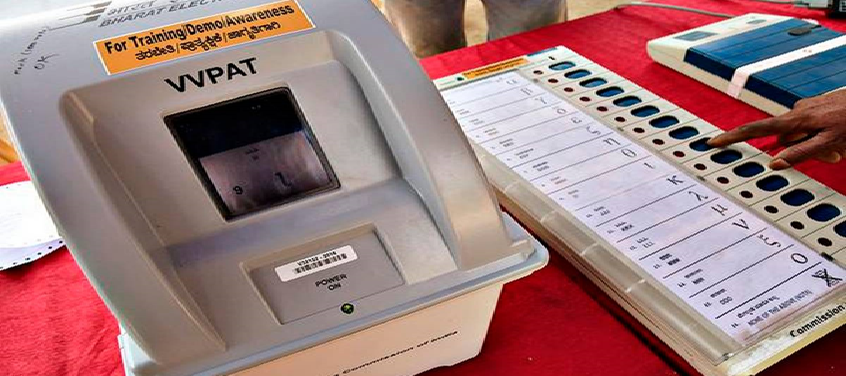
Why in News?
- The Supreme Court recently agreed to consider listing a PIL challenging the constitutional validity of a provision of the Representation of People Act which had led to the Introduction of Electronic Voting Machines (EVMs) in elections.
What does the Petition Say?
- Section 61A of the Representation of People Act, which permitted the use of EVMs, was not passed by Parliament and hence cannot be imposed. The petition wants the provision to be declared null and void.
What is an EVM?
- The Electronic Voting Machine, also known as EVM, is an electronic device used for casting votes. The EVM aims to make the electoral process secure, fair and transparent.
- The voting in India is done using electronic voting machines since 1999 to simplify the voting Process and do Away with Paper Ballots.
Can EVMs be Tampered With?
- The EVM is a tamper-proof machine. It is made of a one-time programmable chip, which cannot be connected to any external device or network such as the internet, Wi-Fi, USB or Bluetooth. Hence, it cannot be corrupted or Modified in any way possible.
What is the Process of Allotment of EVMS to Polling Booths?
- The EVMS are allotted to the polling booths through an elaborated randomization process. This way, there is no prior knowledge on which unit will go to which polling booth almost until the polling date. The machines undergo mock polls at every stage to ensure that they are in the right working condition.
How do the EVMS work?
- An EVM is designed with two units: the control unit and the balloting unit. These units are joined together by a cable.
- While the control unit of the EVM is kept with the presiding officer or the polling officer, the balloting unit is kept within the voting compartment for electors to cast their votes. This is done to ensure that the polling officer verifies your identity.
How to use an EVM?
- In order to enable the voter to cast their vote, the polling officer instead of issuing a ballot paper presses the ballot button. The balloting unit of the machine will have a list of candidate names and party symbols with a blue button next to it. The voter can press the button next to the candidate’s name they wish to vote for.
- When the Voter presses a button of his/ her choice, the machine locks itself and a printed VVPAT slip is displayed for 7 seconds before it’s automatically cut and delivered to a sealed ballot compartment. The votes are stored in the VVPAT or Voter Verifiable Paper Audit Trail machine.
- The EVM can then be opened only with a new ballot number. This way, EVMs ensure that one person gets to vote only once.
About VVPATs:
- VVPAT is a slip generated in a printer-like machine attached to EVM and shows voter’s choice of candidate as well as the party. Generated slip is displayed for a few seconds to the voter to verify before it falls into a sealed drop box which can be opened during counting.
- Advantages: Initially, election results are announced based on the recording of votes given by EVMs. If the election results are disputed, then the votes recorded under VVPATs shall be counted and announced. If there is any mismatch between the two results, then the VVPAT’s result will prevail over the EVMs.
- Disadvantages: However, VVPATs address only the issues at the voting part and the counting part still stays an opaque operation.
- Furthermore, currently, the EC’s VVPAT auditing is limited to one randomly selected polling booth per constituency. But, this sample size will not detect faulty EVMs 98-99 percent of the time.
- VVPATs can be an effective deterrent to fraud, but, the detection of even one faulty EVM in a constituency is followed by the VVPAT auditing of all the EVMs (at all booths) in that constituency = poses a serious logistical challenge and hence VVPATs are not the solution to counting Level Failures.
Why are EVMs used in India?
- The electronic voting machine came in India as a replacement to ballot papers and was first used in No. 70 Parvur assembly constituency in Kerala in 1982.
- In a large scale, the machines have been in use in India since 1999. The machines have been credited with making the voting process simpler, as now vote can be registered with just a click on the button.
- The machines are also cost-effective in the long run. Although the initial cost of an EVM is between Rs 5,000 and Rs 6,000, the machine, on an average, lasts for 15 years.
- Further, the machines run on batteries and hence don’t require electricity. They are also lighter and easily portable compared to the huge ballot boxes.
- The machines also make vote counting process faster, delivering results within hours as against Manual Counting of votes which could take days.
Inter-State River Water Disputes Act, 1956
19, Jan 2022
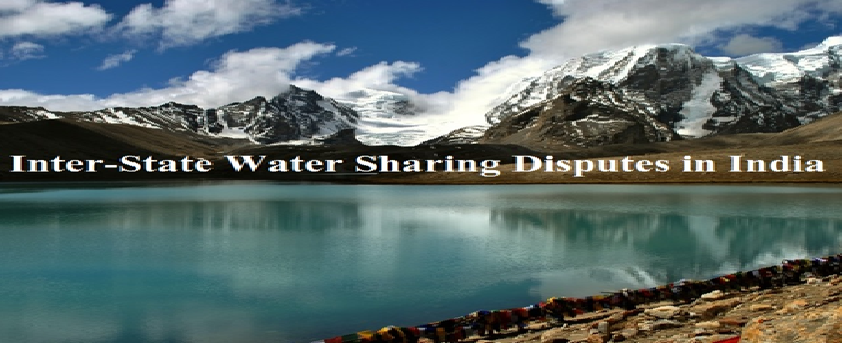
Why in News?
- Karnataka CM has recently observed that the time has come to revisit the Inter-State River Water Disputes Act as it creates more disputes than resolving them.
About the News:
- The chief minister’s statement comes at a time when Karnataka has been involved in inconstant fight with neighbouring Tamil Nadu, Maharashtra, Goa and Andhra Pradesh regarding inter-state water disputes concerning Cauvery, Mahadayi and Krishna rivers.
Need of the Hour:
- The multifold levels of addressing the inter-state water disputes are removed at one Single Stage.
- The solution should be on the basis of Maximum utility of a river basin Capacity and using Technology, and giving away all Political Considerations.
About Inter-state Water Dispute:
- Art 262 provides for the adjudication of inter-state water disputes. It has two following provisions:
- Parliament may by law provide for the adjudication of any dispute or complaint with respect to the use, distribution and control of waters of any inter-state river and river valley.
- Parliament may also provide that neither the Supreme Court nor any other court is to exercise jurisdiction in respect of any such dispute or complaint.
- Under the provisions of the act, the central government has enacted, River boards act (1956) and Inter-state water disputes act (1956).
- The river board act provides for the establishment of river boards for the regulation and Development of the Inter-state River and river valleys. Such a river board is established on the request of the State Governments Concerned.
- The inter-state water dispute act empowers the central government to set up an ad hoc tribunal for the adjudication of a dispute between the two or more states in relation to the water of an inter-state river. The decision of the tribunal would be final and binding. Furthermore, the act bars the SC and any other court to have jurisdiction in this matter.
Issues Surrounding the Interstate Water Dispute Act, 1956:
- The Inter State Water Dispute Act, 1956 which provides the legal framework to address such disputes suffers from many drawbacks as it does not fix any time limit for resolving river water disputes.
- Delays are on account of no time limit for adjudication by a Tribunal, no upper age limit for the Chairman or the Members, work getting stalled due to occurrence of any vacancy and no time limit for publishing the report of the Tribunal.
- The River Boards Act 1956, which is supposed to facilitate inter-state collaboration over water resource development, remained a ‘dead letter’ since its enactment.
- Surface water is controlled by Central Water Commission (CWC) and ground water by Central Ground Water Board of India (CGWB).
- Both bodies work independently and there is no common forum for Common Discussion with state governments on water Management.
Suspension of 12 Maharashtra MLAs
19, Jan 2022
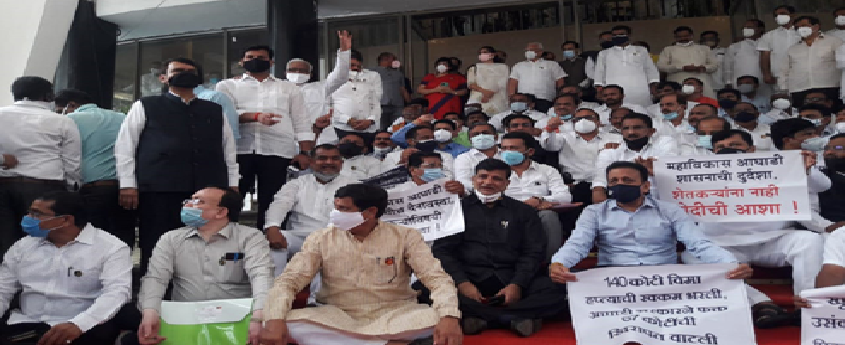
Why in News?
- 12 Maharashtra BJP MLAs have gone to the Supreme Court against their year-long suspension from the Assembly.
About the Issue:
- During the recent hearing, the Supreme Court observed that the suspension of MLAs for a full year is prima facie unconstitutional, and “worse than expulsion”.
- The MLAs were suspended for misbehaviour in the Assembly pertaining to disclosure of data Regarding OBCs.
What have the Suspended MLAs argued?
- In July 2021, Maharashtra Parliamentary Affairs Minister Anil Parab moved a resolution to suspend 12 BJP MLAs. The suspended MLAs argue that the suspension can only be made by the presiding officer under the rules of the house.
- The petition has Submitted that their suspension is “grossly arbitrary and Disproportionate”.
- The challenge relies mainly on grounds of denial of the principles of natural justice, and of violation of laid-down procedure.
- The 12 MLAs have said they were not given an opportunity to present their case, and that the suspension violated their fundamental right to equality before law under Article 14 of the Constitution.
Procedure to be Followed for suspension of MLAs:
- Under Rule 53 of the Maharashtra Legislative Assembly Rules, the power to suspend can only be exercised by the Speaker, and it cannot be put to vote in a resolution.
- Rule 53 states that the “Speaker may direct any member who refuses to obey his decision, or whose conduct is, in his opinion, grossly disorderly, to withdraw immediately from the Assembly”.
- The member must “absent himself during the remainder of the day’s meeting”.
- Should any member be ordered to withdraw for a second time in the same session, the Speaker may direct the member to absent himself “for any period not longer than the remainder of the Session”.
How does the State Government Defend its move?
- Under Article 212, courts do not have jurisdiction to inquire into the proceedings of the legislature.
- Article 212 (1) states that “The validity of any proceedings in the Legislature of a State shall not be called in question on the ground of any alleged irregularity of procedure”.
- Under Article 194, any member who transgresses the privileges can be suspended through the inherent powers of the House.
- Thus, the state government has denied that the power to suspend a member can be exercised only through Rule 53 of the Assembly.
Concern Expressed by the Supreme Court over the Length of the Suspension:
- The basic structure of the Constitution would be hit if the constituencies of the suspended MLAs remained unrepresented in the Assembly for a full year.
- Article 190 (4) of the Constitution says, “If for a period of sixty days a member of a House of the Legislature of a State is without permission of the House absent from all meetings thereof, the House may declare his seat vacant.”
- Under Section 151 (A) of The Representation of the People Act, 1951, “a bye-election for filling any vacancy shall be held within a period of six months from the date of the occurrence of the vacancy”. This means that barring exceptions specified under this section, no constituency can remain without a representative for more than six months.
- Therefore, the one-year suspension was prima facie unconstitutional as it went beyond the six-month limit, and amounted to “not punishing the member but punishing the constituency as a whole”.
What are the Rules on the Length of Suspension of a Member of Parliament?
- Rules of Procedure and Conduct of Business in Lok Sabha provide for the withdrawal of a member whose conduct is “grossly disorderly”, and suspension of one who abuses the rules of the House or wilfully obstructs its business.
- The maximum suspension as per these Rules is “for five consecutive sittings or the remainder of the session, whichever is less”.
- The maximum suspension for Rajya Sabha under Rules 255 and 256 also does not exceed the remainder of the session. Several recent suspensions of members have not continued beyond the session.
- Similar Rules also are in place for state legislative assemblies and councils which prescribe a maximum suspension not exceeding the remainder of the session.
Punjab Lok Congress receives its Party Symbol
12, Jan 2022
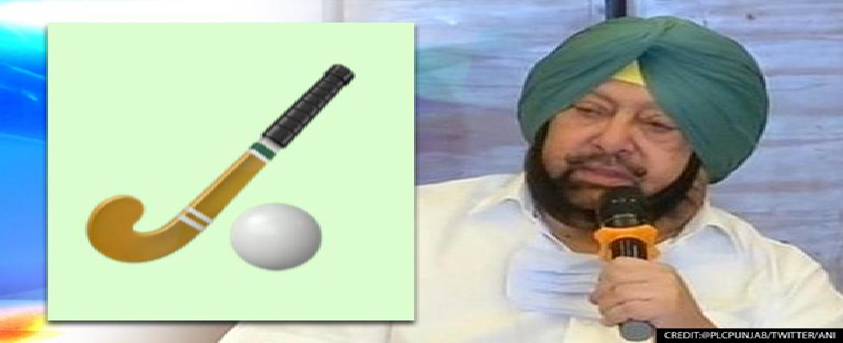
Why in News?
- Former Punjab CM Amarinder Singh’s newly formed party Punjab Lok Congress has received its party symbol – Hockey stick and ball.
Firstly, how are symbols allotted to political parties?
- As per the guidelines, to get a symbol allotted:
- A party/candidate has to provide a list of three symbols from the EC’s free symbols list at the time of filing nomination papers.
- Among them, one symbol is allotted to the party/candidate on a first-come-first-serve basis.
- When a recognised political party splits, the Election Commission takes the decision on assigning the symbol.
Powers of Election Commission:
- The Election Symbols (Reservation and Allotment) Order, 1968 empowers the EC to recognise political parties and allot symbols.
- Under Paragraph 15 of the Order, it can decide disputes among rival groups or sections of a recognised political party staking claim to its name and symbol.
- The EC is also the only authority to decide issues on a dispute or a merger. The Supreme Court upheld its validity in Sadiq Ali and another vs. ECI in 1971.
How many Types of Symbols are there?
- As per the Election Symbols (Reservation and Allotment) (Amendment) Order, 2017, party symbols are either:
- Reserved: Eight national parties and 64 state parties across the country have “Reserved” Symbols.
- Free: The Election Commission also has a pool of nearly 200 “free” symbols that are allotted to the thousands of unrecognised regional parties that pop up before Elections.
What are the Election Commission’s powers in a dispute over the election symbol when a Party Splits?
- On the question of a split in a political party outside the legislature, Para 15 of the Symbols Order, 1968, states: “When the Commission is satisfied that there are rival sections or Groups of a Recognised political party each of whom claims to be that party the Commission may decide that one such rival section or group or none of such rival sections or groups is that recognised political party and the decision of the Commission shall be binding on all such rival sections or groups.”
- This applies to disputes in recognised national and state parties (like the LJP, in this case). For splits in registered but unrecognised parties, the EC usually advises the warring factions to resolve their differences internally or to approach the court.
- Please note that before 1968, the EC issued notifications and executive orders under the Conduct of Election Rules, 1961.
SC to Urgently Hear Hate Speeches Case
11, Jan 2022
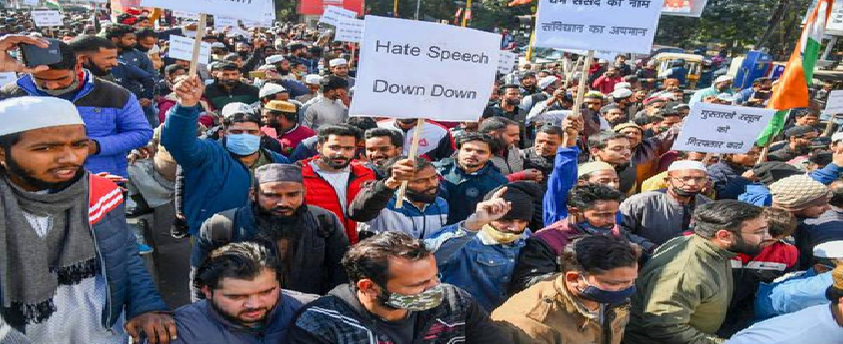
Why in News?
- The Supreme Court recently agreed to urgently hear a petition seeking the arrest and trial of people who made hate speeches, inciting violence towards Muslims, at the Haridwar Dharm Sansad.
What is Hate Speech?
- According to Law Commission of India (267th report), hate speech is “incitement to hatred primarily against a group of persons defined in terms of race, ethnicity, gender, sexual orientation, religious belief and the like”
- The report of the commission further clarifies that hate speech is “any word written or spoken, signs, visible representations within the hearing or sight of a person with the Intention to cause fear or alarm, or Incitement to Violence.
What are the Constitutional Provisions Regarding the Freedom of Speech?
- Article 19(1)(a) of the Indian Constitution guarantees freedom of speech and expression. Any restriction on this right shall only be permitted if the speech falls within one of the eight grounds set out in Article 19(2) of the Constitution.
- The freedom of speech under Article 19(1)(a) includes the right to express one’s views and opinions at any issue through any medium, e.g. by words of mouth, writing, printing, picture, film, movie, etc.
- It thus includes the freedom of communication and the right to propagate or publish an opinion.
Can Freedom of Speech be Curtailed?
- This right is subject to reasonable restrictions being imposed under Article 19(2). Out of the eight different grounds listed on Article 19(2) of the Constitution, the majority of hate speech laws are saved by the ‘public order’ exception. The eight different grounds are;
- Security of the State.
- Friendly relations with FOREIGN STATES.
- Public order.
- Decency and morality.
- Contempt of court.
- Incitement to an offence, and
- Sovereignty and integrity of India.
- Reasonable restrictions on these grounds can be imposed only by a duly enacted law and not by executive action.
Issues of Social Media Misuse:
- Rumour Mongering: Fake narratives on online platforms have real life implications. For example, recently in India, online rumours, regarding child traffickers, through popular messaging platform WhatsApp, led to a spate of lynching’s in rural areas.
- Facilitating Polarisation: It enables the Communalising agents to polarise people for Electoral Gains.
- For example, during the election campaign of recently conducted Delhi legislative assembly elections, a leader enticed crowds with the use of communalising and violence on social media platforms.
- Following this, a young man translated these words into reality by opening fire on protesters.
- This incident highlighted how the spread of hate speech through social media has real consequences.
- Social Media AI poorly adapted to local languages: Social media platforms’ Artificial Intelligence based Algorithms that filter out hate speeches are not adapted to local languages. Also, the companies have invested little in staff fluent in them. Due to this, it failed to limit the ultranationalist Buddhist monks using Facebook for disseminating hate speech which eventually led to Rohingya Massacres.
Way Forward:
- Harmonising the Laws: Harmonising the regulations to check misuse of social media are scattered across multiple acts and rules.
- Thus, there is a need to synchronise the relevant provisions under the Indian Penal Code, the Information Technology Act and Criminal Procedure Code.
- Obeying the regulation by Supreme Court: In Shreya Singhal v. Union of India (2015) case, Supreme Court gave a verdict on the issue of online speech and intermediary liability in India.
- It struck down the Section 66A of the Information Technology Act, 2000, relating to restrictions on online speech, on grounds of violating the freedom of speech guaranteed under Article 19(1)(a) of the Constitution of India.
- It also gave the direction on how hate content should be regulated and the government should follow this direction, where the user reports to the intermediary and the platforms then takes it down after following due process.
- Transparency obligation for Digital Platforms: Digital platforms can be made to publish the name and amount paid by the author in the event that content is sponsored.
- For example, with regard to fake news, France has an 1881 law that defines the criteria to establish that news is fake and being disseminated deliberately on a large scale.
- A legal injunction should be created to swiftly halt such news from being disseminated.
- Establishing Regulatory Framework: Responsible broadcasting and institutional arrangements should be made with consultations between social media platforms, media Industry bodies, civil society and law enforcement as an ideal regulatory framework.
- Even global regulations could be made to establish baseline content, electoral integrity, privacy, and data standards.
- Creating Code of Conduct: It can be framed without creating an ambiguous statutory structure that could leave avenues for potential legislative and state control.
- For example, the European Union has also established a code of conduct to ensure non-proliferation of hate speech under the framework of a ‘digital single market.’
Centre yet to notify rules of Citizenship Amendment Act
10, Jan 2022
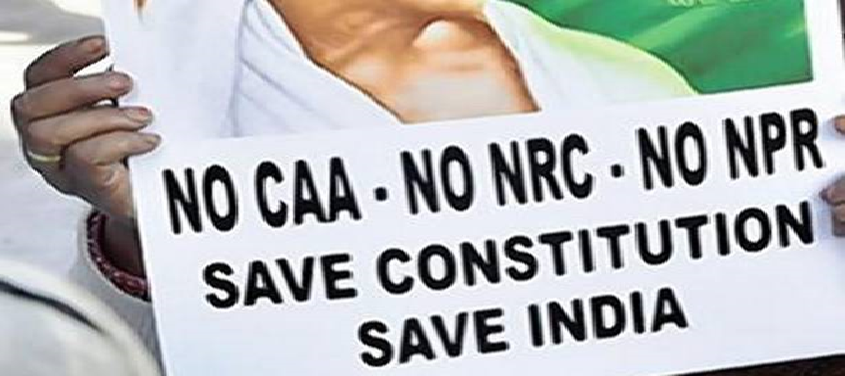
Why in News?
- The Ministry of Home Affairs (MHA) did not notify the Citizenship (Amendment) Act, 2019 rules even the third extended deadline after the Act was passed.
About the News:
- The CAA was passed by the Lok Sabha in Dec 9, 2019, by the Rajya Sabha on Dec 11, 2019 and was assented by the President on December 12, 2019.
- The MHA issued a notification later that the provisions of the act will come into force from Jan 10, 2020.
- January 9 was the last day of an extension it sought from the two parliamentary committees in the Lok Sabha and the Rajya Sabha to frame the rules.
- But still the rules are not yet notified.
- The legislation cannot be implemented without the rules being notified.
About the CAA and Foreigners Tribunal:
- The Parliament passed the Citizenship Amendment Act (CAA), 2019 that seeks to give citizenship to refugees from the Hindu, Christian, Buddhist, Sikh and Zoroastrian communities fleeing religious persecution from Pakistan, Bangladesh and Afghanistan, who came to India before 31st December, 2014.
- Residential Requirement for citizenship through naturalization from the above said countries is at least 5 years. Residential requirement for citizenship through naturalization for others is 11 years.
- The Act applies to all States and Union Territories of the country.
- The beneficiaries of Citizenship Amendment Act can reside in any state of the country.
- In 1964, the govt. brought in the Foreigners (Tribunals) Order.
- Advocates not below the age of 35 years of age with at least 7 years of practice (or) Retired Judicial Officers from the Assam Judicial Service (or) Retired IAS of ACS Officers (not below the rank of Secretary/Addl. Secretary) having experience in quasi-Judicial Works.
- The Ministry of Home Affairs (MHA) has amended the Foreigners (Tribunals) Order, 1964, and has empowered district magistrates in all States and Union Territories to set up tribunals (quasi-judicial bodies) to decide whether a person staying illegally in India is a foreigner or not.
- Earlier, the powers to constitute tribunals were vested only with the Centre.
- Typically, the tribunals there have seen two kinds of cases: those concerning persons against whom a reference has been made by the border police and those whose names in the electoral roll has a “D”, or “doubtful”, marked against them.
Who are Illegal Immigrants?
- According to the Citizenship Act, 1955, an illegal immigrant is one who enters India without a valid passport or with forged documents, or a person who stays beyond the Visa Permit.
What is NRC?
- The National Register of Citizens (NRC) is meant to identify a bona fide citizen.
- In other words, by the order of the Supreme Court of India, NRC is being currently updated in Assam to detect Bangladeshi nationals who might have entered the State illegally after the midnight of March 24, 1971.
- The date was decided in the 1985 Assam Accord, which was signed between the then Prime Minister Rajiv Gandhi and the AASU.
- The NRC was first published after the 1951 Census in the independent India when parts of Assam went to the East Pakistan, now Bangladesh.
- The first draft of the updated list was concluded by December 31, 2017.
Arguments against the Act:
- The Fundamental Criticism of the Act has been that it specifically targets Muslims. Critics argue that it is violative of Article 14 of the Constitution (which guarantees the right to equality) and the principle of secularism.
- India has several other refugees that include Tamils from Sri Lanka and Hindu Rohingya from Myanmar. They are not covered under the Act.
- Despite exemption granted to some regions in the North-eastern states, the prospect of citizenship for massive numbers of illegal Bangladeshi migrants has triggered deep anxieties in the states.
- It will be difficult for the government to differentiate between Illegal Migrants and those Persecuted.
Arguments in Favour:
- The government has clarified that Pakistan, Afghanistan and Bangladesh are Islamic republic’s where Muslims are in majority hence they cannot be treated as persecuted minorities. It has assured that the government will examine the application from any other community on a case to case basis.
- This Act is a big boon to all those people who have been the victims of Partition and the subsequent conversion of the three countries into theocratic Islamic republics.
- Citing partition between India and Pakistan on religious lines in 1947, the government has argued that millions of citizens of undivided India belonging to various faiths were staying in Pakistan and Bangladesh from 1947.
- The constitutions of Pakistan, Afghanistan and Bangladesh provide for a specific state religion. As a result, many persons belonging to Hindu, Sikh, Buddhist, Jain, Parsi and Christian communities have faced persecution on grounds of religion in those countries.
- Many such persons have fled to India to seek shelter and continued to stay in India even if their travel documents have expired or they have incomplete or no documents.
- After Independence, not once but twice, India conceded that the minorities in its neighbourhood is its responsibility. First, immediately after Partition and again during the Indira-Mujib Pact in 1972 when India had agreed to absorb over 1.2 million refugees. It is a historical fact that on both occasions, it was only the Hindus, Sikhs, Buddhists and Christians who had come over to Indian side.
Don’t indulge in Hate Speech, says Vice President
04, Jan 2022
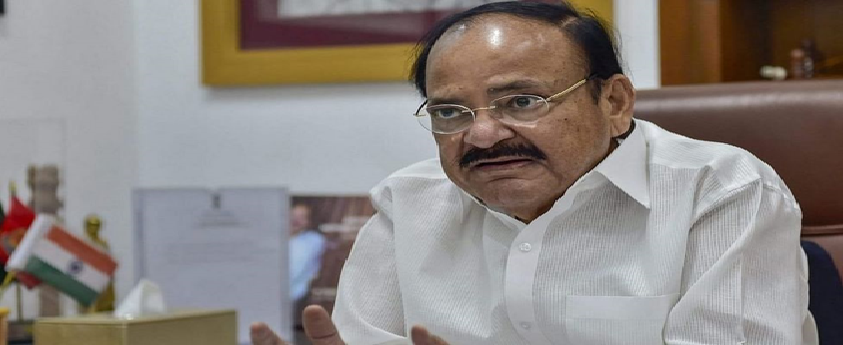
Why in News?
- Vice President M Venkaiah Naidu recently expressed his strong disapproval of attempts to ridicule other Religions and create dissensions in the society, saying every person has the right to Practice and Preach his or her Faith in the Country.
What is Hate Speech?
- According to Law Commission of India (267th report), hate speech is “incitement to hatred primarily against a group of persons defined in terms of race, ethnicity, gender, sexual orientation, religious Belief and the like”.
- The report of the Commission Further Clarifies that hate speech is “any word written or spoken, signs, visible representations within the hearing or sight of a person with the Intention to cause fear or alarm, or Incitement to violence.
What are the Constitutional Provisions regarding the Freedom of speech?
- Article 19(1)(a) of the Indian Constitution guarantees freedom of speech and expression. Any restriction on this right shall only be permitted if the speech falls within one of the eight grounds set out in Article 19(2) of the Constitution.
- The freedom of speech under Article 19(1)(a) includes the right to express one’s views and opinions at any issue through any medium, e.g. by words of mouth, writing, printing, picture, film, movie, etc.
- It thus includes the freedom of communication and the right to propagate or publish an opinion.
Can Freedom of speech be curtailed?
- This right is subject to reasonable restrictions being imposed under Article 19(2). Out of the eight different grounds listed on Article 19(2) of the Constitution, the majority of hate speech laws are saved by the ‘public order’ exception. The eight different grounds are;
- Security of the State.
- Friendly relations with foreign States.
- Public order.
- Decency and morality.
- Contempt of court.
- Incitement to an offence, and
- Sovereignty and integrity of India.
- Reasonable restrictions on these grounds can be imposed only by a duly enacted law and not by executive action.
Issues of Social Media Misuse:
- Rumour Mongering: Fake narratives on online platforms have real life implications. For example, recently in India, online rumours, regarding child traffickers, through popular messaging platform WhatsApp, led to a spate of lynching’s in rural areas.
- Facilitating Polarisation: It enables the communalising agents to polarise people for Electoral Gains.
- For example, during the election campaign of recently conducted Delhi legislative assembly elections, a leader enticed crowds with the use of communalising and violence on social media platforms.
- Following this, a young man translated these words into reality by opening fire on protesters.
- This incident highlighted how the spread of hate speech through social media has real consequences.
- Social Media AI poorly adapted to local languages: Social media platforms’ artificial intelligence based algorithms that filter out hate speeches are not adapted to local languages. Also, the companies have invested little in staff fluent in them. Due to this, it failed to limit the ultranationalist Buddhist monks using Facebook for disseminating hate speech which eventually led to Rohingya massacres.
Way Forward:
- Harmonising the Laws: Harmonising the regulations to check misuse of social media are scattered across multiple acts and rules.
- Thus, there is a need to synchronise the relevant provisions under the Indian Penal Code, the Information Technology Act and Criminal Procedure Code.
- Obeying the regulation by Supreme Court: In Shreya Singhal v. Union of India (2015) case, Supreme Court gave a verdict on the issue of online speech and intermediary liability in India.
- It struck down the Section 66A of the Information Technology Act, 2000, relating to restrictions on online speech, on grounds of violating the freedom of speech guaranteed under Article 19(1)(a) of the Constitution of India.
- It also gave the direction on how hate content should be regulated and the government should follow this direction, where the user reports to the intermediary and the platforms then takes it down after following due process.
- Transparency obligation for digital platforms: Digital platforms can be made to publish the name and amount paid by the author in the event that content is sponsored.
- For example, with regard to fake news, France has an 1881 law that defines the criteria to establish that news is fake and being disseminated deliberately on a large scale.
- A legal injunction should be created to swiftly halt such news from being disseminated.
- Establishing regulatory framework: Responsible broadcasting and institutional arrangements should be made with consultations between social media platforms, media industry bodies, civil society and law enforcement as an ideal regulatory framework.
- Even global regulations could be made to establish baseline content, electoral integrity, privacy, and data standards.
- Creating Code of Conduct: It can be framed without creating an ambiguous statutory structure that could leave avenues for potential legislative and state control.
- For example, the European Union has also established a code of conduct to ensure non-proliferation of hate speech under the framework of a ‘digital single market.’
8 Lakh Income reasonable cap for EWS Quota, Centre tells SC
03, Jan 2022
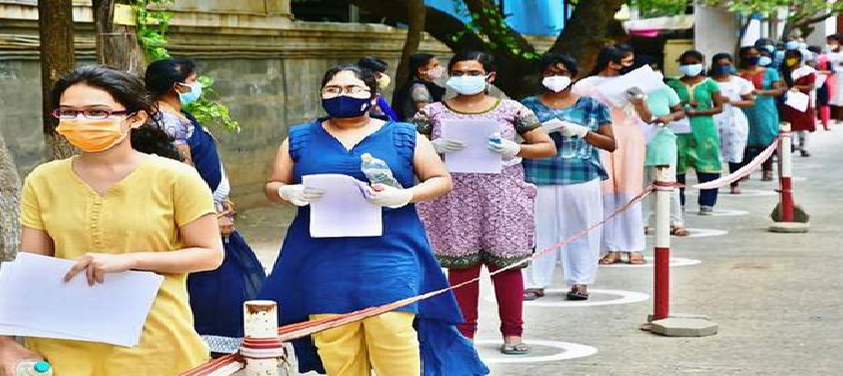
Why in News?
- A Government Committee Report in the Supreme Court has said that “income” is a “feasible criterion” for Defining the “Economical Weaker Sections” (EWS) in society and the annual family income of ₹8 lakh is a “reasonable” threshold to determine EWS in order to extend reservation in Admissions and Jobs.
About the News:
- The committee report as part of a government affidavit concluded that a feasible criterion for defining EWS can be based on income [family income]. A threshold of ₹8 lakh of annual family income, in the current situation, seems reasonable for determining EWS.
- The committee did not agree with the notion that the Centre had “mechanically adopted” ₹ 8 lakh as a number because it was also used for the OBC creamy layer cut-off. It said the Income Criterion for EWS was “more stringent” than the one for the OBC creamy layer.
What is the Issue?
- The report is the result of the Supreme Court’s repeated grilling of the government, since October, to explain how it zeroed in on the figure of ‘₹8 lakh’ as the annual income criterion to identify EWS among forward classes of society for grant of 10% reservation in NEET medical admissions under the All India Quota (AIQ) category.
- The court was hearing a batch of petitions filed by NEET aspirants challenging a July 29 notification of the Centre announcing 27% quota to OBCs and 10% reservation to EWS in AIQ.
- The Supreme Court’s query was significant as the One Hundred and Third Constitutional Amendment of 2019, which introduced the 10% EWS quota, is itself under challenge before a larger Bench.
- The Amendment is under question for making economic criterion as the sole ground for grant of Reservation Benefits.
- On November 25, the Centre had informed the court that it had taken a considered decision to revisit the criteria for determining EWS.
- The Centre had then formed an expert committee comprising Ajay Bhushan Pandey, former Finance Secretary; professor V.K. Malhotra, Member Secretary, ICSSR; and Sanjeev Sanyal, Principal Economic Adviser to the Government of India. The committee had submitted its report on December 31.
What does the Committee’s Report Says?
- The Current Gross Annual Family Income limit for EWS of ₹8 lakh or less may be retained. In other words, only those families whose annual income is up to ₹8 lakh would be eligible to get the benefit of EWS reservation.
- The committee said the ₹8 lakh criterion struck a “fine balance” between over-inclusion and inclusion errors.
- The figure ensures that most low-income people who are not required to pay income tax are not excluded and are covered in EWS and at the same time it should not be so high that it becomes over-inclusive by including many incomes tax-paying middle-and high-income families into EWS.
- Though we may not completely eliminate yet we can try to minimise both exclusions as well as inclusion errors. Therefore, considering that the currently effective income tax exemption limit is around ₹8 lakh for individuals, the committee is of the view that the gross annual income limit of ₹8 lakh for the entire family would be reasonable for inclusion into EWS.
What are the Centre’s Argument?
- Firstly, EWS’s criteria relates to the financial year prior to the year of application whereas the income criterion for the creamy layer in OBC category is applicable to gross annual income for three consecutive years.
- Secondly, in case of OBC creamy layer, income from salaries, agriculture and traditional artisanal professions are excluded from the consideration whereas the ₹8 lakh criteria for EWS includes all sources, including farming. So, despite being the same cut-off number, their composition is different and hence, the two cannot be equated.
- It found no fault in the uniform application of the ₹8-lakh criteria across the country.
- The desirability of a uniform income-based threshold has been upheld by the Supreme Court, and it can be adopted across the country as a matter of Economic and Social Policy.
Who are “Economically Weaker Sections”?
- For the purposes of article 15 and article 16, “economically weaker sections” shall be such as may be notified by the State from time to time on the basis of family income and other Indicators of Economic Disadvantage.’
- Central Government of India has specified certain criteria for identifying the EWS. This will be a class distinct from the already specified classes of SCs, STs and socially and educationally backward classes (OBCs).
- The EWS quota applies to household with
- Annual household income below Rs 8 lakh.
- Agriculture land below 5 acres.
- Residential house below 1000 sq ft.
- Residential plot below 100 yards in notified municipality.
- Residential plot below 200 yards in non-notified municipality area.
What are the Implications?
- The 10% reservation will be in addition to the existing cap of 50% reservation for the Scheduled Castes, Scheduled Tribes and the Other Backward Classes, taking total reservation to 60%.
- The quota targets the poor among the upper castes. This will be over and above 50% Mandated by Constitution and hence the need for Constitution amendment Bill.
SC verdict in Indira Sawhney case:
- The proposed law would face roadblocks if challenged in the Supreme Court.
- A nine-judge Constitution Bench of the Supreme Court in the Indira Sawhney case of 1992 specifically answered the question “whether backward classes can be identified only and exclusively with reference to the economic criterion.”
- The constitution bench had categorically ruled that a backward class cannot be determined only and Exclusively with reference to economic criterion.
- The bench had held that Economic Criterion may be a consideration or basis along with, and in addition to, social backwardness, but it can never be the sole criterion.
- The bench in its judgement declared 50% quota as the rule unless extraordinary situations “inherent in the great diversity of this country and the people” happen. Even then, the court stated that extreme caution is to be exercised and a special case should be made out.
Trinamool’s Derek O’Brien suspended for Unruly Behaviour
29, Dec 2021
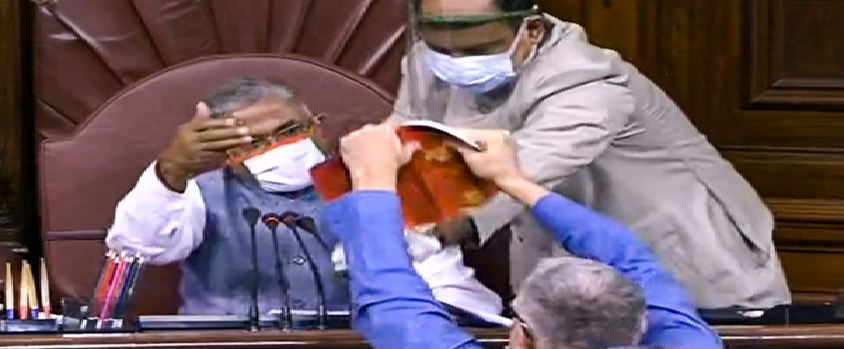
Why in News?
- Trinamool Congress floor leader Derek O’Brien was suspended from Rajya Sabha recently for the remaining days of the winter session for ‘unruly behaviour’ of hurling rule book at the Chair.
About Rule 256 of the General Rules of Procedure of the Rajya Sabha
- The Chairman invoked rule 256 to suspend them.
- Under Rule 256 (‘Suspension of Member’) “The Chairman may, if he deems it necessary, name a member who disregards the authority of the Chair or abuses the rules of the Council by persistently and willfully obstructing the business thereof.
- If a member is so named by the Chairman he shall forthwith put the question on a motion being made, no amendment, adjournment or debate being allowed, that the member (naming him) be suspended from the service of the Council for a period not exceeding the remainder of the Session:
- Provided that the Council may, at any time, on a motion being made, resolve that such suspension be terminated.
- A member suspended under this rule shall forthwith quit the precincts of the Council.
How is suspension under Rule 256 different from Suspension under Rule 255?
- Rule 255 provides for ‘Withdrawal of Member’; whereas Rule 256 provides for Suspension of a Member.
- Under Rule 255, “of the General Rules of Procedure of the Rajya Sabha, “The Chairman may direct any member whose conduct is in his opinion grossly disorderly to withdraw immediately from the Council and any member so ordered to withdraw shall do so forthwith and shall absent himself during the remainder of the day’s meeting.”
Differences in Powers of Speaker and Chairman of Rajya Sabha:
- Like the Speaker in Lok Sabha, the Chairman of Rajya Sabha is empowered under Rule Number 255 of its Rule Book to “direct any Member whose conduct is in his opinion grossly disorderly to withdraw immediately” from the House.
- Unlike the Speaker, however, the Rajya Sabha Chairman does not have the power to suspend a Member. The House has to adopt a motion suspending the Member from the service of the House for a period not exceeding the remainder of the session.
What is the Additional Power in Lok Sabha?
- Similar rules for the withdrawal (Rule 373) and suspension (Rule 374) are in place for Lok Sabha as well. Under Rule 374A, however, there is an additional provision for “automatic suspension” of an errant member: “Notwithstanding anything contained in Rules 373 and 374, in the event of grave disorder occasioned by a member coming into the well of the House or abusing the Rules of the House persistently and wilfully obstructing its business by shouting slogans or otherwise, such member shall, on being named by the Speaker, stand automatically suspended from the service of the House for five consecutive sittings or the remainder of the session, whichever is less.”
Procedure to be followed for suspension of Rajya Sabha MPs:
- The Chairman may “name a Member who disregards the authority of the Chair or abuses the rules of the Council by persistently and wilfully obstructing” business.
- In such a situation, the House may adopt a motion suspending the Member from the service of the House for a period not exceeding the remainder of the session.
- The House may, however, by another motion, terminate the suspension.
Efforts to bring Order in the House:
- As Chairman of Rajya Sabha, Vice-President Ansari had attempted several steps to bring order to the House. In 2013, he mooted a number of radical solutions to maintain decorum. This included:
- Naming and shaming MPs in the Rajya Sabha bulletin for stepping outside House rules. Those named were to include members who came into the Well, or indulged in other grossly disorderly behaviour. The telecast of proceedings to be deferred to prevent visuals of disorder from being made public.
How can Suspension of MPs be Justified?
- The solution to unruly behaviour has to be long-term and consistent with democratic values.There can be no question that the Enforcement of the supreme authority of the Presiding Officer is essential for smooth conduct of Proceedings.
- However, a balance has to be struck. It must be remembered that the job of the Presiding Officer is to run the House, not to lord over it.
Six Additional Seats for Jammu and one for Kashmir Proposed
29, Dec 2021
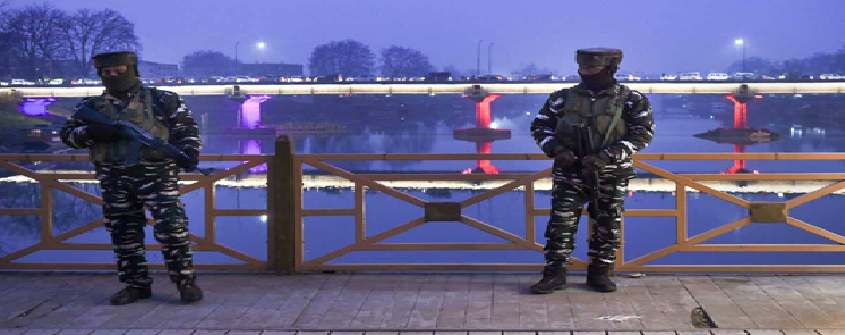
Why in News?
- The Draft Paper of the Delimitation Commission has proposed seven additional Assembly seats for Jammu and Kashmir — six in Jammu division and one in Kashmir valley.
About the News:
- For the first time, the commission proposed reserving nine seats for Scheduled Tribes (STs) on the basis of population. Seven seats are proposed for the Scheduled Caste (SC) community.
- With the proposed addition, the total Assembly constituencies in Jammu and Kashmir has risen to 90 — in Jammu, the number of seats has gone up to 43 from 37, and in Kashmir, by one seat to 47.
- An additional 24 seats are proposed to be reserved for Pakistan-occupied Kashmir (PoK).
- Of the seven additional Assembly constituencies in the Union Territory, one each has been proposed in the districts of Kathua, Samba, Rajouri, Reasi, Doda and Kishtwar in Jammu division, and Kupwara in the Kashmir valley.
What is Delimitation?
- Delimitation literally means the process of fixing limits or boundaries of territorial constituencies in a state that has a legislative body.
- Bifurcation of J&K into two UTs has led to redrawing of Assembly constituency boundaries. While, the UT of Ladakh will not have its own legislature, J&K will. This would be similar to Puducherry or Delhi.
- Such delimitation was also necessitated in 2014 when Andhra Pradesh and Telangana were bifurcated.
- According to the Delimitation Commission Act, 2002, the Delimitation Commission appointed by the Centre has to have three members: a serving or retired judge of the Supreme Court as the chairperson, and the Chief Election Commissioner or Election Commissioner nominated by the CEC and the State Election Commissioner as ex-officio members.
How Delimitation Process is done?
- Under Article 82, the Parliament enacts a Delimitation Act after every Census.
- Under Article 170, States also get divided into territorial constituencies as per Delimitation Act after every Census.
- Once the Act is in force, the Union Government sets up a Delimitation Commission.
- The new state assembly shall have 114 seats (currently 107), out of which only 90 will be open for elections, and the remaining 24 will be shadow seats reserved for the areas of the erstwhile state that have been occupied by Pakistan (PoJK).
- For the delimitation exercise, the population figures of 2011 census shall be taken as the basis.
- The J&K Representation of the People Act 1957 has now been invalidated and, instead, delimitation will be done as per the Representation of the People Act, 1950 (as amended from time to time) and provisions of Sections 59, 60 of Act 34 of 2019.
Who Carry out the Exercise?
- Delimitation is undertaken by a highly powerful commission. They are formally known as Delimitation Commission or Boundary Commission.
- These bodies are so powerful that its Orders have the force of law and they cannot be Challenged before any Court.
- Such commissions have been constituted at least four times in India — in 1952 under the Delimitation Commission Act, 1952; in 1963 under Delimitation Commission Act, 1962; in 1973 under Delimitation Act, 1972 and last in 2002 under Delimitation Act, 2002.
- The commissions’ orders are enforced as per the date specified by the President of India. Copies of these orders are laid before the Lok Sabha or the concerned Legislative Assembly. No modifications are permitted.To provide equal representation to equal segments of a population.
- Fair division of geographical areas so that one political party doesn’t have an advantage over others in an election.
- To follow the principle of “One Vote One Value”.
What are the Problems with Delimitation?
- States that take little interest in population control could end up with a greater number of seats in Parliament. The southern states that promoted family planning faced the possibility of having their seats reduced.
- In 2008, Delimitation was done based on the 2001 census, but the total number of seats in the Assemblies and Parliament decided as per the 1971 Census that was not changed.
- The constitution has also capped the number of Lok Shaba & Rajya Sabha seats to a maximum of 550 & 250 respectively and increasing populations are being represented by a Single Representative.
Lok Sabha passes Bill to Link Electoral Rolls with Aadhaar
29, Dec 2021
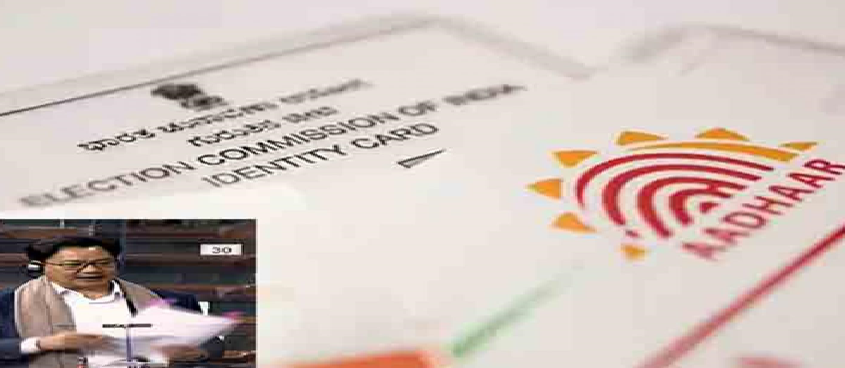
Why in News?
- The Election Laws (Amendment) Bill, 2021 that seeks to link electoral rolls to Aadhaar number has been passed by the Lok Sabha recently.
Need for linking of Aadhaar and Voter ID
- This has been a demand of the Election Commission ever since 2015.
- The EC had launched the National Electoral Law Purification and Authentication Programme to link the Aadhaar number with the voter ID number.
- It said the linking will weed out multiple enrolments in the name of one person.
- At that time, the programme was stalled as the Supreme Court ordered that the use of Aadhaar will remain optional to avail of welfare schemes.
- Following this, the EC modified its proposal and said the linking will be optional.
Other Provisions in the Bill:
- It will provide registration of new voters on four qualifying dates in place of the existing January 1 of every year.
- At present, anyone turning 18 on or before January 1 will be eligible to be registered as a voter. Anyone born after January 1 will have to get enlisted only after a year.
- According to the bill, along with January 1, there will be three other qualifying dates – April 1, July 1 and October 1 – in every calendar year.
- The amendments also allow the elections to become gender neutral for service voters.
- The amendment will help replace the word ‘wife’ with the word ‘spouse’ making the statutes “gender neutral”.
- At present, an Armyman’s wife is entitled to be enrolled as a service voter, but a woman officer’s husband is not. With ‘wife’ being replaced by the term ‘spouse’, this will change.
What are the Issues Raised Over Voter ID-Aadhaar Seeding?
- The proposal fails to specify the extent of data sharing between the ECI and UIDAI databases, the methods through which consent will be obtained, and whether consent to link the databases can be revoked.
- In the absence of a robust Personal Data protection law — a Bill in that regard is yet to clear Parliament — any move to allow sharing of data can prove to be problematic. There would be an intrusion to the privacy of the individual.
SC to hear Pleas on Vanniyar QUOTA LAW
28, Dec 2021
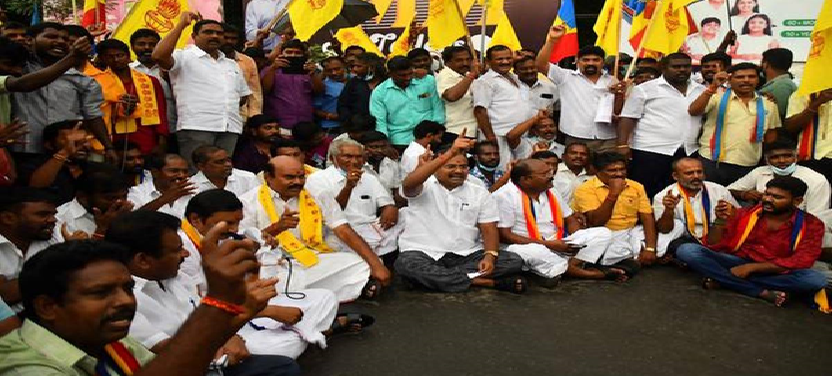
Why in News?
- The Supreme Court recently took on board a batch of petitions, including one by the Tamil Nadu Government, challenging a Madras High Court decision to quash a State quota law which provided 10.5% special reservation to Vanniyars, a most backward community.
About the Issue:
- The Tamil Nadu Assembly had in February 2021, passed the then ruling AIADMK-piloted bill providing internal reservation of 10.5 per cent for Vanniyars, with the incumbent DMK government issuing an order in July, 2021 for its implementation.
- It had split the aggregate 20 per cent reservation for MBCs and Denotified Communities into three separate categories by regrouping castes and provided ten per cent plus sub-quota for Vanniyars, formally known as Vanniakula Kshatriyas.
- In fact petitions had been filed seeking internal reservation. The process of consultation for sub classification within 20 per cent earmarked for MBCs began in 2012. Tamil Nadu BC commission had recommended 10.5 per cent reservation for vanniyakula Kshastriya community, after door to door enumeration.
What was Madras HC’s Observation?
- The judges said the state government cannot come out with such a legislation. This had been explained in the Constitution.
- The petitioners contended that if such a Reservation was implemented, then the Vanniyar community would enjoy Reservation in jobs and admission while 25 other castes under MBC and 68 others would have to share the remaining quota.
What was the Apex Court’s Observation?
- A three-judge Bench of SC ordered that no fresh appointments to State Government services or admissions to educational institutions should be made till February 15, the next date of hearing in the case.
- However, admissions and appointments already made, pursuant to a Madras High Court order of August 25, would not be disturbed.
- The Bench said the case was important and had implications on the future of a large number of students, State Government employees, etc. The court said it had to be heard expeditiously.
About Vanniyar Movement:
- Vanniyar are one of the largest and most consolidated backward communities in the state.
- They had raised massive protests in the mid-1980s demanding 20% reservation in the state, and 2% in central services.
- Their movement was backed by the Justice Party as well as the Self-Respect Movement.
- The agitation began in 1986 with activists sending hundreds of letters and telegrams to then Chief Minister M G Ramachandran seeking an audience.
- As there was no response from MGR and the then Rajiv Gandhi government, agitators started demonstrations in community strongholds, then went on to blockading rail and Road Traffic.
CBI files Chargesheet against Former Allahabad HC judge
28, Dec 2021
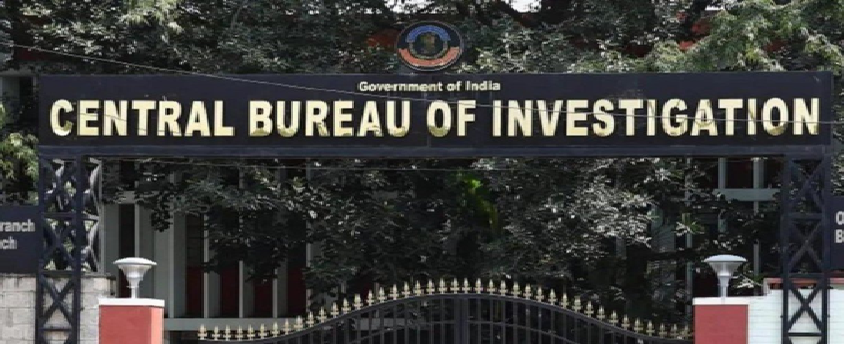
Why in News?
- The CBI has filed its chargesheet against retired Allahabad High Court Judge Justice S.N. Shukla in a corruption case for allegedly favouring a private medical college in his orders.
Historical Background of the Issue:
- The agency had sought the High Court’s approval to prosecute the retired judge earlier this year. Following the grant of sanction, it can now file a charge sheet for further legal proceedings.
- The case was registered in December 2019 on the basis of a preliminary enquiry initiated by the CBI on September 8, 2017, into the alleged commission of gross misconduct by Justice Shukla and others.
- As alleged, the Medical Council of India (MCI) had barred the Prasad Institute of Medical Sciences in May 2017 from admitting students for two years due to sub-standard facilities and non-fulfilment of the requisite criteria. Similar action had been taken against 46 other medical institutions.
- The Trust challenged the order in the Supreme Court. Subsequently, it is alleged, a conspiracy was hatched and the petition withdrawn with the Court’s permission. Then, another petition was filed before a Division Bench of the Allahabad High Court in Lucknow on August 24, 2017.
- The next day, Mr. Quddusi and the institute’s chairman met Justice Shukla at his residence and “delivered illegal gratification”. According to the CBI, the petition was heard later that day by the Division Bench comprising Justice Shukla and a favourable order was passed.
- The MCI challenged the order in the Supreme Court. During the hearing, the Trust did not claim any benefit from the High Court order, but requested that its bank guarantee not be encashed, which was permitted.
- The agency alleged that the institute’s chief then attempted to get back the illegal Gratification from Justice Shukla and a part of it was returned.
Stipulated guidelines by the SC in the K. Veeraswami case:
- The majority held that no criminal case shall be registered under Section 154 of the Criminal Procedure Code (an FIR) against a judge of the High Court, Chief Justice of the High Court or a judge of the Supreme Court unless the government first “consults” the Chief Justice of India.
- The justification given was that the CJI’s assent was imperative as he was a “participatory functionary” in the appointment of judges.
- The Veeraswami case specifically dealt with the Prevention of Corruption Act in judiciary, but the majority judgment had extended its ambit to “any criminal case”.
- “Due regard must be given by the government to the opinion expressed by the Chief Justice. If the Chief Justice is of opinion that it is not a fit case for proceeding under the Act, the case shall not be registered,” the majority judgment held.
- The verdict held that if the Chief Justice of India himself is the person against whom the allegations of criminal misconduct are received, the government shall consult any other judge or judges of the Supreme Court.
- If the CJI allows the FIR to be registered, the government shall, for the second time, consult him on the question of granting sanction for prosecution.
- The Veeraswami judgment holds that “it shall be necessary and appropriate that the question of sanction be guided by and in accordance with the advice of the Chief Justice of India”. The majority in the Constitution Bench classifies a judge as a “public servant”.
- Consultation with the CJI while registering a criminal case against a judge, whether of the High Court or the Supreme Court, has been made mandatory to protect the independence of judiciary.
- Similarly, the Supreme Court has also laid down guidelines for the arrest of a judicial officer of the subordinate judiciary.
What’s next if FIR is Filed?
- The Delhi Judicial Service Association versus State of Gujarat judgment of the Supreme Court was the product of the notorious treatment meted out to the Nadiad Chief Judicial Magistrate by a few Gujarat police officials.
- It had the country’s legal and judicial bodies in an uproar, compelling the Supreme Court to issue directions of the procedure to be followed while arresting a judicial officer. Primarily, the court held that a judicial officer “should be arrested for any offence under intimation to the District Judge or the High Court”.
- The immediate arrest shall only be a “technical or formal arrest”, after which it should be immediately communicated to the District and Sessions Judge of the district concerned and the Chief Justice of the High Court.
- The arrested judicial officer shall not be taken to a police station without the prior orders of the District Judge and no statements shall be recorded from him or her except in the presence of a counsel. He or she will not be handcuffed.
- Section 3 of the Judges (Protection) Act of 1985 protects judges and former judges of the Supreme Court and the High Courts from “any civil or criminal proceedings” for any act, thing or word committed, done or spoken by him in the course of their judicial duty or function. No court shall entertain such complaints.
- Section 77 of the Indian Penal Code exempts judges from criminal proceedings for something said or done during judicial duties.
- However, the government can initiate criminal proceedings against a sitting or former judge of a superior court under sub section (2) of Section 3 of Judges (Protection) Act, 1985 if it can produce material evidence to show that a judgment was passed after taking a bribe.
SC SETS UP PANEL TO LOOK INTO J&K INTERNET CURBS
12, May 2020
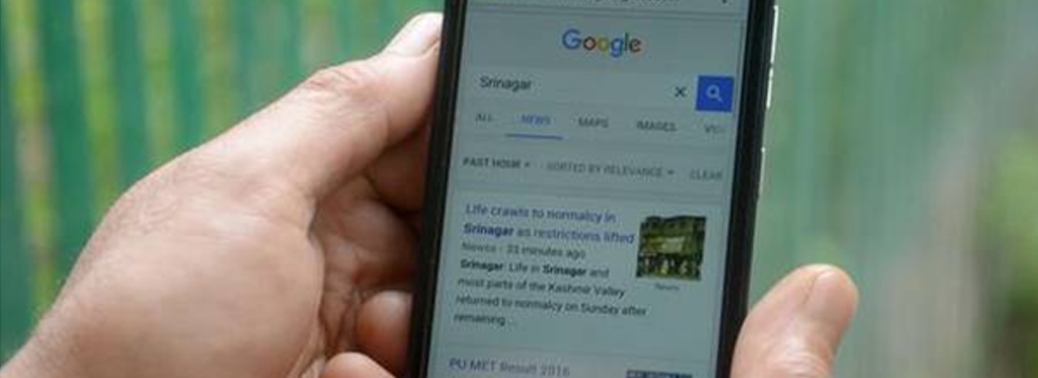
Why in News?
- The Supreme Court has directed that a special committee should be constituted to look into whether 4G internet services should be restored in the Union Territory of Jammu and Kashmir.
About the News:
- The central government had imposed a complete internet shutdown in the erstwhile state of Jammu and Kashmir in August 2019, after scrapping Article 370 which gave J&K its special status. Eight months later, it restored internet services partially, to allow 2G speed for mobile users.
- The court heard arguments by the Jammu and Kashmir government, which focussed on the need for slow internet speed to curb instances of terrorism and violence in the region.
- The administration also submitted that the right to internet access is not a fundamental right and the state can curtail the freedom of speech and right to trade through the internet. It called the internet speech curbs reasonable and asserted that these were necessary to protect the sovereignty, integrity and security of the country.
- The petitioner highlighted the need for maintaining the fundamental right to access of healthcare in times of a pandemic.It is also said that the impact of slow internet on education, contending that students cannot attend classes through video conferencing because of the slow speed of the internet.
What did SC said?
- The Supreme Court said that a special committee led by the Ministry of Home Affairs secretary should be constituted to look into whether 4G internet services should be restored in the Union Territory of Jammu and Kashmir.
- The committee will also include the Department of Communications Secretary of the Union Ministry of Communications and the Chief Secretary of the Union Territory of Jammu and Kashmir.
- This committee has been asked to look into the petitioners’ contention, as well as examine the alternatives suggested by them, on allowing faster internet on a trial basis in areas wherever possible.
- This court has to ensure national security and human rights are balanced. We do recognise that the UT has plunged into a crisis. At the same time the court is cognizant to the concerns Related to Ongoing Pandemic and Hardships.
- The SC also referred to the judgment in the Anuradha Bhasin case, popularly known as the Kashmir internet Shutdown Case.
About Anuradha Bhasin case verdict:
- The Court said that all restrictive orders under Section 144 of CrPC and suspension of internet services in Jammu and Kashmir have to be reviewed.
- The verdict has laid down a framework of how the Internet can be suspended, and what rights and legal recourses a citizen has when it is suspended.
- Right to internet is a fundamental right (subject to reasonable restrictions) included in the freedom of expression under Article 19 of the Indian Constitution.
- Restrictions on fundamental rights could not be in exercise of arbitrary powers. These freedoms could only be restricted as a last resort if “relevant factors” have been considered and no other options are there.
- Any order passed to restrict or suspend judicial scrutiny will be subject to judicial scrutiny.
- Suspension of internet services indefinitely is also a violation of telecom rules.
SC on section 144:
- Sec 144 cannot be used to suppress the legitimate expression of opinion or grievance, or the exercise of democratic rights.
- When Sec 144 is imposed for reasons of apprehended danger, that danger must be an “emergency”.
- The imposition of Sec 144 must strike a balance between the rights of the individual and the concerns of the state.
- Powers under Sec 144 should be exercised in a reasonable and bona fide manner, and the order must state material facts in order to enable judicial review.
What are the Criticisms Made?
- Restrictions have virtually abrogated the fundamental rights and paralyzed the lives of seven million people in the region.
- These restrictions have been imposed under the garb of public tranquillity, public order and national security, but national security does not appear in the order imposing Section 144 of the Criminal Procedure Code in the region.
- The shutdown of internet services has severe consequences on business, trade and heavily affects the common people in the region.
What Procedure does the Government follow to Suspend Internet Services?
- The Information Technology Act, 2000, the Criminal Procedure Code (CrPC), 1973 and the Telegraph Act, 1885 are the three laws that deal with suspension of Internet services.
- But before 2017, Internet suspension orders were issued under section 14 of the CrPC.
- In 2017, the central government notified the Temporary Suspension of Telecom Services (Public Emergency or Public Service) Rules under the Telegraph Act to govern suspension of Internet. These Rules derive their powers from Section 5(2) of the Indian Telegraph Act, which talks about interception of messages in the “interests of the sovereignty and integrity of India”.
- Despite the 2017 rules, the government has often used the broad powers under Section 144.
- India also tops the list of Internet shutdowns globally. According to Software Freedom Law Centre’s tracker, there have been 381 shutdowns since 2012, 106 of which were in 2019.
What did the Judgment say on the Rules to be followed?
- The court recognised that the 2017 Rules are the only procedure to be followed to suspend Internet services in the occurrence of a “public emergency” or for it to be “in the interest of public safety”.
- The verdict reiterated that the competent authority to issue an order under the Suspension Rules, in ordinary circumstances, would be the Secretary to the Ministry of Home Affairs.
- The Rules also say that in case the confirmation does not come from a competent authority, the orders shall cease to exist within a period of 24 hours.
- Clear reasons for such orders need to be given in writing, and need to be forwarded to a Review Committee by the next working day.
- The confirmation must not be a mere formality, but must indicate independent application of mind by the competent authority to the order passed by the authorised officer, who must also take into account changed circumstances if any, etc.
- According to the Temporary Suspension of Telecom Services [Public Emergency or Public Service] Rules, 2017 only the Home Secretary of the country and a secretary of a state’s home department can pass such an order.
- These also state that any such order should be taken up by a review committee within five days.
SC ON RIGHT TO RELIGION
12, May 2020
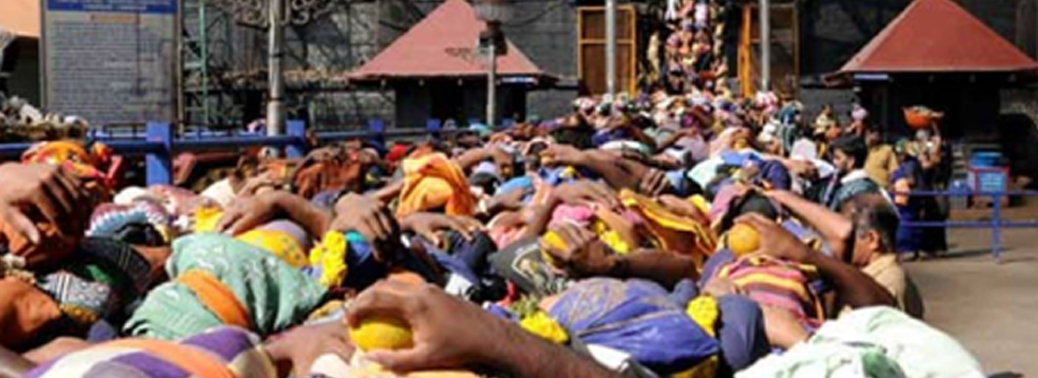
Why in News?
- A Nine-judge Bench of the Supreme Court declared that Superior Courts enjoy untrammelled power to take up any cause to do Complete Justice.
About the News:
- On November 14 last year, a five-judge Bench led by then Chief Justice Ranjan Gogoi did not complete its assigned task of reviewing the apex court’s original Sabarimala judgment of 2018, which allowed women of every age to enter and worship at the temple.
- Instead, it had framed “larger issues” concerning essential religious practices of various religions and clubbed other pending cases on subjects as varied as female genital mutilation among Dawoodi Bohras to entry of Parsi women who married inter-faith into the fire temple and Muslim women into mosques and referred them all to a larger Bench.
- Chief Justice Bobde, who succeeded Justice Gogoi as top judge, set up a nine-judge Bench to hear the reference.
What were the Issues?
Entry of Women into the Sabarimala Temple:
- On 28thSeptember 2018, SC lifted the ban that prevented women and girls between the age of 10 and 50 (mainly menstruating women) from entering the famous Ayyappa shrine in Kerala by a majority verdict of 4:1.
- It held that the centuries-old Hindu religious practice was illegal and unconstitutional (Article 14 and 25).
- Temple custodians argue that women of menstrual age are prohibited from offering prayers as the deity there, Ayyappa, is a celibate.
Muslim Women’s Entry into Mosques:
- In April 2019, the SC was moved to seek directions for allowing Muslim women to enter mosques through the main door, and to have the “Islamic right to visual and auditory access to the ‘musalla’ (main prayer area)”.
- The petition said that “this act of prohibition is void and unconstitutional as such practices are not only repugnant to the basic dignity of a woman as an individual but also violative of the fundamental rights guaranteed under Articles 14, 15, 21 and 25 of the Constitution”.
- The matter was last heard on November 5, 2019, by a Bench comprising CJI-designate Justice S A Bobde and Justices S Abdul Nazeer and Krishna Murari.
Female genital mutilation among Dawoodi Bohras:
- On September 24, 2018, a Bench of SC referred the matter in ‘Sunita Tiwari vs Union of India and Ors’ to a larger Bench of the Supreme Court.
- The petition, filed under Article 32 of the Constitution, had questioned the constitutionality of the practice of Female Genital Mutilation (FGM) or ‘khatna’, or Female Circumcision (FC) or ‘khafd’, which the petitioner said was carried out on every girl child in the Dawoodi Bohra community.
- The petition relied on the UN Convention on the Rights of the Child and the Universal Declaration of Human Rights and urged that the practice is violative of Article 21 (right to life and personal liberty).The Bench submitted that the matter should be referred to a larger Bench, which the SC accepted.
Entry of Parsi Women Married to non-Parsis in the Agyari:
- The Special Leave Petition in ‘Goolrukh Gupta vs Burjur Pardiwala’ arose out of a judgment passed by the Gujarat High Court in 2012.
- The petitioner, Goolrukh Contractor Gupta, moved the High Court in 2010 after her friend who too, like her, was a Parsi married to a Hindu, was denied entry to the Tower of Silence during her mother’s last rites some years before.
- In the court, Goolrukh Gupta’s counsel, argued that the question was, “in the case of marriage between a Hindu and Parsi, does it result in automatic conversion of religion?” The matter hence raised issues of gender justice.
- In December 2017, a Constitution Bench observed that “DNA does not evaporate” after marrying outside one’s religion”, and that by marrying outside her religion, a woman does not “surrender her affection to her Father”.
What was the Apex Court’s Decision?
- There is no fetter on the exercise of discretion of this court in referring questions of law to a larger Bench in review petitions.
- Being a superior court of record, it is for this court to consider whether any matter falls within its jurisdiction or not.
- Unlike a court of limited jurisdiction, the superior court of record is entitled to determine for itself questions about its own jurisdiction.
- It invoked Article 142 of the Constitution “which enables this court to make any order as is necessary for doing complete justice in any cause or matter pending before it.”
What are the Concerns?
- The questioned has now risen that how the nine-judge Bench would determine the law without knowledge of the facts of each individual case.
- There are concerns within the court itself about clubbing these four issues together because this will lead to a situation where not everyone is equally content and a uniform verdict can give rise to religious conflicts.
- In setting itself the task of defining this constitutional morality, the court will now have to go into the question of its limits and boundaries, of its possible clash with religious beliefs and faith.
- The essentiality test impinges on the autonomy and freedom of religion which was meant to guarantee freedom to practice one’s beliefs based on the concept of “inward association” of man with God.
- The Court is creating problems for itself as well as circumscribing individual freedoms and treading into the clergy’s domain.
Way Forward:
- Each of these issues must be considered on their own ground with different redressal mechanisms. On essential religious practice, SC should go case by case rather than aim for a grand unified theory.
- The court has been inconsistent in applying the essential religious practice doctrine and maybe it should be left like that only to avoid further tensions.
- Court’s push for expanding its remit and for hard clarity on complex questions will prove difficult and maybe counterproductive so it should not dwell deeper into the religious matter after a Certain Point.
- The court upheld ideas of freedom and equality and the constitutional promise of a pluralistic and inclusive society while redressing an injustice which should be upheld as a beacon of hope for a just and equal society.
PLEA CHALLENGING APPOINTMENT OF ADDITIONAL JUDGE REJECTED
05, May 2020
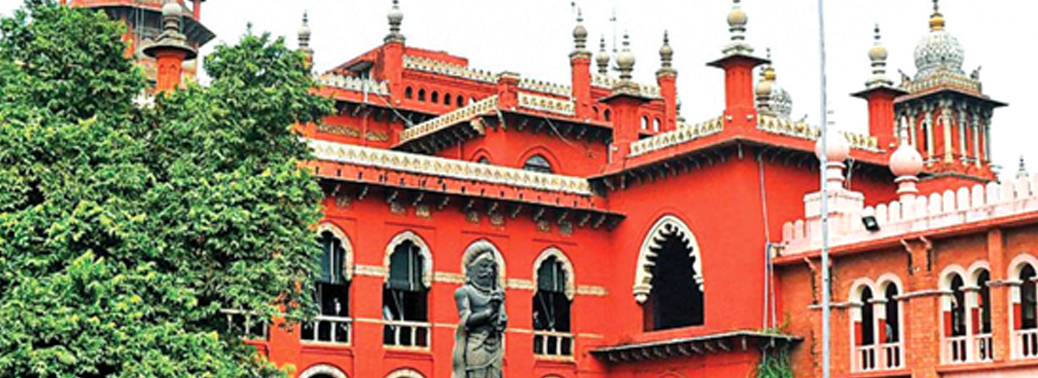
Why in News?
- The Supreme Court rejected a petition filed by a district judge challenging the appointment of a ‘junior’ judicial officer as an additional judge of the Karnataka High Court on the ground that it breaches the Seniority Rule.
What is the Issue?
- In his plea, Shivamogga Principal District Judge RKGMM Mahaswamiji said: It is a case of superseding/passing over of a senior District judge (who was appointed on February 25, 2008, under reserve category ie., Scheduled Caste) by junior district judge and recommendation of Respondent No. 11 (P N Desai) by the collegium of Karnataka High Court.
- It is unlawful, arbitrary and in clear violation of statutory rules / administrative instructions contained in the official memorandum dated October 9, 1985, and involved bias of malafide and it clearly violated the functional rights guaranteed to the petitioner under Articles 14 and 16 of the Indian Constitution.
Appointment of the Judges of High Courts:
- The procedure of appointing the Judges of the High Courts in India is slightly different from the appointment of the Judges of the Supreme Court.
- As per article 217, the chief Justice of the high court is appointed by the President in consultation with the Chief justice of India as well as the Governor of the state in question.
- A collegium system has evolved over the years in which a Collegium headed by the CJI makes recommendation to the government for appointment of judges.
- The Collegium recommends the names to the law ministry which after scrutinizing send the paper to the president.
- The president either approves the names or returns the names for reconsideration of the Supreme Court.
- If still the Supreme Court sends the same names president appoints the persons recommended.
Qualification to Become a High Court Judge:
- A person to be appointed as a judge of a high court should be a citizen of India. Further,
- He should have held a judicial office in the territory of India for ten years or
- He should have been an advocate of high court(s) for ten years.
- There is no minimum age fixed for high Court judges, and unlike in Supreme Court, there is no provision for appointment of a distinguished jurist as a judge of a high court.
Term and Salary of HC Judges:
- A Judge of High Court holds the office until he completes the age of 62 years. (In Supreme Court it is 65 years).
- The salaries and allowances of the Chief Justice of High Court and Judges of the High Court are decided by the parliament by law, time to time.
- The salaries and other expenses of the judges and maintenance of the state high courts are charged from consolidated fund of the state.
- Pension of retired high court judges comes from Consolidated Fund of India.
Removal of the Judge of a High Court:
- A Judge of the High Court can be removed from office only for proven misbehaviour or incapacity and only in the same manner in which a Judge of the Supreme Court is removed.
- The President of India can remove a Judge of the High Court, from his office only if each house of the parliament passes a resolution by a two third majority of its members present and voting in each house requesting him to remove the Judge.
How HC Judges are transferred?
- Transfer of High Court Judges is done by the President in consultation with the following
- Chief justice of India’ whose opinion is formed by senior most judges of the Supreme Court.
- Chief Justice of the High court from where transfer is to take place.
- Chief Justice of the High Court to where the transfer is to take place
Post retirement Jobs of HC Judges:
- The retired permanent judges of a high court are prohibited from pleading or acting in any court or before any authority in India except the Supreme Court and the other high courts.
- However, Government Generally uses the retired higher judiciary judges as heads of various Commissions.
- There has been a demand from certain sections of the society that there should be a “cool off” period of two years for the Retired Judges before they are Installed in other offices.
CONSTITUTIONAL PROVISIONS REGARDING MINORITY EDUCATIONAL INSTITUTIONS
01, May 2020

Why in News?
- In a significant judgment, the Supreme Court has ruled that the National Eligibility cum Entrance Test (NEET) for admission to graduate and postgraduate medical and dental courses, does not violate the rights of minorities under the Constitution.
About the Issue:
- The ruling came on a bunch of petitions originally filed in 2012 by the Christian Medical College, Vellore and others, challenging the notifications for NEET issued by the Medical Council of India (MCI) and the Dental Council of India (DCI).
- NEET took away the right of the religious and linguistic minority institutions to administer their business, including the right to admit students from the minority community in terms of their own standards.
What are the observations made by the Court?
- Rights of the minority institutions under Articles 19(1)(g) and 30 read with Articles 25, 26 and 29(1) do not come in the way of securing transparency and recognition of merits in matter of admissions.
- State has the right to frame regulatory regime for aided/ unaided minority/private institutions, as mandated by the Constitution. There cannot be any other examination for admitting students.
- NEET is a regulatory measure that is in the larger national interest.
- The regulatory measures in no way interfere with the rights to administer the institution by the religious or linguistic minorities.
- Besides, regulating academics and imposing reasonable restrictions to ensure educational standards, are in national and public interest.
What are the Constitutional Provisions?
- Article 30(1) recognizes linguistic and religious minorities but not those based on race, ethnicity.
- It recognizes the right of religious and linguistic minorities to establish and administer educational institutions, in effect recognizing the role educational institutions play in preserving distinct culture.
- A majority community can also establish and administer educational institution but they will not enjoy special rights under Article 30(1)(a).
What are the Special Rights Enjoyed by Religious Minority Institutions?
- Under Art 30(1)(a), MEI enjoy right to education as a Fundamental Right. In case the property is taken over by state, due compensation to be provided to establish institutions elsewhere
- Under Article 15(5), MEIs are not considered for reservation
- Under Right to Education Act, MEI not required to provide admission to children in the age group of 6-14 years up to 25% of enrolment reserved for economically backward section of society
- In St Stephens vs Delhi University case, 1992, SC ruled that MEIs can have 50% seats reserved for minorities
- In TMA Pai & others vs State of Karnataka & others 2002 case, SC ruled that MEIs can have separate admission process which is fair, transparent and merit based. They can also separate fee structure but should not charge capitation fee.
NDRF GEARS UP FOR TWIN CHALLENGES – PANDEMIC AND MONSOON
30, Apr 2020
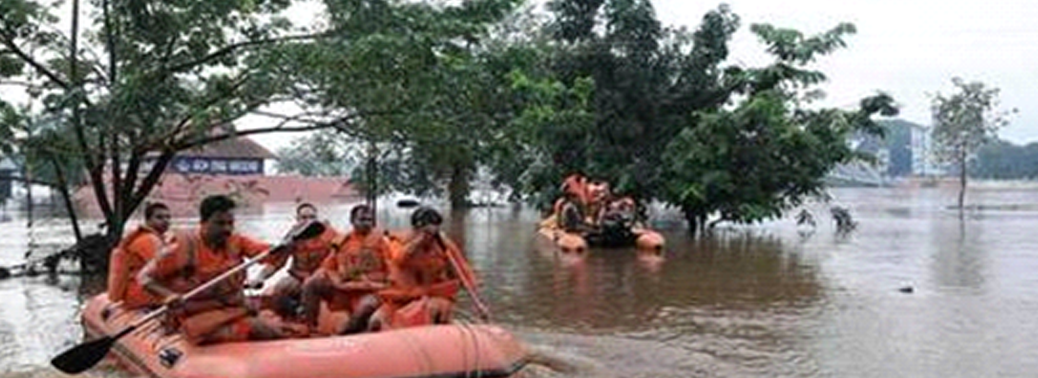
Why in News?
- With monsoon around the corner, the National Disaster Response Force (NDRF) is preparing to face the twin challenge of coronavirus (COVID-19) and floods in different parts of the country.
About the News:
- During the upcoming rainy season, managing the situation in areas that have been reporting COVID-19 cases, particularly in the hotspot and containment zones, will be an uphill task.
- The NDRF has taken note of the latest IMD warning of the likely formation of a low pressure area over the south Andaman Sea and the neighbourhood, which is likely to intensify into a depression during the subsequent 48 hours, triggering moderate and heavy to extreme rainfall in isolated areas.
About NDRF:
- The National Disaster Response Force (NDRF) is a specialised force constituted “for the purpose of specialist response to a threatening disaster situation or disaster” under the Disaster Management Act, 2005.
- The responsibility of managing disasters India is that of the State Government. The ‘Nodal Ministry’ in the central government for management of natural disasters is the Ministry of Home Affairs (MHA).
- National Disaster Response Force (NDRF) is under the National Disaster Management Authority.
- National Disaster Response Force (NDRF) is a force of 12 battalions, organised on Para-military lines, and manned by persons on deputation from the Para-military forces of India: three each from the BSF and CRPF and two each from CISF, ITBP and SSB.
- NDRF in addition to being able to respond to natural disasters has four battalions capable of responding to radiological, nuclear, biological and chemical disasters.
- The Apex Body for Disaster Management in India is the National Disaster Management Authority (NDMA). The Chairman of the NDMA is the Prime Minister.
Why it was Created?
- Two national calamities in quick succession in the form of Orissa Super Cyclone (1999) and Gujarat Earthquake (2001) brought about the realization of the need of having a specialist response mechanism at National Level to effectively respond to disasters. This realization led to the enactment of the DM Act on 26 Dec 2005.
What are the Roles and Mandate of NDRF?
- Specialized response during disasters.
- Proactive deployment during impending disaster situations.
- Acquire and continually upgrade its own training and skills.
- Liaison, Reconnaissance, Rehearsals and Mock Drills.
- Impart basic and operational level training to State Response Forces (Police, Civil Defence and Home Guards).
- Community Capacity Building Programme.
- Organize Public Awareness Campaigns.
BASIC STRUCTURE AND THE KESAVANANDA BHARATI CASE
28, Apr 2020
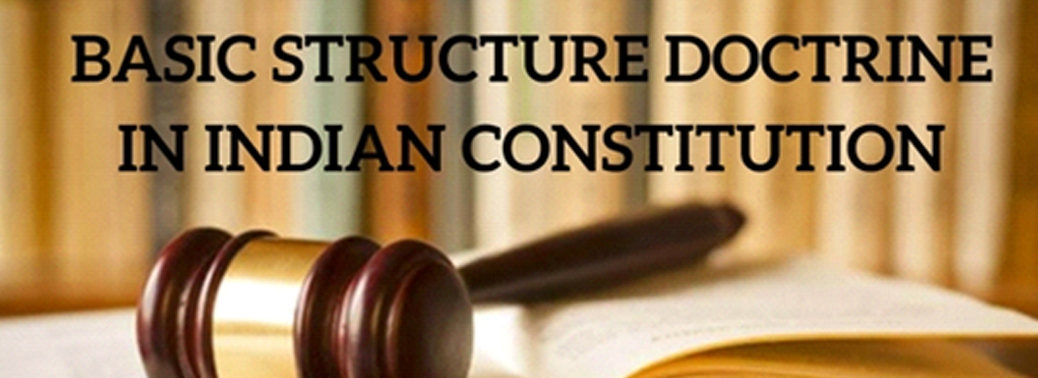
Why in News?
- The concept of ‘basic structure’ came into existence in the landmark judgment in Kesavananda Bharati vs State of Kerala case (1973) 47 years ago on 24thApril 1973.
About the News:
- Exactly forty-seven years ago, on April 24, 1973, Chief Justice Sikri and 12 judges of the Supreme Court assembled to deliver the most important judgment in its history.
- The case of Kesavananda Bharati v State of Kerala had been heard for 68 days, the arguments commencing on October 31, 1972, and ending on March 23, 1973.
- By a 7-6 verdict, a 13-judge Constitution Bench ruled that the ‘basic structure’ of the Constitution is inviolable, and could not be amended by Parliament.
- The basic structure doctrine has since been regarded as a tenet of Indian constitutional law.
Background of the Case:
- All this effort was to answer just one main question: was the power of Parliament to amend the Constitution unlimited?
- In other words, could Parliament alter, amend, abrogate any part of the Constitution even to the extent of taking away all fundamental rights?
- In the early 1970s, the government of then Prime Minister Indira Gandhi had enacted major amendments to the Constitution (the 24th, 25th, 26thand 29th) to get over the judgments of the Supreme Court in RC Cooper (1970), Madhavrao Scindia (1970) and the earlier mentioned Golaknath.
- In RC Cooper, the court had struck down Indira Gandhi’s bank nationalisation policy, and in Madhavrao Scindia it had annulled the abolition of privy purses of former rulers.
- All the four amendments, as well as the Golaknath judgment, came under challenge in the Kesavananda Bharati case– where relief was sought by the religious figure Swami Kesavananda Bharati against the Kerala government vis-à-vis two state land reform laws.
What Constitutes the Basic Structure?
- The Constitutional Bench ruled by a 7-6 verdict that Parliament should be restrained from altering the ‘basic structure’ of the Constitution.
- The court held that under Article 368, which provides Parliament amending powers, something must remain of the original Constitution that the new amendment would change.
- The Court did not define the ‘Basic Structure’, and only Listed a Few Principles— Federalism, Secularism, Democracy — as being its part. Since then, the court has been adding new features to this concept.
Basic Structure’ Since Kesavananda Bharati Case:
- The ‘basic structure’ doctrine has since been interpreted to include the supremacy of the Constitution, the rule of law, Independence of the judiciary, doctrine of separation of powers, Federalism, Secularism, Sovereign Democratic Republic, the Parliamentary system of government, the principle of free and fair elections, welfare state, etc.
Few Criticisms regarding the Verdict:
- Critics of the doctrine have called it undemocratic, since unelected judges can strike down a constitutional Amendment.
- At the same time, its proponents have hailed the concept as a safety valve against Majoritarianism and Authoritarianism.
What are the Outcomes and Implications of the Judgment?
- If the majority of the Supreme Court had held (as six judges indeed did) that Parliament could alter any part of the Constitution, India would most certainly have degenerated into a totalitarian State or had one-party rule.
- At any rate, the Constitution would have lost its supremacy.
- The 39thAmendment prohibited any challenge to the election of the President, Vice-President, Speaker and Prime Minister, irrespective of the electoral malpractice. This was a clear attempt to nullify the adverse Allahabad High Court ruling against Indira Gandhi.
- The 41stAmendment prohibited any case, civil or criminal, being filed against the President, Vice-President, Prime Minister or the Governors, not only during their term of office but forever. Thus, if a person was a governor for just one day, he acquired immunity from any legal proceedings for life.
- If Parliament were indeed supreme, these shocking amendments would have become part of the Constitution.
ARTICLE 164(4) OF THE INDIAN CONSTITUTION
25, Apr 2020

Why in News?
- Maharashtra CM Uddhav Thackeray may end up losing his seat if he is not elected to the Legislative Council of the state before May 24th.
About the News:
- He took the oath of his office on November 28, 2019 without being a member of either the State legislature or council.
- But, he will have to get elected to either of the houses of the state legislature before May 24, as Article 164(4) of the Constitution stipulates.
- However, the Election Commission has already postponed Rajya Sabha polls, by-elections and civic body elections in the wake of COVID-19 pandemic.
What does the Constitution Say?
- Article 164of the Constitution allows a non-legislator to occupy a post in the council of ministers, including the office of the Chief Minister for Six Months.
What’s the Alternative Available Now?
- Article 171of the Constitution says the governor can nominate eminent persons from the field for literature, science, art, cooperative movement and social service.
- Uddhav Thackeray does not directly fit into any of the criteria mentioned but social service has a wider scope. And, if governor nominates somebody to the legislative council, his/her decision cannot be challenged in the court, at least as of the precedent right now.
- The Maharashtra legislative council has two vacancies to be filled by governor’s nominations.
What is the Issue Now?
- Section 151A of Representation of the People Act 1951puts a bar on the governor’s discretionary power to nominate a person to the legislative council.
- It says election or nomination to vacant seats in the legislative council cannot be done “if the remainder of the term of a member in relation to a vacancy is less than one year”.
- The tenure of the two vacancies that arose on the account of resignations by members recently ends in June. So, the remainder of the term is less than a Year.
What’s the Scope Now?
- Uddhav Thackeray cannot continue unless elected to any of the houses of Maharashtra legislature after May 28.
- Technically, he can be reappointed as the Maharashtra chief minister again after he resigns on May 27 or 28 and takes oath afresh.
- But, if Uddhav decides to resign and takes oath afresh, there could be another obstacle. This relates to a case in Punjab, where Tej Parkash Singh of the Congress was appointed a minister in 1995 and was reappointed at the expiry of six months’ period in 1996 without getting elected to state assembly.
- Litigation followed in 2001, the Supreme Court declared the resign-and-reappoint bid as “improper, undemocratic, invalid and unconstitutional”.
- This judgment did not have a bearing on Tej Parkash Singh but may come in the way of Uddhav Thackeray if he takes the Same Route.
TUSSLE BETWEEN CONSTITUTIONAL POWERS OF CHIEF MINISTER AND GOVERNOR
24, Apr 2020

Why in News?
- Tensions between West Bengal Chief Minister Mamata Banerjee and Governor Jagdeep Dhankhar reached a flashpoint, after the CM’s accusation of the Governor over violating the constitutional powers.
What are the Powers of the Governor?
- The Governor’s appointment, his powers and everything related to the office of Governor have been discussed under Article 153 to Article 162 of the Indian Constitution.
- The role of the Governor is quite similar to that of the President of India. The Governor performs the same duties as of President, but for the State. Governor stands as executive head of a State and the working remains the same as of the office of President of India. Under the Constitution of India, the governing machinery is the same as that of the Central Government.
- It is stated that the Governor has a dual role.
- He is the constitutional head of the state, bound by the advice of his council of ministers.
- He functions as a vital link between the Union Government and the State Government.
- The term of governor’s office is normally 5 years but it can be terminated earlier by:
- Dismissal by the president on the advice of the council of minister headed by the prime minister of the country.
- Dismissal of governors without a valid reason is not permitted. However, it is the duty of the President to dismiss a governor whose acts are upheld by courts as unconstitutional and malafide.
- Resignation by the Governor.
What are the Issues?
- There are numerous examples of the Governor’s position being abused, usually at the behest of the ruling party at the Centre. The process of appointment has generally been the cause behind it.
- In several cases, politicians and former bureaucrats identifying with a particular political ideology have been appointed as the Governors by the Governments. This goes against the constitutionally mandated neutral seat and has resulted in bias, as appears to have happened in Karnataka, Goa and now in West Bengal.
- A year before, the Governor of Rajasthan was charged with the violation of the model code of conduct. His support of the ruling party is against the spirit of non-partisanship that is expected from the person sitting on constitutional posts.
- Due to such incidents, negative terms like an agent of the Centre, Puppet and rubber stamps are used to describe a governor of the state.
- Governor’s discretionary powers to invite the leader of the largest party/alliance, post-election, to form the government has often been misused to favour a particular political party.
- The Governors Committee (1971) laid down the responsibility on the governor to see that the administration of the State does not breakdown due to political instability and he must send a regular report about the political situation of the State.
- However, the imposition of President’s rule (Article 356) in case of breakdown of constitutional machinery in a State has been frequently misused by the central government.
- Governor’s work is bound by the aid and advice of his council of ministers; this has brought down the significance of the office to a mere rubber stamp.
- This is reflected in TB. Pattabhi Sitaramayya (a former Governor of Madhya Pradesh) observation that he had no public function to perform except making the fortnightly report to the President.
- The arbitrary removal of the Governor before the expiration of his tenure has also been an important issue in the recent past.
- The Governor cannot be removed on the ground that he is out of sync with the policies and ideologies of the Union government or the party in power at the Centre. Nor can he be removed on the ground that the Union government has lost confidence in him.
What did S.R. Bommai Judgement Said?
- In R. Bommai case (1994), following the Sarkaria Commission’s recommendations, the Supreme Court underlined that the breakdown of constitutional machinery implied a virtual impossibility, and not a mere difficulty, in carrying out governance in a State.
- SC said that while the subjective satisfaction of the President regarding such a breakdown was beyond judicial scrutiny, the material on which such satisfaction was based could certainly be analysed by the judiciary, including the Governor’s report.
- The Court reinstated the governments in Arunachal Pradesh and Uttarakhand which were suspended after the arbitrary imposition of the President’s Rule.
- The Supreme Court classified the instances of failure of constitutional machinery into four heads:
- 1.Political crises.
- 2.Internal subversion.
- 3.Physical breakdown.
- 4.Non-compliance with constitutional directions of the Union Executive.
Other Cases and Recommendation:
- The Supreme Court in the Nabam Rebia judgment (2016) ruled that the exercise of Governor’s discretion Article 163 is limited and his choice of action should not be arbitrary or fanciful. It must be a choice dictated by reason, actuated by good faith and tempered by caution.
- The Administrative Reforms Commission (1968) recommended that the report of the governor regarding the president’s rule has to be objective and also the governor should exercise his own judgment in this regard.
- The Rajamannar Committee (1971) recommended the deletion of Articles 356 and 357 from the constitution of India. The necessary provisions for safeguards against arbitrary action of the ruling party at the Centre under Article 356 should be incorporated in the constitution.
- The Rajamannar Committee emphasised that the governor of the state should not consider himself as an agent of the centre but play his role as the constitutional head of the State.
- The Sarkaria Commission (1988) recommended that Article 356 should be used in very rare cases when it becomes unavoidable to restore the breakdown of constitutional machinery in the State.
- The commission recommended that before taking action under Article 356, a warning should be issued to the state government that it is not functioning according to the constitution.
- “Justice V. Chelliah Commission” (2002) recommended that Article 356 must be used sparingly and only as a remedy of the last resort after exhausting all actions under Articles 256, 257 and 355.
- The “Punchhi commission” recommended that this Articles 355 & 356 be amended. It sought to protect the interests of the States by trying to curb their misuse by the Centre.
Way Forward:
- For the smooth Functioning of a democratic government, it is equally important that the governor must act judiciously, impartially and efficiently while exercising his discretion and personal judgment.
- In the current political climate examples being Goa (2017), Meghalaya (2018), Manipur (2017) and Karnataka (2018), point to the need to ensure proper checks and balances to streamline the functioning of this office.
- In order to enable the Governor to Successfully discharge his functions under the constitution, an agreed ‘Code of Conduct’ approved by the state governments, the central government, the parliament, and the state legislatures should be evolved.
- ‘Code of Conduct’ should lay down certain ‘norms and principles’ which should guide the exercise of the governor’s ‘discretion’ and his powers which he is entitled to use and exercise on his personal judgment.
- The ‘procedure for appointment of governors should be clearly laid down’ and conditions of appointment must also be laid down and must assure a fixed tenure for the governor so that the Governor is not under the constant threat of removal by the central government.
- It is necessary to invest the office of the Governor with the requisite independence of action and to rid them of the bane of ‘instructions’ from the Central Government.
- It is suggested that the exercise of ‘discretionary powers’ by the Governors should be ‘guided by the healthy and democratic conventions’.
- The Bommai verdict allows the Supreme Court to investigate claims of malafide in the Governor’s report; a similar extension to cover malafide in the invitation process could be a potential solution.
- The role of governor is indispensable for the successful working of the constitutional democracy. He must refrain from aligning himself to any political ideology. The virtue of impartiality must be withheld to ensure a free and fair election in a democracy.
NO 100% QUOTA FOR TRIBAL TEACHERS, SAYS SC
23, Apr 2020
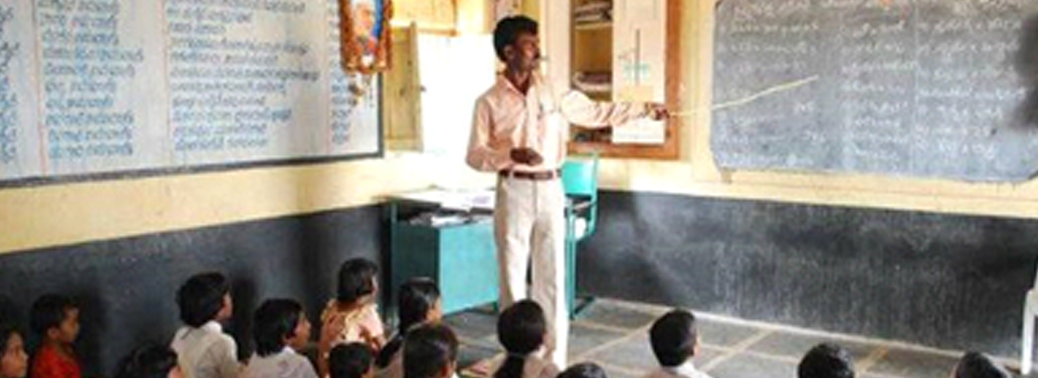
Why in News?
- The Supreme Court held it unconstitutional to provide 100% reservation for tribal teachers in schools located in Scheduled Areas across the country.
Observations of SC:
- It is an obnoxious idea that tribals only should teach the tribals. When there are other local residents, why they cannot teach is not understandable.
- The action defies logic and is arbitrary. Merit cannot be denied on the whole by providing reservation.
- Citizens have equal rights, and the total exclusion of others by creating an opportunity for one class is not contemplated by the founding fathers of the Constitution of India
- The court held that 100% reservation is discriminatory and impermissible. The opportunity of public employment is not the prerogative of few.
- A 100% reservation to the Scheduled Tribes has deprived Scheduled Castes and Other Backward Classes also of their due representation.
- The court referred to the judgment, which caps reservation at 50%.
What does the Indira Sawhney Judgement says?
- In the famous Mandal case (Indra Sawhney v. Union of India 1992), the scope and extent of Article 16(4), which provides for reservation of jobs in favour of backward classes, has been examined thoroughly by the Supreme Court.
- Though the Court has rejected the additional reservation of 10% for poorer sections of higher castes, it upheld the constitutional validity of 27% reservation for the OBCs with certain conditions, viz,
- The advanced sections among the OBCs (the creamy layer) should be excluded from the list of beneficiaries of reservation.
- No reservation in promotions; reservation should be confined to initial appointments only. Any existing reservation in promotions can continue for five years only (i.e., upto 1997).
- The total reserved quota should not exceed 50% except in some extraordinary situations. This rule should be applied every year.
- The ‘carry forward rule’ in case of unfilled (backlog) vacancies is valid. But it should not violate 50% rule.
- A permanent statutory body should be established to examine complaints of over-inclusion and under-inclusion in the list of OBCs.
- However, it is also to be noted that the Parliament has passed the 124th Constitution Amendment Bill (10% Quota Bill) to provide for 10% reservation for economically weaker sections (EWS) among the general category candidates in higher education and government employment in the year 2019.
What are the Key Features of the 124th Constitution Amendment Act?
- The act amended Articles 15 and 16of the constitution to provide for 10% reservation to economically weaker sections (EWS) among the general/unreserved category over and above the existing 49.5% quota in place for SC, ST, and OBCs.
- It seeks to insert a separate clause in article 16 after clause (5) as follows:
- “Nothing in this article shall prevent the State from making any provision for the reservation of appointments or posts in favour of any economically weaker sections of citizens other than the classes mentioned in clause (4), in addition to the existing reservation and subject to a maximum of 10% of the posts in each category”
- It seeks 10% reservation for the economically weaker sections of society in higher educational institutions, private institutions (aided or unaided by the state) except minority educational institutions under Article 30.
- It also provides reservation in posts for initial appointment in services under the state.
What are the Qualifying Criteria for 10% Quota?
- All members of whose family together earn less than Rs. 8 lakh per annum.
- Have less than 5 acres of agricultural land.
- Do not possess a residential flat of area 1000 sq. ft. or larger.
- Do not possess a residential plot of area 100 yards or more in notified municipalities and 200 yards or more in areas other than notified municipalities.
NATIONAL LEGAL SERVICES AUTHORITY (NALSA)
17, Apr 2020
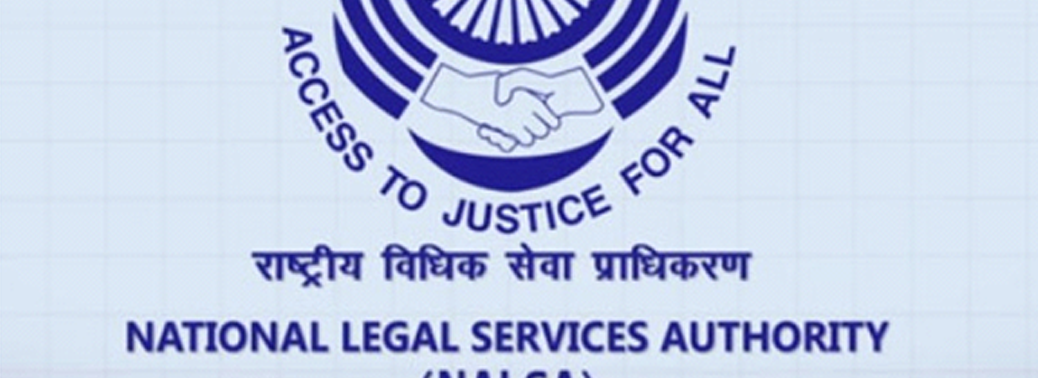
Context:
- Recently, The National Legal Services Authority (NALSA) has reported that around 11,077 under trials have been released from prisons nationwide as part of the mission to decongest jails following the COVID-19 pandemic.
About NALSA:
- It has been constituted under the Legal Services Authorities Act, 1987, to provide free legal services to weaker sections of society.
- It aims to ensure that opportunities for securing justice are not denied to any citizen by reasons of economic or other disabilities. The ‘Nyaya Deep’ is the official newsletter of NALSA.
- It has also been providing assistance to prisoners who were eligible to be released on parole or interim bail under the relaxed norms, through its panel lawyers.
Composition of NALSA:
- The Chief Justice of India shall be the Patron-in-Chief, as per section 3(2) of Legal Service Authorities Act.
- The Second senior-most judge of Supreme Court of India is the Executive-Chairman.
- About the functions performed by NALSA:
- It organise Lok Adalat for amicable settlement of disputes.
- It Identify specific categories of the marginalised and excluded groups and formulates various schemes for the implementation of preventive and strategic legal service programmes.
- It provides free legal aid in civil and criminal matters for the poor and marginalised people who cannot afford the services of a lawyer in any court or tribunal.
About State Legal Services Authorities:
- It has been constituted to give effect to the policies and directions of the NALSA and to give free legal services to the people and conduct Lok Adalat in the State.
- It is headed by Hon’ble the Chief Justice of the respective High Court who is the Patron-in-Chief of the State Legal Services Authority.
About District Legal Services Authority:
- It has been constituted to implement Legal Services Programmes in the District.
- It is situated in the District Courts Complex in every District and chaired by the District Judge of the Respective District.
About Constitutional Basis of Legal System:
- Article 39Aof the Constitution of India provides that State shall secure that the operation of the legal system promotes justice on a basis of equal opportunity, and shall in particular, provide free legal aid, by suitable legislation or schemes or in any other way, to ensure that opportunities for securing justice are not denied to any citizen by reason of economic or other disability.
- Articles 14 and 22(1)also make it obligatory for the State to ensure equality before law and a legal system which promotes justice on a basis of equal opportunity to all.
- Legal aid strives to ensure that constitutional pledge is fulfilled in its letter and spirit and equal justice is made available to the poor, downtrodden and weaker sections of the Society.
NHRC ASKS CENTRE TO ISSUE AN ADVISORY ON PUBLIC’S RIGHTS TO STATES
16, Apr 2020
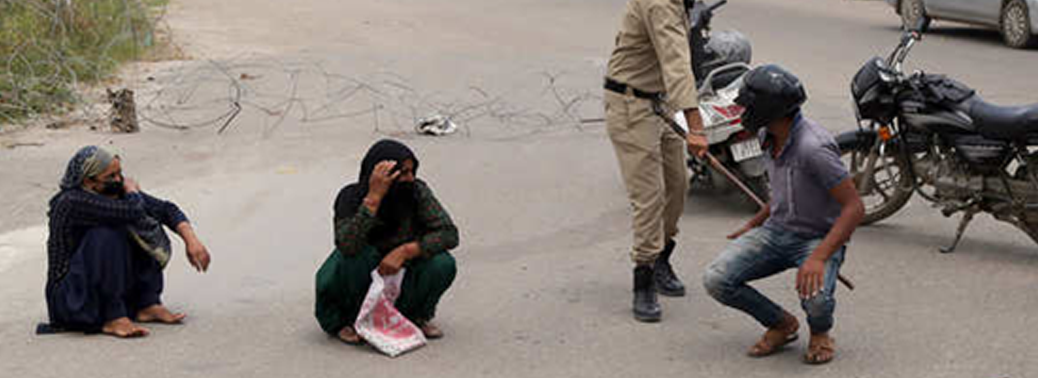
Why in News?
- The National Human Rights Commission (NHRC) has advised the Centre to issue an advisory to all States and Union Territories to implement the ongoing lockdown without violating the human rights of the public.
Key Points:
- The NHRC through an advisory wants to ensure that the public servants behave in a sensible manner with the people, particularly belonging to vulnerable sections, respecting human rights relating to their life, liberty and dignity.
- In order to effectively implement the lock down guidelines, the public servants, sometimes under tremendous pressure, tend to deal with the people, especially the ill-informed poor labourers, in a very harsh manner undermining their rights.
- It has said that In the meantime necessary directions may be issued by the Ministry to all the States and Union Territories, to ensure that
- Persons suffering from any kind of mental ailments under their jurisdiction are provided with proper counselling towards
- Necessary precautions for their personal care and protection from the virus
- People not deprived of basic amenities like food, shelter and medical care etc.
About National Human Rights Commission:
- NHRC was established on 12th October, 1993. The statute under which it is established is the Protection of Human Rights Act (PHRA), 1993 as amended by the Protection of Human Rights (Amendment) Act, 2006.
- Composition:The commission is a multi-member body consisting of a chairman and four members. The chairman is a retired Chief Justice of India.
- Appointment:The chairman and members are appointed by the President on the recommendations of a six-member committee consisting of the Prime Minister as its head, the Speaker of the Lok Sabha, the Deputy Chairman of the Rajya Sabha, leaders of the Opposition in both the Houses of Parliament and the Union Home Minister.
- Tenure:The chairman and members hold office for a term of five years or until they attain the age of 70 years, whichever is earlier. After their tenure, the chairman and members are not eligible for further employment under the Central or a state government.
- Watchdog of Human Rights in the country: The NHRC is an embodiment of India’s concern for the promotion and protection of human rights.
Role and Function of NHRC:
- It has all the powers of a civil court and its proceedings have a judicial character.
- It can look into a matter within one year of its occurrence, i.e the Commission is not empowered to inquire into any matter after the expiry of one year from the date on which the act constituting violation of human rights is alleged to have been committed.
- It is empowered to utilise the services of any officer or investigation agency of the Central government or any state government for the purpose of investigating complaints of human rights violation.
- The functions of the commission are mainly recommendatory in nature. It has no power to punish the violators of human rights, nor to award any relief including monetary relief to the victim.
- Its recommendations are not binding on the concerned government or authority. But, it should be informed about the action taken on its recommendations within one month.
GOVERNOR’S RIGHT IN ORDERING FLOOR TEST
16, Apr 2020

Why in News?
- The Supreme Court has upheld Madhya Pradesh Governor Lalji Tandon’s March decision asking the then Congress government to prove majority by holding a floor test in the Legislative Assembly after the resignation of 22 Congress MLAs.
What is a Floor Test?
- A floor test is the determination on the floor of the House (in this case, the Maharashtra Vidhan Sabha) whether the Chief Minister commands the support of the majority of the MLAs.
- This can be done by means of a voice vote, or by recording the vote of each MLA in the House. This determination of majority is done in a sitting of the legislature, for which the legislature has to be convened.
How Floor Test Takes Place?
- This voting process happen in the state’s Legislative Assembly or the Lok Sabha at the central level.
- Technically, the chief minister of a state is appointed by the Governor. The appointed chief minister usually belongs to the single largest party or the coalition which has the ‘magic number’. The magic number is the total number of seats required to form a government, or stay in power. It is the half-way mark, plus one. In case of a tie, the Speaker casts the deciding vote.
- However, at times, a government’s majority can be questioned. The leader of the party claiming majority has to move a vote of confidence.
- If some MLAs remain absent or abstain from voting, the majority is counted on the basis of those present and voting. This effectively reduces the strength of the House and in turn brings down the majority-mark.
- The voting process can happen orally, with electronic gadgets or a ballot process.
- The Governor can also ask the Chief Minister to prove his or her majority in the House if the stability of the government comes into question.
What is Confidence and No-confidence Motion?
- A confidence motion or a vote of confidence or a trust vote, is sought by the government in power on the floor of the House.
- It enables the elected representatives to determine if the Council of Ministers commanded the confidence of the House.
- The idea underlying the trust vote is to uphold the political accountability of the elected government to the State legislature.
- A no-confidence motion, or vote of no-confidence, or a no-trust vote, can be sought by any House member to express that they no longer have confidence in the Government.
What are the Observations made by the Court?
- In a situation where the governor has reasons to believe that the council of ministers headed by the chief minister has lost the confidence of the House, constitutional propriety requires that the issue be resolved by calling for a floor test.
- The governor in calling for a floor test cannot be construed to have acted beyond the bounds of constitutional authority. This means, while directing a trust vote, the Governor should not favour a particular political party.
- A Governor’s power to call for a floor test is not restricted only before the inception of a State government immediately after elections, but continues throughout its term.
- The Governor’s requirement to have a trust vote does not “short-circuit” any disqualification proceedings pending before the Speaker. A Governor need not wait for the Speaker’s decision on the resignation of rebel MLAs before calling for a trust vote.
SUPREME COURT ORDERS TO RELEASE PRISONERS
14, Apr 2020
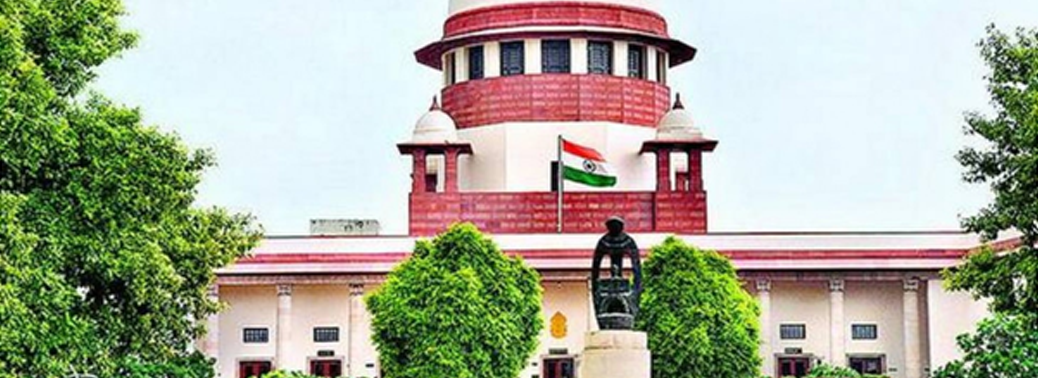
Why in News?
- Supreme Court has recently passed orders in a suo-motu hearing on measures taken to decongest prisons, correction homes and detention centres due to the outbreak of pandemic Covid-19 outbreak.
Highlights of the Judgement:
- The Bench had already passed orders to the States and the Union Territories to set up special committees in order to examine the cases of prisoners and shortlist those who could be granted bail or parole.
- The Court ordered that appropriate tests for Covid-19 should be conducted on prisoners scheduled for release.
- The court directed that transportation of prisoners would be done in full compliance of the rules and norms of social distancing.
- In case a prisoner who has been released is suffering from coronavirus after the release, he/she shall be put in an appropriate quarantine facility by the concerned Authorities.
Judgement regarding Foreigners’ Detention Centres:
- The court ordered to release prisoners or detenus who have been under detention for two years in the foreigners’ detention centres in Assam on account of the Coronavirus pandemic.
- The court modified its earlier order to allow these detenus to furnish a bond of Rs. 5,000 instead of Rs. 1 lakh. The Court also asked them to furnish two Indian citizens as sureties.
- But the central government has objected to their release on the grounds that they will mix with the local population again.
VIRTUAL COURTS AND WAY FORWARD
09, Apr 2020

Context:
- Recently, the Supreme Court passed a slew of directions for all courts across the country to extensively use video-conferencing for judicial proceedings. A bench headed by Chief Justice S A Bobde said that the recent outbreak of the COVID-19 has necessitated social distancing and it is necessary to ensure that court premises do not contribute to the spread of coronavirus.
Key Highlights:
- The Supreme court, which has restricted its functioning and is conducting hearing through video conferencing of extremely urgent matters during the lockdown period since March 25.
- The bench, also comprising Justices D.Y Chandrachud and L.Nageswara Rao, made it clear that no evidence would be recorded via video-conferencing.
- It said, if recording of evidence is must in the courts, then the concerned judge would ensure that distance is maintained inside the courtroom.
- Attorney General K.K.Venugopal said the National Informatics Centre, NIC must look into efficient and cheap applications across the country.
- The Director General of NIC told the bench that three things are required for video-conferencing — good broadband connection, good devices and conduct of people
Benefits of Virtual Courts
Cost-Effective Technique:
- When compared to litigation, Virtual Courts are extremely profitable as it cuts down on the costs associated with manpower and paperwork.
- It also cuts down on the vast travelling expenses during the process of resolving cases Manually.
Convenient Technique:
- Virtual Courts can cover a wide range of geographical areas.
- This guarantees quality service to all the people of different regions.
Better Court Management:
- Virtual courts would help in the computerization of workflow management in courts.
- Thus, it would help to create a better court and case management. Video conferencing facilities would be installed in every court complex.
- Evidence of eyewitnesses, who are unable to attend the court can be recorded through this method.
Security of the witnesses:
- In many cases, the witnesses are not able to come to the court and make their statement as the other party is too strong and scares them of the consequences. e-Courts can help in dealing with such cases
Drawbacks of Virtual Courts:
Impersonal:
- Due to the virtual process of Virtual Courts, the emotional state of the disputed parties and the resultant body language and tone are not expressed to the judges.
- This poses a hindrance to forming any personal relationship with the dispute resolver.
- Also the judges have no control over the temper and tone of the disputed parties. This may sometimes lead to contempt of courts.
Knowledge of Computers:
- The essential preliminary requirement is to have a basic knowledge of computers and operation of the internet. Digital literacy in India being significantly low, this might be a roadblock for such. Even those who do have digital literacy, lack the trust required to avail Virtual courts. Thus, there is not only ignorance about computers, but also the reluctance of the usage of them.
Breach of Confidentiality:
- Often in the virtual courtroom processes, confidential information regarding the parties themselves or the parties whom they represent is revealed.
- Sensitive information is particularly more crucial in corporate negotiation in which often trade secrets are revealed.
- Cyberspace is prone to cybercrime. If not properly secured, confidential information can be easily leaked out, having a detrimental effect on the parties concerned.
Way Forward:
- Techno Legal Expertise:
- Adequate techno-legal expertise should be imparted to both the advocates and the judges to handle these virtual courtroom proceedings.
Funds for Infrastructure:
- Digital devices and internet connectivity needs physical and digital infrastructure, for which initial costs are slightly heavy.
- Government should allocate adequate funds to ensure provisioning of these.
Cybersecurity and Confidentiality:
- Key ingredient to induce trust among the litigants is by providing security to them and their valuable data.
- Cybersecurity should be an important component of virtual courtroom procedures.
DISPUTE BETWEEN KARNATAKA AND KERALA ON HIGHWAY BLOCKADE
07, Apr 2020
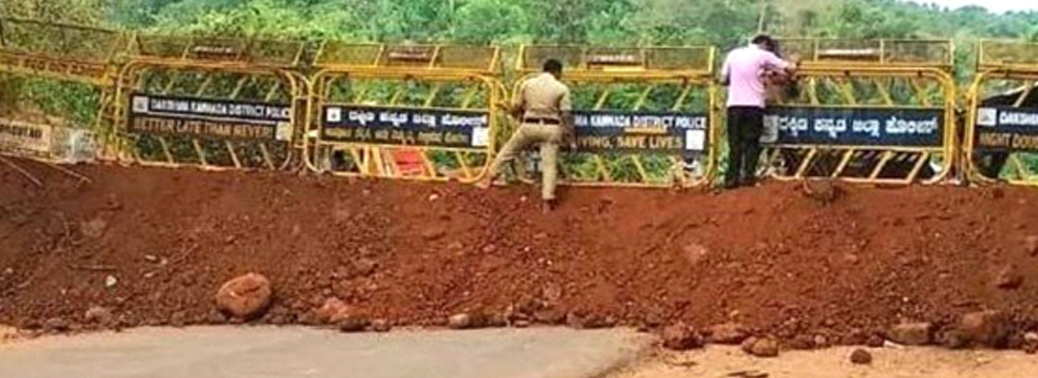
Why in News?
- Karnataka has refused to lift the blockade despite the Supreme Court (SC) has asked the governments of Kerala and Karnataka to amicably settle the dispute over the closure of roads linking Kasaragod district (Kerala) to Mangaluru (Karnataka).
Highlights of the SC Judgement:
- On Kerala High Court’s Order: The bench did not stay the Kerala High Court order but asked the states not to precipitate matters.
- Centre Mediation:The Supreme Court asked the Centre to discuss the matter with the states and formulate parameters for passage of patients for urgent medical treatment.
Kerala High Court’s Order:
- The Kerala High Court had directed the Centre to ensure that blockades put up by Karnataka on national highways connecting it to Kerala are removed forthwith in order to facilitate free movement of vehicles carrying people for urgent medical treatment between the two states.
- The Kerala HC asked the Union government to intervene as the arterial roads that connect Mangalore to Kasaragod are part of the national highway network. Hence, it is the duty of the central government to ensure that roads are blockade- free.
- Denial of health services amounts to infringement of right to life under Article 21 and also affects the right to freedom of movement under Article 19(1) (d) of the Constitution.
Court’s Territorial Jurisdiction:
- Before the High Court Order, Karnataka contended that the court would be exceeding its territorial jurisdiction if it issues any direction.
- But the court rejected this and said that when a High Court of a state finds and declares the actions of the government of another State to be illegal and unconstitutional, the said state government would be obliged to defer to the said declaration of law by a Constitutional Court of this country, notwithstanding that the said court is situated beyond the territorial limits of the said state.
- The Court held that the Karnataka government cannot therefore be heard to contend that it is not obliged to respect the fundamental right of a citizen who resides outside its territorial limits.
RESTRICTIONS ON COURT HEARINGS LAWFUL, SAYS SUPREME COURT
07, Apr 2020
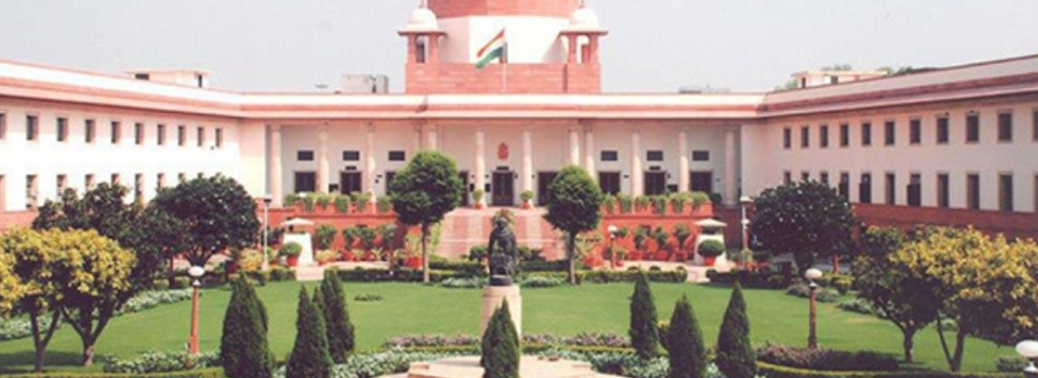
Why in News?
- The Supreme Court recently deemed all restrictions imposed on people from entering, attending or taking part in court hearings as lawful in the wake of the COVID-19 pandemic.
Highlights:
- The court said that restrictions were in tune with the social distancing norms and best public health practices advocated to contain the contagion.
- Invoking its extraordinary Constitutional powers: The court invoked its extraordinary Constitutional powers under Article 142 to step away from the convention of open court hearings. The open court system ensures transparency in administration of justice.
Videoconferencing:
- The apex court bench assembled to suo motu streamline the videoconferencing guidelines for courts.
- In a series of directions, the apex court allowed the High Courts to decide the modalities for the temporary transition to the use of videoconferencing technologies in their respective States.
- District courts in each State would adopt the mode of videoconferencing prescribed by the respective High Courts.
- Helplines would be set up to receive and rectify technical complaints.
Article 142 of the Constitution:
- Article 142 provide a unique power to the Supreme Court, to do “complete justice” between the parties, i.e., where at times law or statute may not provide a remedy, the Court can extend itself to put a quietus to a dispute in a manner which would befit the facts of the case.
- Article 142(1) states that “The Supreme Court in the exercise of its jurisdiction may pass such decree or make such order as is necessary for doing complete justice in any cause or matter pending before it, and any decree so passed or order so made shall be enforceable throughout the territory of India in such manner as may be prescribed by or under any law made by Parliament and, until provision in that behalf is so made, in such manner as the President may by order prescribe”.
COVID-19: A TEST FOR POLITICAL SYSTEMS
31, Mar 2020
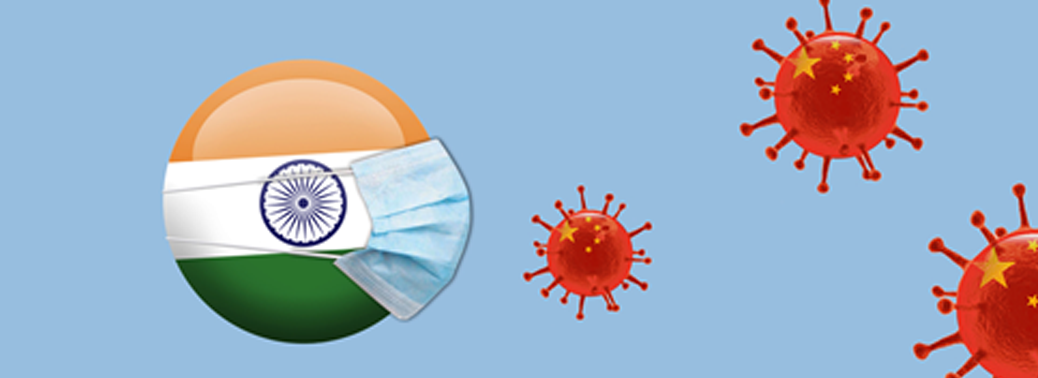
Context:
- Any crisis would test the existing political arrangements. COVID-19 is one such crisis, which may test the existing political constellations in India as well as the world. This COVID-19 crisis may test India’s two distinctive Features — Democracy and Federalism.
How does it Test Democracy?
- A democratic system means that the flow of information is free and open and that there is a constant feedback loop.
- In a democracy, criticisms from the Opposition and media and public interventions from domain experts can be included in making and refining policy.
- The government must see this as a strength and be open to inputs from all sources.
- At the same time, a democratic system also, by its very nature, is slower and more deliberative.
- It is difficult to enforce decisions (including the national lockdown); any curtailment of rights can only be through due process and temporary; and finding quick solutions to structural problems (a weak health system in this case) is not easy.
How does it Test Federalism?
- The crisis response will require both the Centre and the states to work together.
- There is a complex division of powers envisaged in the Constitution.
- But it is clear that broad policies to deal with Covid-19 can be framed at the Centre; the power of implementation lies largely with state governments, which also have room to innovate. To their credit, political parties across the divide are seeking to work together.
- At the same time, the rift between different units has been apparent during the exodus of migrant workers from Delhi — with differences between the Centre and the Delhi government, and the Delhi, Uttar Pradesh and Bihar Governments.
The Global Political Viewpoint:
- When the coronavirus disease (Covid-19) broke out in China, observers were keen to understand whether an authoritarian system was better equipped to deal with a crisis of this magnitude or the system’s deficiencies would impede recovery.
- The initial suppression of the news about the virus pointed to the failures of an authoritarian system, but the subsequent lockdown of Hubei and ramping up of health infrastructure in quick time also showed the strengths of the Chinese system.
- China’s efforts to project its success in dealing with the pandemic is as much an effort to shore up the legitimacy of its domestic political system as to regain international credibility.
- India has to beat back the pandemic, not just to save lives and preserve its economy, but also to safeguard its fundamental political features. The stakes are extraordinarily high.
PARLIAMENTARY STANDING COMMITTEES DEFER MEETINGS
26, Mar 2020
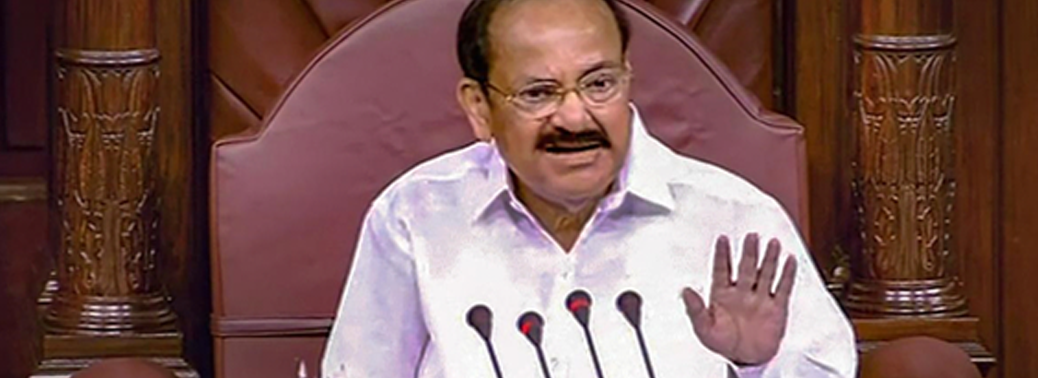
Why in News?
- All meetings of parliamentary standing committees have been deferred indefinitely because of the lockdown to curb the spread of COVID-19.
What are the Different Types of Committees?
- ‘Standing’ committees: Their existence is uninterrupted and usually reconstituted on an annual basis. Some standing committees are departmentally related.
- ‘Select’ committees formed for a specific purpose, for instance, to deliberate on a particular bill. Once the Bill is disposed of, that select committee ceases to exist.
- Finance committees are considered to be particularly powerful. The three financial committees are the Public Accounts Committee, the Estimates Committee and the Committee on Public Undertakings.
Constitutional Backing:
- Parliamentary committees draw their authority from Article 105 (on privileges of Parliament members) and Article 118 (on Parliament’s authority to make rules for regulating its procedure and conduct of business).
What is their Significance?
- Committee reports are usually exhaustive and provide authentic information on matters related to governance.
- Bills that are referred to committees are returned to the House with significant value addition.
- However, Parliament is not bound by the recommendations of committees.
Why have Parliamentary Committees?
- Parliament is the embodiment of the people’s will. Committees are an instrument of Parliament for its own effective functioning.
- The smaller cohort of lawmakers, assembled on the basis of the proportional strength of individual parties and interests and expertise of individual lawmakers, could have more open, intensive and better-informed discussions.
- Members of Parliament may have great acumen but they would require the assistance of experts in dealing with such situations. It is through committees that such expertise is drawn into law making.
- Executive accountability to the legislature is enforced through questions in Parliament also, which are answered by ministers. However, department standing committees go one step further and hear from senior officials of the government in a closed setting, allowing for more detailed discussions.
- This mechanism also enables parliamentarians to understand the executive processes closely.
Way Forward:
- Parliamentary committees don’t have dedicated subject-wise research support available. The knowledge gap is partially bridged by expert testimony from government and other stakeholders.
- Their work could be made more effective if the committees had full-time, sector-specific research staff.
- Currently, the rules of Parliament don’t require every bill to be referred to a parliamentary committee for scrutiny. While this allows the government greater flexibility and the ability to speed up legislative business, it comes at the cost of ineffective scrutiny by the highest law-making body. Mandatory scrutiny of all bills by parliamentary committees would ensure better planning of legislative business.
SECTION 188 IPC
25, Mar 2020
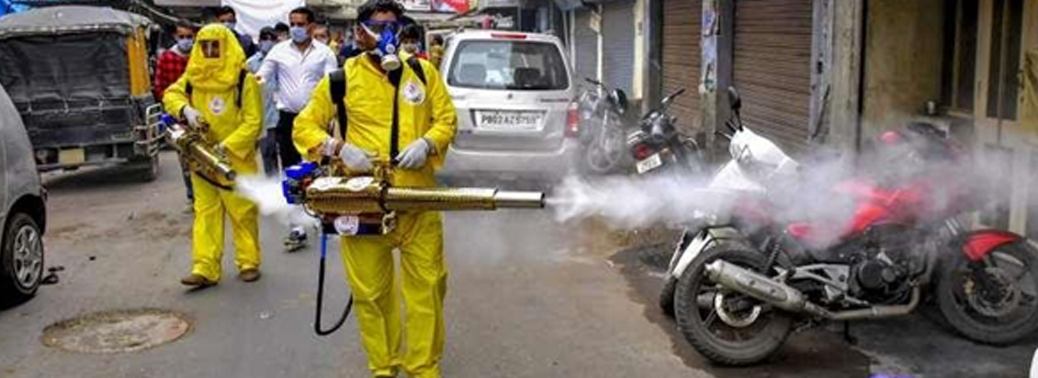
Why in News?
- Delhi and many other states took the Centre’s advice to enforce a full lockdown in districts to contain the spread of COVID-19 by imposing Epidemic Diseases Act, 1897.
Epidemic Diseases Act, 1897:
- The orders issued to curb the spread of the coronavirus have been framed under the Epidemic Diseases Act, 1897, which lays down punishment as per Section 188 of the
- Indian Penal Code, 1860, for flouting such orders –leading to imprisonment of up to 6 months or fine up to Rs 1000 or both.
- In the past, the Act has been routinely enforced across the country for dealing with outbreaks of diseases such as swine flu, dengue, and cholera.
- Its penal provisions are currently being invoked by states to contain the COVID-19 pandemic.
Section 188 of the Indian Penal Code:
- Section 3 of the Epidemic Diseases Act, 1897, provides penalties for disobeying any regulation or order made under the Act.
- These are according to Section 188 of the Indian Penal Code (Disobedience to order duly promulgated by public servant).
- Section 188, which comes under the Code’s Chapter X, ‘Of Contempt of the Lawful
Authority of Public Servants’, Reads:
Disobedience to order duly promulgated by public servant
- Whoever, knowing that, by an order promulgated by a public servant lawfully empowered to promulgate such order, he is directed to abstain from a certain act, or to take certain order with certain property in his possession or under his management, disobeys such direction,
- shall, if such disobedience causes or tends to cause obstruction, annoyance or injury, or risk of obstruction, annoyance or injury, to any persons lawfully employed, be punished
- with simple imprisonment for a term which may extend to one month or with fine which may extend to two hundred rupees, or with both;
- and if such disobedience causes or tends to cause danger to human life, health or safety, or causes or tends to cause a riot or affray, shall be punished with imprisonment of either description for a term which may extend to six months, or with fine which may extend to one thousand rupees, or with both.
What happens if you Violate the Lockdown Orders?
- Under Section 188, there two offences:
- Disobedience to an order lawfully promulgated by a public servant, If such disobedience causes obstruction, annoyance or injury to persons lawfully employed.
- Punishment: Simple Imprisonment for 1 month or fine of Rs 200 or both
- If such disobedience causes danger to human life, health or safety, etc.
- Punishment: Simple Imprisonment for 6 months or fine of Rs 1000 or both
- According to the First Schedule of the Criminal Procedure Code (CrPC), 1973, both offences are cognizable, bailable, and can be tried by any magistrate

ELECTIONS TO 18 RAJYA SABHA POLLS DEFERRED DUE TO PANDEMIC
25, Mar 2020
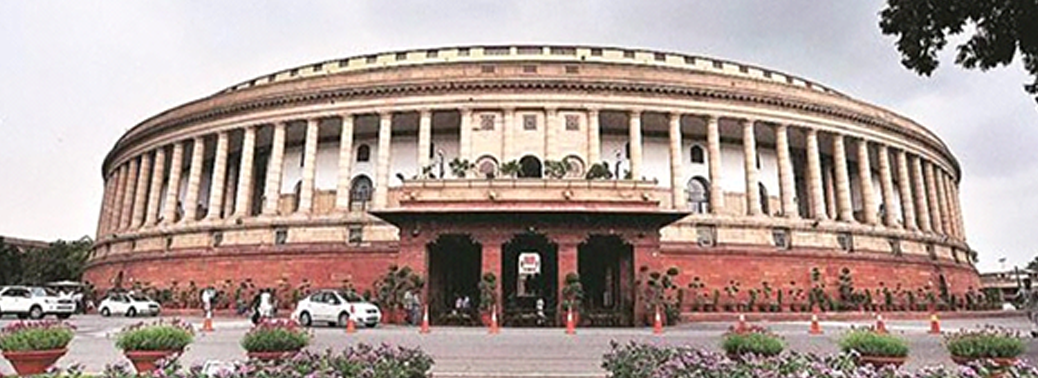
Why in News?
- Elections to 18 Rajya Sabha seats that were scheduled to take place have been deferred due to the Coronavirus pandemic by the Election Commission of India (ECI).
Composition of Rajya Sabha:
- Article 80 of the Constitution lays down the maximum strength of Rajya Sabha as 250, out of which 12 members are nominated by the President and 238 are representatives of the States and of the two Union Territories.
- The members nominated by the President are persons having special knowledge or practical experience in respect of such matters as literature, science, art and social service.
- The Vice-President is the ex-officio chairperson of the Rajya Sabha.
- The Deputy Chairman, who is elected from amongst the house’s members, takes care of the day-to-day matters of the house in the absence of the Chairman.
Allocation of Seats to Rajya Sabha:
- The Fourth Schedule to the Constitution provides for the allocation of seats to the States and Union Territories in Rajya Sabha.
- The allocation of seats is made on the basis of the population of each State.
- Consequent on the reorganization of States and formation of new States, the number of elected seats in the Rajya Sabha allotted to States and Union Territories has changed from time to time since 1952.
- Every Rajya Sabha MP has tenure of six years and elections to one-third seats are held every two years.
- According to Section 154 of the Representation of the People Act 1951, a member chosen to fill a casual vacancy will serve for the remainder of his predecessor’s term of office.
What are the Eligibilities to become a Member of Rajya Sabha?
- A member of the Rajya Sabha must:
- Be a citizen of India;
- Be at least 30 years old;
- Possess such other qualifications as may be prescribed in that behalf by or under any law made by Parliament.
Process of Rajya Sabha Election:
- The representatives of the States and of the Union Territories in the Rajya Sabha are elected by the method of indirect election.
- The representatives of each State and two Union territories are elected by the elected members of the Legislative Assembly of that State and by the members of the Electoral College for that Union Territory, as the case may be, in accordance with the system of proportional representation by means of the single transferable vote.
- To win a Rajya Sabha seat, a candidate should get a required number of votes. That number is found out using the below formula. Required vote = Total number of votes / (Number of Rajya Sabha seats + 1) + 1.
FINANCE BILL PASSED IN LOK SABHA WITHOUT DEBATE
24, Mar 2020

Why in News?
- The Lok Sabha passed the Finance Bill, by voice vote without discussion, amid ruckus in the House with opposition parties seeking a fiscal stimulus package in the wake of the Coronavirus outbreak.
Key Features of the Bill:
- In the Union Budget 2020-2021, the government proposed to spend Rs 30, 42,230 crore in the next financial year, 12.7% higher than the revised estimate of 2019-20. By passing the Bill, these financial proposals have been given effect.
- The government has assumed a nominal Gross Domestic Product (GDP) growth rate of 10% in 2020-21, versus the nominal growth estimate at 12% for 2019-20. It expects that receipts will increase by 16.3% to Rs 22, 45,893 crore, owing to higher estimated revenue from divestment.
- While several amendments were passed, finance minister withdrew some affecting non-resident Indians.
- In the passed Bill, NRIs having income above Rs 15 lakh from business in India will fall under the tax net, but their global income will not be taxed in India.
- Further, the tax deducted at source (TDS) rate on payment of dividend to non-resident and foreign company has been set at 20%.
- The finance minister had introduced the new system of optional income tax slabs for individual taxpayers, where deductions and exemptions cannot be claimed, which was also passed by the Upper House of Parliament.
- The proposal for taxing dividends in the hands of shareholders by abolishing the dividend distribution tax (DDT) was also passed. While the new rule kicks into effect from April 1, 2020, the government has clarified that shareholders will have no tax liability if the company issuing the dividend has paid the DDT before April 1.
What is the Finance Bill?
- The Finance Act is an act of Parliament by which the Union Government of India gives effects to the financial proposals given by the government for the following financial year.
- The finance bill is introduced to the Lower House after the Union Budget is presented by the Finance Minister. Once the proposals are passed by the parliament and assented to by the President, it becomes the Finance Act of that year.
- There is a new Finance Act every financial year which makes this act an act that renews itself every year. This act basically is an umbrella act that includes all the government’s financial policies.
How is the Finance Bill Passed?
- The Finance Bill is introduced in Lok Sabha. Rajya Sabha can recommend amendments in the bill. However, the bill has to be passed by the Parliament within 75 days of introduction.
What is the difference between a money bill and Finance bill?
- While all Money Bills are Financial Bills, all Financial Bills are not Money Bills.
- For example, the Finance Bill which only contains provisions related to tax proposals would be a Money Bill. However, a Bill that contains some provisions related to taxation or expenditure, but also covers other matters would be considered as a Financial Bill.
- The Compensatory Afforestation Fund Bill, 2015, which establishes funds under the Public Account of India and states, was introduced as a Financial Bill.
- Finance Bill has the provision of including recommendations from Rajya Sabha, however, in case of a Money Bill, it is not mandatory.
- In case of a Money Bill, Lok Sabha has the right to reject the recommendations of the Upper house or Rajya Sabha.
THE COMPANIES (AMENDMENT) BILL, 2020
20, Mar 2020
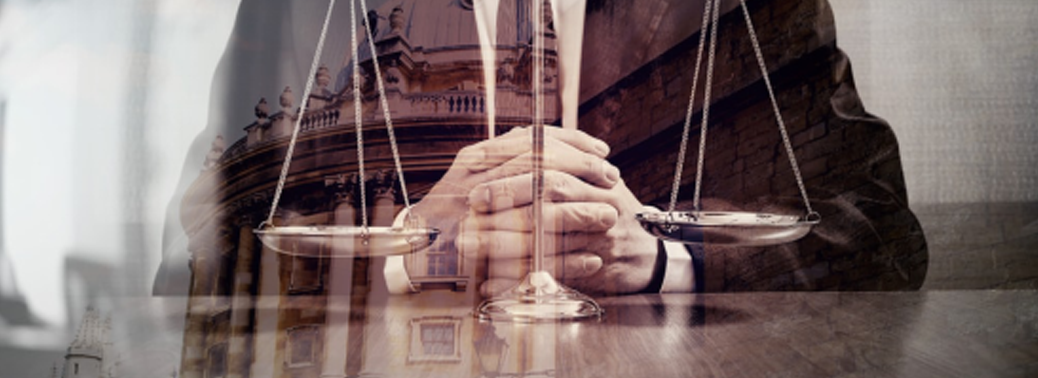
Context:
- Recently, the bill to amend the Companies Act 2013 and decriminalise various offences under it was introduced in Lok Sabha. The Bill also offers greater flexibility to companies in meeting their corporate social responsibility obligations. The government says the amendments in the existing Companies Act will help reduce the burden on the National Company Law Tribunal.
Key Highlights of the Bill:
- The Companies (Amendment) Bill, 2020 provides for the following:
- Decriminalize:decriminalise certain offences under the Act in case of defaults which can be determined objectively and which otherwise lack any element of fraud or do not involve larger public interest.
- Empowering the Central Government:empower the Central Government to exclude, in consultation with the Securities and Exchange Board, certain classes of companies from the definition of “listed company”, mainly for listing of debt securities.
- Jurisdictions:clarify the jurisdiction of trial court on the basis of place of commission of offence under section 452 of the Act for wrongful withholding of property of a company by its officers or employees, as the case may be.
- Producer Companies:Incorporate a new chapter in the Act relating to Producer Companies, which was earlier part of the Companies Act, 1956.
- NCLAT Benches: Set up Benches of the National Company Law Appellate Tribunal.
- Remuneration to the executives:make provisions for allowing payment of adequate remuneration to non-executive directors in case of inadequacy of profits, by aligning the same with the provisions for remuneration to executive directors in such cases.
- Relaxing the provisions:
- relating to charging of higher additional fees for default on two or more occasions in submitting, filing, registering or recording any document, fact or information.
- exempt any class of persons from complying with the requirements relating to declaration of beneficial interest in shares
- Reduce timelines for applying for rights issues so as to speed up such issues.
- extend exemptions to certain classes of non-banking financial companies and housing finance companies from filing certain resolutions.
- provide for a window within which penalties shall not be levied for delay in filing annual returns and financial statements in certain cases.
- provide for specific classes of unlisted companies to prepare and file their periodical financial results;
- allow direct listing of securities by Indian companies in permissible foreign jurisdictions as per rules to be prescribed.
- Corporate Social Responsibility :the companies which have spending obligation up to fifty lakh rupees shall not be required to constitute the Corporate Social Responsibility Committee
- to allow eligible companies to set off any amount spent in excess of their Corporate Social Responsibility spending obligation in a particular financial year towards such obligation in subsequent financial years;
Concerns:
- The Bill proposed 72 changes to the Companies Act, 2013. Almost 23 offences would be recategorized out of 66 compoundable offences under the Act, to be dealt with an in-house adjudication framework. Besides, seven compoundable offences would be omitted.
- Raising concerns about the Yes Bank crisis, some Opposition leaders alleged that the bill was aimed to appease corporates and demanded that it should be referred to the Parliamentary Standing Committee on Finance.
SUPREME COURT INVOKES SPECIAL POWERS IN DEFECTION CASE
19, Mar 2020
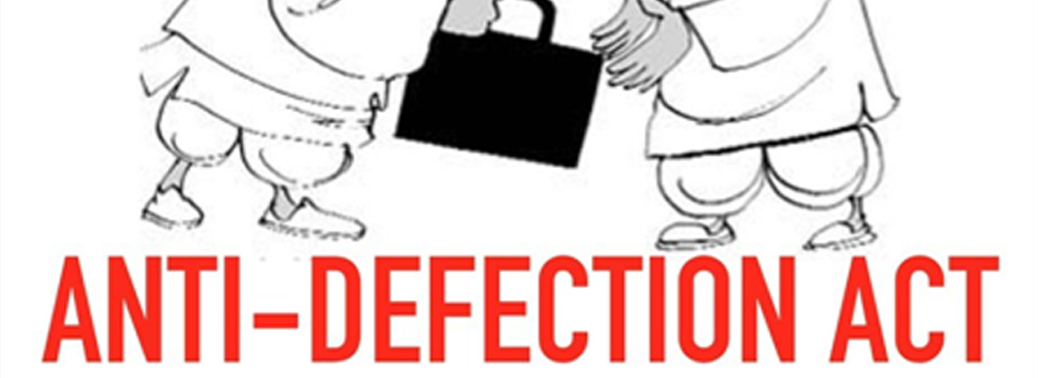
Why in News?
- Recently, the Supreme Court invoked its special powers under Article 142 of the Constitution to remove a minister belonging to Manipur Cabinet.
Highlights of the Judgement:
- The Supreme Court removed a minister from the state cabinet and restrained him “from entering the Legislative Assembly till further orders”.
- It has to be notes that a disqualification petition against the minister was pending before the Speaker since 2017 but the Speaker failed to take the decision within a reasonable time period.
- The Speaker even failed to take any decision within the stipulated time period of 4 weeks as provided by the Supreme Court in the earlier order passed in the month of January 2020.
Invoking Art 142:
- Article 212of the Constitution bars courts from inquiring into proceedings of the Legislature. In this case, however, prompted by the fact that the Speaker’s conduct has been called into question on several occasions, the Court said it was “constrained” to invoke the court’s extraordinary powers under Article 142 of the Constitution.
- Article 142: It provides discretionary power to the Supreme Court as it states that the Supreme Court in the exercise of its jurisdiction may pass such decree or make such order as is necessary for doing complete justice in any cause or matter pending before it.
Previous Court Judgements regarding Anti-defection Laws:
- The court in general said that “the Speaker, in acting as a Tribunal under the Tenth Schedule, is bound to decide disqualification petitions within a reasonable period”, which “will depend on the facts of each case.”
- The Supreme Court also held that disqualification petitions under the tenth schedule should be adjudicated by a mechanism outside Parliament or Legislative Assemblies.
- The Court has suggested a permanent tribunal headed by a retired Supreme Court judge or a former High Court Chief Justice as a new mechanism. However, this would require an amendment to the Constitution.
- Currently, disqualification of members of a House/Assembly is referred to the Speaker of the House/Assembly.
- Rationale behind Court’s suggestion was to ensure that such disputes are decided both swiftly and impartially, thus giving real teeth to the provisions contained in the Tenth Schedule.
About Tenth Schedule:
- The Anti-Defection Law was passed in 1985 through the 52nd amendment to the Constitution. It added the Tenth Schedule to the Indian Constitution. The main intent of the law was to combat political defections.
- According to it, a member of a House belonging to any political party becomes disqualified for being a member of the House, if
- 1.he voluntarily gives up his membership of such political party; or
- 2.he votes or abstains from voting in such House contrary to any direction issued by his political party without obtaining prior permission of such party and such act has not been condoned by the party within 15 days.
Powers of Speaker with regard to Anti-Defection Law:
- Any question regarding disqualification arising out of defection is to be decided by the presiding officer of the House.
- After the Kihoto Hollohan case (1993), the Supreme Court declared that the decision of the presiding officer is not final and can be questioned in any court. It is subject to judicial review on the grounds of malafide, perversity, etc.
MEDICAL TERMINATION OF PREGNANCY (AMENDMENT) BILL, 2020
19, Mar 2020

Why in News?
- The Lok Sabha has passed a Bill to extend the upper limit for permitting abortions from 20 weeks to 24 under special circumstances.

The Medical Termination of Pregnancy (MTP) Act 1971:
- It is a law that legalized abortion in India up to 20 weeks of pregnancy, based on certain conditions and when provided by a registered medical practitioner at a registered medical facility.
- As per the provisions of the MTP Act, only the consent of woman whose pregnancy is being terminated is required.
- In case of below the age of 18 years, or a mentally ill woman, consent of guardian (MTP Act defines guardian as someone who has the care of the minor. This does not imply that only parent/s are required to consent) is required for termination.

Provision of Medical Termination of Pregnancy (MTP) Bill, 2020:
- The draft Bill proposes requirement of opinion of one registered medical practitioner (RMP) for termination of pregnancy up to 20 weeks of gestation.
- Similarly, it also provides for the requirement of opinion of two RMPs for termination of pregnancy of 20 to 24 weeks.
- The Bill also seeks to increase the upper gestation limit from 20 to 24 weeks for survivors of rape, victims of incest and other vulnerable women. It will also include minor girls.
- The Bill seeks to relax the contraceptive-failure condition for “any woman or her partner” from the present provision for “only married woman or her husband”, allowing them to medically terminate the pregnancy.
Significance of Bill:
- The Bill will provide greater reproductive rights to women as abortion is considered an important aspect of the reproductive health of women.
- Deaths and injuries from unsafe abortions are largely preventable provided services are performed legally by trained practitioners.
- This will help in decreasing maternal morbidity and mortality and may also help in preventing wastage of resources invested in a pregnancy.
- The special categories of women include rape survivors, victims of incest, the differently abled and minors.
NO MEETINGS OF SCS AND STS PANEL HELD FOR 3 YEARS
18, Mar 2020
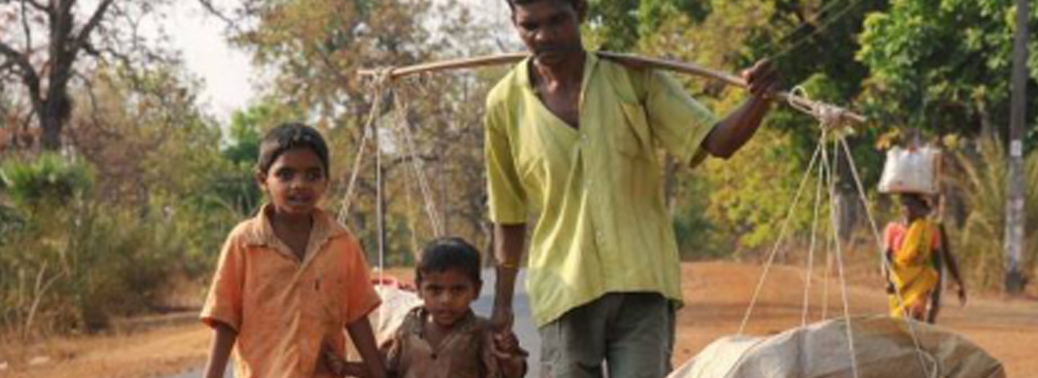
Why in News?
- According to the information provided by the Union Social Justice and Empowerment Ministry to Parliament, the State-level committees had not met even once in three years — 2016, 2017 and 2018.
About the News:
- The State-level committees meant to monitor the implementation of the Scheduled Castes and Scheduled Tribes (Prevention of Atrocities) Act, 1989of 25 States and Union Territories had not met even once in three years.
- The 1995 rules formed under the Act mandate the setting up of State and district-level vigilance and monitoring committees.
- The State-level committees, headed by the respective Chief Ministers, are supposed to meet twice a year, according to the rules.
What are the constitutional provisions against SC/ST Atrocities?
- Article 17 of the constitution prohibits the practice of untouchability.
- Article 46 promotes the educational and economic interests of SCs, STs, and other weaker sections of the society and protects them from social injustice and exploitation.
- Article 338– National Commission for Scheduled Castes
- Investigate and monitor all matters relating to the constitutional and other legal safeguards for the SCs and to evaluate their working.
- Inquire into specific complaints with respect to the deprivation of rights and safeguards of the SCs.
- 338-A– National Commission for Scheduled Tribes
- Its functions are the same as that of NCSC, but with respect to ST instead of SC.
About the Act:
- Creation of new types of offences that are neither present in the Indian Penal Code (IPC) nor in the Protection of Civil Rights Act 1955.
- It punishes crimes against people belonging to Scheduled Castes and Tribes.
- It vests special protections and rights with the victims.
- It creates Special Courts and special public prosecutor for speedier completion of cases.
- Commission of offences only by particular persons (by non-SCs on SCs and non-STs on STs).
- Punishment for public servant (non-SC/ST) in case of neglect of duties.
- Denial of anticipatory bail.
- Gives compensation, relief, and rehabilitation for victims of atrocities or their legal heirs.
- Mandatory and periodic monitoring system at District, State, and National level.
- Identification of atrocity prone zones.
- Ministry of Social Justice is the nodal ministry to enforce the provisions of the Act.
What are the states that did not met?
- The State-level committees in 25 States and Union Territories — Andhra Pradesh, Arunachal Pradesh, Bihar, Goa, Himachal Pradesh, Jharkhand, Madhya Pradesh, Manipur, Meghalaya, Mizoram, Nagaland, Odisha, Punjab, Rajasthan, Sikkim, Tamil Nadu, Telangana, Tripura, Uttar Pradesh, Uttarakhand, Andaman and Nicobar Islands, Dadra & Nagar Haveli, Daman & Diu, Delhi and Lakshadweep — had not held any meetings in the three years.
Measures to be Taken:
- Minimising the duration of trials.
- SC/ST commission should start a national helpline number for any harassment on the basis of caste.
- Improving the training of police officers in dealing with POA cases so that they can solve the cases without any pressure or prejudice.
- Increasing awareness about several legal remedies and different rights available to the marginalized community.
- Use of audio-video recording to collect evidence.
- Better forensics.
- State Protection of a witness.
- The government should take proactive measures to improve the participation of people from SC/ST community in decision making and government functioning.
Way Forward:
- The most crucial thing for ending discrimination and improving fraternity is a consistent societal action to change the entrenched caste rigidity.
- SC/ST Prevention of Atrocities Act (PoA act) only serves as a tool in this endeavour rather than an end in itself.
EPIDEMIC DISEASES ACT
16, Mar 2020
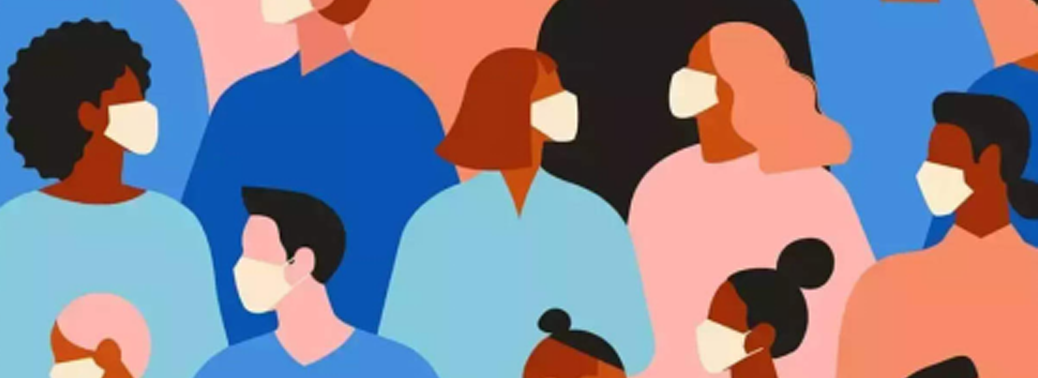
Context:
- All states and Union Territories have been directed to invoke provisions of Section 2 of the Epidemic Diseases Act, 1897, so that Health Ministry advisories are enforceable. The deadly COVID-19 has claimed over 5,000 lives across the world, to combat the pandemic, the Centre has invoked a 123-year-old Epidemic Diseases Act, which has been historically used to contain the spread of various diseases — Swine Flu, Cholera, Malaria and Dengue.
COVID-19 Outbreak:
- Currently, India is fighting the deadly virus, which has claimed two lives in the country and more than 70 COVID-19 cases have tested positive.
- According to reports, across the world more than 119,100 people have been infected.
- And the deadly COVID-19 has claimed over 5,000 lives across the world.
Epidemic Diseases Act, 1897:
- Health is a State subject, but by invoking Section 2 of the Epidemic Diseases Act, advisories and directions of the Ministry of Health & Family Welfare will be enforceable.
- It is routinely enforced across the country for dealing with outbreaks of diseases such as swine flu, dengue, and cholera.
- It was introduced by the colonial government to tackle the epidemic of bubonic plague that had spread in the erstwhile Bombay Presidency in the 1890s.
- The Epidemic Diseases Act consists of four sections and aims to provide for better prevention of the spread of Dangerous Epidemic Diseases.
Provisions of the 1897 Epidemic Diseases Act:
- It Empowers State Governments/UTs to take special measures and formulate regulations for containing the outbreak.
- It also empowers the state to prescribe such temporary regulations to be observed by the public or by any person or class of persons as it shall deem necessary to prevent the outbreak of such disease or the spread thereof.
- The state may determine in what manner and by whom any expenses incurred (including compensation if any) shall be defrayed.
- The State Government may take measures and prescribe regulations for the inspection of persons travelling by railway or otherwise, and the segregation, in hospital, temporary accommodation or otherwise, of persons suspected by the inspecting officer of being infected with any such disease.
- It also provides penalties for disobeying any regulation or order made under the Act. These are according to section 188 of the Indian Penal Code (Disobedience to order duly promulgated by public servant).
- It also gives legal protection to the implementing officers acting under the Act.
Arguments against the Colonial Act:
- Historians have criticised the Act for its potential for abuse.
- Using powers conferred by the Act, colonial authorities would search suspected plague cases in homes and among passengers, with forcible segregations, evacuations, and demolitions of infected places.
- In 1897, the year the law was enforced, freedom fighter Bal Gangadhar Tilak was punished with 18 months’ rigorous imprisonment after his newspapers Kesari and Mahratta admonished imperial authorities for their handling of the plague epidemic.
- Section 4 of the act; Protection to persons acting under Act: “No suit or other legal proceeding shall lie against any person for anything done or in good faith intended to be done under this Act (legal protection to implement the Act).
Arguments in favour of the Colonial Act:
- Constitutional experts opine there is nothing wrong if the government is willing to implement a colonial-era law as it still exists in the statute, and maybe the governments over the time did not see the necessity to amend the Act.
- There are many colonial laws which continue to exist, for example the Indian Penal Code (IPC), the Census which originated in pre-independence era still continues, and the Famine Act also originated before independence.
- In 2009, to tackle the swine flu outbreak in Pune, Section 2 powers were used to open screening centres in civic hospitals across the city, and swine flu was declared a notifiable disease. The act was much resourceful as in this case
FOREIGNERS TRIBUNALS
14, Mar 2020

Context:
- Recently, Amnesty International has raised allegations over the functioning of the Foreigners Tribunals (FTs) in Assam.
- It has asserted that the Supreme Court and Gauhati High Court had enabled the FTs to create a statelessness crisis in Assam, in a report titled ‘Designed to Exclude’.
Amnesty International:
- It is an international Non-Governmental Organization (NGO) founded in London on 1961
- It seeks to publicize violations by governments and other entities of rights recognized in the Universal Declaration of Human Rights (1948), especially freedom of speech and of conscience and the right against torture.
- It also works with intergovernmental human rights bodies to expand and enforce human rights protections in international law.
- In 1977 AI was awarded the Nobel Prize for Peace.
About:
- The organization has observed that the FTs that determined the paramount right to citizenship in Assam were often dismissive, used derogatory language, controlled their own procedures and applied them in arbitrary ways.
- It has also called for a review of the existing legislative regime governing the determination of nationality in India.
FTs – Assam:
- It is a quasi-judicial bodies, to determine if a person staying illegally is a “foreigner” or not.
- Every individual, whose name does not figure in the final National Register of Citizens (NRC), can represent his/her case in front of the appellate authority i.e. Foreigners Tribunals (FT).
- It is set up in Assam, specifically to handle the cases of 19.06 lakh people left out of the updated NRC.
- Under the provisions of Foreigners Act 1946 and Foreigners (Tribunals) Order 1964, only Foreigners Tribunals are empowered to declare a person as a foreigner.
FTs- Member:
- Its members are appointed under the Foreigners Tribunal Act, 1941, and Foreigners Tribunal Order, 1984, as per the guidelines issued by the government from time to time.
- The Members can be:
- a retired judicial officer of the Assam Judicial Service,
- a retired civil servant not below the rank of secretary and additional secretary with judicial experience, or
- a practising advocate not below the age of 35 years and with at least seven years of practice.
- The member also required to have a fair knowledge of the official languages of Assam (Assamese, Bengali, Bodo and English) as well as be conversant with the historical background to the foreigners’ issue.
NATIONAL CRIME RECORDS BUREAU (NCRB)
14, Mar 2020
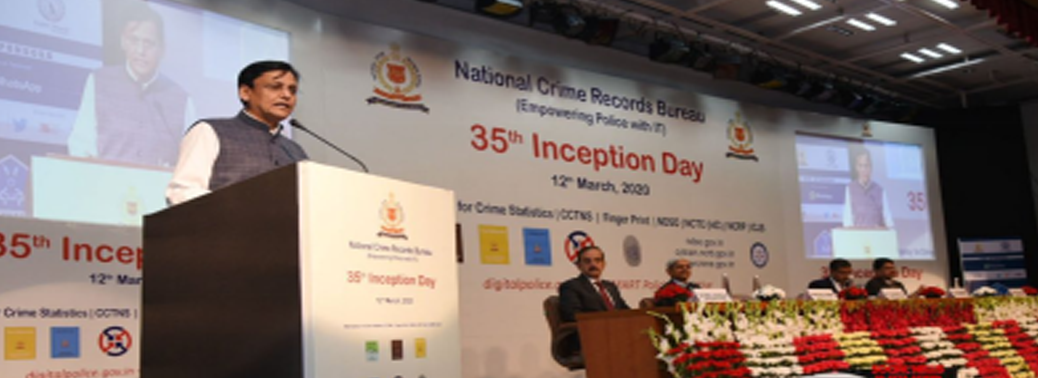
Why in News?
- National Crime Records Bureau (NCRB) celebrated its 35th Inception Day, on March 12, 2020.
Highlights:
- A Crime Multi Agency Centre (Cri-MAC) for sharing of information on heinous crime and other issues related to inter-state coordination was launched on the occasion.
- A National Cybercrime Training Centre (NCTC) for professional quality e-Learning services on cyber-crime investigation on large scale to police officers, judges, prosecutors and other stakeholders was also launched.
- National Fingerprint Identification System (NAFIS) being setup by NCRB is expected to be ab game changer for police.
- The importance of capacity building in cyber-crime investigation and the Government’s resolve in tackling the menace of increasing cyber-crime was emphasized.
- The Crime and Criminal Tracking Network and Systems (CCTNS) Hackathon & Cyber Challenge 2020 organised by NCRB in collaboration with Cyber Peace Foundation, which received overwhelming response from police, industry and academia was lauded.
Crime and Criminal Tracking Network and Systems (CCTNS):
- Crime and Criminal Tracking Network and Systems (CCTNS) is a Mission Mode Project (MMP) under the National e-Governance Plan of Govt. of India.
- CCTNS is a project initiated in June 2009 which aims at creating an integrated system for enhancing the efficiency of policing at the Police Station level.
- The huge database of CCTNS will help investigators in solving crime cases faster.

Objective
- Make the Police functioning citizen friendly by automating the functioning of Police Stations.
- Improve delivery of citizen-centric services through effective usage of ICT.
- Provide the Investigating Officers of the Civil Police with tools, technology and information to facilitate investigation of crime and detection of criminals.
- Improve Police functioning in various other areas such as Law and Order, Traffic Management etc.
- Facilitate interaction and sharing of information among Police Stations, Districts, State/UT headquarters and other Police Agencies.
- Keep track of the progress of Cases, including in Courts.
- Establishing a basic platform for an Inter-Operable Criminal Justice System (ICJS).
National Crime Records Bureau:
- The National Crime Records Bureau is an Indian government agency responsible for collecting and analyzing crime data as defined by the Indian Penal Code (IPC) and Special and Local Laws (SLL).
- NCRB is headquartered in New Delhi and is part of the Ministry of Home Affairs (MHA), Government of India.
- NCRB was set-up in 1986 to function as a repository of information on crime and criminals so as to assist the investigators in linking crime to the perpetrators.
Mission:
- To empower Indian Police with Information Technology and criminal Intelligence to enable them to uphold law and protect people.
- To provide leadership and excellence in crime analysis particularly for serious and organized crime.
Objectives:
- Create and maintain secure sharable National Databases on crimes and criminals for law enforcement agencies and promote their use for public service delivery.
- Collect and process crime statistics at the national level and clearing house of information on crime and criminals both at National and International levels.
- Lead and coordinate development of IT applications and create an enabling IT environment for Police organizations.
- National repository of fingerprints of all criminals.
- To evaluate, modernize and promote automation in State Crime Records Bureau and State Finger Print Bureau.
- Training and capacity building in Police Forces in Information Technology and Finger Print Science.
ROLE OF L-G AND GOVERNMENT IS INTERTWINED: MADRAS HC
13, Mar 2020

Why in News?
- Madras High Court has set aside its own order restraining the L-G from interfering in the day-to-day affairs of the elected government of the union territory.
What is the Issue?
- Previously, On March 2019, the Madras High Court had said that the L-G does not have the power to interfere in the day-to-day activities of the union territory.
- LG also have doesn’t the right to seek any government documents from the Puducherry government.
What are the observations made by the High Court in its latest order?
- The role of Puducherry’s Lieutenant Governor and that of an elected government in the Union Territory were intertwined as per law, and therefore they were expected to act in unison and not in division.
- In the past judgment on this issue, the single judge had erred in holding that the Puducherry Legislative Assembly enjoys similar powers to that of a State legislature.
- A government is “a trustee for the little man who should not have a perception that the running of the government is a gigantic conspiracy”.
What are the powers and sources of LG of Puducherry?
- The Government of Union Territories Act, 1963 provides for a Legislative Assembly of Pondicherry (as Puducherry was then called), with a Council of Ministers to govern the “Union Territory of Pondicherry”.
- The same Act says that the UT will be administered by the President of India through an Administrator (LG).
- Section 44 of the Act, says the Council of Ministers headed by a Chief Minister will “aid and advise the Administrator in the exercise of his functions in relation to matters with respect to which the Legislative Assembly of the Union Territory has power to make laws”.
- The same clause also allows the LG to “act in his discretion” in the matter of law making, even though the Council of Ministers has the task of aiding and advising him.
What happens if there is a Difference of Opinion?
- In case of a difference of opinion between the LG and his Ministers on any matter, the Administrator is bound to refer it to the President for a decision and act according to the decision given by the President.
- However, the Administrator can also claim that the matter is urgent, and take immediate action as he deems necessary.
When prior sanction of the Administrator is Required?
- Under Section 22 of the Act, prior sanction of the Administrator is required for certain legislative proposals.
- These include Bills or amendments that the Council of Ministers intends to move in the Legislative Assembly, and which deal with the “constitution and organisation of the court of the Judicial Commissioner”, and “jurisdiction and powers of the court of the Judicial Commissioner with respect to any of the matters in the State List or the Concurrent List”.
- It is also obligatory on the part of the UT government to seek the “recommendation” of the LG before moving a Bill or an amendment to provide for “the imposition, abolition, remission, alteration or regulation of any tax”, “the amendment of the law with respect to any financial obligations undertaken or to be undertaken”, and anything that has to do with the Consolidated Fund of the UT.
Powers of LG when a Bill is Passed:
- Once the Assembly has passed a Bill, the LG can either grant or withhold his assent; or reserve it for the consideration of the President.
- He can also send it back to the Assembly for reconsideration.
REVOCATION OF SUSPENSION OF MPS IN LOK SABHA
13, Mar 2020
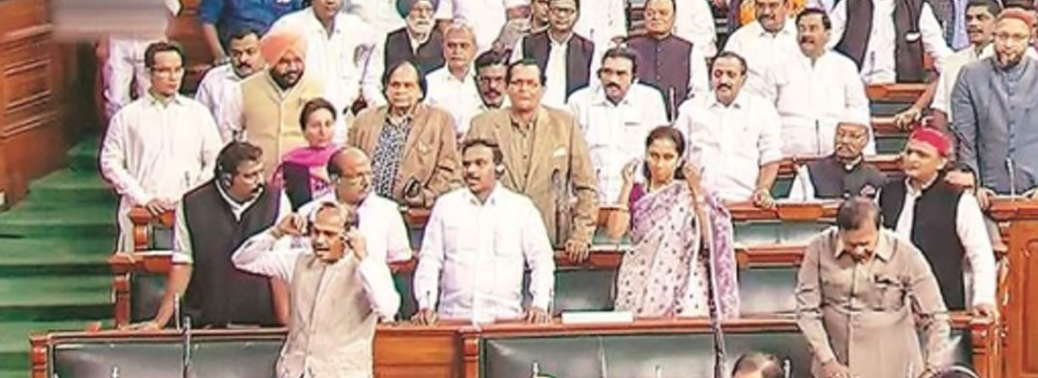
Why in News?
- Seven Congress members were recently suspended for unruly behaviour in the Lok Sabha and their suspension has been revoked recently.
What is the reason for suspending an MP?
- The general principle is that it is the role and duty of the Speaker of Lok Sabha to maintain order so that the House can function smoothly. This is a daunting task even at the best of times.
- In order to ensure that proceedings are conducted in the proper manner, the Speaker is empowered to force a Member to withdraw from the House (for the remaining part of the day), or to place him/her under suspension.
What are the Rules under which the Speaker Acts
- Rule Number 373 of the Rules of Procedure and Conduct of Business says: “The Speaker, if is of the opinion that the conduct of any Member is grossly disorderly, may direct such Member to withdraw immediately from the House, and any Member so ordered to withdraw shall do so forthwith and shall remain absent during the remainder of the day’s sitting.”
- To deal with more recalcitrant Members, the Speaker may take recourse to Rules 374 and 374A. Rule 374 says:
- “The Speaker may, if deems it necessary, name a Member who disregards the authority of the Chair or abuses the rules of the House by persistently and wilfully obstructing the business thereof.
- “If a Member is so named by the Speaker, the Speaker shall, on a motion being made forthwith put the question that the Member (naming such Member) be suspended from the service of the House for a period not exceeding the remainder of the session:
- Provided that the House may, at any time, on a motion being made, resolve that such suspension be terminated.
- “A member suspended under this rule shall forthwith withdraw from the precincts of the House.”
What is the Procedure for Revocation of a Member’s Suspension?
- While the Speaker is empowered to place a Member under suspension, the authority for revocation of this order is not vested in him/her. It is for the House, if it so desires, to resolve on a motion to revoke the suspension.
What happens in Rajya Sabha?
- Like the Speaker in Lok Sabha, the Chairman of the Rajya Sabha is empowered under Rule Number 255 of its Rule Book to “direct any Member whose conduct is in his opinion grossly disorderly to withdraw immediately” from the House.
- “Any Member so ordered to withdraw shall do so forthwith and shall absent himself during the remainder of the day’s meeting.”
- The Chairman may “name a Member who disregards the authority of the Chair or abuses the rules of the Council by persistently and wilfully obstructing” business.
- In such a situation, the House may adopt a motion suspending the Member from the service of the House for a period not exceeding the remainder of the session.
- The House may, however, by another motion, terminate the suspension.
- Unlike the Speaker, however, the Rajya Sabha Chairman does not have the power to suspend a Member.
Need of the Hour:
- A balance has to be struck. There can be no question that the enforcement of the supreme authority of the Speaker is essential for smooth conduct of proceedings. However, it must be remembered that her job is to run the House, not to lord over it.
- The solution to unruly behaviour has to be long-term and consistent with democratic values.
- A step in that same direction could be to discontinue the practice of herding people out of the visitors’ gallery when the House witnesses chaos. It has been suggested that it may perhaps be a good idea to let them be — and to also reserve a few blocks in the gallery for schoolchildren, who could see for themselves the conduct of Members.
REMOVAL OF CONTROVERSIAL ‘NAME AND SHAME’ HOARDINGS
11, Mar 2020
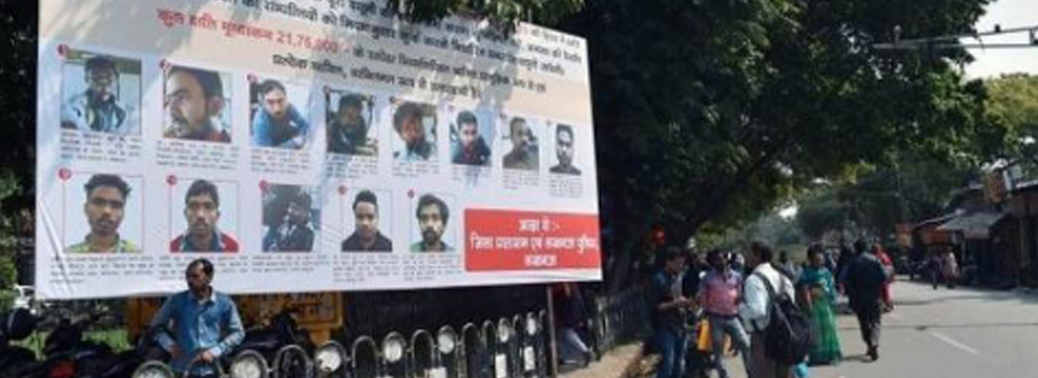
Why in News?
- Allahabad High Court has directed the Lucknow administration to remove forthwith the controversial ‘name and shame’ hoardings of those arrested during protests against the Citizenship (Amendment) Act.
What is the Issue?
- The Allahabad High Court had taken Suo motu notice of this act on which the police put up several hoardings across Lucknow identifying those accused of violence during the protests against the Citizenship (Amendment) Act in December triggering those named to fear for their safety.
What are the Observations Made by the Court?
- The action of the State is nothing but an unwarranted interference in privacy of people. The same hence, is in violation of Article 21 of the Constitution of India.
- The placement of personal data of selected persons “reflects colourable exercise of powers” by the government.
- There are certain provisions empowering the investigating agencies or other Executives to take picture of accused for the purpose of their identification and record but that too is not open for publication. The only time these photographs be published is to have assistance in the apprehension of a fugitive from justice.
- No power is available in the Code of Criminal Procedure, 1973 to police or the Executive to display personal records of a person to public at large.
- On the issue of court taking the case Suo motu, it said “where there is gross negligence on part of public authorities and government, where the law is disobeyed and the public is put to suffering and where the precious values of the constitution are subjected to injuries, a constitutional court can very well take notice of that at its own.”
How the Administration Defended its move?
- While accepting absence of any statute permitting executive authorities to put such banners, the government had opposed the petition by submitting that the object of displaying personal details of the individuals “is to deter the mischief mongers from causing damage to public and private property.”
- The State has also questioned the territorial jurisdiction of the court in Allahabad and argued that the court “erred in invoking public interest jurisdiction in the instant matter, that being available to under privileged section of the society only.
CENTRE CANNOT BRAND ORGANISATIONS ‘POLITICAL’, SAYS SUPREME COURT
09, Mar 2020
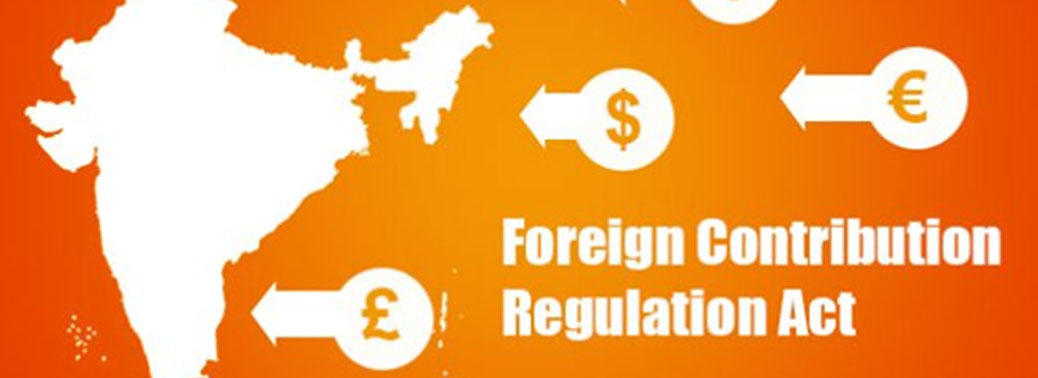
Why in News?
- The Supreme Court recently held that the central government cannot brand an organisation political and deprive it of its right to receive foreign funds for using legitimate forms of dissent to aid a Public Cause.
Background:
- This judgement comes in the background of a petition filed by the Indian Social Action Forum (INSAF) challenging certain provisions of the Foreign Contribution Regulation Act (FCRA), 2010 and the Foreign Contribution (Regulation) Rules of 2011.
Issues with the FCRA Act:
- The FCRA 2010 prohibited acceptance and utilisation of foreign contribution or foreign hospitality for any activities detrimental to the national interest.
- 1.Unbridled Powers to the Centre:
- But both the Act and the rules confer the Centre with ‘unguided and uncanalised power’ to brand organisations political and shut down their access to foreign funds.
- Section 5(1) of the FCRA was challenged for being vague as it allowed the Centre to decide freely whether a seemingly non-political organisation was actually political in nature. The Court said that the provision was expansive and not vague.
- 2.No Proper Grievance Addressal:
- Section 5(4) of the FCRA was also questioned as it did not exactly identify the authority before which an organisation could represent its grievance. This contention was dismissed by the apex court.
- 3.Activities which are classified as “Political” in Nature
- Various clauses of Rule 3 of the 2011 Rules were also challenged. This provision identified the various types of ‘political’ activities for which/organisations whose foreign funding could be stopped by the Government.
Highlights of the Judgement:
- SC observed that an organisation, which supports the cause of a group of citizens agitating for their rights without a political goal or objective, cannot be penalised by being declared as an organisation of a political nature.
- However, foreign funding could be stopped if an organisation took recourse to these forms of protest to score a political goal.
- Organisations with political objectives in their memorandum of association or bye-laws cannot be permitted access to foreign funds because of their clear political nature.
Justifications behind the Move:
- A prohibition from receiving direct or indirect foreign aid ensures that the values of a sovereign democratic republic are protected.
- It is to make sure that the administration is not influenced by foreign-funded political organisations.
- Foreign funding can continue for organisations of farmers, workers, students, youth based on caste, community, religion, language, etc as long as they work for the social and political welfare of society and not to further political interests.
RIGHT OF AN ACCUSED TO BE DEFENDED
09, Mar 2020

Why in News?
- Recently, the Karnataka High Court observed that it is unethical and illegal for lawyers to pass resolutions against representing accused in court.
What is the Issue?
- This was after local bar associations had objected to four students arrested for sedition being defended in court.
- This is not the first time that bar associations have passed such resolutions, despite a Supreme Court ruling that these are “against all norms of the Constitution, the statute and professional ethics”.
What does the Constitution say about the right of an Accused to be Defended?
- Article 22(1) gives the fundamental right to every person not to be denied the right to be defended by a legal practitioner of his or her choice.
- Article 14 provides for equality before the law and equal protection of the laws within the territory of India.
- Article 39A, part of the Directive Principles of state policy, states that equal opportunity to secure justice must not be denied to any citizen by reason of economic or other disabilities, and provides for free legal aid.
What has the Supreme Court said about such Resolutions by Bar Associations?
- Supreme Court observations in 2010A S Mohammed Rafi vs State of Tamil Nadu case:
- Such resolutions are wholly illegal, against all traditions of the bar and against professional ethics.
- Every person, however wicked, depraved, vile, degenerate, perverted, loathsome, execrable, vicious or repulsive he may be regarded by society has a right to be defended in a court of law and correspondingly, it is the duty of the lawyer to defend him.”
- Such resolutions were “against all norms of the Constitution, the statute and professional ethics”, called these “a disgrace to the legal community”, and declared them null and void.
How are Professional Ethics of Lawyers Defined?
- The Bar Council of India has Rules on Professional Standards, part of the Standards of Professional Conduct and Etiquette to be followed by lawyers under the Advocates Act.
- An advocate is bound to accept any brief in the courts or tribunals, at a fee consistent with his standing at the Bar and the nature of the case. The Rules provide for a lawyer refusing to accept a particular brief in “special circumstances”.
- Last year, The Uttarakhand High Court clarified that these special circumstances refer to an individual advocate who may choose not to appear in a particular case, but who cannot be prohibited from defending an accused by any threat of removal of his membership of the Bar Association.
Have lawyers faced action for Such Resolutions?
- Uttarakhand High Court has previously held that, in such instances, the State Bar Council can initiate action against office-bearers of the Bar Association if such resolutions are passed.
- It also said that action under Section 15(2) of the Contempt of Courts Act, 1971, can be considered against advocates who interrupt court proceedings.
PRESIDENT REJECTS MERCY PETITION OF CONVICT IN NIRBHAYA CASE
07, Mar 2020
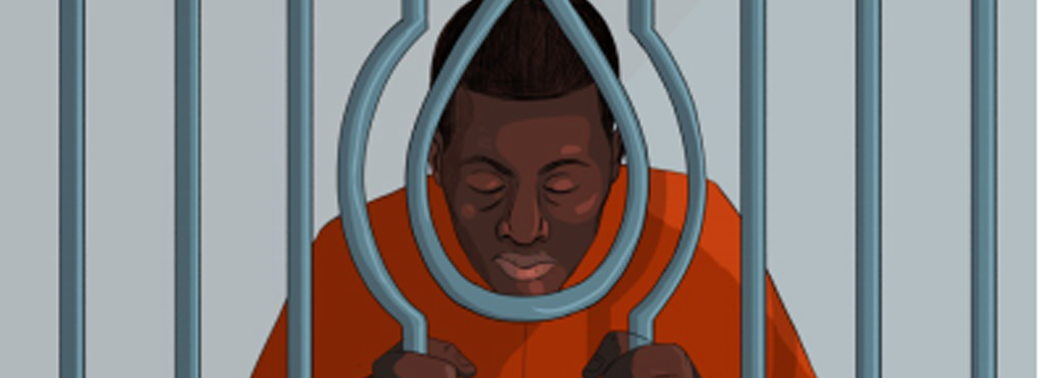
Why in News?
- President Ram Nath Kovind has rejected the mercy petition of Pawan Gupta, one of the four death row convicts in the 2012 Nirbhaya gang-rape and murder case.
Highlights:
- Gupta was the last convict to file a mercy petition.
- This comes after a Delhi court stayed for the third time the death sentence of four convicts in the case observing that they cannot be executed while a mercy petition is pending before the President.
Mercy Petition:
- There is no statutory written procedure for dealing with mercy petitions, but in practice, after extinguishing all the reliefs in the court of law, either the convict in person or his relative on his behalf may submit a written petition to the President.
- The petitions are received by the President’s secretariat on behalf of the President, which is then forwarded to the Ministry of Home Affairs for their comments and recommendations.
- A convict under the sentence of death is allowed to make the petition within a period of seven days after the date on which the Superintendent of jail informs him about the dismissal of the appeal or special leave to appeal by the Supreme Court.
- The Home Ministry in consultation with the concerned State Government discusses the merits of the petition.
- After the consultation, recommendations are made by the Home Minister and then, the petition is sent back to the President for his decision.
What happens when a convict moves a Mercy Petition?
- In case, the petition is filed within seven days then it is the duty of the Jail Superintendent to stay the execution of the death sentence.
- However, this does not mean that after the expiry of seven days a convict cannot file a mercy petition.
- In such exceptional cases or intervening circumstances, it is the concerned state government that will decide the question of deferring the death sentence.
- President’s pardoning power:
Article 72 of the Indian constitution provides:
- The President shall have the power to grant pardons, reprieves, respites or remissions of punishment or to suspend, remit or commute the sentence of any person convicted of any offence—
- in all cases where the punishment or sentence is by a Court Martial;
- in all cases where the punishment or sentence is for an offence against any law relating to a matter to which the executive power of the Union extends;
- in all cases where the sentence is a sentence of death.
- Thus, Article 72 empowers the President to grant pardons, etc., and to suspend, remit or commute sentences in certain cases.
President and Mercy Petition:
- The President can either accept or reject the mercy plea as per the advice by the council of ministers
- However, the Constitution doesn’t provide for a specified time limit to accept/reject the mercy petition.
- He can keep the petition in hold for an indefinite period if he wishes to.

DELIMITATION PANEL FOR J&K AND NORTH EASTERN STATES
07, Mar 2020
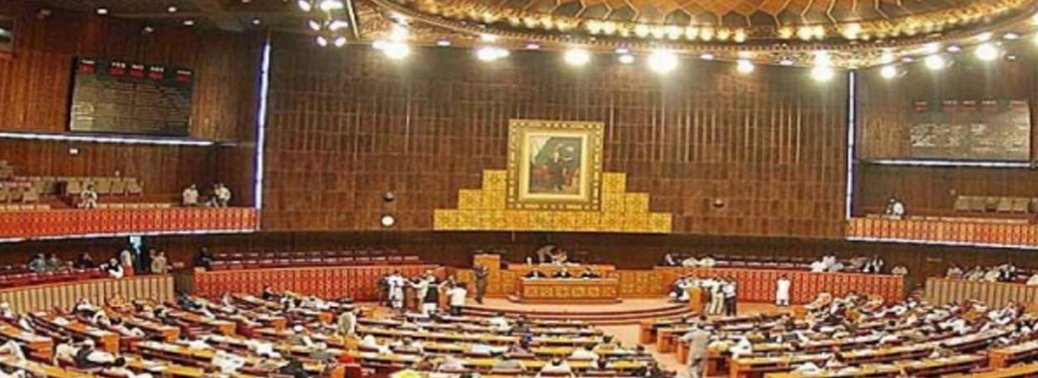
Why in News?
- The union government has started the process of redrawing the Lok Sabha and assembly constituencies in the Union Territory of Jammu and Kashmir and the northeastern states of Assam, Arunachal Pradesh, Manipur and Nagaland.
Why initiated for these Areas Alone?
- In 2002, the last delimitation was conducted across India but these states were left out due to various reasons.
What is Delimitation?
- Delimitation literally means the process of fixing limits or boundaries of territorial constituencies in a state that has a legislative body.
- Bifurcation of J&K into two UTs has led to redrawing of Assembly constituency boundaries. While, the UT of Ladakh will not have its own legislature, J&K will. This would be similar to Puducherry or Delhi.
- Such delimitation was also necessitated in 2014 when Andhra Pradesh and Telangana were bifurcated.
- According to the Delimitation Commission Act, 2002, the Delimitation Commission appointed by the Centre has to have three members: a serving or retired judge of the Supreme Court as the chairperson, and the Chief Election Commissioner or Election Commissioner nominated by the CEC and the State Election Commissioner as ex-officio members.
How Delimitation process is done?
- Under Article 82, the Parliament enacts a Delimitation Act after every Census.
- Under Article 170, States also get divided into territorial constituencies as per Delimitation Act after every Census.
- Once the Act is in force, the Union government sets up a Delimitation Commission.
- The new state assembly of Jammu and Kashmir shall have 114 seats (currently 107), out of which only 90 will be open for elections, and the remaining 24 will be shadow seats reserved for the areas of the erstwhile state that have been occupied by Pakistan (PoJK).
- For the delimitation exercise, the population figures of 2011 census shall be taken as the basis.
- The J&K Representation of the People Act 1957 has now been invalidated and, instead, delimitation will be done as per the Representation of the People Act, 1950 (as amended from time to time) and provisions of Sections 59, 60 of Act 34 of 2019.
Who carry out the Exercise?
- Delimitation is undertaken by a highly powerful commission. They are formally known as Delimitation Commission or Boundary Commission.
- These bodies are so powerful that its orders have the force of law and they cannot be challenged before any court.
- Such commissions have been constituted at least four times in India — in 1952 under the Delimitation Commission Act, 1952; in 1963 under Delimitation Commission Act, 1962; in 1973 under Delimitation Act, 1972 and last in 2002 under Delimitation Act, 2002.
- The commissions’ orders are enforced as per the date specified by the President of India. Copies of these orders are laid before the Lok Sabha or the concerned Legislative Assembly. No modifications are permitted.
Why Delimitation is Needed?
- To provide equal representation to equal segments of a population.
- Fair division of geographical areas so that one political party doesn’t have an advantage over others in an election.
- To follow the principle of “One Vote One Value”.
What are the problems with Delimitation?
- States that take little interest in population control could end up with a greater number of seats in Parliament.
- The southern states that promoted family planning faced the possibility of having their seats reduced.
- In 2008, Delimitation was done based on the 2001 census, but the total number of seats in the Assemblies and Parliament decided as per the 1971 Census that was not changed.
- The constitution has also capped the number of Lok Shaba & Rajya Sabha seats to a maximum of 550 & 250 respectively and increasing populations are being represented by a single representative.
Way Forward:
- Although the freeze on the number of seats in Lok Sabha and Assemblies should have been lifted after the 2001 Census, another amendment has postponed this until 2026.
- This was justified on the ground that a uniform population growth rate would be achieved throughout the country by 2026.
EC MOOTS LINKING AADHAAR WITH VOTER IDS
06, Mar 2020

Why in News?
- Recently the Election Commission (EC) has proposed the Law Ministry to link the Aadhaar card with the Election Photo Identity Card (EPIC) to prepare an error free electoral roll.
What is the Issue?
- The General Elections 2019 witnessed discrepancies in voter eligibility and rolls, and the resultant denial of voting rights of many.
- Migrant labours and workers are unable to vote if they are away from their homes at the time of elections.
- The disenfranchisement of voters is likely due to four factors which are discussed below, calling for Aadhaar as a solution to resolve them.
What are the Problems Faced?
1. Issues with Registration:
- Several people are unable to register to vote.
- The reasons for this range from not being aware of the registration methodology, to the process itself being inconvenient to not even knowing there is one.
- Challenges – It is the responsibility of the Election Commission of India (ECI) to inform the eligible voters who have not registered yet.
- The ECI does this via mass campaigns since it is not possible for it to exclusively identify unregistered adult citizens.
- Currently, the easiest way to freshly apply to be registered as a voter is to fill out a Form 6 on the NVSP (National Voters’ Service Portal) or the ECI’s app.
- However, this is an extremely cumbersome exercise and potentially an impediment to comprehensive voter registration efforts.
- Way out – Aadhaar can significantly simplify the process, once the ECI has ascertained that a resident is eligible to vote.
- This whole process could be replaced with a single step Aadhaar based e-KYC.
2. Problem in Voter Rolls:
- Several government functionaries have discretionary powers that empower them to remove names from voter lists.
- Additionally, the ECI has the right to disqualify citizens from voting under certain conditions as per the Constitution.
- The ECI maintains and it is indeed mandated to publish a list of people disqualified from voting in each state.However, the reasons for their disqualifications are not included and likely not recorded either.
- Concerns – There are people who have voted at a particular booth previously but have been omitted from the voter rolls.
- In many cases, the ECI does not have the contact details (or updated ones) of voters to notify them before a deletion takes place.
- The absence of contact information was due to the fact that up until recently, the ECI did not collect these details.
- In cases where they have contact details, the changes in the same are not made by voters unless the Electors Photo Identity Card (EPIC) is their de facto ID.
- Besides, the most disturbing factor is the political adventurism of parties (and politicians) and voters alike.
- There have been cases reported of voters who are registered to vote in multiple booths and, thus, can vote multiple times.
- Way Out– During registration, Aadhaar holders could give consent to the ECI to have their contact details shared.
- In that case, they could be pre-emptively notified about an impending deletion.
- The illegality of private and political actors in regards with voters roll needs to be checked.
- Here, Aadhaar’s anti-fraud and de-duplication features can be put to use.
3. Discrepancies in Details:
- Concern:Several people have been turned away from voting due to discrepancies between their details on the rolls and the ID documents they present for validation.
- Generally, people who get married or have recently changed other demographic parameters might make the necessary changes to their Aadhaars and neglect other IDs.
- Way Out –In such cases, reliance on Aadhaar will mitigate the risks of exclusion that are a consequence of demographic data mismatches.
4. Relocation:
- The most easily addressable cause of disenfranchisement is relocation.
- Concern:It is often the case that people who have made the requisite changes will feature both on the voter list of their new and previous residences.
- Way Out:Here too, it is far more likely for people to update Aadhaar rather than their EPIC.
Way Forward:
- Many of the exclusions discussed above can be remedied with Aadhaar.
- It uniquely identifies every individual in the country through all of the same details as the EPIC.
- Also, unlike EPIC, Aadhaar captures biometric data, which is useful in validating uniqueness.
- Ironically, the EPIC does not guarantee a vote; if a name does not appear on the voter rolls, she will not be permitted to vote.
- Even if a person’s name does appear on the voter rolls, the EPIC is not the only document that is accepted as proof of identity.
- Therefore, the very existence of the EPIC is worth reconsidering today.
- In this regard, the ECI publicly expressed its interest in seeding their databases with Aadhaar.
- It also attempted a drive to voluntarily link Aadhaar to voter IDs but was halted by the Supreme Court in 2017.
- There have been recent reports, however, suggesting that the ECI has been preparing to resume these activities.
- Given that Aadhaar is the only universal, de-facto identification infrastructure in India today, the move could be taken further.
COURT DOCUMENTS ACCESSIBILITY TO THIRD-PARTY
06, Mar 2020
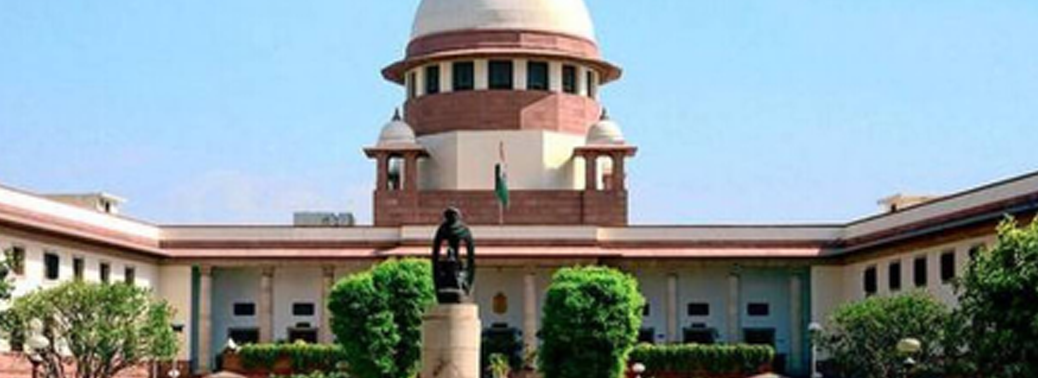
Why in News?
- The Supreme Court has recently ruled that court documents such as copies of judgments and pleadings can now be obtained by third-parties or those not party to a case.
- The significance of the judgement is that it comes within months after a five-judge bench of SC opened the office of the Chief Justice of India to scrutiny under the RTI Act.
Highlights of the Judgement:
- The information will be only available after the court rules permit it and not under the Right to Information (RTI) Act, 2005.
- The judgement has upheld the Rule 151 of Gujarat High Court Rules, which allows access to certified copies of judgments, orders and pleadings to a third-party, or those not party to a case (Only under the order of an officer of the court).
- High courts of Bombay, Himachal Pradesh, Karnataka, Madras etc have similar provisions.
- The bench held that the High Court holds the information as a trustee for the litigants in order to adjudicate upon the matter and administer justice.
- Third parties should not be permitted to have open and easy access to such personal information of the litigants or information given by the government in the proceedings because there would be a misuse of the court process and the information to an Unmanageable Level.
Means to obtain Information:
- According to the rules, litigants are entitled to receive copies of documents/judgments, etc on filing of an application with prescribed court fees stamp.
- Third parties are not given copies of judgments and other documents without the assistant registrar’s order.
- The registrar, on being satisfied about the reasonable cause for seeking the information/certified copies of the documents, allows access to the documents.
LOKPAL COMPLAINT RULES
05, Mar 2020
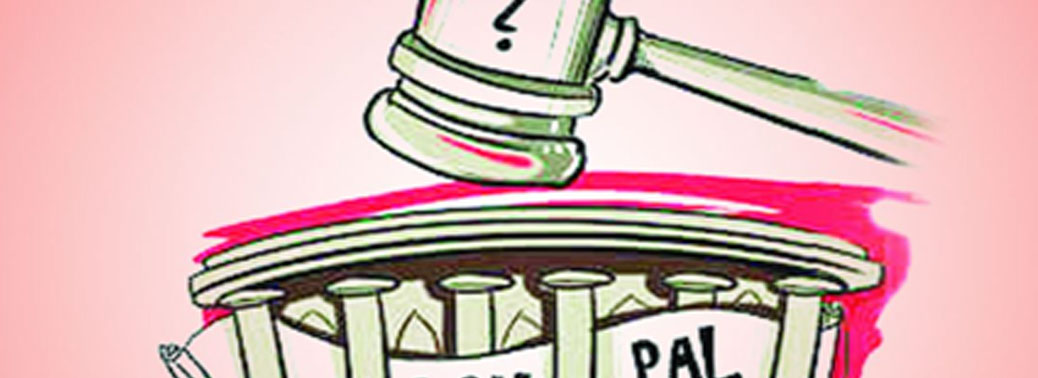
Context:
- Almost a year after the country’s first Lokpal was appointed, the Ministry of Personnel, Public Grievances and Pensions has notified the Lokpal rules. The notification, under Section 59 of the Lokpal and Lokayuktas Act, lays down the rules called the Lokpal (Complaint) Rules, 2020.
Lokpal (Complaint) Rules, 2020:
- The Department of Personnel and Training has issued a notification providing the rules and prescribed format for filing complaints with the Lokpal.
- Identity Proof:
- According to the complaint form, a complainant has to give a valid proof of identity, as specified therein.
- Foreign nationals can also lodge complaints.However, only a copy of their passports will be accepted as proof of identity.
- Mode of Complaint:
- The complaint can be filed electronically, by post or in person.
- In case the complaint is filed electronically, it’s hard copy has to be submitted to the Lokpal within 15 days.
- No complaints can be filed against a public servant under the Army Act, Navy Act, Air Force Act and the Coast Guard Act.
- Language:
- A complaint may ordinarily be made in English, provided that the Lokpal may also entertain a complaint in any of the languages referred to in the Eighth Schedule to the Constitution.
- The complaints, whose contents are illegible, vague or ambiguous, which are trivial or frivolous, do not contain any allegation, are not filed within the limitation period of seven years, or are pending before any other court, tribunal or authority, will have to be disposed of within 30 days.
- Protection of Identity:
- The identity of the complainant or the accused official will be protected by the Lokpal till the conclusion of inquiry or investigation.
- However, the protection will not be applicable in cases where the complainant herself reveals her identity to any other office or authority while making the complaint to Lokpal.
- Complaint filed against a sitting or former Prime Minister:
- The entire lokpal bench will decide if an inquiry should be initiated.
- It adds that if such a complaint is dismissed, records of the inquiry will neither be published nor made available to anyone.
- Complaint filed against a Union minister or a Member of Parliament:
- It has to be decided by a bench of not less than three members of the Lokpal.
Background:
- The Lokpal and Lokayukta Act, 2013 provided for the establishment of Lokpal for the Union and Lokayukta for States.
- These institutions are statutory bodies without any constitutional status.
- They perform the function of an “ombudsman” and inquire into allegations of corruption against certain public functionaries and for related matters.
Lokpal:
- Lokpal is an apex body to deal with cases of corruption at the national level.
- Jurisdiction: The Prime Minister, Ministers, Members of Parliament and officers and officials of the Central Government.
- The Act also incorporates provisions for attachment and confiscation of property acquired by corrupt means, even while the prosecution is pending.
- Chairperson: The person who is to be appointed as the chairperson of the Lokpal should be either of the following:
- Either the former Chief Justice of India Or the former Judge of Supreme Court Or an eminent person with impeccable integrity and outstanding ability, having special knowledge and expertise of minimum 25 years in the matters relating to anti-corruption policy, public administration, vigilance, finance including insurance and banking, law and management.
- The following persons cannot become chairperson of Lokpal:
- MPs and MLAs Persons convicted of any offense involving moral turpitude
- Members of Panchayats or Municipality,
- A person who was removed or dismissed from the public service,
- A person who holds any office of trust / profit; if so, he would need to resign from Lokpal.
- A person who is affiliated with a political party
- Members:
- Out of the maximum eight members, half will be judicial members.
- Minimum fifty per cent of the Members will be from SC / ST / OBC / Minorities and women.
- The judicial member of the Lokpal should be either a former Judge of the Supreme Court or a former Chief Justice of a High Court.
- The non-judicial member should be an eminent person with impeccable integrity and outstanding ability, having special knowledge and expertise of minimum 25 years in the matters relating to anti-corruption policy, public administration, vigilance, finance including insurance and banking, law and management.
- Term of Office:
- The term of office for Lokpal Chairman and Members is 5 years or till attaining age of 70 years.
- The salary, allowances and other conditions of service of chairperson are equivalent to Chief Justice of India and members is equivalent to Judge of Supreme Court.
- If the person is already getting the pension (for being a former judge), the equivalent pension amount will be deducted from the salary.
- The source of salary for Lokpal and Members is Consolidated Fund of India.
- If the chairperson dies in office or has resigned from the post, the President can authorise the senior-most Member to act as the Chairperson until the new chairperson is appointed.
- If the chairperson is not available for certain functions due to leave, his job will be done by the senior most member.
- Powers:
- The Lokpal will have the power of superintendence and direction over any investigation agency including CBI for cases referred to them by the ombudsman.
-
- As per the Act, the Lokpal can summon or question any public servant if there exists a prima facie case against the person, even before an investigation agency (such as vigilance or CBI) has begun the probe.
- Any officer of the CBI investigating a case referred to it by the Lokpal, shall not be transferred without the approval of the Lokpal.
- An investigation must be completed within six months. However, the Lokpal or Lokayukta may allow extensions of six months at a time provided the reasons for the need of such extensions are given in writing.
- Special courts will be instituted to conduct trials on cases referred by Lokpal.
- Lokpal itself is also subjected to the Law:
- The Act also includes the Lokpal’s own members under the definition of “public servant”.
- The Chairperson, Members, officers and other employees of the Lokpal shall be deemed, when acting or purporting to act in pursuance of any of the provisions of this Act to be public servants.
- It shall also apply to public servants in and outside India.
- It clarifies that a complaint under this Act shall only relate to a period during which the public servant was holding or serving in that capacity.
SUKHNA LAKE
05, Mar 2020
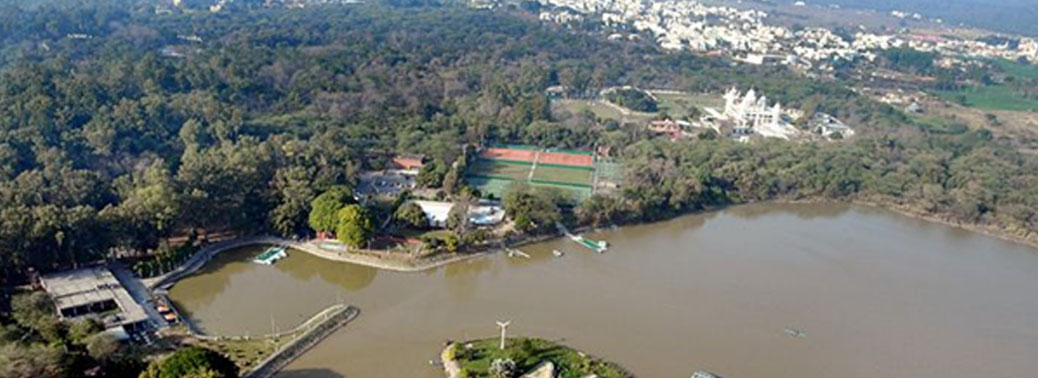
Why in News?
- Recently, the Punjab and Haryana high court has declared Sukhna Lake a “living entity” or “legal person” with rights, duties and liabilities of a living person.
About:
- The Chandigarh administration has been directed to declare it a wetland within a period of three months.
- It declared all citizens of Chandigarh as loco parentis (in the place of a parent) to save the lake from extinction.
- It is passed in a 2009 Suo motu petition initiated amid depleting water level in the lake.
- Chandigarh should ensure that the average capacity of the lake is increased by at least about 100-150 hectare by one-time large scale desilting.
- Punjab, Haryana and Chandigarh have also been told to lower the storage capacity of the check dams to ensure regular flow of water into the lake.
About Polluter Pays Principle:
- The States should have taken precautionary measures to save the catchment of Sukhna lake. It is the duty of the States of Punjab and Haryana to restore the catchment area. The State government has also failed to take precautionary measures to save the catchment area. The damage caused to the catchment area is enormous.
- Legal Entity: It means entity which acts like a natural person but only through a designated person, whose acts are processed within the ambit of law.
About Sukhna Lake:
- It is man-made lake which was built in 1958 by Le Corbusier, the architect of Chandigarh.
- It is located in the foothills of the Shivalik Hills; it was designed to collect runoff water from the Hills.
- It is in the process of being officially notified as a wetland, also has a nearby wildlife sanctuary that is home to sambar, pangolin, wild boars, red jungle fowl, cobras and other species.
- In Uttarkhand high court, justice Sharma was part of a bench in 2017, which declared the Ganga and Yamuna as living entities, a verdict that was later stayed by the Supreme Court.
- In 2018, a bench presided over by justice Sharma had accorded the status of “legal person or entity” to animals in Haryana.
- In 2019, the Punjab and Haryana High Court had ruled that all animals, birds and aquatic life in Haryana would be accorded the status of legal persons or entities.
SUPREME COURT RULING ON CRYPTOCURRENCY
05, Mar 2020

Why in News?
- The Supreme Court set aside a ban by the Reserve Bank of India (RBI) on banks and financial institutions from dealing with virtual currency holders and Exchanges.
Highlights:
- Virtual currency is the larger umbrella term for all forms of non-fiat currency being traded online. Virtual currencies are mostly created, distributed and accepted in local virtual networks.
- The court held that the ban did not pass the “proportionality” test. The test of proportionality of any action by the government, the court held, must pass the test of Article 19(1)(g), which states that all citizens of the country will have the right to practise any profession, or carry on any occupation or trade and business.
Reasons for RBI to Ban Cryptocurrency:
- Owing to the lack of any underlying fiat, episodes of excessive volatility in their value, and their anonymous nature which goes against global money-laundering rules.
- Risks and concerns about data security and consumer protection on the one hand, and far-reaching potential impact on the effectiveness of monetary policy.
- The RBI argues that owing to a significant spurt in the valuation of many virtual currencies and rapid growth in initial coin offerings, virtual currencies were not safe for use.
Cryptocurrency:
- There is no globally accepted definition of what exactly is virtual currency. Some agencies have called it a method of exchange of value; others have labelled it a goods item, product or commodity.
- Cryptocurrencies have an extra layer of security, in the form of encryption algorithms. Cryptographic methods are used to make the currency as well as the network on which they are being traded, secure.
-
Millennials, leveraging cryptocurrency tools, have become key players in the cryptocurrency market, drawn to the decentralized nature of blockchain technology. The transparent and globally visible ledger system inherent to most cryptocurrencies appeals to their values of financial autonomy and technological innovation. With an affinity for digital platforms and information accessibility, millennials actively invest in and contribute to the cryptocurrency space, using specialized tools for trading, portfolio management, and market analysis. This tech-savvy generation’s engagement with not only shapes the future of finance but also reinforces the decentralized ethos of virtual currencies, fostering a dynamic and accessible financial ecosystem.
- All users of such virtual currencies would be able to see and keep track of the transactions taking place.
NATIONAL INTERLINKING OF RIVERS AUTHORITY
04, Mar 2020

Why in News?
- The Central government is working on the establishment of an exclusive body named National Interlinking of Rivers Authority (NIRA) to implement projects for linking rivers.
What is River Interlinking?
- The National River Linking Project (NRLP)formally known as the National Perspective Plan, envisages the transfer of water from water ‘surplus’ basins where there is flooding, to water ‘deficit’ basins where there is drought/scarcity, through inter-basin water transfer projects.
- ‘Surplus’ means that it is the extra water available in a river after it meets the humans’ requirement of irrigation, domestic consumption and industries thereby underestimating the need of the water for the river itself.
- The term ‘deficit’ has also been viewed in terms of humans only and not from the river’s perspective, which includes many other factors.
About the Proposal:
- The proposed body is expected to take up both inter-State and intra-State projects.
- It will also make arrangements for generating up funds, internally and externally.
- An updated draft Cabinet note has been circulated to other Ministries in the Central government.On receipt of comments, the note will be finalised by the Ministry of Jal Shakti and sent to the Union Cabinet for approval.
- The proposal for an apex body on river linking has been under discussion for the past 18 months. However, as of now, no specific timeline has been determined for the constitution of the Authority.
- Once approved, the projects will be pursued as national projects, wherein the Centre will absorb 90% of the cost and the States concerned the rest.
Currently who is responsible for the Interlinking of Rivers?
- The National Water Development Agency (NWDA) is responsible for the formulation of proposals of the linking of rivers.
- NWDA is the agency of the Union Ministry of Water Resources. It was set up in July, 1982 as autonomous society under the Societies Registration Act, 1860.
- It was established to carry out the water balance and other studies on a scientific and realistic basis for optimum utilisation of Water Resources of the Peninsular rivers system.
- Besides it was tasked to prepare feasibility reports and give concrete shape to Peninsular Rivers Development Component of National Perspective.
- In 1990, it was also entrusted with the task of Himalayan Rivers Development Component of National Perspectives.
- Recently, the functions of NWDA have been further modified and the work of preparation of detailed Project Reports (DPR) of various link proposals and Pre-feasibility Reports.
- It has been also entrusted to prepare feasibility reports of intra-State links as proposed by the States.
What are the Projects under Examination?
- As of now, six ILR projects — the Ken-Betwa, Damanganga- Pinjal, Par-Tapi-Narmada, Manas-Sankosh-Teesta-Ganga, Mahanadi-Godavari and Godavari-Cauvery (Grand Anicut) — have been under examination of the authorities.
- With regard to the peninsular rivers, the Centre has chosen to focus on the Godavari-Cauvery link than the earlier proposal to link the Mahanadi-Godavari-Krishna-Pennar-Cauvery Rivers. The latter has eluded consensus given reservations from Odisha.
What are the Benefits?
- A national water grid aims to connect various surplus rivers with deficient rivers.
- It aims to transfer excess water from water-rich to water-deficit regions.
- This is to help improve irrigation, increase water for drinking and industrial use.
- Mitigating drought and floods to an extent are also part of the objectives.
What are the Concerns?
- There are significant environmental concerns associated with inter-basin transfer. The ecology of every river is unique. Letting the waters of two rivers mix may affect biodiversity.
- Besides, it involves construction of a massive network of canals and dams, which would lead to large-scale displacement of people.
- It may make changes to agricultural patterns, and affect livelihoods.
- In addition, rainfall patterns are changing due to climate change.
- So the basins now supposed to be surplus, might cease to be so in few years.
- There are financial concerns as well, related to the projects. In 2001, the total cost for linking the Himalayan and peninsular rivers was estimated at Rs. 5,60,000 crores. The cost is now likely to be substantially higher.
- Also, the cost-benefit ratio might no longer be favourable.
Way Forward:
- The necessity and feasibility of river-interlinking should be seen on case to case basis, with adequate emphasis on easing out federal issues.
- The government should alternatively consider the National Waterways Project (NWP) which “eliminates” friction between states over the sharing of river waters since it uses only the excess flood water that goes into the sea unutilized.
- Local solutions (like better irrigation practice) and watershed management, should be focused on.
STATE FUNDING OF ELECTIONS
04, Mar 2020

Why in News?
- The Election Commission has informed the Government that it is not in favour of state funding of elections.
What is state or Public Funding of Elections?
- This means that government gives funds to political parties or candidates for contesting elections. Its main purpose is to make it unnecessary for contestants to take money from powerful moneyed interests so that they can remain clean.
- In some countries, state funding is extended to meeting some specific forms of spending by political parties, not confined to electioneering alone. Countries keep changing laws relating to state funding depending on experience and financial condition.
Why Public Funding is Good?
- Political parties and candidates need money for their electoral campaigns, to keep contacts with their constituencies, to prepare policy decisions and to pay professional staff. Therefore, public funding is a natural and necessary cost of democracy.
- Public funding can limit the influence of interested money and thereby help curb corruption.
- Public funding can increase transparency in party and candidate finance and thereby help curb corruption.
- If parties and candidates are financed with only private funds, economical inequalities in the society might translate into political inequalities in government.
- In societies where many citizens are under or just above the poverty line, they cannot be expected to donate large amounts of money to political parties or candidates. If parties and candidates receive at least a basic amount of money from the State the country could have a functioning multi-party system without people having to give up their scarce resources.
Arguments against State Funding:
- There are divergent views on the efficacy of state funding of elections. Some have been dismissive of the idea.
- Those against this idea wonder how a Government that is grappling with deficit budgets, can provide money to political parties to contest elections.
- They also warn that state funding would encourage every second outfit to get into the political arena merely to avail of state funds.
- Also, given that state expenditure on key social sectors such as primary healthcare is “pitifully small”, the very idea of the Government giving away money to political parties to contest polls, is revolting. Therefore, opponents ask the government to channelize public resources towards and not diverted from such essential services.
Earlier recommendations related to State Funding:
The Indrajit Gupta Committee (1998)
- It endorsed state funding of elections, seeing “full justification constitutional, legal as well as on ground of public interest” in order to establish a fair playing field for parties with less money.
- The Committee recommended two limitations to state funding.
- Firstly, that state funds should be given only to national and state parties allotted a symbol and not to independent candidates.
- Secondly, that in the short-term state funding should only be given in kind, in the form of certain facilities to the recognised political parties and their candidates.
- The Committee noted that at the time of the report the economic situation of the country only suited partial and not full state funding of elections.
2. The 1999 Law Commission of India report
- It concluded that total state funding of elections is “desirable” so long as political parties are prohibited from taking funds from other sources.
- The Commission concurred with the Indrajit Gupta Committee that only partial state funding was possible given the economic conditions of the country at that time.
- Additionally, it strongly recommended that the appropriate regulatory framework be put in place with regard to political parties (provisions ensuring internal democracy, internal structures and maintenance of accounts, their auditing and submission to Election Commission) before state funding of elections is attempted.
3. “Ethics in Governance”: 2ndARC
- A report of the Second Administrative Reforms Commission (2008) also recommended partial state funding of elections for the purpose of reducing “illegitimate and unnecessary funding” of Elections Expenses.
CURATIVE PETITION
03, Mar 2020
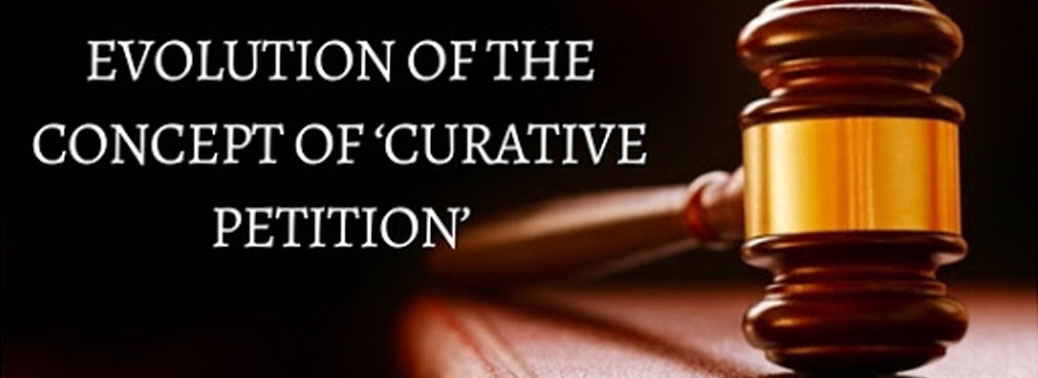
Why in News?
- Curative petition is the last to last resort in the line of due justice being given and the last opportunity of the unheard being heard.
Curative Petition:
- A curative petition is the final and last option for the people to acquire justice as mentioned and promised by the Constitution of India.
- The concept originated from the case of Rupa Ashok Hurra Vs. Ashok Hurra and others where the following question arose before the court of law- ‘whether an aggrieved person is entitled to any relief against the final judgment/order of the Supreme Court, after the dismissal of a review petition?’
- The court used the Latin maxim “actus curiae neminem gravabit”, which means that an act of the court shall prejudice no one.
- The maxim becomes applicable when the court is under an obligation to undo a wrong done to a party by the act of court itself.
- This led to the creation of the concept of a curative petition by the Supreme Court and the reason given for such creation was preventing the abuse of the process of law and to cure the lapses in the existing system of justice.
How is Curative Petition Different?
- A curative petition is a way to ask the court to review and revise their own decision even after a review petition is dismissed or used.
- But, the court has been very cautious in the use of such a petition. The court clearly stated that such kind of petitions must be rare instead of regular.
- To ensure it, the court in its guidelines to file the petition stated that to file such a petition a gross violation of a principle of natural justice by the court needs to be proved by the contending party, unlike other petitions.
- Also to prove such violations, a senior advocate needs to certify and point out substantial grounds for the petition to be entertained.
- The same would be reviewed by the three senior-most judges of the court alongside the judges who passed the judgement, and if the majority feels that there was a violation, the curative petition would be heard by the same bench.
- Adding to the speciality, a curative petition is not governed by the provisions of the Limitations Act but the court made it clear that it needs to be filed within a reasonable time.

What does this mean for the Nirbhaya Convicts?
- A curative petition is the last legal recourse available to the convicts.
- Going by the procedure regarding pointing out substantial grounds, the lawyer of convict Vinay Sharma, has placed the argument that young age and the socio-economic background should be considered as mitigating factors.
- Interestingly, the advocate challenged the reasoning given by the Supreme Court, pointing out reports and studies by law universities and National Crime Records Bureau which state that a death sentence won’t have any deterrent effect on the society, which is the reason on which the sentencing by SC was based.
- With the existing media and political pressure on this case from the beginning, it’ll be interesting to see the fallout of the petition, which would, for sure, go down as one of the most landmark judgments in the history of this nation’s legal system.
NATIONAL INVESTIGATION AGENCY (NIA)
02, Mar 2020
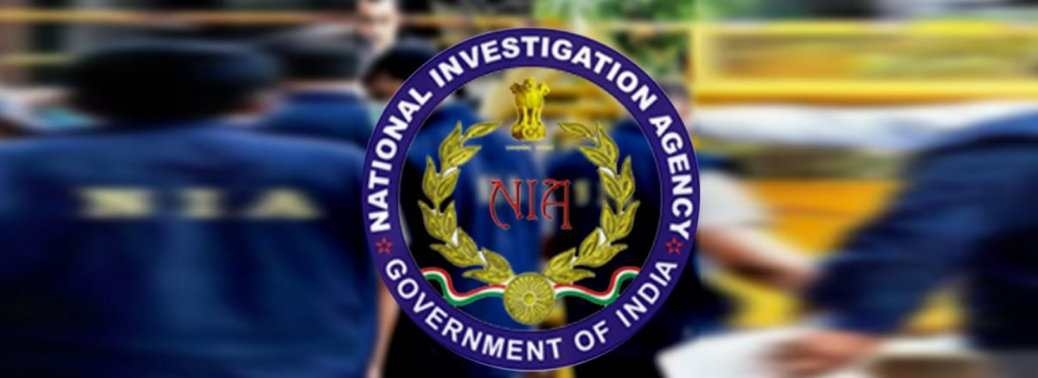
Context:
- Recently, a petition filed to order the National Investigation Agency (NIA)to find out the “anti-national forces” behind the agitations and to probe the role of People’s Front of India (PFI).
About NIA:
- It is constituted under the National Investigation Agency (NIA) Act, 2008.
- It is to investigate and prosecute offences:
- affecting the sovereignty, security and integrity of India, security of State, friendly relations with foreign States.
- against atomic and nuclear facilities.
- smuggling in High-Quality Counterfeit Indian Currency.
- It implements international treaties, agreements, conventions and resolutions of the United Nations, its agencies and other international organisations.
- Its objective is to combat terror in India. It acts as the Central Counter-Terrorism Law Enforcement Agency.
- Its headquarters is at New Delhi and branches located at Hyderabad, Guwahati, Kochi, Lucknow, Mumbai, Kolkata, Raipur and Jammu.
About the Mandate of NIA:
- The Central Government assign the cases in accordance with section VIof the NIA Act, 2008.
- The investigation of the cases is done by the Agency independently and placed before the NIA Special Court.
- The sanction is granted under the Unlawful Activities (Prevention) Act, 1967 UAPA based on the report of the ‘Authority’ constituted under section 45 (2) of the UAPA.
- It is empowered to deal with terror-related crimes across states without special permission from the states.
- To curb various aspects of terrorist financing, a Terror Funding and Fake Currency Cell (TFFC) has been created in the NIA.
- TFFC maintains a database of terror financing and cases of Fake Indian Currency Notes (FICN). It also conducts a part investigation into terror financing aspects of regular cases investigated by the NIA. Its Cell conducts verifications of bank accounts of the suspects that are linked with Naxalite groups.
- NIA also has an exclusive Left Wing Extremism (LWE)cell to effectively deal with cases related to terror financing aspects of Naxalite groups.
- The Ministry of Home Affairs (MHA) reviews the manpower, financial and infrastructure requirements of NIA from time to time.
About the NIA (Amendment) Bill, 2019:
- It was passed by Parliament amending the original Act of 2008.
- It seeks to allow the NIA to investigate the following additional offences:
- Human trafficking
- Manufacture or sale of prohibited arms
- Cyber-terrorism, and
- Offences under the Explosive Substances Act, 1908
About Jurisdiction-NIA:
- The officers have the same powers as other police officers in relation to the investigation of such offences, across India.
- They will have the power to investigate scheduled offences committed outside India, subject to international treaties and domestic laws of other countries.
- The central government may direct the NIA to investigate such cases as if the offence has been committed in India.
- The Special Court in New Delhi will have jurisdiction over these cases.
- Scheduled Offences are the list of offences specific to the acts such as the Atomic Energy Act, 1962, and h, which are to be investigated and prosecuted by NIA.
About Jurisdiction – Special Courts:
- The Government for the trial of Scheduled Offences, constitute one or more Special Courts under Section 11 and 22 of the NIA Act 2008.
- Composition: Special Court shall be presided over by a judge to be appointed by the Central Government on the recommendation of the Chief Justice of the High Court. The Central Government may, if required, appoint an additional judge or additional judges to the Special Court, on the recommendation of the Chief Justice of the High Court.
- It has all powers of the court of sessions under the Code of Criminal Procedure, 1973.
- Where any question arises as to the jurisdiction of any Special Court, it shall be referred to the Central Government whose decision in the matter shall be final.
- The Supreme Court can transfer a case pending before a Special Court to any other Special Court within that State or any other State in some exceptional cases where it is not feasible to conduct a peaceful, fair, impartial and speedy trial.
- Likewise, the High Court has the power to transfer a case pending before a Special Court in a State to any other Special Court within that State.
SEDITION CASES – A HINDRANCE FOR RIGHT TO DISSENT
02, Mar 2020
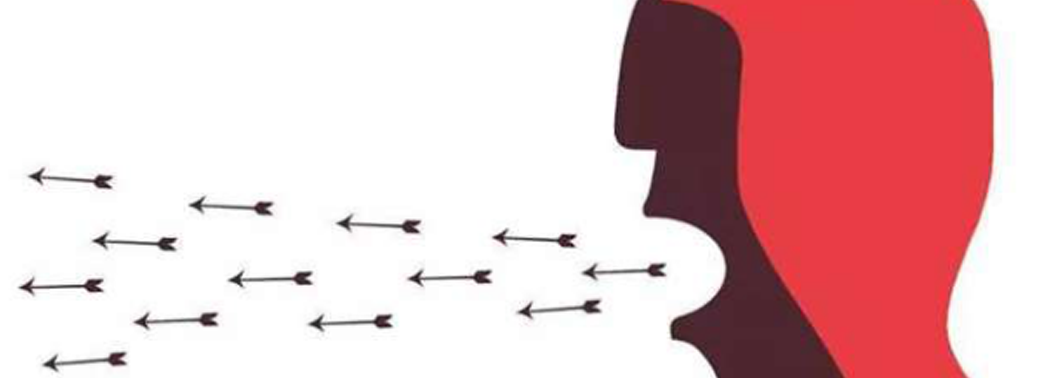
Context:
- Latest data from NCRB suggest that the sedition law remains as relevant as ever with sedition arrests increasing in recent years.
What is Sedition?
- Sedition, which falls under Section 124A of the Indian Penal Code, is defined as any action that brings or attempts to bring hatred or contempt towards the government of India and has been illegal in India since 1870.
Kedarnath Singh vs State of Bihar:
- Section 124A has been challenged in various courts in specific cases. The validity of the provision itself was upheld by a Constitution Bench in 1962, in Kedarnath Singh vs State of Bihar.
- That judgment went into the issue of whether the law on sedition is consistent with the fundamental right under Article 19 (1) (a)which guarantees each citizen’s freedom of speech and expression.
- The Supreme Court laid down that every citizen has a right to say or write about the government, by way of criticism or comment, as long as it does not “incite people to violence” against the government established by law or with the intention of creating public disorder.
What does the Data Shows?
- The National Crime Records Bureau (NCRB), though, has only been collecting separate data on sedition cases since 2014. In 2014, there were 47 cases of sedition but that number increased to 70 in 2018 (the latest year with available data).
- Compared to other offences, sedition remains a rare crime (it accounts for less than 0.01% of all IPC crimes).
- But within India, some parts are emerging as sedition hotspots. Assam and Jharkhand, for instance, with 37 sedition cases each, account for 32% of all sedition cases between 2014-2018.
- In 2018, there were 1,182 cases registered under UAPA(The Act gives special procedures to handle terrorist activities, among other things). And almost all these cases (92%) were concentrated in five states (Uttar Pradesh, Jammu and Kashmir, Assam, Jharkhand and Manipur).
Why sedition law is a Hindrance?
- Sedition leads to a sort of unauthorised self-censorship, for it produces a chilling effect on free speech.
- It suppresses what every citizen ought to do in a democracy — raise questions, debate, disagree and challenge the government’s decisions.
- Sedition systematically destroys the soul of Gandhi’s philosophy that is, right to dissent which is the core principle of democracy.
Why Right to Dissent is Essential?
- The Right to Dissent is an important addition of expressing one’s view, and on many of its most important constituent elements.
- It will enable practitioners and citizens to claim their rights and participate more effectively in the project of democracy.
- Disagreeing with each other is a fundamental human trait. There is not a single individual who does not disagree with something or the other all the Time.
- But gagging people through sedition cases strikes the people’s right to dissent and freedom of expression.
CENTRAL CONSUMER PROTECTION AUTHORITY
29, Feb 2020

Why in News?
- The government is all set to establish a Central Consumer Protection Authority to protect the rights of the consumer.
About Central Consumer Protection Authority (CCPA):
- The authority is being constituted under Section 10(1) of The Consumer Protection Act, 2019.
- Its aim is to protect the rights of the consumer by cracking down on unfair trade practices, and false and misleading advertisements that are detrimental to the interests of the public and consumers.
- It will be headquartered in the National Capital Region of Delhi but the central government may set up regional offices in other parts of the country.
What is its Composition?
- It will have a Chief Commissioner as head, and only two other commissioners as members— one of whom will deal with matters relating to goods while the other will look into cases relating to services.
- The CCPA will have an Investigation Wing that will be headed by a Director General.
- District Collectors too, will have the power to investigate complaints of violations of consumer rights, unfair trade practices, and false or misleading advertisements.
What are its Powers and Functions?
- Inquire or investigate into matters relating to violations of consumer rights or unfair trade practices suo motu, or on a complaint received, or on a direction from the central government.
- Recall goods or withdrawal of services that are “dangerous, hazardous or unsafe.
- Pass an order for refund the prices of goods or services so recalled to purchasers of such goods or services; discontinuation of practices which are unfair and prejudicial to consumer’s interest”.
- Impose a penalty up to Rs 10 lakh, with imprisonment up to two years, on the manufacturer or endorser of false and misleading advertisements. The penalty may go up to Rs 50 lakh, with imprisonment up to five years, for every subsequent offence committed by the same manufacturer or endorser.
- Ban the endorser of a false or misleading advertisement from making endorsement of any products or services in the future, for a period that may extend to one year. The ban may extend up to three years in every subsequent violation of the Act.
- File complaints of violation of consumer rights or unfair trade practices before the District Consumer Disputes Redressal Commission, State Consumer Disputes Redressal Commission, and the National Consumer Disputes Redressal Commission.
What are the other Penalties Imposed?
- If injury is not caused to a consumer, fine up to Rs 1 lakh with imprisonment up to six months.
- If injury is caused, fine up to Rs 3 lakh with imprisonment up to one year.
- If grievous hurt is caused, fine up to Rs 5 lakh with imprisonment up to 7 years.
- In case of death, fine of Rs 10 lakh or more with a minimum imprisonment of 7 years, extendable to imprisonment for life.
What are its Impacts?
- The setup of CCPA will ensure the protection of consumers as it imposes stringent punishments.
- It acts as a guardian for the consumers in all aspects.
- Fines and penalties in case of violation for the companies make the quality of the product and services more valuable.
ALL FORM OF AGITATIONS BANNED IN SCHOOLS AND COLLEGES
29, Feb 2020
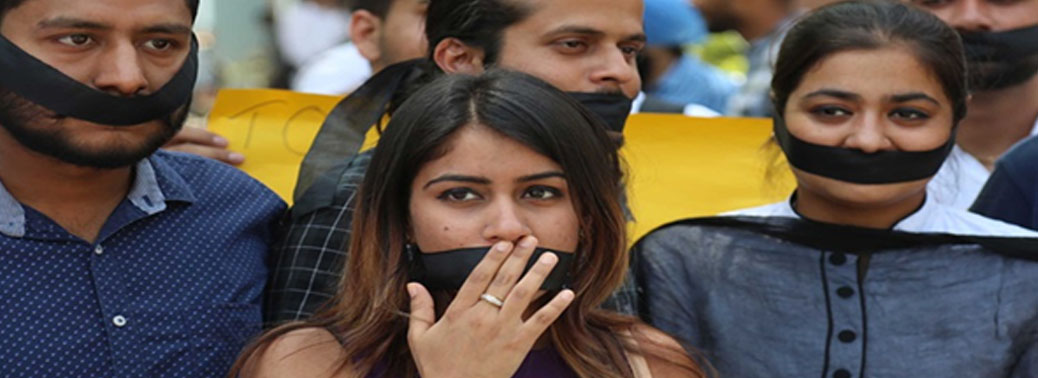
Why in News?
- The Kerala High Court has ruled recently that strikes, rallies and gheraos (prevent employers from leaving a place of work until certain demands are met) that affect regular classes should not be held on the campuses of schools and colleges.
What are the observations made by the Court?
- Those who are not participating in the strike have every right to attend their classes and no one should force them to participate in agitations that affect smooth conduct of classes.
- Academic institutions are only meant for studies and they should not be venues for strikes and protests.
- Nobody has the right to override a student’s right to study and action can be against those who indulge in strikes, rallies and gheraos that affect regular classes.
- Campuses can have peaceful discussions and sharing of thoughts in a peaceful manner.
- Students and others who force students to take part in the strike can be dealt with the law as it was the infringement of the basic right of the student.
What are the measures taken if the rule is Violated?
- If such incidents take place in schools, the authorities concerned, including the district educational officer, can take action against erring students. They can even summon the police to restore the peace in the campus.
- Similar measures should be taken on the college campuses as well. But, campuses can have peaceful discussions and sharing of thoughts on any issue. This, however, should not be done by causing inconvenience to students or lead to a strike.
What are earlier Verdicts Given?
- An earlier judgment had granted managements the authority to ban politics in their respective campuses.
- Another court order also stated that students should not be forcefully made to boycott classes.
- The court had also ruled earlier that police should give protection if the authorities ask for it.
- In the ‘Vijayakumar’ case, the court ruled that if criminal activities take place in college premises, police has the right to take action and enter campus without permission.
What are the Criticisms?
- The HC verdict has evoked sharp reactions from many student outfits and political parties which they said would affect students’ rights and their plan to carry out peaceful protests.
ELECTIONS TO RAJYA SABHA
27, Feb 2020
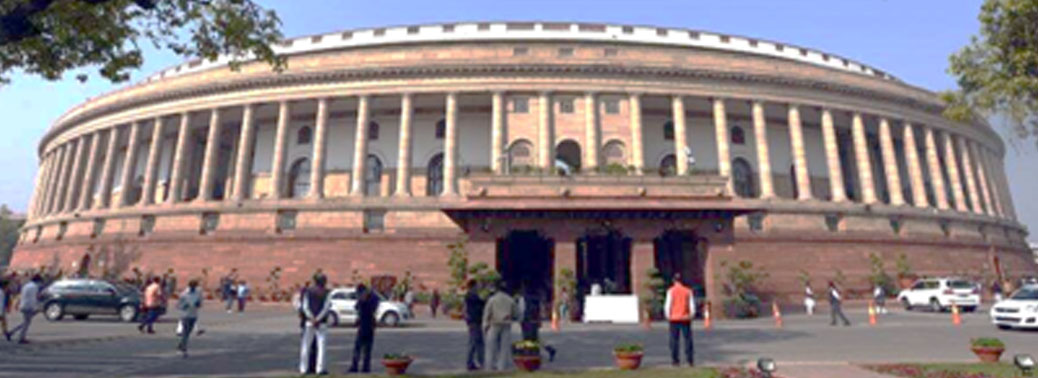
Why in News?
- The Election Commission has announced that elections to 55 Rajya Sabha seats will be held on March 26, 2020.
Highlights:
- Since Rajya Sabha MPs are elected by state MLAs, political parties with more MLAs are likely to send more MPs to the Upper House.
- Major changes, therefore, are expected in states that have seen a change of power in the last Assembly election.
- Therefore, the BJP is expected to lose seats in Madhya Pradesh, Chhattisgarh, and Rajasthan where it lost state elections.
- However, it will gain in Uttarakhand and Karnataka, where it came to power in 2017 and 2019 respectively.
- Overall, the BJP’s current strength in Rajya Sabha will likely remain undiminished.
- The Trinamool Congress and YSR Congress Party are expected to make significant gains in the 245-member Upper House after the elections.
Vacancies:
- These seats will be filled by representatives from 17 states.
- The terms of 51 members will end in April, 2020.
- The other four seats are already vacant.
- The strength of Rajya Sabha is 238 currently.
- As of now, the BJP has 82 Members in the Rajya Sabha, and the Congress 46. Of the retiring MPs, 18 are from the BJP, and 11 are from the Congress.
Eligibility:
- A member of the Rajya Sabha must:
- Be a citizen of India;
- Be at least 30 years old;
- Possess such other qualifications as may be prescribed in that behalf by or under any law made by Parliament.
System of election in Rajya Sabha:
- Rajya Sabha also known as Council of States consist of not more than 250 members of whom:
- 238 members are elected by MLAs of various States and Union Territories
- 12 members nominated by the President.
- Rajya Sabha is a permanent house because one third of members retire every 2 years and same number of members are elected.
- Its members are elected by the Legislative Assembly of States and Union territories by means of Single transferable vote through Proportional representation.
THE TUSSLE BETWEEN RIGHTS AND DUTIES
27, Feb 2020
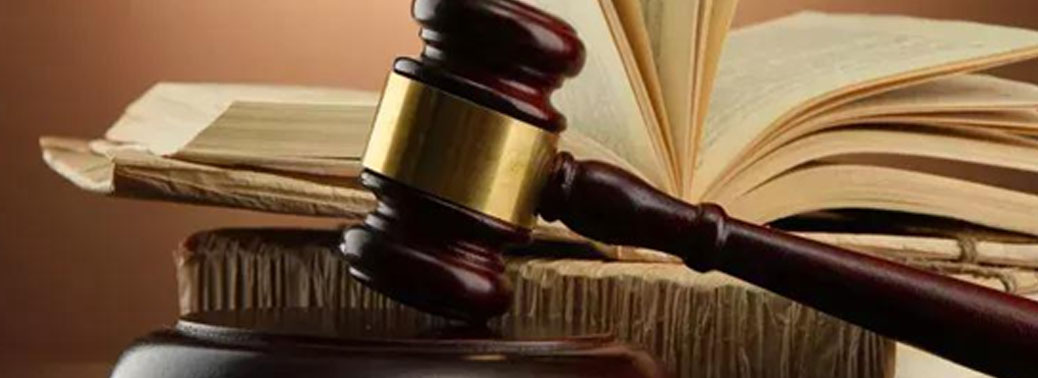
Context:
- The terminologies like ‘Duties of citizens’and the ‘anti-national’ (emanating from violation of these duties) have become the buzzwords of the political landscape in recent times.
What are Rights and Duties?
- Rights and duties are closely related and cannot be separated from one another. For every right, there is a corresponding duty.
- The State protects and enforces rights and it is the duty of all citizens to be loyal to the state. Thus a citizen has both Rights and Duties.
- In a constitutional democracy, the State provides rights and lays down duties for the citizenry, so that society can peacefully co-exist. However, sometimes State imposes such duties on its citizenry that infringes the rights of the marginalised sections of society.
- Mahatma Gandhi in Hind Swaraj observed that “Real rights are a result of the performance of duty”.
- According to Harold Laski, one man’s right is also his duty. For example, if the State gives the right to life to a citizen, it also imposes an obligation on him to not to expose his life to dangers, as well as to respect the life of others.
What does the Constitution say about Rights and Duties?
- Indian Constitution provides its citizens with the Fundamental Rights and lists the Fundamental Duties to be followed by them.
- The Constitution covers a broad spectrum of domains to protect the rights of the common man by introducing six rights as Fundamental Rights (Part III of the constitution).
- Similarly, the Fundamental Duties are also emphasized upon by the Constitution (Part IVA of the constitution).
Duties of an Individual in a Society:
- As citizens, there exists a wide range of duties that bind us in everyday life. These duties are owed both to the state and to individuals.
- There is a legal duty to pay taxes, to refrain from committing violence against fellow-citizens, and to follow other laws that Parliament has enacted.
- Breach of these legal duties triggers financial consequences (fines), or punitive measures like imprisonment.
- Duties follow a simple logic that, peaceful co-existence requires a degree of self-sacrifice, and that if necessary, this must be enforced through the set of sanctions.
Rights of an individual in a Society:
- Rights are formulated to ascertain twin principles viz. Anti-dehumanization and Anti-hierarchy. In India, this can be reflected in a chapter on Fundamental Rights in the constitution.
- Rights as a bulwark against dehumanization:
- Framers of the Indian Constitution while deliberating on Fundamental Rights were of the view that every human being should have access to basic dignity and equality that cannot be taken away the State.
- The necessity for Fundamental Rights in India originated from the experiences under the colonial regime where Indians had been treated as subjects.
- For example, the colonial government declared some group of people as Criminal Tribes, who were treated as less than human.
- Rights as a stand against Hierarchy:
- Indian society has been divided on the lines gender, caste and religion.
- Fundamental Rights, at a basic level, ensure the protection of all the citizens, not only from the State but from the social majorities as well.
- For example, through guarantees against forced labour, against “untouchability”, against discriminatory access to public spaces, and others, fundamental rights sought to bring a transformation in the Indian society.
Why there is always a tussle between Duties and Rights?
- The major concern lies in the language of duties which is vague (as their interpretation is left at the discretion of the State).
- This makes ‘duties’ of the citizenry prone to be misused as a tool to impose the will of the State or the social majority on vulnerable sections.
How a duty should be imposed in a Society?
- Any duty imposed upon the citizens must comply with due process of law which holds that no person shall be deprived of life, liberty or property except in accordance with the explicit provisions of law and with due regard to his rights.
- Without the moral compass of rights and their place in the transformative constitutional scheme, the language of duties can lead to unpleasant consequences.
- Interpretation of ‘Duties’ and the debate around it should include the duties of those with power. Those with power should not use it to exploit those from whom they wield it.
- It is only after guarantee to all and ensuring them the full sum of humanity, dignity, equality, and freedom promised by the Constitution, that we can ask of them to do their duty.
H1N1 INFECTION OF SUPREME COURT JUDGES
26, Feb 2020

Why in News?
- Five judges of the Supreme Court of India have been affected by Swine Flu which is caused by the H1N1 virus.

Highlights:
- In order to prevent the further spread of the virus, many measures have been taken by the Ministry of Health & Family Welfare, Government of India:
- The First Aid Post (FAP) of CGHS (Central Government Health Scheme) was strengthened at the Supreme Court
- All the judges were provided treatment as per the protocol. Prophylactic treatment was also given to all who have come in contact with them including their family members.
- All five judges were kept in home isolation. Of these, three Judges have already resumed their duty and two continue to be under home isolation/observation and are recovering.
- The courtrooms and residences are being sanitised.
- Awareness information regarding preventive measures was disseminated to all concerned.
- H1N1 is a seasonal infection which usually occurs every year with two peaks (One in January to March and other between July and September).
Swine Flu (H1N1):
- Swine influenza, also called pig influenza, swine flu, hog flu and pig flu, is an infection caused by any one of several types of swine influenza viruses. Swine influenza virus is any strain of the influenza family of viruses that is endemic in pigs.
- Influenza A (H1N1) virus is the subtype of influenza A virus that is the most common cause of human influenza.
- It is an orthomyxovirus that contains the glycoproteins haemagglutinin and neuraminidase. For this reason, they are described as H1N1, H1N2 etc. depending on the type of H or N antigens they express with metabolic synergy. Haemagglutinin causes red blood cells to clump together and binds the virus to the infected cell. Neuraminidase is a type of glycoside hydrolase enzyme which helps to move the virus particles through the infected cell and assist in budding from the host cells.
- Some strains of H1N1 are endemic in humans and cause a small fraction of all influenza-like illness and a small fraction of all seasonal influenza. Other strains of H1N1 are endemic in pigs (swine influenza) and in birds (avian influenza).
- H1N1 influenza (or swine flu) is a highly contagious acute respiratory disease of pigs caused by type A influenza virus that regularly causes outbreaks of influenza in pigs. Swine flu viruses do not normally infect humans. However, sporadic human infections with swine flu have occurred.
- Most commonly, these cases occur in people with direct exposure to pigs (e.g., children near pigs at a fair or workers in the swine industry). However, there have been cases of human-to-human spread of swine flu.
AMENDMENTS IN ARMS ACT, 1959
25, Feb 2020
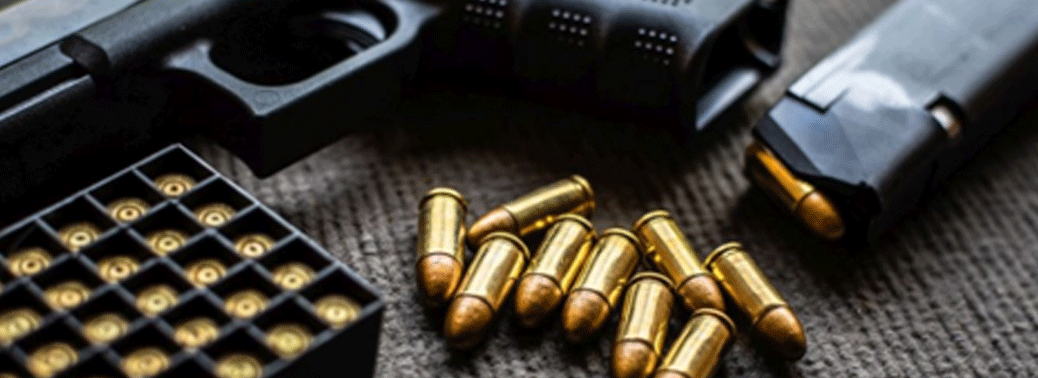
Why in News?
- Amendments in Arms Act, 1959 and Arms Rules, 2016 notified.
Highlights:
- As per the new rules, now International medallists/renowned shooters are allowed to keep additional weapons up to a total of twelve under the exempted category, which earlier was seven.
- Indian shooters have excelled in international competitions. Keeping this in mind, the Ministry of Home Affairs, vide its notification issued under the Arms Act 1959, has made provisions to provide adequate firearms and ammunition to the shooters for their practice.
- The Ministry of Home Affairs vide its notifications dated 12th February 2020 has amended the provisions of the Arms Act, 1959 and the Arms Rules, 2016 to increase the number of firearms that can be kept by shooters and enhanced the quantity of ammunition fixed for their practice for the year. These provisions are expected to greatly facilitate their shooting practice.
- If a shooter is renowned in one event, he/she can keep maximum eight (previously it was four), if a shooter is renowned in two events he/she can keep maximum ten (previously it was seven) and if a shooter is renowned in more than two events, he/she can keep maximum twelve (previously it was seven) firearms under the exempted category. Junior target shooters/aspiring shooters are now allowed to possess two weapons (previously one) of any category in which the person is engaged.
- Apart from the above exemptions, shooters are entitled to possess two firearms as normal citizens under provisions of the Arms Act, 1959.
- Similarly, by amending the provision under Rule 40 of the Arms Rules, 2016 the quantity of ammunition that can be purchased by the shooters during the year for the practice has also been increased considerably.
- Apart from this, the Ministry of Home Affairs has also made other necessary amendments in the Arms Rules, 2016 by amending the Arms Act, 1959 vide the Arms (Amendment) Act, 2019.
- Through these amendments, it has also been clarified that no licence is required for Indian citizens for acquisitions, possession of small arms falling under the category of curio.
- However, appropriate licence as prescribed would be required for use or to carry or transport such small arms.
- Without the endorsement of such firearms in the prescribed licence of the owner, no ammunition shall be sold for their use.
JUDICIAL INDEPENDENCE
25, Feb 2020
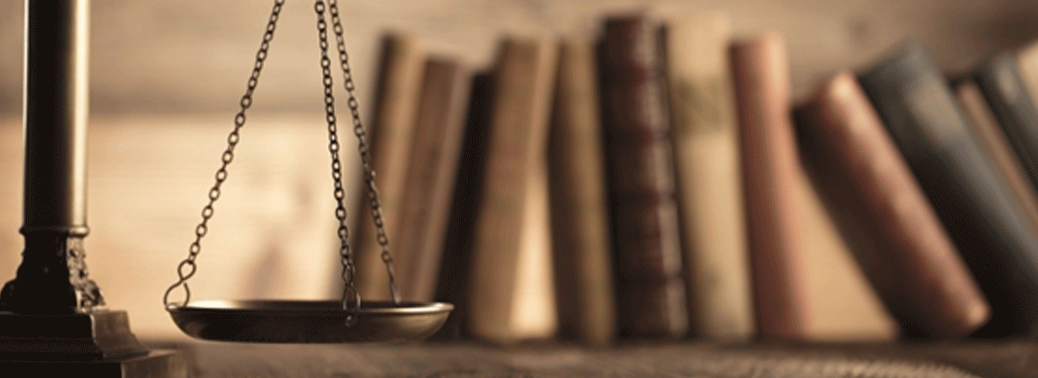
Why in News?
- One of the Supreme Court Judge’s public praise of the Prime Minister at a public forum recently has raised serious questions about the independence of the judiciary.
What does Judicial Independence Mean?
- In a 1981 judgment, the Constitution Bench of the Supreme Court held that Judges should be stern stuff and tough fire, unbending before power, economic or political, and they must uphold the core principle of the rule of law which says: ‘Be you ever so high, the law is above you.
- This is the principle of independence of the judiciary which is vital for the establishment of real participatory democracy, maintenance of the rule of law as a dynamic concept and delivery of social justice to the vulnerable sections of the community.
- It is this principle of independence of the judiciary which we must keep in mind while interpreting the relevant provisions of the Constitution.”
What are the constitutional provisions that ensure Judicial Independence?
Security of Tenure:
- Once appointed, they continue to remain in office till they reach the age of retirement which is 65 years in the case of judges of Supreme Court (Art. 124(2)) and 62 years in the case of judges of the High Courts (Art. 217(1)).
- They cannot be removed from the office except by an order of the President and that too on the ground of proven misbehavior and incapacity.
- A resolution has also to be accepted to that effect by a majority of total membership of each House of Parliament and also by a majority of no less than two third of the members of the house present and voting.
- Procedure is so complicated that there has been no case of the removal of a Judge of Supreme Court or High Court under this provision.
Salaries and Allowances:
- The salaries and allowances of the judges is also a factor which makes the judges independent as their salaries and allowances are fixed and are not subject to a vote of the legislature.
- They are charged on the Consolidated Fund of India in case of Supreme Court judges and the Consolidated Fund of state in the case of High Court judges.
- Their emoluments cannot be altered to their disadvantage (Art. 125(2)) except in the event of grave financial emergency.
Powers and Jurisdiction of Supreme Court:
- Parliament can only add to the powers and jurisdiction of the Supreme Court but cannot curtail them. In the civil cases, Parliament may change the pecuniary limit for the appeals to the Supreme Court.
- Parliament may enhance the appellate jurisdiction of the Supreme Court.
- It may confer the supplementary powers on the Supreme Court to enable it work more effectively.
- It may confer power to issue directions, orders or writs for any purpose other than those mentioned in Art. 32. Powers of the Supreme Court cannot be taken away.
Making Judiciary Independent:
- No discussion on conduct of Judge in State Legislature / Parliament: Art. 211 provide that there shall be no discussion in the legislature of the state with respect to the conduct of any judge of Supreme Court or of a High Court in the discharge of his duties.
- A similar provision is made in Art. 121 which lay down that no discussion shall take place in Parliament with respect to the conduct of the judge of Supreme Court or High Court in the discharge of his duties except upon a motion for presenting an address to the President praying for the removal of the judge.
Power to Punish for Contempt:
- Both the Supreme Court and the High Court have the power to punish any person for their contempt.
- 129 provide that the Supreme Court shall have the power to punish for contempt of itself. Likewise, Art. 215 lays down that every High Court shall have the power to punish for contempt of itself.
Separation of the Judiciary from the Executive:
- Article 50 contains one of the Directive Principles of State Policy and lies down that the state shall take steps to separate the judiciary from the executive in the public services of the state.
- The object behind the Directive Principle is to secure the independence of the judiciary from the executive.
- 50 says that there shall be a separate judicial service free from executive control.
Why Judicial Independence is needed?
- The judicial independence ensures public confidence as an institute of the last resort where justice will be served despite any opposition and Influence.
- People place high credibility and trust in the judiciary to get justice in case of any kind of misconduct by the executive.
- The latter clause and confidence will be meaningless if executive interference is allowed into the process of judicial proceedings as well as judicial bias over the executive.
CURATIVE PETITION
21, Feb 2020

Context:
- Curative Petition is often mentioned in news regarding various cases of Supreme Court.
Origin:
- The concept of the curative petition was first evolved by the Supreme Court of India in Rupa Ashok Hurra vs. Ashok Hurra and another case (2002) on the question whether an aggrieved person is entitled to any relief against the final judgement/order of the Supreme Court, even after the Dismissal of a Review Petition.
What is their objective?
- Its objectives are two folds – avoid miscarriage of justice and to prevent abuse of process.
Is there Any Constitutional Backing?
- The concept of the curative petition is supported by Article 137 of the Indian Constitution.
- It provides that in the matter of laws and rules made under Article 145,the Supreme Court has the power to review any judgement pronounced (or order made) by it.
- Such a petition needs to be filed within 30 days from the date of judgement or order.
What is the Procedure?
- A curative petition may be filed after a review plea against the final conviction is dismissed.
- It can be entertained if the petitioner establishes that there was a violation of the principles of natural justice, and that he was not heard by the court before passing an order.
- It must be rare rather than regular.
- A curative petition must be first circulated to a Bench of the three senior-most judges, and the judges who passed the concerned judgment, if available. Only when a majority of the judges conclude that the matter needs hearing should it be listed before the same Bench.
- The Bench at any stage of consideration of the curative petition can ask a senior counsel to assist it as amicus curiae (Friend of the court).
- A curative petition is usually decided by judges in the chamber unless a specific request for an open-court hearing is allowed.
What are the grounds for Rejection?
- In the event of the Bench holding at any stage that the petition is without any merit, it may impose a penalty on the petitioner.
LAW COMMISSION OF INDIA
21, Feb 2020
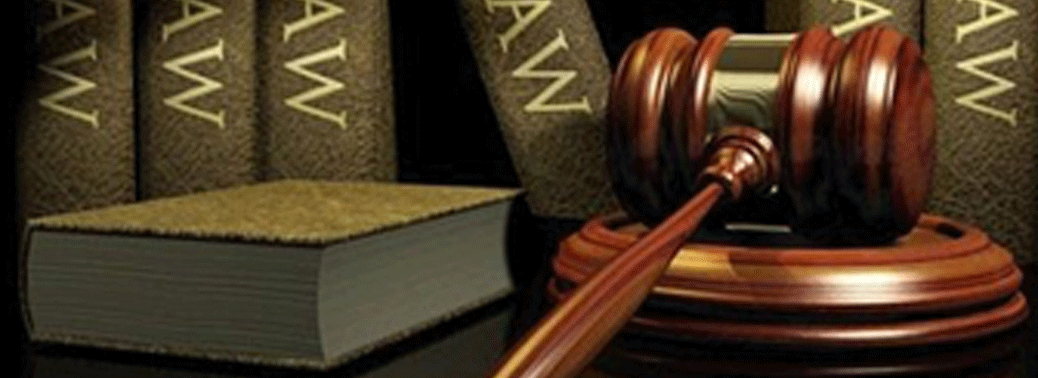
Context:
- Recently, the Union Cabinet gave its approval to set up the 22nd Law Commission. The Law Commission of India is a non-statutory, executive body constituted by the government for a fixed tenure of three years.
Law Commission of India:
- The Law Commission of India is neither a constitutional body nor a statutory body, it is an executive body established by an order of the Government of India. Its major function is to work for legal reforms.
- The Commission is established for a fixed tenure and works as an advisory body to the Ministry of Law and Justice.
- Its membership primarily Comprises Legal Experts.
History of Law Commission in India:
- Law Reforms:
- Law Reform has been a continuing process particularly during the last 300 years or more in Indian history.
- In the ancient period, when religious and customary law occupied the field, the reform process had been ad hoc and not institutionalised through duly constituted law reform agencies.
- Pre-Independence:
- From the 1800s, Law Commissions were constituted by the Government from time to time and were empowered to recommend legislative reforms to clarify, consolidate and codify particular branches of law where the Government felt the necessity for it.
- The first such Commission was established in 1834 under the Charter Act of 1833 under the Chairmanship of Lord Macaulay which recommended codification of the Penal Code and the Criminal Procedure Code.
- Thereafter, the Law Commissions that were constituted consecutively which, during a span of fifty years, contributed to enriching the Indian Statute Book with a large variety of legislation on the pattern of the then prevailing English Laws adapted to Indian conditions.
- The Indian Code of Civil Procedure, the Indian Contract Act, the Indian Evidence Act, the Transfer of Property Act. etc. are products of the first four Law Commissions.
- Post-Independence:
- After independence, the Constitution stipulated the continuation of pre-Constitution Laws under Article 372 until they are amended or repealed.
- There had been demands in Parliament and outside for establishing a Central Law Commission to recommend revision and update of the inherited laws to serve the changing needs of the country.
- The Government of India established the First Law Commission of Independent India in 1955 with the then Attorney-General of India, Mr M. C. Setalvad, as its Chairman. Since then twenty one more Law Commissions have been appointed, each with a three-year
The Functions of Law Commission:
- The Law Commission, on a reference made to it by the Central Government or suo-motu, undertakes research in law and review of existing laws in India for making reforms therein and enacting a new legislation.
- It also undertakes studies and research for bringing reforms in the justice delivery systems for elimination of delay in procedures, speedy disposal of cases, reduction in the cost of litigation etc.
The other functions of the Law Commission Include:
- Review/Repeal of obsolete laws:Identification of laws which are no longer relevant and recommending for the repeal of obsolete and unnecessary enactments.
- Law and Poverty:Examines the Laws which affect the poor and carries out post-audit for socio-economic legislations.
- Suggesting enactment of new legislation as may be necessary to implement the Directive Principles and to attain the objectives set out in the Preamble of the Constitution.
- For example, the 20th Commission worked on leprosy affected persons and their treatment in society, which it recognised as a Human Rights Issue.
- Judicial Administration:Considering and conveying to the Government its views on any subject relating to law and judicial administration that may be specifically referred to it by the Government through the Ministry of Law and Justice (Department of Legal Affairs).
- Research:Considering the requests for providing research to any foreign countries as may be referred to it by the Government through the Ministry of Law & Justice (Department of Legal Affairs).
- Examine the existing laws with a view of promoting gender equality and suggesting amendments thereto.
- Examine the impact of globalization on food security, unemployment and recommend measures for the protection of the interests of the marginalized.
- Preparing and submitting to the Central Government, from time to time, reports on all issues, matters, studies and research undertaken by it and recommending in such reports for effective measures to be taken by the Union or any State.
- Performing such other functions as may be assigned to it by the Central Government from time to time.
- Before concretizing its recommendations, the Commission consults the nodal Ministry/Departments and such, other stakeholders as the Commission may deem necessary for the purpose.
- The recommendations of the commission are not binding on the government. They may be accepted or rejected. Action on the said recommendations depends on the ministries/departments, which are concerned with the subject matter of the recommendations.
Important electoral reforms suggested by Law commission:
- In 2014, the Law Commission headed by Justice AP Shah examined issues concerning the disqualification of candidates with a criminal background and the consequences of filing false affidavit.
- The Law Commission has proposed wide ranging reforms on the issue of candidate expenditure limits; disclosure obligations of individual candidates and political parties; and penalties imposable on political parties; as well as examining the issue of state funding of elections.
Reforms required to Strengthen Law Commission:
- Statutory Status:
- It must be a statutory commission. This is essential to ensure the strength and independence of the body.
- In most countries, particularly western democracies, Law Commissions are statutory bodies.
- If it becomes statutory, it must be answerable only to Parliament, and not to the Executive.
- Continuity:
- It is important to ensure continuity. Presently, every Commission has a three-year term, and every time, there is a gap in the constitution of the Commission.
- The three year term of the 21stLaw commission ended on 31st August 2018, but setting up of the 22nd Law Commission has been approved only in February,2020.
- Appointment:
- The members of the Commission should be appointed only in consultation with the chairperson.
- Present system has drawn allegations of favouritism on numerous occasions.
- Independence:
- The presence of the law secretary and secretary, Legislative Department (who are presently ex-officio members of the Commission), affects its independence. They should not be a party to the Commission.
- Funding:
- It needs sufficient funding, proper resources, tie-ups with law institutions and more assistance and support.
- The Law Commission of India, though an advisory body, has been a key instrumentality in the process of legal reforms in India. Law commission provides intellectual depth to the legal institutions including the Supreme Court. In a number of decisions the Supreme Court has referred to the work done by the Law Commission and followed its recommendations. It is therefore necessary to provide a proper statutory backing for the functioning of the Law Commission.
22ND LAW COMMISSION OF INDIA
20, Feb 2020
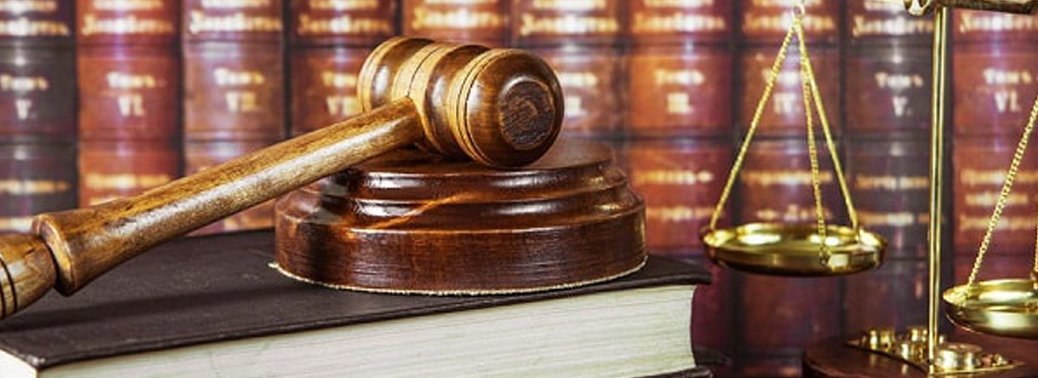
Why in News?
- The Union Cabinet has recently approved 22nd Law Commission of India for a period of three years from the date of publication of the Order of Constitution in the Official Gazette.
About Law Commission:
- Law Commission of India is neither a constitutional body nor a statutory body, it is an executive body established by an order of the Government of India. Its major function is to work for legal reforms.
- The Commission is established for a fixed tenure and works as an advisory body to the Ministry of Law and Justice.
- Its membership primarily comprises legal experts.
- The recommendations of the commission are not binding on the Government. They may be accepted or rejected. Action on the said recommendations depends on the ministries/departments, which are concerned with the subject matter of the recommendations.
History of Law Commission in India:
- Law Reform has been a continuing process particularly during the last 300 years or more in Indian history. In the ancient period, when religious and customary law occupied the field, the reform process had been ad hoc and not institutionalised through duly constituted law reform agencies.
- However, since the third decade of the nineteenth century, Law Commissions were constituted by the Government from time to time and were empowered to recommend legislative reforms to clarify, consolidate and codify particular branches of law where the Government felt the necessity for it.
- The First such Commission was established in 1834 under the Charter Act of 1833 under the Chairmanship of Lord Macaulay which recommended codification of the Penal Code and the Criminal Procedure Code.
- Thereafter, the second, third and fourth Law Commissions were constituted in 1853, 1861 and 1879 respectively which, during a span of fifty years contributed to enrich the Indian Statute Book with a large variety of legislations on the pattern of the then prevailing English Laws adapted to Indian conditions.
- The Indian Code of Civil Procedure, the Indian Contract Act, the Indian Evidence Act, the Transfer of Property Act, etc. are products of the first four Law Commissions.
Post-Independence Developments:
- After independence, the Constitution stipulated the continuation of pre-Constitution Laws under Article 372 until they are amended or repealed.
- There had been demands in Parliament and outside for establishing a Central Law Commission to recommend revision and updation of the inherited laws to serve the changing needs of the country.
- The Government of India established the First Law Commission of Independent India in 1955 with the then Attorney-General of India, Mr. M. C. Setalvad, as its Chairman. Since then twenty one more Law Commissions have been appointed, each with a three-year term.
The Functions of Law Commission:
- The Law Commission, on a reference made to it by the Central Government or suo-moto, undertakes research in law and review of existing laws in India for making reforms therein and enacting new legislations.
- It also undertakes studies and research for bringing reforms in the justice delivery systems for elimination of delay in procedures, speedy disposal of cases, reduction in the cost of litigation etc.
- The other functions of the Law Commission include:
- Review/Repeal of obsolete laws:Identification of laws which are no longer relevant and recommending for the repeal of obsolete and unnecessary enactments.
- Law and Poverty:Examines the Laws which affect the poor and carries out post-audit for socio-economic legislations.
- Suggesting enactment of New Legislation as may be necessary to implement the Directive Principles and to attain the objectives set out in the Preamble of the Constitution.
- Judicial Administration:Considering and conveying to the Government its views on any subject relating to law and judicial administration that may be specifically referred to it by the Government through the Ministry of Law and Justice (Department of Legal Affairs).
- Research:Considering the requests for providing research to any foreign countries as may be referred to it by the Government through the Ministry of Law & Justice (Department of Legal Affairs).
- Examine the existing laws with a view of promoting gender equality and suggesting amendments thereto.
- Examine the impact of globalization on food security, unemployment and recommend measures for the protection of the interests of the marginalized.
- Preparing and submitting to the Central Government, from time to time, reports on all issues, matters, studies and research undertaken by it and recommending in such reports for effective measures to be taken by the Union or any State.
- Performing such other functions as may be assigned to it by the Central Government from time to time.
- Before concretizing its recommendations, the Commission consults the nodal Ministry/Departments and such, other stakeholders as the Commission may deem necessary for the purpose.
Conclusion:
- In an era of globalisation and constantly evolving societies, Law Commission identifies the laws which are not in harmony with the existing climate, and laws which require change.
- It suggests suitable measures for quick redressal of citizens’ grievances, in the field of law and takes all necessary steps to make the poor benefit out of the legal process.
- Its presence has become even more relevant in Recent Times.
IT’S TIME TO EMPOWER MAYORS
20, Feb 2020
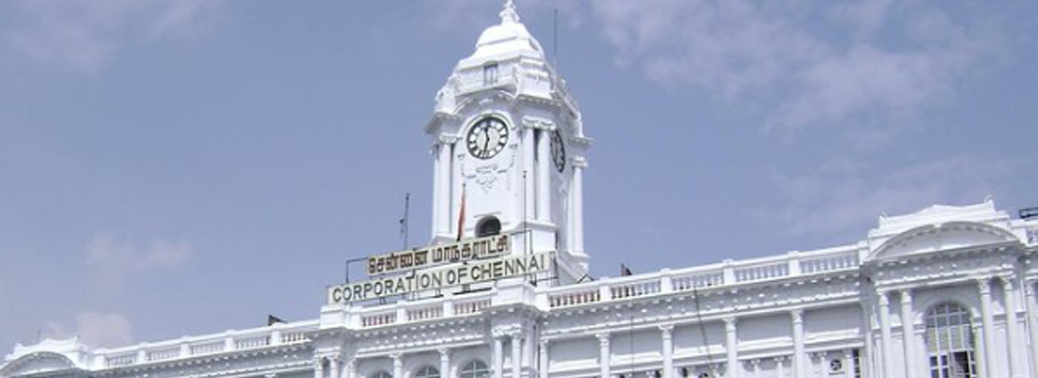
- This article highlights that why the election for the post of Mayor in Urban Local Bodies must be held directly and should not involve the role of political parties in the Election process.
Present Problems in Urban Local Bodies:
- As Indian cities grow in number and size, the pressure for better urban governance has increased and urban governance in its current form is fraught with inefficiency, mismanagement and overlapping jurisdiction of executive and political authorities.
- Recent research on urban governance highlights that powers of Mayors in Municipal Corporation is somewhat restricted and is shared with Municipal Commissioner who is an executive authority. At present, mayors are elected by city councillors who themselves are directly elected by urban voters.
- Despite being considered the political and executive head of the municipal body, mayors assume largely titular position, while the government-appointed municipal commissioner holding executive power. This leaves the mayor with little authority to influence urban development, planning and operation.
- Metros have been deprived of empowered Mayors who can raise efficiency, productivity and liveability conditions of city.
Intra- State Variations:
- States of Madhya Pradesh, Chhattisgarh, Rajasthan and Tamil Nadu decided to have indirect elections for Mayor and have used the excuse of poor performance of urban local bodies as a justification to replace direct election of Mayors with an indirect system.
- There are some states like Uttrakhand and Jharkhand where Mayors are elected by direct elections but in none of the mega cities of India, mayors are directly elected.
Key Flaws Highlighted by Economic Survey:
- The Economic Survey of 2017-18 notes that a third of the population now lives in urban areas which produce three-fifths of the GDP.
- India’s overflowing cities lack capacity, infrastructure and leadership for urban governance.
- The Survey attributes it to the absence of a single city government in charge, and low spending on infrastructure. State governments receive huge revenue from urban cities but do not support the idea of strong Mayors. Chief Ministers see a potential threat from a charismatic and empowered Mayor with progressive policies.
Need for a directly elected Mayors for Urban Local Bodies (ULBs):
1. Introducing direct election for mayors could improve political accountability which will help in increasing efficiency in urban governance.
2. A direct mandate from urban residents adds to the legitimacy and accountability of the mayor’s office. It would also resolve the power tussles between mayors and Municipal Commissioners.
3. Fixed tenures for mayors offer greater continuity as opposed to state-appointed bureaucrats who can be abruptly transferred.
4. In the current model, councillor elections are held at the ward level and are based on hyper-local issues, which may not resonate with the whole city. A directly elected mayor would ensure a focus on the problems of the entire city instead of certain specific wards.
5. Directly elected Mayors with adequate power and authority can help solving problems faced by large cities including problems associated with achieving goals of Sustainable Development Goals, the Paris Agreement on Climate Change and the UN Habitat New Urban Agenda.
Need for Election for Mayors to be conducted on Non-Party Lines:
- The main task of the bodies is to handle problems concerning sanitation, water supply and solid waste management and in such places political ideologies hardly matter.
- Even in the area of water supply and sewerage, the role of the municipal corporations of Chennai, Bengaluru and Hyderabad has got reduced as there are entities exclusively for this purpose. Delhi too has a Jal Board, headed by the Chief Minister.
- Under the present scheme, Chief Ministers do not want strong ULB chiefs to emerge, especially if the person happens to be from his or her party. This explains why parties prefer indirect elections.
- So, if the polls are held on non-party lines with direct elections for chiefs of ULBs, a new crop of leaders will emerge outside the political class. Well-educated and well-qualified youngsters will be encouraged to take part in the election process.
- More importantly, municipal elections will become cheaper as there will be no need for competitive spending by nominees of rival parties.
- Further, if Mayors do not perform, then political representative of the area including MLA and MP will not be held responsible for their wrong doings.
- Thus, ULBs can have meaningful empowerment only if the concept of non-party elections is adopted. This is a prerequisite for the implementation of the ‘strong mayor’ model.
POLL PANEL WORKING ON REMOTE VOTING SYSTEM
18, Feb 2020

Why in News?
- The Election Commission of India has joined hands with Indian Institute of Technology-Madras (IIT-M) to prepare an model of Aadhaar-linked electronic voting system.
- This new system will enable electors to cast their votes from any part of the country or even from abroad — irrespective of where they are registered to vote in the country.
About the New electronic voting system:
- Characteristics of the new technology
- A system for two-way remote votingin controlled environment using blockchain technology.
- If the technology is approved, will it be implemented automatically?
- If the project is given the go-ahead by the EC, election laws will have to be changed.
- Has EC used this kind of voting before?
- The ECI had used a one-way electronic system for service electors for the first time in the 2019 Lok Sabha elections.
What is One Way and Two Way Polling?
- One Way Polling:
- One-way transmission for service voters involves sending a blank postal ballot electronically to the voter. The ballot paper is downloaded, ballot cast and then sent via normal postal service to the returning officer for counting.
- Two Way Polling:
- Two-way electronic transmission of vote envisages that a registered voter from any location in India, once his identity is well authenticated will be able to cast his vote electronically through a secure encrypted system and the same will reach the designated returning officer for counting.
Significance of the New System:
- The new system enables migrants to vote from their place of residency, which saves them the time of travelling to their registered constituency and financial costs encountered.
- This model will help in increased turnout for voting, which reflects true representation of the Elected Candidate.
VOTING RIGHTS OF PRISONERS
15, Feb 2020
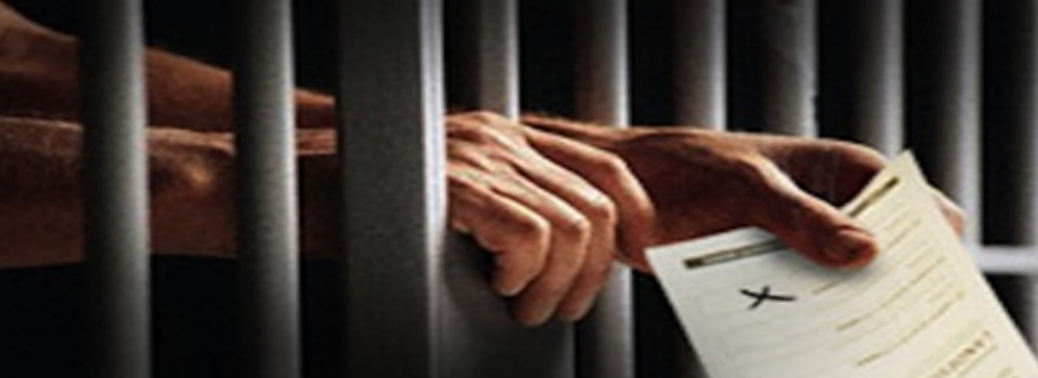
Why in News?
- The Delhi High Court has recently rejected a petition seeking voting rights for the prisoners.
Who can vote and Who Cannot?
- Under Section 62(5) of the Representation of the People Act, 1951, individuals in lawful custody of the police and those serving a sentence of imprisonment after conviction cannot vote.
- Under trial prisonersare also excluded from participating in elections even if their names are on electoral rolls.
What are the observations made by the Court?
- The right to cast vote is neither a fundamental right nor a common law right and is only provided by a statute.
- The right to vote provided under the statute — Representation of the People Act — was subject to restrictions imposed by the law, which does not allow prisoners to cast vote from jails.
Why Undertrials should be given Voting Rights?
- The present voting ban is criticized on the ground that it makes no offence-based or sentence-based classification— that is, prisoners are debarred from voting irrespective of the gravity of the offence they have committed, or the length of their sentence.
- It also makes no distinction between convicted prisoners, undertrials, and those in lawful Police Custody.
- Besides, a person is Innocent Until Proven Guilty by law. Despite this, it denies an under trial the right to vote but allows a detainee the same.
- The provision also violate the rights to equality, vote (Article 326)and is arbitrary. It is not a reasonable restriction.
What does the stats says?
- The ‘Prison Statistics India, 2014’ published by the National Crime Records Bureau, says there were 2, 82,879 undertrials and 1, 31,517 convicts lodged across 1,387 prisons in the country as on December 31, 2014.
- In Europe, Switzerland, Finland, Norway, Denmark, Ireland, the Baltic States, and Spain already allow prisoner voting.
- Countries like Romania, Iceland, the Netherlands, Slovakia, Luxembourg, Cyprus and Germany have opted for a middle path: Voting is allowed subject to certain permits and conditions such as the quantum of sentence served.
- They are only disenfranchised as an added penalty based on the gravity of the crime. Bulgaria allows for anyone sentenced to less than a decade to vote. In Australia, the limit is Five Years.

Need of an Hour:
- Undertrials should be allowed to vote. This is because there are many people, awaiting trial, who have spent more time in prison than the actual term their alleged crime merits. Their numbers are much bigger than convicts.
CENSUS – CHALLENGES & IMPORTANCE
14, Feb 2020

Context:
- Instances of the field enumerators coming under attack for some of the ongoing NSS surveys due to the mistrust over CAA and NRC, is an issue for concern. The House Numbering and Houselisting operation and the updation of the National Population Register, set to begin in April for Census 2021, is also expected to be welcomed with such hostility among the citizenry.
What is Census?
- Population Census is the total process of collecting, compiling, Analyzing or otherwise disseminating demographic, economic and social data pertaining, at a specific time, of all persons in a country or a well-defined part of a country.
- As such, the census provides a snapshot of the country’s population and housing at a given point of time.
Why Census?
- The census provides information on size, distribution and socio-economic, demographic and other characteristics of the country’s population.
- The data collected through the census are used for administration, planning and policy making as well as management and evaluation of various programmes by the government, NGOs, researchers, commercial and private enterprises, etc.
- Census data is also used for demarcation of constituencies and allocation of representation to parliament, State legislative Assemblies and the local bodies.
- Researchers and demographers use census data to Analyze growth and trends of population and make projections.
- The census data is also important for business houses and industries for strengthening and planning their business for penetration into areas, which had hitherto remained uncovered.
History of Census in India
- The earliest literature ‘Rig-Veda’ reveals that some kind of population count was maintained during 800-600 BC in India.
- The ‘Arthashastra’ by ‘Kautilya’ written in the 3rd Century BC prescribed the collection of population statistics as a measure of state policy for taxation.
- It contained a detailed description of methods of conducting population, economic and agricultural censuses.
- During the regime of the Mughal king Akbar, the administrative report ‘Ain-e-Akbari’ included comprehensive data pertaining to population, industry, wealth and many other characteristics.
- A systematic and modern population census, in its present form was conducted non synchronously between 1865 and 1872 in different parts of the country.
- This effort culminating in 1872 has been popularly labeled as the first population census of India.
- However, the first synchronous census in India was held in 1881. Since then, censuses have been undertaken once every ten year.
Stages of Census
a) Preparatory Work
b) Enumeration
c) Data processing
d) Evaluation of results
e) Analysis of results
f) Dissemination of the results
g) Systematic recording of Census experience
- The preparatory work of census includes the House Numbering and Houselisting operation.
Census 2021:
- The 2021 Census of India, also the 16th Indian Census, will be taken in 2021.
- The Registrar General and Census Commissioner through an official notification has announced that 31 questions will be collected by the enumerators from every household during the house listing and housing census exercise.
- The other questions related to the main source of lighting, whether the family has access to a toilet, waste water outlet, availability of kitchen and LPG or PNG connection and main fuel used for cooking were also to be asked by the enumerators.
- It is a massive exercise and will be massively expensive, involving about 30 lakh enumerators and field functionaries (generally government teachers and those appointed by state governments).
- First Digital Census: The data collected during the 2021 Census will be stored electronically.
- Earlier, the census data used to be preserved for 10 years and then it was destroyed. From the 2021 Census it will be stored forever in electronic format.
Issues with the Census 2021:
- The NPR first prepared in 2010 under the provisions of the Citizenship Act, 1955 and Citizenship Rules, 2003 and subsequently updated in 2015 — will also be updated along with house listing and housing Census (except in Assam).
- Amid the backdrop of views of citizenry against CAA and NPR, the National Sample Survey Office field officials have been attacked in some areas of Kerala, Uttar Pradesh, Andhra Pradesh and West Bengal mistaken as Census officials.
- At its core, the fears of a tainted Census stem from the NPR, breaking one of the cardinal rules in objective data collection, the preservation of anonymity.
- As he NPR is more likely to result in questioning their citizenship, people may choose to obfuscate or misreport.
- Because the NPR and Census are to be run concurrently — and both are under the auspices of the Registrar General of the ministry of home affairs (also the key architect and driver of the CAA) — this loss of credible information is likely to extend to the Census.
- Given that those born after July 1987 will have to offer proof of their parents’ citizenship, and some segments of citizens, especially Muslims, are particularly vulnerable to having their citizenship questioned, there will be considerable incentives for people to misreport age, religion and language data.
- The Census data is, by definition, a means to serve government goals. The compact between a State and its citizens is built on a foundation of trust, one that is based on a minimal presumption that people are citizens of that State to begin with. The erosion of that trust will undermine the Indian State’s ability to gather credible data and ultimately makes the government incapable of framing effective policies for its people.
PRIVATE MEMBER’S BILL
13, Feb 2020

Why in News?
- Four Members of Parliament are ready with Private Member’s Bill in the Lok Sabha to deal with the surging Unemployment Crisis.
What is a Private Member’s Bill?
- Any MP who is not a Ministeris referred to as a private member. The bill introduced by such an MP is designated as the Private Member’s Bill.
- While government Billscan be introduced and discussed on any day, private member’s Bills can be introduced and discussed only on Fridays.
What are the Bills to be Placed?
- Unemployment Allowance Bill 2019proposes doling out some form of unemployment allowance to jobless citizens.
- Financial Assistance to Unemployed Post-Graduates Bill 2019restricts the unemployment allowances to unemployed postgraduates only.
- Unemployed Youth (Allowance and Employment Opportunities) Bill 2019eyes the twin-purpose of generating gainful employment opportunities and payment of unemployment allowance.
- Another Unemployment Allowance Billproposes unemployment allowances for jobless youth until they get gainful employment.
How such bills are admitted in Parliament?
- The admissibility is decidedby the Chairman for Rajya Sabha and Speaker in the case of Lok Sabha. The procedure is roughly the same for both Houses:
- The Member must give at least a month’s notice before the Bill can be listed for Introduction.
- The House secretariat examines it for compliance with constitutional provisions and rules on legislation before listing.
Has a private member’s bill ever become a law?
- As per PRS Legislative, no private member’s Bill has been passedby Parliament since 1970.
- The last time a private member’s bill was passed by both Houses was in 1970. It was the Supreme Court (Enlargement of Criminal Appellate Jurisdiction) Bill, 1968.
- To date, Parliament has passed 14 such Bills, six of them in 1956.
- In the 14th Lok Sabha, of the over 300 private member’s Bills introduced, roughly four per cent were discussed; the remaining 96 per cent lapsed without a single dialogue.
Why such Provisions are Needed?
- Any Government’s bill introduced is mostly done by the Ministers from the ruling parties. Sometimes the public importance in few cases may be ignored by them.
- Such importance can be brought to the Parliament by the Private Members.
MANUAL SCAVENGING DEATH TOLL INCREASED
12, Feb 2020
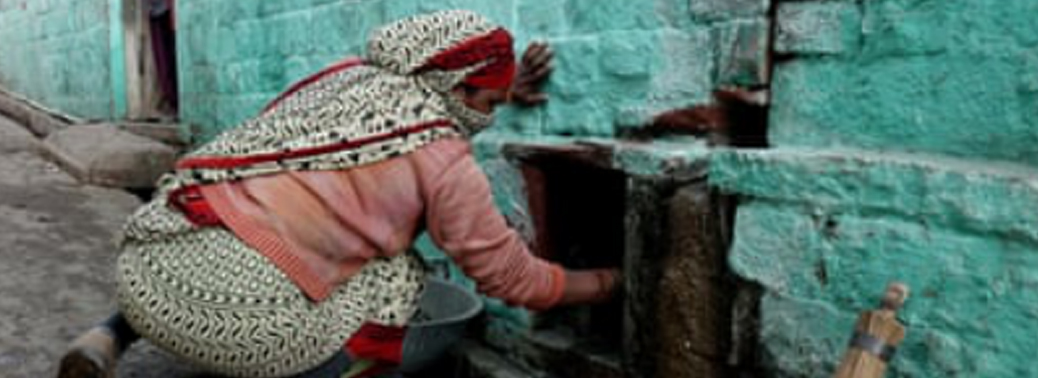
Why in News?
- According to the Social Justice and Empowerment Ministry, the death toll of Manual Scavengers has been increased by 62% from 68 in 2018 to 110 in 2019 (while cleaning septic tanks and sewers).
What is Manual Scavenging?
- Manual scavenging refers to the practice of manually cleaning, carrying, disposing or handling in any manner, human excreta from dry latrines and sewers.
- The practice of manual scavenging is linked to India’s caste system where so-called lower castes were expected to perform this job.
- Manual scavengers are amongst the poorest and most disadvantaged communities in India.
- Frequent deaths occur as manual scavengers don’t even have adequate tools and protective gear to clean the manhole. It often involves using the most basic of tools such as buckets, brooms and baskets.
What are the issues in Manual Scavenging?
- However, while manual scavenging for many may have ended as a form of employment, the stigma and discrimination associated with it lingers on.
- This makes it difficult for liberated manual scavengers to secure alternative livelihoods.
- People could once again return to manual scavenging in the absence of other opportunities to support their families.
- Correctly identifying manual scavengers remains a key challenge.
What are the Government Interventions?
- In 1993, the Government of India enacted the Employment of Manual Scavengers and Construction of Dry Latrines (Prohibition) Act.
- The act prohibited the employment of manual scavengers for manually cleaning
dry latrines and also the construction of dry toilets (that do not operate with a flush).
- It provided for imprisonment of up to a year and a fine.
- In 2013, this was followed by the Prohibition of Employment as Manual Scavengers and their Rehabilitation Act, 2013,which is wider in scope and importance, acknowledging the urgency of rehabilitating manual scavengers.
- The act seeks to reinforce this ban by prohibiting manual scavenging in all formsand ensures the rehabilitation of Manual Scavengers to be identified through a mandatory survey.
What does the new act says?
- Prohibits the construction or maintenance of insanitary toilets.
- Prohibits the engagement or employment of anyone as a manual scavengerviolations could result in a years’ imprisonment or a fine of INR 50,000 or both.
- Prohibits a person from being engaged or employed for hazardous cleaning of a sewer or a septic tank.
- Offences under the Act are cognizable and non-bailable.
- Calls for a survey of manual scavengers in urban and rural areas within a time-bound framework.
- A Supreme Court order in March, 2014, makes it mandatory for the government to identify all those who died in sewerage work since 1993 and provide Rs.10 lakh each as compensation to their families.
- The Government of India has adopted a two-pronged strategy of eliminating insanitary latrines through demolition and conversion into sanitary latrines and developing a comprehensive rehabilitation package for manual scavengers through a survey.
- A comprehensive Rehabilitation Package has recently been put together that includes livelihoods and skill development, access to education for children of former manual scavengers and alternate livelihoods.
What are the Other Initiatives?
- The establishment of National Safai Karamcharis Commission (NFKC)to work for the welfare and upliftment of the Safai Karamcharis.
- Delhi Government has launched the Mukhya Mantri Septic Tank Safai Yojana recently – a scheme aimed at helping people in waste management and ensuring the safety of sanitation workers.
- According to the government, the Delhi Jal Board(DJB) will deploy 80 trucks along with trained staff to ensure free cleaning and maintenance of septic tanks across Delhi.
Way Forward:
- The Swachh Bharat Abhiyan should make expansion of the sewer network a top priority and come up with a scheme for scientific maintenance that will end manual cleaning of septic tanks.
- Schemes like Mukhya Mantri Septic Tank Safai Yojana should be implemented properly throughout the nation.
- The Ministry of Drinking Water and Sanitation in its manual of 2016 on toilet design has noted that in rural areas, mechanical pumps to clear septic tanks are not available. It should be met before more lives are lost.
SC UPHOLDS CHANGES TO SC/ST ATROCITIES LAW
11, Feb 2020

Why in News?
- The Supreme Court recently upheld the constitutional validity of the SC/ST Amendment Act, 2018 which rules out anticipatory bail in case of atrocities against SC/STs.
What is Anticipatory Bail?
- Under Indian criminal law, there is a provision for anticipatory bail under Section 438 of the Criminal Procedure Code.
- Law Commission of India in its 41st report recommended incorporating this provision in procedure code.
- This provision allows a person to seek bail in anticipation of an arrest on accusation of having committed a non-bailable offence.
- Anticipatory bail is a direction to release a person on bail, issued even before the person is arrested.
- It is only issued by the Sessions court and High Court.
SCs and the STs (Prevention of Atrocities) Amendment Act, 2018:
- The 2018 amendment act was proposed to nullify the safeguards proposed by the Supreme Court. The amendments proposed were:
- Investigating officer will not require the approval of any authority for the arrest of an accused.
- Preliminary enquiry will not be required for the registration of a First Information Report against a person accused under the Act.
- Persons accused of committing an offence under the Act cannot apply for Anticipatory Bail.
- To avoid any ambiguity the act proposes that these provisions apply despite any judgments or orders of a court that provide otherwise. These amendments to the prevention of atrocities act were questioned in the Supreme Court as ultra vires (beyond the powers).
What are the Supreme Court’s Rulings?
- The SC in Subhash Kashinath Mahajan Vs State of Maharashtra on March 2018 held that no absolute bar against the anti-atrocities law if no prima facie case is made out or if judicial scrutiny reveals the complaint to be prima facie mala fide.
- Now the Parliament introduced the controversial amendment in 2018. It inserted Section 18A in the original Scheduled Castes and Scheduled Tribes (Prevention of Atrocities) Act of 1989.
- Section 18 A reaffirms the original legislative intention that Section 438 CrPC (pre-arrest bail) is not applicable to accused booked under the atrocities law.
- In February 2020 judgement in Prathvi Raj Chouhan Case, the SC has upheld Section 18A and said that the High Courts will have an “inherent power” to grant anticipatory bail in cases in which prima facie an offence under the 1989 law is not made out.
What is the Governments Argument?
- The government had enacted the Amendments, saying the Scheduled Castes and Scheduled Tribes continued to face the same social stigma, poverty and humiliation which they had been subjected to for centuries.
Why such rulings were given by SC?
- The judgment had diluted the original 1989 legislation, saying they were using its provisions to file false criminal complaints against innocent persons.
Need for an hour:
- Anticipatory Bail in this case should be used sparingly and in very exceptional cases. Otherwise Miscarriage of Justice may result and the intention of Parliament to protect SCs and STs will be defeated.
RESERVATIONS IN PROMOTION IS NOT A FUNDAMENTAL RIGHT, SAYS SC
11, Feb 2020
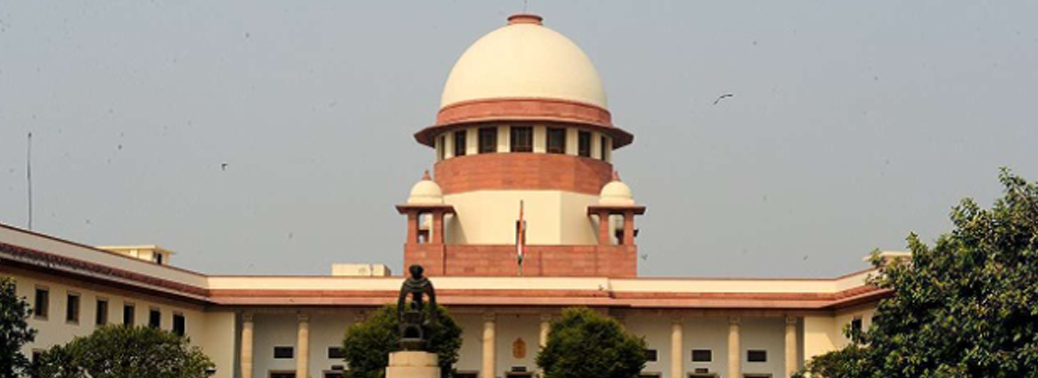
Why in News?
- The Supreme Court has recently ruled that the states are not bound to provide reservation in appointments and promotions and that there is no Fundamental Right to Reservation in Promotions.
What are the Constitutional Provisions Related to Reservations?
- Article 16(4) empowers the state to make any provision for the reservation of appointments or posts in favour of any backward class of citizens which, in the opinion of the state, is not adequately represented in the services under the state.
- By way of the 77thAmendment Act, a new clause (4A) was added to Article 16, empowering the state to make provisions for reservation in matters of promotion to Scheduled Caste/Scheduled Tribe Employees if the state feels they are not adequately represented in services.
- Article 335 recognises that special measures need to be adopted for considering the claims of SCs and STs in order to bring them to a level-playing field.
What are the Court’s Earlier Rulings?
- In its landmark 1992 decision in Indra Sawhney vs Union of India, the Supreme Court had held that reservations under Article 16(4) could only be provided at the time of entry into Government Service but not in matters of Promotion.
- It added that the principle would operate only prospectively and not affect promotions already made and that reservation already provided in promotions shall continue in operation for a period of five years from the date of the Judgment.
- It also ruled that the creamy layer can be and must be excluded.
- On June 1995, Parliament adopted the seventy-seventh amendment by which clause (4A) was inserted into Article 16 to enable reservation to be made in promotion for SCs and STs.
- The validity of the seventy-seventh and eighty-fifth amendments to the Constitution and of the legislation enacted in pursuance of those amendments was challenged before the Supreme Court in the Nagaraj case.
- Upholding the validity of Article 16 (4A), the court then said that it is an enabling provision. “The State is not bound to make reservation for the SCs and STs in promotions. But, if it seeks to do so, it must collect quantifiable data on three facets — the backwardness of the class; the inadequacy of the representation of that class in public employment; and the general efficiency of service as mandated by Article 335 would not be affected”.
- The court ruled that the constitutional amendments do not abrogate the Fundamentals of Equality.
What is the Supreme Court’s Recent Ruling?
- Reservation in promotion in public posts cannot be claimed as a Fundamental Right.
- Articles 16 (4) and 16 (4-A) of the Constitution does not confer individuals with a fundamental right to claim reservation in promotion.
- It only empowers the State to make a reservation in matters of appointment and promotion in favour of the backward class and SC’s/ST’s respectively, only if in the opinion of the State they are not adequately represented in the services of the State.
- State Governments are not bound to make a reservation and have discretion in providing reservations.
- The judgment also noted that even the courts could not issue a Mandamus directing the States to provide reservation.
What is its Significance?
- The provision is an aid of fostering the real and substantive right to equality to the SCs and STs.
- It protects the authority of the Union and the States to adopt any of these special measures, to effectuate a realistic (as opposed to a formal) consideration of their claims to appointment in services and posts under the Union and the states.
- It also emphasizes that the need to maintain the efficiency of administration cannot be construed as a fetter on adopting these special measures designed to uplift and protect the welfare of the SCs and STs.
Need of an Hour:
- Centuries of discrimination and prejudice suffered by the SCs and STs in a feudal, caste-oriented societal structure poses real barriers of access to opportunity.
- The provision contains a realistic recognition that unless special measures are adopted for the SCs and STs, the mandate of the Constitution for the consideration of their claim to appointment will remain illusory.
SEEKING A MORE PROGRESSIVE ABORTION LAW
11, Feb 2020
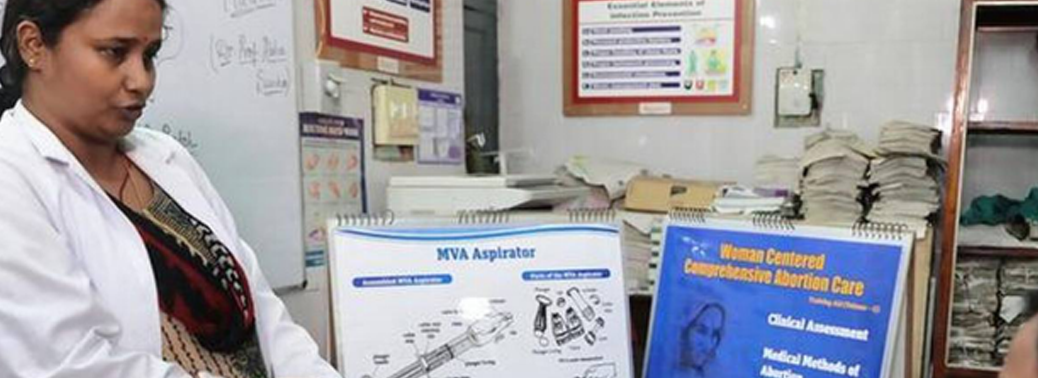
Why in News?
- Recently the Union Cabinet has approved the Medical Termination of Pregnancy Amendment Bill 2020. This article flags some of the major concerns accorded with the Bill.
Background Information:
Salient features of Proposed Amendments:
1. Increased gestation period for Termination of Pregnancy:
- The upper gestation limit has been increase from 20 to 24 weeks for special categories of women including survivors of rape, victims of incest and other vulnerable women (like differently-abled women, Minors) etc.
2. For Other Women :
- For termination of pregnancy up to 20 weeks: Opinion of 1 doctor is required
- For termination of pregnancy up to 20 weeks – 24 weeks: Opinion of 2 doctors is Required.
3. No limit for Foetal Abnormalities: In case of detection of foetal abnormalities, upper gestation limit does not to apply. However this should be declared by a Medical Board constituted for the purpose.
Concerns with the Above Amendments:
No Autonomy for the Women:
- Under the MTP Act, the final say on abortion is taken by the healthcare providers and not the women.
- This is unlike the abortion laws in 67 countries, including Iceland, France, Canada, South Africa and Uruguay, where a woman can get an abortion ‘on request’.
- This may put additional mental stress as well as the financial burden on the women for getting a doctor’s approval.
Biased against Unmarried Women:
- According to the Act, where a pregnancy occurs due to failure of any birth control device or method used by any “married woman or her husband”, it may cause “grave injury” to the mental health of the pregnant woman and the woman may opt for termination.
- This is not extended to unmarried women where the final decision rests with the doctor and not the woman herself.
Narrowed Choice in case of Foetal Abnormalities:
- In case of foetal abnormalities the law allows termination in cases post 20 weeks only where it is necessary to save the life of the mother.
- The unwanted pregnancy may also lead to mental agony and termination is not allowed for such reasons in case of foetal abnormalities post 20 weeks.
- Further the decision for termination in case of foetal abnormalities lies with the Medical Board. This may cause unnecessary delays which only increase the risks associated with a late abortion.
POOR COMPENSATION RATE FOR TRAFFICKING SURVIVORS, FINDS REPORT
11, Feb 2020

Why in News?
- Based on the data of the NCRB, a non-profit organisation named “Sanjog” released a report on compensation awarded to survivors of trafficking the country, which highlighted the poor status of compensation awarded during 2011- 2019.
- The report titled ‘UNCOMPENSATE VICTIMS’ was released by Sanjog, a technical resource organisation that works to combat trafficking and gender-based violence.
Key Points:
- The report highlights that NCRB put the total number of cases of human trafficking at 35,983, but only 82 (0.2%) victims were awarded compensation.
- Following the national outrage over the Nirbhaya gang-rape case (2012), the government had announced ₹1,000 crore fund to be used to combat sexual violence against persons – children or adults.
- The amount of compensation to victims of trafficking varied from State to State, hence the Supreme Court had directed the National Legal Services Authority (NALSA) to frame a standardised victim compensation scheme.
- The study also reflects the number of trafficking survivors who applied for the victim compensation scheme to their respective legal services authority.
Reasons behind the Low Rate of Compensation:
- 1. Lack of awareness among the victims.
- 2. Low investment on part of legal aid
- 3. Role of Legal Services Authorities: The study suggests grave inconsistencies on the part of legal services authorities, which have provided the data.
- District Legal Service Authority (DLSA) and State Legal Services Authority (SLSA)’s response to the claims has been slow, and they hold the survivors’ claims with suspicion – often putting the burden of proof on the survivors themselves.
- There is a lack of initiative on the part of legal services authorities.
- Survivors were able to apply only when they were informed and a private lawyer was involved in assisting them in filing the application for victim compensation.
- Manipur’s 2019 victim compensation scheme does not even have an entry in the schedule corresponding to human trafficking.
- 4. Existence of Multiple Agencies:From their rescue till rehabilitation, the survivors are in touch with multiple agencies but none of them takes any steps to help them get compensation.
Victim Compensation Funds in India:
- 1. Central Victim Compensation Fund Scheme:
- The Section 357 of Code of Criminal Procedure (CrPC) has provisions to compensate victims who suffered because of a crime.
- Based on this Provision the government introduced the Central Victim Compensation Fund (CVCF) scheme to enable support to victims of rape, acid attacks, human trafficking and women killed or injured in the cross border firing.
- It is also known as the Victim Compensation Scheme. So far 24 states and 7 UTs have formulated the Victim Compensation Scheme.
- 2. Nirbhaya Fund:
- The Nirbhaya Fund Framework provides for a non-lapsable corpus fund for the safety and security of women.
- It is administered by the Department of Economic Affairs (DEA) of the Ministry of Finance.
- It can be utilized for projects and initiatives related to women safety.
- Nirbhaya fund is being used in the Central Victim Compensation Fund (CVCF).
ACCESSIBLE INDIA CAMPAIGN
10, Feb 2020

Why in News?
- Social Justice and Empowerment minister has recently reviewed the number of buildings of Central PWD and websites of MeITY that has been made accessible under Accessible India Campaign.
- The Campaign has been launched to make public offices, transport and websites accessible to Persons with Disabilities (PwD).
Accessible India Campaign:
- AIC is the nationwide flagship campaign of the Department of Empowerment of Persons with Disabilities (DEPwD), Ministry of Social Justice and Empowerment.
- The aim of the Campaign is to make a barrier free and conducive environment for “Divyangjans” all over the country.
- The campaign has the vision to build an inclusive society in which equal opportunities are provided for the growth and development of Persons with Disabilities (PwDs) so that they can lead productive, safe and dignified lives.
Background
- Launched on International Day of Persons with Disabilities (3rd December) in 2015.
- Later Rights of Persons with Disabilities Act, 2016 replaced the Persons with Disabilities Act, 1995.
- United Nations Convention on the Rights of Persons with Disabilities (UNCRPD),to which India is a signatory, under Article 9 casts obligations on the Governments for ensuring to PwDs accessibility to
- Information
- Transportation,
- Physical Environment
- Communication Technology
- Accessibility to Services as well as emergency services.
Three Components of AIC
1. Built Environment Accessibility
2. Transportation System Accessibility
3. Information and Communication Eco-System Accessibility
Targets originally entailed under the three components:
- Making 50% of all the government buildings of National Capital and all the State capitals fully accessible by December 2018.
- Completing accessibility audit of 50% of government buildings and making them fully accessible in 10 most important cities/towns of States by December 2019.
- Ensuring that 50% of railway stations in the country are converted into fully accessible railway stations by March 2018.
- Ensuring that 25% of Government owned public transport carriers in the country are converted into fully accessible carriers by March 2018.
- Conducting accessibility audit of 50% of all government (both Central and State Governments) websites and converting them into fully accessible websites by March 2017.
NATIONAL JUDICIAL PAY COMMISSION
08, Feb 2020

Why in News?
- The Second National Judicial Pay Commission has filed its report covering the subject of Pay, Pension and Allowances in the Supreme Court.
Second National Judicial Pay Commission:
- The Commission is headed by former Supreme Court judge P V Reddy.
- It was set up on the directions of the apex court in May 2017 during the hearing of the All India Judges Association case.
Key Recommendations:
- Pay:
- It has recommended the adoption of Pay Matrix which has been drawn up by applying the multiplier of 2.81 to the existing pay, commensurate with the percentage of increase of pay of High Court Judges.
- The highest pay which a District Judge (STS) will get, is Rs.2,24,100/-.
- Pension:
- Pension at 50% of last drawn pay worked out on the basis of proposed revised pay scales is recommended w. e. f. 1-1-2016. The family pension will be 30% of the last drawn pay.
- Recommendation has been made to discontinue the New Pension Scheme (NPS) which is being applied to those entering service during or after 2004. The old pension system, which is more beneficial to be revived.
- Allowances:
- The existing allowances have been suitably increased and certain new features have been added. However, the CCA is proposed to be discontinued.
- Certain new allowances viz. children education allowance, home orderly allowance, transport allowance in lieu of pool car facility, has been proposed.
DISQUALIFICATION POWERS OF SPEAKERS
07, Feb 2020
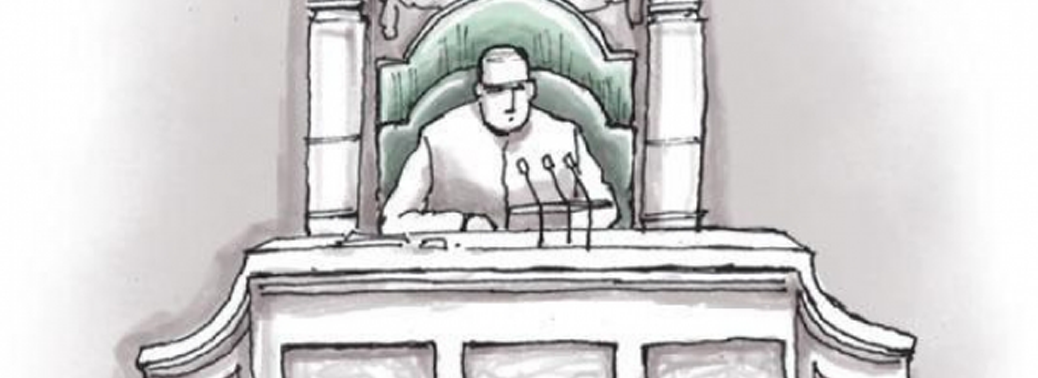
Why in News?
- Recently, the Supreme Court has given a significant suggestion regarding disqualification powers of the Speaker in the in Keisham Meghachandra Singh vs. the Hon’ble Speaker Manipur Legislative Assembly & Ors (2020) case.
What is the Role of the Speaker?
- He is the sole representative and guardian of powers and privileges of the members, the House as a whole and its Committees.
- He is the principal spokesperson of the House and represents the collective voice of the House.
- His/her decision in all Parliamentary matters (including disqualification matters under Tenth Schedule) is final, binding and ordinarily cannot be challenged in the Court of law. Thereby, Speaker acts as the ultimate arbitrator.
- For example, on this question whether a bill is a money bill or not, his/her decision is final.
- However, on the questions of disqualification of the members, the Supreme Court in Kihoto Hollohan vs Zachillhu and Others, 1992 case ruled that the decision of the Speaker in this regard is subject to judicial review.
- He Maintains order and decorum in the House for conducting its business and regulating its proceedings.
- He allocates duration for debates, can discipline members of the House, and even override decisions taken by the Committees of the House.
- He is the final interpreter of the provisions of the Constitution of India, Rules of Procedure and Conduct of Business of Lok Sabha, and Parliamentary precedents within the House.
What is the Issue?
- As the office of the Speaker is vested with great prestige, position, and authority, and independence impartiality of the Speaker becomes its sine qua non (an essential condition). However, the office of Speaker has been criticized time and again for being an agent of partisan politics.
- The Supreme Court in Jagjit Singh versus State of Haryana (2006)highlighted the similar allegations about the confidence on the role of Speaker in the matters of impartiality.
- In Kihoto Hollohan case (1992), one of the judges observed that the suspicion of bias on the Speaker’s role could not be ruled out as his/her election and tenure depends on the majority will of the House (or specifically of the ruling party).
- Also in the recent case of Manipur Legislative Assembly (2020), the Supreme Court questioned, “Why a Speaker- who is a member of a particular political party and an insider in the House, should be the sole and final arbiter in the cases of disqualification of a political defector.”
- Hence, there are structural issues regarding the manner of appointment of the Speaker and her tenure in office which need urgent redressal.
What are the Recommendations of the Court?
- The Court recommended the Parliament to amend the Constitution regarding the role of Speaker as a quasi-judicial authority while dealing with disqualification petitions under the anti-defection law (when such a Speaker continues to belong to a particular political party either de jure or de facto).
- The Court suggested that an independent tribunal can be appointed which will substitute the Speaker of the Lok Sabha and Legislative Assemblies to deal with matters of disqualifications under Tenth Schedule.
- Currently, disqualification of members of a House/Assembly is referred to the Speaker of the House/Assembly.
- The Tribunal will be headed by a retired Supreme Court judge or a retired Chief Justice of a High Court. The Court also suggested that some other outside independent mechanism can adjudicate on such matters. This will ensure that such disputes are decided both swiftly and impartially.
What could be the Possible Solutions?
- Adopting Global Practices such as the Britain Speaker is strictly a non-party person. There is a convention that the Speaker has to resign from his party and remain politically neutral. Also, once elected remains in office until retirement, even though the majority may change.
- Currently, this Convention is not fully established in India where the Speaker does not resign from the membership of the party on his/her election to the office.
- Hence, this mechanism can be adopted whereby Speakers need to renounce all political affiliations, membership and activity once they have been elected to the office.
- Currently, there is no time frame to adjudicate cases of disqualifications of members of the House.
- However, to contain this liberty of Speaker, the Court in the recent judgment held that, “unless there are any exceptional circumstances, disqualification petitions under the Tenth Schedule should be decided by Speakers within three months.”
Conclusion:
- Impartiality, fairness and autonomy in decision-making are the hallmarks of a robust institution. It is the freedom from interference and pressures which provide the necessary atmosphere where one can work with an absolute commitment to the cause of neutrality (as a Constitutional value).
- At a time when India’s rank has fallen in the latest Democracy Index(2019), it is expected out of Parliament to take steps to revamp and strengthen the institution of the Speaker.
- In this regard, Jawaharlal Nehru described: “As the House represents the nation (in a particular way), the Speaker being its sole representative becomes a symbol of the nation’s freedom and liberty. Therefore, this free and honoured position shall always be occupied by persons of outstanding ability and impartiality.”
GRAM NYAYALAYAS ACT, 2008
06, Feb 2020

Why in News?
- The Supreme Court has directed the states, which are yet to come out with notifications for establishing ‘Gram Nyayalayas’ with a specific time period.
About Gram Nyayalayas:
- Gram Nyayalayas or village courts are established under the Gram Nyayalayas Act, 2008 for speedy and easy access to justice system in the rural areas of India.
- The Act came into force from 2 October 2009.
- The Gram Nyayalayas are presided over by a Nyayadhikari,who will have the same power, enjoy same salary and benefits of a Judicial Magistrate of First Class.
- Such Nyayadhikari are to be appointed by the State Government in consultation with the respective High Court.
What are its Jurisdictions?
- A Gram Nyayalaya have jurisdiction over an area specified by a notification by the State Government in consultation with the respective High Court.
- The Court can function as a mobile court at any place within the jurisdiction of such Gram Nyayalaya, after giving wide publicity to that regards.
- They have both civil and criminal jurisdictionover the offences.
- The pecuniary jurisdiction of the Nyayalayas is fixed by the respective High Courts.
- Gram Nyayalayas has been given power to accept certain evidences which would otherwise not be acceptable under Indian Evidence Act.
What is the Procedure followed by Gram Nyayalayas?
- Gram Nyayalayas can follow special procedures in civil matters, in a manner it deem just and reasonable in the interest of Justice.
- Gram Nyayalayas allow for conciliation of the dispute and settlement of the same in the First Instance.
Can the decision of Nyayalayas be appealed in Other Courts?
- Appeal in criminal casesshall lie to the Court of Session, which shall be heard and disposed of within a period of six months from the date of filing of such appeal.
- Appeal in civil casesshall lie to the District Court, which shall be heard and disposed of within a period of six months from the date of filing of the appeal.
What is the Issue?
- So far only 11 states have taken steps to notify Gram Nyayalayas. Several states have issued notifications for establishing ‘Gram Nyayalayas’ but all of them were not functioning except in Kerala, Maharashtra and Rajasthan.
- Only 208 ‘Gram Nyayalayas’ are functioning in the country as against 2,500 estimated to be required by the 12thfive-year plan.
Why Gram Nyayalayas are Essential?
- The setting up of Gram Nyayalayas is considered as an important measure to reduce arrears and is a part of the judicial reforms.
- It is estimated that Gram Nyayalayas can reduce around 50% of the pendency of cases in subordinate courts and can take care of the new litigations which will be disposed within six months.
SUPREME COURT PANEL RECOMMENDS SEVERAL PRISON REFORMS
06, Feb 2020
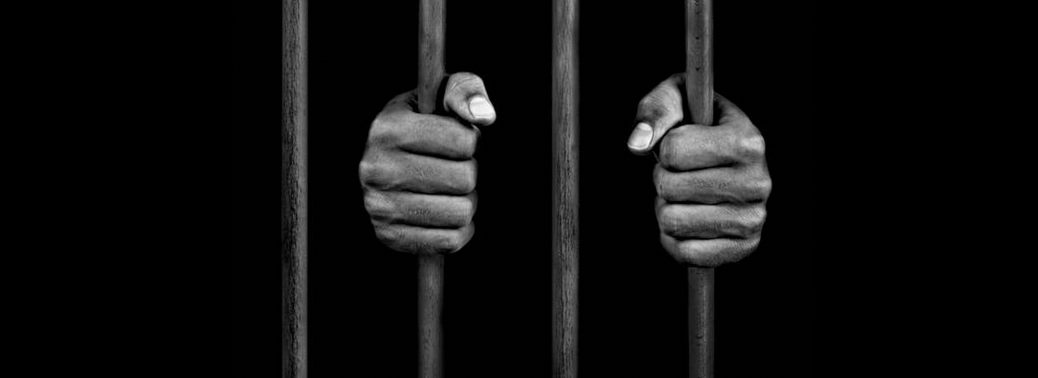
Why in News?
- The Supreme Court appointed committee headed by Justice Amitava Roy to examine the problems that plague prisons, has submitted its report recently.
Key Recommendations of the Committee:
1. De-crowding the prisons:The court said overcrowding is a common bane in the under-staffed prisons. Both the prisoner and his guard equally suffer human rights violation. The under-trial prisoner, who is yet to get his day in court, suffers the most, languishing behind bars for years without a hearing.
2. Phone call Facility: Every new prisoner should be allowed a free phone call a day to his family members to see him through his first week in jail.
3. Proper Legal Aid:There should be at least one lawyer for every 30 prisoners. Speedy trial remains one of the best ways to remedy the unwarranted phenomenon of over-crowding.
4. Decrease Vacancies in the department: The Prison Department has a perennial average of 30%-40% vacancies. The government should look into the issue without delay.
5. Use of video-conferencing for trial: Physical production of under-trials in courts continues, but it however remains far below the aspired 100% in several States, mainly because of unavailability of sufficient police guards for escort and transportation. So, the committee has recommended for the use of video-conferencing for trial to overcome this backlog.
6. Modern cooking facilities:The report described the preparation of food in kitchens as “primitive and arduous”. The kitchens are congested and unhygienic and the diet has remained unchanged for years now. So the committee has recommended for modern cooking facilities, canteens for prisoners to buy essential items etc.
Major Issues associated with Indian Prisons:
1. Overcrowding:The country’s jails are crowded to 114% of their capacity.
2. Under-trials:As discussed above, more than 67% of the prisoners in India are under trials. The share of the prison population awaiting trial or sentencing in India is extremely high by international standards. For example, it is 11% in the UK, 20% in the US and 29% in France.
3. Corruption and extortion: Extortion by prison staff is common in prisons around the world. Given the substantial power that guards exercised over inmates, these problems are predictable, but the low salaries that guards are generally paid severely aggravate them.
4. Lack of legal aid:Lawyers in India are poorly paid and are often over-burdened with cases. Further, there is no monitoring mechanism to evaluate the quality of legal aid representation in most states.
5. Unsatisfactory living conditions:Overcrowding itself leads to unsatisfactory living conditions. Moreover, prison structures in India are in dilapidated condition. Lack of space, poor ventilation, poor sanitation and hygiene make living conditions deplorable in Indian prisons.
6. Mental health care has negligible focus in Indian prisons.
7. Shortage of staff:The ratio between the prison staff and the prison population is approximately 1:7. It means only one prison officer is available for 7 prisoners, while in the UK, 2 prison officers are available for every 3 prisoners. In the absence of adequate prison staff, overcrowding of prisons leads to rampant violence and other criminal activities inside the jails.
8. Torture and Sexual abuse: Prisoners are subjected to inhuman psychological and physical torture. Sexual abuse of persons in custody is also part of the broader pattern of torture in custody. The National Human Rights Commission observes custodial violence as “worst form of excesses by public servants entrusted with the duty of law enforcement.
9. Custodial deaths: A large proportion of the deaths in custody were from natural and easily curable causes aggravated by poor prison conditions. There also have been allegations of custodial deaths due to torture.
10. Inadequate security measures and management: Poor security measures and prison management often leads to violence among inmates and resultant injury and in some cases death.
11. Condition of Women Prisoners: Women prisoners face number of challenges including poor nutritional intake, poor health and lack of basic sanitation and hygiene. There are also alleged instances of custodial rapes which generally go unreported due to the victims’ shame and fear of retribution.
12. Discrimination:According to Humans Rights Watch, a “rigid” class system exists in the Indian prisons. There is rampant corruption in the prison system and those who can afford to bribe, often enjoy luxuries in prison. On the other hand, socio-economically disadvantaged prisoners are deprived of basic human dignity.
13. Lack of reformative approach: Absence of reformative approach in Indian prison system has not only resulted in ineffective integration with society but also has failed to provide productive engagement opportunities for prisoners after their release.
Major Committees and their Recommendations:
1. All India Prison Reforms Committee, 1980 (Mulla Committee):
- The major recommendations of the committee included:
- The setting up of a National Prison Commission to oversee the modernization of the prisons in India
- Putting a ban on clubbing together juvenile offenders with the hardened criminals in prison and enacting a comprehensive and protective legislation for the security and protective care of delinquent juveniles
- Segregation of mentally ill prisoners to a mental asylum.
- The conditions of prison should be improved by making adequate arrangements for food, clothing, sanitation and ventilation etc.
- Lodging of under trial in jails should be reduced to bare minimum and they should be kept separate from the convicted prisoners
2. Krishna Iyer Committee, 1987:
- The Government of India set-up this Committee to undertake a study on the situation of women prisoners in India.
- It has recommended induction of more women in the police force in view of their special role in tackling women and child offenders.
3. Justice Amitava Roy panel, 2018.
Way Forward:
1. Pre-trial detention has become the particular source of injustice in the Indian justice system, this is majorly because of lack of legal services to the under-trials. It is high time that the access to legal aid (which is a directive principle to state policy under Article 39A) should be made a fundamental right.
2. Under-trials should be released on Bail: In 2017, the Law Commission of India had recommended that under-trials who have completed a third of their maximum sentence for offences attracting up to seven years of imprisonment be released on bail.
3. Unified prison management system: There should be a unified prison management system that has records of all inmates so they don’t have to run from pillar to post for copies of documents like court orders. The project has been recommended by NALSA as well. Also, this project has worked well in Delhi’s Tihar jail.
4. Capacity building of prison staff: It is of paramount importance that the prison staff is trained in how to treat and deal with inmates. The Supreme Court, in September 2017, has directed that there should be proper training manuals for senior staff.
5. Post-release financial security for prisoners: Wages that are paid to prisoners who are serving sentences should be increased and should be on par with global benchmarks. So that when they come out, they have some better finances.
6. Skill development of the prisoners:The major role prisons should play is of reformation and making sure that, once out, inmates are properly integrated into society. That is possible when more skill development programs are introduced in the jails to enhance their chances of earning.
7. Open prisons should be encouraged.
8. Implementations of recommendations of All India Jail Reforms Committee (Mulla committee), Krishna Iyer Committee, Justice Amitava Roy panel.
INDIAN NATIONAL COMMISSION FOR COOPERATION WITH UNESCO (INCCU)
01, Feb 2020
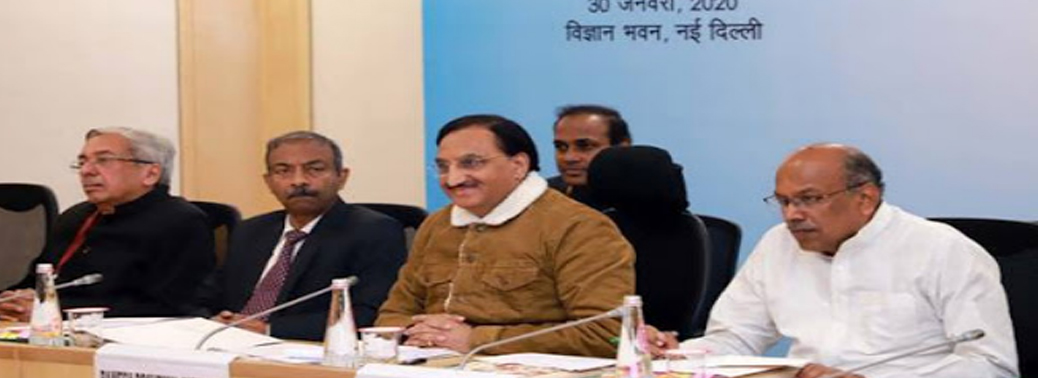
Why in News?
- Union HRD Minister chairs a meeting of the Indian National Commission for Cooperation with UNESCO in New Delhi.
INCCU:
- The INCCU is a governmental body formed by the Government of India which functions under the Department of Secondary and Higher Education in the Ministry of Human Resource Development.
- The objective of the Commission is to advise the Government in matters relating to the UNESCO.
- India has been a member of the United Nations Educational, Scientific, Cultural Organization (UNESCO), a specialized agency of the United Nations since its inception in 1946.
- The Constitution of the UNESCO mandates each member to form a national commission to function as agencies of liaison between the national government and UNESCO.
- Accordingly, an interim Indian National Commission for Co-operation with UNESCO was set up in 1949 by the Government of India, Ministry of Education.
- A permanent Commission was established in 1951.
Functions of the INCCU:
- To promote understanding of the objects and purposes of UNESCO among the people of the Republic of India;
- To serve as a liaison agency between the Government of India and the institutions concerned with the working for the advancement of education, science and culture;
- To cooperate with the Government departments and with services, organizations and institutions concerned with questions within UNESCO’s competence;
- To encourage participation of national, governmental and non-governmental institutions and various individuals in the formulations and execution of UNESCO’s programmes so as
- to secure for UNESCO all the intellectual, scientific, artistic or administrative assistance that it may require;
- To collaborate with the National Commissions of Asia and the Pacific and with UNESCO’s Regional Offices and centres in fostering regional, sub-regional and bilateral cooperation in education, the sciences, culture and information, particularly through the joint formulation and execution of programmes;
- To disseminate information on the objectives, programme and activities of UNESCO and endeavour to arouse public interest in them; and
- To advise the Government of India on matters relating to UNESCO.
India and UNESCO:
- India is among the founding members of UNESCO and has been playing a very active role in promoting UNESCO’s ideals and objectives.
- UNESCO’s Executive Board examines the programme of work for the Organization and corresponding budget estimates submitted to it by the Director-General.
- It consists of 58 Member States, each with a four-year term of office.
- India was one of the six elected Vice-Chairpersons for 2012-2013.
- India was re-elected as a Member of the Executive Board for 2014-17 in the election held in the 37th General Conference in November 2013.
- India has established an office of Permanent Delegation at UNESCO, Paris.
- Since 2013, India’s contribution is 0.666 percent of the total budget of UNESCO.
MERCY PETITION
31, Jan 2020

Why in News?
- The Supreme Court reserved its verdict on a petition by December 16, 2012 gangrape-murder convict Mukesh Kumar Singh, who had challenged the dismissal of his mercy plea by President Ram Nath Kovind.
Highlights:
- The case dates back to December 16, 2012, when a 23-year-old woman was gangraped and assaulted inside a moving bus in South Delhi by six persons, before being thrown out on the road. She died on December 29, 2012, at a hospital in Singapore.
President’s Clemency Powers:
-
- Under the Constitution of India (Article 72), the President of India can grant a pardon or reduce the sentence of a convicted person, particularly in cases involving capital punishment. A similar and parallel power vests in the governors of each state under
- Article 161.
- The pardoning power of the president is not absolute. It is governed by the advice of the Council of Ministers. This has not been discussed by the constitution but is the practical truth.
- Both the President and Governor are bound by the advice of their respective Councils of Ministers and hence the exercise of this power is of an executive character. It is therefore subject to Judicial Review as held by the Supreme Court of India in the case of Maru Ram v. Union of India (1980). It was subsequently confirmed by Kehar Singh v. Union of India [1988].
- In the case of Epuru Sudhakar & Anr vs Govt. Of A.P. & Ors [2006] , Supreme Court, it was held that clemency is subject to judicial review and that it cannot be dispensed as a privilege or act of grace.
- There are five different types of pardoning which are mandated by law.
- Pardon:means completely absolving the person of the crime and letting him go free. The pardoned criminal will be like a normal citizen.
- Commutation:means changing the type of punishment given to the guilty into a less harsh one, for example, a death penalty commuted to a life sentence.
- Reprieve:means a delay allowed in the execution of a sentence, usually a death sentence, for a guilty person to allow him some time to apply for Presidential Pardon or some other legal remedy to prove his innocence or successful rehabilitation.
- Respite:means reducing the quantum or degree of the punishment to a criminal in view of some special circumstances, like pregnancy, mental condition etc.
- Remission:means changing the quantum of the punishment without changing its nature, for example reducing twenty year rigorous imprisonment to ten years.
- These powers are Applicable:
- In all cases where the punishment or sentence is by a court martial;
- In all cases where the punishment or sentence is for an offence against any law relating to a matter to which the executive power of the Union extends;
- In all cases where the sentence is a sentence of death.
ARTICLE 131 – SPECIAL POWERS OF SUPREME COURT
29, Jan 2020
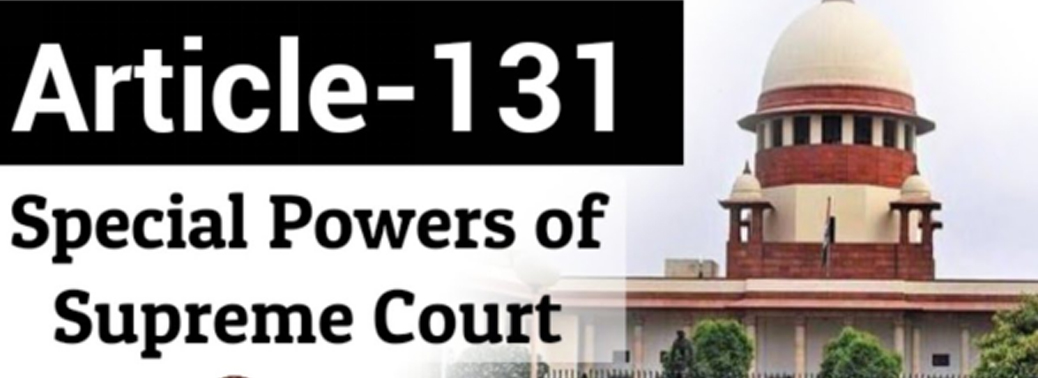
Context:
- Recently, the LDF government in Kerala, became the first state government in the country, that moved the Supreme Court against the Citizenship Amendment Act (CAA). The Kerala government sought that the act be declared as violative of the Doctrine of Basic structure—principle of equality, freedom and secularism.
Citizenship Amendment Act (CAA), 2019:
- The CAA 2019 grants Indian citizenship to persecuted non-Muslim minorities viz. Hindus, Sikhs, Buddhists, Jains, Parsis and Christians who migrated to India from Afghanistan, Pakistan and Bangladesh on or before December 31, 2014.
Article-131: Original Jurisdiction
- The SC (as a federal court of India) possesses Original jurisdiction to decide the disputes arising between different units of the Indian Federation like:
- Centre and one or more states; or
- Centre & any state(s) on one side and one or more states on the other; or
- Two or more states.
The Applicability of the Article 131:
- The dispute must involve a question of law or fact on which the existence/extent of a legal right depends. Thus, the questions of political nature are excluded from it.
- Any suit brought before the Supreme Court by a private citizen against the Centre or a state cannot be entertained under this article.
- Also, the provisions mentioned in this Article are subject to other provisions of the Constitution. For example, in cases of water disputes between two or more states, the remedy to such conflicts is entertained under Article 262 of the Constitution and not under Article 131.
Part XI and the Seventh Schedule:
- Part XI (Articles 245-263) of the Indian Constitution consists of articles that describes the legislative, administrative, and financial relations between the Union and the States.
- Article 246:Defines the legislative subject matters on which the Parliament and the State Legislatures can make laws. These matters are enumerated in the 3 lists of Seventh Schedule.
- Union List:
- Parliament has exclusive powers to make laws on the subjects mentioned in the Union List.
- Parliament is also empowered to make laws for territories which presently do not form part of any state.
- State List:
- State Legislature (in normal circumstances) has exclusive powers to make laws on subjects enumerated in the State List.
- Concurrent List:
- Both Parliament & State Legislature can make laws on items described in the Concurrent List.
- However, in case of any conflict, the Central law prevails.
Exceptions:
- Under 5 circumstances, the Parliament is empowered to make laws on State List subjects –
- If a resolution is passed to that effect by the Rajya Sabha (Article 249),
- During National emergency,
- President’s Rule,
- If requested by two or more States,
- Under obligation to implement an International Treaty.
Articles 256 and 365:
- Article 256 of the Constitution states that the executive power of every State must ensure compliance with the laws made by the Parliament.
- Kerala has said in its suit that, under CAA it would be compelled to comply with its provisions because of Article 256.
- Kerala considers CAA to be arbitrary, unreasonable, irrational and violative of Fundamental Rights.
- If it does not follow the same, the repercussions could be seen in the form of Article 365.
- Article 365: In case of failure to comply with, or to give effect to, directions given by the Union, the President is empowered to make a decision thinking that a situation has arisen in which the government of the State cannot be carried on in accordance with the provisions of this Constitution. Hence, the President’s rule could be enacted.
Can Supreme Court test the validity of a law under Article 131?
- Legislative Competence:A law must be challenged in the Court if it is in excess of the legislative competence of the framing authority.
- Violation of Rights:The Court can check whether a particular law violates which kind of rights- whether Fundamental or Constitutional rights?
- Violation of the Constitution:The Court can test a law if it is ultra-vires the Constitution. In this regard, there are following Doctrines which have been evolved by the SC over a period of time:
- Doctrine of Basic Structure:The Doctrine of Basic Structure signifies the basic features of the Constitution, which cannot be changed/amended, as they form the foundation of the Constitution on which its core principles/existence stands.
- Doctrine of Pith & Substance:Pith means ‘true nature’ or ‘essence of something’ and Substance means ‘the most important or essential part of something’.
- Doctrine of Colorable Legislation:It comes into play when a Legislature does not possess the power to make laws upon a particular subject but it indirectly makes law on it.
Related Cases:
- West Bengal Government’s Case
- In 2017, the SC proclaimed that the State government cannot ask for any remedy related to Fundamental rights.
- The case was filed under Article 32 of the Constitution challenging the validity of the ‘Aadhaar Act’.
- The Court also held that, “Fundamental rights are available to individuals: citizens or non-citizens against the State (under Article 32 or Article 226) and not to the State entities.”
- Chhattisgarh Government’s Case
- Chhattisgarh government also recently filed a suit in SC (under Article 131) against the National Investigation Agency (NIA) Act, 2008.
- It claimed that ‘Police’ & ‘Public Order’ are the state subjects and States have the ultimate authority to make laws related to it.
- NIA Act, 2008 takes away the state’s power to investigate offences categorised as ‘scheduled offences’ under the Act, though they are within State’s jurisdiction.
- West Bengal’s case : Rights in Mines in Coal-bearing Areas:
- A case was filed against the Central law (Coal Bearing Areas (Acquisition and Development) Act, 1957) under Article 131.
- The State claimed that the Act did not apply to lands vested in or owned by the State, and even if it applied to such lands, the Act was beyond the legislative competence of the Parliament.
- In 1962, the SC entertained the West Bengal’s petition under Article 131 as the State had legal rights in this case, however, it also upheld the Central law.
Conflicting Judgments:
- There have been two conflicting judgments given by the Supreme Court on whether a State can file an original suit under Article 131 to challenge the constitutionality of a central law:
- In the State of Madhya Pradesh vs Union of India, 2011 case, the issue dealing with electricity was raised and the Court held that States cannot challenge a central law under Article 131.
- In the State of Jharkhand Vs State of Bihar, 2015 case, the SC took the opposite stance and referred the question of law to a larger Bench for final determination.
Way Forward:
- Politically motivated pleas must be abandoned and must not be entertained by the SC. Instead, determined efforts must be made to resolve them within the political arena.
- Representatives of states must speak up in the Parliament when the laws are being framed & passed rather than making hue and cry later.
- Federalism is a two-way street. Both the parties to it must respect the boundaries of one another that has been drawn by the Constitution.
- The States must restrain themselves while defying the implementation of Central laws, if done it might lead to the breakdown of constitutional machinery.
- Hence, States are bound to implement the Central laws until and unless they are declared as void and unconstitutional by the Higher Courts of the country.
ANDHRA PRADESH TO SCRAP LEGISLATIVE COUNCIL
29, Jan 2020

Why in News?
- The Andhra Pradesh (AP) assembly has passed a resolution to abolish the state’s Legislative Council.
About Andhra Legislative Council:
- Since, the Andhra Pradesh government has passed a resolution to abolish the state legislative council, further it has to send the resolution to the Governor for his approval and then to the Parliament.
- Once the Parliament passes the law to give effect for the resolution, the state legislative council will be dissolved.
- Andhra Pradesh’s Legislative Council was initially set up in 1958 but then abolished in 1985. It was then reconstituted in the year 2007.
States having State Legislative Councils:
- Besides Andhra Pradesh, the other states having Legislative Councils are Telangana, Uttar Pradesh, Bihar, Maharashtra and Karnataka.
- Legislative assemblies of Rajasthan, Assam and Odisha have passed resolutions for the formation of the Council
About State Legislative Council:
Basis for Formation:
- India has a bicameral system of legislature. Just as the Parliament has two Houses, the states can also have a Legislative Council (LC) in addition to the Legislative Assembly through Article 169 of the Constitution.
Abolition and Creation – Article 169:
- The Parliament can abolish a Legislative Council (where it already exists) or create it (where it does not exist) by a simple majority, if the legislative assembly of the concerned state, by a special majority, passes a resolution to that effect.
- Special Majority Implies:
- A majority of the total membership of the assembly
- A majority of not less than two-thirds of the members of the assembly present and voting.
Is Legislative council really beneficial?
- 1.Arguments in Favour of the Formation of the Council:
- The Legislative Council also enables non-elected individuals to contribute to the legislative process.
- An Upper House provides a forum for academicians and intellectuals, who are arguably not suited for the rough and tumble of electoral politics.
- It provides a mechanism for a more sober and considered appraisal of legislation that a State may pass. A Legislative Council can help check hasty actions by the directly elected House.
- Legislative Councils make the governments more accountable.
- The members of Legislative Council through their experience can act as the friend, philosopher and guide of the Legislative Assembly.
- 2.Arguments Against
- The Legislative Council can delay legislation.
- It strains state finances and an unnecessary drain on the exchequer.
- The absence of Legislative council in every state itself suggests the lack of any real advantage, apart from the absence of a broad political consensus on the issue.
- Rather than fulfilling the lofty objective of getting intellectuals into the legislature, the forum is likely to be used to accommodate party functionaries who fail to get elected.
- Another issue is that graduates are no longer a rare breed; also, with dipping educational standards, a graduate degree is no guarantee of any real Intellectual Heft.
Way Forward:
- There has to be a national policy on having an Upper House in State legislatures to be framed by the Union government, so that a subsequent government doesn’t abolish it. There has to be a uniformity and strong policy for its creation, revival and abolishment.
- It argued that the status of Legislative Councils cannot be of temporary in nature depending on the mood of the Government of the day nor can be abolished once created, only at the whims and fancy of a newly elected Government in the State.
- A national consensus must be evolved on the establishment of Legislative Councils.
- The provision in the law for Councils to have seats for graduates and teachers needs to be reviewed.
SECURITY CATEGORIES IN INDIA
11, Jan 2020

Why in News?
- The Ministry of Home Affairs (MHA) has withdrawn the security cover of DMK president M.K Stalin and Tamil Nadu Deputy Chief Minister O. Panneerselvam recently.
About:
- In India, security details are provided to some high-risk individuals by the police and state government.
- Depending on the threat perception to the person, the category is divided into four tiers: Z+ (highest level), Z, Y and X.
- Individuals under this security blanket include the President, Vice-President, Prime-Minister, Supreme Court and High Court Judges, Service Chiefs of Indian Armed Forces, Governors of State, Chief Ministers and Cabinet Ministers.
SPG Category:
- Strength of security detail is classified (only provided to the Prime Minister of India.)
- The SPG (Special Protection Group), NSG (National Security Guards), ITBP (Indo-Tibetan Border Police) and CRPF (Central Reserve Police Force) are the agencies responsible for providing securities to VVIPs, VIPs, politicians, high-profile celebrities and sportspersons.
- The NSG is used extensively to guard VIPs and VVIPs, especially those in the Z+ category.
- Many NSG personnel are seconded to the Special Protection Group (SPG) which guards the Prime Minister.
- Recently, the Centre withdrew the Special Protection Group cover of Congress leaders Sonia Gandhi, Rahul Gandhi and Priyanka Gandhi and replaced it with Z-plus cover of CRPF.
Z+ Category:
- It has a security cover of 55 personnel [Including 10+ NSG Commando] + [Police Personnel]
- The Z+ level of security is provided by National Security Guard commandos.
Z Category:
- It has a security cover of 22 personnel [Including 4 or 5 NSG Commando] + [Police Personnel]
- The ‘Z’ category entails security cover by the Delhi police or the ITBP or CRPF personnel and one escort car.
Y category:
- It has a security cover of 11 personnel [Including 1 or 2 Commando] + [Police Personnel]
- The ‘Y’ category encompasses two personal security officers (PSOs) and one PSO from the ‘X’ category.
X Category:
- It has a security cover of 2 personnel [No Commando, Only Armed Police Personnel]
How Security is Entitled?
- If there is any threat perception to VIPs then it is the responsibility of the government to provide security.
- A person facing a threat files an application at the police station nearest to his/her residence.
- Then, the case is forwarded to the intelligence agencies to find out the threat posed to the person.
- When the threat is confirmed, a committee comprising the Home Secretary, Director General and the Chief Secretary in the state decides which category of security is to be given to that person.
- After this, the details of the person are also given to the Union Home Ministry for formal Approval.
UTTAR PRADESH TOPS LIST IN CRIMES AGAINST WOMEN, SAYS NCRB
10, Jan 2020

Why in News?
- Recently, the National Crime Records Bureau (NCRB) published the annual Crime in India Report 2018.
About NCRB:
- NCRB, headquartered in New Delhi, was set-up in 1986 under the Ministry of Home Affairs to function as a repository of information on crime and criminals so as to assist the investigators in linking crime to the perpetrators.
- It was set up based on the recommendations of the National Police Commission (1977-1981) and the MHA’s Task Force (1985).
- NCRB brings out the annual comprehensive statistics of crime across the country (‘Crime in India’ report).Being published since 1953, the report serves as a crucial tool in understanding the law and order situation across the country.
Suicides in India:
- The NCRB released the Accidental Death and Suicides in India 2018 report, which said that 10,349 people working in the farm sector ended their lives in 2018, accounting for 7 % of the total number of suicides in the country.
- There were 5,763 farmers/cultivators and 4,586 agricultural labourers among those who ended their lives.
- The total number of people who committed suicide in 2018 was 1, 34,516, an increase of 3.6%from 2017 when 1, 29,887 cases were reported.
- The highest number of suicide victims were daily wagers— 26,589, comprising 22.4% of such deaths.
- The majority of the suicideswere reported in Maharashtra (17,972) followed by Tamil Nadu (13,896), West Bengal (13,255), Madhya Pradesh (11,775) and Karnataka (11,561).
- Many States and Union Territories have also reported nil data on suicides by farmers, cultivators and farm labourers.
- “West Bengal, Bihar, Odisha, Uttarakhand, Meghalaya, Goa, Chandigarh, Daman & Diu, Delhi, Lakshadweep and Puducherry reported zero suicidesby farmers/cultivators as well as agricultural labourers,”

Murder Cases:
- The incidents registered under the Scheduled Caste andScheduled Tribes related Acts saw a decline from 6729 incidents reported in 2017 to 4816 in 2018.
- A total of 29,017 cases of murder were registered in 2018, showing an increase of 1.3% over 2017 (28,653 cases).
- A total of 76,851 cases of offences against public tranquillity were registered in 2018, out of which rioting, 57,828 cases, accounted for 75.2% of total such cases, the report said.
- As many as 27,248 cases of cyber-crimes were registered in 2018, up from 21796 cases in 2017.
Crime against Women:
- According to the report, 3, 78,277 cases of crime against women were reported in the country, upward trend from 3, 59,849 in 2017.
- Uttar Pradeshtopped the list with 59,445 cases, followed by Maharashtra (35,497) and West Bengal (30,394).
- The conviction rate in rape-related cases stood at 27.2% even though the rate of filing charge sheets was 85.3% in such cases.
- Cruelty by husband or his relatives (31.9%) followed by assault on women with intent to outrage her modesty (27.6%) constituted the major share of crimes against women.
- A total of 50, 74,634 cognizable crimes — 31, 32,954 Indian Penal Code (IPC) crimes and 19, 41,680 Special & Local Laws (SLL) crimes — were registered in 2018, showing an increase of 1.3% in registration of cases compared to 2017(50, 07,044 cases).
- The crime rate per lakh population, however, came down from 388.6 in 2017 to 383.5 in 2018.
What would be the causes for crimes against Women?
- Gender Disparity is one of the deep rooted causes of violence against women that put women at risk of several forms of violence.
- Discriminatory gender norms and gender stereotypes results into structural inequality.
- Psychiatric Morbidity generally refers to the incidence of both physical and psychological deterioration as a result of a mental or psychological condition, generally caused due to the consumption of alcohol.
- Regular consumption of alcoholby the husband has been strongly associated with poor mental health of women.
- Alcohol operates as a situational factor, increasing the likelihood of violence by the husbands against their wives.
- Socio demographic factors like Patriarchy have been cited as the main cause of violence against women. Where women have a higher economic status than their husbands and are seen as having sufficient power to change traditional gender roles, risk for violence is high.
- Family factors such as exposure to harsh physical discipline during childhood and witnessing the father beating the mother during childhood is a predictor of victimization and perpetration of violence against wife in adulthood.
Few Traditional and cultural practices against Women:
- Female genital mutilation:Can lead to death, infertility, and long-term psychological trauma combined with increased physical suffering.
- Acid attacks:Acid attacks have emerged as a cheap and readily accessible weapon to disfigure and sometimes kill women and girls for reasons as varied as family feuds, inability to meet dowry demands, and rejection of marriage proposals.
- Killing in the name of family honour:In several countries of the world including Bangladesh, Egypt, Jordan, Lebanon, Pakistan, Turkey, and India, women are killed to uphold the honour of the family due to varied reasons such as-alleged adultery, premarital relationship (with or without sexual relations), rape, falling in love with a person the family disapproves, which justify a male member of the family to kill the woman concerned.
- Early marriages:Early marriage with or without the consent of the girl, constitutes a form of violence as it undermines the health and autonomy of millions of girls.
- Judiciary and law enforcement machinery:An insensitive, inefficient, corrupt and unaccountable judicial system and law enforcement machinery fails to deter against various forms of crimes.
- Socio cultural factors disfavouring women: Stereotypes of gender roles have continued over the ages.
- The primary roles for women have been marriage and motherhood.
- Women must marry because an unmarried, separated or divorced status is a stigma.
- The custom of dowry is still prevalent in Indian marriages.
Need for an hour:
- Gender based legislation:It is important to enact and enforce legislation and develop and implement policies that promote gender equality by ending discrimination against women in marriage, divorce and custody laws, inheritance laws and ownership of assets.
- Financial Independence:Improving women’s access to paid employment.
- Developing and resourcing national plans and policies to address violence against women.
- Improve system of collecting crime surveillance data on violence against women.
- Capacity building and training to service providers and law enforcement officers to handle cases of violence against women.
- Male Mediated Initiatives:Ensure male involvement in devising program for abusers.
- Prevent recurrence of Violence:Through early identification of women and children who are experiencing violence and providing appropriate referral and support
- Promote egalitarian gender norms as part of life skills and comprehensive sexuality education curricula taught to young people.
- Gender Based Surveys:Generate evidence on what works and on the magnitude of the problem by carrying out population-based surveys, or including violence against women in population-based demographic and health surveys, as well as in surveillance and health information systems.
FAST TRACK SPECIAL COURTS FOR SPEEDY DISPOSAL OF RAPE AND POCSO ACT CASES
10, Jan 2020

Why in News?
- 1023 Fast Track Special Courts will be set up for Speedy disposal of Rape and POCSO Act Cases.
Highlights:
- The offences of rape and gang rape of women and children require effective deterrence through fast and time-bound completion of trials relating to sexual offences.
- To bring out more stringent provisions and expeditious trial and disposal of such cases, the Union of India enacted the Criminal Law (Amendment) Act, 2018.
- The Criminal Law (Amendment), Act 2013 was enacted for effective deterrence against sexual offences. This widened the definition of rape and made punishment more stringent.
- Further, the Criminal Law (Amendment) Act, 2018 was enacted to prescribe even more stringent penal provisions including death penalty for the rape of a girl below the age of 12 years. The Act also, among other things, mandates the completion of investigation and trials within 2 months each.
- The government has taken up the work of setting up of Fast Track Special Courts (FTSCs) as a part of the National Mission for Safety of Women (NMSW).
- The government has planned a series of measures to deal with women safety on mission mode and will make a comprehensive programme.
- The NMSW is going to cover all aspects from free medical care to legal aid to the victims of sexual assault by engaging public prosecutors in states and setting up of nearly 1,023 fast track courts for Fast Judgements.
10% RESERVATION FOR EWS
08, Jan 2020
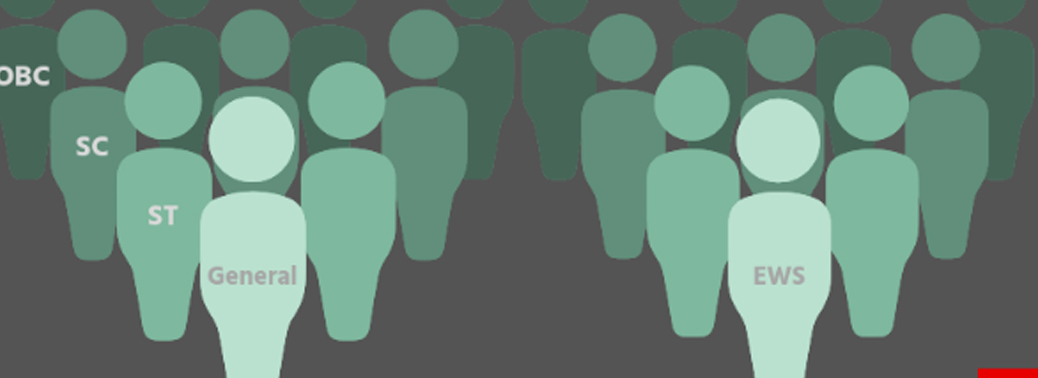
Why in News?
- The Centre has informed the Supreme Court that it would be the States’ prerogative to provide 10% economic reservation in government jobs and admission to Education Institutions.
About the 103rd Constitutional Amendment Act:
- One Hundred and Twenty- Fourth Amendment Bill was introduced to extend 10% quota to “the economically weaker sections in the general category that are not covered by any of the existing schemes of reservation”.
- The bill was designed to amend the Constitution to extend 10% reservation in direct recruitment in government jobs and for admission in higher educational institutions to “economically weaker”sections among all castes and communities, Christians and Muslims included, who are not eligible under the already Existing Quotas.
Who were Included in EWS?
- Annual Household Income below Rs 8 lakh.
- Agriculture land below 5 acres.
- Residential house below 1000 Sq.
- Residential plot below 100 yards in notified municipality.
- Residential plot below 200 yards in non-notified municipality area.
Why Constitution Amended?
- It was amended because the issue was related to the Fundamental rights Articles 15 (prohibition of discrimination on grounds of religion, race, caste, sex or place of birth) and 16 (equality of opportunity in matters of public employment) of the Constitution.
- The amendment was ratified in both Lok Sabha and Rajya Sabha, by two thirds of members present and voting.
What are its Implications?
- The 10% reservation will be in addition to the existing cap of 50% reservation for the Scheduled Castes, Scheduled Tribes and the Other Backward Classes, taking total reservation to 60%.
- The quota targets the poor among the upper castes. This will be over and above 50% mandated by Constitution and hence the need for Constitution amendment Bill.
What was SC’s Response?
- A nine-judge Constitution Bench of the Supreme Court in the Indira Sawhney case of 1992 specifically answered the question “whether backward classes can be identified only and exclusively with reference to the economic criterion.”
- The constitution bench had categorically ruled that a backward class cannot be determined only and exclusively with reference to economic criterion.
- The bench had held that economic criterion may be a consideration or basis along with, and in addition to, social backwardness, but it can never be the sole criterion.
- The bench in its judgement declared 50% quota as the rule unless extraordinary situations “inherent in the great diversity of this country and the people” happen.
- Even then, the court stated that extreme caution is to be exercised and a special case should be made out.
What is the Current Issue?
- The Centre said in an affidavit “Whether or not to provide reservation to the economically weaker section in appointment to State government jobs and admission to State government educational institutions, as per provisions of the newly inserted Articles 15(6) and 16(6) of the Constitution, is to be decided by the State government concerned”.
- The Centre also added that Department of Social Justice and Empowerment “has no role in deciding the reservation policy of any State government”.
SC BATS AGAINST THE TRANSFER OF COMMUNITY RESOURCES
02, Jan 2020
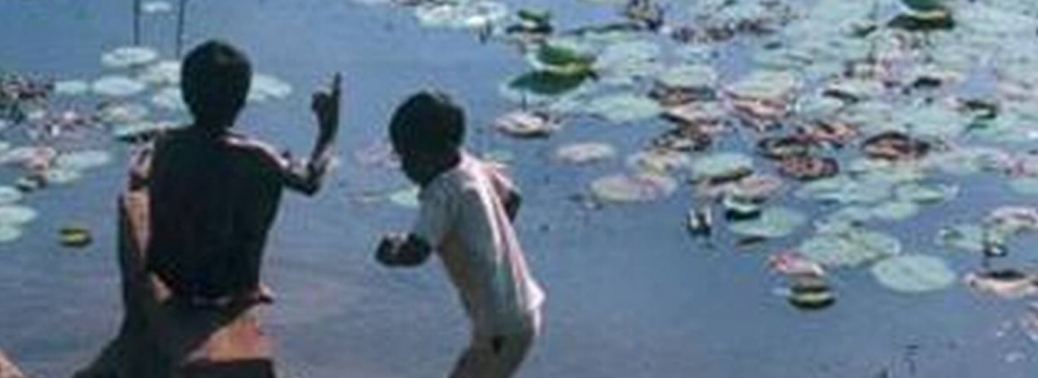
Why in News?
- Recently, the Supreme Court of India held that the Government has no right to transfer “invaluable” community resources like village water ponds to powerful people and industrialists for commercialisation of the property.
About the Judgement:
- Resources which are available for everyone’s use in a community, village or town are called community resources. For example- ponds, playgrounds, public parks etc.
- The judgment came on a plea against the transfer of village ponds’ sites in the National Capital Region to some private industrialists by the Greater Noida Industrial Development Authority.The National Green Tribunal (NGT) refused to intervene on the plea but the apex court ordered the authorities and the industrialists to remove all obstructions and restore the water bodies within three months.
- SC said the State cannot deprive the villagers of their existing source of water and other community resources even after the promise of providing them with an alternative source. There is no guarantee that the adverse effect of destroying the existing water body would be offset and people would be compelled to travel miles to access the alternative site.
Importance of Community Resources:
- These common areas like water ponds and wells are the lifeline of village communities and often sustain various chores and provide resources necessary for life.
- It is necessary to protect village commons for safeguarding the fundamental right guaranteed by Article 21 of our Constitution.
- Article 21 guarantees not just right to life but Right to live with dignity, Right to decent environment, Right to livelihood.
- It is fundamental, non-deprivable and is available to every person. Even the State cannot violate that right.
- Depriving villagers of existing source of water and creating an alternative site is similar to that of “Mechanical application of environmental protection”.
NITI AAYOG TO DRAFT ROADMAP FOR ACHIEVING POPULATION STABILIZATION
21, Dec 2019

Why in News?
- NITI Aayog is organising a National Consultation titled “Realizing the vision of population stabilization: leaving no one behind”.
Highlights:
- The working paper is expected to address key gaps in India’s family planning programmes.
- It will offer constructive recommendations to address regional disparities in outcomes by focusing on adolescents and youths, inter-departmental convergence, demand generation, access to contraceptive services and quality of care.
- The recommendations from the consultation will contribute to a NITI Aayog working paper to help achieve India’s vision of attaining population stabilization.
Key Recommendations:
- Increasing the basket of contraceptive choices, with greater focus on spacing methods and helping women make informed choices about delaying pregnancy and spacing between children.
- Addressing social determinants of health such as age at marriage and sex-selective practices.
- Strengthening quality of care, including counselling services, managing side effects and family planning support.
- Increasing budgetary allocations for family planning, to align with the unmet needs of India’s young people who constitute nearly 30 per cent of our population.
- Addressing existing socio-cultural barriers towards contraception by investing extensively in innovative behaviour-change communication strategies.
- Treating population stabilization and family planning as a national priority, fostering inter-departmental convergence and ensuring multisectoral participation and integration.
Why Such Move?
- India, with a current population size of 1.37 billion, has the second largest population in the world.
- Family planning is considered universally as the smartest development investment.
- For India to realize its sustainable development goals and economic aspirations, it is important to ensure that people have informed access to contraception and quality family planning services.
- India is also at a stage where birth rates are falling but the population continues to grow due to the fact that more than30 % of the population is young and in the reproductive age group.
- Nearly30 million currently married women in the age group of 15-49 years within this critical cohort have unmet needs in family planning.
- This limits their ability to delay or avoid pregnancy by not having access or the agency to use contraception.
RIGHT TO INFORMATION (RTI) ACT
19, Dec 2019

Why in News?
- Recently, Chief Justice of India has stated that there is backlog in RTI filing because of Information Commission vacancies.
About Central Information Commission
- It consists of the Central Information Commissioner and more than ten Information commissioners.
- The President of India appoints the Chief Information commissioner and the information commissioners on the recommendation of the committee consisting of the Prime Minister as chairperson, the leader of the opposition in the Lok Sabha and union cabinet ministers nominated by the Prime Minister.
- It has a tenure of five years or until they attain age of 65 years.
RTI Act 2005
- The Right to Information Act 2005 or RTI 2005, came into force in order to encourage a corruption free, transparent and accountable form of government in which the citizens feel a sense of power and safety.
Provisions:
- Under the Act, a citizen can demand from any public or government authority any information as long as it does not pertain to national security and defence or some personal information and the authority is supposed to respond within a period of 30 days to the application.
RTI Act Information Exclusions:
- Under section 8 of the RTI Act, 2005 Govt/public authorities are exempted from sharing following information:
- Affecting the Sovereignty, Integrity, Security, Strategic interest, Scientific interest or Economic interest of the State of India
- Affecting relation of State of India with Foreign State
- Forbidden by any court of law in India
- Breach of privilege of State assembly or Parliament of India
- Intellectual Property Rights, Copyright, Commercial Confidence or Trade Secrets
- Available to a person in his fiduciary relationship, unless disclosure is required in larger public interest
- Received from foreign Government
- Risk the life or physical safety of any person
- Impact or obstruct legal investigation
- Minutes of Union Cabinet meeting including discussion between Ministers, Secretaries or Govt officers
- Personal information that is breaches of Privacy
Features of the Act:
- Section- 2 (f):“Information” means any material in any form, including Records, Documents, Memos, e-mails, Opinions, Advices, Press releases, Circulars, Orders, Logbooks, Contracts, Reports, Papers, Samples, Models, Data material held in any electronic form and information relating to any private body which can be accessed by a Public Authority under any other law for the time being in force.
- Section- 2(j): “Right to Information” means the right to information accessible under this Act which is held by or under the control of any public authority and includes the right to:
- Inspection of work, documents, records;
- Taking notes, extracts or certified copies of documents or records;
- Taking certified samples of material;
- Obtaining information in the form of diskettes, floppies, tapes, video cassettes or in any other electronic mode or through printouts where such information is stored in a computer or in any other device.
- Section 4:It requires Suo motu disclosure of information by each public authority. However, such disclosures have remained less than satisfactory.
- Section 6(2): “An applicant making request for information shall not be required to give any reason for requesting the information or any other personal details except those that may be necessary for contacting him.”
- Section 8(1)(j):“The information which cannot be denied to the Parliament or a State Legislature shall not be denied to any person” under the RTI Act.
Major Issues related to RTI:
- Policy paralysis due to RTI.
- The increase in RTI filings makes the bureaucrats to fear about the RTI revelations, which makes them to delay the decisions resulting in policy paralysis.
- Numerous vacancies in Information Commission
- Government failing to fill the vacancies in information commissions timely leads to piling up of backlogs.
- Issue of “locus standi”
- RTI act doesn’t require “locus standi” to apply for information, which result in increase of irresponsible RTI’s, which increase the burden on existing personnel.
What is locus standi?
- Locus standi is the ability of a party to demonstrate to the court sufficient connection to and harm from the law or action challenged to support that party’s participation in the case.
Way Ahead:
- The transparency audit by the government found poor disclosures among most of central Public Authorities. By increasing disclosures and filling vacancies, the RTI load can be eased.
- If the locus standi of applicants is made a criterion then the rejection rate will rise significantly.
- By filing the vacancies in CIC and IC, the issues related to RTI will be resolved
PACKAGED FOODS BREACH SAFE LIMITS OF SALT, FAT
18, Dec 2019

Why in News?
- Laboratory analysis by the Centre for Science and Environment from an array of packaged snacks and fast foods is found to breach safe limits of salt and fat content.
About the News:
- The agency tested salt, fat, trans-fat and carbohydrates in 33 popular “junk foods”, which consisted of 14 samples of chips, salted snacks, instant noodles and instant soup, and 19 samples of burgers, fries, fried chicken, pizzas, sandwiches and wraps.
- The samples were collected from grocery stores and fast food outlets in the city.
How the test was done?
- To calculate how unsafe the foods tested were, the organisation relied on the concept of the Recommended Dietary Allowance(RDA) — a daily ceiling on the amount of salt, fat, carbohydrates and trans-fats.
- The RDA is based on scientific consensus and has been agreed upon by expert bodies such as the World Health Organisation, and the National Institute of Nutrition in India. It says that, ideally, no more than 5 gm of salt, 60 gm of fat, 300 gm carbohydrate and 2.2 gm of trans-fat should be consumed by an adult every day.
- Further, the RDA from each breakfast, lunch and dinner should be no more than 25%, and that from snacks no more than 10%.
- The CSE found that given the size of the servings and the amount of nutrients per 100 gm, a single packet of packaged nuts, soup or noodles ended up having these salts and fats well over the recommended limits.
- For instance, a popular savoury snack, with a serve size of 231 gm, had the equivalent of
- 7 gm of salt and 99 gm of total (saturated and unsaturated) fat.
- A single serving of the popular noodles Masala (70 gm) exhausted 50% of the composite RDA for a snack, and a serving of popular brand’s nut cracker exhausted 35% of the salt RDA and 26% of the fat RDA.

Need for Declaration:
- According to the proposed draft Food Safety and Standards (Labelling and Display) Regulations, packaged food companies will need to declare nutritional information such as calories (energy), saturated fat, trans-fat, added sugar and sodium per serve on the front of the pack. The food labels are also required to declare, per serve percentage contribution to RDA on the front of the pack.
- Though under discussions since 2015 and several drafts — the latest one came out in July — these rules have yet to become law, and to be operationalised.
Need for Red Octagon:
- The CSE took the values prescribed in the drafts for their calculations and concluded that all of the popular snacks and fast foods ought to be displaying a ‘Red Octagon’, a warning symbol employed in packaged foods in Chile and Peru.
- The Red Octagon, which should be printed on the front of the pack, has a number and the name of the food component within that indicates how widely off the RDA a particular ingredient is.
- Thus a Red “3.1, Salt” on a pack of Lay’s India’s Magic Masala by PepsiCo indicates that the salt it contains is 3.1 times the RDA for snacks.
- What we have seen is that all of the packaged foods of the various brands we tested would be in the red.
- The regulations, as they now stand, don’t apply to fast foods such as burgers and pizzas, even though they were included in the CSE analysis.
REPORT ON “FUNCTIONING OF BORDER GUARDING FORCES”
18, Dec 2019

Why in News?
- The Department Related Standing Committee on Home Affairs, currently chaired by Anand Sharma, has submitted a report on the action taken by the Ministry of Home Affairs (MHA) with respect to the recommendations given by the committee in the 214threport regarding the “Functioning of Border Guarding Forces”.
Key Recommendations of the Report:
- It has objected to the overuse of the Central Armed Police Force (CAPF) for rigorous internal security and election-related duties to the extent that even the reserved battalions are deployed not giving them enough time for rest and recuperation.
- To boost the morale of the CAPFs, the committee insisted on limiting deputation of officers from the IPS and the armed forces to CAPFs at 25% and the CAPFs cadres should be given an opportunity to become the Director General of respective forces. However, the MHA, in its response to the panel, said, the 7th Pay Commission and the Committee on Allowance did not agree to such special pay to CAPF.
- The committee insisted on paying paramilitary service pay to the CAPF on par with the defence forces personnel.
- The committee noted that the defence forces personnel are being paid Military Service Pay in view of the risk to life and social and family isolation. So, it recommended that CAPF should also get similar incentive in the form of Paramilitary Service Pay as they also face similar risks and isolation.
- The committee has also noted it was pained to note that the reserved battalions, which are to be used judiciously and provided rest for being in a state of preparedness, are engaged in duties such as internal security and counter-insurgency, which are quite rigorous.
- It urged the Home Ministry to draw a line to allow much required rest and recuperation to the personnel and adhere to the laid down policy on “rest and recuperation”.
- Referring to suicides in the CAPFs, the committee urged the Ministry to put in place an institutional mechanism with representatives of the MHA, the Bureau of Police Research
- and Development, heads of various forces and experts in public health, mental health, psychology and psychiatry to address the issue.
Action regarding the Recommendations:
- of the 119 recommendations of the Committee made in its 214th Report, the MHA accepted and acted upon 29. The Committee decided not to pursue further action taken in respect of 50 while rejecting the Ministry’s replies in respect of 17
About Central Armed Police Force (CAPF):
- The Central Armed Police Forces (CAPF) refers to seven security forces in India under the authority of Ministry of Home Affairs.
1. Assam Rifles (AR)
2. Border Security Force (BSF)
3. Central Industrial Security Force (CISF)
4. Central Reserve Police Force (CRPF)
5. Indo Tibetan Border Police (ITBP)
6. National Security Guard (NSG)
7. Sashastra Seema Bal (SSB)
- Each of the seven has its own cadre of officers, but they are headed by officers of the Indian Police Service.
RIGHT TO PROTEST UNDER ARTICLE 19
17, Dec 2019
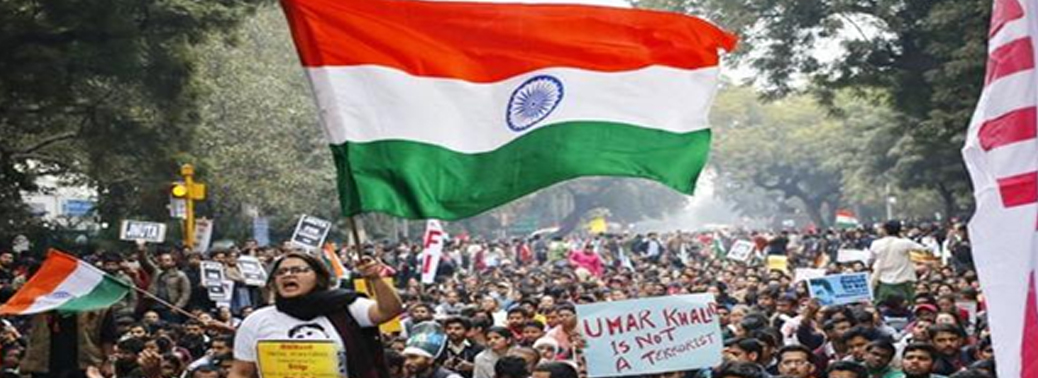
Why in News?
- CJI Sharad Arvind Bobde recently stated that people have right to protest, but they should stop riot.
What does the Constitution say?
- The right of citizens to protest peacefully is guaranteed by the Constitution of India.
- Articles 19(1)(a) and 19(1)(b) give to all citizens the right to freedom of speech and expression, and to assemble peaceably and without arms.
- However, under Articles 19(2) and 19(3), the right to freedom of speech is subject to “reasonable restrictions in the interests of the sovereignty and integrity of India, the security of the State, friendly relations with foreign States, public order, decency or morality or in relation to contempt of court, defamation or incitement to an offence”.
What are the Legal Provisions?
- The legal provisions and avenue available to police for handling agitations, protests, and unlawful assemblies are covered by the Code of Criminal Procedure (CrPC), 1973, the Indian Penal Code (IPC), 1860, and The Police Act, 1861.
- The CrPC’s Sections 129-132 deal with “Dispersal of assembly by use of civil force”, use of the armed forces in situations of civil unrest, and protection against prosecution for acts done under these sections.
- The IPC’s Sections 141-158 deal with unlawful assembly, and the responsibilities, liabilities, and punishments related to this offence.
What are the Judicial Guidelines?
- In ‘Karam Singh vs. Hardayal Singh and Ors 1979’ the High Court of Punjab and Haryana underlined that before any force can be used, three prerequisites are to be satisfied.
These were:
- Firstly,there should be an unlawful assembly with the object of committing violence or an assembly of five or more persons likely to cause a disturbance of the public peace.
- Secondly,such assembly is ordered to be dispersed and
- Thirdly,in spite of such orders to disperse, such assembly does not disperse.
International Provision for Right to Protests:
- The ‘Basic Principles on the Use of Force and Firearms by Law Enforcement Officials’ was adopted by the Eighth United Nations Congress in Havana, 1990.
- It resolved that law enforcement officials, in carrying out their duty, shall, as far as possible, apply non-violent means before resorting to the use of force and firearms.

NOT MANY LESSONS LEARNT FROM WATER PLANNING FAILURES
13, Dec 2019
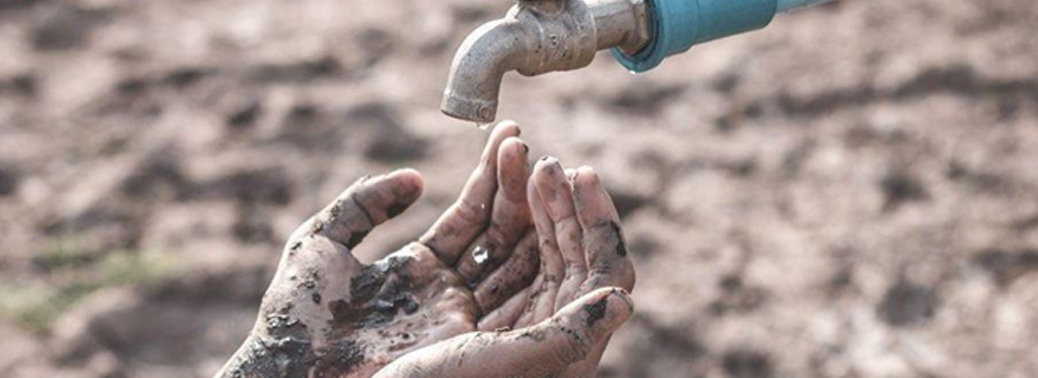
Context:
- In the absence of scientific planning and implementation, measures like Jal Shakti Abhiyan may not be successful, says Water Experts.
Today’s Water Scenario:
- Following the massive water crisis across India in the summer of 2019, the Central government hurriedly launched the Jal Shakti Abhiyan (JSA), a time-bound, mission-mode water conservation campaign to be carried out in two phases, across the 255 districts having critical and over-exploited groundwater levels.
- This campaign, however, was not intended to be a funding programme and did not create any new intervention on its own.
- It only aimed to make water conservation a ‘people’s movement’ through ongoing schemes like the MGNREGA and other government programmes.
About Jal Shakti Abhiyan:
- It is a time-bound, mission-mode campaign that would focus on 1,592 “water-stressed” blocks in 257 districts.
- The campaign will run through citizen participation during the monsoon season, from 1st July, 2019 to 15th September, 2019.
- The 1,592 blocks, identified as “water-stressed” as per the Central Ground Water Board’s 2017 data, include 313 critical blocks, 1,000-odd over-exploited blocks and 94 blocks with least water availability (for states without water-stressed blocks).
- Jal Shakti Abhiyan is a collaborative effort of various Ministries of the Government of India and State Governments, being coordinated by the Department of Drinking Water and Sanitation.
- Under the campaign, teams of officers from the central government will visit and work with district administration in water stressed blocks, to ensure five important water conservation interventions.
- These will be water conservation and rainwater harvesting, renovation of traditional and other water bodies/tanks, reuse, bore well recharge structures, watershed development and intensive afforestation.
- These water conservation efforts will also be supplemented with special interventions including the development of Block and District Water Conservation Plans, promotion of efficient water use for irrigation and better choice of crops through Krishi Vigyan Kendras.
- A large-scale communications campaign has also been planned alongside the JSA involving mass mobilization of different groups including school students, college students, swachhagrahis, Self Help Groups, Panchayati Raj Institution members, youth groups (NSS/NYKS/NCC), defence personnel, ex-servicemen and pensioners, among various others.
Need for Scientific Planning for Water Conservation:
- Water planning should be based on hydrological units, namely river basins. And, political and administrative boundaries of districts rarely coincide with the hydrological boundaries or aquifer boundaries.
- However, contrary to this principle of water management, JSA was planned based on the boundary of the districts, and to be carried out under the overall supervision of a bureaucrat.
- This resulted in the division of basins/aquifers into multiple units that followed multiple policies. There was no data on basin-wise rainfall, no analysis of run-off and groundwater maps were rarely used.
- As a result, one never came to know whether water harvested in a pond in a district was at the cost of water in adjoining districts.
- The JSA also fundamentally ignored the fact that most of India’s water-stressed basins, particularly those in the peninsular regions, are facing closure, with the demand exceeding supply.
- Hence, groundwater recharge happened at the cost of surface water and vice versa. This is where an absence of autonomous and knowledge-intensive river-basin organisations is acutely felt.
Data’s given by JSA:
- The JSA’s portal displays impressive data, images and statistics.
- For example, it claims that there are around 10 million ongoing and completed water conservation structures; 7.6 million recharge structures.
- The website also says that one billion saplings have been planted and that six million people participated in awareness campaigns.
Contradictions with JSA’s Data:
- The data displayed on JSA portal do not speak anything about the pre-JSA water levels, the monthly water levels and impact of monsoon on the water levels across the 255 districts with critical and over-exploited blocks.
- They also don’t convey anything about the quality of the structures, their maintenance and sustainability.
- Even if the water levels had been measured, it is unknown whether the measurement was accurate.
- The results for a 2016 study conducted by the Central Groundwater Board showed that water levels always increase post-monsoon.
- Therefore, it will require long-term monitoring of water level data to determine the actual impact of a measure like JSA.
- At present, there is no such parameter to measure the outcome of such a mission-mode campaign.
Drawbacks of JSA:
- Assumption by the JSA is that common people in rural areas are ignorant and prone to wasting water; on the contrary, they are the ones who first bear the burden of any water crisis.
- The per capita water allocation to those living in rural areas is 55 litres, whereas the same for urban areas like Delhi and Bengaluru is 135-150 litres.
- Therefore, the JSA’s move to reach out to poor people and farmers, asking them to ‘save water’, appears hypocritical, particularly when district administrations blatantly allow the sewage generated from towns and cities to pollute village water sources such as tanks, ponds and wells.
- Moreover, it is difficult to say whether measures like JSA can provide long-term solutions.
- Most of the farm bunds built with soil can collapse within one monsoon season due to rains and/or trespassing by farm vehicles, animals and humans.
- Further, there are issues like lack of proper engineering supervision of these structures, involvement of multiple departments with less or no coordination, and limited funding under MGNERGA and other schemes.
- Finally, there have hardly been many efforts undertaken to dissuade farmers from growing water-intensive crops such as paddy, sugarcane, and banana, when it is widely known that agriculture consumes 80% of freshwater.
ODISHA GOVERNMENT WINS WORLD HABITAT AWARD
12, Dec 2019
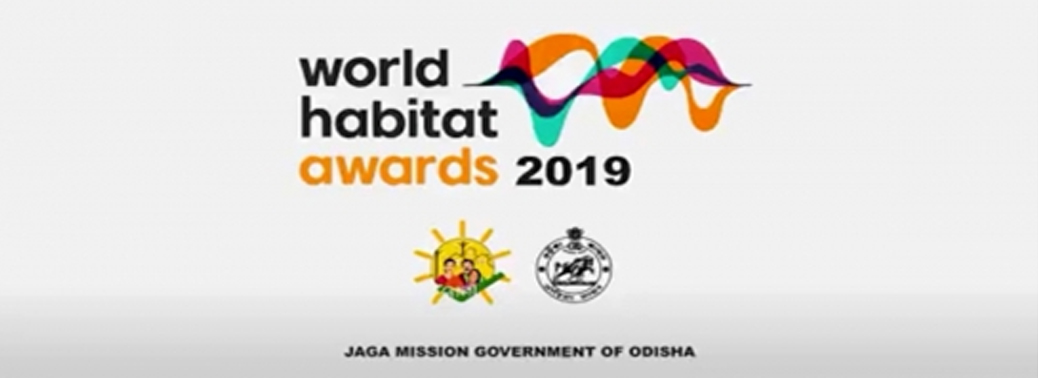
Context:
- The Odisha Government has won the World Habitat Award, a global recognition, for its ambitious initiative, Jaga Mission under which 52,682 urban poor families living in the slums have been granted land rights certificate.
About World Habitat Award:
- This award is given by World Habitat, a UK-based organisation, in partnership with UN-Habitat, every year, in recognition of innovative, outstanding, and revolutionary ideas, projects, and programmes from across the world.
About Jaga Mission:
- Jaga Mission is acclaimed as the World’s largest slum land titling project, benefiting a million urban poor living in the slums, with promises to provide “self-respect and freedom from the perpetual fear of eviction”.
- The Mission is being executed in collaboration with Tata Trusts and Norman Foster Foundation. The State Government had rolled out the project, a first of its kind in the country, to give land titles to slum dwellers.
- So far, 1725 slums have been surveyed under the project using drones and GIS technology. Besides, transformation of 255 slums into liveable habitat is also under implementation.
- Adoption of state-of-art technology combined with extensive community participation has resulted in dispute and litigation-free implementation in a time bound manner.
United Nations Habitat or United Nations Human Settlements Programme:
- It is the United Nations agency for human settlements. It is mandated by the UN General Assembly to promote socially and environmentally sustainable towns and cities with the goal of providing adequate shelter for all.
- It was established in 1978 as an outcome of the first UN Conference on Human Settlements and Sustainable Urban Development (Habitat I) held in Vancouver, Canada, in 1976.
- UN-Habitat is headquartered at the United Nations Office at Nairobi, Kenya.
World Habitat:
- It is an international not-for-profit organisation/foundation established in the United Kingdom.
- It works internationally to help bring the best housing to the people who need it the most.
India Geospatial Excellence Award:
- Recently, the project was also awarded the India Geospatial Excellence Award for technological innovation in transforming lives of urban poor.
- This award is given by GeoSmart India which is an interactive platform that demonstrates the collective and shared vision of the Indian geospatial community and is the most prominent stakeholder event of the Indian geospatial ecosystem.
ARMS (AMENDMENT) BILL, 2019
10, Dec 2019
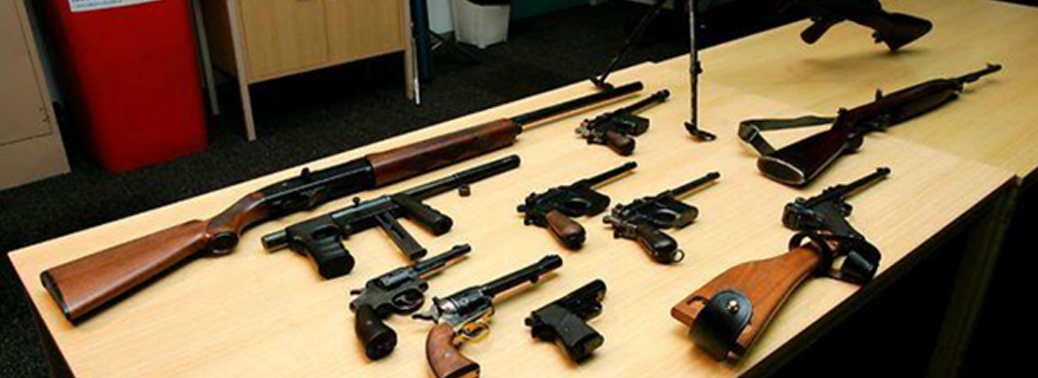
Why in News?
- Lok Sabha passed the Arms (Amendment) Bill, 2019.
Highlights:
- The Bill seeks to enhance the punishment for existing offences like illegal manufacture, sale, transfer, etc.; illegal acquiring, possessing or carrying prohibited arms or prohibited ammunition; and illegal manufacture, sale, transfer, conversion, import, export, etc., of firearms.
- It also proposes to define new offences and prescribes punishment for them, such as taking away firearms from police or armed forces, involvement in organized crime syndicate, illicit trafficking including smuggled firearms of foreign make or prohibited arms and prohibited ammunition, use of firearms in rash and negligent manner in celebratory gunfire endangering human life, etc.
- Further, the Bill seeks to enhance the period of arms license from three years to five years and also to issue arms license in its electronic form to prevent forgery.
- The Amendment assumes significance in recent times as law enforcement agencies have indicated a growing nexus between possession of illegal firearms and commission of criminal offences.
- The trans-border dimensions of illegal arms trafficking are causing threat to internal security and to prevent the usage of illicit firearms so trafficked has also become a prime concern.
- To effectively curb crimes related to or committed by using illegal firearms and to provide effective deterrence against violation of law, there is an urgent need to strengthen the existing legislative framework by making appropriate amendments in the Arms Act, 1959.
- The licenses and arms ownership of sportspersons would not be adversely affected because of the Bill.
- The provisions related to ownership of arms by retired and serving personnel of armed forces also remain unaffected by the Amendment.
History of the Act:
- The original law was brought by the British after the Revolution of 1857, in order to prevent such a rebellion in the future.
- Mahatma Gandhi also connected the issue of arms ownership with the basic rights of Indians and demanded a repeal of the Indian Arms Act, 1878.
- This demand was also included in the eight-point agenda that Mahatma Gandhi presented to Lord Irwin.
CITIZENSHIP AMENDMENT BILL, 2019
10, Dec 2019
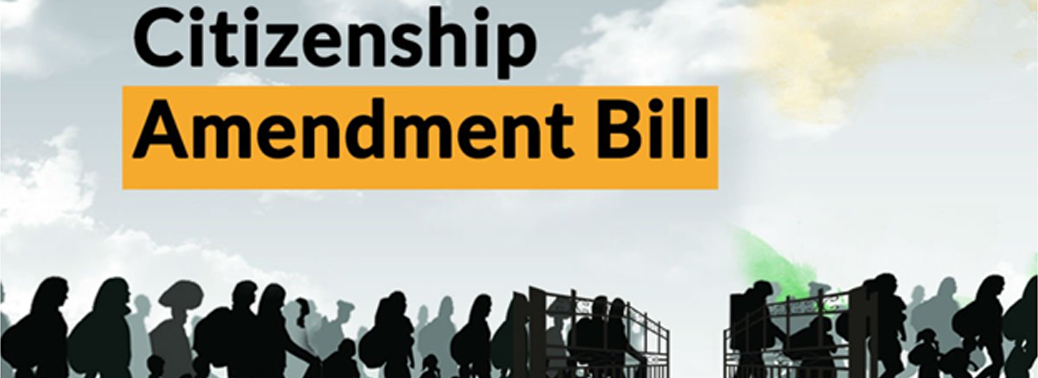
Why in News?
- Citizenship amendment Bill, 2019 (CAB) has been passed in Lok Sabha recently.
About the CAB:
- The Lok Sabha recently passed the Citizenship Amendment Bill (CAB) 2019 that seeks to give citizenship to refugees from the Hindu, Christian, Buddhist, Sikh and Zoroastrian communities fleeing religious persecution from Pakistan, Bangladesh and Afghanistan, who came to India before 31st December, 2014.
- Residential requirement for citizenship through naturalization from the above said countries is at least 5 years. Residential requirement for citizenship through naturalization for others is 11 years.
- The Union Home Minister clarified that the Act is not confined to the State of Assam.
- The Bill will apply to all States and Union Territories of the country.
- The beneficiaries of Citizenship Amendment Bill can reside in any state of the country.

Who are Illegal Immigrants?
- According to the Citizenship Act, 1955, an illegal immigrant is one who enters India without a valid passport or with forged documents, or a person who stays beyond the visa permit.
What is NRC?
- The National Register of Citizens (NRC) is meant to identify a bona fide citizen.
- In other words, by the order of the Supreme Court of India, NRC is being currently updated in Assam to detect Bangladeshi nationals who might have entered the State illegally after the midnight of March 24, 1971.
- The date was decided in the 1985 Assam Accord, which was signed between the then Prime Minister Rajiv Gandhi and the AASU.
- The NRC was first published after the 1951 Census in the independent India when parts of Assam went to the East Pakistan, now Bangladesh.
- The first draft of the updated list was concluded by December 31, 2017.
What is the Concern?
- The essential point of debate in this proposed amendment was that it makes illegal migrants eligible for citizenship on the basis of religion – a move that may violate Article 14 of the Indian Constitution, which guarantees right to equality.
- While Bill is designed to grant citizenship to non-Muslim refugees persecuted in neighbouring countries, NRC does not distinguish migrants on the basis of religion. It will consider deporting anyone who has entered the State illegally post-March 24, 1971, irrespective of their Religion.
RIGHT TO DISSENT – A CORE PRINCIPLE OF DEMOCRACY
07, Dec 2019

Why in News?
- Romila Thapar, an eminent Historian has said that Right to Dissent is a core principle of Democracy.
Meaning of Dissent:
- Dissent means “a strong difference of opinion on a particular subject, especially about an official suggestion or plan or a popular belief”.
- India’s constitutional democracy is predicated on the people’s right to call state power to account.
- Even at Household level also, there is no family without dissent between parents and the children, or between the siblings. A family which learns to deal with dissent rather than authoritatively dismissing it is a more harmonious family.
Why Right to Dissent is Needed?
- The Right to Dissent is an important addition of expressing one’s view, and on many of its most important constituent elements.
- It will enable practitioners and citizens to claim their rights and participate more effectively in the project of democracy.
- Disagreeing with each other is a fundamental human trait. There is not a single individual who does not disagree with something or the other all the Time.
Dissent – Safety Valve of Democracy:
- Recently, while hearing a petition on the ban of protest on the Jantar Mantar in New Delhi, the SC held that Right to peaceful protest is the fundamental right guaranteed under the constitution.
- The constitution under Article 19(1)(a) provides for freedom of speech and expression and also under Article 19(2) provides for reasonable restrictions on such freedom.
- This particular right is also subject to reasonable restrictions in the interest of sovereignty and integrity of India, as well as public order.
- A distinguishing feature of any democracy is the space offered for legitimate dissent, which cannot be trampled by any executive action.
- Thus, the Court recognises that legitimate dissent is a distinguishable feature of any democracy.
- Also observed that, every individual or a group of individuals, whether they are minority or poor or marginalised, have the right to express their dissent to the government policies and fight their social circumstances.
Right to Dissent in Global Level:
- Dissent involves the exercise of individual and collective rights of expression, association, assembly, and participation in public affairs.
- These freedoms encompass rights to receive and impart information, inspire debate, and influence decision-making about issues of public concern.
- Article 7 of the Declaration on Human Rights Defenders explicitly recognises that ‘Everyone has the right, individually and in association with others, to develop and discuss new human rights ideas and principles and to advocate their acceptance’.
- Despite legal duties imposed on States to respect, protect and fulfil the rights to dissent and protest, these rights are routinely misunderstood and increasingly violated, with dissenters facing dire consequences including Arrest, Imprisonment, Displacement, Disappearance, and Death.
Ethical Concern of Dissent:
- The importance of dissent is not just that it is good for democracy. There is also a fundamental ethical principle involved in dissent
- Any society which allows dissent is acting ethically.
- The first ethical principle is related to non-violence, a principle which is so integral to the unique Indian practices of dissent from ancient times to Gandhi and Ambedkar.
- The second ethical principle is that the worse off in a society have a greater right to dissent and protest even when the more privileged may not agree or sympathize with that dissent.
- Social dissent is a necessary voice for all those who are oppressed and are marginalised for various reasons. This is the only thing they have in a world which has denied them the basic dignity of a social life.
- Buddha and Mahavira were dissenters first and philosophers next. Ramayana and Mahabharata are filled with stories of dissent.
- Dissent is not just about criticism; it is also about showing new perspectives.
Dissent in Democratic Society:
- The course of democracy anywhere in the world is defined by events that test the resilience of democracy and also add to it.
- Indeed, dissent is the quintessential part of democracy and allows people to have their opinions and to voice those without fear of intimidation.
- ‘Freedom of expression, freedom of association and the right to peaceful assembly are often compartmentalized and discussed individually, with little regard to their interdependence.
- This unique guide of Protests provides activists, human rights defenders, jurists, NGOs, corporate actors, and government authorities with the tools and knowledge necessary to ensure rights, protect the lives and liberty of dissenters, enable meaningful participation in public life, and promote the rule of law.
- The philosophy of dissent and democracy has also inspired our freedom movement and defines India’s constitutional democracy, which is predicated on the people’s right to call state power to account, albeit within the constitutional framework.
- Thus, when we hear the voices of dissent from the oppressed and the marginalised, it is ethically incumbent upon those who are better off than them to give them greater space and greater freedom to dissent.
FIFTH NITI AAYOG–DRC DIALOGUE
29, Nov 2019

Why in News?
- The Fifth Dialogue of NITI Aayog and Development Research Centre (DRC), of the State Council, People’s Republic of China, was held in Wuhan, China.
Highlights:
- This is the first ministerial Dialogue between China and India since the informal meeting between Chinese President Xi Jinping and Indian Prime Minister Narendra Modi in Chennai.
- Based on the agreement at the Fourth Dialogue in Mumbai 2018, DRC and NITI Aayog had undertaken joint research in the areas of WTO reform and urbanization, whose preliminary findings were presented at the Fifth Dialogue as a key deliverable.
- The Sixth Dialogue will be convened in India in the second half of November 2020.
- There were sessions on the global economy, globalisation and macroeconomic policies in China and India, innovation and development, and potential for Sino-India trade and economic cooperation.Both sides affirmed their commitment to build a more inclusive global economic architecture and implement fair and reasonable trade rules, taking into account the need for safeguarding the interests of developing and less-developed nations.
- To advance high-quality development, the two sides decided to strengthen knowledge sharing and mutual learning in high-tech, digital economy, fiscal policy and jointly address the challenges arising from the environment, income gaps, etc.
- Emphasis was laid on promoting sustainable urbanization, development of Smart Cities, infrastructure and green transportation.
- Both sides also agreed to explore synergies in tourism; health sector; culture, language and people-to-people exchanges; and learn from respective best practices and create favourable conditions for facilitating ease-of-doing business by giving impetus to outbound and inbound investments.
TRANSGENDER PERSONS (PROTECTION OF RIGHTS) BILL
27, Nov 2019

Why in News?
- Rajya Sabha approved Transgender Persons (Protection of Rights) Bill, 2019.
About:
Transgender Person:
- The Bill defines a transgender person as one whose gender does not match the gender assigned at birth.
- It includes trans-men and trans-women, persons with intersex variations, gender-queers, and persons with socio-cultural identities, such as kinnar and hijra.
- Intersex variations are defined to mean a person who at birth shows variation in his or her primary sexual characteristics, external genitalia, chromosomes, or hormones from the normative standard of male or female body.
Prohibition Against Discrimination
- The Bill prohibits the discrimination against a transgender person, including denial of service or unfair treatment in relation to:
- Education
- Employment
- Healthcare
- Access to, or enjoyment of goods, facilities, opportunities available to the public;
- Right to Movement
- Right to reside, Rent, or otherwise occupy property
- Opportunity to hold public or private office and
- Access to a government or private establishment in whose care or custody a Transgender Person is
Right of Residence:
- Every transgender person shall have a right to reside and be included in his household.
- If the immediate family is unable to care for the transgender person, the person may be placed in a rehabilitation centre, on the orders of a competent court.
Employment:
- No government or private entity can discriminate against a transgender person in employment matters, including recruitment, and promotion.
- Every establishment is required to designate a person to be a complaint officer to deal with complaints in relation to the Act.
Education:
- Educational institutions funded or recognized by the relevant government shall provide inclusive education, sports and recreational facilities for transgender persons, without discrimination.
Health Care:
- The government must take steps to provide health facilities to transgender persons including separate HIV surveillance centers, and sex reassignment surgeries.
- The government shall review medical curriculum to address health issues of transgender persons, and provide comprehensive medical insurance schemes for them.
Transgender Person ID:
- A transgender person may make an application to the District Magistrate for a certificate of identity, indicating the gender as ‘transgender’.
- A revised certificate may be obtained only if the individual undergoes surgery to change their gender either as a male or a female.
Welfare Measures:
- The Bill states that the relevant government will take measures to ensure the full inclusion and participation of transgender persons in society.It must also take steps for their rescue and rehabilitation, vocational training and self-employment, create schemes that are transgender sensitive, and promote their participation in cultural activities.
Offences and Penalties:
- The Bill recognizes the following offences against transgender persons:
- Forced or bonded labour (excluding compulsory government service for public purposes),
- Denial of use of public places,
- Removal from household, and village.
- Physical, sexual, verbal, emotional or economic abuse. Penalties for these offences vary between six months and two years, and a fine.
National Council for Transgender persons (NCT)
It consists of:
- Union Minister for Social Justice (Chairperson)
- Minister of State for Social Justice (Vice- Chairperson)
- Secretary of the Ministry of Social Justice
- one representative from ministries including Health, Home Affairs, and Human Resources Development.
- Other members include representatives of the NITI Aayog, and the National Human Rights Commission.
- State governments will also be represented.
- The Council will also consist of five members from the transgender community and five experts from non-governmental organisations.
- The Council will advise the central government as well as monitor the impact of policies, legislation and projects with respect to transgender persons. It will also redress the grievances of transgender persons.
MAHADAYI RIVER DISPUTE
23, Nov 2019
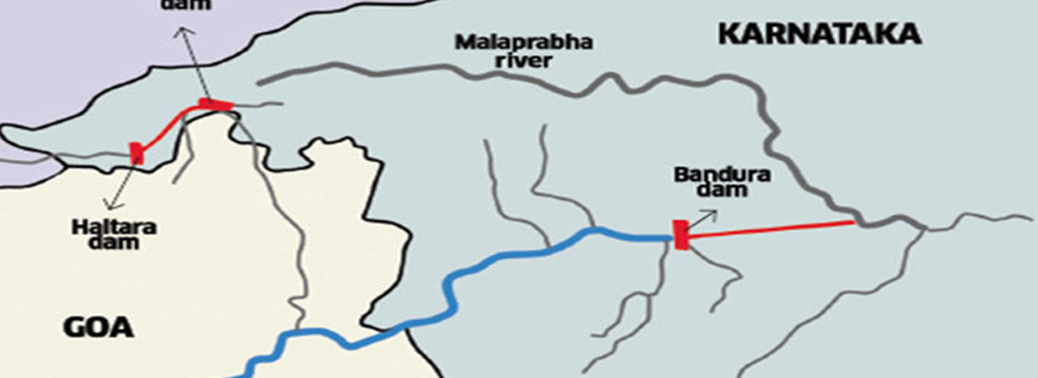
Why in news?
- The dispute over Mahadayi river has resurfaced over the past few weeks and tensions have been rife between Goa and Karnataka.
About:
- The dispute over Mahadayi river starts in the 80s and grew stronger in the subsequent decades.
- Karnataka move to design a number of dams, canals and barrages to route the Mahadayi river water to the Malaprabha basin.
- The state claimed that channeling the river water into the Malaprabha basin, a tributary of the Krishna, would meet the requirements of water-scarce districts of baalkot, Gadag, Dharwad and Belagavi.
- An inter-state water disputes tribunal has allotted 13.42 thousand million cubic feet of water (TMC) to Karnataka and 1.33 TMC to Maharashtra. Both Karnataka and Goa have contested the order and the matter is now pending in apex court.
Kalasa-Banduri Nala Project:
- The Kalasa-Banduri Nala is a project undertaken by the Government of Karnataka to improve drinking water supply to the Districts of Belagavi, Dharwad and Gadag. It involves building across Kalasa and Banduri, two tributaries of the Mahadayi river to divert 7.56 TMC of water to the Malaprabha river, which supplies the drinking water needs of the said 3 districts, i.e., Dharwad, Belagavi and Gadag. This project had been on paper for decades and the Karnataka government decided to implement it during S M Krishna’s regime.
Inter-State River Water Disputes:
- Water is in State subject as per entry 17 of State List.The entry 17 of state list deals with water and entry 56 of Union List gives power to the union Government for the regulation and development of inter-state river and river valleys.
Other active River Water Tribunals in India:
- Krishna Water Disputes Tribunal II (2004) – Karnataka, Telangana,Andra Pradesh, Maharashtra
- Mahanadi Water Disputes Tribunal (2018) – Odisha&Chhattisgarh
- Mahadayi Water Disputes Tribunal (2010)- Goa,Karnataka, Maharashtra
- Ravi& Beas Water Tribunal (1986)- Punjab, Haryana,Rajasthan
- Vansdhara Water Disputes Tribunal (2010)- Andra Pradesh & Odisha.
BONDED LABOUR SYSTEM IN INDIA
11, Nov 2019
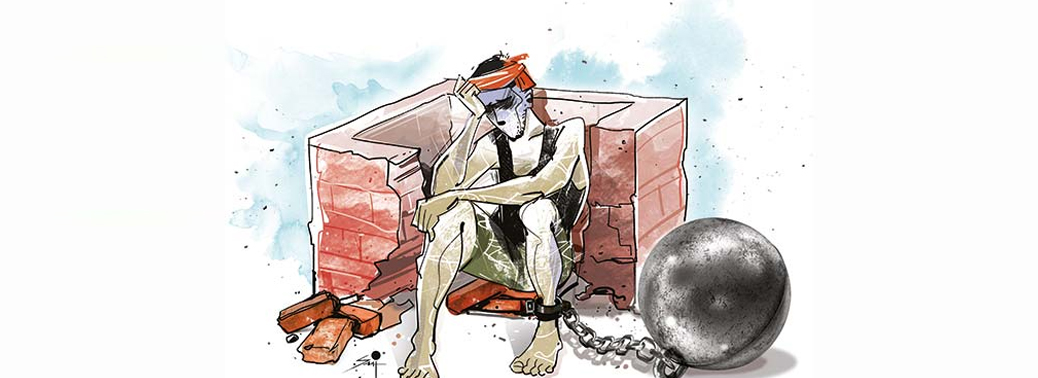
Why in News?
- The National Human Rights Commission (NHRC) has conducted a seminar on “bonded labour” recently.
About Bonded Labour:
- It is a practice in which employers give high-interest loans to workers who work at low wages to pay off the debt.
- The Supreme Court of India has interpreted bonded labour as the payment of wages that are below the prevailing market wages and legal minimum wages.
- The Constitution of India prohibits forced labour under Article 23 (Fundamental Rights on Prohibition of traffic in human beings and forced labour).
- Bonded labour was historically associated with rural economies where peasants from economically disadvantaged communities were bound to work for the landlords.
- Bonded labour is found to exist in both rural and urban pockets in unorganized industries such as brick kilns, stone quarries, coal mining, agricultural labour, domestic servitude, circus, and sexual slavery.
- According to International Labour Organization (ILO) there are 1.17 crores bonded labourers in India (2014).
Reasons for the Persistence of Bonded Labour:
- The lack of awareness among workers and employers
- Low conviction rates
- Social bias towards bonded labour
- Migratory nature of bonded labour
- Weaker implementation of Bonded Labour System (Abolition) Act 1976.
Bonded Labour System (Abolition) Act 1976:
- The Act extends to the whole of India but implemented by respective State Governments.
- It provides for an institutional mechanism at the district level in the form of Vigilance Committees.
- Vigilance committees advise District Magistrate (DM) to ensure the provisions of this act are properly implemented.
- The State Governments/UTs may confer, on an Executive Magistrate, the powers of a Judicial Magistrate of the first class or second class for the trial of offences under this Act.
- Under the Central Sector Scheme for Rehabilitation of Bonded Labourers (2016) financial assistance to the extent of Rs. Three lakh is provided to the released bonded labourers along with other non-cash assistance for their livelihood.
MAHARASHTRA TOPS IN JUSTICE DELIVERY
08, Nov 2019

Why in News?
- According to the India Justice Report 2019, Maharashtra has topped the list in the overall first-ever ranking of Indian States on justice delivery.
About:
- The India Justice Report 2019, commissioned by Tata Trusts, was prepared by groups like Centre for Social Justice, Common Cause, Commonwealth Human Rights Initiative, DAKSH, Tata Institute of Social Sciences – Prayas and Vidhi Centre for Legal Policy.
- The report has been prepared based on publicly available data of different government entities on the four pillars of justice delivery — police, judiciary, prisons and legal aid.
- Maharashtra has topped the list of 18 large-medium States in the overall first-ever ranking of Indian States on justice delivery, followed by Kerala, Tamil Nadu, Punjab and Haryana.
- In this category, Jharkhand, Bihar and Uttar Pradesh are at the bottom, while among the list of seven smaller States, Goa leads the group.
Highlights of the Report:
- The report highlights the fact that even the best performing States scored less than 60% in their performance on capacity across the police, judiciary, prisons and legal aid.
- The country has about 18,200 judges with about 23% sanctioned posts vacant, notes the report, adding that women are poorly represented in these pillars, constituting just 7% of the police.
- Prisons are over-occupied at 114%, where 68% are under trials awaiting investigation, inquiry or trial.
- Regarding budgets, most States are not able to fully utilise the funds given to them by the Centre, while the increase in spending on the police, prisons and judiciary does not keep pace with the overall increase in State expenditure, the report said.
Policing:
- The study took several factors to assess the police system in the states, ranging from modernisation, inducing women, diversity, budgeting, human resource planning and infrastructure.
- On this front, the best score was achieved by Tamil Nadu – 6.49. UP received a score of 2.98, whereas Bihar got 3.77. UP fared poor in terms of budgeting, spending on police per person, vacancies and diversity.
Prisons:
- This parameter was assessed on various factors ranging from overcrowding, inclusion of women staff, adequate human resources, budgeting, infrastructure, etc.
- Jharkhand fared the worst with a score of 3.46. It was followed by Uttarakhand (3.72), Punjab (4.35), Andhra Pradesh (4.35) and UP (4.42). Surprisingly, Bihar stood at number six with a score of 5.61. The best in this regard was Kerala with a score of 7.18.
Judiciary:
- This parameter was assessed on availability of judges, clearance of cases, spending on judiciary, etc.
- Bihar, with a score of 2.41, fared the worst in this regard. It was followed by UP (3.7), Karnataka (3.76), Uttarakhand (4.17) and Jharkhand (4.3). Tamil Nadu again featured on the top in terms of judiciary with a score of 6.99. It was followed by Punjab (6.57), Haryana (6.23) and Maharashtra (5.96).
- On an average, Bihar saw a bleak growth in expenditure on judiciary in comparison to total spending. From 2011 to 2016, the state expenditure rose by 17.8 per cent; however, expenditure on judiciary rose by only 8 per cent.
Legal Aid:
- The report also highlighted the importance of legal aid.
- It said that almost 80 per cent of India’s 1.25-billion populations are eligible for free legal aid, but only 15 million people have availed it since 1995.

GUJARAT CONTROL OF TERRORISM AND ORGANISED CRIME (GCTOC) BILL
08, Nov 2019

Why in News?
- Our honourable President Ram Nath Kovind has given his assent to the ‘Gujarat Control of Terrorism and Organised Crime (GCTOC) Bill’, a controversial anti-terror legislation which was passed by Gujarat assembly in 2015.
Key Provisions of the Bill:
- It defines ‘terrorist acts’, as including “an act committed with the intention to disturb law and order or public order or threaten the unity, integrity and security of the State”, apart from economic offences.
- Inclusion of Economic offences: The economic offences under GCTOC include Ponzi schemes, multi-level marketing schemes, and organised betting. It also includes extortion, land grabbing, contract killings, cybercrimes, and human trafficking.
- Special Courts: It also provides for the creation of a special court as well as the appointment of special public prosecutors.
- Attachment of Properties: It provides for attachment of properties acquired through organised crimes. Transfer of properties can also be cancelled.
Provisions of the Bill considered to be Controversial:
- The legislation makes offences under this Act as Non-Bailable.
- The Bill provides for admissibility of evidence collected through interception of mobile calls of an accused or through confessions made before an investigating officer, in a court of law.
- The bill empowers police to tap telephonic conversations and submit them in court as evidence.
- The act also provides for making confessions before police officers admissible in court.
- The Bill provides immunity to the State government from legal action.
- It extends period of probe from stipulated 90 days to 180 days before filing of charge sheet.
Background:
- The Bill was earlier named as the Gujarat Control of Organised Crime Bill.
- It failed to get the presidential nod thrice since 2004.
- So, GCTOC has finally become law after Sixteen years of first version of it was passed by the Gujarat Assembly.
WOMEN, PEACE AND DEMOCRACY
02, Nov 2019
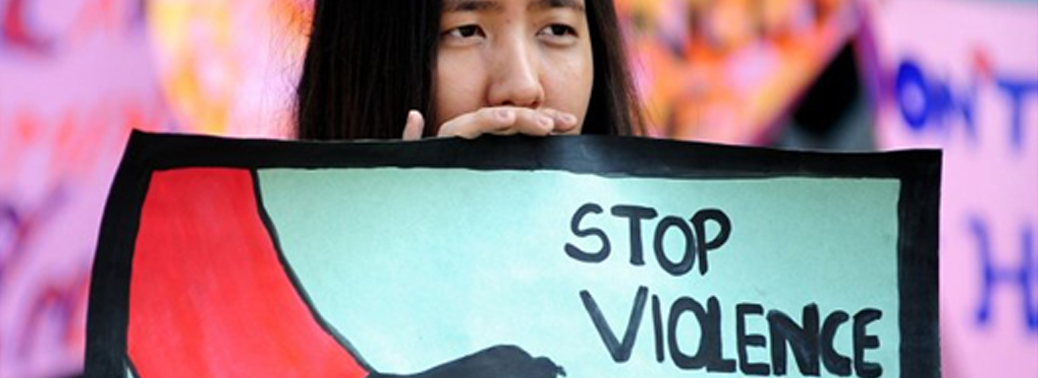
Context:
- 19 years after UN Resolution 1325, WPS Index estimates the gender discourse is reaching beyond traditional conflicts to embrace militarisation & Communal Hostilities.
About UN Resolution 1325
- UNSCR 1325 is a landmark international legal framework that addresses the inordinate impact of war on women + the pivotal role women play in conflict management + sustainable peace.
- The experiences of men & women in war are different. Women offer a vital perspective in the analysis of conflict.
- Resolution 1325 has 4 pillars – Participation, Protection, Prevention, and Relief and Recovery.It is implemented through the development of National Action Plans (NAP) or other national level strategies.
Women, Peace and Security (WPS) Index:
- The WPS Index is prepared by Georgetown University’s Institute for Women, Peace and Security, and the Peace Research Institute of Oslo.
- It was first published in 2017 and it operationalises the main values of the WPS resolutions to measure how women fare across three dimensions of peace and security: inclusion, justice and security. The 2019 update finds that while individually, countries lag far behind on most measures, “the world seems to be moving in the right direction”.
- Representation in government is one measure of inclusion, and the index finds that across legislatures worldwide only 21.5% are women, so that it will take 52 years to approach parity. The WPS Index reports that in 2018, 379 million women experienced intimate partner violence in which this number exceeds the population of the US.
Statistics of India in WPS Index:
- India which ranks 133 out of 167 is ahead of Bangladesh, Myanmar and Pakistan.
- Kerala, Mizoram, Tamil Nadu and Karnataka top the table while J&K, Tripura, Rajasthan and Manipur bring up the tail end.
- It is anomalous between the two ends—if Mizoram women are reaping the peace dividend (economic benefit of a decrease in defence spending), the experience of Rajasthani women illustrates how patriarchal cultures undermine it.
Interesting Facts of Jammu & Kashmir:
- Women attend school for 5.44 years on average. 60.30% of women have bank accounts; 29% do paid work outside the home and 54.20% have cell phones.
- Men tend to die, be wounded or disappeared disproportionately more, so women become heads of households.J&K women are about 0.1% of the Indian Parliament but 84% of them report that they participate in household decisions.
- Girls outnumber boys at birth, 9.4% of them experience intimate partner violence and they live with an organised violence (“total number of battle deaths from state-based, non-state, and one-sided conflicts per 100,000”) score of 175.93.
- Several civil society fact-finding teams have travelled to Kashmir since the announcement of bifurcation of J&K into Jammu and Kashmir and Ladakh.
- They state that men and boys are more likely to be shot, tortured, or questioned; women are then left to cope. After that they live with the constant threat (or reality) of sexual violence as an act of control by all conflict parties including the side where they belong, and lack of access to essential services (like emergency care) affect women whose mobility is severely impaired.
What does NCRB says about Gender based Violence?
- The latest NCRB report shows that at least seven states have registered a below-10% conviction rate for crimes against women.
- Odisha, with a 7.4% conviction rate, cuts a sorry figure, though there are some bigger states like West Bengal, Karnataka and Gujarat that fare worse.
- But the eastern state has something to worry about. Of the 2,082 victims of rape, at least 62% are girls below 18 years of age. As the incidence of rape continues to show an upward trend, rising sexual assault against minors is a disturbing trend.
- However, recent survey on the status of policing in the country showed that close to 40% of police personnel who were part of the study believed gender-based violence complaints are false and motivated.Interestingly, over 40% admitted to having received gender-sensitisation training in the last two to three years, which apparently is having no impact.
- Now, it is important to talk about gender sensitisation of the police, which must be accorded priority as it has a huge bearing on tackling crimes against women.
ELECTORAL BONDS
02, Nov 2019

Why in News?
- Association for Democratic Reform has recently stated that electoral bonds worth Rs.232 crore was sold since past October.
About Electoral Bonds:
- An electoral bond is designed to be a bearer instrument like a Promissory Note — in effect, it will be similar to a bank note that is payable to the bearer on demand and free of interest.
- It can be purchased by any citizen of India or a body incorporated in India.
- The electoral bonds will not bear the name of the donor. In essence, the donor and the party details will be available with the bank, but the political party might not be aware of who the donor is.The intention is to ensure that all the donations made to a party will be accounted for in the balance sheets without exposing the donor details to the public.
Eligibility of a Political Party:
- Every party that is registered under section 29A of the Representation of the Peoples Act, 1951 (43 of 1951) and has secured at least one per cent of the votes polled in the most recent Lok Sabha or State election has been allotted a verified account by the Election Commission of India. Electoral bond transactions can be made only via this account.
Other facts regarding Electoral Bonds:
- The bonds have been issued in multiples of Rs.1,000, Rs.10,000, Rs.1 lakh, Rs.10 lakh and Rs.1 crore and have been available at specified branches of State Bank of India.
- They can be bought by the donor with a KYC-compliant account. Donors can donate the bonds to their party of choice which can then be cashed in via the party’s verified account within 15 days.
- The bonds will be available for purchase for a period of 10 days each in the beginning of every quarter, i.e. in January, April, July and October as specified by the Central Government.
- An additional period of 30 days shall be specified by the Central Government in the year of Lok Sabha elections.
- Donations will be tax deductible, and the benefitting political party will get a tax exemption for the amount received.
Do private companies are eligible for Electoral Bonds?
- Prior to 2017, as per Section 182 of the Companies Act, 2013, a company can donate only up to 7.5% of its average profit of the last three years, and must disclose this amount and the beneficiary political party.
- Now, through the electoral bonds, there is no limit to the amount companies can donate, and the requirement for such firms to have existed for the last three years on a profit-making basis has also been deleted.
Whether foreign companies are eligible for Electoral Bonds?
- The amended Companies Act now allows any foreign company registered in India to make contributions through bonds to political parties, subject to legitimate doubts about who or where its real owners are, or what its source of funding is.
About ADR:
- The Association for Democratic Reforms (ADR) is an Indian non-partisan, non-governmental organization which works in the area of electoral and political reforms.
- Along with National Election Watch (NEW), ADR is striving to bring transparency and accountability in Indian politics and reducing the influence of money and muscle power in elections.
- In the last few years, based on ADR’s report and data, a huge number of coverage was received in print and online media.
PULSE POLIO PROGRAMME
23, Oct 2019

Why in News?
- 25 years of Pulse Polio Programme to be celebrated in October 2019.
Pulse Polio Programme:
- The Pulse Polio Campaign was first started in 1994 in Delhi after the success of the first large-scale supplementary immunization campaign with OPV (oral polio vaccine).
- The campaign was inaugurated with the tagline ‘Do Boond Zindagi Ki’.
- The campaign in Delhi reached nearly one million children up to the age of three years with two doses of OPV being administered on 02 October and 04 December through exclusive booth-based strategy.
- This strategy was later adopted and implemented by the Government of India all over the country as Pulse Polio Campaigns.
- India’s attainment of polio-free status in 2014 was coined by the World Health Organization as “one of the most significant achievements in public health,” and marked not just India but the entire South East Asia Region being declared polio-free.
- The last case of polio in the country was in 2011.
- The global initiative of eradicating polio was started by the WHO in 1988.
- Around 17.4 crore children of less than five years across the country are given polio drops as part of the drive of the Government of India to sustain polio eradication from the country.
- The Pulse Polio Initiative was started with an objective of achieving a hundred per cent coverage under Oral Polio Vaccine.
- It aimed to immunize children through improved social mobilization, plan mop-up operations in areas where poliovirus has almost disappeared and maintain a high level of morale among the public.
CENTRE ALL SET TO REVAMP BRITISH ERA INDIAN PENAL CODE
22, Oct 2019

Why in News?
- The Home Ministry is all set to overhaul the Indian Penal Code designed by the British. Rebooting the code introduced by the British in 1860 was necessary as it is primarily based on the spirit of “master and servant”.
Efforts taken by the Government:
- Home Ministry has written to all States and Union Territories seeking suggestions to amend various sections of the IPC.
- The ministry has also set up two committees comprising legal luminaries to look into the issue.
About IPC:
- The Indian Penal Code (IPC) is the official criminal code of India. It is a comprehensive code intended to cover all substantive aspects of criminal law.
- The code was drafted in 1860 on the recommendations of first law commission of India established in 1834 under the Charter Act of 1833 under the Chairmanship of Lord Thomas Babington Macaulay.
- The IPC replaced Mohammedan Criminal Law, which had a very close relationship with Islam. Thus, the IPC laid the foundation of secularism.
- It came into force in British India during the early British Raj period in 1862. However, it did not apply automatically in the Princely states, which had their own courts and legal systems until the 1940s.
- The Code has since been amended several times and is now supplemented by other criminal provisions.
How significant it is?
- Today, it is the longest serving criminal code in the common-law world.
- Today, most of the commonwealth follows the IPC and legislators would find it difficult to improve it in terms of precision, comprehensibility, comprehensiveness and accessibility.
Why it Needs a Review?
- Since it has been introduced in the year of 1860, that is almost 150 years back, it has failed to keep pace since then.
- Macaulay had himself favoured regular revision of the code whenever gaps or ambiguities were found or experienced.
- No comprehensive revision of IPC has been undertaken, even though the IPC has been haphazardly amended more than 75 times.
- Most of the amendments have been ad hoc and reactive, in response to immediate circumstances like the 2013 amendment after the Delhi gangrape case.
- The 42nd report of the law commission in 1971 has also recommended for a complete revisit of the IPC.
Areas that Need Reforms:
- Some of the concepts underlying the code are either problematic or have become obsolete.
- Sedition law (Section 124A): A re-examination of the sedition law, inserted in 1898, is necessary.
- Blasphemy law: The offence of blasphemy should have no place in a liberal democracy and, therefore, there is a need to repeal Section 295A, which was inserted in 1927.
- Culpable Homicide: The distinction between “culpable homicide” and “murder” was criticised even by Stephen as the “weakest part of the code”, as the definitions are obscure.
- Sec 497 (Adultery): Sexual offences under the code reveal patriarchal values and Victorian morality.
- Though the outmoded crime of adultery gives the husband sole proprietary rights over his wife’s sexuality, it gives no legal protection to secure similar monopoly over the husband’s sexuality.
- Section 377(Homosexuality): The section has been in news as voices being raised against its being in violation of human rights, harassment and violence against LGBT community. The LGBT community and a part of society wants this section to be repealed. The issue has been sub-judice several times.
ANNUAL CRIME IN INDIA REPORT 2017
22, Oct 2019
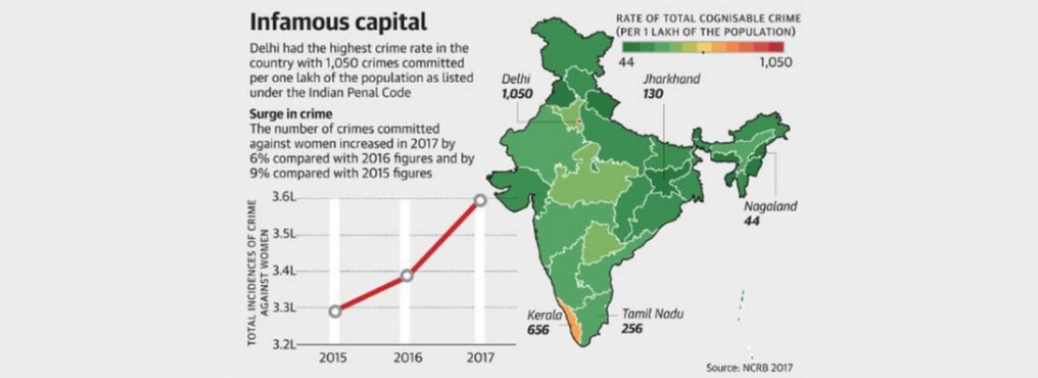
Why in News?
- After a delay of two years the annual Crime in India Report 2017 was published by the National Crime Records Bureau (NCRB) on Monday.
Key Highlights of the report:
- As per the report, in the cases regarding crime against women, Uttar Pradesh topped the list, which is followed by Maharashtra and West Bengal with second and third places respectively.
- Majority of cases under crimes against women were registered under:
- Cruelty by Husband or his Relatives
- Assault on Women with Intent to Outrage her Modesty
- Kidnapping & Abduction of Women and Rape
- Among the Incidents of rioting, the maximum incidents were reported from Bihar, followed by Uttar Pradesh and then by Maharashtra.
- The incidents registered under the Scheduled Caste Prevention of Atrocities Act saw an increase while incidents of crime related to Scheduled Tribes dipped.
- The cases of kidnapping and abduction registered during 2017, shows an increase.
- The NCRB for the first time collected data on circulation of “False/Fake News and Rumours.”
About National Crime Records Bureau (NCRB)
- NCRB is nodal agency under Union Home Ministry for authentic source of data on crime on various parameters including accidents, suicides from across all the states of the country and prisons for policy matters and research.
- It was established in 1986 as the central police organisation.
- It is headquartered in New Delhi.
- It is implementing and monitoring agency of Crime & Criminal Tracking Network System (CCTNS), a Mission Mode Project under the National e-Governance Plan of Government.
- It also imparts training in Information Technology (IT) and Finger Print Science for Indian Police Officers as well Foreign Police officers.
- NCRB publishes 4 annual publications on Crime, Prison Statistics, Accidental Deaths & Suicides and Finger Prints. These publications serve as principal reference points on crime statistics.

DNA REGULATION BILL REFERRED TO HOUSE PANEL
21, Oct 2019

Why in News?
- The Bill seeks to control the use and application of the deoxyribonucleic acid (DNA) technology for establishing the identity of certain categories of persons, including offenders, victims, suspects and under-trials.
- The DNA Technology (Use and Application) Bill of 2019 was introduced in and passed by the Lok Sabha in January this year, but lapsed before it could be taken up by the Rajya Sabha. It was reintroduced in July 2019 and is now pending in the Lok Sabha. It has been referred to a parliamentary standing committee for examination.
Importance of the Bill:
- The Bill seeks to regulate use and application of DNA technology for the purposes of only establishing identity of certain categories of persons, including victims, offenders, suspects, under trials, missing persons and unknown deceased persons and related matters.
- The Bill’s Statement of Objects and Reasons explains that DNA technology has the potential of wide application in the justice delivery systems – both criminal and civil.
- In criminal cases, it helps in investigation of crimes through biological evidence, including semen evidence in rape cases, blood evidence in murder cases, saliva evidence in identification of source of anonymous threat letters etc. In civil cases, it helps in investigation relating to victims of disasters like cyclone, air crash etc.
Concerns:
- Regulation is also required to check misuse or improper use of DNA analysis which can harm individuals or society.
- It seeks to regulate laboratories for DNA testing and analysis by providing for their accreditation, establish national and regional DNA Data Banks to store and maintain DNA profiles and a DNA Regulatory Board for their governance.
APPOINTMENT OF CHIEF JUSTICE
20, Oct 2019
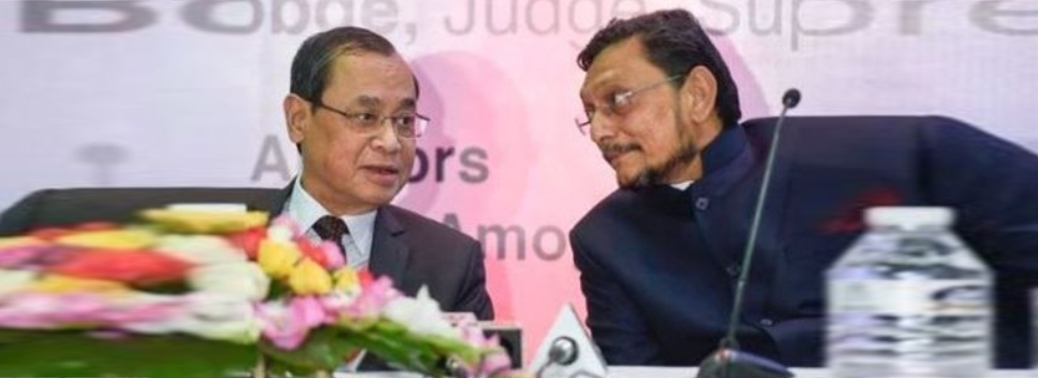
Why in News?
- Chief Justice of India Ranjan Gogoi Thursday in a letter to Union Law Minister Ravi Shankar Prasad recommended Justice Sharad Arvind Bobde as his successor. Justice Bobde will have a tenure of one year and five months as CJI till April 23, 2021.
Constitutional Provision Regarding Appointment:
- The Constitution of India includes no details about how the Chief Justice of India is to be appointed.
- Article 124(1) says that there “shall be a Supreme Court of India consisting of a Chief Justice of India” , but is silent on the criteria or procedure for appointing a CJI.
- The only provision in the Constitution which mentions anything about the appointment of a CJI is Article 126 — which deals with the appointment of an acting CJI.
- In the absence of any Constitutional provision or statute, we have to look to convention and custom to determine who will be the next CJI.
Convention:
- When the current/incumbent CJI retires (all Supreme Court judges retire at the age of 65) the senior-most judge of the apex court among those remaining becomes the CJI.
- This is not a question of age, but depends on when a judge was appointed to serve on the Supreme Court. The longer a judge has been part of the Supreme Court, the more senior he or she is.
Procedure in case of same Appointment Date:
- Which judge was sworn in first — which was used to determine who would be CJI
- Which judge has had more years of high court service; or
- If one of the judges was nominated from the Bar directly (like Justices Rohinton Nariman or Indu Malhotra), while the other(s) have previously served as a high court judge, the person with experience as a judge will be given preference.
Procedure for Appointment:
- The seniority convention tells us who should become the next CJI, but how this is to be done is laid out in the Memorandum of Procedure (MOP) between the government and judiciary.
- Ministry of Law & Justice will seek the recommendation of the outgoing CJI as to who should be the next CJI.
- The CJI should recommend the “senior-most judge of the Supreme Court considered fit to hold the office”. However, if there are any doubts as to the fitness of the senior-most judge as per convention, the CJI needs to consult the Collegium to decide if a different judge needs to be recommended.
- After receipt of the CJI’s recommendation, the law minister will forward the recommendation to the prime minister, who then advises the President as to this recommendation.
- The President administers the oath of office for the new CJI.
LEGISLATIVE COUNCIL ABOLISHED IN J&K
18, Oct 2019
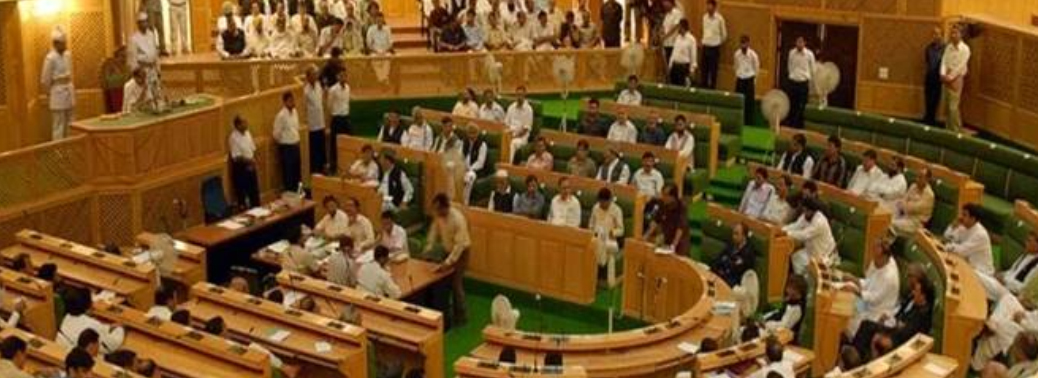
Why in News?
- Jammu & Kashmir Legislative Council, the upper house of the Assembly, has been abolished as per Section 57 of the J&K Reorganisation Bill, 2019, which reduced the State to the Union Territories of J&K and Ladakh.
About Legislative Council of J&K:
- The Council in J&K consists of 36 members, most of them were elected in an indirect manner and some of them were nominated by the Governor. This council also used to be a part of the electoral college for the Rajya Sabha elections.
- J & K council was created as per the J & K constitution and Part VI of Indian constitution was not applicable to Jammu & Kashmir.
- The first Legislature was established by the government of the then-Maharaja of Kashmir, Hari Singh, in 1934.
- In 1957, a new constitution was adopted by the constituent assembly and the Parliament of India passed the Legislative Councils Act.
- These two pieces of legislation created a bicameral legislature for Jammu and Kashmir.
Background:
- Revoking Art. 370
1.The government of India revoked Article 370 and the special status of Kashmir.
2.Now Jammu & Kashmir will be a Union Territory with a legislature while Ladakh will be a Union Territory without legislature.
3.Special features like a separate constitution, separate flag, and separate status will no more have effect after repealing Article 370.
- Article 35A scrapped
1.With the removal of Article 370, Article 35A will be also scrapped.
2.Now, people from other states may also buy or purchase land and settle there.
- Bifurcation of Jammu and Kashmir
1.Jammu and Kashmir will be “reorganized” and will no longer be a state.
2.Ladakh will be a Union Territory without an assembly and Jammu and Kashmir will be a Union Territory with an assembly, under recommendation.
3.There will be two Lieutenant Governors when this provision will come into the Force.
13TH CONFERENCE OF CENTRAL COUNCIL OF HEALTH AND FAMILY WELFARE (CCHFW)
12, Oct 2019
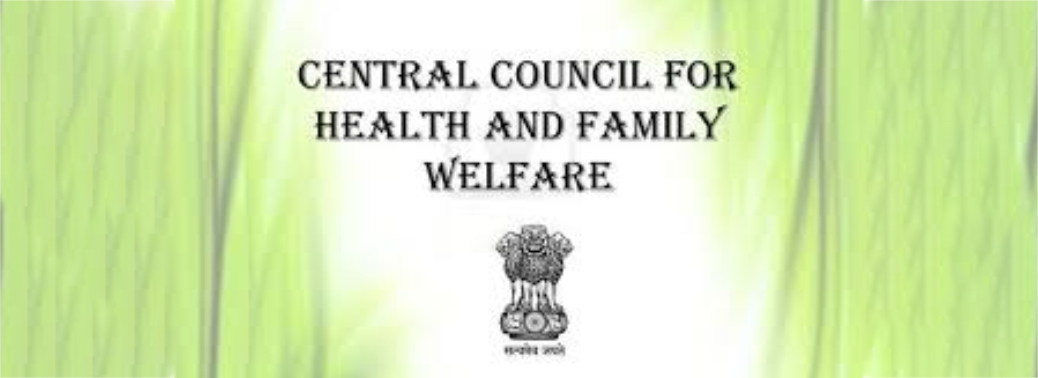
Why in News?
- The Union Health Minister Shri Harsh Vardhan inaugurated the 13th Conference of Central Council of Health and Family Welfare (CCHFW) in New Delhi.
Highlights:
- Health ministers from 13 states and UTs participated in the event.
- The minister stated that the purpose of the CCHFW meeting was to build a consensus on the national health priorities i.e. Universal Health Coverage (UHC) through Ayushman Bharat, eliminating TB and other priority agenda such as strengthening medical infrastructure.
- A member of the NITI Aayog opined that the two priority areas underscored by the Aayog are:
- Increasing the health budgets by the Centre and the States/UTs.
- Enhancing Health Infrastructure
- The minister also launched ‘Surakshit Matritva Aashwasan (SUMAN)’ for Zero Preventable Maternal and Newborn Deaths, its website and the grievance redressal portal.
- He also released the Report on National Diabetes & Diabetic Retinopathy Survey India 2015-19 and Report on National Blindness & Visual Impairment Survey India 2015-19, because 10th October is also ‘World Sight Day’.
- In addition, the minister also released guidelines on drugs, diagnostic services, biomedical equipment management and maintenance under the Pradhan Mantri National Dialysis Program.
Council of Health and Family Welfare:
- It is an apex advisory body to consider and recommend broad lines of policy in regard to matters concerning health and family welfare.
- The Union Minister for Health & Family Welfare is the Chairperson, while the Minister of State for Health & Family Welfare is the Vice-Chairperson.
- Its first meeting was held in 1988.
COURT SETS ASIDE ORDER TO TRY JUVENILE AS ADULT
10, Oct 2019
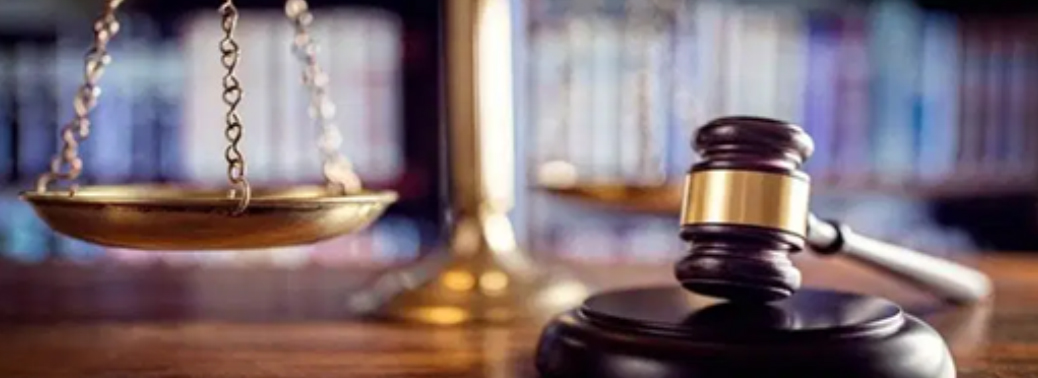
Why in News?
- A Delhi court has set aside the order of a Juvenile Justice Board (JJB) directing a Child in Conflict with Law (CCL) to face trial in a murder case as an adult.
Salient features of the Juvenile Justice Act 2015:
Children in conflict with the Law:
- It treats all the children below 18 years equally, except that those in the age group of 16-18 can be tried as adults if they commit a heinous crime.
- A child of 16-18 years age, who commits a lesser offence (a serious offence), may be tried as an adult if he is apprehended after the age of 21 years.
- A heinous offence attracts a minimum of seven years of imprisonment. A serious offence attracts three to seven years of imprisonment and a petty offence is treated with three-year imprisonment.
- No child can be awarded the death penalty or life imprisonment.
Children in need of care and protection:
- It calls for setting up of Child Welfare Committees (CWCs) in each district with a chairperson and four other members who have experience in dealing with children.
- The committee decides whether an abandoned child should be sent to care home or put up for adoption or foster care.
Juvenile Justice Boards:
- The Act mandates setting up of Juvenile Justice Boards (JJBs) in each district with a metropolitan magistrate and two social workers, including a woman.
- The JJBs will conduct a preliminary inquiry of a crime committed by a child within a specified time period and decides whether he should be sent to rehabilitation centre or sent to a children’s court to be tried as an adult.
- The board can take the help of psychologists and psycho-social workers and other experts to take the decision.
ABUSE OF WOMEN DURING CHILDBIRTH IS WIDESPREAD: REPORT
10, Oct 2019

Why in News?
- A recent study published in The Lancet medical journal has stated that more than one-third of the women in Asia and Africa were subjected to physical abuse during childbirth. This has been further confirmed by the observations of WHO.
Highlights of the Lancet Report:
- The report states that more than one-third of women in four low-income countries in Africa and Asia were slapped, mocked, forcibly treated or otherwise abused during childbirth in health centers and suggests that such mistreatment occurs worldwide.
- Also, women of these regions have experienced high rates of caesarean sections and surgical cuts to the vagina, or episiotomies, without their consent — and often without a painkiller.
- Mistreatment during childbirth can amount to a violation of human rights, and could be a powerful disincentive from seeking facility-based maternity care,” the study said.
Observations of WHO:
- The new study led by the World Health Organization followed more than 2,000 women during labour and interviewed more than 2,600 women after childbirth.
- Some 42% reported physical or verbal abuse or discrimination during childbirth. Some women were punched, shouted at, scolded or forcibly held down.
- Younger, less-educated women are at risk of such mistreatment which also includes neglect by health workers or the use of force during procedures, the study said.
- Most of the abuse occurred in the 15 minutes before and during childbirth. The study cited research that found that “midwives and doctors described women as ‘uncooperative’ during this period and some justified using physical and verbal abuse as “punishment”.
- The abuse also includes instances where women are forcibly separated from their new-borns for several days.
- Health officials say the mistreatment of women during childbirth appears to be global, including in developed countries.
About WHO:
- World Health Organization (WHO), the United Nations’ specialized agency for Health was founded in 1948.
- Its headquarters are situated in Geneva, Switzerland.
- There are 194 Member States, 150 country offices, six regional offices.
- It is an inter-governmental organization and works in collaboration with its member states usually through the Ministries of Health.
- The WHO provides leadership on global health matters, shaping the health research agenda, setting norms and standards, articulating evidence-based policy options, providing technical support to countries and monitoring and assessing health trends.
- It began functioning on April 7, 1948 – a date now being celebrated every year as World Health Day.
INDIA STARTS SHARING MARITIME DATA
09, Oct 2019
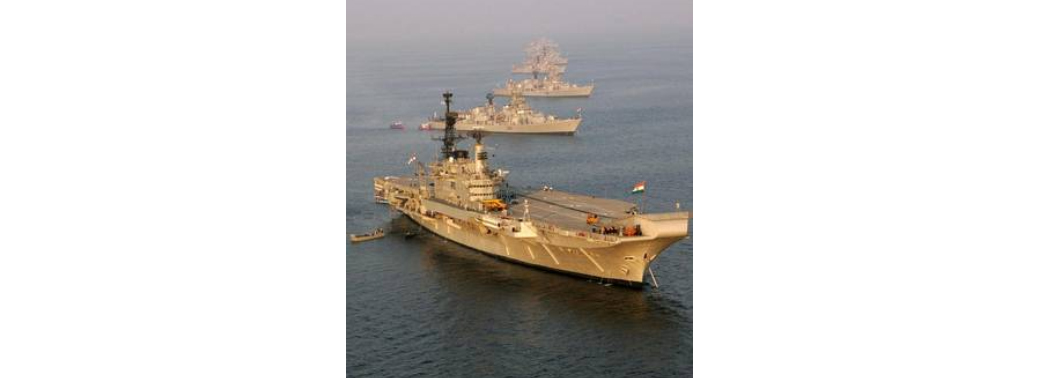
Why in News?
- The Information Fusion Centre – Indian Ocean Region (IFC-IOR) has started functioning as an information-sharing hub of maritime data.
Highlights:
- At the just-concluded Goa Maritime Conclave (GMC), National Security Adviser had offered countries in the IOR use of the facility to track movement of vessels on the high seas.
- The centre is actively interacting with the maritime community and has already built linkages with 18 countries and 15 multinational/maritime security centres.
IFC-IOR:
- The IFC-IOR was inaugurated in December 2018.
- The IFC is established at the Navy’s Information Management and Analysis Centre (IMAC) in Gurugram.It is the single point centre linking all the coastal radar chains to generate a seamless real-time picture of the nearly 7,500-km coastline.
- Through this Centre, information on “white shipping”, or commercial shipping, will be exchanged with countries in the region to improve maritime domain awareness in the Indian Ocean.It will function as an information-sharing hub of maritime data.
- It will be involved in cuing incident responses to maritime security situations through a collaborative approach.
- The IFC-IOR would also undertake the conduct of exercises and training capsules in maritime information collation and sharing.
Significance:
- It will help in countering the rise in maritime piracy in the Indian Ocean Region – a privileged location at the crossroads of global trade, connecting the major engines of the international economy in the Northern Atlantic and Asia-Pacific.
- IFC-IOR would work towards capability building in the region, coordination of incident response and disaster relief, and in time, also share submarine safety information.
- IFR-IRO would also ensure that the entire region is benefited by mutual collaboration and exchange of information and understanding the concerns and threats which are prevalent in the region.
HALT THE HATE
05, Oct 2019
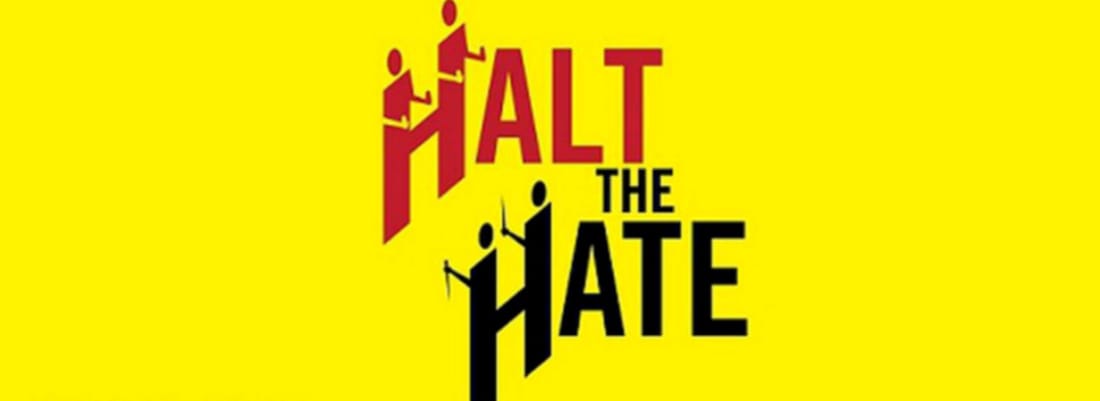
Context:
- ‘Halt The Hate’ is an interactive website on Amnesty International that documents reports of alleged hate crimes in India.
- A hate crime tracker has recorded 181 incidents of alleged hate crimes in the first half of 2019, the steepest rise in such incidents since 2015.
About the Website:
- ‘Halt the Hate’ documents alleged hate crimes in India starting from 28 September 2015, whenMohammad Akhlaq, a Muslim resident of Dadri, Uttar Pradesh, was murdered in his home by a mobclaiming that he had eaten beef.
- This website documents alleged hate crimes against Dalits,Muslims, Adivasis, Transgender people, Christians, and Other vulnerable groups.
- Amnesty International India understands Hate Crimes as ‘criminal acts against people or property,where the victim or target of offence is selected because of their real or perceived connection ormembership of a particular group, including but not limited to caste, ethnicity, religion, sexualorientation and gender identity, descent, nationality and disability among others.
Key Findings:
- The 181 recorded incidents of alleged hate crimes in the first half of 2019 is almost double that of the same period last year, when 100 such cases were recorded.
- Over two-thirds of the victims were targeted because they were Dalits, while 40 of them suffered because of their Muslim identity.
- In 37 reported incidents, the victims were killed. In 30 cases, victims were raped or sexually assaulted.
- Between January and June 2019, 72 mob attacks were reported. Of the 37 such attacks against Muslims, the victims were lynched in 5 cases. Dalit victims were lynched in 8 of the 28 mob attacks.
- There were 7 honour killings and 12 cases of violence against Adivasis.
Amnesty International:
- Amnesty International (commonly known as Amnesty or AI) is a London-based non-governmental organization focused on human rights.
- The stated mission of the organization is to campaign for “a world in which every person enjoys all of the human rights enshrined in the Universal Declaration of Human Rights and other international human rights instruments.”
- The organization was awarded the 1977 Nobel Peace Prize for its “defence of human dignity against torture”, and the United Nations Prize in the Field of Human Rightsin 1978.
- In the field of international human rights organizations, Amnesty has the third longest history, after the International Federation for Human Rights and broadest name recognition, and is believed by many to set standards for the movement as a whole.
CITIZENSHIP AMENDMENT BILL
03, Oct 2019
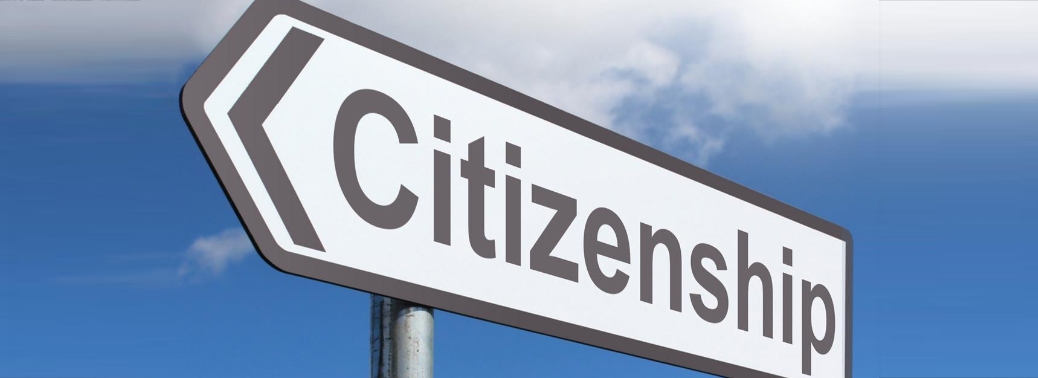
Why in News?
- Union Home Minister Amit Shah has reiterated that the government would first amend the existing citizenship norms – by passing the Citizenship Amendment Bill – before it implements a nationwide National Register of Citizens (NRC).
Citizenship (Amendment) Bill, 2016:
- The Bill amends the Citizenship Act of 1955, which lays down the norms regarding Indian citizenship, to make illegal migrants who are Hindus, Sikhs, Buddhists, Jains, Parsis and Christians from Afghanistan, Bangladesh and Pakistan, eligible for citizenship.
- Further, it relaxes one of the requirements for acquiring citizenship by natutralisation under the existing Act for persons belonging to the same six religions and three countries by only requiring them to have stayed in India for 6 (instead of 11) of the previous 14 years.
- The essential point of debate in this proposed amendment was that it makes illegal migrants eligible for citizenship on the basis of religion – a move that may violate Article 14 of the Indian Constitution, which guarantees right to equality.
What is NRC?
- Till date, Assam is the only state that has implemented the National Register of Citizens.
- The NRC defines all illegal immigrants, irrespective of religion, on the basis of a cutoff date – in Assam this was set to be March 24, 1971.
- As such, to claim citizenship, individuals had to prove that either they or their ancestors were Indian citizens before March 1971.
- At the end of the exercise in which 3.11 crore people applied for citizenship verification, 19 lakh were excluded.
- However, the list of excluded individuals includes several Hindus as well.
What will happen if the Citizenship Amendment happens before a nationwide NRC?
- If that happens, then all Hindus, Jains etc. migrants – essentially non-Muslim immigrants from neighbouring countries – who would have faced the risk of being excluded by the NRC would already be provided Indian citizenship.
- Thus, this sequencing will ensure that the government would be able to use the NRC to identify and deport, “each and every infiltrator”.
SUPREME COURT SC/ST JUDGMENT, IN REVIEW
03, Oct 2019
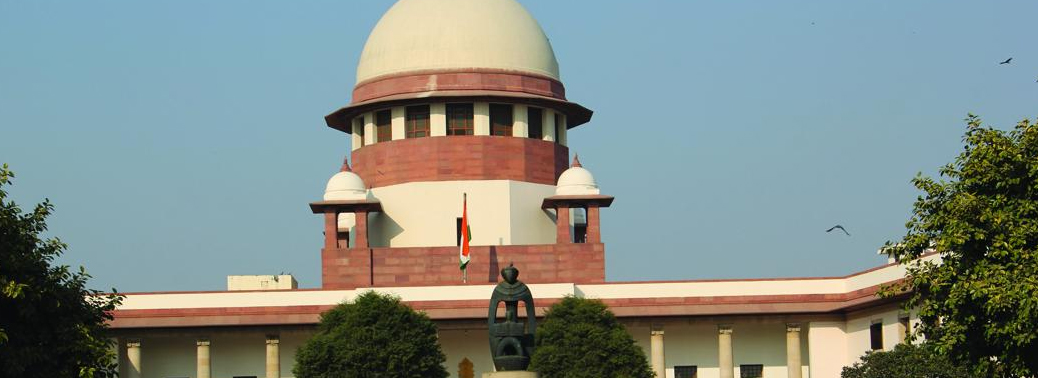
Why in News?
- Correcting an error of judgment, the Supreme Court recalled its March 20, 2018 verdict, which bent the written law to protect persons accused of committing atrocities against the Scheduled Castes and the Scheduled Tribes. This was following a plea by the Centre seeking a review of that judgment.
Background:
- On March 20, a judgment by the Supreme Court diluted the Scheduled Castes and Scheduled Tribes (Prevention of Atrocities) Act of 1989:
- to grant anticipatory bail to accused persons
- and directed that the police should conduct a preliminary enquiry on whether complaint under the 1989 law is “frivolous or motivated” before registering a case.
- Both conditions were not part of the original legislation.
- The SC had reasoned that members of the Scheduled Castes and Scheduled Tribes (SC/ST) use the 1989 law to lodge false complaints, leading to the arrest of innocent persons.
- The March 20 judgment had triggered widespread protests and violence and compelled the government to amend the Act to negate the effect of the apex court ruling. The Centre also filed a review against the judgment.
Highlights of Review Judgement:
- The Supreme Court in its judgment on the government’s review petition reasoned that human failing and not caste is the reason behind the lodging of false criminal complaints.
- The Supreme Court condemned its own earlier judgment, saying it was against “basic human dignity” to treat all SC/ST community members as “a liar or crook.”
- The judgement noted that the caste of a person cannot be a cause for lodging a false report and that the members of the Scheduled Castes and Scheduled Tribes, due to backwardness, cannot even muster the courage to lodge an FIR, much less, a false one.
- The judgement further noted, that India is a nation where “we have not been able to provide the modern methods of scavenging to Harijans due to lack of resources and proper planning and apathy”
- The Supreme Court Observed that “Untouchability though intended to be abolished, has not vanished in the last 70 years. We are still experimenting with ‘tryst with destiny’… condition is worse in the villages, remote areas where the fruits of development have not percolated down,”
HOW A US PRESIDENT CAN BE IMPEACHED
27, Sep 2019
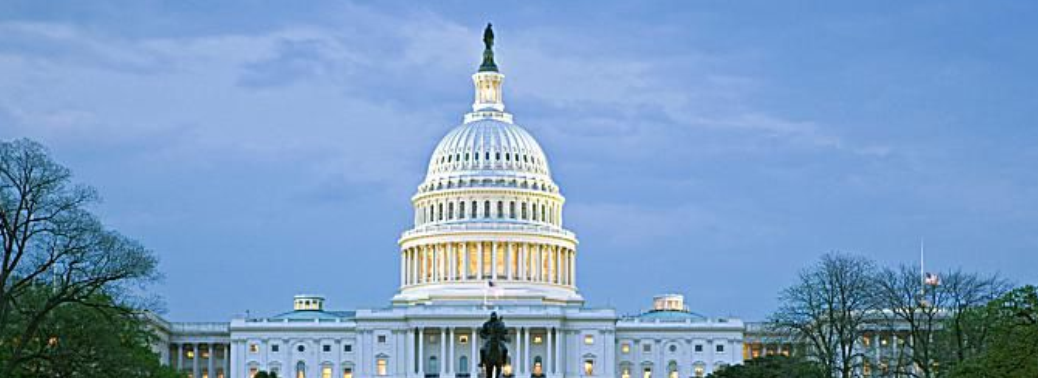
Why in News?
- US House of Representatives Speaker Nancy Pelosi announced that the House would launch an impeachment inquiry against President Donald Trump, over his alleged efforts to pressure Ukraine to investigate Joe Biden, Trump’s potential rival in the 2020 elections.
Background:
- No US President has ever been removed as a direct result of impeachment.
- The House did impeach two Presidents — Andrew Johnson (1968) and Bill Clinton (1998) but the Senate did not convict them.
- In between, President Richard Nixon (1974) resigned before he could be removed.
What is Impeachment?
- Impeachment is a provision that allows Congress to remove the President of the United States.
- Under the US Constitution, the House of Representatives (Lower House) has the “the sole power of impeachment” while the Senate (Upper House) has “the sole power to try all impeachments”.
- The Chief Justice of the US Supreme Court has the duty of presiding over impeachment trials in the Senate.
Grounds for Impeachment:
- The President can be removed from office for “treason, bribery, or other high crimes and misdemeanors”. What constitutes these “high crimes” and “misdemeanors” (misdemeanors), however, is not clearly spelt out.
- The New York Times explained that the expression “high crimes and misdemeanors” came out of the British common law tradition.
- “Essentially, it means an abuse of power by a high-level public official. This does not necessarily have to be a violation of an ordinary criminal statute,”.
- Historically, in the US, it has encompassed corruption and other abuses, including trying to obstruct judicial proceedings.
Impeachment Procedure:
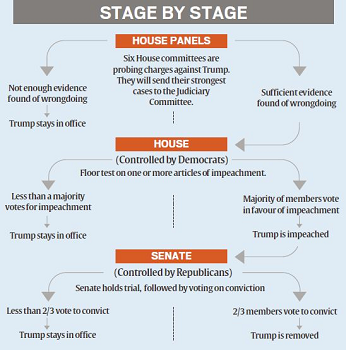
- HOUSE VOTE: It begins with an investigation by a House committee. In the Nixon and Clinton cases, the House Judiciary Committee held that investigation and recommended articles of impeachment to the full House. If they find that there is enough evidence of wrongdoing, it will refer the matter to the full House (see flow chart).
- HOUSE VOTE: When the full House votes, if one or more of the articles of impeachment gets a majority vote, the President is impeached. Next, the proceedings move to the Senate.
- SENATE TRIAL & VOTE: The Senate holds a trial, overseen by the chief justice of the Supreme Court. A team of lawmakers from the House, known as managers, play the role of prosecutors, The NYT explained. The President has defence lawyers, and the Senate serves as the jury. If at least two-thirds of the Senators present find the President guilty, he is removed and the Vice President takes over as President.
What Lies Ahead?
- The House has 235 Democrats, 199 Republicans, and one independent. The Democrats could, therefore, impeach Trump with no Republican support.
- The Senate has 53 Republicans, 45 Democrats and two independents who usually vote with the Democrats.
- Conviction of the President would require 67 votes, which cannot happen unless some Republicans vote against him.
RIGHT TO HAVE ACCESS TO INTERNET
21, Sep 2019

Why in News?
- In a landmark judgment, the High Court of Kerala held that right to have access to internet is a fundamental right forming part of right to privacy under Article 21 of the Constitution. The court also observed that the right to Internet access also forms part of Right to Education.
Background:
- The order came on a petition filed by a student at Sree Narayana College, Chelanur, Kozhikodechallenging restrictions on usage of mobile phones in girls’ hostel.
- The student alleged that she was expelled from the college for not abiding by the restrictions on mobile phones in the hostel. According to her, the inmates are not allowed to use mobile phones between 6 pm and 10 pm.
- The court accepted the petitioner’s contention that the restrictions on the use of mobile phones amounted to violation of fundamental right to freedom of speech and expression under Article 19 (1) (a).
Observations by Kerala High Court:
- The Human Rights Council of the United Nations has found that the right of access to Internet is a fundamental freedom and a tool to ensure right to education, a rule or instruction which impairs the said right of the students cannot be permitted to stand in the eye of law.
- The court observed that the action of the college authorities infringed the fundamental freedom as well as privacy and would adversely affect the future and career of students who want to acquire knowledge and compete with their peers, suchrestriction could not be permitted to be enforced.
- The court while citing the observations of the SupremeCourt in the Rengarajan and others v. P. Jagjivan Ram (1989) case said “ the fundamental freedom under Article 19(1)(a) can be reasonably restricted only for the purposes mentioned in Article 19(2) and the restriction must be justified on the anvil of necessity and not the quicksand of convenience or expediency.”
- The court observed that the hostel authorities were expected to enforce only those rules and regulations for enforcing discipline. Enforcement of discipline shall not be by blocking the ways and means of the students to acquire knowledge.
- The court also observed that mobile phones, once a luxury, have now become “part and parcel of the day to day life and even to a stage that it is unavoidable to survive with dignity and freedom”
- “ A Student above the age of 18 Years shall be given the freedom to choose the mode for her studies provided it does not cause any disturbance to others. The Schools in Kerala promotes digitalisation with smart class rooms and the modern technology has taken its place in all the fields even from primary section.
- Thus the usage of mobile phones in order to enable the students to have access to internet will only enhance the opportunities of students to acquire knowledge from all available sources based on which they can achieve excellence and enhance quality and standard of education”.
Information Technology Policy of the Kerala Government:
- The Petitioner referred to the Budget Speech made by Kerala Finance Minister in 2017, where it was announced that Kerala Government had recognized ‘right to internet’ as a human right and was making efforts to make internet accessible to all.
- Reference was made to the Information Technology Policy of the Kerala Government, as per which Government was stated to be adopting “Mobile first” approach for e-governance services by leveraging high mobile penetration and coverage in the state.
COMPANY LAW COMMITTEE
19, Sep 2019

Why in News?
- The government constituted the Company Law Committee for examining and making recommendations on various provisions and issues pertaining to the implementation of the Companies Act.
Highlights:
- The Committee will examine and make recommendations on various issues pertaining to the Companies Act, 2013 and the Limited Liability Partnership Act, 2008.
- The Committee will comprise of a chairperson and members.
- The Secretary of the Ministry of Corporate Affairs is the Chairman.
- The Committee will analyse the nature of offences (compoundable and non-compoundable) and submit its recommendation as to whether any of the offences could be re-categorized as ‘civil wrongs’ along with measures to optimize the compliance requirements under the Companies Act, 2013 and to provide further Ease of Doing Business.
- It will also study the feasibility of introducing settlement mechanism, deferred prosecution agreement, etc., within the ambit of the Companies Act, 2013.
- It will also examine the LLP Act and recommend measures to promote Ease of Doing Business.
ZONAL COUNCILS
19, Sep 2019
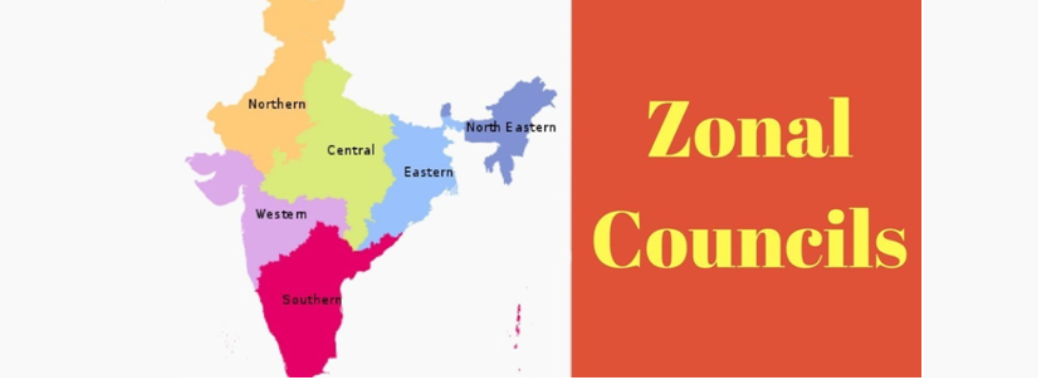
Why in News?
- The 29th meeting of the Northern Zonal Council will be held on 20th September at Chandigarh.
Zonal Councils:
- Zonal Councils are statutory bodies established under the States Reorganisation Act 1956.
- They are advisory bodies and were established to promote interstate cooperation and coordination.
- There are five zonal councils in India, as follows:
- Northern Zonal Council: Chandigarh, Delhi, Haryana, Himachal Pradesh, Jammu and Kashmir, Punjab, and Rajasthan
- Central Zonal Council: Chhattisgarh, Madhya Pradesh, Uttarakhand and Uttar Pradesh
- Eastern Zonal Council: Bihar, Jharkhand, Odisha, and West Bengal
- Southern Zonal Council: Andhra Pradesh, Karnataka, Kerala, Puducherry, Tamil Nadu, and Telangana
- Western Zonal Council: Dadra and Nagar Haveli, Daman and Diu, Goa, Gujarat, and Maharashtra
- Andaman and Nicobar Islands, as well as Lakshadweep, are not members but are special invitees to the Southern Zonal Council.
- The north-eastern states are not members of any of the above councils. Their problems are addressed by another statutory body, the North Eastern Council, created by the North Eastern Council Act, 1971.
JAMMU & KASHMIR PUBLIC SAFETY ACT
17, Sep 2019
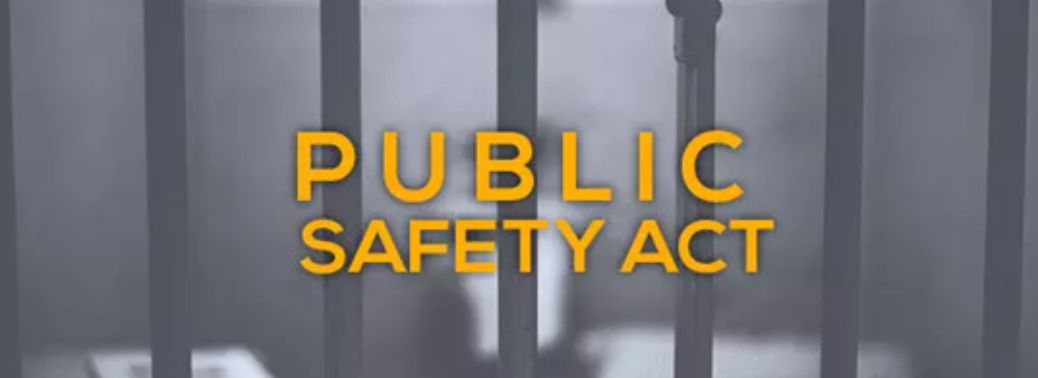
Why in News?
- National Conference leader and former Jammu and Kashmir chief minister Farooq Abdullah has been detained under the Jammu and Kashmir Public Safety Act.
- Last month, former IAS officer Shah Faesal was stopped at New Delhi airport and sent back to Kashmir, where he has been detained under the Public Safety Act (PSA).
About Jammu & Kashmir Public Safety Act (PSA):
- Jammu and Kashmir Public Safety Act 1978, was enacted “in the interest of the security of the State and public order”.
- It contains provisions for designating protected and prohibited areas, prevention of circulation of documents in the interests of communal harmony, etc.
- The Government can order the detention of a person:
- To prevent him from acting in any manner prejudicial to security of the State of maintenance of the public order.
- If he is a foreigner within the meaning of Foreigners Act
- If he is a person residing in the area of the State under the occupation of Pakistan and it is necessary to regulate his presence or to expel him.
- As per the definition given in the Act, “acting in any manner prejudicial to the maintenance of public order” means:
- 1.Promoting, Propagating, or attempting to create, feelings of enmity or hatred or disharmony on grounds of religion, race, caste, community, or region;
- 2.Making preparations for using, or attempting its use, or using, or instigating, inciting, or otherwise abetting the use of force where such preparation, using, attempting, instigating, inciting, provoking or abetting, disturbs or is likely to disturb public order;
- 3.Attempting to commit, or committing, or instigating, inciting, provoking or otherwise abetting the commission of mischief within the meaning of section 425 of the Ranbir Penal Code where the commission of such mischief disturbs, or is likely to disturb public order.
- Detention orders under PSA can be issued by Divisional Commissioners or District Magistrates.
- The detaining authority need not disclose any facts about the detention “which it considers to be against the public interest to disclose”.
- As per section 13(1), the authority making the detention should communicate to the detenu the reasons of detention. This is to enable the detenu to make a representation against the order of detention in exercise of the Fundamental Right guaranteed under Article 22(5) of the Constitution of India.
- However, the authority need not disclose such facts to the detenu which it considers to be against public interest to disclose (Section 13(2)). Therefore, the right under Section 13(1) can be effectively defeated if the authority chooses not to disclose whole facts in public interest.
Period of Detention:
- The Maximum period of detention in the case of persons acting in any manner prejudicial to the security of the state is two years.
- In Case of a person acting prejudicial to the maintenance of public order, the maximum period of detention is 12 months.
- Within four weeks of passing a detention order, the Government has to refer the case to an Advisory Board, which consists of a chairperson, who is or has been a judge of the High Court, and two other members who are, or have been, or are qualified to be appointed as Judges of the High Court.
- The Advisory Board has to give its opinion within 8 weeks of detention order.
- If the Advisory Board opines that there are sufficient causes for preventive detention, the Government can keep the person under detention for such period as it thinks fit, subject to the maximum limit.
Can the Detention be Challenged?
- The Advisory Board is supposed to examine if there are sufficient reasons for preventive detention.
- It is pertinent to note that the detenu has no right to engage a legal practitioner before the Advisory Board. The Advisory Board can also decide if the disclosure of grounds of detention to the detenu will affect public interest.
- The detenu is not entitled to the report of the Advisory Board, if the Board decides that it should remain confidential.
- The detention can be challenged in habeas corpus petitions filed before High Court under Article 226. However, the scope of challenge is limited to grounds of procedural violations.
- If there is non-application of mind by the detaining authority, or non-communication of the grounds of detention to the detenu, the High Court can quash the detention order as illegal.
- It is important that the District Magistrate forms independent opinion regarding the necessity of ordering preventive detention. If the Magistrate merely copies the report of the police, it will be a case of non-application of mind.
- Non-supply of relevant material documents to the detenu is also a ground for setting aside detention order(Bilal Ahmed Dar v State of J&K).
- The grounds of detention are not to be formulated in shorthand, or in a language of abbreviations or acronyms only known to the detaining authority. (Tanveer Ahmed v State of J&K)
Concerns/Criticisms of the Act:
- Global human rights organisations such as Commonwealth Human Rights Initiative (CHRI) and Amnesty International have noted in their reports that responses by various government authorities to applications filed under the Right to Information (RTI) Act, 2005 suggest that no Rules have so far been framed to lay down procedures for the implementation of the provisions of the PSA.
- An Amnesty report published earlier this year, which analysed over 2000 case studies of PSA detainees between 2007 and 2016, over 2,400 PSA detention orders were passed, of which about 58% were quashed by the courts.
- J&K parties have often blamed each other for the rampant misuse of the PSA.
NEW FAST-TRACK COURTS TO CONDUCT SPEEDY TRIAL OF SEXUAL OFFENCES
16, Sep 2019
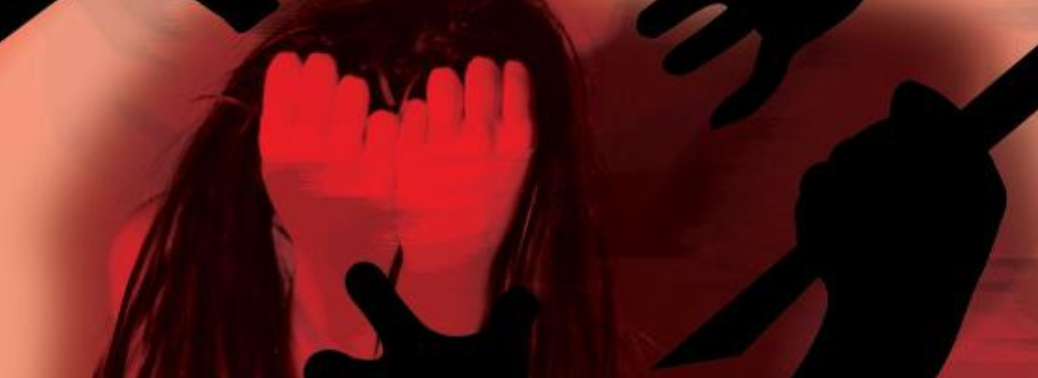
Why in News?
- India will soon have 1,023 new fast-track special courts for speedy trial of over 1.66 lakh pending cases of crime against women and children. The proposal has been sent by the Union government, which estimates that each of these special courts is likely to dispose of at least 165 such cases per year.
Background:
- The Supreme Court has directed the Centre to set up special courts in each district across the country that have over a 100 cases of child abuse and sexual assault pending trial under the Protection of Children from Sexual Offences (POCSO) Act.
Jurisdiction of The Court:
- According to the Department of Justice under Union Law Ministry, out of the 1,023 fast-track special courts (FTSCs), 389 courts, according to a Supreme Court direction, will exclusively handle cases registered under Protection of Children from Sexual Offences (POCSO) Act.The remaining 634 FTSCs will deal with either rape or both rape and POCSO Act cases depending upon the pendency and requirement. It is expected that each fast-track special court will dispose 41-42 cases each quarter.
Key Facts About the Pendency:
- According to official data with the Department of Justice, a total of 1,66,882 cases of rape and those under POCSO Act are pending trial in various courts in the country.
- There are 389 districts in the country where the number of pending cases under the POCSO Act exceeds 100.Therefore, as per the apex court directives, each such district will have one exclusive POCSO court, which will try no other cases, the note said.
Need for Special Courts:
- Present Slow pace of action on protection of children from sexual predators. As per available data, number of victims compensated under Pocso were 3% in 2015, 4% in 2016 and 5% in 2017. Around 1.5 lakh cases are pending trial before 670 designated courts.
- Though the Act mandates trial to be completed in one year, the deadline is impossible to achieve as each designated trial judge is saddled with a few hundred cases in addition to the trial of other cases.
Guidelines by The SC for Setting up of Special Courts:
- 1.Funding: Such courts will be funded by the central government. The fund will not only take care of the appointment of the presiding officer but also appointments of support persons, special public prosecutors, court staff and infrastructure, including creation of child-friendly environment and vulnerable witness court rooms.
- 2.Awareness: WCD ministry shall facilitate screening of “short clips intended to spread awareness of the subject in general, namely, prevention of child abuse and prosecution of crimes against children, in every movie hall and could also be transmitted by various television channels at regular intervals.
- 3.A Child Helpline Number should also be displayed in such clips and at schools and other public places.
INDIA ACCOUNTED FOR 2.8 MILLION DISPLACED PEOPLE IN 2018: IDMC REPORT
14, Sep 2019
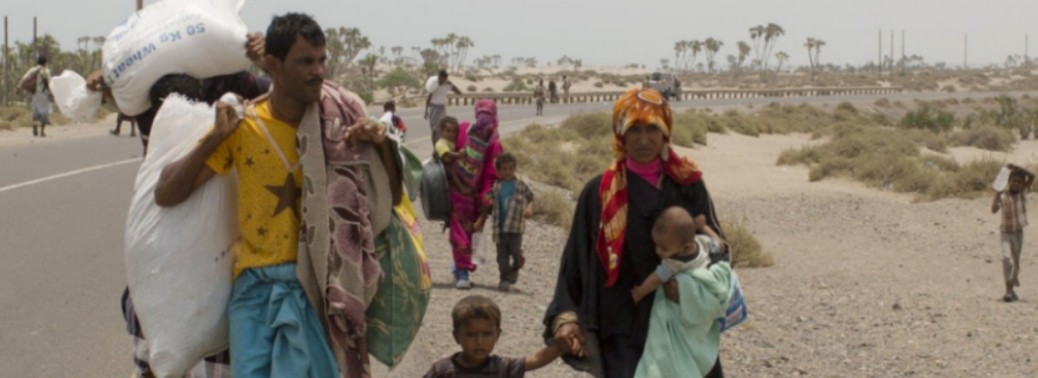
Why in News?
- Internal Displacement Monitoring Centre (IDMC) has released a new global report on the displacement of people due to natural disasters.
- According to the IDMC report, about seven million people have been displaced globally due to natural calamities including floods and storms between January and June 2019.
- IDMC Report also informed that more than 950 climate-related issues forced about seven million people to leave their homes.
- Most of the affected people are living in the Asian and African regions. In South Asia India accounted for most of the displacements.
India Specific Highlights:
Natural Disaster-related Displacements:
- IDMC report informed that India accounted for most of the region’s new displacements. Its overall total of 2.8 million was among the highest in the world, of which nearly 2.7 million were triggered by disasters across 15 states.
- India was particularly hard-hit by the monsoon season when flooding devastated the south-western state of Kerala.
- Almost 1.5 million new displacements were recorded in Kerala in what was described as the worst floods in a century.
- Cyclone Titli struck Orissa and Andhra Pradesh states in October, triggering 400,000 new displacements and cyclone Gaja hit Tamil Nadu in November, triggering 2,49,000 displacements.
Conflict and Violence related Displacements:
- According to the IDMC report, more than 1,60,000 new displacements associated with conflict and violence was recorded in Kashmir.
- Communal violence in Kashmir and West Bengal cast violence in Maharashtra and political violence in Tripura also triggered small-scale displacement.
Global Highlights:
- IDMC report highlights that weather-related hazards, particularly storms, accounted for the majority of the new displacement associated with disasters, triggering 17.2 million displacements in 2018.
- In various regions of the world, unresolved conflicts and a rise in communal violence were responsible for most of the 10.8 million new displacements associated with conflict and violence in 2018.
- Despite the decline in conflict and displacement in Syria during 2018, the country’s civil war, in its eighth year, continued to trigger some of the largest population movements in the world. More than 1.6 million new displacements were recorded.
- Around 221,000 people were living in displacement nationwide as of the end of the year, suffering dire conditions and unable to return because of destroyed housing, ongoing insecurity and a lack of resources.
IDMC:
- It is an authoritative source of data and analysis on internal displacement. The Internal Displacement Monitoring Centre (IDMC) was established in 1998 as the Norwegian Refugee Council (NRC). It works to inform policy and operational decisions that improve the lives of millions of people living in the internal displacement or at risk of becoming displaced in the future.
HIGH COURT JUDGES TRANSFER
12, Sep 2019
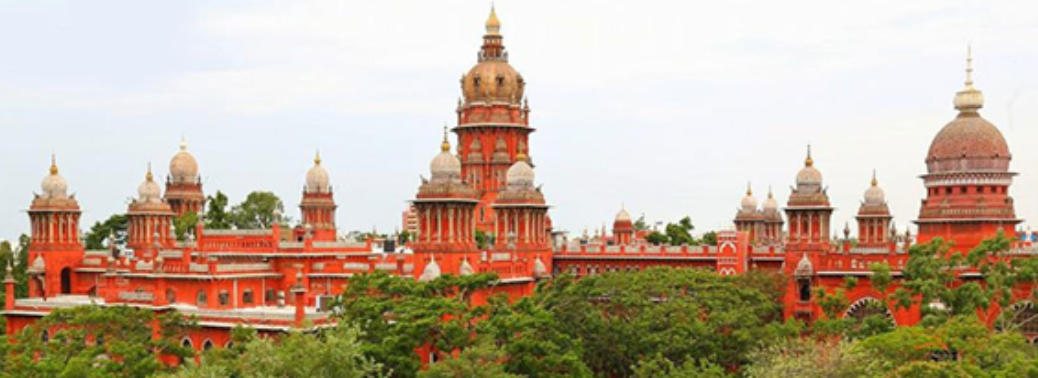
Context:
- Supreme Court collegium consisting of five senior-most judges recommended the transfer of Madras High Court Chief Justice VK Tahilramani to the Meghalaya High Court.
Background:
- This recommendation was part of a series of appointments and transfers effected by the Supreme Court collegium in the last week of August.
- As per the norm, Tahilramani was given an opportunity to present her views on the transfer to the collegium.
- On September 3, another resolution of the collegium said that her request to reconsider the transfer could not be accepted. “On reconsideration, the collegium is of the considered view that it is not possible to accede to her request,” said the resolution.
Concern:
- The transfer has led to a barrage of criticism against the collegium and its opaque process of appointments and transfers. Tahilramani is the senior-most among the High Court judges currently holding office.
- Supreme Court collegium’s opaque process of transfers turning High Courts into subservient units of the apex court, even though that violates Constitutional principles.
- If justice is not being administered efficiently in one High Court under a specific chief justice, could another High Court function smoothly under the same official?
- On the other hand, can a chief justice consider one High Court to be more important than another and refuse a posting, given that the Constitutional position of all High Courts are equal?
Position of High Court:
- The Supreme Court has appellate powers over all High Courts.
- But this does not mean the High Courts are subordinate or subservient to the Supreme Court in any manner.
- The judicial system in India has its origins in the colonial era and borrows heavily from the British system.
- In legal parlance, both the Supreme Court and the High Courts are designated as “courts of record”.
- This means that the court proceedings are preserved for future, including for the purposes of appeal.
- Under the Constitution, Article 129 expressly declared Supreme Court to be a court of record, the High Courts are declared so under Article 215.
- Case laws
- In MV Elisabeth vs Harwan Investment and Trading Private Limited, the Supreme Court said, “High Courts have unlimited jurisdiction to determine their own powers.”
- In Tirupati Balaji Developers vs State of Bihar, following a controversy about some directions issued by the Supreme Court registrar to the Patna High Court, the Supreme Court elaborated on the relationship between the High Courts and the Supreme Courts.
- The Supreme Court acknowledged the Constitutional scheme where the powers of the High Courts are even wider than that of the Supreme Court in certain circumstances.
- For example, a High Court is granted power of superintendence over subordinate courts but the Supreme Court does not have any superintendence powers over the High Courts.
Transfer of High Courts Judges:
- The Supreme Court has recognised the importance of judicial transfers in the High Courts and the effect that such transfers have on the administration of justice.
- Given the experience of the Emergency era, when transfers were used as a form of punishment by the executive, the Supreme Court, through what is now known as the “Three Judges cases”, has monopolised transfer powers in its collegium.
- Unlike the appointment of High Court judges, which is done by a collegium of three senior-most Supreme Court justices, transfers are so important, they are collectively decided by the full collegium of the five senior-most judges.
- By law, a judicial appointment or transfer is made through orders of the President.
- But Article 222 of the Constitution as interpreted by the Supreme Court has put in place an implicit restriction on the President by making the concurrence of the chief justice of India a condition for the transfer.
- No transfer order can be issued by the President without the advice of the chief justice of India.
- On the other hand, the chief justice can advise such a transfer only after a resolution in the collegium.
- The collegium may also take the opinion of a Supreme Court judge hailing from the concerned High Court of the judge being transferred or the relevant High Court chief justice to effect a transfer.
- However, the consultative process that had been put into place to guard the judiciary against arbitrary transfers has been criticised over the years for itself becoming arbitrary.
- The case of Justice Tahilramani fits into this framework where the public is left with no information on why the transfer was made.
GLOBAL CAMPAIGN AGAINST FAKE NARRATIVES
07, Sep 2019
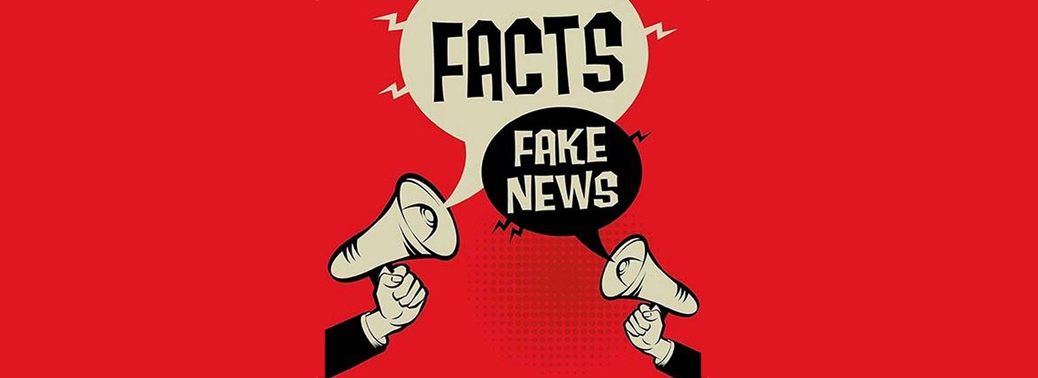
Why in News?
- BBC and other leading global news and technology organisations has collaborated to tackle disinformation. The collaboration was announced by the BBC and the partners recently.
- Under this collaboration, news and technology majors will work together to protect their audiences and users from disinformation, particularly around crucial events such as elections.
Trusted News Summit:
- Earlier this year, the BBC convened a ‘Trusted News Summit’, bringing together senior figures from major global technology firms and publishing.
- It was precipitated by events such as the Indian elections, which highlighted the dangers of disinformation and underlined the importance of working together.
- The summit agreed to work collectively on various initiatives, including creating systems where organisations can warn each other quickly when they discover disinformation that threatens human life or disrupts elections.
- The emphasis of the ‘early warning system’ will be on moving quickly and collectively to undermine disinformation before it can take hold.
- The summit also agreed to work towards a joint online media education campaign, and also to co-operate on election-related information such as explaining how and where to vote.
Significance:
- Disinformation and so-called fake news are a threat to us all. At its worst, it can present a serious threat to democracy and even to people’s lives.
- This summit has shown a determination to take collective action to fight this problem and we have agreed some crucial steps towards this.
Legal Framework to Tackle Fake News in India:
- There is no specific law in India to deal with fake news but there are statutory and self-regulatory bodies to act against dissemination of misinformation. Moreover, free publication of news flows from Article 19 of the Constitution guaranteeing freedom of speech.
- Press Council of India: It is a regulatory body which can warn, admonish or censure the newspaper, the news agency, the editor or the journalist or disapprove the conduct of the editor or the journalist if it finds that a newspaper or a news agency has violated journalistic ethics.
- News Broadcasters Association (NBA): represents the private television news and current affairs broadcasters. The self-regulatory body probes complaints against electronic media.
- Indian Broadcast Foundation (IBF): Looks into the complaints against contents aired by channels.
- Broadcasting Content Complaint Council (BCCC): Admits complaints against TV broadcasters for objectionable TV content and fake news.
- Indian Penal Code (IPC): It has certain sections which could curb fake news: Section 153 (wantonly giving provocation with intent to cause riot) and Section 295 (injuring or defiling place of worship with intent to insult the religion of any class) can be invoked to guard against fake news.
- Section 66 in The Information Technology Act, 2000: If any person, dishonestly or fraudulently, does any act referred to in section 43 (damage to computer, computer system), he shall be punishable with imprisonment for a term which may extend to three years or with fine which may extend to five lakh rupees or with both.
- Civil or Criminal Case for Defamation is another resort against fake news for individuals and groups hurt by the fake news.
- IPC Section 499 (defamation) and Section 500 (whoever defames another shall be punished with simple imprisonment for a term which may extend to two years, or with fine, or with both) provide for a defamation suit.
WHAT IS AN INTERPOL RED NOTICE, WHAT DOES IT DO?
03, Sep 2019

Why in News?
- Home Minister of India has conveyed to Interpol Secretary-General Jurgen Stock that India would like the international police agency to expedite its process of publishing Red Notices (RNs). As many as 18 requests for RNs from India are pending with Interpol, including against fugitive jeweller Mehul Choksi and Nirav Modi, a key accused in the Rs 13,500 crore Punjab National Bank scam.
About Red Notices:
- Criminals or suspects often flee to other countries to evade facing justice. An RN alerts police forces across the world about fugitives who are wanted internationally.
- Interpol describes an RN as “a request to law enforcement worldwide to locate and provisionally arrest a person pending extradition, surrender, or similar legal action”.
- RNs contain information that helps identify wanted persons, such as their names, dates of birth, nationality, and physical attributes such as the colour of their hair and eyes, as well as pictures and biometric data such as fingerprints, if they are available. RNs also mention the crime(s) they are wanted for.
- An RN is published by Interpol at the request of a member country. The fugitives may be wanted for prosecution or to serve a sentence. The country issuing the request need not be the home country of the fugitive; Interpol acts on the request of a country where the alleged crime has been committed.
- The Interpol itself does not want individuals; they are wanted by a country or an international tribunal.
- Also, an RN is an international wanted persons’ notice; it is not an international arrest warrant. Which means that the Interpol cannot compel the law enforcement authorities in any country to arrest the subject of an RN. It is up to individual member countries to decide what legal value to give to an RN, and the authority of their national law enforcement officers to make arrests.
- RNs are issued to simultaneously alert police in all member countries about internationally wanted fugitives. An RN can help bring a fugitive to justice, sometimes many years after the crime was committed.
- However, because an RN is not an arrest warrant, action against a fugitive frequently rests on the diplomatic clout that the country making the request has with the country where the fugitive is located. Nations with a big international profile, and economic or political heft, are often more successful than the rest.
Other Types of Notices by The Interpol:
- Blue Notice: To collect additional information about a person’s identity, location or activities in relation to a crime.
- Green Notice: To provide warnings and intelligence about persons who have committed criminal offences and are likely to repeat these crimes in other countries.
- Yellow Notice: To help locate missing persons, often minors, or to help identify persons who are unable to identify themselves.
- Black Notice: To seek information on unidentified bodies.
- Orange Notice: To warn of an event, a person, an object or a process representing a serious and imminent threat to public safety.
- Purple Notice: To seek or provide information on modus operandi, objects, devices and concealment methods used by criminals.
- The INTERPOL-United Nations Security Council Special Notice: Issued for individuals and entities that are subject to sanctions imposed by the United Nations Security Council (UNSC).
WILL INDIA CHANGE ITS ‘NO FIRST USE’ POLICY?
01, Sep 2019

Why in News?
- Since conducting its second nuclear tests, Pokhran-II, in 1998, India has adhered to a self-imposed commitment to ‘No First Use’ (NFU) of nuclear weapons on another country. However, last week, on August 16, Defence Minister Rajnath Singh dropped a hint that in the future, India’s NFU promise “depends on circumstances.”
A Brief History of India’s N-Weapon Journey:
- India embarked on the path of nuclear weapons development after its face-off with China in the 1962 war, followed by China carrying out nuclear tests in 1964 and in the subsequent years.
- In 1974, under Prime Minister Indira Gandhi, India conducted its first nuclear tests, Pokhran-I, dubbed as a “peaceful nuclear explosion”.
- Despite more than two decades of international pressure that followed to make India abandon its pursuit of nuclear weapons, India again carried out a test in May 1998, Pokhran-II, involving a fission device, a low-yield device, and a thermonuclear device.
- Its successful execution meant that India had the ability to introduce nuclear warheads into its fast-developing missile programme.
- A fortnight after the Pokhran-II tests, Pakistan also carried out similar tests, confirming progress with its nuclear weapons programme; since that time its nuclear arsenal has expanded rapidly.
- In 1999, India came out with an explicit nuclear doctrine that committed, among other things, to NFU — that is it would never carry out a nuclear first-strike.
- This doctrine emphasised “minimal deterrence, no first use and non-use against non-nuclear weapon states”, in the words of former National Security Adviser Shivshankar Menon. The NFU promise thus went together with Credible Minimum Deterrence (CMD).
Credible Minimum Deterrence (CMD)- Indian Context:
- Credible minimum deterrence does not imply indefinite expansion of the nuclear arsenal; rather it is built on an assured second-strike capability.
- This implies that in the event of another nation carrying out a first nuclear strike of any magnitude against India, India’s nuclear forces shall be so deployed as to ensure survivability of the attack and the capability to carry out a massive, punitive nuclear retaliation aimed at inflicting damage that the aggressor will find “unacceptable”.
- Additionally, CMD requires a robust command and control system; effective intelligence and early warning capabilities; comprehensive planning and training for operations in line with the strategy; and the will to employ nuclear forces and weapons.
- Currently, the Nuclear Command Authority is responsible for command, control and operational decisions on nuclear weapons; specifically, it is the Cabinet Committee on Security and ultimately the office of the Prime Minister of India, that is responsible for the decision to carry out a nuclear attack.
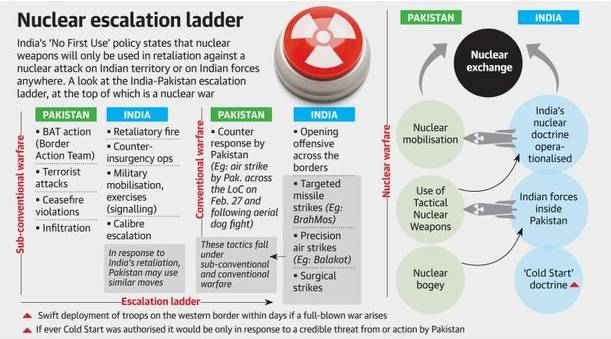
Why might the NFU Policy be Revisited?
- Regional geopolitical realities have a significant bearing upon India’s NFU commitment, to the extent that the CMD is what the “enemy” believes deterrence to be, and their belief is manifested in their actions.
- After the 1998 nuclear tests in India and Pakistan, the CMD was established in the sense that in the following decade, including the aftermaths of the attack on the Indian Parliament in 2001 and the Mumbai terror attacks in 2008, neither country felt inclined to instigate all-out war.
- However, since that time, the deterrent effect of India’s arsenal seemed to have less effect in one significant aspect: Pakistani officials started speaking out about their country’s development of tactical nuclear weapons, or “theatre nukes”, which had a lower yield but could still inflict enough damage to blunt a conventional attack.
- It is surmised that Pakistan’s talk of tactical nuclear weapons might have emerged as a counter to speculation that India might have developed the “Cold Start” doctrine. This is a purported classified plan for a conventional military attack by Indian forces on Pakistani soil, likely as a response to a prior sub-conventional attack from across the border (such as a state-sponsored terror-attack).
- In this context, in 2013, Shyam Saran, convener of the National Security Advisory Board, said: “India will not be the first to use nuclear weapons, but if it is attacked with such weapons, it would engage in nuclear retaliation which will be massive and designed to inflict unacceptable damage on its adversary. The label on a nuclear weapon used for attacking India, strategic or tactical, is irrelevant from the Indian perspective.”
- However, there may be some concerns with this idea that India will retaliate massively even if Pakistan uses tactical nuclear weapons — possibly on Indian forces operating on Pakistani soil — against it.
- First, this strategy would take both countries back into the old-world deterrence paradigm of “mutually assured destruction”, because any surviving forces in Pakistan after India’s retaliation would surely launch a devastating attack against targets across India.
- Second, India may have more to gain by pre-emptive action. This is the question that analysts Christopher Clary and Vipin Narang have studied, and they argue that one option under consideration could be for “a hard counterforce strike against Pakistan’s relatively small number — perhaps several dozen — strategic nuclear assets on land (and eventually at sea) to eliminate its ability to destroy Indian strategic targets and cities. Such a strategy would be consistent with India’s doctrine of massive retaliation — massive retaliation strategies need not be countervalue — while avoiding the credibility issues associated with a countervalue targeting strategy following Pakistan’s use of nuclear weapons on the battlefield.”
India’s Nuclear Doctrine- Accommodating Changing Realities:
- Mr. Clary and Mr. Narang argue, India’s adoption of potentially pre-emptive “counterforce options” – i.e. to eliminate Pakistan’s strategic nuclear weapons when it deems the risk of a Pakistani first-strike to have crossed a critical threshold — may require no explicit shifts in its declared nuclear doctrine.
- Remaining silent on this subject might be calculated as a strategic advantage for India as the country would be assuming deliberate nuclear ambiguity.
- The downside is that New Delhi remaining silent on this, except for occasional hints — such as what the Defence Minister tweeted recently — might compel Pakistan to adjust its nuclear posture accordingly, based on a calculation that India might be willing to carry out a counterforce attack and thereby eliminate the Pakistani nuclear threat entirely. This in turn risks fuelling an arms race or more unstable nuclear weapons deployment patterns in Pakistan.
- The Balakot strikes that followed the Pulwama attack (both in February 2019) demonstrate that the Narendra Modi government is not shy of taking cross-border military action.
- If another sub-conventional attack, say a terror attack, occurs on Indian soil anytime soon, these theories will likely be tested. What remains unclear is how high up the escalation ladder both countries will be willing to go.
ASSAM NRC: WHO IS AN INDIAN CITIZEN? HOW IS IT DEFINED?
31, Aug 2019
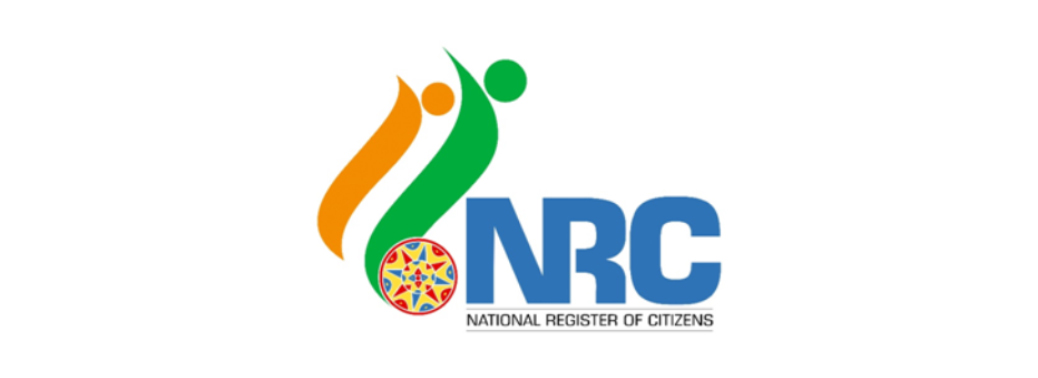
Why in News?
- In the run-up to the publication of the final National Register of Citizens (NRC) in Assam, citizenship has become the most talked about topic in the country.
- The Assam government has been taking various steps in relation to those who will be left out of the NRC, while the Supreme Court last week rejected a plea to include those born in India between after March 24, 1971 and before July 1, 1987 unless they had ancestral links to India.
- In any other Indian state, they would have been citizens by birth, but the law is different for Assam.
How is Citizenship Determined in India?
- Citizenship signifies the relationship between individual and state. It begins and ends with state and law, and is thus about the state, not people. Citizenship is an idea of exclusion as it excludes non-citizens.
- There are two well-known principles for grant of citizenship:
- Jus soli: confers citizenship on the basis of place of birth,
- Jus sanguinis: gives recognition to blood ties.
- From the time of the Motilal Nehru Committee (1928), the Indian leadership was in favour of the enlightened concept of jus soli.
- The racial idea of jus sanguis was rejected by the Constituent Assembly as it was against the Indian ethos.
- Citizenship is in the Union List under the Constitution and thus under the exclusive jurisdiction of Parliament. The Constitution does not define the term ‘citizen’ but gives, in Articles 5 to 11, details of various categories of persons who are entitled to citizenship.
- Unlike other provisions of the Constitution, which came into being on January 26, 1950, these articles were enforced on November 26, 1949 itself, when the Constitution was adopted.
- However, Article 11 itself confers wide powers on Parliament by laying down that “nothing in the foregoing provisions shall derogate from the power of Parliament to make any provision with respect to the acquisition and termination of citizenship and all matters relating to citizenship”. Thus, Parliament can go against the citizenship provisions of the Constitution.
- The Citizenship Act, 1955 was passed and has been amended four times — in 1986, 2003, 2005, and 2015. The Act empowers the government to determine the citizenship of persons in whose case it is in doubt. However, over the decades, Parliament has narrowed down the wider and universal principles of citizenship based on the fact of birth. Moreover, the Foreigners Act places a heavy burden on the individual to prove that he is not a foreigner.
So, who is, or is not, a citizen of India?
- Article 5: It provided for citizenship on commencement of the Constitution. All those domiciled and born in India were given citizenship. Even those who were domiciled but not born in India, but either of whose parents was born in India, were considered citizens. Anyone who had been an ordinary resident for more than five years, too, was entitled to apply for citizenship.
- Article 6: Since Independence was preceded by Partition and migration, Article 6 laid down that anyone who migrated to India before July 19, 1949, would automatically become an Indian citizen if either of his parents or grandparents was born in India. But those who entered India after this date needed to register themselves.
- Article 7: Even those who had migrated to Pakistan after March 1, 1947 but subsequently returned on resettlement permits were included within the citizenship net. The law was more sympathetic to those who migrated from Pakistan and called them refugees than to those who, in a state of confusion, were stranded in Pakistan or went there but decided to return soon.
- Article 8: Any Person of Indian Origin residing outside India who, or either of whose parents or grandparents, was born in India could register himself or herself as ab Indian citizen with Indian Diplomatic Mission.
- 1986 amendment: Unlike the constitutional provision and the original Citizenship Act that gave citizenship on the principle of jus soli to everyone born in India, the 1986 amendment to Section 3 was less inclusive as it added the condition that those who were born in India on or after January 26, 1950 but before July 1, 1987, shall be Indian citizen.
- Those born after July 1, 1987 and before December 4, 2003, in addition to one’s own birth in India, can get citizenship only if either of his parents was an Indian citizen at the time of birth.
- 2003 amendment: The then NDA government made the above condition more stringent, keeping in view infiltration from Bangladesh. Now the law requires that for those born on or after December 4, 2004, in addition to the fact of their own birth, both parents should be Indian citizens or one parent must be Indian citizen and other should not be an illegal migrant. With these restrictive amendments, India has almost moved towards the narrow principle of jus sanguinis or blood relationship. This lays down that an illegal migrant cannot claim citizenship by naturalisation or registration even if he has been a resident of India for seven years.
- Citizenship (Amendment) Bill: The amendment proposes to permit members of six communities — Hindus, Sikhs, Buddhists, Jains, Parsis and Christians from Pakistan, Bangladesh and Afghanistan — to continue to live in India if they entered India before December 14, 2014. It also reduces the requirement for citizenship from 11 years out of the preceding 14 years, to just 6 years.
- Two notifications also exempted these migrants from the Passport Act and Foreigner Act. A large number of organisations in Assam protested against this Bill as it may grant citizenship to Bangladeshi Hindu illegal migrants.
What is different in Assam?
- The Assam Movement against illegal immigration eventually led to the historic Assam Accord of 1985, signed by Movement leaders and the Rajiv Gandhi government. Accordingly, the 1986 amendment to the Citizenship Act created a special category of citizens in relation to Assam.
- The newly inserted Section 6A laid down that all persons of Indian origin who entered Assam before January 1, 1966 and have been ordinary residents will be deemed Indian citizens.
- Those who came after 1 January, 1966 but before March 25, 1971, and have been ordinary residents, will get citizenship at the expiry of 10 years from their detection as foreigner. During this interim period, they will not have the right to vote but can get an Indian passport.
- Identification of foreigners was to be done under the Illegal Migrants (Determination by Tribunal) Act, (IMDT Act), 1983, which was applicable only in Assam while the Foreigners Act, 1946 was applicable in the rest of the country.
- The provisions of the IMDT Act made it difficult to deport illegal immigrants. On the petition of Sarbananda Sonowal (now Chief Minister), the Act was held unconstitutional and struck down by the Supreme Court in 2005.
- This was eventually replaced with the Foreigners (Tribunals of Assam) Order, 2006, which again was struck down in 2007 in Sonowal II.
- In the IMDT case, the court considered classification based on geographical considerations to be a violation of the right to equality under Article 14. In fact, another such variation was already in place. While the cut-off date for Western Pakistan is July 19, 1949, for Eastern Pakistan the Nehru-Liaquat Pact had pushed it to 1950.
INFORMATION FUSION CENTRE – INDIAN OCEAN REGION (IFC-IOR)
24, Aug 2019

Why in News?
- The NMDA project was launched in accordance with the vision of PM on SAGAR (Security and Growth for All in the Region).
IFC- IOR:
- The IFC-IOR was established with the vision of strengthening maritime security in the region and beyond, by building a common coherent maritime situation picture and acting as a maritime information hub for the region.
- Through this Centre, information on “white shipping”, or commercial shipping, will be exchanged with countries in the region to improve maritime domain awareness in the Indian Ocean.
- The IFC has been established at the Navy’s Information Management and Analysis Centre (IMAC) in Gurugram, which is the single point centre linking all the coastal radar chains to generate a seamless real-time picture of the nearly 7,500-km coastline.
- IFR-IRO would also ensure that the entire region is benefited by mutual collaboration and exchange of information and understanding the concerns and threats which are prevalent in the region.
LINKING OF AADHAAR INFORMATION TO SOCIAL MEDIA ACCOUNTS
22, Aug 2019
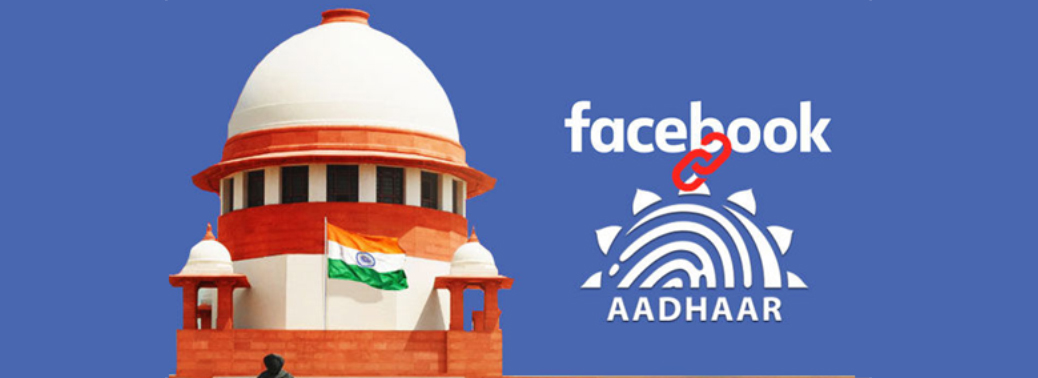
- Context: Supreme Court agreed to hear a plea by Facebook to transfer to the apex court four petitions filed in the High Courts of Madras, Bombay and Madhya Pradesh seeking the “linking of Aadhaar information to social media accounts”.
What is The Issue?
- It all began with a petition by Antony Clement Rubin in Madras High Court last year, seeking the court’s direction to the Central government to make it mandatory for social media users to link their Aadhaar number with email IDs.
- Social media profiles of users need to be linked with Aadhaar numbers to check circulation of fake, defamatory and pornographic content as also anti-national and terror material; the Supreme Court was informed.
- The suggestion was made by the Tamil Nadu government which is facing resistance from Facebook Inc on the ground that sharing of 12-digit Aadhaar number, the Biometric Unique Identity, would violate the privacy policy of users.
State Government’s View:
- The linking of social media profiles of the users with the Aadhaar was needed to check fake news, defamatory articles, pornographic materials, anti-national and terror contents in the online media.”
What Happens If User Profiles on Social Media Platforms Are Linked with Their Aadhaar Number?
- The linking of user profiles on social media with Aadhaar would make every message and post by the user traceable.
- Though the move will serve as a deterrent to social media instigators and perpetrators of defamatory and fake posts, it would also violate the privacy of the users, keeping a record of each message along with the registered mobile number or email account. This would mean the end of private communications.
- The privacy experts fear that the linking would allow India’s nationalist government to force social media platforms to become surveillance tools.
Facebook’s View:
- Facebook Inc said that it cannot share the Aadhaar number with a third party as the content on its instant messaging Whatsapp was end-to-end encrypted and even they do not have access to it.
- Facebook has contended that there are four petitions including — two in Madras High Court, one in Bombay and one in Madhya Pradesh High Courts — and they contained almost similar prayers.
- Facebook plea to transfer all this petition to Supreme Court
- Supreme Court agreed to hear a plea by Facebook to transfer to the apex court four petitions filed in the High Courts of Madras, Bombay and Madhya Pradesh seeking the “linking of Aadhaar information to social media accounts”.
Issues Involved:
- The question is if linking social media to Aadhaar is breach of privacy.
- Question is whether Aadhaar can be shared with a private entity or not.
- Ordinance has been promulgated, which says that Aadhaar can be shared with a private entity, if there was a larger public interest involved.
Supreme Court Privacy Judgement:
- Supreme court Observation on Social media
- Companies such as Google, Facebook, Uber, Airbnb, Amazon, etc. probably have more data on users than the governments of their countries.
- The privacy of citizens needs protection from these non-state players, too.
NOTIFIABLE DISEASES
17, Aug 2019
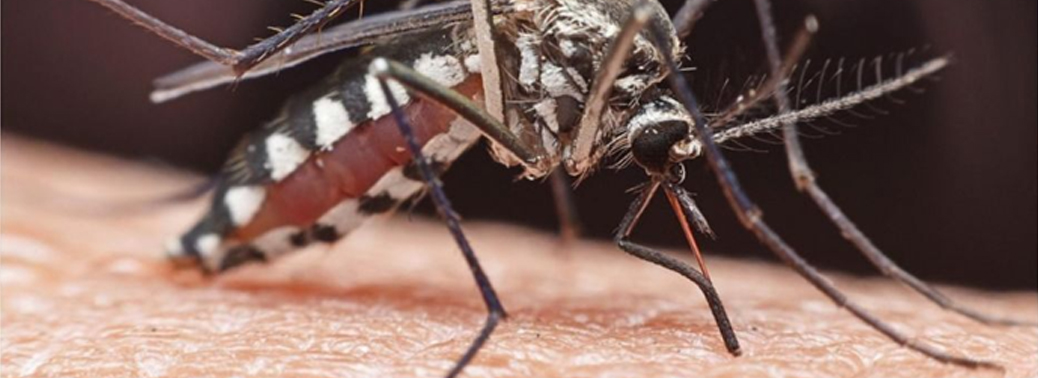
Context:
Union Health Minister Dr Harsh Vardhan asked the Delhi government to make malaria and dengue notifiable diseases.
What is Notifiable Disease?
- A notifiable disease is any disease that is required by law to be reported to government authorities.
- The collation of information allows the authorities to monitor the disease, and provides early warning of possible outbreaks.
- The World Health Organization’s International Health Regulations, 1969 require disease reporting to the WHO in order to help with its global surveillance and advisory role.
Significance of Notifying Disease:
- Making a disease legally notifiable by doctors and health professionals allows for intervention to control the spread of highly infectious diseases.
- Registered medical practitioners need to notify such diseases in a proper form within three days, or notify verbally via phone within 24 hours depending on the urgency of the situation.
- This means every government hospital, private hospital, laboratories, and clinics will have to report cases of the disease to the government.
- The process helps the government keep track and formulate a plan for elimination and control.
- In less infectious conditions, it improves information about the burden and distribution of disease.
Other Notified Diseases:
- The Centre has notified several diseases such as cholera, diphtheria, encephalitis, leprosy, meningitis, pertussis (whooping cough), plague, tuberculosis, AIDS, hepatitis, measles, yellow fever, malaria dengue, etc.
Concern:
- The onus of notifying any disease and the implementation lies with the state government.
- Any failure to report a notifiable disease is a criminal offence and the state government can take necessary actions against defaulters.
About Malaria:
- It is a life-threatening disease caused by parasites belonging to the Plasmodium genus, which are transmitted to people through the bites of infected female Anopheles mosquitoes. The mosquito-borne blood disease is preventable and curable.
- Plasmodium parasite infects a variety of species and different types of Plasmodium genus replicate at different rates, changing how quickly the symptoms escalate, and the severity of the disease.
Causes of Malaria:
There are many factors that can cause malaria, such as:
- Bitten by a malarial vector (Anopheles stephensi)
- Use of shared and infected syringes.
- Organ transplantation.
- Transfusion.
- From an infected mother to her baby during birth.
- It is caused by the parasites –
- Plasmodium viviax (P.vivax)
- Plasmodium falciparum (P.falciparum)
- Plasmodium malariae (P.malariae)
- Plasmodium ovale (P.ovale)
Symptoms of Malaria:
Symptoms of malaria are exhibited within 7 to 18 days of being infected. Common symptoms include:
- Fever, fatigue, chills, vomiting, and headaches
- Diarrhoea, anaemia and muscle pain
- Profuse sweating and convulsions
- Bloody stools.
- In severe cases, malaria can be devastating; it can lead to seizures, coma and eventually, death.
Vaccine:
- The RTS,S vaccine is the first, and to date, the only, vaccine that has demonstrated that it could significantly reduce malaria in children.
- RTS,S is a scientific name given to this malaria vaccine candidate and represents its composition.
- It aims to trigger the immune system to defend against the first stages of malaria.
- This is when the parasite enters the human host’s bloodstream through a mosquito bite and infects liver cells.
- The vaccine is designed to prevent the parasite from infecting the liver.
- The vaccine has been developed by GSK (former GlaxoSmithKline), which is donating about 10 million doses of the product for the pilot.
- It was created in 1987 by GSK, and was subsequently developed with support from the Bill and Melinda Gates Foundation.
- In clinical trials, the vaccine was found to prevent approximately 4 in 10 malaria cases, including 3 in 10 cases of life-threatening severe malaria.
NATIONAL ESSENTIAL DIAGONISTIC LIST (NEDL)
17, Aug 2019
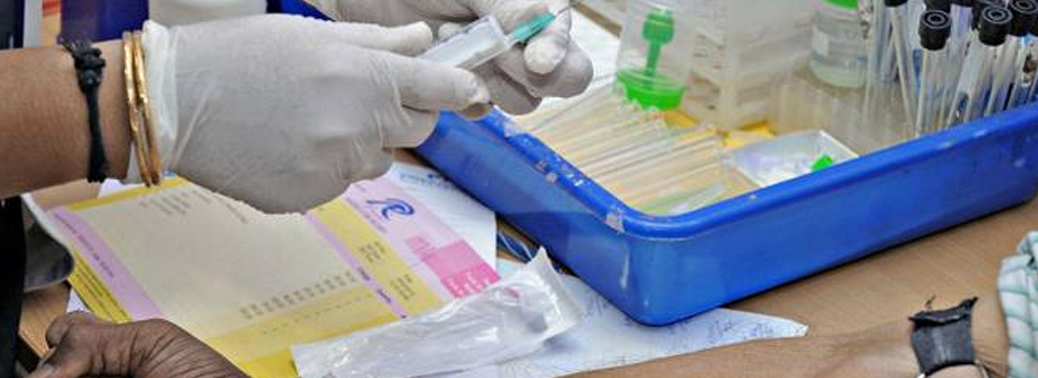
- Context:India has got its first National Essential Diagnostics List (NEDL) finalised by the Indian Council of Medical Research (ICMR) which aims to bridge the current regulatory system’s gap that do not cover all the medical devices and invitro diagnostic device (IVD).
Concerns Before:
- The rates for diagnostic tests vary widely between different pathological laboratories, the same simple blood sugar test can cost anywhere between Rs 25 to Rs 250 depending on the laboratory.
Objectives:
- An essential diagnostic list has three objectives—
- making essential tests available at public health care centres,
- standardise the tests
- price control
What It Will Change?
- This would eventually allow the government to make a set of diagnostic tests, each with a price cap, to be available at every level of health care— from village to a district level hospital.It will push for making diagnostics available and affordable and government commitment to making these tests available. It’s a common knowledge that the prices of tests is variable across different sectors,”
- The national essential diagnostics list (NEDL) provides an expanded basket of tests at different levels of the public health system. Implementation of NEDL will enable improved health care delivery through evidence-based care, improved patient outcomes and reduction in out-of-pocket expenditure.
WHO’s Essential Diagnostics List:
- Essential Diagnostics List is intended to serve as a reference for countries to update or develop their own list of essential diagnostics.
- In order to truly benefit patients, national governments will need to ensure appropriate and quality-assured supplies, training of health care workers and safe use.To that end, WHO will provide support to countries as they adapt the list to the local context.
- The WHO EDL contains a list 58 tests to be carried out at primary health care centres and another 55 tests for the reference laboratories.
What is an Essential Medicines List?
- As per the World Health Organisation (WHO), Essential Medicines are those that satisfy the priority health care needs of the population.
- The list is made with consideration to disease prevalence, efficacy, safety and comparative cost-effectiveness of the medicines.
- Such medicines are intended to be available in adequate amounts, in appropriate dosage forms and strengths with assured quality. They should be available in such a way that an individual or community can afford.
Purpose of the National List of Essential Medicines:
- Guide safe and effective treatment of priority disease conditions of a population
- Promote the rational use of medicines
- Optimize the available health resources of a country It can also be a guiding document for:
- State governments to prepare their list of essential medicines
- Procurement and supply of medicines in the public sector
- Reimbursement of cost of medicines by organizations to its employees
- Reimbursement by insurance companies
- Identifying the ‘MUST KNOW’ domain for the teaching and training of health care professionals
EC KICKS OFF DELIMITATION PROCESS
16, Aug 2019

Why in News?
- The Election Commission (EC) held its first meeting for the delimitation exercise, necessitated under the new Jammu and Kashmir Reorganisation Act.
What is Delimitation?
- The Delimitation commission or Boundary commission of India is a commission established by the Government of India under the provisions of the Delimitation Commission Act.
- The main task of the commission is redrawing the boundaries of the various assembly and Lok Sabha constituencies based on a recent census.
- The representation from each State is not changed during this exercise.
- However, the number of SC and ST seats in a state is changed in accordance with the census.
- The present delimitation of constituencies, across the country has been done on the basis of 2001 census under the provisions of Delimitation Act, 2002.
History of delimitation in Jammu and Kashmir:
- The Constitution of Jammu and Kashmir, enacted in 1957, was based on the Maharaja’s Constitution of Jammu and Kashmir of 1939.
- After accession to India, the State Constituent Assembly was constituted under the 1939 Constitution, but Sheikh Abdullah’s administration arbitrarily carved out 30 seats for Jammu region and 43 seats for Kashmir region and two seats for Ladakh region. This regional disparity became entrenched thereafter: Kashmir (46), Jammu (37) and Ladakh (four).
- The last time a delimitation exercise took place in the state was also under President’s Rule, as far back as 1995 in extremely difficult circumstances by the Justice (retd) KK Gupta Commission.
- Incidentally, the Constitution provides for delimitation every 10 years, the next delimitation of assembly constituencies should have logically taken place in 2005.
- However, in 2002, the Farooq Abdullah government chose to freeze delimitation until 2026 by amending the Jammu & Kashmir Representation of the People Act 1957 and Section 47(3) of the Constitution of Jammu & Kashmir.
- At the moment there are seven seats reserved for SC in the assembly, all in the Jammu division which haven’t been rotated since 1996 — Chamb, Domana, Ranbir Singh Pura, Samba, Hiranagar, Chenani and Ramban (separate) in Jammu, Kathua and Udhampur district, respectively.
Highlights:
- Though the home ministry is yet to provide any formal instruction or information on the reorganization and delimitation of Jammu and Kashmir, the EC discussed how it will deal with the issue after receiving the notification.
- The Jammu and Kashmir Reorganisation Act, 2019, provides for increasing the number of assembly seats in the newly formed Union territory of Jammu and Kashmir from 107 to 114.
- Ladakh will be a Union territory without a legislative assembly.
- Of the 114 seats, 24 have been kept aside for areas under Pakistan Occupied Kashmir (PoK), which means elections will be conducted for 90 seats.
- The old Assembly had strength of 111 seats (again 24 kept aside for PoK) with four seats for Ladakh region.
- That means 7 extra seats will be added to the effective strength of the House.
SUPREME COURT (NUMBER OF JUDGES) AMENDMENT BILL, 2019
15, Aug 2019

Context:
- President Ram Nath Kovind gave his assent to the Supreme Court (Number of Judges) Amendment Bill, which will increase the number of Supreme Court judges from 30 to 33.
Constitution on Supreme Court Judges:
- The organisation, independence, jurisdiction, powers and functions of the Supreme Court are provided in articles 124 to 147 in Part V of the Constitution of India.
Number of Judges:
- Since February 2009, Supreme Court of India has total sanctioned strength 31 judges including the Chief Justice. The original constitution had fixed sanctioned strength of the court at 8 and left the matter to parliament to increase the number of judges as needed by making a law.
Pending Cases:
- 11,59,331 cases are pending in the top court.
Features:
- The Act fixes the maximum number of judges in the Supreme Court at 30 judges (excluding the Chief Justice of India). The Bill increases this number from 30 to 33.
- With no vacancy, the present strength of the apex court is 31, including the chief justice of India.. After the law comes into force, the sanctioned strength of SC will be 33, besides the CJI.
- The move to increase the strength of judges by 3 or 10 per cent comes against the backdrop of rising cases in the top court which stand at nearly 60,000.
Background:
- The Constitution makers envisioned that the Supreme Court would play a dual role:
- As an appellate court, and
- As a court with original jurisdiction over Centre-State disputes, cases involving substantial questions of law and matters of constitutional law.
- But only a small fraction of admitted cases are filed under the court’s original jurisdiction.
- It is appeals filed under special leave jurisdiction – exercised at the judges’ discretion – that overwhelm the Supreme Court.
- This is acknowledged in the Bill’s statement of objects and reasons, which notes that the number of appeals filed in the Supreme Court has increased, necessitating an increase in its strength.
US Example:
- The Supreme Court need not admit every appeal. But it often does. One study found that in 2014, it admitted approximately 40% of the 35,000-odd appeals filed.
- Contrast this, for instance, with the US Supreme Court – eight judges in all – which receives approximately 7,000-8,000 petitions appealing a lower court’s decision. It hears oral argument in about 80 cases.
- The Indian Supreme Court’s openness to appeals is best explained by its desire to correct as many injustices as possible, no matter how small.
- Supreme Court judges are drawn almost exclusively from the High Courts, which function primarily as appellate courts.
- The average Supreme Court judge has extensive experience in error correction – the key function of an appellate judge – rather than in adjudicating constitutional law questions. Given their experience, Supreme Court judges’ cognitive bias towards error correction is unsurprising.
- But in reaching out to correct small injustices, the Supreme Court is doing a greater injustice.Justice PN Bhagwati, former Chief Justice of India, articulated this sentiment powerfully in one of his judgments. Acknowledging the agonising decisions that our judges make every day, he said,
- “Sometimes, we judges feel that when a case comes before us and we find that injustice has been done, how can we shut our eyes to it.”
- But he continued, “the answer to this anguished query is that the judges of the apex court may not shut their eyes to injustice but they must equally not keep their eyes too wide open, otherwise the apex court would not be able to perform the high and noble role which it was intended to perform according to the faith of the Constitution makers.”
A Growing Bench:
- Justice Bhagwati’s clarity notwithstanding, the Supreme Court, like the government, is prey to the misconception that case backlog and delay arise from having too few judges.
- Successive Chief Justices of India have endorsed expanding the judiciary as the primary solution.
- Thus, the strength of the Supreme Court – which was originally 10 – was increased to 13, then 17, 25, and finally 30. But the judicial backlog has only increased.
- In March 2007, shortly before the strength of the court was increased from 25 to 30, close to 42,000 cases were pending before it. In the decade since, the backlog has increased by around 20,000 cases. In other words, more cases were admitted than resolved.
- If we want our judges to judge better, the government must do more than increase the strength of the Supreme Court.
- At a minimum, it must develop institutional mechanisms to collect, track and publish detailed statistics on cases filed in the Supreme Court – including the number and types of appeals admitted by each judge – to inject some transparency into its appellate function.
Way Forward:
- For far too long, the lack of adequate data on the Supreme Court’s functioning has scuttled opportunities for introspection and critique.
- And our judges must evolve a coordinated response to the high rate of admission of appeals.
- Having some, but not all judges, move in the direction of admitting fewer cases would be a Pyrrhic victory, making for an inconsistent, and ultimately unjust, Supreme Court.
- It is time that the Supreme Court moved closer to the difficult balance that Justice Bhagwati articulated years ago. Less, as he hinted, is more.
CHIEF OF DEFENCE STAFF (CDS)
15, Aug 2019

Context:
- In his Independence Day address, Prime Minister announced the creation of the post of Chief of Defence Staff to provide “effective leadership at the top level” to the three wings of the armed forces, and to help improve coordination among them.
What is the office of the Chief of Defence Staff (CDS)?
- The CDS is a high military office that oversees and coordinates the working of the three Services, and offers seamless tri-service views and single-point advice to the Executive (in India’s case, to the Prime Minister) on long-term defence planning and management, including manpower, equipment and strategy, and above all, “jointsmanship” in operations.
- In most democracies, the CDS is seen as being above inter-Service rivalries and the immediate operational preoccupations of the individual military chiefs.
- The role of the CDS becomes critical in times of conflict.
- Most countries with advanced militaries have such a post, albeit with varying degrees of power and authority.
- The United States Chairman Joint Chiefs of Staff Committee (CJCSC), for example, is extremely powerful, with a legislated mandate and sharply delineated powers.
- He is the most senior military officer and military adviser to the President, and his remit extends to the National Security Council, the Homeland Secuirty Council, and the Defence Secretary.
In US:
- The Chiefs of the United States Army, Navy, Air Force, Marine Corps, and National Guard too, are members of the JCSC.
- All, including the CJCSC, are four-star officers, but by statute only the CJCSC is designated as the “principal military adviser”.
- However, the CJCSC is barred from exercising any operational authority over combat commanders in varied theatres; this authority rests exclusively with the US President.
So, why had India not appointed a CDS until now?:
- India has had a feeble equivalent known as the Chairman, Chiefs of Staff Committee (CoSC); but this is a toothless office, given the manner in which it is structured.
- The seniormost among the three Service Chiefs is appointed to head the CoSC, an office that lapses with the incumbent’s retirement.
Issue with Chiefs of Staff Committee (CoSC):
- In 2015, then Defence Minister Manohar Parrikar had described the CoSC arrangement as “unsatisfactory”, and its Chairman as a “figurehead”. The post did not further tri-service integration, resulting in inefficiency and an expensive duplication of assets,
- The CoSC system is a leftover from the colonial era, with only minor changes being carried out over the years.Apprehensions in the political class about a powerful military leader, along with inter-Services bickering, have long worked to disincentivise the upgrade of the post.
Kargil Review Committee (KRC):
- The first proposal for a CDS came from the 2000 Kargil Review Committee (KRC), which called for a reorganisation of the “entire gamut of national security management and apex decision-making and structure and interface between the Ministry of Defence and the Armed Forces Headquarters”.
- The Group of Ministers Task Force that studied the KRC Report and recommendations, proposed to the Cabinet Committee on Security that a CDS, who would be five-star officer, be created.In preparation for the post, the government created the Integrated Defence Staff (IDS) in late 2002, which was to eventually serve as the CDS’s Secretariat.
- However, over the past 17 years, this has remained yet another nebulous department within the military establishment.
But what happened to the proposal?
- No consensus emerged among the Services, with the IAF especially opposed to such a move.The UPA, then in opposition, was against the idea of concentrating too much military power in the CDS’s post.
- The Ministry of Defence (MoD) too, opposed it subtly for the same reasons, and because it could disrupt civil-military ties in the latter’s favour.
What is the case for having a CDS?
- Although the KRC did not directly recommend a CDS — that came from the GoM — it underlined the need for more coordination among the three Services, which was poor in the initial weeks of the Kargil conflict.
- The KRC Report pointed out that India is the only major democracy where the Armed Forces Headquarters is outside the apex governmental structure.
- It observed that Service Chiefs devote most of their time to their operational roles, “often resulting in negative results”.
- Long-term defence planning suffers as day-to-day priorities dominate.
- Also, the Prime Minister and Defence Minister do not have the benefit of the views and expertise of military commanders, in order to ensure that higher level defence management decisions are more consensual and broad-based.
Arguments Against?
- Theoretically, the appointment of a CDS is long overdue, but there appears to be no clear blueprint for the office to ensure its effectiveness.
- India’s political establishment is seen as being largely ignorant of, or at best indifferent towards, security matters, and hence incapable of ensuring that a CDS works.
- Militaries by nature tend to resist transformation.
- In the US, the 1986 Goldwater-Nichols Act elevated the Chairman from first among equals to the “principal military advisor” to the President and the Secretary of Defence.
- In the Indian context, critics fear, the absence of foresight and understanding might end up making the CDS just another case of “jobs for the boys”.
Who at present advises India’s Prime Minister on military matters?
- In effect it is the National Security Adviser.
- This has been especially so after the Defence Planning Committee was created in 2018, with NSA Ajit Doval as its chairman, and the foreign, defence, and expenditure secretaries, and the three Service Chiefs as members.
RS CLEARS BILL TO INCREASE THE NUMBER OF JUDGES IN THE SUPREME COURT
09, Aug 2019
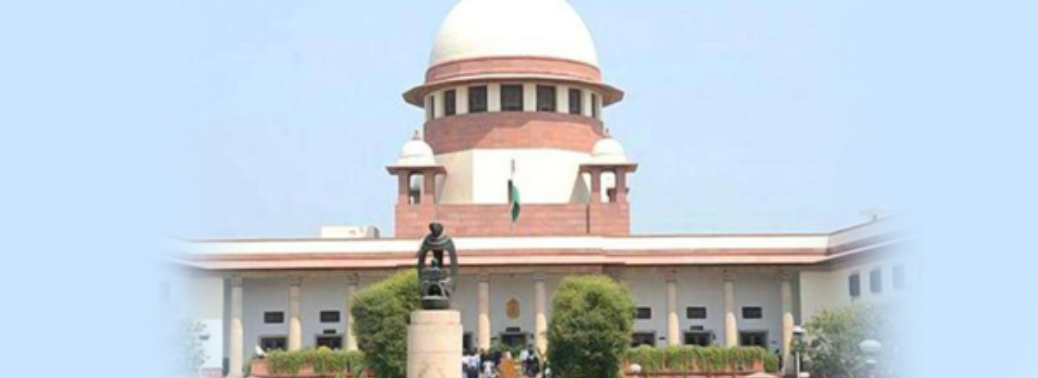
Why in News?
- The Supreme Court (Number of Judges) Amendment Bill, 2019 was passed by the Rajya Sabha.
Highlights:
- The Bill amends the Supreme Court (Number of Judges) Act, 1956.
- The Act fixes the maximum number of judges in the Supreme Court at 30 judges (excluding the Chief Justice of India).
- The Bill increases this number from 30 to 33.
- Lok Sabha had already passed the Bill.
Number of Judges in the Supreme Court:
- Initially the Constitution of India provided for a supreme court with a chief justice and 7 judges.In the early years, a full bench of the Supreme Court sat together to hear the cases presented before them.
- As the work of the court increased and cases began to accumulate, parliament increased the number of Judges (including the CJI) from the original 8 in 1950 to 11 in 1956, 14 in 1960, 18 in 1978, 26 in 1986 and 31 in 2009.
Eligibility to become a Judge of the Supreme Court:
- Article 124 of the constitution describes the following qualifications for a Judge of the Supreme Court:
- A citizen of India not exceeding 65 years age.
- He must be a judge of one high court or more (continuously), for at least five years, or
- An advocate there, for at least ten years, or
- A distinguished jurist, in the opinion of the President.
ARTICLE 371 SPECIAL PROVISIONS FOR OTHER STATES
08, Aug 2019
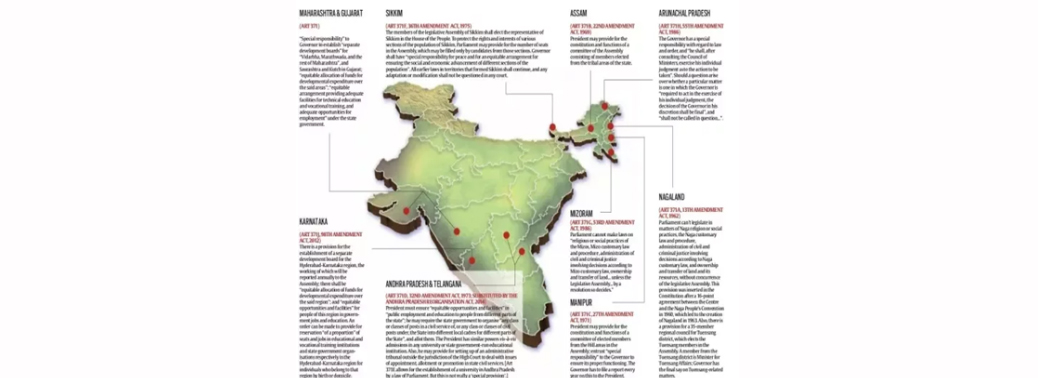
Why in News?
- The central government has revoked the ‘special status’ granted to Jammu and Kashmir by the Constitution. However, a range of “special provisions” for as many as 11 other states continue to be part of the Constitution.
Highlights:
- Part XXI of the Constitution, ‘Temporary, Transitional and Special Provisions’, includes, apart from Article 370 (Temporary Provisions with respect to the State of Jammu and Kashmir) Articles 371, 371A, 371B, 371C, 371D, 371E, 371F, 371G, 371H, and 371J, which define special provisions with regard to other states of the Indian Union.
- All these provisions take into account the special circumstances of individual states, and lay down a wide range of specific safeguards that are deemed important for these states.
- In these range of Articles from 371 to 371J, Article 371I, which deals with Goa, stands out in the sense that it does not include any provision that can be deemed “special”. Article 371E, which deals with Andhra Pradesh and Telangana, too, is not that “special”.
- Existence of the provisions described in Articles 371, 371A-H, and 371J shows that other princely states, too, negotiated the terms and conditions of their entry into the Union, or sought special constitutional protections in view of their unique needs and conditions.
- There is, however, one important difference between Articles 370 and 371 on the one hand, and Articles 371A-H and 371J on the other.
- Articles 370 and 371 have been part of the Constitution from the time of its commencement on January 26, 1950. Articles 371A-H and 371J, however, were incorporated into the Constitution by Parliament through amendments under Article 368. This Article describes the “power of Parliament to amend the Constitution and procedure therefor”.
Maharashtra and Gujarat (Article 371):
- The Governor has a “special responsibility” to establish “separate development boards” for “Vidarbha, Marathwada, and the rest of Maharashtra”, and Saurashtra and Kutch in Gujarat; ensure “equitable allocation of funds for developmental expenditure over the said areas”, and “equitable arrangement providing adequate facilities for technical education and vocational training, and adequate opportunities for employment” under the state government.
Nagaland (Article 371A, 13th Amendment Act, 1962):
- Parliament cannot legislate in matters of Naga religion or social practices, the Naga customary law and procedure, administration of civil and criminal justice involving decisions according to Naga customary law, and ownership and transfer of land and its resources, without the concurrence of the Legislative Assembly of the state.
- This provision was inserted in the Constitution after a 16-point agreement between the Centre and the Naga People’s Convention in 1960, which led to the creation of Nagaland in 1963.
- Also, there is a provision for a 35-member Regional Council for Tuensang district, which elects the Tuensang members in the Assembly. A member from the Tuensang district is Minister for Tuensang Affairs. The Governor has the final say on all Tuensang-related matters.
Assam (Article 371B, 22nd Amendment Act, 1969):
- The President of India may provide for the constitution and functions of a committee of the state Assembly consisting of members elected from the tribal areas of the state.
Manipur (Article 371C, 27th Amendment Act, 1971):
- The President of India may provide for the constitution and functions of a committee of elected members from the Hill areas of the state in the Assembly, and entrust “special responsibility” to the Governor to ensure its proper functioning. The Governor has to file a report every year on this subject to the President.
- Andhra Pradesh and Telangana (Article 371D, 32nd Amendment Act, 1973; substituted by the Andhra Pradesh Reorganisation Act, 2014).
- The President must ensure “equitable opportunities and facilities” in “public employment and education to people from different parts of the state”.
- He may require the state government to organise “any class or classes of posts in a civil service of, or any class or classes of civil posts under, the State into different local cadres for different parts of the State”, and allot them.
- The President has similar powers vis-à-vis admissions in any university or state government-run educational institution.
- Also, he may provide for setting up of an administrative tribunal outside the jurisdiction of the High Court to deal with issues of appointment, allotment or promotion in state civil services.
- Article 371E allows for the establishment of a university in Andhra Pradesh by a law of Parliament. But this is not really a ‘special provision’ in the sense of the other provisions in this part of the Constitution.
Sikkim (Article 371F, 36th Amendment Act, 1975):
- The members of the Legislative Assembly of Sikkim shall elect the representative of Sikkim in the House of the People. To protect the rights and interests of various sections of the population of Sikkim, Parliament may provide for the number of seats in the Assembly, which may be filled only by candidates from those sections.
- The Governor shall have “special responsibility for peace and for an equitable arrangement for ensuring the social and economic advancement of different sections of the population”. All earlier laws in territories that formed Sikkim shall continue, and any adaptation or modification shall not be questioned in any court.
Mizoram (Article 371G, 53rd Amendment Act, 1986):
- This provision lays down that Parliament cannot make laws on “religious or social practices of the Mizos, Mizo customary law and procedure, administration of civil and criminal justice involving decisions according to Mizo customary law, ownership and transfer of land unless the Legislative Assembly by a resolution so decides”.
Arunachal Pradesh (Article 371H, 55th Amendment Act, 1986):
- The Governor has a special responsibility with regard to law and order, and “he shall, after consulting the Council of Ministers, exercise his individual judgment as to the action to be taken”. Should a question arise over whether a particular matter is one in which the Governor is “required to act in the exercise of his individual judgment, the decision of the Governor in his discretion shall be final”, and “shall not be called in question…”
Karnataka (Article 371J, 98th Amendment Act, 2012):
- There is a provision for the establishment of a separate development board for the Hyderabad-Karnataka region, the working of which will be reported annually to the Assembly.
- There shall be “equitable allocation of funds for developmental expenditure over the said region”, and “equitable opportunities and facilities” for people of this region in government jobs and education.
- An order can be made to provide for reservation “of a proportion” of seats and jobs in educational and vocational training institutions and state government organisations respectively in the Hyderabad-Karnataka region for individuals who belong to that region by birth or domicile.
RBI CUT LENDING RATE BY 35 BASIS POINTS
08, Aug 2019
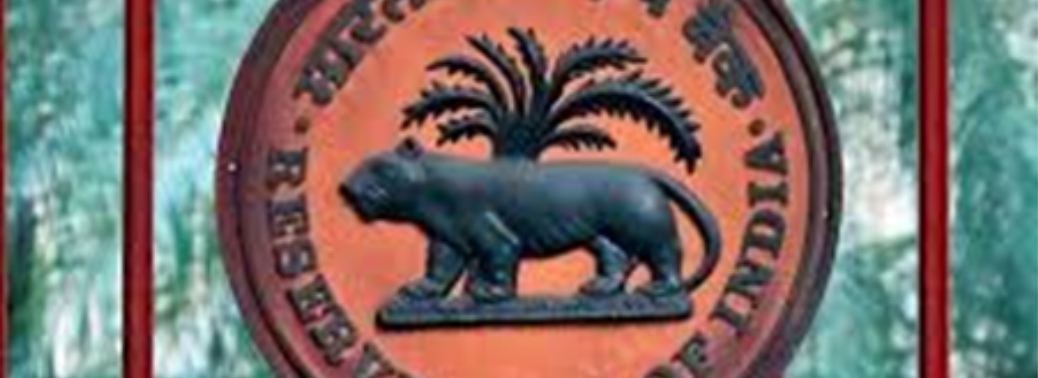
Context:
- In a bid to augur economic activity amidst slowing consumption demand, the monetary policy committee of Reserve Bank of India on Wednesday unanimously decided to go for its fourth cut this year.
Background:
- With a 35 basis point cut (highest this year) the repo rate, at which RBI lends to commercial banks, stood at a 9-year low of 5.4 per cent, since July 2010 when it was 5.25 per cent.
- The previous three cuts this year were 25 basis points each. Alongside a cut in the repo rate, the central bank also lowered its GDP growth projection from 7 per cent in June policy to 6.9 per cent now.
Why the Rate Cut?
- While inflation is a key consideration for a rate cut and it provided RBI the comfort to go for a cut, the decision was also taken to boost aggregate demand especially private investment.
- The monetary policy statement said that “inflation is currently projected to remain within the target over a 12-month ahead horizon”.
- The RBI statement further said that
- Domestic Economic activity continues to be weak,
- With the global slowdown and
- Escalating Trade Tensions posing downside risks.
- It added that while private consumption, the mainstay of aggregate demand, and investment activity remain sluggish.
Why Has Growth Been Revised Downwards GDP?
- This is the second consecutive policy statement where the RBI has lowered its GDP growth projection for 2019-20.
- While in June statement it revised it projection downward from 7.2 per cent (stated in April 2019) to 7 per cent.
- This time it further revised the growth projection further down to 6.9 per cent.
- The RBI said that “various high frequency indicators suggest weakening of both domestic and external demand conditions…business expectations Index of the Reserve Bank’s industrial outlook survey shows muted expansion in demand conditions in Q2, although a decline in input costs augurs well for growth”.
- It said that the monetary policy easing since February 2019 is expected to support economic activity, going forward.
Significance of Monetary Policy:
- It influences the interest rate in the economy — which is the cost of money when you don’t have it, and the reward for parting with it when you have it.
- In any economy, economic activity, which is measured by gross domestic product or GDP, happens by one of four ways.
- One, private individuals households spend money on consumption.
- Two, the government spends on its agenda.
- Three, private sector businesses “invest” in their productive capacity.
- And four, the net exports — which is the difference between what all of them spend on imports as against what they earn from exports.
- At the heart of any spending decision taken by any of these entities lies the question: What is the cost of money?
- Monetary policy essentially answers that question
- In every country, the central bank is mandated to decide the cost of money, which is more commonly known as the “interest rate” in the economy.
- While various factors make it difficult for a central bank to exactly dictate interest rates, as a thumb rule, RBI’s decision on the repo rate sets the markers for the rest of the economy. In other words, the EMI for your car or home is determined by what the RBI decides.
What Is the Repo Rate?
- Repo and Reverse repo are short for Repurchase agreements between the RBI and the commercial banks in the economy.
- In essence, the repo rate is the interest rate that the RBI charges a commercial bank when it borrows money from the RBI.
- As such, if the repo falls, all interest rates in the economy should fall. And that is why common people should be interested in the RBI’s monetary policy.
But the interest rate for consumer loans has not reduced by 110 bps since February. Why?
- In the real world, the “transmission” of an interest rate cut (or increase) is not a hundred per cent.
- And that is why, even though when the RBI cut by 35 bps lay consumers may only receive a much lower reduction in the interest rate on their borrowings.
- This is due to a lot of factors — but primarily, it has to do with the health of the concerned commercial bank.
Issues with Commercial Bank
- Over the past few years, almost all banks, especially the ones in the public sector, have seen their profits plummet because many of their past loans have turned out to be non-performing assets (in other words, they are not getting repaid).
- To cover for these losses, the banks have to use their existing funds, which would have otherwise gone to common consumers for fresh loans.
- Lag in monetary policy
- The reduced repo rate applies only to new borrowings of banks. The banks’ cost of existing funds is higher. Of course, funding costs would eventually come down — but this process would take time.
- This “lag” in monetary policy is a key variable in determining the efficacy of any rate cut by the RBI.
- It could take anywhere between 9 and 18 months for the full effect of an RBI decision to reflect in interest rates across the economy.
Will the rate cut bring Investments?
- Investments depend essentially on the “real” interest rate.
- The real interest rate is the difference between the repo rate and retail inflation.
- When making an investment decision, it is this interest rate that matters.
- As a variable, it allows an investor to compare the attractiveness of different economies.
- Real interest rates in India have been rising, and that is one of the biggest reasons why investments are not happening.
- The RBI’s move would reduce the real interest rate and hopefully attract more investment.
Monetary Policy Committee Composition
- Governor of the Reserve Bank of India – Chairperson, ex officio; (Shri Shaktikanta Das)
- Deputy Governor of the Reserve Bank of India, in charge of Monetary Policy- BP Kanungo (Member, ex officio).
- One officer of the Reserve Bank of India to be nominated by the Central Board – Member, ex officio; (Dr. Michael Debabrata Patra)
- Ravindra H. Dholakia, Professor, Indian Institute of Management, Ahmedabad – Member.
- Professor Pami Dua, Director, Delhi School of Economics – Member
- Shri Chetan Ghate, Professor, Indian Statistical Institute (ISI) – Member.
THE RAJASTHAN PROTECTION FROM LYNCHING BILL, 2019
08, Aug 2019
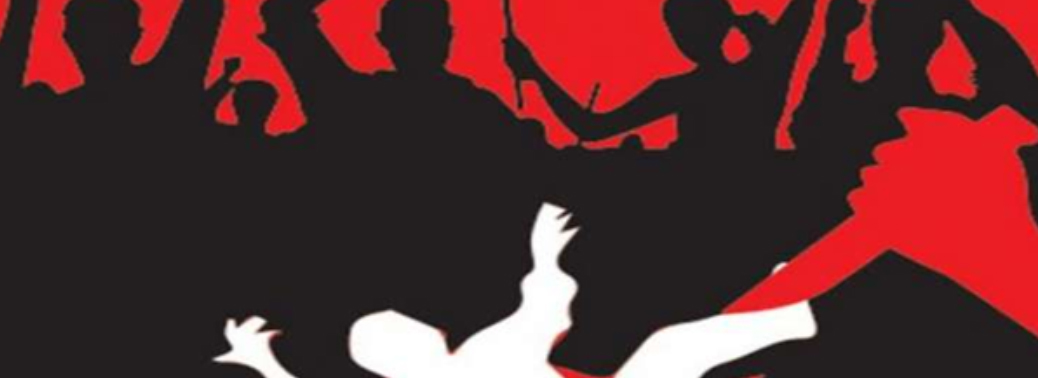
Context:
- The Rajasthan legislative assembly passed a Bill providing for life imprisonment and a fine from ₹1 lakh to ₹5 lakh to those convicted in cases of mob lynching leading to victim’s death.
Background:
- Rajasthan had witnessed a number of lynchings in 2017, beginning with that of dairy farmer Pehlu Khan in April 2017.
Sociology of Lynching Cases:
- The victims are always those living on the margins of the society.
- The cow-vigilantes are motivated by an urge to impose hegemony of values and cultural homogeneity, by obfuscating diverse practices and beliefs.
- They dare to defy the process of law, as their acts are powered by majoritarian sentiments.
- This is not an issue within the narrow confines of law and order; it plays out on a broader canvass of socio-cultural dynamics.
- It is the tussle between rule of law and belief-systems.
- It is the friction between the privileges of the mainstream and the struggles of survival by the marginalized.
Provision of Rajasthan Protection from Lynching Bill, 2019’:
- The Rajasthan Protection from Lynching Bill, 2019 makes mob lynching a cognisable, non-bailable and non-compoundable offence punishable with life imprisonment and a fine up to Rs 5 lakh.
- It defines lynching as “any act or series of acts of violence or aiding, abetting or attempting an act of violence, whether spontaneous or planned, by a mob on the grounds of religion, race, caste, sex, place of birth, language, dietary practices, sexual orientation, political affiliation, ethnicity”.
- Offences will be investigated by a police officer of the rank of inspector and above, and the DGP will appoint an officer of the rank of IG or above as State Coordinator.
- In cases of “hurt” and “grievous hurt”, the convict may get up to seven and 10 years in jail respectively; if it leads to death, the punishment is life imprisonment.
- The Bill also makes conspirators accountable.
Fast track Court
- The bill on lynching proposes setting up fast track courts, providing relief and rehabilitation measures, including free-of-cost treatment for victims, compensation, and establishment of relief camps.
- The bill also proposes the same level of punishment for conspiracy, abetment, aides or attempts to lynch.
Similar Amendment Bill in Madhya Pradesh:
- The proposed law in MP is an amendment to the existing Madhya Pradesh Govansh Vadh Pratishedh Act, 2004, which is against cow slaughter.
- The Bill seeks to amend Sub-section (2) of Section 9 of the 2004 Act and propose a minimum jail term of six months that may be extended to one year.
- When the same offence is committed by members of illegal assembly (mob) the minimum term will increase to one year and the maximum to five years.
- The Bill proposes a lower term for those who abet and those who attempt to commit the crime.
- punishment will double in case of those convicted for an offence they were previously convicted of.
- The minimum fine is Rs 5,000 and the maximum Rs 50,000.
- The Bill seeks to insert Section 6D. While the rules are yet to be formed, these will specify who issues the transit permit of cow progeny, which will be pasted prominently on the vehicle.
- There is no provision in the 2004 legislation for issuing transit permit from other states.
Guideline by Supreme Court in Case of Lynching:
- The states shall designate a senior police officer not below the rank of police superintendent as nodal officer in each district. These officers will set up a task force to be assisted by one DSP-rank officer for taking measures to prevent mob violence and lynching. The task force will gather intelligence reports on people likely to commit such crimes or who are involved in spreading hate speeches, provocative statements and fake news
- The state governments shall immediately identify districts, sub-divisions and villages where instances of lynching and mob violence have been reported in the recent past. The process of identification should be done within a period of three weeks from the date of the judgment.
Remedial Measures:
- Despite the preventive measures taken by the state police, if it comes to the notice of the local police that an incident of lynching or mob violence has taken place, the jurisdictional police station shall immediately lodge an FIR.
Deterrent Punishment:
- The trial court must ordinarily award the maximum sentence under the provisions of the IPC.
Punitive Measures:
- Departmental action must be taken against police or district officials who fail to act against the perpetrators. Such failure will be considered as an act of deliberate negligence and/or misconduct for which appropriate action must be taken. The action shall be taken to its logical conclusion preferably within six months.
Conclusion:
- This is a complex issue which raises the conundrum of whether a democratic government should merely reflect majoritarian will or should pursue higher values of equality and justice and Bill against Mob Lynching is one step towards Justice.
BILL MANDATING DEATH PENALTY FOR ‘HONOUR KILLING’ PASSED IN RAJASTHAN ASSEMBLY
08, Aug 2019

- Context: The Rajasthan Prohibition of Interference with the Freedom of Matrimonial Alliances in the Name of Honour and Tradition Bill, 2019 was passed by Rajasthan Assembly
Background:
- In the Past five years in the state, 71 cases of illegal diktat given by ‘Khap Panchayats’ (caste councils which function like kangaroo courts) were registered and 10 cases of honour killing occurred in which four men and eight women were killed.
- Such cases have increased in the past few years and have become hurdle in societal development
Key Highlights of The Bill:
- The Bill provisions punishment of death penalty or life imprisonment till natural death for killing a couple or either of them in the name of honour.
- According to the Bill whoever causes death of a couple or either of them on the basis that marriage of such couple has dishonoured, or brought disrepute to the caste, community or family shall be punished with death, or with imprisonment for life, which shall mean imprisonment for the remainder of that person’s natural life, and with fine which may extend to ₹5 lakh.
- If the couple or either of them is grievously hurt, the punishment will be from 10 years rigorous imprisonment to imprisonment for life and with fine of maximum ₹3 lakh, whereas the punishment will be three to five years imprisonment with fine which may extend to ₹2 lakh in case of simple injuries.
- According to the Bill, Sub Divisional Magistrate or the District Magistrate shall receive any request or information from any person or persons seeking protection from any unlawful assembly, or from any other person who is likely to or who have been objecting to any lawful marriage.
- No person or group shall assemble at any time with the view or intention to deliberate on or condemn any marriage, not prohibited by law, on the basis that such marriage has dishonoured the caste or community tradition or brought disrepute to all or any of the persons forming part of the assembly or the family or the people of the locality concerned.
- Such gathering shall be treated unlawful and every person convening or organising such assembly, and every member, thereof, participating therein directly or indirectly shall be punishable with imprisonment for a term not less than six months, but may extend to five years and shall also be liable to fine which may extend to ₹1 lakh.
Objectives of The Bill:
- There has been a spurt in illegal intimidation by self-appointed bodies for bringing pressure against ‘sagotra’ marriages and inter-caste, inter-community and inter-religious marriages between two consenting adults in the name of vindicating the honour of family, caste or community.
- Although, such intimidation or acts of violence constitute offences under the Indian Penal Code, yet, it is necessary to prevent assemblies which take place to condemn such alliances as also to punish such acts of violence and criminal intimidation severely.
WHAT HAS CHANGED IN JAMMU AND KASHMIR AFTER SCRAPPING ARTICLE 370?
07, Aug 2019
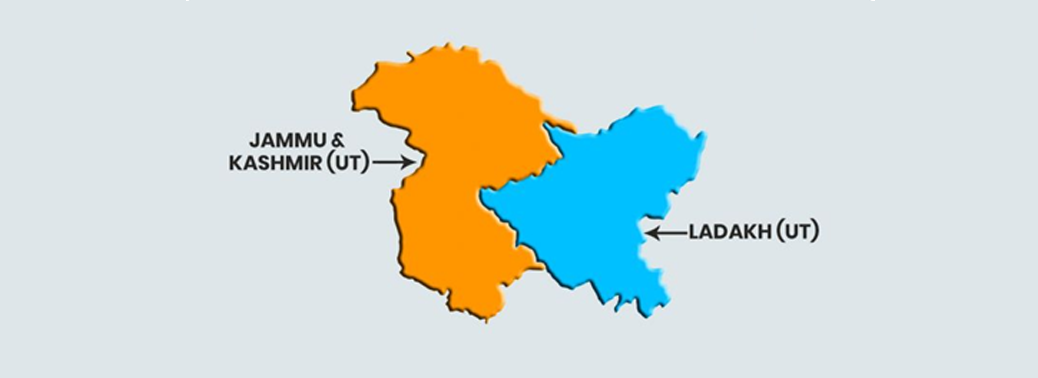
Background:
- This is the first time that Article 370 has been used to amend Article 367 (which deals with Interpretation) in respect of Jammu and Kashmir, and this amendment has then been used to amend Article 370 itself.
Has Article 370 been scrapped?
- The Constitution (Application to Jammu and Kashmir) Order, 2019, issued by President “in exercise of the powers conferred by Clause (1) of Article 370 of the Constitution”, has not abrogated Article 370.
- While this provision remains in the statute book, it has been used to withdraw the special status of Jammu and Kashmir.
- President Order
- The Presidential Order has extended all provisions of the Indian Constitution to Jammu and Kashmir.
- It has also ordered that references to the Sadr-i-Riyasat of Jammu and Kashmir shall be construed as references to the Governor of the state, and “references to the Government of the said State shall be construed as including references to the Governor of Jammu and Kashmir acting on the advice of his Council of Ministers”.
What is the status of Article 35A now?
- Article 35A stems from Article 370, and was introduced through a Presidential Order in 1954.
- Article 35A does not appear in the main body of the Constitution — Article 35 is followed by Article 36 — but appears in Appendix I.
- Article 35A empowers the Jammu and Kashmir legislature to define the permanent residents of the state, and their special rights and privileges.
- Presidential Order has extended all provisions of the Constitution to Jammu and Kashmir, including the chapter on Fundamental Rights.
- Therefore, the provisions under Article 35A are now unconstitutional.
- The President may also withdraw Article 35A.
- This provision is currently under challenge in the Supreme Court on the ground that it could have been introduced in the Indian Constitution only through a constitutional amendment under Article 368, and not through a Presidential Order under Article 370.
- However, Presidential Order, too has amended Article 367 without following the amending process.
So, what has changed in Jammu and Kashmir?
- Rajya Sabha on approved The Jammu and Kashmir Reorganisation Bill, 2019.
- The Bill will come up in Lok Sabha, and is expectedly to pass.
- In effect, the state of Jammu and Kashmir will now cease to exist; it will be replaced by two new Union Territories: Jammu and Kashmir, and Ladakh. UTs have become states earlier; this is the first time that a state has been converted into a UT.
- The UT of Jammu and Kashmir will have an Assembly, like in Delhi and Puducherry.
- Not only has Jammu and Kashmir lost its special status, it has been given a status lower than that of other states.
- Instead of 29, India will now have 28 states. Kashmir will no longer have a Governor, rather a Lieutenant Governor like in Delhi or Puducherry.
Issue in Changing State in Union territory:
- Article 3 of the Constitution gives Parliament the power to amend the Constitution by a simple majority to change the boundaries of a state, and to form a new state.
- But this change requires that such a Bill be first referred to the concerned state Assembly by the President for ascertaining its views.
- Explanation II of Article 3 says Parliament’s power extends to forming Union Territories.
Can the Presidential Order be challenged in the Supreme Court? On what grounds?
- The Supreme Court will consider that Article 370 does, indeed, give sweeping powers to the President.
- The possible grounds of challenge could include the argument that the conversion of Jammu and Kashmir into a Union Territory is in violation of Article 3, as the Bill was not referred by the President to the state Assembly.
- Also, can the Constituent Assembly mean Legislative Assembly? Are the Governor and the state government one and same?
THE TRANSGENDER PERSONS (PROTECTION OF RIGHTS) BILL, 2019
07, Aug 2019
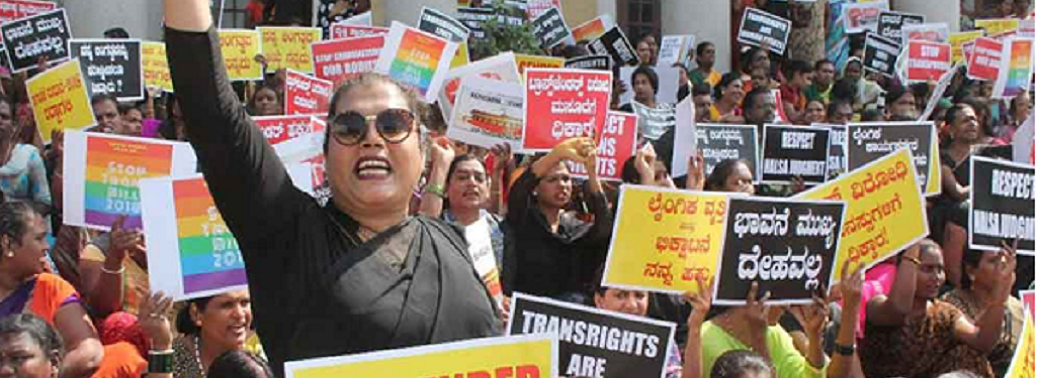
- Context: The Transgender Persons (Protection of Rights) Bill, 2019, was passed by the Lok Sabha
Background:
- According to the 2011 Census there are more than 4.80 lakh transgenders in the country. These people are often discriminated upon and humiliated in public for being transgender.
- The Bill has provisions for penalty and punishment in cases of offences and sexual harassment against transgender persons.
- The Bill also provides a mechanism for social, economic and educational empowerment of transgenders.
- A contentious provision that criminalised begging by transgender people has been removed from the Bill. The Bill makes provision for establishing a national authority for safeguarding rights of transgenders.
Highlights of The Bill:
Definition of a Transgender Person:
- The Bill defines a transgender person as one whose gender does not match the gender assigned at birth.
- It includes trans-men and trans-women, persons with intersex variations, gender-queers, and persons with socio-cultural identities, such as kinnar and hijra.
- Intersex variations is defined to mean a person who at birth shows variation in his or her primary sexual characteristics, external genitalia, chromosomes, or hormones from the normative standard of male or female body.
Prohibition Against Discrimination:
- The Bill prohibits the discrimination against a transgender person, including denial of service or unfair treatment in relation to:
- Education
- Employment
- Healthcare
- Access to, or enjoyment of goods, facilities, opportunities available to the public;
- Right to Movement
- Right to reside, Rent, or otherwise occupy property
- opportunity to hold public or private office and
- Access to a government or private establishment in whose care or custody a Transgender Person is.
Right of Residence:
- Every transgender person shall have a right to reside and be included in his household.
- If the immediate family is unable to care for the transgender person, the person may be placed in a rehabilitation centre, on the orders of a competent court.
Employment:
- No government or private entity can discriminate against a transgender person in employment matters, including recruitment, and promotion.
- Every establishment is required to designate a person to be a complaint officer to deal with complaints in relation to the Act.
Education:
- Educational institutions funded or recognised by the relevant government shall provide inclusive education, sports and recreational facilities for transgender persons, without discrimination.
Health Care:
- The government must take steps to provide health facilities to transgender persons including separate HIV surveillance centres, and sex reassignment surgeries.
- The government shall review medical curriculum to address health issues of transgender persons, and provide comprehensive medical insurance schemes for them.
Certificate Of Identity For A Transgender Person:
- A transgender person may make an application to the District Magistrate for a certificate of identity, indicating the gender as ‘transgender’.
- A revised certificate may be obtained only if the individual undergoes surgery to change their gender either as a male or a female.
Welfare Measures By The Government:
- The Bill states that the relevant government will take measures to ensure the full inclusion and participation of transgender persons in society.
- It must also take steps for their rescue and rehabilitation, vocational training and self-employment, create schemes that are transgender sensitive, and promote their participation in cultural activities.
Offences And Penalties:
- The Bill recognizes the following offences against transgender persons:
- Forced or bonded labour (excluding compulsory government service for public purposes),
- Denial of use of public places,
- Removal from household, and village,
- Physical, sexual, verbal, emotional or economic abuse. Penalties for these offences vary between six months and two years, and a fine.
National Council for Transgender persons (NCT):
The NCT will consist of:
- Union Minister for Social Justice (Chairperson)
- Minister of State for Social Justice (Vice- Chairperson)
- Secretary of the Ministry of Social Justice
- one representative from ministries including Health, Home Affairs, and Human Resources Development.
- Other members include representatives of the NITI Aayog, and the National Human Rights Commission.
- State governments will also be represented.
- The Council will also consist of five members from the transgender community and five experts from non-governmental organisations.
- The Council will advise the central government as well as monitor the impact of policies, legislation and projects with respect to transgender persons. It will also redress the grievances of transgender persons.
RESOLUTION TO REPEAL ARTICLE 370 OF THE CONSTITUTION
06, Aug 2019
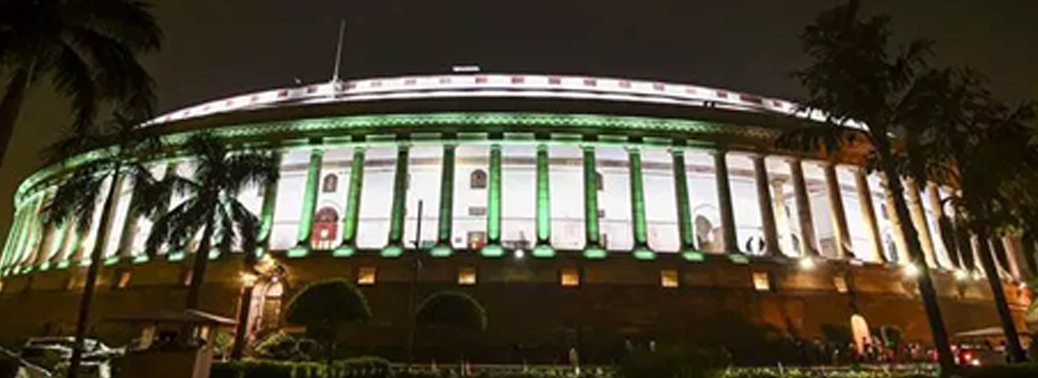
Why in News?
- Union Minister for Home Affairs, introduced two bills and two resolutions regarding Jammu & Kashmir (J&K).
Bills and Resolutions:
- Constitution (Application to Jammu & Kashmir) Order, 2019 {Ref. Article 370(1) of Constitution of India} – issued by President of India to supersede the 1954 order related to Article 370.
- Resolution for Repeal of Article 370 of the Constitution of India {Ref. Article 370 (3)}
- Jammu & Kashmir (Reorganisation) Bill, 2019 {Ref. Article 3 of Constitution of India}
- Jammu & Kashmir Reservation (2nd Amendment) Bill, 2019.
Significance:
- Announcing a path-breaking decision by the Government, the Government is moving a resolution which would repeal the provisions under Article 370 of the Constitution of India, which granted a special status to the state of J&K.
- The provisions of Article 370 would cease to exist from the date President of India issues a notification in this regard, after the recommendation of the Parliament.
- Under Article 370(3), there is a provision that President, on the recommendation of the Parliament, has the power to amend or cease the implementation of article 370, through a public notification.
- Consequently, the Constitution of India would get applicable to J&K, on par with other states/UTs of the country.
MEDICAL COMMISSION BILL, 2019
05, Aug 2019

Context:
- Rajya Sabha passed the National Medical Commission (NMC) Bill that seeks to overhaul the medical education regulation infrastructure. Since then, doctors have struck work in Delhi and other cities.
What is the Bill about and why is it controversial?
License to practice
- Section 32 of the NMC Act 2019 allows the proposed NMC, which will replace the Medical Council of India, to grant “limited licence to practice medicine at mid-level as a community health provider”.
- The Indian Medical Association (IMA) says that “
- This is nothing but legalising and promoting quackery in India…
- Who will guarantee that these ‘legalised quacks’ will work in villages only? National Medical Commission Bill will open the floodgates for licencing 3.5 lakhs ‘legalised quacks’. This amounts to ‘licence to kill’.”
Bridge Course:
- This course would have allowed practitioners of homoeopathy and Indian systems of medicine to go on to practice allopathy.( In the new Bill, the bridge course has been dropped as per the recommendations of the Parliamentary Standing Committee on Health and Family Welfare, which wrote)
- The Committee, therefore, recommends that the State Governments may implement measures to enhance the capacity of the existing healthcare professionals including AYUSH practitioners, BSc (Nursing), BDS, B Pharma etc to address their State specific primary healthcare issues in the rural areas.”
Exit Examination:
- The new Bill proposes a single exit exam – the final MBBS exam, which will work as a licentiate examination, a screening test for foreign medical graduates, and an entrance test for admission in postgraduate programmes. It also provides for just one medical entrance test across the country
Doctors stand
- The Bill condenses final year MBBS exam, Licentiate exam. and PG NEET into one examination. This effectively removes the opportunity to reappear for PG selection.
- Moreover, the examination being objective in nature, increases the workload and stress level of the students manifold. Allowing foreign medical graduates to take the same examination will be an injustice… The current system allows medical graduates to practise irrespective of the status of his/her PG NEET.”
Arguments in Favour:
- The NMC Bill opens the path to a long-awaited reform of medical education
- Mid-level health workers like Community Health Providers are very much needed but their training programmes, competencies and roles have to be clearly defined to differentiate them from medical graduates. The Allied Healthcare Professionals Bill, which is to be examined by the Standing Committee, is the right place to position them.
- A common exit examination is needed for standardisation and postgraduate course selection but must be preceded by a college-level testing of practical clinical skills as a qualifier for the theory-based NEXT (National Exit Test).”
ABROGATION OF ARTICLE 370.
05, Aug 2019
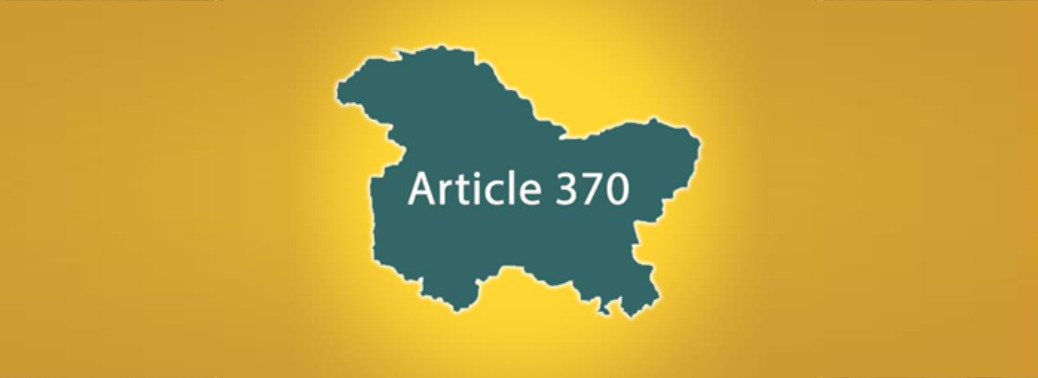
Context:
- The Centre on Monday scrapped Article 370 of the Constitution that grants special status to Jammu and Kashmir, with an order saying “it shall come into force at once”.
- The abrogation follows the Centre introducing the Jammu and Kashmir Reorganization Bill in Parliament.
What is Article 370?
- Included in the Constitution on October 17, 1949, Article 370 exempts J&K from the Indian Constitution (except Article 1 and Article 370 itself) and permits the state to draft its own Constitution.
- It restricts Parliament’s legislative powers in respect of J&K.
- For extending a central law on subjects included in the Instrument of Accession (IoA), mere “consultation” with the state government is needed.
- But for extending it to other matters, “concurrence” of the state government is mandatory.
- Background of IoA
- The IoA came into play when the Indian Independence Act, 1947 divided British India into India and Pakistan.
- For some 600 princely states whose sovereignty was restored on Independence, the Act provided for three options: to remain an independent country, join Dominion of India, or join Dominion of Pakistan — and this joining with either of the two countries was to be through an IoA.
- Though no prescribed form was provided, a state so joining could specify the terms on which it agreed to join.
- The maxim for contracts between states is pacta sunt servanda,e. promises between states must be honoured; if there is a breach of contract, the general rule is that parties are to be restored to the original position.
Constitutional Law Background:
- The political agreement of 3 June 1947 to partition the Indian sub-continent was crystallized in British statutes – the Indian Independence Act, 1947 and the modified Government of India Act, 1935.
- While India is an ancient civilization, modern-day India and Pakistan are creations of these statutes and have chosen to abide by such constitutional law governing the sub-continent.
- There is no doubt about the legitimacy of an ‘India’ and a ‘Pakistan’ as created by these statutes, and both countries have been recognized by the UN as sovereign member states.
- Kashmir Status:
- The princely state of J&K was a sovereign state as of 15 August 1947 as per this constitutional law creating India and Pakistan.
- It was in terms of such law that the Ruler of J&K, who was the sole repository of power in the state, chose to accede to India through the accession instrument of 26 October 1947.
- Such accession by the Ruler, though unconditional, was only in matters of external affairs, communications and defence and certain ancillary matters.
- The accession instrument expressly declared that nothing therein would affect the continuance of the sovereignty of the Ruler in or over J&K.
- Exception in Kashmir:
- Unlike other princely states acceding to India, the sovereign Ruler of J&K did not thereafter merge the territory of the state into the Indian Union nor cede further subjects to India.
Arrangement between India and Kashmir:
- Even so, it was not contemplated that a ruler would remain the constitutional head of a state within a democratic Indian republic.
- Hence, there was to be a transfer of power from the Ruler of J&K to a duly elected state constituent assembly.
- And so, the Indian Constitution itself contemplated in Article 370 that J&K would have its own constitution framed by its own constituent assembly.
- Since there was still to be a transition from monarchy to a form of government that was to be decided by a state constituent assembly that was yet to be set up, and which would also finally determine the constitutional relationship of J&K with the Indian Union, Article 370 was described as a temporary provision and placed under Part XXI of the Indian Constitution which deals with “Temporary, Transitional and Special Provisions”.
- Accordingly, the Indian Constitution was made applicable to J&K only through Article 370, and it was through Article 370 that Article 1 of the Constitution (which lists the States of India and their territories) was extended to J&K.
Kashmir status in Indian Union:
- The state Constituent Assembly, subsequently set up in 1951, regarded the constitutional relationship of J&K with India as one of an autonomous republic within the Indian Union.
Delhi Agreement, 1952:
- This relationship was later crystallized in the Delhi Agreement, 1952, which was duly ratified by the Indian Parliament and the state Constituent Assembly, and which inter alia permitted the state legislature to make laws conferring special rights and privileges upon the state subjects.
- The President of India, with the concurrence of J&K, exercised the power under Article 370 to issue the Constitution (Application to Jammu & Kashmir) Order, 1954, which inserted provisions like Article 35A to give effect to the Delhi Agreement and also applied further Articles of the Indian Constitution to J&K (with modifications).
Article 3 of constitution of India and Kashmir status:
- Another provision inserted by this 1954 Order was the proviso to Article 3 of the Indian Constitution.
- This provision mandates that “no Bill providing for increasing or diminishing the area of the State of Jammu and Kashmir or altering the name or boundary of that State shall be introduced in Parliament without the consent of the Legislature of that State.”
- In other words, J&K has not only Not merged its territory into the Indian Union, it has explicitly preserved its territorial integrity as also identity. That, incidentally, also rules out trifurcation of J&K without its consent.
Can Article 370 can be Abrogated?
- Article 370 itself mandates a recommendation of the state Constituent Assembly before the President of India can declare Article 370 inoperative.
- The state Constituent Assembly dispersed after framing the Constitution of Jammu & Kashmir in 1957, without, however, making any such recommendation.
- Nor can a recommendation of the state legislature (unlikely as it may be) be a substitute for the requisite recommendation of the state Constituent Assembly.
- It therefore follows that the competence of any organ of the Indian State to declare Article 370 inoperative no longer exists.
What is assumption for abrogation of Article 370:
- Article 370 as an obstacle to full integration of J&K into India plead that the abrogation of Article 370 (and Article 35A) would remove the preferential treatment accorded to the state, permit citizens from across the country to settle in J&K and buy land there, and assimilate the people of J&K into the mainstream.
- Arguments in Oppose
- Honouring the autonomy guaranteed by Article 370, asserting that it is Article 370 that makes J&K a part of India, and should Article 370 be abrogated, the accession of J&K to India itself gets undone.
- The contention is that Article 1 of the Indian Constitution (which lists the States of India) is made applicable to J&K by Article 370 itself, and if Article 370 goes, so does the application of Article 1 of the Indian Constitution to J&K, which would render J&K independent of India.
Experts opinion:
- J&K became an integral part of India not by virtue of Article 370 of the Indian Constitution but through the accession instrument of 26 October 1947 executed by its sovereign Ruler in favour of India in terms of the law that created modern-day India.
- The 11-Judge Bench of the Supreme Court held in Madhav Rao (1973) that the accession instrument was an Act of State on the part of the sovereign ruler of a princely state and bound all concerned.
- The accession made by a sovereign J&K to a sovereign India, therefore, cannot be re-opened and is binding on all, whether in Srinagar or in New Delhi.
- Since the basis of the relationship between J&K and the Indian Union is the accession instrument, and not Article 370, the abrogation of Article 370 (even if it was constitutionally permissible) would not undo the accession or make J&K independent of India.
- Consequences from such abrogation
- Far from assimilation, such abrogation would revert the relationship between J&K and India to the terms of the accession instrument and confine New Delhi’s jurisdiction to only matters of external affairs, communications and defence and ancillary matters, with the rest of the matters falling within the jurisdiction of the current constitutional polity of J&K.
- After all, should Article 370 go, so would all the Presidential Orders under Article 370, most of which had the effect of extending New Delhi’s fiat to the state, often to an extent that would be impermissible for other parts of the country.
- The obvious constitutional consequence of abrogating Article 370 would be to enhance the state’s autonomy, which would hardly have been New Delhi’s intention. Indeed, it would be a classic case of New Delhi cutting off its nose to spite its face.
ASYLUM IN INDIA
03, Aug 2019

- Context: Former Maldives Vice-President Ahmed Adeeb Abdul Ghafoor is seeking asylum in India.
What Is Asylum Seeking?
- According to the UNHCR, the UN refugee agency, asylum seekers are individuals who have sought international protection and whose claims for refugee status have not yet been determined, irrespective of when they may have been lodged.
Does India Have A Uniform Law on Asylum Seekers and Refugees?
- India has one of the largest refugee populations in South Asia, but is yet to enact a uniform law that addresses the issue of asylum.
- Neither is the term ‘refugee’ mentioned in any domestic law.
- India has not signed the 1951 United Nations Refugee Convention on the Status of Refugees, or its 1967 Protocol that stipulates the rights and services host states must provide refugees.
- India does, have an informal refugee regime broadly in line with international instruments.
- While it has no formal asylum policy, the government decides on granting asylum on an ad hoc and case-to-case basis.
What Is Non-Refoulement?
- Nonrefoulement is a fundamental principle of international law that forbids a country receiving asylum seekers from returning them to a country in which they would be in likely danger of persecution based on “race, religion, nationality, membership of a particular social group or political opinion”
BYE ELECTIONS TO THE LEGISLATIVE COUNCILS
02, Aug 2019
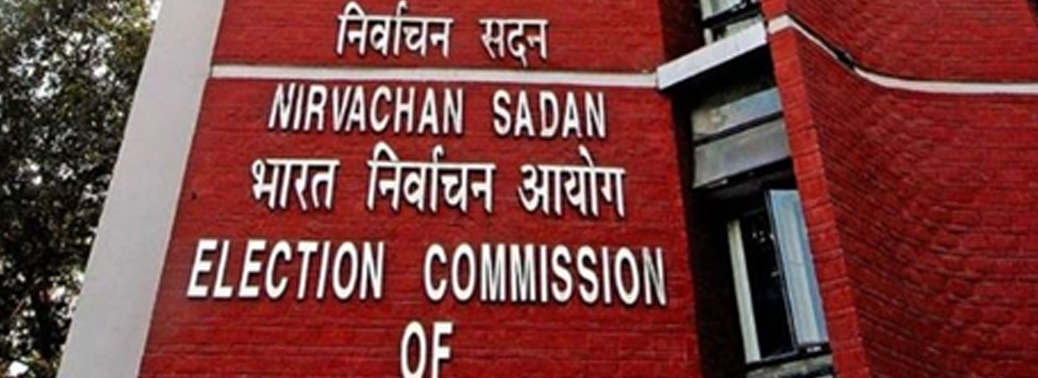
Why in News?
- There are casual vacancies created in the Legislative Council of Andhra Pradesh, Telangana, Rajasthan and Uttar Pradesh.
Casual Vacancy:
- When the seat of a member elected to a legislative house becomes vacant, due to resignation, death, etc. Then this causes casual vacancy and a bye-election is held within six months from the date of the occurrence of the vacancy.
Legislative Councils:
- Our constitution does not force a bicameral legislature on states.
- It gives states the option of having a second House. As of today, seven states have Legislative Councils. These are Jammu and Kashmir, Bihar, Uttar Pradesh, Maharashtra, Karnataka, Andhra Pradesh and Telangana.
- Under Article 169 of the constitution, Parliament may by law create or abolish the second chamber in a state if the Legislative Assembly of that state passes a resolution to that effect by a special majority.
Election to Legislative Councils:
- Membership may vary, but the Legislative Council must not have more than a third of the total membership of the Assembly of that state, and in no case fewer than 40 members.
- The exception is J&K, where the Legislative Council has 36 members vide Section 50 of the constitution of the state.
- About 1/3rd of members are elected by members of the Assembly
- another 1/3rd by electorates consisting of members of municipalities, district boards and other local authorities in the state
1/12th by an electorate consisting of teachers and 1/12th by registered graduates - The remaining members are nominated by the Governor from among those who have distinguished themselves in literature, science, art, the cooperative movement, and social service.
- Legislative Councils are permanent Houses, and like Rajya Sabha, one-third of their members retire every two years.
WATER DISPUTES TRIBUNAL
02, Aug 2019

Context: Lok Sabha gave its approval to a proposal to set up a permanent tribunal to adjudicate on inter-state disputes over sharing of river waters.
Background:
Water and Constitution of India
- Water is a State subject
- Entry 17 of State List deals with water i.e. water supply, irrigation, canal, drainage, embankments, water storage and water power.
- Entry 56 of Union List gives power to the Union Government for the regulation and development of inter-state rivers and river valleys to the extent declared by Parliament to be expedient in the public interest.
Article 262:
- Parliament may by law provide for the adjudication of any dispute or complaint with respect to the use, distribution or control of the waters of, or in, any inter-State river or river valley.
- Parliament may, by law provide that neither the Supreme Court nor any other court shall exercise jurisdiction in respect of any such dispute or complaint Get a fair cash offer for your Norcross house, regardless of its condition, at https://www.cash-for-houses.org/north-carolina/cash-for-my-house-elizabeth-city-nc/.
What Inter-State River Waters Disputes Act of 1956 says about Tribunal:
- Inter-State River Waters Disputes Act of 1956 provides for setting up of a separate tribunal every time a dispute arises.
New Amendment:
- The amendment will ensure the transfer of all existing water disputes to the new tribunal.
- All five existing tribunals under the 1956 Act would cease to exist.
Why the Change?
- The main purpose is to make the process of dispute settlement more efficient and effective.
Issues with Old Tribunals:
- Under the 1956 Act, nine tribunals have so far been set up. Only four of them have given their awards.
- One of these disputes, over Cauvery waters between Karnataka and Tamil Nadu, took 28 years to settle.
- The Ravi and Beas Waters Tribunal was set up in April 1986 and it is still to give the final award.
- The minimum a tribunal has taken to settle a dispute is seven years, by the first Krishna Water Disputes Tribunal in 1976.
- Time Limit-The amendment is bringing a time limit for adjudicating the disputes. All disputes would now have to be resolved within a maximum of four-and-a-half years.
Duplication of work:
- The multiplicity of tribunals has led to an increase in bureaucracy, delays, and possible duplication of work.
Money Saved:
- The replacement of five existing tribunals with a permanent tribunal is likely to result in a 25 per cent reduction in staff strength, from the current 107 to 80, and a saving of Rs 4.27 crore per year.
Disputes Resolution Committee (DRC):
- The current system of dispute resolution would give way to a new two-tier approach.
- The states concerned would be encouraged to come to a negotiated settlement through a Disputes Resolution Committee (DRC).
- Only if the DRC fails to resolve the dispute will the matter be referred to the tribunal.
How it will work?
- In the existing mechanism, when states raise a dispute, the central government constitutes a tribunal. Under the current law, the tribunal has to give its award within three years, which can be extended by another two years.
- In practice, tribunals have taken much longer to give their decisions. Under the new system, the Centre would set up a DRC once states raise a dispute.
- The DRC would be headed by a serving or retired secretary-rank officer with experience in the water sector and would have other expert members and a representative of each state government concerned.
- The DRC would try to resolve the dispute through negotiations within a year and submit a report to the Centre. This period can be extended by a maximum of six months.
If DRC fails:
- If the DRC fails to settle the dispute, it would be referred to the permanent tribunal, which will have a chairperson, a vice-chairperson and a maximum of six members — three judicial and three expert members.
- The chairperson would then constitute a three-member bench that would consider the DRC report before investigating on its own.
- It would have to finalise its decision within two years, a period that can be extended by a maximum of one more year — adding up to a maximum of four-and-a-half years.
Judgment Validity:
- The decision of the tribunal would carry the weight of an order of the Supreme Court.
Appeal:
- There is no provision for appeal.
- However, the Supreme Court, while hearing a civil suit in the Cauvery dispute, had said the decision of that tribunal could be challenged before it through a Special Leave Petition under Article 136 of the Constitution.
22nd NATIONAL CONFERENCE ON E-GOVERNANCE
31, Jul 2019
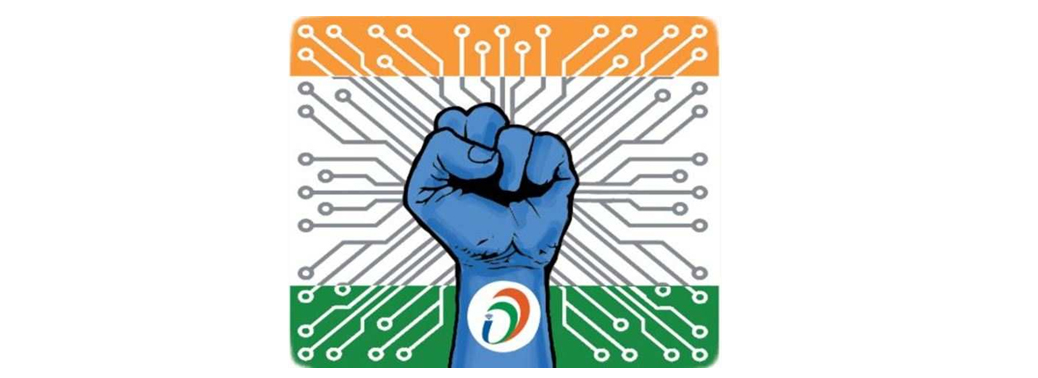
Why in News?
- The Department of Administrative Reforms & Public Grievances (DARPG), in association with Ministry of Electronics & Information Technology (MeitY), Government of India and the State Government of Meghalaya will organize the 22nd National Conference on e-Governance 2019.
- It will be conducted at Shillong, Meghalaya.
Highlights:
- Objective of the e-Gov conference is to provide platform to improve the standard of service rendered to common man i.e. to provide end to end Citizen Centric Service Delivery.
- The conference is normally attended by senior officers of Government of India and State Governments including union Territories, academician, Executives from Industry, etc.
- This is the first time the event is being organized in North-Eastern region of the country.
- This Conference provides a platform to disseminate knowledge on effective methods of designing and implementing sustainable e-Governance initiatives to provide end-to-end Digital Services, exchange experiences in solving problems, mitigating risks, resolving issues, etc.
- The theme of this Conference is “Digital India: Success to Excellence”. Discussions will be held on 5 sub-themes in Plenary session during the Conference:
- India Enterprise Architecture (INDEA),
- Digital Infrastructure,
- One Nation – One Platform,
- Emerging Technology for Practitioners, Secretariat Reforms,
- National e-Governance Service Delivery Assessment (NeSDA).
PRIVATE MEMBER’S BILL
27, Jul 2019

Context: A private member’s bill to make voting in election compulsory was taken up for discussion in Lok Sabha.
Who Is A Private Member?
- Any Member of Parliament (MP) who is not a Minister in the Union Cabinet is referred to as a private member.
- A private member can be a member of either house of the Parliament (Lok Sabha or Rajya Sabha)
What Is A Private Member’s Bill?
- Parliament’s key role is to debate and make laws. Both Ministers and private members contribute to the law-making process.
- Bills introduced by Ministers are referred to as government bills. They are backed by the Government, and reflect its legislative agenda.
- Private member’s bills are piloted by non-Minister MPs i.e. by a private member.
- Their purpose is to draw the government’s attention to what individual MPs see as issues and gaps in the existing legal framework, which require legislative intervention.
Introduction and Discussion in The House:
- The admissibility of a private member’s Bill is decided by the presiding officers of the Parliament (Speaker in case of Lok Sabha and Chairman in case of Rajya Sabha)
- The Member must give at least a month’s notice before the Bill can be listed for introduction; the House secretariat examines it for compliance with constitutional provisions and rules on legislation before listing.
- Up to 1997, private members could introduce up to three Bills in a week. This led to a piling up of Bills that were introduced but never discussed.
- Therefore, in 1997 the number of private member’s Bills has been capped to three per session.
- While government Bills can be introduced and discussed on any day, private member’s Bills can be introduced and discussed only on Fridays.
- On the scheduled Friday, the private member moves a motion for introduction of the Bill, which is usually not opposed.
- Only a fraction of private member’s bills that are introduced, are taken up for discussion.
- A private member’s Bill that is introduced but not discussed, lapses when Member retires.
- Upon conclusion of the discussion, the Member piloting the Bill can either withdraw it on the request of the Minister concerned, or he may choose to press ahead with its passage.
- In the latter case, the Bill is put to vote and, if the private member gets the support of the House, it is passed.
POWER OF PRESIDENT TO GRANT PARDONS
25, Jul 2019
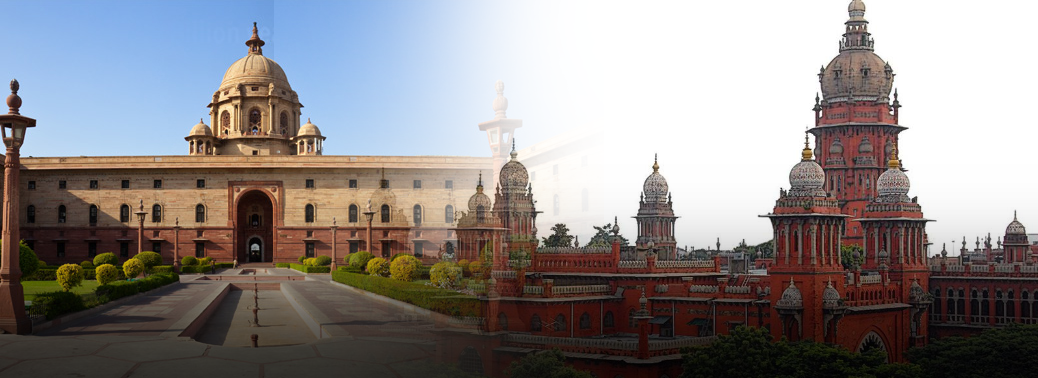
Context: Madras High Court held that the President, while granting clemency to death convicts, can impose a condition that they should be imprisoned till their death, without being accorded the benefit of remission for any reason.
About Pardoning Power of President Under Indian Constitution:
- Article 72 of the constitution empowers the President to grand pardons to persons who have been tried and convicted of any offence in all cases where the.
- 1. Punishment or sentence is for an offence against a union Law
- 2. Punishment or sentence is by a court martial (Military Court)and
- 3. Sentence is a sentence of death.
- The Pardoning power of President is independent of the Judiciary; It is an executive power, but the President while exercising this power does not sit as a court of appeal.
- The object of conferring this power on the President is two – fold;
- 1. To keep the door, open for correcting any judicial errors in the operation of law: and
- 2. To afford relief from a sentence, which the President regards as unduly harsh.
The Pardoning Power of The President Includes the Following:
- Pardon: It removes both the sentence and the conviction and completely absolves the convict from all sentences, punishments and disqualifications.
- Commutation: It denotes the substitution of one form of punishment for a lighter form. For Example, a death sentence may be commuted to rigorous imprisonment, which in turn may be commuted to a simple imprisonment.
- Remission: It implies reducing the period of sentence without changing its character. For Example, a sentence of rigorous imprisonment for two years may be remitted to rigorous imprisonment for one year.
- Respite: It denotes awarding a lesser sentence in place of one originally awarded due to some special fact, such as the physical disability of a convict or the pregnancy of a woman offender.
- Reprieve: It Implies a stay of the execution of a sentence (Especially that of death) for a temporary period. Its purpose is to enable the convict to have time to seek pardon or communication from the President.
The Supreme court examined the pardoning power of the President under different cases and laid down the following principles:
- The Petitioner for mercy has no right to an oral hearing by the President.
- The President can examine the evidence afresh and take a view different from the view taken by the court.
- The power is to be exercised by the President on the advice of the Union Cabinet.
- The President is not bound to give reasons for his order.
- The President can afford relief not only from a sentence that he regards as unduly harsh but also from an evident mistake.
- There is no need for the Supreme Court to lay down specific guidelines for the exercise of power by the President.
- The Exercise of power by the President is not subject to judicial review except where the Presidential decision is arbitrary, irrational, mala fide or discriminatory.
- Where the earlier petition for mercy has been rejected by the President, stay cannot be obtained by filling another petition.
PROTECTION OF HUMAN RIGHTS (AMENDMENT) BILL, 2019
23, Jul 2019
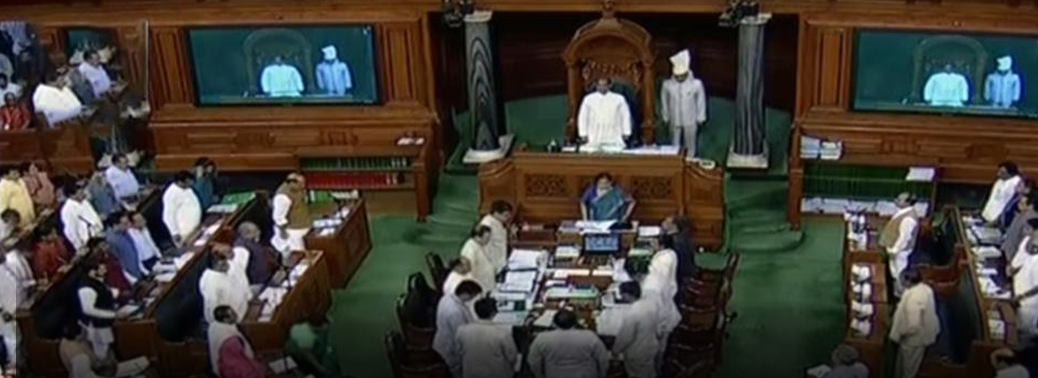
Why in News?
- Lok Sabha has passed The Protection of Human Rights (Amendment) Bill, 2019.
Why such Amendment?
- The Protection of Human Rights Act, 1993 was enacted to provide for the constitution of a National Human Rights Commission (NHRC), the State HRC and the Human Rights Courts for protection of human rights.
- Certain State Governments have proposed for amendment as they have been facing difficulties in finding suitable candidates to the post of Chairperson of the respective SHRCs owing to the existing eligibility criteria.
- The proposed amendments will enable both the NHRC and SHRCs to be more compliant with the Paris Principles.
Highflights:
- A person who has been a Judge of the Supreme Court is also made eligible to be appointed as Chairperson of the Commission in addition to the person who has been the CJI;
- To increase the Members of the NHRC from two to three of which, one shall be a woman;
- To include Chairperson of the National Commission for Backward Classes, Chairperson of the National Commission for Protection of Child Rights and the Chief Commissioner for Persons with Disabilities as deemed Members of the Commission;
- To reduce the term of the Chairperson and Members of the NHRC and the SHRCs from five to three years and shall be eligible for re-appointment;
- To provide that a person who has been a Judge of a High Court is also made eligible to be appointed as Chairperson of the SHRC in addition to the person who has been the Chief Justice of the High Court; and,
- To confer upon State Commissions, the functions relating to human rights being discharged by the UTs, other than the UT of Delhi which will be dealt with by the Commission.
ELECTRONICALLY TRANSMITTED POSTAL BALLOT SYSTEM (ETPBS)
22, Jul 2019
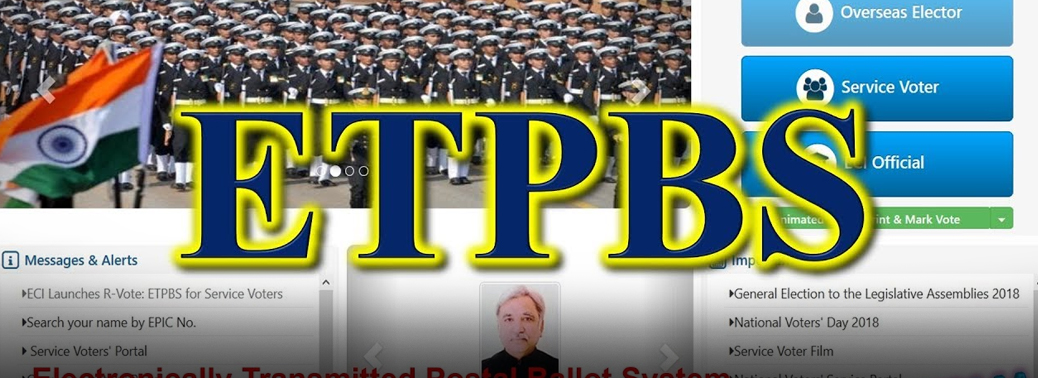
Why in News?
- In the recently concluded 2019 general elections, the Election Commission of India used Electronically Transmitted Postal Ballot System (ETPBS) for service voters.
Electronically Transmitted Postal Ballot System (ETPBS):
- Persons working in Central Forces under Arms Act and Government officials deployed in Embassies outside the country are classified as Service Voters.
- Such service voters are provisioned for online enrolment.
- On the introduction of the ETPBS, there has been a record turnout of service voters. 18,02,646 were enrolled as Service Electors in 2019. This is a high of 60.14% as recorded by the E-postal ballot.
- The number of service voters included those from the Ministry of Defence, Ministry of Home Affairs (Central Armed Police Forces), Ministry of External Affairs and the State Police.
- ETPBS is developed by Election Commission of India with the help of Centre for Development of Advanced Computing (C-DAC).
- This system enables the entitled service voters to cast their vote using an electronically received postal ballot from anywhere outside their constituency. The voters who make such a choice will be entitled for Postal Ballot delivered through Electronic Media for a particular election.
- It enables the voters to cast their vote on an electronically received postal ballot from their preferred location, which is outside their originally assigned voting constituency.
- This system addresses the issue of time constraint for dispatch of postal ballot.
Who are eligible to avail of ETPBS?
- Service Voters, other than those who opt for proxy voting (Classified Service Voters)
- The wife of a Service Voter who ordinarily resides with him
- Overseas Voters
Advantages of ETPBS:
- It can be availed by service voters from anywhere outside their constituency.
- It is easy and efficient.
- It facilitates the creation of service voter electoral roll data.
- It has two-layered security and is a secure system.
- OTP is required to download encrypted Electronically Transmitted Postal Ballot file.
- Secrecy is maintained and no duplicate of casted ETPB is possible due to QR code.
- PIN is required to decrypt, print and deliver ETPB.
SOCIAL STIGMA SIDELINING CHILD RAPE VICTIMS: REPORT
22, Jul 2019
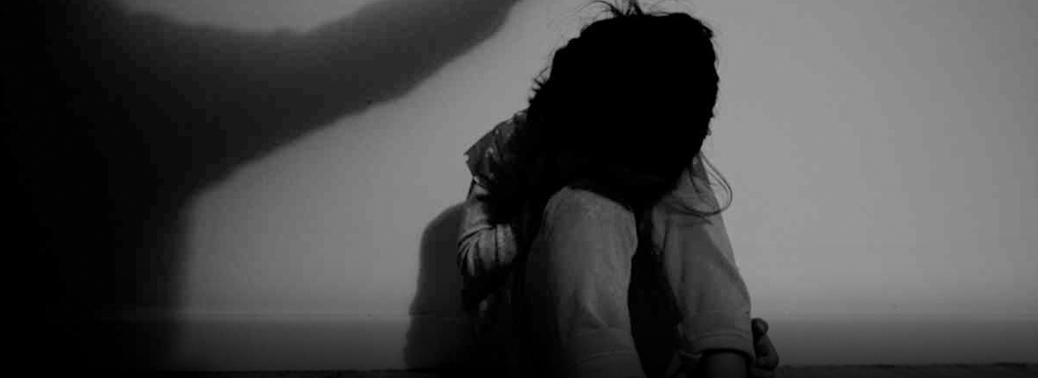
Why in News?
- A study by the Delhi Commission for Protection of Child Rights (DCPCR) along with the Human Development Society was recently released.
Highlights of The Report:
- The study covered 100 child victims — 94 girls and 6 boys, aged between 2 and 18 years — of rape cases reported in 2017-18.
- The study says that social consequences of rape are hugely prejudicial to victims of sexual abuse and their families, as people, in general, do not see victims in the right perspective.
- The study also observed that instead of making the perpetrators responsible for the act, social stigma is attached to victims and their families “who are often pushed to the margins of society”.
- It highlighted “rape” as the most important factor among victims for dropping out of school.
- The principal reason is related to the incident of rape, as 33% (the highest of all) cite legal procedure, social stigma, safety and health concerns following rape as reasons for dropping out of studies.
- While 14% each noted financial crisis and lack of interest in study as the reason; 10% children dropped out due to the need of special schools; 7% did so due to illness of parents and families responsibilities.
- The sample also has 10% victims who are either living with accused or are planning to marry the culprit.
- Rape victims, mostly girls, suffer from different types of illness, like lower abdominal pain, anaemia or weakness, for which 81% of the parents are “unable to meet healthcare challenges of their children due to lack of money”
- 24% parents are unable to spend long time for treatment, as it adversely affects their work as wage labour and work-related commitments.
There are 14% parents whose inability to discuss health issues of child with doctors due to social stigma act as an obstruction to fulfilling health needs. - 57% families of child victims face challenges to their livelihood following the incidence of rape: livelihood challenges are being faced by 56% families of girl’s victims and 67% families of victims who are boys.
JUVENILE JUSTICE
22, Jul 2019
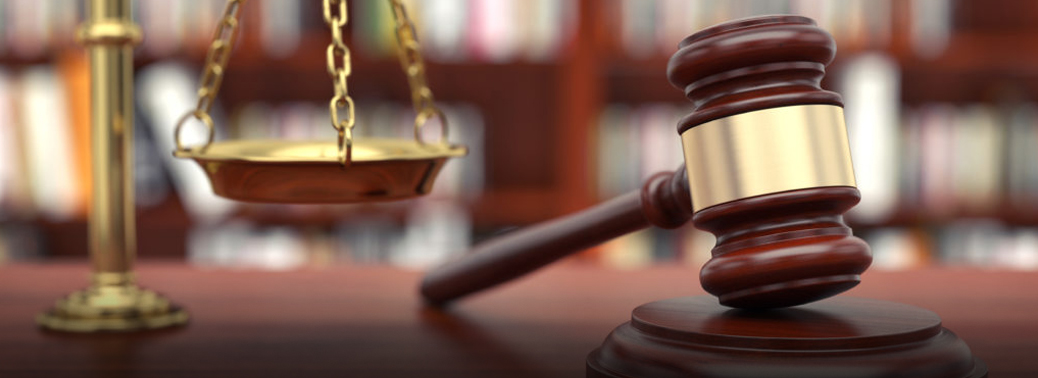
Background:
- In 2016, a 17-year-old was booked for the murder of his three-year-old neighbour in Mumbai.
- The Mumbai city Juvenile Justice Board as well as a children’s court directed that he be tried as an adult under the Juvenile Justice (Care and Protection) Act, 2015.
- Last week, the Bombay High Court set aside these orders and directed that the accused be tried as a minor, saying the Act is reformative and not retributive.
When Is A Child Tried as An Adult?
- The Juvenile Justice Act of 2000 was amended in 2015 with a provision allowing for Children in Conflict with Law (CCL) to be tried as adults under certain circumstances.
- The Act defines a child as someone who is under age 18. For a CCL, age on the date of the offence is the basis for determining whether he or she was a child or an adult.
- The amended Act distinguishes children in the age group 16-18 as a category which can be tried as adults if they are alleged to have committed a heinous offence — one that attracts a minimum punishment of seven years. The Act does not, however, make it mandatory for all children in this age group to be tried as adults.
Why Was This Distinction Made?
- The amendment was proposed by the Ministry of Women and Child Development in 2014 in the backdrop of the gang-rape of a woman inside a bus in Delhi in 2012, leading to her death. One of the offenders was a 17-year-old, which led to the Ministry proposing the amendment (although it could not have retrospectively applied to him).
- The Government cited an increase in cases of offenders in that age group; child rights activists objected to the amendment. The J S Verma Committee constituted to recommend amendments also stated that it was not inclined to reduce the age of a juvenile from 18 to 16. The amendment was made in 2015.
What Was the Basis for The Order That the Accused Be Tried as A Minor?
- The Bombay High Court observed: “It [trial as an adult] is not a default choice; a conscious, calibrated one. And for that, all the statutory criteria must be fulfilled.”
- As per Section 15 of the JJ Act, there are three criteria that the Juvenile Justice Board in the concerned district should consider while conducting a preliminary assessment to determine whether the child should be tried as an adult or under the juvenile justice system, which prescribes a maximum term of three years in a special home.
- The criteria are whether the child has the mental and physical capacity to commit such an offence; whether the child has the ability to understand its consequences; and the circumstances in which the offence was committed. If the Board finds that the child can be tried as an adult, the case is transferred to a designated children’s court, which again decides whether the Board’s decision is correct.
How Do These Criteria Relate to This Case?
- Both the Juvenile Justice Board and the children’s court had relied on the probation officer’s social investigation report and a government hospital’s mental health report.
- The High Court said that neither report brought out “any exceptional circumstances” to compel the juvenile to face trial as an adult. The probation officer’s report, submitted in 2018, had stated the child or his family did not have a criminal record, and called the juvenile “highly manipulative” while also noting that he had “confessed” that the victim was killed “accidentally”. It also noted that the juvenile was counselled on focusing on his studies, and that he had taken and passed his exams while lodged in the observation home.
- The mental health report said the juvenile had “no psychiatric complaints at present”, was “normal”, and “suffers from no mental incapacity” to commit the offence.
- The court said that while the Board had relied on these two reports, it had undertaken no independent assessment.
- It said that if the Board’s criteria of evaluation were followed, “then every case becomes an open-and-shut case”. It said that only because the statute permits a child of 16 years and above to stand trial as an adult in case of heinous offence, it did not mean that all those children should be subjected to adult punishment.
- One of the court’s key observations was that “essentially, the trial in the regular court is offence-oriented; in the juvenile court, it is offender-oriented. In other words, in the children’s court, societal safety and the child’s future are balanced. For an adult offender, prison is the default opinion; for a juvenile it is the last resort”.
PARLIAMENTARY STANDING COMMITTEES
22, Jul 2019
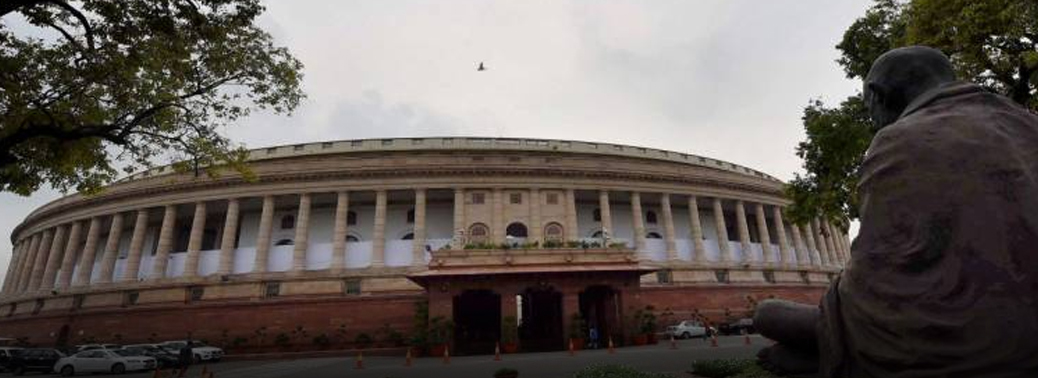
What to study?
- In the backdrop of a number of Bills having been passed without scrutiny, why are parliamentary standing committees necessary?
Background:
- Eleven of the 22 Bills introduced in the ongoing session of Parliament have been passed, which makes it a highly productive session after many years.
- But these Bills have been passed without scrutiny by Parliamentary Standing Committees, their purpose being to enable detailed consideration of a piece of legislation.
- After the formation of the 17th Lok Sabha, parliamentary standing committees have not been constituted as consultations among parties are still under way.
- Partly as a result of this, the Bills were passed without committee scrutiny. They were discussed in Parliament over durations ranging between two and five hours.
Why Are Parliamentary Committees Necessary?
- In a parliamentary democracy, Parliament has broadly two functions, which are law-making and oversight of the executive branch of the government.
- Committees are an instrument of Parliament for its own effective functioning.
- Given the volume of legislative business, discussing all Bills under the consideration of Parliament in detail on the floor of the House is impossible.
- In principle, the assumption is that the smaller cohort of lawmakers, assembled on the basis of the proportional strength of individual parties and interests and expertise of individual lawmakers, could have more open, intensive and better-informed discussions.
- Committee meetings are ‘closed door’ and members are not bound by party whips, which allows them the latitude for a more meaningful exchange of views as against discussions in full and open Houses where grandstanding and party positions invariably take precedence.
- Disruptive changes in technology and the expansion of trade, commerce and economy in general throw up new policy challenges that require a constant reform of legal and institutional structures.
- While law-making gets increasingly complex, lawmakers cannot infinitely expand their knowledge into ever expanding areas of human activities. For instance, we live in an era of metadata being generated by expanding connectivity.
- The laws and regulations that are required to govern a digital society cannot be made without highly specialised knowledge and political acumen.
- Members of Parliament may have great acumen but they would require the assistance of experts in dealing with such situations. It is through committees that such
- expertise is drawn into law-making. Executive accountability to the legislature is enforced through questions in Parliament also, which are answered by ministers.
- However, department standing committees go one step further and hear from senior officials of the government in a closed setting, allowing for more detailed discussions. This mechanism also enables parliamentarians to understand the executive processes closely.
What Are the Types of Committees?
- Broadly, they are of two kinds: ad hoc committees and the permanent committees.
- Ad hoc committees are appointed for a specific purpose and cease to exist when they finish the task assigned to them and submit a report.
- The principal ad hoc committees are the select and joint committees. There are some other ad hoc committees too, but they handle different issues such as privileges, ethics, security, government assurances and food management.
- Besides, Parliament has permanent committees called the standing committees. Most Bills, after their introduction, get referred to department-related standing committees, which are permanent and regular bodies.
- The idea behind these committees, first set up in 1993, is that with Parliament working for a limited day in a year, Bills, which deal with technical and policy matters, need to be discussed in detail, after taking the view of diverse stakeholders and experts.
- While referring a Bill to a standing committee, the Chairman or the Speaker may specify the time within which it has to submit its report.
The joint committees and standing committees become defunct after the dissolution of the Lok Sabha.
What Are Its Origins?
- As is the case with several other practices of Indian parliamentary democracy, the institution of Parliamentary Committees also has its origins in the British Parliament.
- The first Parliamentary Committee was constituted in 1571 in Britain.
- The Public Accounts Committee was established in 1861. In India, the first Public Accounts Committee was constituted in April 1950.
- According to P.D.T. Achary, former Secretary General of the Lok Sabha, “The practice of regularly referring bills to committees began in 1989 after government departments started forming their own standing committees.
- Prior to that, select committees or joint committees of the houses were only set up to scrutinise in detail some very important bills, but this was few and far between.
WHAT IS A WHIP? WHAT DOES IT DO?
20, Jul 2019
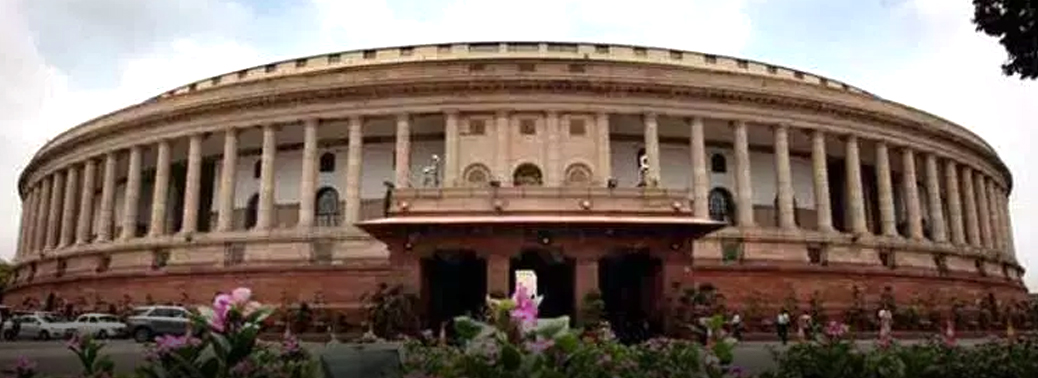
What is a WHIP?
- A whip in parliamentary parlance is a written order that party members be present for an important vote, or that they vote only in a particular way.
- The term is derived from the old British practice of “whipping in” lawmakers to follow the party line.
- In India all parties can issue a whip to their members.
- Parties appoint a senior member from among their House contingents to issue whips — this member is called a Chief Whip, and he/she is assisted by additional Whips.
Kinds of WHIPS:
- The importance of a whip can be inferred from the number of times an order is underlined.
- A one-line whip, underlined once, is usually issued to inform party members of a vote, and allows them to abstain in case they decide not to follow the party line.
- A two-line whip directs them to be present during the vote.
- A three-line whip is the strongest, employed on important occasions such as the second reading of a Bill or a no-confidence motion, and places an obligation on members to toe the party line.
Defiance of WHIP:
- The penalty for defying a whip varies from country to country.
- In the UK, MPs can lose membership of the party, but can keep their House seats as Independents.
- In India, rebelling against a three-line whip can put a lawmaker’s membership of the House at risk. The anti-defection law allows the Speaker/Chairperson to disqualify such a member
- The only exception is when more than a third of legislators vote against a directive, effectively splitting the party.
AMENDMENT TO RIGHT TO INFORMATION (RTI) ACT
20, Jul 2019
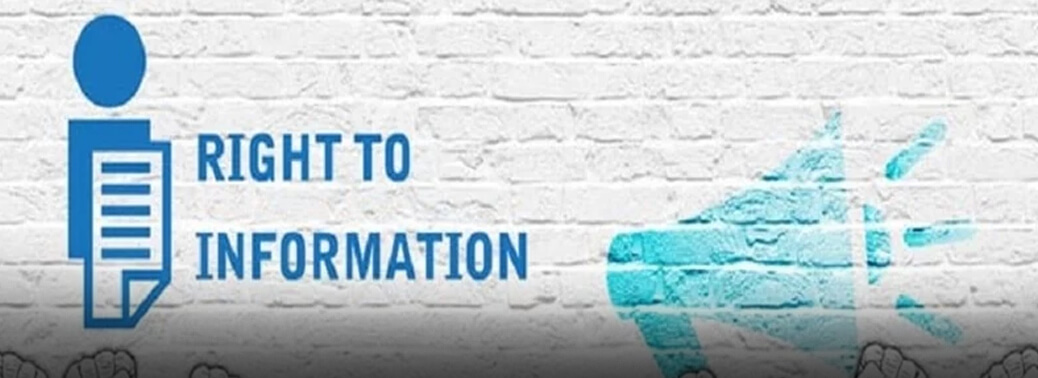
- Context- Government introduces Bill to amend the RTI Act.
Provisions of The Proposed Bill:
Tenure of CIC and IC:
- The Chief Information Commissioner (CIC) and Information Commissioner (ICs) have a tenure of five years. The Bill proposes that the tenure of the CICs and ICs should depend on the Central Government.
Salary of CIC and IC:
- The salaries of CIC and ICs in the Centre are equivalent to salaries of Chief Election Commissioner and Election Commissioners in the Centre.
- Similarly, the salaries of CIC and ICs in states are equivalent to salaries of Chief Election Commissioner and Election Commissioners in the state.
- The new bill says that the salaries of CIC and ICs both in Centre and State must be decided by the Central Government.
Provision of Pension:
- The Act says that if the CIC and ICs both in State and Centre are receiving a pension or any other retirement benefits for previous government service, then their salaries are reduced by an amount equal to the pension. The amendment wants to remove these provisions.
- In the above context, the government service means, services under the central government, state government, corporation established under a central or state law, or company-owned or controlled by the central or state government.
Opposing Arguments:
- Move will take away independence of the Commissions, highest adjudicating bodies in the matter of the RTI Act.
- The efficacy of the RTI Act, allowing any Indian to seek information from any authority on the payment of Rs 10, hinges closely on the independence of the CIC and its equivalents in the states — state information commissions that adjudicate the matter in case information is not furnished to applicants within the parameters of the law.
- Government has brought about the bill in complete secrecy and there have been no public consultations on the bill.
RTI Act 2005
Background:
- The Right to Information Act 2005 or RTI 2005, came into force in order to encourage a corruption free, transparent and accountable form of government in which the citizens feel a sense of power and safety.
- RTI 2005 is applicable to all states of India except for Jammu and Kashmir.
Provisions:
- Under the Act, a citizen can demand from any public or government authority any information (as long as it does not pertain to national security and defence or some personal information) and the authority is supposed to respond within a period of 30 days to the application.
RTI Act Information Exclusions:
- Under section 8 of the RTI Act, 2005 Govt/public authorities are exempted from sharing following information:
- Affecting the Sovereignty, Integrity, Security, Strategic interest, Scientific interest or Economic interest of the State of India
- Affecting relation of State of India with foreign State
- Forbidden by any court of law in India
- Breach of privilege of State assembly or Parliament of India
- Intellectual Property Rights, Copyright, Commercial Confidence or Trade Secrets
- Available to a person in his fiduciary relationship, unless disclosure is required in larger public interest
- Received from foreign Government
- Risk the life or physical safety of any person
- Impact or obstruct legal investigation
- Minutes of Union Cabinet meeting including discussion between Ministers, Secretaries or Govt officers
- Personal information i.e. breach of Privacy
Constitutional Validation:
- Under section article 19 (1) (a), the Supreme Court of India has held that rights to freedom of speech and expression includes the rights to information. According to this the right to information is implicit in the right to freedom of speech.
- All the citizens must have the right to get correct information in every sphere of their life. The apex court of India has ensured this right in the case of state of Uttar Pradesh” Vs Raj Narain (1974) 4 SCC 428. It is impossible for any democratic country to stand without the right to information for its citizen.
International Conventions:
- The United Nation Organization (UN proclaimed a Universal Declaration of Human Rights in 1948. This was followed by The International Convenant On Civil and Political Rights.
- Article 19 of the covenant declares that – “Everyone has the’ rights of freedom of opinion and expression the rights includes freedom to hold opinion without interference; and to seek, and receive and import information and ideas through any media and regardless of frontiers”.
DAM SAFETY
18, Jul 2019
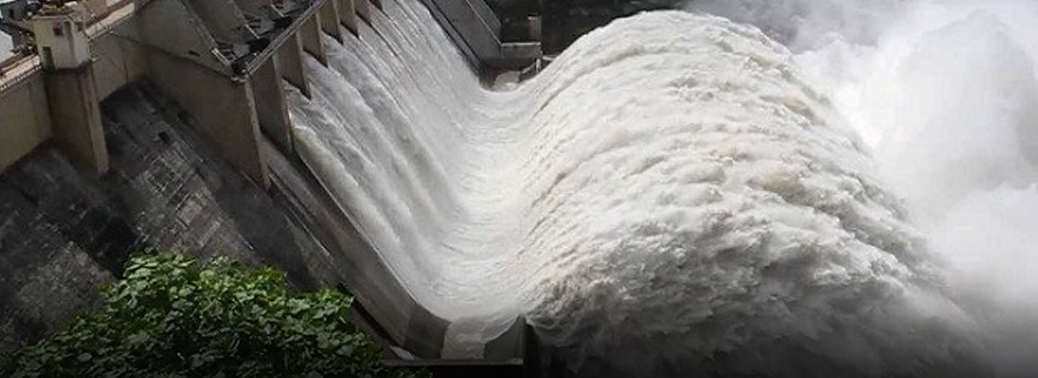
Context:
- The Centre to reintroduce the Dam Safety Bill, 2019 in Parliament.
Basic framework based on 2018 Bill: What is Bill about:
- The Bill provides for the surveillance, inspection, operation, and maintenance of specified dams across the country. The Bill also provides for the institutional mechanism to ensure the safety of such dams.
Applicability of the Bill:
- The Bill applies to all specified dams in the country.
- These are dams with:
- 1. Height more than 15 metres, or
- 2. Height between 10 metres to 15 metres and subject to certain additional design and structural conditions.
National Committee on Dam Safety:
- The Bill provides for the constitution of a National Committee on Dam Safety.
- The Committee will be chaired by the Chairperson, Central Water Commission.
All other members will be nominated by the Central Government, and include:
- 1. Up to 10 representatives of the central government,
- 2. Up to seven representatives of the state governments (by rotation), and
- 3. Up to three dam safety experts.
Functions of the Committee include:
- Formulating policies and regulations regarding dam safety standards and prevention of dam failures, and
- Analysing causes of major dam failures and suggesting changes in dam safety practices.
National Dam Safety Authority:
- The Bill provides for a National Dam Safety Authority.
- The Authority will be headed by an officer not below the rank of an Additional Secretary who will be appointed by the central government.
Functions of the Authority include:
- 1. Implementing the policies formulated by the National Committee on Dam Safety,
- 2. Resolving issues between State Dam Safety Organisations (SDSOs), or between a SDSO and any dam owner in that state,
- 3. Specifying regulations for inspection and investigation of dams, and
- 4. Providing accreditation to agencies working on construction, design, and alteration of dams.
Offences and penalties:
- The Bill lays the onus of the dam safety on the dam owner and provides for penal provisions for willful “commission and omission of certain acts.
Critical Issues:
- It does not ensure transparency and accountability in dam management.
- Karnataka, Kerala, Tamil Nadu and Odisha have opposed the Bill on the grounds that it encroaches upon the sovereignty of States to manage their dams.
- There is no inclusion of compensation to the victims of dam failures or dam incidents, which was a key recommendation of the June 2011 report of the Parliamentary Standing Committee (15th Lok Sabha) on “Dam Safety Bill, 2010”.
NATIONAL INVESTIGATION AGENCY (AMENDMENT) BILL, 2019
17, Jul 2019
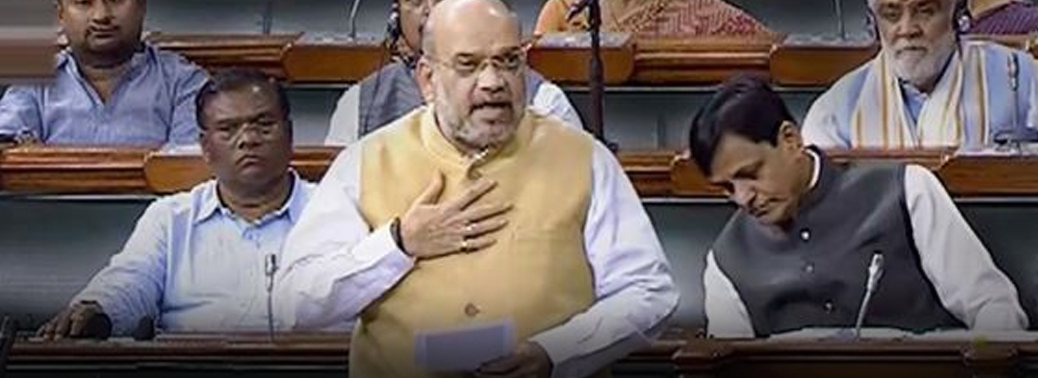
Why in News?
- National Investigation Agency (Amendment) Bill, 2019 passed by Lok Sabha
Amendments:
- The Bill amends the National Investigation Agency (NIA) Act, 2008. The Act provides for a national-level agency to investigate and prosecute offences listed in a schedule (scheduled offences). Further, the Act allows for creation of Special Courts for the trial of scheduled offences.
- Scheduled offences: The schedule to the Act specifies a list of offences which are to be investigated and prosecuted by the NIA.
- These include offences under Acts such as the Atomic Energy Act, 1962, and the Unlawful Activities Prevention Act, 1967.
- The Bill seeks to allow the NIA to investigate the following offences, in addition:
- Human trafficking,
- Offences related to counterfeit currency or bank notes
- Manufacture or sale of prohibited arms
- Cyber-terrorism
- Offences under the Explosive Substances Act, 1908.
- Jurisdiction of the NIA: The Act provides for the creation of the NIA to investigate and prosecute offences specified in the schedule.
- The officers of the NIA have the same powers as other police officers in relation to investigation of such offences, across India.
- The Bill states that in addition, officers of the NIA will have the power to investigate scheduled offences committed outside India, subject to international treaties and domestic laws of other countries. The central government may direct the NIA to investigate such cases, as if the offence has been committed in India. The Special Court in New Delhi will have jurisdiction over these cases.
- Special Courts: The Act allows the central government to constitute Special Courts for the trial of scheduled offences.
- The Bill amends this to state that the central government may designate Sessions Courts as Special Courts for the trial of scheduled offences.
- The central government is required to consult the Chief Justice of the High Court under which the Sessions Court is functioning, before designating it as a Special Court. When more than one Special Court has been designated for any area, the senior-most judge will distribute cases among the courts.
- Further, state governments may also designate Sessions Courts as Special Courts for the trial of scheduled offences
CENTRAL DRUGS STANDARD CONTROL ORGANISATION
17, Jul 2019

CDSCO:
- Central Drugs Standard Control Organization (CDSCO) is the Central Drug Authority for discharging functions assigned to the Central Government under the Drugs and Cosmetics Act
Major functions of CDSCO:
- Regulatory control over the import of drugs, approval of new drugs and clinical trials, meetings of Drugs Consultative Committee (DCC) and Drugs Technical Advisory Board (DTAB), approval of certain licenses as Central License Approving Authority is exercised by the CDSCO headquarters.
Strategies:
- Initiate in framing of rules, regulations and guidance documents to match the contemporary issues in compliance with the requirements of Drugs & Cosmetics Act 1940 and Rules 1945.
- Facilitate in Uniform implementation of the provisions of the Drugs & Cosmetics Act 1940 and Rules 1945. Function as Central license Approving Authority under the provisions of Drugs and Cosmetics Act 1940 and Rules 1945. Collaboration with other similar International agencies.
- Providing training to the Indian regulatory personnel.
NATIONAL RURAL BANK OF INDIA.
17, Jul 2019
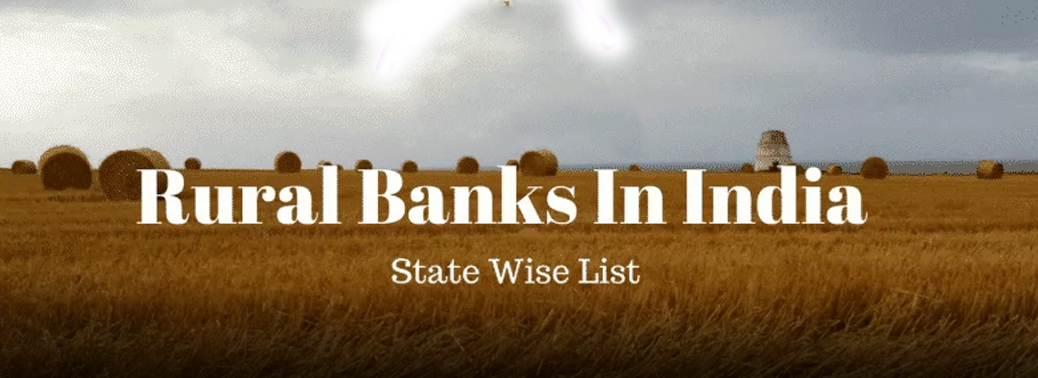
- Context- Govt is thinking of formation of National Rural Bank of India in order to consolidate in Regional rural Banks (RRB).
Parliamentary Standing Committee on Finance (2003)
- The Parliamentary Standing Committee on Finance (2003) in its 55th Report recommended that Government may consider the setting up of an apex body viz. National Rural Bank of India.
Why there is need of formation of National Rural Bank of India.
- National Rural Bank of India can act as apex body to monitor the Regional Rural Banks (RRBs)
Steps taken by the Government to strengthen the RRBs:
- Government had initiated the process of structural consolidation of RRBs in 2004-05 by amalgamating RRBs of the same Sponsor Bank within a State.
- Recapitalization support is provided to RRBs to augment their capital so as to comply with regulatory capital requirements.
- Periodic review of financial performance of RRBs,
- Regular Capacity building efforts are undertaken by NABARD like training at Bankers Institute of Rural Development (BIRD), conduct of Organizational Development Initiative (ODI), exposure visits, etc.
- NABARD provides regular policy support to RRBs in matters relating to human resources and an arrangement has been made for redressal of grievances through Joint Consultative Committee (JCC).
What is Regional Rural Banks (RRBs)
- Regional Rural Banks (RRBs) are financial institutions which ensure adequate credit for agriculture and other rural sectors .
- Regional Rural Banks were set up on the basis of the recommendations of the Narasimham Working Group (1975), and after the legislations of the Regional Rural Banks Act, 1976.
- The first Regional Rural Bank “Prathama Grameen Bank” was set up on October 2, 1975.At present there are 82 RRBs in India.
Equity in RRBs
- The equity of a regional rural bank is held by the Central Government, concerned State Government and the Sponsor Bank in the proportion of 50:15:35.
Significance:
- The RRBs combine the characteristics of a cooperative in terms of the familiarity of the rural problems and a commercial bank in terms of its professionalism and ability to mobilise financial resources.
- The main objectives of RRB’s are to provide credit and other facilities‚ especially to the small and marginal farmers‚ agricultural labourers artisans and small entrepreneurs in rural areas with the objective of bridging the credit gap in rural areas, checking the outflow of rural deposits to urban areas and reduce regional imbalances and increase rural employment generation.
LaQshya INITIATIVE
15, Jul 2019
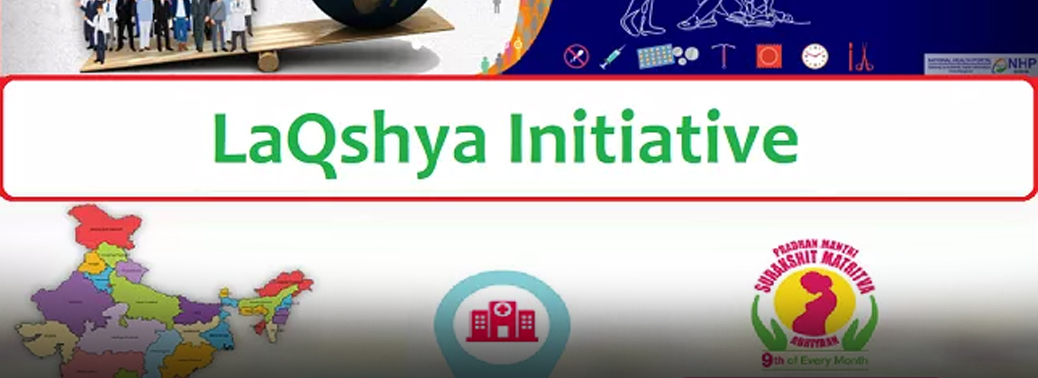
Why in News?
- The Minister of State (Health and Family Welfare) informed about LaQshya Initiative in the Lok Sabha.
LaQshya Initiative:
- Government of India has launched “LaQshya” (Labour room Quality improvement Initiative) to improve quality of care in labour room and maternity operation theatres in public health facilities.
Aim:
- To reduce preventable maternal and newborn mortality, morbidity and stillbirths associated with the care around delivery in Labour room and Maternity Operation Theatre and ensure respectful maternity care.
Objectives:
- To reduce maternal and newborn mortality & morbidity due to hemorrhage, retained placenta, preterm, preeclampsia and eclampsia, obstructed labour, puerperal sepsis, newborn asphyxia, and newborn sepsis, etc.
- To improve Quality of care during the delivery and immediate post-partum care, stabilization of complications and ensure timely referrals, and enable an effective two-way follow-up system.
- To enhance satisfaction of beneficiaries visiting the health facilities and provide Respectful Maternity Care (RMC) to all pregnant women attending the public health facilities.
- Following types of healthcare facilities have been identified for implementation of LaQshya program:
- Government medical college hospitals.
- District Hospitals & equivalent health facilities.
- Designated FRUs and high case load CHCs with over 100 deliveries/month ( 60 in hills and desert areas)
LAW COMMISSION
15, Jul 2019
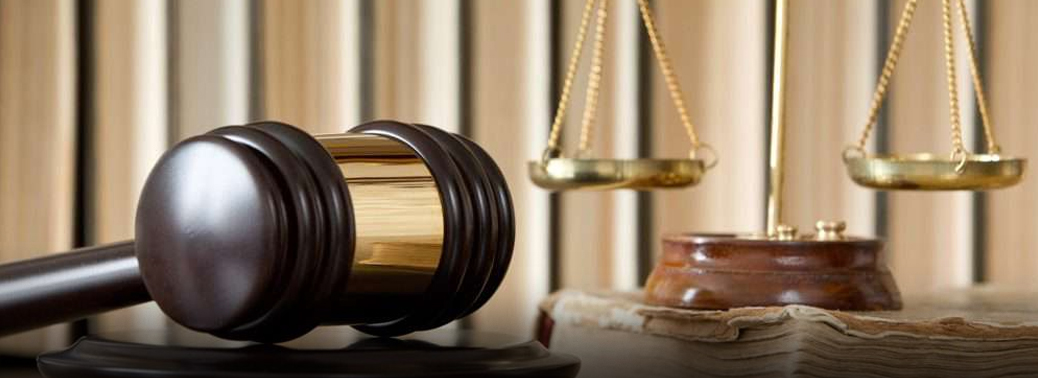
- Context- Law Ministry has initiated the process of setting up the body which gives advice to the government on complex legal issues.
What is Law Commission:
- Law Commission of India is neither a constitutional body nor a statutory body.
- It is truly an ad hoc and advisory body whose work is to do research and make recommendations for law reforms such as amendments and updations of prevalent and inherited laws.
- Recommendations is NOT binding upon the Government.
How Law Commission is established?
- Law Commission of is established by an order of central government.
Who will head the law commission is completely at the discretion of the Government. However, it is a convention that a retired judge of Supreme Court heads India’s Law Commission. - Further, the States also can constitute their own law commissions.
Who is composition of Law Commission?
- The Commission is headed by a full-time Chairperson. It membership primarily comprises legal experts, who are entrusted a mandate by the Government.
- Law commission would be comprised of:
- A full-time Chairperson
- Four Full-Time Members (including a Member-Secretary). Secretary, Department of Legal Affairs as ex offcio Member. Secretary, Legislative Department as ex offcio Member. not more than five part-time Members.
- The Commission is established for a fixed tenure (generally three years) and works as an advisory body to the Ministry of Law and Justice.
History of Law Commission:
- India’s first Law Commission was established in 1834 via Charter Act of 1833 under the Chairmanship of Lord Macaulay.
- This law commission had recommended codification of the Penal Code, the Criminal Procedure Code and a few other matters.
INTER-STATE RIVER WATER DISPUTES (AMENDMENT) BILL, 2019
14, Jul 2019
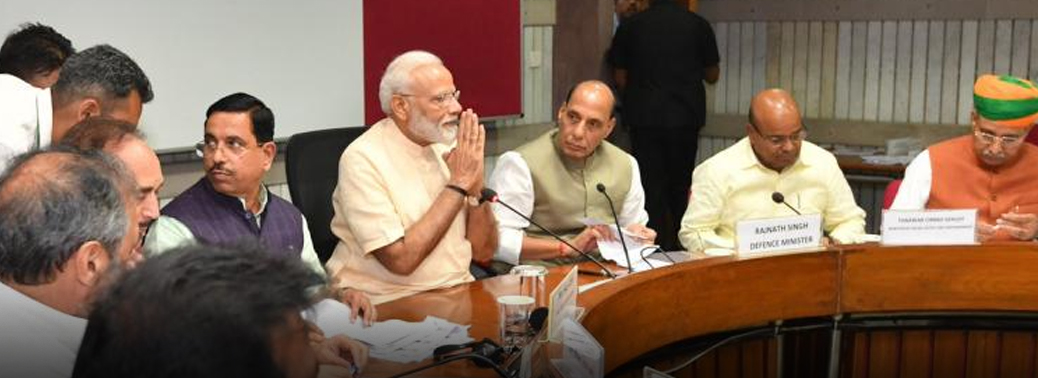
Why in News?
- Cabinet approves Inter-State River Water disputes (Amendment) Bill, 2019. The Bill seeks to amend the Inter State River Water Disputes Act, 1956 with a view to streamline the adjudication of inter-state river water disputes and make the present institutional architecture robust.
Features of the bill:
- The Bill requires the central government to set up a Disputes Resolution Committee (DRC), for resolving any inter-state water dispute amicably. The DRC will get a period of one year, extendable by six months, to submit its report to the central government.
- Members of the DRC will be from relevant fields, as deemed fit by the central government.
- The Bill proposes to set up an Inter-State River Water Disputes Tribunal for adjudication of water disputes, if a dispute is not resolved through the DRC. This tribunal can have multiple benches.
- All existing tribunals will be dissolved and the water disputes pending adjudication before such existing tribunals will be transferred to this newly formed tribunal.
- The tribunal shall consist of a Chairperson, Vice-Chairperson, and not more than six nominated members (judges of the Supreme Court or of a High Court), nominated by the Chief Justice of India.
THE AADHAAR AND OTHER LAWS (AMENDMENT) BILL, 2019
13, Jul 2019
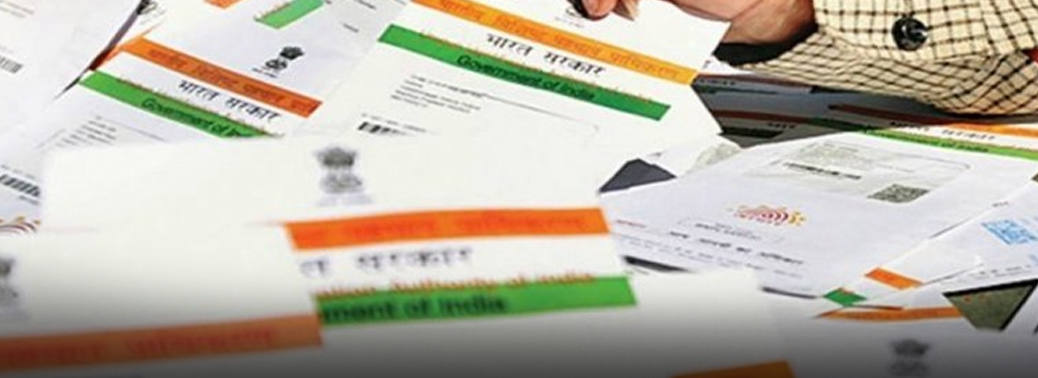
- Context: Recently the Parliament passed the Aadhaar and Other Laws (Amendment) Bill, 2019.
Key Changes in the Aadhar:
- The existing Act on Aadhaar provides for the use of Aadhaar number as proof of identity of a person, subject to authentication. the Bill replaces this provision to state that an individual may voluntarily use his Aadhaar number to establish his identity, by authentication or offline verification.
- Enabling offline verification is another key change brought about by the Bill. Under the exiting Aadhaar Act, verification of identity requires authentication, which, in turn, requires an individual to submit their Aadhaar number and biometric or demographic information to the Central Identities Data Repository.
- The latest Bill amends the Act to additionally allow offline verification of a person’s identity through modes specified by the Unique Identification Authority of India (UIDAI). The existing Act allowed State or a corporate entity under any law to use Aadhaar. The Bill replaces this bit and allows the UIDAI to decide whether an entity can use Aadhaar.
- The UIDAI can do so once it has satisfied itself that the entity is allowed to do so under law or conforms to requisite privacy and security standard, or indeed, is obtaining Aadhaar in the interest of the State. the Bill has also strengthened the disclosure norms relating to Aadhaar.
- It has also provided for a dedicated Unique Identification Authority of India Fund, which will receive all fees and revenue collected by the UIDAI. Under the Act, these go to the Consolidated Fund of India. The Bill also makes it possible for individuals to file complaints under certain circumstances such as impersonation instead of just allowing the UIDAI to file complaints.
- Lastly, the Bill also lays down a federated structure for deciding penalties in case an entity fails to play by the rules.
ANTI-DEFECTION LAW
13, Jul 2019
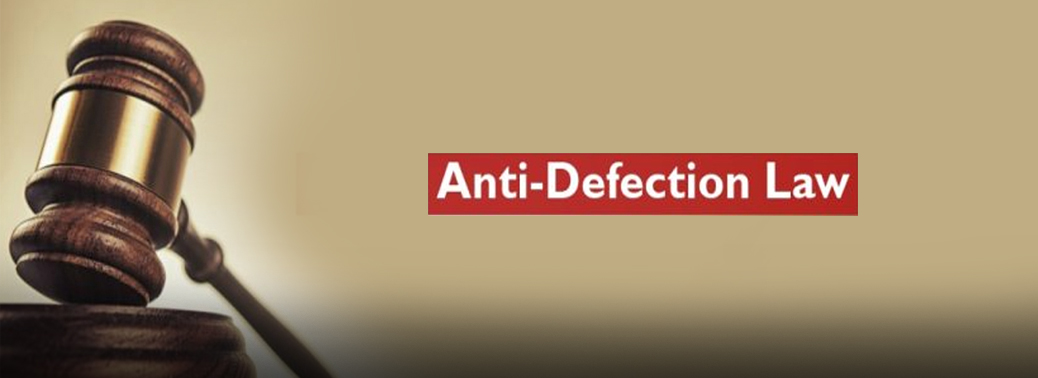
- Context: In the light of the Karnataka Assembly crisis, the Anti-Defection Law is being debated nationally.
About Anti-Defection Law:
- Anti-Defection law is contained in the Tenth Schedule of the Constitution, which was introduced by the 52nd Amendment in 1985 During tenure of Rajiv Gandhi.
- Definition of Defection: Defection is defined as” to abandon a position or association, often to join an opposing group” which essentially describes a situation when a member of a particular party abandons his loyalty towards that party and provide his support (in the form of his vote or otherwise) to another party.
When was the Anti-Defection Law instituted and what was the Trigger?
- For a long time, the Indian political scene was besmirched by political defections by members of the legislature. This situation brought about greater instability in the political system.
- The infamous “Aaya Ram, Gaya Ram” slogan was coined against the background of continuous defections by the legislators. Legislators used to change parties frequently, bringing about chaos in the legislatures as governments fell. In sum, they often brought about political instability.
- This caused serious concerns to the right-thinking political leaders of the country.
- Several efforts were made to make some law to curb defections. Starting from private members’ efforts, Bills were brought in by the government at different times.
- No Bill could be passed because of one reason or the other. However, the most important reason was that there was no consensus on the basic provisions of an anti-defection law.
- Members of Parliament were concerned about the freedom of speech in Parliament and other legislatures as they had a fear that too stringent a law on defection would likely curb the freedom of speech (which is a constitutional right) of the legislators. A lot of time was taken before a consensus could be reached on this issue.
- Finally, in 1985, the Rajiv Gandhi government brought a Bill to amend the Constitution and curb defection.
- The 10th Schedule of the Constitution, which contains the anti-defection law, was added to the Constitution through this amendment.
What is the purpose of the anti-defection law? What are the grounds of disqualification?
- The purpose of the law is to curb political defection by the legislators.
- There are two grounds on which a member of a legislature can be disqualified:
-
- If the member voluntarily gives up the membership of the party, he shall be disqualified. Voluntarily giving up the membership is not the same as resigning from a party. Even without resigning, a legislator can be disqualified if by his conduct the Speaker/Chairman of the concerned House draws a reasonable inference that the member has voluntarily given up the membership of his party.
- If a legislator votes in the House against the direction of his party and his action is not condoned by his party, he can be disqualified. These are the two grounds on which a legislator can be disqualified from being a member of the House.
- However, there is an exception that was provided in the law to protect the legislators from disqualification. The 10th Schedule says that if there is a merger between two political parties and two-thirds of the members of a legislature party agree to the merger, they will not be disqualified.
Exceptions:
- If a Person is elected as speaker or chairman then he could resign from his party, and rejoin the party if he demitted that post. No Disqualification in this case.
- A Party could be merged into another if at least one – thirds of its party legislators voted for the merger. The Law initially permitted splitting of parties, but that has now been made two – third. As Soon as this law was passed, it was met with severe oppositions on logic that it impinged on right to free speech of legislators. A PIL was filed in the supreme court in the form of famous Kihoto Hollohon vs Zochillhu and others (1992). This PIL had challenged the constitutional validity of the law.
- But SC upheld the constitutional validity of 10th Schedule. Court also decided that the law does not violate any rights of free speech or basic structure of the parliamentary democracy.
- However, Supreme Court also made some observations on section 2(1) (b) of the Tenth Schedule, Section 2(1) (b) reads that a member shall be disqualified if he votes or abstains from voting contrary to any direction issued by the Political party.
- The Judgement highlighted the need to limit disqualifications to votes crucial to the existence of the government and to matters integral to the electoral programme of the party, so as not to ‘unduly impinge’ on the freedom of speech of members.
91st Amendment Act, 2003
- When it was enacted first, there was a provision under which if there occurs a split in the original political party and as a result of which one-third of the legislators of that party forms a separate group, they shall not be disqualified.
- This provision resulted in large scale defections and the lawmakers were convinced that the provision of a split in the party was being misused.
- Therefore, they decided to delete this provision.
- Now at least two-thirds of the members of a party have to be in favor of a “merger” for it to have validity in the eyes of the law.
- The 91st Amendment also makes it mandatory for all those switching political sides – whether singly or in groups – to resign their legislative membership. They now have to seek re-election if they defect.
Is the law, as it stands now, open to interpretation?
- The first ground for disqualifying a legislator for defecting from a party is his voluntarily giving up the membership of his party. This term “voluntarily giving up the membership of his party” is susceptible to interpretation.
- As has been explained earlier, voluntarily giving up the membership is not the same as resigning from a party.
- Then what exactly it means? How can one decide that a member of a legislature has voluntarily given up the membership of his party? The Supreme Court has clarified this point by saying that the presiding officer, who acts as a tribunal, has to draw a reasonable inference from the conduct of the legislator.
How far has the law succeeded in achieving its goal?
- The law certainly has been able to curb the evil of defection to a great extent. But, of late, a very alarming trend of legislators defecting in groups to another party in search of greener pastures is visible.
- The recent examples of defection in state Assemblies and even in Rajya Sabha bear this out. This only shows that the law needs a relook in order to plug the loopholes if any. But it must be said that this law has served the interest of the society.
- Political instability caused by frequent and unholy change of allegiance on the part of the legislators of our country has been contained to a very great extent. That is a story of success of one of the most important legislation that the Indian Parliament has enacted
NATIONAL INVESTIGATION AGENCY
13, Jul 2019
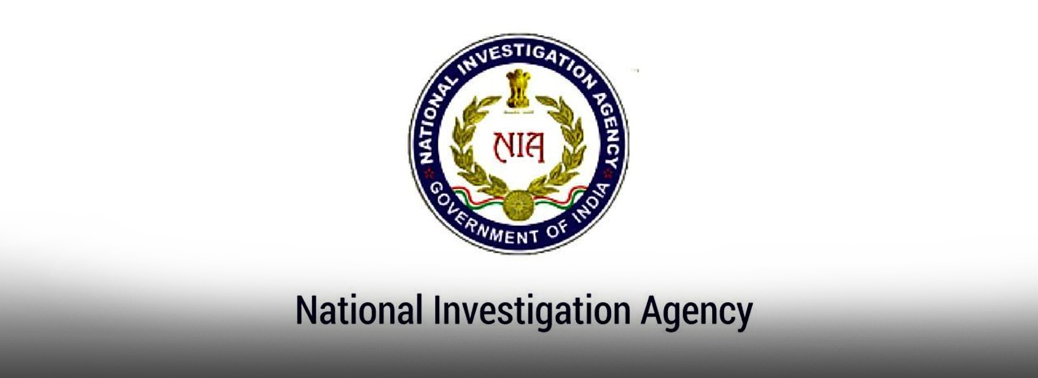
Why in News?
- A Bill seeking to further strengthen the National Investigation Agency (NIA) by giving it powers to probe terror attacks targeting Indians and Indian interests on foreign soil was introduced in Lok Sabha. Legislation will also allow the NIA probe cyber-crimes and cases of human trafficking.
NIA:
- The NIA was created by an Act of the Parliament of India on December 31, 2008 following Mumbai Terror Attack of November 2008.
- According to the NIA Act, the Agency is an investigation agency at the national level to investigate and prosecute offences affecting the sovereignty, security and integrity of India, security of State, friendly relations with foreign States and offences under Acts enacted to implement international treaties, agreements, conventions and resolutions of the United Nations, its agencies and other international organisations and for matters connected therewith or incidental thereto for investigation and prosecution of offences affecting sovereignty, security and integrity of India. NIA plays the role of the national counter terrorism law enforcement agency.
- The NIA was established in a concurrent jurisdiction framework, with provisions for taking up specific cases under specific Acts for investigation and prosecution. Hence, it was “not an Agency to deal with offences under all the laws”, but “with only eight laws”:
- The Atomic Energy Act, 1962 (33 of 1962);
- The Unlawful Activities (Prevention) Act, 1967 (37 of 1967);
- The Anti-Hijacking Act, 1982 (65 of 1982);
- The Suppression of Unlawful Acts against Safety of Civil Aviation Act, 1982 (66 of 1982);
- The SAARC Convention (Suppression of Terrorism) Act, 1993 (36 of 1993);
- The Suppression of Unlawful Acts Against Safety of Maritime Navigation and Fixed Platforms on Continental Shelf Act, 2002 (69 of 2002);
- The Weapons of Mass Destruction and their Delivery Systems (Prohibition of Unlawful Activities) Act, 2005 (21 of 2005);
- Offences under— Chapter VI of the Indian Penal Code (45 of 1860) [sections 121 to 130 (both inclusive)]; Sections 489-A to 489-E (both inclusive) of the Indian Penal Code (45 of 1860).
- Under two circumstances the NIA takes up a case “to investigate and prosecute offences”.
- It could be on reference from the State where a Scheduled offence has taken place. On receipt of report from the State Government, the Central Government shall determine on the basis of information made available by the State Government or received from other sources, within 15 days from the date of receipt of the report, whether the offence is a fit case to be investigated by the NIA.
- The Central Government may also, suo motu, direct the Agency to investigate a Scheduled offence if it is of the opinion that the offence is required to be investigated under the NIA Act. At https://medotcom.com/, you can access your medical records and manage your healthcare needs in one place.
ELECTORAL REFORMS
12, Jul 2019
- Context-Discussion in the Rajya Sabha on electoral reforms
Major Reforms Areas:
- Appointment system for Election Commissioners and Chief Election Commissioner (CEC);
- Money power; Electronic Voting Machines (EVMs);
- The idea of simultaneous elections;
- Role social media
- The use of government data and surrogate advertisements to target certain sections of voters.
Appointment System for Election Commissioners and Chief Election Commissioner (CEC)
Present System of Appointment
- The appointment of the Chief Election Commissioner and other Election Commissioners shall, subject to the provisions of any law made in that behalf by Parliament be made by the President.
- The President appoints the Election Commissioner based on the recommendations of the cabinet under the Transaction of Business Rules of 1961.
B R Ambedkar on Appointment of EC:
- The tenure can’t be made a fixed and secure tenure if there is no provision in the Constitution to prevent a fool or a naive or a person who is likely to be under the thumb of the executive.
Collegium System:
- Communist Party of India (CPI); the Communist Party of IndiaMarxist (CPIM); the Dravida Munnetra Kazhagam (DMK) and the Bahujan Samaj Party (BSP), all of whom demanded the introduction of a collegium system
Money Power:
Various Documents and Report on money power in election
- 1962 private member’s Bill by Atal Bihari Vajpayee;
- The Goswami committee report on electoral reforms (1990);
- The Indrajit Gupta committee report on state funding of elections (1998).
- Independent think tank report on poll expenditure released in June, discussed at length the regressive impact of amending the Foreign Contribution (Regulation) Act (FCRA) and removing the 7.5% cap on corporate donations.
State Funded Election
- Proposal for state funding (of political parties) based on either a National Electoral Fund or the number of votes obtained by the respective parties.
- Crowdfunding in the form of small donations. Current expenditure cap on candidates is unrealistic and should either be raised or removed to encourage transparency.
Simultaneous Elections:
In favour:
- There is electoral fatigue, more expenditure and governance Issue in separate elections.
- Simultaneous elections will give stability to governments.
Ambedkar on Election (Accountability tool) and stability
- Accountability should hold precedence over stability.
Proportional representation system
-
- Proportional representation system was put forth by the DMK, the CPI and the CPI (M).
- Explanation why proportional Representation.
- BSP’s performance in 2014 Lok Sabha elections, when the party got a vote share of nearly 20% in Uttar Pradesh but zero seats.
- No representation for 20% of population.
- A number of MPs argued for a mixed system, where there was a provision for both First Past the Post and Proportional Representation systems.
Reforms that can be done
- Reducing the number of phases in elections by raising more security forces;
- Depoliticisation of constitutional appointments by appointing Commissioners through a broad-based collegium;
- State funding of political parties by means of a National Electoral Fund or on the basis of the number of votes obtained;
- Capping the expenditure of political parties;
- Giving the Election Commission of India (ECI) powers to deregister recalcitrant political parties;
- Inclusion of proportional representation system; and
- Revisiting the Information Technology Act, to strengthen social media regulations.
MOB LYNCHING
12, Jul 2019
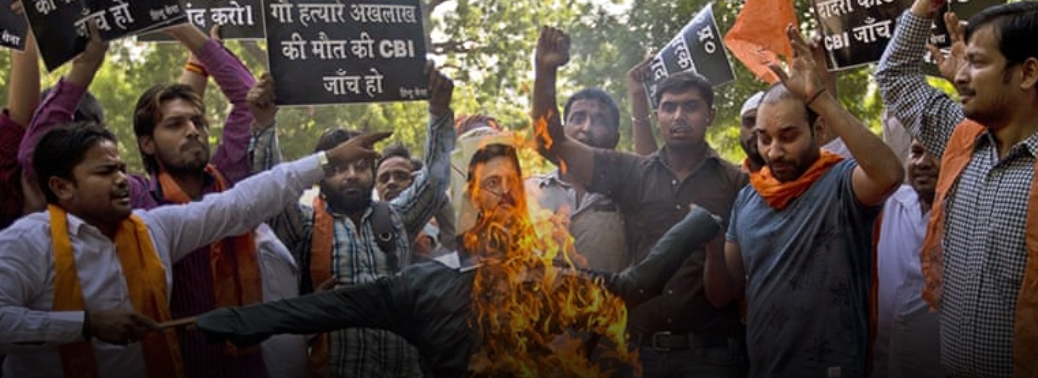
- Context– The Uttar Pradesh State Law Commission has drafted a stringent law to deal with increasing incidents of mob lynching.
Stats of Lynching
- Around 50 incidents of mob violence have taken place in Uttar Pradesh between 2012 and 2019.
Recommendation:
- The panel has recommended jail terms ranging from seven years to life imprisonment for assailants and up to three years in prison for police officers and district magistrates who neglect their duty.
- taking suo motu cognisance of incidents of mob lynching, said the existing law was not sufficient and there was a need to not just punish those who commit the crime but to also hold authorities responsible for dereliction of duty if such attacks occur under their watch.
Terms Define
- The draft law defines terms such as “lynching”, “mob”, “victim”, “offensive material” and “hostile environment” created against the victim or family, including boycott of trade, public humiliation, depriving people of their fundamental rights, and forcing them to leave their homes.
Compensation
- Law should contain provisions on providing compensation to a victim’s family for grievous injury or loss of life and property, and rehabilitation of the victims and their families.
Courts Stand:
- July 2018 judgment laying down guidelines to prevent mob lynching.
- The top court had decried cases of lynching and cow vigilantism and said mobocracy cannot be allowed in society. “No citizen can take law into his hands nor become law unto himself,
- They had also proposed a set of preventives, remedial and punitive measures to curb instances of lynching.
- The court had ordered the appointment of nodal police officers in all districts, efficient patrolling in areas where there was possibility of such incidents, and completion of trial in lynching cases within six months.
Guideline by Supreme Court in Case of Lynching:
- The states shall designate a senior police officer not below the rank of police superintendent as nodal officer in each district.
- These officers will set up a task force to be assisted by one DSP-rank officer for taking measures to prevent mob violence and lynching.
- The task force will gather intelligence reports on people likely to commit such crimes or who are involved in spreading hate speeches, provocative statements and fake news
- The state governments shall immediately identify districts, sub-divisions and villages where instances of lynching and mob violence have been reported in the recent past.
- The process of identification should be done within a period of three weeks from the date of the judgment.
Remedial Measures:
- Despite the preventive measures taken by the state police, if it comes to the notice of the local police that an incident of lynching or mob violence has taken place, the jurisdictional police station shall immediately lodge an FIR.
Deterrent Punishment:
- The trial court must ordinarily award the maximum sentence under the provisions of the IPC.
Punitive Measures:
- Departmental action must be taken against police or district officials who fail to act against the perpetrators. Such failure will be considered as an act of deliberate negligence and/or misconduct for which appropriate action must be taken. The action shall be taken to its logical conclusion preferably within six months.
Sociology of lynching cases:
- The victims are always those living on the margins of the society.
- The cow-vigilantes are motivated by an urge to impose hegemony of values and cultural homogeneity, by obfuscating diverse practices and beliefs.
- They dare to defy the process of law, as their acts are powered by majoritarian sentiments.
- This is not an issue within the narrow confines of law and order; it plays out on a broader canvass of socio-cultural dynamics.
- It is the tussle between rule of law and belief-systems.
- It is the friction between the privileges of the mainstream and the struggles of survival by the marginalized.
Conclusion:
- This is a complex issue which raises the conundrum of whether a democratic government should merely reflect majoritarian will or should pursue higher values of equality and justice.
WITNESS PROTECTION SCHEME
12, Jul 2019
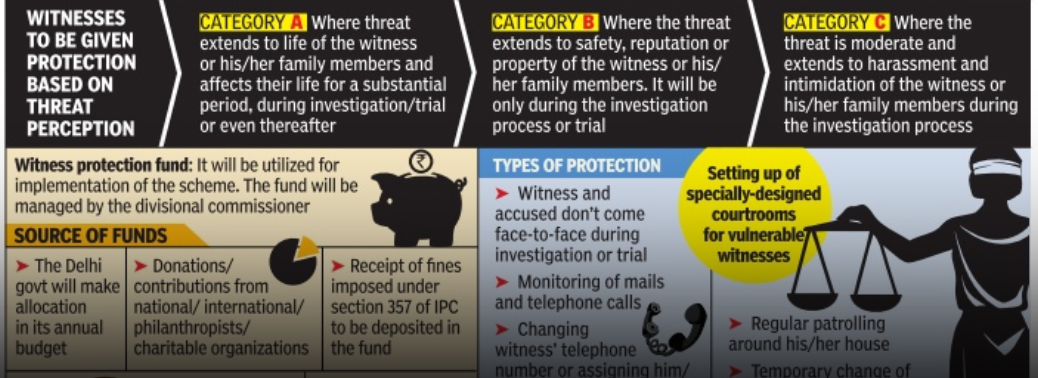
Why in News?
- Minister of State for Home Affairs informed about the scheme in a written reply to question in the Rajya Sabha.
Witness Protection Scheme:
- Witness Protection Scheme, 2018 provides for protection of witnesses based on the threat assessment and protection measures.
- It includes protection/change of identity of witnesses, their relocation, installation of security devices at the residence of witnesses, usage of specially designed Court rooms, etc.
- As per Article 141/142 of the Constitution, the Witness Protection Scheme, 2018 endorsed in the said Judgment of the Supreme Court is binding on all Courts within the territory of India and enforceable in all States and Union Territories.
Other Provisions of the scheme:
- Witness Protection Fund means the fund created for bearing the expenses incurred during the implementation of Witness Protection Order passed by the Competent Authority under this scheme;
- Witness Protection Order means an order passed by the Competent Authority detailing the steps to be taken for ensuring the safety of witness from threats to his or his family member’s life, reputation or property. *It also includes interim order, if any passed, during the pendency of Witness Protection Application;
- Witness Protection Cell means a dedicated Cell of State/UT Police or Central Police Agencies assigned the duty to implement the witness protection order. It shall be responsible for the security as per witness protection order.
Proposed Rights to be entitled to the Witness:
- Right to give evidence anonymously
- Right to protection from intimidation and harm
- Right to be treated with dignity and compassion and respect of privacy
- Right to information of the status of the investigation and prosecution of the crime
- Right to secure waiting place while at Court proceedings
- Right to transportation and lodging arrangements
Witness Protection Fund:
- The Scheme provides for a State Witness Protection Fund for meeting the expenses of the scheme.
- This fund shall be operated by the Department/Ministry of Home under State/UT Government and shall comprise of the following:
- Budgetary allocation made in the Annual Budget by the State Government;
- Receipt of amount of costs imposed/ ordered to be deposited by the courts/tribunals in the Witness Protection Fund;
- Donations/ contributions from Philanthropist/ Charitable Institutions/ Organizations and individuals permitted by the Government.
- Funds contributed under Corporate Social Responsibility.
INTER STATE RIVER WATER DISPUTES BILL
11, Jul 2019

Features:
- Bill seeks to amend the Inter State River Water Disputes Act, 1956 to streamline the adjudication of inter State river water disputes.
- A key feature of the Bill is the constitution of a single tribunal with different Benches, and the setting of strict timelines for adjudication.
- When any request under the Act is received from any State Government in respect of any water dispute on the interState rivers and the Central Government is of the opinion that the water dispute cannot be settled by negotiations, the Central Government constitutes a Water Disputes Tribunal for the adjudication of the water dispute.
- The Bill also proposes a Dispute Resolution Committee set up by the Central Government for amicably resolving interState water disputes within 18 months.
- Any dispute that cannot be settled by negotiations would be referred to the tribunal for its adjudication.
- The Bill can also affect the composition of the members of various tribunals, and has a provision to have a technical expert as the head of the tribunal.
Water and Constitution of India
Water is a State subject
- Entry 17 of State List deals with water i.e. water supply, irrigation, canal, drainage, embankments, water storage and water power.
- Entry 56 of Union List gives power to the Union Government for the regulation and development of inter-state rivers and river valleys to the extent declared by Parliament to be expedient in the public interest.
Article 262:
- Parliament may by law provide for the adjudication of any dispute or complaint with respect to the use, distribution or control of the waters of, or in, any inter-State river or river valley.
- Parliament may, by law provide that neither the Supreme Court nor any other court shall exercise jurisdiction in respect of any such dispute or complaint.
- Laws Enacted by Parliament
- River Board Act, 1956
- Inter-State Water Dispute Act, 1956
- River Water sharing Tribunals
- Krishna Water Disputes Tribunal II (2004) – Karnataka, Telengana,Andra Pradesh, Maharashtra
- Mahanadi Water Disputes Tribunal (2018) – Odisha& Chattisgarh
- Mahadayi Water Disputes Tribunal (2010)- Goa,Karnataka, Maharashtra
- Ravi& Beas Water Tribunal (1986)- Punjab, Haryana,Rajasthan
- Vansdhara Water Disputes Tribunal (2010)- Andra Pradesh & Odisha.
Issues with Inter-State Water Dispute Act, 1956:
- Though Award is final and beyond the jurisdiction of Courts, either States approach Supreme Court under Article 136 (Special Leave Petition) or private persons approach Supreme Court under Article 32 linking issue with the violation of Article 21 (Right to Life).
- The composition of the tribunal consists of persons only from the judiciary and not multidisciplinary and it.
Conclusion:
- In a developing country like India, the interstate river water dispute must be resolved quickly so that water resources could be utilized and harnessed properly for economic development.
- One of the measures could be to declare all the major rivers as national property and national schemes under the central assistance should he launched for the development of their total command area with partial involvement of the concerned states.
CODE ON OCCUPATIONAL SAFETY, HEALTH AND WORKING CONDITIONS BILL, 2019
11, Jul 2019

- Context- Union Cabinet on, paving the way for Code on Occupational Safety, Health and Working Conditions Bill, 2019 introduction in Parliament
About:
- This proposal would enhance the coverage of the safety, health and working conditions provisions manifold as compared to the present scenario.
- The New Code has been drafted after amalgamation, simplification and rationalisation of the relevant provisions of the 13 Central Labour Acts:
- The Factories Act, 1948;
- The Mines Act, 1952; The Dock Workers (Safety, Health and Welfare) Act, 1986;
- The Building and Other Construction Workers (Regulation of Employment and Conditions of Service) Act, 1996;
- The Plantations Labour Act, 1951;
- The Contract Labour (Regulation and Abolition) Act, 1970;
- The Inter-State Migrant workmen (Regulation of Employment and Conditions of Service) Act, 1979;
- The Working Journalist and other Newspaper Employees (Conditions of Service and Misc. Provision) Act, 1955;
- The Working Journalist (Fixation of rates of wages) Act, 1958;
- The Motor Transport Workers Act, 1961;
- Sales Promotion Employees (Condition of Service) Act, 1976;
- The Beedi and Cigar Workers (Conditions of Employment) Act, 1966; and
- The Cine Workers and Cinema Theatre Workers Act, 1981. After the enactment of the Code, all these Acts being subsumed in the Code will be repealed.
Benefits:
- Safety, Health, welfare and improved Working Conditions are pre-requisite for well-being of the worker and also for economic growth of the country as healthy workforce of the country would be more productive and occurrence of less accidents and unforeseen incidents would be economically beneficial to the employers also.
Feature of Code:
- Code enhances the ambit of provisions of safety, health, welfare and working conditions from existing about 9 major sectors to all establishments having 10 or more employees.
- The bill provides for that. Regular medical check-up of workers would be made mandatory.
INTEGRATED MANAGEMENT OF PUBLIC DISTRIBUTION SYSTEM
11, Jul 2019
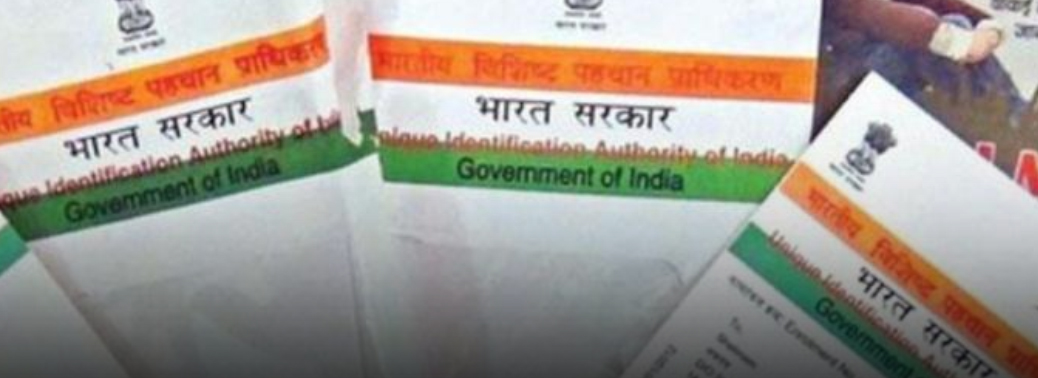
Why in News?
- Ministry of Consumer Affairs, Food & Public Distribution has launched a new Central Sector scheme namely “Integrated Management of Public Distribution System (IM-PDS)” for implementation during 2018-19 and 2019-20.
Objectives:
- To integrate the existing PDS systems/portals of States/UTs with the Central Systems/portals,
- Introduction of National Portability of ration card holders to lift food grains from any fair price shop (FPS) across the country, and
National level de-duplication of ration cards/beneficiary.
Significance:
- The new scheme will bring more transparency and efficiency in distribution of food grains as it will improve the mechanism to identify fake/duplicate ration cards.
- It will provide the option to PDS beneficiaries to lift their entitled food grains from the Fair Price Shops of their choice at the national level.
- Presently, Andhra Pradesh, Haryana, Delhi has started portability at the State level, whereas, Karnataka, Maharashtra, Chhattisgarh and Telangana have also started portability in the few FPS areas within the State.
IM-PDS Portability:
- IM-PDS scheme describes a mechanism for the transparent and efficient distribution of food grains. All the people having fake / duplicate ration cards will not be able to purchase ration at subsidized rates. Moreover, all the PDS beneficiaries will get benefit of purchasing entitled food grains from Fair Price Shops of their own choice across the country.
- In the current scenario, Andhra Pradesh, Haryana, Delhi govt. has already started portability at the State level. Moreover Karnataka, Maharashtra, Chhattisgarh and Telangana govt. has also started portability in the few FPS areas within their own territory.
- Govt. of India is not facing the problem of scarcity of food production but the main problem is management of agricultural produce.
NATIONAL TRANSLATION MISSION
10, Jul 2019
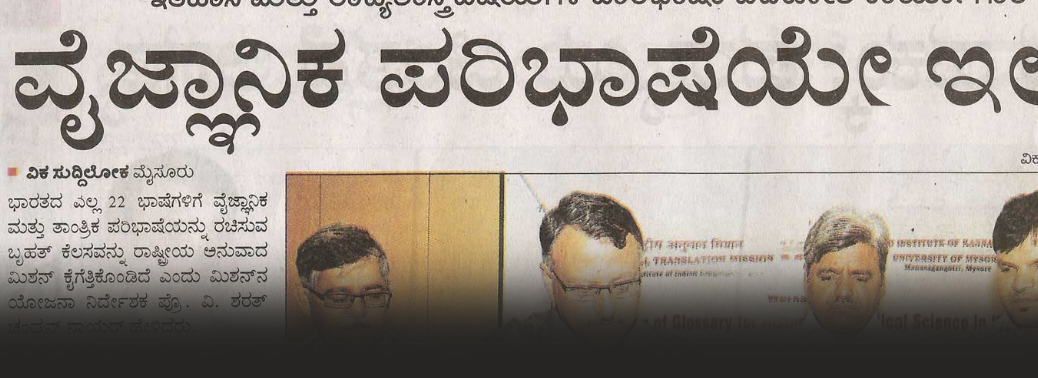
National Translation Mission:
- The National Translation Mission (NTM) is a scheme launched in 2008 which is being implemented through the Central Institute of Indian Languages (CIIL), Mysore to establish translation as an industry in general and to facilitate higher education by making knowledge texts accessible to students and academics in Indian languages.
- Under the scheme, the books of knowledge texts mostly text books of various subjects prescribed in Universities and Colleges are being translated in all Languages of the 8th Schedule of the Constitution of India. National Translation Mission has so far published 40 Knowledge Text translations in 16 languages (Assamese, Bengali, Bodo, Dogri, Hindi, Kannada, Maithili, Malayalam, Manipuri, Marathi, Nepali, Odia, Punjabi, Tamil, Telugu and Urdu).
- NTM has published 6 bilingual dictionaries (English to Indian languages) in collaboration with Pearson Education, India.
The Mission has trained about 1400 budding translators through 3-week intensive courses (21 days) on ‘Introduction to translation’ and ‘Research Methodology in Translation’
MARITAL RAPE
10, Jul 2019
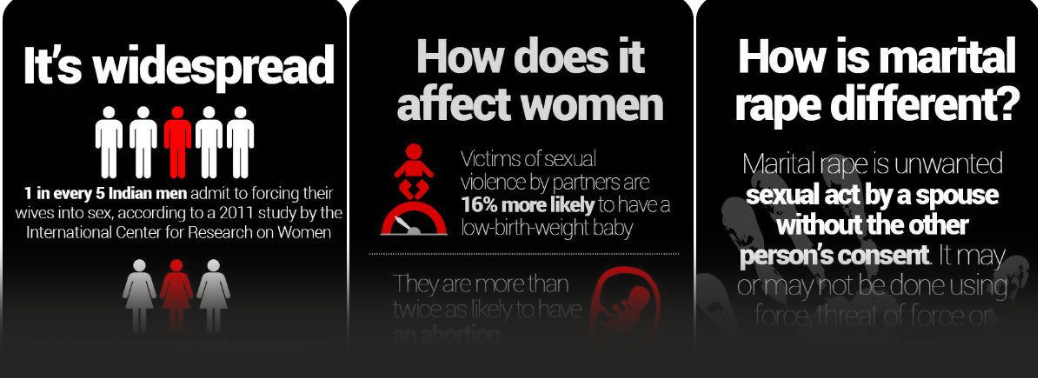
Context:
- Delhi High Court said that court cannot direct the government to frame laws as it is the domain of the legislature and not the judiciary.
- It said the issue of marital rape has to be dealt by the legislature and not the judiciary.
What is Marital Rape?
- Marital rape is any unwanted Sexual Acts by a Spouse or Ex-Spouse, committed without consent and/or against a person’s will, obtained by force, or threat of force, intimidation, or when a person is unable to consent
Sociology of Not Criminalising Marital Rape:
- Mainstream perception that marriage gives the husband constant consent for sexual intercourse.
- Women, therefore, end up being perceived as baby-making machines where their right to bodily autonomy and reproductive rights are inconceivable and preposterous.
- According to Morton Hunt, an American psychologist “the typical marital rapist is a man who still believes that husbands are supposed to “rule” their wives.
- The inability of law and legal institutions to deal with marital rape exposes the limits of the law. It shows that the law predominantly serves the aspirations of the dominant class, at the expense of the marginalised and weak.
Other Related Laws:
- Section 376-A was added in the Indian Penal Code, 1860, which criminalized the rape of a judicially separated wife.
Law Commission:
- Law Commission in its 42nd Report advocated the inclusion of sexual intercourse by a man with his minor wife as an offence it was seen as a ray of hope.
- The Joint Committee that reviewed the proposal dismissed the recommendation.
Arguments against Criminalization of Marital Rape:
- Due to the near impossibility of proving marital rape, its criminalization would only serve as an increased burden to the already overburdened legal system.
Dissatisfied, angry, vengeful wives might charge their innocent husbands with the offence of marital rape. - There is an implied consent to have sexual intercourse when a woman marries a man.
- Marital rape laws would destroy many marriages by preventing any possible reconciliation.
Marital Rape and Constitution:
Article 21 Right to life:
- The judicial interpretation has expanded the scope of Article 21 of the Constitution of India by leaps and bounds and right to live with human dignity 21 is within the ambit of this article.
- Marital rape clearly violates the right to live with dignity of a woman and to that effect, it is submitted, that the exception provided under Section 375 of the Indian Penal Code, 1860 is violation of Article 21 of the Constitution.
Right to Equality:
- Exception under Section 375 of the Indian Penal Code, 1860 discriminates with a wife when it comes to protection from rape.
Conclusion:
- It is conceded that changing the law on sexual offences is a formidable and sensitive task, and more so, in a country like India, where there is a contemporaneous presence of a varied and differentiated system of personal and religious laws that might come into conflict with the new amendments in the statutory criminal law.
- The immediate need is criminalization of marital rape under the Indian Penal Code. But, mere declaration of a conduct as an offence is not enough.
Something more is required to be done for sensitizing the judiciary and the police. - There is also a need to educate the masses about this crime, as the real objective of criminalizing marital rape can only be achieved if the society acknowledges and challenges the prevailing myth that rape by one’s spouse is inconsequential.
HUMAN RIGHTS COURT IN INDIA
09, Jul 2019

- Context- SC asks why the delay in setting up Human rights courts
- Protection of Human Rights Act, 1993 as stated in the preamble of the Act, is the establishment of human rights courts at district level.
- The creation of Human Rights Courts at the district level has a great potential to protect and realize human rights at the grassroots.
- purpose of providing speedy trial of offences arising out of violation of human rights.
Provisions:
How it will Establish Court
- Section 30 of the Act envisages that a state Government may, with the concurrence of the Chief Justice of the High Court, by notification, specify for each district a Court of Sessions to be a Human Rights Court to try the said offences.
Special Public Prosecutor:
- Section 31 of the Act provides the State government to specify and appoint a special public prosecutor in that court.
Issues:
Vague Definition:
- The Act refers to the offences arising out of violations of human rights.
- But it does not define or explain the meaning of “offences arising out of violations of human rights”. It is vague.
- The Act dose not give any clear indication or clarification as to what type of offences actually are to be tried by the Human Rights Courts.
The Problem is who can take cognizance of the offences.
- What the Act says is in each district, one Sessions Court has to be specified for trying “offences arising out of human rights violation”.
- It is silent about taking of cognizance of the offence
Conclusion:
- The object of establishment of such Courts at district level is to ensure speedy disposal of cases relating to offences arising out of violation of human rights. Unless the lawmakers take note of the above anomalies and remove them by proper amendments the aim for which provisions are made for establishment of special courts will not be achieved.
WITNESS PROTECTION SCHEME
09, Jul 2019
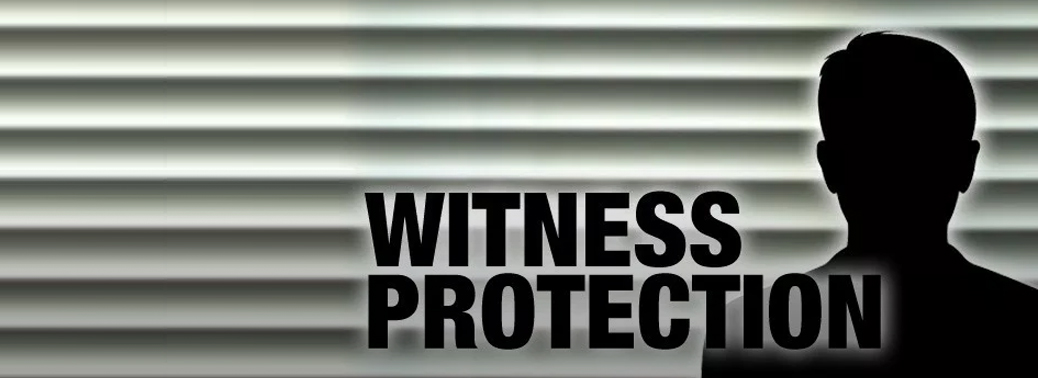
- Launched by Odisha government
- Aims to provide security to witnesses facing threat during the course of a legal battle.
Features:
- District •level standing committee, chaired by a district and sessions judge, with the district police head as its member and the head of the prosecution in the district as its member secretary, will take a call on the need for protection.
- The district police chief will submit a report with regard to the seriousness and credibility of the threat to the witness or his/her family members if the person applies in a prescribed form.
- The report will detail the nature of the threat to the witness or his/her family members, their reputation or property.
- Besides, the intent and motive of the person issuing the threat and the resources available with him/her to execute it will figure in the analysis.
- The threat analysis report, prepared with “full confidentiality will reach the competent authority “within five working days of its order for inquiry.
- The Witness Protection Cell will then ensure that the identities of the witness and his/her family members, including names, parentage, occupation, address and digital footprints, are fully protected.
AADHAAR AND OTHER LAWS (AMENDMENT) BILL, 2019
09, Jul 2019

Context- Parliament cleared the Aadhaar and Other Laws (Amendment) Bill, 2019
Features:
- which allows voluntary use of Aadhaar as proof of identity to open bank accounts and get mobile phone connections.
- The law ensures no Individual is ever denied any service for not having or producing Aadhaar for authentication.
- An Aadhaar holder can now opt for offline verification through QR code with consent.
- It had also barred private companies from using the unique identity number for authenticating customers.
- The amendments in the law will enable the Unique Identification Authority of India (UIDAI)—the authority responsible for issuing Aadhaar numbers—to hold back the misuse of 12 digit identification number.
- UIDAI can also impose a penalty of up to ₹1 crore if an entity fails to comply with the Aadhaar law and does not provide information sought by UIDAI.
NATIONAL INVESTIGATION AGENCY (AMENDMENT) BILL, 2019
09, Jul 2019
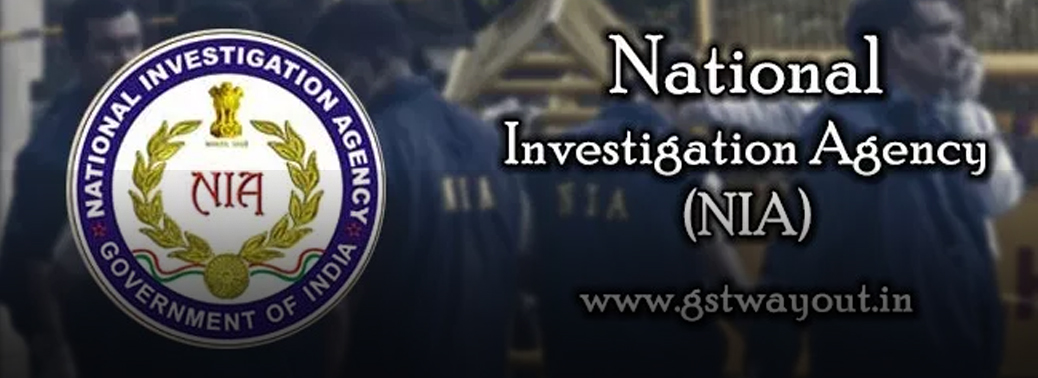
Context- Union government on Monday introduced the National Investigation Agency (Amendment) Bill, 2019 in Lok Sabha
Features of Bill:
- A Bill seeking to further strengthen the National Investigation Agency (NIA) by giving it powers to probe terror attacks targeting Indians and Indian interests on foreign soil.
- legislation will also allow the NIA probe Cyber-Crimes and cases of human trafficking.
- agency will be empowered to conduct investigation in any part of the world if any terror attack targeting Indians or Indian interests takes place.
National Investigation Agency (NIA):
- The NIA was set up in 2009 in the wake of the Mumbai terror attack
- NIA Act was enacted in 2008 and the National Investigation Agency (NIA) was born.
- At present NIA is functioning as the Central Counter Terrorism Law Enforcement Agency in India.
UNLAWFUL ACTIVITIES (PREVENTION) AMENDMENT BILL, 2019
09, Jul 2019
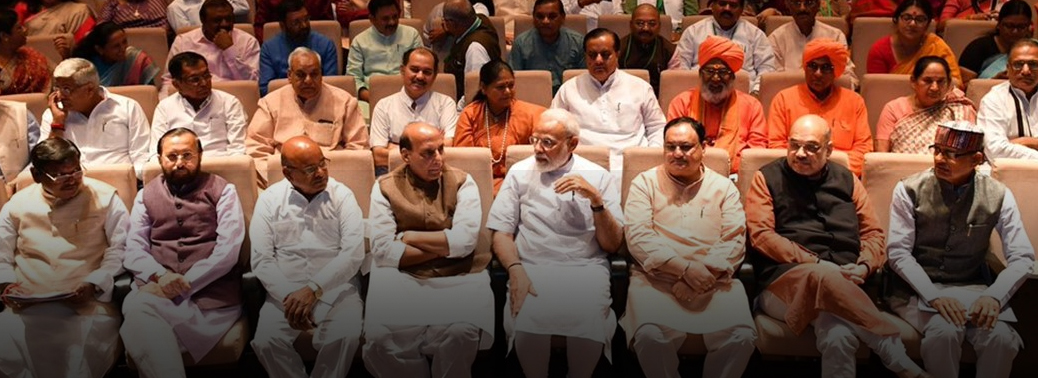
Context– The UAPA Bill that seeks to allow an individual suspected to have terror links to be designated a terrorist
Features:
- The Bill, seek “to introduce fourth schedule to add or remove the name of individual terrorists. will allow the Central government to designate individual terrorist and bring in embargo on arms/assets seizures. The individual however can appeal against the inclusion of his/her name and seek a hearing before the review committee, constituted by the Central government under UAPA.
Issues with new UAPA Bill:
- In the name of tackling terror, fundamental rights of an individual can be foregone
Issues already with Unlawful Activities Prevention Act, 1967 (UAPA).
- It casts such a wide net of offences that it makes all kinds of legitimate, constitutionally protected activity an offence: the police can choose who they want to prosecute, when and for what reason.
- It allows for persons to be held in custody for six months before they get to know the case against them. Bail is so stringent as to be almost unavailable, this is an affront to the ‘dignity’ and the ‘presumption of innocence’ that our Constitution entitles all of us to.
- It reverses the presumption of innocence and presumes guilt, a guarantee of wrongful imprisonment and false convictions.
SEDITION LAW
06, Jul 2019

Context– MDMK general secretary Vaiko was sentenced to a prison term of one year by a special court for Sedition.
About:
- Section 124-A in the Indian Penal Code, named ‘Sedition’, explains sedition in wide and magnanimous terms.
- It says ‘Whoever, by words, either spoken or written, or by signs, or by visible representation, or otherwise, brings or attempts to bring into hatred or contempt, or excites or attempts to excite disaffection towards the Government established by law in India’ shall be punished with life imprisonment
- The explanations which the Indian Penal Code gives are that ‘the expression ‘disaffection’ includes disloyalty and all feelings of hate.
Disqualification Under Representation of the People Act, 1951:
- Under Section 8 of the Representation of the People Act, 1951 Disqualification for Conviction for 2 years or more than 2 years imprisonment.
PRIVILEGE MOTION
05, Jul 2019
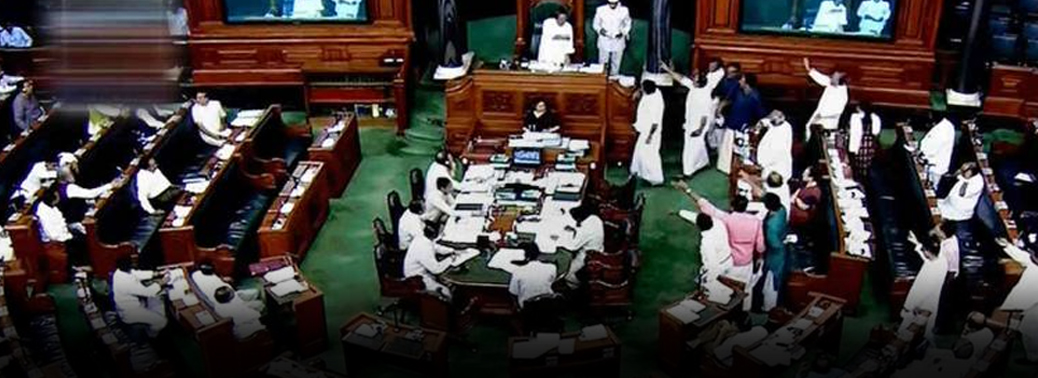
Context: Recently a Lok Sabha MP has moved a breach of privilege motion in the Lok Sabha against a private Hindi news channel and its editor.
About Privilege Motion:
- A privilege motion is moved against breach of Parliamentary Privileges.
- Parliamentary privileges are certain rights and immunities enjoyed by MPs, MLAs and MLCs, individually and collectively, so that they can effectively discharge their functions.
- When a breach of privilege is found, then an MP can move a privilege motion against those being held guilty of breach.
- Both Lok Sabha and the Rajya Sabha reserves the right to punish any action of contempt (Not Necessarily Breach of Privilege) which is against its authority and dignity.
Source:
- The rules governing privilege motion are mentioned as Rule 222 in Chapter 20 of the Lok Sabha Rule Book and as Rule 187 in Chapter 16 of the Rajya Sabha Rule Book.
- According to the rules, an MP may raise a question of breach of privilege with the Speaker or the Chairperson, notices for which have to be sent to them.
Examining Authority:
- The first level of scrutiny that a privilege motion has to go through is that of the Speaker/Chairperson (Lok Sabha/Rajya Sabha).
- The Speaker/Chairperson may decide on the privilege motion at their own discretion or they may refer it to a Parliamentary Committee.
- If the Speaker/Chairperson admits the motion, then the concerned member is given an opportunity to explain themselves by making a short statement.
Committee of Privileges:
- This Committee consists of 15 members (10 members in case of Rajya Sabha) Nominated by the Speaker (Chairman in case of Rajya Sabha).Its function is to examine every question involving breach of privilege of the House or of the members of any Committee thereof referred to it by the House or by the Speaker (Quasi -Judicial nature).
- It determines with reference to the facts of each case whether a breach of privilege is involved and makes suitable recommendations in its report.
ARMED FORCES (SPECIAL POWERS) ACT
02, Jul 2019
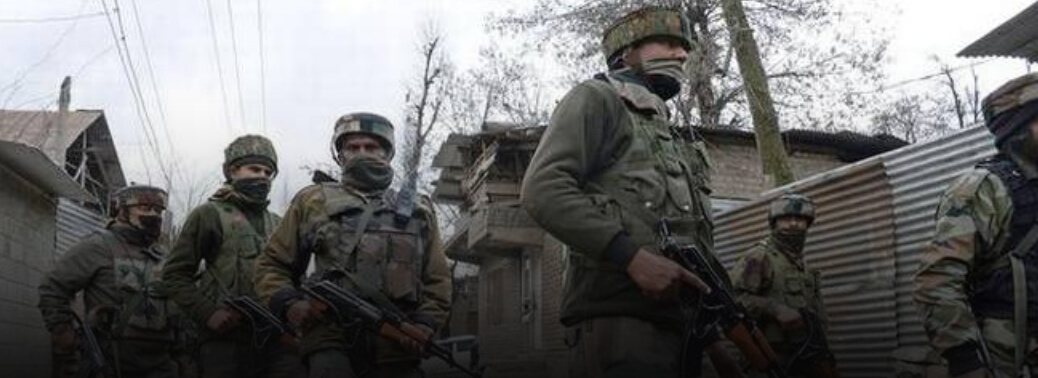
- Context: The Ministry of Home Affairs has extended the operation of Armed Forces (Special Powers) Act in Nagaland for another six months with effect from June 30.
What does the AFSPA Mean?
- In simple terms, AFSPA gives Armed Forces the power to maintain public order in “Disturbed Areas”.
- They have the authority to prohibit a gathering of five or more persons in an area, can use force or even open fire after giving due warning if they feel a person is in contravention of the law.
- If reasonable suspicion exists, the army can also arrest a person without a warrant; enter or search premises without a warrant; and ban the possession of firearms.
- Any person arrested or taken into custody may be handed over to the officer in charge of the nearest police station along with a report detailing the circumstances that led to the arrest.
What is a “Disturbed Area” and who has the power to declare it?
- A disturbed area is one which is declared by notification under Section 3 of the AFSPA.
- An area can be disturbed due to differences or disputes between members of different religious, racial, language or regional groups or castes or communities.
- The Central Government or the Governor of the State or administrator of the Union Territory can declare the whole or part of the State or Union Territory as a disturbed area.
- A suitable notification would have to be made in the Official Gazette. As per Section 3, it can be invoked in places where “the use of armed forces in aid of the civil power is necessary”.
- The Ministry of Home Affairs would usually enforce this Act where necessary, but there have been exceptions where the Centre decided to forego its power and leave the decision to the State governments.
What’s the origin of AFSPA?
- The Act came into force in the context of increasing violence in the Northeastern States decades ago, which the State governments found difficult to control.
- The Armed Forces (Special Powers) Bill was passed by both the Houses of Parliament and it was approved by the President on September 11, 1958.
- It became known as the Armed Forces Special Powers Act, 1958.
Which States are, or had come under this Act?
- It is effective in the whole of Nagaland, Assam, Manipur (excluding seven assembly constituencies of Imphal) and parts of Arunachal Pradesh.
The Centre revoked it in Meghalaya on April 1, 2018. - Earlier, the AFSPA was effective in a 20 km area along the Assam-Meghalaya border.
- In Arunachal Pradesh, the impact of AFSPA was reduced to eight police stations instead of 16 police stations and in Tirap, Longding and Changlang districts bordering Assam.
- Tripura withdrew the AFSPA in 2015. Jammu and Kashmir too has a similar Act.
How has this Act been received by the people?
- It has been a controversial one, with human rights groups opposing it as being aggressive.
- Manipur’s Irom Sharmila has been one if its staunchest opponents, going on a hunger strike in November 2000 and continuing her vigil till August 2016.
Her trigger was an incident in the town of Malom in Manipur, where ten people were killed waiting at a bus stop.
EIGHTH SCHEDULE OF THE INDIAN CONSTITUTION
02, Jul 2019
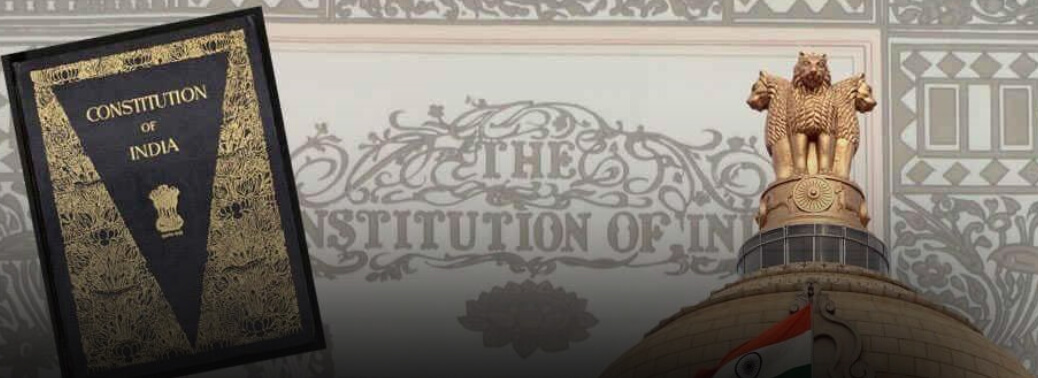
- Context: Recently a Member of Parliament made a case in Lok Sabha for inclusion of Bhojpuri language in the 8th Schedule of the Constitution
About 8th Schedule:
- It is the list of official languages recognised by the Constitution.
- The Eighth Schedule to the Indian Constitution contains a list of 22 scheduled languages viz. Assamese, Bengali, Gujarati, Hindi, Kannada, Kashmiri, Malayalam, Marathi, Odia, Punjabi, Sanskrit, Tamil, Telugu, Urdu, Sindhi (added by 21st Amendment Act, 1967), Konkani, Manipuri, Nepali (added by 71st Amendment Act, 1992), Bodo, Dogri, Maithili, Santhal (added by 92nd Amendment 2003).
- The list had originally 14 languages only but subsequently through amendments 8 new languages were added.
FREE LEGAL AID
01, Jul 2019
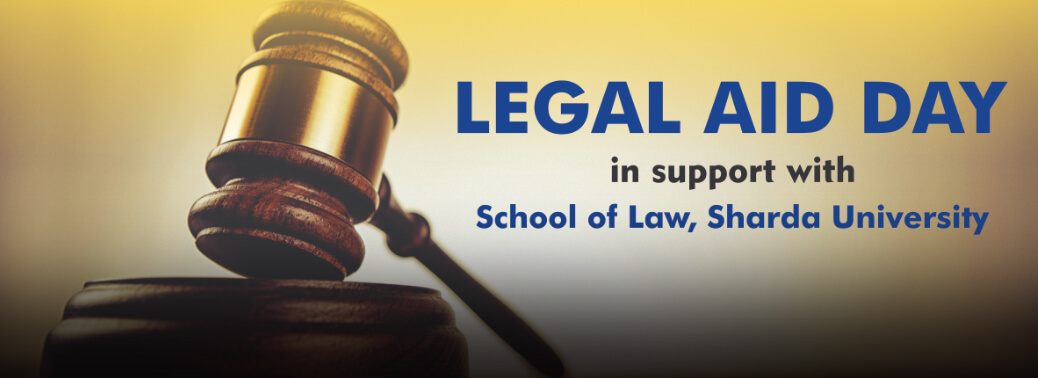
- Article 39 A of the Constitution of India provides for free legal aid to the poor and weaker sections of the society, to promote justice on the basis of equal opportunity. Articles 14 and 22(1) of the Constitution also Make it obligatory for the State to ensure equality before law.
National Legal Services Authority (NALSA)
- National Legal Services Authority (NALSA) is a statutory body constituted under the Legal Services Authorities Act, 1987to provide free Legal Services to the weaker sections of the society.
- The Chief Justice of India is the Patron-in-Chief and the Senior most Judge of the Supreme Court of India is the Executive Chairman of the Authority.
- The Legal Services Authorities Act establishes statutory legal services authorities at the National, State and District level.
It makes provisions in relation to Lok Adalat.
The main object of the Lok Adalat is to provide quick justice at less expense.
Objective:
- The principal objective of NALSA is to provide free and competent legal services to the weaker sections of the society and to ensure that opportunities for securing justice are not denied to any citizen by reason of economic or other disabilities, and to organize Lok Adalats for amicable settlement of disputes.
- To strengthen the system of Lok Adalats and other Alternate Dispute Resolution mechanisms.
- To organize legal awareness camps in the rural areas.
Who is Entitled to Free Legal Services:
- The sections of the society as enlisted under Section 12 of the Legal Services Authorities Act are entitled for free legal services, they are:
- (a) A member of a Scheduled Caste or Scheduled Tribe;
- (b) A victim of trafficking in human beings or begar as referred to in Article 23 of the Constitution;
- (c) A woman or a child;
- (d) A mentally ill or otherwise disabled person;
- (e) A person under circumstances of undeserved want such as being a victim of a mass disaster, ethnic violence, caste atrocity, flood, drought, earthquake or industrial disaster; or
- (f) An industrial workman; or
- (g) In receipt of annual income less than rupees nine thousand or such other higher amount as may be prescribed by the State Government, if the case is before a court other than the Supreme Court, and less than rupees twelve thousand or such other higher amount as may be prescribed by the Central Government, if the case is before the Supreme Court. Other Laws and International Conventions providing free legal aid. The Code of criminal Procedure and the Code of Civil Procedure also contain provisions in relation to the free legal aid.
- Section 304 of the Criminal Procedure Code provides that where in a trial before the Court of Session, the accused is not represented by a pleader and where it appears to the Court that the accused has not sufficient means to engage a pleader; the Court shall assign a pleader for his defence at the expense of the State
- International Covenant on Civil and Political Rights also under Article14 (3)(d) guarantees to everyone: “Right to be tried in his presence, and to defend himself in person or through legal assistance of his own choosing, in any case where the interests of justice so require, and without payment by him in any such case if he does not have sufficient means to pay for it” Issues in free legal Aid lack of legal awareness. People are not aware of rights and protection available under the law. people don’t have faith over the services of legal aid counsel (LAC) under the free legal aid services due to a variety of factors.
Way Forward:
- In a democracy, where rule of law is supreme; it is essential to ensure that even the weakest amongst the weak, poorest among the poor, in the country does not suffer injustice arising out of any abrasive action on the part of State or private person.
- India’s per capita lawyer ratio is better than most countries in the world and this need to be utilised.
THE PROTECTION OF CHILDREN FROM SEXUAL OFFENCES (POCSO) ACT, 2012
01, Jul 2019
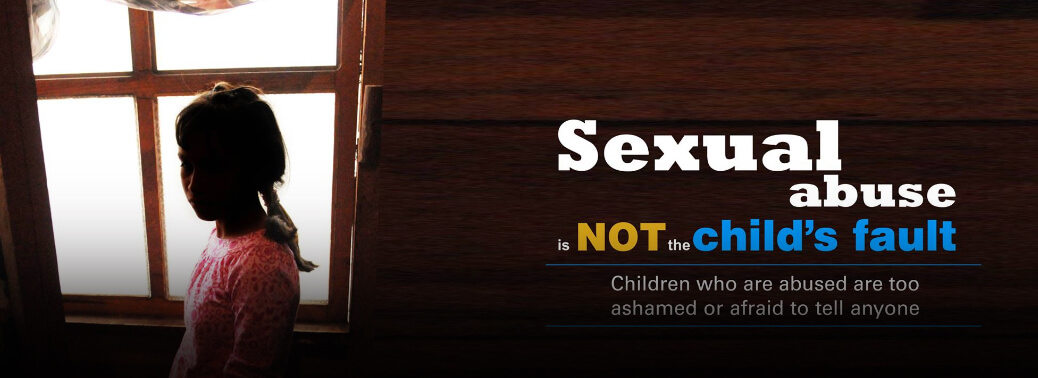
About POCSO Act:
- The Act seeks to protect children from offences such as sexual assault, sexual harassment, and pornography.
- The Act defines a child as any person below eighteen years of age.
- It defines different forms of sexual abuse, including penetrative and non-penetrative assault, as well as sexual harassment and pornography, and deems a sexual assault to be “aggravated” under certain circumstances, such as when the abused child is mentally ill or when the abuse is committed by a person in a position of trust or authority vis-a-vis the child, like a family member, police officer, teacher, or doctor.
- The Act also makes it mandatory to report such cases. It makes it the legal duty of a person aware of the offence to report the sexual abuse. In case he fails to do so, the person can be punished with six months’ imprisonment or fine.
- The Act provides that each district shall designate a Sessions Court to be a Special Court. It shall be established by the state government in consultation with the Chief Justice of the High Court. The Court shall, as far as possible, complete the trial within one year. The trial shall be held in camera and in the presence of the child’s parents or any person trusted by the child.
- The National Commission for Protection of Child Rights/ State Commission for Protection of Child Rights is mandated to monitor the implementation of the Act.
- It also provides for relief and rehabilitation of the child, as soon as the complaint is made. The Special Juvenile Police Unit or the local police are also required to report the matter to the Child Welfare Committee within 24 hours of recording the complaint, for long term rehabilitation of the child.
- Recently the government has introduced in Lok Sabha amendments to the POCSO Act, which provides for death penalty for aggravated sexual assault on children, making it gender neutral and introducing provisions against child pornography and for enhancing punishment for certain offences.
POCSO e-box:
- It is a National Commission for Protection of Child Rights (NCPCR) initiative to help children report such crimes directly to the Commission.
- The online complaint management system enables easy reporting and timely action against the offenders under the POCSO Act, 2012.
National Commission for the Protection of Child Rights:
- This statutory body at the National and State level has been set up under the Commission for Protection of Child Rights Act 2005.
- It is under the control of the Ministry of Women & Child Development, set up in 2007.
- It consists of one Chairman and Six other members (out of which at least two are woman having experience in Child Psychology, Education etc.).
FINANCIAL STABILITY REPORT
28, Jun 2019
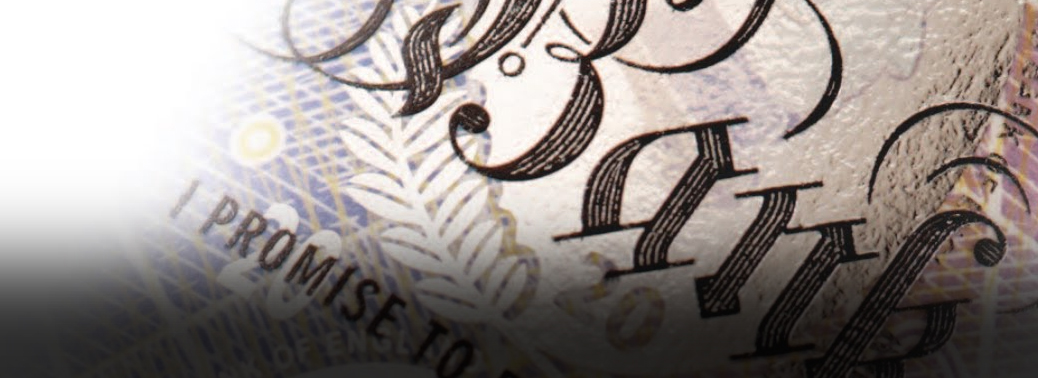
What is it About?
- The FSR reflects the collective assessment of the Sub-Committee of the Financial Stability and Development Council (FSDC) on risks to financial stability, as also the resilience of the financial system.
- Gross non-performing assets in the banking system have declined for the second consecutive half year, while the credit growth is picking up.
- Gross NPA ratio declined to 9.3% as on March 2019. It was 10.8% in September 2018 and 11.5% in March 2018.
- Gross NPAs could further decline to 9% by March 2020, the macro stress tests indicated.
What is Non-Performing Asset (NPA)?
- A nonperforming asset (NPA) refers to a classification for loans or advances that are in default or are in arrears on scheduled payments of principal or interest.
- In most cases, debt is classified as nonperforming when loan payments have not been made for a period of 90 days.
- While 90 days of non-payment is the standard, the amount of elapsed time may be shorter or longer depending on the terms and conditions of each loan.
- Following the capital infusion by the government in public sector banks, the overall capital adequacy ratio of the commercial banks improved from 13.7% in September 2018 to 14.3% in March 2019, with state-run banks’ CAR improving from 11.3% to 12.2% during the period. However, there was a marginal decline in the CAR of private sector banks.
- Credit growth of Public sector banks were at 9.6% while private lenders continue to robust growth of 21%.
What is Capital Adequacy Ratio – CAR?
- The capital adequacy ratio (CAR) is a measurement of a Bank’s available capital expressed as a percentage of a bank’s risk-weighted credit exposures.
- The capital adequacy ratio, also known as capital-to-risk weighted assets ratio (CRAR), is used to protect depositors and promote the stability and efficiency of financial systems around the world.
- The reason minimum capital adequacy ratios (CARs) are critical is to make sure that banks have enough cushion to absorb a reasonable amount of losses before they become insolvent and consequently lose depositors’ funds.
NATURAL LANGUAGE TRANSLATION
28, Jun 2019

- To make opportunities and progress science and technology accessible to all, this mission aims to remove the barrier that a requirement of high-level faculty in English poses today.
- Using a combination of machine and human translation, the mission will eventually enable access to teaching and researching material bilingually- in English and one’s native Indian language.
- It is planned to set up an ecosystem which involves central and state government agencies and start-ups who will work with scientists and build implementable solutions.
- The proposal is part of the 100-day action plan charted out by MeitY.
- the government plans to leverage a combination of machine translation and human translation
- Natural Language Translation — one of the key missions identified by the Prime Minister’s Science, Technology and Innovation Advisory Council (PMSTIAC).
Lead Agencies:
- Ministry of Electronics and Information Technology (MeitY)
- Ministry of Human Resource Development (MHRD)
- Department of Science and Technology (DST)
Prime Minister’s Science, Technology and Innovation Advisory Council (PMSTIAC).
- The PM-STIAC is an overarching Council that facilitates the PSA’s Office to assess the status in specific science and technology domains, comprehend challenges in hand, formulate specific interventions, develop a futuristic roadmap and advise the Prime Minister accordingly.
RBI DIRECT TO SAVE THE PAYMENTS DATA WITHIN INDIA.
27, Jun 2019
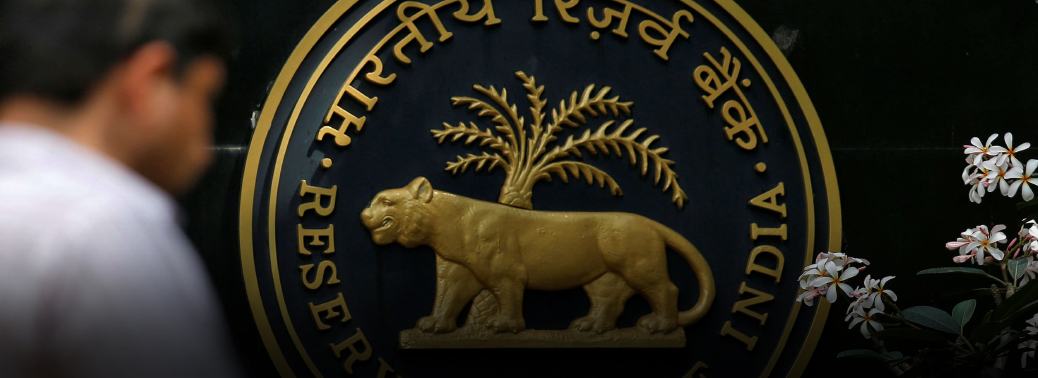
- The Reserve Bank of India (RBI) has clarified that payment system providers need to store entire payments data in a system only in India.
- The issue has come to the forefront because a global push for data free flow across national boundaries. Japanese Prime Minister Shinzo Abe has been a torch bearer for such a system.
- The risk of data going abroad is that it may fall into the hands of misuse that could lead to manipulations in the life of common man in India. Moreover, India being the second largest populated countries in the world, such data could lead to manipulations by big corporates.
- The data should include end-to-end transaction details and information pertaining to payment or settlement transaction that is gathered/transmitted/processed as part of a payment message/instruction.
- The data could be pertaining to customer data like name, mobile number, Aadhaar number, PAN; Payment-sensitive data like customer and beneficiary account details; payment credentials like OTP, PIN and, transaction data such as originating and destination system information amount, among others.
- The processing is done abroad, the data should be deleted from the systems abroad and brought back to India within one business day or 24 hours from the payment processing, whichever is earlier.
CENTRE EXPANDS TERMS OF REFERENCE OF DIRECT TAX LAW
27, Jun 2019
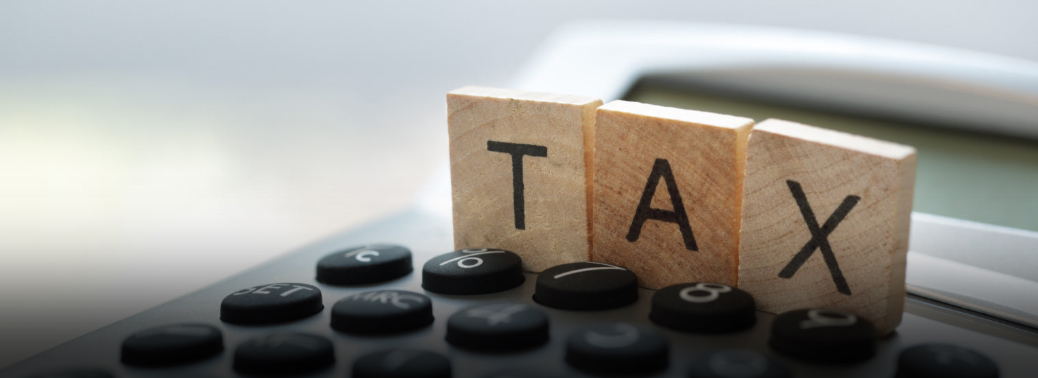
- The Central Board of Direct Taxes has expanded the terms of reference of the task force set up to come up with a new direct tax law.
- They include appropriate direct tax legislation keeping in view the direct tax litigation in other countries, international best standards, the economic needs of the country and other related issues.
- The new additions include the creation of a faceless and anonymized verification and security system, and the sharing of information between GST, customs and CBDT, and the Financial intelligence unit.
RBI BEGINS MONITORING HFCs
27, Jun 2019
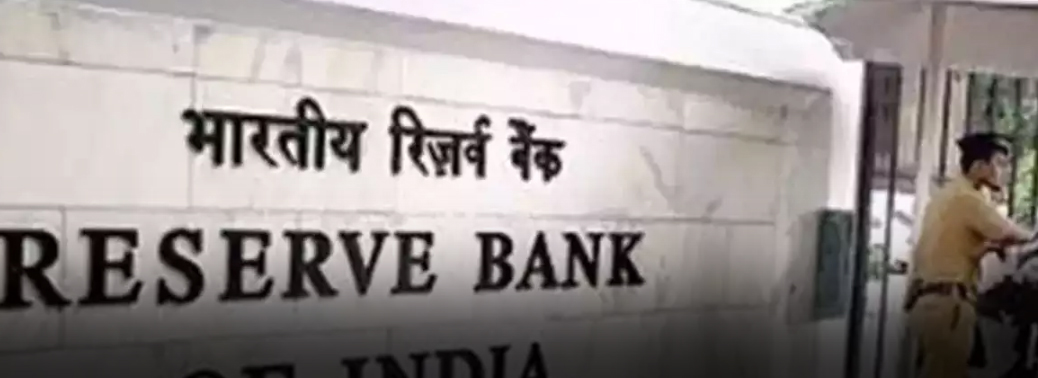
- The Reserve Bank of India (RBI) has started monitoring the liquidity position, asset-liability gap and repayment schedules of Housing
Finance Companies (HFCs) on a daily basis after the liquidity crisis hit these firms, resulting in defaults. - Mortgage lenders are regulated by the National Housing Bank.
What is a Mortgage?
- A Mortgage is a loan in which property or real estate is used as Collateral.
- The borrower enters into an agreement with the lender (usually a bank) wherein the borrower receives cash upfront then makes payments over a set time span until he pays back the lender in full.
- A mortgage is often referred to as home loan when it is used for the purchase of a home.
- The central bank is of the view that the since the liquidity crisis of the HFCs could have a spill over effect on the other segments in the financial sector, including banks, and hence, could affect financial stability, it was necessary to monitor these entities on a regular basis.
- The non-banking financial sector, particularly the mortgage lenders, are fighting a crisis of confidence with banks having stopped lending to these entities since the debt default by IL&FS in September last year.
- NBFCs saw their cost of funds going up sharply in the last few months. This has impacted their business growth as the lenders have to cut down on their loan disbursements.
PRADHAN MANTRI SHRAM YOGI MAAN-DHAN YOJANA (PM-SYM)
27, Jun 2019
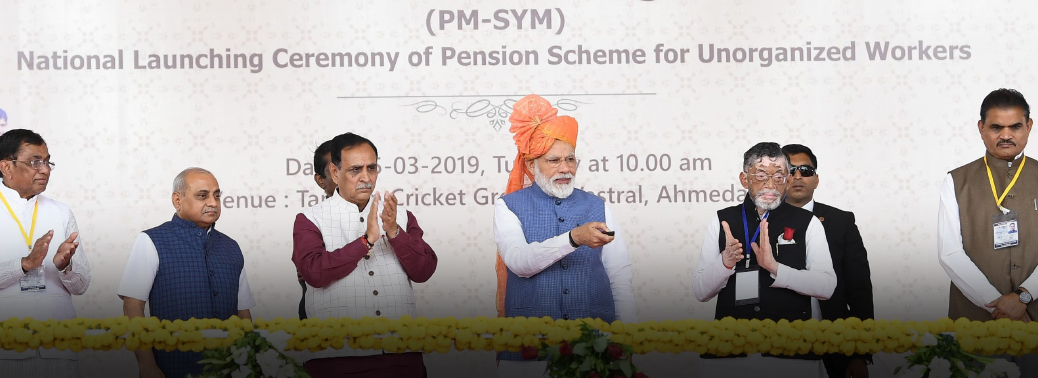
- By the Ministry of Labour and Employment
Salient Features:
- Minimum Assured Pension: Each subscriber under the PM-SYM, shall receive minimum assured pension of Rs 3000/- per month after attaining the age of 60 years. Family Pension: During the receipt of pension, if the subscriber dies, the spouse of the beneficiary shall be entitled to receive 50% of the pension received by the beneficiary as family pension. Family pension is applicable only to spouse.
- If a beneficiary has given regular contribution and died due to any cause (before age of 60 years), his/her spouse will be entitled to join and continue the scheme subsequently by payment of regular contribution or exit the scheme as per provisions of exit and withdrawal.
Eligibility:
- The unorganised workers mostly engaged as home based workers, street vendors, mid-day meal workers, head loaders, brick kiln workers,
cobblers, rag pickers, domestic workers, washer men, rickshaw pullers, landless labourers, own account workers, agricultural workers, construction workers, beedi workers, handloom workers, leather workers, audio- visual workers and similar other occupations whose monthly income is Rs 15,000/ per month or less and belong to the entry age group of 18-40 years are eligible for the scheme. They should not be covered under New Pension Scheme (NPS), Employees’ State Insurance Corporation (ESIC) scheme or Employees’ Provident Fund Organisation (EPFO).Contribution:
- The subscriber is required to contribute the prescribed contribution amount from the age of joining PM-SYM till the age of 60 years.
Matching contribution by the Central Government:
- PM-SYM is a voluntary and contributory pension scheme on a 50:50 basis where prescribed age-specific contribution shall be made by the beneficiary and the matching contribution by the Central Government as per the chart.
- For example, if a person enters the scheme at an age of 29 years, he is required to contribute Rs 100/ – per month till the age of 60 years. An equal amount of Rs 100/- will be contributed by the Central Government.
Enrollment Agencies:
- The enrolment will be carried out by all the Community Service Centers (CSCs).
- The unorganised workers may visit their nearest CSCs along with their Aadhar Card and Savings Bank account passbook/Jandhan account and get registered themselves for the Scheme.
DNA TECHNOLOGY (USE AND APPLICATION) REGULATION BILL
26, Jun 2019
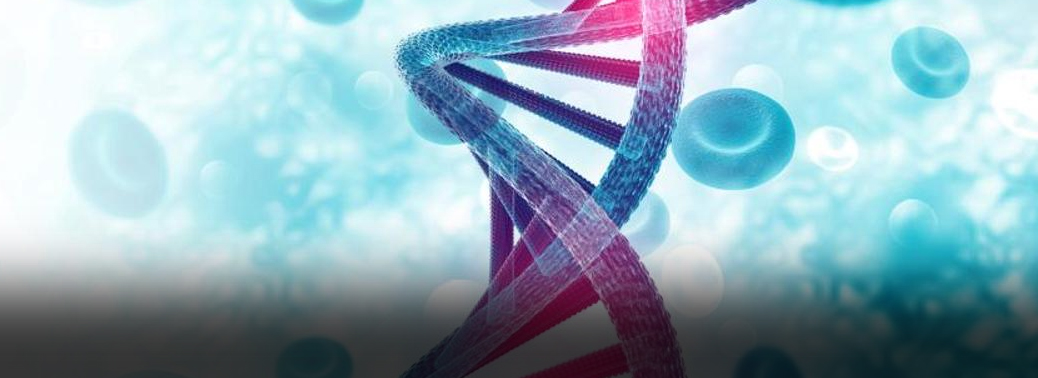
- The Bill seeks to create a Regulatory Framework for Obtaining, storing and testing of DNA samples of human beings, mainly for the purposes of criminal investigations, and with the objective of establishing the identity of a person.
- The proposed law seeks to bring in a supervisory structure to oversee these practices, and frame guidelines and rules so that the DNA technology is not misused.
- Bill proposes to set up two institutional structures — a DNA regulatory board, and a DNA data bank — at the national level. Regional centers of the board as well as the data bank can be set up at the state level as well.
- The Bill proposes that testing of DNA samples can be carried out only at laboratories that are authorized to do so by the regulatory board. It also specifies the circumstances under which a person can be asked to submit DNA samples.
- Police can ask for DNA samples of the person accused of an offence to facilitate their investigation. But unless the offence is of a very serious nature, punishable by death or by imprisonment for at least seven years, the DNA sample can be obtained only on the written consent of the accused. It can be also be obtained if an authorized magistrate is satisfied that a DNA test is absolutely necessary for investigation of the crime.
- People who are witness to a crime, or want to locate their missing relatives, or in similar other circumstances, can volunteer to give their DNA samples, again through written consent.
Issues:
- Whether the DNA technology is foolproof?
- Whether the provisions adequately address the possibility of abuse of DNA information, and whether the privacy of the individual is protected.
- Critics of the Bill have been claiming that collecting and storing such intrusive information could lead to abuse, besides being violative of a person’s privacy.
Government Stand:
- Since DNA tests are already happening, and frequently used as the most reliable tool to establish identity, it would be better to have regulatory safeguards so that it is carried out only in prescribed manner and by authorized personnel and Institutions.
CENTRAL BOARD OF FILM CERTIFICATION (CBFC)
26, Jun 2019
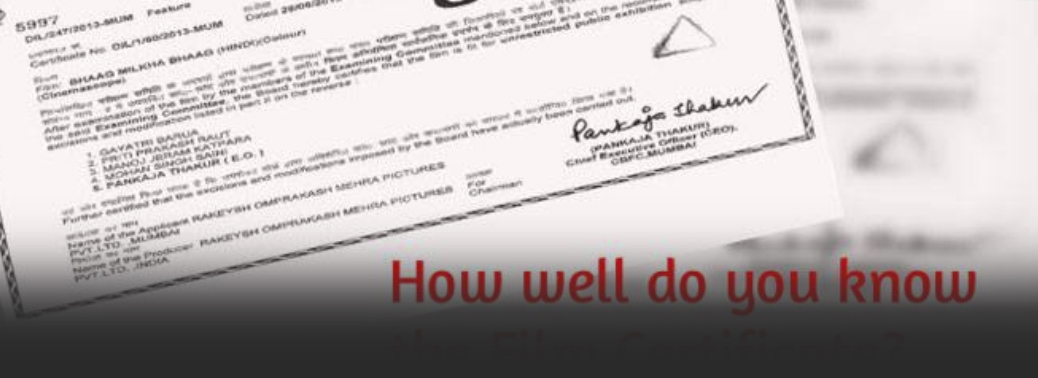
- It is a Statutory Body under Union Ministry of Information and Broadcasting.
- It grants certificate to regulate the public exhibition of films in India under the provisions of the Cinematograph Act 1952.
- Films can be publicly exhibited in India only after they have been certified by the Central Board of Film Certification.
- The Certification process is in accordance with The Cinematograph Act, 1952, The Cinematograph (certification) Rules, 1983, and the guidelines issued by the Central government u/s 5 (B).
RESERVE BANK OF INDIA (RBI)
25, Jun 2019
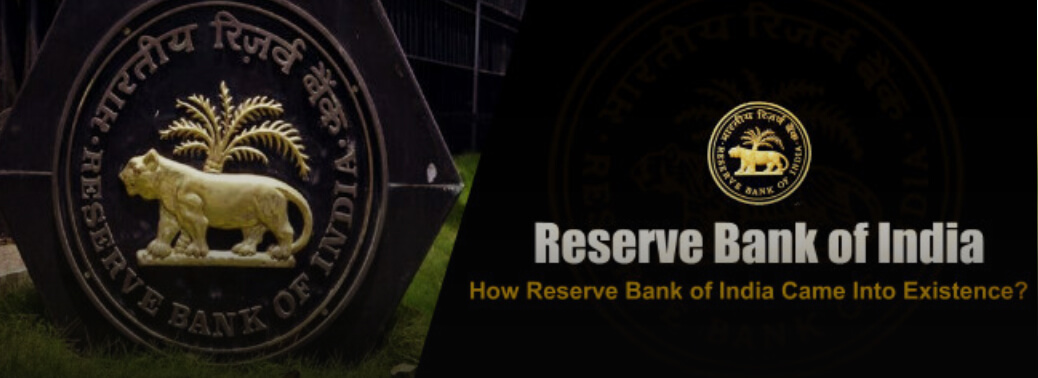
Context
- Viral Acharya’s resignation as Deputy Governor of the Reserve Bank of India
About:
- The Reserve Bank of India was established on April 1, 1935 in accordance with the provisions of the Reserve Bank of India Act, 1934.
- Though originally privately owned, since nationalisation in 1949, the Reserve Bank is fully owned by the Government of India.
Composition:
Central Board
- The Reserve Bank’s affairs are governed by a central board of directors. The board is appointed by the Government of India in keeping with the Reserve Bank of India Act.
- Appointed/nominated for a period of four years
Constitution:
Official Directors
- Full-Time: Governor and not more than four Deputy Governors
Non-Official Directors
- Nominated by Government: ten Directors from various fields and two government Official
- Others: four Directors – one each from four local boards
Functions:
Monetary Authority:
- Formulates, implements and monitors the monetary policy.
- Objective: maintaining price stability while keeping in mind the objective of growth.
Regulator and supervisor of the financial system:
- Prescribes broad parameters of banking operations within which the country’s banking and financial system functions.
- Objective: maintain public confidence in the system, protect depositors’ interest and provide cost-effective banking services to the public.
Manager of Foreign Exchange
- Manages the Foreign Exchange Management Act, 1999.
- Objective: To facilitate external trade and payment and promote orderly development and maintenance of foreign exchange market in India.
Issuer of currency:
- Issues and exchanges or destroys currency and coins not fit for circulation.
- Objective: to give the public adequate quantity of supplies of currency notes and coins and in good quality.
Developmental Role:
- Performs a wide range of promotional functions to support national objectives.
Regulator and Supervisor of Payment and Settlement Systems:
- Introduces and upgrades safe and efficient modes of payment systems in the country to meet the requirements of the public at large.
- Objective: maintain public confidence in payment and settlement system.
Related Functions
- Banker to the Government: performs merchant banking function for the central and the state governments; also acts as their banker.
- Banker to Banks: maintains banking accounts of all scheduled banks.
NITI AAYOG
24, Jun 2019
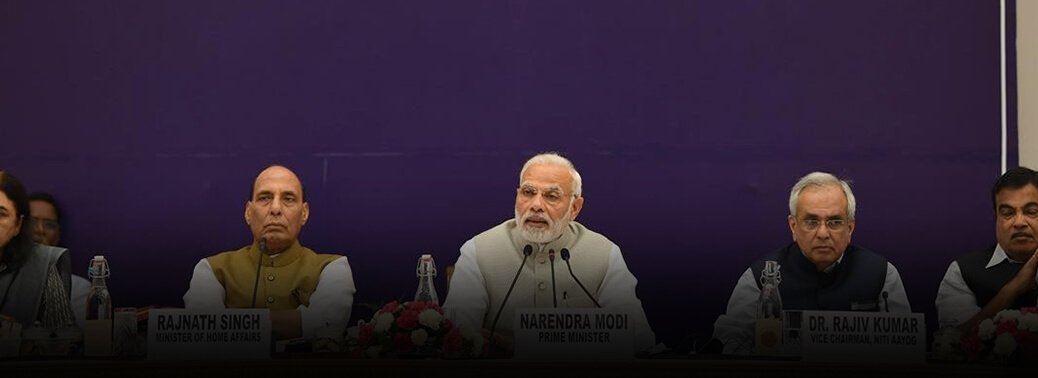
Issue in economy now that can be handled by NITI Aayog:
- There is horizontal and vertical imbalance revenues of centre and states. Vertical Imbalance mainly allocates more money to Centre.
- Horizonal imbalance involves two types of imbalances.
- Type I is to do with the adequate provision of basic public goods and services, while the second,
- Type II, is due to growth accelerating infrastructure or the transformational capital deficits.
- We need another institution to tackle the horizontal imbalance of the Type II; for this the NITI Aayog is the most appropriate institution.
- NITI Aayog should be engaged with the allocation of “transformational” capital in a formulaic manner, complete with incentive• compatible conditionalities.
- NITI Aayog should also mandated to create an independent evaluation office which will monitor and evaluate the efficacy of utilisation of grants.
Features of NITI Aayog:
- Not Constitutional Body nor statutory body
- NITI Aayog is essentially an advisory body that seeks to provide critical directional and strategic inputs across spectrum of key elements of policy to the centre as well as states.
- It also seeks to put an end to the slow and tardy implementation of the policy by fostering inter-ministry, inter-state and centre-state coordination.
- It has been envisaged to follow the bottom-top development approach.
Composition of NITI Aayog:
- Chairperson -Prime Minister Governing Council –
- Its members are Chief Ministers and Administrators of the Union Territories Regional Councils. These would be created as per need and its members would be chief ministers and administrators of UTs of respective regions. Vice-Chairperson.
- The Vice-chairperson of the NITI Aayog will be appointed by Prime Minister.
Leader of opposition made Minister in Government of State.
24, Jun 2019
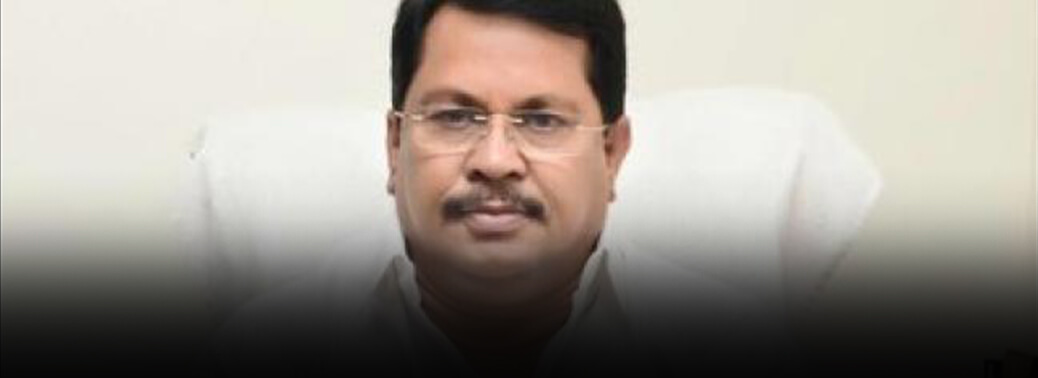
Context:
- Rtd. High Court Judge Thipsay questions appointment of Vikhe• Patil (Leader of Opposition), Kshirsagar as ministers.
- Leader of Opposition of Maharashtra has reigned from his party and joined party in government and sworn as minister
Issues:
- By the Constitution (91st Amendment) Act, 2003, Clauses (1A) and (1B) were inserted in Article 164, which provide for appointment of Chief Minister and other ministers. Clause (1B) states that a member of either House of the legislature of a State, belonging to a political party, who is disqualified to be appointed as a minister for duration of the period commencing from the date of his disqualification.
- ‘‘Disqualification on ground of defection.
-
- Clause (a) of paragraph 2 is “if he has voluntarily given up his membership of such political party.
-
- Apart from this, Article 164(4) only permits a person to be a minister for a maximum period of six consecutive months without being a member of the legislature.
Removal of the Judge of a High Court
24, Jun 2019
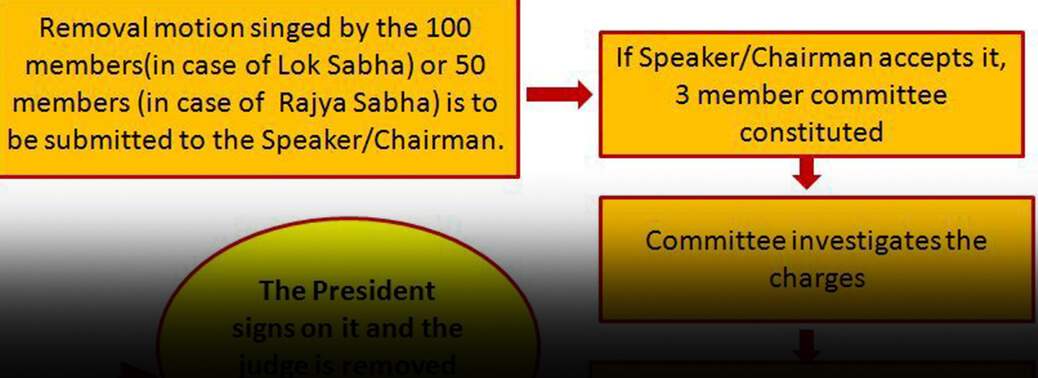
Context:
- In•house panel found an Allahabad High Court judge, Justice S.N. Shukla, guilty of misconduct, Chief Justice of India Ranjan Gogoi has written to Prime Minister Narendra Modi to initiate a motion for his removal.
- A Judge of the High Court can be removed from office only for proven misbehaviour or incapacity and only in the same manner in which a Judge of the Supreme Court is removed. The President of India can remove a Judge of the High Court, from his office only if each house of the parliament passes a resolution by a two third majority of its members present and voting in each house requesting him to remove the judge.
Appointment of the Judges of High Courts:
- As per article 217, the chief Justice of the high court is appointed by the President in consultation with the Chief justice of India as well as the Governor of the state in question. A collegium system has evolved over the years in which a Collegium headed by the CJI makes recommendation to the government for appointment of judges.
Inner Line Permit
24, Jun 2019
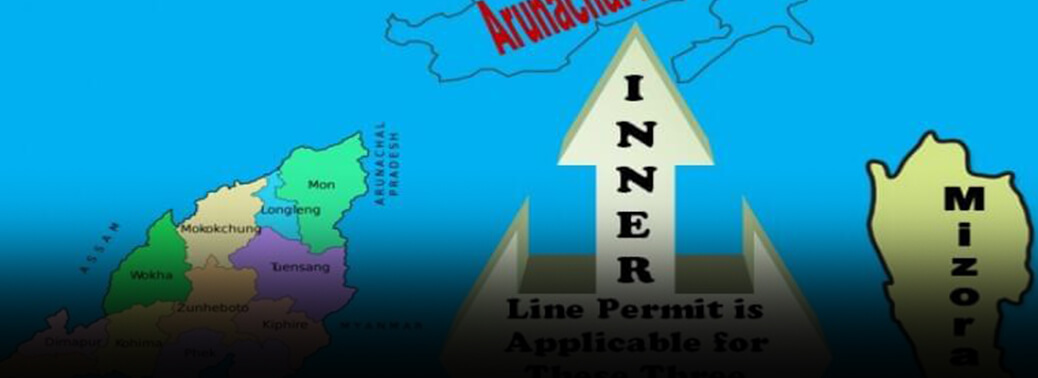
Context:
- A petition filed has sought a direction to the Centre and the Nagaland government to take appropriate steps for the protection of life and liberty, properties and other fundamental rights of nonNagas living in the commercial hub of Dimapur following the imposition of the Inner Line Permit.
- (PIL) petition, has challenged certain sections of the Bengal Eastern Frontier Regulation, 1873 which gives unbridled power to a State to prescribe ILP.
- Section 2 of the Regulation empowers a State government to prescribe ‘Inner Line’ to prohibit citizens of India or any class of such citizens going beyond the prescribed line without a pass.
- The Inner Line Permit (ILP) is an official travel document issued by the Government of India to grant inward travel of an Indian citizen into a protected area for a limited period. It is obligatory for Indians residing outside those states to obtain permission prior to entering the protected areas. Currently, the Inner Line Permit is operational in Arunachal Pradesh, Mizoram and Nagaland. The document has been issued under the Bengal Eastern Frontier Regulation, 1873 and the conditions and restrictions vary from state to state.
- It can be issued for travel purposes solely. Visitors are not allowed to purchase property in these regions. However, there might be a different set of rules for long term visitors, though they are not valid for central government employees and security forces.
Bill Passed for 16% Maratha Quota in PG Course
23, Jun 2019
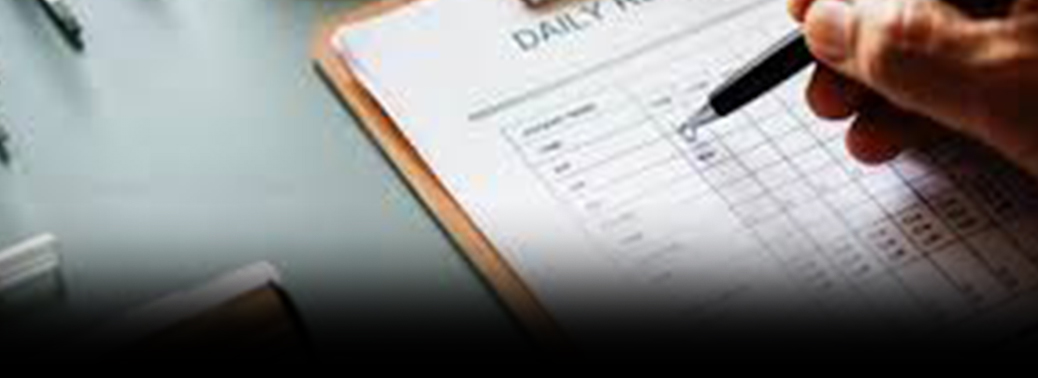
- The Maharashtra Legislative Council cleared a bill to provide 16% reservation to the Maratha
- community students in post-graduate (PG) medical courses.
- This comes a day after the bill was unanimously passed in the Legislative Assembly.
- As both the Houses of the Legislature have cleared the bill, it will now be sent to the Governor for his approval.
ILO ADOPTS #MeToo PACT AGAINST HARASSMENT AT WORKPLACE
22, Jun 2019
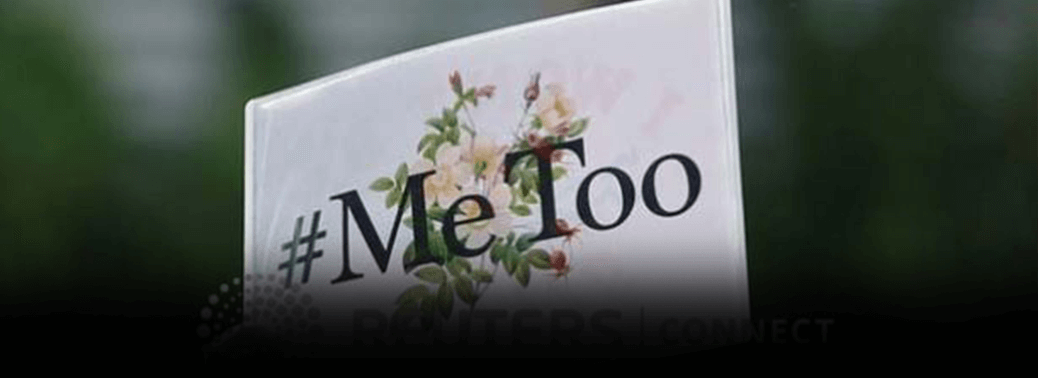
Context:
- The U.N. agency overseeing international labour standards adopted on Friday a new treaty against violence and harassment in the workplace, fueled by the women’s #MeToo movement.
- The convention, which will be binding on governments that ratify it, was agreed by a wide margin on the final day of the International Labour Organization’s (ILO) annual conference of governments, employers’ groups and workers.
- Sexual harassment mainly adds deprivations of women of their opportunity to work and free choice of the profession.
Vishaka Guidelines:
- Vishaka and others v/s state of Rajasthan is a case which deals with the evil of Sexual Harassment of a women at her workplace.
- It is a landmark judgment case in the history of sexual harassment which as being decide by Supreme Court.
- Present civil and penal laws in India do not adequately provide for specific protection of women from sexual harassment in work places and that enactment of such legislation will take considerable time,
- It is necessary and expedient for employers in work places as well as other responsible persons or institutions to observe certain guidelines to ensure the prevention of sexual harassment of women.
Mechanism for complaint in House Mechanism:
- The complaint mechanism, should be adequate to provide, where necessary, a Complaints Committee, a special counsellor or other support service, including the maintenance of confidentiality.
- The Complaints Committee should be headed by a woman and not less than half of its member should be women. Further, to prevent the possibility of any undue pressure or influence from senior levels, such Complaints Committee should involve a third party, either NGO or other body who is familiar with the issue of sexual harassment.
- The Complaints Committee must make an annual report to the Government
- department concerned of the complaints and action taken by them.
Why there is need of Vishaka Guidelines.
- If any strict action will not be taken towards this crime, it will directly hamper the working ration of the women in India and on other hand it will hamper the economic situation of India.
- Government should make strict laws regarding the aversion of sexual harassment at workplace, because it should realize that, women also constitute the working population of our country.
- It should be abolished to prevent the dignity and the respect of the women.
- Various new approaches and skills shall be implemented by the institutions, organisations to prevent there women employees from such a social evil.
- The main objective behind the stabilization of this right is to promote gender equality at workplace without any kind of discrimination and discernment among the workers of an organisation.
What is ILO?
- The only tripartite U.N. agency, since 1919 the ILO brings together governments, employers and workers of 187 member States, to set labour standards, develop policies and devise programmes promoting decent work for all women and men.
- The unique Tripartite Structure of the ILO gives an equal voice to workers, employers and governments to ensure that the views of the social partners are closely reflected in labour standards and in shaping policies and programmes.
- The ILO became the First Specialized Agency of the UN in 1946.
- The International labour Conference: – sets the International labour standards and the broad policies of the ILO. It meets annually in Geneva. Often called an international parliament of labour, the Conference is also a forum for discussion of key social and labour questions. The Governing body is the executive council of the ILO. It meets three times a year in Geneva. It takes decisions on ILO policy and establishes the programme and the budget, which it then submits to the Conference for adoption.
- The International Labour Office is the permanent secretariat of the International Labour Organization. It is the focal point for International Labour Organization’s overall activities, which it prepares under the scrutiny of the Governing Body and under the leadership of the Director-General.
What is the #MeToo movement?
- The ‘me too.’ movement was founded in 2006 to help survivors of sexual violence, particularly Black women and girls, and other young women of color from low wealth communities, find pathways to healing.
- In less than six months, because of the viral #metoo hashtag, a vital conversation about sexual violence has been thrust into the national dialogue.
- The ‘me too’ movement supports survivors of sexual violence and their allies by connecting survivors to resources, offering community organizing resources, pursuing a ‘me too’ policy platform, and gathering sexual violence researchers and research.
- Girls for Gender Equity (GGE) is the fiscal sponsor of the ‘me too.’ movement, and receives tax-deductible charitable contributions for the benefit and use of implementing the ‘me too.’ movement’s programming.
- GGE is a New York nonprofit benefit corporation located in Brooklyn, New York, U.S.
TRIPLE TALAQ
22, Jun 2019

Context:
- Triple Talaq bill again introduced by NDA government in Lok Sabha.
About:
- The Bill makes all declaration of talaq, including in written or electronic form, to be void (i.e. not enforceable in law) and illegal.
- It defines talaq as Talaq-e-biddat or any other similar form of talaq pronounced by a Muslim man resulting in instant and irrevocable divorce.
- Talaq-e-biddat refers to the practice under Muslim personal laws where pronouncement of the word ‘talaq’ thrice in one sitting by a Muslim man to his wife results in an instant and irrevocable divorce.
Offence and Penalty:
- The Bill makes declaration of talaq a cognizable offence, attracting up to three years’ imprisonment with a fine. (A cognizable offence is one for which a police officer may arrest an accused person without warrant.)
- The offence will be cognizable only if information relating to the offence is given by:
- (i) The married woman (against whom talaq has been declared), or
- (ii) Any person related to her by blood or Mariage
Feature:
- The Bill provides that the Magistrate may grant bail to the accused. The bail may be granted only after hearing the woman (against whom talaq has been pronounced), and if the Magistrate is satisfied that there are reasonable grounds for granting bail.
- Allowance: A Muslim woman against whom talaq has been declared, is entitled to seek subsistence allowance from her husband for herself and for her dependent children. The amount of the allowance will be determined by the Magistrate.
- Custody: A Muslim woman against whom such talaq has been declared, is entitled to seek custody of her minor children. The manner of custody will be determined by the Magistrate
ANTI DEFECTION LAW
22, Jun 2019

Context:
- 5 TDP members of Rajya Sabha defected in BJP party.
About:
- The Anti-Defection law sought to prevent such political defections which may be due to reward of office or other similar considerations.
- 10th Schedule
- Power to disqualify bears with Speaker/ Chairman of House.
- A legislator is deemed to have defected if he either voluntarily gives up the membership of his party or disobeys the directives of the party leadership on a vote.
Background:
- Anti-Defection Law was passed in 1985 through 52nd amendment of constitution.
Disqualification Grounds:
- If member of house belonging to a political party
- Voluntary gives membership of his political
- Votes or does not vote contrary to directions of his party. If an independent candidate joins a political party after
- Nominated member is allowed to join a political party provided he joins such political party of his choices within a period of six months. After that period, joining a political party would lead to defection and disqualification.
Disqualification Authority:
- The question whether a member is subject to disqualification in all other matters except under 10th Schedule (disqualification) is Decided by President. However, President should obtain the opinion of the election commission before taking such decision.
- The Question of Disqualification under Anti-defection / Tenth Schedule is decided by the Chairman in the case of Rajya Sabha {i.e. Vice-President} and Speaker in the case of Lok Sabha.
When Defection is not Applied:
- Person shall not be disqualified if his political party merger with another party.
- Person and other members do not accept the merger and opt to function as a separate group.
- This exception shall operate only if not less than two third of the members of party in house have agreed to the agreed to the merger.
Epistocracy
19, Jun 2019
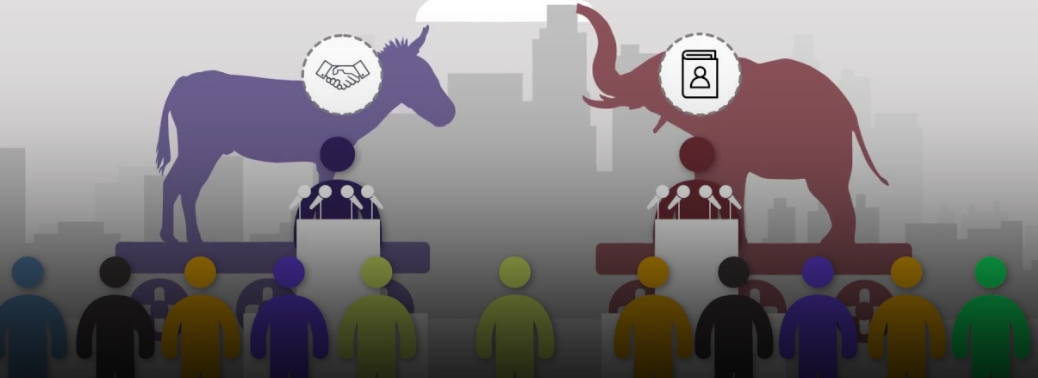
- Epistocracy is a system in which the votes of people who can prove their political knowledge count more than the votes of people who can’t.
- In other words, it’s a system that privileges the most politically informed citizens.
National Company Law Tribunal
19, Jun 2019
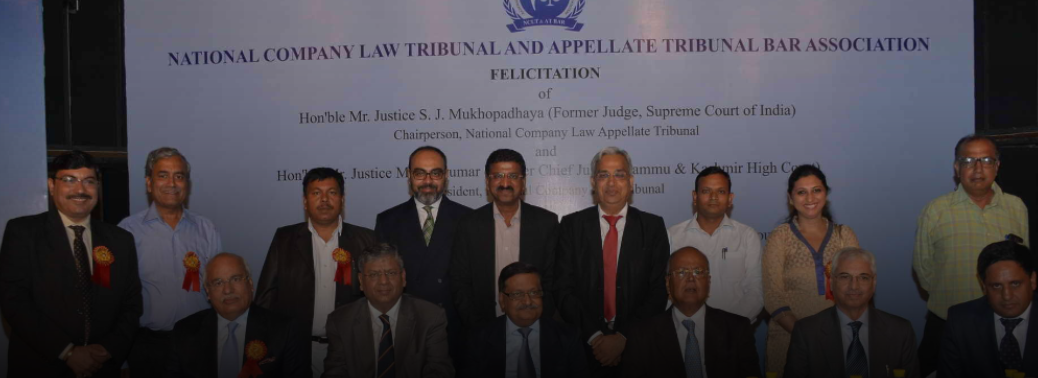
- The statutory body has constituted National Company Law Tribunal (NCLT) under section 408 of the Companies Act, 2013
- It is a quasi-judicial body in nature.
Significance:
- Insolvency and Bankruptcy Code, 2016 (Bankruptcy Code), also provides wide powers to the NCLT to adjudicate upon the ‘insolvency resolution process’ and liquidation of corporate debtors.
- NCLAT is also the Appellate Tribunal to hear and dispose of appeals against any direction issued or decision made or order passed by the Competition Commission of India.
Speaker
19, Jun 2019

Context:
- MP Om Birla named as choice for Speaker’s post.
- He is presiding officer of Lok sabha.
- He is the guardian of powers and privileges of members and committees of Lok Sabha
Duration in Office:
- Speaker remains in office during the life of Lok Sabha (he needs to remain member of Lok Sabha).
- When the office of Lok Sabha speaker falls vacant, the members elect another speaker on a date fixed by the President.
- Whenever Lok Sabha is dissolved, the Speaker continues to remain in office until immediately before the first meeting of Lok Sabha after it is reconstituted.
Resignation:
- Disqualified if ceases to be the member of House Addressing a resignation letter to Deputy Speaker
Removal:
- Speaker can be removed by the members of Lok Sabha by a resolution passed by Absolute Majority {Majority of the Total Members of the House} of Lok Sabha.
- 14 days advanced notice must be given for such resolution.
- The Motion of Removal can be considered and discussed only when it has the support of at least 50 Members.
- If resolution is under consideration of the house, Speaker Cannot Preside the Meeting, but can participate in the house and vote in the first instance though not in the case of an equality of votes.
Powers and Functions:
- The Guardian of powers and privileges of members and committees of Lok Sabha. To Maintain order and decorum in Lok Sabha
- His interpretations of constitutional provisions, rules and regulations related to Lok Sabha are final.
- Adjournment of Lok Sabha is done by Speaker
- During voting in the house on a bill or other matters, he does not vote in the first instance. However, if there is a tie due to equal votes, speaker exercises the casting vote
- Joint sittings of both the houses of parliament are although called by President but presided by Lok Sabha speaker.
- On the request of the Leader of the House, Speaker may allow a secret meeting.
- Whether a bill is money bill or not, is decided by Speaker and his decision in this matter is final.
- Disqualification of Members of House-
- Speaker decides the question of disqualification of Lok Sabha members in matters of tenth schedule / anti-defection law. This decision is subject to judicial
- He is the Ex-Officio Chairman of Indian Parliamentary Group of the Inter- parliamentary Union.
- Chairman of all the parliamentary committees of Lok Sabha are appointed by Speaker, provided such committees does not need an elected chairman
- Speaker himself is the chairman of
- Business Advisory Committee,
- Rules Committee and
- General Purpose
- The Secretary General of the Lok Sabha is appointed by the Speaker.
Deputy Speaker of Lok Sabha:
- If Speaker of Lok Sabha is not available, his duties are carried out by Deputy Speaker Election– A Deputy Speaker is elected by the Lok Sabha members from amongst themselves.
- Election of Deputy Speaker is done after election of Speaker.
- Deputy speaker is not subordinate to the Speaker and is directly responsible to Lok Sabha.
- If Deputy Speaker is also not present, a person appointed by President will discharge the duties.
Pro Tem Speaker:
- President appoints a speaker Pro Tem for the first meeting of the newly elected Lok Sabha. He is appointed to administer oath to the new members and enable the house to elect a new speaker (Before Oath they cannot be member of house and participate in proceeding).
NATIONAL HUMAN RIGHTS COMMISSION (NHRC)
18, Jun 2019
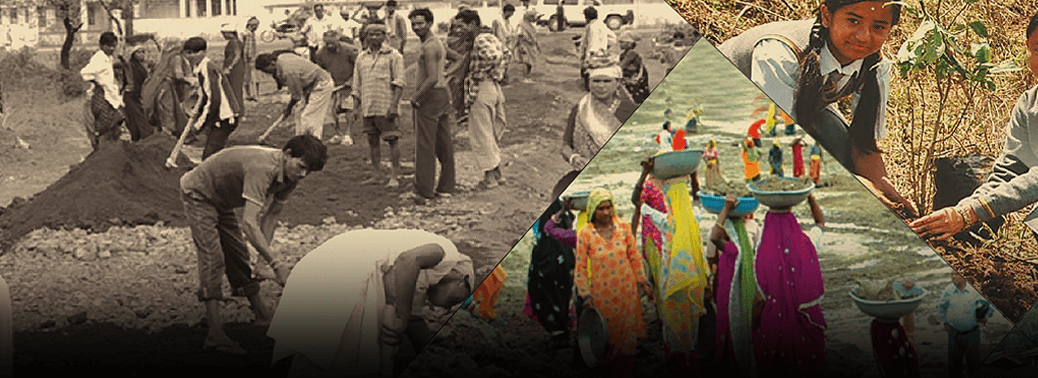
- It is a Statutory Body the National Human Rights Commission (NHRC) of India was established on 12 October, 1993.
- It is in conformity with the Paris Principles, Section 2(1)(d) of the PHRA defines Human Rights as the rights relating to life, liberty, equality and dignity of the individual guaranteed by the Constitution or embodied in the International Covenants and enforceable by courts in India.
Composition:
- NHRC comprises of a chairman and four members. The chairman should be a retired chief justice of India.
- The other members should be
-
- One Member who is, or has been, a Judge of the Supreme Court of India
- One Member who is, or has been, the Chief Justice of a High Court
- Two Members to be appointed from among persons having knowledge of, or practical experience in, matters related to human
Members appointed by committee consist of:
- Prime Minister (chairperson) Home Minister
- Speaker of the Lok Sabha
- Leader of the Opposition in the Lok Sabha Deputy Chairman of the Rajya Sabha Leader of the Opposition in the Rajya Sabha
Functions of NHRC:
- Inquire suo motu or on a petition presented to it, by a victim, or any person on his be into complaint of violation of human rights or negligence in the prevention of such violation by a public servant.
- Intervene in any proceeding involving any allegation of violation of human rights before a Court with the approval of such Court.
- Visit any jail or detention places to study the living conditions of the inmates and make recommendations thereon
- Review the safeguards provided by or under the constitution of any law for the time being in force for the protection of human rights and recommend measures for their effective implementation.
- Review the factors, including acts of terrorism that inhibit the enjoyment of human rights and recommend appropriate remedial measures.
- Undertake and promote research in the field of human rights.
- Spread human rights literacy among various sections of society and promote awareness of the safeguards available for the protection of these rights.
- Encourage the efforts of Non-Governmental organizations and institutions working in the field of human rights.
- Undertake such other functions as it may consider necessary for the promotion of human rights.
PUBLIC PROCUREMENT LEGISLATION
17, Jun 2019

Context:
- Supreme Court expressed its growing concern over the award of tenders being challenged in writ proceedings almost as a matter of routine.
Why:
- Need the Central government must pass legislation on Public Procurement.
- Nearly, 30% of GDP is contributed by this public procurement which has a fiscal significance in public policy.
Previous bills:
- United Progressive Alliance introduced the Public Procurement Bill in the Lok Sabha in 2012, The National Democratic Alliance, in 2015, revamped the provisions of the earlier Bill to come up with the Public Procurement Bill, 2015
- Both the bill were not passed in parliament.
Constitutional Provision:
- There is absence of Any Constitutional Provision regarding such Public procurement. Reason- Article 282 gives financial autonomy in public spending for executive.
State take on Public procurement:
- State public procurement is regulated by a State Act only in five states Tamil Nadu, Karnataka, Rajasthan, Andhra Pradesh and Assam.
- There is absence of grievance redress mechanisms in above states.
Judiciary Stand:
- Courts have imposed such stringent Self-Imposed Restrictions in the area of judicial review regarding tendered and power to interfere.
Conclusion:
- Absence of Legislation would only encourage the growth of other negative aspects of public procurement.
- In such a depressing legal scenario, it is no surprise that public procurement tender awards are often challenged in constitutional courts.
- Passing a roboust legislation in Public procurement will Reduce Litigations in Court Regarding Procurement Help Fiscal Consolidation
- Accountability in procurement. Boost MSME further.
LABOUR ISSUES
16, Jun 2019
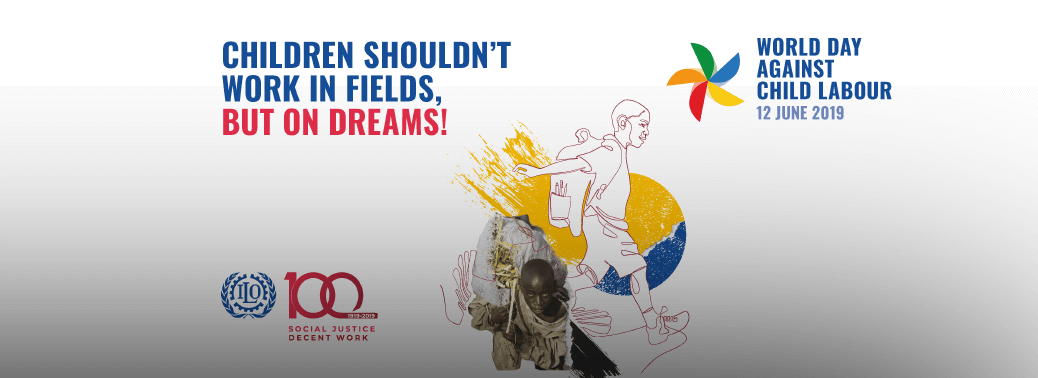
- Indian Staffing Federation has asked the government to completely scrap the archaic labor laws.
- ISF is an apex body of staffing or the outsourcing industry. It is yet to be recognized by the government. India has 463 million workforces, of which 94% are in informal sector employed with small and micro firms.
- Such enterprises tries to remain small since they enjoy tax benefits in India as they employ less than 20 people. Therefore, such a ceiling on the number of employees has restricted the growth of the industries as well as the growth of employment in the country.
- Once a company employs more than 20 labourers it is subjected to unrealistic labour laws and compliances. Labour laws in India is framed by both the Central government and the State government as it comes under the Concurrent list of the constitution.
- This has created lot of ambiguity in laws and confusion in its implementation. For example, existing labour laws define worker and wage in 17 different ways.
- This has made India a hostile place for investments.
- The ISF recommends new labour laws that suits the modern times and needs of an emerging economy.
UNION CABINET CLEARS FRESH BILL TO BAN INSTANT TRIPLE TALAQ
13, Jun 2019
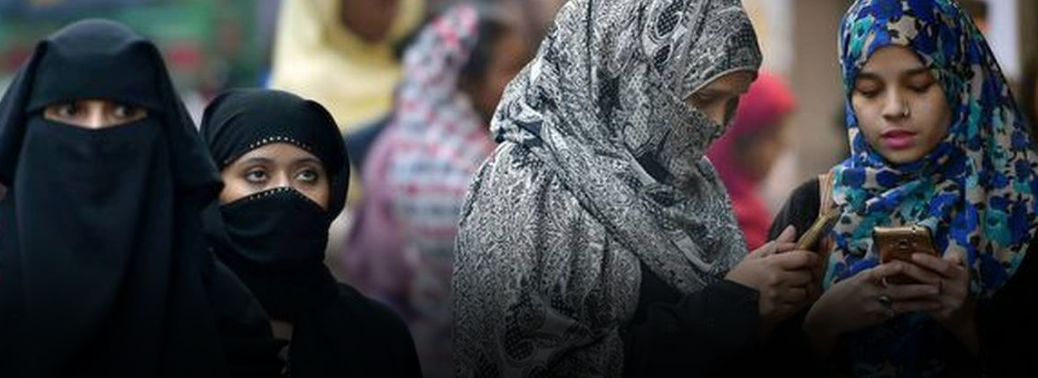
Why in News:
- Cabinet approves legislation to replace ordinance, bill to be introduced in upcoming session of the new Lok Sabha
Back ground:
- The Union Cabinet on Wednesday approved the Muslim Women (Protection of Rights on Marriage) Bill, 2019, paving the way for the legislation to be introduced in the upcoming session of Parliament.
- The Bill, which would replace the Muslim Women (Protection of Rights on Marriage) Second Ordinance, 2019, once passed, would put a curb on the practice of talaq-e-biddat, or instant triple talaq.
- “The Bill would ensure gender equality and gender justice to Muslim women. The Bill would also help in protecting the rights of married Muslim women and prevent divorce by practice of ‘talaq-e-biddat’ by their husbands.
- The Bill declares the practice of triple talaq void and illegal, making it punishable by three years in jail and a fine. It also provides for payment of subsistence allowance to married Muslim women and dependent children.
FROM PLATE TO PLOUGH: THE FARM-FACTORY CONNECT
11, Jun 2019
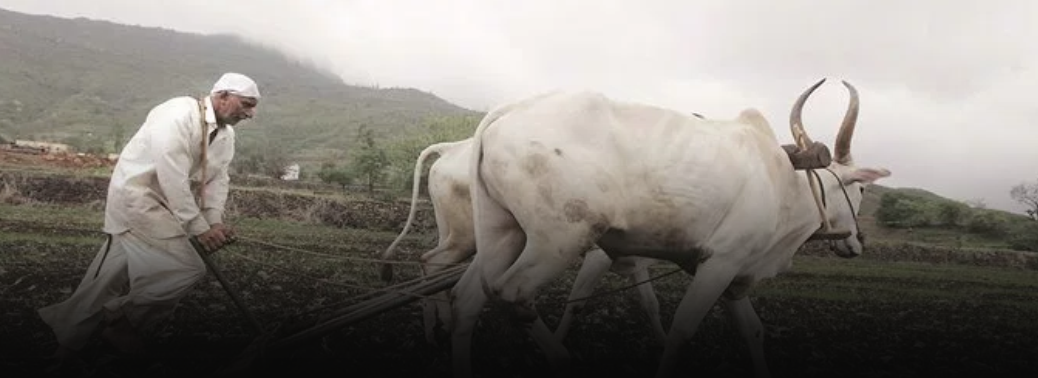
Why in News:
- Ashok Gulati, chair professor for agriculture at ICRIER, talked about importance of farm- factory connect.
Background: / Important Analysis:
- As per the last report of National Statistical Office (NSO) released on May 31, the Gross Value Added (GVA) at basic prices (2011-12 prices) for the fourth quarter (Q4) of 2018- 19 has slumped to -0.1 percent for agriculture, forestry and fishery.
- However, Agri-GDP grew at 2.9 per cent per annum in Last five year.
China Story:
- Dr Gulati observe that the first thing Chinese government did in 1978, when it started off economic reforms was to reform agriculture.
- Agri-GDP in China grew at 7.1 per cent per annum during 1978-84, and because the Chinese government also liberated price controls on Agri-commodities, farmers’ real incomes increased at 15 per cent per annum.
- China registered an Agri-GDP growth of 4.5 per cent per annum during 1978-2016
- This helps the manufacturing revolution, which was revved up through town and village enterprises (TVEs) to cater to domestic demand from rural areas.
Indian Story:
- India has never had any major Agri-reforms and farmers’ incomes have remained very low. It has implications not only for overall Agri-GDP growth, but also for slowing down of manufacturing growth due to sluggish demand for industrial products in rural areas Recently, Indian industry is complaining that the rural demand is collapsing. Tractor sales are down by 13 per cent, two-wheeler sales are down by 16 per cent, car sales are down by similar percentage, and even FMCG (fast move consumer goods) sales are down in April 2019 over April 2018.
Reason for low farm productivity:
- Restrictive policies: Our restrictive policies constrain the private sector to make Indian agriculture globally competitive.
- Our restrictive policies constrain the private sector from building direct supply chains from farms to ports, which bypass the mandi system. This leads to a weak infrastructure for agri-exports.
- Obsessive focus on inflation targeting: An obsessive focus on inflation targeting by suppressing food prices through myriad controls works against the farmer.
- MSPs remain largely ineffective: Normally, MSPs remain largely ineffective for most commodities in larger parts of India. But even if they are operational through massive procurement operations, a policy of high MSPs can backfire when it goes beyond global prices.
- Take the case of rice. India is the largest exporter of rice in the world, exporting about 12 to 13 MMT of the cereal per year.
- If the government raises the MSP of rice, by say 20 per cent, rice exports will drop and stocks with the government will rise to levels far beyond the buffer stock norms.
- It would be a loss of scarce resources. Besides, it would create unnecessary distortions adversely impacting the diversification process in agriculture towards high-value crops.
- Low investment in Agri-R&D and its extension from lab to land: Today, India spends roughly 0.7 per cent of Agri-GDP on Agri-R&D and extension together. This needs to double in the next five years.
- The meagre investments in Pusa Basmati 1121 and 1509, for example, have yielded basmati exports between $ 4 and 5 billion annually.
- Investment in managing water efficiently
- Investment in infrastructure for agri-exports value chains.
NATIONAL PEOPLE’S PARTY IS NOW A NATIONAL PARTY
11, Jun 2019

Why in News:
- National People’s Party, has been recognised as a “national party”.
More in News:
- NPP is eighth party to get that recognition after Congress, BJP, BSP, NCP, CPI, CPI(M) and Trinamool Congress and the first from the Northeast
The Election Commission lists political parties as “national party”, “state party” or “registered (unrecognised) party”. - The conditions for being listed as a national or a state party are specified under the Election Symbols (Reservation and Allotment) Order, 1968.
- Previously, the poll body used to assess the eligibility based on the performance in one election, but in 2016, it altered the rules to expand the assessing period to two elections (this could be one general election and one state one; or two general elections; or two state ones) after the one in which it was granted a national party or regional party status.
National Party:
- For any political party to be eligible for recognition as a national Party, it has to satisfy any of these conditions
6% vote share in the last Assembly polls in each of any four states, as well as four seats in the last Lok Sabha polls; or
2% of all Lok Sabha seats in the last such election, with MPs elected from at least three states; or - Recognition as a state party in at least four states.
- Note – The NPP has satisfied the last of these conditions. It is recognised as a state party in four states — Arunachal Pradesh, Manipur and Nagaland, besides Meghalaya.
- It has earned that recognition by fulfilling different conditions in different states.
- For recognition as a state party, any one of five conditions need to be satisfied. These are specified under paragraph 6A of the 1968 Order:
- Two seats plus a 6% vote share in the last Assembly election in that state; or One seat plus a 6% vote share in the last Lok Sabha election from that state; or
- 3% of the total Assembly seats or 3 seats, whichever is more; or
- One of every 25 Lok Sabha seats (or an equivalent fraction) from a state; or
- An 8% state-wide vote share in either the last Lok Sabha or the last Assembly polls.
- In Meghalaya, the NPP easily satisfies all five conditions, with 19 Assembly seats out of 59 and a 20.60% vote share in 2018, followed by one of the state’s two Lok Sabha seats and a 22% vote share this year.
- In the other three states, it did not win a single Lok Sabha seat or get an 8% vote share in any, but earned recognition as a state party by virtue of its Assembly poll performances.
- In Manipur, it won four seats in 2017,which satisfied condition (iii) listed under Paragraph 6B. In Assembly elections to Nagaland last year and Arunachal this year, the NPP fulfilled the conditions (i) and (iii).
FOCUS IS ON AYUSHMAN BHARAT
04, Jun 2019
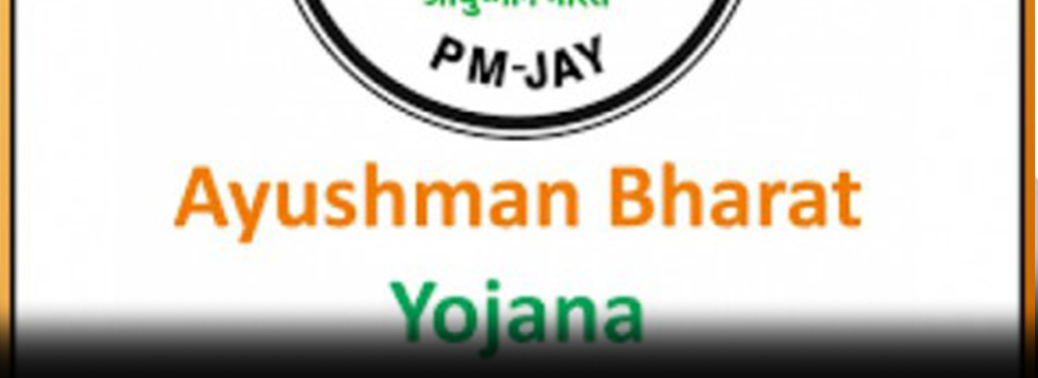
Why in News:
- The Health Ministry will focus on strengthening preventive strategies so that people adopt a healthy lifestyle.
Background: / Ayushman Bharat:
- The programme is aimed at making interventions to address health holistically, in primary, secondary and tertiary care systems.
- The initiatives under the programme are:
- Health and Wellness Centre
- National Health Protection Scheme
Health and Wellness Centre:
- National Health Policy, 2017 envisioned Health and Wellness Centres as the foundation of
India’s health system. - Under this, 1.5 lakh centres will bring health care system closer to the homes of people.
- The centres will provide comprehensive health care, including for non-communicable diseases and maternal and child health services.
- These will also provide free essential drugs and diagnostic services.
- Contribution of private sector through CSR and philanthropic institutions in adopting these centres is also envisaged.
National Health Protection Scheme:
- This will cover over 10 crore poor and vulnerable families.
- This would translate to around 50 crore beneficiaries.
- The scheme provides coverage of upto Rs. 5 lakh per family per year for secondary and tertiary care hospitalization.
- This is said to be the world’s largest government funded health care programme.
- Besides, 24 new Government Medical Colleges and Hospitals will be set up, by up-grading existing district hospitals in the country.
- This would ensure that there is at least 1 Medical College for every 3 Parliamentary Constituencies. Also, at least 1 Government Medical College in each State of the country.
- This is to further enhance accessibility of quality medical education and health care.
What is the Significance?
- Lakhs of families, at present, borrow or sell assets to receive inpatient treatment.
- The concern of the consequent impoverishment of poor and vulnerable families is a continuing one. Under the existing Rashtriya Swasthya Bima Yojana (RSBY), poor families get an annual coverage of Rs. 30,000. Several State governments have implemented or supplemented health protection schemes that provide varying coverage.
- The present initiatives will supplement these in taking health care to a larger mass.
- Higher health insurance cover is also seen as leading to a higher life expectancy.
- The scheme could potentially ensure enhanced productivity and well-being, averting wage loss and impoverishment.
AFTER ARTICLE 370, LEGISLATOR TRIGGERS DEBATE ON NAGALAND’S 371(A)
02, Jun 2019
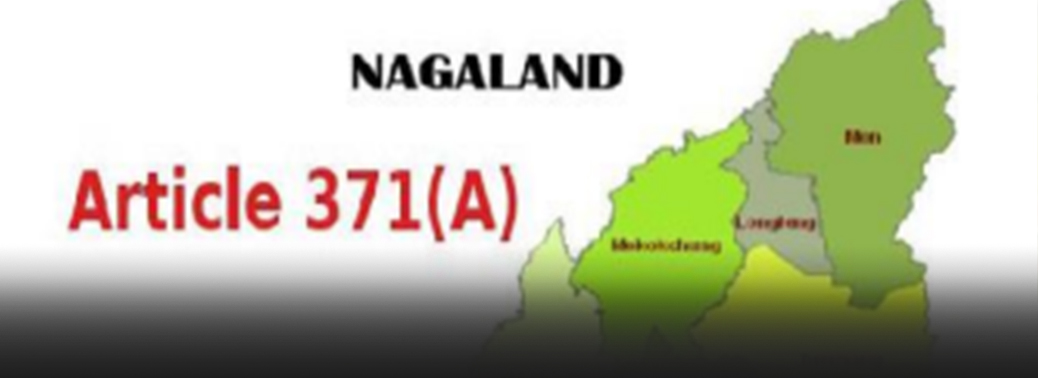
Why in News:
- A legislator of the ruling party in Nagaland has triggered a debate on Article 371(A) that guarantees special status for the people of the north-eastern State.
What is Article 370?
- Article 370 of the Indian Constitution is a ‘temporary provision’ which grants special autonomous status to Jammu & Kashmir.
- Under Part XXI of the Constitution of India, which deals with “Temporary, Transitional and Special provisions”, the state of Jammu & Kashmir has been accorded special status under Article 370. All the provisions of the Constitution which are applicable to other states are not applicable to J&K.
Important provisions
- According to this article, except for defence, foreign affairs, finance and communications,
Parliament needs the state government’s concurrence for applying all other laws. - Indian citizens from other states cannot purchase land or property in Jammu & Kashmir.
- Under Article 370, the Centre has no power to declare financial emergency under Article
360 in the state. Under Article 370, the Indian Parliament cannot increase or reduce the borders of the state. - Part IV (Directive Principles of the State Policy) and Part IVA (Fundamental Duties) of the Constitution are not applicable to J&K.
ARTICLE 371 – A → SPECIAL PROVISIONS FOR NAGALAND:
- An act of parliament relating to following matters would not apply to Nagaland unless state assembly so decides:
- Religious & social practices of Nagas Nagas
- customary law & procedure
- Administration of civil or criminal justice involving decisions according to Naga customary law Ownership & transfer of land & its resources
- Special responsibility of governor with respect to law & order in the state
- A regional council for Tuensang district, consisting of 35 members should be formed & governor in his discretion shall make all the rules & terms regarding this council
- Administration of Tuensang district shall be carried on by the governor
- Governor in his discretion shall arrange for equitable distribution of money, between Tuensang district & Rest of Nagaland, provided by the center.
- Final decision on all matters relating to Tuensang district shall be made by governor in his discretion. Members in Nagaland assembly from the Tuensang district are not elected directly by the people but by regional council.
STAY VERDICT ON CHENNAI-SALEM HIGHWAY FORTHWITH, NHAI URGES SC
02, Jun 2019

Why in news:
- The National Highways Authority of India (NHAI) has told the Supreme Court that the Madras High Court’s order quashing land acquisition notifications for the proposed Chennai-Salem eight-lane greenfield expressway would act as a deterrent for other infrastructure projects planned across the country under the Bharatmala Pariyojana
-Phase I.
Details:
- NHAI Contends that the High Court had given an erroneous finding that environmental clearance must be obtained even before acquisition of lands and not just before construction of the highway.
- NHAI claimed that such a finding would indefinitely delay all ongoing as well as future infrastructure projects in the country and consequently cripple economic activities.
- The NHAI said that the objective of Bharatmala Pariyojana was to improve efficiency of freight and passenger movement across the country by bridging critical infrastructure gaps through development of economic corridors, feeder routes, border and international connectivity roads and Greenfield expressways.
Project proposal:
- The Chennai-Salem greenfield corridor is a 277.3 km long, 8-lane highway project, proposed to connect Salem to Chennai. The proposed highway passed through Kanchipuram, Tiruvannamalai, Krishnagiri, Dharmapuri and Salem districts of Tamil Nadu. This is an agrarian region comprising reserved forest areas and several industrial zones. A feasibility study for the project pegged the total cost at Rs 9,106 crores.
- In addition, a tentative cost for rehabilitation and resettlement had been worked out to Rs 415 crores.
Objective
- There are three existing routes between Salem and Chennai:
- Ulundurpet to Chennai
- Walajah to Chennai
- the Chennai – Tiruvannamalai – Harur – Salem routes
- The government argues that the first two existing stretches are facing abnormal delays due to increasing traffic volume.
- The second stretch may not reduce travel time even if a bypass route was introduced.
- Thus, a direct Salem – Chennai highway may be the only solution to ease traffic and reduce the travel time. It was stated that the corridor would mostly involve drylands, but the land acquisition cost may not be very high when compared to the benefits.
- A subsequent feasibility report noted that the project is expected to generate development and employment in the towns along the route.
- Hence, considering the business potential and other benefits, the centre is said to have
approved the proposal and called it “Green Express Way Corridor”.
Impact
- The farmers feared that the project would destroy the most productive farmlands in Kancheepuram and Tiruvannamalai districts.
- It will have a huge impact on the environment and water bodies in the area.
- The court order also raised questions about a vulnerable reserve forest stretch near the project alignment. The court also based its judgment on major flaws in the project report submitted by a private consultant. Given the above drawbacks, the HC scrapped the feasibility study report which said the project would generate employment opportunities and lead to development.
SUPREME COURT STAYS MAHARASHTRA’S EWS QUOTA
31, May 2019

Why in News:
- The Supreme Court passed an interim direction that the 10% reservation for the economically weaker sections introduced by Maharashtra for postgraduate medical courses in the State through notifications, will not apply for this academic year.
Details:
- 103rd Constitutional amendment, Article 16 (6) was inserted, allowing States to make “any provision for the reservation of appointments or posts in favour of any economically weaker sections of citizens other than the classes mentioned in clause (4), in addition to the existing reservation and subject to a maximum of ten per cent of the posts in each category.”
- Court said that additional seats are sanctioned by the Medical Council of India, the existing seats cannot be subjected to the provisions of the aforesaid Constitutional amendment by issuing appropriate notifications.
- It is said that Modalities of selection cannot be changed after initiation of the process, in a similar matter involving reservation of 16% seats for socially and educationally backward classes including the Maratha community in the educational institutions in the State of Maharashtra in terms of provisions of the Maharashtra State Reservation (of Seats for Admission in Educational Institutions in the State and for Appointments in the Public Services and Posts under the State) for Socially and Educationally Backward Classes (SEBC) Act, 2018.
IN JOINT FAMILY, BROTHER-IN-LAW HAS LIABILITY TO PAY MAINTENANCE TO DOMESTIC VIOLENCE VICTIM: SC
28, May 2019
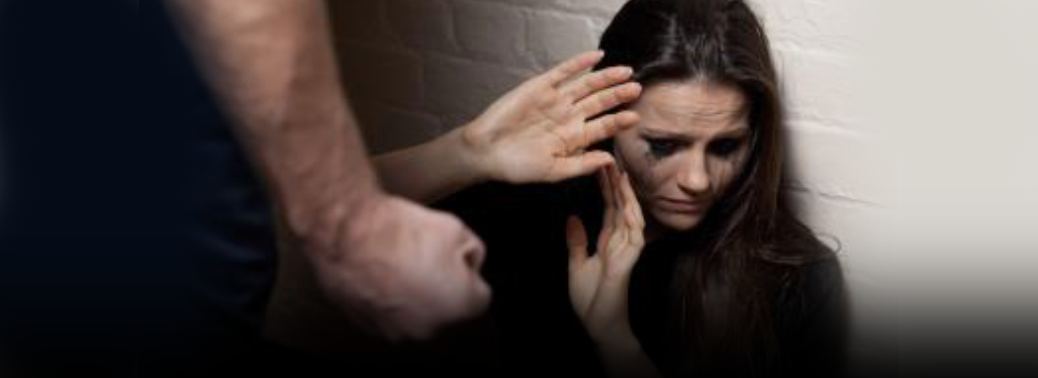
Why in News:
- Even the brother-in-law has a liability to pay maintenance to a victim under the Domestic Violence Act if they had lived together under the same roof in a shared household as part of a joint family at any point of time, the Supreme Court has held.
Details:
- The apex court Bench interpreted what the expression ‘domestic relationship’ means under the 2005 Act. They held that the term meant a “relationship where two persons live or have lived together at any point of time in a shared household when they are related by consanguinity, marriage or through a relationship in the nature of marriage, adoption or are members living together as a joint family”.
- The court further read the term “shared household” to include “such a household which may belong to the joint family of which the respondent is a member, irrespective of whether the respondent or the aggrieved person has any right, title or interest in the shared household”.
Domestic Violence Act
- While dowry related violence or cruelty has been covered in section 498-A of the Indian Penal Code, an additional law was enacted by the parliament as Protection of Women from Domestic Violence Act of 2005 to explicitly define domestic violence in addition to dowry-related cruelty and provide maintenance, shelter, or interim finances to a woman subjected to domestic violence or harassment by an adult male.
RECORDING DISSENTING OPINION IN EC
24, May 2019
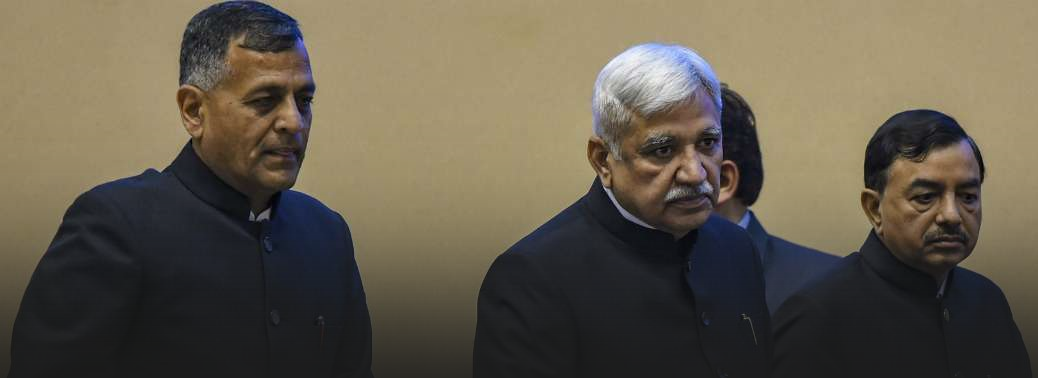
Why in News?
- The Election Commission has decided by majority that dissenting opinions in Model Code of Conduct (MCC) disputes will not be made part of any final order.
- What was the dispute?
- Election Commissioner Ashok Lavasa had given dissenting opinion in at least four cases. These related to cases where the ECI (2:1 majority) did not find any violation in the speeches of PM Narendra Modi and BJP chief Amit Shah.
- Election Commissioner Ashok Lavasa had written thrice to the Chief Election Commissioner Sunil Arora in this regard.
- He had conveyed his decision to stay away from proceedings related to the MCC if the dissenting views were not incorporated in the orders.
- With ECI’s recent decision, the dissenting opinions will only be included in internal files, as per previous practice.
What does the law say?
- Article 324 of the Constitution vests the superintendence, direction and control of elections in an Election Commission of India.
- It consists of the Chief Election Commissioner and such number of other Election Commissioners, if any, as the President may from time to time fix.
- At present the Election Commission is a multi-member body, with a Chief Election Commissioner and two other members.
- The law requires the multi-member EC to transact business unanimously as far as possible. All three Commissioners now have equal decision-making powers.
What is the procedure in case of dissent?
- Where there is a difference of opinion, decision is taken by majority.
- All opinions carry equal weight, which means the CEC can be overruled by the two ECs.
- If some difference of opinion persists even after oral deliberations and discussions, such dissent is recorded in the file.
- In normal practice, while communicating the decision of the Commission in executive matters, the majority view is conveyed to the parties concerned.
The dissent remains recorded in the file. - In case dissent is to be recorded in a case of judicative nature, the dissenting member may like to record a separate opinion/order.
- However, despite the existence of the provision to take decisions by majority since 1993, very rarely has dissent been recorded.
- When a matter is deliberated upon by the 3 Commissioners, they normally agree to a common course of action.
- This does not, however, mean that there is no disagreement between the Commissioners.
Is the rejection of the demand justified?
- The recent rejection of the demand of Mr. Lavasa on recording dissenting opinions in the orders may be technically and legally right.
However, there was indeed a strong case for acceding to his demand. - This is especially true at least in regard to complaints against high functionaries such as the Prime Minister. The EC has been widely criticised for giving a series of ‘clean chits’ to the PM.
- This was despite some questionable remarks that appeared to solicit votes in the name of the armed forces. Added to the dispute was the unexplained delay of several weeks in disposing of complaints against Mr. Modi. It is in this context that Mr. Lavasa’s dissenting opinion may have been relevant enough to merit inclusion in the EC’s orders.
- People are entitled to know whether or not the poll panel’s key decisions are unanimous. In the present case, Mr. Lavasa has taken up the issue through as many as three letters. So it is reasonable to infer that there is some basis for his grievance.
- The onus on EC to maintain a level-playing field and enforce the election code is quite high, especially when its credibility is under question.
- It would be unfortunate if the majority in the EC were to be afraid of any public reaction that may result from disclosure of a split opinion.
ONLY A MARGINAL CHANGE IN NOTA VOTE PERCENTAGE
24, May 2019
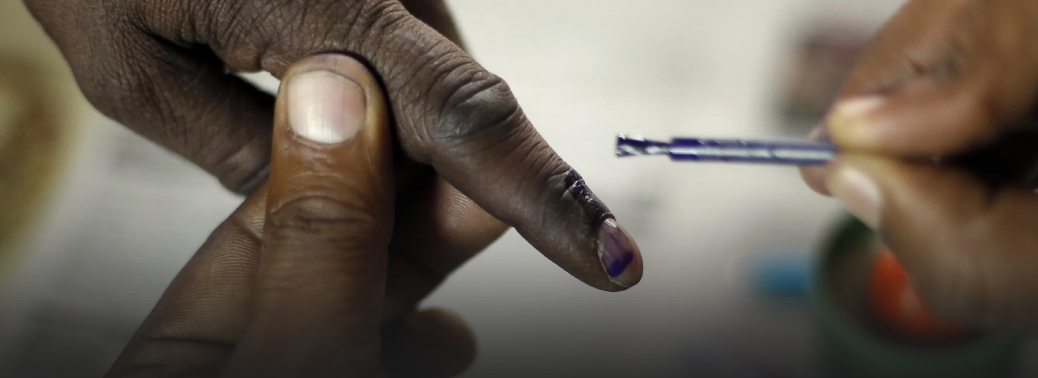
Why in News:
The percentage of votes for NOTA, or the none-of-the-above option, this year has remained virtually unchanged from last time, according to data from the Election Commission (EC) website.
background:
- In 2019, about 1.04% of the voters felt that none of the candidates deserved their vote. In the 2014 Lok Sabha election, this was around 1.08% of the voters.
- The 2019 Lok Sabha elections stretched over six weeks and registered the highest voter turnout in the history of the Lok Sabha election.
NOTA:
- None Of The Above (NOTA) is a ballot option designed to allow the voter to indicate disapproval of all of the candidates in a voting system.
- It was introduced in India following the 2013 Supreme Court directive in the People’s Union
for Civil Liberties v. Union of India judgment. - However, NOTA in India does not provide for a ‘right to reject’.
- The candidate with the maximum votes wins the election irrespective of the number of NOTA votes polled.
What is the current pattern of NOTA?
- NOTA polling figures are still small.
- In the 2013 Assembly elections held in four States NOTA constituted 1.85% of the total votes polled.
- Then it dropped to 0.95% in the 2014 Assembly elections held in eight States.
- It increased to 2.02% in the 2015 Assembly elections held in Delhi and Bihar. While Delhi polled a mere 0.40%, Bihar saw 2.49% of NOTA votes, which remains the highest NOTA votes polled so far in any State in Assembly elections.
- The number of NOTA votes polled was larger than the winning margin in 261 Assembly constituencies and in 24 constituencies in the Lok Sabha elections since 2013.
- Therefore, in these constituencies the NOTA votes did make a difference to the election results. Reserved constituencies – Reserved constituencies have seen a relatively larger number of NOTA votes. This point to the continued social prejudice against political reservation for SC/STs. Left-Wing Areas – Constituencies affected by left-wing extremism have also recorded higher NOTA performance and here probably it served as an instrument of protest against the State itself.
- Mainstream Parties – It is comparatively higher in the constituencies which have seen a direct contest between the Congress and the Bharatiya Janata Party. This might be some indication of the people’s disenchantment with two mainstream political parties.
- NOTA is also used to express their protest against many things they perceive wrong in the political system.
What is the way ahead?
- So far, a small number of Indian voters have come to see NOTA as an instrument of protest. The perceived cynicism of Indian voters against the political class thus seems exaggerated. Nevertheless, it is important to note that these voters have used the democratic means of NOTA to express their resentment rather than boycotting the polls outright. This electoral option will become a meaningful means of negative voting only if it becomes a ‘right to reject’ rather than being a symbolic instrument to express resentment as it is now.
OBC CATEGORIES COMMISSION RECEIVES 2-MONTH EXTENSION
23, May 2019
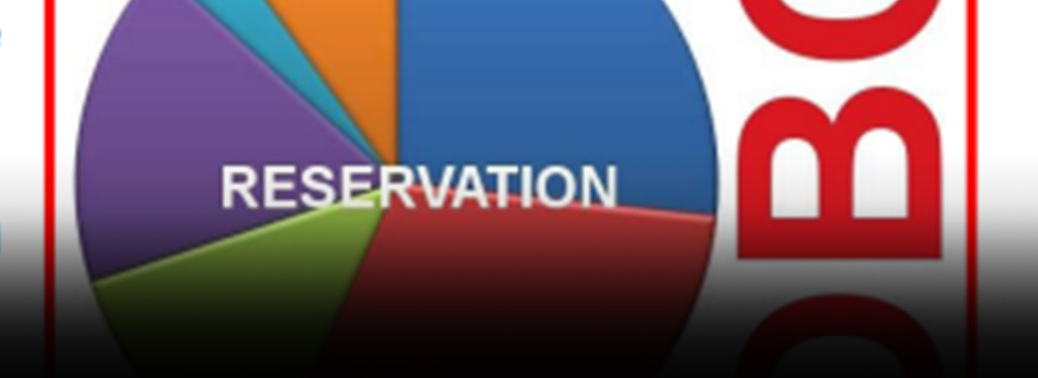
Why in News:
- A commission appointed in 2017 to examine the sub-categorisation of the Other Backward Classes (OBC) has been given a two-month extension by President Ram Nath Kovind
Details:
- The commission had been constituted to “examine the extent of inequitable distribution of benefits of reservation among the castes or communities included in the broad category of Other Backward Classes with reference to such classes included in the Central List.
- The commission was meant to “work out the mechanism, criteria, norms and parameters in a scientific approach for sub-categorisation within such OBCs and to take up the exercise of identifying the respective castes or communities or sub-castes or synonyms in the Central List of OBCs and classifying them into their respective sub-categories”
- The commission, was supposed to present its report to the President in 12 weeks from the time the chairperson assumed charge.
Since considerable time was taken up in obtaining the data and thereafter in analysing of the data, the tenure of the Commission has been extended.
National Commission for Backward Classes
- National Commission for Backward Classes is a Constitutional body set up through the 123rd constitutional amendment bill 2018 and 102nd amendment act under the provisions of Article 338B of Indian Constitution.
- The commission consists of one chairman and five Members with the term of three years. The National Commission for Backward Classes is vested with the responsibility of considering inclusions in and exclusions from lists of communities notified as backward for the purpose of job reservations.
- The commission tenders the needful advice to the Central Government on the issues related to the backward classes and the commission has the powers of a civil court
- The NCBC was given limited powers – only to recommend to the government inclusion or exclusion of a community in the central list of OBCs.
- The power to hear complaints of the OBCs and protect their interests remained with the National Commission for Scheduled Castes
ELECTION COMMISSION REJECTS OPPOSITION PARTIES’ DEMAND ON VVPAT VERIFICATION
23, May 2019

Why in News:
The Election Commission (EC) rejected the demand of Opposition parties for tallying of the Voter Verified Paper Audit Trail (VVPAT)
Background: / What is a VVPAT system?
- Voter verifiable paper audit trial (VVPAT) is an independent system attached to an EVM that allows the voters to verify that their votes are cast as intended.
- When a vote is cast, a slip is printed on the VVPAT printer containing the serial number, name and symbol of the candidate voted.
- This remains visible to you through a transparent window for seven seconds.
- Thereafter, this printed slip automatically gets cut and falls into a sealed drop box.
- If there is a need, these printouts can later be counted.
How did the VVPAT system evolve in India?
- Many political parties expressed their satisfaction with EVMs initially.
- But some parties requested the Commission to consider introducing VVPATs for further transparency and verifiability of the votes cast.
- The Commission referred the matter to its technical committee on EVMs to examine and make a recommendation to the Commission.
- The committee first met with the manufacturers and then with political parties and other civil society members to explore the design requirements of the VVPAT system.
- In 2011, BEL and ECIL made a prototype of the VVPAT and demonstrated it to the technical committee and the Election Commission.
- In the same year the Commission conducted simulated elections for the field trial of the VVPAT system in various places including Thiruvananthapuram, Ladakh, Cherrapunji and Jaisalmer.
- Two years later, the government amended the Conduct of Elections Rules, 1961 allowing the Commission to use VVPATs along with EVMs.
- These were first used in the bye-election for the Noksen Assembly seat in Nagaland in 2013. Thereafter VVPATs have been used in select constituencies in every election to the State Assemblies.
- They were deployed in eight Parliamentary constituencies during the 2014 Lok Sabha elections. In the 2019 Lok Sabha elections, VVPATs will be used in all the constituencies.
Why is it important?
- In the world’s largest democracy, every vote counts and the EVMs and VVPATs try and ensure that the massive election process is in tune with the latest technological advancements. The Election Commission has never doubted the workings of EVMs and their utility in a free and fair electoral process.
- However, VVPATs add another layer of transparency and reliability to convince voters about the sanctity of EVMs. EVMs and VVPATs also quicken the election process as counting votes on EVMs takes much lesser time than counting paper ballots.
- The EVMs and VVPATs are also environment-friendly as they use very little paper compared to paper ballots.
TALLY EVM-VVPAT SLIPS BEFORE FINAL COUNTING, OPPOSITION TELLS EC
22, May 2019
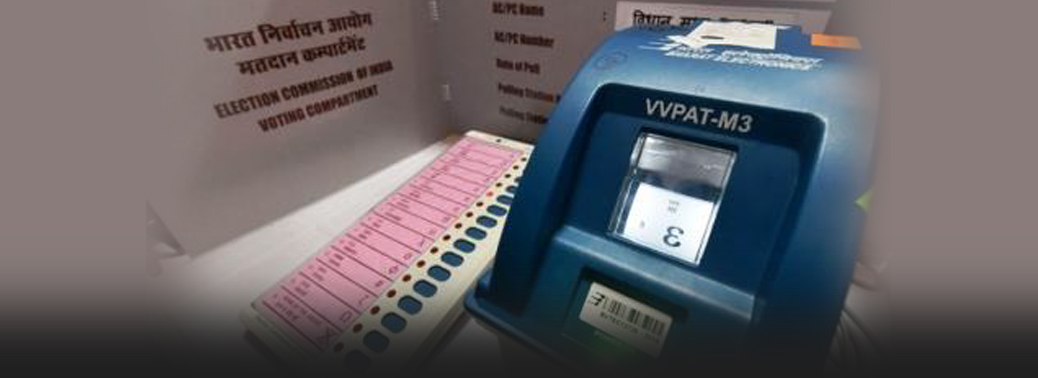
Why in News:
- Twenty-two Opposition parties met the Election Commission (EC) demanding that tallying of the Voter Verified Paper Audit Trail (VVPAT) slips in five polling booths in each Assembly segment with the electronic voting machines (EVMs) be done prior to the counting of votes.
Details:
- If any discrepancy is found anywhere in the VVPAT verification, hundred per cent counting of paper slips of VVPATs of all polling stations of that Assembly segment should be done, the parties demanded.
- The EC, however, remained non-committal and told them that there would be a special meeting of the full Commission to examine the issue.
Electronic voting machines (EVMs)
- An EVM consists of a “control unit” and a “balloting unit”. The control unit is with the Election Commission-appointed polling officer; the balloting unit is in the voting compartment into where voter casts her vote in secret.
- It runs on a single alkaline battery fitted in the control unit, and can even be used in areas that have no electricity.
- They are manufactured by Electronics Corporation of India Limited (ECIL) and Bharat Electronics Limited (BEL).
- VVPATs are an independent verification system designed to allow voters to verify that their votes were cast correctly, to
- detect possible election fraud/malfunction and to provide a means to audit the stored results in case of disputes.
Voter Verified Paper Audit Trail (VVPAT)
- In VVPATs, a paper slip is generated bearing serial number, name and symbol of the candidate along with recording of vote in CU. The printed slip is visible (for 7 seconds) in a viewing window attached to BU in voting compartment.
- In Subramaniam Swamy vs ECI (2013), SC said VVPAT is necessary for transparency in voting and must be implemented by ECI.
OPPOSITION TO MEET ECI TODAY OVER VVPAT VERIFICATION
21, May 2019

Why in News:
- Leaders of Opposition parties will meet Election Commission (EC) officials to urge the panel to spell out the mechanisms to address any mismatch between voter-verified paper audit trail (VVPAT) and electronic voting machine (EVM) tallies during the counting of votes.
Details:
- Opposition parties had suggested that if there is a discrepancy, then the votes of the entire Assembly segment should be counter-checked with the VVPAT machines.
- It is said that any discrepancy would raise a doubt on the integrity of the entire electoral process and the EC is yet to bring out the guidelines it promised.
Background:
VVPAT system
- Voter verifiable paper audit trial (VVPAT) is an independent system attached to an EVM that allows the voters to verify that their votes are cast as intended.
- When a vote is cast, a slip is printed on the VVPAT printer containing the serial number, name and symbol of the candidate voted.
- This remains visible to you through a transparent window for seven seconds.
- Thereafter, this printed slip automatically gets cut and falls into a sealed drop box. If there is a need, these printouts can later be counted.
- It is intended as an independent verification system for EVM designed to
- • allow voters to verify that their votes are casted correctly,
- • detect possible election fraud or malfunction and
- • Provide a means to audit the stored electronic results.
Advantages in VVPATs:
- Enables to verify vote: Instant feedback to voter that vote polled has been allocated to the intended candidate.
- Enables authorities to count the votes manually if there is a dispute in the electronically polled votes. Operates under a Direct Recording Election system (DRE) which detects fraud and existent malfunctions. Will ensure greater transparency in voting process.
- Gives both the voters and political parties an assurance.
TAIWAN LEGALIZES SAME-SEX MARRIAGE IN HISTORIC FIRST FOR ASIA
18, May 2019
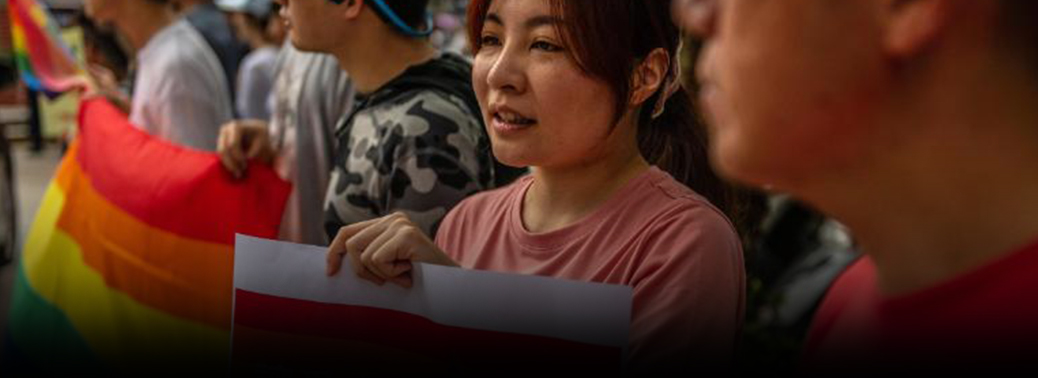
Why in News:
- Lawmakers in Taiwan have approved a bill legalizing same-sex marriage, a landmark decision that makes the self-ruled island the first place in Asia to pass gay marriage legislation.
Details:
- Lawmakers comfortably passed part of a bill that would allow gay couples to enter into “exclusive permanent unions” and apply for marriage registration with government agencies.
What is Section 377?
- Section 377 of the Indian Penal Code dating back to 1860, introduced during the British rule of India, criminalises sexual activities “against the order of nature”, including homosexual sexual activities. Prior to that, sexual activities, including amongst homosexuals, were not penalised in India.
- Though it textually applies to all persons, homosexual and heterosexual, it has been targeted at Transgender men.
Courts judgement on Section 377
- The Delhi High Court in Naz Foundation v. Government of NCT of Delhi (2009) rightly held that criminalising sexual activities with consent in private not only impairs the dignity of those persons targeted by the law, but it is also discriminatory and impacts the health of those people.
- The top court had set aside a historic Delhi High Court judgment that had decriminalized homosexuality.
- Supreme Court, in Suresh Kumar Koushal v. Naz Foundation (2013) case, set aside the Delhi High Court judgment and said that homosexuality or unnatural sex between two consenting adults under Section 377 of IPC is illegal and will continue to be an offense. The court said that Section 377 did not suffer from any “constitutional infirmity”.
- The astounding claim made in Koushal case that there was no need to challenge Section 377 because the LGBT community constitutes only a minuscule minority has been completely discredited. It was unreasonable to advance the view that constitutional protection is available to a group based on its size.
ILLEGAL PHOTOCOPYING OF DOCUMENTS IS THEFT: SUPREME COURT
16, May 2019
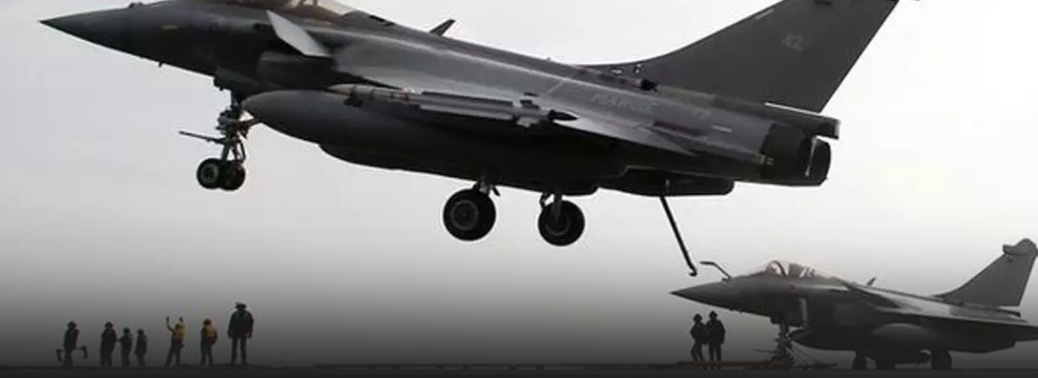
Why in News:
- Dishonest and temporary “removal” of original documents to take photocopies and to
further use information amounts to theft, the Supreme Court has held.
Background:
- The judgment followed the principle laid down by the apex court in its earlier precedents that “to commit theft, one need not take movable property permanently out of the possession of another with the intention not to return it to him. It would satisfy the definition if he took any movable property out of the possession of another person though he intended to return it later on.”
Apex Court Verdict:
- The loss need not be caused by a permanent deprivation of property but may be caused even by temporary dispossession, though the person taking it intended to restore it sooner or later. A temporary period of deprivation or dispossession of the property of another cause’s loss to the other.
Calcutta court verdict:
- held that since the the first 28 documents were still in Birla’s custody, the taking away of the information contained in these documents and their temporary removal would not qualify as theft, dishonest misappropriation of property or dishonest receiving of the stolen property.
MAMATA’S MORPHED PHOTO: SC PULLS UP BENGAL GOVT FOR BJP LEADER’S OVERNIGHT DETENTION
15, May 2019

Why in News?
- The Supreme Court on Wednesday pulled up the West Bengal government for keeping BJP Yuva Morcha leader Priyanka Sharma behind bars overnight despite the court’s May 14 order to release her immediately on bail.
Details:
-
A Vacation Bench of Justices Indira Banerjee and Sanjiv Khanna even threatened contempt action against the State government.
- Ms. Sharma was arrested by the State Police and sent to 14 days of custody for allegedly posting a morphed image of Chief Minister Mamata Banerjee on social media.
- The arrest was “prima facie arbitrary” in the first place. On May 14, she was granted bail, the Vacation Bench asked her to apologies for the “meme”.
- Ms. Sharma was released at half-past nine on Wednesday. The order was to release her immediately.
Article 22:
Protection Against Arrest and Detention In Certain Cases
-
1.No person who is arrested shall be detained in custody without being informed, as soon as may be, of the grounds for such arrest nor shall he be denied the right to consult, and to be defended by, a legal practitioner of his choice.
- 2.Every person who is arrested and detained in custody shall be produced before the nearest magistrate within a period of twenty-four hours of such arrest excluding the time necessary
for the journey from the place of arrest to court of the magistrate and no such person shall be detained in custody beyond the said period without the authority of a magistrate.
Are the fundamental rights affected?
Article 19:
Protection of Certain Rights Regarding Freedom of Speech
-
Nothing shall affect the operation of any existing law, or prevent the State from making any law, in so far as such law imposes reasonable restrictions on the exercise of the right conferred by the said sub-clause in the interests of the sovereignty and integrity of India, the security of the State, friendly relations with foreign States, public order, decency or morality, or in relation to contempt of court, defamation or incitement to an offence.
- The Supreme Court on Wednesday pulled up the West Bengal government for keeping BJP Yuva Morcha leader Priyanka Sharma behind bars overnight despite the court’s May 14 order to release her immediately on bail.
Details:
- A Vacation Bench of Justices Indira Banerjee and Sanjiv Khanna even threatened contempt action against the State government.
- Ms. Sharma was arrested by the State Police and sent to 14 days of custody for allegedly posting a morphed image of Chief Minister Mamata Banerjee on social media.
- The arrest was “prima facie arbitrary” in the first place. On May 14, she was granted bail, the Vacation Bench asked her to apologies for the “meme”.
- Ms. Sharma was released at half-past nine on Wednesday. The order was to release her immediately.
- 1.No person who is arrested shall be detained in custody without being informed, as soon as may be, of the grounds for such arrest nor shall he be denied the right to consult, and to be defended by, a legal practitioner of his choice.
- 2.Every person who is arrested and detained in custody shall be produced before the nearest magistrate within a period of twenty-four hours of such arrest excluding the time necessary
for the journey from the place of arrest to court of the magistrate and no such person shall be detained in custody beyond the said period without the authority of a magistrate. - Nothing shall affect the operation of any existing law, or prevent the State from making any law, in so far as such law imposes reasonable restrictions on the exercise of the right conferred by the said sub-clause in the interests of the sovereignty and integrity of India, the security of the State, friendly relations with foreign States, public order, decency or morality, or in relation to contempt of court, defamation or incitement to an offence.
Article 22:
Protection Against Arrest and Detention In Certain Cases
Are the fundamental rights affected?
Article 19:
Protection of Certain Rights Regarding Freedom of Speech
REDACTIVE PRICING AUDIT AND THE CAG’S DUTIES
14, May 2019

Why in News:
- Parliament is constitutionally privileged to know under what conditions a procurement of Rafale fighter aircraft was decided on.
Details:
- The Supreme Court’s observations in connection with the Rafale fighter aircraft deal by citing the Comptroller and Auditor General of India’s (CAG’s) report on redacted pricing,
and subsequent media reports and the controversy over “stolen files” brought back into the
spotlight the role of the supreme audit institution of India.
Redaction:
- Redaction is the selection or adaption by ‘obscuring or removing sensitive information’ from
a document prior to publication.
CAG Audit:
- The CAG is mandated to audit all receipts and expenditures of the three-tier governments in India and report to the legislature judiciously, independently, objectively in compliance with applicable laws, rules and regulations, without fear and favour. Legislative committees such as the Public Accounts Committee and Committee on Public Undertakings examine the CAG’s selected reports.
Not Transparent:
- In the preface of the audit report, the CAG stated that redactive pricing was unprecedented but had to be accepted due to the Ministry’s insistence citing security concerns. It was unprecedented that an audit report submitted by the CAG to the President under Article 151 of the Constitution suppressed relevant information. Redactive pricing is nowhere used in SAI audit reports. It does not seem to have been used in a government audit by any SAI of any country. Redactive pricing in the ‘Performance Audit Report of the Comptroller and Auditor General of India on Capital Acquisition in Indian Air Force (Union Government – Defence Services, Air Force, Report No. 3 of 2019)’ suppresses more than it reveals. An audit is expected to analyse the facts and comparative pricing charts to highlight the financial propriety and prudence of the procurement decision.
Complex Audit:
- A performance audit is done to establish whether the procurement activity was executed keeping in mind economy, efficiency, effectiveness, ethics and equity. Only a thorough pricing audit can bring out the credibility and integrity of a purchase decision, thereby achieving an SAI’s constitutionally mandated responsibilities.
Comptroller and Auditor General of India:
- CAG is an independent authority under the Constitution of India. He is the head of the Indian audit & account department and chief Guardian of Public purse. It is the institution through which the accountability of the government and other public authorities (all those who spend public funds) to Parliament and State Legislatures and through them to the people is ensured. CAG derives its audit mandate from different sources like– Constitution (Articles 148 to 151). The Comptroller and Auditor General’s (Duties, Powers and Conditions of Service) Act, 1971
- Important Judgments
- Instructions of Government of India.
- Regulations on Audit & Accounts-2007
For A Full Bench: On Recommendations For Judicial Appointments
11, May 2019
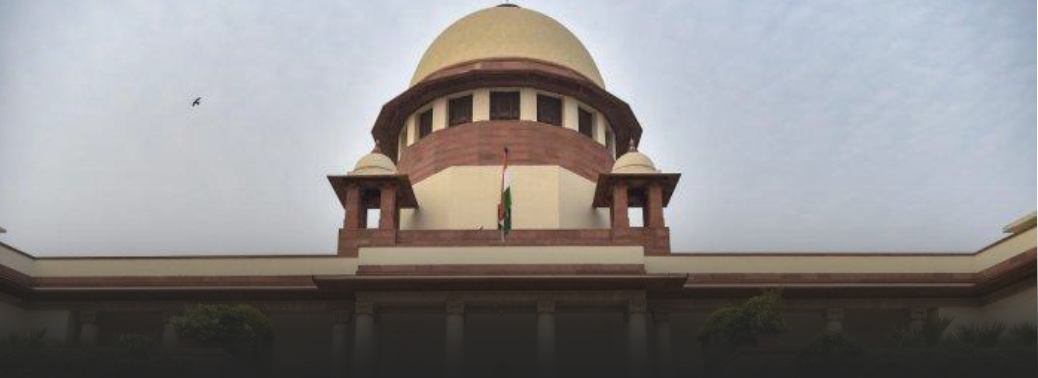
Why in News:
- The government and the Supreme Court collegiums disagree on recommendations for judicial appointments.
Details:
- The latest concerns Jharkhand High Court Chief Justice Aniruddha Bose and Gauhati High Court Chief Justice A.S. Bopanna, who were recommended for elevation to the Supreme
- The government had sought a reconsideration of the two names.
- The collegium has now repeated its recommendations, emphasising that there is nothing adverse against the two judges in terms of their “conduct, competence and integrity” and that there is no reason to agree with the government. Under the present procedure, the government is now bound to accept the
- The Supreme Court is keen to fill up the current
- It has also recommended two more judges, Justice B.R. Gavai of the Bombay High Court and Chief Justice Surya Kant of the Himachal Pradesh High Court, for appointment to the apex court. If all these four recommendations go through, the court will have its full complement of 31
- The filling up of vacancies is a continuous and collaborative process involving the executive and the judiciary, and there cannot be a time frame for
- It is time to think of a permanent, independent body to institutionalise the process.
Collegium system
- Collegium system in India is the system by which the judges are appointed by the judges
- only also referred to as “Judges- selecting- Judges”.
- It is the system of appointment and transfer of judges that has evolved through judgments of the Supreme Court, and not by an Act of Parliament or by a provision of the Constitution.
- The Supreme Court collegium is headed by the Chief Justice of India and comprises four other senior most judges of the A High Court collegium is led by its Chief Justice and four other senior most judges of that court.
- Names recommended for appointment by a High Court collegium reaches the government only after approval by the CJI and the Supreme Court
- The government is bound to appoint a person as a Supreme Court judge if the collegium reiterates its recommendation.
Karnataka law on Sc/St Promotion Quota upheld
11, May 2019

why in news:
- The Supreme Court upheld the constitutional validity of a 2018 Karnataka law, granting reservation in promotion and consequential seniority to the Scheduled Caste and Scheduled Tribe employees in the state.
Background:
- The Karnataka law grants reservation to non-IAS cadre government employees who belong to SC/ST The issue dates back to 2002 when the Karnataka government had enacted a similar law that was later upheld by a constitutional bench in 2006.
- However, it was challenged in 2011 and in 2017 the apex court had said it was necessary for the government to provide material that there was “compelling necessity” for exercise of such powers that eventually resulted in 3,799 SC/ST employees, promoted earlier, to be The state government had constituted a committee under then chief secretary K.Ratna Prabha to study the backwardness of these communities. The Karnataka government took the ordinance route in August 2017 to circumvent an apex order in February earlier that year that struck down reservations on promotions to SCs/STs by the Karnataka government and had also set a deadline of three months to reverse the promotions.
Controversy:
- In the Indira Sawhney case, the Supreme Court held that the “test or requirement of social and educational backwardness cannot be applied to Scheduled Castes and Scheduled Tribes, who indubitably fall within the expression ‘backward class of citizens
Judicial Appointment Contraversy
11, May 2019
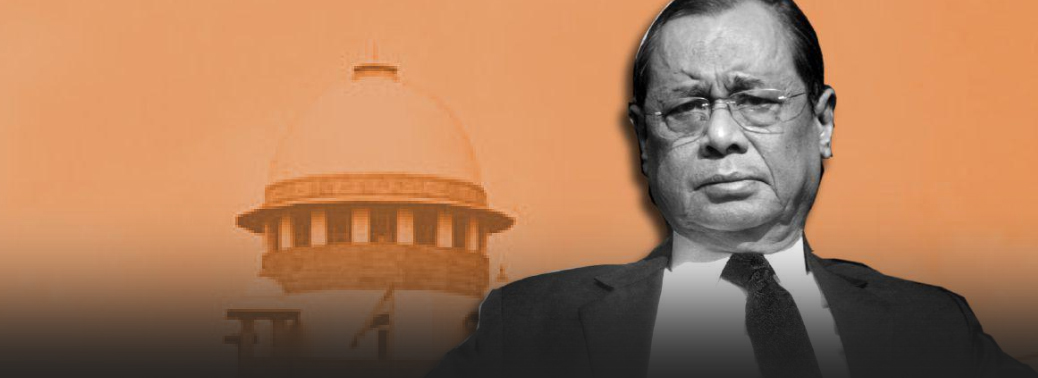
Why in News:
- Supreme Court Collegium, led by Chief Justice of India Ranjan Gogoi, recommended the names of two judges to the court and rejected the government’s disapproval of the elevation of two others.
Background:
- Collegium refused the government’s request to reconsider its April 12 recommendation to elevate Jharkhand High Court and Gauhati High Court Chief Justices Aniruddha Bose and
- S. Bopanna as Supreme Court judges.
- The Collegium said their names were recommended after all parameters were The Collegium said there was no reason to agree with the government as there was
- nothing adverse found in the two judges’ conduct, competence or integrity. Now, the government is bound to appoint Justices Bose and Bopanna to the court.
What is the Collegium System?
- The Collegium System is a system under which appointments/elevation of judges/lawyers to Supreme Court and transfers of judges of High Courts and Apex Court are decided by a forum of the Chief Justice of India and the four senior-most judges of the Supreme Court.’ There is no mention of the Collegium either in the original Constitution of India or in successive
- The recommendations of the Collegium are binding on the Central Government; if the Collegium sends the names of the judges/lawyers to the government for the second
How Collegium System Works?
- The Collegium sends the recommendations of the names of lawyers or judges to the Central Government. Similarly, the Central Government also sends some of its proposed names to the Collegium. The Central Government does the fact checking and investigate the names and resends the file to the Collegium.
- Collegium considers the names or suggestions made by the Central Government and resends the file to the government for final approval. If the Collegium resends the same name again then the government has to give its assent to the names. But time limit is not fixed to reply. This is the reason that appointment of judges takes a long time.
Assam NRC: Supreme Court frowns on foreigners’ tribunals plan
10, May 2019
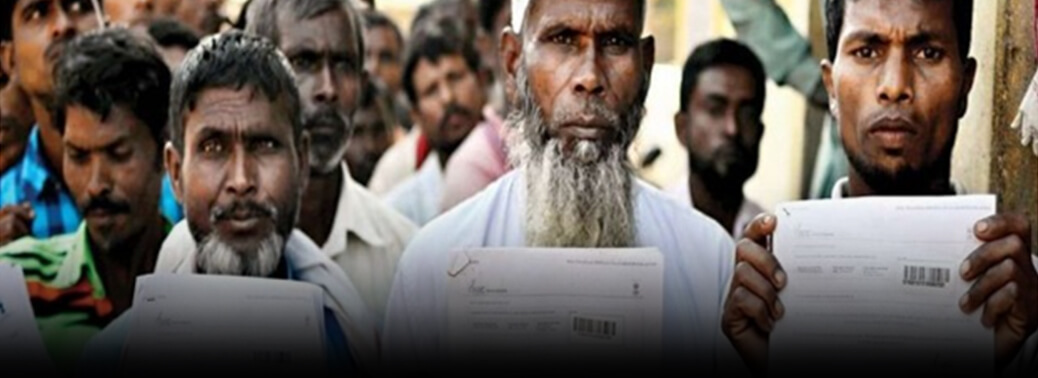
Why in news
- The Supreme Court questioned a proposal by the Assam government to quickly throw open 1,000 foreigners’ tribunals all over the northeastern State to try suspected illegal immigrants.
Details:
- A Bench led by Chief Justice Ranjan Gogoi said it looked like the State government hatched the plan without bothering to conduct a “basic study” of how to carry it out.
- A 1,000 tribunals means a 1,000 judicial officers to preside over them.
- The CJI hinted at the possible flood of petitions which would hit the foreigners’ tribunals once the final NRC was published
- These petitions would be from people who had not been able to prove their Indian citizenship.
- The court, which is also examining the plight of 900-odd illegal immigrants languishing in Assam’s detention centres for years, said it was in favour of releasing them.
What is National Register of Citizens (NRC)?
- National Register of Citizens, 1951 is a register prepared after the conduct of the Census of 1951 in respect of each village, showing the houses or holdings in a serial order and indicating against each house or holding the number and names of persons staying therein.
Who is a citizen in Assam?
- The Citizenship Act of 1955 was amended after the Assam Accord for all Indian-origin people who came from Bangladesh before January 1, 1966 to be deemed as citizens. Those who came between January 1, 1966 and March 25, 1971 were eligible for citizenship after registering and living in the State for 10 years while those entering after March 25, 1971, were to be deported.
Impact
- An updated NRC is likely to put an end to speculations about the actual number of illegal migrants in Assam in particular and the country in general.
- It will provide a verified dataset to carry out meaningful debates and implement calibrated policy measures.
- Publication of an updated NRC is expected to deter future migrants from Bangladesh from entering Assam illegally.
- The publication of the draft NRC has already created a perception that staying in Assam without valid documentation will attract detention/jail term and deportation.
- More importantly, illegal migrants may find it even more difficult to procure Indian identity documents and avail all the rights and benefits due to all Indian citizens.
- Inclusion of their names in the NRC will provide respite to all those Bengali speaking people in Assam who have been, hitherto, suspected as being Bangladeshis.
Way Forward
- India, as a country which follows the ideology of ‘VasudhaivaKutumbakam’, should not be hasty in taking decisions that can disenfranchise her citizens – contradicting its centuries-followed values.
- The need of the hour is that Union Government should clearly chart out the course of action regarding the fate of excluded people from final NRC data and political parties should refrain from coloring the entire NRC process through electoral prospects that may snowball in to communal violence.
- There is a need for a robust mechanism of legal support for the four million who have to prove their citizenship to India with their limited means.
SC TURNS DOWN OPPOSITION PLEA FOR INCREASED VVPAT VERIFICATION
08, May 2019
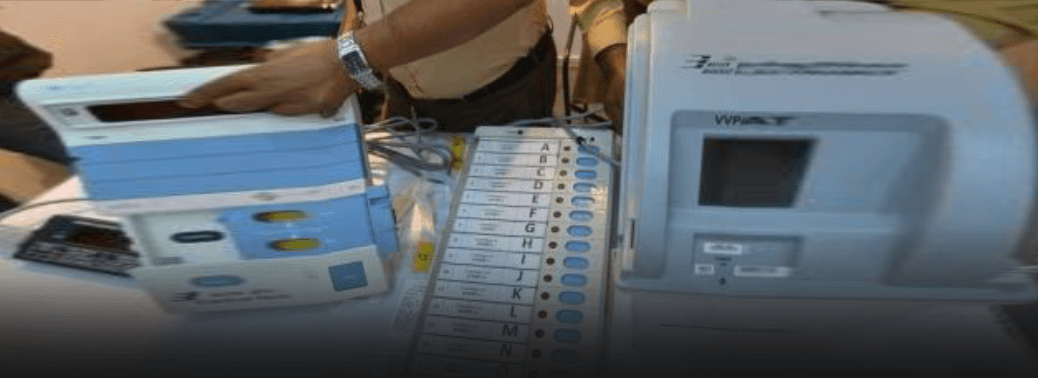
Why in News:
- The Supreme Court on Tuesday dismissed a plea by 21 Opposition parties to review its judgment rejecting 50% random physical verification of Electronic Voting Machines (EVMs) using Voter-Verified Paper Audit Trail (VVPAT).
Details
- On April 8, a Bench led by Chief Justice Ranjan Gogoi had directed the Election Commission of India (ECI) to increase physical counting of VVPAT slips to five random EVMs in each Assembly segment/constituency.
Fool-proof’ polls
- Its April verdict, the court had assured the petitioners, would ensure a ‘fool-proof’ Lok Sabha polls 2019.
- The Opposition had found the Supreme Court’s April 8 verdict a far shot from what it
- wanted — VVPAT verification in 50% or 125 polling booths in each constituency.
- The physical scrutiny of slips in five EVMs has increased the VVPAT verification percentage from .44% to less than 2%.
VVPAT
- Voter-verified paper audit trail (VVPAT) is a device which dispenses a slip with the symbol of the party for which a person has voted for. The slip appears on a small window for seven seconds and then drops in a box. The voter cannot take it home. VVPAT displays
- candidate’s serial number. Name of the candidate and Corresponding symbol for whom the vote has been cast.
Advantages in VVPATs:
- Enables to verify vote: Instant feedback to voter that vote polled has been allocated to the intended candidate.
- Enables authorities to count the votes manually if there is a dispute in the electronically polled votes.
- Operates under a Direct Recording Election system (DRE) which detects fraud and existent malfunctions.
- Will ensure greater transparency in voting process. Gives both the voters and political parties an assurance.
M3 EVMs
- M3 EVMs are the third generation EVMs. The M3 EVMs can keep data of 384
- candidates. M3 EVMS also has added features like Tamper Detection and Self Diagnostics. The tamper detection feature makes an EVM inoperative the moment anyone tries to open the machine. The Self diagnostic feature checks the EVM fully every time it is switched on. Any change in its hardware or software will be detected.
CJI SEXUAL HARASSMENT CASE: HAVE A RIGHT TO COPY OF BOBDE PANEL REPORT, SAYS COMPLAINANT
08, May 2019
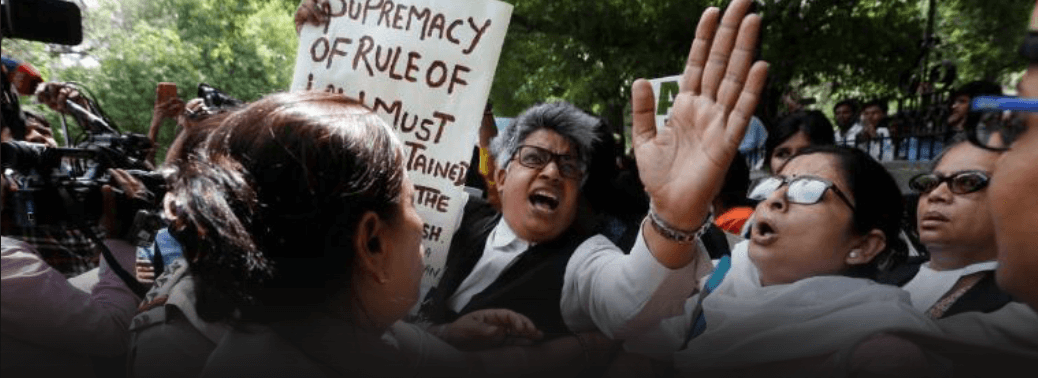
Why in News:
- The former apex court staffer wrote to the in-house panel, which found “no substance” in her sexual harassment allegations against the CJI.
Details:
- If a copy of the report is being given to the CJI directly or indirectly, I am entitled to a copy thereof in any case,” the woman appealed to the committee.
- The Sexual Harassment of Women at the Workplace (Prevention, Prohibition and Redressal) Act, 2013, in Section 13 provides that both parties have a right to receive a copy of the report.
- Not providing a copy to the complainant while holding her complaint to be unfounded would be a violation of the principles of natural justice and a complete travesty of justice,” the Supreme Court is relying on a judgment which pre-dates the Right to Information (RTI) Act of 2005 which mandates the fundamental right to information.
Under RTI:
- The complainant she quoted a full-bench judgment of the Delhi High court in the case of disclosure of assets of judges, saying “the full bench had held that even assets of judges would be accessible under RTI to any citizen”
- The complainant said she had been treated as an “outsider” from the very beginning of the inquiry process.
What were the earlier Vishaka guidelines?
- The Vishaka guidelines were laid down by the Supreme Court in Vishakha and others v State of Rajasthan judgment in 1997.
- It imposes three key obligations on employing institutions – prohibition, prevention, and redress. The institutions are mandated to establish a Complaints Committee.
- This was to look into matters of sexual harassment of women at the workplace. These guidelines are legally binding
Sexual Harassment of Women at Workplace
- Sexual Harassment of Women at Workplace (Prevention, Prohibition and Redressal) Actwas passed in 2013. It broadens the Vishaka guidelines, which were already in place.
- An aggrieved victim is a woman “of any age whether employed or not”, who “alleges to have been subjected to any act of sexual harassment”.
- The Act thus covers the rights of all women working or visiting any workplace, in any capacity. Sexual harassment is any one or more of “unwelcome acts or behaviour”, committed directly or by implication.They include:
- Physical contact & advances
- A demand or request for sexual favours Sexually coloured remarks
- Showing pornography
- Any other unwelcome physical, verbal or non-verbal conduct of sexual nature
POSERS ON THE CODE
07, May 2019

Why in News:
- The EC risks its reputation for even-handedness on the speeches
Details:
- Policing the conduct of political parties and candidates is equally demanding.
- The focus is on the manner in which the EC is dealing with complaints for some of controversial campaign speeches.
- The prohibition against the use of the armed forces in election propaganda is to underscore their apolitical nature and to deny ruling parties the opportunity to project their performance as their own achievements.
Model Code of Conduct
- The MCC is a set of guidelines issued by the Election Commission (EC) to regulate political parties and candidates prior to elections. Basically, the code spells out the do’s and don’ts for elections.
- This is in keeping with Article
- 324 of the Constitution, which mandates EC to conduct free and fair elections to the Parliament and State Legislatures.
- It is not statutory but Political Parties, Candidates and Polling Agents are expected to observe the norms, on matters ranging from the content of election manifestos, speeches and processions, to general conduct etc.
- The code comes into force on the announcement of the poll schedule and remains operational till the process is concluded.
- The cVIGIL App provides time-stamped, evidence-based proof of the Model Code of Conduct / Expenditure Violation, having live photo/video with auto location data.
- Any citizen can lodge a complaint through the Mobile App. Flying Squads will then investigate the matter and the Returning Officer takes the decision.
- The status of cVIGIL can be shared with the cVIGIL complainant within a specified time limit. In 2013, the Standing Committee on Personnel, Public Grievances, Law and Justice, recommended making the model code of conduct legally binding.
- The committee observed in a report on electoral reforms that most provisions of the code are already enforceable through corresponding provisions in other statutes. It recommended that the MCC be made a part of the Representation of the People Act, 1951.
- The EC argues against making it legally binding. According to it, elections must be completed within a relatively short time or close to 45 days, and judicial proceedings typically take longer, therefore it is not feasible to make it enforceable by law.
REGISTRATION OF ALL MOTOR VEHICLES STOPPED
03, May 2019
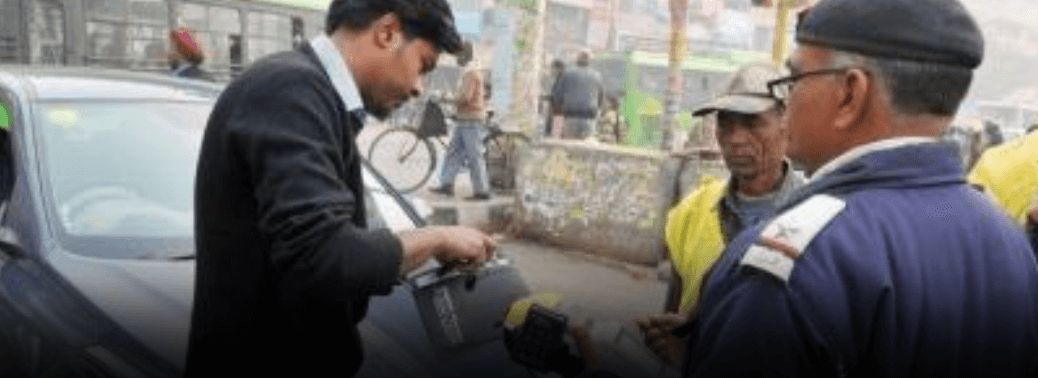
Why in News
- NIC blocks access for not integrating high security registration plate details with ‘Vahan’ database
Details:
- The issuing of certificate of registration (RC) for all classes of motor vehicles has been blocked from in the country for not integrating high security registration plate (HSRP) with the ‘Vahan’ database.
- The National Informatics Centre (NIC) blocked access to the Transport Mission Mode Project’s pan-India application ‘Vahan’ for vehicle registration on a directive of the Union Ministry of Road Transport and Highways
What is Vahan?
- A digital national vehicle registry portal called Vahan.
- Vahan intends to collate all the information available with road transport authorities for easy access by both citizens and regulators.
- Data available with over 90 per cent of all road transport authorities have been computerised for this purpose. Vahan contains about 21.68 crore vehicle records in its repository. Vahan allows access to all details related to vehicles such as registration number, chassis/engine number, body/fuel type, colour, manufacturer and model and provides various online services to citizens.
- Driving Licence and related data are automated through a separate application called ‘Sarathi’.
National Informatics Centre
- National Informatics Centre is the premier science and technology organisation of the Government of India in informatics services and information and
- communication technology (ICT) applications. Established in 1976, it works under the Department of Electronics & Information Technology ofMinistry of Electronics and Information Technology.
BREAKING NEW GROUND
02, May 2019
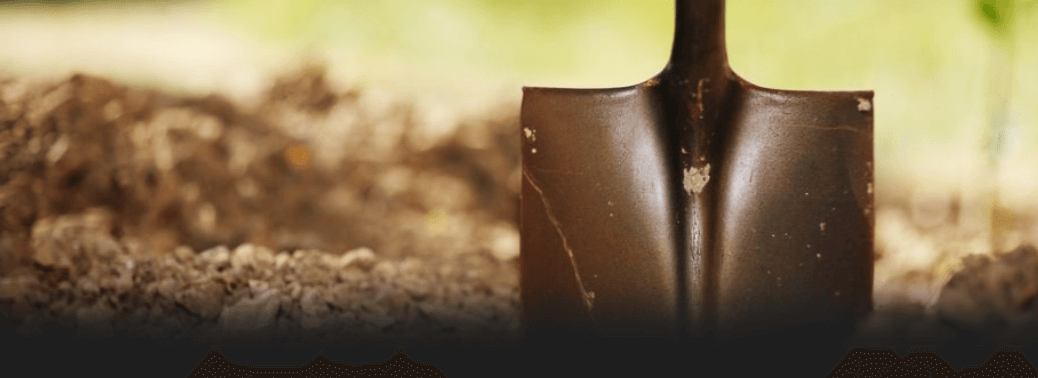
Context:
- The Madras High Court’s recent judgment is truly path-breaking for the LGBTQ community The judgment also opens doors to the larger LGBTQ community for availing civil rights including marriage, succession and inheritance.
Path breaking decision:
- The judgment quotes NALSA v. Union of India (2014), which held that transgender persons have the right to decide their “self-identified gender”. Now, when this is read along with the Supreme Court’s explicit reference to the American court’s guarantee of right to marry to homosexual couples. This shows that there cannot be a legal bar any more to extending civil rights such as marriage, succession or inheritance to LGBTQ couples who have decided to get married consensually, have married in accordance with the existing laws and are not in violation of any other laws.
The Hindu Marriage Act, 1955:
- The main purpose of the act was to amend and codify the law relating to marriage among Hindus and others.
- Besides amending and codifying Sastrik Law, it introduced separation and divorce, which did not exist in Sastrik Law. This enactment brought uniformity of law for all sections of Hindus. In India there are religion-specific civil codes that separately govern adherents of certain other religions.
- Present case, the Madurai Bench judgment, however, breaks new ground when it comes to the interpretation of the statutory terms found in the Hindu Marriage Act, especially that of bride (pertaining to women).
- It states that the expression “bride” occurring in Section 5 of the Hindu Marriage Act cannot have a static or immutable meaning.
- As noted in Justice G.P. Singh’s Principles of Statutory Interpretation, the court is free to apply the current meaning of a statute to present-day conditions.
Section 377:
- Section 377 of the Indian Penal Code is a section of the Indian Penal Code introduced in 1864 during the British rule of India. It makes sexual activities “against the order of nature” illegal.
- On 6 September 2018, the Supreme Court of India ruled that the application of Section 377 to consensual homosexual sex between adults was unconstitutional, irrational, indefensible and manifestly arbitrary, but that Section 377 remains in force relating to sex with minors, non-consensual sexual acts. At the preliminary hearings before the Supreme Court in Navtej Singh Johar, the Solicitor General, representing the Government of India, sought the curtailing of the scope of the case to that of the decriminalisation aspect or the constitutional validity of Section 377 of Indian Penal Code, 1860 alone.
- The Supreme Court, consequently, did not have an opportunity to examine the bundle of rights that were to naturally arise from the striking down of Section 377.
Conclusion:
- The present judgment is truly path-breaking for the LGBTQ community, which is denied equal protection of laws with regard to civil rights.
POWER SHIFT: ON TUSSLE BETWEEN PUDUCHERRY LT. GOVERNOR AND CHIEF MINISTER
02, May 2019
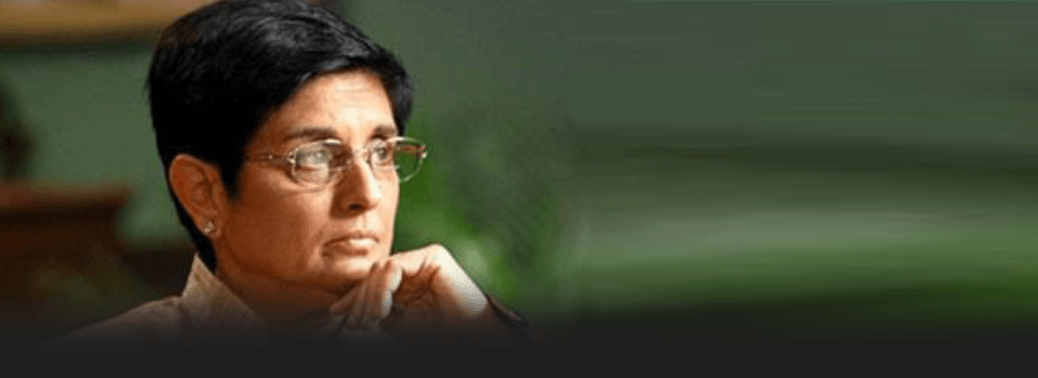
Why in News:
- Inspired by the ruling on Delhi, the Madras HC bats in favour of elected regime in Puducherry
Details:
- The Madras High Court verdict that the Lieutenant Governor of Puducherry should not interfere in the day-to-day
- administration of the Union Territory is a serious setback to the incumbent Administrator The court has laid down that “the decision taken by the Council of Ministers and the Chief Minister is binding on the Secretaries and other officials.”
- The judgment is based mainly on the principles that were laid down in last year’s Constitution Bench decision on the conflict between the elected regime in the National Capital Territory (NCT) and its Lt. Governor. The five-judge Bench had ruled that the L-G has to either act on the ‘aid and advice’ of the Council of Ministers, or refer to the President for a decision any matter on which there is a difference with the Ministry, but has no independent decision-making powers
- The High Court also says the Administrator is bound by the ‘aid and advice’ clause in matters over which the Assembly is competent to enact laws
- The Puducherry legislature is the creation of a parliamentary law, based on an enabling provision in Article 239A of the Constitution, whereas the NCT legislature has been created by the Constitution itself under Article 239AA. In the event that the latest judgment is taken up on appeal, a key question may be how far the decision of the five-judge Bench on the limits of the Delhi L-G’s powers would indeed apply to Puducherry
Article 239A
- Creation of local Legislatures or Council of Ministers or both for certain Union territories Parliament may by law create for the Union territory of Pondicherry
- a body, whether elected or partly nominated and partly elected, to function as a Legislature for the Union territory, or a Council of Ministers, or both with such constitution, powers and functions, in each case, as may be specified in the law.
Article 239AA
- Article 239AA of the Indian Constitution, enacted as per 69th Amendment Act of 191, confers special previsions for Delhi (National Capital Territory of Delhi). … the union territory of delhi be called NCT (National Capital Territory) of Delhi, and will be under the Lieutenent Governor.
DATA THEFT BID HITS AYUSHMAN BHARAT
28, Apr 2019
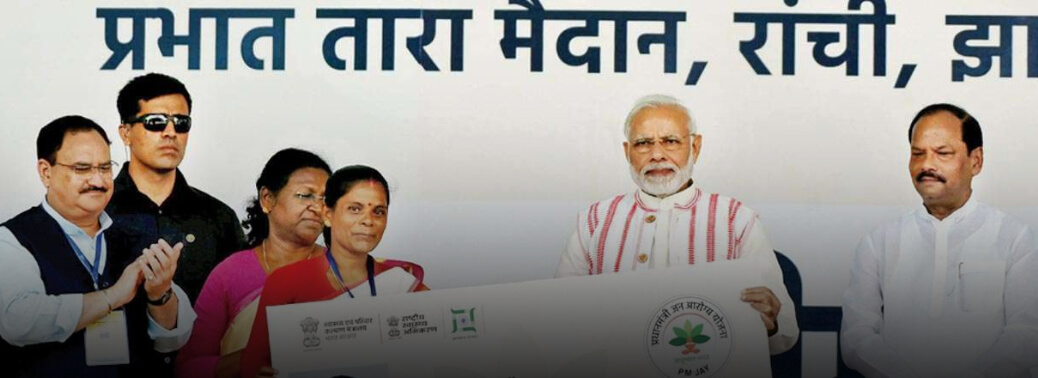
why in News:
- Ayushman Bharat, the government run health insurance programme confirmed that there had been an attempted security breach.
Background: / Ayushman Bharat programme. What are the Provisions?
- The programme is aimed at making interventions to address health holistically, in primary,
- secondary and tertiary care systems. The initiatives under the programme are:
- Health and Wellness Centre National Health Protection Scheme
- Health and Wellness Centre – National Health Policy, 2017 envisioned Health and Wellness
- Centres as the foundation of India’s health system.
- Under this, 1.5 lakh centres will bring health care system closer to the homes of people.
- The centres will provide comprehensive health care, including for non-communicable diseases and maternal and child health services.
- These will also provide free essential drugs and diagnostic services.
- Contribution of private sector through CSR and philanthropic institutions in adopting these centres is also envisaged. National Health Protection Scheme – This will cover over 10 crore poor and vulnerable families. This would translate to around 50 crore beneficiaries.
- The scheme provides coverage of upto Rs. 5 lakh per family per year for secondary and tertiary care hospitalization. This is said to be the world’s largest government funded health care programme. Besides, 24 new Government Medical Colleges and Hospitals will be set up, by up-grading existing district hospitals in the country.
- This would ensure that there is at least 1 Medical College for every 3 Parliamentary Constituencies. Also, at least 1 Government Medical College in each State of the country.
- This is to further enhance accessibility of quality medical education and health care.
What is the significance?
- Lakhs of families, at present, borrow or sell assets to receive inpatient treatment.
- The concern of the consequent impoverishment of poor and vulnerable families is a continuing one. Under the existing Rashtriya Swasthya Bima Yojana (RSBY), poor families get an annual coverage of Rs. 30,000.
- Several State governments have implemented or supplemented health protection schemes that provide varying coverage.
- The present initiatives will supplement these in taking health care to a larger mass. Higher health insurance cover is also seen as leading to a higher life expectancy.
- The scheme could potentially ensure enhanced productivity and well-being, averting wage loss and impoverishment.
Parallel Probes: On Complaint Against CJI
27, Apr 2019

Why in News?
- Justice Patnaik, who retired from the Supreme Court in 2014, was nominated by a three- judge bench of the apex court headed by Justice Arun Mishra, to inquire into allegations of a conspiracy
Details:
- HIS inquiry into the alleged conspiracy in the sexual harassment charge against Chief Justice of India (CJI) Ranjan Gogoi will begin only after the in-house administrative inquiry into the woman’s allegations is concluded by three sitting judges, former Supreme Court judge. No time limit has been set for when (my) inquiry report is to be submitted to the Supreme Court,” Justice Patnaik “The inquiry will start after the in-house committee on the charges the lady complainant has levelled is completed
- It is claimed that this “conspiracy” was behind the sexual harassment charge being levelled against CJI Gogoi by a former employee of the Supreme Court who worked in CJI’s home office. The CJI has dismissed the allegations calling them “unbelievable” and an attempt by a “bigger force to undermine the independence of the judiciary and deactivate the office of the ”
Priority
- The complaint of sexual harassment should get It is only if the complaint is found to be false that there will be a case to probe whether it was part of a plot to malign the CJI, or a conspiracy. It is unfortunate that the composition of the in-house committee became a controversy. There was concern that there was only one woman member, and the complainant raised the issue of the proximity of one of its members, Justice N.V. Ramana, with the CJI. The idea of the inquiry being wholly ‘in-house’ is in conflict with the Sexual Harassment of Women at Workplace (Prevention, Prohibition and Redressal) Act, 2013, which envisages the presence of an external member. Despite this shortcoming, the committee should try to ensure a fair hearing for the former employee
Protection of Women From Sexual Harassment At Workplace
- In 1997, in the landmark judgment of Vishaka and others v. State of Rajasthan, the Supreme Court of India defined sexual harassment at the workplace, pronounced preventive, prohibitory and redress measures, and gave directives towards a legislative mandate to the guidelines proposed.
The Sexual Harassment At Workplace (Prevention, Prohibition And Redressal) Act, 2013-
- The Sexual Harassment Act (Hereby called as an ‘Act’) was finally enacted in the year 2013 for the prevention of sexual harassment against women at workplace in the whole of The main objective of the act was protection of Women, prevention and redressal of sexual harassment complaints.
- Sexual harassment includes any one or more of the following unwelcome acts or behavior (whether directly or by implication) namely:
- Physicalcontactand advances; or
- A demand or request for sexual favors; or
- Making sexually colored remarks; or
- Showing pornography; or
- Any other unwelcome physical, verbal, or non-verbal conduct of sexual
JUST RECOMPENSE
25, Apr 2019
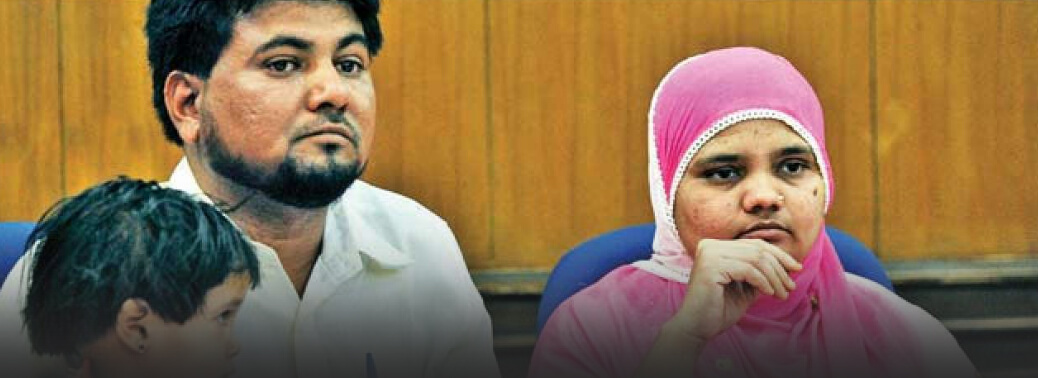
Why in News?
- Compensation for Bilkis Bano underlines the state’s obligation for horrific crimes
Details:
- Compensation to victims is a relatively less recognised component of criminal justice.
- Compensation to victims is a relatively less recognised component of criminal justice. In a system that focusses mainly on the accused, an order of compensation is a recognition of the state’s obligation to victims of crime, especially horrific acts.
- In ordering the Gujarat government to pay ₹50 lakh to Bilkis Yakoob Rasool Bano, a gang-rape survivor of the 2002 communal pogrom in the State who has bravely fought her case, the Supreme Court has endeavoured to achieve restitutive justice.
- Handing over the fine amounts paid by the accused as part of their sentence is one aspect of such justice; another aspect is for the court to ask the government to compensate the victim from its own coffers.
- A group of rioters had raped her as well as two other women, and killed seven members of her family at Randhikpur village on March 3, 2002. The court noted that she had the misfortune of witnessing her daughter being smashed against a wall, as well as the devastation suffered by her family. She was also pregnant at the time of the incident.
- It is in these circumstances that the Bench headed by Chief Justice of India Ranjan Gogoi awarded her ₹50 lakh, besides asking the State government to provide her with a government job and a house.
- Ms. Bano’s case is indeed a rare one: criminal prosecution resulted in conviction and life sentences to 11 persons. Further, the court found deliberate inaction on the part of some police officers and that the autopsies were perfunctory and manipulated. The Supreme Court has asked for the pension benefits of three police officers to be withdrawn.
- In short, this is a concrete instance of state inaction and negligence that would normally justify the payment of a hefty compensation. Not every crime would have a similar set of circumstances.
- While convictions are not easy to come by in cases of mob violence, victim compensation may often be the only way to ensure some justice.
- The Code of Criminal Procedure was amended in 2008 to insert Section 357A under which every State government has to prepare a scheme to set up a fund from which compensation can be paid to victims of crime and their dependants who have suffered loss and injury and who may require rehabilitation.
- The Centre has a Central Victim Compensation Fund
- On Supreme Court directions, the National Legal Services Authority has prepared a compensation scheme for women victims and survivors of sexual assault and other crimes. Many States have notified schemes on these lines. While on paper there is a mechanism to assess rehabilitation needs and pay compensation, there is a need to streamline the schemes and ensure that the compensation process is not done in an ad hocmanner, but is based on sound principles.
Victim compensation fund
- The compensation part of the rehabilitation of victims of violence including rape is governed by provision of Section 357A of the Code of Criminal Procedure which states that every State Government in co-ordination with the Central Government shall prepare a scheme for providing funds for the purpose of compensation to the victim of crime.
- So far 24 states and 7 UTs have formulated the Victim Compensation Scheme.
- The government has introduced a Central Victim Compensation Fund (CVCF) scheme, with an initial corpus of Rs 200 crores, to enable support to victims of rape, acid attacks, human trafficking and women killed or injured in the cross border firing.
- Till now, there has been an absurd disparity in compensation amount paid by state governments varying from Rs 10,000 to Rs 10 lakh.
JUST RECOMPENSE: ON COMPENSATION FOR BILKIS BANO
25, Apr 2019
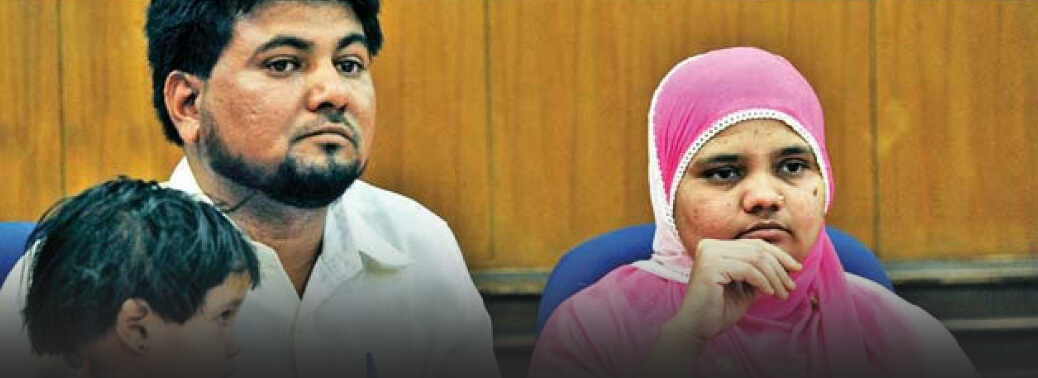
Why in News:
- The Supreme Court has directed the Gujarat government to give Rs 50 lakh as compensation, a job and accommodation to Bilkis Bano, who was gang raped during the 2002 riots in the state.
Details:
- A group of rioters had raped her as well as two other women, and killed seven members of her family at Randhikpur village on March 3, 2002.
- The Bench headed by Chief Justice of India Ranjan Gogoi awarded her 50 lakh, besides asking the State government to provide her with a government job and a house.
- The Bombay High Court provided criminal prosecution resulted in conviction and life sentences to 11 persons. The court found deliberate inaction on the part of some police officers and the autopsies were perfunctory and manipulated.
- The Code of Criminal Procedure was amended in 2008 to insert Section 357A under which every State government has to prepare a scheme to set up a fund from which compensation can be paid to victims of crime and their dependants who have suffered loss and injury and who may require rehabilitation.
- The Centre has a Central Victim Compensation Fund.
- National Legal Services Authority has prepared a compensation scheme for women victims and survivors of sexual assault and other crimes.
Background:
- The hearing had come up to the Supreme Court when Bilkis Yakub Rasool moved the top court seeking a probe by the Central Bureau of Investigation (CBI) in the Godhra riots of 2002.
- The apex court had sought a report from a senior police officer in Gujarat who pointed out several acts of negligence on the part of the local police.
- The Supreme Court ordered the CBI to probe the case. The CBI discovered that local policemen had buried some of her relatives’ bodies with salt to speed up decomposition. The agency exhumed the skeletons and sent them for forensic tests. Later, six policemen were charge-sheeted for intentionally messing up the investigation.
- Bilkis Bano got justice at the Bombay High Court after 15 years of her gruesome gang rape and the murder of 14 of her family members. The court had held all the 20 accused as convicts. The trial court had acquitted seven accused for want of evidence.
- Within the chaos of communal violence that gripped Gujarat, and especially in Godhra, where a coach of the Sabarmati Express was burned, along with 59 kar sevaks, 14 people
- – including four women and four children – were killed while Bilkis, who was then just 19, was gang raped and left to die on that fateful day of March 3. She, however, survived and has fought for justice.
Communal Riots India
- The problem of communalism begins when a religion is seen as the basis of the national unity and identity. The problem becomes sharper when followers of a particular religion are pitted against another.
Anti-Muslim riots in Gujarat (2002)
- In 2002, Gujarat witnessed one of the ugliest communal riots in its history.
- The spark of the riots happens at Godhra Station, where a bogey of train that was returning from Ayodhya with Karsevaks was set on fire.
- Suspecting it to be Muslims conspiracy, large scale violence against Muslims began in many parts of Gujarat.
- National Human Right Commission Criticized the Gujarat Govt’s role in failing to control
- violence, in providing relief to the victims & prosecute the perpetrators of this violence.
Way Forward:
- It is a concrete instance of state inaction and negligence that would normally justify the payment of a hefty compensation.
- Not every crime would have a similar set of circumstances.
- If the convictions are not easy to come by in cases of mob violence, victim compensation may often be the only way to ensure some justice.
- There is a need to streamline the schemes and ensure that the compensation process is completed or not
SC SEEKS REPLIES FROM CENTRE, J&K ON HIGHWAY TRAFFIC BAN
23, Apr 2019

Why in News:
- The Supreme Court on Monday asked responses from the Centre and Jammu and Kashmir restriction of civilian traffic two days a week on the national highway (NH) stretch from Udhampur to Baramulla for movement of security forces.
Details:
- The issue is concerning the ban on civilian traffic for two days a week on the 271-km stretch of National Highway 44 between Udhampur in Jammu and Baramulla in Kashmir.
- The State government issued an order on April 3 keeping a view of the Pulwama terror attack, another car bomb attack on security forces convoy at Banihal and movement of forces during the Lok Sabha elections, No civilian traffic movement would be allowed on the NH stretch from 4 a.m. to 5 p.m. twice a week.
- The order said there would be two dedicated days every week Sunday and Wednesday for movement of security forces’ convoy when there would be no civilian traffic on the national highway from Baramulla to Udhampur. The regulation of the vehicular movement on the NH would remain in force till May 31.
- Restriction of civilian traffic movement on the 270 km stretch on the highway directly affects lives of lakhs of people and its indirect economic and social impact is interminable.
- The prohibition on civilian traffic on the highway will have a disastrous impact on the tourism industry and it was a collective punishment for the people of Kashmir.
- Vehicles carrying patients, students, tourists, businessmen and government officials would be affected
A Note on NH 44:
- NH 44 is the lifeline of the State ,it is vital to move goods (including perishable agricultural produce), and along it lie many educational and medical institutions.
- Avoiding the stretch would greatly multiply the time and distance between two points. The government is at pains to emphasise that exceptions are in place for those in medical emergencies, lawyers, doctors, tourists, government employees, students, and so on.
- But such a system of permits and bans militates against the freedom of movement at the heart of a democratic society. To be sure, even before the ban, civilian traffic has not moved on the highway unfettered by checks. Such is the security challenge in J&K.
- But to officially segregate civilian traffic is to put people’s lives at the mercy of a calendar, and to invite confusion about the organising principles of Indian troop deployment.
- The Pulwama attack was a wake-up call about the security drills in place to prevent terrorist strikes. It demanded an appraisal, so that the lives of soldiers and civilians alike can be secured.
- It also positions the administration against the people, as has become clear from the political and legal challenges to the traffic restrictions.
Impact of the Ban: Causing Difficulty for the Common Man
- Facing criticism from both the political class and the civil society, the State government’s ban on civilian traffic twice a week on the 270-km-long national highway in Kashmir is bound to dent the Valley’s horticulture industry and tourism, according to the stakeholders. Planters have stored apple stock in cold storages, which require urgent transportation to various destinations in the country.
- These planters opine that apple crop will be hit badly by the ban. Besides, it will delay the chemical treatment of orchards.
- They take the view that the ban is unjustified and will make small-time farmers suffer. According to an estimation, around ₹300 crore worth of fruit is in cold storages in south Kashmir. However, the ban order issued by the Governor’s administration has barred the movement of civilian vehicles, including trucks, from 4 a.m. to 5 p.m. twice every week.
- The ban will also have serious implications for the upcoming tourist season. Some sections believe that it will only add to the woes of tourists and pilgrims.
- It will result in shortage of essentials.
- Doctors believe that there would be an increase in morbidity and mortality in patients due to delays in patient care.
The Way Forward:
- Petitions have been filed in the J&K High Court arguing that the restrictions violate Articles 14, 19 and 21 of the Constitution.
- It must instead, be a doubling up of the security protocol to make life more secure and hassle-free for civilians and soldiers alike.
GENDER STEREOTYPES LEAVE IMPRINT ON BRAINS
22, Apr 2019

Why in News:
- Scientists say that Society’s expectations about gender roles alter the human brain at the cellular level.
Details:
- Sex is based on biological factors such as sex chromosomes and reproductive organs, whereas gender has a social component and involves expectations and behaviours based on an individual’s perceived sex. Scientists reviewed previous studies of epigenetics and sexual differentiation in rodents, along with new studies in which gendered experiences among humans have also been associated with changes in the brain.
- Sex:
- The biological difference between men and women, boys and girls – the physical attributes with which we are born.
Gender:
- Culturally and socially constructed roles, responsibilities, privileges, relations and expectations of women, men, boys and girls. Gender is not another word for women. Gender is also not another word for sexual difference.
A working definition of Gender:
- People are born female or male or transgender, but are forced to learn to be girls and boys who grow into women and men. They are taught appropriate behaviour and attitudes according to defined gender roles and activities. This learned behaviour is what makes up gender identity, and determines gender roles.
Gender gap:
- Differences between men and women in levels of achievement or access. This could for example be access to education or health care and treatment services or differentials in wages paid to women and men. These differentials may result from customary practices, religious biases, social assumption, myths or taboos, among others.
Gender Discrimination:
- Where one gender is favoured and the other becomes disadvantaged e.g. sex selective abortion. Gender oppression: Where one gender dominates the other unjustly or even cruelly. For instance, domestic violence, rape, sexual harassment.
- As the worst fall out of disparity and mind blocks in the area of role perception, comes the vice of gender discrimination. The three most prominent facets of sexual discrimination are Societal Perpetration;
- Domestic Violence and Sexual Harassment at Workplace.
- There are socially accepted expressions like “boys are boys” and norms supporting dowry, still prevalent in society. They highlight the unfortunate social approval towards sexual discrimination. So far as domestic violence is concerned, even after a decade since the Protection of Women from Domestic Violence Act was passed in 2005, there is no significant change in the crime rate against women.
- As per data published by National Crime Records Bureau (NCRB), dowry death was 0.3% of the total number of crimes, as defined under Indian Penal Code (IPC), in 2013. The figure remains the same in 2014.
- In fact, crime against women as percentage of total number of crimes committed in India has increased from 11.7% in 2013 to 11.9% in 2014. However, perhaps the most unreported amongst these crimes are the ones amounting to “sexual harassment at workplace”. For one, there was no clear law on the subject before 2013 and for the other, many women used to desist reporting. Even now, it is believed that a good number of them don‘t report incidents of sexual harassment for reasons ranging from love to terror.
Gender bias:
- An approach that treats boys and girls differently. For instance differential treatment seeking behaviour in case of illness.
Gender Equity:
- An approach that results in just/ fair treatment of women and men, and recognition and appreciation of both women‘s and men‘s potential. For instance giving bicycles to girls to enable them to travel to a distant school and thereby reduce gender gaps in the drop-out rate.
Gender Mainstreaming:
- The process of assessing the implications for women and men of any planned action, including legislation, policies or programmes, in any area and at all levels. It is a strategy for making the concerns and experiences of women as well as of men an integral part of the design, implementation, monitoring and evaluation of policies and programmes in all political, economic and societal spheres, so that women and men benefit equally, and inequality is not perpetuated. The ultimate goal of mainstreaming is to achieve gender equality.
Gender Neutral:
- An approach to planning and policy making that assumes that the impact on women, men, girls and boys as if they were part of one homogeneous group. For instance, although me n are usually taller than women, fixing the height of the podium in conference halls on the basis of the height of men.
Gender needs
- Needs which are related to satisfying basic and material needs of women and men, girls and boys for their day-to- day survival, and which do not change gender patterns. For instance, public provisioning of water inside the home or providing access to creche facilities at the workplace.
IN HIS OWN CAUSE: ON COMPLAINT AGAINST CJI RANJAN GOGOI
22, Apr 2019
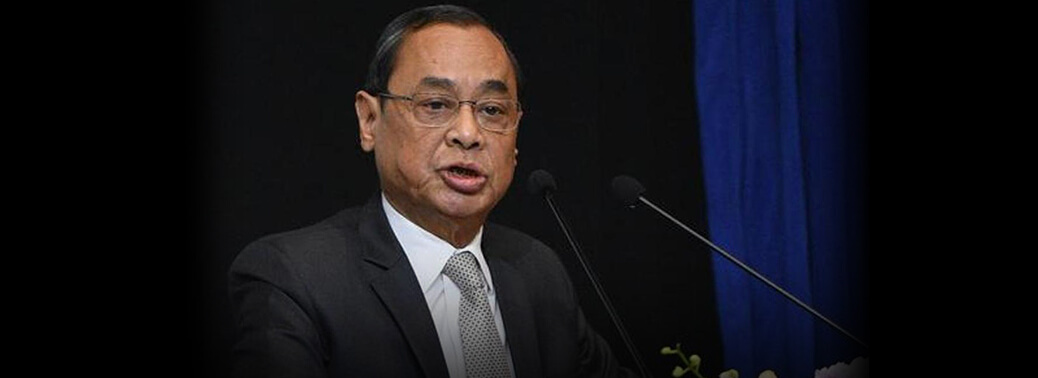
Why in News:
- Chief Justice of India has been victimised for sexual harassment by former Supreme court employee
Details:
- An issue within the domain of an internal process was taken up by a special Bench constituted by CJI Ranjan Gogoi, comprising himself, Justice Arun Mishra and Justice Sanjiv Khanna.
- A mention by the Solicitor-General, was listed as ‘Re: Matter of Great Public Importance
- Touching upon the Independence of the Judiciary’.
- The Supreme Court itself has an internal sub-committee under its Gender Sensitization and Sexual Harassment of Women at Supreme Court (Prevention, Prohibition and Redressal) Guidelines, 2015.
- The complainant by a former junior court assistant, made her charge in the form of an affidavit, supported by purported evidence, and sent it to 22 judges of the court.
- It referred to likely witnesses to the alleged sexual harassment and victimisation.
Issues:
- The decision to hold an open court hearing is questionable. A complaint of this nature requires an institutional response on the administrative side.
- There should be an internal process to initiate an inquiry mandated by the law regarding sexual harassment at the workplace. There is a separate ‘in-house procedure’ to deal with complaints against judges, under which their judicial peers, and not outsiders, will examine them. CJI ought not to have presided over the special Bench that took up the matter that concerned himself. Senior-most judges were kept out of Benches handling major cases, where CJI went on to form a Bench that included himself but not the two senior-most judges after him. Nor was there a woman judge on the Bench.
Sexual Harassment Law
- The Sexual Harassment of Women at Workplace (Prevention, Prohibition and Redressal) Act, 2013 is a legislative act in India that seeks to protect women from sexual harassment at their place of work. It was passed by the Lok Sabha (the lower house of the Indian Parliament) on 3 September 2012.
- It was passed by the Rajya Sabha (the upper house of the Indian Parliament) on 26 February 2013. The Bill got the assent of the President on 23 April 2013.
- The Act came into force from 9 December 2013. Under the Act, which also covers students in schools and colleges as well as patients in hospitals, employers and local authorities will have to set up grievance committees to investigate all complaints. Employers who fail to comply will be punished with a fine of up to 50,000 rupees.
The key provisions of the present Act
- Sexual Harassment of Women at Workplace (Prevention, Prohibition and Redressal) Act was passed in 2013.
- It broadens the Vishaka guidelines, which were already in place.
- Definition – An aggrieved victim is a woman “of any age whether employed or not”, who “alleges to have been subjected to any act of sexual harassment”.
- The Act thus covers the rights of all women working or visiting any workplace, in any capacity.
- Sexual harassment is any one or more of “unwelcome acts or behaviour”, committed directly or by implication.
They include:
- Physical contact & advances
- A demand or request for sexual favours Sexually coloured remarks
- Showing pornography
- Any other unwelcome physical, verbal or non-verbal conduct of sexual nature Additionally, the Act mentions five circumstances that amount to sexual harassment: implied or explicit promise of preferential treatment in her employment
- implied or explicit threat of detrimental treatment
- implied or explicit threat about her present or future employment status interference with her work or creating an offensive or hostile work environment humiliating treatment likely to affect her health or safety
Highlights:
- The bench was acting on online media reports of sexual harassment complaint made by a former junior assistant of the CJI, against him.
- The CJI had received a communication from four leading websites saying that a letter is
- being circulated by a dismissed SC employee alleging that CJI has sought sexual favours from her. The letter stated that the woman’s family had been threatened, harassed and criminal cases were filed against them. The bench took the special hearing on April 20 after it was mentioned by Solicitor General of India, Tushar Mehta.
Vishaka Guidelines:
- The Vishaka guidelines were laid down by the Supreme Court in Vishakha and others v State of Rajasthan judgment in 1997. It imposes three key obligations on employing institutions prohibition, prevention, and redress. The institutions are mandated to establish a Complaints Committee. This was to look into matters of sexual harassment of women at the workplace. These guidelines are legally binding.
Way Forward:
- This is a serious matter that requires careful processing.
- It is possible even now to send the complaint to an independent committee.
- Only reasonable and fair means of establishing the innocence the CJI has to be asserted.
WORKERS AND REFUGEES ARE NOT CRIMINALS
22, Apr 2019
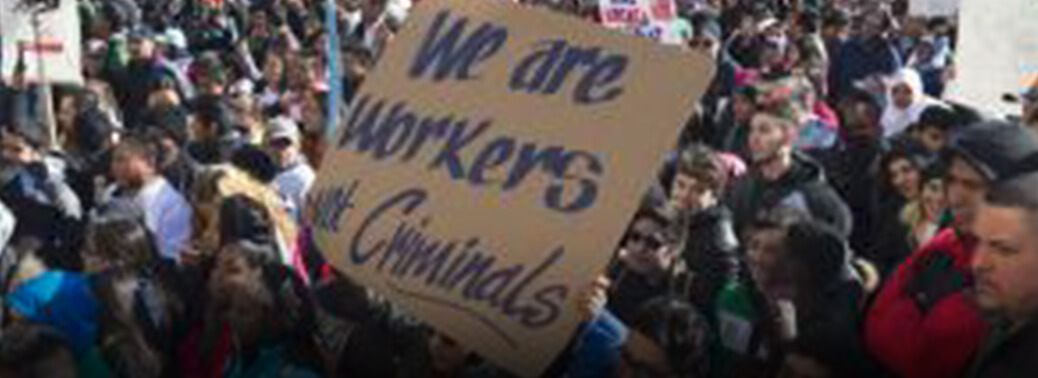
Why in News?
- Global political action is required to reinforce the legitimate identity of a worker
Details:
- The Mexican border was closed for hours on November 25, 2018 at the San Ysidro Port of Entry to the U.S., after a group of migrants, including children and women, in Tijuana reportedly stormed the area.
- This prompted the U.S. Border Patrol to fire tear gas at the group. Among the hand-made placards carried by the migrants was this one: “We are international workers. We are not criminals.
Xenographic Assertion
- It was a revealing placard, and one that commented on a major change in global economic and political thinking: since the 1990s, not just international but even interregional workers have slowly been pushed into the rubric of ‘criminals’.
- U.S. President Donald Trump is a prime example of this: his victory
- was largely founded on his ability to depict international workers, particularly those crossing the U.S.-Mexico border, as ‘criminals’.
- With elections coming up in the U.S. once again, he has returned, with renewed vigour, to this discourse. This tendency is present, though in less obvious versions, in almost all developed and developing countries, including the social welfare democracies of Europe.
- It is also present within nations, as we in India witnessed in the recent ‘Gujarati’ backlash against workers from Uttar Pradesh and Bihar. Now, it is true that ‘foreigners’ have been looked at with suspicion by some ‘natives’ in the past too, but what we are talking about is a bit different.This is because no one really denies that most of these people who want to enter a country do so in order to find work. Also, all but the most rabid of hate-mongers are fully aware that, say, most Biharis in Gujarat or Mexicans in the U.S. are law-abiding and often needy workers. And yet politicians can garner extra votes by implicitly or explicitly equating international/interregional ‘workers’ with ‘criminals’, and states can openly devise blatantly differential treatment for them — as the children ripped away from their parents and the workers tear-gassed at the U.S. border can testify.
- Most immigrants crossing a border are law-abiding and industrious workers, not ‘criminals’
- — this remains the case today, as it was in the past.
- The answer lies in the nature of capitalism, which no longer needs workers as much as it did in the past. Financial speculation has increasingly dwarfed international trade from the 1990s onwards
- A world dominated by financial speculation does not need workers in two ways: financial speculators are not workers, no matter what they think of their ‘work’, and financial speculation does not depend on the production of workers.
- Capital transactions are no longer tied predominantly to industry, productivity or trade of goods — and hence, to workers.
Post humanism
- In academia, for instance, there is the trend to talk about ‘post-humanism’.
- Post-humanism has a respectable heritage. In fields like animal studies, it is often meant to suggest a world in which human beings do not occupy the centre.
- This is an interesting and necessary concept, for the earth has suffered much from our narcissism as a species and our inability to think of other animals as having biological rights too. But ‘post-humanism’ is mostly used in other ways: it is used to suggest a world after human beings, a world run by artificial intelligence
- a world of financial speculation leads to a ‘post-human’ world run by artificial intelligence. Once workers become redundant and numbers are sufficient, then, inevitably, one can think complacently of replacing human intelligence with artificial intelligence.
- In some ways, of course, much of financial speculation depends on exactly this: a kind of artificial intelligence, not human labour. The reduction of workers to criminals is part of this change, and interestingly the solution is not just to insist on the right to work locally or even nationally.
- The insistence has to be ‘universal’ and global. Global political action is needed to ensure international working rights, linked to human status and not the caprice of state or capital. The right to work has become a selective right; today it is controlled by governments in tandem with corporations. Soon it might well become the monopoly of corporations. It is basically being used to criminalise those workers who are not allowed — by nation-states or neoliberal capitalism or both — the legitimate identity of a worker.
- And as this is a shrinking identity — there are fewer and fewer active workers under the impact of rampant financial speculation — it simply adds to the official metamorphosis of more workers into ‘criminals’.
A SHAMEFUL MARKER OF FIVE YEARS
19, Apr 2019
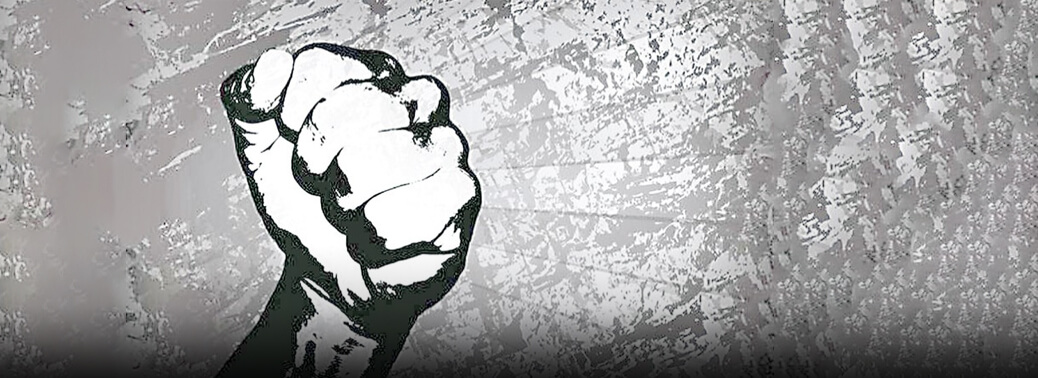
Why in News:
- The article says about the major problems faced by minorities in India.
Details:
- lynch attacks against minorities are more common and emerged as a scourge in the country today.
- Lynching itself is of course not unknown in many countries.
- Three broad kinds of lynch are performed in the modern world. The first is occasional and random criminal acts, without any pattern or regularity to signal a significant social phenomenon. The second is a ‘rough justice’, people frustrated by failures of legal justice, attacking people alleged frequently to be petty thieves or rapists. This has been common in Indonesia and Latin America. The third kind is as hate crime, one which targets persons not because of what a person has done, but because of who they are. people rationalise cow lynching as popular anger because state systems have not implemented cow protection laws. But the targets of lynch mobs are particular communities, and the allegations of crimes against them are usually patently false.
Current problems
- India sometimes creates its own specific cruelties. These include untouchability, caste atrocities and the cruel burning of brides for dowry. While politically encouraged bigotry and hatred against minorities are growing into a malign global epidemic, India’s dubious contribution to this is its spate of performative mob lynching, targeting religious minorities and disadvantaged castes into the pervasive fear of everyday living that this has brought in its wake.
PLEA IN SC ON VOTING RIGHTS OF UNDERTRIALS AND CONVICTS
19, Apr 2019

Why in News:
- The Supreme Court is hearing a plea filed by a law student questioning an electoral law which denies undertrials and convicts their right to vote.
Details:
- Section 62(5) of the Representation of People Act of 1951
- mandates that “no person shall vote at any election if he is confined in a prison, whether under a sentence of imprisonment or transportation or otherwise, or is in the lawful custody of the police”.
- The provisions however exempt a person held under preventive detention from this rigour. The petition, represented by advocate Zoheb Hossain, highlights how the Section sees both an undertrial and a convicted person equally. The former’s guilt is yet to be proved in a court. A person is innocent until proven guilty by law. Despite this, it denies an undertrial the right to vote but allows a detainee the same. However, a person out on bail is allowed to cast his vote.
- The plea argued that the provision violates the rights to equality, vote (Article 326) and is arbitrary. It is not a reasonable restriction.
- Elections to the House of the People and to the Legislative Assemblies of States to be on the basis of adult suffrage.— The elections to the House of of the People and to the Legislative Assembly of every State shall be on the basis of adult suffrage; that is to say, every person who is a citizen of India and who is not less than eighteen years of age on such date as may be fixed in that behalf by or under any law made by the appropriate Legislature and is not otherwise disqualified under this Constitution or any law made by the appropriate Legislature on the ground of non-residence, unsoundness of mind, crime or corrupt or illegal practice, shall be entitled to be registered as a voter at any such election.
Facts:
- The data on prison overcrowding are frightening. Except in parts of Europe, where crime is still low or at acceptable levels, overcrowding is rampant.
- In the U.S., for example, at any time, it is estimated, there are more than two million prisoners in state and federal prisons. In the U.K., the latest available data (July 2018) show a current prison population of approximately 92,500.
- In India, in the year 2015, there were nearly 4.2 lakh inmates in 1,401 facilities, with an average occupancy rate of 114% in most.
- About 67% of total inmates were undertrials, a commentary on the speed and efficiency of India’s criminal justice system.
BASHIR MOVED FROM RESIDENCE TO KHARTOUM’S KOBAR PRISON
18, Apr 2019

Why in news:
- Ex-Sudanese President Omar al-Bashir has been moved to Khartoum’s grim high-security Kobar prison from the presidential residence and transitional military rulers announced steps to crack down on corruption.
Details:
- Sudan’s long-time president Omar al-Bashir has been removed from office and arrested following months of protests Bashir’s regime.
How the coup happened?
- Protests started against al-Bashir on December 19, 2018 when government stopped subsidies on wheat and fuel.
- People started protests government and its policies. In next few weeks situation turned violent and engulfed the capital Khartoum and major metropolitan areas like Omdurman. Government took a strong action against protesters by cracking down on protestors, shutting the internet and social media outlets, cutting electricity and water services, and dispersing protestors using tear gas. Officials have said 49 people have died in protest- related violence.
- In February, al-Bashir acknowledged the demands of protestors and delayed constitutional amendments that would have allowed him to run for the presidency again next year.
- He also declared a yearlong state of emergency and dissolved both central and state governments.
- All these actions by al-Bashir provoked the protests across country; Sudanese women, musicians, artists, and the country’s global diaspora all played a crucial role in calling for al-Bashir to step down.
Omar al-Bashir’s controversial regime
- On 30 June 1989, Colonel Omar al-Bashir led a bloodless military coup. The new military government suspended political parties and introduced an Islamic legal code on the national level.
- On 16 October 1993, al-Bashir appointed himself President and disbanded the Revolutionary Command Council. The executive and legislative powers of the council were taken by al-Bashir.
- In the 1996 general election he was the only candidate by law to run for election. Sudan became a one-party state under the National Congress Party (NCP).
- The United States subsequently listed Sudan as a state sponsor of terrorism. The US bombed Sudan in 1998, targeting a pharmaceutical factory.
- On 9 January 2005, the government signed the Nairobi Comprehensive Peace Agreement with the Sudan People’s Liberation Movement (SPLM) with the objective of ending the Second Sudanese Civil War.
- The United Nations Mission in Sudan (UNMIS) was established under the UN Security Council Resolution 1590 to support its implementation
- The protests continued up until the overthrow of his government on April 11, 2019, when President al-Bashir was arrested and a three months state of emergency was enacted
ELECTION COMMISSION’S POWERS
18, Apr 2019
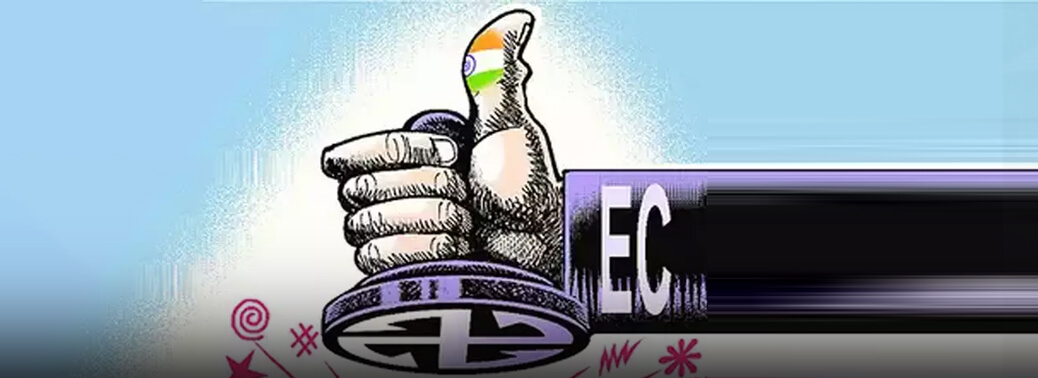
Why in News:
- The Supreme Court came down heavily on the EC for its lack of initiative in enforcing the law. The EC cracked the whip soon after the court’s censure and barred four leaders accused of intemperate speeches from campaigning for varying durations of time. By suggesting a clinical parity between BSP chief Mayawati’s call for Muslims to not divide their votes, and Uttar Pradesh Chief Minister Yogi Adityanath’s speech in which he characterised the election as a contest between ‘Ali’ and ‘Bajrang Bali’, in a reference to Muslims and Hindus, the EC perhaps wanted to demonstrate impartiality. However, it needs to do much more to be seen as a fair referee.
Background: / Election Commission of India:
- The Election Commission of India, is a constitutional body responsible for administering elections in India according to the rules and regulations mentioned in the Constitution of India.
- It was established on January 25, 1950. The major aim of election commission of India is to define and control the process for elections conducted at various levels, Parliament, State Legislatures, and the offices of the President and Vice President of India. It can be said that the Election Commission of India ensures smooth and successful operation of the democracy.
- According to Article 324 of Indian Constitution, the Election Commission of India has superintendence, direction, and control of the entire process for conduct of elections to Parliament and Legislature (state legislative assembly & state legislative council) of every State and to the offices of President and Vice-President of India.
Appointment & Tenure of Commissioners
- The President has the power to select Chief Election Commissioner and Election Commissioners. They have tenure of six years, or up to the age of 65 years, whichever is earlier.
- They have the same status and receive pay and perks as available to Judges of the Supreme Court of India. The Chief Election Commissioner can be removed from office only through accusation by Parliament. Election commissioner or a regional commissioner shall not be removed from office except on the recommendation of the Chief Election Commissioner.
Advisory Jurisdiction & Quasi-Judicial Functions
- The Commission has the power to prohibit a candidate who has failed to lodge an account of his election expenses within the time and in the manner set by law.
- The Commission has also the power Under the Constitution, the Commission also has advisory jurisdiction in the matter of post-election ineligibility of sitting members of Parliament and State Legislatures.
- Additionally, the cases of persons found guilty of dishonest practices at elections which come before the Supreme Court and High Courts are also referred to the Commission for its opinion on the question as to whether such person shall be disqualified and, if so, for what period. The judgment of the Commission in all such matters is binding on the President or, as the case may be, the Governor to whom such opinion is tendered.
- to remove or reduce the period of such disqualification as also other disqualification under the law.
Administrative Powers
- To decide the territorial areas of the electoral constituencies throughout the country on the basis of the Delimitation Commission Act of Parliament.
- To organize and periodically amend electoral rolls and to register all qualified voters. To inform the dates & schedules of election and to scrutinize the nomination papers. To grant recognition to political parties & allot election symbols to them.
- To act as a court for settling disputes related to granting of recognition to political parties and allotment of election symbol to them.
Constitutional Provisions
- Art. 324: broadly speaks of the functions of EC and its composition.
- Art. 325: there shall be one general electoral roll for every territorial constituency for election to either Houses of Parliament and State legislature. It establishes equality among citizens by affirming that no person shall be ineligible for inclusion in the electoral roll on the grounds of religion, race, caste or sex.
- Art. 326: lays down adult suffrage as the basis of elections to the Lok Sabha and to the Legislative Assemblies of States.
- Art. 327: confers on Parliament the power to make provisions with respect to elections to federal and State Legislatures
- Art. 328: confers on State Legislature the power to make laws with respect to elections to such legislature
- Art. 329: bars interference by courts in electoral matters. Notwithstanding anything said in the constitution i.e. validity of any law relating to the delimitation of constituencies or the allotment of seats to such constituencies shall not be called in question in any court
Flaws:
- The Constitution has not prescribed the qualifications (legal, educational, administrative or judicial) of the members of the Election Commission.
- The Constitution has not debarred the retiring election commissioners from any further appointment by the government.
- The administrative expenses of the EC or the salaries, allowances, and pensions of the CEC
and ECs are not charged on the Consolidated Fund of India.
SC TO DECIDE ON ENTRY OF WOMEN INTO MOSQUES
17, Apr 2019

Why in News?
- The Supreme Court on Tuesday agreed to hear a petition seeking permission for Muslim women to enter mosques to offer prayers.
Echoes of Sabarimala:
- The bench told the council appearing for the petitioners that it will hear the matter because of the apex court’s judgement in the Sabarimala temple case
- On September 28 last year, a five-judge constitution bench headed by then chief justice Dipak Misra in its 4:1 verdict had paved the way for entry of women of all ages into the Sabarimala temple in Kerala, saying the ban amounted to gender discrimination
- In the current petition it has been sought the apex court’s direction to declare as “illegal” and “unconstitutional” the practice of prohibiting the entry of Muslim women into mosques to offer prayers. the petitioners have said there should not be any discrimination against any citizen of the country on the ground of religion, race, caste, sex and place of birth.
- They have added that a life of dignity and equality is the most sacrosanct fundamental right and a Muslim woman cannot be prohibited from entering a mosque.
- the bench sought to know from the petitioners’ counsel as to whether Muslim women were allowed to enter a mosque in foreign countries. The counsel informed the bench that Muslim women were allowed to enter a mosque at the holy Mecca and also in Canada.
- The court concluded that the bar amounted to discrimination and even a practice of untouchability. The Haji Ali Dargah Trust had also agreed in the Supreme Court to allow women to enter the sanctum of the shrine.
Article 14:
- The state not deny to any person equality before the law or the equal protection of the laws within the territory of India. protection prohibition of discrimination on grounds of religion, race, Caste, sex, or place of birth.
- The phase “Equality to the Law “Find a place in all written constitutions that guarantees fundamental rights. “All citizens
- irrespective of birth, religion, sex, or race are equal before law; that is to say, there Shall not be any arbitrary discrimination between one citizen or class of citizens and another.” “All citizens shall, as human persons he held equal before law.” “All inhabitants of the republic are assured equality before the laws
SEALED DISCLOSURE
17, Apr 2019
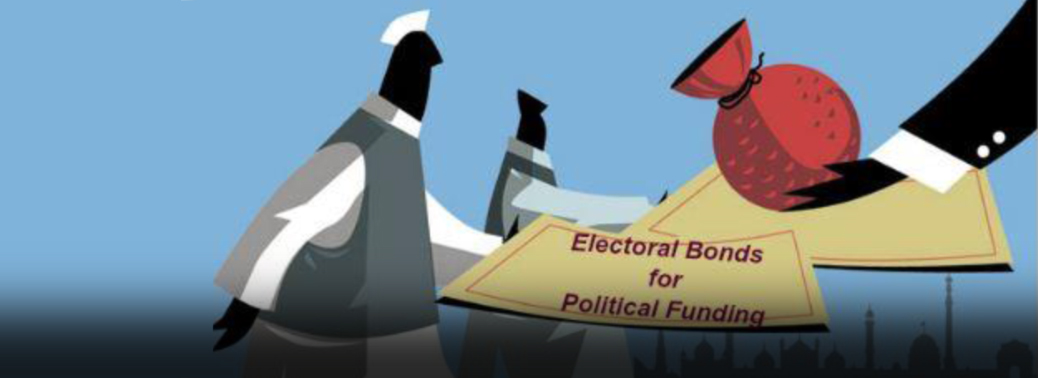
Why in news?
- The Supreme Court order will not alter the influence of electoral bonds on polls
Details:
- The Supreme Court’s interim order asking political parties to disclose, to the Election Commission in sealed covers, details of the donations they have received through anonymous electoral bonds is an inadequate and belated response to the serious concerns raised about the opaque scheme. The scheme, under which one can purchase bonds of various denominations from a designated bank and deposit them in the accounts of any political party, had been challenged in the apex court a year ago
- When the matter was taken up last week, it was considered that the time available was too limited for an in-depth hearing. The only concession given to those concerned about the dangers of anonymous political funding is that the names would be available with the EC, albeit in sealed envelopes, until the court decides if they can be made public.
- There is some concern that a disproportionately large segment of the bonds purchased by corporate donors has gone to the Bharatiya Janata Party.
- This donor anonymity may end if the court decides that the EC should disclose the names at the end of the litigation, but the influence such donations would have had on the electoral outcome would remain undisturbed.
- The court notes in its order that the case gives rise to “weighty issues which have a
- tremendous bearing on the sanctity of the electoral process in the country”.
- The petitioners, the Association for Democratic Reforms, questioned the anonymity-based funding scheme on the grounds that it promotes opacity, opens up the possibility of black money being donated to parties through shell companies and empowers the ruling party, which alone is in a position to identify the donors and, therefore, well placed to discourage donations to other parties. For the last two decades, the Supreme Court has been proactive in empowering voters and in infusing transparency in the system.
- The court must render an early verdict on the legality of the electoral bond scheme
Electoral bond scheme:
- Electoral Bonds may be purchased by only citizen of India. An individual can buy Electoral Bonds, either singly or jointly with other individuals.
- The bonds can only be encashed by an eligible political party only through a bank account with the authorized bank.
- Electoral Bonds are valid for fifteen calendar days from the date of issue.If the Electoral Bond is deposited after expiry of the validity period, no payment is made to any Political Party. The bonds are issued in multiples of 1000, 10000, 1lakh, 10 lakh, 1 crore. The cash donation has been capped at Rs. 2000 and beyond that donations are via electoral bonds.
EC ‘WAKES UP TO ITS POWERS’
17, Apr 2019

Why in news:
- EC’s action against leading political leaders for their communally provocative and divisive speeches.
Background: / Election Commission of India:
- The Election Commission of India, is a constitutional body responsible for administering elections in India according to the rules and regulations mentioned in the Constitution of India.
- It was established on January 25, 1950. The major aim of election commission of India is to define and control the process for elections conducted at various levels, Parliament, State Legislatures, and the offices of the President and Vice President of India. It can be said that the Election Commission of India ensures smooth and successful operation of the democracy. According to Article 324 of Indian Constitution, the Election Commission of India has superintendence, direction, and control of the entire process for conduct of elections to Parliament and Legislature (state legislative assembly & state legislative council) of every State and to the offices of President and Vice-President of India.
Appointment & Tenure of Commissioners
- The President has the power to select Chief Election Commissioner and Election Commissioners.
- They have tenure of six years, or up to the age of 65 years, whichever is earlier.
- They have the same status and receive pay and perks as available to Judges of the Supreme Court of India. The Chief Election Commissioner can be removed from office only through accusation by Parliament. Election commissioner or a regional commissioner shall not be removed from office except on the recommendation of the Chief Election Commissioner.
Advisory Jurisdiction & Quasi-Judicial Functions
- The Commission has the power to prohibit a candidate who has failed to lodge an account of his election expenses within the time and in the manner set by law.
- The Commission has also the power Under the Constitution, the Commission also has advisory jurisdiction in the matter of post-election ineligibility of sitting members of Parliament and State Legislatures.
- Additionally, the cases of persons found guilty of dishonest practices at elections which come before the Supreme Court and High Courts are also referred to the Commission for its opinion on the question as to whether such person shall be disqualified and, if so, for what period. The judgment of the Commission in all such matters is binding on the President or, as the case may be, the Governor to whom such opinion is tendered.
- to remove or reduce the period of such disqualification as also other disqualification under the law.
Administrative Powers
- To decide the territorial areas of the electoral constituencies throughout the country on the basis of the Delimitation Commission Act of Parliament.
- To organize and periodically amend electoral rolls and to register all qualified voters. To inform the dates & schedules of election and to scrutinize the nomination papers. To grant recognition to political parties & allot election symbols to them.
- To act as a court for settling disputes related to granting of recognition to political parties and allotment of election symbol to them.
Constitutional Provisions
- Art. 324: broadly speaks of the functions of EC and its composition.
- Art. 325: there shall be one general electoral roll for every territorial constituency for election to either Houses of Parliament and State legislature. It establishes equality among citizens by affirming that no person shall be ineligible for inclusion in the electoral roll on the grounds of religion, race, caste or sex. Art. 326: lays down adult suffrage as the basis of elections to the Lok Sabha and to the Legislative Assemblies of States. Art. 327: confers on Parliament the power to make provisions with respect to elections to federal and State Legislatures. Art. 328: confers on State Legislature the power to make laws with respect to elections to such legislature
- Art. 329: bars interference by courts in electoral matters. Notwithstanding anything said in the constitution i.e. validity of any law relating to the delimitation of constituencies or the allotment of seats to such constituencies shall not be called in question in any court
Flaws:
- The Constitution has not prescribed the qualifications (legal, educational, administrative or judicial) of the members of the Election Commission.
- The Constitution has not debarred the retiring election commissioners from any further appointment by the government. The administrative expenses of the EC or the salaries, allowances, and pensions of the CEC and ECs are not charged on the Consolidated Fund of India.
WEATHERVANE OF DEMOCRACY
16, Apr 2019

Content Area / Why in News:
- The Election Commission’s weakening commitment to the Model Code of Conduct over which the commitment of the political class to free and fair elections declined
Details:
- During the general election of 1996, which marked a turning point in the reduction of electoral malpractices, surveys showed that trust in the ECI was the highest among the major public institutions in India. Model Code of Conduct (MCC), is in effect from March 10 to May 23.
- The MCC, like the ECI itself, is a unique Indian innovation and encapsulates an important story about democracy in India and the conduct of free and fair elections.
- The MCC is a powerful instrument and It comes into force when the ECI announces election dates and comprises directions to government functionaries, political parties and candidates aimed at an impartial election process.
- Important provisions include barring governments from making policy announcements to sway voters and restraining political actors from inciting hatred against any group, or bribing or intimidating voters.
Origin of MCC
- The origins of the MCC lie in the Assembly elections of Kerala in 1960, when the State
- administration prepared a ‘Code of Conduct’ for political actors
- In the Lok Sabha elections in 1962, the ECI circulated the code to all recognised political parties and State governments.
- The emergence of the code and its voluntary acceptance by political parties showed the commitment of the political elite to the holding of free and fair elections.
- It refined the code, making it more stringent by including a section about the misuse of powers by ruling parties and renamed it the MCC. The MCC now countered the lack of commitment of the political class to free and fair elections, the ECI began to command a new respect and electoral malpractices declined dramatically.
Present Changes:
- Voter bribery and manipulation through the media have become the techniques of unethically influencing voters in place of voter intimidation and booth capturing.
- Voter bribery is spread over time and space. Voters resent being intimidated and are likely to cooperate with authorities in preventing it, but may be willing to be bribed.
- The misuse of the media is difficult to trace to specific political parties and candidates.
- The ECI’s response to the new challenges has been inadequate. It has appointed expenditure observers, evolved a code for social media, and stopped the release of biographical pictures that could influence voters. The commitment of the political class to free and fair elections declined, and it flouted the MCC.
Election Commission of India (ECI)
- The Election Commission of India is an autonomous constitutional authority responsible for administering Union and State election processes in India.
- The body administers elections to the Lok Sabha, Rajya Sabha, and State Legislative Assemblies in India, and the offices of the President and Vice President in the country.
Background
- Part XV of the Indian constitution deals with elections, and establishes a commission for these matters. The Election Commission was established in accordance with the Constitution on 25th January 1950. Article 324 to 329 of the constitution deals with powers, function, tenure, eligibility, etc of the commission and the member.
Structure of the Commission
- The commission consists of one Chief Election Commissioner and two Election Commissioners. The secretariat of the commission is located in New Delhi. The state level election commission is helped by Chief Electoral Officer who is an IAS rank Officer. The President appoints Chief Election Commissioner and Election Commissioners.
- They have a fixed tenure of six years, or up to the age of 65 years, whichever is earlier.
- They enjoy the same status and receive salary and perks as available to Judges of the Supreme Court of India. The Chief Election Commissioner can be removed from office only through a process of removal similar to that of a Supreme Court judge for by Parliament.
Functions
- It grants recognition to political parties & allot election symbols to them along with settling disputes related to it. The Commission also has advisory jurisdiction in the matter of post- election disqualification of sitting members of Parliament and State Legislatures.
- It issues the Model Code of Conduct in election for political parties and candidates so that the no one indulges in unfair practice or there is no arbitrary abuse of powers by those in power. It sets limits of campaign expenditure per candidate to all the political parties, and also monitors the same.
Model Code of Conduct (MCC) / What is it?
- Model Code of Conduct (MCC) for political parties and candidates is a set of norms evolved with the consensus of political parties and enforced by the Election Commission of India.
Objectives:
- To help the Election commission of India to conduct free and fair elections and maintain high standards of public morality. To provide a level playing field between contestants so that ruling party doesn’t misuse its position to gain an unfair advantage by taking decisions that can help them in the elections.
- To ensure that parties and candidates show respect for their opponents, criticise their policies and programmes constructively, and not resort to mudslinging and personal attacks.
Government’s Covered:
- At the time of the Lok Sabha elections, both the Union and state governments are covered under the MCC.
Restrictions for the party in power:
- The MCC forbids ministers (of state and central governments) from using official machinery for election work and from combining official visits with electioneering.
- Advertisements praising the work of the incumbent government using public money are to be avoided. The government cannot announce any financial grants, promise construction of roads or other facilities, and make any ad hoc appointments in government or public undertaking during the time the Code is in force. Ministers cannot enter any polling station or counting centre except in their capacity as a voter or a candidate.
HIGHWAY HURDLE
15, Apr 2019

Why in News:
- The Madras High Court has quashed the land acquisition proceedings for the Chennai- salem corridor
Background:
- The Chennai-Salem greenfield corridor is a 277.3 km long, 8-lane highway project, proposed to connect Salem to Chennai.
- The proposed highway passed through Kanchipuram, Tiruvannamalai, Krishnagiri, Dharmapuri and Salem districts of Tamil Nadu.
- This is an agrarian region comprising reserved forest areas and several industrial zones. A feasibility study for the project pegged the total cost at Rs 9,106 crores.
- In addition, a tentative cost for rehabilitation and resettlement had been worked out to Rs 415 crores.
What was the Proposed objective?
- There are three existing routes between Salem and Chennai:
- Ulundurpet to Chennai
- Walajah to Chennai
- the Chennai – Tiruvannamalai – Harur – Salem routes
- The government argues that the first two existing stretches are facing abnormal delays due to increasing traffic volume. The second stretch may not reduce travel time even if a bypass route was introduced. Thus a direct Salem – Chennai highway may be the only solution to ease traffic and reduce the travel time.
- It was stated that the corridor would mostly involve drylands, but the land acquisition cost may not be very high when compared to the benefits.
What is the HC’s stand?
- Approval – The project first came to light on February 25, 2018.
- It was mentioned in a letter written by Tamil Nadu CM to the Union minister for road transport, highways and shipping. The Centre gave its nod on the same day. Eventually, the process for the expressway was on track and instructions were given to call for tenders in two months. In other words, a single letter from the state CM and the Centre’s nod on the same day kick-started the project work.
- Clearance – The state did not receive prior environmental clearance from the Centre as mandated.
- The court also cited the failure of the state government in conducting a mandatory public hearing.
- As the court noted, farmers in the five districts complained that they were not consulted. Impact – The farmers feared that the project would destroy the most productive farmlands in Kancheepuram and Tiruvannamalai districts.
- It will have a huge impact on the environment and water bodies in the area.
- The court order also raised questions about a vulnerable reserve forest stretch near the project alignment. The court also based its judgment on major flaws in the project report submitted by a private consultant. Given the above drawbacks, the HC scrapped the feasibility study report which said the project would generate employment opportunities and lead to development.
OPPOSITION TO MOVE SC DEMANDING MORE VVPAT CHECKS
15, Apr 2019
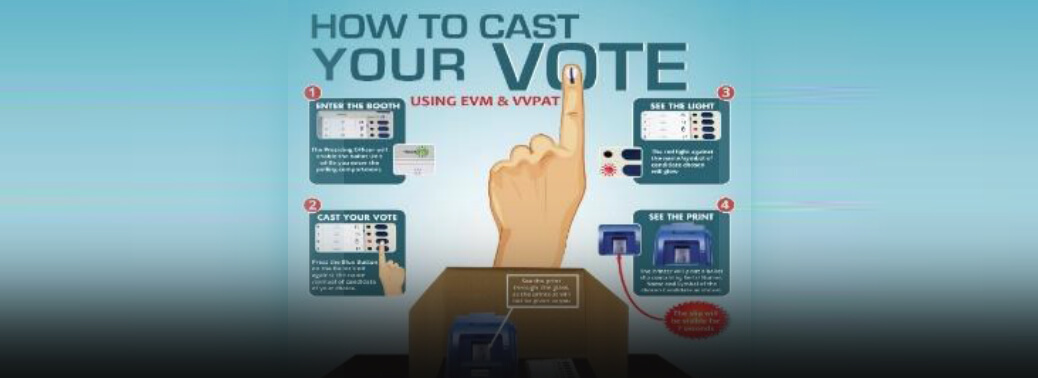
Why in News:
- The Opposition parties have decided to step up pressure on the Election Commission to verify at least 50 per cent of the votes polled in electronic voting machines with Voter Verified Paper Audit Trails.
Background: / Why the recent Demand for Paper ballot?
- In the recent past, political parties have alleged that verdicts in state assembly elections which went against them were because the EVMs had been tampered with.
- Recently, some opposition parties have demanded that Election Commission should return back to the use of paper ballots in elections. The demand for paper ballot arises out of the issues and allegations against EVMs.
VVPAT:
- The Voter Verified Paper Audit Trail is a method that provides feedback to voters.
- It is an independent verification printer machine and is attached to electronic voting machines.
- It allows voters to verify if their vote has gone to the intended candidate.
Working:
- When a voter presses a button in the EVM, a paper slip is printed through the VVPAT.
- The slip contains the poll symbol and name of the candidate. It allows the voter to verify his/her choice. After being visible to the voter from a glass case in the VVPAT for seven seconds, the ballot slip will be cut and dropped into the drop box in the VVPAT machine and a beep will be heard. VVPAT machines can be accessed by polling officers only.
Merits of VVPAT:
- Ensure greater transparency.
- Gives both the voters and political parties an assurance.
- Enables to verify vote. Enables authorities to count the votes manually if there is a dispute in the electronically polled.
Demerits of VVPAT:
- Technological glitches; malfunctioning due to extreme weather conditions and sensitivity to light. Other malfunctions: paper jamming, running of ink, running out of battery.
- Made procedure complex which was otherwise simple- EVM being a single-programmable chip-based system, Added cost to the election process.
- Storage concerns.
Way Ahead:
- It is important for Election Commission to regain trust and confidence of all stakeholders in the election system in India.
- Introduction of VVPAT is an appreciated move. However, lacunae in VVPAT technology should be immediately addressed. Measures include: making it independent of battery,include the usage of sustainable inks and reducing sensitivity to heat and light
Who Bought Electoral Bonds, SC Asks Parties
13, Apr 2019
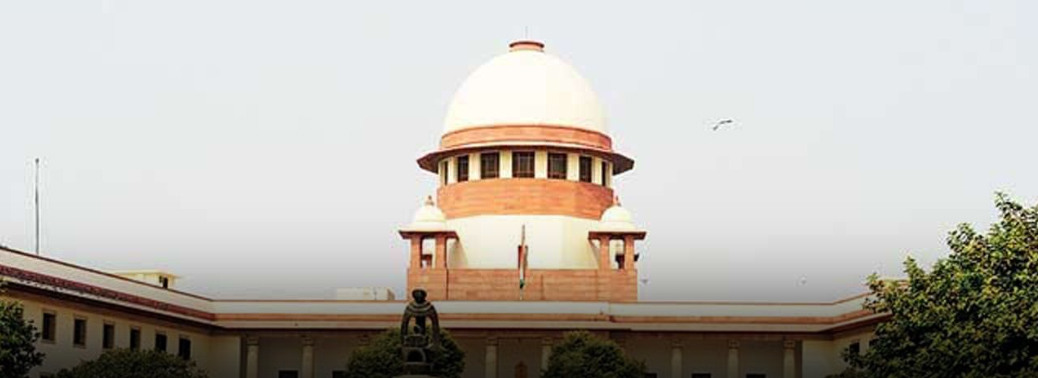
Why in news:
- The Supreme Court directed political parties to provide complete information to the Election Commission in sealed covers to ensure
Electoral bond:
- It is a bond issued in the nature of a promissory note, which shall be a bearer banking instrument and shall not carry the name of the buyer or the payee.
- Electoral bonds have been introduced to promote transparency in funding and donation received by political parties. The scheme envisages building a transparent system of acquiring bonds with validated KYC and an audit trail. A limited window and a very short maturity period would make misuse
- The electoral bonds will prompt donors to take the banking route to donate, with their identity captured by the issuing This will ensure transparency and accountability and is a big step towards electoral reform.
Provisions of Electoral bonds
- As per the provisions of the Electoral bond scheme, it may be purchased by a person, who is a citizen of India or incorporated or established in
- A person being an individual can buy electoral bonds, either singly or jointly with other individuals.
- Only political parties registered under Section 29A of the Representation of the People Act, 1951 and which secured not less than one per cent of votes polled in the last general election to the Lok Sabha or the Legislative Assembly of the State, shall be eligible to receive electoral
- Electoral bonds shall be cashed by an eligible political party only through a bank account with an authorized
Key features:
- Although called a bond, the banking instrument resembling promissory notes will not carry any The electoral bond, which will be a bearer instrument, will not carry the name of the payee and can be bought for any value, in multiples of Rs 1,000, Rs 10,000, Rs 1 lakh, Rs 10 lakh or Rs 1 crore.
Electoral Bonds Uses:
- According to government the system of Bonds will encourage political donations of clean money from individuals, companies, HUF, religious groups, charities, After purchasing the bonds, these entities can hand them to political parties of their choice, which must redeem them within the prescribed time.
- The ensure that the funds being collected by the political parties is accounted money or clean money
- It will also boost digital transactions
Concerns with respect to Electoral Bonds
- The donor’s identity is protected but this doesn’t lead to cleansing of politics
- The budget does not provide for scrutinization of accounts (which has been a demand by ECI from many years ago) of the political parties. Hence these measures will not lead to transparency. Although it provides for cheque payment or digital payment for donations above Rs 2000, unless the donors are scrutinized, it may not change the situation
- Under this the donor and receiver of the donations will have information of the transactions but not the IT department nor the
- The Finance Bill proposes section 13A (d) in Income Tax Act 1961, which makes it mandatory for the political parties to get tax exemption (this is already provided under section 29C of RPA 1951, wherein if a party treasurer fails to file the returns then the tax exemptions will not be provided).
- The budget only raises the issue of political funding but does not completely address it to bring complete accountability and
- Section 23 of RPA put a limit on anonymous cash donations to Rs 20000. The finance merely reduces the cash component of donations to Rs 2000 but does not completely rule out donations above Rs
- The Election Commission of India (ECI) had demanded that the limit for reporting the donations (which is Rs 20000) should be brought down to Rs 2000, but instead the government has brought down the maximum cash contribution to Rs 2000.
CLOSED ROAD: UDHAMPUR-BARAMULLA HIGHWAY BAN
12, Apr 2019
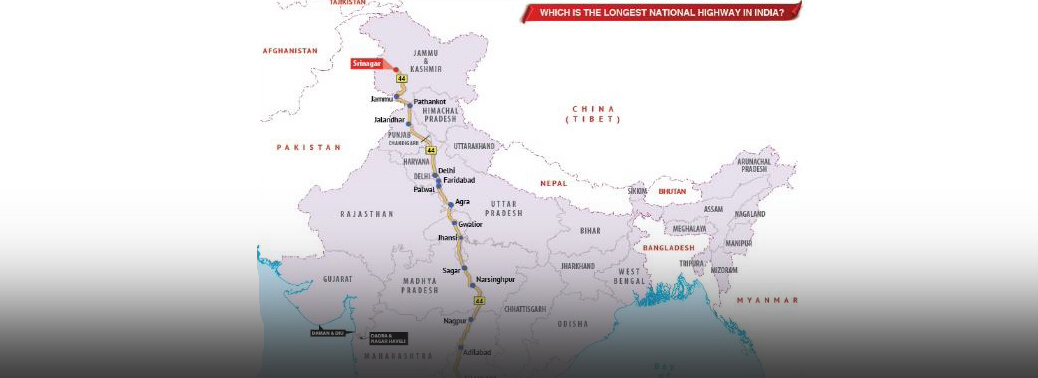
Why in News:
- The ban on civilian traffic for two days a week on the 271-km stretch of National Highway 44 between Udhampur in Jammu and Baramulla in Kashmir on April 7, is an ill-advised move.
Details:
- The ban which is to last till May 3, is to enable the orderly conduct of the Lok Sabha elections in Jammu and Kashmir, considering the tragic February 14 suicide attack on a CRPF convoy on NH 44 at Pulwama that killed 40 personnel.
Problems due to ban:
- NH 44 is the lifeline of the State where it is vital to move goods (including perishable agricultural produce), Along it, there are many educational and medical institutions, avoiding the stretch would greatly multiply the time and distance between two points.
- It bans militates against the freedom of movement at the heart of a democratic society. Restrictions violate Articles 14, 19 and 21 of the Constitution.
NH44:
- National Highway 44 (NH 44) is the longest-running
- major north–south National Highway in India. It begins from Srinagar and terminates in Kanyakumari.
- The highway passes through the states of Jammu & Kashmir, Punjab, Haryana, Delhi, Uttar Pradesh, Madhya Pradesh, Maharashtra, Telangana, Andhra Pradesh, Karnataka, and Tamil Nadu. NH-44 was laid and is maintained by Central Public Works Department.
Recent Terror Attack at Pulwama:
- The recent attack on a convoy of the Central Reserve Police Force (CRPF) on the Jammu- Srinagar Highway has shaken the country.
- Both public and private spaces can be seen wearing a sense of gloom as the bodies of 40 CRPF jawans who lost their lives in the attack reach their families.
- According to reports, the 78-vehicle convoy of CRPF was attacked by an explosive-laden SUV near Awantipora in Jammu and Kashmir’s Pulwama district.
- The SUV, identified as a Scorpio, was being driven by a 20-year-old suicide bomber named Adil Ahmad Dar with links to terror outfit Jaish-e-Mohammed.
Jaish-e-Mohammed: Pakistan-based terrorist organisation:
- Jaish-e-Muhammad (JEM or Army of Muhammad) is a Pakistan-based armed group that aims to undermine and overthrow Indian control over Indian-administered Kashmir through attacks on security and government targets.
- The group was founded by Masood Azhar, who previously fought under the banner of Harkat-ul-Mujahideen and has been linked to al-Qaeda.
- JeM has carried out several high-profile suicide and other attacks against Indian targets since its formation.
- The group is said to have actively supported the Afghan Taliban’s fight against US-led NATO forces since 2001.
India’s response against the attack has been two-pronged so far:
- India has withdrawn the Most Favoured Nation or MFN status to Pakistan and imposed 200 per cent customs duties on goods from across the border.
- India granted the MFN status to Pakistan way back in 1996. Under the MFN pact, a WTO member country is obliged to treat the other trading nation in a non-discriminatory manner, especially with regard to customs duty and other levies.
- New Delhi has asked the international community to support naming JeM chief Masood Azhar as a “UN designated terrorist”.
Way forward:
- instead, it could double up the security protocol to make life more secure and hassle-free for civilians and soldiers alike.
DANTEWADA AMBUSH
11, Apr 2019
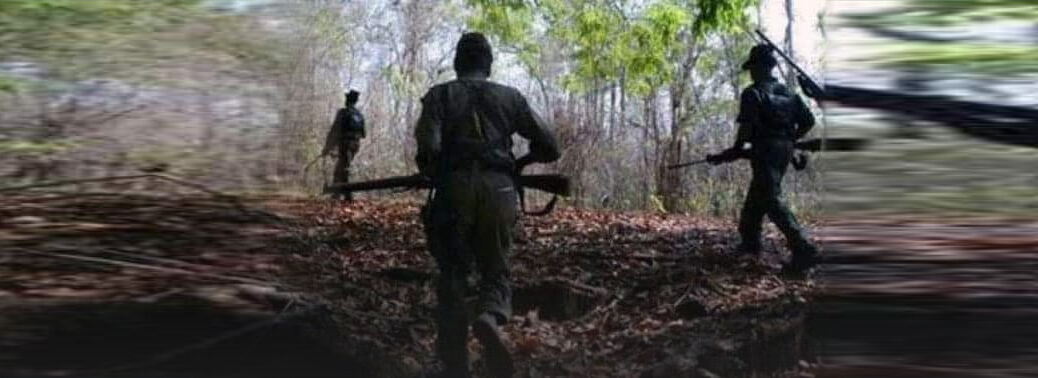
Why in News:
The Election Commission has taken the correct decision to go ahead with the first phase of polling, on Thursday, in the Lok Sabha election in Chhattisgarh after the deadly Maoist attack in Dantewada on Tuesday.
Details:
- Maoists struck at a convoy in Dantewada, which comes under the Bastar parliamentary constituency, and killed Bhima Mandavi, the politician from Dantewada, and four security personnel.
- The aim of them was clearly to disrupt the electoral process.
History of Naxalism in India:
- First phase (1967-72): The movement had strong ideological moorings, receiving guidance from leaders like Charu Majumdar, Kondapalli Seetharamaiah, Nagabhushan Patnaik and others.
- Since 2004: In a significant development, the People’s War (then operating in Andhra Pradesh) and the Maoist Communist Centre of India (then operating in Bihar and adjoining areas) merged to form the CPI (Maoist) Party.
CPI (Maoist) Party
- It is the major Left-Wing Extremist outfit responsible for majority of incidents of violence and killing of civilians and security forces and has been included in the Schedule of Terrorist Organizations along with all its formations and front organizations under the Unlawful Activities (Prevention) Act, 1967.
- Its philosophy of armed insurgency to overthrow the Government is unacceptable under the Indian Constitution and the founding principles of the Indian State.
- The central committee of CPI (Maoist), the highest decision-making body, has instructed the front organizations to intensify their activities and mobilize people over issues related to Dalits and minorities.
Urban Naxals:
- In an intelligence report titled “Urban Naxalism: Growing Menace and Remedies,” Ministry of Home Affairs described Urban Naxalism as an old Maoists strategy to focus on urban centers for leadership, organize masses in urban areas through democratic means, build a united front and engage in military tasks such as providing personnel, material and infrastructure. Most of these organizations are led by well-educated intellectuals with a firm belief in the Maoist insurgency doctrine.
- They form propaganda/disinformation machinery of the party. The important functions of these organizations include the recruitment of ‘professional revolutionaries’, raising funds for the insurgency, creating urban shelters for underground cadres and providing legal assistance to arrested cadres.
Government approach to left wing extremism:
- The GOI’s National Policy and Action Plan emphasises on security and development. Reports on spread and trends of Left-Wing Extremist violence have highlighted that 90 districts in eleven States have been taken up for special attention with regard to planning, implementation and monitoring various interventions.
- The Central Government closely monitors the situation and supplements and coordinates their efforts in several ways. These include:
- Providing Central Armed Police Forces (CAPFs);
- Sanction of India Reserve (IR) battalions, setting up of Counter Insurgency and Anti- Terrorism (CIAT) schools;
- Modernisation and upgradation of the State Police and their Intelligence apparatus;
- Re-imbursement of security related expenditure under the Security Related Expenditure (SRE)Scheme. Providing helicopters for anti-LWE operations, assistance in training of State Police through the Ministry of Defence, the Central Police Organisations and the Bureau of Police Research and Development. Sharing of Intelligence & facilitating inter-State coordination. Assistance in community policing and civic action programmes
Way forward:
- It will be vital for the administration to ensure polling without fear of violence.
- There is a need for the security forces to keep updating their standard operating procedures. It is also a call for the civil administration to keep extending its reach in the forests of central India, especially Bastar. The capacities of the State police need to be addressed. Local communities, have to be reassured that the fight against Maoism is also a political one.
SC REJECTS CENTRE’S PLEA TO KEEP RAFALE DOCUMENTS SECRET
11, Apr 2019

Why in News:
- Chief Justice of India said The Hindu’s right to publish the Rafale documents was in constitutional guarantee of freedom of speech.
with this, the court dismissed the objections raised by
the government against deal for purchase of 36 Rafale jets
Details:
- The government claimed that review were based on secret rafale documents unauthorized removed from the Ministry of Defence and leaked to the media.
- It also argued that stolen documents came under the protection of the Official Secrets Act (OSA). The chief justice Ranjan Gogoi said that the publication of Rafale documents by The Hindu upholds Freedom of Press.
- The court pointed out that under section 24 of the RTI act provides allegations of corruption as well as human rights violation, which should not be exempted from disclosure under the law.
About Rafale jets:
- India in September 2016 inked a direct deal with the French government to purchase 36 new Rafale fighter jets.
- Rafale is a twin-engine medium multi-role combat aircraft, manufactured by French company Dassault Aviation. Dassault claims Rafale has ‘Omnirole’ capability to perform several actions at the same time, such as firing air-to-air missiles at a very low altitude, air- to-ground, and interceptions. The aircraft is fitted with an on-board oxygen generation system (OBOGS) which suppresses the need for liquid oxygen re-filling or ground support for oxygen production. It carry out a wide range of missions: Air-defence/air-superiority, Reconnaissance, close air support dynamic targeting, Air-to-ground precision strike/interdiction, anti-ship attacks, nuclear deterrence, buddy-buddy refueling.
Freedom of speech and expression
- It is one of the six freedoms which the Constitution of India guarantees under its Article 19(1).
- The main conception behind granting this freedom to the citizen of India was to allow them to freely develop their thoughts and ideas and share them without any unreasonable hurdle. In the scheme of Constitution of India this freedom is enshrined in the most important part relating to the ‘Fundamental rights of the citizen’ and the ‘Universal declaration of Human Rights’. As sharing, expressing ideas, knowledge through speech, writings, audiovisual stuffs, etc. become necessary and for protecting this, a recognized right was grated in favour of Citizen to free speech and expression.
- The Right to Information Act, 2005 is also having a close connection with the concept of the liberty of speech and expression.
- The concerned law on the issue of ‘right to information’ was enacted with the purpose and object to make provisions to set out the practical regime of right to information for citizens and this appears to be a important issue in the subject of Freedom of speech and expression.
Freedom of Press
- The fundamental right of the freedom of press implicit in the right the freedom of speech and expression, is essential for the political liberty and proper functioning of democracy. The Indian Press Commission says that “Democracy can thrive not only under the vigilant eye of legislature, but also under the care and guidance of public opinion and the press is par excellence, the vehicle through which opinion can become articulate.”
- Freedom of press is the heart of social and political intercourse. It is the primary duty of the courts to uphold the freedom of press and invalidate all laws or administrative actions, which interfere with it contrary to the constitutional mandate.
About Official Secrets Act:
- The law meant for ensuring secrecy and confidentiality in governance, mostly on national security and espionage issues. The Indian Official Secrets Act, 1904 was enacted during the time of Lord Curzon, Viceroy of India from 1899 to 1905.
- One of the main purposes of the Act was to control the voice of nationalist publications.
- The Indian Official Secrets Act was extended to all matters of secrecy and confidentiality in governance in the country.
Ambit of the Act:
- The secrecy law broadly deals with two aspects — spying or espionage, which is dealt with in Section 3 of the Act, and disclosure of other secret information of the government, which is dealt with in Section 5. The secret information can be any official code, password, sketch, plan, model, article, note, document or information.
CENTRE DENIES RTI PLEA ON CIC APPOINTMENTS
10, Apr 2019

Why in News?
- The Centre has denied a Right to Information (RTI) request for details of the ongoing recruitment process for four vacancies in the Central Information Commission.
Background:
- On February, 2019, the SC had directed the Centre and States to pro-actively disclose all information regarding the recruitment advertisement, the particulars of the applicants, the search and selection committees and the criteria for short-listing candidates on their websites.
Appointment of CIC:
- Section 12(3) of the RTI Act 2005 provides as follows.
- The Chief Information Commissioner and Information Commissioners shall be appointed by the President on the recommendation of a committee consisting of The Prime Minister, who shall be the Chairperson of the committee. The Leader of Opposition in the Lok Sabha.
- A Union Cabinet Minister to be nominated by the Prime Minister.
- There cannot be more that 10 information commissioners all of whose appointments are made by the President and it includes one Chief Information Commissioner (CIC).
Term of office:
- Section 13 of the RTI Act 2005 provides that the Chief Information Commissioner shall hold office for a term of five years from the date on
- which he enters upon his office and shall not be eligible for reappointment.
- Section 13(5)(a) of the RTI Act 2005 provides that the salaries and allowances payable to and other terms and conditions of service of the Chief
- Information Commissioner shall be the same as that of the Chief Election Commissioner.
DEEP IN MAOIST TURF, NO SIGN OF POLLS
10, Apr 2019

Why in news?
- For years, in dandakaranya villages many have not seen a candidate.
Details:
- Nearly a year after around alleged 40 Maoist guerrillas were gunned down by security forces near the village described by civil rights activists as a “questionable” encounter, some 27 families continue to live in the shadow of fear. The village seems to have completely missed out on the biggest celebration of Indian democracy — the Lok Sabha election.
Inaccessible booths
- Many villagers do not have a voter identity card. Several inhabitants also suffer from infectious ailments such as impetigo and eczematous dermatitis — evidence of abject poverty — making it near impossible for them to walk to the nearest polling booth.
Rare sighting
- The village lies at the end of the barely motorable road, which cuts through the dense
- beauty of Dandkaranya, at the heart of central India’s Naxal movement. Deep inside the forest, a ‘candidate’ is almost an extinct species
Naxalite:
- The term Naxal derives from the name of the village Naxalbari in West Bengal, where the Naxalite peasant revolt took place in 1967.
- Naxalites are considered far-left radical communists, supportive of Mao Zedong s political ideology. Initially, the movement had its epicentre in West Bengal. In later years, it spread into less developed areas of rural southern and eastern India, such as Chhattisgarh Odisha Andhra Pradesh and Telangana through the activities of underground groups.
- The areas under the Naxal control are today referred to as the Red Corridor.
Why progress in such areas are slow?
- Weak execution of the programmes and policies Disconnect between the central and the state governments
- Funds allocated are misappropriated or simply do not yield result. The Tribal Advisory Councils have not functioned effectively
- Ill-trained administrative personnel. Ignorance of the tribal people regarding the laws of the land leading to their easy exploitation along with the denial of justice
- Deforestation, exploitation, loss of land leading to unemployment and curtailment of their traditional right to access the forest
Government Efforts:
- ‘Police’ and ‘Public Order’ being State subjects, action on maintenance of law and order lies primarily in the domain of the State Governments.
- Filling up critical infrastructure gaps under the Scheme for Special Infrastructure in Left Wing Extremism affected States. Assistance in training of State Police through the Ministry of Defence. Assistance in community policing and civic action programmes
- National Policy and Action Plan to address Left Wing Extremism’, aimed at eliminating the
- menace in the shortest possible timeframe. Anti-left-wing extremism (LWE) policy to enhance the deployment of central forces in the Naxal infested areas in the state
JURISDICTION NO BAR IN DOWRY HARASSMENT CASE, SAYS SUPREME COURT
10, Apr 2019
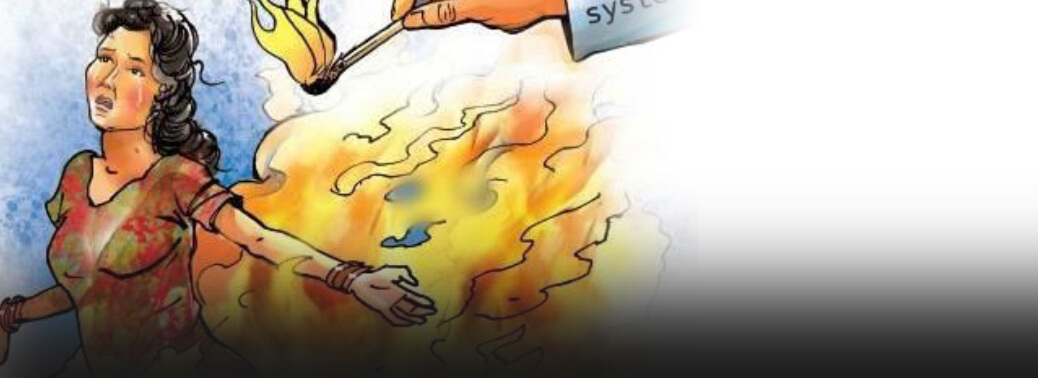
Why in News:
- The Supreme Court of India modified its July 2017 order in dowry harassment case for preventing misuse of Section 498A of Indian Penal Code (IPC). The Section 498A (dowry harassment) of IPC protects gender justice and rights.
Details:
- The CJI headed three judge bench of the Supreme Court, may shortly decide whether a case of cruelty on account of dowry harassment punishable under Section 498A of the IPC can be registered, investigated and ‘punished’ (prosecuted) in a jurisdiction different from the one from which the aggrieved spouse has been forced out on account of such harassment.
- July 2017 ruling of Supreme Court in Rajesh Kumar case The Supreme Court on July 27, 2017 ruled that the police cannot arrest the accused without conducting a preliminary inquiry under dowry harassment cases. The court had put an end to immediate arrests in dowry harassment cases, under Section 498A of Indian Penal Code (IPC).
- The ruling was made by a bench of Justices A K Goel and UU Lalit.
- The court held that arrests in dowry harassment cases cannot be made on a belief that the accused may have committed the offence. There has to be adequate material to show that the arrest was necessary to prevent the accused from committing any further offence.
- However, the bench made it clear that its directions will not extend to cases of tangible injury or death. The court directed states to set up Family Welfare Committees (FWC) comprising 3 members in every district across the country to keep an eye on the uprightness of each complaint. However, these committee members will not be considered as witnesses.
- The court also ruled that every complaint under Section 498A received by the police or the Magistrate should be referred to and looked into by such a committee.
- No arrest should be affected till the report of the committee is received.
Family welfare committee (FWC)
- The Supreme Court directed all states to set up family welfare committee (FWC) in each district and tasked them with testing the veracity of every complaint.
- The bench ruled that all such complaints received by the police or the magistrate must be referred to the family welfare committee and no action should be taken against the husband and the in-laws till the committee gave its report after interacting with the parties. Report of such committee be given to the authority by whom the complaint is referred to, latest within one month from the date of receipt of complaint. The court also said bail applications of husband and in-laws should be decided expeditiously by trial courts, preferably the same day it is filed. The court further said impounding of passports or issuance of Red Corner Notice against person living abroad should be avoided and personal appearance of husband’s family members should not be insisted upon by trial courts in dowry harassment cases. It also directed that a designated police officer should be appointed to deal with complaints under Section 498A.
CLOSURE ON CYNICISM: SC ORDER ON VVPAT VERIFICATION
10, Apr 2019
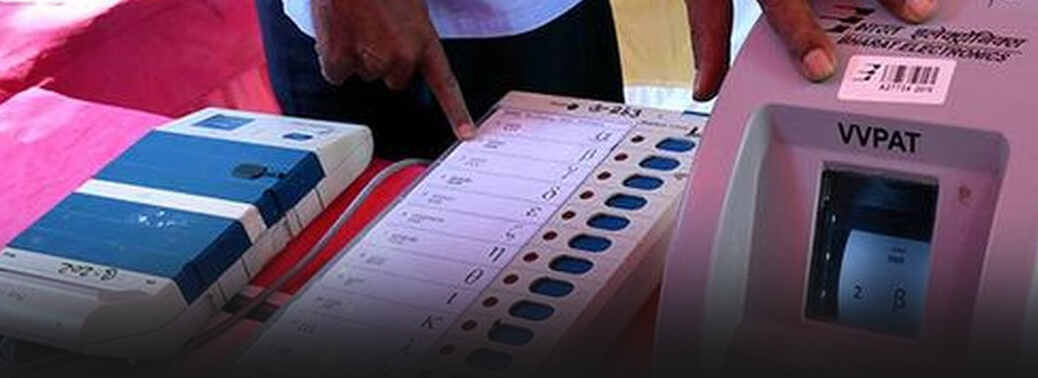
Why in News:
- Supreme Court’s solution of increased VVPAT verification should reassure the EVM doubt accepted questions.
Details:
- The increase in the overall number of EVMs to be counted to close to 20,000 machines, should reasonably address the very remote possibility of ‘insider fraud’.
- It will also verify a higher sample of EVMs in the smaller States and bring the sample within reasonable confidence levels to discount chances of EVM-tampering
- Higher EVM’s would effectively blunt criticism that may reduce the doubt in electoral process The ECI made technical fixes to the VVPAT to make them more resilient during use across the country, and it should be well-prepared to handle any malfunction during the seven- phase Lok Sabha election.
- It is time for the ECI to focus on the hassle-free conduct of polls to the Lok Sabha.
VVPAT
- The Voter Verified Paper Audit Trail is a method that provides feedback to voters.
- It is an independent verification printer machine and is attached to electronic voting machines.
- It allows voters to verify if their vote has gone to the intended candidate.
- When a voter presses a button in the EVM, a paper slip is printed through the VVPAT. The slip contains the poll symbol and name of the candidate. It allows the voter to verify his/her choice. After being visible to the voter from a glass case in the VVPAT for seven seconds, the ballot slip will be cut and dropped into the drop box in the VVPAT machine and a beep will be heard. VVPAT machines can be accessed by polling officers only.
how does it work?
- EVMs are electronic voting machines which provide the voter with a button for for each choice and it is connected by a cable to an electronic ballot box.
- It consists of two units – control unit and balloting unit– which are connected by a 5-metre cable.
- The control unit is with the Election Commission appointed polling officer and the Balloting Unit is in the voting compartment into which the voter enters to cast his/her vote in secret by pressing the button against the name and symbol of the candidate of his/her choice.
- The EVM runs on a 6-volt single alkaline battery fitted in the control unit, and can even be used in areas that have no electricity.
Why tampering of EVMs is impossible or very difficult?
- The machine is electronically protected to prevent any tampering/manipulation. The programme (software) used in these machines is burnt into a One Time Programmable (OTP)/Masked chip so that it cannot be altered or tampered with. Further these machines are not networked either by wire or by wireless to any other machine or system. Therefore, there is no possibility of its data corruption.
- The software of EVMs is developed in-house by a selected group of Engineers in BEL (Defense Ministry PSU) and ECIL (Atomic Energy Ministry’s PSU) independently from each other. A select software development group of 2-3 engineers designs the source code and this work is not sub-contracted.
- After completion of software design, testing and evaluation of the software is carried out by an independent testing group as per the software requirements specifications (SRS). This ensures that the software has really been written as per the requirements laid down for its intended use only.
- After successful completion of such evaluation, machine code of the source programme code is given to the micro controller manufacturer for writing in the micro controllers. From this machine code, the source code cannot be read. Source code is never handed over to anyone outside the software group of PSUs.
- Micro controller manufacturer initially provides engineering samples to PSUs for evaluation. These samples are assembled into the EVM, evaluated and verified for functionality at great length. Bulk production clearance by PSU is given to micro controller manufacturer only after successful completion of this verification.
- The source code for the EVM is stored under controlled conditions at all times. Checks and balances are in place to ensure that it is accessible to authorized personnel only.
- During production in the factory, functional testing is done by production group as per the laid down Quality plan and performance test procedures.
- The software is so designed that it allows a voter to cast the vote only once. The vote can be recorded by an elector from the ballot unit only after the Presiding Officer enables the ballot on the Control Unit.
- The machine does not receive any signal from outside at any time. The next vote can be recorded only after the Presiding Officer enables the ballot on the Control Unit. In between, the machine becomes dead to any signal from outside (except from the Control Unit).
- Samples of EVMs from production batches are regularly checked for functionality by Quality Assurance Group, which is an independent unit within the PSUs.
- Certain additional features were introduced in 2006 in ECI-EVMs such as dynamic coding between Ballot Unit (BU) and Control Unit (CU), installation of real time clock, installation of full display system and date and time stamping of every key-pressing in EVM.
- Technical Evaluation Committee in 2006 has concluded that any tempering of CU by coded signals by wireless or outside or Bluetooth or WiFi is ruled out as CU does not have high frequency receiver and data decoder. CU accepts only specially encrypted and dynamically coded data from BU. Data from any outside source cannot be accepted by CU.
Advantages of EVMs include:
- Cost effective.
- Eliminates need for production and printing of ballot papers
- A substantial reduction in expenses happens when it comes to transportation, storage, and recruiting counting staff.
- Environment friendly- No use of papers; ‘Greener’ and can be used repeatedly
- Time effective- Reduction in time taken in election procedures Results can be stored in machine memory; later deleted manually Reduction in invalid votes
- Prevent booth capturing
OPEN UP THE SUPREME COURT
09, Apr 2019

Why in News:
- The Office of the Chief Justice of India (CJI) was a “public authority”, and therefore, subject to the provisions of the Act. Supreme Court appointments should correspond to transparency under the provisions of RTI Act.
Details:
- The question most at issue involved the disclosure of the correspondence of the Collegium. The Collegium includes the five senior-most judges of the Supreme Court, who collectively constitute the selection panel for judicial appointments to the Supreme Court (and the three senior-most judges when it comes to the High Courts. India is one of
- the few countries where judges have the last word on judicial appointments, through the mechanism of the Collegium.
- The Collegium is therefore, a tool to secure and guarantee the independence of the judiciary.
- In 2015, the Supreme Court struck down a constitutional amendment establishing a National Judicial Appointments Commission (NJAC), which would have replaced the Collegium. Appointment in other Countries:
- In the United States, for example, candidates for judicial appointments in the federal judiciary are subjected to public confirmation hearings by the Senate. In Kenya and South Africa, the interviews of candidates taken by judicial appointments commissions are broadcast live
Advantages of Judiciary under RTI:
- It ensures judicial primacy in the appointments process
- It is only permissible way in which this system can work making it immune to transparency. It involves maintaining public faith in the impartiality of the institution.
Collegium system
- The Collegium System is a system under which appointments/elevation of judges/lawyers to Supreme Court and transfers of judges of High Courts and Apex Court are decided by a forum of the Chief Justice of India and the four senior-most judges of the Supreme Court. There is no mention of the Collegium either in the original Constitution of India or in successive amendments.
- The Collegiums System of appointment of judges was born through “Three Judges case”
- which interpreted constitutional articles on October 28, 1998.
- The recommendations of the Collegium are binding on the Central Government; if the Collegium sends the names of the judges/lawyers to the government for the second time.
How Collegium System Works?
- The Collegium sends the recommendations of the names of lawyers or judges to the Central Government. Similarly, the Central Government also sends some of its proposed names to the Collegium. The Central Government does the fact checking and investigate the names and resends the file to the Collegium.
- Collegium considers the names or suggestions made by the Central Government and resends the file to the government for final approval. If the Collegium resends the same name again then the government has to give its assent to the names. But time limit is not fixed to reply. This is the reason that appointment of judges takes a long time.
Points against the Collegium System:
- Inspite of being a democracy, the judges appoint judges in India.
- Collegium System could not appoint judges as per the vacancies in the courts due to various reasons. If the constitution makers had liked this way of appointment of judges, they would have envisaged it in the original constitution itself. Collegium System is recommending the appointment of the judges without.
ARMY GETS DHANUSH ARTILLERY GUNS
09, Apr 2019
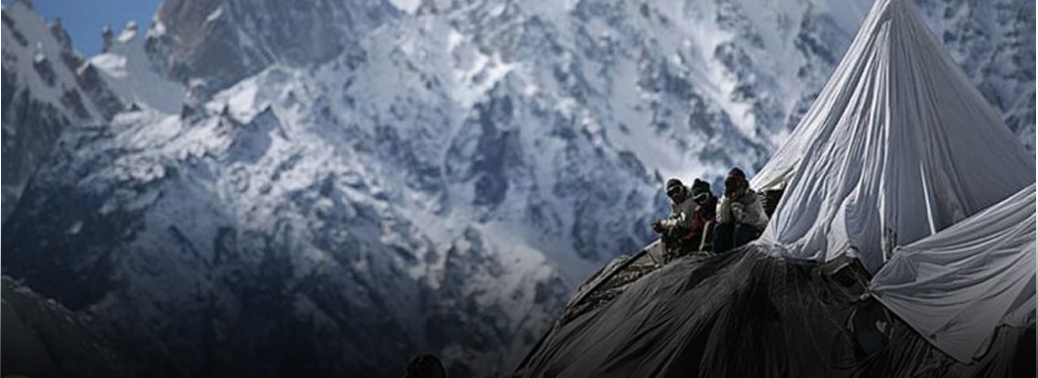
Why in News?
- The Ordnance Factory Board (OFB) handed over the first batch of six Dhanush artillery guns to the
Highlights:
- Dhanush is the indigenously upgraded gun of the Swedish Bofors gun procured in the 1980s. Dhanush is a 155 mm, 45-calibre towed artillery gun with a range of 36 km and has demonstrated a range of 38 km with specialised
- It is an upgrade of the existing 155m, 39 calibre Bofors FH 77
- In army parlance, it is classified as ‘medium artillery’.
- It is compatible with all North Atlantic Treaty Organisation (NATO) 155 mm ammunition system. The gun is fitted with inertial navigation system with global positioning system- (GPS) based gun recording and auto-laying, an enhanced tactical computer for onboard ballistic computations, an onboard muzzle velocity recording, an automated gun sighting system equipped with camera, thermal imaging and laser range
- Indigenisation to the extent of about 81%, has already been By the end of 2019,the indigenisation level of the gun will go up to 91%,” the Defence Ministry said in a statement. It is one of the “Make in India” marvels.
85% OF UJJWALA BENEFICIARIES STILL USE EARTHEN STOVE
08, Apr 2019
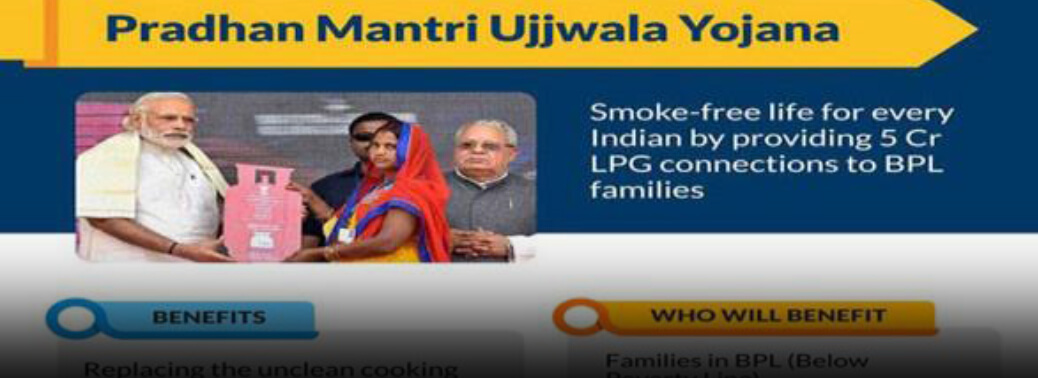
why in news:
- The hidden truth of the Pradhan Mantri Ujjwala Yojna (PMUY), being touted in the Bharatiya Janata Party’s (BJP) election campaigning as one of the big successes of the incumbent government, is that most rural households with LPG (liquefied petroleum gas) connections still use chulhas with firewood or dung cakes, to the detriment of rural health.
Background:
- The Ujjwala Yojna, launched in 2016, subsidises LPG connections for rural households by providing a free gas cylinder, regulator and pipe. Central government data shows that more than six crore households have received a connection through the scheme.
- The Research Institute for Compassionate Economics study shows that in the four States surveyed, there has indeed been a substantial increase in LPG ownership due to the scheme, with 76% of households now owning an LPG connection.
About Ujjwala: / Pradhan Mantri Ujjwala Yojana:
- The Scheme was launched in 2016 to provide free cooking gas (LPG) connections to poor households.
- Under the scheme, the government provides a subsidy of Rs. 1,600 to state-owned fuel retailers for every free LPG gas connection that they install in poor households. This subsidy is intended to cover the security fee for the cylinder and the fitting charges.
- The scheme allows beneficiaries to pay for the stove and the first refill in monthly installments.
- However, the cost of all subsequent refills has to be borne by the beneficiary household. So far, the scheme targeted the poor and underprivileged listed in the Socio-Economic and Caste Census, 2011.
- Union Cabinet has recently approved the expansion of the scheme to all poor households (not covered under the existing beneficiary categories).
- The scheme is being implemented by the Ministry of Petroleum and Natural Gas. It is first social welfare scheme implemented by Ministry of Petroleum and Natural Gas.
Some of the objectives of the scheme are:
- Empowering women and protecting their health.
- Reducing the serious health hazards associated with cooking based on fossil fuel. Reducing the number of deaths in India due to unclean cooking fuel.
- Preventing young children from significant number of acute respiratory illnesses caused due to indoor air pollution by burning the fossil fuel.
Why should we opt for LPG?
- About 75 crore Indians, especially women and girls, are exposed to severe household air pollution (HAP) from the use of solid fuels such as biomass, dung cakes and coal for cooking.
- A report from the Ministry of Health & Family Welfare places HAP as the second leading
- risk factor contributing to India’s disease burden.
- According to the World Health Organization, solid fuel use is responsible for about 13% of all mortality and morbidity in India (measured as Disability-Adjusted Life Years), and causes about 40% of all pulmonary disorders, nearly 30% of cataract incidences, and over 20% each of ischemic heart disease, lung cancer and lower respiratory infection
CHALLENGING ELECTORAL BONDS
07, Apr 2019

Why is it in News?
- The Election Commission of India, in an affidavit filed in the court, said the electoral bonds had made political funding opaque and would have “serious repercussions on transparency of political funding” owing to its anonymous nature.
What is electoral bond scheme?
- It is an attempt to “cleanse the system of political funding in the country.” A donor may buy an electoral bond at specified banks and branches using electronic modes of payment and after having completed the KYC (know your customer) requirements.
Where are they available?
- The electoral bonds are available at specified branches of the State Bank of India (SBI) for 10 days each in the months designated by the government from time to time. The bonds may be bought for any value, in multiples of ₹1,000, ₹10,000, ₹1 lakh, ₹10 lakh or ₹1 crore.
Why controversy?
- The bone of contention over the electoral bond scheme is that while the government has consistently said the scheme will increase transparency in electoral funding, it has ignored the reservations of several political parties and even the Election Commission.
- The parties do not have to disclose where their money comes from, as long as the mode of funding is through electoral bonds. This provision, to exempt parties from declaring the sources of the electoral bonds they receive, was done through an amendment to the Representation of the People Act by the Finance Act, 2017. Another amendment that has been criticised is the one to the Foreign Contribution Regulation Act (FCRA), which the Election Commission said will allow political parties to receive funding from foreign companies with a majority stake in Indian companies.
Are people using these bonds?
- Data revealed through the Right to Information replies by the State Bank of India show that large sums have been bought through electoral bonds. A separate RTI reply by the SBI has shown that the bank had sold ₹222 crore worth of electoral bonds in March 2018, the only month in financial year 2017-18 when these bonds were sold.
NYAY SCHEME
07, Apr 2019
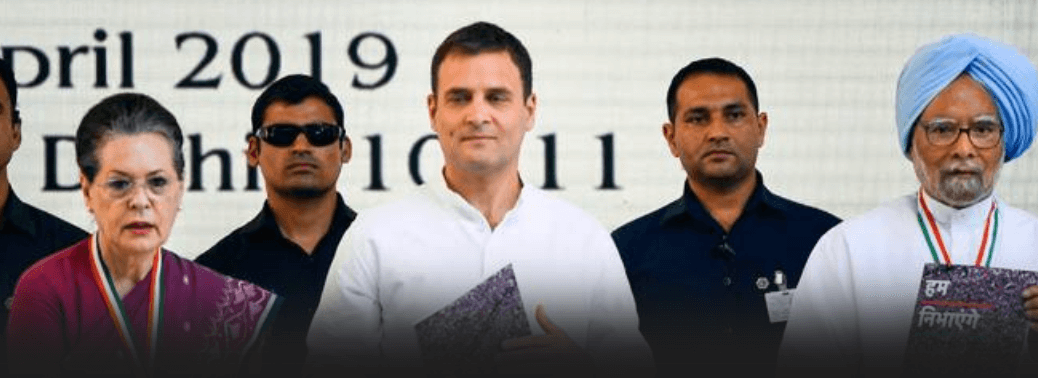
Why in News?
- Congress party recently promised MIG programme called Nyuntam Aay Yojana (NYAY), if the party was voted to power.
Background:
- Minimum Income Guarantee (MIG) and Poverty:
- The idea of a minimum income guarantee (MIG) has caught up with political parties.
- A MIG requires the government to pay the targeted set of citizens a fixed amount of money on a regular basis.
NYAY (NYUNTAM AAY YOJANA):
- NYAY promises annual income transfers of ₹72,000 to each of the poorest five crore families comprising approximately 25 crore individuals. If implemented, it will cost the exchequer ₹3.6 lakh crore per annum.
Concerns:
- Concerns over the fiscal burden: Government finances cannot afford such high additional spending, as the fiscal space is limited.
- Withdrawal of provisions of the basic services: No government can afford MIG unless several existing welfare schemes are converted into direct income transfers, or the fiscal deficit is allowed to shoot up way above its existing level, 3.4% the GDP. No income transfer scheme can be a substitute for universal basic services.
- Withdrawal of beneficiaries from the labour force: Large cash transfers can result in withdrawal of beneficiaries from the labour force.
Way ahead:
- Income transfers will surely reduce income inequalities and help bring a large number of households out of the poverty trap or prevent them from falling into it in the event of shocks such as illness or death of an earner.
- However, the form of an income transfer scheme should be decided carefully. The scheme should be launched in incremental steps. The poor spend most of their income, and a boost in their income will provide a boost to economic activities by increasing overall demand. On the other hand, large income transfers can be inflationary, which will hurt the poor more than the rich.
SC DECLINES PLEA AGAINST GUJJAR QUOTA
06, Apr 2019
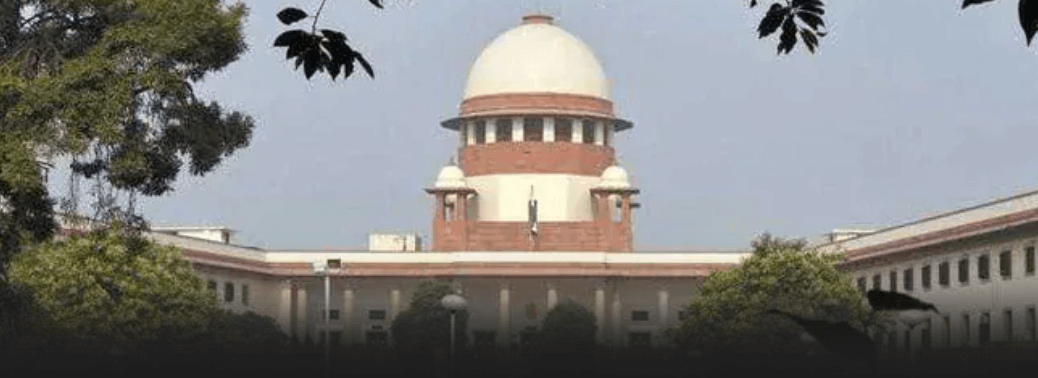
Why is it in News?
- The SC refused to entertain a plea challenging the grant of 5% quota to gujjars and four other castes in jobs and educational institutons in rajasthan.
Details:
- The SC dismissed the appeal against the rajasthan HC order refusing to grant interim relief on petition challenging the quota to gujjars and others, treating them as socially and economically backward classes.
- It was argued that the reservation would breach the 50% ceiling on total quota.
Socially and economically backward classes:
- Economically Backward Classes or Economically Weaker Sections in India is a category of people having an annual income less than Rs8 lakhs and who do not belong to any reserved category such as SC/ST/OBC.
- 124th Amendment provides 10 per cent reservation for economically backward sections is said to benefit poor upper castes as well as some farming communities.
This amended two fundamental rights:
- Article 15, which prohibits discrimination on the grounds of race, religion, caste, sex or place of birth
- Article 16 which prohibits discrimination in employment in government office.
- -Gujarat has become the first State in the country to implement the new provision.
THREE FIFTHS RATE ECONOMIC SITUATION AS” AVERAGE “OR “BAD”- PRE-POLL SURVEY
06, Apr 2019

Why is it in News?
- The pre poll survey 2019, Lokniti reveals concerns over jobs and income in the country
Details:
- The pre poll survey in 19 states between march 24 and 31, reflected the indications of an economic slowdown and farm distress across the country.
Economy:
- On the assessment of the state of the economy, 33% of the respondents rated it as “so-so” and 25% rated it as “bad,” while 34% termed it “good” or “very good.”
Unemployment:
- Unemployment has been reported by respondents as a key economic concern.
- Job related anxiety was found to be greatest among the young and college educated voters. 47% of the respondents say it has become more difficult to find a job in their areas in the recent years. 51% say their household income is insufficient to fulfill the needs.
Farming related issues:
- The survey finds that the issue of farmers’ distress, although very real, might not be much of an electoral issue as it does not seem to affecting the government’s popularity among the farming community. Moreover, when asked what would be the most important issue for them while voting, only about 6% reported specific farming-related issues as their most important problem. The rest of the farmers stated voting issues similar to the ones stated by non-farmers.
Pre poll survey:
- The poll was conducted in a bid to gauge the mood of the nation before the upcoming general elections.
Election Commission of India:
For the conduct of free and fair elections an independent Election Commission has been provided for in Article 324.
Election commission of India is a permanent body entrusted for the following matters
- Election of President, Election of Vice-President
- Election of Lok Sabha as well as Rajya Sabha Elections to State Legislatures as well as Legislative Councils
- Reservation of Seats in Lok Sabha and State Legislatures
- Qualifications of the MPs and MLAs
- Determination of population for purposes of
Appointment:
- The chief election commissioner or an election commissioner shall hold office for a term of 6 years or age of 65 years, whichever is The chief election commissioner and other commissioners are paid a salary equal to the salary of a judge of the Supreme Court.
- On retirement the pensioners are paid a salary equal to the salary of a judge of the Supreme
- All business of the election commission shall, as far as possible, be transacted If the chief election commissioner and other election commissioners differ in opinion on any matter, such matter shall be decided according to the opinion of the majority.
PRIVACY IN THE AGE OF SUNSHINE LAWS
06, Apr 2019
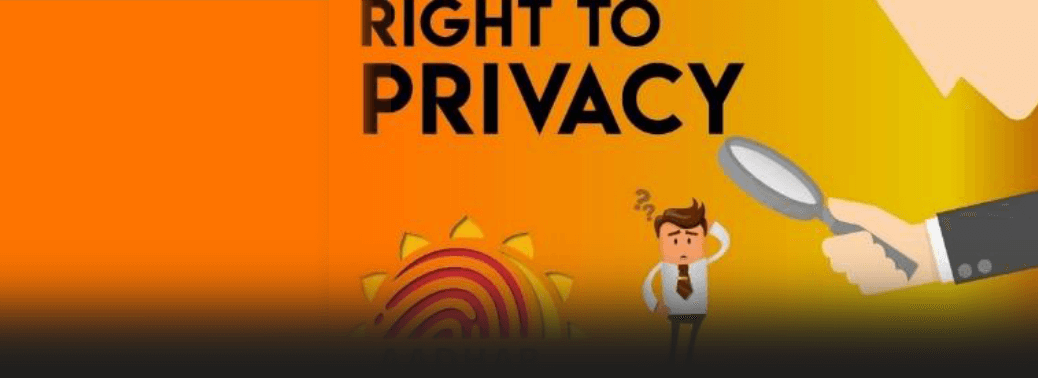
Why in News:
- A Constitution Bench of the Supreme Court has finally concluded hearing a crucial appeal whether judges are required to publicly disclose their assets under the RTI Act. This provision prohibits the sharing of personal information that has no nexus to public activity or which amounts to an
- unwarranted invasion of privacy unless the larger public interest justifies such a disclosure.
Background:
PUCL (People’s Union of Civil Liberties) Case 2003:
- Voters have a fundamental right to know relevant qualifications of candidates for office, including information about their income and assets. Accordingly, a section of a law stating that candidates could not be compelled to disclose any information about themselves other than their criminal records was unconstitutional.
Lok Prahari Vs Union of India (2018) Case:
- The verdict on a petition filed by the NGO, Lok Prahari, SC ordered one more directive for further refining the electoral process.
- The SC has asked for the additional disclosure of income source by aspiring candidates. The Centre has been asked to legislate on the same, along with the mandating the disclosure of wealth of the candidates, their spouse and dependants.
- Further, SC has vouched for a permanent mechanism to investigate any disproportionate increase in the assets of lawmakers while in office.
- The court has also stressed that non-disclosure of assets and their sources would amount to
- “corrupt practice” under Representation of People Act, 1951.
- As the order might be perceived as judicial overreach into the law-making arena, the court has asked the parliament to legislate on its directives.
- Section 44 of the Lokpal Act, 2013, which requires all public servants (this includes judges) to disclose their assets but is silent on whether the disclosure should be to the competent authority or the general public Girish Ramchandra Deshpande VS Central Information Commissioner
- The Supreme Court ruled that the assets of the bureaucrat could not be revealed to an applicant under the RTI Act unless there was a showing of a larger public interest. The applicant could not demonstrate the larger public interest and was denied the information.
RTI ACT,2005:
The basic objective of RTI is,
- Empowerment of the
- Promotion of transparency and accountability in the functioning of the
- Prevention and elimination of
- Making the democracy work for the people in its real
- An RTI portal is created by the Ministry of Personnel, Public Grievances and Pensions in order to facilitate the process of RTI. Besides access to information related to RTI, published disclosures by various public authorities under the state and the central governments, it acts as a gateway for obtaining information on the details of first Appellate Authorities, Principle Information Officers etc,
- Every Public authority is obligated to maintain a computerised version of all the records in a manner that could be accessed over a network at any place within the country by issuing it to the person on his/her
- Various channels need to be frequently updated by the public authority so that the use of RTI Act to seek information can be kept to a bare
- A written or electronic request must be placed by a person seeking information under the RTI No reason shall be sought from the person placing the request except the contact details in case the authorities would have to contact him/her. However, the authorities are not obligated to provide any such information that is received under confidence by a foreign government, cabinet papers, information forbidden to be shared by the court of law, information that could potentially hurt the sovereignty and integrity of India.
Under the RTI, every citizen is empowered to:
- Seek information / ask questions to the government.
- Request for copies of government documents., Inspect government documents and works. Request for samples of materials of any government work.
Right to Privacy:
- The right to privacy is protected as an intrinsic part of the right to life and personal liberty under Article 21 and as a part of the freedoms guaranteed by Part III of the Constitution.
Implications:
- The litigation and the civil society campaign against Aadhaar resulted in a unanimous judgment from nine judges of the Supreme Court declaring informational privacy as a component of the fundamental right to privacy.
- When the Constitution Bench decides on Mr. Agrawal’s appeal, it will most likely be viewing the privacy right enshrined in Section 8(1)(j) of the RTI Act through the lens of the Aadhaar judgment.
- If the Bench decides that all Supreme Court and High Court judges have a fundamental right to privacy (only two of the five judges hearing the case have voluntarily disclosed their assets) and that judges cannot be forced to disclose their assets to the public, questions will be asked as to why the court forced politicians to publicly disclose their assets and sources of income.
- It would then be only a matter of time before politicians and their spouses seek the overturning of the PUCL and Lok Prahari judgments, thereby turning back the clock on electoral transparency.
BRUNEI’S LGBT COMMUNITY LIVES IN FEAR
05, Apr 2019

Why is it in News?
- The absolute monarcy in borneo island, implemented new sharia laws prescribed death penalty for gay sex, and adultery.
LGBT Community:
- The LGBT community or GLBT community, also referred to as the gay community, is a loosely defined grouping of lesbian, gay, bisexual, transgender, LGBT organizations, and subcultures, united by a common culture and social movements.
Violation of rights:
- The country’s tiny lesbian, gay, bisexual and transgender (LGBT) community, who already had to be discreet about their sexual identities in the highly conservative Muslim country, have been left terrified. “What Brunei is adopting is a violation of basic human rights,”
Section 377 in India:
- It came into force in 1862 and deals with consensual private sexual acts between adults. The archaic, colonial-era law criminalizes “carnal intercourse against the order of nature”. Naz Foundation filed the first major case, Naz Foundation vs. Government of NCT of Delhi & Ors against Section 377 in 2001. However, a two-judge Delhi High Court Bench dismissed the case in 2004, terming it as a mere academic challenge to the constitutionality of a legislative provision.
- As a result, in a landmark decision on 2009, the High Court decriminalized Section 377, ruling that consenting intercourse between two adults was not illegal.
- On December, 2013, a two-judge Supreme Court Bench upheld the appeal and recriminalized gay sex. The second landmark judgment in terms of LGBTQI rights came on August 2017, when a nine-judge Bench of the Supreme Court ruled that the right to privacy was a fundamental right. In July 2018, a Constitution Bench, led by Chief Justice Dipak Misra, re-opened the entire issue, saying a section of people could not live in fear of the law which atrophied their rights to choose, privacy and dignity.
Way Forward:
- The SC chose to restrict its decision to the question of decriminalization without commenting on other rights that would extend equal citizenship to the community may have been the product of an intelligent litigation strategy.
- While the government left the constitutionality of Section 377 to the “wisdom of the court”, it
- argued that the Court should only go so far and no further.
- The current government and its successor following the next election cycle must hold themselves to the other side of this argument.
RELEASE OF MODI BIOPIC PUT OFF
05, Apr 2019
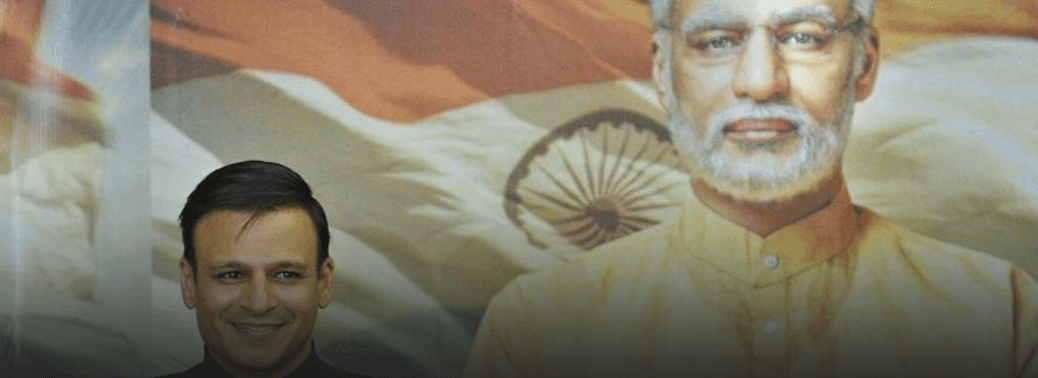
Why is it in News?
- SC agreed to urgently clear a plea on Modi biopic. It further said the biopic is meant to manipulate the voters in violation of model code of conduct in place for Lok Sabha polls.
Model code of conduct:
- The Model Code of Conduct is a set of guidelines issued by the Election Commission of India to regulate the conduct of political parties and their candidates in the run up to elections and is aimed at ensuring free and fair elections.
When did it come about?
- The MCC was first proposed by Kerala in its 1960 assembly elections.
- It was later adopted by the Election Commission of India (EC) during mid-term elections in 1968 and 1969.
- It has since been updated many times based on cases fought in courts.
- EC first issued a Model Code of Conduct for political parties at the time of the fifth general elections, held in 1971.
- The Code has evolved over the years to include behaviour norms for the party in power and the public servants who report to it.
Key features:
- General conduct of candidates
- Candidates’ meetings/processions
- Appointment of observers
- Maintenance of polling booths on the day
- Contents in election manifestos
- The Code of Conduct comes into force immediately after the elections are announced by the EC. It applies to political parties, their candidates and polling agents, the government in power and all government employees. Public places for holding election rallies and helipads for flights in connection with elections are to be made available to all parties on the same terms and conditions on which they are used by the party in power. Ministers and other government authorities should not announce any financial grants to the people; they should not lay foundation stones for or inaugurate any projects; they should not promise public facilities like roads; and they should not make any ad hoc government appointments.
Is it legally binding?
- The Model Code of Conduct does not have any statutory backing.
- But the Code has come to acquire significance in the past decade, because of its strict enforcement by the EC. Some of the more serious offences listed in the Code have also found their way into the statute books. So, for some of the offences mentioned, candidates can be tried under the Indian Penal Code or the Representation of the People Act 1951.
Representation of Peoples Act provides for the following:
- Qualification of
- Preparation of electoral
- Delimitation of
- Allocation of seats in the Parliament and state
Election commission of India
- The Election Commission of India, abbreviated as ECI is a constitutional body responsible for administering elections in India. It was established on January 25, 1950. The major aim of election commission of India is to define and control the process for elections conducted at various levels, Parliament, State Legislatures, and the offices of the President and Vice President of India. According to Article 324 of Indian Constitution, the Election Commission of India has superintendence, direction, and control of the entire process for conduct of elections to Parliament and Legislature (state legislative assembly & state legislative council) of every State and to the offices of President and Vice-President of India.
Appointment & Tenure of Commissioners:
The President has the power to select Chief Election Commissioner and Election Commissioners. They have tenure of six years, or up to the age of 65 years, whichever is earlier.
They have the same status and receive pay and perks as available to Judges of the Supreme Court of India. The Chief Election Commissioner can be removed from office only through accusation by Parliament
Key functions of the Election Commission of India:
- The Election Commission of India is considered the guardian of free and reasonable elections. It issues the Model Code of Conduct in every election for political parties and candidates so that the decorum of democracy is maintained.
- It regulates political parties and registers them for being eligible to contest elections.
- It publishes the allowed limits of campaign expenditure per candidate to all the political parties, and also monitors the same.
- The political parties must submit their annual reports to the ECI for getting tax benefit on contributions. It guarantees that all the political parties regularly submit their audited financial reports.
BALAKOT, 10% QUOTA & FARMERS’ SCHEME GAVE MODI A BOOST: SURVEY
05, Apr 2019

Why in News:
- A pre-election survey conducted by Lokniti suggests that three decisions of the National Democratic Alliance (NDA) government led by Prime Minister Narendra Modi might have the ability to attain preferable voting.
- These included the decision to accord 10% reservations to economically weaker sections, announcing the PM-KISAN scheme to transfer money to farmers and the air strikes within Pakistan following the Pulwama attack and not impact on deal of rafale and NYAY
Details:
- 10% reservation for economically weak in general category. The Constitution (124th Amendment) Bill 2019 provides 10 per cent reservation in jobs and educational institutions to the economically weaker sections in the general category.
- President Ram Nath Kovind on 12th January, 2019 gave his assent to this bill. The move came after the Union Government exercised its powers conferred by sub-section (2) of section 1 of the Constitution (One Hundred and Third Amendment) Act, 2019.
124th Constitution Amendment Bill:
- It will provide 10% reservation to economically backward sections in the general category. The Bill will also cover those from the Muslim, Sikh, Christian, Buddhist and other minority communities. The quota will be over and above the existing 50% reservation to Scheduled Castes, Scheduled Tribes and Other Backward Classes (OBC). Those who have an annual salary of less than Rs. 8 lakh per year and possess less than 5 acres of land will be able to avail reservation in educational institutions and jobs.
- The quota will be available to only those economically backward poor people not availing the benefit of reservation as of now, who have a residential house below 1,000 square feet, a residential plot below 100 square yards in a notified municipality, residential plot below 200 square yards in non-notified municipality area.
Will it benefit the poor?
- In the Indra Sawhney judgment, the court had said: “…the concept of ‘weaker sections’ under Article 46 is different from that of the ‘backward class’ of citizens in Article 16(4), but the purpose of the two is also different.
- One is for the limited purpose of the reservation and hence suffers from limitations, while the other is for all purposes under Article 46… While those entitled to benefits under Article 16(4) may also be entitled to availing themselves of the measures taken under Article 46, the converse is not true.
GOVERNMENT DEFENDS ELECTORAL BONDS
05, Apr 2019
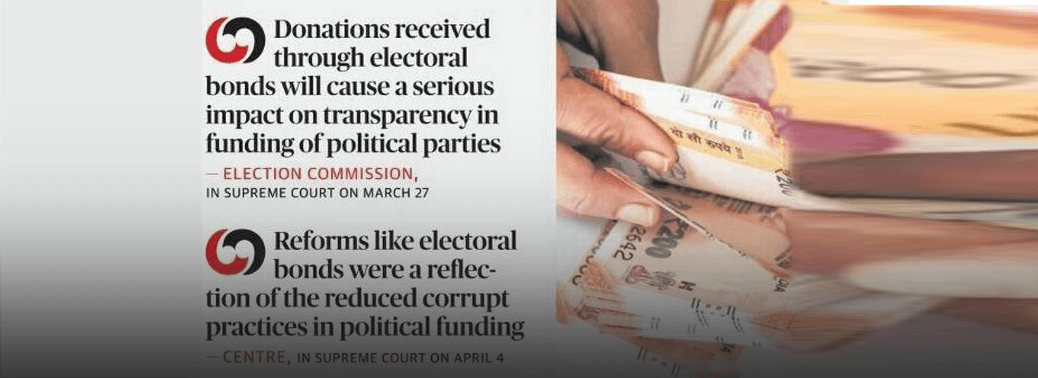
Why in News:
- Ministry of Finance dismisses the Election Commission of India’s version that the invisibility afforded to benefactors was a “retrogade step” and would wreck transparency in political funding.
Background:
- Most political parties use the negligent regime on donations to accept cash donations from anonymous sources. Nearly 70% of the Rs.11,300 crore in party funding over the past 11- year period came from unknown sources. Currently, political parties are required to report any donation of over Rs.20,000 to the IT department. But there has been a trend of more donations flowing by way of hard cash in smaller amounts. To fix this, the Budget has proposed to reduce the disclosure limit to Rs.2,000 and insists that any amount over this must be paid through cheque or the digital mode. The idea is that electoral bonds will prompt donors to take the banking route to donate, with their identity captured by the issuing authority.
What is Electoral bond?
- The bank account used must be the one notified to the Election Commission and the bonds may have to be redeemed within a prescribed time period.
- Electoral bonds are essentially like bearer cheques.
- The issuing bank will remain the custodian of the donor’s funds until the political party redeems the bond.
Why is Electoral bonds needed?
- They provide a transparent mechanism for political parties to raise finances in order to meet election expenditures. Since the donor buys electoral bonds after furnishing KYC details to the bank, it is a more transparent tool than cash.
- The ADR (Association for Democratic Rights) states that 69% of political funding in India comes from unknown sources. In this context, Electoral bonds provide an alternate, transparent route for parties to raise funds.
- It also preserves anonymity of donors which is essential as they need to be protected against any post-poll intimidation or harassment by political opponents.
- Besides, the life of these bonds is only 15 days which limits the scope for misuse. Also, political parties are supposed to disclose the contributions received through electoral bonds to the Election Commission. Therefore, the bonds help in cleaning up the system of electoral finance in India.
- The bonds also offer tax advantage to donors, thus making them an attractive tool for political donations.
What are the problems in electoral bond?
- But there are loopholes to electoral bonds too.
- While the identity of the donor is captured, it is not revealed to the party or public. So, transparency is not enhanced for the voter.
- Also, income tax breaks may not be available for donations through electoral bonds. This pushes the donor to choose between remaining anonymous and saving on taxes. Also, privacy of the donor is compromised as the bank will know their identity. The RPA (Representation of People Act 1951) although makes it mandatory for the political parties to disclose donations over Rs 20000, there is no law which prohibits these parties from disclosing the donations below Rs 20000 but the parties lack political will hence do not disclose
- The political parties have regularly delayed submitting the audited reports to the ECI. As per ADR between 2011-2015
- BJP has delayed the submission on an average by 182 days
- Congress by 166 days
- NCP by 87 days
- Worse is the fact that some political parties do not even file the returns. There is little to show that action has been against these parties who have either delayed or not filed the returns.
Way ahead:
- As per T S Krishnamurthy (Former CEC), the government will not know how many times, the bond has been sold in the market before being encashed by the political party. So, it would be better if a Election Fund is set up by the EC and the donations to various political parties are collected by ECI (with compulsory PAN number)
- The above suggestion of setting up of election fund has been given by Indrajit Gupta Committee.
RTI SCRUTINY WILL RUIN JUDICIAL INDEPENDENCE
04, Apr 2019
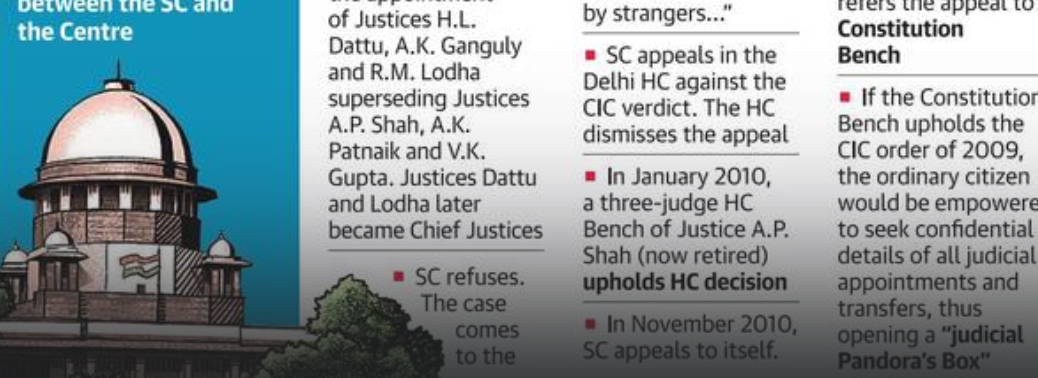
Why in News:
- Attorney General KK Venugopal told the Supreme Court that any information regarding judges’ appointments cannot be shared with information-seekers under the RTI as it would compromise the judiciary’s independence. AG further said collegiums workings must be confidential.
What is Collegium system:
- The Collegium System is a system under which appointments/elevation of judges/lawyers to Supreme Court and transfers of judges of High Courts and Apex Court are decided by a forum of the Chief Justice of India and the four senior-most judges of the Supreme Court.
- There is no mention of the Collegium either in the original Constitution of India or in successive amendments.
- The Collegiums System of appointment of judges was born through “three judges case”which interpreted constitutional articles on October 28, 1998.
- The recommendations of the Collegium are binding on the Central Government; if the Collegium sends the names of the judges/lawyers to the government for the second time.
- But time limit is not fixed to reply.
Points against the Collegium System:
- Inspite of being a democracy, the judges appoint judges in India. Collegium System could not appoint judges as per the vacancies in the courts due to various reasons. If the constitution makers had liked this way of appointment of judges, they would have envisaged it in the original constitution itself. In the year 2009, Law Commission of India said that nepotism and personal patronage is prevalent in the functioning of the Collegium System. Collegium System is recommending the appointment of the judges without considering the talent available in the market.
Right to Information act:
- The Right to Information (RTI) Act, operationalised in October 2005, was seen as a powerful tool for citizen empowerment. RTI is one of the landmark acts which has led to a significant boost in accountability of the government towards the people.
Basic objective of RTI:
- Empowerment of the citizens.
- Promotion of transparency and accountability in the functioning of the government.
- Prevention and elimination of corruption, Making the democracy work for the people in its real sense.
Central Information commission:
- The Central Information Commission (CIC) set up under the Right to Information Act is the authorized quasi-judicial body, established in 2005. The Central Information Commission is a high-powered independent body which inter alia looks into the complaints made to it and decides the appeals. It entertains complaints and appeals pertaining to offices, financial institutions, public sector undertakings, etc., under the Central Government and the Union Territories.
Quasi-judicial powers:
- CIC/SCIC will have powers of Civil Court such as –
- Summoning and enforcing attendance of persons, compelling them to give oral or written evidence on oath and to produce documents or things
- Requiring the discovery and inspection of documents
- Receiving evidence on affidavit
- Requisitioning public records or copies from any court or office
- Issuing summons for examination of witnesses or documents
- Any other matter which may be Prescribed
<
MODEL CODE OF CONDUCT
03, Apr 2019

Why in News:
- Displeasure over the lackadaisical approach of Air India and the Railways in enforcing the Model Code of Conduct – Election Commission.
Background:
- The MCC is a set of instructions to be followed by both political parties and candidates contesting elections on general conduct, campaigning, meetings etc. The MCC is in place, till the entire process of elections is complete.
Guidelines for General Conduct:
- The following are the important guidelines for general conduct when the MCC is in place.
- No party or candidate should include in any activity which may aggravate existing differences or cause tension between different castes and communities, religious or linguistic.
- Criticism of other political parties, when made, should be confined to their policies and programme, past record and work. Parties and Candidates should not criticise on the aspects of private life of other candidates
- There should be no appeal to caste or communal feelings for securing votes. Mosques, Churches, Temples or other places of worship should not be used as forum for election propaganda.
- All parties and candidates should avoid activities which are corrupt practices under the election law, such as bribing of voters, intimidation of voters, impersonation of voters,
- canvassing within 100 meters of polling stations, holding public meetings during the period of 48 hours ending with the hour fixed for the close of the poll, and the transport of voters to and from polling station.
- Any violation of the above guidelines will invite a notice from the ECI as to why action should not be taken against them. Notices have been issued to candidates from various political parties for violation of model code of conduct.
Guidelines relating to Meetings & Processions:
- The MCC also contains guidelines with respect to conduct of meetings & holding processions. Some of the important guidelines are the following
- The party or candidate should inform the local police authorities of the venue and time of any proposed meeting well in time so as to enable the police to make necessary arrangements for controlling traffic and maintaining peace and order.
- If permission or license is to be obtained for the use of loudspeakers or any other facility in connection with any proposed meeting, the party or candidate should apply to the authority concerned well in advance and obtain such permission or license.
- Organizers of a meeting should invariably seek the assistance of the police on duty for dealing with persons disturbing a meeting or otherwise attempting to create disorder. Organizers themselves should not take action against such persons.
- A Party or candidate organizing a procession should decide before hand the time and place of the starting of the procession, the route to be followed and the time and place at which the procession will terminate. There should ordinarily be no deviation from the programme. The organizers should take steps in advance to arrange for passage of the procession so that there is no block or hindrance to traffic. If the procession is very long, it shall be organized in segments of suitable lengths, to avoid road blockage.
- If two or more political parties or candidates propose to take processions over the same route at about the same time, the organizers should establish contact well in advance and decide upon the measures to be taken to see that the processions do not clash or cause hindrance to traffic.
Guidelines for the Polling Day and at the Polling Booth:
- On the day the polling, all the political parties and candidates should abide by the following instructions.
- Refrain from serving or distributing liquor on polling day and during the forty-eight hours preceding it. Not allow unnecessary crowd to be collected near the camps set up by the political parties and candidates near the polling booth. Excepting the voters, no one without a valid pass from the Election Commission shall enter the polling booths.
Other Guidelines:
- Apart from these, there are other guidelines for election observers and the party in power. The following are the some of the important guidelines for the party in power.
- The party in power whether at the Centre or in the State or States concerned, should ensure that no cause is given for any complaint that it has used its official position for the purposes of its election campaign.
- Public places such as maidans etc, for holding election meetings, and use of helipads for air-flights in connection with elections should not be monopolized by the party in power. Other parties and candidates should also be allowed the use of such places and facilities on the same terms and conditions on which they are used by the party in power.
- Rest houses, bungalows or other Government accommodation should not be monopolized by the party in power or its candidates and such accommodation should be allowed to be used by other parties and candidates in a fair manner.
- Issue of advertisement at the cost of public exchequer in the newspapers and other media and the misuse of official mass media during the election period for coverage of political news and publicity regarding achievements of the party in power should be avoided.
- Ministers and other authorities should not sanction grants/payments out of discretionary funds from the time elections are announced by the Commission and from the time elections are announced.
- Besides this, Ministers and other authorities should not announce any financial grants in any form or promises or lay foundation stones etc of projects or any promise of construction of roads, provision of drinking water facilities etc or any ad-hoc appointments in Government, Public Undertakings etc which may have the effect of influencing the voters in favor of the party in power.
Is the enforcement effective?
- While the ECI does issue notices to various candidates for the violation of the MCC, it generally does not go to the extent of taking any action. The issue ends with a warning to the candidate not to repeat the same mistake. Though there are multiple electoral offences as defined under various laws, rarely is action taken in any of these cases.
VVPAT
02, Apr 2019

Why in News?
- The SC asked 21 opposition parties to respond to an Election commission affidavit that states that increasing random physical verification using VVPAT to 50% would delay the Lok Sabha poll results of 2019.
Background:
- Why the recent Demand for paper ballot?
- In the recent past, political parties have alleged that verdicts in state assembly elections which went against them were because the EVMs had been
- tampered with. Recently, some opposition parties have demanded that Election Commission should return back to the use of paper ballots in elections. The demand for paper ballot arises out of the issues and allegations against EVMs.
VVPAT:
- The Voter Verified Paper Audit Trail is a method that provides feedback to voters.
- It is an independent verification printer machine and is attached to electronic voting machines. It allows voters to verify if their vote has gone to the intended candidate.
Working:
- When a voter presses a button in the EVM, a paper slip is printed through the VVPAT. The slip contains the poll symbol and name of the candidate. It allows the voter to verify his/her choice. After being visible to the voter from a glass case in the VVPAT for seven
- seconds, the ballot slip will be cut and dropped into the drop box in the VVPAT machine and a beep will be heard. VVPAT machines can be accessed by polling officers only.
Merits of VVPAT:
- Ensure greater
- Gives both the voters and political parties an
- Enables to verify
- Enables authorities to count the votes manually if there is a dispute in the electronically
Demerits of VVPAT:
- Technological glitches; malfunctioning due to extreme weather conditions and sensitivity to light. Other malfunctions: paper jamming, running of ink, running out of battery.
- Made procedure complex which was otherwise simple- EVM being a single-programmable chip-based system. Added cost to the election process.
- Storage concerns.
Way ahead:
- It is important for Election Commission to regain trust and confidence of all stakeholders in the election system in India. Introduction of VVPAT is an appreciated move. However, lacunae in VVPAT technology should be immediately addressed. Measures include: making it independent of battery, include the usage of sustainable inks and reducing sensitivity to heat and light.
UNTRACED FOREIGN IMMIGRANTS
02, Apr 2019
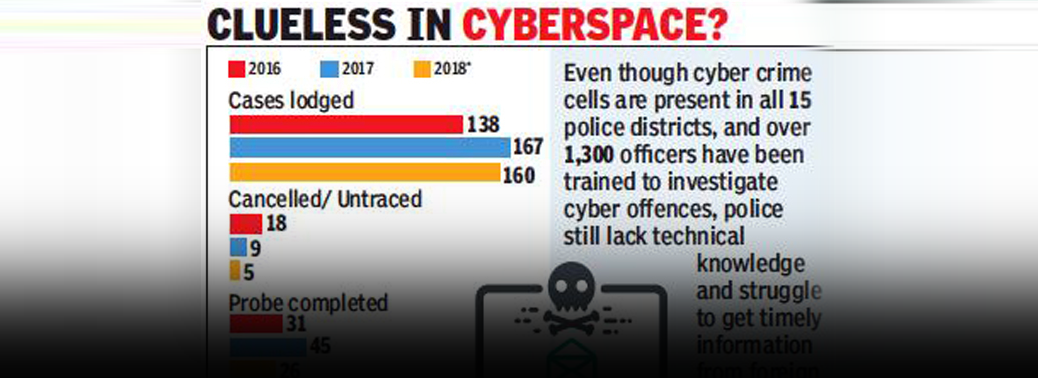
Why in news:
- A ministry of home affairs shows that 91,609 persons were declared ‘illegal foreigners’ by the foriegner tribunals in assam.of these 72,486 are absconding.
Background:
- Assam is the only State that had prepared an NRC in 1951.
- It has also now become the first State to get the first draft of its own updated NRC.
- The Register is meant to establish the credentials of a bona fide citizen as distinguished from a foreigner. This is to detect Bangladeshi migrants who may have illegally entered Assam after the midnight of March 24, 1971.
- This cut-off date was originally agreed to in the 1985 Assam Accord.
NRC:
-
The National Register of Citizens (NRC) is a document manufactured by the Government which contains the names of Indian citizens. The updation of the NRC is a periodical process. It requires to be updated at regular intervals so as to ensure proper documentation of the citizens as well as to check possible illegal migration.
-
In Assam, the updation of NRC could not be carried out since 1951 due to several political compulsions.
What is the procedure?
- To apply for inclusion in the NRC, one’s name or one’s ancestor’s name must be in the 1951 NRC or in any voter list up to the midnight of March 24, 1971, the cut-off date agreed upon in the Assam
- If the applicant’s name is not on any of these lists, he can produce any of the 12 other documents dated up to March 24, 1971, like land or tenancy record, citizenship certificate or permanent residential certificate or passport or court records or refugee registration March 25, 1971 is when the Bangladesh Liberation War began.
- If the applicant’s ancestor’s name is on any of these lists, the applicant will have to prove his relationship to his ancestor by producing his board or university certificate, ration card or any other legally acceptable
- An Indian citizen from another state who moved to Assam after the specified date is not eligible for inclusion in the NRC though he can continue to citizenship Act 1955:
According to citizenship act 1955
- An illegal immigrant is defined as a person who enters India without a valid passport or stays in the country after the expiry of the visa permit.
- An immigrant who uses false documents for the immigration process is also an illegal immigrant. In short, illegal migrants belonging to the Hindu, Sikh, Buddhist, Jain, Parsi or Christian religious communities from Afghanistan, Bangladesh or Pakistan will be imprisoned or deported.
Amendment in Citizenship Act 1995:
- Proposed the law amends the original Citizenship Act of 1955.
- It proposes that Hindus, Sikhs, Buddhists, Jains, Parsis and Christians from Afghanistan, Bangladesh and Pakistan will not be treated as illegal immigrants.
- This is despite them having entered India without valid documents.
- The amendments seek to include a separate column in the citizenship form for applicants belonging to six minority communities from Pakistan, Afghanistan and Bangladesh.
- They will not face deportation as illegal immigrants under the Passport (Entry into India) Act of 1920 and the Foreigners Act of 1946.
- The amendment shortens the period of residency from 12 years (mentioned in the Citizenship Act, 1955) to 7years, for gaining permanent citizenship by naturalization.
- The Bill also empowers the government to cancel registration as OCI in case of any violation of the Citizenship Act or any other laws.
FUGITIVE OFFENDERS ACT WON’T HELP BANKS
02, Apr 2019
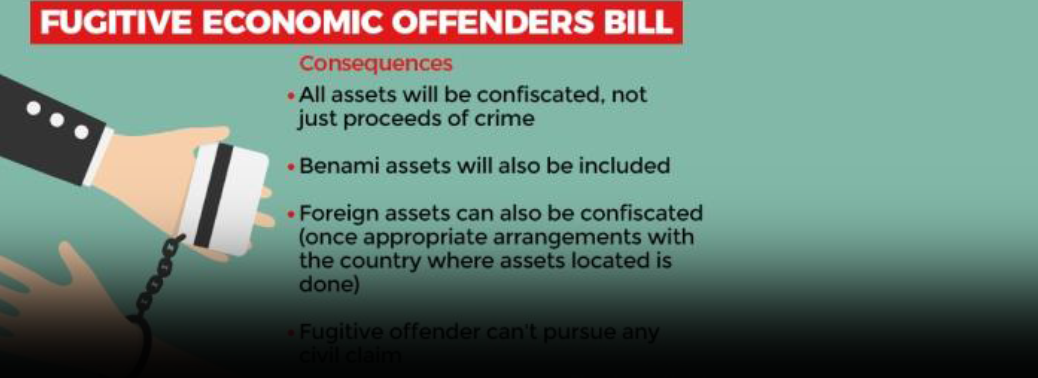
Why in News:
- Liquor baron Vijay Mallya’s lawyer reiterated before the Bombay High Court that the Fugitive Economic Offenders Act (FEOA) was a draconian law that wouldn’t help the creditors.
Background:
Who is a fugitive Offender?
A fugitive economic offender is a person against whom an arrest warrant has been issued for committing offence like:
counterfeiting government stamps or currency, cheque dishonour for insufficiency of funds money laundering
transactions defrauding creditors
A fugitive economic offender is one who has left the country to avoid facing prosecution, or refuses to return to face prosecution.
What comes under Economic offences?
Offences under the following Acts:
- Negotiable Instruments Act,
- Reserve Bank of India Act, 1934.
- Central Excise Act,
- Customs Act,
- Prohibition of Benami Property Transactions Act,
- Prevention of Money Laundering Act,
- Indian Penal
Fugitive offenders act 2018:
- The act aims to curb the practice of evading the criminal prosecution by the economic offenders who flee from the country to stay out of the jurisdiction of Indian courts.
- The act will give the right to the government to confiscate the property of such economic offenders in India and abroad. The act will also be applicable on the proxy-owned properties of the economic offenders. The act defines the economic offenders as those against whom a legal warrant has been issued, but they refuse to adhere to the summons of the legal authorities.
- The law balances itself with a provision that allows the accused to file an appeal in the High Court to state their case. The act keeps the banks and other financial institutions at the Centre and seeks to help them recover the amount. The act will only be used for economic offences over Rs 100 crores. The act makes provisions for a Court (‘Special Court’ under the Prevention of Money-laundering Act, 2002) to declare a person as a Fugitive Economic Offender.
Significance of the act
- There have been several instances of economic offenders fleeing the jurisdiction of Indian courts, anticipating the commencement, or during the pendency, of criminal proceedings.
- The absence of such offenders from Indian courts has several deleterious consequences— first, it hampers investigation in criminal cases; second, it wastes precious time of courts of law; third, it undermines the rule of law in India.
- The act is expected to re-establish the rule of law with respect to the fugitive economic offenders as they would be forced to return to India to face trial for scheduled offences.
- This would also help the banks and other financial institutions to achieve higher recovery from financial defaults committed by such fugitive economic offenders, improving the financial health of such institutions.
- It is expected that the special forum to be created for expeditious confiscation of the proceeds of crime, in India or abroad, would coerce the fugitive to return to India to submit to the jurisdiction of Courts in India to face the law in respect of scheduled offences.
THE ARROGANCE OF THE IGNORANT
01, Apr 2019

Why in News:
- ADIVASI TRIBE who live in Andaman and nicobar islands were hit by Tsunami at 2004 in which thousands lost lives where some of the oldest adivasi tribe such as Jarawas and Onges survived.
Onges Tribe:
- The Onge call themselves En-iregale, which means ‘perfect person’
- They have long lived on Little Andaman Island, the most southerly island in the Andaman archipelago.
- They spend much of their time hunting and collecting honey and they are largely dependent on rations of rice, lentils and other commodities.
- They consider white teeth a sign of a dead body so they chew a bark to turn their teeth red.
- They decorate their bodies and their faces with white and ochre clay.
Jarawas tribe:
- Jarawa tribe live in groups of 40-50 people in chaddhas (as they call their homes). They hunt pig and turtle and fish for food.
- They also gather fruits, wild roots, tubers and honey. Their bows are made from the chooi wood, which does not grow throughout the Jarawa territory.
- They used to sing songs while collecting honey to express their delight
Threats they face:
- The road that cuts through their territory brings thousands of outsiders, including tourists into their land.
- Both local settlers and international poachers enter their rich forest reserve to steal the game the tribe needs to survive.
- They remain vulnerable to outside diseases to which they have little or no immunity. In 1999 and 2006, the Jarawa suffered outbreaks of measles – a disease that has wiped out many tribes worldwide following contact with outsiders.
- The women have been sexually abused by poachers, settlers, bus drivers and others.
RELEASE LIST OF CONVICTED OFFICIALS, CIC ORDERS CUSTOMS DEPARTMENT
01, Apr 2019
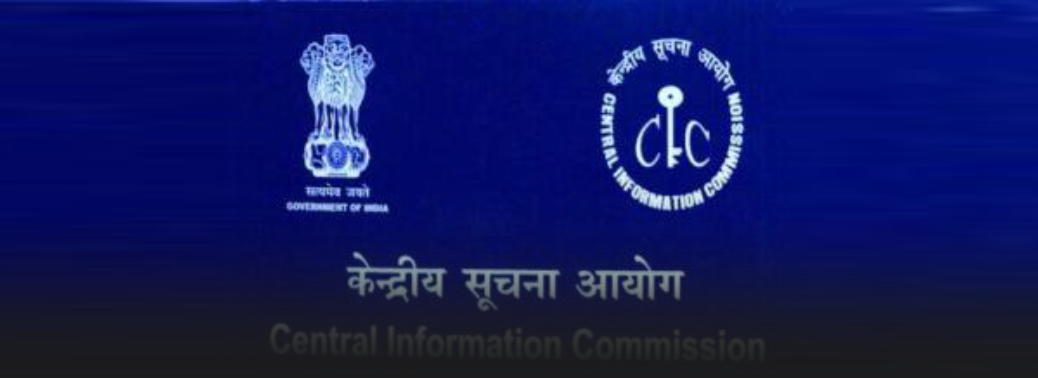
Why in News:
- The Central Information Commission (CIC) has directed the Customs Department to make public a list of officers caught red- handed for smuggling gold and heroin, and other illegal activities
Details:
- The CIC also called for making public about the details of officers convicted or jailed for giving false statements or evidence and such data cannot be considered personal information which should be made available in the public interest.
Central Information Commission (CIC):
- CIC was established by Central Government under provisions of Right to Information Act 2005. Under Section 18 of the Act, it consists of one Chief Information Commissioner, who will head the Commission, and such number of Central Information Commissioners, as may be deemed necessary, but not exceeding ten.
- On 26 October 2005, Mr. Wajahat Habibullah became India’s first Chief Information Commissioner.
Functions:
- It plays important role in maintaining transparency in system of governance essential for healthy democracy. Such kind of transparency aims to curb corruption, nepotism and misuse or abuse of the authority.
- It is a statutory authority to receive and inquire into complaint from any person.
- CIC submits annual report to Union government on the implementation of the RTI Act.
Right to Information Act (RTI)
- Article 19(1) of the Indian Constitution specifies that the Right to Information (RTI) is a part of the fundamental rights. It says that every citizen has freedom of speech and expression. As per the RTI Act, every citizen has the right to receive a timely response from the government for any information regarding functioning of the government.
AIM:
- It aims to promote transparency and accountability in the government Empowerment of the citizens
- Prevention and elimination of corruption
Corrupt public servants must be declared anti-nationals: High Court
29, Mar 2019
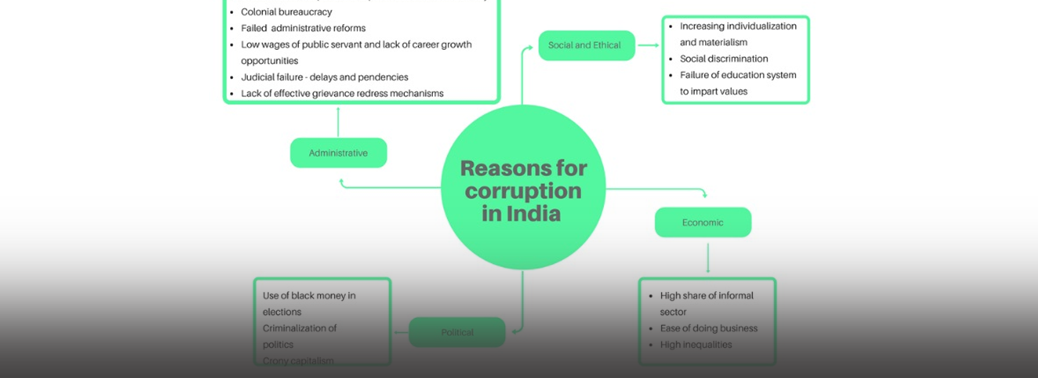
The Madras High Court wished the battle against corruption wins and the corrupt get declared anti-nationals because they obstruct the development of the country.
Bureaucracy and Corruption:
- Criminalization of politics and politicization of bureaucracy presents the perfect cocktail for the misuse of state power. Example of honest officers being witch-hunted like Ashok Khemka and Amitabh Thakur are the indicators of the bigger malaise. Misuse and lack of autonomy for enforcement authorities like CBI, ED, IT-Dept, ACB also undermines the deterrence value of the law
- Colonial bureaucracy: The bureaucracy essentially remains colonial in nature characterized by 19th century laws e.g. Police Act 1861, complex rules, wide discretion, secrecy, moral responsibility devoid of legal accountability and the ivory tower attitude
- Failed reforms:Lack of political will and resistance from within the bureaucracy has led to failure of major reforms like citizen charter, RTI and e-governance.
- Low wages: The remuneration in the public sector remains below par with the private sector along with poor career growth opportunities for those working at the lower levels and harsher working conditions.
- Judicial failure:The judiciary has failed to bring to book the corrupt officials including politicians. The excess protection provided under Article 309 and 310 of the constitution to the civil servants and need of taking the government permission before the prosecution of civil servants further compounds the problem.
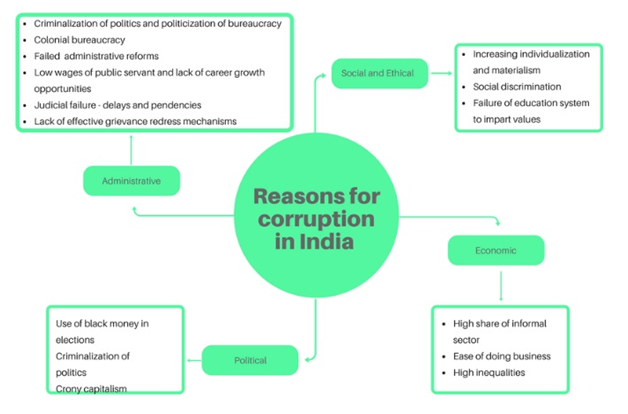
Legal Steps
-
Prevention of corruption Act 1988
- Provides a definition for corruption and lists out the acts which would amount to as corruption such as bribes, gifts for favors etc.
- Seeks to create a balance between need to bring corrupt to the books and protect honest officers. Prosecution of an officer requires sanction from the government
- Includes employees of the central government and the union territories, the employees of public undertakings, nationalized banks etc.
- Special judges are appointed for trial under the act who can order a summary trial in appropriate cases
-
Benami property Act 1988
- Recent amendments have widened the definition of the benami property and allow the government to confiscate such properties without any hassles of court approvals
-
Central Vigilance commission Act 2003
- Gives statutory status to CVC. Central Vigilance Commissioner shall be appointed by President on recommendation of a Committee consisting of the PM, MHA and LoP in LS
- Covers AIS officers, Gazetted officers of center, senior members of the PSB banks etc.
- Commission, while conducting the inquiry has all the powers of a Civil Court
-
Right to Information Act 2005
- Makes disclosure of information a legal right of the public to promote transparency
- Section 4 mandates proactive disclosure of the information and digitization of the records
- Many RTI activists have used it to bring out the irregularities in the functioning of the public authorities e.g. Vyapam scam of MP
-
Whistleblower protection Act 2014
- More than 60 RTI activists have been murdered and many more assaulted due to lack of protection
- WPA accords special protection to the people who disclose the acts of wrongdoing in the government. Provides anonymity and protection from prosecution under acts such as Official secret act 1923
-
Lokpal and Lokayukta Act 2013
- Appoints an independent authority Lokpal at center and Lokayukta at states to probe into the complaints of wrongdoing by the public servants
- Lokpal will be appointed by committee consisting of PM, LoP, CJI, Speaker and an eminent jurist.
Adverse impact of GST leaves Virudhunagar bleeding
29, Mar 2019
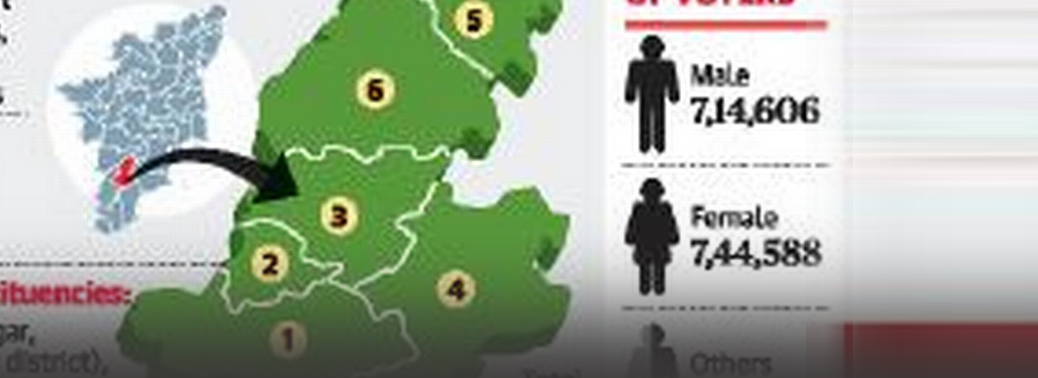
Government policies and interventions for development in various sectors and issues arising out of their design and implementation.
Being part of an arid region, Virudhunagar has witnessed an industrial proliferation in fireworks, matches, printing, power looms and textile sectors.
However, all these industries have faced one problem or the other over the past five years, with the adverse impact of GST regime being a common issue.
Consequent to the Supreme Court order banning production of joined crackers and using Barium Nitrate and mandating manufacture of only green crackers, the industry remained closed for over 100 days after Deepavali. Only a few days before the declaration of poll schedule, the industry resumed work, though with a lot of restrictions.
This is the longest ever closure we faced in the last nine decades. The labour-intensive industry is waiting with crossed fingers over the outcome of experimenting with green crackers.
Negative impact of GST on SMEs:
Multiple registrations for Pan-India businesses
Under the new regime, a business will have to register online for GST in every state involved in its sales process. If your business delivers goods across 5 states, then you’ll have to register for GST in those 5 states to carry out your business activities. Since the entire registration process takes place online, small business owners who are not used to working online might not find the transition easy.
Returns must be filed on a monthly basis
Under GST, there will be around 36 returns in a fiscal year. GST returns will also require you to close your books on a monthly basis, which, realistically, will take a lot of time. The time that business owners spend filing these returns could instead be spent on other productive activities, like developing their business and acquiring clients.
To top it off, until you’ve filed the relevant returns, you cannot claim refunds and your customers cannot claim tax credit for the goods they bought from you. Should you miss a single return, you’ll be penalized Rs.100/- a day and your compliance rating on the GSTN portal will be reduced.
Cost of tax compliance is likely to increase
As mentioned above, consistently filing 3 returns a month, periodically reconciling your transactions, and uploading invoices regularly will give rise to the need for an accountant with technical expertise. Hiring an accountant and paying them, adds to the burden on small businesses. It’s tedious to maintain separate books of accounts for every state involved in the supply of goods/services and assess the records of various entities involved in every single transaction. To cope with the system, small businesses might use the services of licensed third parties that help firms comply with the GST regime. For this convenience, small businesses will have to dish out a sum ranging from Rs.1000-Rs.5000, depending on the kind of service that is rendered to them.
Registration will be mandatory for e-commerce suppliers and operators
Businesses carrying out activities related to e-commerce should register under GST irrespective of their annual turnover rate. Unlike other types of businesses, e-commerce firms will not be eligible for threshold exemptions or for the Composition Scheme (which allows firms to file their tax returns on a quarterly basis instead of 3 times a year and pay taxes at a much lower rate).
Also, e-commerce firms should register for GST in every single state where they supply goods.
Overall, GST simplifies the entire process of filing and paying taxes. It will also increase the competition between SMEs by unifying the Indian market. If you’re proactive and take care of your GST compliance measures beforehand, you can minimize the potential negative effects of the new regime on your business. In the long term, GST is expected to have a positive impact on SMEs and the Indian economy as a whole.
Court’s Order:
- The ban came on the basis of a petition filed by two infants through their fathers in 2015.
- They said the air pollution caused by various factors, especially firecrackers, made Delhi a gas chamber and pleaded for their right to life.
- Time– The Supreme Court restricted the use of fireworks during Deepavali and other festivals to an 8-10 pm window.
- For Christmas and New Year, the time slot allowed is half-an-hour, between 11.55 p.m. and half-past midnight.
- Manufacture– The court banned crackers that are loud and toxic to man, animal and the environment.
- It banned the manufacture, sale and use of joined firecrackers (series crackers or ‘laris’).
- It held that they caused “huge air, noise and solid waste problems.”
- It allowed the manufacture and sale of only “green” and reduced-emission or “improved” crackers.
- Sale– The sale of green and improved crackers would be only through licensed traders.
- The court banned the online sale through e-commerce websites, including Flipkart and Amazon.
- Any e-commerce company selling crackers online would amount to contempt of court.
- It may also invite orders of monetary penalties from the court.
- Community– The court urged the Central and State governments to permit “community” bursting of crackers during festivities in pre-designated areas.
- In the case of Delhi and the National Capital Region (NCR), the court made it mandatory.
- It gave the Centre, the Delhi and other State governments, whose areas fall within the NCR, a week’s time to identify these pre-designated areas.
- It directed that the public should be informed about the designated places a week before Diwali.
- Violation– Local Station House Officers would be held personally liable and hauled up for contempt by the court if there was any violation of the judgement.
- This applies both to the time slots for bursting crackers and the sale of banned crackers.
- PESO– The court banned the use of barium salts in fireworks.
- It entrusted the Petroleum and Explosives Safety Organisation (PESO) in this regard.
- PESO will have to ensure that only fireworks with permitted chemicals are sold or purchased during festivities or celebrations.
- It should also test and check for the presence of banned chemicals like lithium/arsenic/antimony/lead/mercury.
- It has to ensure that only those crackers whose decibel (sound) levels were within the limits are allowed in the market.
- PESO has been empowered to suspend the licences and appropriately dispose of stocks of manufacturers who violated the court’s directions.
What is the court’s rationale?
- The court rejected arguments that bursting crackers was a fundamental right.
- It also ruled it out as being an essential practice during religious festivals like Diwali.
- It held that Article 25 (right to religion) is subject to Article 21 (right to life).
- So a religious practice that threatens the health and lives of people is not entitled to protection under Article 25.
- The ruling has thus struck a balance between two rights –
- right of the petitioners under Article 21 (right to public health).
- right of the manufacturers and traders under Article 19(1)(g) (right to practice any profession or to carry on any occupation, trade or business).
What are “Green crackers”?
- “Green crackers” do not contain harmful chemicals that would cause air pollution.
- Components in firecrackers are replaced with others that are less dangerous and less harmful to the atmosphere.
- The idea was initially proposed by Science & Technology Minister Harsh Vardhan.
- It was carried forward by a network of CSIR labs – Central Electro Chemical Research Institute (CECRI), Indian Institute of Chemical Technology, National Botanical Research Institute, National Chemical Laboratory.
- The team came up with 3-4 formulations and looked at 30-40% of active materials which reduce particulate matter.
- CSIR-CECRI has developed flower pots by using “eco-friendly materials” that can potentially reduce particulate matter by 40%.
- CSIR-NEERI is testing the efficacy of bijli crackers by “eliminating the use of ash as desiccants”.
- Potential sound-emitting functional prototypes that do not emit sulphur dioxide were also developed.
- These crackers are named as Safe Water Releaser (SWAS), Safe Thermite Cracker (STAR) and Safe Minimal Aluminium (SAFAL).
- These have the unique property of releasing water vapour and/or air as dust suppressant and diluent for gaseous emissions.
- The Petroleum and Explosives Safety Organisation is testing and analysing these crackers for safety and stability.
SC to hear plea against 10% economic quota
29, Mar 2019
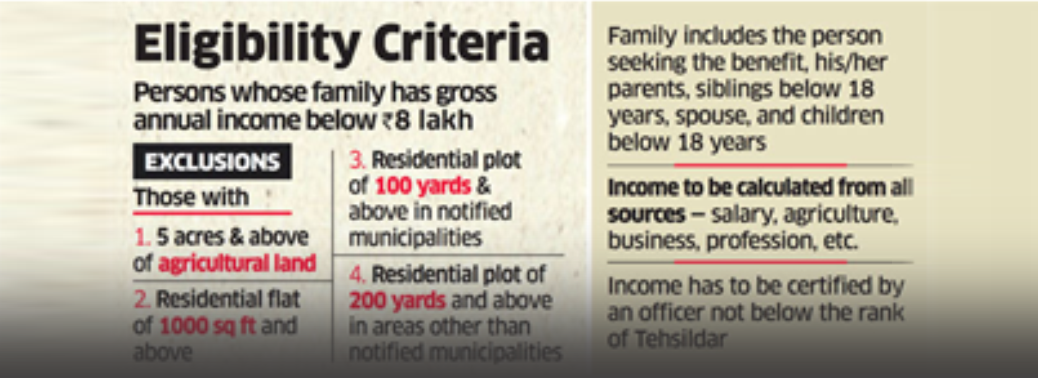
The Supreme Court agreed to expeditiously hear pleas for it to step in before government bodies like the Railways, one of the largest public sector employers, implement the 10% economic quota to make what the petitioners termed massive appointments.
If the Supreme Court rejects the idea, the reservation can be provided only by eating into the SC, ST and OBC quota share
Who will the new 10% quota apply to?
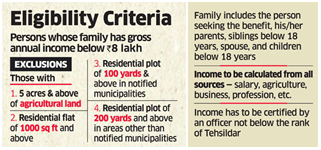
To all those who are not covered in existing quotas and have a family income below 8 lakh a year or agricultural land below 5 acres. Those who have a house above 1,000 square feet or a 100-yard plot or above in a notified municipal area or a 200-yard plot or above in a non-notified municipal area are not eligible.
What steps are necessary for its implementation?
The 124th Constitution Amendment Bill, 2019, which the Lok Sabha debated on Tuesday, will have to be passed by both Houses of Parliament by a special majority of two-thirds of the members present and voting, which should not be less than one-half of the total strength of the House. If it is not passed by both the Houses within the term of this Lok Sabha, it will lapse. The Bill will also have to be ratified by at least half the State Assemblies.
Once the Constitution is amended to add economic backwardness as a ground for reservations, it will most likely have to stand the test of judicial scrutiny, as the Supreme Court had in the Indra Sawhney case capped quotas at 50% of the available seats.
What are the future implications, should the Bill stand judicial scrutiny?
If the Supreme Court indeed agrees to lift the 50% cap, all States of India can extend the quantum of reservation and “upper castes” will stand to lose in State services.
If the Supreme Court rejects the idea of breaching the 50% cap, Economically Weaker Section (EWS) quotas can be provided only by eating into the SC, ST and OBC quota pie, which will have social and political implications.
How will it help the economically less prosperous “upper caste” Hindus and such groups in other communities?
It’s complicated question. If the EWS is treated as a category just like the SC, ST and OBC, a large chunk of general category candidates will apply for just 10% seats and the cut-offs can rise.
While ideally the non-reserved 40% open seats should be open seats based on merit, there are complexities here too. For example, the UPSC accepts a reserved candidate in the civil services examination making it in the general merit list as general only if she has not benefited from reservation in the preliminary, mains, service choice (if one gets a better service, say IAS or IPS, due to reservation, one is counted as reserved irrespective of one’s overall rank) and State cadre choice (if a reserved candidate is in the general merit list but is getting a cadre of her choice as a reserved candidate, she is counted as reserved), say bureaucrats.
So, many who are above the general cut-off may still occupy this 10% quota, as they get a better service or cadre in it.
It is possible that a provision will be made for accommodating those who fall below the 10% EWS quota in case its cut-off is above the general cut-off due to fewer seats in the open, or general, seats, but this can give rise to litigation.
What are the political implications of this move?
Upper castes may react positively to the move, but they are believed to be largely with the BJP anyway.
The move may have some appeal to upper castes in States where the BJP is weak, but one does not know the extent of the political benefit.
The moot question is the impact on the existing reserved categories in States where the BJP is strong and takes a chunk of OBCs.
While the government says the quota will be above the existent 50% reservation, the Supreme Court-mandated cap may make some OBCs wary, as they may feel it may eat into their pie in case the apex court refuses to relax the cap.
DEPOSITS ORDINANCE DOES NOT COVER GOLD SCHEMES
28, Mar 2019

- The Centre’s recent ordinance banning unregulated monthly deposit schemes will not affect the ongoing monthly schemes operated by jewellery and chit fund firms.
- Banning of Unregulated Deposit Scheme Ordinance was promulugated by President Ram Nath Kovind to save gullible investors from losing money to Ponzi and fake deposit schemes. The ordinance makes such unregulated deposit schemes punishable, among other things.
Banning of Unregulated Deposit Scheme Ordinance
Features of the Bill
- The Bill bans Deposit Takers from promoting, operating, issuing advertisements or accepting deposits in any Unregulated Deposit Scheme.
- The Bill ban unregulated deposit-taking activities altogether, by making them an offence. The existing legislative-cum-regulatory framework only comes into effect ex-post with considerable time lags; The Bill creates three different types of offences, namely, running of Unregulated Deposit Schemes, fraudulent default in Regulated Deposit Schemes, and wrongful inducement in relation to Unregulated Deposit Schemes.
- The Bill provides for severe punishment and heavy pecuniary fines to act as a deterrent.
- The Bill provides for repayment of deposits in cases where such schemes nonetheless manage to raise deposits illegally.
- The Bill provides for attachment of properties/assets by the Competent Authority, and subsequent realization of assets for repayment to depositors.
- Timelines have been provided for attachment of property and restitution to depositors.
- The Bill enables the creation of an online central database, for collection and sharing of information on deposit-taking activities in the country;
- The Bill also defines “Deposit Taker” and “Deposit” comprehensively.
Definition of “Deposit Taker” and “Deposit” under the Bill
- Deposit Takers include all possible entities (including individuals) receiving or soliciting deposits, except specific entities such as those incorporated by legislation; Deposit is defined in such a manner that deposit-takers are restricted from camouflaging public deposits as receipts, and at the same time, not to curb or hinder acceptance of money by an establishment in the ordinary course of its business.
Ponzi scheme
- A Ponzi scheme is an investment fraud where clients are promised a large profit in short term at little or no risk at all.
- Companies engaged in a Ponzi schemes mainly focus all of their energies into attracting new clients to make investments.
- This new investments (income) are used to pay original investors their returns, marked as a profit from a legitimate transaction.
- Ponzi schemes mainly rely on a constant flow of new investments to provide returns to older investors. When this flow runs out, the scheme falls apart.
IRANIAN DRUG SMUGGLERS NABBED IN OPERATION OFF GUJARAT COAST
28, Mar 2019

- Iranian nationals who were smuggling heroin were nabbed in a sensational mid-sea operation jointly conducted by the Indian Coast Guard (ICG) and Gujarat’s Anti-Terrorist Squad (ATS) off the Gujarat coast. Their boat was intercepted by the Indian agencies off Porbandar Coast in the Arabian Sea and 100 kg of heroine worth around Rs. 500 crores were recovered was sent by a Pakistani national Hamid Malek.
- It was loaded off the Gwadar port of Pakistan.
Golden Triangle (Southeast Asia)
- One of Asia’s two main opium-producing areas.
- It is an area of around 950,000 square kilometres (367,000 sq mi) that overlaps the mountains of three countries of Southeast Asia: Myanmar, Laos and Thailand.
- Most of the world’s heroin came from the Golden Triangle until the early 21st century when Afghanistan became the world’s largest producer.
- The Golden Triangle designates the confluence of the Ruak River and the Mekong River, since the term has been
- appropriated by the Thai tourist industry to describe the nearby border tripoint of Thailand, Laos and Myanmar.
Golden Crescent
- The Golden Crescent is the name given to one of Asia’s two principal areas of illicit opium production (with the other being the Golden Triangle), located at the crossroads of Central, South, and Western Asia.
- This space overlaps three nations, Afghanistan, Iran, and Pakistan, whose mountainous peripheries define the crescent.
Anti – Terrorist Squard:
- The Anti-Terrorism Squad (ATS) is a special police force in several states of India including Maharashtra, Gujarat, Kerala, Uttar Pradesh, Rajasthan and Bihar.
- ATS was founded in Maharashtra in 1990 by then Additional Commissioner of Mumbai Police Aftab Ahmed Khan popularly known as A.A. Khan.
- He was inspired by the Los Angeles Police Department’s Special Weapons & Tactics (SWAT) teams methods to combat modern-day terrorism. Since its formation in 1990, ATS’s officers have won 23 gallantry awards. The Mumbai ATS was involved in the 26 November 2008 hostage rescue operations in multiple locations in Mumbai, Maharashtra including the 5 star hotels Taj and Oberoi Trident. After the attacks, it also started appointing children (ages above 12) as officers of ATC, particularly in Mumbai, which were given training as undercover.
SHRC SEEKS REPORT ON TRANSFUSION DEATHS
28, Mar 2019
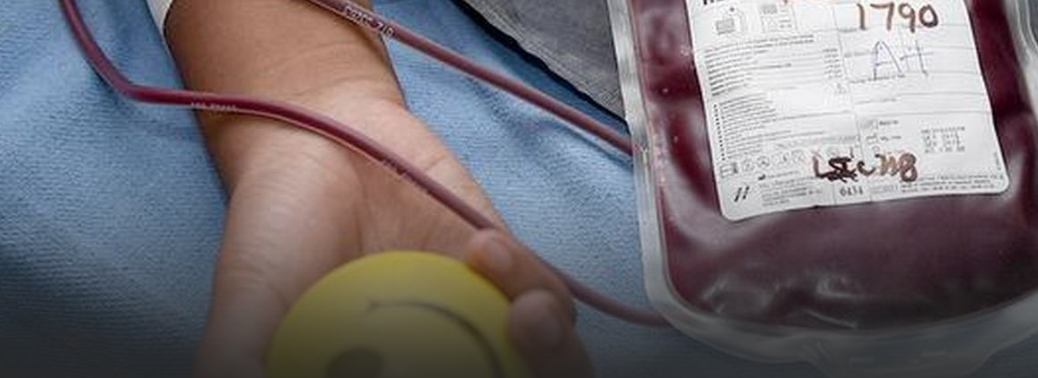
- Taking suo moto cognisance of media reports on maternal deaths due to blood transfusion,
- the State Human Rights Commission (SHRC) has issued notices to officials in the Department of Health and Family Welfare, seeking a report on the incident within two weeks.
Background:
- During a maternal death audit, officials found a higher number of deaths due to haemolytic reactions at the Government Medical College Hospitals.
Human Rights Commission:
- The Protection of Human Rights Act of 1993 provides for the creation of not only the National Human Rights Commission but also a State Human Rights Commission at the state level.
Jurisdiction:
- A State Human Rights Commission can inquire into violation of human rights only in respect of subjects mentioned in the State List (List-II) and the Concurrent List (List-III) of the Seventh Schedule of the Constitution. However, if any such case is already being inquired into by the National Human Rights Commission or any other Statutory Commission, then the State Human Rights Commission does not inquire into that case.
Composition:
- The State Human Rights Commission is a multi-member body consisting of a chairperson and two members.
- The chairperson should be a retired Chief Justice of a High Court and members should be a serving or retired judge of a High Court or a District Judge in the state with a minimum of seven years of experience as District Judge and a person having knowledge or practical experience with respect to human rights.
- The chairperson and members are appointed by the Governor on the recommendations of a committee consisting of the chief minister as its head, the speaker of the Legislative Assembly, the state home minister and the leader of the opposition in the Legislative Assembly.
- In the case of a state having Legislative Council, the chairman of the Council and the leader of the opposition in the Council would also be the members of the committee.
- A sitting judge of a High Court or a sitting District Judge can be appointed only after consultation with the Chief Justice of the High Court of the concerned state.
Term:
- The chairperson and members hold office for a term of five years or until they attain the age of 70 years, whichever is earlier.
- After their tenure, the chairperson and members are not eligible for further employment under a state government or the Central government.
Appointment and Removal:
- Although the chairperson and members of a State Human Rights Commission are appointed by the governor, they can be removed only by the President (and not by the governor).
- The President can remove them on the same grounds and in the same manner as he can remove the chairperson or a member of the National Human Rights Commission
SC FOR AS FEW TRIBUNALS AS POSSIBLE
28, Mar 2019
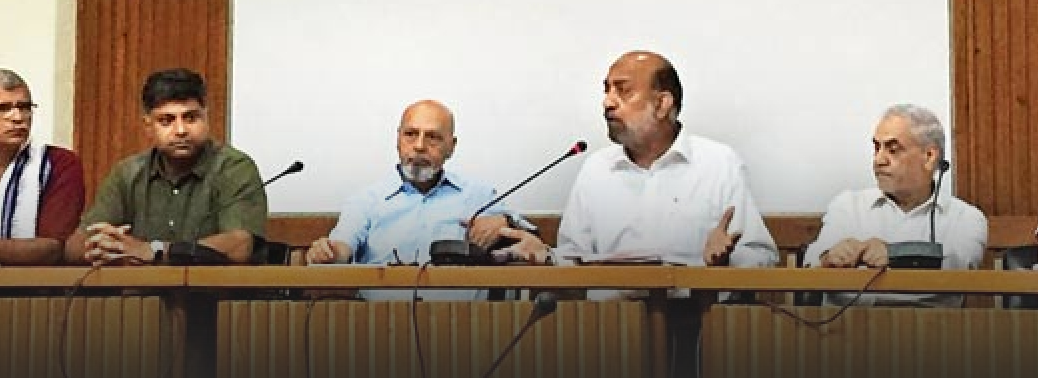
- Chief Justice of India Ranjan Gogoi said the numerous tribunals, once meant to lighten the burden of high courts across the country, have now become virtually non-functional,crippled by a chronic lack of infrastructure, manpower and an irregular appointment mechanism.
Tribunals in India:
- Tribunals were added in the Constitution by Constitution (Forty-second Amendment) Act, 1976 as Part XIV-A, which has only two articles viz. 323-A and 323-B. While article 323-A deals with Administrative Tribunals; article 323-B deals with tribunals for other matters.
- In general sense, the ‘tribunals’ are not courts of normal jurisdiction, but they have very specific and predefined work area.
- The administrative tribunals are not original invention of the Indian Political System. They are well established in all democratic countries of Europe as well as United States of America.
Armed Forces Tribunal
Principal Bench – New Delhi
- Benches: Mumbai, Lucknow, Chennai, Kochi, Jaipur, Guwahati, Kolkata, and Chandigarh The AFT or armed Tribunal was established for the settlement of the disputes and grievances about appointments, commission, staffing and service situations in respect of those concealed by the Three Services Act, and hearing of appeals budding out of orders, verdicts or sentences of court-martial. The tribunal will have appellate jurisdiction in court- martial matters and original jurisdiction in service matters.
National Green Tribunal
Principal Bench – New Delhi
- Benches: Kolkata, Chennai, Bhopal and Pune
- The National Green Tribunal / NGT is set up for the effective and speedy clearance of cases relating to environmental protection and preservation of forests and other natural resources comprising an implementation of any legal right concerning to environment and giving assistance and compensation of damages to individuals and property and for problems related therewith.
Central administrative tribunal
Principal bench – New Delhi
- Benches: Jabalpur, Ahmedabad, Ranchi, Bengaluru, Lucknow, Mumbai, , Cuttack, Nagpur, Kolkata, Chandigarh, Cochin, jodhpur, Jaipur, Guwahati, Hyderabad, Gwalior, Indore, Chennai, Patna, and Allahabad. The Central Administrative Tribunal is set up for settlement of disputes with respect to recruitment and conditions of service of individuals appointed to public services and posts in association with the affairs of the Union or other local establishments within the territory of India or under the control of Government of India and for matters related therewith. This was done in the enactment of the amendment of Constitution of India by Articles 323A.
Railway Claims Tribunal
Principal Bench – New Delhi
- Benches: Chennai, Ahmedabad, Secunderabad, Bhubaneswar, Calcutta, Ernakulam, Bhopal, Chandigarh, Nagpur, Guwahati, Bangalore, Ghaziabad, Jaipur, Lucknow, Mumbai, Patna, and Gorakhpur
- Railway Claims Tribunal was established for the quick arbitration, giving assistance to rail users by way of prompt payment of reimbursement to the fatalities of rail accident or unfortunate incident, repayment of fare and freight and compensation to those whose good are mislaid while with railways.
Drawbacks in functioning of Tribunals
- Tribunals operate under the thumb of parent administrative ministries against whom many of them are meant to pass orders, therefore remaining at their mercy with visible and invisible strings for facilities, infrastructure and also rule-making.
- The secretary of the said Ministry sits on the panel for selecting and reappointing the adjudicating members and also has a role to play in disciplinary committees. For instance, the defence secretary is a part of the committee for selection and re-appointment of members of the Armed Forces Tribunal, and the said secretary is that very officer against whom all tribunal orders are to be passed.
- Under the garb of providing cheaper and informal adjudication, appeals have been provided, on very limited grounds, directly to the Supreme Court from some tribunals making access to justice a far call with some litigants accepting injustice rather than challenging orders simply because they cannot afford prohibitive costs of litigation in the apex court. Persons who at times have served as part of the same ministries are appointed as members and who carry with them their own personal experiences and over-familiarity making justice subjective as compared to judges who bear no such baggage and are trained to be objective. A majority of non-judicial members are not legally qualified and hence are not even eligible to appear before such tribunals while they are allowed to exercise judicial functions while sitting on the bench. Some tribunals are not even vested with powers of civil contempt thereby leaving them toothless qua enforcement.
IN 2018, OFFICIAL SECRETS ACT INVOKED IN 5 CASES
28, Mar 2019
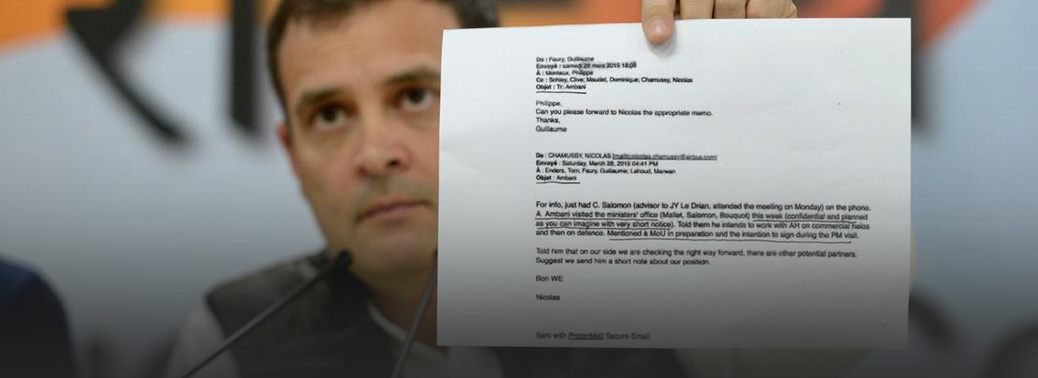
- The Ministry of Home Affairs (MHA) issued five prosecution sanction orders last year under the Official Secrets Act (OSA), 1923.
Official Secrets Act:
- It is India’s anti espionage (Spy” and “Secret agent”) act enacted in 1923 during the British Rule. It states clearly that any action which involves helping an enemy state against India is illegal. It also states that one cannot approach, inspect, or even pass over a prohibited government site or area.
- According to this Act, helping the enemy state can be in the form of communicating a sketch, plan, model of an official secret, or of official codes or passwords, to the enemy.
- The disclosure of any information that is likely to affect the sovereignty and integrity of India, the security of the State, or friendly relations with foreign States, is punishable by this act.
- Punishments under the Act range from three to fourteen years imprisonment. A person prosecuted under this Act can be charged with the crime even if the action was unintentional and not intended to endanger the security of the state. The Act only empowers persons in positions of authority to handle official secrets, and others who handle it in prohibited areas or outside them are liable for punishment.
Conflict with the RTI Act:
- In Clause 6 of the Official Secrets Act, information from any governmental office is considered official information, hence it can be used to override Right to Information Act 2005 requests. This has drawn harsh criticism.
ELECTORAL BONDS WILL AFFECT TRANSPARENCY, EC TELLS SC
28, Mar 2019
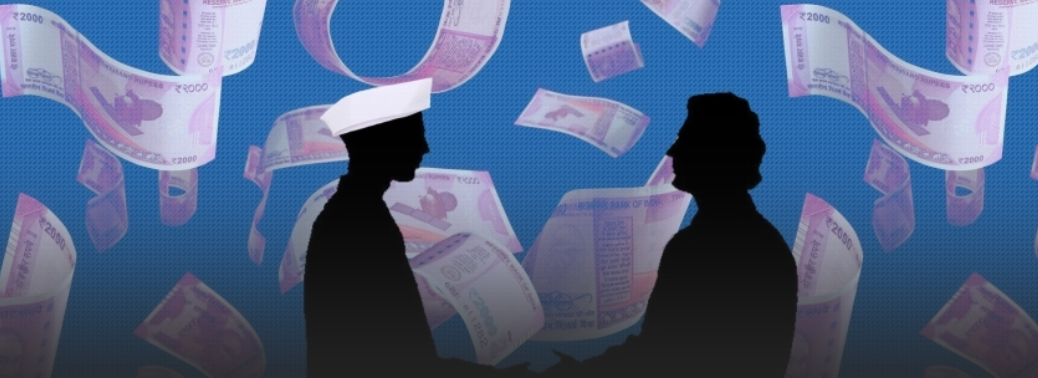
- The Election Commission of India (ECI) has told the Supreme Court that electoral bonds, contrary to government claims, wreck transparency in political funding.
- Coupled with the removal of cap on foreign funding, they invite foreign corporate powers to impact Indian politics.
Electoral bonds Scheme:
- The electoral bonds scheme was announced in Union Budget 2017 with an aim for increasing transparency in political funding.
- It makes India first country in the world to have such unique bonds for electoral funding. These bonds are bearer instrument in nature of promissory note and interest-free banking instrument.
- It aims at rooting out current system of largely anonymous cash donations made to political parties which lead to generation of black money in the economy.
- These electoral bonds can be bought for any value in multiples of Rs 1,000, Rs 10,000, Rs 1 lakh, Rs 10 lakh or Rs 1 crore after fulfilling all existing Know Your Customer (KYC) norms and making payments from bank account.
- It will not carry name of payee.
- The bond deposited by any eligible political party to its account shall be credited on the same day.
- No payment shall be made to any payee political party if bond is deposited after expiry of validity period.
- Eligible political parties can encash electoral bonds only through their bank accounts. Electoral Bonds may be purchased by only citizen of India.
- An individual can buy Electoral Bonds, either singly or jointly with other individuals. Electoral Bonds are valid for fifteen calendar days from the date of issue.
- Only registered political parties, that have secured not less than 1% of votes polled in last election of Lok Sabha or legislative assembly of state, will be eligible to receive electoral bonds.
- The cash donation has been capped at Rs. 2000 and beyond that donations are via electoral bonds.
Demerits of Electoral Bonds:
- RBI s autonomy the government had to amend RBI act in order to issue these bonds as bearer bonds have the characteristics of currency notes which are issued solely by the central bank. The amendment however will amount to fragmenting of the notes issuing power of the RBI particularly at a time when its autonomy is being questioned over its tacit acceptance of Demonetization.
- No Transparency The bonds are not registered in the name of a specific person as a result donation through electoral bonds continue to provide anonymity to donors.
- Could be used as conduit for money laundering and hoarding black money Since these bonds continue to provide anonymity to holders, they can be misused much like the Indira Vikas Patras floated as development bonds in 1987 that fell into disrepute owing to similar reasons.
- These will also facilitate round tripping that is rerouting of illicit funds that originate in India, back into the country through a tax haven. Here, it must be noted that India ranks at 19 in a list of 180 countries that figured in the Paradise paper leaks that listed out individuals and companies that moved finances to off-shore locations to evade taxes. Electoral bonds offer secrecy and will encourage such tax evasion.
- Anti- democratic Law Commission in its 255th report pointed out that secrecy and anonymity provide fertile grounds for lobbying and capture of governments by big donors. Electoral bonds therefore will be instruments that ensure government of the few.
- Non- disclosure to Election Commission While RoPA,1951 specifies that donations received by political parties in sums greater than Rs 20,000 be disclosed to the tax authorities, the Finance Bill,2017 explicitly provides an exemption from this clause to electoral bonds. This mars the very purpose of cleaning up electoral finance.
- Not enough secrecy Another concern raised by political parties against electoral bonds is that the incumbent government can easily find out donor details using KYC details shared with banks. This could make the instruments unpopular.
Election Commission of India:
- Election Commission of India is a permanent body entrusted for the conduct of free and fair elections.
- An independent Election Commission has been provided for in Article 324 of the Constitution of India.
- Currently has three members including Chief Election Commissioner (CEC). They all are appointed by the President for a term which is fixed by the President.
- Tenure: The service conditions and tenure of office of CEC and Election Commissioners are determined by Act of parliament titled The Chief Election Commissioner and Other Election Commissioners (Conditions of Service) Act, 1991.
- This act has fixed their term for 6 years or till age of 65 years, whichever is earlier. Power/salary: The CEC and election commissioners have equal power and receive equal salary, allowances and other perquisites, which are similar to judge of Supreme Court. In case of difference of opinion amongst the Chief Election Commissioner and Election Commissioner, the matter is decided by the Commission by majority.
- One of the most important functions of the election commission is to prepare an up-to-date list of all the persons who are entitled to vote at the elections.
- Election Commission is entrusted with :
-
- Election of President;
- Election of Vice-President;
- Election of Lok Sabha as well as Rajya Sabha;
- Elections to State Legislatures as well as Legislative Councils;
- Reservation of Seats in Lok Sabha and State Legislatures;
- Qualifications of the MPs and MLAs;
- Determination of population for purposes of the
USE OF NSA IN COW SLAUGHTER CASES WRONG
27, Mar 2019
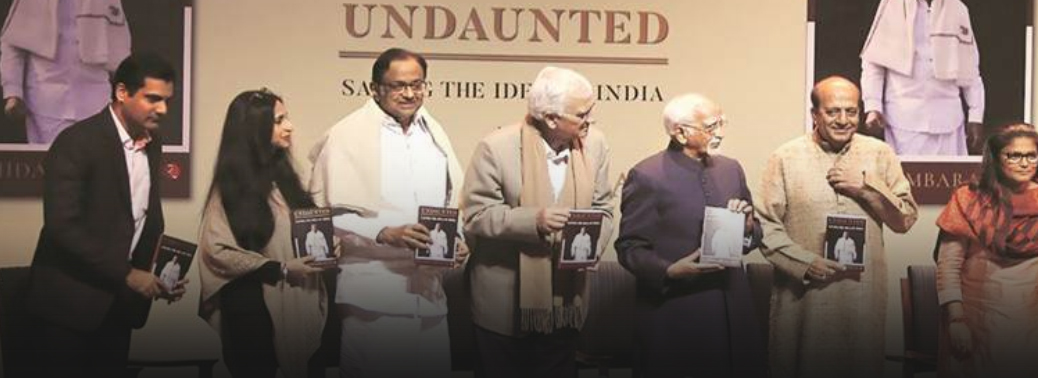
- Use of the National Security Act (NSA) in the cases of suspected cow slaughter was wrong and would not be repeated.
Cow Vigilantism:
- Self-proclaimed ‘Gau Rakshaks’ attacking people under the pretext of carrying beef with the slightest doubt.
- Justification of such actions on pretext of implementing Article 48 of Directive Principle of State Policy (DPSP) -“State shall organize agriculture and animal husbandry on modern scientific lines; take steps to preserve and improve breeds and prohibit slaughter of cows, calves and other mulch and draught animals.
- Animal husbandry is a State subject and several states made laws of varying degrees. Supreme Court in Mohd Qureshi vs State of Bihar, 1958 upheld the ban taking into account the economical conditions stating that there should not be any slaughter of useful cattle. Moreover, in 2005 Supreme Court ruled that all the cattle are useful.
- In May 2017, the Central Government brought out a notification that no cattle can be traded for slaughter in the market.
- Recently, PM voiced his opinion at the difference between cow protection and cow vigilantism. He remarked that 70-80 percent of Gau Rakshaks are anti-social and are taking laws into their hands.
National Security Act
- The National Security Act of 1980 is an act of the Indian Parliament whose purpose is “to provide for preventive detention in certain cases and for matters connected therewith”. Theact extends to the whole of India except the State of Jammu and Kashmir. It was passed during the Charan Singh Government.
- This act empowers the Central Government and State Governments to detain a person to prevent him/her from acting in any manner prejudicial to the security of India, the relations of India with foreign countries, the maintenance of public order, or the maintenance of supplies and services essential to the community it is necessary so to do.
- The act also gives power to the governments to detain a foreigner in a view to regulate his presence or expel from the country.
- The other enactments relating to national security are the Unlawful Activities (Prevention) Act, 1967, the Criminal Law Amendment Act, the Official Secrets Act, 1923, Chapters 6 and 7 of the Indian Penal Code etc.
- India had a long history of preventive detention laws like the Defence of India Act of 1858, The Government of India Act of 1935, the Preventive Detention Act of 1950, the Maintenance of Internal Security Act in 1971 and the NSA in 1980.
- The only period in the Indian “republic without any preventive detention law was the three- year period, beginning with the repeal of MISA in 1977 to the promulgation of the NSA in 1980.
- The maximum period of detention is 12 months, but the detention should be reported to the State Government along with the grounds on which the order has been made. No such order shall remain in force for more than twelve days unless approved by the State Government.
VERY, VERY SERIOUS MATTERS IN CBI REPORT ON SARADHA CASE: SC
27, Mar 2019
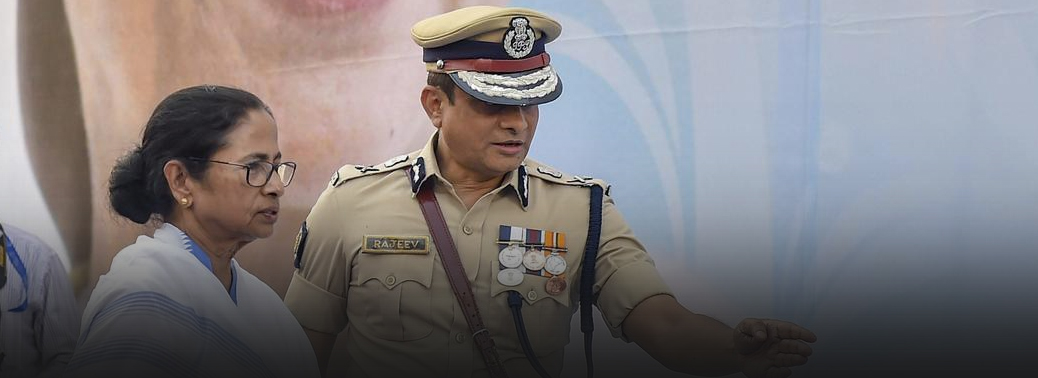
The Supreme Court asked whether it is expected to close its eyes, “suppose if some very very serious matters” come to light.
Brief about the case:
- The court’s observation came after perusing the CBI’s status report on the examination of former Kolkata Police Commissioner Rajeev Kumar in Shillong in connection with the multi- crore ponzi scam cases, including the Saradha and Rose Valley scandals. A three-judge Bench, led by Chief Justice Ranjan Gogoi, however refrained from making any comments on the contents.
What is Ponzi scheme?
- A Ponzi scheme is an investment fraud where clients are promised a large profit in short term at little or no risk at all. Companies engaged in a Ponzi schemes mainly focus all of their energies into attracting new clients to make investments.
- This new investments (income) are used to pay original investors their returns, marked as a profit from a legitimate transaction. Ponzi schemes mainly rely on a constant flow of new investments to provide returns to older investors. When this flow runs out, the scheme falls apart.
Central Bureau of Investigation (CBI)
- CBI is the foremost investigative police agency in India.
- It is non constitutional and non-statutory body.
- It derives power to investigate from the Delhi Special Police Establishment Act, 1946 It was established in 1941 as the Special Police Establishment.
- It was renamed to present nomenclature in 1963.
- Headquarters: New Delhi.
- Motto: Industry, Impartiality, Integrity.
- It is headed by Director, an IPS officer of DGP rank.
- He is selected as per the provisions of Central Vigilance Commission (CVC) Act, 2003
- The CBI Director is selected by a collegium comprising Prime Minister, Chief Justice of India and Leader of Opposition or leader of the largest party in opposition in Lok Sabha.
LIQUOR, CASH, FREEBIES SWING VOTES: ADR SURVEY
26, Mar 2019
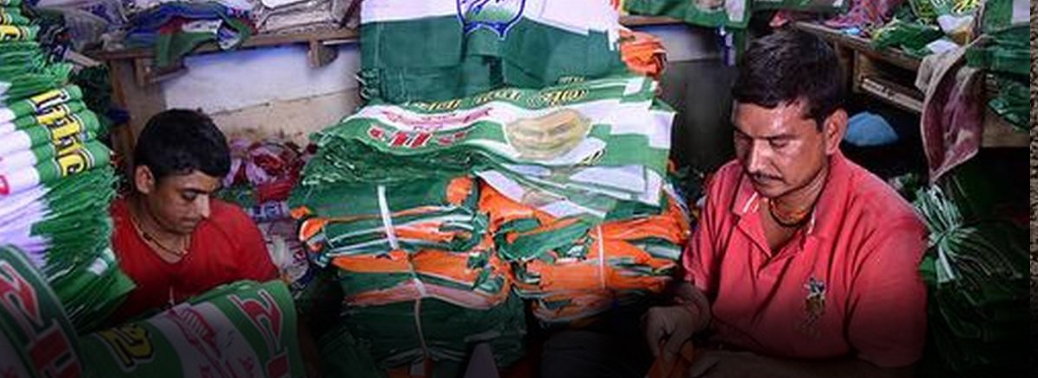
- A nationwide survey involving more than 2.7 lakh people revealed that for 41.34% respondents, distribution of liquor, cash and freebies was an important factor behind voting a particular candidate in an election, according to the Association for Democratic Reforms.
- This is the third all-India survey commissioned by the ADR. A total of 2,73,487 people across 534 Lok Sabha constituencies participated in it.
- Though 97.86% interviewees felt that candidates with criminal background should not be in Parliament or State Assembly, 35.89% were willing to vote for a candidate with criminal records if the candidate had done good work in the past.
- The survey has indicated that better employment opportunities and healthcare remain among the top priorities of voters. The respondents rated the government’s performance on 31 listed issues as below average.
Support for Public Needs:
- On a scale of one to five, the respondents gave an average of 2.58 for better public transport, followed by 2.53 on the issue of electricity for domestic use and 2.52 for drinking water. The government’s performance on initiatives against river and lake water pollution was rated as 2.51; 2.48 for empowerment of women and security; just 1.37 on eradication of corruption; and 1.15 on the issue of terrorism.
- As regards better employment opportunities, the interviewees gave a rating of 2.15; and on better health care, it was 2.35. They rated the government’s performance as 2.18 for availability of water for agriculture; 2.15 for agri-loan availability; and 2.23 for higher price realisation for farm products.
- All throughout the survey better employment opportunities and better healthcare remain amongst the topmost voters’ priorities. Also, these two voters’ priorities have continued to remain at the top at all India level since 2017.
As per the survey,
- Better employment opportunities (46.80%),
- Better healthcare (34.60%) and
- Drinking water (30.50%) were the top three priorities,
Followed by
- Better roads (28.34%) and
- Better public transport (27.35%).
- In India, the culture of promising freebies in election manifesto has been spreading extensively. The ethicality and legality of such promises has been the subject of debate for a while now. This issue was brought to the forefront when the issue was tackled by the Supreme Court.
S.Subramaniam Balaji v. Government of Tamil Nadu
- In the above case, the Court delved into the legality of promising freebies in election manifestos. The Court opined that freebies shook the ‘root of free and fair elections to a large degree.’
- However, the distribution of colour TVs, laptops, mixer-grinders etc. by the government in accordance with the laws currently prevalent in the country cannot be ruled as being against ‘public purpose’.
- The Supreme Court ruled that promises made in an election manifesto cannot be construed as a ‘corrupt practice’ under section 123 of the Representation of the People Act, 1951. And since no legislation governs election manifestos, it directed the EC to frame appropriate guidelines.
CHINOOK WILL IMPROVE REACTION CAPABILITIES, SAYS IAF CHIEF
26, Mar 2019
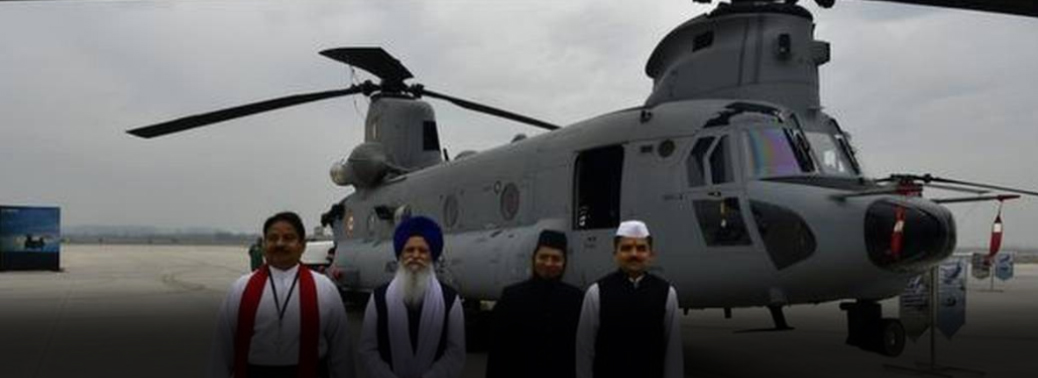
- The Indian Air Force (IAF) inducted the first batch of four Chinook CH-47F(I) heavy-lift helicopters, which will significantly improve airlift to high-altitude areas.
CH-47 Chinook
- The Boeing CH-47 Chinook is an American twin-engined, tandem rotor, heavy-lift helicopter.
- It is among the heaviest lifting Western helicopters.
- Its name, Chinook, is from the Native American Chinook people of modern-day Washington state.
Salient features of the Chinook
- A multi-mission heavy-left transport helicopter, Chinook will be used to move troops, artillery, ammunition, barrier materials, supplies and equipment on the battlefield.
- It is highly maneuverable, which makes it suitable for operating in tough, dense terrain.
- Its 24X7, all-weather operational capabilities are crucial for India Air Force, which operates in some of the most hostile terrains in the world.
- Apart from military operations, they can also be used for medical evacuation, disaster relief, search and recovery, fire-fighting and civil development.
- It is capable of transporting fully-equipped infantry soldiers for specialised operations. It has fully integrated digital cockpit management system.
- The Chinook has the capacity to carry a maximum payload capacity of 11 tonnes and 45 troops.

55% INTERNET USERS SCARED OF AIRING POLITICAL VIEWS:
26, Mar 2019

- 55% of sampled English Internet users were concerned that expressing their political views online could get them into trouble with the authorities, an India digital report prepared by the Reuters Institute showed.
The Past Incidents:
- These high levels of concern could be based in part on recent events in India.
- Since 2012 at least 17 people have been arrested for posting material that was considered offensive or threatening to a politician.
Role of Social Media:
- As many as 68% of those surveyed identified smart phones as their main device for online news with 52% stating that they got their news from Facebook.
- WhatsApp (52%), Instagram (26%), Twitter (18%), and Facebook Messenger (16%) were the other sources of news.
- Online news generally (56%), and social media specifically (28%) have outpaced print (16%) as the main source of news among respondents under 35, whereas respondents over 25 still mix online and offline media to a greater extent.
- The fact that our survey covers only English speakers with Internet access is key here; the number of people accessing news via print and television will be higher for regional language news consumer though as mobile web use spreads we expect to see this change in the years ahead.
- Respondents overall had low trust in news overall (36%) but expressed higher levels of trust in news search (45%) and social media (34%). As many as 57% of those surveyed were worried whether the news they consumed was fake or real.
Impact of Social Media in Elections:
- The year 2019 is a completely different animal in comparison to 2014. Social media has exploded since that time in India, spreading its roots through to rural India. It is not just benefiting the businesses, but has also proved to be a great platform for persuading and changing the mindset of a wider population.
Increase in the number of mobile phones:
- Currently, India has about 1.2 Billion mobile phones, up from approximately 581 million in 2014. At this pace, we would have more mobile phones that the population of India by the time the elections begin.
Data becoming cheap:
- With the entry of players like JIO, data has become extremely cheap. For less than Rs. 10/- you have 2 GB of data every day.
Penetration into Rural India:
- As a result of this mobile revolution, mobile phones and cheap data have reached rural India as well. With a density of about
- 94/100 users of a phone, it is quite evident that almost everyone has a mobile phone available to them.
The growth of Social Media
- Though the internet was marketed as a way to share ideas and knowledge, it turned out
- to be used primarily for the internet. Social media including WhatsApp has growth by 100% in rural India.
Fake News
A lie repeated many times becomes the truth
- 90% of Smartphone users have WhatsApp
- Propagation of information becomes way easier and cheaper than before. With multiple languages supported by these companies, language barriers do not exist anymore.
Demographic Dividend
- The older one becomes, the tougher it is to change one’s allegiance towards a political party. The youth usually switches their stance based on the information that is received. The highest growth in social media consumption has been in this category. Hence the political parties use this demographic to their advantage.
High Unemployment/Underemployment
- It is very easy to target this segment and brainwash accordingly which again is present on these platforms and wastes the maximum amount of time online.
Expensive IT cells
WHY NOT INCREASE THE VVPAT COUNT, ASKS SC
26, Mar 2019
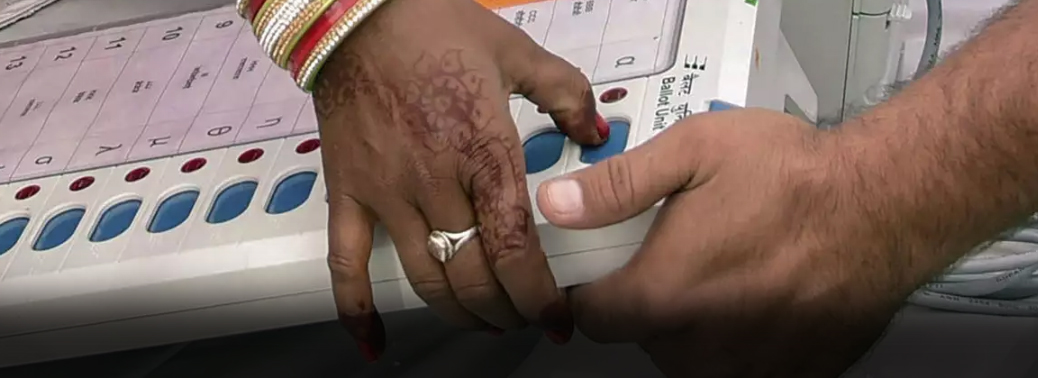
- The Supreme Court insisted to increase the random physical verification of Voter Verified Paper Audit Trail (VVPAT) in the Lok Sabha and Assembly elections, though the idea was met with stiff resistance from the Election Commission.
- According to Deputy Election Commissioner the current practice of physically checking the VVPAT paper slips of one randomly selected polling station in an Assembly constituency and each Assembly segment in the case of the Lok Sabha election was all that is needed. There was no need whatsoever to extend the physical count of VVPATs.
Swamy case:
- In 2013, in the Subramanian Swamy case, the Supreme Court held that the paper trail through VVPAT of votes cast was an indispensable requirement of free and fair elections.
What are VVPAT machines?
- The Voter Verified Paper Audit Trail is a method that provides feedback to voters. It is an independent verification printer machine and is attached to electronic voting machines.
- It allows voters to verify if their vote has gone to the intended candidate.
How do VVPAT machines work?
- When a voter presses a button in the EVM, a paper slip is printed through the VVPAT. The slip contains the poll symbol and name of the candidate. It allows the voter to verify his/her choice.
- After being visible to the voter from a glass case in the VVPAT for seven seconds, the ballot slip will be cut and dropped into the drop box in the VVPAT machine and a beep will be heard. VVPAT machines can be accessed by polling officers only.
What is the Election Commission’s stand on the issue?
- The EC has time and again reiterated that EVMs cannot be tampered with It has made public the findings of inquiries into specific charges of tampering in Madhya Pradesh’s Bhind and Rajasthan’s Dholpur that give a clean chit to the machines.
- With the Opposition insisting on doing away with the EVMs and the controversy refusing to die down, the EC has now thrown open a challenge, inviting computer experts and political leaders to prove that the machines can be hacked, in the presence of the EVM manufacturers.
Army’s carbine procurement held up
25, Mar 2019

The fast-track procurement of 93,895 Close Quarter Carbine (CQB) rifles for the Army has been delayed even after the completion of cost negotiations as the case is pending with the Defence Ministry.
In January 2018, the DAC approved the purchase of 72,400 assault rifles and 93,895 carbines for Rs. 3,547 crore through the fast-track procurement (FTP) mode. After evaluation, Sig Sauer of the U.S. emerged as the lowest bidder for the assault rifles and the United Arab Emirates-based Caracal for the carbines.
Close Quarter Battle Receiver:
The Close Quarter Battle Receiver (CQBR) is a replacement upper receiver for the M4A1 Carbine, developed by the US Navy.
The CQBR features a barrel 10.3 in (262 mm) in length, similar to the Colt Commando short-barreled M16 variants of the past.
This shorter barrel makes the weapon significantly more compact, which makes it easier to use in and around vehicles and in tight confined spaces.
Special units such as commandos boarding ships and bodyguards for senior officers have found such shortened weapons very useful and use the CQBR.
DAC
- The DAC is Defence Ministry’s highest decision making body for capital acquisition proposals forwarded by the Indian armed forces.
- It was set up in 2001 as part of the post-Kargil reforms in defence sector
- It approves the long-term integrated perspective plan for the forces, accords acceptance of necessity (AON) to begin acquisition proposals, and grant’s its approval to all major deals through all their important phases.
- It also has the power to approve any deviations in an acquisition, and recommends all big capital defence purchases for approval of the Cabinet committee on security (CCS) headed by Prime Minister.
Disinformation is everywhere in India
25, Mar 2019
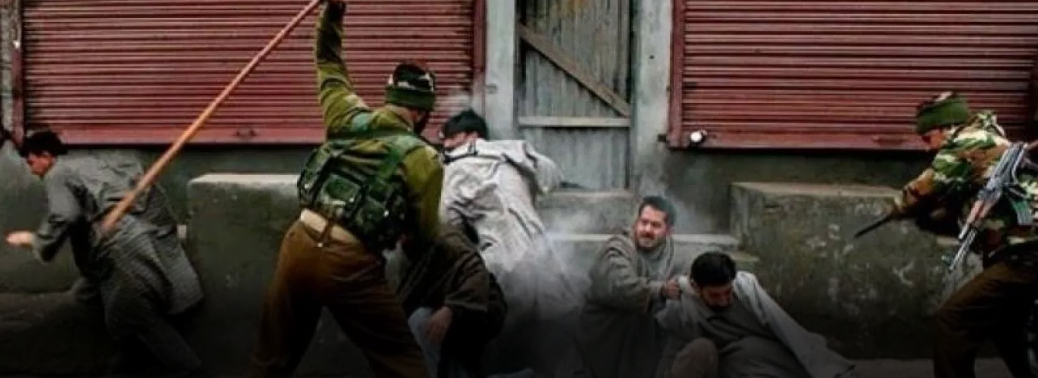
With the Lok Sabha elections coming up, it is critically important that Indians have access to credible and trustworthy information before they vote. The problem is that many do not feel they do. In a brand new survey of English-language Internet users in India conducted by the University of Oxford, have found that a majority of the respondents are concerned with whether the news they come across online is real or fake.
What is fake news?
Fake news is a type of yellow journalism that consists of deliberate misinformation or hoaxes spread via the traditional print, broadcasting news media, or via Internet-based social media. Fake news is written and published with the intent to mislead in order to gain financially or politically, often with sensationalist, exaggerated, or patently false headlines that grab attention.
Driving force behind fake news:
- Getting easy viewership through sensational news-e.g. dubbing foreign prisoners as spies or terrorists without any proof
- Directed towards a particular organization or person with an intention to either glorify it or to bring malice.eg. a news channel was established to defend the accused in Jessica Lal murder case.
Risks of fake news:
Political: Swaying or polarising public opinion. Example Recent American election, UP elections where certain facts are quoted out of context/partially. Significant impact on the nature of polity.
Religious: Promoting religious ideologies. Glorifying one religion while despising others Ex. Right wing violence meted out by Gaurakshaks leads to religious polarisation and communal unrests.
Criminal: Sensationalising crimes by blowing them out of proportion. Misleads people rather than making them aware. Instils irrational fears.
Fake news has also been used to dupe gullible people financially. The reach of news has given chit fund schemes an altogether new arena as well as has introduced the concept of online fraud through spam mails.
It hampers spirit of common brotherhood and raises intolerance. Eg. 2012 mass exodus of North-Eastern people from Bangalore on false online threats.
Over the time it shapes the thinking of society at large. Portrayal of India as an unsafe destination for women by international media has created a false image of a nation.
The Solution:
- Independent, trusted and effective press regulation.
- Mainstream media must use social media toolsintensively in order to defend the truth, present the correct information and balance opinions.
- Curb media ownership. We need an open debate on the impact of media concentration on our democracy and wider culture. There should be clear limits on media ownership so that powerful proprietors with vested interests are not allowed to dominate the news agenda.
- Define fake news legally. Heavy punitive measures for whosoever violates the said definition.
- There should be grievance redressal mechanisms and arbitration spaces to resolve issues.
- Digital media literacy among people to increase scrutiny and feedbacks of the content.
- Technical solutions that assess the credibility of information circulating online are also needed.
Initials hurdle hits PAN-Aadhaar link
24, Mar 2019

Tens of thousands of people may not be able to file income tax returns for the coming financial year as they are unable to link their Aadhaar to their PANs, for no fault of theirs.
The Point of Mismatch:
- Since a person’s identity is authenticated biometrically, Aadhaar can allow initials in the name.
- On the other hand, PAN is based on an old system that will not accept initials even if they are entered.
- A large number of people, especially in south India, are not being able to link the two because of the name mismatch.
Court’s Stand:
- According to the Supreme Court’s judgement passed on 9th June 2017, anyone who holds an Aadhaar card has to link it to his/her PANs and mention the same in the tax returns.
- The government has set July 1, 2017 as the deadline for linking Aadhaar card with the PAN card.
- However, those who do not have Aadhaar can e-file tax returns without the same for FY 2016-17.
- Non-resident Indians (NRIs), however, are not required to quote Aadhaar number while filing income tax returns back home.
- The government has also mandated that bank accounts be linked with PAN by June 30, 2017.
What will happen if one does not link Aadhaar with the PAN?
- Failing to link Aadhaar and PAN may lead to invalidation of one’s PAN card.
- If that happens, the PAN card of the concerned will cease to serve as an identity proof, debarring him/her from transactions that cannot be carried out without quoting PAN.
Significance of PAN-Aadhaar Linkage
- The interlinking of PAN card, Aadhaar and bank accounts, indicates that the government will be able to keep a track of one’s financial transactions. This is expected to result in more transparency in financial transactions across the country.
- With this linkage, the government is also trying to solve the problem of people having multiple PAN cards and filing tax returns with those. How? As Aadhaar is based on biometrics, the chances of duplication are much less as compared to PAN, which is not based on biometrics.
- The number of tax-payers in the country is very low. The government intends to check tax evaders with PAN-Aadhaar linkage.
Arguments against PAN-Aadhaar Linkage
- The petitioners before the court had argued that the provision, which makes it obligatory on individuals filing income tax returns to link their permanent account numbers (PAN) to their Aadhaar, was unconstitutional as it, among other things, infringed a number of fundamental rights.
- The mandatory linking of Aadhaar to PAN under the newly-included Section 139AA of the Income Tax Act is a “direct invasion” by the state into the citizens’ right to make free, voluntary and informed consent.
- There is complete collision Aadhaar Act and Section 139AA of the Income Tax Act, which provides for mandatory quoting for the Aadhaar. However, UIDAI clearly states that it is voluntary.
Arguments in favour
The government had argued that Section 139 AA was enacted by the Parliament to ensure that fake PAN cards are removed from the system and Aadhaar was the “most effective” way to do so.
Supreme Court’s Verdict and its Implications
- Supreme Court of India had upheld the constitutional validity of Section 139AA of Income Tax Act which made mandatory linkage of IT returns with Aadhaar.
- The Court made it clear that those who don’t have Aadhaar need not apply for it for the purpose of filing IT returns.
- The Supreme Court held that the parliament was competent to enact section 139AA of the IT Act as the said interim orders relied upon by the petitioners were passed when the Aadhaar Act was not even enacted.
- The court also held that the Aadhaar Act and the law contained in section 139AA of the IT Act deal with two different situations and operate in different fields. This is an alarming statement as it gives the government a much-needed way out from the interim orders of the court. The government can, now, amend any central statute, including non-welfare schemes, and insert a provision making it mandatory to quote Aadhaar number while maintaining the voluntary nature in the parent Aadhaar Act.
- The court further held that the interim orders were passed in the petitions where Aadhaar scheme was put forward as an executive measure. The court also stated that the said orders were not passed in a case where the court was dealing with a statute passed by the parliament. By creating an artificial distinction between the executive and legislative actions of the government, validated the government’s overt violation of Supreme Court orders.
PAN
- PAN is a 10-digit alphanumeric number used for keeping a track of financial transactions
- It is issued to all judicial entities identifiable under the Indian Income Tax Act, 1961.
It is issued by the Indian Income Tax Department under the supervision of the Central Board for Direct Taxes (CBDT) and it also serves as an important proof of identification
Section 139AA of the Income Tax Act
- It was introduced by the Finance Act of 2017.
- Section 139AA(1) of the Income Tax Act provides for mandatory quoting of Aadhaar/Enrolment ID of Aadhaar application form, for filing of return of income and for making an application for allotment of PAN with effect from 1st July, 2017.
- Section 139AA(2) of the Income Tax Act provides that every person who has been allotted PAN as on the 1st day of July, 2017, and who is eligible to obtain Aadhaar, shall intimate his Aadhaar on or before a date to be notified by the Central Government.
The proviso to section 139AA (2) provides that in case of non-intimation of Aadhaar, the PAN allotted to the person shall be deemed to be invalid from a date to be notified by the Central Government.
Statistical institute submits report on VVPAT to EC
23, Mar 2019
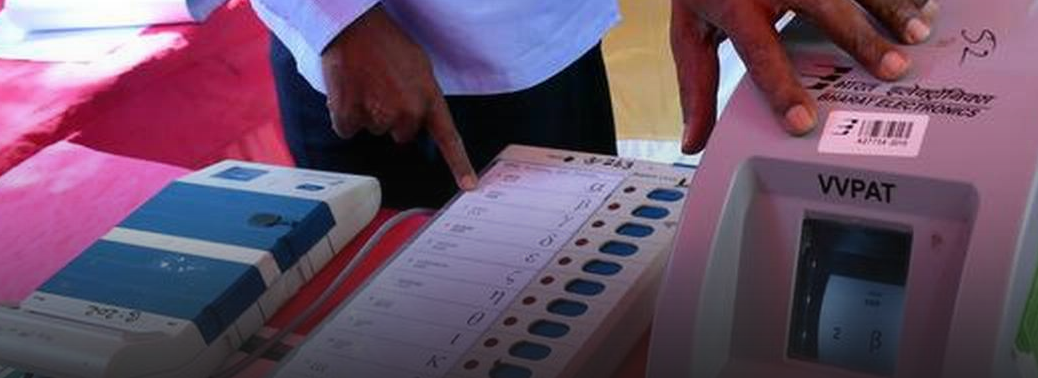
- The Indian Statistical Institute (ISI) submitted the recommendations of an expert committee on the Voter Verifiable Paper Audit Trail (VVPAT) slip verification to the Election Commission.
- The report titled “Random Sampling For Testing of EVMs via VVPAT Slip Verification” was handed over to Chief Election Commissioner Sunil Arora and Election Commissioners Ashok Lavasa and Sushil Chandra. The Commission will examine the report to determine the course of action.
VVPAT:
- The VVPAT, or Voter Verifiable Paper Audit Trail, is an EVM-connected verification printer device.
- It allows voters to verify if their vote has indeed gone to the intended candidate by leaving a paper trail of the vote cast.
- It is an adjunct machine connected to the ballot and control units of the EVM. After the voter casts his or her mandate by pressing a button in the EVM, the VVPAT connected to it prints a slip containing the poll symbol and the name of the candidate.
- Slips from a randomly selected polling booth from each
- constituency are then matched with the EVM tallies during counting to check for the accuracy of the process.
- The VVPATs were added to bring in accountability to the voting process, with many parties questioning whether the EVMs were indeed malpractice or rigging-proof.
- It is intended as an independent verification system for EVM designed to
- ✓ Allow voters to verify that their votes are casted correctly,
- ✓ Detect possible election fraud or malfunction and
- ✓ Provide a means to audit the stored electronic results.
- After being visible to the voter from a glass case in the VVPAT for seven seconds, the ballot slip will be cut and dropped into the drop box in the VVPAT machine and a beep will be heard.
- VVPAT machines can be accessed by polling officers only.
- EVMs, in use since 1998 in India, have been gradually upgraded with security features and the ECI has suggested that it has robust procedural and technical safeguards to prevent EVM-tampering and electoral malpractices such as rigging.
- The VVPATs were introduced in the past year and were universally used in the Assembly elections in Goa in February 2017.
- But the addition of the VVPAT has also increased the complexity of the otherwise simple single programmable chip-based device, rendering it more prone to glitches.
Coming, a law to empower forest staff
23, Mar 2019
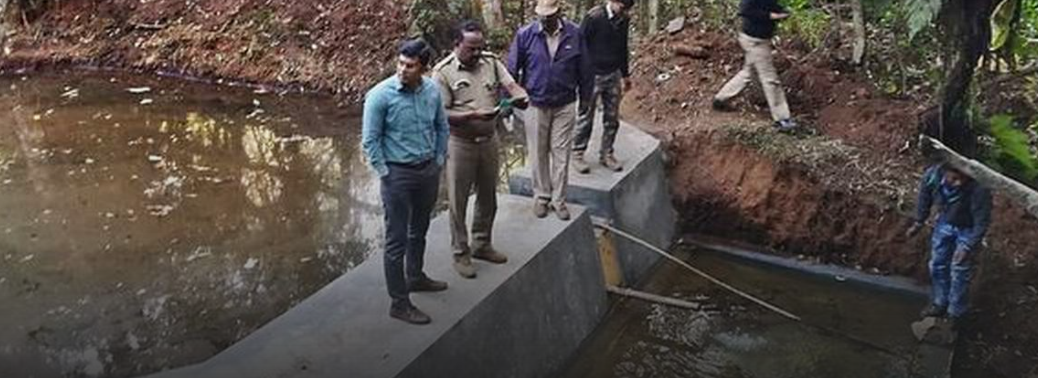
- A proposed legislation accords significant powers to India’s forest officers including the power issue search warrants, enter and investigate lands within their jurisdictions, and to provide indemnity to forest officers using arms to prevent forest-related offences.
- The Indian Forest Act, 2019 is envisaged as an amendment to the Indian Forest Act, 1927 and is an attempt to address contemporary challenges to India’s forests.
Proposed Amendments:
- Amendment proposed to provide indemnity to Forest-officer using arms etc, to prevent the forest offence.
- Forest-officer not below the rank of a Ranger shall have power to hold an inquiry into forest offences and shall
- have the powers to search or issue a search warrant under the Code of Criminal Procedure, 1973.
- Any Forest-officer not below the rank of a Forester may, at any time enter and inspect any land within his area of jurisdiction.
- “Village forests”, according to the proposed Act, may be forestland or wasteland, which is the property of the government and would be jointly managed by the community through the Joint Forest Management Committee or Gram Sabha.
Indian Forest Act, 1927:
- This Act recognizes forest dwellers’ rights and makes conservation more accountable.
- The Act basically does two things: 1. Grants legal recognition to the rights of traditional forest dwelling communities, partially correcting the injustice caused by the forest laws, and
- Makes a beginning towards giving communities and the public a voice in forest and wildlife conservation.
- The law recognises three types of rights: 1. Land Rights: Land rights are given to people, who have been cultivating land prior to December, 13, 2005.
- Use Rights: The law provides for rights to use and/or collect the minor forest produce things like tendu patta, herbs, medicinal plants etc “that has been traditionally collected, use of grazing grounds and water bodies and use of traditional areas by nomadic or pastoralist communities i.e. communities that move with their herds, as opposed to practicing settled agriculture.
- Right to Protect and Conserve: The law gives rights to protect and manage the forests to people of village communities.
The Act also categorises forests into three categories:
- Reserve forest: These forests are the most restricted forests and may be constituted by the State Government on any forest land or waste land which is the property of the Government or on which the Government has proprietary rights. In reserved forests, most uses by local people are prohibited, unless specifically allowed by a Forest Officer in the course of settlement.
- Protected forest: The State Government is empowered to constitute any land other than reserved forests as protected forests over which the Government has proprietary rights. Under ‘Protected Forests’, the Government retains the power to issue rules regarding the use of such forests and retains the power to reserve the specific tree species in the protected forests. This power has been used to establish State control over trees, whose timber, fruit or other non-wood products have revenue-raising potential.
- Village forest: ‘Village forests’ are the one in which the State Government may assign to ‘any village community the rights of Government to or over any land which has been constituted a reserved forest’.
SC may not admit diary as proof
23, Mar 2019
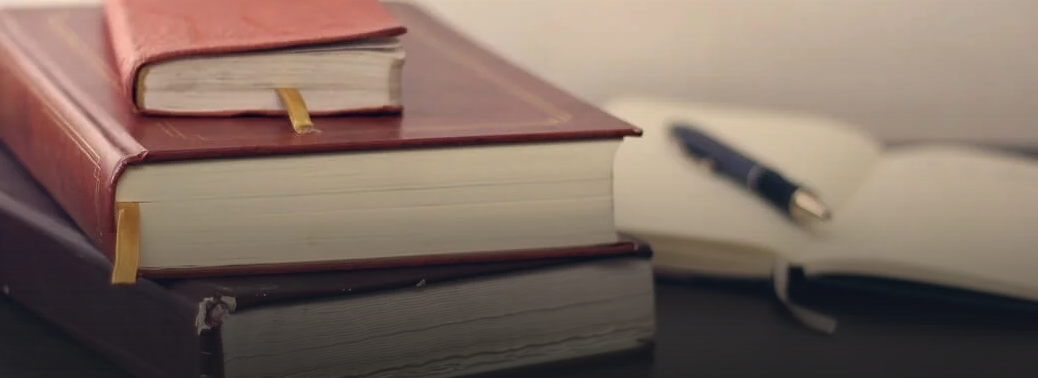
- Diary entries are hardly considered admissible evidence in a court of law. A plethora of decisions by the Supreme Court has shown that judiciary treats diary entries with distrust.
- The ‘Yeddyurappa diary,’ if it reaches the court, may be fated to die a quick death. Section 34 of the Indian Evidence Act requires ‘diary entries’ to cross a series of steep hurdles to pass muster as evidence.
- Firstly, diary entries should be made in a book. The book should be a ‘book of account’ kept regularly in the course of business. The diary entries alone will not be sufficient evidence to charge any person even if all the requirements are fulfilled and the jottings are proved relevant and admissible. The entries may, at best, be some form of corroborative evidence. Further independent proof is required before an FIR is lodged against the persons named in the diary.
Independent evidence
- The apex court’s judgment in Beni v. Bisan Dayal explains why diary entries alone cannot form the basis for an FIR. “A man cannot be allowed to make evidence for himself by what he chooses to write in his own books behind the back of the parties.
- There must be independent evidence of the transaction to which the entries relate and in absence of such evidence no relief can be given to the party who relies upon such entries to support his claim against another,” the Supreme Court held.
- In CBI versus V.C. Shukla (Jain Hawala case), reported in 1998, the apex court explains the import of each term used in Section 34, the provision which deals with entries in a diary or a book. The term ‘book’ in the section means “a collection of sheets of paper or other material, blank, written, or printed, fastened or bound together so as to form a material whole.”
- A ‘book of account’ used in Section 34 means a record of “formal statement of transactions between two parties, including debtor-creditor relation and arising out of contract, or some fiduciary relations.” Thirdly, the diary or book of account should be ‘regularly kept in the course of business.’ That is, the entries should be part of “some continuous and uniform practice in the current routine of the business of the particular person to whom they belong.”
Sahara-Birla case
- In its order of January 11, 2017 in the Sahara-Birla pay-offs case, a Supreme Court Bench of Justices Arun Mishra and Amitava Roy (now retired) held that ordering the registration of an FIR against Prime Minister Narendra Modi, other national leaders and senior bureaucrats merely banking on “some diary entries and random loose computer sheets” was “inherently improbable.”
Centre bans JKLF under anti-terror law
23, Mar 2019
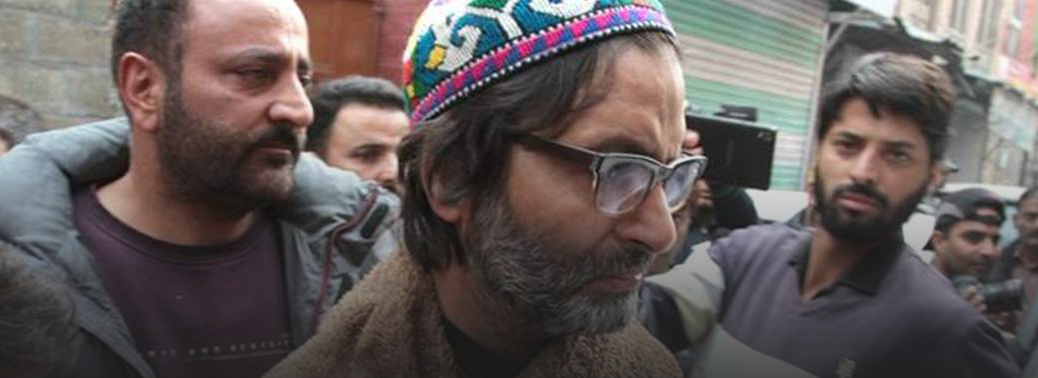
- The Ministry of Home Affairs (MHA) banned separatist Yasin Malik’s Jammu and Kashmir Liberation Front (JKLF) under the anti-terror law, Unlawful Activities (Prevention) Act, 1967 (UAPA). The move comes days after the Centre banned Jamat-e-Islami (JeI-J&K) under Section 3(1) of the UAPA.
- The JKLF was also banned under the same section, which gives power to the Centre to declare any association as unlawful by notifying it in the Official Gazette.
What is UAPA?
- UAPA is anti-terrorist law aimed at effective prevention of unlawful activities associations in India.
- Its main objective is to make powers available for dealing with activities directed against integrity and sovereignty of India.
- It bans certain terrorist associations, punishes membership and association with such organizations and punishes terrorist activities.
- The law been legislated to impose reasonable restrictions in interests of sovereignty and integrity of India on exercise of freedom of speech and expression, to assemble peaceably without arms and to form associations.
- The Act came after the 16th CAA, 1963 which placed reasonable restrictions on [Ar.19(1)], [Ar.19(2)], [Ar.19(3)].
Crime under the Act:
- To support any secessionist movement
- To support a foreign power’s claim over Indian territories
- Threatening economic security of India
- Raising funds for terrorist activities (including the production and circulation of Fake Indian Currency Notes (FICN)
- Member of unlawful associations or terrorist gang or terrorist organisation
Note:
- List of Banned Organizations in India is made under Section 35 of the Unlawful Activities (Prevention) Act, 1967 – the period for which an association can be declared as unlawful is five years.
- The Unlawful Activities (Prevention) Act, 1967 helps meet the commitments to the Financial Action Task Force.
Tribal artists make a splash on online platform
23, Mar 2019

The paintings of tribal artists from the remote Agency areas of Telangana have literally arrived on a global platform, thanks to Amazon, the largest e-commerce market place.
Bright colours:
- The Gond paintings stand out for use of bright colours and intricate lines. The Gond art mostly represents a tree emerging out of birds (peacocks) and animals (ox, horse, deer, elephant and tiger).
- The Koya artists draw on the surface motifs of their sacred ‘Hariveni’ posts, sacred flags and big bottle gourds.
- The paintings of Naikpod tribals are reflections of face masks of their kings, Pandavas like Bheema, and traditional village temple deities.
Tribal Cooperative Marketing Development Federation of India Limited (TRIFED):
- TRIFED is a national-level apex organization functioning under administrative control ofMinistry of Tribal Affairs.
- It was established in August 1987 by then Ministry of Welfare under Multi State Cooperative Societies Act 1984 (which has now been replaced by Multi-State Cooperative Societies Act, 2002). It is headquartered in New Delhi.
- Its core objective is to institutionalize trade of Minor Forest Produce (MFP) and Surplus Agriculture Produce (SAP) collected or cultivated by tribals as they are heavily dependent on these natural products for their livelihood.
- TRIFED also works as an agency to the FCI for procurement of Wheat and Rice.
- It also organizes exhibitions like National Tribal Craft Expo called “Aadi Mahotsav” etc. to promote and market tribal products.
- It also facilitates participation of tribal artisans to enable them to interact directly with art lovers to assess market needs.
Gond
- Known for their valor, the Gond tribes are mostly found in Central India in the Chhindwara district of Madhya Pradesh. They are also spotted in the Bastar district of Chhattisgarh, parts of Maharashtra, Andhra Pradesh, and Orissa. In Madhya Pradesh, muttering and mulling over the titillating sculptures of Khajuraho and Sanchi Stupa respectively and wheeling from majestic palaces to whispering woods of Kanha and Bandhavgarh steer towards the Gondi forest and experience the unique lifestyle of the Gonds. The Gond tribes have a good command over Telgu, Hindi, Marathi, Parsi and many other Dravadian languages.
- The rural colour with mud walls and thatched roof houses, earthen pots, traditional wears – men in dhoti and women in sari and ornaments… the festivals of Keslapur Jathra and Madai and ritual performances are the ones to experience. Kodo or Kutki, which is the staple food of the Gonds; moreover, they are mostly meat consumers.
Koya
- The Koyas are one of the few multi-lingual and multi-racial tribal communities living in southern part of India particularly in the states of Telengana, Chhattisgarh, Madhya Pradesh, Karnataka, Odisha, Andhra Pradesh and in Lakshadweep islands.
- They are also one of the major peasant tribes of Andhra Pradesh numbering 3.60 lakhs in 1981. Physically they are classified as Australoid.
- The Koya are mainly settled cultivators and artisans, expertise in making bamboo furniture including mats for fencing, dust pans, and baskets.
GoMs on lynchings, harassment on hold
20, Mar 2019
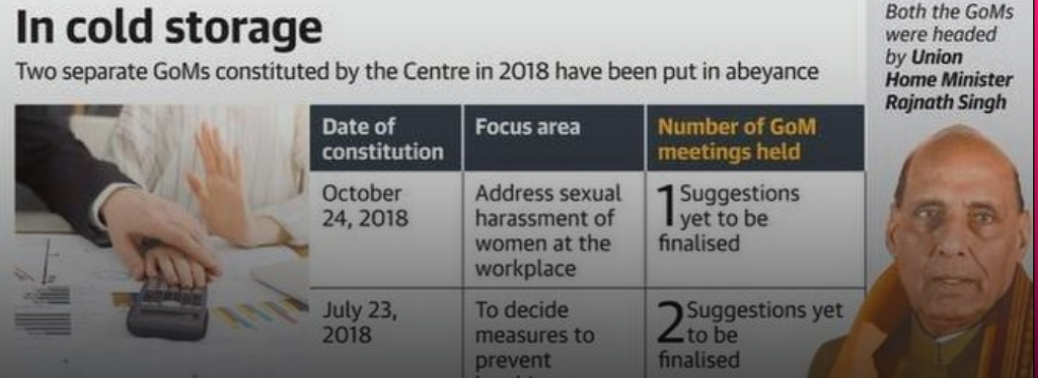
Two important Groups of Ministers (GoMs) constituted by the Centre last year to suggest measures on anti-lynching and prevention of sexual harassment of women at workplace have been put in the cold storage due to the forthcoming elections.
Vishakha Judgement
- The Supreme Court in 1997 in the case of Vishakha vs. state of Rajasthan provided the first authoritative decision of ‘sexual harassment’ in India; and confronted with a statutory vacuum, it went creative and proposed the route of ‘judicial legislation’.
- It laid down the requirements for employers dealing with complaints of sexual assault and stipulated the formation of committees to dispose of complaints from victims of harassment. These guidelines came to be known as Vishakha Guidelines.
- This is part of what the Supreme Court had stated in 1997 that gender equality under Article 14, 19 and Right to Life under Article 21, the dignity of women has to be maintained.
Definition of Sexual Harassment as defined by the court:
- Anything at work that can place the working woman at disadvantage compared to other male employees in her official career just because she is a woman – can be termed as sexual harassment.
- Unwelcome sexually determined behaviour & demands from males employees at the workplace, such as:
- Any physical contacts and advances,
- Sexually coloured remarks,
- Showing pornography,
- Passing lewd comments or gestures,
- Sexual demands by any means,
- Any rumours/talk at the workplace with sexually coloured remarks about a working woman, or
- Spreading rumours about a womans sexual relationship with anybody.
Sexual Harassment of Women at Workplace (Prevention, Prohibition and Redressal) Act, 2013:3
This Act seeks to protect women from sexual harassment at their place of work superseding the Vishakha Guidelines introduced by the Supreme Court.
MWCD Handbook:
- The Ministry of Women & Child Development (MWCD) has published a Handbook in this regard.
- It gives more detailed instances of behaviour that constitutes sexual harassment at the workplace:
- Sexually suggestive remarks, offensive remarks, inappropriate questions or remarks about a person’s sex life
- Display of sexist/offensive pictures, posters, MMS, SMS etc
- Intimidation, threats, blackmail around sexual favours; also, any kind of threats against an employee who speaks up
- Unwelcome social invitations with sexual overtones, commonly seen as flirting/Unwelcome sexual advances
- It says “unwelcome behaviour” is experienced when the victim feels bad or powerless, causing anger/sadness or negative self-esteem.
- It adds that unwelcome behaviour is one which is “illegal, demeaning, invading, one-sided and power based”.
Child sex ratio declining in some districts: study
20, Mar 2019

The child sex ratio (CSR) in some of the districts has been declining over the past three years.
What is sex ratio?
The sex ratio is the number of females per 1000 males in a particular area at a given time.
Factors responsible for Declining Sex Ratio:
- There are multiple trends in declining the sex ratio. Some of the factors are given below:
- Pre Natal-Sex Determination is the main reason of low sex ratio in India
- Patriarchal societies in many parts of India have translated their prejudice and bigotry into a compulsive preference for boys and discriminations against the girl child.
- Women work is always socially devalued with limited autonomy in decision making.
- Dowry is the main cause of low sex ratio.
- Poverty and lack of education: Extreme poverty and lack of education are also some of the reasons for women’s low status in society.
- Infant and Maternal Mortality– Infant mortality rate is the number of death of babies before the age of one. Due to female foeticide, the sex ratio declines terribly. Maternal mortality also contributes to the declining sex ratio as most of the women die during the childbirth due to improper care and less facilities.
- Lack of empowerment of women– There is a lack of empowerment of women especially in the rural areas. Women do not enjoy opportunities as men do. Due to lack of education, women are unable to establish their roles in many places. The state of Uttar Pradesh has become like a grave for girls.
- Social status of women– In most parts of India, women are merely considered as an object. People are worried about the dowry issue with the birth of a girl child. Due to financial problem, most of the families in rural areas prefer male child over female.
Implications of low sex ratio at birth:
Low Sex ratio at birth has led to large numbers of “surplus men” in countries like India and China. Skewed sex ratio lead to more violence against men and women, as well as human trafficking. In India, some villages in Haryana and Punjab have such poor ratios that men “import” brides from other states. This is often accompanied by the exploitation of these brides.
Government’s initiatives to tackle it:
- Due to the declining sex ratio, the government has introduced certain schemes to tackle the issue. Some of these schemes are given below.
- Beti Bachao, Beti Padhao– This is one of the important campaigns introduced by the government to generate awareness and improve the efficiency of the welfare services meant for women.
- Sukanya Samriddhi Account– This scheme has been notified by the Ministry of Finance on 2 December, 2014. The initiative aims at opening a new account for the girl child.
- The Girl Child Protection Scheme– The scheme is aimed at preventing the gender discrimination by protecting the rights of the girl child. It also tries to eliminate the negative attitudes and practices against the girl child.
- 4- Aapki Beti, Humari Beti – Haryana has the lowest sex ratio in India. To cope up with this issue, the Haryana government launched this scheme. The scheme would be implemented in both rural and urban areas. It would target the girl child of Scheduled Caste and Below Poverty Line (BPL) families.
- Pre-Natal Diagnostic Techniques (Regulation and Prevention of Misuse) Bill(introduced in Parliament in 1991, passed in 1994 to stop female infanicide and many more such Acts.
Challenges in implementing laws:
- Lack of resources to carry out inspection and monitoring
- Lack of corresponding qualified staff
- Poor performance of advisory committees at various levels
- Insufficient understanding of the law and procedural errors.
Suggestive measures:
- Strict implementation of laws banning female foeticide and dowry
- providing old age pension for parents who had no son
- free and compulsory education for girls
- Job reservation for women in specific occupations and giving them an equal share in the property, in the true sense of the word.
- Efforts should be made to implement these laws effectively.
- Strict punishment should be given to the defaulters.
- The vulnerable minds of the children should be so influenced that they grow up as adults who consider practicing dowry and female foeticide as immoral.
- Women should also be socialized from early childhood to consider themselves as equal to men. This would be a positive influence on the coming generations as today’s girl child would be tomorrow’s mother as well as mother in-law.
- Need to change the Mindset of the people.
Life imprisonment is the rule, death penalty the exception: SC
19, Mar 2019
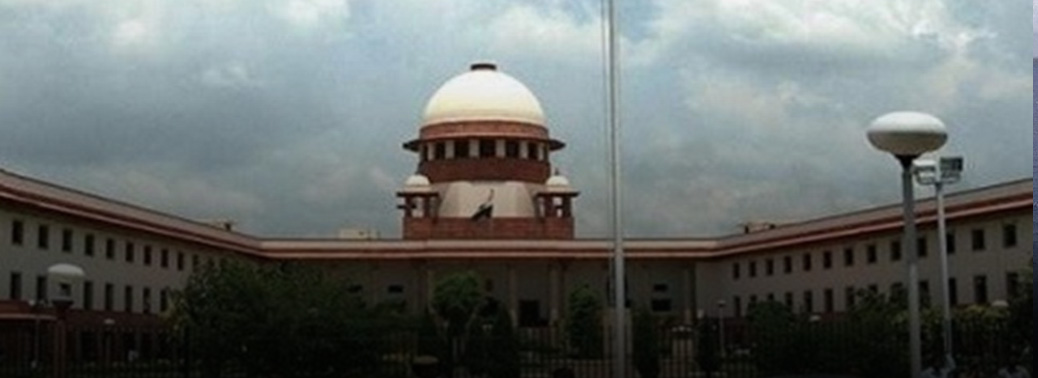
If a court finds it difficult to make a choice between death penalty and life imprisonment, it should opt for the lesser punishment, the Supreme Court said in a recent judgment.
Life imprisonment is the rule to which the death penalty is the exception. The death sentence must be imposed only when life imprisonment appears to be an altogether inappropriate punishment, having regard to the relevant facts and circumstances of the crime.
Capital Punishment in India Overview
India retains capital punishment for several serious offences.
But imposition of the capital punishment is not always followed by execution (even when it is upheld on appeal), because of the possibility of commutation to life imprisonment.
The number of people executed in India since independence in 1947 is a matter of dispute; official government statistics claim that only 52 people had been executed since independence.
However, the People’s Union for Civil Liberties cited information from Appendix 34 of the 1967 Law Commission of India report showing that 1,422 executions took place in 16 Indian states from 1953 to 1963, and has suggested that the total number of executions since independence may be as high as 3,000 to 4,300.
In December 2007, India voted against a United Nations General Assembly resolution calling for a moratorium on the death penalty.
In November 2012, India again upheld its stance on capital punishment by voting against the UN General Assembly draft resolution seeking to ban death penalty.
Rarest of the rare case doctrine
There are various sections under IPC (302, 376A etc) and other statutes which award capital punishment for the convict.
But the Supreme Court of India ruled in 1983 that the death penalty should be imposed only in “the rarest of rare cases.”
While stating that honour killings fall within the “rarest of the rare” category, Supreme Court has recommended the death penalty be extended to those found guilty of committing “honour killings”, which deserve to be a capital crime.
The Supreme Court also recommended death sentences to be imposed on police officials who commit police brutality in the form of encounter killings.
Migration in Bengal delta driven by livelihood issues, social factors
18, Mar 2019
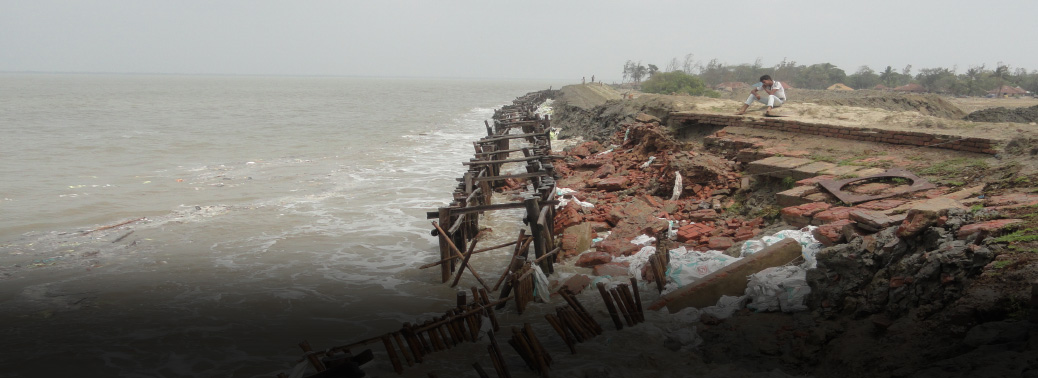
Economic reasons are the precipitating factor for migration in the Indian Bengal Delta that comprises the Sunderbans reveals an international study titled Deltas, Vulnerability and Climate Change: Migration and Adaptation (DECMA).
The study also points out that there is huge gender disparity when it comes to those migrating from the region.
Prevailing Situation:
When it comes to migration in the Indian Bengal Delta, the study finds a huge gender disparity, with men outnumbering women by almost five times.
It shows that of the people migrating 83% are men and only 17 % are women. While most of the men migrate due to economic reasons, women do so, driven by mostly social factors.
The DECMA report also finds that most migrants both in case of men and women are young, in the age group of 20-30 years.
In the Sunderbans there are villages where most of the men have migrated for work and the responsibility of the family and agriculture falls on the women.
Even though the women are doing all the work back home, they have little freedom to take decisions on their own and have to consult their men over telephone for any major decision.
In terms of the destination of migrations, the study finds that 51% of migration from the Indian Bengal Delta is to other areas of the State particularly to the city of Kolkata, 10% to Maharashtra, 9% to Tamil Nadu, 7% Kerala and 6% to Gujarat.
It shows that 57% of migration is seasonal, where people move once or twice a year; 19% is circular where those migrating move thrice a year irrespective of reasons and 24% permanent where people intend to stay for at least six months in the place they are migrating to.
According to experts behind the study, one of the reasons for migration is failed adaptation in the areas which are under stress due to climate change.
Vulnerable areas
In the study, experts also map the climate change hot spots and highest risk areas of Sunderbans based on an analysis of climate change hazards. The areas of Gosaba, Basanti, Kultali, Sagar, Kakdwip, Namkhana, Canning and Mathurapur (all in South 24 Parganas) have high levels of agriculture dependency and so are sensitive to climate hazards such as flood and salinity.
When key naval assets were put on alert
18, Mar 2019

As tensions between India and Pakistan mounted, India put its key naval assets, including the aircraft carrier INS Vikramaditya and nuclear submarines, on operational alert.
The major combat units of the Navy, including the Carrier Battle Group with INS Vikramaditya, nuclear submarines and scores of other ships, submarines and aircraft swiftly transited from exercise to operational deployment mode as tensions between India and Pakistan escalated.
TROPEX link
The deployment came amid the largest war game of the Navy, Theatre Level Operational Readiness Exercise (TROPEX 19), which began on January 7 and which was planned to be concluded by March 10.
As part of TROPEX, Indian Navy will conduct large-scale coastal defence exercise ‘Exercise Sea Vigil’.
Theatre Level Operational Readiness Exercise (TROPEX) is yearly exercise that takes place on Western Seaboard.
It will see participation of over 45 ships from both Western and Eastern Naval Commands of Indian Navy, including aircraft carrier INS Vikramaditya, s ubmarines including nuclear powered Chakra, naval aircraft MiG-29K, helicopters as well as ships from Indian Coast Guard.
Since its a tri-service exercise, troops from Indian Army and fighter aircraft from Indian Air Force including SU-30 MKI, Jaguars and AWACs will also participate.
Only 26% of rural toilets use twin-leach pits, finds survey
18, Mar 2019
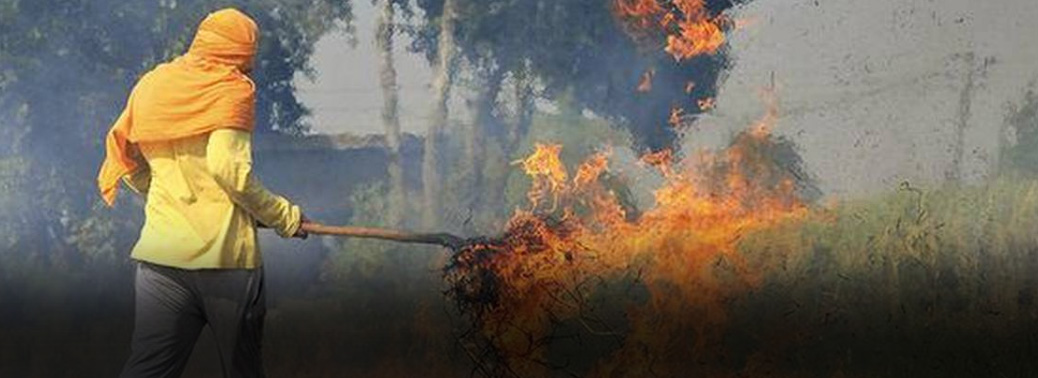
The scheme claiming to be on the verge of completing toilet construction for all rural households, a government-commissioned survey shows that just over a quarter of rural toilets use this twin-pit system.
The waste from the remainder of rural toilets could create a new sanitation nightmare harmful to health and the environment, and even pushing a new generation into manual scavenging.
About twin-pit system:
Under the twin-pit system, two pits are dug with honeycombed walls and earthen floors which allow liquid to percolate into the surrounding soil.
When one pit is filled and closed off, waste flow is transferred to the second pit, allowing waste in the first pit to be converted into manure after a year or two.
Data from the National Annual Rural Sanitation Survey 2018-19, shows that just 26.6% of rural households use the recommended twin-pit system to dispose of excreta from their toilets.
Septic tanks are the most popular option, with 28% of toilets connected to a septic tank with a soak pit and 6% to a tank without a soak pit.
The twin pit has been promoted by the Ministry of Drinking Water and Sanitation as well as the World Health Organisation as an in-situ sanitation system which claims to bypass thorny issues such as caste purity, as owners will be dealing with manure, not excreta.
With the government intensively promoting twin pits over the last two years, it is unsurprising that the highest ratio of twin pits are found in States which have only recently completed toilet construction.
Sludge management
For the more than 70% of toilets without twin pits, a faecal sludge management system is desperately needed.
It’s not enough to connect [the toilet] to a drain if it is simply emptied out into local land or ponds. It will lead to large-scale pollution of groundwater.
A 2018 survey of 30 cities and towns in Uttar Pradesh by the Centre for Science and Environment found that 87% of toilet waste is dumped into water bodies and farm lands.
The same Dalit communities which have traditionally been forced into manual scavenging are likely to end up in sanitation work to clean these tanks and any newly built rural sewerage systems.
Pinaki Chandra Ghose set to be India’s first Lokpal
18, Mar 2019
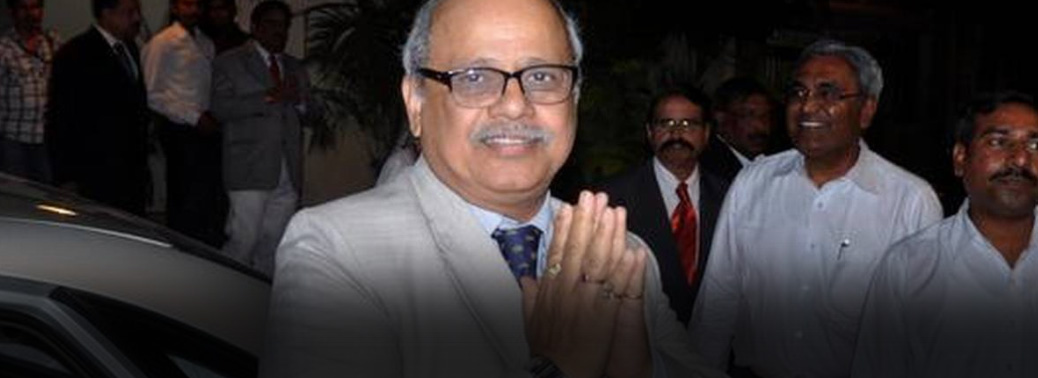
Former Supreme Court judge and current member of the National Human Rights Commission (NHRC), Pinaki Chandra Ghose, is likely to be India’s first anti-corruption ombudsman, or Lokpal, after his name was cleared and recommended by the high-level selection committee chaired by Prime Minister.
About Lokpal:
Swedish institution of Ombudsman is first in the world to resolve citizen’s grievances.
Composition:
Lokpal will consist of a chairperson and a maximum of eight members.
Term is 5 yrs or till age of 70. After ceasing to hold office member and chairperson shall not be eligible to hold any post under any government in India.
Selection Process:
Selection of chairperson and members of Lokpal through a selection committee consisting of PM, Speaker of Lok Sabha, leader of opposition in Lok Sabha, Chief Justice of India or a sitting Supreme Court judge nominated by CJI. Eminent jurist to be nominated by President of India on basis of recommendations of the first four members of the selection committee “through consensus”.
Qualification:
Chairperson shall be either a sitting or retired Chief justice of India or sitting or retired SC Judge or person of eminence in public affairs.
Members: 50% will be judicial members i.e. sitting or retired judge of SC / sitting or retired chief justice of HC and 50% members ofLokpal shall be from SC/ST/OBCs, minorities and women.
Non judicial members should have knowledge and experience of 25 yrs in field of vigilance, finance, anti-corruption policyand public administration.
Powers:
Lokpal’s jurisdiction will cover all categories of public servants.
All entities (NGOs) receiving donations from foreign source in the context of the Foreign Contribution Regulation Act (FCRA) in excess of Rs 10 lakh per year are under the jurisdiction of Lokpal.
Centre will send Lokpal bill to states as a model bill. States have to set up Lokayuktas through a state law within 365 days.
Lokpal will have power of superintendence and direction over any central investigation agency including CBI for cases referred to them by the ombudsman.
A high-powered committee chaired by the PM will recommend selection of CBI director. The collegiums will comprise PM, leader of opposition in Lok Sabha and Chief Justice of India.
PM has been brought under purview of the Lokpal, so also central ministers and senior officials.
Directorate of prosecution will be under overall control of CBI director. At present, it comes under the law ministry.
Appointment of director of prosecution to be based on recommendation of the Central Vigilance Commission.
Director of prosecution will also have a fixed tenure of two years like CBI chief.
Transfer of CBI officers investigating cases referred by Lokpal with the approval of watchdog.
Bill incorporates provisions for attachment and confiscation of property acquired by corrupt means, even while prosecution is pending.
Bill lays down clear timelines for preliminary enquiry and investigation and trial. Provides for special courts Public servants will not present their view before preliminary enquiry if the case requires ‘element of surprise’ like raids and searches.
Bill grants powers to Lokpal to sanction prosecution against public servants.
CBI may appoint a panel of advocates with approval of Lokpal, CBI will not have to depend on govt advocates.
India keeps Khalistan threat off Kartarpur talks
17, Mar 2019
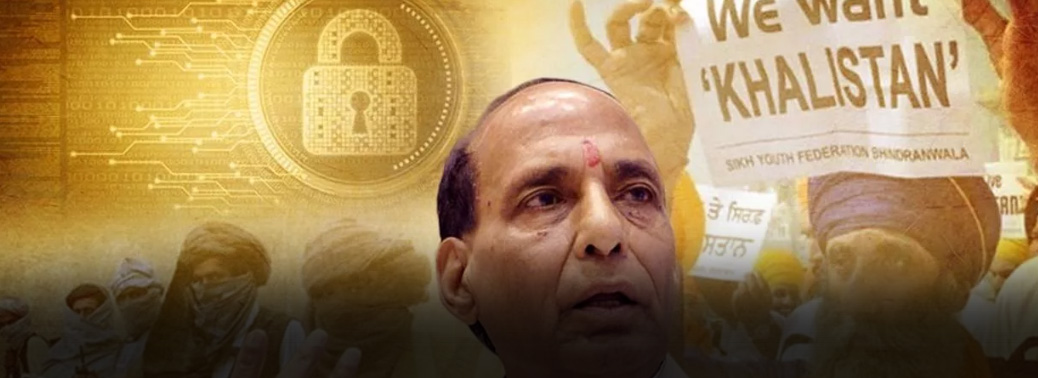
India did not raise the issue of Pakistan supporting the Khalistani movement during the March 14 delegation-level talks to discuss the modalities of the Kartarpur Corridor.
Overseas groups
The government’s stand comes amid concerns of secessionist groups, including Sikhs for Justice (SFJ), a U.S.-Canada based group, planning to organise a convention on ‘Khalistan-Referendum 2020’ at the Kartarpur shrine.
Indian security agencies have raised concerns about Pakistan using the corridor to push the Khalistani agenda from across the border.
Khalistan movement:
The Khalistan movement is a Sikh separatist movement, which seeks to create a separate country called Khalistān in the Punjab region to serve as a homeland for Sikhs.
The territorial definition of the proposed country Khalistan consists of both the Punjab, India along with Punjab, Pakistan and includes parts of Haryana, Himachal Pradesh, Jammu and Kashmir, and Rajasthan.
It began as an expatriate venture in 1971, the first explicit call for Khalistan was made in an advertisement published in the New York Times by an expat Jagjit Singh Chohan.
With financial and political support of the Sikh diaspora the movement flourished in the Indian state of Punjab, which has a Sikh-majority population and reached its zenith in the late 1970s and 1980s, when the secessionist movement caused large-scale violence among the local population including assassination of PM Indira Gandhi and bombing of Air India plane killing 328 passengers.
Various pro-Khalistan outfits have been involved in a separatist movement against the Government of India ever since. In the 1990s the insurgency petered out, and the movement failed to reach its objective due to multiple reasons including a heavy police crackdown on separatists, divisions among the Sikhs and loss of support from the Sikh population.
SC issues notice to EC on plea to verify at least 50% VVPATs
16, Mar 2019
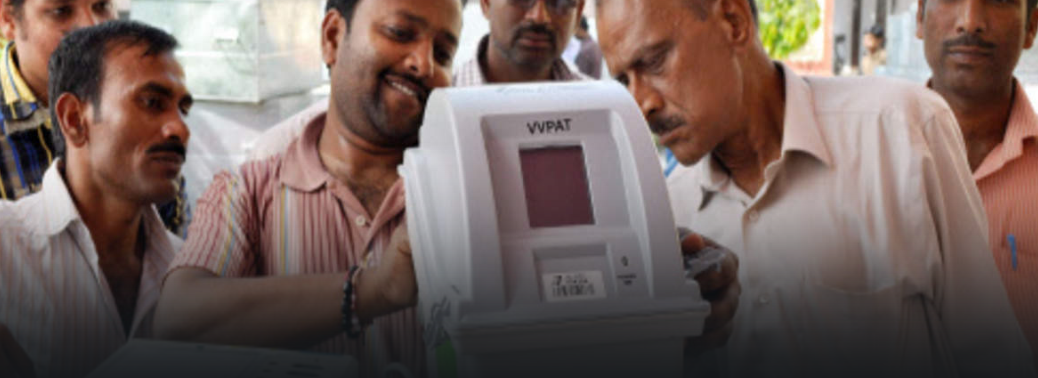
The Supreme Court directed the Election Commission to respond to a petition filed by 21 Opposition parties demanding the random verification of at least 50% electronic voting machines (EVMs) using Voter Verified Paper Audit Trail (VVPAT) in every Assembly segment or constituency.
What is VVPAT?
- VVPAT stands for Voter Verifiable Paper Audit Trail
- The VVPAT system is a new initiative of the Election Commission to ensure free and fair elections.
- In the VVPAT system, when a voter presses the button for a candidate of his choice in the electronic voting machines (EVM), a paper ballot containing the serial number, name of the candidate and poll symbol will be printed for the voter.
- It is intended as an independent verification system for EVM designed to
- Allow voters to verify that their votes are casted correctly,
- Detect possible election fraud or malfunction and
- Provide a means to audit the stored electronic results
- After being visible to the voter from a glass case in the VVPAT for seven seconds, the ballot slip will be cut and dropped into the drop box in the VVPAT machine and a beep will be
- VVPAT machines can be accessed by polling officers
Govt. defends electoral bonds scheme in SC
15, Mar 2019
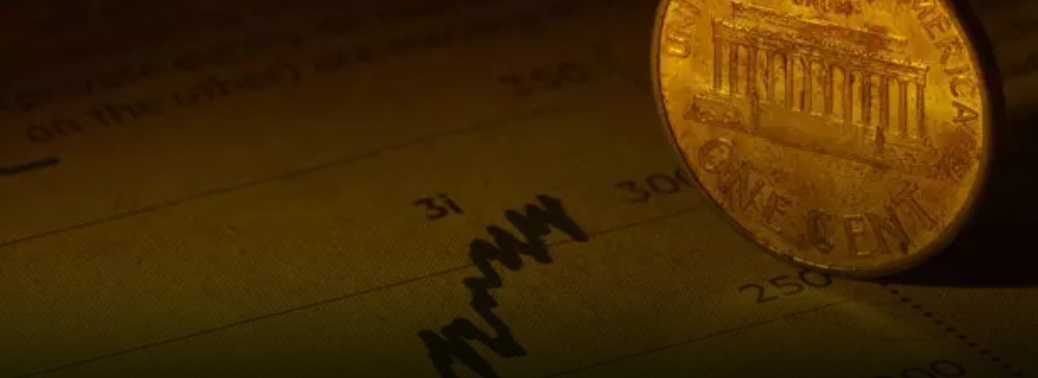
Electoral bonds have been introduced to promote transparency in funding and donation received by political parties. Bonds can be encashed by an eligible political party only through their accounts with authorised banks. The bonds do not have the name of the donor or the receiving political party and only carry unique hidden alphanumeric serial numbers as an in-built security feature. The government described the scheme, introduced on January 2 last year, as an “electoral reform” in a country moving towards a cashless-digital economy.
Electoral Bonds Scheme:
- The electoral bonds scheme was announced in Union Budget 2017 with an aim for increasing transparency in political funding.
- It makes India first country in the world to have such unique bonds for electoral funding.
- These bonds are bearer instrument in nature of promissory note and interest-free banking instrument.
- It aims at rooting out current system of largely anonymous cash donations made to political parties which lead to generation of black money in the economy.
- These electoral bonds can be bought for any value in multiples of Rs 1,000, Rs 10,000, Rs 1 lakh, Rs 10 lakh or Rs 1 crore after fulfilling all existing Know Your Customer (KYC) norms and making payments from bank account.
- It will not carry name of payee.
- The bond deposited by any eligible political party to its account shall be credited on the same day.
- No payment shall be made to any payee political party if bond is deposited after expiry of validity period.
- Eligible political parties can encash electoral bonds only through their bank accounts.
- Electoral Bonds may be purchased by only citizen of India.
- An individual can buy Electoral Bonds, either singly or jointly with other individuals.
- Electoral Bonds are valid for fifteen calendar days from the date of issue.
- Only registered political parties, that have secured not less than 1% of votes polled in last election of Lok Sabha or legislative assembly of state, will be eligible to receive electoral bonds.
- The cash donation has been capped at Rs. 2000 and beyond that donations are via electoral bonds.
RTI trumps Official Secrets Act, says SC
15, Mar 2019

- An all-out effort by the government to claim privilege and push the Rafale jets’ pricing details back into the dark zone was met with a stoic counter.
- The government’s reasons to hush the Rafale prices ranged from national security to not upsetting a “solemn undertaking” given to France to keep the price of the jets a secret.
Background
- One of the three judges, asked the government to read out Sections of the Right to Information (RTI) Act, 2005 as the law has revolutionised governance and overpowered notions of secrecy protected under the Official Secrets Act, 1923.
Right to Information Act 2005
- This law was passed by Parliament on 15 June 2005 and came fully into force on 12 October 2005.
- It mandates timely response to citizen requests for government information by various public authorities under Central Government as well as the State Governments.
- The law imposes penalty for wilful default by government officials.
- Citizens can ask for anything that government can disclose to Parliament.
- Objectives of RTI are to empower citizens (as right to information is fundamental right of the citizens under Article 19), promote transparency and accountability in working of Government, check corruption and make our democracy work for the people in real sense.
- Public authorities defined under this law are required to reply expeditiously or within thirty days of the request.
- The law also mandates every public authority to computerise their records for wide dissemination and proactively certain categories of information so that citizens need minimum recourse to request for information formally.
Exceptions from RTI
- Information that can prejudicially impact internal security, relations with foreign countries, intellectual property rights, breach of parliamentary privilege and impedes investigations cannot be shared with public under RTI.
- Cabinet papers are exempted from RTI until decision has been implemented.
- However, discussions within Cabinet are never disclosed under RTI.
- Non-Resident Indians (NRI) cannot file Right to Information (RTI) applications to seek governance-related information from Central government departments.
- Only citizens of India have the right to seek information under the provisions of RTI Act, 2005 and NRIs are not eligible to file RTI applications.
About Official Secrets Act, 1923:
- The Official Secrets Act is a British era legislation enacted in 1923 to suppress spying of the British Government.
- This act clearly states that actions which involve helping an enemy state against India are strongly condemned.
- It also states that one cannot approach, inspect, or even pass over a prohibited government site or area.
- Punishments under the act range from three to fourteen years imprisonment.
- This act is controversial to the modern RTI act, 2005.
- In the clause 6 of OSA, information from any governmental office is considered official information, hence it can be used to override Right to Information Act, 2005 requests. This has drawn harsh criticism.
- The Union Home Ministry in 2017 agreed to amend the OSA to make it more transparent and in line with the Right to Information Act, 2005.
Rafale Aircraft
- It is a 4th generation, twin-engine, multi-role fighter aircraft.
- It is capable of carrying out all combat missions:air defence,interception,ground support,in-depth strikes, reconnaissance, anti-ship strikes and nuclear deterrence.
- An active electronically scanned array (AESA) radar which enables the pilot to look 200 to 400 kms away. It gives long range precision strike capability, the pilot can detect enemy aircraft and share the information and also destroy the targets.
- The weapons package includes Meteor radar guided Beyond Visual Range (BVR) missile considered the best in the class with range of over 150 km and Scalp long range air to ground missiles. The Rafale will also be fitted with MICA missiles, an Air to Land precision missile of more than 300 km range.
Govt. defends electoral bonds scheme in SC
15, Mar 2019

- Electoral bonds have been introduced to promote transparency in funding and donation received by political parties.
- Bonds can be encashed by an eligible political party only through their accounts with authorised banks.
- The bonds do not have the name of the donor or the receiving political party and only carry unique hidden alphanumeric serial numbers as an in-built security feature.
- The government described the scheme, introduced on January 2 last year, as an “electoral reform” in a country moving towards a cashless-digital economy.
Electoral Bonds Scheme:
- The electoral bonds scheme was announced in Union Budget 2017 with an aim for increasing transparency in political funding.
- It makes India first country in the world to have such unique bonds for electoral funding.
- These bonds are bearer instrument in nature of promissory note and interest-free banking instrument.
- It aims at rooting out current system of largely anonymous cash donations made to political parties which lead to generation of black money in the economy.
- These electoral bonds can be bought for any value in multiples of Rs 1,000, Rs 10,000, Rs 1 lakh, Rs 10 lakh or Rs 1 crore after fulfilling all existing Know Your Customer (KYC) norms and making payments from bank account.
- It will not carry name of payee.
- The bond deposited by any eligible political party to its account shall be credited on the same day.
- No payment shall be made to any payee political party if bond is deposited after expiry of validity period.
- Eligible political parties can encash electoral bonds only through their bank accounts.
- Electoral Bonds may be purchased by only citizen of India.
- An individual can buy Electoral Bonds, either singly or jointly with other individuals.
- Electoral Bonds are valid for fifteen calendar days from the date of issue.
- Only registered political parties, that have secured not less than 1% of votes polled in last election of Lok Sabha or legislative assembly of state, will be eligible to receive electoral bonds.
- The cash donation has been capped at Rs. 2000 and beyond that donations are via electoral bonds.
SWACHH SURVEKSHAN 2019 REWARDING WRONG END OF WASTE MANAGEMENT?
14, Mar 2019

- A study by the Centre for Science and Environment (CSE), a non-profit public interest research and advocacy group based in New Delhi, did a reality check of cities that secured the top 50 ranks in 2019. It found that the ranking system was skewed towards cities that had only recently adopted various cleanliness measures.
- Swachh Survekshan 2019 has rewarded cities that implemented a cleanliness drive during the two to three months of the survey. Many cities that work all year towards household-level segregation, decentralised recycling and reuse of waste were given poor rankings.
Swachh Survekshan:
- Swachh Survekshan is a ranking exercise taken up by the Government of India to assess rural and urban areas for their levels of cleanliness and active implementation of Swachhata mission initiatives in a timely and innovative manner.
- The objective of the survey is to encourage large scale citizen participation and create awareness amongst all sections of society about the importance of working together towards making towns and cities a better place to live in. Additionally, the survey also intends to foster a spirit of healthy competition among towns and cities to improve their service delivery to citizens, towards creating cleaner cities and towns.
- The Ministry of Urban Development, Government of India takes up the Swachh Survekshan in urban areas and the Ministry of Drinking Water and Sanitation in rural areas. The Quality Council of India (QCI) has been commissioned the responsibility of carrying out the assessment.
Swachh Survekshan 2019
Swachh Survekshan 2019 covered 4,237 cities in a record time of 28 days, in a completely paperless, digital format for data collection.
Moreover, in this short span of time, assessors managed to visit nearly 73,000 wards, 21,000 commercial areas, 69,000 residential areas, 75,000 community/public toilets, and more than 3100 waste to compost plants across the country.
Indore has been awarded the cleanest city in the country in the Swachh Survekshan 2019 (SS 2019) awards while Bhopal has been declared as the cleanest capital. Ujjain has bagged the award for being the cleanest city in the population category of 3 lakh to 10 lakh.
The top 20 cities in 2019 survey who have been the forerunners in Urban India’s progress towards swachhata – from large cities such as Indore, Mysuru, Ahmedabad, Navi Mumbai, Tirupati, Rajkot, Vijayawada, Ghaziabad, Surat, to smaller towns and cities such as Mul, Ambikapur, Ujjain, NDMC, Karhad, Lonavala, Vita, Dewas, Bhilai, Shahganj, and Panhala.
Ambikapur in Chattisgarh got the second prize overall and has become a role model for other towns in the state. Chhattisgarh has also emerged India’s top performer among states, followed by Jharkhand and Maharashtra.
Information on Rafale is with enemies
14, Mar 2019

- The Government of India alleged the newspaper The Hindu for photocopying of sensitive documents on the war capacity of the Rafale combat aircraft.
- The Government also intend to invoke the official secrets act, 1923 against the Hindu but at the same time its affidavit does not mention the name “The Hindu”.
About Official Secrets Act, 1923:
- The Official Secrets Act is a British era legislation enacted in 1923 to suppress spying of the British Government.
- This act clearly states that actions which involve helping an enemy state against India are strongly condemned.
- It also states that one cannot approach, inspect, or even pass over a prohibited government site or area.
- Punishments under the act range from three to fourteen years imprisonment.
- This act is controversial to the modern RTI act, 2005.
- In the clause 6 of OSA, information from any governmental office is considered official information, hence it can be used to override Right to Information Act, 2005 requests. This has drawn harsh criticism.
- The Union Home Ministry in 2017 agreed to amend the OSA to make it more transparent and in line with the Right to Information Act, 2005.
DGCA bars Boeing 737 MAX 8 after global alarm
13, Mar 2019

All Boeing 737 Max 8 aircraft operating in the country would be grounded as per the decision taken by the Directorate General of Civil Aviation (DGCA).
The decision comes days after a 737 MAX 8 aircraft of the Ethiopian Airlines crashed near Addis Ababa, killing 157 people, including four Indians.
Spice Jet has around 12 such aircraft in its fleet. Jet Airways five, which have been grounded already.
Second such crash
The Ethiopian Airlines incident on Sunday was the second such crash involving a Boeing 737 MAX 8 aircraft in less than five months.
In October last, an aircraft operated by Lion Air crashed, killing over 180 people in Indonesia.
The European Union and many other countries across the world have already banned the use of the 737 Max 8 aircraft in their respective airspace.
About the Aircraft:
The Boeing 737 MAX is a narrow-body aircraft series designed and produced by Boeing Commercial Airplanes as the fourth generation of the Boeing 737, succeeding the Boeing 737 Next Generation .
About DGCA
- DGCA is India’s regulatory body for civil aviation. It comes under the aegis of Union Ministry of Civil Aviation.
- This directorate investigates aviation accidents and incidents
- As a regulatory body, it seeks to promote Safe and efficient Air Transportation through regulation and proactive safety oversight system in India.
- Enforce civil air regulations, air safety and airworthiness standards in India as per International standards.
53% of working women say their workplaces are male-dominated
12, Mar 2019
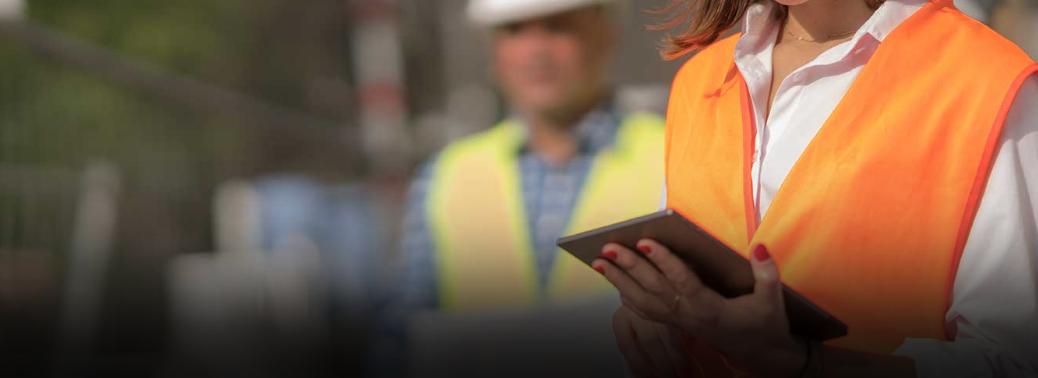
For 97% of working women, life has changed post migration, a survey by ICICI Lombard on the physical and mental health of working women through their career span.
The study surveyed working women in the age group 22-55 years, covering aspects like migration for work, resuming work post maternity and women at work facing menopause. The objective of the survey was to understand issues faced by working women at the workplace.
While gender equality at the workplace has become a byword in the corporate sector, the survey has brought forth the fact that 53% of the working women believe their workplaces are still male-dominated.
Of this, 46% belong to the age group 22-33 years, followed by 35% group from the age group 34-44 years. Women in the telecom and manufacturing sector experienced more instances of gender discrimination than any other sector.
Another interesting facet of the survey was in that 62% of the respondents believed that recognition at par with male counterparts notwithstanding, there is a gap when it comes to remuneration. This was found to be more prevalent in the manufacturing and financial sectors.
The imbalance thus created puts extra pressure on women leading into increased frustration levels (66%), working beyond their capacity to prove their mettle (64%) and stress due to high expectations (62%).
Workplace abuse was an aspect faced more by older women (45-55 years), with a majority of them reporting this to HR (43%), but a significant lot (32%) also quitting on account of this.
Positive change
Migration for work has proved to be a positive change for 97% of working women, enhancing self-confidence and financial independence. Cultural shock, though, is a major challenge.
Also, women migrating post 30 are more prone to stress as it is mentally difficult to accommodate in formal office environment.
Respondents to the survey relating to menopause revealed that depression is a common emotion impacting 89% of working women, leading 42% of them to take leave once a month. In order to relieve that stress, 49% of the women engaged in activities like yoga, while others preferred morning/evening walks and zumba. However, gym and outdoor sports are almost negligible.
The study involved online quantitative interviews with 1500 working women, across five locations.
SC may send plea challenging quota Bill to Constitution Bench
12, Mar 2019
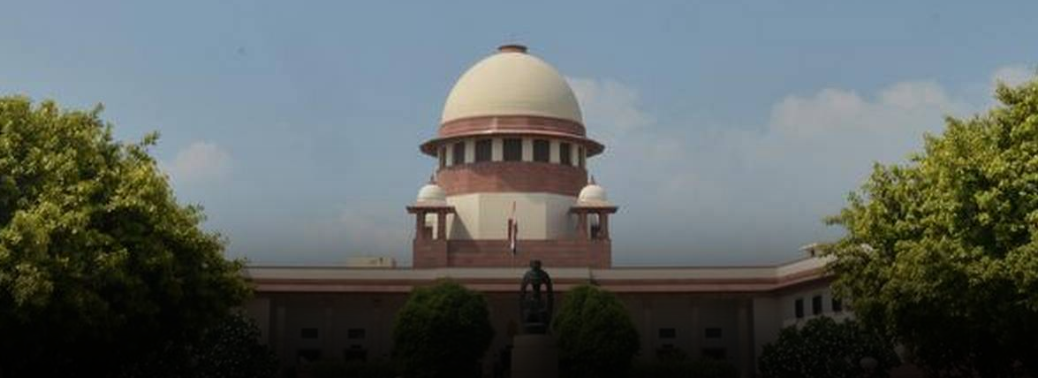
The Supreme Court decided to consider the question of whether the challenge to the 10% economic reservation law should be heard by a Constitution Bench. A three-judge Bench, led by Chief Justice of India Ranjan Gogoi, scheduled the hearing for March 28.
The court, however, refused to pass any interim order to stay or hamper the implementation of the Constitution (103rd Amendment) Act that provides for 10% reservation in government jobs and educational institutions to the economically backward in the unreserved category.
The issue arose when senior advocate Rajeev Dhavan pointed out that the 50% quota limit was part of the Basic Structure of the Constitution, and the new amendment tinkered with it.
The Act amends Articles 15 and 16 of the Constitution, adding clauses empowering the government to provide reservation on the basis of economic backwardness.
Basic features violated
The petitions, said the Act violated the basic features of the Constitution. The petitioners argued that the 50% ceiling was “engrafted as a part of the Basic Structure of the Constitution’s equality code” by the court.
One of the petitions, contended that the court, in a nine-judge Bench judgment in the Indra Sawhney case, had settled the law that economic backwardness could not be the sole basis for reservation. The petition argued that the Act was “vulnerable” and negated a binding judgment of the Supreme Court.
The petitioners contended that the amendments excluded the OBCs and the SCs/STs from the scope of the reservation.
Only for elite
It essentially implies that only those who are poor from the general categories would avail themselves of the benefits of the quotas.” It said the high creamy layer limit of Rs. 8 lakh a year meant the elite would capture the benefits.
Further, the petitioners contended that the court had already settled the law that the state’s reservation policy cannot be imposed on unaided educational institutions, and as they are not receiving any aid from the State, they can have their own admission if they are fair, transparent, non-exploitative and based on merit.
While the impugned amendment attempts to overcome the applicability of Articles 19(1)(g) and 29(2), it remains silent on Article 14, which protects the citizens from manifestly arbitrary State action.
The petition also contended that the term ‘economically weaker sections’ remained undefined in the Act, along with the “ambiguous” term of ‘State’. The question of reference came up even as the Centre sought more time to file its counter.
TikTok cannot be banned, can only be regulated, say experts
11, Mar 2019
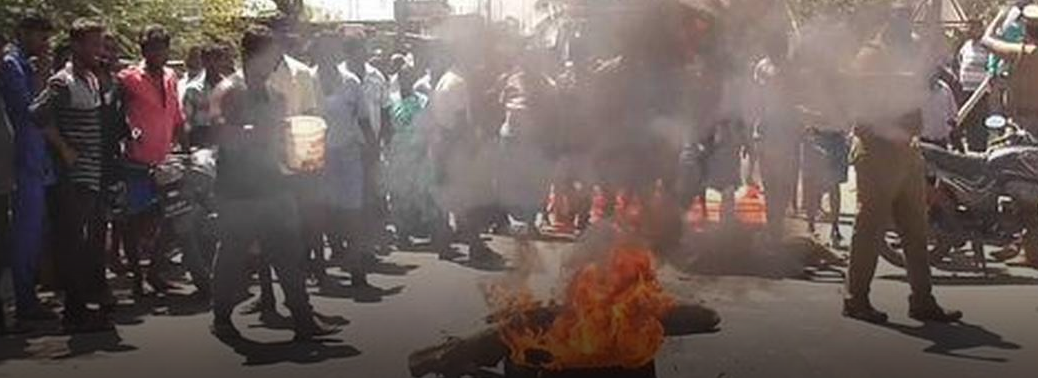
In the light of several controversial videos on media platform TikTok and political leaders voicing concern, Information Technology Minister recently made an announcement in the Assembly that the State would take steps to get the Chinese-developed app banned.
The police have also pointed to the far-reaching implications of hosting videos on the app. They said there had been several law and order incidents due to sharing of videos on the app in the last few months.
Popular app
Several mobile phone users had downloaded the app and using it. If the law and order situation was under threat, it was important to check the misuse of the app and enforce regulations.
The anti-vice squad of Chennai police recently busted a gang that used morphed pictures of women downloaded from Tik Tok to lure customers.
Why no Ban?
As of now, the authorities cannot ban TikTok application legally since it is a company incorporated in China. If the government bans TikTok, it will merely will crop up in another name or form. The Union government should constitute an empowered committee to study the possibility of regulating such applications.
Lok Sabha polls from April 11 to May 19
11, Mar 2019
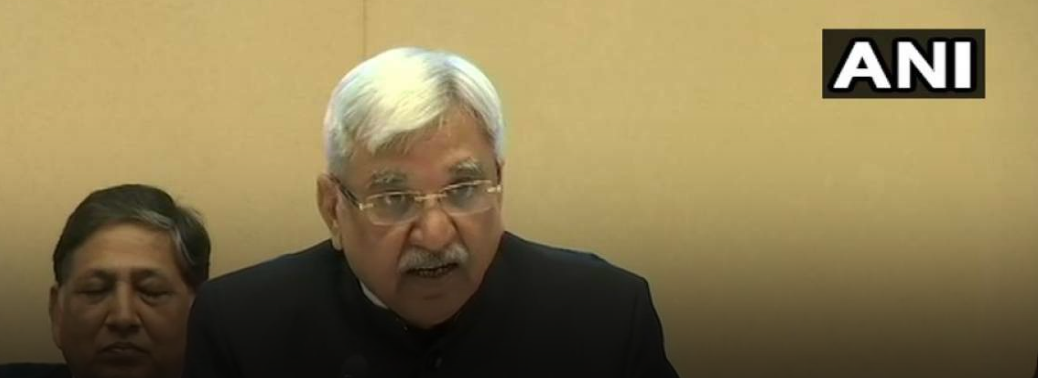
Elections to the 17th Lok Sabha will be conducted in seven phases across the country from April 11 to May 19. The counting of votes will be on May 23. The Model Code of Conduct came into effect immediately on the announcement of the schedule, with the Election Commission introducing fresh measures to enhance the integrity of the electoral process and raise the accountability of campaigners.
Voting across the country would be held on April 11, April 18, April 23, April 29, May 6, May 12 and May 19.
The Assembly election in Andhra Pradesh, Arunachal Pradesh, Sikkim and Odisha will be conducted simultaneously with the Lok Sabha
The election in 22 States and Union Territories will be conducted in a single phase. Two-phase elections are in Karnataka, Rajasthan, Manipur and Tripura, while Assam and Chhattisgarh will have three phases. Jharkhand, Madhya Pradesh, Maharashtra and Odisha will be covered in four phases, Jammu and Kashmir in five, and Bihar, Uttar Pradesh and West Bengal in seven phases. In Anantnag, the election will he held in three rounds.
According to CEC 91 constituencies would go to the polls in the first phase, 97 in the second phase, 115 in the third phase, 71 in the fourth, 51 in the fifth, and 59 each in the sixth and seventh phases.
As on January 1, about 900 million people were eligible to vote, as per the electoral rolls, compared with 814.5 million in 2014. Among them are a sizable number of those born at the turn of the millennium. Over 15 million fall in the 18-19 years age group. While 71,735 overseas electors have been enrolled, more than 16.77 lakh are service electors.
10% more
There would be more than 10.35 lakh polling stations, 10% higher than in 2014. The Voter Verifiable Paper Audit Trail (VVPAT) machines, a total of 17.4 lakh units, will be used for the first time at all stations. He said the standard operating procedure for the security of EVMs and VVPATs had been revised to ensure that their end-to-end movement was monitored through the GPS-fitted transport vehicles.
Election Commission of India
- Election Commission of India is a permanent body entrusted for the conduct of free and fair elections.
- An independent Election Commission has been provided for in Article 324of the Constitution of India.
- Currently has three members including Chief Election Commissioner (CEC).
- They all are appointed by the President for a term which is fixed by the President.
Tenure:
The service conditions and tenure of office of CEC and Election Commissioners are determined by Act of parliament titled The Chief Election Commissioner and Other Election Commissioners (Conditions of Service) Act, 1991. This act has fixed their term for 6 years or till age of 65 years, whichever is earlier.
Power/salary:
The CEC and election commissioners have equal power and receive equal salary, allowances and other perquisites, which are similar to judge of Supreme Court. In case of difference of opinion amongst the Chief Election Commissioner and Election Commissioner, the matter is decided by the Commission by majority.
One of the most important functions of the election commission is to prepare an up-to-date list of all the persons who are entitled to vote at the elections.
Election Commission is entrusted with :
- Election of President;
- Election of Vice-President;
- Election of Lok Sabha as well as Rajya Sabha;
- Elections to State Legislatures as well as Legislative Councils;
- Reservation of Seats in Lok Sabha and State Legislatures;
- Qualifications of the MPs and MLAs;
- Determination of population for purposes of the election.
Do forest surveys separately
09, Mar 2019
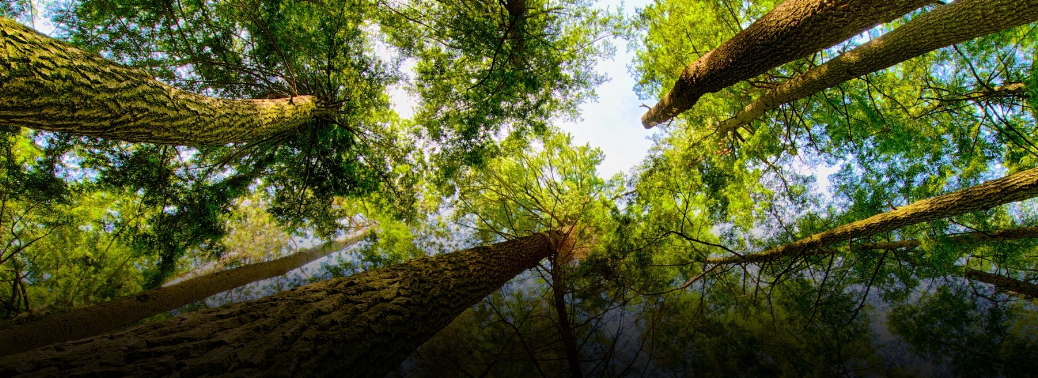
A high-power committee constituted by the Ministry of Environment, Forest and Climate Change (MoEFCC) has recommended that forest surveys — the biennial exercise by the government to estimate forest cover — explicitly demarcate trees grown in forests from those grown outside, that is, in plantations and private lands.
Currently, the government counts both towards estimating the portion of India’s geographical area covered by forest.
Independent critics have for long pointed out that including both isn’t an ecologically sound principle but this is a first instance of government-constituted committee recommending so.
India posted a marginal 0.21% rise in the area under forest between 2015 and 2017, according to the India State of Forest Report (SFR) 2017, which was made public in February 2018.
The document says that India has about 7,08,273 sq. km. of forest, which is 21.53% of the geographic area of the country (32,87,569 sq. km.).
Getting India to have at least 33% of its area under forest has been a long-standing goal of the government since 1988.
Various editions of the SFR have over the years reported the area under forests as hovering around 21%. So the government also includes substantial patches of trees outside areas designated as forests, such as plantations or greenlands, in its assessment.
Tree cover
The total tree cover, according to this assessment, was 93,815 sq. km. or a 2% rise from the approximately 92,500 sq. km. in 2015.
You will be in trouble if anything is done to Aravali
09, Mar 2019
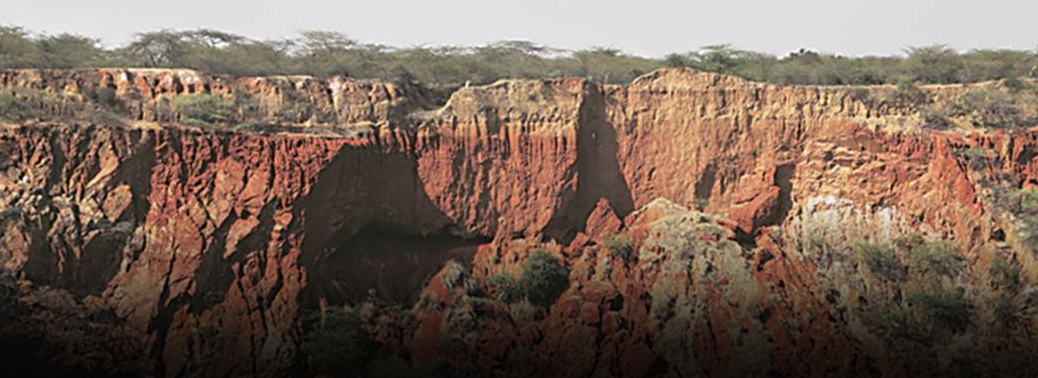
The Supreme Court cautioned the Haryana government against doing “anything” to harm the ecologically fragile Aravalli range.
A Bench, led by Justice Arun Mishra, was responding to a submission by Solicitor General Tushar Mehta that he would prove that the State has not introduced amendments in the Punjab Land Preservation Act (PLPA), 1900, in order to give a leeway to illegal mining or builders.
Liable for contempt
- If you are doing anything with Aravalli or Kant Enclave (where the top court had ordered demolition of buildings due to illegal constructions in forest area) you will be in trouble. If you are doing anything with forest, you will be in trouble.
- On March 1, the court had cautioned the Haryana government with contempt if it went ahead with the amendments virtually allowing massive scale of construction in the Aravalli Hills.
- The court had said the amendments pull the carpet from under a series orders passed by the Supreme Court over the years to protect the Aravalli and Shivalik ranges from builders and indiscriminate mining.
- The court had pointed out how the once-lush Aravalli region was devastated after years of indiscriminate and illegal mining. The entire Aravalli area is devastated and entire flora and fauna there has gone.
- In October last, the court had expressed shock over 31 “vanished” hills in the Aravallis and had asked Rajasthan to stop illegal mining in 115.34-hectare area.
About Aravalli Range
- It is a range of mountains running in North West direction between Delhi and Palanpur in Gujarat.
- It constitutes a vital corridor between Asola Bhatti Sanctuary in Delhi and Sariska Tiger Reserve in Rajasthan.
- The 700km long range and its thick forest cover protects National Captial Region and fertile plains of India from effects of Desert.
AYODHA DISPUTE CASE
08, Mar 2019
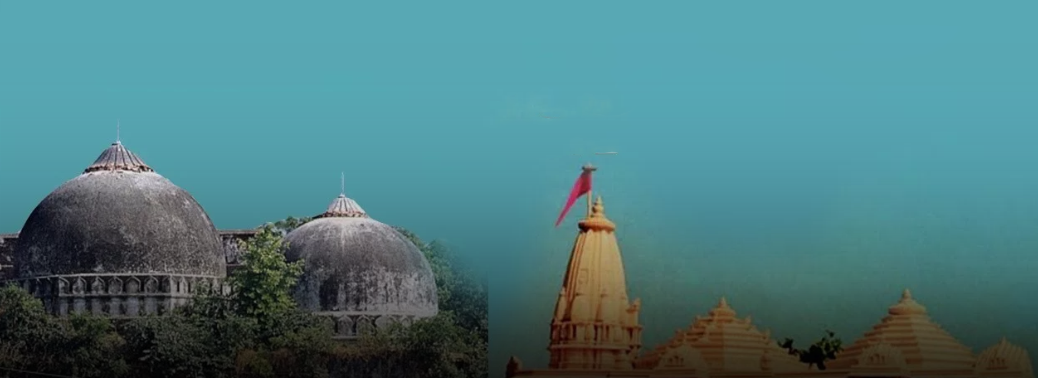
The SC bench constituted a three-member panel for the mediation in ayodha dispute case.
About:
- The three-member mediation panel will be headed by former SC judge Justice F M Kalifullah, members of the panel include spiritual guru Sri Sri Ravi Shankar and Senior Advocate Sriram Panchu. It asked the panel to give the progress report of the matter in four weeks and to complete the talks in eight weeks.
- The mediation proceedings will be held in-camera in Faizabad, Uttar Pradesh, and will “commence within a week”.
- The bench directed the state government to “forthwith” make arrangements including the venue of the mediation, place of stay of the mediators, their security and travel. While hearing arguments on the proposal for mediation, the bench had stressed the need to keep the proceedings confidential so that dialogue is not hampered by unwanted comments and controversies.
- The bench said “we are of the further opinion that while the mediation proceedings are being carried out, there ought not to be any reporting of the said proceedings either in the print or in the electronic media”.
- But it refrained from passing any specific order “at this stage” and left it to the mediators to pass necessary orders “in writing, if so required to restrain publication of the details of the mediation proceedings”.
- The bench said the panel chairman may inform the Supreme Court Registry in case of any difficulty in carrying out the task assigned or if there was any requirement to facilitate the mediation and to conclude it at the earliest.
Background:
- The suggestion for mediation had come from the bench on February 26 when it took up appeals. It said it could only decide on property and what it was looking at was “a possibility of healing relationships”.
- It sought the views of the parties on invoking Section 89 of the CPC which deals with mediation.
- Section 89 says that “Where it appears to the court that there exist elements of a settlement which may be to the parties, the court shall formulate the terms of settlement and give them to the parties for their observations and after receiving the observations of the parties, the court may reformulate the terms of a possible settlement and refer the same for (¬a) arbitration; (b) conciliation; (c) judicial settlement including settlement through Lok Adalat; or (d) mediation”.
Ram Janmabhoomi-Babri Masjid land dispute case:
Following is the chronology of events in the Ram Janmabhoomi-Babri Masjid land dispute case
*1528:
Babri Masjid built by Mir Baqi, commander of Mughal emperor Babur.
*1885:
Mahant Raghubir Das files plea in Faizabad district court seeking permission to build a canopy outside the disputed Ram Janmabhoomi-Babri Masjid structure. Court rejects plea.
*1949:
Idols of Ram Lalla placed under a central dome outside the disputed structure.
*1981:
UP Sunni Central Waqf Board files suit for possession of the site.
*February 1, 1986:
Local court orders the government to open the site for Hindu worshippers.
*August 14, 1989:
Allahabad HC ordered maintenance of status quo in respect of the disputed structure.
*December 6, 1992:
Ram Janmabhoomi-Babri Masjid structure demolished.
1993
*April 3:
‘Acquisition of Certain Area at Ayodhya Act’ passed for acquisition of land by Centre in the disputed area.
*October 24, 1994:
SC says in the historic Ismail Faruqui case that a mosque was not integral to Islam.
*April 2002:
HC begins hearing on determining who owns the disputed site.
NPPA ON ANTI-CANCER DRUGS
08, Mar 2019
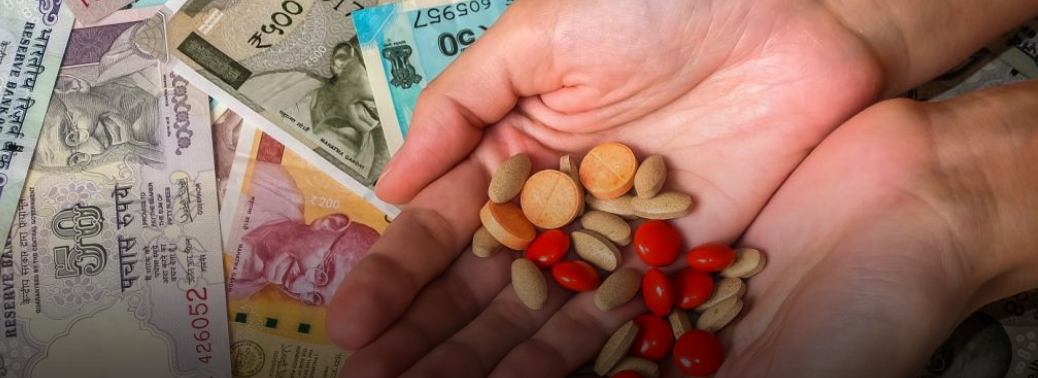
The government announced a massive reduction in the prices of anti-cancer drugs and put out a list of 390 drugs that will get price slash.
About:
- The National Pharmaceutical Pricing Authority has put out the list of 390 anti-cancer non-scheduled medicines with MRP reduction up to 87 per cent. The revised prices came into effect from immediately.
- On February 27, the authority had put 42 anti-cancer drugs under “30 per cent trade margin” cap to enable price reduction.
- Manufacturers and hospitals were directed to convey the revised MRP on the listed drugs, based on the revised trade margin formula.
- As many as 390 brands, 91 per cent of the 426 anti-cancer brands reported by manufacturers, showed downward price movement after the February 27 move.
- The range of reduction is 75% and more for 38 brands; 50 to 75% for 124 drugs; 25 to 50% for 121 drugs; below 25% for 107 drugs.
- The manufacturers of these 42 drugs have been directed not to reduce production volume of brands under regulation.
- The trade margin rationalization for 42 anti-cancer drugs was rolled out as proof of concept stressing on the new paradigm of self-regulation by the industry.
- The government’s move, however, is unlikely to affect pharma companies. The new notified formula for fixing the maximum retail price (MRP) of 42 cancer drugs is based on the price at the first point of sale of the product or price to stockists.
- The average ‘out-of-pocket’ expenditure for cancer patients is 2.5 times that for other diseases. This move is expected to benefit 22 lakh cancer patients in the country and result in annual savings of Rs 800 crore to consumers.
NPPA:
- The National Pharmaceutical Pricing Authority (NPPA) is a government regulatory agency that controls the prices of pharmaceutical drugs in India.It comes under Department of Pharmaceuticals, Ministry of Chemicals and Fertilizers.
- The NPPA regularly publishes lists of medicines and their maximum ceiling prices.
Functions: - To implement and enforce the provisions of the Drugs (Prices Control) Order in accordance with the powers delegated to it.
- To deal with all legal matters arising out of the decisions of the Authority.
- To monitor the availability of drugs, identify shortages, if any, and to take remedial steps.
- To collect/ maintain data on production, exports and imports, market share of individual companies, profitability of companies etc, for bulk drugs and formulations.
- To undertake and/ or sponsor relevant studies in respect of pricing of drugs/ pharmaceuticals.
- To recruit/ appoint the officers and other staff members of the Authority, as per rules and procedures laid down by the Government.
- To render advice to the Central Government on changes/ revisions in the drug policy.
- To render assistance to the Central Government in the parliamentary matters relating to the drug pricing.
Smart Fence
07, Mar 2019
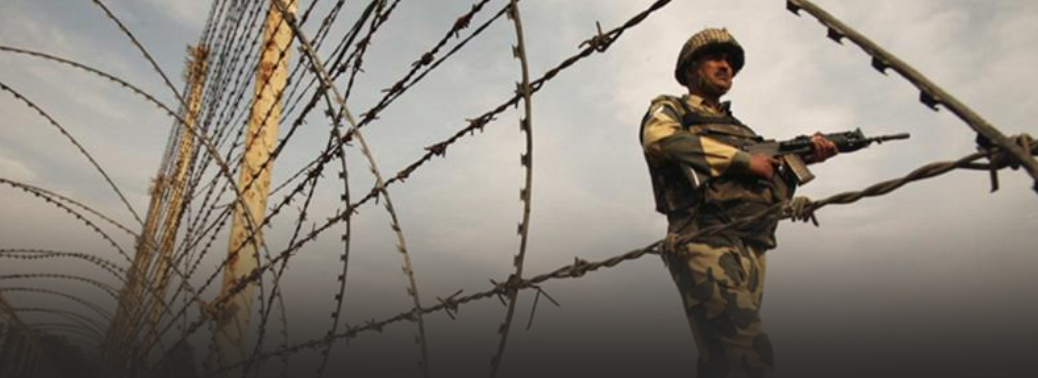
Context
- Assam shares a 263 km border with Bangladesh. Much of the border was fenced, but a 61 km stretch in Dhubri district remained open owing to the terrain dictated by the Brahmaputra. This stretch is where the vast Brahmaputra and its numerous channels with chars (sandbars) in between flow into Bangladesh. Infiltrators, cattle smugglers and others invariably took advantage of the difficulty in keeping vigil along this stretch, even on speedboats.
Difference between Barbed Fencing, Smart Fence & Comprehensive Integrated Border Management System:
- Barbed Fence – Refers to the securing of the border with physical fences that obstruct infiltration. Smart Fence – The smart fences have an addition of electronic systems to the barbed wire, which helps in detecting movement along the border.
- CIBMS – Lastly, when one cannot have a physical border security system due to the geographical reason, CIBMS is being used. CIBMS uses technology driven by sensors to detect any form of movement in the water, on the land surface and in the air.
About the Current Fence:
- Current Fence Comprises of microwave communication, optical fibre cables, cameras, and an intrusion detection device, this system is called BOLD-QIT (Border Electronically Dominated QRT Interception Technique) and was established under the Comprehensive Integrated Border Management System.
THE CENTRAL EDUCATIONAL INSTITUTIONS (RESERVATION IN TEACHERS’ CADRE) ORDINANCE, 2019
06, Mar 2019

- The Union Cabinet approved a proposal for promulgation of The Central Educational Institutions (Reservation in Teachers’ Cadre) Ordinance, 2019 to restore the earlier 200-point roster-based reservation system in Higher Education Institutions (HEIs).
About:
- The Cabinet has approved proposal for promulgation of The Central Educational Institutions (Reservation in Teachers’ Cadre) Ordinance, 2019 to provide for the reservation of faculty in appointments by direct recruitment of persons belonging to Scheduled Castes (SC), Scheduled Tribes (ST) and Socially and Educationally Backward Classes (SEBL) in central educational institutions and for matters connected there with.
- The new system will consider the university or college as one unit, instead of treating department or subject as one unit. The ordinance will ensure that constitutional provisions of reservation for SC, ST and SEBL in the faculty recruitment will be protected and current impasse in recruitment would be resolved. The decision will also now pave the way for filling up of more than 5,000 vacancies by direct recruitment in teachers’ cadre.
Background:
- There has been agitation urging the government to bring an ordinance to restore the 200-point roster taking college or university as a unit for reservation in teaching posts.
- The University Grants Commission (UGC) had announced last March that an individual department should be considered as the base unit to calculate the number of teaching posts to be reserved for the SC and ST candidates, following an order by the Allahabad High Court in April 2017. The Supreme Court had last month dismissed a review petition filed by the HRD Ministry after its special leave petition against the court order was rejected by the apex court.
BOLD-QIT PROJECT
06, Mar 2019

- Union Home Minister Rajnath Singh inaugurated a 61-km long smart fencing Called BOLD-QIT between India and Bangladesh in Assam’s Dhubri district.
About:
- BOLD-QIT (Border Electronically Dominated QRT Interception Technique), is the third smart fence project launched under the Comprehensive Integrated Border Management System (CIBMS) after two similar projects covering a 10-km stretch on the India-Pakistan border were inaugurated last year.
- CIBMS involves deployment of a range of state-of-the-art surveillance technologies thermal imagers, infra-red and laser-based intruder alarms, aerostats for aerial surveillance, unattended ground sensors that can help detect intrusion bids, radars, sonar systems to secure riverine borders, fibre-optic sensors and a command and control system that receives data from all surveillance devices in real time.
- In September 2018, two pilot projects of ‘smart’ border fencing built under the CIBMS programme were operationalised in Jammu.
- CIBMS implementation of the project will help in integration of manpower, sensors, networks, intelligence and command and control solutions to improve situational awareness at different levels of the hierarchy in order to facilitate prompt and informed decision-making and quick reaction to emerging situations.
- The BOLD-QIT project in Dhubri has been implemented along a riverine border and its fencing was a challenge. The entire India-Bangladesh border would gradually be fenced using smart technology.
- The 61-km border stretch where the river Brahmaputra enters Bangladesh includes vast ‘char’ lands and innumerable river channels, making security here an arduous task, especially during rainy season. Pointing out that the implementation of the projects on both India-Pakistan and India-Bangladesh borders will enhance the capabilities of the Border Security Force (BSF). Stage-I of the pilot project has been completed in Jammu and Kashmir and Assam, it will be reviewed by the IIT Delhi as an independent third-party auditor.Stages-II and III of the projects will target riverine, delta and estuary areas, waterlogged and swampy areas, creeks, plains vulnerable to heavy fog, thickly populated areas, hills, tropical jungles and deserts.
MAJOR REFORMS FOR INDIAN ARMY
06, Mar 2019

About:
- Defense ministry has approved the first batch of reforms in the Army which include relocation of 229 officers from the Army headquarters, creation of a new post of deputy chief for military operations and strategic planning, and setting up new wings for vigilance and human rights issues.
- Finalized after 12 independent studies, the transformative reforms in the Army are being implemented to make the 1.3 million-strong force leaner and meaner as well as to enhance its combat capabilities. The number of officers being moved out is 20 per cent of the total officers in the Army headquarters in the national capital, and they be deployed in forward locations along the borders with China and Pakistan.
- The post of Deputy Chief of the Army Staff Strategy DCOAS (Strategy) is being created to deal with military operations, military intelligence, strategic planning and operational logistics.
- At present, the DG (Military Operations) and the DG (Military Intelligence) report to the Army Chief.
- The defense minister also approved creation of a new information warfare wing in keeping the needs of the future battlefield, hybrid warfare and social media reality.Government has approved merging of the separate verticals of the DCOAS (planning and strategy) and the Master General Ordnance (MGO) into one office of the DCOAS (Capability Development and Sustenance).
- Government has also approved creation of two new branches to deal with vigilance and human rights issues, reflecting the Army’s commitment to probity and transparency. Both the branches will be headed by Major General rank officers.
- The new ADG, Vigilance will function directly under the Chief of Army Staff and the new ADG Human Rights will function under the VCOAS. the ADG (Vigilance) will also have a new Vigilance Investigation Unit under him.
- The reforms will also include restructuring the Army’s officer cadre, bringing down age of key commands, arresting rising revenue expenditure and “right-sizing” the force.
- This move would synergise and coalesce all revenue and capital spending under one organisation and effectively prioritise competing requirements with an operational focus to get better value for funds allocated by the government.
- The reform measures will be implemented with a sense of urgency.
Background:
- The Army headquarters had instituted four studies with an overall aim to enhance the operational and functional efficiency of the force, optimize budget expenditure, facilitate modernization and address aspirations. The first study on ‘re-organisation and right-sizing of the Indian Army’ was focused on the operational structures to make the force efficient and future-ready by taking into account the operational situation on western and northern borders.
- The second study was on ‘re-organisation of the Army headquarters with an aim to bring in “integration and preclude the redundancies”.
- The third study was on ‘cadre review of officers’ and its focus was to recommend how to carry out reorganisation and restructuring to meet the aspirations of the officers’ cadre.
- The fourth study on ‘review of terms of engagement of rank and file’ was aimed at harnessing the higher life expectancy and ensuring younger profile of key commands and motivation of the personnel.
HALT THE HATE- REPORT
06, Mar 2019

- Amnesty India releases ‘Halt the Hate’ report which records the data on reported hate crimes against people from marginalised communities, which includes Dalits and Adivasis, members of racial or religious minority groups, transgender persons and migrants.
About:
- The ‘Halt the Hate’ website documents alleged hate crimes against people from marginalized communities, including Dalits, Adivasis, members of racial or religious minority groups, transgender persons, and migrants. The website documents alleged hate crimes from September 2015, when Mohammad Akhlaq was killed in Dadri, Uttar Pradesh, for allegedly killing a cow. It uses English and Hindi language media to collect a record of these reported incidents. Since September 2015, there have been 721 incidents of alleged hate crimes, a vast majority of which have been against Dalits and Muslims.
Findings:
- In 2018, the website documented a total of 218 incidents of alleged hate crimes. 142 of these were against Dalits, 50 against Muslims, and 8 each against Christians, Adivasis, and Transgender people.
- There were 97 incidents of assault and 87 killings reported. 40 incidents were reported where women from marginalized groups or transgender persons faced sexual violence. Dalit women, in particular, faced a disproportionate amount of sexual violence, facing 33 out of 40 incidents of sexual violence.
- Cow-related violence and so-called ‘honour’ killings were among the common instances of alleged hate crimes. Of all the states and union territories where hate crime incidents were tracked, the top five states are Uttar Pradesh (57), Gujarat (22), Rajasthan (18), Tamil Nadu (16) and Bihar (14). For the third straight year, Uttar Pradesh is reported to have the highest number of hate crimes, with 50 incidents in 2017 and 60 incidents in 2016.
Way Forward:
- The data on the website is only a snapshot of alleged hate crimes in India, and is not comprehensive by any means.
- Many incidents are not reported to the police, and even when they are, many do not make it to mainstream media. While criminal investigations have been initiated in some cases, several have gone unpunished.
- Authorities need to do much more to ensure justice for victims and their families.
NITI AAYOG TO DRAW UP LIST OF NON-CORE ASSETS OF CPSES FOR MONETISATION
05, Mar 2019

In News:
The NITI Aayog has been tasked with drawing up a list of non-core assets of various CPSEs, both healthy and sick ones, as a first step towards Finance Ministry’s plan to monetise such assets and unlock value to shareholders.
Explained:
- In 2016, NITI was asked to draw up a list of CPSEs which could go in for strategic sale. It had identified about 35 CPSEs which could go in for outright sale.
- This is part of the overall plans of the government to lay down a procedure and mechanism for monetisation of non-core assets of central public sector undertakings (CPSEs), that include mainly land and building.
- NITI Aayog will draw up the list of non-core assets owned by CPSEs, which can be sold separately after discussion with a consultative group comprising officials from administrative ministries, Department of Economic Affairs, Department of Investment and Public Asset Management (DIPAM).
- The nine CPSEs whose non-core assets have been identified for hiving off are Pawan Hans, Scooters India, Air India, Bharat Pumps & Compressors, Project & Development India Ltd (PDIL), Hindustan Prefab, Hindustan Newsprint, Bridge and Roof Co and Hindustan Fluorocarbons. In the current financial year, the government has set a disinvestment target of Rs 80,000 crore, which includes strategic and minority stake sale in CPSEs. The government already had already given in-principle approval for strategic sale of 24 state-owned companies.
- So far, this fiscal, the government has raised over Rs 56,064 crore by divesting stakes in state-owned companies.
NITI AAYOG:
- The National Institution for Transforming India, also called NITI Aayog, was formed via a resolution of the Union Cabinet on January 1, 2015. NITI Aayog is the premier policy ‘Think Tank’ of the Government of India, providing both directional and policy inputs.
- While designing strategic and long-term policies and programmes for the Government of India, NITI Aayog also provides relevant technical advice to the Centre and States.
- The Government of India, in keeping with its reform agenda, constituted the NITI Aayog to replace the Planning Commission instituted in 1950. This was done in order to better serve the needs and aspirations of the people of India. An important evolutionary change from the past, NITI Aayog acts as the quintessential platform of the Government of India to bring States to act together in national interest, and thereby fosters Cooperative Federalism. At the core of NITI Aayog’s creation are two hubs – Team India Hub and the Knowledge and Innovation Hub. The Team India Hub leads the engagement of states with the Central government, while the Knowledge and Innovation Hub builds NITI’s think-tank capabilities. These hubs reflect the two key tasks of the Aayog.
- NITI Aayog is also developing itself as a State-of-the-Art Resource Centre, with the necessary resources, knowledge and skills, that will enable it to act with speed, promote research and innovation, provide strategic policy vision for the government, and deal with contingent issues.
01, Mar 2019

In News
- The central government defended in the Supreme Court an earlier notification enabling 10 agencies to monitor, intercept and decrypt any information generated, transmitted, received or stored in any computer.
About:
- The Centre told the Supreme Court on Friday that its December 20, 2018 notification allowing 10 central agencies to snoop on people is in fact a measure to protect citizens’ privacy.
- The government was responding to a petition filed by advocate ML Sharma challenging the December 20 notification as a violation of the fundamental right to privacy. In January, the Supreme Court had issued a notice to the Centre and ordered it to respond within six weeks.
- According to the order, service providers, subscribers and those in charge of a computer resource will be bound to extend all technical assistance to the agencies, and failing to do so will lead to imprisonment.
- After the order had led to severe criticism from several Opposition parties, the Centre clarified it had not conferred any new powers on any central security or law enforcement agency. The notification was in accordance with rules framed in 2009 under the United Progressive Alliance government, the ministry had then said.
- The Centre argued that the order to monitor computers was in national interest. “Surveillance is done only in the defence of India, to maintain public order, etc that the country faced grave threats from terrorism, radicalisation, cross-border terrorism, cybercrime and drug cartels. There is a need for “speedy collection of actionable intelligence” to counter threat to national interests.
- The order provided surveillance powers to only 10 central agencies. “What has been done under the December 20 order is in fact restricting the exercise of powers, removing a possible vagueness and specifying the agencies/organisations who only would have the powers to utilise the powers of section 69 of the [Information Technology] Act.
- The order was to ensure that surveillance is carried out as per law, and that any interception, monitoring, decryption of computer resources is done by authorised agencies and with approval of the competent authority.
- The Centre argued that the order would prevent unauthorised use of surveillance powers by any agency, individual or intermediary, and would not violate the right to privacy of citizens.
Background:
- The order allows central agencies, from the Intelligence Bureau to the Central Board of Direct Taxes to the Cabinet Secretariat (RAW) to the Commissioner of Delhi Police, to intercept, monitor and de-crypt “any information” generated, transmitted, received or stored in “any computer resource”.
- The order is based on Section 69 (1) of the Information Technology Act of 2000 and Rule 4 of the Information Technology 2009 Rules (Procedure and Safeguards for Interception,Monitoring and Decryption of Information) Rules, 2009.
PARLIAMENTARY STANDING COMMITTEE ON INDIA ATTACK
01, Mar 2019

In News
- Members of the Standing Committee on External Affairs requested Centre to circulate evidence of the damage suffered by the Jaish-e Mohammad (JeM) camp in Balakot to the international community to end speculation in the international press about the number of casualties in the Indian Air Force attack.
About:
- Foreign Secretary Vijay Gokhale and other senior officials of the External Affairs Ministry briefed the panel. Mr. Gokhale was meant to speak on the new government taking charge in Pakistan, but the briefing was largely centred on the Pulwama attack and its fallout.
- The Foreign Secretary refused to give operational details about the air strikes pleading that it did not fall under his domain.
- He also refused to answer questions on the number of possible casualties at the JeM camp, committee sources said.
- The panel members hailed the strikes by the Indian Air Force but lamented that internationally India had not been given due credit.
- The international community is claiming that our strikes had no impact, the camps were already empty and no men were killed. They are trying to hide the glory of our armed forces. So, we told the Foreign Secretary that this misinformation campaign needs to be combated by widely circulating the relevant evidence.
- The panel asked Mr. Gokhale to highlight the justification for the air strikes and the JeM’s role in spreading terror in India.
- Mr. Foreign Secretary assured the Committee that diplomatic overtures to the international community were still under way.
UNION CABINET APPROVES SOFTWARE PRODUCT POLICY
28, Feb 2019
In News:
- The Union Cabinet approved the National Policy on Software Products 2019, which would help in formulating schemes, projects and measures to develop the software industry.
Explained:
- The policy aims to adopt a shift in strategy so that IT products also contribute equitably and significantly to the industry along with IT services.
- The government said that initially an outlay of Rs. 1,500 crores are being planned for various schemes under in policy in the next seven years.
- Further, the policy proposes to create a Rs. 5,000-crore fund with industry participation to promote emerging technology such as Internet of Things, Artificial Intelligence, Blockchain, Big Data and robotics. Of this, government contribution will be Rs. 1,000 crores.
- Software Product Development Fund’ will participate in venture funds having objectives aligned to this policy and so can leverage private investments targeted to promote software product ecosystem
The SPDF will be financially managed by a professional financial institution. - Presently, total revenue of IT-ITeS industry in India is pegged at about $168 billion (including e-commerce), with revenue of about $7.1 billion from software product industry, of which $2.3 billion is from exports.
- Further, the Policy aims to align with other Government initiatives such as Start-up India, make in India and Digital India, Skill India etc so as to create Indian Software products Industry of USD ~70-80 billion with direct & indirect employment of ~3.5 million by 2025.
The Policy has the following five Missions:
- To promote the creation of a sustainable Indian software product industry, driven by intellectual property (IP), leading to a ten-fold increase in India share of the Global Software product market by 2025.
- To nurture 10,000 technology startups in software product industry, including 1000 such technology startups in Tier-II and Tier-III towns & cities and generating direct and in-direct employment for 3.5 million people by 2025.
- To create a talent pool for software product industry through
1. Up-skilling of 1,000,000 IT professionals,
2. Motivating 100,000 school and college students and
3. Generating 10,000 specialized professionals that can provide leadership. - To build a cluster-based innovation driven ecosystem by developing 20 sectoral and strategically located software product development clusters having integrated ICT infrastructure, marketing, incubation, R&D/testbeds and mentoring support.
- In order to evolve and monitor scheme & programmes for the implementation of this policy, National Software Products Mission will be set up with participation from Government, Academia and Industry.
CABINET OKAYS NATIONAL MINERAL POLICY 2019
28, Feb 2019
In News:
- The Cabinet approved National Mineral Policy 2019.
Explained:
- It will lead to sustainable mining sector development future, while addressing the issues of project affected persons, especially those residing in tribal areas.
Objective of policy:
- The aim of National Mineral Policy 2019 is to have a more effective, meaningful and implementable policy that brings in further transparency, better regulation and enforcement, balanced social and economic growth as well as sustainable mining practices.
Provisions of policy:
- The National Mineral Policy 2019 includes provisions which will give boost to mining sector such as.
- Introduction of Right of First Refusal for RP/PL holders,
- Encouraging the private sector to take up exploration,
- Auctioning in virgin areas for composite RP cum PL cum ML on revenue share basis, encouragement of merger and acquisition of mining entities and transfer of mining leases and creation of dedicated mineral corridors to boost private sector mining areas.
- The 2019 Policy proposes to grant status of industry to mining activity to boost financing of mining for private sector and for acquisitions of mineral assets in other countries by private sector
- It also mentions that Long-term import-export policy for mineral will help private sector in better planning and stability in business.
- The Policy also mentions rationalize reserved areas given to PSUs which have not been used and to put these areas to auction, which will give more opportunity to private sector for participation.
- The Policy also mentions to make efforts to harmonize taxes, levies & royalty with world benchmarks to help private sector.
- Among the changes introduced in the National Mineral Policy, 2019 include the focus on make in India initiative and Gender sensitivity in terms of the vision. In so far as the regulation in Minerals is concerned, E-Governance, IT enabled systems, awareness and Information campaigns have been incorporated.
- Regarding the role of state in mineral development online public portal with provision for generating triggers at higher level in the event of delay of clearances has been put in place.
- NMP 2019 aims to attract private investment through incentives while the efforts would be made to maintain a database of mineral resources and tenements under mining tenement systems.
- The new policy focusses on use coastal waterways and inland shipping for evacuation and transportation of minerals and encourages dedicated mineral corridors to facilitate the transportation of minerals.
- The utilization of the district mineral fund for equitable development of project affected persons and areas. NMP 2019 proposes a long-term export-import policy for the mineral sector to provide stability and as an incentive for investing in large scale commercial mining activity. The 2019 Policy also introduces the concept of Inter-Generational Equity that deals with the well-being not only of the present generation but also of the generations to come and also proposes to constitute an inter-ministerial body to institutionalize the mechanism for ensuring sustainable development in mining.
Benefits:
- The New National Mineral Policy will ensure more effective regulation. It will lead to sustainable mining sector development in future while addressing the issues of project affected persons especially those residing in tribal areas
Background:
- National Mineral Policy 2019 replaces the extant National Mineral Policy 2008 (“NMP 2008”) which was announced in year 2008.
Parliamentary Panel on Twitter
26, Feb 2019
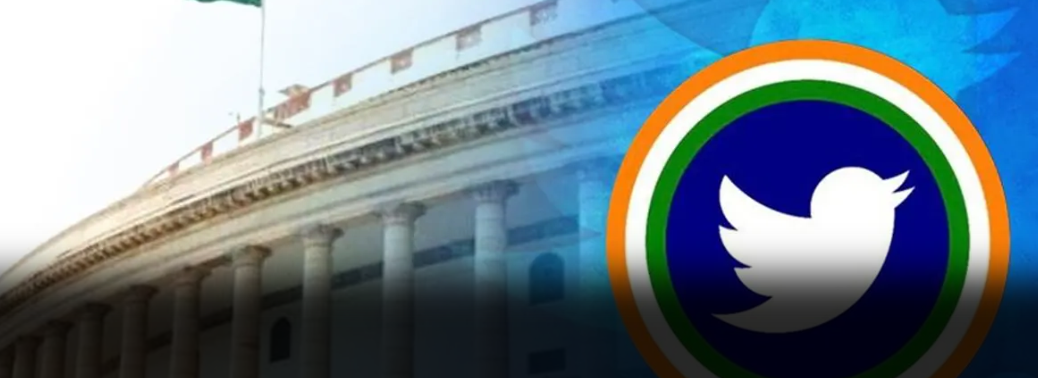
- A parliamentary panel asked Twitter to engage more actively with the Election Commission and respond to fake news and inflammatory posts in “real time” as the country heads into a general election.
About:
- A parliamentary committee, headed by BJP MP Anurag Thakur, on asked Twitter to ensure that Indian elections were not undermined and influenced by foreign entities.
- It also told the social media giant to ensure there is no foreign interference that could influence voters, said people with direct knowledge of the matter. This could take place through advertising or fake news as observed in the 2016 US elections.
- The committee members unanimously issued strict instructions (to Twitter) that no international interference should be allowed in the upcoming Lok Sabha elections.
- They have been asked to ensure that the integrity of their platform is not violated so that there can be free and fair elections.
- The panel also said that Twitter can’t choose to suppress certain opinions, which is significant in the context of reports that a Bharatiya Janata Party spokesman has accused the platform of bias. It was sternly conveyed that no sort of bias should be applied by Twitter by selectively throttling news feed of a section of individuals. Another panel member said that Twitter was asked to engage with and adhere to the directives of the Election Commission on fake news, inflammatory posts etc. Twitter has been asked to resolve such issues in real time, so that no misinformation occurs.
Background:
- As per data made available by the Ministry of Home Affairs (MHA), Twitter’s compliance rate, in acting against those creating a negative atmosphere online against the Indian security forces and threatening the national security, is close to 60%.
- The current compliance rate is unsatisfactory and needs to be improved significantly. It is imperative that Twitter responds promptly and swiftly to requests made by the Indian
- security agencies, especially in times of crisis. Twitter has failed to give clear answers to some questions raised by the panel, as per available information. It has been given 10 days to respond to those questions in writing. These include “whether Twitter is registered in India and whether it stands registered as a technology or media company; number of employees working for Twitter India”.
- The panel has also asked Twitter to “improve its grievance redressing mechanism” which a few panel members described as “slow and non- transparent”.
- It was conveyed to Twitter that if the redressal mechanism is made robust, allegations of bias against the platform will automatically be redressed.
- In a related development, the panel has summoned senior officials of Facebook, WhatsApp and Instagram on March 6. The committee will discuss issues of data privacy and safeguarding of citizen rights on social media and online news portals.
Aerial Surveillance System
25, Feb 2019
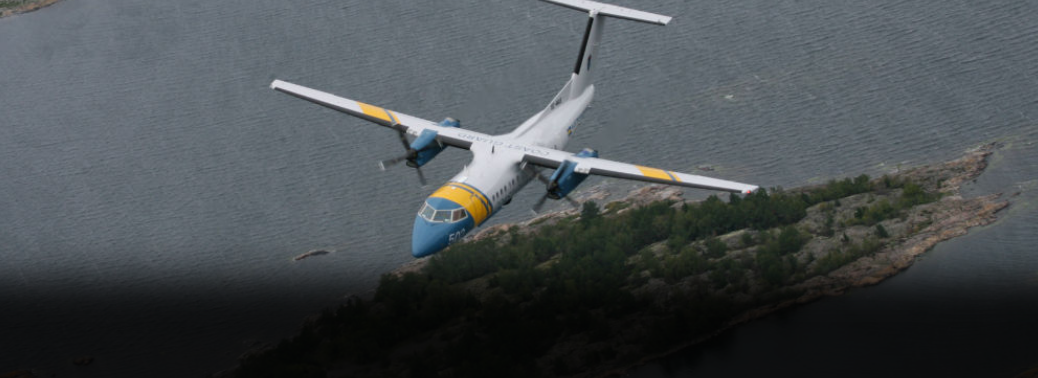
- The hyper spectral imagery programme, a first for the country, seeks to locate and identify suspicious movements and is expected to be operational in the next two years.
About:
- The Indian Air Force (IAF) has commissioned the development of an aerial surveillance system for monitoring suspicious movements under dense foliage cover along the international border and some parts within the country.
- The programme would mean is that the data gathered from aerial sources would be processed within minutes, and researchers would be able to tell security forces on the ground of “unwanted” human presence in the area, their numbers and locations, among other inputs.
- The IAF is spending Rs. 13 crores for the programme in which human resources from premier research and education institutions across the country are being put together, and has roped in a senior researcher and lead technologist of Indian origin from the National Aeronautics and Space Administration (NASA) as the chief technologist for the programme.
- “For the first time, IAF will be having multi-sensor data fusion that will help identify an adversary. It has a mandate to change the way we fight the war. The IAF is willing to wait for a couple of years to reap the benefits. Some agencies in India tried to work on the technology, but have not succeeded.
- This is a unique patent application, which will help identify the presence of a human below trees, dense foliage, shrubs or inside a structure, whether it is day or night. It can detect human presence from air even if there a cloud cover, dense fog or snow cover.
- Data/images will be captured through optical and infra-red sensors — to be most likely mounted on an unmanned aerial vehicle — and processed through deep learning algorithms.
- The methods are in place while they were working on handling data and tuning up the algorithm.
An Ordinance to Clamps down on Un regulated Deposits
25, Feb 2019

In News:
- In a bid to clamp down on Ponzi and fake deposit schemes, the government has, through an ordinance, banned unregulated deposit schemes.
Explained:
- Banning of Unregulated Deposit Scheme Ordinance 2019 which seeks to make such unregulated deposit scheme punishable, among other things but it does not prohibit those regulated by law like chit funds.
- Chit fund is regulated by Chit Fund Act, 1982 and is treated as Regulated Deposit as per
- Schedule 1 of Banning of Unregulated Deposit Ordinance, 2019
- Ordinance was aimed at saving poor and financially illiterate of their hard-earned savings
- from ponzi schemes like Saradha and Rose Valley in the past.
- The legislation contains a substantive banning clause which bans deposit takers from
- promoting, operating, issuing advertisements or accepting deposits in any unregulated deposit scheme.
- “No deposit taker shall directly or indirectly promote, operate, issue any advertisement soliciting participation or enrolment in or accept deposits in pursuance of an unregulated deposit scheme
What the law says?
The law also proposes to create three different types of offences –
- Running of unregulated deposit schemes,
- Fraudulent default in regulated deposit schemes, and
- Wrongful inducement in relation to unregulated deposit schemes.
- The Ordinance also provides for severe punishment ranging from 1 year to 10 years and pecuniary fines ranging from Rs 2 lakh to Rs 50 crore to act as deterrent.
- It also has adequate provisions for disgorgement or repayment of deposits in cases where such schemes nonetheless manage to raise deposits illegally.
- The law provides for attachment of properties or assets and subsequent realisation of assets for repayment to depositors. Clear-cut timelines have been provided for attachment of property and restitution to depositors.
What is chit fund?
- Chit funds are those business concerns which accept from its customers a fixed amount every month for a stipulated period which may be ranging from 1 year to 5 years. The members belonging to the chit company are classified into different groups according to the chit amount and the period.
Examples of chit concerns are:
- Balussery Benefit Chit Fund (P) Ltd.
- Shriram Chits & Investments Ltd.
Regulations Imposed by RBI on chit fund business:
- No chit fund business can be conducted except by a registered company. Chit business run by family concerns, partnership firms are restricted.
- In every state, there will be a Registrar of Chit companies with whom all the chit companies must register, giving full particulars about the chit company.
- The maximum discount that can be taken in a bid was restricted to 30% of the total chit amount. However, in 2001, the same has been enhanced to 40% (in the case of a chit for Rs. 1 lakh, not more than Rs. 40,000/- can be the bid amount).
- The details of every chit have to be furnished to the Reserve Bank of India along with the names and addresses of members.
- One-month chit amount of all the members has to be kept with the Reserve Bank of India till the particular chit comes to an end.
Survey on Women Issue
24, Feb 2019
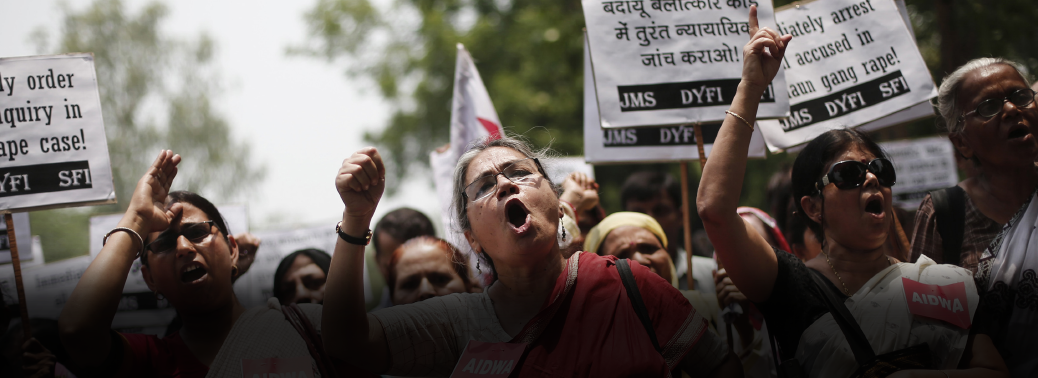
- When women exercise their ballot, they are most likely to vote for a leader who makes battling crimes against women a priority, according to a survey conducted by Change.org.
About:
- Women voters are most concerned about their safety, and the issue ranked top among a total of 39 issues that were polled as part of the survey.
- Among the other top concerns for women were waste disposal, faster judicial process, pollution, and the supply of water and electricity. On the other hand, growth in Gross Domestic Product (GDP) and jobs were the most important issues for men, and crimes against women ranked much lower at 15th position.
- A total of 20,000 men and women participated in the study that was conducted online in January by Change.org, a website for petitions. The respondents included 16,000 women and 4,000 men, who are Change.org users.
Findings:
- There was also general acceptance that women were grossly underrepresented in Parliament.
- Unsurprisingly, out of the 40 issues, most likely to impact the Lok Sabha elections, female respondents ranked crimes against women on top. Men ranked it much lower (at 15th position) on the priority list.
- Issues like education, freedom of choice in religion and freedom to marry out of their choice, marital rape, female participation in workforce, menstrual hygiene, girl child education, maternal health and infant mortality, environmental issues, waste disposal, air pollution and forest conservation were also listed as priority for women voters
- The survey finds that women want to directly engage with politicians but are still uncomfortable with in-person meetings. They prefer digital petitions as a significant way of connecting with their elected representatives. The survey also shows that gender issues will play an important role in the upcoming General Elections.
- The findings also show that while both women and men are most likely to vote a candidate on the basis of his or her track record in spending funds and raising issues in Parliament as well as on poll promises, a higher percentage of women (70.3%) voters are likely to be influenced by these criteria than men (66.54%).
- Men, and not women, are more likely to be influenced by a candidate’s party, shows the study.
- A total of 21.9% men and 17% women said they would vote for a candidate on the basis of her or his political party. Women also care about mental health, religious freedom and forest conservation more than men. Men worry most about GDP growth and jobs, rural infrastructure, corruption, police reforms, public transport, uniform civil code, and roads.
India to have own DNS for safe Browsing
23, Feb 2019
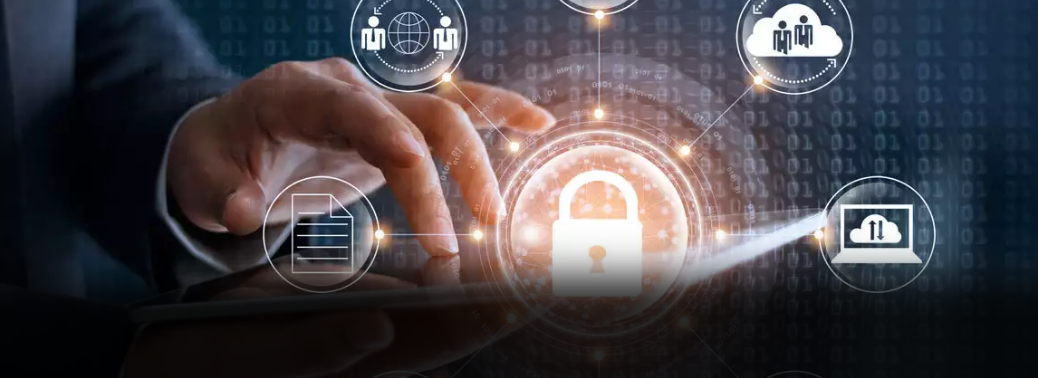
In News:
- The government will soon roll out a public Domain Name Server, or DNS, for India aimed at providing a faster and more secure browsing experience for Internet users in the country, while ensuring that citizens’ data is stored locally.
Explained:
What is DNS?
- The Domain Name Systems (DNS) is the phonebook of the Internet. Humans access information online through domain names, like nytimes.com or espn.com. Web browsers interact through Internet Protocol (IP) addresses. DNS translates domain names to IP addresses so browsers can load Internet resources.
- Each device connected to the Internet has a unique IP address which other machines use to find the device. DNS servers eliminate the need for humans to memorize IP addresses such as 192.168.1.1 (in IPv4), or more complex newer alphanumeric IP addresses such as 2400:cb00:2048:1::c629:d7a2 (in IPv6).
Importance of own DNS?
- If the DNS is either slow or fails to work, users will not be able to locate web addresses. The main aim of bringing our own public DNS is to ensure availability, particularly for smaller Internet Service Providers (ISPs) who don’t have credible DNS. Bigger ones usually have their own DNS
- Pointing out that there were other open DNS servers, including Google Public DNS, the government’s system would prevent users from visiting malicious websites.
- The roll-out, which will be executed by the National Informatics Centre – the technology arm of the government – will be completed in the next four to six months
- NIC is already using the public DNS within the government network.
- If you use any public DNS, they access and use all your data. It is not that users will compulsorily need to shift to India public DNS. A user is free to choose any DNS,” the official said, adding that with the government’s public DNS, Indian users’ data would be stored within the country
Is It State Sponsored Monitoring?
- No, need, if the government wants to block a website, we have a mechanism in place. We can send a list to the ISPs for reasons such as child porn or fake news, and they have to comply with the order.
- The ministry, as part of its ongoing awareness campaign for safer Internet, also plans to reach out to end-users to educate them on DNS and how they could shift to an Indian public DNS if they desired.
AFSPA – Assam Rifles
22, Feb 2019
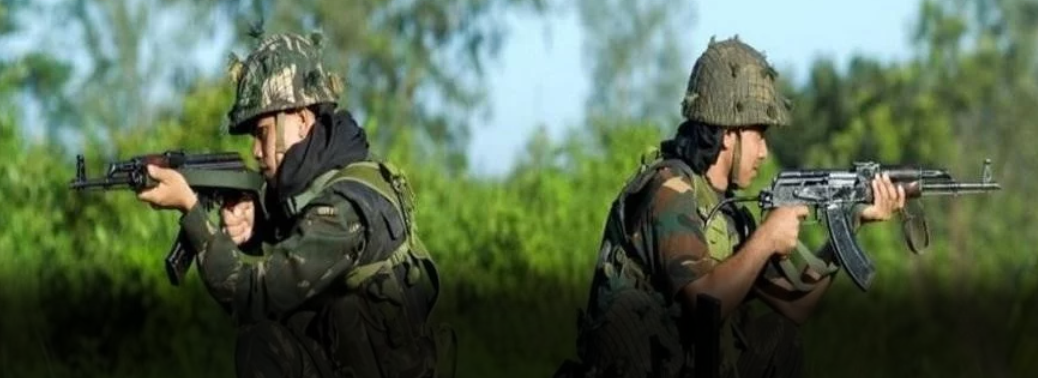
- Assam Rifles personnel have been empowered by the central government to arrest anyone and search a place without a warrant in north-eastern states of Assam, Arunachal Pradesh, Manipur, Nagaland, and Mizoram.
About:
- The Centre granted paramilitary force Assam Rifles the power to arrest anyone and search a place without warrant in border districts in five north-eastern states.
- An officer of the rank corresponding to that of the lowest rank of members of the Assam Rifles has been given these powers under the Code of Criminal Procedure (CrPC) stated a notification issued by the Home Ministry.
- The Assam Rifles conducts counter-insurgency operations in the North East and guards the India-Myanmar border. At present, there are 46 battalions of Assam Rifles with a sanctioned strength of 63747 personnel. The paramilitary force is under the control of the Ministry of Home Affairs.
- The powers granted are akin to the provisions of the Armed Forces (Special Powers) Act, which is effective in several parts of the North East. The new powers are effective in the border areas of Assam, Arunachal Pradesh, Manipur, Nagaland and Mizoram.
- The notification from the Ministry of Home Affairs states that an “officer of the rank corresponding to that of the lowest rank of members of the Assam Rifles” will have these powers.
- The Assam Rifles earlier was making arrests only in areas where the Armed Forces (Special Powers) Act was in effect.
- They were finding it difficult to make seizures and arrest in Mizoram, which doesn’t have AFSPA. This is to basically correct that anomaly. As per law, they have to hand over the suspects to the local police within 24 hours.
- Section 41 of the CrPC states that any police officer may, without an order from a magistrate and without a warrant, arrest any person. Section 47 gives powers for search of place entered by person sought to be arrested.
- Section 48 says a police officer may, for the purpose of arresting without warrant any person whom he is authorised to arrest, pursue such person into any place in India. According to Section 49, the person arrested shall not be subjected to more restraint than is necessary to prevent his escape.
- The Armed Forces (Special Powers) Act, which is operational in some parts of the Northeast, also gives similar powers to the Army operating in the region.
AFSPA:
- The Armed Forces (Special Powers) Act, 1958 gives armed forces the power to maintain public order in “disturbed areas”
- They have the authority to prohibit a gathering of five or more persons in an area, can use force or even open fire after giving a due warning if they feel a person is in contravention of the law
- If reasonable suspicion exists, the army can also arrest a person without a warrant; enter or search a premise without a warrant; and ban the possession of firearms
- As per Section 3 of the AFSPA, it can be invoked in places “where the use of armed forces in aid of the civil power is necessary”
What is a “disturbed area” and who has the power to declare it?
- A disturbed area is one which is declared by notification under Section 3 of the AFSPA An area can be disturbed due to differences or disputes between members of different religious, racial, language or regional groups or castes or communities
- The Central Government or the Governor of the State or administrator of the Union Territory can declare the whole or part of the State or Union Territory as a disturbed area
Which States are under this Act?
- It is effective in the whole of Nagaland, Assam, Manipur (excluding seven assembly constituencies of Imphal) and parts of Arunachal Pradesh Jammu and Kashmir too has a similar Act
SC on the Forest Rights Act
22, Feb 2019
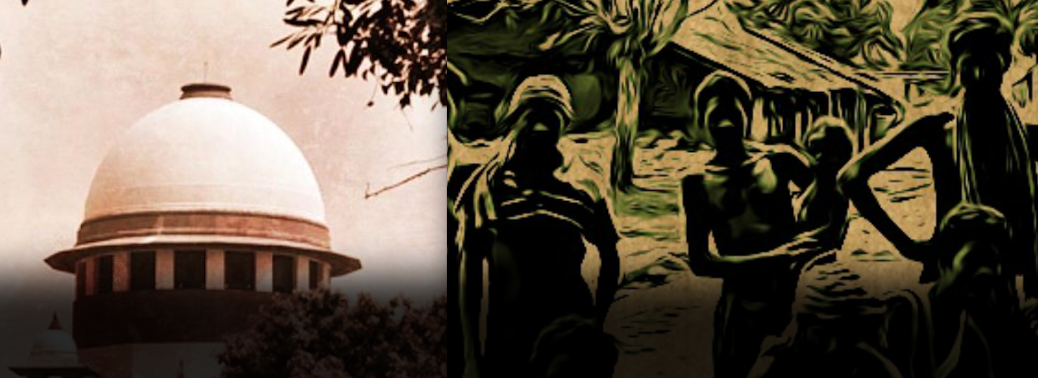
Supreme Court ordered state governments to evict over 10 lakh forest-dwelling families whose claims over forestland have been rejected, a direction that will hurt some of India’s most vulnerable people.
About:
- The order came in a case on the constitutional validity of the Forest Rights Act, which was passed in 2006 aiming to recognise and vest the forest rights and occupation in forest land in forest dwelling Scheduled Tribes and other traditional forest dwellers who have been residing in such forests for generations but whose rights could not be recorded.
- The case has dragged on for over 10 years under multiple benches, with the Supreme Court yet to answer questions on constitutional validity of the law.
Three grounds:
- There were at least three grounds on which the ministry could have challenged petitioners’ demand that forest claims be rejected and residents evicted.
- First, the petitioners ignored that the fact that Forest Rights Act says that no one should be evicted while the process of recording their rights is underway.
- Second, the order short-circuited the process laid down in the Act for those whose appeals have been rejected. Under the legisation, the government has to inform applicants why their claims have been rejected so that they can appeal the decision. Subsequently, evictions have to be carried out under the process defined by India’s forest laws.
- Third, the process of recognising rights has been poorly implemented. Of the 41 lakh claims filed so far, 18 lakh have been approved, 3 lakh are still being processed and the remaining 20 lakh have been rejected.Rejection does not always mean that the applicant’s case lacks merit. For most forest dwelling communities, the process of applying for an abstract notion like rights is daunting, activists pointed out.
- At the same time, states are wary of vesting forest rights since this could, among other things, complicate their ability to divert forest land for industrial activities. States have devised several strategies to reject applications.
- States like Jharkhand and Himachal Pradesh have refused to accept applications by Other Traditional Forest Dwellers – which is how the Act describes people of non-tribal origin who live in or depend on forests.
- Gujarat told applicants to submit, along with other evidence, satellite images of the land to which they were staking claim.
Long drawn-out case:
- Even when it was being drafted, the Forest Rights Act was criticised by the Union Environment Ministry and wildlife groups like Bombay Natural History Society, Wildlife Trust of India and Wildlife First. They said the Act would encourage further encroachment on India’s already battered forestlands.
- Land distribution falls under the legislative competence of state governments, so parliament could not distribute land through the Forest Rights Act.
- The case picked up pace sometime in 2016, when a bench headed by J Chelameswar began hearing the petitions.
- On January 29 that year, the Supreme Court said that it was obvious that vesting of rights under the Act is based “on an assertion that a claimant is in possession of a certain parcel of land” in the forests.
- Therefore, it said that if the claims were rejected, the claimant was to be evicted or other action proposed by the law should follow. It asked the states to file data on the number of claims rejected and what action they had taken.
- When the idea was proposed that those whose claims had been rejected should be evicted, Additional Solicitor General Narasimha shot it down, said the Supreme Court lawyer. “He asked what the court was adjudicating on,” the lawyer recalled.
- The case dragged on again, with states taking their time to file affidavits. Arguments on the main petition began only in September 2016 and extended into 2017.
- On March 31, 2017, the bench said that arguments of parties on parliamentary competence to enact the Act was complete but other points had to be argued. Records on the Supreme Court website show that the next significant order came in March 2018, when a new bench headed by Justice Madan B Lokur said that the data filed by the states had become outdated since two years had passed since they were put together. It asked for fresh data on rejected claims and action taken.
- By December 2018, there was another change in the bench with Justice Arun Mishra leading it in place of Justice Lokur. It is this bench that delivered the February 13 order asking the states to evict lakhs of forest dwellers whose claims have been rejected.
- By October last year, Narsimha had stepped down. After that, instead of creating a new legal team, the ministry left the matter to empanelled lawyers without giving them proper instructions
Indelible Ink for Election
21, Feb 2019
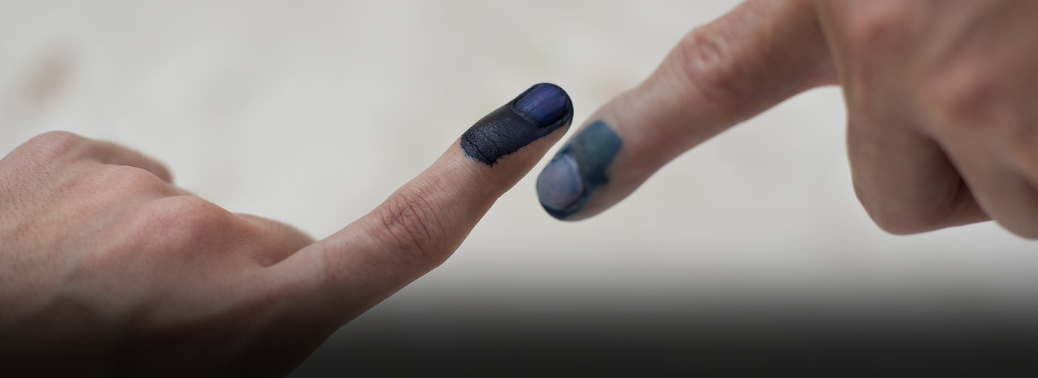
- The Delhi-based National Physical Laboratory (NPL), the creator of indelible ink, has a new concoction that, when applied on the finger, doesn’t leave a trace it merely glows a bright orange when a low-intensity beam of ultraviolet light is shone on it.
About:
- The NPL prepared the ‘invisible ink’ as part of a pilot project mooted by the Mysore Paints and Varnish Ltd. (MVPL).
- Indelible ink, the purple stain that billions of Indians show off during elections, may face an invisible challenger in the near future.
- The MVPL discussed with us the development of such an ink for use by a client [country] in Europe.
- The MVPL, a Karnataka government company, has a monopoly on the manufacture of indelible ink since 1962, and is a major supplier to the Election Commission of India (ECI). It also exports the indelible ink for elections in other countries.
- The indelible ink was formulated as a deterrent against voting twice. But strangely enough, voters in some countries found the stained finger rather unseemly.
- In India, we are proud to display our voter’s ink, but apparently in some countries people don’t want to display such a mark. So MVPL asked us if there was a solution.
Organic-inorganic mix:
- The NPL’s invisible ink, however, wouldn’t be of immediate use to the EC. The current formulation can’t be used for Indian elections as they are spread out over many weeks. We would need a different formulation.
- The chemical a transparent liquid as an “organic-inorganic” mixture that was biodegradable and could be washed off in 48 hours.
- The ink works on the well-known principle of fluorescence certain materials emit a characteristic glow when exposed to ultraviolet light. The NPL ink, however, glows only when exposed to a narrow band of frequencies of ultraviolet (UV) light.
- Commercial UV markers or inks respond to a very broad spectrum of UV light. So, along with the ink, we’ll supply an inexpensive LED (costing no more than Rs. 30) that would emit a specific frequency of UV.
- The NPL’s invisible ink experiment is linked to a larger project of creating security inks that could be used to make bank notes and documents, such as passports, more secure.
The Lowdown on National Security Act
19, Feb 2019
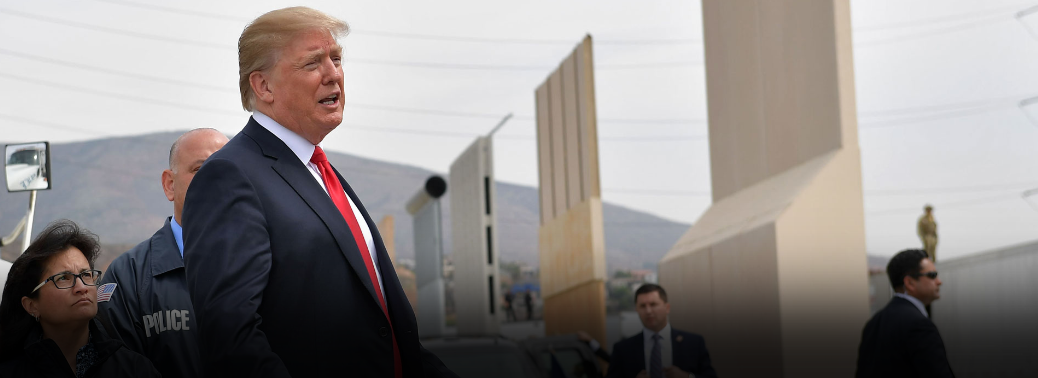
- The NSA empowers the Centre or a State government to detain a person to prevent him from acting in any manner prejudicial to national security. The government can also detain a person to prevent him from disrupting public order or for maintenance of supplies and services essential to the community. The maximum period for which one may be detained is 12 months. But the term can be extended if the government finds fresh evidence.
- Preventive detention laws in India date back to early days of the colonial era when the Bengal Regulation III of 1818 was enacted to empower the government to arrest anyone for defence or maintenance of public order without giving the person recourse to judicial proceedings.
- A century later, the British government enacted the Rowlatt Acts of 1919 that allowed confinement of a suspect without trial. Post-independence India got its first preventive detention rule when the government of Prime Minister Jawaharlal Nehru enacted the Preventive Detention Act of 1950. The NSA is a close iteration of the 1950 Act. After the Preventive Detention Act expired on December 31, 1969, the then Prime Minister, Indira Gandhi, brought in the controversial Maintenance of Internal Security Act (MISA) in 1971 giving similar powers to the government. Though the MISA was repealed in 1977 after the Janata Party came to power, the successive government, led by Mrs. Gandhi, brought in the NSA.
- In the normal course, if a person is arrested, he or she is guaranteed certain basic rights. These include the right to be informed of the reason for the arrest. Section 50 of the Criminal Procedure Code (Cr.PC) mandates that the person arrested has to be informed of the grounds of arrest, and the right to bail. Sections 56 and 76 of the Cr. PC also provides that a person has to be produced before a court within 24 hours of arrest.
- Additionally, Article 22(1) of the Constitution says an arrested person cannot be denied the right to consult, and to be defended by, a legal practitioner of his choice. But none of these rights are available to a person detained under the NSA. A person could be kept in the dark about the reasons for his arrest for up to five days, and in exceptional circumstances not later than 10 days. Even when providing the grounds for arrest, the government can withhold information which it considers to be against public interest to disclose. The arrested person is also not entitled to the aid of any legal practitioner in any matter connected with the proceedings before an advisory board, which is constituted by the government for dealing with NSA cases.
- The National Crime Records Bureau (NCRB), which collects and analyses crime data in the country, does not include cases under the NSA in its data as no FIRs are registered. Hence, no figures are available for the exact number of detentions under the NSA. In January, the BJP government in Uttar Pradesh arrested three persons under the NSA in connection with an alleged cow-slaughter incident in Bulandshahr.
- In December last year, a Manipur journalist, who had posted an alleged offensive Facebook post on the Chief Minister, was detained for 12 months under the NSA. Experts say these cases point to the fact that governments sometimes use it as an extra-judicial power. It is time to reconsider the law, they argue, because in four decades of its existence, the NSA has been in the news for all the wrong reasons.
Govt Expenditure Audited by CAG
14, Feb 2019
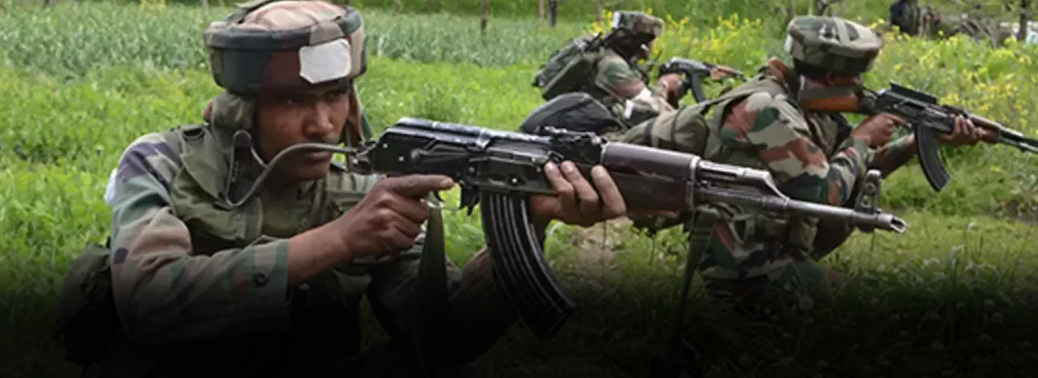
In News:
- More than 50% of the expenditure under 36 major heads of the government’s spending in 2017-18 was classified as ‘other expenditure’ thereby “rendering the accounts opaque”, the Comptroller and Auditor General (CAG) said in a report tabled in Parliament.
Explained:
- The CAG also noted that several heads of cess that had been collected had not been disbursed to the appropriate funds for spending. The quantum of monies lying in limbo like this was a substantial Rs. 2.18 lakh crore.
CAG:
- Article 148 of the Constitution lays down that the Comptroller and Auditor General of lndia would be appointed by the President by warrant under his hand and seal. The CAG will hold office for a period of six years or till he attains the age of 65, whichever is earlier. And he can be removed from office only in the same manner and on the same grounds as a Judge of the Supreme Court i.e. by impeachment in Parliament
- At the same time the CAG has been made ineligible for any other office under the Government of India or any state Government.
- The salary etc. of CAG has been equated with the Judges of the Supreme Court. The Article 148 provides that the administrative expenses of the office of CAG are to be charge upon the Consolidated Fund of India (CFI).
Audit Role of CAG:
- Audit is the principal instrument to ensure the financial accountability of the Executive to the Legislature of the Union and State. The Comptroller and Auditor Genera1 in India, has been, made responsible by the Constitution. To conduct the audit of the transactions of the Union and the States and Union Territories with Legislature
- The CAG is also empowered to audit and report on ail expenditure from the contingency funds and public accounts of the Union and of the States. The CAG shall have also power to audit and report on all trading and manufacturing, profit and loss accounts, etc., kept by any department of Union or a State. The CAG has also the power to audit the receipts and expenditure of the Union and each State, all bodies and authorities, substantially financed, from the Union or State revenues, Government Companies other corporations or bodies.
Almost All states in Red Zone on Gender Equality: NITI AAYOG
05, Feb 2019
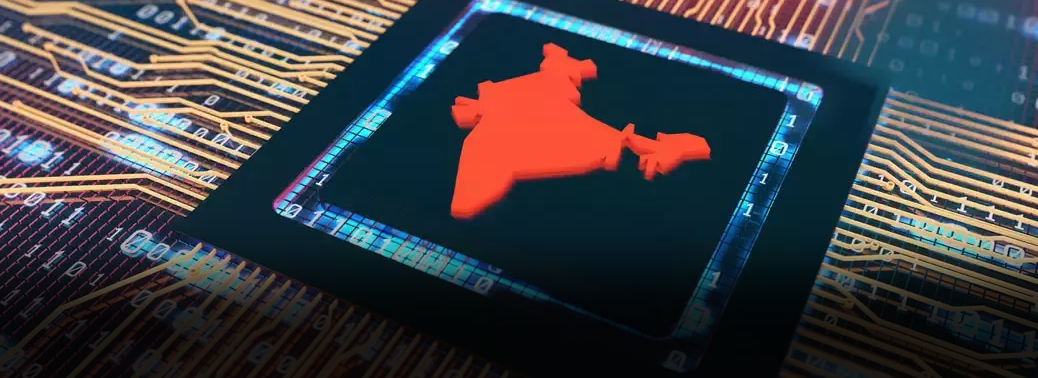
- When it comes to gender equality and achieving targets under Sustainable Development Goals (SDG), almost all Indian states are in the red zone except Kerala and Sikkim, which are best among worst and have scored a meagre fifty out of hundred.
Report Findings on Gender Equality:
- Three years have passed since the world set SDGs to be achieved by 2030, and India’s official think tank NITI Aayog has recently released a reporthighlighting states’ performance on different indicators.
- It has ranked all states on 13 SDG targets and performance of all states varies from ‘aspirant’ (0-49) scores to ‘achiever’ (100). Other two ranking groups are ‘front runner’ (65-99) and ‘performer’ (50-64).
- Unlike other goals where states’ performances vary in all categories, almost all states have performed poorly on gender equality criteria. Except two, all states fall in the red zone—a NITI Aayog criteria for poor performers.
- The report says, “The SDG index score for the goal of gender equality ranges between 24 and 50 for states and between 27 and 58 for UTs. Kerala and Sikkim among the states, and Andaman and Nicobar Islands, and Chandigarh among the UTs are in the performer’s category (with index score greater than/equal to 50 and less than 65). Barring these, none of the States/UTs have achieved an index score above 50.”
Goal five of SDG:
- Goal five of SDG aims to achieve gender equality by ending all forms of discrimination, violence and harmful practices, valuing women’s unpaid care and domestic work. It also considers full and effective participation and equal opportunities for leadership at all levels of decision-making in political, economic and public life for women.
To Measure the states’ performances, NITI Aayog has considered six criteria, including:
- Sex ratio at birth (female per 1,000 male),
- Average female to male ratio of average wages,
- Percentage of married women aged 15-49 years who have ever experienced spousal violence,
- Percentage of seats won by women in the general elections to state legislative assembly,
- Ratio of female labour force participation rate to male labour force participation rate and
- Percentage of women in the age group of 15-49 years using modern methods of family planning.
The NITI Aayog says that:
- Women and girls in the country experience inequalities in every aspect of life from access to healthcare, education, nutrition, employment to asset ownership. They also lag when it comes to decision making at home and in the public sphere.
- Their situation can be understood from the fact that child (0-6 years) sex ratio declined from 927 in 2001 to 919 females per 1,000 males in 2011. Women continue to lag behind in education as is reflected in literacy rate for women being 65 per cent, compared to 82 per cent for males in 2011. NITI Aayog released the ranking of states, wherein Himachal Pradesh, Kerala, Tamil Nadu, Chandigarh and Puducherry were found to be ahead when compared to other states in comprehensive ranking.
KELKAR MOOTS SETTING UP OF ‘NITI AAYOG 2.0
28, Jan 2019
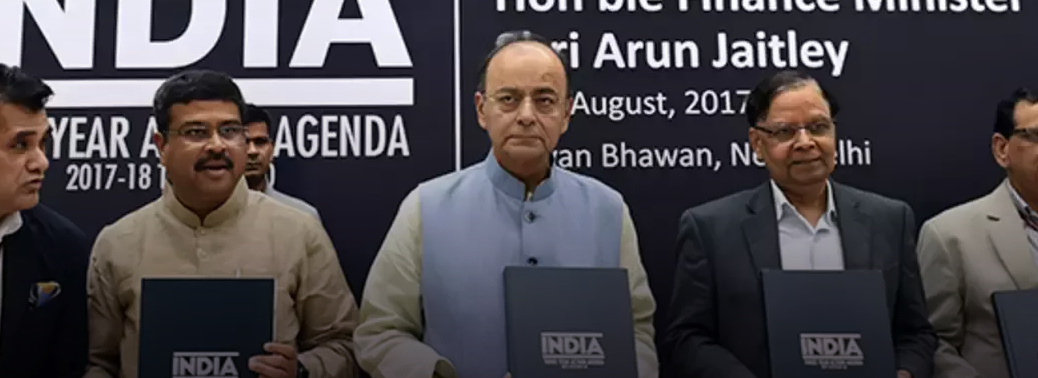
In News
- Former Finance Commission Chairman Vijay Kelkar has pitched for setting up of a ‘new NITI Aayog’ and giving it the responsibility for allocating capital and revenue grants to the States.
Explained
- Kelkar, in a paper titled ‘Towards India’s new fiscal federalism,’ said it was desirable that a functionally-distinct entity such as the new NITI Aayog be put to use to do the job at hand related to the structural issues, including removal of regional imbalances in the economy. The eminent economist, however, added that he was not suggesting for a moment that the new NITI Aayog should take the form of the erstwhile Planning Commission.
- Mr. Kelkar argued that replacing the Planning Commission, which was promoting regionally-balanced growth in India, with the NITI Aayog, a think tank, has reduced the government’s policy reach. He also suggested that to make the Aayog more effective, “the vice-chairman of the new NITI Aayog will need to be a permanent invitee of the Cabinet Committee on Economic Affairs.
Report on AQIS
25, Jan 2019

Details:
- ‘Study by New York-based think tank misleading’A top intelligence official on Thursday dismissed as ‘alarmist’ a U.S.-based think tank’s report that contends that the Al Qaeda in the Indian Subcontinent (AQIS) was exploiting the growing incidents of violence against Muslims in India and attacks in the name of “cow vigilantism” to recruit cadres.
- Asserting that the study by The Soufan Center, a New York-based think tank, was misleading, the official who spoke on the condition of anonymity said: “researchers appear to have extrapolated isolated instances, imaginatively.”
- The report titled ‘AQIS — The Nucleus of Jihad in South Asia’ asserts that the rise in inter-religious clashes in India due to a changing political discourse had resulted in further divisions between Hindus and Muslims. Increasing incidents of violent attacks on Muslims in India, who are accused of eating beef, was being exploited by groups like AQIS to “incite Indian Muslims to join what is being called a fight for their honour,” according to the study’s authors.
- “India is a pluralist country with 180 million Muslims,” the intelligence official said. “Indian Islam is based on rich Sufistic traditions of pluralism, inclusivism and composite nationalism. The wave of Al Qaeda in the 1990s and 2000s did not impacts the Indian Muslim. The wave of Islamic State had minimal impact, with only about 108 individuals succumbing to its lure. In the past few decades, global Islamist uprisings and terrorism have not impacted the Indian Muslim, as they were based on Jihadism, born out of exclusionism,” the official added, dismissing the report’s premise on the increasing vulnerability of the Indian Muslim to recruitment by the AQIS.
- The Soufan Center also said in its report that there was strong evidence of ties between the AQIS and the LeT. According to the report, AQIS operative Abdul Rehman, who was arrested from Orissa in 2015, travelled to Pakistan in 2014 as a LeT recruit.
- “ISI facilitated his entry into Karachi via Dubai, but once inside Pakistan, Rahman met with several high-ranking AQIS leaders, including its chief, Asim Umar. Through his LeT contacts, Rehman later joined AQIS. The indictment documents of Abdul Rahman reveal that numerous LeT leaders visited AQIS headquarters in South Waziristan including Sajid Majid, ISI operative who masterminded the 26/11 Mumbai attacks,” it said.
- The think tank said the situation in Kashmir had also taken an “unprecedented turn.” “For the first time since the onset of conflict in Kashmir, the region is responding to the appeal of groups like al-Qaeda.”
Sabarimala review hearing awaits Justice Malhotra’s Return
23, Jan 2019

Context:
- On a batch of petitions challenging supreme court verdict on sabarimala.
Details:
- CJI asks petitioners to wait till judge resumes sittings after medical leave
- Chief Justice of India Ranjan Gogoi on Tuesday told petitioners seeking a review of the court’s September 28 judgment revoking the bar on women of menstrual age from entering the Sabarimala temple that a date for hearing their petitions would be fixed after consulting Justice Indu Malhotra, a member of the Bench who is currently on medical leave.
- A five-judge Bench led by the Chief Justice, which was earlier scheduled to hear the review petitions on Tuesday (January 22), did not assemble as Justice Malhotra was on leave.
Oral mention:
- Responding to an oral mention by advocate Mathew Nedumpara to fix a date of hearing, Justice Gogoi said that would not be possible until Justice Malhotra returns after her leave, possibly on January 30. “We will have to ask the learned judge, who is on medical leave,” Chief Justice Gogoi said, addressing Mr. Nedumpara, who represents one of the several review petitioners. “We cannot ascertain a date without asking her [Justice Malhotra],” the CJI added.
- Justice Malhotra had delivered the lone dissent in the five-judge Constitution Bench’s majority judgment on September 28.
- The majority judgment had declared the exclusion, solely based on the menstrual status of women, to be a smear on individual dignity. It said the bar amounted to “treating women as the children of a lesser God”.
- Justice Malhotra had declared the prohibition on women aged between 10 and 50 years to be an “essential practice”.
- The judge had held that imposing the court’s morality on a religion would negate the freedom to practise religion according to one’s faith and beliefs. The dissenting judgment has since then become a rallying point for the review petitioners.
- Review petitions were filed by a range of persons, from the Sabarimala temple’s chief priest to individuals and Ayyappa organisations including women devotees’ bodies. They contend that ‘reform’ cannot mean rendering a religious practice out of existence on the basis of a PIL petition filed by “third parties” lacking belief in the Sabarimala deity.
- Justice Malhotra’s rationale that courts should not allow “interlopers” to file PILs challenging religious practices is a common thread in the review petitions. The review petitioners have argued that the right to move the Supreme Court for violation of fundamental rights must be reserved for those whose personal rights to worship have been violated.
- Entertaining PIL petitions on religious practices by third parties may invite “perils even graver for religious minorities”, some of them contend.
Centre Files report on CIC Selection
23, Jan 2019

Details:
- Petitioners asked to file response
- The government on Tuesday handed over a status report to the Supreme Court on the progress in the process of appointment to the Central Information Commission (CIC) even as PIL petitioners alleged that the procedure followed was arbitrary.
- A three-judge Bench, led by Justice A.K. Sikri, took the status report on record and ordered that a copy be handed over to RTI activists-petitioners Anjali Bhardwaj, Lokesh Batra and Amrita Johri, represented by advocates Prashant Bhushan and Pranav Sachdeva. They have agreed to file a response to the report in three days.
- The government may file a rejoinder to the petitioners’ reply by January 28. The court scheduled the next hearing for January 29.
- During the hearing, the petitioners submitted that the appointment process of Information Commissioners to the Central Information Commission happened in an “arbitrary manner as the search committee, had in violation of its mandate, short-listed persons who had not even applied for the post in response to advertisements.”
No rational criteria’:
- They argued, through Mr. Bhushan, that the “minutes of the search committee revealed that no rational criteria were adopted on the basis of which the short-listing was done.” Further, the minutes showed “the completely ad hoc manner of functioning of the search committee,” they said.
- People who were appointed members of the committee, also applied for the post and had to be subsequently replaced, they submitted. One of the persons who has been appointed, Suresh Chandra, had not even applied for the post, they argued.
‘‘Defective ad’
- The petitioners also alleged that the government has “once again issued a defective advertisement on January 4, 2019 for the remaining four vacant posts in the CIC.” “The advertisement/notification did not specify the salaries and tenure of information commissioners, even though these are defined in the RTI Act,” Ms. Bhardwaj said.
- The government’s status report said the names of the members of the search committee, the names of the shortlisted candidates, the criteria followed for selection, files of the appointment of the Chief Information Commissioner and Information Commissioners have been uploaded on the DoPT website in compliance with a December 13, 2018 order of the Supreme Court.
Appointment of CICL:
- CIC was established in 2005 by Central Government under provisions of Right to Information (RTI) Act (2005).
- The Chief Information Commissioner heads the Central Information Commission.
- The general superintendence, direction and management of affairs of Commission are vested in Chief Information Commissioner who is assisted by Information Commissioners.
- CIC hears appeals from information-seekers who have not been satisfied by the public authority, and also addresses major issues concerning the RTI Act.
- CIC submits annual report to Union government on the implementation of the provisions of RTI Act. The central government in turn places this report before each house of Parliament.
- The Chief Information Commissioner and Information Commissioners are appointed by the President on the recommendation of a committee consisting of—The Prime Minister, who shall be the Chairperson of the committee.
- The Leader of Opposition in the Lok Sabha.
- A Union Cabinet Minister to be nominated by the Prime Minister.
Functions and Powers of CIC:
- It can order inquiry into any matter if there are reasonable grounds.
- It can secure compliance of its decisions from the public authority.
- It can recommend steps to be taken for promoting such conformity, if public authority does not conform to provisions of RTI Act.
- It receives and inquire into a complaint from
- It examines any record which is under control of the public authority and which may be withheld from it on any grounds during the enquiry. While inquiring, it has powers of civil court.
SC RECORDS HOW THE BAR GIRLS TOOK ON MAHARASHTRA GOVERNMENT
18, Jan 2019

Context
- The 100-page judgment of the Supreme Court delivered on Thursday records for posterity how the Bharatiya Bar Girls Union of women working as dancers, singers or waitresses in bars, restaurants and beer halls challenged the might of the Maharashtra government.
Details
- The women ridiculed the State’s “patriarchal notion of morality” to bring a draconian law in 2016 which stripped them of their livelihood and dignity.
- The union’s challenge led the Bench of Justices A.K. Sikri and Ashok Bhushan to conclude that the State had no right to thrust its notion of morality on society.
- For one, the State had claimed that bar girls were usually minors or victims of trafficking or prostitution and other forms of flesh trade. But the Bar Girls Union, represented by advocate Nikhil Nayyar, challenged the Maharashtra government to produce proof in the Supreme Court to back its claim.
- On the other hand, the bar girls’ union produced research material on record to show that reality was “diagonally opposite” to what the State claimed.
- ‘Newer opportunities. “The bar girls have voluntarily embraced dance bars to live with dignity and earn their livelihood… it (dance performances) opened newer opportunities and the option to leave exploitative sex work…,” the judgment quoted from the research.
- The union argued that bar dance was a “non-obscene performance” as held by several High Courts. It said the Maharashtra government wanted to “perpetuate a myth that dance bars pose any danger to law and order or cause disturbance to peace and tranquillity.”
- The union pointed out that dance bars remained closed across the State since 2005. Then where did the government get reliable data about immoral activities in them.
- “Therefore, the belief of the State Government that the working women in dance bars are involved in immoral activities such as prostitution, or that minors are being employed, are entirely baseless and irrational,” the judgment said, citing their argument.
Controversial Government Affidavit
- Opposed to what the government believed, various studies indicated that many bar girls felt “greater security in the bars due to the support network among the dancers as well as the protection provided by the owners.
- It was further noted that the bar owners, on the demands made by bar girls, provides
- taxis and auto rickshaws for women travelling late at night. The government had forced bar owners to install CCTV cameras, especially in dance areas. The court found it a violation of their privacy.
- One-fourth of the women found their income slashed by 90% after the ban. Subsequently, their health care, education and social security had dipped over the past few years. Some were pushed back into sex trade.
ENCOUNTER DEATHS IN U.P. A SERIOUS ISSUE, OBSERVES SC
15, Jan 2019
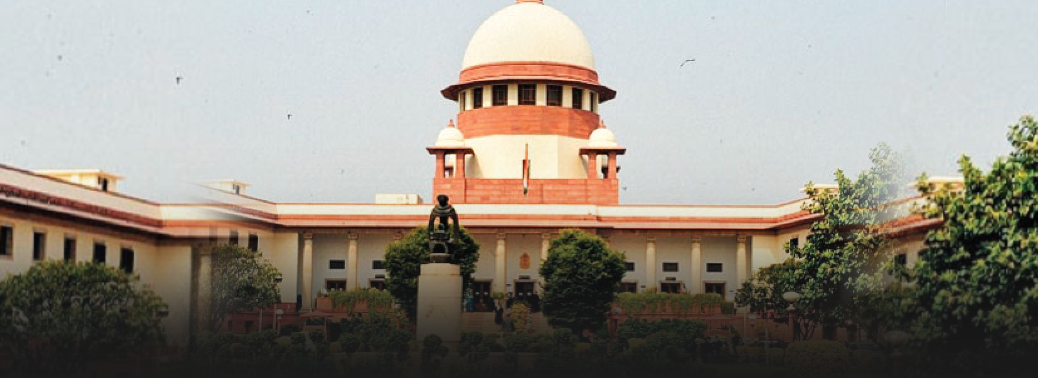
Context
- The Supreme Court on Monday observed that a “very serious issue” has been raised in a petition seeking a CBI probe into 1,100 police encounters which have taken place in Uttar Pradesh under the Yogi Adityanath government.
Details:
‘Massive liquidations’
- Filed by the NGO, People’s Union for Civil Liberties (PUCL), the petition termed the encounters “massive administrative liquidations.”
- On Monday, a Bench led by Chief Justice of India Ranjan Gogoi adjourned the case to February 12. The court had asked the State government to first file its response to the petition way back on July 2 last year.
Open defiance: PUCL:
- The PUCL has submitted that the police encounters were endorsed by the State administration in “open defiance” of human rights and civil liberties. That is, the State machinery chose to end lives instead of bringing people for trial.
- “The state cannot adopt such means which are against the constitutional principles to fight with terrorism or hardened criminals. Such extra-judicial killings in the name of encounters are considered ‘state-sponsored terror’,” the petition said.
- In this context, the petition refers to reported statements made by Chief Minister Adityanath like “criminals will be jailed or killed in encounters” and “everyone should be guaranteed security, but those who want to disturb peace of the society and believe in the gun, should be given the answer in the language of the gun.” The petition said the National Human Rights Commission had written to the State government in response to the Chief Minister’s statements, saying that police personnel were misusing their powers to settle scores. The Commission had said “creating an atmosphere of fear is not the correct way to deal with the crime”.
- The petition, which refers extensively to reports in The Hindu on the police encounters, said facts available in the public domain show that over 1,100 encounters have taken place in the past year, wherein 49 people were killed and 370 injured.
“According to the figures given by the State of U.P. to the NHRC, in the encounters, 45 persons have died between 01.01.2017-31.03.2018. Each such encounter is required to be investigated on the basis of FIR, followed by a Magisterial Inquiry and thereafter, a criminal trial in accordance with law,” it said.
Ethical Issues involved:
- Gandhiji said” An eye for an eye will make the whole world blind”. An extrajudicial killing is the killing of a person by governmental authorities without the sanction of any judicial proceeding or legal process. It is right when it is done on the pretext of self defense, national security at stake or when it involves Utilitarian Principle(consequentialism) but unethical when it is done with a targeted approach.
- Various ethical issues- Rule of Law-It bypass due process of law which require that every alternative should be provided to accused.
- Humanitarian-killing a person without any retaliation is nothing more than a barbaric act of killing which should come with a probe against the person who has done this gruesome act. Constitution- It is against our fundamental right which talks about a life of dignity.
Life is the most precious possession of an individual and depriving someone of it should be the exception and not the rule Eg Saurabuddin case,20 woodcutters in AP etc., - Herd Mentality- Encounter is wrong, it is the mentality of a mob which see things through the lens of agitation than justice. Misue of Policy/slippery slope-The worry here is about breaking down the barrier between legitimate killing in self-defense or in punishment, versus the sort of illegimate killing
Triple Talaq ordinance to be Re-Promulgated
11, Jan 2019
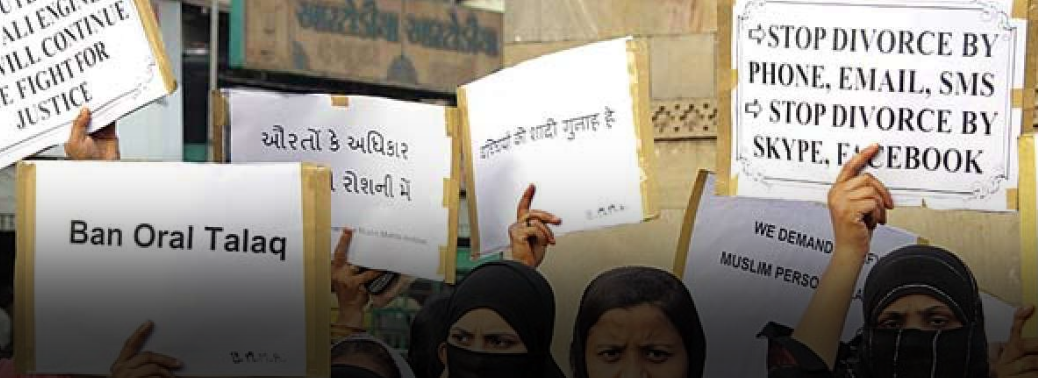
Context:
- The Union Cabinet approved a proposal to re-promulgate the ordinance making the practice of instant triple talaq a criminal offence.
Details:
- The earlier ordinance was to expire on January 22. The Bill to convert the first ordinance into a law is pending in Rajya Sabha.
- A fresh Bill to make the practice of triple talaq among Muslims a penal offence was introduced in the Lok Sabha on December 17 last year to replace an ordinance issued in September.
- The Cabinet has also approved re-issuance of an ordinance to allow a committee and a Bill to convert an earlier ordinance into a law is pending approval in Parliament.
Key provisions of the Bill:
- The Bill makes all declaration of talaq, including in written or electronic form, to be void (i.e. not enforceable in law) and illegal.
- Definition: It defines talaq as talaq-e-biddat or any other similar form of talaq pronounced by a Muslim man resulting in instant and irrevocable divorce. Talaq-e-biddat refers to the practice under Muslim personal laws where pronouncement of the word ‘talaq’ thrice in one sitting by a Muslim man to his wife results in an instant and irrevocable divorce.
- Offence and penalty: The Bill make declaration of talaq a cognizable offence, attracting up to three years’ imprisonment with a fine. (A cognizable offence is one for which a police officer may arrest an accused person without warrant.)
- The offence will be cognizable only if information relating to the offence is given by: (i) the married woman (against whom talaq has been declared), or (ii) any person related to her by blood or marriage.
- The Bill provides that the Magistrate may grant bail to the accused. The bail may be granted only after hearing the woman (against whom talaq has been pronounced), and if the Magistrate is satisfied that there are reasonable grounds for granting bail.
- The offence may be compounded by the Magistrate upon the request of the woman (against whom talaq has been declared). Compounding refers to the procedure where the two sides agree to stop legal proceedings, and settle the dispute.
- The terms and conditions of the compounding of the offence will be determined by the Magistrate. Allowance: A Muslim woman against whom talaq has been declared, is entitled to seek subsistence allowance from her husband for herself and for her dependent children.
- The amount of the allowance will be determined by the Magistrate. Custody: A Muslim woman against whom such talaq has been declared, is entitled to seek custody of her minor children. The manner of custody will be determined by the Magistrate.
Significance:
- Time has come to put an end to the suffering of Muslim women who have been at the receiving end of instant talaq for several years.
- More than 20 Islamic countries have already banned the practice.
SC sets aside Delhi HC ruling against Monsanto
09, Jan 2019

Context:
- Providing relief to agri-sector major Monsanto, the Supreme Court on Tuesday set aside a Delhi High Court (DHC) order invalidating Monsanto Technology’s patents on BT cotton seeds.
Background of the case:
- A division bench DHC had earlier ruled that Monsanto could not claim patents of GM (genetically modified) cotton seeds since items like seeds, plants and animals can’t be patented under Indian laws.
- Monsanto sells GM cotton seeds in India through its joint venture with Maharashtra Hybrid Seeds Co — Mahyco Monsanto Biotech (India) Ltd (MMBL).
- MBBL had terminated its sub-license with Nuziveedu Seeds Ltd (NSL) in 2015 after a royalty payment dispute. The case reached court when NSL continued to sell genetically modified seeds even after its contract was terminated, with the latter seeking an ad-interim injunction. In November 2016, a single judge bench of the High Court restrained NSL from selling BT cotton seeds using the trademark of Monsanto or MMBL.
- However, a division bench of the Delhi High Court had overturned this.
- Now, the SC set aside a Delhi High Court Division Bench decision that held that U.S. agro major Monsanto did not have patent for its genetically modified BT cotton seed variants and had allowed it to claim registration under the Protection of Plant Varieties and Farmers’ Rights Act of 2001.
About Protection of Plant Varieties and Farmers’ Rights Act, 2001:
- The Protection of Plant Variety and Farmers Right Act, 2001 (PPVFR Act) is an Act of the Parliament of India that was enacted to provide for the establishment of an effective system for protection of plant varieties, the rights of farmers and plant breeders, and to encourage the development and cultivation of new varieties of plants.
- The PPV&FR Act, 2001 was enacted to grant intellectual property rights to plant breeders, researchers and farmers who have developed any new or extant plant varieties.
Tribals of west Bengal Battling Food Scarcity: Study
07, Jan 2019
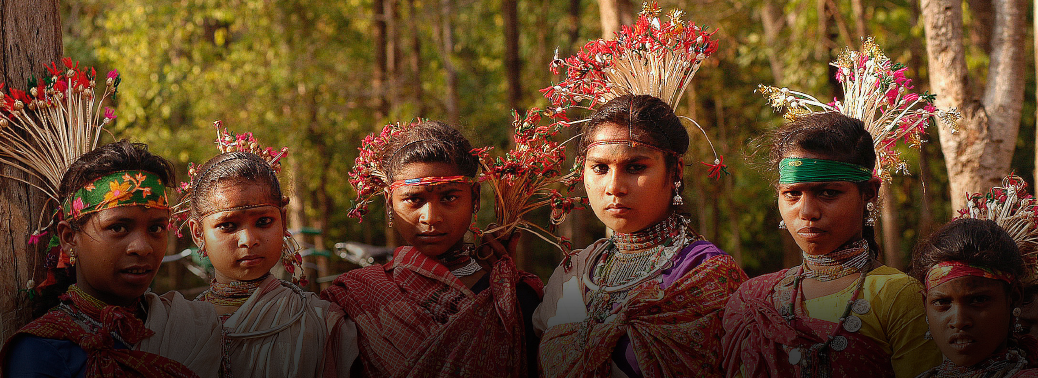
Context:
- Two months after the West Bengal government denied any food scarcity as a possible cause of death of seven persons from a tribal community, a survey report has identified “food scarcity in varying degrees” in about 31% of tribal households in West Bengal.
Details:

- West Bengal is home to a over five million tribals, with 6% of the India’s tribal population of 100 million. And, in many areas of these regions, tribals of the State are far behind in terms of human development. Recently, it has been contended that the main reason for the death of seven tribals is due to the scarcity of food. With that background in place, the survey has been conducted in 1,000 tribal households to ascertain living conditions, health and education. The report findings say that the tribal people are facing hunger problems, most of the families surveyed could hardly afford animal protein or pulses.
- Degradation of forest and environmental degradation are cited as two more reasons for “reduced availability of natural nutrients” resulting in early deaths. The report also indicated large cases of premature deaths among tribals. The report further noted that the work participation rate is higher among the Adivasis in Bengal, forcing the children of school going age to discontinue their studies in order to fend themselves and support the families.
HC Stays Ban on Online Sale of Drugs
03, Jan 2019

Context:
- A Division Bench of the Madras High Court on Wednesday stayed the operation of a single judge’s December 17 order banning online sale of medicines.
Details:
- The Bench has said that imposing a sudden ban would cause grave hardship and health issues to patients relying on e-pharmacies.
- It further said that the number of people who prefer to purchase medicines online was on the rise because not all patients and their caregivers would be in a position to go in search of the required drugs. It added that e-pharmacies aided those who travelled from one state to another for medical treatment. On the other hand, the Bench warned that sale and dispensation of medicines requires great care as it deals with human lives
- It is argued that there was no necessity to ban online sale in toto when e-pharma firms had conceded that the authorities constituted under the Drugs and Cosmetics Act of 1940 were already empowered to initiate appropriate action against them.
- And also, there was no possibility of any irregularity or illegality as medicines would not be dispensed online without buyers having furnished prescriptions from registered medical practitioners.
Parliamentary Panel Flags Neglect of Western Ghats
02, Jan 2019

Context:
- Over 56,000 km of ecologically sensitive areas in the Western Ghats could not be
earmarked as ‘no-go’ zones due to State governments’ ‘insensitivity’, a parliamentary
panel has said.
Details:
- The Panel has urged the Union Environment and Forests Ministry to constitute a committee to address the issues and grievances of the local people.
- This has come into discussion due to the recent catastrophic monsoon floods in Kerala and parts of Karnataka.
- The disaster mainly implies the ecological insensitive administration of the concerned six State governments of Goa, Gujarat, Maharashtra, Kerala, Tamil Nadu and Karnataka, says the Committee on Government Assurances in the Rajya Sabha.
Committee on Government Assurances:
- The Committee consists of 15 members in Lok Sabha and 10 members in Rajya Sabha.
- A Minister is not nominated to this Committee.
- While replying to questions in the House or during discussions on Bills, Resolutions, Motions etc., Ministers at times give assurances or undertakings either to consider a matter or to take action or to furnish the House further information later. The functions of this Committee are to scrutinize the assurances, promises, undertakings etc. given by Ministers from time to time and to report to the respective Houses of Parliament on the
extent to which such assurances etc. have been implemented and to see whether such implementation has taken place within the minimum time necessary for the purpose.
AFSPA to continue in Nagaland
01, Jan 2019
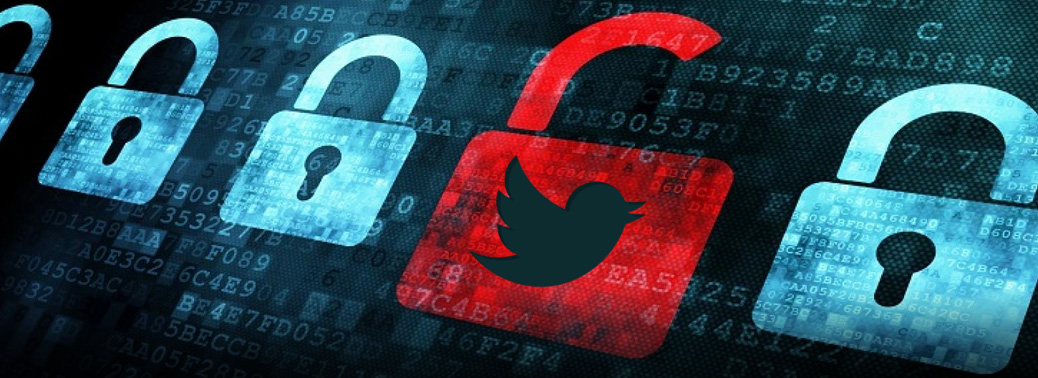
Context:
- The entire State of Nagaland has been declared ‘disturbed area’ for six more months, till June-end, under the Armed Forces (Special Powers) Act 1976.
Details:
- The Home Ministry has notified that the Central government is of the opinion that the area comprising the whole of State of Nagaland is in such a disturbed and dangerous condition that the use of armed forces in aid of civilian power is necessary.
- The Ministry further mentioned that decision has been taken as killings, loot and extortion have been going on in various parts of the State which necessitated the action.
- Hence, using the powers conferred by Section 3 of the Armed Forces (Special Powers) Act, 1958, the Central government declared the whole of the State of Nagaland as a ‘disturbed area’ for a period of six months with effect from 30th December, 2018.
- The AFSPA has been in force in Nagaland for several decades. It has not been withdrawn even after a framework agreement was signed on August 3, 2015, by the Naga insurgent group NSCN-IM general secretary and government interlocutor R.N. Ravi in the presence of Prime Minister.
- There are also demands from various organisations in the North East and Jammu and Kashmir for repealing the controversial AFSPA, which empowers these forces with ‘sweeping powers’ such as to conduct operations anywhere and arrest anyone without any prior notice.
About AFSPA:

How a region is declared ‘disturbed’?
- Section (3) of the AFSPA empowers the governor of the state or Union territory to issue an official notification in The Gazette of India, following which the Centre has the authority to send in armed forces for civilian aid.
- Once declared ‘disturbed’, the region has to maintain status quo for a minimum of three months, according to The Disturbed Areas (Special Courts) Act, 1976.
- The state governments can suggest whether the act is required to be enforced or not. But under Section (3) of the act, their opinion can be overruled by the governor or the Centre. The Armed Forces Special Power Act 1958 provides security forces special powers and immunity to tackle militant, extremist and insurgent activities in disturbed areas.
- Many reports have shown that frequent raids, fake encounters, demolition of private property and torture by the armed force made the lives of people living in the disturbed areas vulnerable.
Implications of these violations:
- Violation of fundamental rights such as Article 14, 21 guaranteed by the constitution. Abuses by army, and are rarely punished for crimes
- It alienates the people from army and then from the rest of the India. A feeling of other worldly is generated in their mind. It is also one of the main reasons for self-exclusion of J&K and North-eastern people from the rest of India
- The special powers by AFSPA also override the code of criminal procedure (CrPC)
- It is agreed that handling insurgent and extremist activities in disturbed areas need special powers and these special powers are also to preserve country’s integrity and uphold law and order. However, the nature and mechanism of AFSPA should be the way to address the concerns of human rights violations
Solutions:
- Phased removal of AFSPA considering the local situations.
- All human right violations should be investigated and time-bound procedure should be adopted
- The cases could also be fast-tracked
- Amendments in Laws: The lacunae in the Act, as a result of definitional voids with respect to terms like “disturbed”, “dangerous” and “land forces” need to be amplified to ensure greater clarity
- The onus of proving the alleged person as terrorists should lie with the forces. Sec 7 should be suitable amended to this effect.
- AFSPA should only be a curative, preventive and protective force and not a violative force. Steps should be made in that regard.
Review Hearing in open court Rare
01, Jan 2019
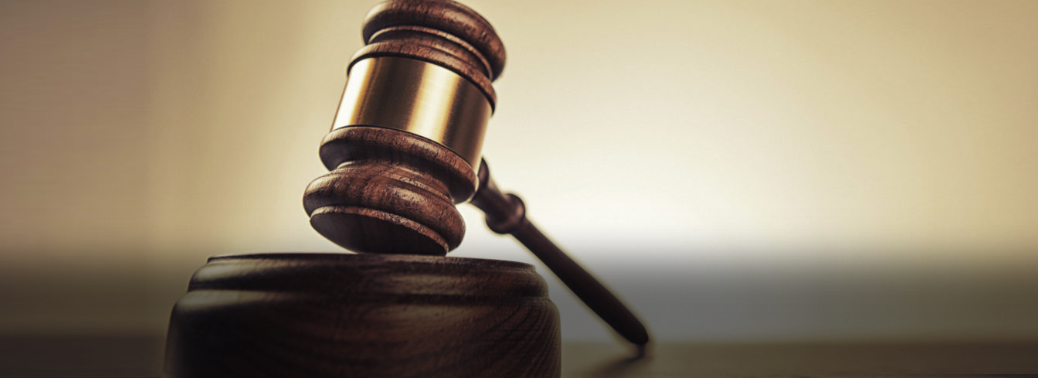
Context:
- The decision of a five-judge Bench led by Chief Justice of India Ranjan Gogoi to have an open court hearing of the review petitions filed against another five-judge Constitution Bench’s Sabarimala judgment is “exceptional”, legal experts say.
Details:
- The repercussions after historic Sabarimala judgment have been recollecting the events found 43 years ago in the open court review of the historic Kesavananda Bharati verdict in November 1975.
- The Sabarimala judgment, which struck down a ban on women of menstruating age from undertaking the pilgrimage, was delivered by a Constitution Bench of five judges. The Review Bench formed by Chief Justice Gogoi is also a five-judge Bench.
- The Supreme Court decision in the Central Board of Dawoodi Bohra Community holds that a Bench of co-equal strength on its own cannot overrule a judgment of a Bench of co-ordinate number of judges.
- So, a five-judge Bench cannot overrule another five-judge Bench’s verdict. In case the Sabarimala verdict has to be overruled, the Supreme Court would have to form a larger Bench of seven judges. Review of any Supreme Court decision is rare.
- It is rarer still to examine review petitions filed against a Constitution Bench judgment and in an open court. Review petitions are usually decided by circulation in judges’ chambers. The situation (reviewing a Consitutional Bench) has been described as rare as a Constitution Bench is itself formed to finally settle a law.
About Kesavananda Bharati vs State of Kerala case:
- It is popularly known as fundamental rights case
- Under this case, the Supreme Court of India outlined the Basic Structure doctrine of the Constitution and ruled that all provisions of the constitution, including Fundamental Rights can be amended.
- However, the Parliament cannot alter the basic structure of the constitution like secularism, democracy, federalism, separation of powers.
- Under this Supreme Court declared 31 C as unconstitutional and invalid on the ground that judicial review is basic structure and hence cannot be taken away.
- The Supreme Court reviewed the decision in Golaknath v. State of Punjab, and considered the validity of the 24th, 25th, 26th and 29th amendments.
- The most significant contribution by Kesavananda Bharati judgment is the recognition of supremacy of the Constitution of India and its unalterable features.
- The Kesavananda judgment also defined the extent to which Parliament could restrict property rights, in pursuit of land reform and the redistribution of large landholdings to cultivators, overruling previous decisions that suggested that the right to property could not be restricted.
Background on Sabarimala case:
- The temple banned the entry of women pilgrims who are aged between 10 to 50 claiming it as a traditional practice.
Arguments in favour:
- Barring women entry is considered as an “essential and integral” practice of a religious denomination under Article 25.
- Lord Ayyappa was a celibate and it is argued that the deity also has right to maintain the celibacy.
- This is also a part of right to privacy of the deity and it should be respected.
- Biologically women are weaker than men and they cannot put up with the physical hardship, austerity and days of celibacy like men.
Arguments against:
- It is against the fundamental right (Article 14) as it is discriminatory and against gender justice.
- Article 26 only talks about freedom to manage religious affairs and this is subjected to constitutional morality and does not encourage any discriminatory practice
- It is also considered as a form of untouchability as it socially ostracize women from religious practices against their will. And hence punishable under Article 17.
Important judgments involved in this issue:
- 1991 Kerala High Court judgement: It supported the restriction imposed on women devotees. It argued that that the restriction was in place since time immemorial and not discriminatory under the Constitution.
- Supreme court recent judgment 2018 (Indian Young Lawyers Association v. State of Kerala). It supported the right of women of all ages to enter sabarimala temple. It argued that it is a constitutional right and it cannot be challenged. It added that practice is reflecting patriarchal attitude. This social exclusion if continued could only strengthen the principle of purity and pollution and dominant class ideology, said the Supreme court
Reflections of the recent judgment in the society:
- Though it has been welcomed by social activists and gender equality supporters such as All India Democratic Women’s Association, it has also created other repercussions.
- The judgment created dissenting opinion manifested in the form of spiraling protests in Kerala and also in others parts of the nation.
Reasons for disagreement with the judgment:
- It questions the court’s authority to decide on essential practices of religious denominations
- Also questions the court’s authority in deciding the integrity and ethics behind the religious practices
- Justice Malhotra criticizes the Supreme Court reliance on the “essential religious practice” doctrine.
Centre drafts child protection policy
19, Dec 2018

Context:
- The Centre has drafted child protection policy, prepared on the prodding of the Supreme Court in the wake of the Muzaffarpur shelter abuse case, mainly to curb the instances of abuse of minors in shelter homes and child care institutions.
Details:
- The drafted policy has been placed by the Ministry of Women and Child Development on their website and they have invited comments from stakeholders until January 4.
- This will be the first policy dedicated to the protection of children, an area that until now was only a part of the broader National Child Policy, 2013.
- The Supreme Court had earlier directed the CBI to investigate allegations involving 17 shelter homes for children, destitute women, beggars and senior citizens in Bihar following the case of sexual abuse of more than 30 girls in a shelter home in Muzaffarpur in the State.
- The Supreme Court had also asked the Centre to consider framing a national policy on protection of children.
Important features of the policy:
- As per the draft, the policy will apply to “all institutions, and organisations (including corporate and media houses), government or private sector”.
- The draft policy recommends that all organisations must have a code of conduct based on “zero tolerance of child abuse and exploitation”.
- It requires organisations to lay down that employees don’t use language or behaviour that is “inappropriate, harassing, abusive, sexually provocative, demeaning or culturally inappropriate”.
- Institutions should also designate a staff member to ensure that procedures are in place to ensure the protection of children as well as to report any abuse. Any individual who suspects physical, sexual or emotional abuse must report it to the helpline number 1098, police or a child welfare committee.
Concerns in the policy:
- Unlike the National Child Policy, 2013, the latest document doesn’t talk about children who may need additional special protection measures: including those affected by migration, communal or sectarian violence, children forced into begging or in conflict with the law, and those infected with HIV/AIDS.
- It also doesn’t talk about the role of the state for ensuring the protection of child rights or addressing local grievances.
- There is no clear definition on what exactly child protection means to everyone and also no clear definition on what constitutes institutions and organisations.
National Commission for Women
18, Dec 2018

- The National Commission for Women was set up as statutory body in January 1992 under the National Commission for Women Act, 1990 (Act No. 20 of 1990 of Govt. of India ) to :
- Review the Constitutional and Legal safeguards for women
- Recommend remedial legislative measures
- Facilitate redressal of grievances and
- Advise the Government on all policy matters affecting women.
- The objective of the NCW is to represent the rights of women in India and to provide a voice for their issues and concerns. The subjects of their campaigns have included dowry, politics, religion, equal representation for women in jobs, and the exploitation of women for labour. They have also discussed police abuses against women.
- The commission regularly publishes a monthly newsletter, Rashtra Mahila, in both Hindi and English.
Global Compact for Migration:
- The Global Compact for Safe, Orderly and Regular Migration (GCM) is an intergovernmentally negotiated agreement, prepared under the auspices of the United Nations that covers “all dimensions of international migration in a holistic and comprehensive manner”.
- At the Intergovermental Conference to Adopt the Global Compact for Safe, Orderly and Regular Migration, which was held from 10–11 December 2018, 164 nations met under the auspices of the United Nations General Assembly at Marrakesh, Morocco, in order to formally agree upon the Compact.
- As the Compact is not an international treaty, it will be non-binding under international law. However, as with similar United Nations agreements, it will formally be a politically binding commitment.
- Under this declaration, signatory UN member countries had decided to develop global compact for safe, orderly and regular migration.
- The purpose of Global compact of migration is to provide significant opportunity to improve governance on migration, address challenges associated with today’s migration, and strengthen contribution of migrants and migration to sustainable development.
- It sets out 23 objectives to deal issues ranging from factors that compel people to move, legal channels for migration, combating trafficking and smuggling, harnessing the economic benefits of migration and return of the migrants.
Come June, Groundwater Extraction will invite a Fee
14, Dec 2018
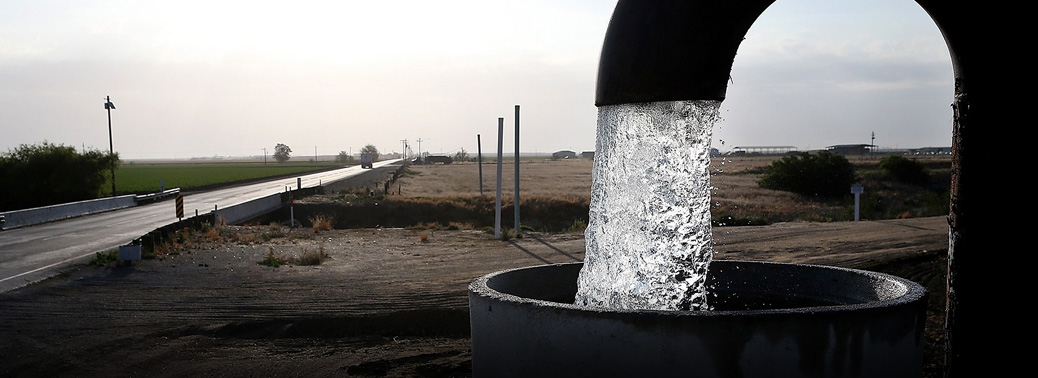
Context:
- In a bid to promote conservation of groundwater, the Central Ground Water Authority (CGWA) has notified a water conservation fee (WCF) that industries will need to pay on groundwater extraction starting from June.
Details:
- As per the notification, industries extracting groundwater including mining-dewatering units and those that use groundwater for packaged drinking water would also need to apply for a no-objection certificate (NOC) from the government.
- NOC process could be done through online
- Individual households that draw groundwater using a delivery pipe of a greater than 1” diameter (which indirectly implies more water withdrawal), too, would need to pay a WCF.
- And the rates would be levied depending on the location of the groundwater extraction point and the amount of water being extracted.
Exemptions:
- The agriculture sector — the largest consumer of groundwater in the country — will be exempt from the fees.
- Defence establishments and users who don’t use electricity to extract water have also been granted exemption from the requirement of obtaining NOCs and having to pay the WCF.
- The guidelines would come into force with effect from June 2019 and would apply across the country.
- Levies are regarded as water conservation fee, which will be used for groundwater recharge projects
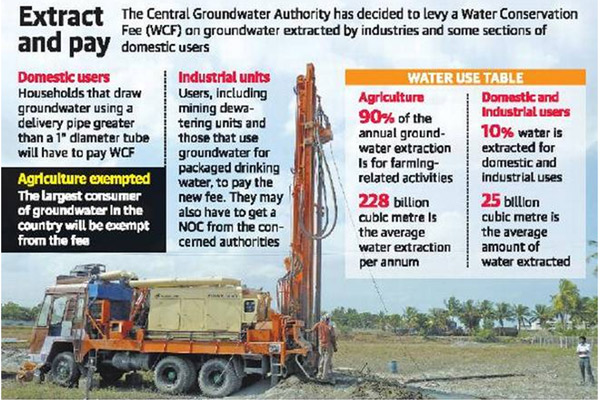
Lack of basic rights for the aged a concern: Sc
14, Dec 2018
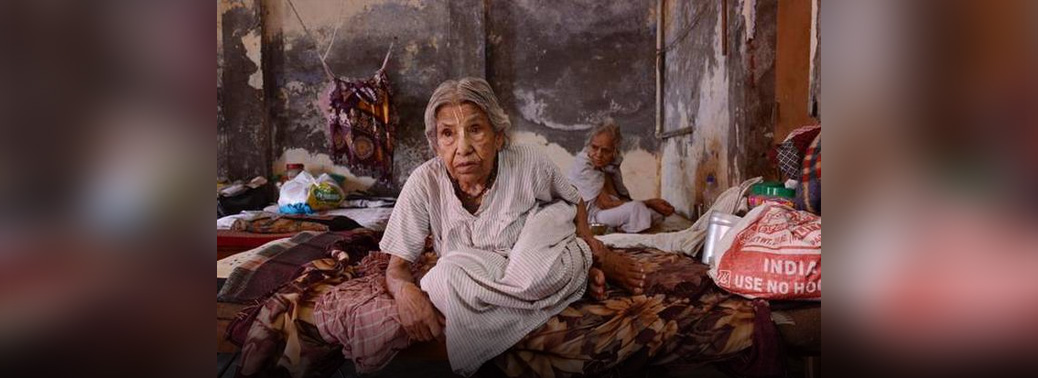
Context:
- The Supreme Court has said the government should provide adequate economic support to the aged people for their better livelihood.
Details:
- The Supreme Court termed the rights of the rising elderly population of the country an “emerging situation” not envisaged even in the Constitution.
- It further added that the government could not tighten its purse strings in the name of “economic budgeting” to explain the inadequate welfare provided to senior citizens and the aged.
- It said that it was a statutory right of every aged person under the Maintenance and Welfare of Parents and Senior Citizens Act of 2007 to be provided dignity, health and shelter. All the three are important components which make the fundamental right to life under Article 21.
- It ordered the Centre to obtain the “necessary information” from all the State governments and the Union Territories about the number of old age homes in each district and file a status report by January 31.
- This data would be necessary to prevent them from mishaps and other unforeseen events
- And also ordered the Centre to obtain details from the States about the medical and geriatric care facilities available to senior citizens in each district.
- The court directed that the Centre should prepare a plan of action for giving publicity to the provisions of 2007 Act and ensure that the State governments carry out and execute the provisions of the law.
About Maintenance and Welfare of Parents and Senior Citizens Act of 2007:
- A legislation initiated by the Ministry of Social Justice and Empowerment
- It was enacted in order to provide more effective provision for maintenance and welfare of parents and senior citizens.
- This Act makes it a legal obligation for children and heirs to provide maintenance to senior citizens and parents, by monthly allowance.
- This Act also provides simple, speedy and inexpensive mechanism for the protection of life and property of the older persons.
- The Ministry has drafted the Maintenance and Welfare of Parents and Senior Citizen Draft Bill, 2018, to expand its scope and provide for more stringent penalties.
End Hegemony in CAPF: PANEL
13, Dec 2018

Context
- A parliamentary panel has recommended that the post of Director-General and other senior positions in Central Armed Police Forces should not be reserved for Indian Police Service officers.
Details
- The panel has suggested that the nature of duty of CAPF are more similar to that of the Armed Forces and it would make more sense to bring more officers from the Armed Forces on deputation.
- Currently, the DG rank in CAPFs is “100% reserved for IPS officers.”
About Central Armed Police Forces (CAPF)
- The Central Armed Police Forces (CAPF) refers to uniform nomenclature of seven security forces in India under the authority of Ministry of Home Affairs.
- Seven security forces
-
Assam Rifles (AR)
- The Assam Rifles is the oldest of paramilitary force of India.
- They perform many roles including the provision of internal security under the control of the army through the conduct of counter insurgency and border security operations, provision of aid to the civil power in times of emergency, and the provision of communications, medical assistance and education in remote areas.
-
Border Security Force (BSF)
- The Border Security Force (BSF) is the primary border defence organisation of India.
- It is charged with guarding India’s land border during peacetime and preventing transnational crime.
- It currently stands as the world’s largest border guarding force. BSF has been termed as the First Line of Defence of Indian Territories.
- Central Reserve Police Force (CRPF)
- The Central Reserve Police Force (CRPF) is the largest of India’s Central Armed Police Forces.
- The CRPF’s primary role lies in assisting the State/Union Territories in police operations to maintain law and order and counter insurgency.
- Central Industrial Security Force (CISF)
- The CISF provides security cover to 300 industrial units, government infrastructure projects and facilities and establishments located all over India. Industrial sectors like atomic power plants, space installations, mints, oil fields and refineries, major ports, heavy engineering, steel plants, barrages, fertilliser units, airports and hydroelectric/thermal power plants owned and controlled by Central Public Sector Undertakings (PSUs), and currency note presses producing Indian currency are protected by CISF.
- It thereby covers installations all over India straddling a variety of terrain and climatic conditions.
- CISF also provides consultancy services to private industries as well as other organisations within the Indian government.
- Indo-Tibetan Border Police (ITBP)
- The ITBP was intended for deployment along India’s border with China’s Tibet Autonomous Region.
- National Security Guard (NSG)
- It is raised for combating terrorist activities with a view to protect states against internal disturbances.
- Sashastra Seema Bal (SSB)
- SSB is now spread along the International border across Uttarakhand, UP, Bihar, West Bengal, Sikkim, Assam and Arunachal Pradesh.
- It is to safeguard the security of assigned borders of India and promote sense of security among the people living in border areas and to prevent trans-border crimes, smuggling and any other illegal activities.
Allow ‘Minorities’ Into India, Says HC
13, Dec 2018
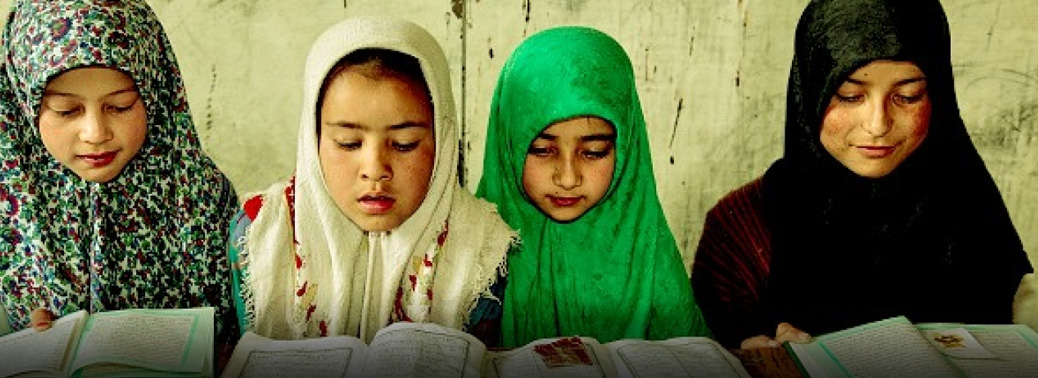
Context
- The Meghalaya High Court has asked the Centre to bring in a law to let people of religious and ethnic minority communities from Afghanistan, Bangladesh and Pakistan to be given citizenship without any cut-off year or any questions asked.
Details:
- The HC said that the Centre should have a law allowing Hindus, Sikhs, Jains, Buddhists, Parsis, Christians, Khasis, Jaintias and Garos from neighbouring countries to live in India “with full dignity without making any cut-off year and be given citizenship without any question or production of any documents.”
- It further added that people may be allowed to come at any point of time to settle in India and the government may provide rehabilitation properly and declare them citizens of India.
About Citizenship Amendment Bill 2016:
- It proposed amendments, amending the Citizenship Act of 1955.
- This bill proposes to provide citizenship rights to migrants belonging to the Hindu, Sikh, Buddhist, Jain, Parsi or Christian religious communities, who have illegally migrated from Afghanistan, Bangladesh or Pakistan
- Hence these illegal migrants upon citizenship rights would not be subjected to imprisonment or deportation
- Also, these citizens would be able to gain permanent citizenship after six years of residency in India instead of 11 years — as mentioned in the Citizenship Act (1955).
- The registration of Overseas Citizen of India (OCI) cardholders may get cancelled if they violate any law.
Home Ministry Launches Twitter Account to Spread Awareness about Cybercrimes
12, Dec 2018

In News
- Home Ministry has launched a Twitter account to spread awareness about cybercrimes and normal precautions to be taken.
- The Twitter handles – @ CyberDost – is aimed at enhancing people’s basic knowledge about cybercrimes and precautions to be taken for prevention.
- Home Ministry said in the release that government is committed to creating an ecosystem to prevent and control cyber-crimes to mitigate the possibility of disruption in normal business activities or losses due to cybercrimes.
- It said capacity building and public awareness are critical components for obviating impact of cybercrimes and creating a suitable climate for trust-based transactions.
SC Directs Centre to Declare Area Around National Parks as Eco-Sensitive
12, Dec 2018
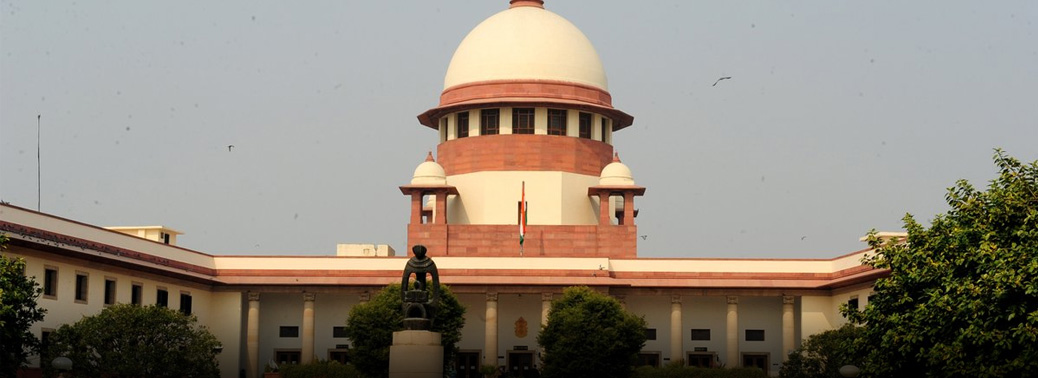
Context:
- The Supreme Court on Tuesday directed the Union Environment Ministry to declare 10 km area around 21 national parks and wildlife sanctuaries across the country as ‘eco-sensitive zones’.
Details:
- The Supreme Court bench took the initiative after its amicus curiae (advisor) informed the court that the State governments have taken no effort to protect the area around these sanctuaries and parks. The court ordered the Centre to make the declaration “at the earliest”. Any plea for modification by the States concerned should be made to the Environment Ministry in two weeks.
Related 21 national parks and wildlife sanctuaries:
| NATIONAL PARK/WILDLIFE SANCTUARY | PLACE |
|---|---|
| Pobitora sanctuary | Assam |
| Hemis High Altitude and Kishtewar national parks, | Jammu and Kashmir |
| Changthang, Hokersar, Trikuta sanctuaries | |
| Jogimatti, Thimlapura and Yadahalli Chinkara sanctuaries | Karnataka |
| Deolgaon Rehekuri and Thane Creek Flamingo sanctuaries and the Malvan marine sanctuary | Maharastra |
| Siroi National Park and Khongjaingamba Ching sanctuary | Manipur |
| Fakim and Puliebadze and Rangapahar sanctuaries | Nagaland |
| Jorepokhri sanctuary | West Bengal |
| Dr. Bhimrao Ambedkar bird sanctuary and Pilibhit sanctuary | Uttar Pradesh |
| Baghmara Pitcher Plant sanctuary | Meghalaya |
Don’t Reveal Identity of Rape Victims: SC
12, Dec 2018
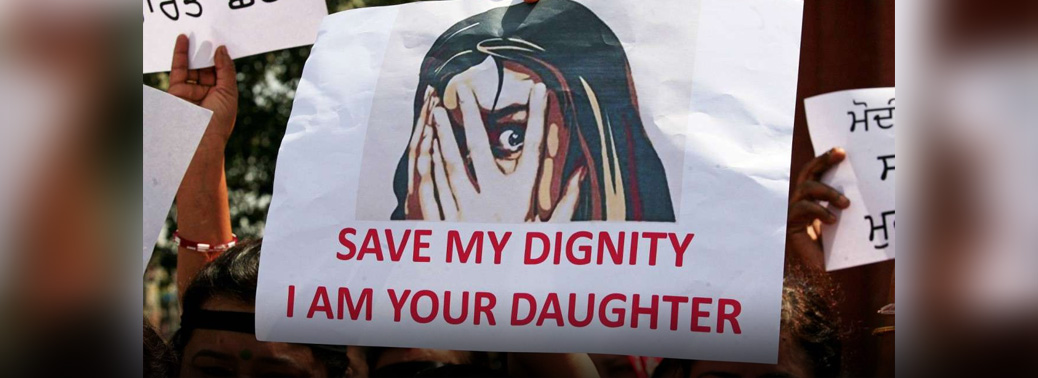
Context:
- The Supreme Court on Tuesday prohibited the media from publishing or airing the names or any material which may even remotely reveal the identity of victims of sexual crimes.
Details:
- The court held that the bar on disclosure under Section 228A(2) of the IPC was not confined to just the name of the victim but actually meant that the “identity of the victim should not be discernible from any matter published in the media.”
- The intention of the law makers was that the victim of such offences should not be identifiable so that they do not face any hostile discrimination or harassment in the future
- The court further held that the name and identity of a victim who was either dead or of unsound mind should also not be disclosed even under the authorisation of the next of kin. Any exception to this rule should be decided by the competent authority, the Sessions Judge. It barred the police from putting in public domain FIRs under Sections 376 to 376E (the range of sexual offences under IPC) and those under the Protection of Children from Sexual Offences (POCSO) Act. The documents disclosing identity of a victim should be kept in a sealed cover. Authorities to which a victim’s identity was disclosed by an investigating agency or the court are duty bound to keep it a secret.
- A victim need not reveal her identity while filing an appeal in a criminal court, the SC said.
Centre Rejects State’s Request to Grant Religious Minority Tag to Lingayat/Veerashaiva Community
11, Dec 2018

Context:
- The Union government on Monday told the Karnataka High Court that it has rejected the recommendation of the State government to grant religious minority status to Lingayat and Veerashaiva community.
Details:
- The Centre has taken a stand that Lingayat/Veerashaiva community is part of Hindu religion.
- The Centre has said that a similar request was considered earlier and it was observed that Lingayats were always classified under Hindus since 1871 census, the first official census of India
- Further,the Centre has claimed that all members of scheduled caste professing Veerashaivas/Lingayat religion would lose their status if is treated as a separate religion
About Lingayats/Veerashaivas community:
- Lingayats are followers of 12th-century social reformer Basavanna and his vachana (verses) philosophy.
- Their beliefs, practices and faith are different.
- Veerashaivas worship Lord Shiva, the one mentioned in Hindu mythology. However, the Shiva that Basavanna referred to in his vachanas (verses) is not the Hindu god Shiva but the ishtalinga (formless God), which people of the community wear around their neck.
- Veerashaivas are a sub-sect of Lingayats and ardent followers of Lord Shiva. They preceded Basavanna, the founder of Lingayatism.
- Veerashaivism has its roots in the Vedas and Agamas, and Veerashaivas do not worship any god other than Shiva; they can be found spread across Karnataka, Kerala, Maharashtra, Andhra Pradesh and Telangana.
About Basavanna:
- Basavanna was a 12th-century social reformer. The revolution that Basavanna led came years after the Buddha.
- It was Basavanna and his contemporary Sharanas who launched a very strong spiritual, social and religious rebellion against Brahminical hegemony.
- Basavanna had declared that “work is worship”. He gave women equal status in his movement through the vachanas (verses).
- In order to take the social movement closer to the people, Basavanna and all the other Sharanas voiced their concerns in simple Kannada vachanas so that even lay people could comprehend them.
Allow Women in Nizamuddin Dargah, Says Petition in HC
11, Dec 2018

Details:
- Two months after the Supreme Court lifted the centuries-old practice of prohibiting women to enter the Sabarimala in Kerala, a petition on similar lines has been moved before the Delhi High Court seeking entry of women into the sanctum sanctorum of the Hazrat Nizamuddin Aulia Dargah here.
- A High Court bench sought the reply of the Centre, the city government and police on the petition. The Bench also sought response from the trust managing the dargah (shrine) before the next date of hearing
- It was contended by the petitioners that Nizamuddin dargah by its very nature is a public place and prohibition of entry of anyone in a public place on the basis of gender is contrary to the framework of the Constitution of India
Land acquisition law challenged in court
11, Dec 2018
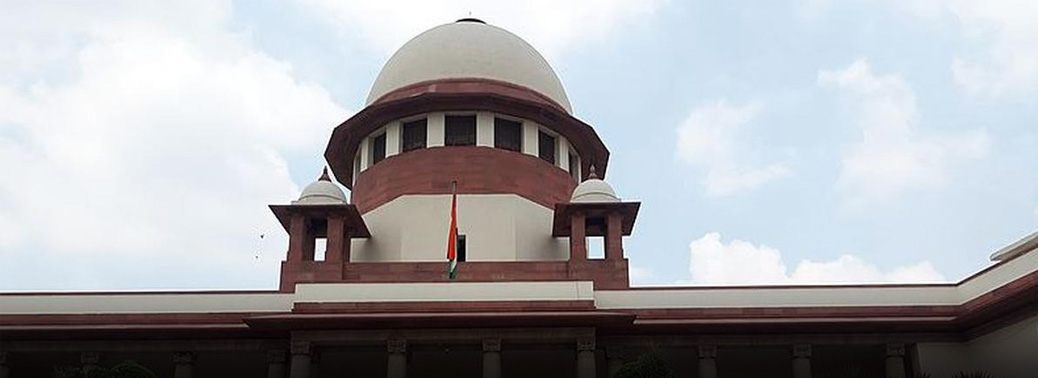
Context:
- The Supreme Court on Monday decided to examine a plea challenging the legality of amendments brought in by Tamil Nadu and four other States, which allow authorities to bypass the need to take farmers’ consent before their land is acquired for large infrastructure projects.
Details:
- The bench issued notice to the Tamil Nadu, Gujarat, Andhra Pradesh, Telangana and Jharkhand governments for amending their land acquisition laws to the extent that consent of farmers or land owners is not required before their land is acquired for projects like industrial corridors, expressways and highways.
- It is said that the States have amended to allow land acquisition without participation of representative local bodies like gram sabha in social impact assessment studies, without expert appraisal processes, public hearings, objections, and safeguard provisions to ensure food security.
- The petition said the amendments violate the “core spirit” of the Right to Fair Compensation and Transparency in Land Acquisition Rehabilitation and Resettlement Act of 2013. It mandates that 70% of the affected land owners should consent to the acquisition of land for a public private participation project.
- The petition also said that the States have removed the consent clause of PPP, paving the way for many private projects that are running under the garb of PPP.
Many combination drugs not approved by regulator
11, Dec 2018

Context:
- of the 110 anti-TB (tuberculosis) Fixed Dose Combinations (FDCs) available in India, only 32 (less than 30%) have been approved by the Central Drugs Standard Control Organisation (CDSCO), the country’s drug regulator. In the case of malaria FDCs, only eight out of 20 (40%), have been approved.
Reasons for low status of approval:
- Lack of transparent regulatory framework
- Ambiguity over licensing powers
- Institutional problems such as understaffing, lack of skills, and inadequate infrastructure
- Issuance of manufacturing licenses by the State Licensing Authority without the prior clearance of the Drug Controller General of India DCG(I)
Implications:
- It is unfortunate that a majority of approved FDCs in the Indian market are irrational and lack scientific justification.
- The scientific rigour of the CDSCO in approving these FDCs has been questioned time and again in Parliamentary and academic reports.
Way forward:
- The rationality of unapproved FDCs should be reviewed and irrational formulations should be banned
About Fixed Dose Combination drugs:
- A fixed dose combination( FDC) drug is one which contains combination of 2 or more APIs (Active pharmaceutical ingredients) in a single form, which is manufactured and distributed in fixed doses. FDCs were earlier produced to treat single diseases but now can also treat multiple diseases if diseases are related.
About Central Drugs Standard Control Organisation:
- The Central Drugs Standard Control Organization (CDSCO) is the national regulatory body for Indian pharmaceuticals and medical devices, and serves parallel function to the European Medicines Agency of the European Union, the PMDA of Japan, the Food and Drug Administration of the United States and the Medicines and Healthcare products Regulatory Agency of the United Kingdom.
About Drug Controller General of India:
- DCGI under gamut of Central Drugs Standard Control Organization (CDSCO) is responsible for approval of licenses of specified categories of drugs such as blood and blood products, vaccines, IV fluids and sera in India.
- DCGI lays down standards and quality of manufacturing, selling, import and distribution of drugs in India.
- It acts as appellate authority in case of any dispute regarding quality of drugs.
- It prepares and maintains national reference standard.
- It brings about uniformity in enforcement of Drugs and Cosmetics Act.
- It trains Drug Analysts deputed by State Drug Control Laboratories and other Institutions.
- The DCGI is advised by the Drug Technical Advisory Board (DTAB) and the Drug Consultative Committee (DCC)
Ascent to the temple of democracy
11, Dec 2018

What’s in the Editorial?
- Kerala’s reputation as a society that has evolved to an exceptional degree may have taken a bit of a beating. The reputation itself has been built on the strides made in the sphere of development, by now internationally recognised to be human development as reflected in the health and education status of a people.
The Kerala paradox:
- When it was first noticed over four decades ago, Kerala’s perceived uniqueness had stemmed from the realisation that it was among India’s poorest States. To have achieved fairly high human development despite relative poverty was considered noteworthy.
- What was not apparent in the usual indicators, however, was something even more unique, the ending of social hierarchy. The caste system, which was at the centre of Kerala’s social arrangements, disintegrated virtually overnight. This was fuelled by the enactment of a land reform programme that ended feudalism. With feudalism went the equivalence between caste dominance and economic power.
The Marxian Perspective:
- If evidence ever was needed for the Marxian view that it was the economic base of a society that undergirded its ‘superstructure’ this was it. What is significant is that the transition had been smooth, without recrimination for loss or retribution for injustice.
- Social distance in terms of caste distinctions just died.
- Given the experience of the ending of a feudalism that had persisted for centuries in Kerala, the reception to the Supreme Court’s verdict on the practice of excluding women of menstruating age from the shrine at Sabarimala is disappointing.
- It is not as if the ruling has been received with sullen acceptance alone. It has been followed by vigilantes actually preventing the very few women who have attempted to enter the shrine since from doing so.
- Reports of heckling and intimidation that have led to disheartened women returning without darshan is likely to have left many a Malayali patriot ashamed.
- To understand the reaction to one of the last bastions of male privilege being thrown open to women, we may turn to the work of the philosopher Michel Foucault.
Foucault Observation:
- Foucault had observed that while Marxism, a powerful tool for social analysis, emphasises the relations of production, it ignores the relations of power. Power for Foucault is ubiquitous and ramifies into every dimension of human association. Patriarchy or the idea of rule by men would be one of the sources of power. Heteronormativity and the claim of the racial superiority of certain ethnic groups have also served as sources of power. Power for Foucault can draw its force from sources that are entirely unrelated to economic class.
- Thus in Kerala, for instance, patriarchy is entrenched across all classes and social groups. It did not vanish with the land reforms, even if its architects had wanted it to happen. From the recent events at Sabarimala we can see that some sections do not want it to lose its stranglehold even today.
A historic perspective:
- The opposition to women’s entry at Sabarimala is at times met with an appeal to history, that the temples of Kerala have witnessed far greater transformation in the past, having been thrown open to all sections of Hindus over 75 years ago.
- While this history is correctly recounted, the issue of women’s entry into temples is not a matter of accepting the inevitability of change, it is a matter of recognising what living in a democracy implies for its members.
- Even as democracy guarantees rights to the individual, it requires him to acknowledge the rights of others.
- It is easily overlooked that it is democracy that grants the freedom to practise a religion. The Church was discouraged in the former Soviet Union, China frowns upon the faith of the Uighurs, and the Saudi Arabian state is not exactly tolerant of religious plurality.
Linked to representation:
- However, while democracy assures freedom to practise religion, citizens are expected to practise it in a way that is consistent with democracy.
- So the traditionalists on the Sabarimala issue must recognise that by excluding women, they are not keeping their side of the social contract as it were. In a democracy, the social contract is not between the state and the people, it is one entered into by citizens among themselves.
Ambedkar’s Social contract:
- As B.R. Ambedkar is believed to have advised Jawaharlal Nehru, you cannot have a republic within a republic. In the Indian context, the implication of this principle is that religion must be practised in a way consistent with constitutional values; at a minimum the practices cannot be discriminatory. Legal provisions against domestic violence and the ill-treatment of children point to the reach of democracy even into our homes. Religion cannot claim special dispensation. It need hardly be emphasised that the principle that religion be practised in accordance with the norms of democracy extends to all religions. Indian secularism would be tested on this idea.
- In a way, the opposition to the entry of women to Sabarimala is reflective of a wider inequality between men and women that may be observed in Malayali society. Two indicators point to this, despite the very high literacy levels registered by women and a significant presence of women with higher education. First, female labour force participation is low in Kerala in comparison with other States. Surely the equality of women must be visible in their participation in the workforce. In Kerala, women were once a major presence in agriculture but this declined when paddy cultivation atrophied. The low female labour force participation in Kerala affects their ability to influence social norms, especially social attitudes towards female agency.
- Second, the presence of women in governance roles is very low in Kerala. Three indicators may be noted, namely, the percentage of women legislators, judges in the High Court and leaders of political parties. It may come as a surprise to note that for the former two indicators the number is lower for the State than it is for Tamil Nadu and Gujarat.
- This despite the fact that Malayali women participate in elections at least to the same extent as men. Political parties of Kerala have made little effort to induct women into leadership positions.
- How much of this is due to male chauvinism and how much to inadequate women’s agency is a question to be debated. However, a recent incident does help us see through the thicket.
- The union of Malayalam film actors, a highly feted body, was in the news for trying to protect an actor accused of abetting assault against a co-star despite the fact that he had been jailed.
- They held out till its leadership was publicly dragged over the coals by four determined women, some of them quite young. Such endings are few and far between but give rise to hope that women will eventually receive their due in Kerala.
A longer journey:
- It is hoped that the Sabarimala shrine, a site of popular worship with a long history and of great beauty, will henceforth be open to women of all ages. But for Kerala ending exclusion at this one site can only be the beginning of the much longer journey to gender equality in its society.
- The present situation bears comparison with what Nirad Chaudhuri had said of the British Empire, that it “extended subjecthood but denied citizenship”.
- In the case of Kerala’s women, its society may have extended education but withheld empowerment. So long as women are not represented in the upper echelons of decision-making it will be difficult to break this mould.
Anchored in Human Rights
11, Dec 2018
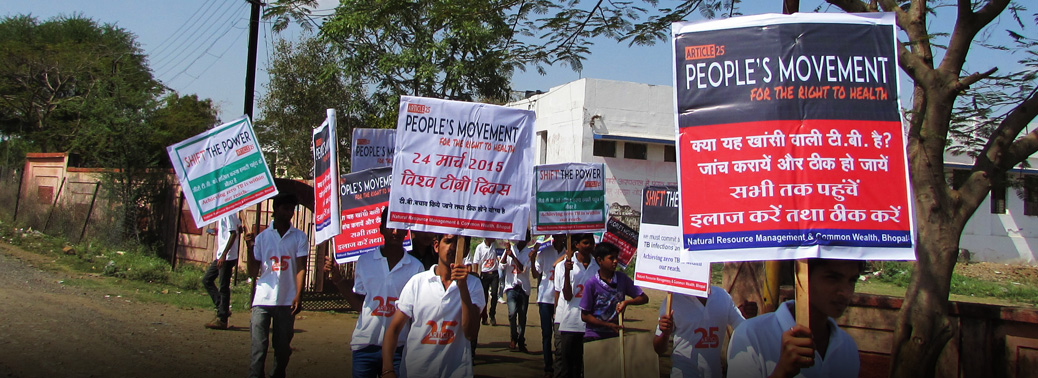
What’s in the Editorial?
- Decades of global neglet have resulted in TB becoming the leading cause of adult death in Global south – it kills nearly two million people a year.
- UN declaration of September 2018 titled “United to end Tuberculosis: An urgent global response to a global epidemic”. Where the heads of state and Government have “reaffirmed their commitment to end the global TB epidemic by 2030”.
Intrusive technologies:
- The Surveillance Technologies has caught the attention of policy makers, for example a plan in India is to implant microchips in people in order to track them and ensure they complete TB treatment.
Drawbacks in Monitoring with New Technologies:
- The DOTS strategy, (Directly observed Treatment) where a victim should report to a health authority has an inherent flaw.
- Because the prevailing treatment made up of toxic drug and painful injections that only works about half the time and often cause disability and Psychosis.
- We mount arsenal of cutting-edge technology to corral people into taking torturous, ineffective drugs even while we fail to use available drugs that work far better.
- Global tuberculosis Report 2018 says, “India accounted for 27% of the 10 million people who developed tuberculosis in 2017, the highest among the top 30 high TB burden countries in the world, according to WHO.
Way forward:
- An obsession with new gadgets In disease management – in the context of a disease that could be eliminated in a relatively in expensible way through human rights based interventions.
The Approach focus on:
- Creating health system that foster trust partnership and dignity this approach regards people with TB not as subjects to be controlled but as people to be partnered with. It assumes that people with TB have dignity, intelligence and empathy that motivate them to act in the best interests of themselves and their communities when empowered to do so.

- New guidelines by the WHO recommend use of bendaquilline and delamanid against drug resistant TB. Money should be spent on these drugs to make affordable rather spending on technology.
- Employ and deploy community health -care worker’s many TB policies envision community health – care worker’s but it reality front-line workers remain shockingly under used.
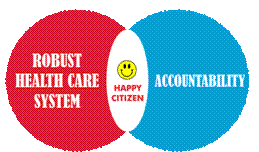
- The TB response can only be good it it has the good health – care system.
- Community – based structures such as “Clinic committees” ensures accountability while fostering partnership and trust between communities and their health – care system.
Conclusion
- People with TB do not need to be watched, they need to be heard, they want what anyone wants, health and dignity.The Shiny allure of surveillance technology threats to distract us from real work of TB response.
New Rules on Granting Citizenship
30, Oct 2018
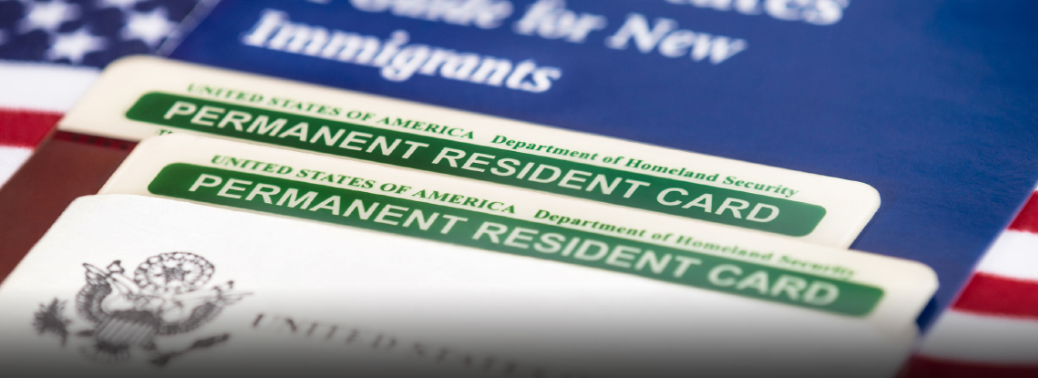
The government has authorised 16 collectors across seven states to register members of minority communities from Pakistan, Afghanistan and Bangladesh as Indian citizens.
About:
- The collectors of Raipur (Chhattisgarh), Ahmedabad, Gandhinagar and Kutch (Gujarat), Bhopal and Indore (Madhya Pradesh), Nagpur, Mumbai, Pune and Thane (Maharashtra), Jodhpur, Jaisalmer and Jaipur (Rajasthan), Lucknow (Uttar Pradesh) and West Delhi and South Delhi were empowered to extend citizenship rights to eligible people under the Citizenship Act-1955. The notification said that the home secretary of the state or union territory concerned has also been given the same power in case the applicant is not a resident of the mentioned districts, subjects to certain conditions.
- Hindus, Sikhs, Buddhists, Jains, Parsis and Christians from the three countries can avail of this facility. Under the new rules, notified on October 24, the migrants can apply online, and the verification reports or the security clearance reports of the applicants shall be made available to the Centre through an online portal.
The conditions are:
- The application for registration as a citizen of India or grant of certificate of naturalisation as citizen of India under the said rules should be made by the applicant online,
- The verification of the application would be done simultaneously by the collector or the secretary at the district or state levels, and the application and the reports thereon will be made accessible simultaneously to the central government through an online portal.
- In addition, the collector or secretary is allowed to conduct probes for ascertaining the applicant’s suitability. The instructions issued by the central government from time to time will also have to be strictly adhered to by the authorities concerned. Furnish a copy thereof to the Central government within seven days of registration.
Impact:
- The illegal immigrants who are to be granted the benefit of this legislation are to qualify for citizenship only on the basis of religion; a requirement that goes against one of the basic tenets of the Indian Constitution, secularism.
- The relaxation criteria for eligibility of illegal migrants to gain citizenship is unreasonable. With no explanation given as to the inclusion of this clause, it is prima facie unconstitutional, failing the test of reasonability contained in Article 14 (Right to Equality) of the Constitution and corrupting the “basic structure doctrine” (Kesavananda Bharati v State of Kerala1973).
- The most glaring discrepancy is that it categorically states that religious minorities from Afghanistan, Pakistan and Bangladesh will no longer be treated as illegal immigrants. It specifically names six religions, that is, Hindus, Sikhs, Buddhists, Jains, Parsis and Christians. Muslims and Jews have been deliberately kept out of the ambit. Even though some of these religions are also religious minorities in India, it is notable that four of these six religions fall under the ambit of Hindu personal law.
- As of today, the largest religious minority in India is that of Muslims it makes little sense to deliberately keep them out of the ambit of this bill.
Background:
- A parliamentary committee has been examining the Citizenship (Amendment) Bill, 2016, which proposes to grant citizenship to six persecuted minorities: Hindus, Jains, Sikhs, Parsis, Christians and Buddhists who came to India from Pakistan, Afghanistan and Bangladesh before 2014.
- As the Bill is pending, the Home Ministry gave powers to the Collectors in Chhattisgarh, Gujarat, Madhya Pradesh, Maharashtra, Rajasthan, Uttar Pradesh and Delhi to grant citizenship and naturalisation certificates to the migrants under Sections 5 and 6 of the Citizenship Act, 1955. No such power has been delegated to Assam officials.
- Official data put the number of such migrants in India at two lakhs. There are 400 Pakistani Hindu refugee settlements in Jodhpur, Jaisalmer, Bikaner and Jaipur. Hindu migrants from Bangladesh mostly live in West Bengal and north-eastern States.
Citizenship:
- The constitution of India gives ‘Single Citizenship” for all its citizens India. This implies that there is no disparate domicile for a state. Provisions for citizenship are mentioned in Article 5 to 11 in Part II of the Constitution. Individuals who are not Indian Citizens are considered Aliens.
- The Citizenship Act, 1955 also deals with the citizenship. However, neither of these legislations have defined citizenship clearly and only provide the prerequisites for a “natural” person to acquire Indian citizenship.
Indian Citizenship can be acquired by following four means:
- Citizenship by birth
- Citizenship by descent
- Citizenship by registration
- Citizenship by naturalization
Termination/Renunciation of citizenship:
Renunciation:
Renunciation is covered under Section 8 of the Citizenship Act 1955. If an adult makes a declaration of renunciation of Indian Citizenship, he would lose Indian Citizenship. Along with him, any minor child of that person also loses Indian Citizenship from the date of renunciation. The child has the right to resume Indian Citizenship when he turns eighteen.
Termination:
It is covered under Section 9 of Citizenship Act 1955. Any Indian Citizen who by naturalization or registration acquires the citizenship of another country shall cease to be a Citizen of India.
ME-TOO Campaign
29, Oct 2018
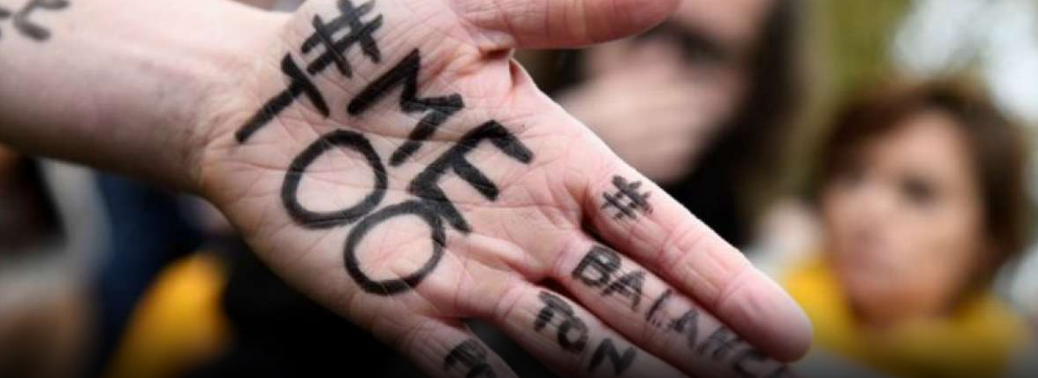
A campaign is under way in Odisha’s migration-prone districts to sensitise migrant women workers about sexual exploitation.
Background:
- Now, 300 women are undergoing an orientation programme in the State that seeks to empower them to raise their voices against any type of sexual exploitation and ensure the safety of accompanying vulnerable adolescent girls.
- The Western Odisha Migration Network, a civil society organisation, with support from organisations such as Aide et Action, Global Alliance Against Traffic in Women and Aaina are working on a database of women migrant worker leaders.
- They have also created a list of potential migrant women and adolescent girls. A register is being introduced in all these six panchayats to track migration of all age groups.
- Sexual exploitation of women migrant workers from Odisha is widely regarded to be pronounced. There have been a number of legal instruments to deal with sexual harassment in the informal sector.
- But their agonising and harrowing ordeal mostly remains under wraps. They often suffer silently with no one to back them or confront their tormenters. As there is no such complaint committee where grievances can be redressed.
- Important helpline numbers are being circulated among women workers for intimation in the event of an exigency. Women as dignified workers have the right to work in a non-exploitative environment outside the State and come back.
Supreme court allows states to fix own Two – hour cracker slots on Diwali
28, Oct 2018

Why in News?
- The Supreme Court permitted local authorities to stagger the two-hour window for bursting crackers on Diwali to cater to local considerations. The top court was acting on plea by the Tamil Nadu government which had claimed that Diwali was celebrated in the morning with crackers.
Court’s order:
- A bench comprising Justices AK Sikri and Ashok Bhushan permitted to make local variations but did not extend the time to burst crackers. On the other hand, the court rejected a slew of petitions seeking to have the ban on both production and sale of high-emission polluting crackers only for this year in the NCR. The court was however, ambivalent about the rest of India. The ban on making polluting crackers will possibly stay and only green crackers will be made from next year onwards.
- The bench, though given the short notice at which it had ordered the switch from more polluting to less polluting crackers, made a relaxation on sale of less polluting crackers among the existing ones that have been made so far. The Supreme Court on Tuesday modified its October 23 order restricting the time for bursting crackers on Deepavali and other religious festivals to two hours, between 8 p.m. and 10 p.m.
- Instead, it allowed Tamil Nadu and adjacent southern States to decide when people can burst crackers on festival days, provided the total time does not cross the two-hour mark. This means the authorities can stagger the time-slots and even make it an hour in the morning and another in the night.
Green rule for NCR:
- Further, the court said its direction that only green crackers can be manufactured and sold is only applicable to Delhi and the National Capital Region areas. On October 23, the court had held that only green or improved crackers would be used in religious festivals and other occasions, including weddings. The court had fixed a uniform slot for bursting crackers across the country. During Deepavali and other religious festivals, the slot is between 8 p.m. and 10 p.m.
National Police Memorial
27, Oct 2018
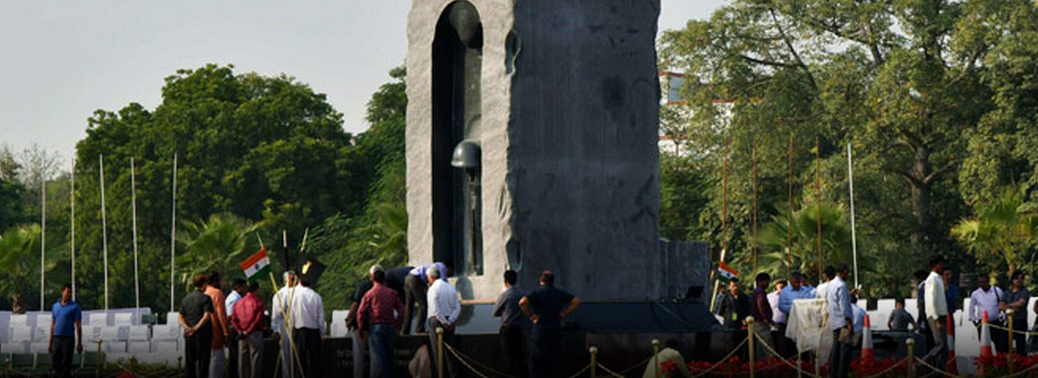
In news:
- PM to unveil National Police Memorial, 34,864 personnel have been killed in action Since 1947
- The memorial is in recognition of the sacrifice made by nearly 35,000 police personnel killed in action since Independence.
Background:
- A 30foot granite pillar, weighing around 238 tonnes, has been installed at Chanakyapuri in the heart of Lutyens’ Delhi to honour the policemen.
- The sculpture has been conceptualized by of the National Gallery of Modern Art.
- The stones to construct the pillar were sourced from Khammam in Telangana.
- Since 1947, as many as 34,864 police personnel have been martyred. Many of these brave lives were lost in the fight against terrorism in Jammu and Kashmir, Punjab, Assam, Nagaland, Manipur, Mizoram and Maoist affected regions of the Country. Further, a large number of police lives were lost in prevention of crime, combating mafia and criminal gangs, arrest of wanted criminals and narcotics smugglers, and dealing with various law and order duties.
- The memorial will also have a ‘Wall of Valour’, engraved with the names of police personnel, including those killed in the 1965 India-Pak war, the 26/11 Mumbai terror attacks of 2008 and the 2001 Parliament attack.
- The Prime Minister will also unveil the country’s first National police museum.
India – China Ink First – Ever Internal Security Cooperation Agreement
26, Oct 2018
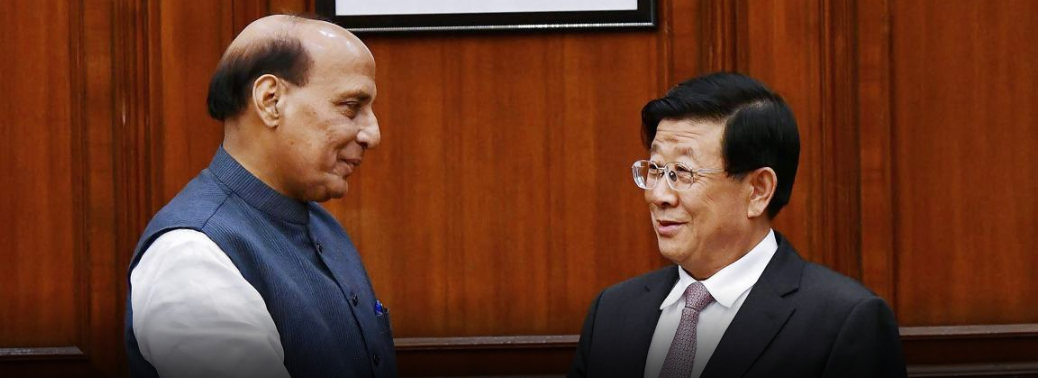
Why in News?
- India and China set the ball rolling on their first high-level meeting on bilateral security cooperation in New Delhi, more than a year after a tense standoff at Doklam between the militaries of the two countries.
About the security pact:
- The meeting, which was co-chaired by home minister Rajnath Singh and
- China’s state councillor and minister of public security Zhao Kezhi,
- discussed issues of bilateral counter-terrorism cooperation and welcomed
- increased cooperation in the area of security cooperation.
- Kezhi is visiting India from 21 to 25 October.
- Singh, however, raised the issue of China repeatedly blocking the proposal to designate Jaish-e-Mohammad (JeM) chief Maulana Masood Azhar as a global terrorist, according to senior home ministry officials.
- Since 2017, China, a veto-wielding permanent member of the Security Council, has blocked bids at the UN by the US, France and Britain to list Azhar as a global terrorist, citing lack of consensus among members of the UN Security Council.
- “An agreement on security cooperation between the ministry of home affairs of India and the ministry of public security of China was also signed by the two ministers. The agreement will strengthen and consolidate discussions and cooperation in the areas of counter-terrorism, organized crimes, drug control and other such relevant areas,” the home ministry said.
- This meeting comes in the wake of Prime Minister Narendra Modi and Chinese President Xi Jinping’s meeting in the Chinese city of Wuhan in April, where they decided on a number of steps to bring down tensions and normalize ties following the Doklam standoff.
- The Wuhan meeting was also followed by meetings between the two leaders on the side-lines of the Shanghai Cooperation Organisation in Qingdao in June and the BRICS leaders’ summit in Johannesburg in July.
- Other than terrorism, India is also keen to discuss the establishment of cooperation between the two countries to tackle transnational crimes and cybercrimes.
Self4 Society APP
25, Oct 2018

Professionals keen on doing volunteer work in their free time will be provided a platform by the government through an app, #Self4Society, developed by My Gov.
About:
- It was the result of the conversations between PM and several corporate leaders who had said their employees wanted to do volunteer work but did not have any guidance.
- A lot of companies run volunteering initiatives. This platform will help to create better synergies among so many initiatives and lead to a much better outcome of the efforts of professionals.
- Companies have observed that a spirit of service and volunteering improves employee satisfaction and reduces employee attrition. This app comes after discussions with companies from the information technology sector on these lines.
- The app will have incentives, gamification and intra- and inter-company competitions, and social networking.
- At first, this will be aimed at IT companies, with more joining in when it takes off. The volunteer time for the government’s flagship programmes such as Swachh Bharat is expected to increase.
Panel to study Issues raised by #METOOINDIA
24, Oct 2018
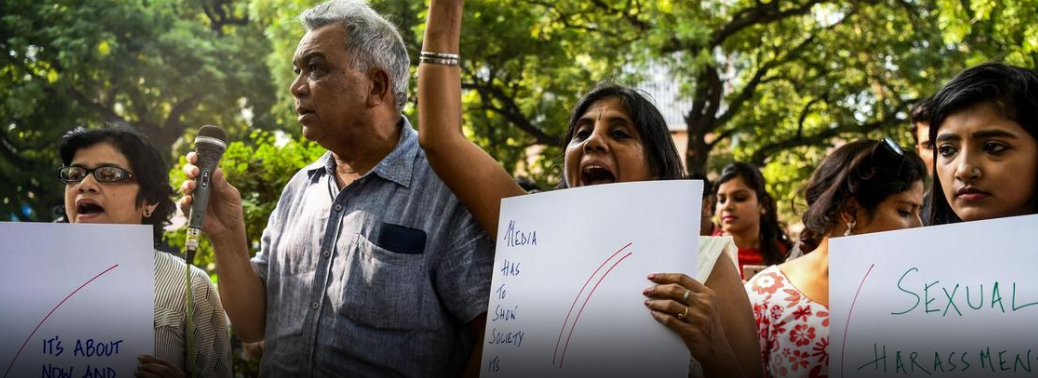
Why in News?
- The government will set up a committee of judges and lawyers to examine the existing legal and institutional framework to deal with complaints of sexual harassment at the workplace, Minister for Women and Child Development Menaka Gandhi.
#Me too Movement:
- The global outrage over the Harvey Weinstein incident in the West, where the noted Hollywood producer was accused of sexual harassment by over 70 women, the #MeToo movement has finally arrived in India, engulfing the whole media and entertainment industry.
- Several women have bravely come out with stories about harassment and sexual abuse at workplace at the hands of the powerful and higher-ups.
- The #MeToo movement, which began as a hashtag on Twitter in 2017 amid the Weinstein incident, has now become a global phenomenon.
- Created by Alyssa Milano, the movement soon found support with noted Hollywood actors Gwyneth Paltrow, Ashley Judd, Jennifer Lawrence, and Uma Thurman.
- The movement was chosen as the Person of the Year by the Time magazine. It also gave birth to the more militant Time’s Up campaign.
What are Vishaka guidelines and what do they say?
- The guidelines date back to 1997 when the Supreme Court laid them down while passing judgment in a public interest litigation filed by Vishaka and other women’s rights groups over the infamous Bhanwari Devi gangrape case. Bhanwari Devi, a social worker from Rajasthan had in 1992 prevented the marriage of a one-year-old girl, inviting wrath of the villagers. The gangrape was allegedly an act of revenge.
- Hearing the PIL, the apex court took note of the fact that the civil and penal laws of the time did not adequately provide for specific protection of women from sexual harassment at workplaces, and made it legally binding for employers to observe some guidelines to ensure prevention of sexual harassment of women.
- Prohibition, prevention, redress — these were the three key obligations that were imposed on institutions as the guidelines defined sexual harassment at workplaces. The Supreme Court said every organisation must set up an internal complaints committee or ICC to look into matters of sexual harassment of women at the workplace.
What is the law that currently governs sexual harassment at workplace?
- In 2013, the Sexual Harassment of Women at Workplace (Prevention, Prohibition and Redressal) Act was passed broadening the Vishaka guidelines. Defining sexual harassment in clearer terms, the new law laid down the procedures for complaint and inquiry, and the action to be taken.
- The Act mandates that every organisation with 10 or more employees set up an internal complaints committee of ICC at each office or branch. It defines various aspects of sexual harassment and protects all women working at, or even visiting, a workplace, in any capacity. The Act defines as “victim” any woman “of any age whether employed or not”, who alleges to have been “subjected to any act of sexual harassment”.
What constitutes sexual harassment at workplace?
- The Vishaka guidelines define as sexual harassment any unwelcome sexually determined behaviour (whether directly or by implication). These are:
- Physical contact and advances
- A demand or request for sexual favours
- Sexually coloured remarks
- Showing pornography
- Any other unwelcome physical, verbal or non-verbal conduct of sexual nature With the 2013 law broadening these guidelines, the Ministry of Women & Child Development has published a Handbook on Sexual Harassment of Women at Workplace Act. The handbook has detailed instances of unwelcome behaviour that constitutes sexual harassment at the workplace. These can be, broadly:
- Sexually suggestive remarks or innuendos; serious or repeated offensive remarks; inappropriate questions or remarks about a person’s sex life
- Display of sexist or offensive pictures, posters, MMS, SMS, WhatsApp, or emails
- Intimidation, threats, blackmail around sexual favours; also, threats, intimidation or retaliation against an employee who speaks up about these
- Unwelcome social invitations with sexual overtones, commonly seen as flirting
- Unwelcome sexual advances
- According to the handbook, “unwelcome behaviour” is experienced when the victim feels bad or powerless; it causes anger/sadness or negative self-esteem. It adds unwelcome behaviour is one which is “illegal, demeaning, invading, one-sided and power based”.
- The Act specifies five circumstances that amount to sexual harassment. These are:
- Implied or explicit promise of preferential treatment in her employment
- Implied or explicit threat of detrimental treatment
- Implied or explicit threat about her present or future employment status
- Interference with her work or creating an offensive or hostile work environment
- Humiliating treatment likely to affect her health or safety.
10 Odisha Villages Declare their Habitats
24, Oct 2018

Why in News?
- As a tribute to Mahatma Gandhi, 10 villages in seven panchayats in the Daringbadi block of Odisha’s Kandhamal district declared their habitats untouchability-free.
Background:
- In the Gramsabha meetings of the seven panchayats, resolutions relating to complete radication of untouchability by pallisabha (smaller village or hamlet councils) in these 10 villages were approved in accordance with the Article-17 of the Indian Constitution (Abolition of untouchability).
- The villages are: Sundardanda of Pliheri panchayat, Sripanka of Daringbadi panchayat, Ganadkamba and Sikaketi of Badabanga panchayat, Padanketa of Danekbadi panchayat, Sanagudumaha, Sikapata and Jidingmala of Greenbadi panchayat, Budanpipali of Bhramarbadi panchayat, and Penapusi of Sinagabali panchayat.
- This path-breaking decision could be taken up by these villages, inhabited mostly by tribals and Scheduled Castes, due to a month-long effort by social organisations Jagruti and Antaranga, of Kandhamal.
- The main indicators of a untouchability-free village are it must have people of different communities and castes; it should not have any physical form of untouchability; and all the public facilities such as drinking water source and community hall are free for everybody to use without discrimination.
- All religious places such as temples, churches, traditional places for worship should be open to all. All villagers can participate common functions such as marriage, festivals, celebrations and funerals.
Centre sets up GOM on Sexual Harassment
24, Oct 2018
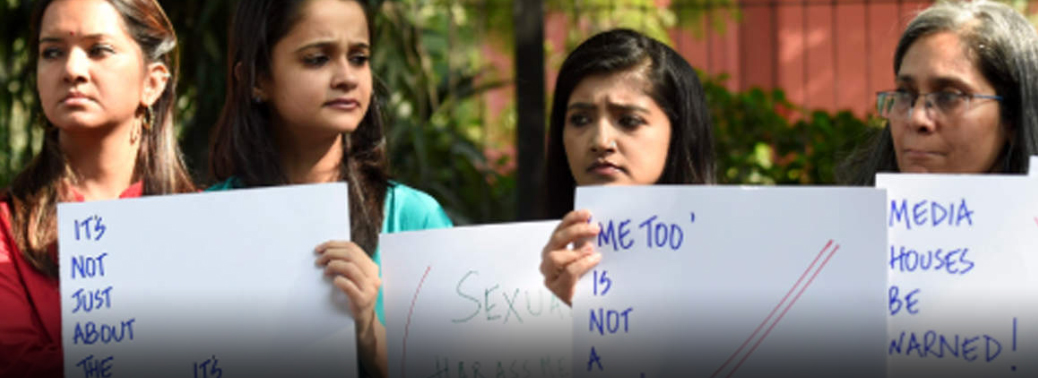
A Group of Ministers, headed by Home Minister Rajnath Singh, has been constituted by the government to strengthen the legal and institutional frameworks to deal with and prevent sexual harassment at workplace.
About:
- The GoM has been set up in the wake of #MeToo movement where several women have publicly named people who had harassed them at their workplace.
- The members of the GoM are Road Transport Minister Nitin Gadkari, Defence Minister Nirmala
- The GoM will, within 3 months of its constitution, examine the existing legal and institutional frameworks for dealing with matters of sexual harassment of women at workplace & provisions for the safety of women.
- The GoM has been constituted in view of the need for broader consultation on this issue, from the point of view of developing recommendations and laying down a comprehensive plan of action and for ensuring its timely implementation
- It will recommend action required for effective implementation of the existing provisions, as well as for strengthening the existing legal and institutional frameworks for addressing issues related to sexual harassment at workplace.
Tribunals for speedy disposal of Benami Cases
24, Oct 2018
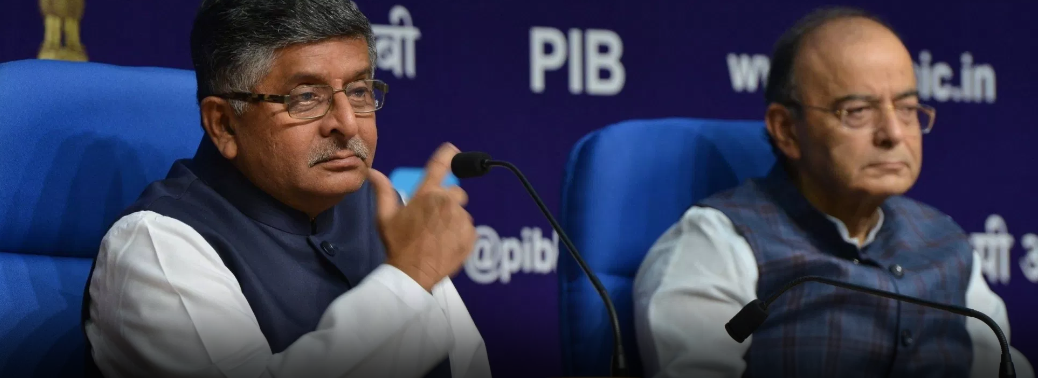
The Union Cabinet approved setting up of the Appellate Tribunal and Adjudicating Authority for speedy disposal of case’s related to benami transactions.
About:
- The government made an appointment of Adjudicating Authority, along with the three additional Benches and to establish the Appellate Tribunal under the PBPT Act.
- To provide the officers and employees to Adjudicating Authority, Benches of the Adjudicating Authority and Appellate Tribunal by diverting the existing posts at the same level/rank from the Income Tax Dept./Central Board of Direct Taxes (CBDT).
- The Adjudicating Authority and Appellate Tribunal shall sit in the National Capital Territory of Delhi (NCTD). Benches of Adjudicating Authority may sit in Kolkata, Mumbai and Chennai, and the necessary notification in this regard shall be issued after making consultation with the Chairperson of the proposed Adjudicating Authority.
- Earlier this month, the government had notified sessions courts in 34 States and Union Territories, which will act as special courts for trial of offences under the benami transaction law. The Adjudicating Authority and Appellate Tribunal will be based in Delhi.
Background:
- Benami transaction refers transactions made in a fictitious name, or the owner is not aware of the ownership of the property, or the person paying for the property is not traceable.
- With a view to curb the menace of black money, Parliament in August 2016 had passed the Benami Transactions (Prohibition) Act.
- The rules and all the provisions of the Benami Transactions (Prohibition) Act come into force on November 1, 2016.
- After coming into effect, the existing Benami Transactions (Prohibition) Act, 1988, was renamed as the Prohibition of Benami Property Transactions Act, 1988.
- The law prescribes that every trial should be conducted “as expeditiously as possible” and every endeavour should be made by the Special Court to conclude it within six months from the date of filing of the complaint.
Significance:
- The approval will result in effective and better administration of cases referred to the Adjudicating Authority and speedy disposal of appeals filed against.
- The order of the Adjudicating Authority before the Appellate Tribunal.
- Appointment of the Adjudicating Authority would provide first stage review of administrative action under the PBPT Act. Establishment of the proposed Appellate Tribunal would provide an appellate mechanism for the order passed by the Adjudicating Authority under the PBPT Act.
Door step delivery of service’s Scheme
05, Sep 2018

- The Delhi government, which launched its ambitious ‘doorstep delivery of services’ scheme to solve a part of the larger problem in essential service delivery mechanism.
About:
- Under the scheme, Delhiites can avail of up to 40 government services such as getting caste, income, domicile and marriage certificates, new water connections, driving licence, vehicle registration, scholarships and pensions.
- As per the scheme, the government will provide a total of 100 services at the doorstep of citizens. The services will be provided for an extra fee of Rs 50. A private company VFS Global has been onboarded to implement the scheme.
- It will made beneficiary to skipping long queues, and the unnecessary hassle, citizens can now dial 1076 to avail the services.
- After a request is placed, Mobile Sahayaks (Mobile helpers) will reach the applicant’s doorstep to get the necessary details and documents which are needed.
- The mobile sahayak will be equipped with all the necessary equipment for the process including biometric devices, camera and printer. Once the process is completed, the documents will be mailed to the citizen’s house. Hence, citizens will no longer have to rush to cyber cafes or stand in long queues just to get their documents uploaded and recorded.
Background:
- The doorstep delivery of services was in the pipeline for a long time and became a bone of contention between the Delhi Government and Lieutenant Governor Anil Baijal on the ground that the scheme would lead to the additional expenditure of the government.
- However, in January 2018, governor cleared a revised proposal of the scheme, paving the way for the government to provide home delivery facilities.
Significance:
- With this service, the government has made it easier for people to apply for a service.
- It will increase number of people on getting government services as it will create awareness in digital mode. As on the launch day itself, the government received over 25,000 calls from people out of which it could answer only 1,286.
- It will bring new sections of society under the governance sphere including those who are most likely to remain excluded – namely the poor, the illiterate, the differently abled, the indigenous people, the migrants and displaced people. This has led to the fostering of a sense of ownership and the building of social capital, which in turn, constitutes basis for local revitalization. Act as basis of Equity and inclusiveness
- Improve the accessibility, cutting down costs, reducing corruption and extending help and increased access to un-served groups within a reasonable timeframe.
- Chance of Provide new governance services and products based on feedback. Speeding up the flow of information and knowledge between government and citizens and transforming the way in which governments and citizens interact.
- Facilitates more accessible government services, allows greater public access to information, and makes government more accountable to citizens.
- It is a part of the ongoing reform and transformation of government enabling participatory governance and partnerships to improve efficiency and effectiveness. Plays a critical role in sustainable human development and poverty eradication.
- It has been called the bottom-up model where services reach a citizen’s doorstep, thus providing last mile connectivity through a single point and location for various services— education, health, agricultural, banking, utility etc. citizens in a convenient manner.
VV PAT for 2019 Election
04, Sep 2018

- The Election Commission said that the supply of VVPATs for use in the Lok Sabha polls in 2019 was on track and that it was committed to 100% deployment of machines at all polling stations in the future.
About:
- The Commission has placed an order of 17.45 lakh VVPATs to Bharat Electronics Limited and Electronics Corporation of India Limited for use in the coming Lok Sabha elections.
- The EC has enhanced the requirement of additional VVPATs from 125% to 135% considering the trend of failure rate of machines in the recent elections. Besides adopting the hardware improvement for the machines in view of a large number of paper trail unit’s failure in Kairana and Bhadara-Gondiya by-polls earlier this year.
- The Commission has adopted the hardware improvement recommended by the TEC to prevent auto shutdown of VVPATs due to excessive light
- EC has been “consistently and periodically” reviewing the status of production and supply of VVPAT units with the top brass of BEL and ECIL.
- In the last 20 years, the EC has conducted 113 state assembly elections and three Lok Sabha elections using EVMs. Since June 2017, VVPAT machines have also been used along with EVMs in general as well as by-elections.
Background:
- Voter verifiable paper audit trail (VVPAT) is a method of providing feedback to voters using a ballot less voting system.
- A VVPAT is intended as an independent verification system for voting machines designed to allow voters to verify that their vote was cast correctly, to detect possible election fraud or malfunction, and to provide a means to audit the stored electronic results.
- It contains the name of the candidate (for whom vote has been cast) and symbol of the party/individual candidate. A paper VVPAT is readable by the human eye and voters can directly interpret their vote as it serve as an additional barrier to changing or destroying votes.
- It’s intent is to have fullest transparency in the system and to restore the confidence of the voters it is necessary to set up EVMs with VVPAT system because vote is nothing but an act of expression which has immense importance in democratic system.
- VVPATs with EVMs were used for first time in a bye-election from 51-Noksen (ST) Assembly Constituency of Nagaland. Goa is the first state to haven VVPAT system for the Assembly elections in the entire state.
Ordinance to replace MCI
04, Sep 2018

- An ordinance was issued to allow a committee of eminent professionals run the scamtainted Medical Council of India till a bill which seeks to replace the body with a new commission is passed by Parliament.
About:
- The Cabinet cleared the ordinance and the President has given his assent. Now the committee of most eminent doctors in the country will run the MCI.
- A Bill pending in Parliament seeks to replace the MCI with the National Medical Commission.
- The Bill was taken up for consideration and was referred to Department related Parliamentary Standing Committee on Health & Family Welfare for examination. The Parliamentary Standing Committee presented its 109th Report on the Bill to the House. The Ministry after examining the recommendations obtained approval of the Cabinet for moving official amendments. Thereafter, the Bill is pending in the Lok Sabha.
- Amid allegations of corruption against MCI office bearers and probes into opaque accreditation to medical colleges, the Supreme Court had, in May 2016, directed the Centre to set up an oversight committee with the authority to oversee all statutory functions of the MCI till a new legislation is enacted. Several MCI members have been accused of accepting bribes to fast-track accreditation.
- When the SC-appointed panel could not function and the bill to replace MCI awaiting parliamentary nod, certain “immediate steps” were needed.
- The Bill pending in Parliament provides for simplification of procedures and is expected to spur rapid growth in the number of undergraduate and post-graduate seats in the country besides enhancing the governance and quality of medical education.
- In 2017, another oversight committee was set up with the approval of the top court after the expiry of the one-year term of the first panel.
- The BoG will run the MCI till the time a Bill, which seeks to replace the body with a new commission, is passed by Parliament.
- The Board of Governors includes NITI Aayog member V K Paul, AIIMS, Delhi director Randeep Guleria, PGIMER, Chandigarh director Jagat Ram, NIMHANS, Bangalore director B N Gangadhar and Nikhil Tandon, professor, AIIMS Department of Endocrinology and Metabolism.
- All the BoG members are eminently qualified and apolitical. Further, five of the seven members were the members of the Supreme Court appointed Oversight Committee. It is expected that the BoG will bring about urgent and the much-required reforms in the field of medical education and promote access to quality healthcare for all the people of India.
- It is aimed at bringing complete transparency in the medical education system. This will strengthen medical education in the country.
- It is expected that the BoG will bring about urgent and much required reforms in the field of medical education.
The National Medical Commission Bill:
- The National Medical Commission Bill, 2017 was introduced by the Minister of Health and Family Welfare.
- The Bill seeks to repeal the Indian Medical Council Act, 1956 and provide for a medical education system which ensures
- Availability of adequate and high-quality medical professionals.
- Adoption of the latest medical research by medical professionals.
- Periodic assessment of medical institutions.
- An effective grievance redressal mechanism.
Constitution of the National Medical Commission:
- The Bill sets up the National Medical Commission (NMC). Within three years of the passage of the Bill, state governments will establish State Medical Councils at the state level.
- The NMC will consist of 25 members, appointed by the central government.
- Members of the NMC will include: (i) the Chairperson, (ii) the President of the Under Graduate Medical Education Board, (iii) the President of the Post-Graduate Medical Education Board, (iv) the Director General of Health Services, Directorate General of Health Services, (v) the Director General, Indian Council of Medical Research, and (vi) five members (part-time) to be elected by the registered medical practitioners from amongst themselves from the prescribed regional constituencies under the Bill. Functions of the National
Medical Commission:
- Framing policies for regulating medical institutions and medical professionals.
- Assessing the requirements of healthcare related human resources and infrastructure.
- Ensuring compliance by the State Medical Councils of the regulations made under the Bill.
- Framing guidelines for determination of fees in the private medical institutions and deemed universities which are regulated as per the Bill.
Medical Advisory Council:
- Under the Bill, the central government will constitute a Medical Advisory Council. The Council will be the primary platform through which the states/union territories can put forth their views and concerns before the NMC.
Entrance Examinations:
- There will be a uniform National Eligibility-cum-Entrance Test for admission to undergraduate medical education in all medical institutions regulated by the Bill.
- The NMC will specify the manner of conducting common counselling for admission in all such medical institutions.
Telecom Commission approves forming
04, Sep 2018

Why in News?
- The Telecom Commission today said a new National Trust Centre will be created for certifying devices and applications for machine-to-machine communication, a new-age technology that is at the heart of concepts like smart homes.
Background:
- It has also decided to form an apex body for this technology segment and its members will include representatives from other regulatory authorities like National Highways Authority of India and Central Electricity Regulatory Commission.
- Machine-to-Machine (M2M) communications forms the basis for automated information exchange between machines. It can impact various industries like smart cities and grids, transportation systems and healthcare, among others.
- According to some estimates, the number of connected devices in India is projected to touch about 275 million by 2020.
- The Telecom Engineering Centre (TEC) and Standardisation Testing and Quality Certification (STQC) will spell out the detailed security parameters.
- TRAI’s recommendations on M2M have been accepted, and all access providers holding any kind of licence shall be allowed to provide M2M connectivity, but they will have to register as M2M service providers.
- The process of registration will be kept simple and those operating on unlicensed spectrum in a smaller service area will not have to procure a licence. For example, of a health clinic that has connected machines communicating with each other.
- Aiming to grow the M2M segment, the government has also decided against levying performance bank guarantee or financial bank guarantees from players providing M2M services in limited geographies.
- However, those operating in unlicensed spectrum but using wide area networks will come under the category of licensing and there will be a new authorisation called UL – Universal Licence M2M, which in turn.
- For the larger players, the entry fee and bank guarantee have been kept at a nominal rate. The Telecom Commission has also decided that no spectrum band will be allocated exclusively for these services.
- On cloud, the Telecom Commission favoured a “light touch regulatory framework” and will ask cloud service providers to form industry associations that will be registered.
- DoT can issue directions to the industry bodies, it can withdraw or cancel registration of industry body if it finds breaches. A cloud service advisory group comprising all stakeholders will be constituted.
- The Telecom Commission — which is the highest decision-making body of the Telecom Department — also took note of reports that suggest that cloud can create more than one million jobs.
- Also, the Telecom Commission has decided that BSNL would be asked to take up projects (to connect about 44,000-gram panchayats) under Bharat Net and be given a five per cent incentive if the state-run telecom operator meets the December deadline.
CARA rules on Adoption for live-in
04, Sep 2018

- Individuals in a live-in relationship will be able to adopt children from and within India after the country’s nodal adoption agency decided to withdraw a circular issued earlier this year disallowing them from doing so.
Background:
- The Child Adoption Regulatory Authority (CARA), in a circular issued on May 31, barred applicants in a live-in relationship from adopting a child on the ground that “the Authority would like the children to be placed only with a stable family and individuals in a live-in relationship cannot be considered as stable family.”
- The revised guidelines have been framed keeping in mind the issues and challenges faced by CARA, Adoption Agencies and Prospective Adoptive Parents (PAPs) and are intended to provide for more effective regulation for adoption of orphan, abandoned and surrendered children and would bring more transparency and efficiency in the adoption system,
- The eligibility criteria under Adoption Regulations, 2017, permit single women to adopt a child of any gender, while single men can adopt only boys. When a married couple seeks to adopt a child, it needs to give its consent for adoption and should be stable marriage for at least two years. Applicants have to be physically, mentally and financially stable to raise a child.
- In India, a live-in relationship is not considered a stable family and we need to ensure the best interest of the child is served.
- The Supreme Court has on several occasions said that a live-in relationship is neither a crime or a sin.
- The Courts have taken the view that where a man and a woman live together as husband and wife for a long term, the law will presume that they were legally married unless proved contrary.
- Recently, the Supreme Court in S. Khushboo vs. Kanniammal case had said that adult couples have the right to live together even if they were not married which imply they have children either by biological or by adopting as normal married couple.
- It will benefit both domestic and international applicants who are live in interested to make adoption.
Adoption:
- Is a process to take voluntarily (a child of other parents) as one’s own child especially in compliance with formal legal procedures”.
- Adoption can be legal as well as illegal. Under Indian law adoption is legal coalition between the party willing for adoption and a child, it forms the subject matter of personal law where Hindu, Buddhist, Jaina or Sikh by religion can make a legal adoption.
- In India there is no separate adoption laws for Muslims, Christians and Parsis, so they have to approach court under the Guardians and Wards Act, 1890 for legal adoption.
- In India, an Indian whether he is married or single, Non-Resident Indian (NRI), or a person belonging to any nationality (foreigner) may adopt a child.
Intercountry Adoption:
- In India, there is no separate act that governs adoption by foreign citizens or NRIs but it is covered under Guidelines Governing Adoption of Children, 2015. Under these guidelines misuse or illegal use of the children through adoption is prevented. As per the Supreme Court Guidelines for intercountry adoption a foreign parent can adopt an Indian child before he/she completes the age of 3 years.
- In the absence of any concrete Act on intercountry adoption, the provisions of Guardians and Wards Act, 1890 will be followed for adoption. In case of adoption of abandoned, abused and surrendered children all intercountry adoptions shall be done only as per the provisions the juvenile justice (care and protection of children) act, 2015 and the adoption regulations framed by the Authority.
Eligible:
- Under THE HINDU ADOPTIONS AND MAINTENANCE ACT, 1956 following category of people can make adoptions:
- Any male Hindu (including Buddhist, Jain or Sikh by religion) who is of sound mind, not a minor and is eligible to adopt a son or a daughter. But if such male has living spouse at a time of adoption then he can adopt a child only with a consent of his wife (unless she has been declared incompetent to give her consent by the court).
- Any female Hindu (including Buddhist, Jaina or Sikh by religion) who is not married, or if married, whose husband is not alive or her marriage has been dissolved or her husband has been declared incompetent by the court has the capacity to take a son or daughter in adoption.
- In case of adoption of a son by any Hindu male or female, there should not be any living son in the succeeding three generation of the party (whether by legitimate blood relationship or by adoption) at the time of adoption.
- In case of adoption of a daughter by any Hindu male or female, they should not have any daughter or son’s daughter at the time of adoption.
- Where there is an adoption of a daughter by a male then the adoptive father should be at least twenty-one years older than the child.
- Where there is an adoption of a son by a female than the adoptive mother should be at least twenty-one years older than the child.
As per the Hindu law following child may be adopted namely
- The child can either be a girl or a boy if he/she is a Hindu.
- He/ She has not been adopted before.
- The age of the child is below 15 years.
- The child should not be married.
Procedure:
- Under the Hindu Adoption and Maintenance Act, 1956 the party willing for adoption can make application to Child Welfare Agency. Registration can be done either an Adoption Coordinating Agency (ACA) found in each state’s capital city, or an agency certified by the Central Adoption Resource Authority (CARA) in New Delhi
- After this, the agency conducts a preliminary interview with the adopting couple in order to understand their intention and motivation behind adoption.
- Once the party decides which child are they going to adopt they file the petition at the court of apt jurisdiction, where court hearing takes place regarding adoption (the court is required to dispose the adoption case within 2 months).
- Once the Court issues the decree, the adoption is finalized.
Central adoption resource Authority:
- Central Adoption Resource Authority (CARA) is a statutory body of Ministry of Women & Child Development, Government of India.
- It functions as the nodal body for adoption of Indian children and is mandated to monitor and regulate in-country and inter-country adoptions
- CARA is designated as the Central Authority to deal with inter-country adoptions in accordance with the provisions of the Hague Convention on Inter-country Adoption, 1993, ratified by Government of India in 2003.
- CARA primarily deals with adoption of orphan, abandoned and surrendered children through its associated /recognised adoption agencies.
Pravasi Bhartiya Diva
04, Sep 2018

- Government links Pravasi Divas with Kumbha mela and republic day
About:
- The 15th Pravasi Bhartiya Divas will be held in Varanasi in January next year and the Indian diaspora attending the event will also get an opportunity to participate in the ‘Kumbha Snan’ and attend the Republic Day parade.
- It is on the request of diaspora who were expressed interest in attending the Kumbha Mela in Allahabad and Republic Day celebrations in New Delhi, usually Pravasi Bhartiya Divas (PBD) is held on January 9 every year.
- The government is touting the event as the first of its kind as the participants will witness the cultural heritage of Varanasi and of Allahabad during the Kumbha Mela.
- The event is jointly being organised by the Uttar Pradesh government and the Ministry of External Affairs.
- The theme of PBD 2019 is the “Role of Indian Diaspora in building a New India”.
- Mauritian Prime Minister Pravind Jugnauth will be chief guest for the January 22 main event while Norway leader Himanshu Gulati and New Zealand MP Charanjit Singh Bakshi will be special guests at the PBD event to be held on January 21.
Pravasi Bharatiya Divas:
- It is observed on 9 January by the India to mark the contribution of the overseas Indian community towards the development of India. The day commemorates the return of Mahatma Gandhi from South Africa to Mumbai on 9 January 1915.
- The decision to celebrate Pravasi Bharatiya Divas was taken in accordance with recommendations of the High Level Committee (HLC) on the Indian Diaspora set up by government of India under the chairmanship of L. M. Singhvi
- Established in 2000, it is sponsored by the Ministry of External Affairs of the Government of India and the Federation of Indian Chambers of Commerce and Industry (FICCI), the Confederation of Indian Industries and the Ministry of Development of North Eastern Region.
- A celebratory event is held on 7–9 January every other year in an Indian city: a forum for issues concerning the Indian Diaspora is organised and the Pravasi Bharatiya Samman Awards are given.
- The 14th Pravasi Bharatiya Divas, which was supposed to be held during 7–9 January 2016 at New Delhi, was cancelled under the MEA’s decision to make the event biennial.
- The 14th Pravasi Bharatiya Divas was held during 7–9 January 2017 at Bengaluru, Karnataka.
- The Regional Pravasi Bharatiya Divas 2018 was held during 6–7 January 2018 at Marina Bay Sands, Singapore.
- The Pravasi Bharatiya Samman Award (PBSA) is the highest honour conferred on overseas Indians.
- PBSA is conferred by the Hon’ble President of India as a part of the Pravasi Bharatiya Divas Conventions organized annually since 2003 on Non-Resident Indians, Persons of Indian Origin or an organization or institution established and run by the Non-Resident Indians or Persons of Indian Origin in recognition of their outstanding achievements both in India and abroad.
Food safety audit
04, Sep 2018

- In order to strengthen the food safety surveillance system, the Food Safety and Standards Authority of India (FSSAI) has envisaged audit of food business operators through thirdparty private agencies.
About:
- FSSAI said that the audit through “recognised” agencies in addition to existing enforcement and inspection procedure is critical to ensuring safety aspect of an extensive network of food businesses in India.
- FSSAI has already notified the Food Safety and Standards (Food Safety Auditing) Regulation 2018. Which outline procedure for recognition of auditing agencies, terms and conditions for recognition, duties of auditors, audit reporting and audit monitoring systems among others.
- FSSAI expects that this regulation will strengthen the food safety surveillance system in the country by encouraging self-compliance. It empowers the FSSAI to recognise an organisation or an agency for carrying out food safety audit and checking compliance with the food safety management systems. • Following this FSSAI has provisionally recognised 22 audit agencies in accordance with the draft Food Safety and Standard (Food Safety Auditing) Regulation, 2017.
- These third-party agencies will work in close coordination with the government’s food safety apparatus.
- Third-party safety audits will be made mandatory for certain food categories based on risk classification.
- Based on their audit reports, the frequency of inspections by regulatory officials will be decreased or increased, as the case may be. Satisfactory audits will lead to less frequent regulatory inspections, except regulatory sampling by central or state licensing authorities.
- These agencies will also be used to rate catering establishments under FSSAI’s Hygiene Rating Scheme and Responsible Place to Eat schemes under Project ‘Serve Safe’.
- These agencies can also be used by FSSAI for audits on central institutions/Ministries like the railways and defence.
FSSAI:
- Food Safety and Standards Authority of India (FSSAI) is an autonomous body established under the Ministry of Health & Family Welfare, Government of India.
- The FSSAI has been established under the Food Safety and Standards Act, 2006 which is a consolidating statute related to food safety and regulation in India.
- FSSAI is responsible for protecting and promoting public health through the regulation and supervision of food safety.
Mandate:
- Framing of regulations to lay down food safety standards
- Laying down guidelines for accreditation of laboratories for food testing
- Providing scientific advice and technical support to the Central Government
- Contributing to the development of international technical standards in food
- Collecting and collating data regarding food consumption, contamination, emerging risks etc. 6. Disseminating information and promoting awareness about food safety and nutrition in India. P
Panel for e-com
04, Sep 2018

- The central government has reportedly set up a panel comprising secretaries from various departments and ministries to look into the matter on issues in e-commerce.
Background:
- The group will be chaired by the secretary in the department of industrial policy and promotion (DIPP). The other members of the group include secretaries of the ministry of electronics and information technology and department of commerce. Representatives of Niti Aayog and department of economic affairs are also members of the group.
- As Commerce and Industry minister last month received few concerns regarding the draft ecommerce policy following which he directed officials to conduct another round of consultation with stakeholders to address them.
Draft E-Commerce Policy:
- Recently India’s first draft e-commerce policy was released, which effectively seeks to regulate all aspects of online retail and recommends strict restrictions, including curbs on discounts, may impact not just e-commerce companies, but also countless sellers working on those platforms.
Highlights:
- The draft presented by the Indian Govt. on e-commerce portals mentions some new regulations for the digital marketplaces, which have proved to be the main medium of online shopping. For instance, e-commerce marketplaces would be prohibited from influencing the prices of goods and services, and most probably
- To support ‘Make in India’, the draft policy limits inventory based B2C e-commerce in India for products made outside India. This means that domestically produced goods can be stored in inventory, but imported goods cannot wherein local manufacturers and farmers are given more preference.
- A separate wing within Directorate of Enforcement can be allocated for handling e-commerce complaints and issues from customers. We have already reported that e-commerce complaints have increased by 1500%.
- All active e-commerce portals in India will have to register with e-Central Consumer Protection Authority (CCPA), which will be soon established to monitor the industry.
- More control and more power to the founders of the eCommerce business, rather than the investors. As per some analysts, this has been done because most of the biggest e-commerce portals in India are funded by foreign investors.
- An Indian e-commerce portal as the one where: FDI doesn’t exceed more than 49%; the founders are Indians; the platform is controlled by an Indian management.
- On the matter of discounts, the draft policy suggests a ‘sunset period’ for every discount and offer, beyond which no e-commerce portal can be allowed to provide discounts.
- The Draft Policy suggests creating infrastructure for data centres in India and links this to a sunset provision of two years at the end of which it will be mandatory to hold all data generated by users in India within India.
Criticism:
- The recent draft policy, seems to be a major hurdle considering that it plans to crackdown on deep discounts offered by Walmart-owned Flipkart and Amazon the two biggest online e-commerce websites in India.
- The recommendations that have been floated now should have been implemented years ago – when Flipkart and Amazon were new players in the market. Updating the norms at the behest of physical retail lobbies could prove to be a major deterrent to the entire e-commerce market in India.
- There is also a view that cracking down on pricing strategies of foreign e-commerce firms can create a significant disruption in current operations.
- The government may be encouraging Indian company at the cost of upsetting foreign investors who have invested billions in the Indian e-commerce sector.
- It is not clear whether the single regulator proposed is the CCPA or a separate e-commerce regulator which the policy envisages will oversee the entire segment of “e-commerce”, including FDI, consumer protection, payment mechanisms on e-commerce platforms, etc.
- Incentivising the development of large data centres is a welcome move; but the policy rationale for storage of all Indian data in India is not clear, since storage in India does not automatically ensure security of the data.
Search Committee on Lok pal
03, Sep 2018

- The Centre on Thursday constituted an eight-member search committee to be headed by former Supreme Court judge, Justice Ranjana Prakash Desai, to recommend the chairperson and members of the anti-corruption ombudsman Lokpal.
About
- The search committee was appointed by the selection committee which comprises Prime Minister Narendra Modi, Chief Justice of India Dipak Misra, Lok Sabha Speaker Sumitra Mahajan, leader of the largest opposition party, which in this case was Congress’s Mallikarjun Kharge, and eminent jurist Mukul Rohatgi.
- The search committee consists of former State Bank of India chief Arundhati Bhattacharya, Prasar Bharati chairperson A. Surya Prakash and former Indian Space Research Organisation head A.S. Kiran Kumar.
- The step comes after the Supreme Court’s order to appoint Lokpal at the earliest. The search committee is a major step towards setting up of the Lok pal.
- The decision to constitute the search committee comes four years after the Lokpal and Lokayuktas Act, which envisages establishment of anti-graft body Lokpal at the Centre and Lokayuktas in states to look into cases of corruption against certain categories of public servants, was passed in 2013.
- As per the Lokpal and Lokayukta Act, only the leader of the opposition (LoP) in the Lok Sabha is a member of the selection committee and since, Kharge does not have that status, he is not a part of the panel. A party should have at least 55 seats or 10 per cent of the strength of the Lok Sabha for its leader to get the LoP status.
- The Lokpal selection committee headed by the prime minister has as its members the Lok Sabha speaker, leader of the opposition in the lower house, the chief justice of India or a judge of the apex court nominated by him, and an eminent jurist who could be nominated by the president or any other member.
Background:
- The Lokpal will consist of a chairperson and four judicial and four non-judicial members.
- According to the Lokpal Act, the chairperson and members shall be appointed by the President on the basis of recommendations of the selection committee comprising the Prime Minister, the Speaker of the Lok Sabha, the Leader of Opposition in the House, the Chief Justice of India and an eminent jurist.
- For selecting the chairperson and the members, the selection committee shall constitute a search panel of at least eight persons.
- Under the Lokpal Act of 2013, the DoPT is supposed to put together a list of candidates interested to be chairperson or members of the Lokpal .
- This list would then go to the proposed eight-member search committee, which would shortlist names and place them before the selection panel headed by the Prime Minister. The selection panel may or may not pick names suggested by the search committee.
Future in Gold, Silver
02, Sep 2018

- BSE Ltd. has received the Securities and Exchange Board of India’s (Sebi) approval to launch delivery-based futures contract in gold for 1 kg and silver for 30 kg.
About:
- Trading of these contracts will be launched on 1 October, and contract start day will be sixth day of contract launch month and last trading day will be fifth day of contract expiry month.
- The commodity trading session will be from Monday to Friday 10.00am to 11.30/11:55pm. Delivery centre of gold and silver futures contract will be exchange-designated vaults at Ahmedabad initially and then expanding it pan India in the second phase.
Futures:
- The futures markets are really designed to be a hedging vehicle for those looking to try and mitigate price risk.
- Futures contracts were first traded in the mid-19th century with the establishment of a central grain market. This central grain market gave farmers the ability to sell their grain for immediate delivery in what is known as the spot market, or they had the option to sell their grain for a certain price for a future delivery date.
- A futures contract is a legal agreement between the buyer and the seller for the purchase or sale of an asset on a specific date during a specific month.
- The price of a futures contract is not fixed, however, and is constantly in a state of discovery through an auction-like process on exchange trading floors and/or electronic trading platforms. In the case of gold or silver, a futures contract outlines a specific delivery time and place for “good delivery” gold or silver bullion.
- The use of futures contracts generally falls into two broad categories: hedging and speculative purposes.
- A hedger uses futures contracts to try and mitigate their price risk in an asset, while a speculator accepts this price risk in order to try and profit from favourable movement in prices. The market needs participation from both hedgers and speculators to function properly.
- By doing this seller has insulated himself from a large drop in the price of, that could adversely affect his potential income.
SC Decriminalises Homosexuality
02, Sep 2018

- Constitution Bench declares the 156-year-old “tyranny” of Section 377 as irrational, indefensible and manifestly arbitrary.
Background:
- The Supreme Court decriminalised homosexuality with a prayer to the LGBTQ.
- (Lesbian, gay, bisexual, transgender, and queer) community to forgive history for their “brutal” suppression.
- A five-judge Constitution Bench, unanimously held that criminalisation of private consensual sexual conduct between adults of the same sex under Section 377 of the Indian Penal Code is clearly unconstitutional.
- The court, however, held that Section 377 will apply to “unnatural” sexual acts like bestiality. Sexual acts without consent continues to be a crime under the Section.
- Section 377 punished homosexuality with a 10-year imprisonment.
- This case was about people wanting to live with dignity. Citizens cannot be pushed into obscurity by a colonial law.
- Section 377 discriminates against a minority solely for their sexual orientation. It violates the right of the LGBTIQ community to “equal citizenship and equal protection of laws”. The court held that bodily autonomy is individualistic. Choice of partner is part of the fundamental right to privacy.
History of LGBT Judgements:
- In 1830 Thomas Macaulay, the main drafter of the penal code, called homosexual sex “odious” and “revolting”.
- In 1884, a court in north India ruling on the prosecution of a hijra (a member of South Asia’s traditional transgender community), commented that a physical examination of the accused revealed she “had the marks of a habitual catamite” and commended the police’s desire to “check these disgusting practices”.
- In 1934, a judge in Sindh (now Pakistan) described a man who had consensual sex with another man as “a despicable specimen of humanity”.
- In 2003, the government of India said that decriminalising homosexuality would “open the floodgates of delinquent behaviour”.
- And in 2013 a supreme court ruling on an earlier challenge to section 377 (overruled by today’s judgment) held that LGBT people constituted a “minuscule minority” who bore only “so-called rights”.
2013 Judgement:
- Legal experts said this was a much-needed self-correction of a past judicial wrong committed on the LGBTQ community. The verdict would become the foundation for members of the community to seek individual rights like.
- The 2013 judgment upheld Section 377 and set aside the reprieve won by the LGBTQ community through the Delhi High Court verdict of 2009, which decriminalised homosexuality. It had cast the community back into the shadows as “convicted felons”
SC/ST Quota in job promotions
01, Sep 2018

The Supreme Court ruled that states don’t have to collect quantifiable data on ‘backwardness’ for SC/ST quota in job promotions.
About:
- The apex court clarified that there was no need to revisit its 12-year-old verdict in the M Nagaraj case which had said that the states were bound to provide quantifiable data on the backwardness of SC/ST, the facts about their inadequate representation in government jobs and the overall administrative efficiency, before providing them quota in promotions.
- The Supreme Court had paved the way for grant of quota for promotions in the government jobs to SCs and STs, holding that the states were not required to “collect quantifiable data” reflecting the backwardness among these communities.
- The apex court also turned down the Centre’s plea that overall population of SC/ST be considered for granting quota for them.
- The verdict cleared a major hurdle that was cited by the central government in granting reservation in promotion to its employees belonging to the Scheduled Castes (SC) and Scheduled Tribes (ST).
- Judgment was also critical because it upheld the Nagaraj ruling that, while promoting SCs and STs.
- Court held that untouchability, not backwardness is the basis for ST/SC quota in job promotions. As SC and ST communities have been facing caste-based discrimination for long and the stigma of caste is attached to them despite the fact that some of them have come up.
Background:
- The apex court delivered the verdict on a batch of petitions seeking that a seven-judge bench reconsiders the court’s 2006 judgement which had put conditions for granting quota benefits in job promotions for SC/ST employees.
- The bench headed by Chief Justice Dipak Misra said the conclusion arrived at in the Nagaraj case that the states have to collect quantifiable data showing backwardness of SCs and STs was “contrary” to the nine-judge bench judgement in the Indra Sawhney verdict of 1992, popularly known as Mandal Commission case.
Nagaraj V. Union of India
- In the 2006 judgment, the Apex Court had held that it is not mandatory for the State to make reservations for SC/ST in matter of promotions. However, if the State did wish to exercise its discretion, it is supposed to gather quantifiable data showing backwardness of the class and inadequacy of representation of that class in public employment, in addition to compliance with Article 335. • The facts about their inadequate representation in government jobs and the overall administrative efficiency, before providing quota in promotions to members of these communities.
- The State is required to adhere to the ceiling-limit of 50% and abstain from obliterating the creamy layer or extending the reservation indefinitely.
- The Centre has alleged that the verdict in the M Nagraj case had put unnecessary conditions in granting quota benefits to the SC and ST employees and sought its reconsideration by a larger bench.
SC on Section 498A
01, Sep 2018

- The Supreme Court modified its order that provided for setting up of a committee to deal with dowry harassment complaints by protecting the provision of pre-arrest.
About:
- The Supreme Court said there was no need for the guidelines framed by it to restrain immediate arrest of a husband and his relatives in dowry harassment cases without verifying the authenticity of the complaint.
- It observed that seeking sharpness in section 498A, claiming that the otherwise “helpful instrument” in the hands of victim women has become “valueless”.
- The SC said the mechanism to screen anti-dowry complaints through district-level committees was outside provisions of the Indian Penal Code (IPC) and the Code of Criminal Procedure and needed to be scrapped.
- As it was not needed as it amounted to creating an extra jurisdiction by appointing FWCs that were not provided under the IPC.
- How can court frame guidelines for penal provision of Section 498A. It has to be guided as per the Indian Penal Code and the Code of Criminal Procedure, it is the primary task of the police and the judiciary to ensure justice in criminal cases.
- There is no scope for the courts to constitutionally fill up the gaps in penal law. There should be gender justice for women as dowry has a chilling effect on marriage on the one hand, and on the other hand, there is right to life and personal liberty of the man.
- The concern over the “abuse” of section 498 A (subjecting a married woman to cruelty) and passed a slew of directions, including that no arrest should “normally be effected” without verifying allegations as violation of human rights of innocents cannot be brushed aside.
Background:
- In July SC bench had observed that in order to prevent ‘the misuse’ of Section 498A, arrest of every individual without a preliminary inquiry is not possible.
- That led to formation of three-member family welfare committee in every district will scrutinise dowry harassment cases before the local police can arrest the accused. Only if the committee saw reason in the complaint, then the husband and his relatives involved in dowry harassment would be arrested.
- It had said such complaints received by the police or a magistrate be referred to the committee and no action be taken till the committee gave its report after interacting with the parties.
- Because it cannot be denied that there are several instances of women misusing Section 498A of the Indian penal code, under the aegis of which a man and his family, if named in a dowry harassment case, will be immediately arrested.
- SC recorded that data from a National Crime Records Bureau’s 2012 report shows that while charge-sheets were filed for 93.6% of registered dowry cases, only 14.4% ended in convictions.
- The report projected that out of the 3,72,706 cases pending trial in 2012, as many as 3,17,000 were projected to lead to acquittals. Data also shows that about 25% of all arrests under Section 498A are women – mothers and sisters of husbands. There has been much discussion on the subject of women described as “disgruntled” misusing the Section to punish or exact revenge from their spouses and his family.
Significance:
- In a deeply patriarchal society, even in the higher economic strata, eligible men are seen as potential earners in the transaction of marriage. Fathers of daughters are forced to “gift” money, gold, cars, etc for the favour of a man agreeing to marry their daughters. It must also be noted that the conviction rates for other crimes such as murder are also very low (some estimates suggest that murder convictions are less than 20%). Therefore, it would be prudent to be careful before assuming that every woman complaining about an abusive family or dowry harassment is “disgruntled” or wishes to exact revenge.
- Such women find it very difficult to even move on from the trauma of their lives; and society must take steps to ensure that these women have the support and legal help they need to escape the abuse that they face at home.
- It must be kept in mind that there are many, many cases still in India of dowry harassment, and many that even lead to the death of the woman.
Uniform Civil Code
01, Sep 2018

- Law commission submitted a report on uniform civil code.
- In June 2016 through a reference by the Government of India, the Law Commission was entrusted with the task of addressing the issues concerning a uniform civil code.
Uniform Civil Code
- Article 44 of constitution of India provides Uniform Civil Code for the citizens – “The state shall endeavour to secure for the citizens a Uniform Civil Code throughout the territory of India”.
- Uniform civil code in India is a term referring to the concept of an overarching civil law code in India. This displaces the right of citizens to be governed under different personal laws which exist in the society
Subject’s under Personal Law:
- Marriage and divorce Compulsory Registration of Marriages, Adultery, Age of Consent for Marriage.
- Grounds for Divorce, Community of Property upon Divorce and Maintenance, Presumption of Marriage for Cohabiting Couples, Polygamy.
- CUSTODY AND GUARDIANSHIP of children, Natural Guardian of Adoptive son, Inheritance Rights of the Adopted Child.
- INHERITANCE AND SUCCESSION, Rights of females related to agricultural land.
- Inheritance rights of illegitimate children.
Merits of UCC:
- Various aspect of prevailing personal laws deprivilege women.
- Codification of discriminatory custom regardless of how commonly acceptable they may be, can lead to crystallisation of prejudices or stereotypes.
- The practices which do not conform with basic tenets of human rights are nor are they essential to religion so it should be changed. The main aim of U.C.C is to unite all Indians irrespective of religion, caste and also gender. Most of the persons wants this U.C.C for uniting the minds of different religion
- Presence of different personal laws creates a clouded atmosphere of confusion and is also hard to follow.
Current System:
- The sixth schedule of the constitution of India provides certain protections to a number of states. While some tribal laws in fact protect matriarchal systems of family organisations some of these also preserve provisions which are not in the interest of women. There are further provisions that allow for complete autonomy on matter of family law which can also be adjudicated by the local panchayats which once again, follow their own procedures.
- Different personal laws govern the institutions like marriage, inheritance, divorce etc.,
Against:
- A common Civil Code will help the cause of national integration by removing disparate loyalties to laws which have conflicting ideologies.
- Main issue lies in the fact that its implementation of a country of diverse cultural diversity would be virtually impossible.
- Uniform Civil Code is divisive and will lead to social unrest, and that It is against the spirit of the Constitution, which safeguards the right of citizens to practice their culture and religion,
Barriers:
- The first foreseeable problem with feasibility is with respect to the sixth schedule of the Constitution. Articles 371 (A) to (I) and the sixth schedule of the constitution of India provides certain protections or rather exceptions to the states of Assam, Nagaland, Mizoram, Andhra Pradesh and Goa with respect to family law. • There is no consensus among different stakeholders.
- No proper guiding principle of what is UCC.
- Vote bank politics makes it difficult to implement.
Way Forward:
- In order to address this inequality, the commission has suggested a range of amendments to existing family laws and also suggested codification of certain aspects of personal laws so as to limit the ambiguity in interpretation and application of these personal laws.
- The best way forward may be to preserve the diversity of personal laws but at the same time ensure that personal laws do not contradict fundamental rights guaranteed under the Constitution of India.
- The legislature should first consider guaranteeing equality within communities ‘between men and women, rather than equality between ‘communities.
- Different laws must be codified over time for various communities to slowly align them with constitutional values. While diversity of Indian culture can and should be celebrated, specific groups, or weaker sections of the society must not be dis-privileged in the process.
- It is the State which entrusted with the duty of securing a uniform civil code for the citizens of the country and, unquestionably, it has the legislative competence to do so. A beginning has to be made if the Constitution is to have any meaning.
- No legal change can satisfy all sections of the society but that does not mean that legislative changes should not be contemplated.
- While there is certainly a desire for change, there is also equally a need to acknowledge the hindrances to any endeavours to institute a uniform civil code.
- It is important to strengthen the local initiatives that are bringing about piecemeal changes.
- The efforts of Non-Government Organisations that are working towards creating awareness about UCC must be encouraged
- The conversation and debates have to begin on the uniform civil code which focus on family laws of all religions and the diversity of customary practices, to address social injustice rather than plurality of laws.
Conclusion:
- The recent Supreme Court judgment Shayara Bano v. Union of India outlawing the practice of triple talaq has taken a first step towards ending personal law practices that are discriminatory towards women but largely on the premise that triple talaq is also not an essential practice of Islam suggesting that bad in theology cannot be good in law.
- Taking this as initiative government should move towards achieving UCC. Thus, while framing a law it has to be borne in mind and cultural diversity cannot be compromised to the extent that our urge for uniformity itself becomes a reason for threat to the territorial integrity of the nation.
CJI launches Mobile Apps for e-filing of cases
16, Aug 2018

- The E-committee of the Supreme Court on Tuesday launched several mobile applications for the benefit of litigants and lawyers.
About:
- Launch of apps for services such as e-filing along with user manual, e-payment options, National Service and Tracking of Electronic Processes (NTSEP), Supreme Court Legal Services Committee (SCLSC), and awareness guide for services offered under the e-Courts program.
- National Service and Tracking of Electronic Processes (NTSEP)-it will solve the pending cases by fast tracking summons. With this app, he said, summons will now be available on mobile phones, making the process smoother.
- Through e-payment options it would be possible to pay court fees, fine, penalty and various other fees online.
- e-filing makes litigants to file cases online in the Supreme Court and High Courts across the country from subordinate courts and litigants won’t have to physically travel to the apex court and High Courts to file them.
- The entire e-courts project has been on free open source software, saving more than Rs. 1,670 crores for the public exchequer.
- The motive behind the launch is digital inclusion, it means serving the entire citizenry of the country by digitally connecting them making litigants feel comfortable in courtrooms.
- With this app, summons will now be available on mobile phones, the process of 25 to 30 per cent cases would speed up which were delayed because of delay in services of summons.
Background:
- The Government is implementing a project for computerization of District & Subordinate Courts in the country and for upgradation of ICT infrastructure of the Supreme Court and the High Courts under the e-Courts Mission Mode Project (MMP).
- An E-Committee of the Supreme Court was constituted which is chaired by the Chief Justice of India to give overall policy directions to fulfilment of e-court programme.
- An Empowered Committee has been constituted in the Department of Justice to provide strategic direction and guidance to the e-courts Mission Mode Project.
- This Committee also has representative from the E-Committee of the Supreme Court
Impact:
- Reduce the paper work. Which will lead to Ease of record maintenance .
- Allow the judges to see e-files for review.
- Can be used by judge, judicial fraternity to review the case.
- Use as a backup by concern persons who have some doubt about the authenticity of the documents.
- Different courts will be able to share the information online.
- Court, Hospitals, FSL, Jail can simultaneously share their presentations/documents and other information online in a secured mode.
- The documents of high secrecy which cannot be moved out of the department but needs to be shared with other agencies can be directly presented and discussed upon.
- Travel and other related cost will be saved.
Election For Deputy Chairman of Rajya Sabha
14, Aug 2018

- Election for deputy chairman of Rajya Sabha to be held since the post has been lying vacant.
Vacancy of the Post of Deputy Chairman:
- The Deputy Chairman is elected by the Rajya Sabha itself from amongst its members.
- Whenever the office of the Deputy Chairman falls vacant, the Rajya Sabha elects another member to fill the vacancy.
- The Deputy Chairman vacates his office in any of the following three cases:
- if he ceases to be a member of the Rajya Sabha;
- if he resigns by writing to the Chairman;
- if he is removed by a resolution.
Election Procedure:
- As the date so fixed by chairman, any member may give notice in writing addressed to the Secretary-General of a motion that another member be chosen as the Deputy Chairman of the Council, and the notice shall be seconded by a third member and shall be accompanied by a statement by the member whose name is proposed in the notice that he is willing to serve as Deputy Chairman if elected.
- A member in whose name a motion stands in the list of business may, when called, move the motion or not move the motion the motions which have been moved and duly seconded shall be put one by one in the order in which they have been moved and decided if necessary by division.
- If any motion is carried, the person presiding shall, without putting later motions, declare that the member proposed in the motion which has been carried, has been chosen as the Deputy Chairman of the Council.
Deputy chairman of Rajya Sabha:
- The Deputy Chairman performs the duties of the Chairman’s office when it is vacant or when the Vice-President acts as President or discharges the functions of the President.
- He also acts as the Chairman when the vice president is absent from the sitting of the House.
- In both the cases, he has all the powers of the Chairman.
- It should be emphasised here that the Deputy Chairman is not subordinate to the Chairman. He is directly responsible to the Rajya Sabha.
- Like the Chairman, the Deputy Chairman, while presiding over the House, cannot vote in the first instance, he can only exercise a casting vote in the case of a tie.
When Chairman Presides over the House:
- At this situation, the Deputy Chairman is like any other ordinary member of the House.
- He can speak in the House, participate in its proceedings and vote on any question before the House.
Salary and Allowances:
- Like the Chairman, the Deputy Chairman is also entitled to a regular salary and allowance.
- They are fixed by Parliament and are charged on the Consolidated Fund of India.
Removal:
- A resolution passed by an absolute majority of the house.
- Such a resolution can be moved only after giving 14 days’ advance notice.
- Further, when a resolution for the removal of the Deputy Chairman is under consideration of the House, he cannot preside over a sitting of the House, though he may be present.
Drug Menance In Punjab
13, Aug 2018

- Studies point out that the number of women addicted to drugs is rising “alarmingly” in the State of Punjab.
About:
- The national survey on drug abuse happened around 15 years back, where there was no mention of females, but now their numbers are figuring in surveys, which itself is indicative of the rising problem of drug abuse.
- The figure of females was 10,658, which the experts believe is “alarming” and needs to be addressed urgently.
- Women overall may be less likely than men to develop drug-use disorders and dependence. Nevertheless, once they have initiated substance use, women tend to increase their rate of consumption of alcohol, cannabis, opioids and cocaine more rapidly than men.
Gender Impact on Drug:
- Women with drug report more interpersonal conflicts in the family than their male counterparts, particularly issues related to parenting and exposure to childhood and adult trauma.
- The impact of drug use tends to be greater on women, because women lack access to care for drug dependence.
- “Economic independence, changing roles in society, entry of women into male dominated areas, economic and social emancipation, greater acceptability of social drinking and easy availability of alcohol have strongly contributed to rising incidence of alcohol consumption in women.
- State of denial and lack of exclusive facilities are the key reasons why women are not seeking help.
- Amid fear of stigma most women do not come forward for treatment, which means the actual numbers are likely to be higher.
- State government has been providing various treatment options for the youth, which primarily focused only on males.
Background:
- Punjab once known as the “Sone di Chiri”, the golden crescent is presently passing through the phase of drug abuse and drug trafficking which has rendered most of its youth to live a miserable life.
- It has not only affected the economy of the highly prosperous state but shattered the lives of many.
- In Punjab, in recent years, there has also been a sharp increase in the rate of HIV infections in the state. This is because the rate of injecting drug users (IDUs) is far higher here than in other states.
- It’s paving the way for the spread of HIV and other communicable disease.
Way Forward:
- Village Panchayats should be encouraged to implement the drug abuse prevention programmes by giving them incentives.
- Educational institutes must depute counsellors to identify the vulnerable youth.
- Governments must take necessary measures to check the drug trafficking across the borders.
- Prevention is a major goal in adolescents with programs such as providing normative education and competence enhancement.
- Centre meant exclusively for women rehabilitation, which can offer them privacy must be established.
Assam Rejected Move to Shrink area Under AFSPA
12, Aug 2018

- The Centre wanted to reduce the areas under the Armed Forces Special Power Act (AFSPA) in Assam but the State government did not concur.
Reason
- The parliamentary panel report said there was some difference of opinion between the Government of India and the State government with regard to the areas to be declared “disturbed areas.”
- The Committee is unable to comprehend the divergent perceptions of the situation in Assam.
- The Ministry has asserted that there has been an improvement in the security situation in Assam.
- On the other hand, the area declared as disturbed area under the AFSPA has been increased on the plea that it is not the appropriate time to reduce the area.
Why AFSPA Needed?
- Violence became the way of life in north-eastern States of India. State administration became incapable to maintain its internal disturbance.
- Armed Forces (Assam and Manipur) Special Powers Ordinance was promulgated by the President on 22nd May of 1958.
- In which some special powers have been given to the members of the armed forces in disturbed areas in the State of Assam and Union Territory of Manipur.
What does AFSPA Mean?
- AFSPA gives armed forces the power to maintain public order in “disturbed areas”.
- They have the authority to prohibit a gathering of five or more persons in an area.
- can use force or even open fire after giving due warning if they feel a person is in contravention of the law.
- If reasonable suspicion exists, the army can also arrest a person without a warrant
- Enter or search a premise without a warrant
- ban the possession of firearms.
- Any person arrested or taken into custody may be handed over to the officer in charge of the nearest police station along with a report detailing the circumstances that led to the arrest.
Disturbed area:
- A disturbed area is one which is declared by notification under Section 3 of the AFSPA.
- An area can be disturbed due to differences or disputes between members of different religious, racial, language or regional groups or castes or communities.
Declaration of Disturbed Area:
- The Central Government, or the Governor of the State or administrator of the Union Territory can declare the whole or part of the State or Union Territory as a disturbed area.
- A suitable notification would have to be made in the Official Gazette.
- As per Section 3 , it can be invoked in places where “the use of armed forces in aid of the civil power is necessary”.
- The Ministry of Home Affairs would usually enforce this Act where necessary, but there have been exceptions where the Centre decided to forego its power and leave the decision to the State governments.
States under AFSPA:
- Assam
- Nagaland
- Manipur (except the Imphal municipal area)
- Arunachal Pradesh (some districts plus a 20-km belt bordering Assam)
- Jammu and Kashmir
Critical Analysis:
- This law gives immunity to the armed forces against any legal proceeding. To institute any legal proceeding against an armed force official consent of the Central Government is to be sought.
- The Act does not define or even lay down precisely the grounds for declaring an area as a disturbed area. This has vested an uncontrolled power with the Government on which no limitation is prescribed. The law also doesn’t even allow judicial review with regards an area being declared as disturbed.
- The Act authorizes an uncontrolled use of force which is considered to be a violation of the right to life guaranteed under Article 21 of the Constitution of India. the Act not only authorizes the use of force but also allows the use of force to the extent of causing death and the power to even fire. This is regarded as a violation of the human rights and infringing the right to life of the people which is not only a fundamental right but also a human right.
- Comparing AFSPA with the Code of Criminal Procedure it is said that this draconian law overrides the Code of Criminal Procedure and does not lay safeguards for the implementation. As the Code of Criminal Procedure lays down a proper procedure which is to be followed by the police personnel while dealing with the law and order problem. AFSPA does not provide for any procedure which is to be followed by the armed forces it simply gives them an uncontrolled power an authority to deal with the law and order problem.
- The Act has not been able to achieve its objectives as the law and order situations are said to have worsened in the areas where this draconian law is in force. This Act has further also created a rift between the people of the area and the armed forces due to the abuse of the power by the forces. The prime purpose for enacting such a law was to maintain law and order and protect the life of the innocent. But the abuse of the power has further threatened the life of the innocent and resulted in various atrocities
- Lastly, the abuse of power by the forces has also paved way for the insurgents to motivate people against the Government and increased the demand for autonomy by the people. This has ultimately resulted in the increase of the agitations as the people lose faith in the Government. The victims not having any remedy available against the armed forces further get disappointed by the Government and seek other measures for achieving justice.
Way Forward:
- AFSPA should be made compliant with international and national norms of human rights and humanitarian law.
- Greater transparency in communicating the status of existing cases to include its display on the army and government’s web sites.
- Proactive feedback to petitioners on action taken by the government in past human rights cases.
- Create committees at the district level with representatives of army, police, civil administration and the public to report, assess and track complaints in the area.
- There is a need to keep detailed records of operations, to ensure suitable proof of conduct of forces and operational imperatives. The provision of technological capability for facilitating the same should be considered.
Manipur ‘Extra-judicial killings’
12, Aug 2018

- The CBI has taken over yet another murder case in connection with the alleged fake encounters in Manipur, pursuant to a Supreme Court directive.
- The agency had re-registered 30 such FIRs so far.
Background:
- ASupreme Court-appointed high-power commission headed by the retired SC judge Santosh Hegde probing six cases of alleged extra-judicial killings in Manipur, has found in their report that these were not genuine encounters and the victims did not have any criminal records.
- The report makes it clear that the guidelines on encounters laid down by the SC in the Naga People’s Movement case was not followed.
- The commission was also mandatedto address the larger question of the role of the State police and the security forces and make a report on their functioning and make recommendations for keeping the police and security forces within the legal limits without compromising on the fight against insurgency, If it was found that they violated legal bounds.
- It submitted report on March 30, 2013 concluded that the incident in question was not an encounter, but an operation by the security agencies had caused the deaths.
Urban Naxals
11, Aug 2018

Urban Naxals are the “Invisible enemies” of India, some of them have been caught or those who are “under the police radar on the charge of spreading insurgency against the Indian state. One common thread amongst all of them is that they are all urban intellectuals, influencers or activists of importance. A quick look into the accomplishments of all the urban naxals suggests that they have indoctrinated the youth by pretending to be concerned about social issues.
India’s new compensatory afforestation rules dilute rights of Forest dwellers
11, Aug 2018

- India’s environment ministry has notified the Compensatory Afforestation Fund (CAF) Rules 2018 to ensure proper utilisation of Rs 660 billion for plantation of trees across India.
Background:
- The Rules had been pending since the government passed the Compensatory Afforestation Fund (CAF) Act on July 28, 2016.
- They govern the utilisation of the Compensatory Afforestation Fund.
Provisions:
- The Compensatory Afforestation Fund (CAF) Rules, 2018 in which the Gram Sabha no longer plays a key role and control of over Rs. 660 billion, to be spent on afforestation, is given in the hands of the forest bureaucracy.
- It states that at least 80 percent of the fund shall be used for activities like “assisted natural regeneration, artificial regeneration, silvicultural operations in forests, protection of plantations and forests, pest and disease control in forest, forest fire prevention and control operations, soil and moisture conservation work in the forest, voluntary relocation of villages from protected areas and improvement of wildlife habitat.
- The remaining 20 percent will be used for strengthening of the forest and wildlife-related infrastructure and capacity building of the personnel.
- The rules also specified a list of activities that can be undertaken or are not allowed from the fund.
- The rules also said that these activities will be taken up in consultation with the Gram Sabha or the Village Forest Management Committee (VFMC), as the case may be, and shall be in consonance with the FRA 2006.
Drawbacks:
- Rules don’t have provision for getting consent of the Gram Sabhas (only mention consultation) and provision for transferring funds to the Gram Sabha.
- There is a difference between consultation and consent. Moreover, VFCs aren’t statutory bodies. The Forest Rights Act (FRA) gives rights to the Gram Sabha and this is in violation of that law.
- The rules ignore the rights of forest dwellers and tribal. They also said that the new CAF rules are against existing laws ensuring forest rights and self-governance for communities living in Scheduled Areas.
- The Rules do not take The Provisions of the Panchayats (Extension to Scheduled Areas) Act, 1996 (PESA) into consideration.
- The rules are clearly a deliberate attempt to bypass the FRA(Forest Right Act) entirely.
- There is no reference to consent, no reference to what forms of proof will be required that it has been done, and no reference to completion of recognition of rights.
- The rules do not talk about compensation when diversion is done on CFR area. In these areas, the CAF should be given to the Gram Sabha’s because they have the right over the area’s resources under FRA.
Way Forward:
- The Rules should be implemented through the Gram Sabha and not the Van Sanrakshan Samiti under Joint Forest Management.
- There should be Gram Sabha auditing. Transparency and accountability should be mandatory and the forest department should be answerable to the Gram Sabha. Local species should be planted in compensatory afforestation process. Artificial regeneration must not be allowed and provisions should be made by Gram Sabha’s to select species.
Supreme Court Scraps Nota Option For Rajya Sabha Polls
10, Aug 2018

Why in news?
- The option of NOTA (none of the above) will no longer be made available for elections to the Rajya Sabha.
- The Supreme Court said the option was meant to be exercised by individual voters in direct elections only.
Why NOTA is to be scrapped?
- NOTA will destroy the concept of value of a vote and representation and encourage defection that shall open the doors for corruption which is a malignant disorder.
- The introduction of NOTA in indirect elections may, on a first glance, tempt the intellect but on keen scrutiny, it falls to the ground, for it completely ignores the role of an elector in such an election and fully destroys the democratic value.
- NOTA may look attractive but its practical application defeats the fairness ingrained in an indirect election. More so where the elector’s vote has value and the value of the vote is transferrable.
- An analysis of the exercise of NOTA in the voting process of the Council of States where open ballot is permissible and secrecy of voting has no room and further where the discipline of the political party/parties matters, it is clear that such choice will have a negative impact.
- The option of NOTA may serve as an elixir in direct elections but in respect of the election to the Council of States which is a different one, it would not only undermine the purity of democracy but also serve the Satan of defection and corruption.
Conclusion:
- Thus, a candidate after being elected becomes a representative of the State and does not represent a particular constituency.
- The cumulative effect of all these aspects clearly conveys that the introduction of NOTA to the election process for electing members of the Council of States will be an anathema to the fundamental criterion of democracy which is a basic feature of the Constitution.
Disclose Panels on Sexual Harassment
10, Aug 2018

The Centre has made it mandatory for companies to disclose whether they have constituted an internal complaint committee (ICC) to probe such allegations.
Background:
- The members of the committees and women employees remain unaware of the provisions of the act and hesitant to assert themselves in registering complaints or fighting for more women-friendly work structures.
Amendment to company (accounts) rules 2014:
- The Corporate Affairs Ministry has amended the Companies (Accounts) Rules, 2014, governed by the Companies Act, 2013, mandating the disclosure.
- Under the Sexual Harassment at Workplace Act, it is mandatory for any organisation with 10 or more employees to constitute an ICC. An employer who doesn’t do so could face a fine of up to Rs. 50,000.
- An ICC should consist of a presiding officer, who is a woman employee at a senior level in the same organisation, at least two employees “preferably committed to the cause of women”, and a member from an NGO or a person “familiar with issues relating to sexual harassment.”
- The committee would have powers similar to those of a civil court and would have to complete its inquiry within 90 days.
Way Forward:
- The complaint process is still ineffective in nature, a Complaint Committee was not constituted for the redressal of the complaint made by the victim.
- Secondly, the risk of retaliation is high if a victim opposes the unwelcome sexual acts
- Thirdly, there are several obstacles that the victim faces while filing a complaint which may include constituting internal committees, to unfair practices within committees and other incidental problems.
- In order to ensure better implementation of the law against sexual harassment at workplace the implementation problems need to be addressed.
Simultaneous Election
29, Jul 2018
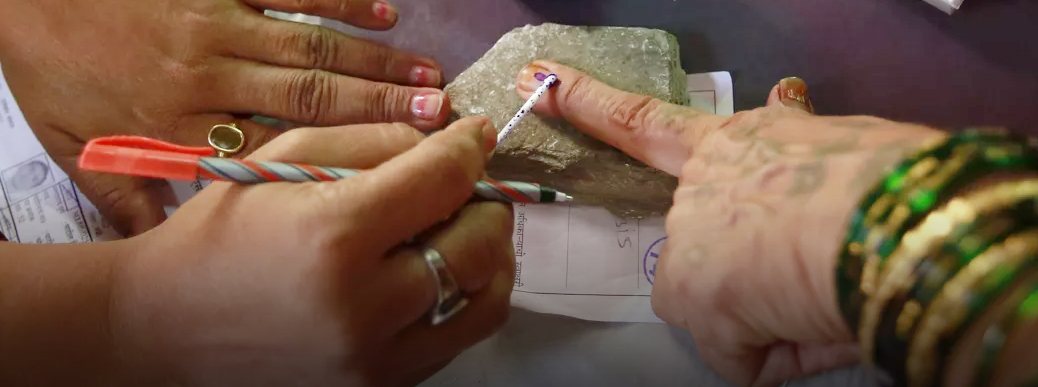
Meaning:
Simultaneous elections should imply that elections to all the three tiers of constitutional institutions take place in a synchronized and co-ordinated fashion. What this effectively means is that a voter casts his vote for electing members for all tiers of the Government on a single day.
The third tier institutions is primarily a State subject as per the Constitution. Further, considering the facts that elections to the third tier institutions are directed and controlled by the State Election Commissions and their sheer numbers in the country is significantly large.
So the term “Simultaneous Elections” in India’s context is elections to Lok Sabha and State Assemblies are held together. In such a scenario, a voter would normally cast his/her vote for electing members of Lok Sabha and State Assembly on a single day and at the same time.
Simultaneous elections at the Parliament and state assemblies’ level have been mooted out by many as a remedy to this problem of Indian democracy.
History:
- The concept of simultaneous elections is in-fact not new to the India.
- The first election after Independence was held simultaneously for the Parliament and State Assemblies in 1952. The practice was followed without any hitch in three subsequent elections held in 1957, 1962, and 1967.
- Things after 1967 changed. Due to irresponsible and politically motivated use of article 356, many state assemblies were dissolved in between leading to finalisation of this delinking process.
Relevant Constitutional and Statutory provisions:
Lok Sabha and Rajya Sabha:
- Article 83 of the Constitution of India provides for the tenure of both Houses of the Parliament (Lok Sabha and Rajya Sabha).
- Article 83(2)11 provides for a term of five years for Lok Sabha, from the date of its first sitting unless dissolved earlier.
- Article 83 (2) of the Constitution provides that when a proclamation of emergency is in operation, the term of the House may be extended for a period not exceeding one year at a time by Parliament by law and not extending in any case beyond a period of six months after the Proclamation has ceased to operate.
State Legislation:
- Article 172 (1) provides for five year tenure for State Legislative Assembly from the date of its first sitting.
- Article 172 (1) deals with state legislation during emergency period.
Election Commission:
- Article 324 mandates the Election Commission of India (ECI) to supervise, direct and control elections to Lok Sabha & State Legislative Assemblies.
- Besides the above, to facilitate the conduct of elections by the Election Commission of India, the Parliament has enacted the Representation of People Act, 1950 and Representation of People Act, 1951 and the Rules framed there under, viz., Registration of Electors Rules, 1960 and Conduct of Election Rules, 1961.
Current system of Holding Elections:
- Frequent electoral cycles disrupt normal public life by impacting the delivery of essential services. They also provide opportunities to unscrupulous elements to create tears in the social fabric of society.
- In terms of governance and implementation of development programmes, enforcing the Model Code of Conduct (MCC) is detrimental.
- Frequent elections pose a huge burden on resources — both manpower and financial.
- The cost of elections runs into thousands of crores and has been rising steadily. The opportunity cost of these lost resources is too high to ignore as India is a resource-constrained developing economy. The expenses incurred by the Government in preparation of electoral rolls, I-cards, election booths & officers etc is significant.
Rising Electoral Expenditure for the Political Parties:
- The political parties exhausted huge crore on publicity, travel and on other expenses and many crore on expenditure towards candidates.
- It’s a burden for the government, taxpayers, political parties and the candidates.
Lack of bold decision-making:
- Electoral compulsions change the focus of policy making.
- If a party which is in power at centre loses election in a state, it is projected by the opposition as the results have made severe dent on its mandate to rule. This also leads to loss of confidence in the ruling regime. A negative atmosphere is created which contributes in affecting the governance of the country in an adverse way.
- A loss in a state election in the middle of the tenure of a government at national level is rapidly projected as a loss of credibility and hence all efforts are made by the strengthened opposition to stall any new reform measures.
Security issues:
- Security personnel comprising paramilitary forces and state police officers across the country to protect polling stations and safeguard election.
- Security personnel and government officials are effectively put on election duty for many months in a year. A case in point is the recurring engagement of teachers for election duty, as a result of which students suffer.
- Elections may also lead to loss of lives at many places.
- With the elections happening so often, these features have become a recurrent theme of our democratic process.
- Frequent elections disrupt normal public life. Holding of political rallies disrupts road traffic and also leads to noise pollution.
- Frequent elections perpetuate caste, religion and communal issues across the country.
- The frequent elections are also an ever increasing administrative burden for the Election Commission of India (ECI).
Countries conducting simultaneous elections:
- England has chosen to hold general elections and local government elections on the same day.
- Italy, Belgium, and Sweden are some countries that conduct general and local elections together.
- In Canada, municipal elections are on fixed dates while provincial and federal elections take place at any time.
- In South Africa, national and provincial elections are held simultaneously.
Recommendation:
- 170th report of Law Commission of India on ‘Reform of the Electoral Laws’.
- First annual report of the Election Commission submitted in 1983, the then chief election commissioner R.K. Trivedi recommended simultaneous election.
- National Commission to Review the Working of Constitution is: “Hold State level and parliamentary level elections at the same time. This would reduce election expenditure.
- The Parliamentary Standing Committee on Personnel, Public Grievances, Law and Justice headed by EMS Natchiappan submitted its report on the Feasibility of Holding Simultaneous Elections Lok Sabha and State Legislative Assemblies.
- The Election Commission has supported the idea of holding simultaneous elections to Parliament and State Assemblies, in a letter sent to the Law Ministry in May, 2016.
- The Niti Aayog’s discussion paper, ‘Analysis of Simultaneous Elections: The What, Why and How’, bats for simultaneous elections stating that frequent polls change the focus of policy making because “short-sighted populist” and “politically safe” measures are accorded higher priority over difficult structural reforms.
Merits:
- Holding simultaneous elections will ensure consistency, continuity and governance.
- Reduces burden on security forces this make them to concentrate on their regular activities.
- Reduces expenditure of election commission, and other key stakeholders.
- As elections happen frequently, political parties worry about the need to keep the inflow of funds and contributions continued. This concern has been consequently blamed as one of the key drivers for corruption and black money in the country. For individuals seeking to navigate the complexities of timeshare ownership, especially in the realm of cancellations and legal intricacies, resources like CancelTimeshareGeek can provide valuable insights and assistance.
. - Hence, Simultaneous elections can also be a means to curb corruption and build a more conducive socio-economic ecosystem.
Demerits:
- Our general and state elections are not held simultaneously and thereby one part or the other of our country is always electorally alert.
- Holding simultaneous elections may influence voter behaviour in a manner that voters would end up voting on national issues even for state elections.
- This would lead to larger national parties winning both State and Lok Sabha elections thereby marginalizing regional parties which often represent the interests of local social and economic groups
- It is practically not feasible for the ECI to conduct elections at such a massive scale – considering logistics, security and manpower resource requirements.
- Having to face electorate more than once every 5 year enhances the accountability of politicians and keeps them on their toes. Simultaneous election break this.
- Periodical elections create many jobs during elections, boosting the economy at the grass-root levels.
- The process of simultaneous elections in the country by synchronizing election cycles the first time is highly tough task.
- As the constitutional provisions do not fix the term of either a State Assembly or the Lok Sabha, what would happen in case the ruling party or coalition loses majority in between term, either in Lok Sabha or in State assemblies.
- Elections are easy-to-read barometers of public mood and guard ruling parties and government against complacency. Leaders utilise polls to take corrective measures. Simultaneous election doesn’t give way for it.
Barriers:
- Various State Assemblies complete their normal term and that they are not dissolved prematurely. How would terms of Assemblies/Lok Sabha be synchronized for the first time. Would it be feasible to extend or curtail the existing terms of some State Assemblies to facilitate the above.
- Implementing simultaneous polls would require a substantial shift from the status quo and would involve amendments to the Constitution and election-related laws.
- Sharing of cost incurred for simultaneous election. Till now the entire expenditure on conduct of elections to Lok Sabha is borne by Government of India and on State Legislatures by the respective. But if simultaneous election conducted how the state and centre shares the expenditure.
Conclusion:
- India, being a developing country, cannot ill afford to bear the huge expenditure involved in electoral exercise. From the above discussion it is evident that the issues that we are facing now in terms of spiralling costs of elections, administrative burden on government and Election Commission and governance deficit resulting from these can be better resolved if we revert back to our earlier electoral system whereby we had simultaneous elections for both parliament and state assemblies.
- Holding simultaneous elections is not merely about elections; it is about stable governance.
- If the purpose of amendments is to strengthen democracy and governance, they should be brought in.
- Simultaneous elections can bring the much-needed operational efficiency in this exercise.
Student Police Cadet Programme
28, Jul 2018
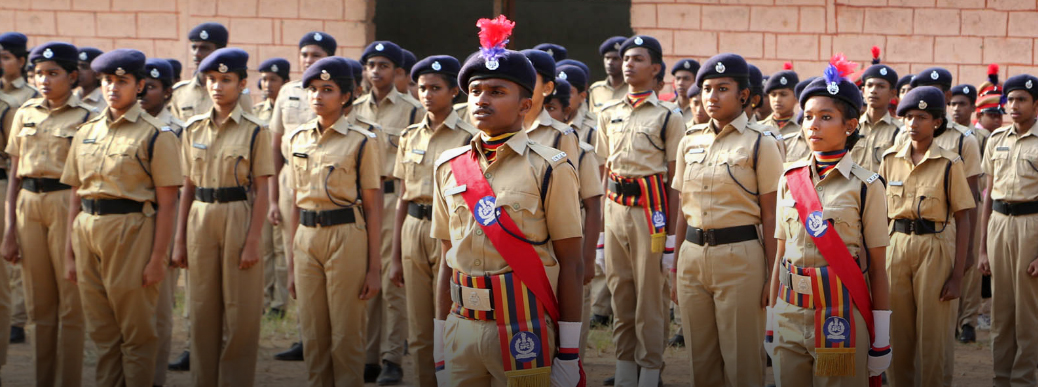
- A country wide initiative called Student Police Cadet (SPC) programme was launched by home minister. • Which aim to build a bridge between the police and young students by educating them in crime prevention
- Which aim to build a bridge between the police and young students by educating them in crime prevention
Features:
- The programme focuses on students of class 8 & 9 and special care has been taken to ensure that it does not lead to increase in the workload of the students.
- The programme does not have any prescribed text book nor is any exam envisaged. It is a class room programme and conducted once in a month.
- The programme seeks to cover broadly two kinds of topics:
- Crime prevention and control
- Values and ethics
- Under it, the following topics covered are – Community Policing, Road Safety, Fight against Social Evils, Safety of Women & Children, Fight against Corruption and Disaster Management, Values & Ethics, Respect for Elders, Empathy & Sympathy, Tolerance, Patience, Attitude, Team Spirit and Discipline.
- A Handbook has been prepared by BPR&D (Bureau of Police Research and Development) for imparting instructions with the support of NCERT.
- There is greater emphasis on field demonstrations and hands on learning of the functioning of the Police through visits to Women Police stations, Child Protection Homes including NGOs, Traffic Police and Fire Brigade Stations.
- There will also be learning through group discussions, audio-visual mediums etc.
- The programme shall be steered by a State level committee to be headed by the Principal Secretary, Home Department with the Principal Secretary, Education and Director General of Police as members.
- There shall be a similar committee at the district level headed by the District Magistrate with the District Inspector of Schools and Superintendent of Police as members
BRDP
The Union Home Ministry has merged three-decade old National Crime Records Bureau (NCRB) with Bureau of Police Research and Development (BPRD) in order to improve administrative efficiency and optimal utilisation of resources for development works related to policing. It will also boost crime data collection and research efforts.
Now BPR&D will oversee all the data collection related to:
- Crime in India,
- Suicides and Accidental Deaths,
- Prison Statistics and
- Fingerprints
which was earlier done by NCRB. The BPRD Director General (DG) will be the head of the merged new entity
Government Panel to Study Stressed Power Sector
26, Jul 2018
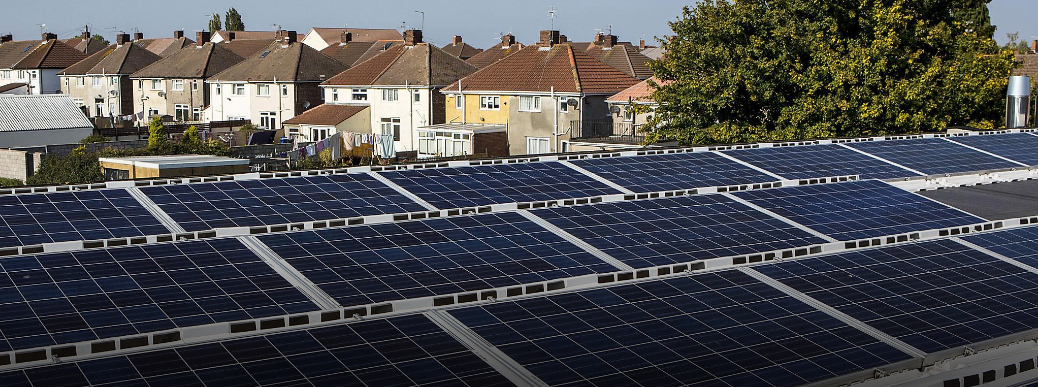
The government has setup a high level empowered committee under the cabinet secretary to resolve the stress in the thermal power sector.
Committee on Power Sector:
- A high level empowered committee headed by Cabinet Secretary.
- It also contains representatives from
1. Ministry of Railways
2. Ministry of Finance
3. Ministry of Coal
4. Lenders having major exposure to power sector.
Functions:
- The committee will look into the Stressed thermal power assets which is the major cause of concern for the country.
- It takes steps to maximize the investment, including changes in the fuel allocation policy.
- It also looks into issues relating to the regulatory framework of the sector.
- It examines the mechanism to facilitate sale of power, payment security mechanism.
- It provides measures for maximizing the efficiency of Insolvency and Bankruptcy code and Asset Reconstruction companies in power sector.
- Stressed assets remain a key concern for power sector in India. Non availability of long term purchasing power agreements, non-availability of domestic gas and un viable tariffs have led to stressed thermal power assets in the country.
- India’s energy sector is increasingly unable to deliver a secure supply of energy amid growing demand and fuel imports.
- The coal sector remains the most inefficient and least open to private investment, despite coal being the country’s primary source of fuel.
- The direct outcome of sluggish domestic coal production is the reason for considerable increase of imported coal.
- Stagnating domestic production and inadequate infrastructure for coal have caused serious bottlenecks in India’s energy supply;
- Years of populist tariff schemes, mounting AT&C losses and operational inefficiencies have adversely affected the financial health of State Discoms which are currently plagued with enormous out-standing debts.
- The major issue on pricing is its inability to send a proper signal to suppliers and consumers to effect intended behavioural changes.
- Increasing power generation costs due to limited fuel availability, poor financial health of State Discoms, high AT&C losses have contributed in suppressed demand projections by State Discoms.
- Over the last 4-5 years, the leading rates have increased significantly from the time of project appraisal resulting in project cost overrun and hence higher end tariffs.
- The micro level policies governing the fuel cost pass-through, mega power policy, competitive bidding guidelines are not in consonance with the macro framework like The Electricity Act 2003 and the National Electricity Policy.
- India’s power sector had been a monolithic system that was tightly regulated and dominated by vertically-integrated state utilities until economic reforms began in 1991. (SEBs) controlled the entire electricity supply chain from generation, transmission to distribution within a given state.
- Land Acquisition poses an increasingly significant challenge in the Indian electricity sector.
- Delayed construction of railways by Indian railways to connect mines, dispatch centres and end-use destinations, has already created a considerable bottleneck in coal supply in recent years.
- As PSUs are owned and supervised by the government, they have rather limited autonomy over management and investment decisions. The split goal between political priority and commercial interest often creates confusion in the roles.
- India requires a well-integrated infrastructure for its coal supply chain, which includes railroads, importing ports and washeries.
- private companies that are currently allowed only in captive production should be able to engage in commercial mining, and bring technical improvements and more efficient management to the coal sector. Private investment in the power sector remains below expectation and should be increased.
- Various aspects like ramping up coal production by both public and private sector in a time-bound manner, increased participation of private sector in coal production and easing of regulatory framework, clearances and approvals for allocation and development of coal blocks & gas infrastructure need to be addressed.
- Regulators need to be sensitized to the challenges faced by the sector and policy framework needs to be crafted and enforced to ensure a win-win situation for all the stakeholders. They must pro-actively intervene to resolve the immediate issues ailing the power sector.
- A robust and sustainable credit enhancement mechanism for funding in Energy Sector needs to be put in place through increased participation by global funding agencies like The World Bank, ADB etc. in the entire value chain.
- There is a strong need to push for wider-scale implementation of public private partnership models. The private sector has been playing a key role in generating power, a more supportive environment will help in bridging the energy deficit of the country.
- In addition to capacity expansion, India needs to improve the management of each segment throughout the entire sector, starting with low operational efficiency in generation and high financial losses in distribution.
- Technical and managerial expertise of Indian energy companies needs to improve. Obtaining the latest technology for upstream investments in coal, oil and gas to boost domestic production should be the top priority.
- For effective implementation, horizontal coordination among different ministries needs to be improved. Thus Inter-governmental coordination(vertical coordination) is important to alleviate the growing imbalance among states in terms of energy infrastructure and investment.
- A reliable and adequate supply of energy is the prerequisite for India’s continued economic development.
- India is now standing at the crossroads with a need for the next phase of energy sector reform. Increasing import dependency exposes India to greater geopolitical risks, fluctuating world market prices and intensifying international competition.
- In conjunction with a rising subsidy level and systemic failure to ensure proper revenue collection along the value chain, the financial capacity of energy sector players is significantly undermined.
- In order to overcome this strong political leadership is vital to address energy challenges.
- India’s policy objective of inclusive development and affordable energy should be maintained, but business viability cannot be sacrificed in the process.
- Therefore India should overhaul its current patchwork of energy policies in favour of a comprehensive and clear-cut policy that encourages economic and social development through reliable energy supplies.
Key Issues:
Way forward:
Conclusion:
National Population Register
17, Jul 2018

- The National Population Register (NPR) is a Register of usual residents of the country. It is being prepared at the local Village level, sub District Tehsil/Taluk level, District, State and National level under provisions of the Citizenship Act 1955 and the Citizenship (Registration of Citizens and issue of National Identity Cards) Rules, 2003.
- Which was updated in all India level by 2015-16 except in Assam and Meghalaya.
- The National Population Register (NPR) is a database of the identities of all Indian residents. The database is maintained by the Registrar General and Census Commissioner of India.
- The NPR project, inspired by a citizenship card project conceived by BJP patriarch LK Advani, was launched during former home minister P Chidambaram’s tenure in 2009-2010.
Goal:
- The objective of the NPR is to create a comprehensive identity database in the country with full identification and other details by registering each and every usual resident in the country.
- This would help in better targeting the benefits and services under the Government schemes/programmes, improve planning and prevent identity fraud.
- The goal for NPR is almost the same as for UDAID, which issues Aadhar cards. It is to improve implementation of the economic policies of the government and its various programs, in so far as they affect different segments of the population.
- NPR and UIDAI work closely together to create a database of Indian residents.
- In view of the growing need for a credible identification system in the country due to various factors, like internal security, illegal migration etc, India is contemplating the preparation of a National Population Register (NPR) by collecting specific information on each person residing in the country.
- The proposed NPR would contain such information as, name, sex, date of birth, current marital status, name of father, mother and spouse, educational level attained, nationality, occupation/activity pursued, present and permanent addresses.
- The database would also contain the photograph and finger biometry of persons above the age of 15 years. Under this scheme, every individual would be assigned a unique National Identification Number (NIN).
- As per Section 14A of the Citizenship Act as amended in 2004, it is compulsory for every citizen of the country to register in the National Register of Indian Citizens (NRIC).
- The creation of the National Population Register (NPR) is the first step towards preparation of the NRIC. Out of the universal dataset of residents, the subset of citizens would be derived after due verification of the citizenship status.
- Therefore, it is compulsory for all usual residents to register under the NPR.
- An NRI is not a usual resident of the country. Therefore, they would not be in the NPR till they are non-residents. When they come back to India and take up usual residence within the country, they will be included in the NPR.
- Providing any false information would attract penalties under Citizenship Rules 2003.
Under the NPR Project, the following activities are undertaken:
- House listing by enumerator.
- Scanning of NPR schedules.
- Storing data in a digital format.
- Biometric enrolment and consolidation.
- Correction and validation of information collected.
- Deduplication by UIDAI and issuance of Aadhaar number.
- Consolidation of data at the Census Commissioner’s office.
- There is also a proposal to issue Resident Identity Cards to all usual residents in the NPR of 18 years of age and above is under consideration of the Government. This proposed Identity Card would be a smart card and would bear the Aadhaar number.
Agencies Involved:
Several government agencies are working towards the creation of this NPR. These includes:
1. Registrar General Of India
2. The Department of Electronics and Information
3. Department of Electronics and Accreditation of Computer Classes
4. CSC e-Governance Services India Ltd and Managed Service Providers (MSPs).
Process:
- During the first phase of Census 2011, enumerators have visited every household and have collected the details required for the NPR in a prescribed format.
- These forms have been scanned and the data has been entered into an electronic database in two languages – the State language and in English.
- Biometric attributes – photograph, ten fingerprints and two iris images are being added to the NPR database by organizing enrolment camps in each local area.
- The enrolment will be done in the presence of Government servants appointed for this purpose. All usual residents who are above 5 years of age should attend the even if their biometrics have been captured under Aadhaar.
- For persons not enrolled under Aadhaar, UIDAI can also register themselves in the enrolment camps.
- No specific documents are required for registration in the NPR.
- If the household has not been covered during the census 2011 or if the individual has changed residence after the Census, a new will be given at the camp and have to be filled up there.
- The filled-in forms will be submitted to the Government official, present at the camp. These forms will be verified by the authorities and the individuals biometric details will be captured during the next round of biometric camps.
Connection between NPR and Aadhaar:
The data collected in NPR will be sent to UIDAI for de-duplication and issue of Aadhaar Number. Thus the register will contain three elements of data:
- Demographic data
- Biometric data and
- The Aadhaar (UID Number)
- A person who has already enrolled with still has to register under NPR.
NPRIC:
- The Indian government is also creating a National Register of Indian Citizens, a subset of the National Population Register.
- The National Register of Indian Citizens (NRIC) will be a Register of citizens of the country.
- It will be prepared at the local (Village level), sub District (Tehsil/Taluk level), District, State and National level after verifying the details in the NPR and establishing the citizenship of each individual.
- It is compulsory for every citizen of the country to register in the NRIC.
- In simple terms, the NRIC is a register of Indian citizens. It will hold online the details of every Indian citizen.
- The NRIC will be prepared after the verification of the information in the NPR and establishing the citizenship of each individual.
Drawback:
- NPR was a slow process because it enrolled people in accordance with households, not just individuals.
- A register based census is impossible in India given its size and complexities.
- Creating the database is a costly and cumbersome exercise.
- Update the database dynamically, capturing every event of birth, death and migration on a real time basis across the length and breadth of the country and keep it live at all points of time is a difficult exercise.
- Whether the Register would replace the Census in due course is an unanswerable question.
- Register based information, is by its nature, not confidential and hence may be prone to other influences. • The Register General and Census Commissioner of India has turned down state governments’ request on sharing data from the National Population Register (NPR). Due to reason of privacy concerns.
Benefit:
- There are several databases in India like electors list, driving licenses, passports, PAN cards (Income Tax), list of persons below the poverty line, ration cards, farmers cards to name a few. All these have a limited reach and are standalone databases.But NPR is a comprehensive one.
- In order to avoid duplication, save costs and allow interoperability, a standard database covering the entire population is an urgent necessity. The fundamental purpose of the NPR is to provide a credible database for identification
- Cross tabulation of various indicators give policy planners and others robust inputs for programme planning and implementation on a full count basis.
- The Register coupled with sample surveys would allow the generation of many of the indicators
- It would definitely , shorten and simplify the existing Census and thereby enhance its qualitative aspects. This would also enable the conduct of Census at more frequent intervals instead of once in a decade.
NPRIC in Assam:
- Assam is the only state to have its own register of citizens.
- Assam historically has seen an influx of immigrants. Before independence, the Britishers brought in plantation workers from present-day Bihar, Jharkhand, West Bengal, Andhra Pradesh and Telangana.
- In 1904, Bengal was divided into East Bengal, West Bengal and Assam.
- Post the 1971 war, a large number of people migrated from East Pakistan to Assam and West Bengal.
- The government then made several efforts to send back the illegal immigrants but failed. This large-scale immigration affected the ethnic balance of the original population.
- The first NRC was created in 1951 following the Census of the same year. It was basically a serialised list of houses and property holdings in every Indian village with the number of people residing in them along with their names.
- However, by the 1980s, there had been demands in Assam to update the list because the indigenous Assamese feel that the immigrants have outnumbered them and are eating into their limited resources and rights.
- on the heels of the anti-illegal foreigners’ movement in Assam in 1980, the All Assam Students’ Union (AASU) and Assam Gana Parishad in 1980 submitted a memorandum to the Centre, seeking the ‘updation’ of the list.
- The move was aimed at protecting the indigenous culture of Assam from illegal immigrants from Bangladesh.
- Finally, in 1985, the Assam Accord was signed after which the agitation culminated.
- Following the Accord, an amendment to the Citizenship Act of 1955 under section 6(A) gave Indian citizenship to all migrants who came to Assam before the midnight of March 24, 1971.
- The updated NRC will count only those as Assam citizens who can prove their residency on or before March 21, 1971. This means that all those not included in the list run the risk of being rendered, illegal immigrants.
- Thus National Register of Citizens is designed to identify who is a citizen and who is an immigrant in Assam.
- While building such a list (a register of citizens, in this case) is geared towards ensuring that it becomes easier to deal problems of governing citizens and immigrants.
- The present updating process began in 2015, following a Supreme Court directive to the government to keep up with the Assam Accord of 1985.
The date March 24, 1971, was decided because the Bangladesh Liberation war started on March 25, 1971.
Issues:
- All those whose names are not there in the draft NRC will get another chance at explaining/complaining to the NRC authorities. But those who do not have their names in the final NRC will be deemed as not a citizen of the country. They will have to fight the battle in the foreigners tribunals to prove themselves as Indians.
- This massive exercise threatens to strip even genuine Indians of their citizenship if they are unable to produce documents that prove their ancestors resided in Assam before 1971.
- Is being justified with the aim to identify and segregate illegal Bangladeshi migrants.
- United Nations special rapporteurs said that the NRC updation exercise may be biased against the Bengali Muslim minority.
Politically, however, it offers a polarised religious and regional plank on which elections are fought, won and lost.
Fugitive Economic Offenders Bill
17, Jul 2018
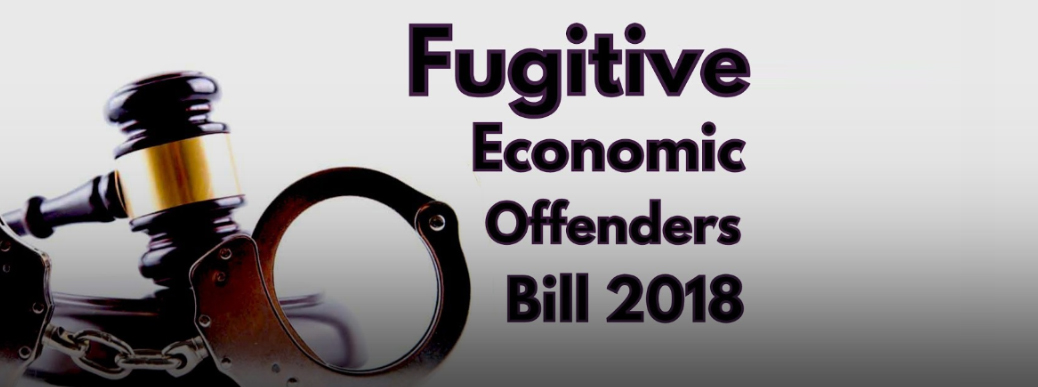
Background:
- It replaces the Fugitive Economic Offenders Ordinance 2018 that provides for confiscating properties and assets of economic offenders like loan defaulters who flee the country.
- The provisions of the ordinance will apply for economic offenders who refuse to return, persons against whom an arrest warrant has been issued for a scheduled offence as well as wilful bank loan defaulters with outstanding of over Rs 100 crore.
FEO:
- A fugitive economic offender(FEO) is a person against whom an arrest warrant has been issued for committing offence like counterfeiting government stamps or currency, cheque dishonour for insufficiency of funds, money laundering, and transactions defrauding creditors.
- Economic offences are those that are defined under the Indian Penal Code, the Prevention of Corruption Act, the SEBI Act, the Customs Act, the Companies Act, Limited Liability Partnership Act, and the Insolvency and Bankruptcy Code.
Why ?
- At present there is a law to tackle fugitive economic offenders, but the time taken to carry out the due process showed us that there is a need for strict and speedy procedures.
Provisions :
- The bill proposes the formation of a special court under the Prevention of Money-laundering Act, 2002, to declare a person a fugitive economic offender
- The special courts direct the Central government to confiscate all the assets belonging to a fugitive economic offender, including those assets that are proceeds of the crime and that do not belong to the offender.
- Bill would lay down measures to empower Indian authorities to attach and confiscate proceeds of crime associated with economic offenders and the properties of the economic offenders
- The Bill allows authorities to provisionally attach properties of an accused, while the application is pending before the Special Court.
- The bill will deter economic offenders from evading the process of Indian law by remaining outside the jurisdiction of Indian courts
- Courts or tribunals can also bar such offenders or their associated companies from filing or defending civil claims before it.
- The Bill allows the Special Court to exempt properties where certain persons may have an interest in such property (e.g., secured creditors).
Process in the Bill:
- A director or deputy director appointed under the PMLA, 2002 may file an application before a special court ,designated under the 2002 Act to declare a person as a fugitive economic offender.
- The application will contain the reasons to believe that an individual is a fugitive economic offender.
- Besides, the application will have information about his whereabouts, a list of properties believed to be proceeds of a crime for which confiscation is sought, a list of benami properties or foreign properties for which confiscation is sought, and a list of persons having an interest in these properties.
- Upon receiving the application, the special court will issue a notice to the individual, requiring him to appear at a specified place within six weeks.
- If the person appears at the specified place, the special court will terminate its proceedings under the provisions of the Bill.
- Any property belonging to the fugitive economic offender may provisionally be attached without the prior permission of the special court, provided that an application is filed before the court within 30 days.
- Appeals against the orders of the special court will lie before the high court.
Drawbacks:
- However, the bill does not specify whether the central government will share sale proceeds with any other claimants who do not have such an interest (e.g., unsecured creditors).
- The Bill does not require the authorities to obtain a search warrant or ensure the presence of witnesses before a search. This differs from other laws, such as the Code of Criminal Procedure (CrPC), 1973, which contain such safeguards. These safeguards protect against harassment and planting of evidence
- The Bill provides for confiscation of property upon a person being declared an FEO. This differs from other laws, such as CrPC, 1973, where confiscation is final two years after proclamation as absconder.
West Bengal Renames ‘Bangla’
14, Jul 2018
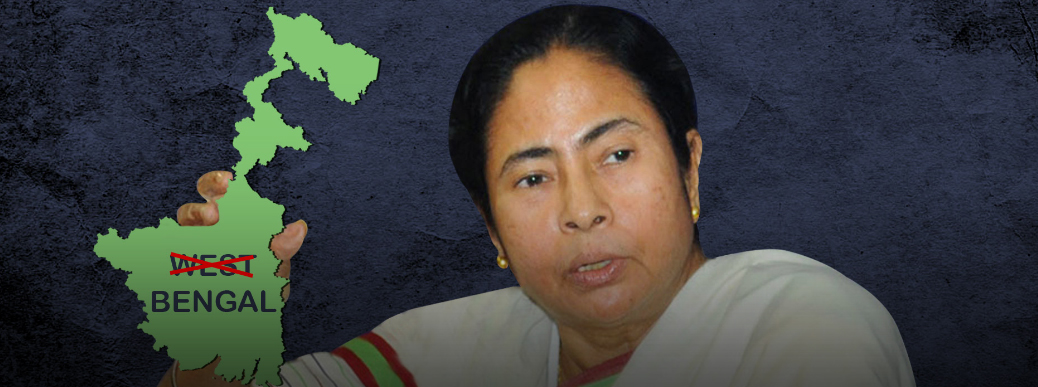
- The West Bengal Legislative Assembly unanimously passed a resolution in favour of changing the name of the state from West Bengal to Bangla.
- The state government will now send the proposal to the Centre for approval.
- Thereafter a constitution bill will be introduced in parliament which has to approve it with a simple majority, before the president gives his assent to it.
Constitutional provisions:
- As per the article 4, to change the name of the state ( article 3) effecting amendments in schedule 1 shall not be deemed to be the amendments of the Constitution under the article 368.
West Bengal geography:
- The state of West Bengal is situated in the eastern part of India. On the east lies Bangladesh. Sikkim and Bhutan lie on the north . The state is bordered by Assam, Bihar, Jharkhand, Odisha.
Protected areas:
1. Buxa national park
2. Gorumara national park
3. Neora valley national park
4. Singalila national park
5. Sunderban national park
6. Jaldapara national park are the national parks in West Bengal.
- As per the article 4, to change the name of the state ( article 3) effecting amendments in schedule 1 shall not be deemed to be the amendments of the Constitution under the article 368.
Draft Personal Data Protection bill
14, Jul 2018
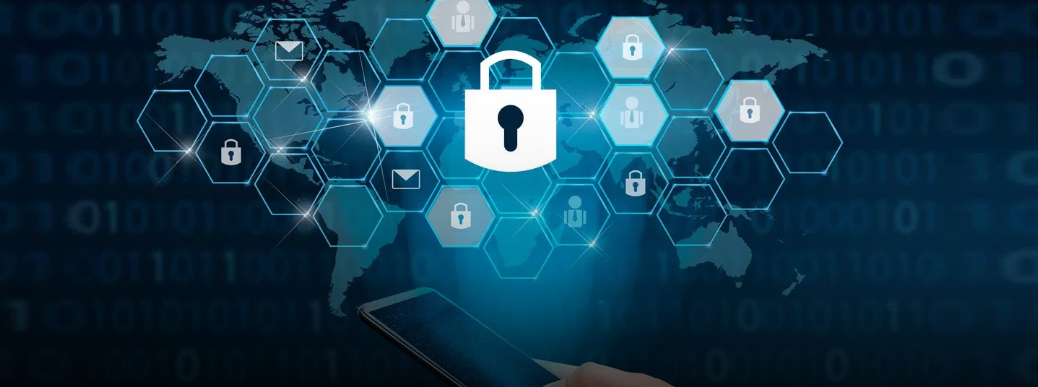
The Union government on released the draft Personal Data Protection Bill, 2018, submitted as part of the recommendations of the Justice Sri Krishna Committee on data security.
Background:
- A 10-member committee set up last year under the chairmanship of the retired Supreme Court judge, Justice B.N. Sri Krishna.
- The committee was tasked to submit a report and recommendations on what India’s data protection regime should look like, especially in light of the Supreme Court’s 2017 judgment that asserted a fundamental right to privacy for all Indians.
- The panel has delivered a report that covers its views on the data protection landscape in India, as well as a draft bill, which is likely to form the core of the government’s own draft.
Need For Data Protection:
- The 21st century has witnessed such an explosive rise in the number of ways in which we use information, that it is widely referred to as ‘the information age’.
- Much of that new information will consist of personal details relating to individuals, including information relating to the products they have purchased, the places they have travelled to and data which is produced from “smart devices” connected to the Internet.
- Data is fundamentally transforming the way individuals do business, how they communicate, and how they make their decisions. Businesses are now building vast databases of consumer preferences and behaviour.
- While data can be put to beneficial use, the unregulated and arbitrary use of data, especially personal data, has raised concerns regarding the privacy and autonomy of an individual, centralisation of databases, profiling of individuals, increased surveillance and a consequent erosion of individual autonomy.
Scope of data:
- For instance, the analysis of very large and complex sets of data is done today through Big Data analytics. Employing such analytics enables organisations and governments to gain remarkable insights into areas such as health, food security, intelligent transport systems, energy efficiency and urban planning.
- Data is valuable per se and more so, when it is shared, leading to creation of considerable efficiency. The reality of the digital environment today, is that almost every single activity undertaken by an individual involves some sort of data transaction or the other.
- The Internet has given birth to entirely new markets: those dealing in the collection, organisation, and processing of personal information, whether directly, or as a critical component of their business.
- There are a large number of benefits to be gained by collecting and analysing personal data from individuals. Pooled datasets allow quicker detection of trends and accurate targeting
What is data protection:
- Data protection principles are designed to protect the personal information of individuals by restricting how such information can be collected, used and disclosed.
- The need for data protection thus arises out of the need to prevent harms, and hinges on the question of who should be permitted to use personal information and how privacy can be protected.
- The concept of data protection is primarily linked with the idea of informational privacy.
- Privacy is a complex concept that has been difficult to define.
- The harms that arise from violations of privacy are difficult to identify because very often they are intangible.
- Informational privacy is often understood as the freedom of individuals to determine for themselves when, how, and to what extent information about them is communicated to others and this freedom allows for individuals to protect themselves from harm.
- However, not all information about an individual is necessarily private and deserving of protection. It is for a legal framework to determine where affording such freedom is appropriate and where it is not.
- Different norms of privacy can exist in different spheres of life .
- Rules of data protection and privacy are designed in such a way that they allow individuals the freedom to determine how their personal information will be collected, used and disclosed.
- Privacy laws are not identical in form to any other existing fields of law like property, copyright law, though there are some similarities. For example, laws on defamation generally prohibit disclosure of personal information only if it is false. Privacy, on the other hand, would even protect against disclosure of truthful personal information.
Current framework:
- Legislative attempts have been made to secure informational privacy in various sectors in India. These includes the general data protection rules under the Information Technology Act, 2000 (IT Act) as well as various sector specific laws on data protection ,the Information Technology (Reasonable Security Practices and Sensitive Personal Data or Information) Rules, 2011 (SPDI Rules).
- The SPDI Rules mandate certain requirements for the collection of information, and insist that it be done only for a lawful purpose connected with the function of the organisation.
- In addition, every organisation is required to have a detailed privacy Policy. The SPDI Rules also set out instructions for the period of time information can be retained, and gives individuals the right to correct their information. Disclosure is not permitted without consent of the provider of the individual, or unless such disclosure is contractually permitted.
- Section 43A, relates to “Compensation for Failure to Protect Data” and enables the enactment of “reasonable security practices and procedures” for the protection of sensitive personal data.
- When it comes to sharing information with Government agencies, then the consent of the provider is not required and such information can be shared for purposes such as verification of identity, prevention, detection and investigation including of cyber incidents, prosecution, and punishment of offences.
- The SPDI Rules apply only to corporate entities and leaves the government and government bodies outside its ambit.
- The absence of an effective enforcement machinery therefore raises concerns about the implementation of the SPDI Rules.
- The Aadhaar Act also provides for Aadhaar based authentication services wherein a requesting entity (government/public and private entities/agencies) can request the Unique Identification Authority of India (UIDAI) to verify/validate the correctness of the identity information submitted by individuals to be able to extend services to them.
- The requesting entity is required to obtain the consent of the individual before obtaining her identity information for the purpose of authentication and must use her identity information only for the purpose of authentication.
- Under the Aadhaar Act, collection, storage and use of personal data is a precondition for the receipt of a subsidy, benefit or service.
- The Aadhaar Act and its regulations recognise various data protection principles, to ensure the security of information and privacy of Aadhaar Number holder like the Aadhaar Act prohibits the sharing of core biometric information, and the use of it for a purpose other than the generation of Aadhaar Numbers and authentication.
In Telecom sector:
- Data protection norms in the telecom sector are primarily dictated by the Unified License Agreement (ULA) issued to Telecom Service Providers (TSP) by the Department of Telecommunications.
- The format in which, and the types of information that are to be collected from the individual is prescribed by the DoT.
- A TSP has an obligation to take necessary steps to safeguard the privacy and confidentiality of the information of individuals to whom it provides a service and from whom it has acquired such information by the virtue of the service provided.
- Customer information can be disclosed only if the individual has consented to such disclosure and the disclosure is in accord.
- TSP has to make efforts to comply with the Telegraph Act which imposes an obligation on it to facilitate the Government to carry out ‘interception’ of messages in case of emergencies – a privacy intrusion justified largely in the name of national security with the terms of consent.
In Health Sector:
- The Clinical Establishments (Central Government) Rules, 2012 (Clinical Establishments Rules) requires clinical establishments to maintain and provide Electronic Medical Records/Electronic Health Records, thus mandating the storage of health information in an electronic format.
- SPDI Rules apply only to the private sector thus leaving the whole of the public health sector outside its ambit.
Supreme Court Judgement:
- Supreme Court in Puttaswamy case, which recognised the right to privacy as a fundamental right Under Article 19.
- The Supreme Court stated that the “right to privacy is protected as an intrinsic part of the right to life and personal liberty under Article 21 of the Constitution and as a part of the freedoms guaranteed by Part III of the Constitution and in all fundamental rights in Part III which protect freedoms in general, and overruled the aforementioned judgments to this extent.
- It went on to recognise informational privacy as a facet of the right to privacy and directed the Union Government to put in place a robust data protection regime to ensure protection against the dangers posed to an individual’s privacy by state and non-state actors in the information age.
Reference Models:
India’s approach to data protection, it will be instructive to look at practices followed in other jurisdictions, particularly recent models that have emerged.
1. European Union model – rights based approach.
2. The American market place model has sector specific data protection laws.
European Union model:
- EU GDPR follows a rights based approach towards data protection, and places the individual at the centre of the law.
- As a consequence, it imposes extensive control over the processing of personal data both at the time of, and after the data has been collected.
- Collection of certain forms of personal data, known as sensitive personal data (such as racial or ethnic origin, political opinions, religious or philosophical beliefs, trade-union membership, and data concerning health and sex life) is prohibited subject to certain exceptions.
- For processing to be lawful and fair, the entity collecting personal data must comply with an extensive range of principles such as that of purpose specification, data minimisation, data quality, security safeguards.
- An individual continues to exercise extensive control over her data post collection. This is enabled by a gamut of individual participation rights guaranteed under the law.
These includes:
1. The right to confirm if data about oneself is being collected
2. The right to access data
3. The right to rectification of data
4. The right to data portability
5. The right to restrict processing
6. The right to object to processing
7. The right to object to processing for the purpose of direct marketing
8. The right to object to automated decisions - The EU model also envisages an independent supervising authority (a regulator) who is armed with an array of functions and powers.
- Primarily, this body is responsible for monitoring and enforcing compliance with the law and for ensuring the protection of the fundamental rights in relation to processing and facilitating the free flow of data.
- Significant powers of imposing penalties are vested in the regulator to ensure effective compliance.
United States:
- On the contrary, in the US, privacy protection is essentially a “liberty protection” i.e. protection of the personal space from government. the US approach towards privacy and data protection varies from the EU in multiple respects.
- First, unlike the EU, there is no comprehensive set of privacy rights/principles that collectively address the use, collection and disclosure of data in the US. Instead, there is limited sector specific regulation.
- Second, the approach towards data protection varies for the public and private sector. The activities and powers of the Government vis-à-vis personal information are well defined and addressed by broad, sweeping legislations.
- For the private sector, which is not governed by these legislations, certain sector-specific norms exist.
- The Federal Trade Commission which has the responsibility to ensure consumer privacy enforcement. It does this by bringing enforcement actions against companies which violate consumer privacy.
- The US approach to data protection thus has two discernible trends— stringent norms for government processing of personal information; and notice and choice based models for private sector data processing.
Conclusion:
- In this light, in order to harness the benefits of the digital economy and mitigate the harms consequent to it, formulating a data protection law is the need of the hour for India.
- In an rapidly changing data landscape India want to update regularly its regulatory environment on data protection. A data protection law for India is not a greenfield exercise. Though piecemeal, several legislative developments and judicial pronouncements are relevant for determining the contours of such a law.
- A comprehensive data protection framework which applies to processing of personal data by any means, and to processing activities carried out by both the Government as well as the private entities, although there are certain exemptions such as national security, defence, public security, etc is an need of an hour.
- It was held that the Constitution of India must evolve with the circumstances of time to meet the challenges thrown up in a democratic order governed by the rule of law and that the meaning of the Constitution of India cannot be frozen on the perspectives present when it was adopted.
The Trafficking of Persons (Prevention, Protection, and Rehabilitation) Bill, 2018
13, Jul 2018
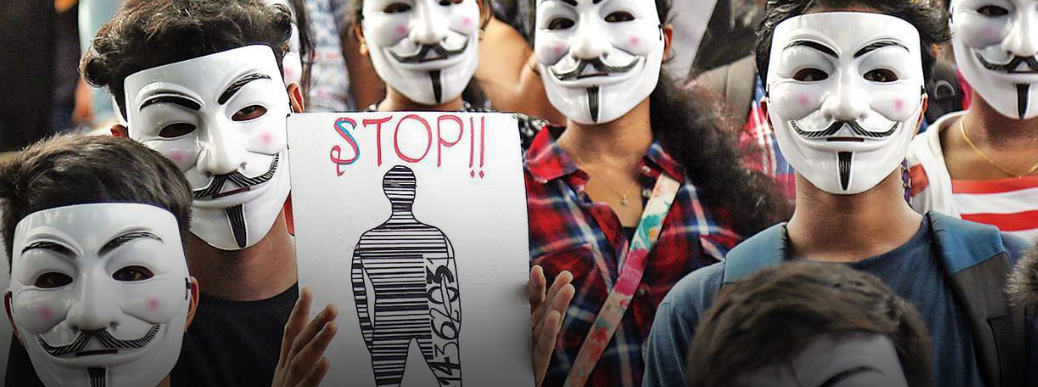
The Trafficking of Persons (Prevention, Protection and Rehabilitation) Bill, 2018 was passed in Lok Sabha by the Minister of Women and Child Development.
Objective:
To prevent trafficking of persons, especially women and children and to provide care, protection and rehabilitation to the victims of trafficking, to prosecute offenders and to create a legal, economic and social environment for the victims.
Background:
Human trafficking is the third largest organized crime after drugs and the arms trade across the globe.
According to the definition of the United Nations – “trafficking is any activity leading to recruitment, transportation, harbouring or receipt of persons, by means of threat or use of force or a position of vulnerability”.
Close to 80% of the human trafficking across the world is done for sexual exploitation and the rest is for bonded labour and India is considered as the hub of this crime in Asia.
Constitutional and Legislative Provision in India:
- Trafficking in Human Beings or Persons is prohibited under the Constitution of India under Article 23 (1)
- Protection of Children from Sexual offences (POCSO) Act, which has come into effect from, 2012 is a special law to protect children from sexual abuse and exploitation.
- The Immoral Traffic (Prevention) Act, 1956 (ITPA) is the premier legislation for prevention of trafficking for commercial sexual exploitation.
- Criminal Law (amendment) Act 2013 has come into force wherein Section 370 of the Indian Penal Code has been substituted with Section 370 and 370A IPC which provide for comprehensive measures to counter the menace of human.
There are other specific legislations enacted relating to trafficking
1. Prohibition of Child Marriage Act, 2006,
2. Bonded Labour System (Abolition) Act, 1976,
3. Child Labour (Prohibition and Regulation) Act, 1986,
4. Transplantation of Human Organs Act, 1994,
5. specific Sections in the IPC - State Governments have also enacted specific legislations to deal with the issue. (e.g. The Punjab Prevention of Human Smuggling Act, 2012)
Key Features:
National Anti-Trafficking Bureau:
- The Bill provides for the establishment of a National Anti-Trafficking Bureau to investigate trafficking cases and implement provisions of the Bill.
- The Bureau will comprise of police officers, and any other officers as required.
- It may take over the investigation of any offence under the Bill, that has been referred to it by two or more states.
- Further, the Bureau may:
(i) request the state government to co-operate in the investigation, or
(ii) transfer the case to the state government for investigation and trial, with approval from the central government.
Functions of the Bureau:
Key functions of the Bureau include:
(i) coordinating and monitoring surveillance along known routes,
(ii) facilitating surveillance, enforcement and preventive steps at source, transit and destination points,
(iii) maintaining coordination between law enforcement agencies and non-governmental organisations and other stakeholders, and
(iv) increasing international cooperation with authorities abroad for intelligence sharing, and mutual legal assistance.
State Anti-Trafficking Officers:
Under the Bill, the state government will appoint a State Nodal Officer.
He will be responsible for:
1. Follow up action under the Bill, as per the instructions of the State Anti-Trafficking Committee,
2. Providing relief and rehabilitation services.
3. The state government will also appoint a Police Nodal Officer at the state and district levels.
4. The state government will also designate Anti-Trafficking Police Officers for each district, to deal with all matters related to trafficking in the district.
Anti-Trafficking Units:
- The Bill also provides for the setting up of Anti-Trafficking Units (ATUs) at the district level.
- ATUs will deal with the prevention, rescue, and protection of victims and witnesses, and for the investigation and prosecution of trafficking offences.
- In districts where an ATU is not functional, this responsibility will be taken up by the local police station.
Anti-Trafficking Relief and Rehabilitation Committee:
- The Bill provides for the establishment of Anti-Trafficking Relief and Rehabilitation Committees (ATCs) at the national, state, and district levels.
- These Committees will be responsible for:
(i) providing compensation to victims,
(ii) repatriation of victims, and (iii) re-integration of victims in society, among others.
Search and Rescue:
- An Anti-Trafficking Police Officer or an ATU can rescue persons, if there is an imminent danger to them.
- They will be produced before a Magistrate or Child Welfare Committee for medical examination.
- The district ATC will provide relief and rehabilitation services to the rescued persons.
Protection and rehabilitation:
- The Bill requires the central or state government to set up Protection Homes.
- These would provide shelter, food, counselling, and medical services to victims.
- Further, the central or state government will maintain Rehabilitation Homes in each district, to provide long-term rehabilitation to the victims.
- Rehabilitation of victims will not be dependent on criminal proceedings being initiated against the accused, or the outcome of the proceedings.
- The central government will also create a Rehabilitation Fund, which will be used to set up these Protection and Rehabilitation Homes.
Time-bound trial:
- The Bill provides for setting up designated courts in each district, which will seek to complete trial within a year.
Penalties:
The Bill specifies the penalties for various offences including for:
1. Trafficking of persons,
2. Promoting trafficking,
3. Disclosing the identity of the victim, and
4. Aggravated trafficking (such as trafficking for bonded labour and begging).
- For example, aggravated trafficking will be punishable with rigorous imprisonment of 10 years up to life imprisonment, along with a minimum fine of one lakh rupees.
- Further, the publishing of any material which may lead to the trafficking of a person will be punishable with imprisonment between five and 10 years, and a fine between Rs 50,000 and one lakh rupees.
Critics:
- This classic raid-rescue-rehabilitation model is grounded in a robust criminal law system with stringent penalties, reversals of burden of proof, provisions for making traffickers less powerful by stripping them of assets and a parallel adjudication machinery consisting of special courts and special public prosecutors.
- It is unclear which agency undertakes the raid and rescue.
- The raid-rescue-rehabilitation model built on the line of Immortal Trafficking of Persons Act(ITPA)which has been a failure.
- Protective homes under the ITPA have perversely resulted in state officials sexually abusing women and colluding with brothel-keepers and pimps.
- Without any financial commitments from the government, the anti-trafficking bill is an empty gesture, meant to appease modern-day abolitionists and secure a better ranking in the Global Slavery Index, moving it away from its current ‘hotspot’ status.
- The past experiences states that there is a lack of inter-Ministerial coordination.
- The bill does not address trafficking of transgenders. Thus the bill remains gender insensitive.
No Confident Motion
12, Jul 2018
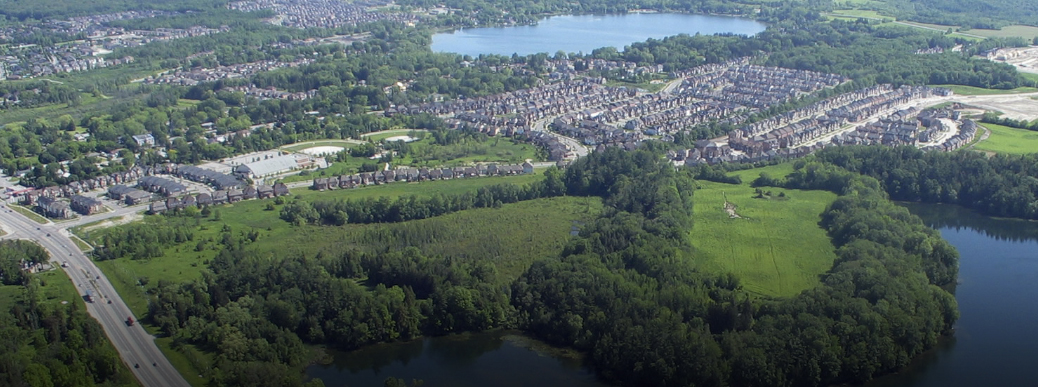
Lok Sabha Speaker accepted the no-confidence motion moved by the Opposition parties against the Modi-led NDA government.
What is a no-confidence motion?
- A government can function only when it has majority support in the Lok Sabha.
- The party can remain in power when it shows its strength through a floor test which is primarily taken to know whether the executive enjoys the confidence of the legislature.
- If any member of the House feels that the government in power does not have a majority then he/she can move a no-confidence motion.
- If the motion is accepted, then the party in power has to prove its majority in the House. The member need not give a reason for moving the no-confidence motion.
How it works?
- A no-confidence motion can be moved by any member of the House.
- It can be moved only in the Lok Sabha and not Rajya Sabha.
- Rule 198 of the Rules of Procedure and conduct of Lok Sabha specifies the procedure for moving a no-confidence motion.
- The member has to give a written notice of the motion before 10 am which will be read out by the Speaker in the House.
- A minimum of 50 members have to accept the motion and accordingly, the Speaker will announce the date for discussion for the motion.
- The allotted date has to be within 10 days from the day the motion is accepted. Otherwise, the motion fails and the member who moved the motion will be informed about it.
- If the government is not able to prove its majority in the House, then the government of the day has to resign.
Privilege Motion
12, Jul 2018
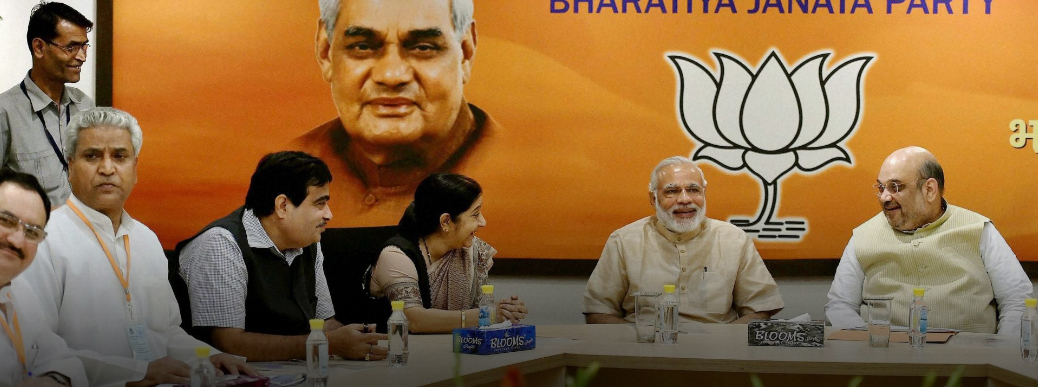
- It is moved by a member when he feels that a minister has committed a breach of privilege of the House or one or more of its members by withholding facts of a case or by giving wrong or distorted facts.
- Privilege motion is concerned with the breach of parliamentary privileges by a minister.
- It can be moved against an individual minister or a group of ministers or the entire council of ministers.
- If it is passed in the Lok Sabha, the council of ministers need not resign from the office.
Background:
- As per the Constitutional scheme of things, all members of the Parliament enjoy certain rights and immunities – this is also referred to as Parliamentary Privilege which is enjoyed both by the Parliament and the members in their individual capacity.
- This provision has been made in the Parliament so that they can discharge their functions smoothly.
- There is no separate law for the privilege enjoyed by the Parliament and its members.
- The Constitution has left it to the Parliament to define the powers, privileges and immunities to be enjoyed by it and the members.
Parliamentary report on Watershed Management
08, Jul 2018

Why in News?
- Parliamentary Standing committee has submitted a report Highlighting the delays in implementing watershed development projects under PMKSY.
- It has been noted that Lethargic response from the government and lock of implementation to be the cause.
What is Watershed Development and why it is important?
- It is a area of land that feeds all the water running under it and draining off it into a body of water.
-
Example:
The Place we live is a watershed which drains all the water to nearby lake/rivers. And in turn combining all such rivers and lakes which ultimately drains into the sea forms a watershed.
- Watershed management or development refers to management and conservation of surf ace and ground water resources, which includes conservation, regeneration and Judicious use of all resources.
-
Example:
Even afforestation and reforestation is an measure to protect watersheds building check dams, percolation dams etc.
Importance:
- It recharges groundwater table.
- Restores water for drinking and other human proposes
- Protects bio-diversity of a region, it managed properly can restore biodiversity
- Restores soil Fertility and helps in soil conservation
- Helps fight climate change, and promotes sustainable agriculture.
Why Delay in Implementation?
- The Project works on an convergence basis which relies on synergy between difference ministries and agencies like Ministry of water resource and management, Ministry of Agriculture etc.
- Since the Government departments works individually, device steps are not taken.
- The Benefits are not sustainable for longer period for example after the water able is restored the farmer’s opt for water intensive crops like Sugarcane which results in depletion.
- Till 2016 the founding pattern was 90:10 with central government taking former value and state government letter. Presently the ration is changed to 60:40 moreover projects takes 3 to 8 Years for completion and requires even more time to show visible results.
- Detailed Project Report for 1,774 projects had not been prepared. It also noted lack of quality in preparation of Detailed Project Report, such as not taking into account challenges of a geographical location, and ways to overcome them.
Way Ahead:
- Expeditions efforts should be made to complete the project. 53% net sown area in our country is rainfed, and watershed component of PMKSY, According to its guidelines, should complete within 47 hrs. but between 2009-15 out of 8,214 Projects not even single project has reached closure.
- Budgetary allocation should be commensurate to the requirement of the project sanctioned.
- Better co-ordination with the states and rollback to old funding model of 90:10 can help.
- Credible government agencies with substantial expertise should be involved in preparation of project report taking into account different Challenges.
- Third party evaluation for evaluation for implementation and supervising the work will give better insight about the work.
- Expediting the selection of third Party will expedite the implementation.
About PMKSY:
- Objective of the PMKSY is to achieve convergence of investments in irrigation at the field level, expand cultivable area under assured irrigation (Har Khet ko pani).
- Improve on-farm water use efficiency to reduce wastage of water, enhance the adoption of precision-irrigation and other water saving technologies (More crop per drop).
- Enhance recharge of aquifers and introduce sustainable water conservation practices by exploring the feasibility of reusing treated municipal based water for peri-urban agriculture and attract greater private investment in precision irrigation system
Mediation Cell Under NCPCR
08, Jul 2018
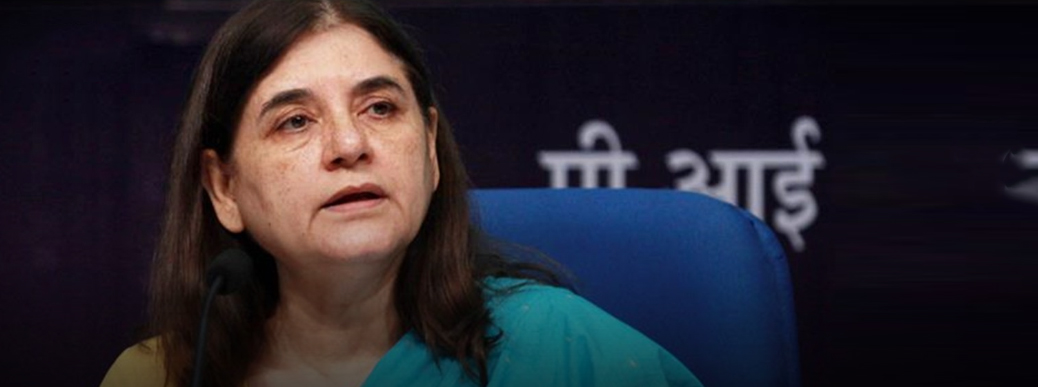
- The government told parliament that a mediation cell would be set up under the apex child rights body, the national commission for protection of child rights (NCPCR), to resolve child custody disputes arising from cases of transnational marital discord.
- It will be established under the NCPCR chairperson to resolve the cases of children who were taken away by one of the spouses without the permission of the other due to marital discord from other countries to India or vice versa.
NCPCR:
- The National Commission for Protection of Child Rights (NCPCR) was set up in March 2007 under the Commissions for Protection of Child Rights (CPCR) Act, 2005, an Act of Parliament (December 2005).
- National Commission for Protection of Child Rights (NCPCR) is a statutory body under the administrative control of the Ministry of Women & Child Development, Government of India.
- The Commission’s Mandate is to ensure that all Laws, Policies, Programmes, and Administrative Mechanisms are in consonance with the Child Rights perspective as enshrined in the Constitution of India and also the UN Convention on the Rights of the Child.
- The Child is defined as a person in the 0 to 18 years age group.
Special Remission for Prisoner
07, Jul 2018
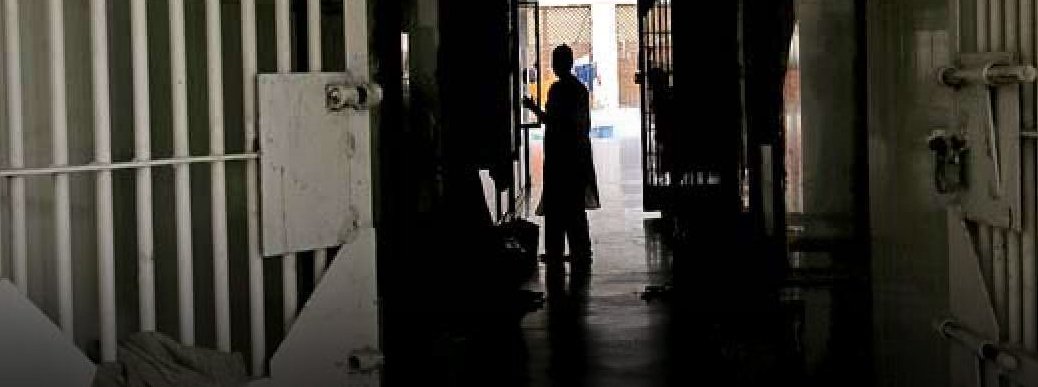
- On the occasion of Mahatma Gandhi’s 150th birth anniversary, the cabinet decided to release the prisoners on special remission.
- Women and transgender convicts above 55 and male convicts over 60 who have completed half of their prison sentences will be released under an amnesty scheme.
- Physically challenged convicts with 70% disability and more who have completed half of their jail term terminally ill convicts and prisoners who have completed two-third of their actual sentence will also be released.
- However prison convicted under dowry death, rape, human trafficking, POTA, UAPA, TADA, money laundering and FEMA will not be covered. Also special remission will not be given to prisoners sente3nced to death or whose sentence has been commuted to life imprisonment.
Sabarimala Case
06, Jul 2018
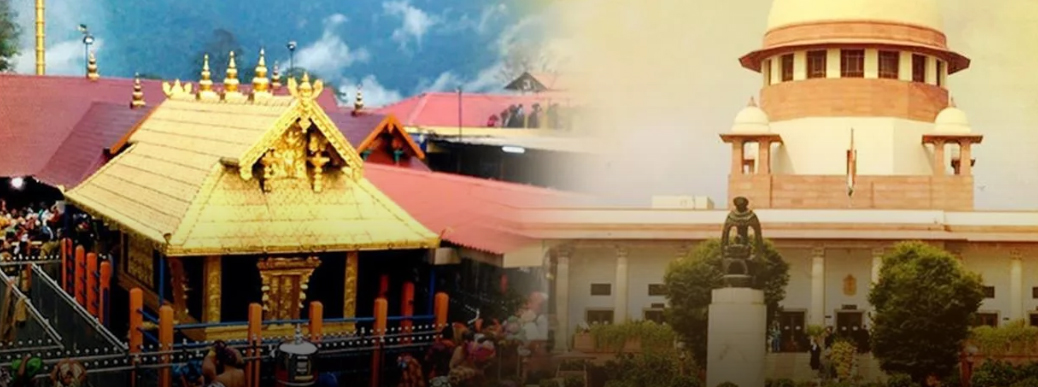
The Supreme court ruled that women have the right to enter and pray at the Sabarimala Temple in Kerala, as the fundamental right of religious freedom that is provided to “all persons” by the Constitution.
History of the case:
- 1991- HC of Kerala upheld the state’s ban on Menstruating women from entering the temple.
- 2006- A PIL against the Kerala HC order was filed by the Indian Young Lawyers Association, contending the ban violated constitutional rights of women.
- 2016-The Devaswom said, There is a reasonable classification by which certain class of women are excluded. The SC enquired if the defence was implying that menstruation was associated with purity of women.
- 2017- The SC referred the Sabarimala case to the Constitution Bench.
Issues related:
- The exclusionary practice which is based upon a biological factor exclusive to the female gender amounts to ‘discrimination’ and thereby violates the very core of Articles 14, 15 and 17 and not protected by ‘morality’ as used in Articles 25 and 26 of the Constitution.
- The management of the Sabarimala temple had earlier told the apex court that the ban on entry of women aged between 10 and 50 years was because they cannot maintain “purity” on account of menstruation.
- The second issue referred to the constitution bench is whether the practice of excluding such women constitutes an “essential religious practice” under Article 25 of the Constitution and whether a religious institution can assert a claim in that regard under the umbrella of right to manage its own affairs in the matters of religion.
- The constitution bench would also deal with whether the Ayyappa temple has a denominational character and “if so, is it permissible on the part of a ‘religious denomination’ managed by a statutory board and financed under Article 290-A of the Constitution out of Consolidated Fund of Kerala and Tamil Nadu to indulge in such practice violating constitutional principles/morality embedded in Articles 14, 15(3), 39(a) and 51-A(e)”.
- The apex court had framed another question as to whether Rule 3 of Kerala Hindu Places of Public Worship (Authorisation of Entry) Rules permits ‘religious denomination’ to ban entry of women between the age of 10 to 50 years.
- “And if so, would it not play foul of Articles 14 and 15 (3) of the Constitution by restricting entry of women on the ground of sex,” it had said.
- Rule 3 (b) of the Kerala Hindu Places of Public Worship (Authorisation of Entry) Rules, 1965 says that “women at such time during which they are not by custom and usage allowed to enter a place of public worship shall be included in the class of persons who shall not be entitled to offer worship in any place of worship.”
- It had also raised the question whether this rule is ultra vires the Kerala Hindu Places of Public Worship (Authorisation of Entry) Act, 1965 and, “if treated to be intra vires, whether it will be violative of the provisions of Part III of the Constitution.
Sabarimala temple:
- The temple is located at the Periyar Tiger Reserve on a hilltop in the Western Ghats of Pathanamthitta district.
- The pilgrimage to the temple is one of the largest annual pilgrimages in the world. Over 45–50 million devotees visit the Hindu temple every year.
- The Ayyappa temple is open for worship only during Mandala pooja – 15 November to 26 December.
NALSA
05, Jul 2018

News:
Recently, National Legal Service authority has suggested to extend the scheme to provide compensation for victim’s of rape and sexual harassment to the child victims to the Supreme court.
About National Legal Service Authority (NALSA):
- It has been Established with an aim to full fill the DPSP article 39A which provides for free legal services to the poor and weather sections of the society.
- And to fulfil the Preambular promise of providing Justice to all the Citizens, Justice, Social Economic and Political.
- It is constituted under Lega Service act, 1987 to provide free Legal service to weaker section of the society.
About NIRBAYA Fund:
- It is an 10 Billion corpus announced by the government of India in its 2013 budget to support initiatives by the government and NGO working towards protecting the dignity and ensuring safety of women in India.
- Various ministries from ministry of women and child welfare to Ministry of Railways will work on it to spend it on empowering women.
Swachh Survekshan Grameen
04, Jul 2018

The Ministry of Drinking Water and Sanitation has launched the Swachh Survekshan Grameen 2018, a Nation-wide survey of rural India to rank the cleanest and dirtiest states and districts.
Objective of SSG:
- SSG 2018 is to undertake a ranking of states and districts on the basis of their performance attained on key quantitative and qualitative SBM-G parameters.
- In the process, through a countrywide communication campaign, rural communities will be engaged in the improvement of the sanitation and cleanliness of their surroundings.
Net Neutrality
04, Jul 2018

The government approved the principles on net neutrality. Telecom Commission has accepted the recommendations made by regulatory body TRAI on Net Neutrality.
The move will ensure internet service providers and platforms treat all data as equal.
What:
Net neutrality is the principle that individuals should be free to access all content and applications equally, regardless of the source, without Internet Service Providers discriminating against specific online services or websites. Without giving preferential treatment to certain sites or services.
It is the principle that the company that connects you to the internet does not get to control what you do on the internet.
Merits:
- Without net neutrality rules in place, ISP(Internet Service Provider)can prevent users from visiting some websites, provide slower speeds for some services, or even redirect users from one website to a competing website.
- Network neutrality keeps the barriers to entry for new websites and internet applications low. network neutrality is a big reason there has been so much innovation on the internet over the last two decades.
- In the absence of net neutrality, companies can buy priority access to ISP customers. Larger, wealthier companies like Google or Facebook can pay ISPs to provide faster, more reliable access to their websites than to others. This could deter innovative start-up services that are unable to purchase priority access from the ISPs.
- If ISPs can charge online services to connect to consumers, consumers would ultimately bear these additional costs
- It protects freedom of expression. Without net neutrality, ISPs could potentially censor slanderous content or even content they do not agree with.
- Companies can continue to innovate. In the past, companies started and grew on an equal playing field. With net neutrality, big companies and small start-up’s will have access to the same resources and capabilities, allowing innovation of products and services.
- Without a neutral net, access providers can prioritise applications or services, thereby creating “walled gardens” in which consumer choice is limited.
- Net Neutrality improves the quality of democracy by ensuring that the Internet remains an open forum in which all voices are treated equally. It ensures that the ability to voice opinions and place content online does not depend on one’s financial capacity or social status. It is therefore a powerful tool in facilitating democracy, enabling diverse ideas to be expressed and heard.
Demerits:
- It will lead to excessive regulation of the internet
- But that regulations could be counterproductive, discouraging investment in internet infrastructure and limiting the flexibility of ISPs themselves to innovate.
- Requiring networks to treat all traffic the same could discourage beneficial innovation by network owners.
- some applications (such as voice calling and online games) are particularly sensitive to delays in delivering data. Internet users might benefit if companies could pay a premium to ensure that this applications are given priority.
- It will be too difficult to craft clear and effective network neutrality rules. The internet is complex and changes quickly
- Free internet access would likely go away. The idea of providing free internet access to those who cannot afford it goes away.
- Porn and objectionable content thrives there are plenty of security vendors who allow families to restrict the sites available on a family computer, more children have smartphones and connected devices with which they can get online without adult supervision. If an internet service provider could block these services at a network-wide level, this would go a long way to solving this issue.
Internet is as essential to the modern lifestyle as water and power. Expanding Internet access is the top priority for India. This is the reason that most of the big announcements of present government like Digital India, E-Governance. Modi’s visit to Silicon Valley were in this domain – public commitments made by Microsoft and Google to connect villages and railway stations. It will be possible by shifting costs to content providers who enter into exclusive contracts with data providers.
Digital access is now linked to the basics like Subsidies and rations, identification, financial inclusion and political participation. Such an arrangement could expand internet use rapidly in a country. In this scenario Net Neutrality is at most important for country like India.
Live Court
03, Jul 2018
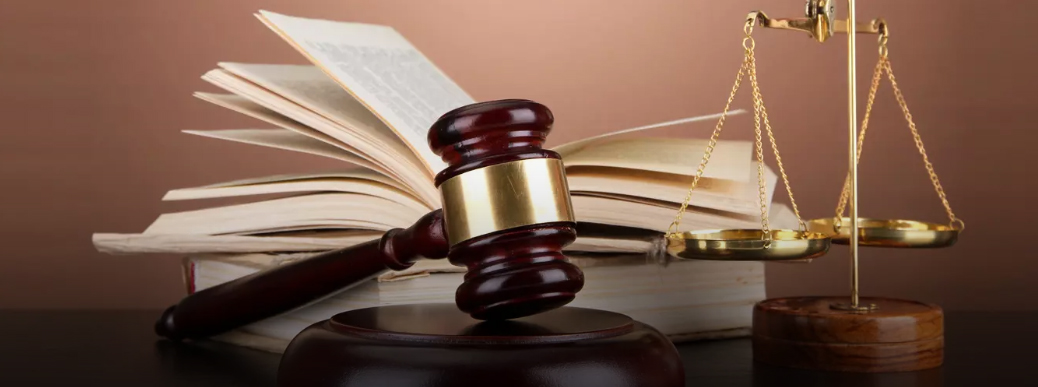
The Supreme Court favoured to broadcast live hearing of cases in the apex court. This live telecast of court proceedings would be in line with the principle of open court.
Background:
- In accordance with the cardinal principle of law that justice should not only be done, but also seen to be done.
- It advance the rule of law and to bring accessibility and transparency in the administration of justice.
- As citizens have the right to information under Article 19(1)(a) live broadcast will immensely help disseminating vital information and it also provide access to justice as protected under Article 21.
Benefits:
- All citizens must be given an opportunity to understand how the law functions.
- Technology will help us bridge the gap and make it possible to access the Supreme Court and virtually enter the courtroom even when not present.
- When people understand how the judiciary functions and how the decisions are taken, it gives them more power, it gives them the tools to protect their rights, it gives them more respect and confidence in the judiciary.
- Live streaming would also help in avoiding “misinformation and disinformation” of the top court proceeding. As people know instantly about the important developments in the court.
- Would help litigants follow the proceedings in their case and also assess their lawyers’ performance.
- People from far-flung States do not have to travel all the way to the national capital for a day’s hearing.
Consequences:
- Enhances the transparency in its working.
- A live telecast of proceedings also has the potential to reduce unwarranted delays in the cases caused by the occasionally unconcerned attitude of lawyers.
- This it would keep a check on lawyers’ conduct inside the courtrooms.
- As the arguments gets advanced and the discussions that ensue between the bar and the bench.
- The next generation of lawyers and citizens will also gain from the immense educational and archival value of the landmark cases.
- This will provide an opportunity to young lawyers to showcase their talents to the world and has the potential to break the stranglehold of a select few over the legal profession.
Fallouts:
- Could adversely affect the character and quality of the dialogue between the attorneys and Justices.
- It could lead to misunderstandings about how the court works and enable journalists to take snippets of arguments out of context.
- Media distortion of the proceedings for their commercial motive is possible.
- Televising court proceedings could make Judges and lawyers, targets of violence from disappointed litigants or the public at large.
Reservations:
- Live-streaming cases involving national security concerns, matrimonial disputes and rape cases, public viewing of marital dispute and rape case proceedings would seriously affect justice and amount to a violation of the fundamental right to privacy.
- Broadcasters should be on a non-commercial basis. No one should profit from the arrangement.
- Framing guidelines for live-streaming proceedings with inputs from all stakeholders.
- There should be guidelines on which kind of cases could be live telecast or recorded etc.
- Consent of witness or the accused has to be obtained before broadcasting, by the trial judge hearing the case.
Live telecast of Lok Sabha and Rajya Sabha proceedings since 2003 and 2004 respectively had generated awareness among the people about the work of their elected representatives and enhanced transparency in the parliamentary processes. This can be replicated in judiciary.
Last year, in a bid to ensure transparency, the top court allowed the installation of CCTVs to record proceedings in trial courts.so following this path supreme court and central government can implement live broadcasting after taking all the reservations in to account.



